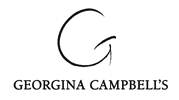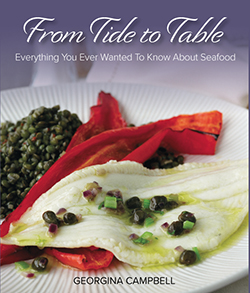Article NEWS
Sweet Taste of Success - The Baileys Euro-toques Young Chef of the Year 2009
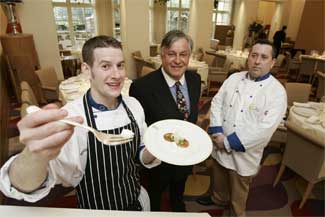
 23 year old James Devine from Dungannon, Co Tyrone has beaten four other finalists from across Ireland to win the title Baileys® Euro-Toques Young Chef for 2009, plus a cash prize of €1,250 and a two week stage at renowned London restaurant Pied à Terre.
23 year old James Devine from Dungannon, Co Tyrone has beaten four other finalists from across Ireland to win the title Baileys® Euro-Toques Young Chef for 2009, plus a cash prize of €1,250 and a two week stage at renowned London restaurant Pied à Terre. ‘Baileys® Euro-Toques Young Chef’ is one of the toughest and most prestigious culinary competitions to win. Entrants, who must be under 25 and show exceptional potential, are first nominated by a Euro-Toques member. They then submit their CV and a seasonal menu to the Euro-Toques Secretary General. An interview in front of an adjudication panel of professional chefs follows, after which the finalists are selected. The final stage is to cook against-the-clock in a culinary skills test under the scrutiny of a second panel of professional chefs. Finally, in advance of the announcement, they prepare a 5 course meal for specially invited guests hospitality industry and food media.
This year the grand finale was held on 6th April, at Ireland’s leading fine dining establishment, Restaurant Patrick Guilbaud in Dublin, where Peter O’Connor of competition sponsor, R&A Bailey & Co, addressed guests with his legendary combination of relaxed humour and thoughtfulness, urging everyone to share ideas on how we can help each other through this difficult time – and reflecting on the way in which the Baileys® Euro-Toques Young Chef of the Year competition (now in its 19th year) brings together the best professional chefs in the country with the next generation of top talent. “And we are delighted to be able to play a role in nurturing the rising stars of the Irish culinary world” he said.
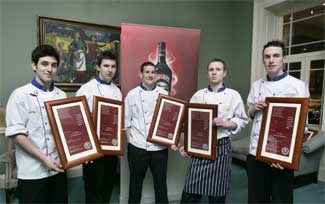 Judges at this year’s skills test were Australian Chef Shane Osborn of Pied à Terre; Neven Maguire of MacNean House, Blacklion, Co Cavan (a former Baileys® Young Chef winner); Lorcan Cribbin, of Bang Café in Dublin; and Consultant Chef, Neil McFadden. The event and prizes are sponsored by R&A Bailey & Co in association with Gilbeys - both Diageo companies. Past winners of the competition include Gearoid Lynch (The Olde Post Inn) and head chefs Trevor Cunningham (Restaurant 23, Warrenpoint) and Padraig Hayden (The Still at Dylan Hotel).
Judges at this year’s skills test were Australian Chef Shane Osborn of Pied à Terre; Neven Maguire of MacNean House, Blacklion, Co Cavan (a former Baileys® Young Chef winner); Lorcan Cribbin, of Bang Café in Dublin; and Consultant Chef, Neil McFadden. The event and prizes are sponsored by R&A Bailey & Co in association with Gilbeys - both Diageo companies. Past winners of the competition include Gearoid Lynch (The Olde Post Inn) and head chefs Trevor Cunningham (Restaurant 23, Warrenpoint) and Padraig Hayden (The Still at Dylan Hotel). The winner, James Devine, works at Deli on the Green, in Moygashel, Co Tyrone, where he assists his Euro-Toques mentor & Head Chef Bob McDonald. After completing his A levels, James turned down the chance to study Law at university and travelled to North Carolina for his first taste of working in a professional kitchen at a Children’s Summer Camp. On returning home, he embarked on a Foundation Degree in Culinary Arts at Belfast Metropolitan College, which he successfully completed this year. His dream is to one day open a restaurant of his own in his hometown of Dungannon.
The other four finalists this year were 23 year old Patrick Powell (Knockranny House Hotel) ,who was also a finalist in 2007; 22 year old Luke Flinter (Waterford Castle Hotel); 22 year old Eric Matthews (L’Gueleton, Dublin); and 24 hear old Mark Treacy (L’Ecrivain, Dublin), who is also a finalist in 2007. Commenting on the competition, Feargal O’Donnell, Commissioner-General, Euro-Toques (Irl.) noted ‘the great talent and passion for what they do’ showed by all finalists, and judge Shane Osborn (who is Australian but has strong Irish connections) said the Baileys® Young Chef is particularly beneficial because it emphasises the role of the mentor, which is essential to succeeding in the industry.
What do people enjoy most about visiting Ireland?
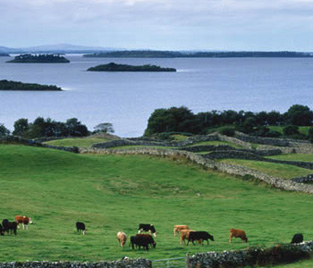

Fáilte Ireland’s recently published Key Overseas Visitor Survey makes interesting reading - 5,700 holidaymakers were asked: why do visitors come to Ireland - and do they enjoy their stay here?
The essentials have not changed as much as we might think apparently as the reasons cited and levels of satisfaction were firstly beautiful scenery (89%); closely followed by friendly and hospitable people (87%).
Visitors see Ireland as safe and secure (80%) and the unspoilt environment (79% satisfaction) remains a major draw – and, with nature, wildlife and flora also very important (77%), protecting it must clearly be given priority. Other high points for visitors are the easy, relaxed pace of life (77%) – something which many residents felt was under threat during the Celtic Tiger years, and now seems to be returning - interesting history and culture (74%) and a good range of natural attractions (76%).
Almost all (98%) of visitors would recommend Ireland as a destination, with most (83%) saying they would do so unreservedly. However, while there was widespread satisfaction with tourism accommodation and services, the general cost of living received the highest level of spontaneous mention (22%) as a disadvantage. Thankfully this is now reducing in post-Tiger Ireland.
Eat Smart - Eat Healthy
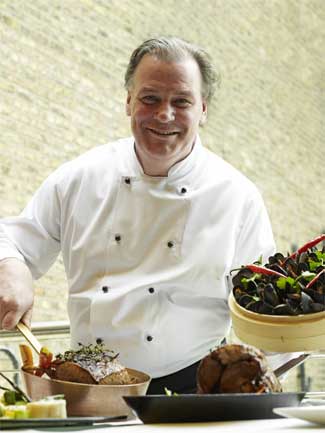
 How healthy is your shopping basket? The recent Slán survey shows that one in four Irish people is now obese – hopefully the recession will make us think more carefully about the food we buy, but it can’t be relied on to reverse this alarming trend.
How healthy is your shopping basket? The recent Slán survey shows that one in four Irish people is now obese – hopefully the recession will make us think more carefully about the food we buy, but it can’t be relied on to reverse this alarming trend. Addressing this problem is central to The Nutrition and Health Foundation’s annual Eat Smart Week, which begins on Monday 11th May. “How you shop can have a major impact on your diet and indeed your wallet”, says NHF Manager, Dr Muireann Cullen, “If you put some thought and planning into your weekly shopping, then you are more likely to eat healthily for the week.”
This time-honoured principle is overdue for a revival – see also the Bord Bia website, where you can download their 7 Day Healthy Eating Planner, which features appealing no-fuss recipes for a week and a lot of succinct nutritional information and advice.
The key message for this year’s Eat Smart campaign is that, despite the current economic climate, you can still eat very well on a budget - so the focus is on recession busting nutritious meals and shopping tips, supplied with the help of Derry Clarke of L'Ecrivain, who was given a budget of €100 to devise one quick, tasty and healthy main meal per day for a week, to feed a family of four – the recipe given below is a variation of one of his dishes, and illustrates the theme.
Further information is given on the NHF website
 Recessionary RECIPE:
Recessionary RECIPE: Braised Shoulder of Lamb
This is really a pot-roast by another name - pot-roasting and braising are much the same thing, ie slow cooking with flavouring vegetables and stock for a succulent, moist dish with its own built-in gravy. It’s back in fashion, and ideal for cooking cheaper cuts of meat, which will be tender – and feed a hungry family well.
In this case mature lamb (hogget) is used – the shoulder is sweetly flavoured and not strictly a budget cut, but it is good value; less expensive forequarter joints of beef (eg housekeeper’s cut) could also be used.
Some recipes discard the cooking vegetables (used only for flavouring) and replace with fresh ones, which can seem wasteful to home cooks although it would be the usual practice in restaurant kitchens; in this one the vegetables are added later, so they can be eaten. The rules are flexible, as is the cooking temperature; this is the kind of dish you can safely leave in a very low oven or slow cooker for a whole day or overnight if you like.
The temperatures given allow you to get it onto the table in about 21/2 hours, making a seriously tasty Sunday lunch for 6-8 people.
Click for recipe
New Season Lamb - A Summer Time Favourite
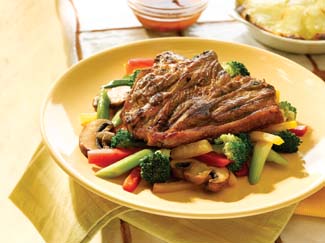
 Over the June Bank Holiday weekend, Bord Bia launched its new season lamb campaign, promoting great tasting leg of lamb recipes for weekends and special holiday occasions.
Over the June Bank Holiday weekend, Bord Bia launched its new season lamb campaign, promoting great tasting leg of lamb recipes for weekends and special holiday occasions. Award winning chef Neven Maguire was on hand with a reminder that “great food starts with great ingredients” and that new season lamb is both delicious and easy to cook.
Quick and tasty lamb chop recipes for midweek meals and leg of lamb options for weekends and special occasions are being promoted, demonstrating the versatility and great tasting opportunities for cooking with lamb.
Bord Bia has developed two new recipes which are quick and easy and perfect options for mid-week meals. They feature sideloin and gigot chops, both of which offer great value and combine really well with the suggested summer marinades. We’ve also included a traditional leg of lamb recipe – perfect for special meals with family and friends.
LAMB RECIPES
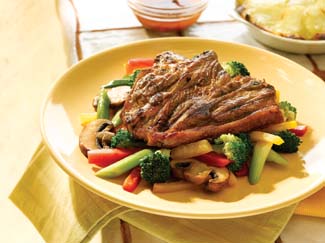
Gigot Lamb Chops with Paprika
Both economical and really easy!
Click here for recipe
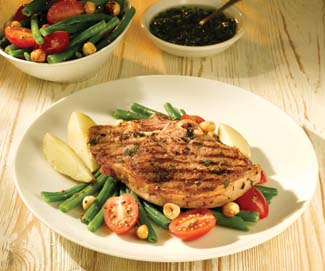 Sideloin Lamb Chops with Parsley and Thyme Dressing
Sideloin Lamb Chops with Parsley and Thyme DressingA really tasty mid-week meal that can be on the table in twenty minutes. We have used sideloin chops but the recipe works equally well with any type of lamb chops, cutlets or lamb steaks.
Click here for recipe
.jpg) Leg of Lamb Roasted with Mustard and Rosemary
Leg of Lamb Roasted with Mustard and RosemaryServe with roast potatoes and some simple steamed vegetables and you will have a great meal for family and friends
Click here for recipe
Back to our roots - Seafood

 Marilyn Bright chats to BIM Seafood Circle members and discovers their love for the lesser known species of seafood.
Marilyn Bright chats to BIM Seafood Circle members and discovers their love for the lesser known species of seafood.From Dean Swift’s Malahide herrings “soft as custard” and Molly Malone’s cockles and mussels, history abounds with the variety of Irish seafood enjoyed over the centuries. Through the years, annual shoals of mackerel and herring were celebrated in song and busy fishmongers’ stalls sold plentiful whiting, cod, haddock and hake as well as the dried ling and good red herrings used to flavour the potatoes down the country.
Today the likes of chilli peppers, lemon grass and coriander have expanded our traditional range of ingredients, but when it comes to fish, Irish cooks tend to use fewer types of seafood than their grandparents or the generations before them.
Although there are more than 50 species of edible fish and shellfish caught in local waters, just two species – salmon and cod – dominate menus and account for 60% of sales.
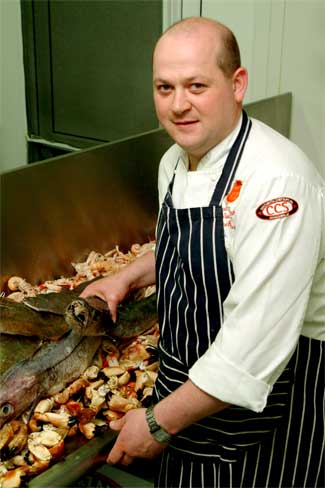 In Liscannor, County Clare, Denis Vaughan of Vaughans Anchor Inn reckons that he and his fellow members of BIM’s Seafood Circle are bucking the trend and putting lesser used fish back on the menu. With daily landings on the pier opposite Vaughan’s front door, Denis says that “there isn’t any fish I haven’t used.” Gurnard, ling, pollock, even whelks and limpets have appeared on the daily changing menu and Denis’ tip is to introduce less familiar fish by including them on seafood platters combined with favourites like cod, prawns and salmon.
In Liscannor, County Clare, Denis Vaughan of Vaughans Anchor Inn reckons that he and his fellow members of BIM’s Seafood Circle are bucking the trend and putting lesser used fish back on the menu. With daily landings on the pier opposite Vaughan’s front door, Denis says that “there isn’t any fish I haven’t used.” Gurnard, ling, pollock, even whelks and limpets have appeared on the daily changing menu and Denis’ tip is to introduce less familiar fish by including them on seafood platters combined with favourites like cod, prawns and salmon.Pollock, also known as coley, is a popular choice for fish and chips in many Seafood Circle outlets. The greyish flesh turns white when cooked and as a member of the cod family, pollock can be a cost effective substitute for the more expensive fish in many recipes. Firm enough to be presented as grilled fillets with herb crusted topping, white pollock is as popular as cod in France and experts note that it would challenge the novice to tell the difference from cod in dishes.
White pollock is sometimes called “blossom” by Dubliners, while the black pollock is often sold as smoked coley, attractively priced and a delicious addition to fish pies and chowders or simply poached and served with a buttery sauce and creamy mashed potato. The smoky flavours have a special affinity with eggs as well as cheese, perfect for seafood quiches and flavourful omelettes.
White boardlike fillets of dried salted ling are features of traditional fishmongers’ stalls like O’Connell’s in Cork’s English Market. A useful staple in pre-refrigeration days, it needs soaking and boiling before being combined with potatoes in the time honoured way, or brought up-to-date as Mediterranean style fritters fried in olive oil and served with garlicky aioli. And it’s a good substitute for salt cod (the Spanish bacalao) in a classic brandade, perfect for tapas selections.
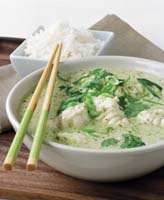 Fresh ling however, is termed “poor man’s cod” by fishmonger–restaurateur Peter Caviston (Cavistons). “It’s half the price and gives a lovely fillet when it’s boned”, he says. Like an increasing number of seafood enthusiasts, Peter is also a champion of the gurnard. Its firm white flesh can be used in the same way as monkfish, and with a similarly large headed body, Peter says the best fillets to use come from the larger fish.
Fresh ling however, is termed “poor man’s cod” by fishmonger–restaurateur Peter Caviston (Cavistons). “It’s half the price and gives a lovely fillet when it’s boned”, he says. Like an increasing number of seafood enthusiasts, Peter is also a champion of the gurnard. Its firm white flesh can be used in the same way as monkfish, and with a similarly large headed body, Peter says the best fillets to use come from the larger fish.Referring to the premium price now commanded by monkfish, Peter notes that the large heads are usually discarded in processing here. “The monk cheeks are two meaty bits either side of the head and highly regarded in Spain. A good fishmonger will save these for you if you ask”.
Mackerel is one of the most undervalued fish, yet cheap and plentiful at the peak of its summer season and highly recommended as one of the omega rich healthy foods. Freshness is key here and distinguished food writer Jane Grigson says mackerel should be “so fresh that the light shines from it like a rainbow”.
 Mackerel needs a sharp or positive flavour to set off the richness of the deep pink oily flesh. Gooseberries are classic accompaniment, either as sauce or stuffing, and rhubarb works equally well, both benefitting from an added touch of balancing sweetness.
Mackerel needs a sharp or positive flavour to set off the richness of the deep pink oily flesh. Gooseberries are classic accompaniment, either as sauce or stuffing, and rhubarb works equally well, both benefitting from an added touch of balancing sweetness. Gary Rhodes rolls fresh mackerel fillets around spicy garam masala butter and wraps in caul fat before roasting and serving with red onion and tomato salad. Richard Corrigan (Bentleys) also takes the spice route and slathers mackerel fillets with tamarind and freshly ground spice paste before grilling and serving with sweet potato and lime pickle.
Although plentiful, well-priced and recommended for low-fat diets, whiting is often considered to be the dullest of the cod family, reputation dented by cooks serving up plain steamed fish as invalid fodder or penitential Friday fare. The French regard whiting as one of the most delicately flavoured and finely textured fish, often pairing it with mushrooms and their best white wine and cream sauces. Around the Mediterranean, whiting fillets may be baked with a little olive oil and white wine and finished with orange slices and black olives.
Peter Caviston, who dubs whiting as the “chicken of the sea”, says that bone problems are largely eliminated by choosing larger fish which give good size fillets, and buying from specialist suppliers who know their craft. Skilful fishmongers also remove whiting bones from the back rather than the belly, giving a double fillet butterfly shape for attractive presentation.
The finely textured whiting flesh also makes it perfect for mousseline mixtures, combining well in cost effective versions of luxury dishes like lobster and scallop terrines and quennelles.
Salmon and cod, sole and prawns will always have a place on Irish menus, but more and more caterers are discovering that the sea is an open larder, with a brilliant variety of choices that lend themselves to imaginative dishes and new flavourings – and deliver healthy costings too.
NEW Ireland Guide iPhone App v2.0

 NEW IRELAND GUIDE IPHONE APP V2.0
NEW IRELAND GUIDE IPHONE APP V2.0 Ireland's 300,000+ Apple iPhone & iPod Touch owners (& many more from abroad) can quickly and easily find all the very best places to eat, drink & stay across the island of Ireland with the cool new Georgina Campbell’s Ireland Guide iPhone Application - have access to the most highly respected, trusted & critically acclaimed independent guide to Irish hospitality whenever you want, wherever you are!
From Restaurants & Cafés to Pubs & Wine Bars to Hotels, Country Houses, Castles and B&Bs – all recommended establishments have been visited anonymously by experienced assessors who pay their bills like anyone else, it is a merit based guide with only the best getting recommended ensuring that we save you the time and hassle of extensive research. We do not charge for a listing thereby ensuring that we have all of the very best establishments.
We have had huge success so far as it was released in the App store on iTunes in Autumn 2009 and immediately raced up to the dizzying height of number 6 in the top 25 free Irish Apps. This App has already been downloaded by people in over 50 different countries! Now one year later we have taken it to another level altogether, we believe the new app to be a world class app and we hope you agree.
NEW IN 2.0 - NOVEMBER 2010

These new areas attract a nominal annual subscription of €2.39 per annum and there is a free, no-obligation 30 day trial. Subscriptions will fund the continued development of the app (see plans below) and people can get their money back with some exclusive special offers (eg get a free glass of Prosecco when having lunch or dinner in Dublin's highly regarded Bang Café)
- Golf Courses
- Gardens
- Festivals/Events
- Special Offers
- Articles
- Area Guide
- G Club
- Improved mapping & route finding functionality
- Images of establishments
- Everything is interlinked - so find local golf courses, events, special offers etc wherever you are.
Version 2.0 is of the very highest quality - of a world class standard - with fantastic features and is very user friendly, but we never stand still and are already planning the third build which will incorporate a new Tourist Attractions sections, augmented reality section, a new "search by map" area and any requests for feature amendments, new features, bug fixes etc that we receive.
"Top 5 Irish Apps" Sunday Business Post
"Top 20 Best iPhone Apps" Irish Independent Click here
Download version 2.0 of Georgina Campbell’s Ireland Guide iPhone App from Apple’s App Store (search for “Ireland Guide” or “Georgina Campbell”) to your iPhone or iPod Touch for free, browse the areas that were on the old app for free and upgrade to view the subscription based premium areas should you wish (€2.39 per year, 30 day free trial).
Click here to view the Georgina Campbell’s Ireland Guide iPhone App & Download for free!

Key Features (from previous app but still relevant):
• Find the best places to eat, drink & stay anywhere in Ireland quickly & easily whenever you want wherever you are - at home or on the move
• Traditional web search – Eat/Drink/Stay – County – Town – Price Band – Category
• Around Here – In town and can't decide where to eat? Or in an area that you aren't familiar with? End the dilemma posed by not being familiar with an area you are in or when being indecisive - find the best places to eat, drink or stay around your location wherever you are in Ireland
• Advanced Search – looking for that perfect place to eat/drink/stay in Ireland but have certain requirements e.g. Spa, Swimming Pool, Family Friendly, Romantic Venue, Beach on Site, Walking, Peaceful Location etc, etc? Then simply tick all of your choices and the most suitable establishments will be returned in descending order highlighting what is/isn’t available
Establishment
 Features:
Features:• Name, category, web address, phone number, directions, descriptive narrative, key data (including opening times, prices, features etc)
• Comments – leave comments & star ratings by category for each establishment that you visit & read others that have been left
• Add to favourites & see recently viewed from home page – ensures you don’t have to do multiple searches for the same information
• View on Google Map – see exactly where an establishment is and “finger pinch” to zoom in and out

Key Points:
• The Georgina Campbell’s Ireland Guide iPhone App has all the very best places to eat, drink & stay across the island of Ireland
• The most highly respected, trusted & critically acclaimed independent guide to Irish hospitality
• Powered by ireland-guide.com – Ireland’s most popular independent hospitality & travel website & winner of a prestigious Golden Spider Award
 • Continuously updated throughout the year – new recommendations added, some dropped, amendments/corrections made as required
• Continuously updated throughout the year – new recommendations added, some dropped, amendments/corrections made as required • Potential recommendations are assessed anonymously, we pay our bills like anyone else & only recommend the best
• Entirely merit based system, no charge for recommendation ensures that we have all the best establishments
• Editor Georgina Campbell has been writing about all aspects of Irish hospitality & food spanning four decades
Download version 2.0 of Georgina Campbell’s Ireland Guide iPhone App from Apple’s App Store (search for “Ireland Guide” or “Georgina Campbell”) to your iPhone or iPod Touch for free.
Click here to view the Georgina Campbell’s Ireland Guide iPhone App & Download for free!
2010 Georgina Campbell Hospitality Awards
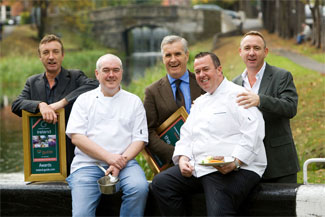
 The cream of the hospitality world gathered at Bord Bia in Dublin on Thursday 15th October, for the announcement of the 2010 Georgina Campbell Awards, associated with the respected Georgina Campbell’s Ireland independent hospitality guides, and Ireland’s most popular independent hospitality and travel website www.ireland-guide.com.
The cream of the hospitality world gathered at Bord Bia in Dublin on Thursday 15th October, for the announcement of the 2010 Georgina Campbell Awards, associated with the respected Georgina Campbell’s Ireland independent hospitality guides, and Ireland’s most popular independent hospitality and travel website www.ireland-guide.com. Unlike most other award schemes, the Georgina Campbell Awards are completely independent, and in no way affiliated with trade associations or marketing groups; it is this independence which has earned them special respect in the industry, and public trust.
The event was anticipated even more keenly than usual in this annus horribilis for the hospitality sector, as accolades from a respected independent guide are not only a source of encouragement, but very good for business too.
Every year Georgina Campbell and her team of experienced assessors comb the country’s hotels, country houses, guesthouses, restaurants, pubs and cafés, seeking out the best consumer experiences for readers of The Guide – and, increasingly, for followers of the very successful website, www.ireland-guide.com.
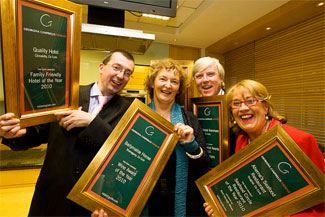 The Guide is now published biennially (this is the first year without a printed ‘glovebox bible’ Ireland guide since the company’s inception in 1998); but, said Ms Campbell, “We have maintained our rigorous programme of anonymous assessment visits throughout the season as usual, and the reports are gradually go through directly to the website, Ireland-guide.com. As always, we’ve kept a sharp eye out for those exceptional establishments which are right on top of their game and going the extra mile for customers.”
The Guide is now published biennially (this is the first year without a printed ‘glovebox bible’ Ireland guide since the company’s inception in 1998); but, said Ms Campbell, “We have maintained our rigorous programme of anonymous assessment visits throughout the season as usual, and the reports are gradually go through directly to the website, Ireland-guide.com. As always, we’ve kept a sharp eye out for those exceptional establishments which are right on top of their game and going the extra mile for customers.”Commenting on the Awards, Georgina Campbell said, “Less is definitely not more in this difficult time for Irish hospitality so – knowing that encouragement is needed now more than ever for those who are focused on maintaining quality no matter how difficult the market – we’ve added three new awards this year: a Green Ireland Hospitality Award, in recognition of outstanding environmental efforts; a Casual Dining Award, rewarding real quality among the kind of attractively priced restaurants people drop into without booking, with good home baking a particular focus; and an Outstanding Contribution Award, in recognition of the special contribution made by exceptional individuals in Irish hospitality.”
In what has been the toughest year ever for the Irish hospitality sector, Ms Campbell warns against unreasonable consumer pressure regarding prices. “Many fine establishments have cut costs to the bone and their businesses are now literally hanging by a thread,” she said; “Prices have often been reduced to an unsustainable level and yet there is constant pressure from the public, to make even further cuts. Lack of government action to reduce costs that are outside the control of businesses (VAT, for example, and local charges such as rates) means that fixed costs remain too high for further negotiation; therefore, if for no other reason than enlightened self-interest - we will no longer be able to enjoy the favourite places where we eat and stay if they can’t remain in business – consumers need to think twice before pressing for even better bargains.”
Top award winners on the day included: The BrookLodge & Wells Spa (Hotel of the Year); Campagne, Kilkenny (Restaurant of the Year); Eamonn O’Reilly, One Pico, Dublin (Chef of the Year); The Ballymore Inn, Ballymore Eustace, Co Kildare (Pub of the Year); and Nick’s Warehouse, Belfast (Outstanding Contribution Award).
Commenting on this year’s winners, Georgina said; “Excellence is always the object of our search, of course, but we also look for a particularly keen response to (or, better still, anticipation of) the particular demands of each year.
No prizes for guessing what we’ve been looking for this season – a determination to keep standards up, while prices fall. There is cause for concern in that standards in Irish hospitality generally are visibly slipping, but our award winners are made of stern stuff, and absolutely dedicated to providing the very best for their customers.”
Sponsors on the day included: Bord Bia, BIM, Fáilte Ireland, Blue Dragon/Patak’s and Waterways Ireland.
Click here for full list of Award Winners
Christmas Treats & Edible Gifts
 Home made sweets and little treats are always welcome gifts - and perfect for these recessionista times. The following article contains recipes that have been taken from some of the wonderful cookbooks that have been reviewed by us and include Turkish Delight from Rachel Allen's Home Cooking, MacNean Mint Chocolate Truffles from Neven Maguire's Home Chef and Sugar Cookies from The Hummingbird Bakery Cookbook.
Home made sweets and little treats are always welcome gifts - and perfect for these recessionista times. The following article contains recipes that have been taken from some of the wonderful cookbooks that have been reviewed by us and include Turkish Delight from Rachel Allen's Home Cooking, MacNean Mint Chocolate Truffles from Neven Maguire's Home Chef and Sugar Cookies from The Hummingbird Bakery Cookbook.  Turkish Delight
Turkish DelightNot many people make Turkish Delight so this would make a nice surprise gift – the recipe, from Rachel Allen’s Home Cooking (HarperCollins hardback, rrp €30.75), is the smooth rosewater version, but Rachel says that “ if you like Turkish Delight pistachios, feel free to chop up a handful and stir into the mixture. It keeps for ages and makes a particularly lovely gift — one batch will fill quite a few boxes.” Makes about 48.
[*Alternatively, Turkish Delight can be flavoured with Crème de Menthe and coloured green, making Peppermint Turkish Delight, aka Crème de Menthe Jellies. GC]
Click for recipe
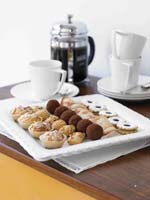 MacNean Mint Chocolate Truffles
MacNean Mint Chocolate TrufflesFrom Neven Maguire’s (of MacNean House & Restaurant) new cookbook, Home Chef (HarperCollins, hardback €25), this truffle recipe is one of a set of five petits fours given in the book – unusually, it contains fresh chopped mint as well as crème de menthe; alternatively, Neven suggests trying rum, Cointreau or whiskey flavouring instead. Makes about 30.
Click for recipe
 Sugar Cookies
Sugar CookiesThese cute iced stars are from The Hummingbird Bakery Cookbook (Ryland Peters & Small hardback, stg£16.99), and the recipe is the base for all their holiday cookies. Roll it out and use shaped biscuit cutters to make your own festive cookies – great fun for the kids to make, and there’s also a recipe for Gingerbread Men in the book.
Click for recipe
Talking Turkey

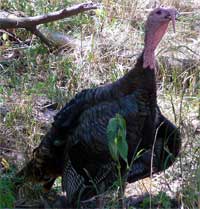 Marion Maxwell has come up with a treasure trove of turkey facts – and an unusual cooking method for the big bird...
Marion Maxwell has come up with a treasure trove of turkey facts – and an unusual cooking method for the big bird...What is gallopavophagy? Is it true that French peasants liked to eat Jesuits? Why can the turkeycock no longer perform its time-honoured function of tramping the hen? Before the coming of the railways, what were turkeys' shoes made of?
For the answer to these questions and many more, read on and savour some seasonal gobbledegook. Whether for the office party, the local table quiz, or that lull between the present opening and the arrival of the object in question, ‘that big dead thing in the middle’- the turkey, here are some indispensable gems of turkey trivia to trot out at the opportune moment.
Gallopavophagy: that's what most of us - about 77% nationally or 82% of socio-economic group A/B - will be doing on Christmas Day. It means "turkey-eating" and owes its origins not, as you might think, to the noise the creature makes but to the name given to the species: gallo or 'chicken' and pavo or 'peacock'.
The 'turkey' is actually a native of North America. Wild turkeys lived in woods and ate maize, fruit and grass. North American Indians hunted them for food and used the feathers to decorate their headdresses, but it was the Mexican Aztecs who were responsible for domesticating them. 'Mole Poblano', the famous Mexican turkey dish, contains chocolate as well as chillis, nuts and spices.
This is a bird that has suffered historically from an identity crisis. All the names by which the bird is known in Europe are based on misapprehensions as to its origins.
It was called the 'turkie-cock' because it arrived in Europe via Spanish ports on the boats of Turkish traders who used Seville as a port of call between the Spanish Colonies and Eastern Europe.
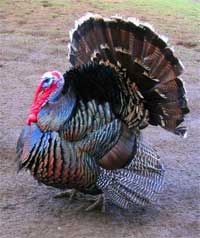 The French and Germans refer to it as the Indian hen ('dindon' or 'indianische Henne') just as, irony of ironies, do the Turks themselves ('hindi’). This tradition probably has its origins in the fact that the bird is known to have been brought to India in the 1820's from the Phillipines, then a Spanish possession governed from Mexico.
The French and Germans refer to it as the Indian hen ('dindon' or 'indianische Henne') just as, irony of ironies, do the Turks themselves ('hindi’). This tradition probably has its origins in the fact that the bird is known to have been brought to India in the 1820's from the Phillipines, then a Spanish possession governed from Mexico.Rural France throws up yet another variation. There, the turkey became known as 'le Jesuit', named for the Jesuit missionaries who introduced it there.
The first 'turkeys' to arrive in Britain in the early 16th century were often confused with guinea-fowl, probably because, although larger, they were also scrawny and dark-feathered. A turkey was sometimes used instead of a swan for a dramatic centrepiece at the Christmas feast in great country houses, but not till much later did it replace the goose as the favourite festive bird.
The biggest market worldwide for turkey is the U.S.A., where it has always been the centrepiece of the Thanksgiving Dinner. Ironically, the American breeds are based not directly on the native wild turkeys but on the birds that had been brought to England, developed and improved there by experienced Norfolk poultry breeders and then brought back by settlers to New England, all this not much more than a century after the Colombian voyages.
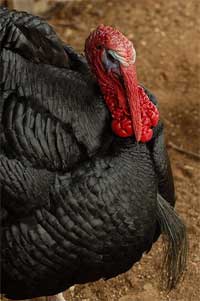 Norfolk was the main centre for turkey breeding in Britain from the 17th century and the 'black Norfolk' was particularly prized. An expensive luxury, the birds had their feet fitted with small leather boots or a coating of tar for their 100 mile walk to the London markets.
Norfolk was the main centre for turkey breeding in Britain from the 17th century and the 'black Norfolk' was particularly prized. An expensive luxury, the birds had their feet fitted with small leather boots or a coating of tar for their 100 mile walk to the London markets. The famous Yorkshire Christmas Pies, an invention of the 18th century, were another Christmas luxury, this time transported in boxes to London. Inside a huge 'standing' pastry case was packed a boned turkey, inside which was a goose, stuffed in turn with a chicken in which was a partridge, inside which again was a pigeon. Portions of hare and other game were packed in around the sides and finally about four pounds of butter were packed in under a pastry lid before baking.
In the 19th century, birds imported from Ireland played their part in spreading the turkey habit one notch down the social scale to the professional classes in mainland Britain, but it wasn't until well into the 1950’s that most ordinary town-dwellers could put a turkey on the Christmas table. It was factory farming methods, and freezing techniques developed in the 50's and 60's, which finally brought turkey eating within reach of most people and turned the bird into a year-round commodity.
Breeding and fattening are now two distinct occupations. In the industry, turkeys have been bred to put on weight as quickly and cheaply as possible. For this reason, the fleshy white turkey has largely replaced the older, gamier-tasting, small-breasted black and bronze breeds. In addition, it was found that many customers disliked the dark pen feathers that speckle the carcass of the darker birds. [Although the trend is now showing signs of reversal, with the revival of interest in rare breeds and small scale production (Ed).]
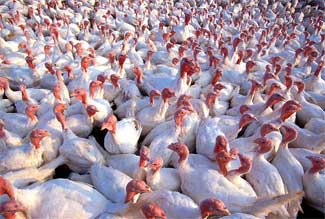 In the traditional domestic setting, the farmer's wife would take her turkey hens in a basket to a neighbour's turkeycock to have them 'tramped'. All eggs are fertilised at the one mating and a turkey hen would, on average, lay 10-12 eggs. However, in the quest to produce meaty birds, the turkey cocks or 'stags' have been bred to be big-breasted rather than stud-like. As a result, they are too ungainly to copulate in the normal way and tend to fall off the female's back. The result? Turkeys now have to be bred by artificial insemination. According to the natural order of things, turkey eggs would be hatched in February or March and it then takes about nine months for the free-ranging young birds to mature. However, with the development of fast-growing strains and growth-promoting feedstuffs, turkeys can now be ready in less than half the time, so that it is possible to rear two batches in the year.
In the traditional domestic setting, the farmer's wife would take her turkey hens in a basket to a neighbour's turkeycock to have them 'tramped'. All eggs are fertilised at the one mating and a turkey hen would, on average, lay 10-12 eggs. However, in the quest to produce meaty birds, the turkey cocks or 'stags' have been bred to be big-breasted rather than stud-like. As a result, they are too ungainly to copulate in the normal way and tend to fall off the female's back. The result? Turkeys now have to be bred by artificial insemination. According to the natural order of things, turkey eggs would be hatched in February or March and it then takes about nine months for the free-ranging young birds to mature. However, with the development of fast-growing strains and growth-promoting feedstuffs, turkeys can now be ready in less than half the time, so that it is possible to rear two batches in the year. Turkeys are highly strung and not noted for their intelligence. A loud noise will stampede them into a corner and in a panic they can suffocate each other. The fact that they are shy, reluctant feeders is another reason why they are notoriously hard to rear.
Turkeys are susceptible to the 'pip' or the 'roup', that is, worms in the windpipe. The old remedy was to feed them chopped nettles in their oatmeal, but modern commercial feedstuffs are treated with antibiotics that prevent such ailments.
Traditionally, turkeys are hung for at least 10 days to enhance the taste. Where mass production methods are used, however, they are plucked and cleaned out by machine and, once this is done, they cannot be hung because bacteria thrive in the empty carcass.
According to the Guinness Book of Records, Vincent Pilkington from Cootehill in Co. Cavan killed and plucked 100 turkeys in 7 hours 32 minutes on 15th December, 1978. In 1980, live on R.T.E's Late Late Show, he plucked a turkey in 1 minute 30 seconds. His record still stands.
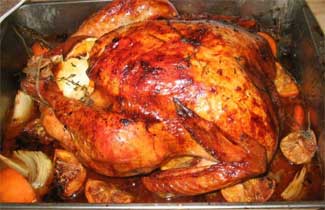 The reason turkeys have white and dark meat is to do with lifestyle. Turkeys tend to do a lot of standing around and thus the most active muscles such as legs and thighs require more blood vessels containing 'myoglobin' which delivers oxygen to the muscles. This is what makes the leg and thigh flesh end up darker. (All the flesh of game birds is dark for this reason). White meat is the result of well-rested muscles and since turkeys do little or no flying, there is no need for a rich supply of oxygen to the pectoral muscles and thus breast meat remains pale.
The reason turkeys have white and dark meat is to do with lifestyle. Turkeys tend to do a lot of standing around and thus the most active muscles such as legs and thighs require more blood vessels containing 'myoglobin' which delivers oxygen to the muscles. This is what makes the leg and thigh flesh end up darker. (All the flesh of game birds is dark for this reason). White meat is the result of well-rested muscles and since turkeys do little or no flying, there is no need for a rich supply of oxygen to the pectoral muscles and thus breast meat remains pale. For the luxury end of the market, many breeders are now bringing back the older breeds and also answering the demand for organically produced meat. The most sought-after turkey now will be free range, grown slowly to full maturity, fattened on food containing no animal protein and at least 70% cereal, reared without the use of any antibiotics or growth-promoting additives, hand-plucked and hung traditionally for 10 days or more. Generally, well-exercised, tough meat is tastier than tenderer, less-exercised meats Leg or breast. Sir?
In sweet muslin dres't
Having created the demand for big birds with plenty of breast meat (I hope you're feeling suitably sorry for the poor stag turkey) we devote a lot of our attention, when it comes to cooking the bird, to making it as moist as possible.
In case you haven't had the nerve to try out cooking your turkey in muslin, here's how. You just have to take my word that it works the first time you do it. You'll die of shock when you take the mummified object out of the oven, but just wait till you see what awaits you inside. Don't have the oven too hot, that's the only thing, or you could end up with a charred mess!
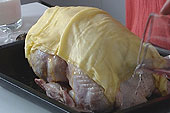 For a 12-14 lb turkey take a double thickness of butter muslin, 30 inch square. Place turkey, breast uppermost, in the middle of the square. Season generously inside and out with salt and black pepper. Put two peeled carrots, a sliced onion, a quartered apple and a bunch of parsley in the cavity, with a pound of butter. Smear another pound all over the skin — don't neglect the thighs. Draw up muslin, fold over a seam and fasten with cocktail sticks, anchoring them into the bird as well, until bird is totally enveloped. Cook the bird in the roasting tin, not on a rack, according to your usual timetable (no need to baste). When done, leave to rest for 10 minutes before removing the muslin.
For a 12-14 lb turkey take a double thickness of butter muslin, 30 inch square. Place turkey, breast uppermost, in the middle of the square. Season generously inside and out with salt and black pepper. Put two peeled carrots, a sliced onion, a quartered apple and a bunch of parsley in the cavity, with a pound of butter. Smear another pound all over the skin — don't neglect the thighs. Draw up muslin, fold over a seam and fasten with cocktail sticks, anchoring them into the bird as well, until bird is totally enveloped. Cook the bird in the roasting tin, not on a rack, according to your usual timetable (no need to baste). When done, leave to rest for 10 minutes before removing the muslin.
Good Food Simply Cooked
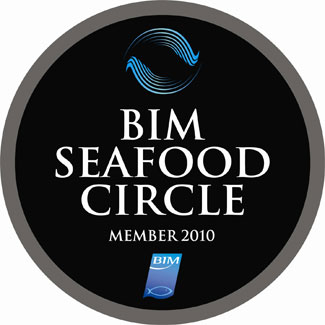
 “Good food, simply cooked” is David Fitzgibbon’s guiding principle and it’s one that has stood him in good stead at Aherne's Seafood Restaurant in Youghal. Selected as BIM Seafood Circle Restaurant of the Year 2010 by Georgina Campbell’s Guide, Aherne’s is an unmissable stop on the south coast, as noted for the warm hospitality as the sparkling fresh seafood that attracts visitors as well as devoted locals.
“Good food, simply cooked” is David Fitzgibbon’s guiding principle and it’s one that has stood him in good stead at Aherne's Seafood Restaurant in Youghal. Selected as BIM Seafood Circle Restaurant of the Year 2010 by Georgina Campbell’s Guide, Aherne’s is an unmissable stop on the south coast, as noted for the warm hospitality as the sparkling fresh seafood that attracts visitors as well as devoted locals. It’s a fitting tribute as the one-time pub celebrates its 100th year in the ownership of the Fitzgibbon family, and is now run by third generation brothers John and David.
Menus feature at least eight different types of fish on any given day, mostly from local day boats fishing out of Ballycotton Bay. “I talk to the fishermen in the morning and they tell me what they’re catching so I can decide what I’ll use on the day’s menu”, David says. “It goes into a refrigerated van as soon as it’s landed and comes straight to the kitchen door”.
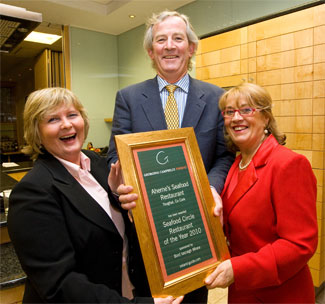 Other seafood comes from Dunmore East and Kilmore Quay, while crab is supplied by a local crab potter. A good selection of fish goes into Aherne’s famous chowder, described by David as “New England style”, thick and creamy with chunky seafood and the signature addition of smoked salmon. Served with their moist dark brown bread, the distinctive chowder is a popular lunchtime meal.
Other seafood comes from Dunmore East and Kilmore Quay, while crab is supplied by a local crab potter. A good selection of fish goes into Aherne’s famous chowder, described by David as “New England style”, thick and creamy with chunky seafood and the signature addition of smoked salmon. Served with their moist dark brown bread, the distinctive chowder is a popular lunchtime meal. Fresh bread is baked every day, and since John was diagnosed coeliac some years ago, they also produce their own gluten-free bread and make up dishes in gluten-free versions, helpfully flagged on the menu.
Dublin Bay prawns in garlic butter are a permanent menu fixture, with customers travelling specially for the succulent prawns served sizzling in piping hot escargot dishes, each in its own little pool of delicious butter. Oysters are always on the menu too, gigas as well as native oysters when they’re in season. “We’ve noticed that people have definite preferences for one or the other, but never both,” David explains.
Specialities like baked cod wrapped in bacon and pan fried scallops with spinach and beurre blanc are popular but David has noticed that fresh fish simply grilled on the bone is enjoying great uptake. With less work for the kitchen, these can be offered at an attractive price and often feature as catch of the day. Megrim for instance, is like white sole when it’s fresh, David says, and he also makes good use of grey mullet, which is similar to bass and “gorgeous when it’s fresh”.
Familiar fish like hake, monkfish, lemon sole and cod are reliable menu favourites but David also likes to encourage customers to try different fish. “John Dory is beautiful but people are not sure about it. It’s just lack of familiarity, so it’s important that servers are trained to sell it when customers ask ‘what’s nice?’ ”.
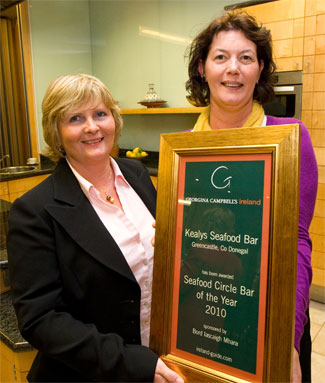 Up in Donegal, it’s a different story. Tricia Kealy of Kealys Seafood Bar reports that John Dory served with anchovy butter is their most popular fish and has been known to convert dedicated meat eaters. “It’s a good introduction to seafood, with a nice firm texture and our only problem is that it can sometimes be scarce as it’s always in demand”.
Up in Donegal, it’s a different story. Tricia Kealy of Kealys Seafood Bar reports that John Dory served with anchovy butter is their most popular fish and has been known to convert dedicated meat eaters. “It’s a good introduction to seafood, with a nice firm texture and our only problem is that it can sometimes be scarce as it’s always in demand”.Named BIM Seafood Circle Bar of the Year 2010 by the Campbell Guide, Kealys had been a family pub, closed for several years until re-opened by Tricia and her late husband James in 1989. Both had trained as chefs in Killybegs and with the pub on the quayside at the heart of Greencastle’s tiny fishing port, it seemed natural to start offering a bit of seafood in the bar.
Chowder was on the original menu, made to James’s grandmothers’s recipe and still a mainstay so popular that customers ask for the recipe, which is cheerfully given out. Based on a selection of white fish and salmon in a creamy broth, mussels are no longer included in the mix due to the rise in shellfish allergies – a sign of the times, Tricia observes.
Fresh seafood at the bar’s five tables simply took off and within three years Kealys expanded with a 60 seat restaurant and a growing reputation for spanking fresh seafood cooked within sight of the boats that delivered it virtually to the front door.
People are more interested in eating seafood now, Tricia has seen, for health reasons as well as the influence of travel and good foreign experiences. Moules marinieres is a perennial favourite as the Spanish influenced hake with saffron butter sauce.
Kealys seafood also has the happy knack of putting a modern spin on traditional Irish food, serving their baked salmon with a wholegrain mustard crust on spring cabbage and bacon. Locally grown organic vegetables are part of the mix in dishes like baked hake on braised fennel with tomato butter sauce.
Black sole meuniere on the bone is an evergreen favourite and Donegal lobster is prepared to order, with many enthusiastic customers cherishing the slightly retro deliciousness of a classic thermidor. Oysters figure largely too, served au natural or given Kealys special “pearl of the Foyle” treatment, lightly cooked in whiskey and cream with smoked salmon and gratinated on a crouton.
Customers come from all over Donegal and Northern Ireland, and Tricia credits the Greencastle – Magilligan Point ferry with opening up the Inishowen peninsula. “We’ll always be affected by the weather”, she says “especially in the winter season. The main thing is that people enjoy their meal, leave happy and come back to us. The loyalty of our customers is what keeps us going”.
by Marilyn Bright
Supported by:

Irish Food Writers Guild Awards 2010
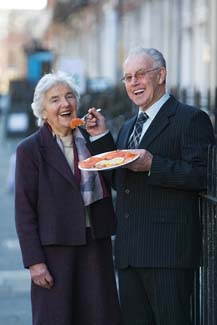
 QUALITY & SUSTAINABILITY THE REAL WINNERS AT FOOD AWARDS
QUALITY & SUSTAINABILITY THE REAL WINNERS AT FOOD AWARDSAgriculture was the prevailing theme at the Irish Food Writers’ Guild Food Awards 2010. From farm to fish, just five indigenous companies were acknowledged as among the finest food producers in Ireland and contribute to Ireland’s growing international reputation for fine food and produce.
Presented by one of the pioneers supporting Irish food producers and the promotion of good food in Ireland since the 1960s, Myrtle Allen of Ballymaloe House, Co Cork, the awards for outstanding products went to:
Moonshine Dairy Farm (Westmeath) for its gently pasteurised Moonshine Organic Milk;
Knockdrinna Farmhouse Cheese (Kilkenny) for the company’s distinctive Farmhouse Sheeps Cheese;
Kettyle Irish Foods (Fermanagh) for the excellent eating quality of its Fermanagh Free Range Chickens.
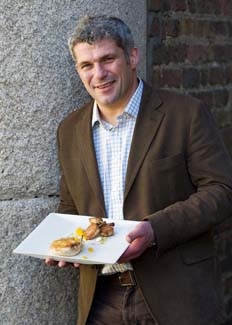 In addition, The Guild Environmental Award was presented to Omega Beef Direct (Tipperary), for using farming and production methods that are a model of sustainability, and the Guild’s seldom awarded Lifetime Achievement Award was made to Nicky McLoughlin of Nicky’s Plaice (Co Dublin) who, for half a century, has been the lynchpin of an exceptional fishmongers on Howth Pier.
In addition, The Guild Environmental Award was presented to Omega Beef Direct (Tipperary), for using farming and production methods that are a model of sustainability, and the Guild’s seldom awarded Lifetime Achievement Award was made to Nicky McLoughlin of Nicky’s Plaice (Co Dublin) who, for half a century, has been the lynchpin of an exceptional fishmongers on Howth Pier. Now in its 16th year, the annual Irish Food Writers’ Guild (IFWG) Food Awards promotes and rewards the highest quality of produce, craftsmanship and dedication to Irish food. These awards, which are highly regarded and much coveted within the industry, have been described as the most reputable and indeed, the most important food awards in Ireland. This is only the second year that an environmental award has been made; introduced last year in recognition of the growing importance of sustainability across the food and retail sectors.
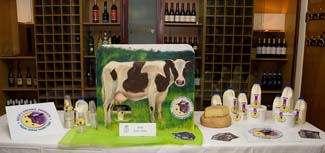 The Guild’s new Chairperson, Orla Broderick said; “These awards are not about luck or chance and the industry cannot lobby on behalf of food producers. These awards are about one thing only, achieving consistent standards of real quality and excellence and as a Guild, we are very proud of the high standards we have helped to set. The strict judging process ensures that only exceptional producers are recognised, each year.
The Guild’s new Chairperson, Orla Broderick said; “These awards are not about luck or chance and the industry cannot lobby on behalf of food producers. These awards are about one thing only, achieving consistent standards of real quality and excellence and as a Guild, we are very proud of the high standards we have helped to set. The strict judging process ensures that only exceptional producers are recognised, each year. “We are not confined by company size; set categories; turnover or established relationships. No food producer can enter for an award and indeed, no company ever knows that it is being considered for an award until the judging is complete and contact is made. Our criteria is strict but straightforward - the products, traditional or innovative, must be produced in Ireland and the main ingredients must be home produced. We are really thrilled with the calibre of this year’s winners and hope the accolade will contribute somewhat to their long-term success.”
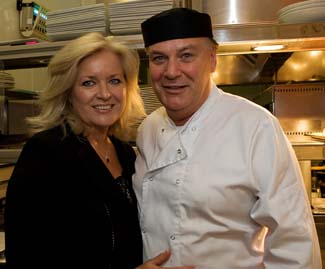 In celebration of the awards, which were again supported by Bord Bia, Ireland’s leading food writers, food critics and retail and industry representatives enjoyed a special awards lunch, which was hosted by SallyAnne and Derry Clarke of Michelin star restaurant, L'Ecrivain.
In celebration of the awards, which were again supported by Bord Bia, Ireland’s leading food writers, food critics and retail and industry representatives enjoyed a special awards lunch, which was hosted by SallyAnne and Derry Clarke of Michelin star restaurant, L'Ecrivain. As he has done for a number of years now, Derry devised a menu comprising all of the winning produce and guests feasted on Nicky’s Plaice smoked salmon with crab salad & cucumber; Fermanagh free range seared chicken breast with barley, cured bacon & turnip purée; Chocolate pave with Moonshine organic ice cream and Moonshine organic milkshake followed by Knockdrinna Meadow Sheeps Cheese and rarebit with port & pear purée and candied pecans.
Accompanying wines were supplied by Gilbeys, bottled water by Tipperary Natural Mineral Water – and William Rochford of BR Marketing presented chocolates to all the guests.
The Judging Process
• Every member of the Guild is invited to nominate products they believe are worthy of an award
• The products must be produced in Ireland and the main ingredient must be home produced
• The producer must be trading for at least three years
• Products are bought and paid for and a formal tasting meeting takes place where members vote, using proportional representation
For further information log onto: www.irishfoodwritersguild.ie
© All recipes created by Derry Clarke, L'Ecrivain, for the 2010 Irish Food Writers' Guild Food Awards
 Nicky’s Plaice smoked salmon with crab salad & cucumber
Nicky’s Plaice smoked salmon with crab salad & cucumberClick for recipe
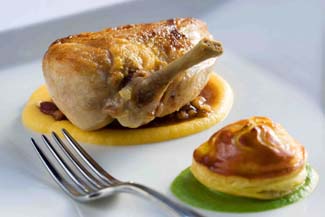 Fermanagh free range seared chicken breast with barley, cured bacon & turnip purée
Fermanagh free range seared chicken breast with barley, cured bacon & turnip puréeClick for recipe
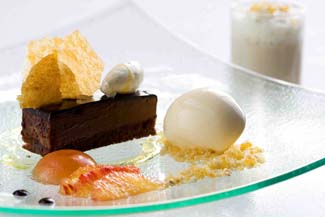 Chocolate pave with Moonshine organic ice cream and Moonshine organic milkshake
Chocolate pave with Moonshine organic ice cream and Moonshine organic milkshake Click for recipe
Georgina Campbell's ireland-guide.com Shortlisted for Two Awards

 Irish Internet Association - Net Visionary Awards 2010
Irish Internet Association - Net Visionary Awards 2010
The shortlist has been announced for the highly respected annual IIA Net Visionary Awards. Georgina Campbell's ireland-guide.com has been shortlisted in two categories - Mobile Internet Innovation and Online Tourism.
The shortlist has been selected by a panel comprised of a highly respected group of internet industry leaders & the winners in each category will be the person receiving the most votes from the public and voting is now closed.
The winners will be announced at the Awards ceremony on 20th May in the Crowne Plaza Dublin Northwood.
 The Awards follow the IIA Annual Conference.
The Awards follow the IIA Annual Conference.
Georgina Campbell's ireland-guide.com is NUMBER 1 - TWO BE SURE!

NUMBER 1 – TWO BE SURE!
Enterprise Ireland & Irish Internet Association – Net Visionary Awards 2010
Georgina Campbell’s ireland-guide.com Scoops Two Top Awards
· Mobile Internet Innovation
&
· Online Tourism
Ireland’s leading independent hospitality and travel website – Georgina Campbell’s ireland-guide.com - was honoured on Thursday 20th May at a glittering awards ceremony in Dublin’s Crowne Plaza Hotel, with the presentation of a handsome pair of awards at Ireland’s leading internet industry awards, the annual Irish Internet Association & Enterprise Ireland Net Visionary Awards. 
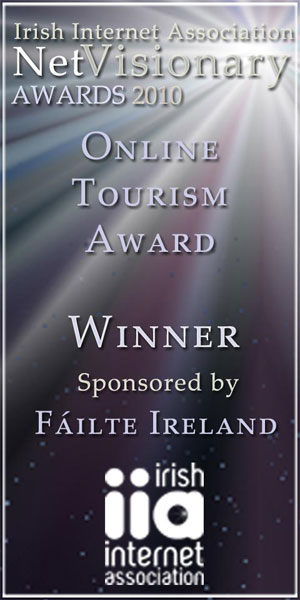 The only company to receive two awards on the night, Georgina Campbell’s ireland-guide.com was shortlisted out of hundreds of entries in two categories “Mobile Internet Innovation Award” and “Online Tourism Award” - and came out top in both categories & we would like to offer our heart felt thanks to all those who voted for us..
The only company to receive two awards on the night, Georgina Campbell’s ireland-guide.com was shortlisted out of hundreds of entries in two categories “Mobile Internet Innovation Award” and “Online Tourism Award” - and came out top in both categories & we would like to offer our heart felt thanks to all those who voted for us.. Commenting on this very welcome news, Bob Nixon said, “It is fantastic to get the recognition that these awards bring, both to the multi-award winning ireland-guide.com - which we have been working on for many years - and to our new mobile phone internet applications which we have been developing over the last year.
Commenting on this very welcome news, Bob Nixon said, “It is fantastic to get the recognition that these awards bring, both to the multi-award winning ireland-guide.com - which we have been working on for many years - and to our new mobile phone internet applications which we have been developing over the last year.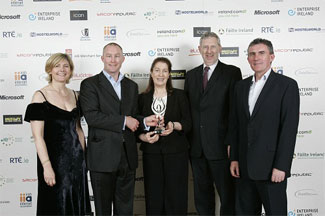 Then, in 2009, we realised that the time was right to make inroads into the developing mobile phone applications market and we have encountered huge success here with our Ireland Guide iPhone App which was listed in Top 5 Irish Apps by the Sunday Business Post and in Top 20 Best iPhone Apps by the Irish Independent and has been downloaded by people in 50 countries to date.
Then, in 2009, we realised that the time was right to make inroads into the developing mobile phone applications market and we have encountered huge success here with our Ireland Guide iPhone App which was listed in Top 5 Irish Apps by the Sunday Business Post and in Top 20 Best iPhone Apps by the Irish Independent and has been downloaded by people in 50 countries to date.
Click here for more information on the Net Visionary Awards
GEORGINA CAMPBELL'S IRELAND HOSPITALITY AWARDS 2011

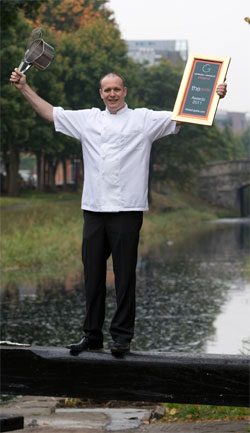 Raising a Toast to Those who Survive – and Thrive!
Raising a Toast to Those who Survive – and Thrive!
At the 2011 Georgina Campbell's Ireland Awards
Representatives of the very best of Irish hospitality gathered at Bord Bia in Dublin today (12th October 2010), for the announcement of the 2011 Georgina Campbell's Ireland Awards, associated with the respected Georgina Campbell’s Ireland independent hospitality guides, and Ireland’s most popular independent hospitality and travel website www.ireland-guide.com.
Unlike most other award schemes, the Georgina Campbell Awards are completely independent, and in no way affiliated with trade associations or marketing groups; it is this independence which has earned them special respect in the industry, and public trust.
The event was anticipated especially keenly in yet another challenging year for the hospitality sector, as accolades from a respected independent guide are not only a source of encouragement, but very good for business too.
In line with the growth in popularity of accessing our guides digitally and indeed now while on the move, Georgina Campbell Guides’ focus is continuing to drift from printed guides, initially to the internet with ireland-guide.com and now towards the rapidly growing mobile technology area with a hugely successful app for the iPhone that was developed to ‘test the water’.
This paved the way for a new version of the iPhone app with lots of new areas & functionality and for apps for Samsung, Blackberry and Nokia devices, which will all be live by the end of 2010, thus ensuring that Georgina Campbell’s Ireland remains the clear trail-blazer in relation to hospitality & travel guides in the mobile internet arena.
Yet whether accessed through a traditional paper guide or through a mobile phone app the ethos remains the same, every year Georgina Campbell and her team of experienced assessors comb the country’s hotels, country houses, guesthouses, restaurants, pubs and cafés, seeking out the best consumer experiences for their readers.
Ms Campbell, “We have maintained our rigorous programme of anonymous assessment visits throughout the season as usual, and the reports are gradually go through directly to the website, ireland-guide.com and as a result on to our apps. As always, we’ve kept a sharp eye out for those exceptional establishments which are right on top of their game and going the extra mile for customers.”
Commenting on the Awards, Georgina Campbell said, “Every year a special theme emerges, depending on ‘the year that’s in it’ – this year the theme might have been expected to be survival, against the odds. In fact – surprisingly - it’s more positive than that, as this year’s awards celebrate those who are bucking the trend, getting on with it – and thriving: so, this is a day to raise a toast, to those who not only survive – but thrive!”
Top award winners on the day included: Kelly’s Resort Hotel, Rosslare, Co Wexford (Hotel of the Year); L'Ecrivain, Dublin (Restaurant of the Year); Henry Stone, Sha-Roe Bistro, Clonegal, Co Carlow (Chef of the Year); Hargadons Bros., Sligo (Pub of the Year); and Johnny & Lucy Madden, Hilton Park, Clones, Co Monaghan, (Georgina Campbell Award, for Outstanding Contribution).
Commenting on this year’s winners, Georgina said; “Excellence is always the top priority, of course, but our award winners this year share a quality which goes beyond that.
Given the difficulties posed by the current economic situation, it takes a very special kind of determination and skill to confront the situation head-on, take control and come up with innovative ways to attract customers.
Today’s winners represent those people in the hospitality industry who have got real grit and, by putting customer requirements first - and keeping up their marketing - can continue to provide a combination of excellence and value for money that brings in business, even at this dire time for the industry.”
Sponsors include: Bord Bia, BIM, Fáilte Ireland, and Waterways Ireland.
Full list of awards with citations can be found here
Full list of awards below:
GEORGINA CAMPBELL'S IRELAND HOSPITALITY AWARDS 2011
GEORGINA CAMPBELL AWARD 2011 (for Outstanding Contribution to the hospitality industry)
Johnny & Lucy Madden, Hilton Park, Clones, Co Monaghan
HOTEL OF THE YEAR 2011
Kelly’s Resort Hotel, Rosslare, Co Wexford
RESTAURANT OF THE YEAR 2011
L’Ecrivain, Dublin 2
CHEF OF THE YEAR 2011
Henry Stone, Sha-Roe Bistro, Clonegal, Co Carlow
PUB OF THE YEAR 2011
Hargadons, Sligo
“JUST ASK” RESTAURANT OF THE YEAR AWARD 2011 sponsored by Bord Bia
Harrys, Bridgend, Co Donegal
NATURAL FOOD AWARD 2011
Boyles of Dromore, Co Down
HIDEAWAY OF THE YEAR 2011
Saratoga Lodge, Templemore, Co Tipperary
TASTE OF THE WATERWAYS AWARD sponsored by Waterways Ireland
Keenans of Tarmonbarry, Co Roscommon
WINE AWARD OF THE YEAR 2011
Kelly’s Resort Hotel, Rosslare, Co Wexford
HOSTS OF THE YEAR 2011
Neil & Noreen Harrington, Virginia’s Guesthouse, Kenmare
BUSINESS HOTEL OF THE YEAR 2011
Crowne Plaza, Dublin Airport
FAMILY FRIENDLY DESTINATION OF THE YEAR 2011
Ballyvolane House, Fermoy, Co Cork
ETHNIC RESTAURANT OF THE YEAR 2011
China Sichuan, Dublin
ATMOSPHERIC RESTAURANT OF THE YEAR 2011
L’Atmosphère, Waterford
NEWCOMER OF THE YEAR 2011
The Fatted Calf, Glasson, Co Westmeath
COUNTRY HOUSE OF THE YEAR 2011
Marlfield House, Gorey, Co Wexford
GUESTHOUSE OF THE YEAR 2011
Ivyleigh House, Portlaoise, Co Laois
FARMHOUSE OF THE YEAR 2011
Lough Bishop House, Collinstown, Co Westmeath
B&B OF THE YEAR 2011
Carlingford House, Carlingford, Co Louth
CASUAL DINING AWARD 2011
Miss Courtney’s Tea Rooms, Killarney, Co Kerry
GREEN IRELAND HOSPITALITY AWARD 2011
Ballynahinch Castle Hotel, Recess, Co Galway
IRISH BREAKFAST AWARDS 2011:
NATIONAL WINNER
Ivyleigh House, Portlaoise, Co Laois
Hotel Breakfast
Kelly’s Resort Hotel, Rosslare, Co Wexford
Farmhouse Breakfast
Lough Bishop House
Guesthouse Breakfast
Ivyleigh House, Portlaoise, Co Laois
B&B Breakfast
Carlingford House, Carlingford, Co Louth
Best of the Best in Ireland - Georgina Campbell's Ireland
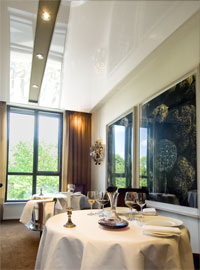
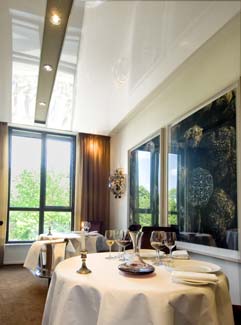 List of the Best of the Best places to eat, drink & stay from Georgina Campbell's Ireland including starred restaurants, deluxe hotels and outstanding pubs...
List of the Best of the Best places to eat, drink & stay from Georgina Campbell's Ireland including starred restaurants, deluxe hotels and outstanding pubs...KEY
Demi-Star – For Cooking & Service well above average
1 Star – Restaurants offering consistent excellence overall
2 Stars – One of the best restaurants in the land
3 stars – The highest restaurant grade achievable
Pub Star – Outstanding Pub - for good food & atmosphere
STARRED RESTAURANTS
Republic of Ireland
2 1/2 star:
Dublin, Restaurant Patrick Guilbaud
2 Star:
Dublin, Thornton’s
1 Star:
Dublin, Chapter One
Dublin, The Tea Room @ The Clarence Hotel
Dublin, l’Ecrivain
Dublin, One Pico Restaurant
Dublin, Pearl Brasserie
Dublin, Restaurant FortyOne at Residence
Co Cavan, MacNean Bistro, Blacklion
Co Clare, Gregans Castle, Ballyvaughan
Co Clare, Dromoland Castle, Earl of Thomond
Co Cork, Ballymaloe House, Shanagarry
Co Cork, Longueville House, Mallow
Co Kerry, Killarney Park Hotel, Killarney
Co Kerry, The Ross, Killarney (Cellar One)
Co Kerry, Sheen Falls Lodge, Kenmare (La Cascade)
Co Kilkenny, Campagne, Kilkenny
Co Mayo, Ashford Castle, Cong George V Dining Room
Co Mayo Knockranny House Hotel & Spa, Westport (La Fougere)
Co Sligo, Cromleach Lodge, Castlebaldwin
Co Waterford The Cliff House Hotel, Ardmore
Co Waterford, The Tannery, Dungarvan
Co Waterford, Waterford Castle Hotel, Waterford
Co Wexford, Dunbrody House, Arthurstown (The Harvest Room)
Demi-Star:
Dublin 1, Winding Stair, The
Dublin 2, Dax Restaurant
Dublin 2, Merrion Hotel,The Cellar Restaurant
Dublin 2, Pichet
Dublin 4, Dylan Restaurant, Dylan Hotel
Dublin 4, O’Connells of Donnybrook
Dublin 8, Locks Brasserie
Dublin 16, Ananada
Dublin18, China Sichuan
Dublin 18, The Box Tree
Co Dublin, Rasam, Glasthule
Co Dublin, King Sitric Seafood Restaurant & Accommodation, Howth
Co Dublin, Bon Appetit, Malahide
Co Carlow, Sha-Roe Bistro, Clonegal
Co Cavan, The Olde Post Inn, Cloverhill
Co Clare, Cherry Tree Restaurant, Killaloe
Co Clare, Sheedy’s Hotel, Lisdoonvarna
Cork City Augustines
Cork City, Café Paradiso
Cork City, Farmgate Café
Cork City, Fleming’s
Cork City, Isaacs
Cork City, Jacob’s on the Mall
Cork City, Jacques
Cork City, Les Gourmandises Restaurant
Co Cork, Bell Tower Restaurant, Castlemartyr Resort, Castlemartyr
Co Cork, Good Things Café, Durrus
Co Cork, Fishy Fishy Café, Kinsale
Co Cork, O’Callaghan Walshe, Rosscarbery
Co Donegal, The Mill Restaurant, Dunfanaghy
Co Donegal, Harveys Point Hotel Lough Eske, The Restaurant
Co Galway, Aniar, Galway
Co Galway, Cava, Galway
Co Galway G Hotel, Galway, Matz at the G
Co Galway, Oscars, Galway
Co Galway, West at the Twelve, The Twelve Hotel, Barna
Co Galway, Inis Meain Restaurant & Suites, Aran Islands
Co Kerry, The Chart House Restaurant, Dingle
Co Kerry, Out of the Blue, Dingle
Co Kerry, The Lime Tree Restaurant, Kenmare
Co Kerry, Mulcahys Restaurant, Kenmare
Co Kerry, Packie’s Restaurant, Kenmare
Co Kerry, Park Hotel Kenmare
Co Kerry, Jack’s Seafood Restaurant & Bar, Killorglin
Co Kildare, Kildare Hotel & Country Club, Straffan
Co Kildare, Ballymore Inn, Ballymore Eustace
Co Kilkenny Zuni, Kilkenny
Co Limerick, The Mustard Seed @ Echo Lodge, Ballingarry
Co Limerick, I Pery Square, Limerick
Co Longford VM Restaurant at Viewmount House, Longford
Co Louth, Eastern Seaboard, Drogheda
Co Monaghan, The Nuremore Hotel, Carrickmacross
Co Tipperary, Chez Hans, Cashel
Co Tipperary Café Hans, Cashel
Co Tipperary, The Old Convent Gourmet Hideaway, Clogheen
Co Waterford, Richmond House, Cappoquin
Co Waterford, O’Brien Chop House, Lismore
Co Westmeath, Wineport Lodge, Glasson
Co Wexford, Marlfield House, Gorey
Co Wexford, Kelly’s Hotel, Rosslare
Co Wicklow, BrookLodge Hotel, Macreddin, The Strawberry Tree
Co Wicklow Kilmacanogue The Fern House Café at Avoca
Co Wicklow Rathdrum, Bates Restaurant
Northern Ireland
2 Star:
(none)
1 Star:
Belfast, Deanes
Demi-Star:
Aldens
Belfast, Cayenne
Belfast, James Street South
Belfast, Merchant Hotel, The Great Room
Belfast, Mourne Seafood Bar
Belfast, Nick’s Warehouse
Belfast, Shu
Belfast, Tedfords
Co Antrim, River Room, Galgorm Manor Hotel, Ballymena (River Room)
Co Down, The Boat House, Bangor
Co Down, The Salty Dog, Bangor
Co Down, Balloo House Restaurant, Killinchy
Co Londonderry, Preference Brasserie, Portstewart
DELUXE HOTELS
Republic of Ireland
Dublin, The Clarence, Temple Bar
Dublin, Conrad Dublin, Earlsfort Terrace
Dublin, The Fitzwilliam Hotel, St. Stephen’s Green
Dublin, The Merrion, Merrion Street
Dublin, The Shelbourne, St. Stephen’s Green
Dublin, The Westbury, Grafton Street
Dublin, The Westin Hotel, College Green
Dublin, The Dylan Hotel, Dublin 4
Dublin, Four Seasons Hotel, Ballsbridge
Dublin, Radisson Blu St. Helen’s Hotel
Co Clare, Dromoland Castle, Newmarket-on-Fergus
Cork City, Hayfield Manor Hotel
Co Cork, Castlemartyr Resort, Castlemartyr
Co Cork, Fota Island Resort, Cobh
Co Donegal, Solis Lough Eske Castle Hotel
Co Galway, Glenlo Abbey Hotel
Co Galway, The G Hotel, Galway
Co Kerry, Park Hotel Kenmare
Co Kerry, Sheen Falls Lodge, Kenmare
Co Kerry, Aghadoe Heights Hotel, Killarney
Co Kerry, Killarney Park Hotel, Killarney
Co Kerry, Muckross Park Hotel, Killarney
Co Kerry, The Europe Hotel & Resort, Killarney
Co Kerry, Dunloe Castle Hotel, Killarney
Co Kildare, Kildare Hotel & Country Club, Straffan
Co Kilkenny, Mount Juliet Conrad, Thomastown
Co Laois, Ballyfin, Ballyfin Demesne
Co Laois, Heritage Golf & Spa Resort, Killenard
Co Limerick, Adare Manor, Adare
Co Limerick, The Savoy, Limerick
Co Mayo, Ashford Castle, Cong
Co Waterford, The Cliff House Hotel, Ardmore
Co Wexford, Marlfield House, Gorey
Co Wicklow, The Ritz Carlton Powerscort, Enniskerry
Co Wicklow, Druids Glen Resort, Newtownmountkennedy
Northern Ireland
Belfast, Fitzwilliam Hotel
Belfast, The Merchant Hotel
Co Antrim, Galgorm Manor Hotel, Ballymena
Co Down, Hastings Culloden Hotel, Holywood
Co Fermanagh, Lough Erne Resort, Enniskillen
OUTSTANDING PUBS (for good food & atmosphere)
Republic of Ireland
Dublin The Chophouse, Dublin 4
Dublin, Ely Gastro Pub, Dublin 4
Co Carlow M. O’Shea, Borris
Co Clare, Vaughans Anchor Inn, Liscannor
Co Clare, Wild Honey Inn, Lisdoonvarna
Co Cork, Bushe’s Bar, Baltimore
Co Cork, The Poachers Inn, Bandon
Co Cork, Mary Ann’s Bar & Restaurant, Castletownshend
Co Cork, Deasy’s, Clonakilty
Co Cork, Hayes’ Bar, Glandore
Co Cork, Toddies @ The Bulman, Kinsale
Co Cork, The Bosun, Monkstown
Co Cork, Aherne’s Youghal
Co Donegal, Nancy’s, Ardara
Co Donegal Harrys Bridgend
Co Donegal, Olde Glen Pub, Carrigart
Co Donegal, McGrory’s of Culdaff
Co Galway, Moran’s Oyster Cottage, Kilcolgan
Co Kerry, Beaufort Bar & Restaurtant, Beaufort
Co Kerry, QC’s Seafood Bar & Restaurant, Cahirciveen
Co Kerry, The Point Bar, Caherciveen
Co Kerry, Lord Baker’s Restaurant & Bar, Dingle
Co Kerry, The Purple Heather, Kenmare
Co Kildare, The Ballymore Inn, Ballymore Eustace
Co Kildare, Fallons of Kilcullen, Kilcullen
Co Kilkenny, Marble City Bar, Kilkenny
Co Leitrim, The Oarsman Bar & Café, Carrick on Shannon
Co Louth, Fitzpatrick’s Bar & Restaurant, Dundalk
Co Mayo, The Tavern, Murrisk
Co Roscommon, Keenans Bar, Tarmonbarry
Co Sligo Hargadon’s, Sligo
Co Tipperary The Whiskey Still, Dromineer
Co Westmeath, The Fatted Calf, Glasson
Co Wexford, The Lobster Pot, Carne
Co Wicklow, Roundwood Inn, Roundwood
Northern Ireland
Belfast, Crown Liquor Salon
Co Down, The Pheasant, Annahilt
Co Down, The Plough Inn, Hillsborough
Co Down The Parson’s Nose, Hillsborough
Co Down, Balloo House, Killinchy
Co Fermanagh Blakes of the Hollow, Enniskillen
OUT NOW - IRELAND FOR FOOD LOVERS
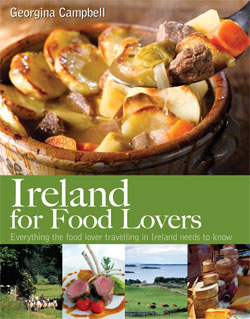
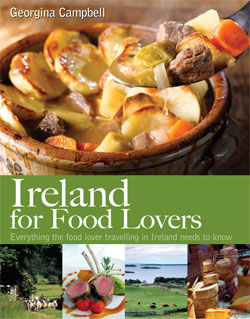 IRELAND FOR FOOD LOVERS
IRELAND FOR FOOD LOVERS Everything the food lover in Ireland needs to know...
by Georgina Campbell
AVAILABLE NOW - click here to purchase
Food tourism in Ireland enters an exciting new phase with this new book, the first to offer a complete user guide to finding and buying the best Irish foods – and how to enjoy them at their best, both when eating out and at home.
Ireland for Food Lovers brings together the plethora of information that food lovers currently have to glean from multiple sources, and presents it appealingly as a culinary adventure through the beautiful island of Ireland, exploring the rich diversity of foods from land, lake, river and sea and setting them in context with stunning photography.
Of equal interest to Irish residents and visitors, Ireland for Food Lovers introduces readers to the many producers, farmers markets, food shops and places to eat, stay (and cook) that make up Ireland’s food culture – and gives a wide range of favourite recipes showcasing Irish produce that are practical to cook, beautiful to look at and delicious to eat.
DESCRIPTION
• This stylish, user-friendly book aims to help both visitors and Irish residents to find the very best of Irish foods, and to get maximum enjoyment from them - whether eating out or cooking them at home
• Arranged by region so that the visitor’s experience will be enhanced by greater knowledge of the local foods they can find there – and the people who produce them
• Introduces the food producers of each area, both artisan and large-scale
• Features food shops, farmers markets and food festivals all around the country
• Recommends places to eat out and stay where the best of Irish produce can be enjoyed
• Evocative photography of Ireland’s beautiful land- and seascapes sets foods in the context of their natural surroundings
• Recipes for the range of delicious dishes featured are clearly described for home cooks to make with confidence
• Dishes are accompanied by photographs
• Features cookery schools offering courses based on Irish food traditions and local produce – often including visits to artisan producers
• Details given of shops/websites that can supply Irish produce by mail order
click here to purchase
Price: EUR20/ £15/US$30
ISBN: 9781903164297
Edition: Softback with flaps
Extent 316 pages
Format: Portrait 255 x 200mm
Illustrations: Colour photography throughout
Easter Treats

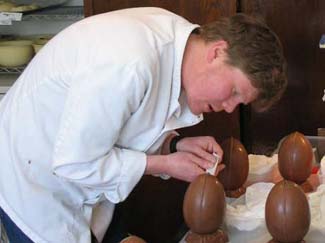 Easter wouldn’t be Easter without the many chocolate treats that have become synonymous with it.
Easter wouldn’t be Easter without the many chocolate treats that have become synonymous with it. Chocolate eggs top the list of course, and the many superb Irish artisan chocolatiers offer a wonderful choice, with many of them available online (including Jamie O’Neill’s, pictured here; click for more).
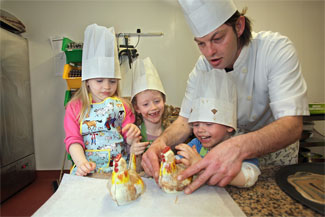 Many shops, hotels, cookery schools etc are offering special treats, including hands-on chocolate sessions. Children staying at The Brehon, Killarney this Easter for example, are in for an “eggs-tra special tasty treat”, as Kerry-based French chocolatier and eggs-pert Benoit Lorge (www.lorge.ie)will host a chocolate egg workshop at the hotel on Easter Saturday, where kids and parents will have the chance to make their very own truly scrumptious, chocolate Easter Eggs.
Many shops, hotels, cookery schools etc are offering special treats, including hands-on chocolate sessions. Children staying at The Brehon, Killarney this Easter for example, are in for an “eggs-tra special tasty treat”, as Kerry-based French chocolatier and eggs-pert Benoit Lorge (www.lorge.ie)will host a chocolate egg workshop at the hotel on Easter Saturday, where kids and parents will have the chance to make their very own truly scrumptious, chocolate Easter Eggs.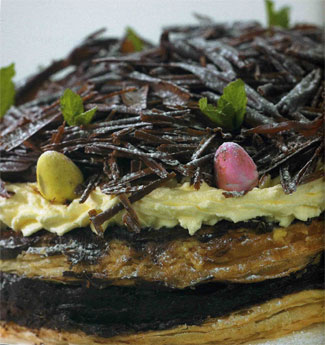 To make a simple but unusual choclate treat at home, try this Layered Easter Chocolate Cake. It’s from Jenny Bristow Cooks For The Seasons /Spring & Summer (Blackstaff Press, ISBN 0-85640-738-0)
To make a simple but unusual choclate treat at home, try this Layered Easter Chocolate Cake. It’s from Jenny Bristow Cooks For The Seasons /Spring & Summer (Blackstaff Press, ISBN 0-85640-738-0) “This simple cake is delicious,” says Jenny, “And will make a wonderful finale to any Easter lunch.”
Serves 8-10
Click for recipe
Making Ireland's Unique Foods Stand Out in the Marketplace
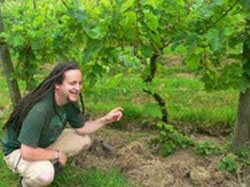
 The whole of Europe, it seems, is going out of its way to designate its traditional and geographically specific foods as PGI, PDO or TSG. Ireland however, lags chronically behind the rest of the EU in adding this valuable marker to foods and drinks. Oliver Moore investigates.
The whole of Europe, it seems, is going out of its way to designate its traditional and geographically specific foods as PGI, PDO or TSG. Ireland however, lags chronically behind the rest of the EU in adding this valuable marker to foods and drinks. Oliver Moore investigates.Labels labels everywhere, but what do they actually mean? Lovers of specialty European foods may be familiar with PGI or PDO labels, especially those that come from southern Europe. Spain, Portugal, Italy, Greece and France are the countries with about ¾ of these markers, over 1,000 of which now festoon products.
Some of Europe's most emblematic cheeses, like Dutch Gouda and Edam, British Blue and White Stilton, as well as Greek Feta, are adorned with such appendages.
 PGI (Protected Geographical Indication) is for products that are linked to a geographical area where at least one production step has taken place in that particular area.
PGI (Protected Geographical Indication) is for products that are linked to a geographical area where at least one production step has taken place in that particular area. PDO (Protected Designation of Origin) is used for products that are supposed to be are produced, processed and prepared in a given geographical area, using specific, traditional techniques. Traditional Specialities Guaranteed (TSG) scheme is for traditional composition and techniques of production.
What is called the DOOR database lists all the products that have achieved this grade. 6 UK foods have been listed since 2009. Traditionally Farmed Gloucestershire Old Spots Pork actually has one of the few TSGs in the EU. The rest: Traditional Cumberland Sausage, Cornish Sardines, Traditional Grimsby Smoked Fish, Melton Mowbray Pork Pie, have all recently achieved a PGI, apart from Yorkshire Forced Rhubarb which has a PDO.
What's more interesting again is the number of applications the UK are making: 11 products are either at the application or publication stage, including Armagh Bramley Apples and Lough Neagh Eels. Ireland has no products listed as either applied or published.
While PGI and PDO products have the Lion's share: 505 for PDO and 465 for PGI; TSG is not as widely used, with just 25 thus far.
As a nation that exports over 80% of all food it produces, Ireland strangely sits at the very bottom of this particular league table. Ireland has just four registered products: one PDO - Imokilly Regato Cheese and three PGIs - Clare Island Salmon, Timoleague Brown Pudding and Connemara Hill Lamb. The first three of these were achieved around the turn of the Century, whereas the Connemara Hill lamb designation was achieved in 2007.
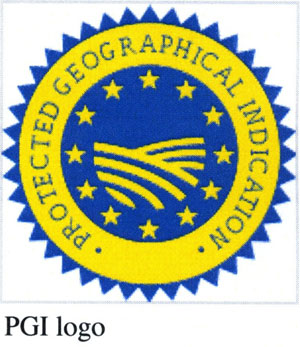 There 98 farmers in the Connemara Hill Lamb group, supplying 2-3,000 lambs per year. I spoke to Director Martin Kinneavy of Cornamona, about the lamb's PGI status. I asked him if it was difficult to achieve: “It takes 5 to 7 years to get it, there is a a lot of correspondence over and back with the Department and the EU. It might just be over one point at a time, but there is a lot of to and fro like that”.
There 98 farmers in the Connemara Hill Lamb group, supplying 2-3,000 lambs per year. I spoke to Director Martin Kinneavy of Cornamona, about the lamb's PGI status. I asked him if it was difficult to achieve: “It takes 5 to 7 years to get it, there is a a lot of correspondence over and back with the Department and the EU. It might just be over one point at a time, but there is a lot of to and fro like that”.He continues: “It also involved a lot of research on the history of the hill sheep here in Connemara. We had to prove they were indigenous to the area. We also had to research their diet, the grasses and heather. You basically have to prove that the black face horned ewe is indigenous to the region. We could get documentation from the 1700's that showed the sheep was here.”
I also asked about the use they put the status to: “The status gives the lamb a definite distinction. Its used on all our marketing material, in fact it they have to go together. We sell mostly in Ireland, Matt Joyce's butchers in Galway recently started taking it, restaurants in Dublin also take it, and hopefully we'll be starting to supply the UK soon”. He pointed out that there are some restaurants in the UK interested in the lamb, the main issue will be supply and distribution for individual restaurants abroad.
He did concede that the designation is more familiar to foreign than Irish markets, but hoped that this would eventually be a positive with exports in mind.
According to the application for registration submitted on Connemara Hill Lamb, or ‘Uain Sléibhe Chonamara’, the product is “bred, born and reared in the designated geographical region. The lambs are light in body- weight and bone and the carcass is lean with a light cover, rose red in colour and has a solid deep texture.”
The application also includes other information on geography, origin, method of production and what are called “links”, which is primarily about flora grazed. The geographical section describes location, terrain and grazing. Origin refers to the history of Blackface sheep in the region, including importation of some quantities from Scotland in the post-famine period, and the subsequent development of “a distinctive strain and has adapted to survive the rugged conditions of Connemara. The black face breed is particularly suited to the terrain of the area given its ability to forage better than other breeds.” These is also traceability information regarding ear tags.
The Method of Production section has information on the late lambing time (April), outdoor grazing, slaughter age, shop availability (August to November) and the proximity to Connemara of the abattoir used. The link section states “the taste, flavour and colour of Connemara Hill lamb are directly linked to the local flora on which the lambs are grazed. The diet is mountain grass heather and herbs, common to the areas of production”.
These are then listed with their Latin names.
The grazing style of the lighter, hardy animals on the specific terrain of Connemara is also described.
The market for these products in Europe is worth over E14 Billion: the exact figure is uncertain as it is currently being analysed again, having previously been analysed in 2007 when there were just 800 of these products.
Whatever the exact value, in many parts of Europe, consumers look out for these markers as a quality sign. Indeed the EU has recently set aside E37 million to help promote quality markers across 13 countries. According to the European Commission “the selected programmes cover wine, PDOs, PGIs and TSGs, organic food and farming, fruit and vegetables, horticulture, milk and milk products, olive oil and table olives, eggs, seed oil and meat.”
Perhaps unsuprisingly, Ireland is not one of the countries to get some of this E37 million promotional fund. It is noteworthy that all of the other sectors listed in the paragraph above, many of which are produced in Ireland, have lost out because Ireland is not included.
France is receiving almost €700,000 yearly to promote organic farming and food from this fund, along with €1.5 million yearly for promoting products from their outermost regions, and €180,000 yearly for promoting their PDO and PGI wines, the latter for specific promotional campaigns in Ireland and Britain.
At the time of the Connemara Hill Lamb's achievement of the PGI status, The then Minister for Agriculture and Food, Mary Coughlan T.D. issued warm congratulations. Minister Coughlan said "I am particularly delighted to announce the registration of this unique product, unique to the far-famed Connemara Region. In protecting the traditional origins of our regional foodstuffs, we strengthen our regional identities and reinforce the link that Irish people have long held with the land".
 The success of the Connemara Hill Lamb Group, the Minister hoped, “would encourage other groups to register their geographical specialities.” None however have.
The success of the Connemara Hill Lamb Group, the Minister hoped, “would encourage other groups to register their geographical specialities.” None however have. I asked the Department about this. They pointed out that our own quality markers are working well, and that “the EU PDO/PGI regime is based on a group, regional or geographic principles. In general in Ireland production of specialty products, for example farmhouse cheeses, has been undertaken by individual local enterprises or individual producers, rather than groups. Producers may have found it difficult to see evidence that a PDO/PGI approach would ensure premium pricing of their products.”
A failed attempt was made recently to get all Irish Beef categorised as PGI. The Department's reasoning on this points to the fact that “Regulation 510/2006 only permits the name of a country to be used “in exceptional cases” (Article 2. 1 (b) which makes it difficult to register a PGI application as for example ‘Ireland’ or ‘Irish’.
The Department discussed grounds for an exception at an early stage with Commission services and reputation emerged as a good point and one which was acknowledged even when reservations were expressed on the proposal that all beef produced in Ireland would be eligible for the designation ‘Irish Beef PGI’.
“Following consideration of the application the Commission services raised a number of points in regard to the fact that the application was not in their view sufficiently restrictive in relation to characteristics, for example specification as regards feeding and the average grazing period should be more specific e.g. grazed on limestone pastures for a minimum period, fed according to a certain regime at other times, parameters for colour of meat and fat, and ensuring that the PGI would be confined to product that did not meet such detailed specifications.”
Interestingly, Welsh and Scottish beef and lamb (four separate product categories in total) have achieved PGI status. Media reports indicated that the number of breeds, variations of production styles and inclusion of dairy herd meat in Irish beef were also implicated in Ireland's failure to achieve PGI status.
Acknowledging perhaps a 'must try harder' approach, the Department when queried did themselves point out that “Food Harvest 2020 recommended that Bord Bia and industry should make the optimal use of Ireland’s protected Geographical Indications, and identify further designations”.
They continue: “This requires increasing awareness and interest and making it easier to identify opportunities and success factors. The Department is working with Bord Bia on ways of doing this, has met with interested groups of producers and is taking on board the views of the Taste Council which sees potential in the area. An Information Note on the PDO/PGI regime setting out the process for registration in a clearer way has been drafted.”
So will we see more applications being made for PDO and PGI foods from Ireland over the next few years? Or do the powers that be in the agri-food lobby fear that designations for some demotes the image of all others? Whatever the case, with such an export-orientated agri-food sector, and an economy in tatters, a few more designations would seem to eminently sensible move.
--------------------
This article first appeared in The Irish Examiner, where Dr. Oliver Moore writes a weekly column on organic farming and food each Thursday. Find more of his work on olivermoore.blogspot.com or @oliver_moore. His research specialisations are in organics, alternative agri-food systems, and rural sociology. His is also a board member of the Cloughjordan Community farm.
'THE FUTURE IS FOOD' - The TASTE Council goes live in County Wicklow
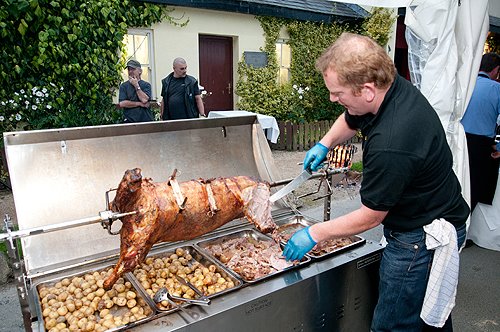
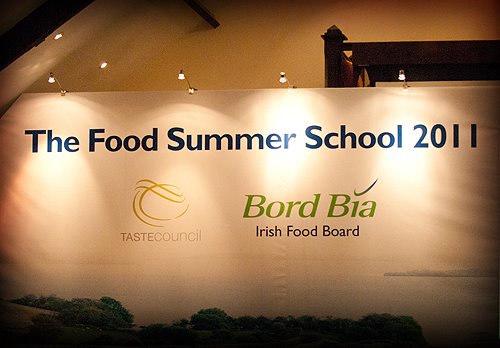 Handsome is as handsome does, and there is no doubting that the TASTE Council lived up to its name (and then some) at the first National Food Symposium - or Summer School - on ‘the current and future contribution of the artisan and speciality food sector to the Irish economy’.
Handsome is as handsome does, and there is no doubting that the TASTE Council lived up to its name (and then some) at the first National Food Symposium - or Summer School - on ‘the current and future contribution of the artisan and speciality food sector to the Irish economy’. Although it was formally established in 2003, many people have not heard of the TASTE Council before now because – although working very effectively in the background – they have been hiding their collective light under a bushel until this first major event in August, which was held at The BrookLodge Hotel, Co Wicklow, and hosted in association with Bord Bia.
The TASTE Council is a voluntary representative group of the smaller food business sector made up largely of local, artisan and speciality food producers; its (fortuitously apt) name is an acronym of ‘Traditional Artisan and Speciality Trade Expertise in Food’ and its mission is “To empower and enable the Irish speciality food sector at a strategic level to maximise its current and potential contribution to Ireland’s food and agri economy, society, culture and environment.” In practical terms this has already resulted in powerful submissions to, for example, the 2015 Agri Food Committee and, more recently, Agri Vision 2020.
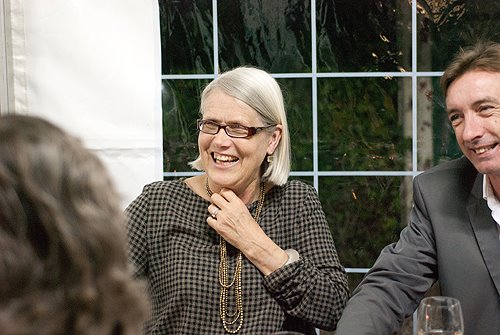 Currently under the chairmanship of Evan Doyle (long time champion of wild, organic and artisan foods, and co-owner of BrookLodge Hotel), esteemed members who give up their time voluntarily to work on the Council include Kevin Sheridan of Sheridans Cheesemongers (Vice Chairman), and a representative collection of the country’s top artisans, chefs, food writers and restaurateurs, such as tireless campaigners Peter Ward of Country Choice in Nenagh and Darina Allen of Ballymaloe Cookery School; Euro-Toques chef Ross Lewis of Chapter One and restaurateur & food writer Domini Kemp; Burren Smokehouse producer Birgitta Hedin-Curtin; GIY founder Michael Kelly, and many more very successful, busy people - who are all committed to furthering the interests of quality food producers in Ireland and, by extension, Irish rural life and the economy.
Currently under the chairmanship of Evan Doyle (long time champion of wild, organic and artisan foods, and co-owner of BrookLodge Hotel), esteemed members who give up their time voluntarily to work on the Council include Kevin Sheridan of Sheridans Cheesemongers (Vice Chairman), and a representative collection of the country’s top artisans, chefs, food writers and restaurateurs, such as tireless campaigners Peter Ward of Country Choice in Nenagh and Darina Allen of Ballymaloe Cookery School; Euro-Toques chef Ross Lewis of Chapter One and restaurateur & food writer Domini Kemp; Burren Smokehouse producer Birgitta Hedin-Curtin; GIY founder Michael Kelly, and many more very successful, busy people - who are all committed to furthering the interests of quality food producers in Ireland and, by extension, Irish rural life and the economy. The sub-title of the Taste Council’s Agri Vision 2020 submission - “1,000 local, artisan, speciality food firms + €1.65 billion in their local output at consumer prices = €4.1 billion in circulation in the local economy +7,500 more jobs by 2020” - sums up the importance of the document very simply, and this was the message underpinning the subjects chosen for last month’s National Food Symposium.
The three sessions were very different - ranging from Realising the Potential of the Traditional Irish Farm, to The Artisan and the Education System, and The Artisan and Brand Ireland – but a common theme was the growing importance of food in the economy; one speaker noted that agriculture currently produces a euro for every 72 cent in the wider economy, and the ‘multiplier effect’ of buying local food and re-spending money within the community was frequently mentioned.
The first session, chaired by Kevin Sheridan (vice chairman of the Taste Council), was themed Authentic Food Culture: Realising the Potanetial of the Traditional Family Farm. Dr Aine Macken Walsh of Teagasc delivered a superb presentation on the so-called ‘Middle Agriculture’ Model, which promises a bright future for the many small-to-medium sized traditional farms that are currently categorised as economically unviable.
Squeezed between the small speciality food producer on the one hand and much larger intensive commodity enterprises on the other, they have been largely overlooked, yet they are the heart of rural Ireland and not only produce high quality (but unbranded) food but also maintain the character of our beautiful landscape, diverse environment and farm family life.
Encouragingly, The Middle Agriculture model offers an alternative route to viability, in which the produce of these traditional farms is properly valued ‘by capitalising on their environmental, social and cultural distinctiveness’.
 A panel of six experts and speakers from an invited audience of about 150 discussed issues involved. Following a question from organic expert and journalist Dr Ollie Moore, perhaps the most interesting comment came from Kerry Lamb Group’s Denis Carroll, who said the secret of his group’s new-found commercial success is that they now call the shots on setting the price of their own product because they have succeeded in reversing the established system and get quotes for their animals from several processing factories, rather than being at the mercy of one price setter. Similarly Mark Wintherbotham, of the Organic Trust, referred to his organisation as being in a healthy position of being ‘price setters not price takers’.
A panel of six experts and speakers from an invited audience of about 150 discussed issues involved. Following a question from organic expert and journalist Dr Ollie Moore, perhaps the most interesting comment came from Kerry Lamb Group’s Denis Carroll, who said the secret of his group’s new-found commercial success is that they now call the shots on setting the price of their own product because they have succeeded in reversing the established system and get quotes for their animals from several processing factories, rather than being at the mercy of one price setter. Similarly Mark Wintherbotham, of the Organic Trust, referred to his organisation as being in a healthy position of being ‘price setters not price takers’. Talk of this ‘Middle Agriculture’ reminded me of comments made by Myrtle Allen when we were visiting Ballymaloe House some forty years ago, in which this very down to earth advocate of the flavour and freshness that is only to be found in local foods made her support of traditional Irish food production and mixed family farms very clear.
Darina Allen chaired the second session, on The Artisan and the Education System, in her usual lively and informative way. It was to have included a presentation by the iconic American chef, restaurateur, teacher and vice-president of Slow Food International, Alice Waters - who is especially famous for her promotion of school gardens – but, although this was not to be, the Secretary General of Euro-Toques Ireland, Ruth Hegarty, stepped into the breach very ably and delivered an excellent presentation with an emphasis on the Euro-Toques policy of teaching an enjoyment of food and sense of balance rather than ‘nutrition’.
Agreeing about the importance and opportunities offered by food and farming, and the need to educate future consumers on sustainability and to purchase wisely, panel and audience members talked about projects ranging from the successful ‘Food Dudes’ initiative in schools, to a currrent Taste Council project overseen by Domini Kemp and planned for transition year students in 2012.
GIY founder Michael Kelly referred to growing our own food as the ‘silver bullet’ that could solve many of our food and health problems, and Hans Wieland, veteran organic farmer and lecturer at The Organic Centre in Co Leitrim, spoke of the need for young people to have a lively, relevant interest in food in their everyday lives ‘so that they would discuss it in the same way as they talk about footballers and their teams today’.
There was also some discussion on third level food education: the worrying shortage of chefs, inadequate practical courses, and problems within current professional courses (that are resulting in graduates with plenty of theory but poor practical skills) all came under discussion, but it was essentially the transition year projects that seemed to offer most hope of immediate progress.
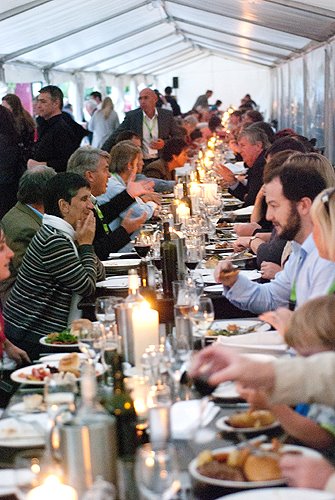 The main afternoon session, The Artisan and Brand Ireland, was chaired by food writer and long time champion of small producers, John McKenna, with a presentation by Una Fitzgibbon of Bord Bia, who talked about the Brand Ireland initiative, Food Harvest 2020 and ‘provenance, premiumisation and employment’.
The main afternoon session, The Artisan and Brand Ireland, was chaired by food writer and long time champion of small producers, John McKenna, with a presentation by Una Fitzgibbon of Bord Bia, who talked about the Brand Ireland initiative, Food Harvest 2020 and ‘provenance, premiumisation and employment’. She emphasised ‘the importance of a story and sense of place’, and talked about the 2010 Harvard Business School report, of which key elements are incorporated into Food Harvest 2020/Pathways for Growth - notably the great opportunities that exist for food production in Ireland and the need for an Irish food brand, also the need to agree on a ‘Come See Us’ policy which would be based on developing a world class agricultural industry so we could make the claim ‘we are natural and we can prove it’.
This session, with its emphasis on ‘green branding’, generated robust audience participation, with questions from the audience such as ‘Do we tell the world that our cattle are given GM feed?’ and ‘What about the potentially damaging effect of incinerators to the farming environment?’ addressed to a panel which included Margaret Jeffares of Good Food Ireland, John Mulcahy of Failte Ireland - and branding and marketing consultant Noel Toolan, who was the main respondent. Unlike the previous sessions, there was a sense of disquiet among the audience, many of whom clearly felt that some of the serious issues raised had not been adequately addressed.
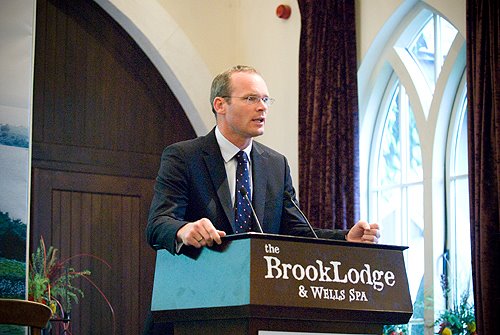 Following this, the chairpersons of all the previous sessions became a new panel under the chairmanship of Bord Bia CEO, Aidan Cotter, to discuss Where the Artisan is Now, in summary of the event. And – finally – Mr Simon Coveney TD, Minister for Agriculture, Food and the Marine, arrived late in true ministerial style, but then won us all over by presenting a very positive and encouraging closing address that put everyone in a positive mood again in time for dinner.
Following this, the chairpersons of all the previous sessions became a new panel under the chairmanship of Bord Bia CEO, Aidan Cotter, to discuss Where the Artisan is Now, in summary of the event. And – finally – Mr Simon Coveney TD, Minister for Agriculture, Food and the Marine, arrived late in true ministerial style, but then won us all over by presenting a very positive and encouraging closing address that put everyone in a positive mood again in time for dinner.And what a dinner. The best was definitely still to come, with ‘The Wicklow Street Stall Producers Dinner’ presenting a magnificent collection of very local products cooked by the BrookLodge team and served by the producers themselves to guests who sat at tables in a long open-sided marquee warmed by big braziers full of blazing logs (and a few less romantic but very efficient blast heaters)...
Evan Doyle and his trusty band of helpers had worked tirelessly to set everything up for the event and make sure it all ran smoothly – and impressive it certainly was, with starters ranging from smoked shellfish from Stephen Kavanagh of Fish Out of Water in Arklow, to the hotel’s own delicious wild Macreddin Wood mushrooms, brioche and pasta, to main courses including Wicklow lamb from nearby Gold River Farm (who had served spit roasted free range pork in big baps at lunch time – tricky to eat, but so very, very good), rabbit and wood pigeon from Wild Irish Game, and wild salmon (the first in the BrookLodge kitchens since 2003); to desserts including a ‘first pick’ apple and wild berry crumble from the orchard and hedgerows, and Wicklow cheeses.
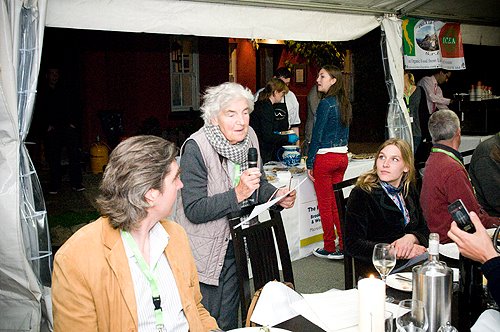 Speciality drinks included the house beer and David Llewellyn wines – which are from from north Dublin, but he also grows the lustrous vines in BrookLodge’s Orchard Café. All this plus many, many more examples of Wicklow’s finest food and drink, and a rousing speech by Myrtle Allen, the woman who started it all single-handed in the 1960s, made it truly a night to remember...
Speciality drinks included the house beer and David Llewellyn wines – which are from from north Dublin, but he also grows the lustrous vines in BrookLodge’s Orchard Café. All this plus many, many more examples of Wicklow’s finest food and drink, and a rousing speech by Myrtle Allen, the woman who started it all single-handed in the 1960s, made it truly a night to remember...[An official follow-up report on the TASTE Council Summer School will be issued in due course.]
Westport Festival of Food (& FUN!)

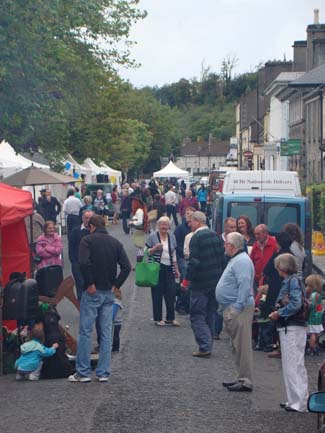 A family invitation to attend the inaugural Westport Food Festival (2-4 September 2011) got us itching to head west, so we bundled our two little boys into the car and hit the road, heading for the Hotel Westport. Centrally located and within pleasant walking distance of everything in the town, this hospitable and well run hotel is a favourite destination as it makes a relaxing base for family breaks, with excellent leisure facilities.
A family invitation to attend the inaugural Westport Food Festival (2-4 September 2011) got us itching to head west, so we bundled our two little boys into the car and hit the road, heading for the Hotel Westport. Centrally located and within pleasant walking distance of everything in the town, this hospitable and well run hotel is a favourite destination as it makes a relaxing base for family breaks, with excellent leisure facilities. Like its famous predecessor, the phenomenally successful Galway Oyster Festival, the Westport Food Festival aims to extend the holiday season beyond the end of the school holidays by tapping into the growing interest in food tourism - and will hopefully become an annual event.
The festival was launched with a 5 course “Come Dine With Me Dinner” in the Wyatt Hotel where, with an admirable degree of co-operation, ten of the town’s chefs were divided into three teams with responsibility for different courses. A video link to the kitchen allowed diners to watch the chefs do their thing before voting for their favourite team. The dining element of the evening then drew to a close with the chefs joining guests in the dining room for a Q&A session before guests enjoyed some jazz.
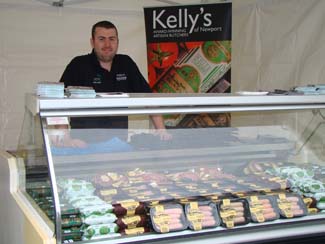 On Saturday morning, a stretch of the recently launched Gourmet Greenway food trail was the venue for one of the most interesting events of the weekend. It involved a cycle tour along the Mulranny to Westport stretch of the Great Western Greenway with scheduled visits to local food producers including Sean Kelly in Newport, where there was a tasting of his famous black puddings and sausages - and, of course, he explained (some of) the secrets that make his fare so special! Then on down to Padraig Gannon’s Croagh Patrick Seafoods, to see where he grows oysters, mussels, clams and the rare native Clew Bay mussel, and tasting his produce. Finally at the finish, in Westport Town, there was an opportunity to meet Andrew Pelham-Byrne of the local Carrowholly Cheese (which, incidentally, features on the cover of our book, Ireland for Food Lovers).
On Saturday morning, a stretch of the recently launched Gourmet Greenway food trail was the venue for one of the most interesting events of the weekend. It involved a cycle tour along the Mulranny to Westport stretch of the Great Western Greenway with scheduled visits to local food producers including Sean Kelly in Newport, where there was a tasting of his famous black puddings and sausages - and, of course, he explained (some of) the secrets that make his fare so special! Then on down to Padraig Gannon’s Croagh Patrick Seafoods, to see where he grows oysters, mussels, clams and the rare native Clew Bay mussel, and tasting his produce. Finally at the finish, in Westport Town, there was an opportunity to meet Andrew Pelham-Byrne of the local Carrowholly Cheese (which, incidentally, features on the cover of our book, Ireland for Food Lovers). As a planned town, Westport is a wonderful place for an event like this as its orderly layout lends itself to pedestrianised areas for stalls and demonstrations without unduly affecting normal traffic.
As well as events held in individual hotels, there were three key areas in the town for Food Festival related events on the Saturday and Sunday, each with its own purpose and identity: The Mall; behind the Clock Tower on High Street; and down on the Quays at the edge of town.
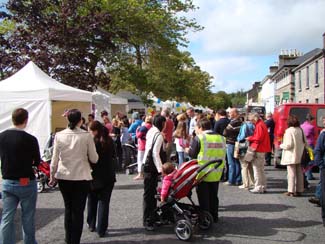 We were there as a young family so we were particularly interested in what was there for the boys. The main activities for kids were on the Sunday and included a Treasure Hunt around Westport and loads of activities down on the Quays – where there was a closing day bbq - such as puppet shows and balloon modelling. On Saturday there was face painting and the opportunity to hear The Grace O'Malley/Granuaile Story (Sponsored by Westport House) as told by real, live pirates!
We were there as a young family so we were particularly interested in what was there for the boys. The main activities for kids were on the Sunday and included a Treasure Hunt around Westport and loads of activities down on the Quays – where there was a closing day bbq - such as puppet shows and balloon modelling. On Saturday there was face painting and the opportunity to hear The Grace O'Malley/Granuaile Story (Sponsored by Westport House) as told by real, live pirates!On Saturday morning we began our day early down on the Mall, which gave us a chance to see the stands as they were being set up for the day and before the crowds arrived. There was a good selection of local artisan producers, giving visitors a feeling for the kind of foods that are special to the locality.
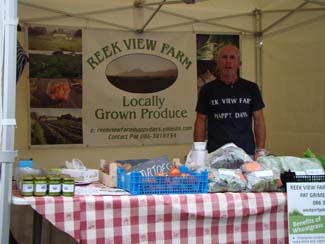 These ranged from really well known and widely-acclaimed products such as Kelly’s of Newport (puddings & sausages), Carrowholly Cheese and Taste of Days Gone By (handmade jams, marmalade, relishes, sauces, and salad dressings), to a relative new kid on the block, Pat Grimes of Reek View Farm who grows top class organic vegetables and salad leaves on his plot of land nearby.
These ranged from really well known and widely-acclaimed products such as Kelly’s of Newport (puddings & sausages), Carrowholly Cheese and Taste of Days Gone By (handmade jams, marmalade, relishes, sauces, and salad dressings), to a relative new kid on the block, Pat Grimes of Reek View Farm who grows top class organic vegetables and salad leaves on his plot of land nearby. Now only in his second year in business, Pat Grimes already supplies many of the top restaurants in the area. I was particularly attracted to this stand as I grow my own vegetables and am drawn to the glow of healthy vegetables (you really can visibly tell the difference).
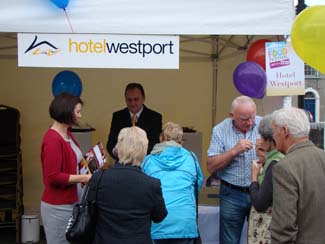 By coincidence, the salad we had with dinner the previous night in Hotel Westport was so good that it had been a talking point and, when I had a chat with Pat, we discovered that he was the supplier! When I later met Declan Heneghan, GM of Hotel Westport, at their stand I mentioned Pat’s product and he said that, although it cost a little more, they truly recognised the quality that he had to offer – and, not only that, but also the contribution that supporting his young enterprise could make to the local community. If only everybody who made the purchasing decisions in hotels and restaurants around the country subscribed to this ethos!
By coincidence, the salad we had with dinner the previous night in Hotel Westport was so good that it had been a talking point and, when I had a chat with Pat, we discovered that he was the supplier! When I later met Declan Heneghan, GM of Hotel Westport, at their stand I mentioned Pat’s product and he said that, although it cost a little more, they truly recognised the quality that he had to offer – and, not only that, but also the contribution that supporting his young enterprise could make to the local community. If only everybody who made the purchasing decisions in hotels and restaurants around the country subscribed to this ethos!Other hotels and restaurants represented down on the Mall included the Mulranny Park Hotel, Westport Plaza Hotel, Sol Rio Restaurant and Mango, and all had dishes available for punters to purchase for a very reasonable food festival shilling each (€2). Of course I had to try them all, a tough job but I managed it in the end! Memorable dishes included Kelly’s Black Pudding, mash & onion gravy (Westport Plaza Hotel), Seafood Salad & Crab Claws (Mango) and the fruitiest trifle in memory, the Very Berry Trifle (Hotel Westport).
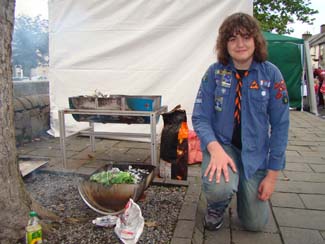 One stand that jumped out at us was the Boy Scout Cook Out. I believe it’s essential to get kids cooking as soon as we can and to make it fun, so healthy eating becomes a habit from an early age. So we were fascinated to see the local scouts with their fired up BBQs cooking sea trout wrapped in cabbage leaves directly on burning charcoal, a new approach to me, but so easy to do and the lads were clearly loving it.
One stand that jumped out at us was the Boy Scout Cook Out. I believe it’s essential to get kids cooking as soon as we can and to make it fun, so healthy eating becomes a habit from an early age. So we were fascinated to see the local scouts with their fired up BBQs cooking sea trout wrapped in cabbage leaves directly on burning charcoal, a new approach to me, but so easy to do and the lads were clearly loving it. Up behind the Clock Tower on High Street, Fringe Foodies was an area where local, artisan food producers came together not only to showcase their produce and foods, but also to have a series of food discussions hosted by a local producer with a set theme.
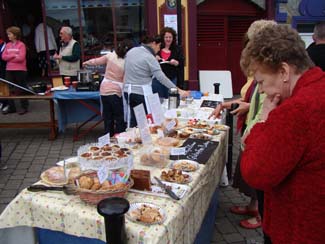 It was a fantastic area as it really allowed consumers to connect with local producers - initially through a talk by each producer (when they outlined what their product was, how their business worked etc) and then having the opportunity to try the product and meet them face to face. This was done on a rolling basis, meaning that if you only had a short time you could hear the full story of a particular producer and try their product.
It was a fantastic area as it really allowed consumers to connect with local producers - initially through a talk by each producer (when they outlined what their product was, how their business worked etc) and then having the opportunity to try the product and meet them face to face. This was done on a rolling basis, meaning that if you only had a short time you could hear the full story of a particular producer and try their product. One producer that stood out for me was local fifth generation pork farmers, the O’Malley family, with their brand “Jack & Eddie’s – finest pork & bacon”.
 They talked about their products, their plans for the future and had some delicious slow cooked pork belly for the audience to try, it was melt in the mouth stuff. Their product is available in Westport Country Market every Thursday and they are now focusing on getting sausages, traditional cure rashers and black & white puddings to market with a view to selling in more locations.
They talked about their products, their plans for the future and had some delicious slow cooked pork belly for the audience to try, it was melt in the mouth stuff. Their product is available in Westport Country Market every Thursday and they are now focusing on getting sausages, traditional cure rashers and black & white puddings to market with a view to selling in more locations. We had to leave the Food Fringe area to head down to the hotly contested Westport Food Festival Chowder Competition.
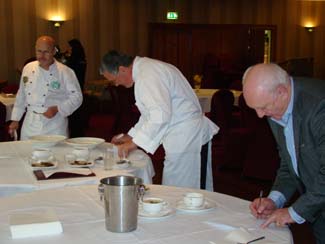 This was contested by seven local establishments and was decided through a blind tasting by three highly experienced and well qualified assessors: Michael Cadden, who is well remembered by the Guide and locals in the area as a previous owner of The Asgard pub & restaurant on Westport Quay - members of his family now own and run Bar One Gastro Pub in Castlebar and Saba Thai Restaurant in Dublin city centre; Martin Treacy, of the Panel of Chefs of Ireland; and Michael Egan, current manager of the Irish culinary team.
This was contested by seven local establishments and was decided through a blind tasting by three highly experienced and well qualified assessors: Michael Cadden, who is well remembered by the Guide and locals in the area as a previous owner of The Asgard pub & restaurant on Westport Quay - members of his family now own and run Bar One Gastro Pub in Castlebar and Saba Thai Restaurant in Dublin city centre; Martin Treacy, of the Panel of Chefs of Ireland; and Michael Egan, current manager of the Irish culinary team. When tasting the chowders Treacy informed us that they were doing so looking at texture, quality of seafood, taste and flavour. When they had finished the audience were invited up to taste the chowders, they were all delicious and full of flavour, with a wide variety of seafood used, and were all very different to each other. This led to a debate among a few people at the tables as to what would make a winning chowder for the judges – all the dishes seemed to match what they were looking for, but what would stand out the most?
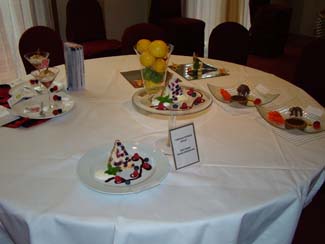 Some chowders have cream, some don’t, some are made from a fish stock and bisque base, some have herbs, some even contain tomato, is there such thing as a classic chowder? Clam chowder, perhaps, but nobody seemed to know and it looked like a good chowder could come in many guises. Well, the judges obviously knew what they were looking for and they announced the winners down in The Mall later on that evening. The winner was Myles O’Brien of The Tavern Bar & Restaurant, Murrisk.
Some chowders have cream, some don’t, some are made from a fish stock and bisque base, some have herbs, some even contain tomato, is there such thing as a classic chowder? Clam chowder, perhaps, but nobody seemed to know and it looked like a good chowder could come in many guises. Well, the judges obviously knew what they were looking for and they announced the winners down in The Mall later on that evening. The winner was Myles O’Brien of The Tavern Bar & Restaurant, Murrisk.Immediately after the chowder competition there was a dessert competition which was as hotly contested as the chowder competition and was won by Knockranny House Hotel.
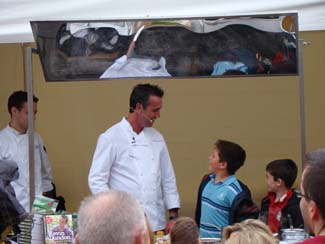 Meanwhile, back down on the Mall it was time for celebrated chef Kevin Dundon (Dunbrody Country House & Cookery School) to take to the stove and do a demonstration. As always the crowd immediately took to his friendly and relaxed style and he welcomed a couple of kids up from the audience to help him out. This led to the biggest laugh of the day when Dundon (who is supported by SuperValu) showed the guys dried breadcrumbs, and one of them piped up to say you could get them in Tescos! A bit of banter followed between Kevin, the kids and their mother, it gave everyone a good giggle but on a serious level it showed that cooking really could be fun, they were having the craic while cooking so why shouldn’t everyone else?
Meanwhile, back down on the Mall it was time for celebrated chef Kevin Dundon (Dunbrody Country House & Cookery School) to take to the stove and do a demonstration. As always the crowd immediately took to his friendly and relaxed style and he welcomed a couple of kids up from the audience to help him out. This led to the biggest laugh of the day when Dundon (who is supported by SuperValu) showed the guys dried breadcrumbs, and one of them piped up to say you could get them in Tescos! A bit of banter followed between Kevin, the kids and their mother, it gave everyone a good giggle but on a serious level it showed that cooking really could be fun, they were having the craic while cooking so why shouldn’t everyone else?Shortly after Kevin’s demonstration, Dirk Schonkeren took to the stage to unveil the mysteries of making chocolate – no better man, as he is Ireland’s only World Chocolate Ambassador (an honour bestowed by the Swiss chocolate manufacturer Barry Callebaut, whose 70-strong 'chocolate ambassador club' is dedicated to passing on their skills to others). This Belgian chef and chocolatier was one of the pioneers in Irish chocolate making when they first set up their Helena Chocolates (www.helenachocolates.ie) business in 1980s Castlebar and, as with other masters of their profession, he made a difficult process look relatively easy - but with all the talk of optimum temperatures, my guess is it is anything but that!
At this point the boys had seen enough food related events for the day so we took them off to the smashing play ground up behind the cine-plex and leisure centre (loads to do for kids year round) to let them burn off some energy. Unfortunately this meant we missed some events that we adults would have liked to attend such as the Covey Cocktail Competition in Clew Bay Hotel or the Wine Tasting with Paddy Keogh of Wines Direct in Hotel Westport. But this just underlined that there was something for everyone at this event, and you could take it or leave different elements as time and inclination allowed.
 Sunday was to be fun day for kids, but there was also plenty on for the adults too including Mushroom Foraging, and the “Croagh Patrick Seafood Summit” – climb the peak and enjoy mussels & brown bread at the summit, prepared by Myles O’Brien of the Tavern Bar & Restaurant, Murrisk. There was also a guided family fishing trip to Bertra Strand (all tackle etc supplied on a complimentary basis) and - the one the kids were looking forward to most - a cool Kiddies Treasure Hunt that took adventurers all over Westport and Westport House looking for clues and then in the afternoon all the action moved down to the Quays for BBQ, fish preparation & smoking demonstrations, puppet shows, face painting, balloons and more!
Sunday was to be fun day for kids, but there was also plenty on for the adults too including Mushroom Foraging, and the “Croagh Patrick Seafood Summit” – climb the peak and enjoy mussels & brown bread at the summit, prepared by Myles O’Brien of the Tavern Bar & Restaurant, Murrisk. There was also a guided family fishing trip to Bertra Strand (all tackle etc supplied on a complimentary basis) and - the one the kids were looking forward to most - a cool Kiddies Treasure Hunt that took adventurers all over Westport and Westport House looking for clues and then in the afternoon all the action moved down to the Quays for BBQ, fish preparation & smoking demonstrations, puppet shows, face painting, balloons and more!For an inaugural event this really was a great experience, it was clear that a huge amount of planning & preparation had gone into the weekend and that it was paying dividends, but what struck us most was how the whole community had pulled together to promote Westport. Far from the usual competition for business between hotels and restaurants, it was about getting visitors in and showing them the very best food that the area had to offer. We left discussing the restaurants and bars that we hadn’t got to and they are already penciled in for our next visit, so this co-operative approach clearly works. As for the local produce: simply wonderful!
Bob Nixon
Euro-Toques Young Chef Competition Comes of Age!
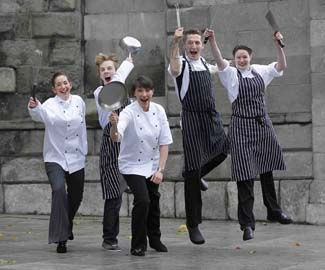
 Household names including Darina Allen, Neven Maguire (MacNean House & Restaurant), Ross Lewis (Chapter One), Derry Clarke (l'Ecrivain) and Guillaume LeBrun (Restaurant Patrick Guilbaud) feature among the 180 or so member chefs of Euro-Toques Ireland.
Household names including Darina Allen, Neven Maguire (MacNean House & Restaurant), Ross Lewis (Chapter One), Derry Clarke (l'Ecrivain) and Guillaume LeBrun (Restaurant Patrick Guilbaud) feature among the 180 or so member chefs of Euro-Toques Ireland.Yet it is their annual Young Chef competition that has done most to give the prestigious international chefs and cooks association a high profile in this country - where the group is as well known for promoting talent among young chefs, as for their dedication to safeguarding our food heritage and supporting the best local produce (‘The building blocks of good cooking’ as Paul Bocuse put it).
And this year they celebrate the 21st Euro-Toques Young Chef of the Year, firstly with the photocall ‘21 chefs for 21 years’ - featuring former and current judges of the competition and past winners - and then the announcement of this year’s competition, which opens for entries on September 19th.
The Euro-Toques Young Chef of the Year is open to professional chefs and cooks under 25 years of age, and is the only professional culinary competition in the country based around local and artisan food ingredients. Through mentoring and training based prizes, the competition aims to contribute to the professional development of promising young industry professionals.
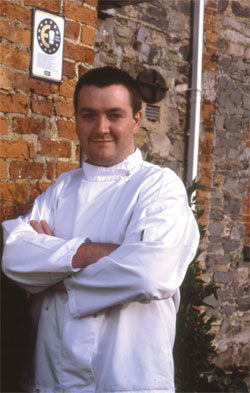 Gearoid Lynch, Chef/Proprietor of the Olde Post Inn in Co. Cavan, is current head of Euro-Toques Ireland and a past 'Young Chef' winner.
Gearoid Lynch, Chef/Proprietor of the Olde Post Inn in Co. Cavan, is current head of Euro-Toques Ireland and a past 'Young Chef' winner.“Being involved in the competition was fantastic for my career”, says Lynch, “not only from the point of view of getting my name out there... It gave me the chance to interact with, and cook for, some of the top people in the industry and to learn from them. The competition and prizes put a big emphasis on education and development, so reaching the final in the competition means a chance to really progress and hone your skills. It is an amazing opportunity for any ambitious and hard-working young chef”.
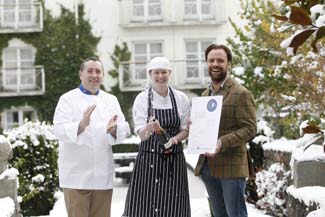 Initial entries to the competition are in the form of a recipe task on a specific theme. Entries must be accompanied by a nomination from a senior industry mentor. From these written entries, candidates are shortlisted for interviews hosted by Failte Ireland. Finally the top 5 candidates are selected to go through to the final.
Initial entries to the competition are in the form of a recipe task on a specific theme. Entries must be accompanied by a nomination from a senior industry mentor. From these written entries, candidates are shortlisted for interviews hosted by Failte Ireland. Finally the top 5 candidates are selected to go through to the final. Over approximately 4 weeks they will be assisted by their industry mentor in preparing for the Culinary Skills Test final at the end of November, as well as the Gala Presentation lunch – a five course menu prepared by the 5 finalists themselves for industry and media guests, where the overall winner will be announced. The theme of locally sourced and regionally identifiable food will be emphasised throughout.
The specific theme for the Entry Recipe will be announced when the competition opens on September 19th, but the fact that BIM (Irish Sea Fisheries Board) are one of the partners in this year’s competition may give some hint of the general theme.
The role of the industry mentor is vital to this competition and industry chefs are asked to put forward promising young chefs in their kitchens, or who have worked for them in the past. These industry mentors must commit to assisting their candidate in training for the competition, should they reach the final.
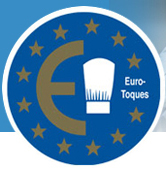 “The staffing situation in the industry is now at crisis point”, says Euro-Toques Secretary-General Ruth Hegarty, “Even the top kitchens in the country can’t get chefs. We hope that this competition can show potential chefs and cooks the level that can be reached if you are motivated and passionate about cooking. Yes, it is a tough competition, but it is also a tough industry. People need to be realistic. You will work hard, but if you love it, it is immensely satisfying. Traditionally, chefs trained through apprenticeship and learned from industry masters. It is vital that this role continues in tandem with formal education. That is why we encourage and emphasise mentoring in the competition”.
“The staffing situation in the industry is now at crisis point”, says Euro-Toques Secretary-General Ruth Hegarty, “Even the top kitchens in the country can’t get chefs. We hope that this competition can show potential chefs and cooks the level that can be reached if you are motivated and passionate about cooking. Yes, it is a tough competition, but it is also a tough industry. People need to be realistic. You will work hard, but if you love it, it is immensely satisfying. Traditionally, chefs trained through apprenticeship and learned from industry masters. It is vital that this role continues in tandem with formal education. That is why we encourage and emphasise mentoring in the competition”.The five finalists in the 2011 competition will win an educational Culinary Tour, sponsored by Failte Ireland, taking in some of Ireland’s top artisan food producers and the kitchens of top chefs. The overall winner will go on a prestigious overseas ‘stage’ in a top restaurant. There are also cash prizes for all five finalist and a prize for the mentor of the winning chef.
Entry forms and full details will be available on the Euro-toques website www.euro-toques.ie from Monday 19th of September. If you are interested in entering or nominating a candidate, you can email your details now to info@euro-toques.ie to have an entry form sent to you.
GEORGINA CAMPBELL'S IRELAND HOSPITALITY AWARDS 2012
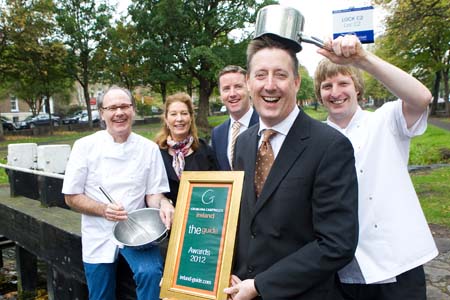
True Grit - Irish Hospitality Leaders Show The Way Forward
At the 2012 Georgina Campbell Awards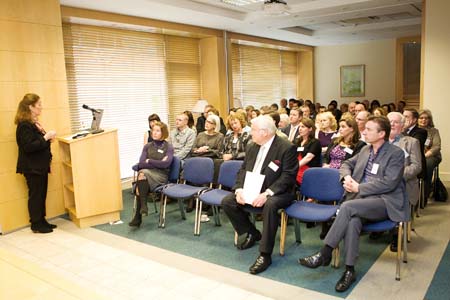 Representatives of the very best in Irish hospitality gathered at Bord Bia in Dublin today Tuesday 11th October, for the announcement of the 2012 Georgina Campbell Awards, associated with the respected Georgina Campbell’s Ireland independent hospitality guides, and Ireland’s most popular independent hospitality and travel website www.ireland-guide.com.
Representatives of the very best in Irish hospitality gathered at Bord Bia in Dublin today Tuesday 11th October, for the announcement of the 2012 Georgina Campbell Awards, associated with the respected Georgina Campbell’s Ireland independent hospitality guides, and Ireland’s most popular independent hospitality and travel website www.ireland-guide.com. Ireland’s longest-running hospitality accolades, the Georgina Campbell Awards are completely independent. Unlike most other award schemes, they are not commercially driven and in no way affiliated with trade associations or marketing groups; there is no charge to establishments for recommendation or any element of the awards process. It is this independence which has earned them special respect in the industry, and public trust.
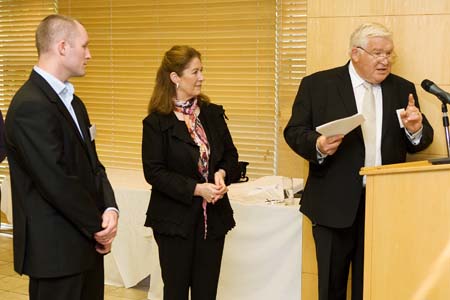 In yet another challenging year for the hospitality sector, accolades from a respected independent guide are not only a source of encouragement - and very good for winners’ business - but also set a benchmark for others in the industry who are determined to achieve a similar level of excellence.
In yet another challenging year for the hospitality sector, accolades from a respected independent guide are not only a source of encouragement - and very good for winners’ business - but also set a benchmark for others in the industry who are determined to achieve a similar level of excellence. Although most closely associated with good food, the Guide’s accommodation recommendations are equally respected, and it should be noted that the Guide does not support unregistered accommodation; only Approved (Failte Ireland) accommodation is considered for recommendation.
Every year Georgina Campbell and her team of experienced assessors comb the country’s hotels, country houses, guesthouses, restaurants, pubs and cafés, seeking out the best consumer experiences for readers of The Guide (‘the glovebox bible’) and, increasingly, for followers of the very successful website, www.ireland-guide.com.
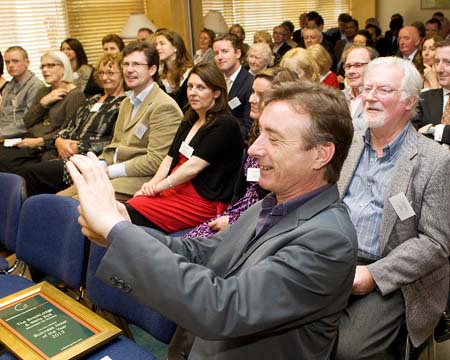 A new printed Guide, to accompany the website, is planned; meanwhile, Ms Campbell emphasised that “We have maintained our rigorous programme of anonymous assessment visits throughout the season as usual and, with ‘the harvest in’, the reports are gradually going through directly to the website, Ireland-guide.com. As always, we’ve kept a sharp eye out for those exceptional establishments which are right on top of their game and going the extra mile for customers – and we have found a surprising number of new establishments worthy of recommendation this year.”
A new printed Guide, to accompany the website, is planned; meanwhile, Ms Campbell emphasised that “We have maintained our rigorous programme of anonymous assessment visits throughout the season as usual and, with ‘the harvest in’, the reports are gradually going through directly to the website, Ireland-guide.com. As always, we’ve kept a sharp eye out for those exceptional establishments which are right on top of their game and going the extra mile for customers – and we have found a surprising number of new establishments worthy of recommendation this year.”  Commenting on the Awards, Georgina Campbell said, “The economic crisis is really biting now and the twin pressures, of non-functioning banks and unrelenting consumer demand for unrealistically low prices, are driving many viable long-established businesses to the wall. But at least the hospitality industry – and its vital underpinning foundation, agriculture - is now being given the credit that is long overdue, and it’s predicted that ‘tourism and food’ will be key to renewed growth. And the crisis has acted as a catalyst, separating the many who have opted for the ‘race to the bottom’ from the (relatively) few who have chosen the hard road of sticking to their principles of quality, and making superhuman efforts to give their customers real value at a fair price. They – and the farmers, fishermen, growers and artisan producers who supply their kitchens – represent the best of Irish hospitality, and its future, and they are the giants of the hospitality industry who are represented here today. These awards are not just a random selection of outstanding establishments; as a group they are of the highest calibre, and offer a snapshot of the very best of hospitality across the country, demonstrating its strengths and showing how good food and hospitality can lead the way forward to a better future for all.”
Commenting on the Awards, Georgina Campbell said, “The economic crisis is really biting now and the twin pressures, of non-functioning banks and unrelenting consumer demand for unrealistically low prices, are driving many viable long-established businesses to the wall. But at least the hospitality industry – and its vital underpinning foundation, agriculture - is now being given the credit that is long overdue, and it’s predicted that ‘tourism and food’ will be key to renewed growth. And the crisis has acted as a catalyst, separating the many who have opted for the ‘race to the bottom’ from the (relatively) few who have chosen the hard road of sticking to their principles of quality, and making superhuman efforts to give their customers real value at a fair price. They – and the farmers, fishermen, growers and artisan producers who supply their kitchens – represent the best of Irish hospitality, and its future, and they are the giants of the hospitality industry who are represented here today. These awards are not just a random selection of outstanding establishments; as a group they are of the highest calibre, and offer a snapshot of the very best of hospitality across the country, demonstrating its strengths and showing how good food and hospitality can lead the way forward to a better future for all.” Top award winners on the day included:
Ballynahinch Castle Hotel Recess Co Galway (Hotel of the Year);
Restaurant FortyOne at Residence Dublin (Restaurant of the Year);
Aidan McGrath Wild Honey Inn Lisdoonvarna Co Clare (Chef of the Year);
Mary Ann’s Bar & Restaurant Castletownshend Co Cork (Pub of the Year);
Neven Maguire MacNean House & Restaurant Blacklion Co Cavan (Georgina Campbell Award, for special contribution to Irish hospitality).
 Full list of awards with citations can be found here
Full list of awards with citations can be found hereCommenting further on this year’s Awards, Georgina said; “The exceptional establishments here today represent many dozens of like-minded businesses – and, to reflect the changing trends in Irish hospitality, we have added some new categories this year. Mid-range dining is becoming increasingly relevant, as we can all afford less treat nights out; our awards reflect that with, among others, the upgrading of the Casual Dining Award and introduction of a Café of the Year award. Noticing signs of slipping standards – mainly due to cutbacks and staff shortages - some new ‘back to basics’ awards (Good Housekeeping; Good Cooking; Outstanding Service) emphasise the importance of getting the simple things right, and the very highest calibre award winners have been selected to set a benchmark for excellence in these important areas, while Sunday Lunch of the Year recognises the special significance of family outings and events like birthdays and anniversaries in these cash-strapped times. But pundits who have been predicting the demise of fining dining lately will see that, not only is it far from finished, it is still developing - and our Restaurant of the Year is a perfect example of the new, more relaxed style.”
 Georgina Campbell Guides are grateful to Bord Bia, sponsors of the “Just Ask!” Restaurant of the Year Award, who kindly hosted the event. Thanks also to Fáilte Ireland for their support, and Bord Iascaigh Mhara, sponsors of the BIM Seafood Circle Awards (due to be presented separately).
Georgina Campbell Guides are grateful to Bord Bia, sponsors of the “Just Ask!” Restaurant of the Year Award, who kindly hosted the event. Thanks also to Fáilte Ireland for their support, and Bord Iascaigh Mhara, sponsors of the BIM Seafood Circle Awards (due to be presented separately).Full list of awards with citations can be found here
Full list of awards below:
GEORGINA CAMPBELL'S IRELAND HOSPITALITY AWARDS 2012
GEORGINA CAMPBELL AWARD 2012 (for Outstanding Contribution to the hospitality industry)
Neven Maguire MacNean House & Restaurant Blacklion Co Cavan
HOTEL OF THE YEAR 2012
Ballynahinch Castle Hotel Recess Co Galway
RESTAURANT OF THE YEAR 2012
Restaurant FortyOne at Residence 41 St Stephen’s Green Dublin 2
CHEF OF THE YEAR 2012
Aidan McGrath Wild Honey Inn Lisdoonvarna Co Clare
PUB OF THE YEAR 2012
Mary Ann’s Bar & Restaurant Castletownshend Co Cork
“JUST ASK” RESTAURANT OF THE YEAR AWARD 2012 sponsored by Bord Bia
Farmgate Café English Market Cork
NEWCOMER OF THE YEAR 2012
Ballyfin Ballyfin Demesne Co Laois
OUTSTANDING SERVICE AWARD 2012
Chapter One Restaurant Dublin
GOOD HOUSEKEEPING AWARD 2012
Ballymaloe House Shanagarry Co Cork
GOOD COOKING AWARD 2012
Ballymaloe House Shanagarry Co Cork
NATURAL FOOD AWARD 2012
Peter & Mary Ward Country Choice Nenagh Co Tipperary
ATMOSPHERIC RESTAURANT OF THE YEAR 2012
The Olde Post Inn Cloverhill Co Cavan
SUNDAY LUNCH OF THE YEAR AWARD 2012
“VM” Restaurant Viewmount House Longford
BUSINESS HOTEL OF THE YEAR 2012
The BrookLodge & Wells Spa Macreddin Co Wicklow
WINE AWARD OF THE YEAR 2012
No. 1 Pery Square Limerick
HOST OF THE YEAR 2012
Mary O’Connor Derrynane Hotel Caherdaniel Co Kerry
ETHNIC RESTAURANT OF THE YEAR 2012
Cava Spanish Restaurant & Tapas Bar Galway
CASUAL DINING AWARD 2012
The Salty Dog Hotel & Bistro Bangor Co Down
CAFÉ OF THE YEAR 2012
Builín Blasta Café Spiddal Co Galway
GREEN IRELAND HOSPITALITY AWARD 2012
Coopershill House Riverstown Co Sligo
PET FRIENDLY HOTEL OF THE YEAR 2012
Hotel Dunloe Castle Killarney Co Kerry
FAMILY FRIENDLY HOTEL OF THE YEAR 2012
Westport Woods Hotel Westport Co Mayo
TASTE OF THE WATERWAYS AWARD 2012
The Cottage Restaurant Jamestown Co Leitrim
HIDEAWAY OF THE YEAR 2012
The Mill Restaurant Dunfanaghy Co Donegal
COUNTRY HOUSE OF THE YEAR 2012
Clonalis House Castlerea Co Roscommon
GUESTHOUSE OF THE YEAR 2012
Ariel House Ballsbridge Dublin 4
B&B OF THE YEAR 2012
Powersfield House Dungarvan Co Waterford
FARMHOUSE OF THE YEAR 2012
Coolanowle Country House Ballickmoyler Co Carlow
IRISH BREAKFAST AWARDS 2012
NATIONAL WINNER
Ballymaloe House Shanagarry Co Cork
Hotel Breakfast
Salty Dog Hotel & Bistro Bangor Co Down
Country House Breakfast
Ballymaloe House Shanagarry Co Cork
Guesthouse Breakfast
Ariel House Ballsbridge Dublin 4
B&B Breakfast
Powersfield House Dungarvan Co Waterford
Euro Toques Young Chef of the Year 2011
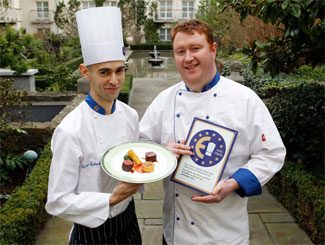
.jpg) Ireland's Culinary Elite Salute A Rising Star
Ireland's Culinary Elite Salute A Rising StarThe Euro-Toques Young Chef of the Year competition has been a highlight of Ireland’s pre-Christmas culinary season for 21 years, and attending the finalists’ lunch and announcement of the winner is always a treat.
No less so this time around, when a beautiful meal was cooked by the finalists and served in the atmospheric surroundings of the Cellar Restaurant at Dublin’s Merrion Hotel in November, and attended by many great representatives of the best of Irish cooking - including Myrtle Allen of Ballymaloe House, who founded Euro-Toques Ireland in 1986 following the foundation of the parent organisation in Brussels.
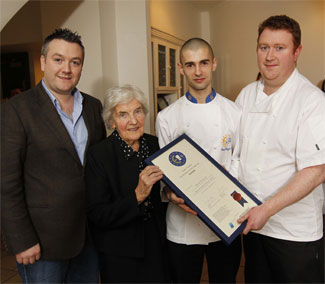 Established as a lobby group addressing the concerns of Europe’s top chefs and cooks about food quality and the future of food, and as a network of like-minded chefs, it was a visionary movement from the outset and has proved an increasingly important guardian of European culinary heritage.
Established as a lobby group addressing the concerns of Europe’s top chefs and cooks about food quality and the future of food, and as a network of like-minded chefs, it was a visionary movement from the outset and has proved an increasingly important guardian of European culinary heritage. The Irish branch is very active, with almost 200 members who meet regularly, campaign on vital food issues and run events - of which the annual Euro-Toques Food Awards and the Young Chef of the Year competition are the among highlights.
The Young Chef of the Year competition is rigorously run, with each participant nominated by a senior chef who will commit to mentoring them for the competition. The daunting series of hurdles to overcome includes a written submission (essay) on a given topic, an interview and, for the finalists, a practical skills’ test in a member kitchen. Then finally – in what must be a nerve-wracking experience while they await the judges’ verdict - the participants cook a presentation lunch for invited guests.
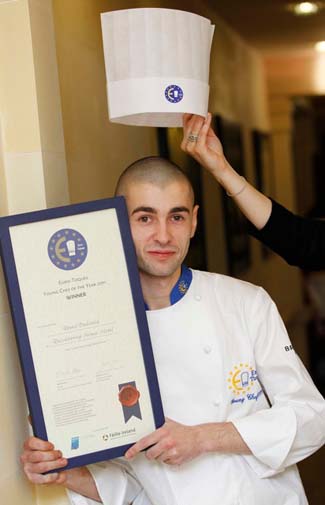 23-year old Kamil Dubanik, was declared the winner of the title 2011 Euro-toques Young Chef of the Year after fighting off stiff competition from five other finalists. This is the second year running that the winner has come from Knockranny House Hotel in Westport, Co Mayo, and the third consecutive year that chefs mentored by the hotel’s Head Chef, Seamus Commons, have reached the competition final... There must be something in the air in Co Mayo – and there is certainly something in the water, as turbot farmed on Achill Island was one of the ingredients the young chefs had to use in the dishes they created for their Skills Test.
23-year old Kamil Dubanik, was declared the winner of the title 2011 Euro-toques Young Chef of the Year after fighting off stiff competition from five other finalists. This is the second year running that the winner has come from Knockranny House Hotel in Westport, Co Mayo, and the third consecutive year that chefs mentored by the hotel’s Head Chef, Seamus Commons, have reached the competition final... There must be something in the air in Co Mayo – and there is certainly something in the water, as turbot farmed on Achill Island was one of the ingredients the young chefs had to use in the dishes they created for their Skills Test.Kamil’s journey to this extremely prestigious culinary award is remarkable. Originally from Poland, he has been in the kitchen only three years, starting out as kitchen porter at Knockranny House Hotel. Since then he has worked his way up to his current position of Demi-Chef de Partie, and recently completed an Advanced Certificate in Professional Cookery at GMIT.
He will relish the top prize for the 2011 Euro-toques Young Chef of the Year -an all-expenses paid stage at London's favourite restaurant, The Ivy, under Executive Chef Gary Lee, plus a one week stage at the award winning Michelin star Chapter One Restaurant in Dublin under the tutelage of Euro-toques head chef Ross Lewis.
Kamil Dubanik competed for this honour along with his fellow finalists - Aisling Gallagher (24) from Ballynahinch Castle, Galway; Kyle Greer (24) from Number 27 Restaurant Belfast; Micheal Harley (22) from Rathmullan House, Co. Donegal; David Magaeen (24) from Restaurant Victoria Belfast; and Margaret Roche (23) from The Cellar at The Merrion Hotel Dublin.
The Euro-toques Young Chef competition emphasises training and development, with the role of the mentor being central to the process. Among the overall prizes, each of the finalists won a unique food experience with sponsors BIM and Failte Ireland:
• BIM will host a one day practical on-site introduction to the complex world of the seafood industry, visiting a seafood facility and discussing how fish is caught or harvested, bought, and sold, and what this all means to a chef; it includes meetings with key industry personnel, processors and industry chefs.
• Failte Ireland will host a Food Tourism road trip - an educational 4 day food focused road trip taking in ‘hands-on’ cooking time in top professional kitchens, visits to artisan food producers; tastings, demos, unique meal experiences and overnight stays with exemplary Irish food and hospitality operators.
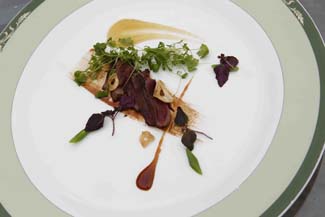 The awards lunch was an impressive affair, with each finalist showcasing local seasonal produce as much as displaying their cooking skills. Imaginative seasonal dishes presented to guests included a delicious Jerusalem artichoke soup, made by Micheal Harley of Rathmullan House, Co Donegal (renowned for the organic walled gardens); an unusual dish of Turf smoked Woodcock, cooked by Aisling Gallagher from Ballynahinch Castle Hotel, Co Galway (our Hotel of the Year, and renowned for country sports, including shooting in season); and Kamil’s own dish of Loin of Wild Fallow Venison (see below).
The awards lunch was an impressive affair, with each finalist showcasing local seasonal produce as much as displaying their cooking skills. Imaginative seasonal dishes presented to guests included a delicious Jerusalem artichoke soup, made by Micheal Harley of Rathmullan House, Co Donegal (renowned for the organic walled gardens); an unusual dish of Turf smoked Woodcock, cooked by Aisling Gallagher from Ballynahinch Castle Hotel, Co Galway (our Hotel of the Year, and renowned for country sports, including shooting in season); and Kamil’s own dish of Loin of Wild Fallow Venison (see below).2011 Euro-toques Young Chef of the Year - THE WINNER’S RECIPES:
Note: These recipes illustrate the level of expertise demonstrated by the participants; they may be quite demanding to make in domestic kitchens as each dish is composed of a number of elements and, in some cases, special ingredients or equipment may be called for. However, the dishes may be simplified or used as a source of inspiration by the home cooks, who may find some elements especially appealing.
Kamil Dubanik’s Culinary Skills Test Dish: Roast Troncon of Achill Island Turbot, Dublin Bay Prawn Tortellini, Jerusalem Artichoke, Mushroom, Cheek, Liver, Dublin Bay Prawn, Lovage
.jpg) (slightly amended from the original recipe submitted)
(slightly amended from the original recipe submitted)Achill Island Turbot
Ingredients:
Achill island turbot 1-1.5 kg (whole fish)
Salt to taste
5ml oil
Method:
Cut 150g steaks through the bone of the whole turbot, going across the fish. Ensure the roe is removed.
Season the fish and seal the turbot on a preheated pan for 2 minutes on either side.
Place in a roasting dish and put in a pre-heated oven 175ºC. Cook for 4 minutes on one side, turn the fish and cook for a further 4 minutes.
Remove from the oven and leave to rest for two minutes.
Remove the skin and the fin from the cooked turbot.
Langoustine Tortellini
Ingredients for stuffing:
4 langoustines (Dublin Bay prawns), shelled & diced
2g basil
1 tomato petal, skinned & diced
Salt, pepper
Ingredients for pasta:
125 g grade 00 flour
2 egg yolks
1 whole egg
10 ml olive oil
Method:
Sift the flour and salt into the thermo mix. Add 2 egg yolks, 1 whole egg, pinch of salt and half tbsp of olive oil. Blitz altogether.
Remove the dough from the thermo mix and knead well with both hands until firm, smooth and silky.
Wrap in cling film and place in the fridge. Leave to rest for 30-45 minutes.
In a bowl, mix the langoustine with the shredded basil and tomato. Season to taste.
Roll out the pasta with a pasta machine, cut the pasta into discs. Place some of the mix in the centre of the pasta disc, egg wash the pasta and fold it over. Bring the 2 corners together and pinch together.
Blanch in boiling salted water for 1 minute and refresh in ice water.
Keep covered in fridge until ready to use.
Jerusalem Artichoke Purée
Ingredients:
200g Jerusalem artichokes (peeled & finely chopped)
15g butter
10ml water
20ml fresh cream
Salt to taste
1tsp oil
Method:
Heat the oil in the saucepan. Put the artichokes in the hot pan and sweat them down for 2-3 minutes. Add the butter and water. Cover the artichokes with a cartouche and cook until soft.
Once soft, add the cream and bring to the boil. Remove from the heat and blitz well with a hand gun. Season with salt. Pass the purée through a fine sieve. Set aside for assembly.
Pickled Mushrooms
Ingredients for pickling liquid:
25ml water
25g sugar
50ml rice vinegar
Pinch fennel seeds
1 sprig tarragon
Method:
Toast the fennel seeds in a hot pan. Add water, sugar & rice vinegar and bring it to the boil. Remove from the heat. Chill the liquid slightly and add the tarragon leave to infuse for an hour. Pass through a fine sieve and set aside.
Ingredients for mushrooms:
30g mushrooms
100ml pickling liquid
Method:
Place mushrooms in the vac pack bag and pour in the pickling liquid. Close the bag in the vac pack machine.
Leave in the fridge for 30 minutes.
Remove the mushrooms from the liquid and set aside for assembly.
Lovage Powder
Ingredients:
1 bunch lovage
80ml rapeseed oil
25g tapioca maltodextrin
Method:
Dry out lovage in a dehydrator. Blitz to a powder in a food processor. Reserve two spoons of blitzed dried lovage. Place the rest in thermo mixer, add the oil. Put the lovage oil in a pot and warm at 60°c for an hour.
Strain the oil through a cloth. Place in food processor with tapioca maltodextrin and on a medium speed pour in flavoured oil.
Set powder aside for assembly.
Langoustine Cream
Ingredients:
25g butter
15g carrot (finely chopped)
15g onion (finely chopped)
15g fennel (chopped)
5g fennel seeds
5g coriander Seeds
1 sprig thyme
100g prawn shells
15ml brandy
15g tomato purée
250ml fish stock
50ml fresh cream
Method:
Melt the half of butter in a deep pan, add fennel, onion, carrot, thyme and cook to a light brown colour.
Place prawn shells on gastronome tray and roast in preheated oven to 175-180ºC for 30-45 minutes.
Mix them with vegetables and add brandy and Flambé.
Next add tomato purée. Cook it out for few minutes.
Add white wine and fish stock. Bring stock to the boil, skim, season lightly and simmer gently for 45 minutes.
Blitz everything together with a hand processor and pass stock through a fine sieve.
Reduce by half. Add cream, bring to a boil and simmer for a while.
Set aside.
Assemble as illustrated.
The winner, Kamil Dubanik’s dish for the 2011 Euro-toques Young Chef of the Year Presentation Lunch, held at The Merrion Hotel Dublin
Monday 28th of November;
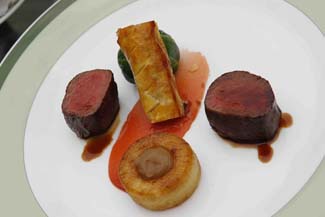 Loin of Wild Fallow Venison with Coco Roll, Quince Paste, Cabbage wrap, Chestnut Fondant & Gin Jus
Loin of Wild Fallow Venison with Coco Roll, Quince Paste, Cabbage wrap, Chestnut Fondant & Gin JusMatching Wine, from Findlaters: 2008 Marchese Antinori Chianti Classico Riserva
Venison
Ingredients:
120g loin venison per portion
1 tbsp oil
Salt
1 sprig rosemary
2 juniper berries (cracked)
Method:
Place venison, cracked juniper berries, rosemary in a bag and leave over night. Remove from the bag and season. Seal off the venison in a hot pan until golden brown and place in pre heated oven for 8 minutes (medium).
Remove from the oven and cover with tin foil.
Allow to rest for 3 minutes
Quince Purée
2 quince (peeled, core removed & chopped)
10g sugar
1 stick cinnamon
¼ vanilla pod
20ml water
Method:
Place the quince, water, cinnamon, vanilla and the sugar in a pot and cover with a lid. Cook slowly on a low heat until soft. Place the cooked quince and liquid in a blender and blitz until smooth. Set aside.
Coco Sausage Roll
Ingredients:
200g fresh puff pastry
250g venison mince
1 sprig thyme (chopped)
50g fatty smoked bacon (minced)
1 pear (diced)
1 pinch ground juniper
1 shallot (finely chopped)
1 clove garlic (finely chopped)
60g 85% chocolate (cut fine)
2 egg yolks
1 tbsp oil
Method:
In a pan, sweat the shallot, garlic, thyme, juniper for 2-3 minutes. Leave to cool. Place the venison and smoked bacon mince in a mixing bowl, add the shallot mixture, pear and the shaved chocolate. Mix well.
Fry some of the mix to check for seasoning. Place the venison mixture in a piping bag. Pipe the mix onto the puff pastry 2 cm cylinders.
Egg Wash the edges on the pastry. Fold over and seal. Press the edges with a fork and brush with egg wash. Place onto a greased baking sheet.
Bake in a pre heated oven 210°c for 10 to 15 minutes or until golden brown.
Cut into 3 inch/7.5 cm lengths for serving.
Set to one side.
Cabbage Ball
Ingredients:
½ head cabbage (washed & finely chopped)
1 shallot (chopped)
4 outer leaves from cabbage (pre blanched)
20g smoked bacon
1tsp truffle oil
Method:
In a warm pot, melt the butter until lightly foaming. Add the shallot and thyme. Sweat until soft but with no colour. Add the cabbage and cook until tender. Season With salt and add the truffle oil.
Form into a ball shape and wrap in the outer leaves. Wrap the ball in cling film. Set aside.
When heating them up place them in boiling water for 3 minutes.
Remove the cling film and place on the plate.
Potato, Smoked Bacon & Chestnut Fondant
Ingredients:
2 large baking potatoes (peeled)
50g peeled chestnuts
1 banana shallot
40g smoked bacon (diced)
1 sprig thyme
10g butter
20ml cream
250g duck fat
Method:
Sweat off thyme, smoked bacon and shallot in butter with no colour. Add the chestnuts and the cream. Bring to simmer and purée in a food processor until smooth. Place in a disposable piping bag and set aside.
Cut the potato into rings using a 2 inch/5cm diameter scone cutter. Remove the centre of the fondant with a melon baller. Seal on all sides until golden in a hot pan.
Confit the potato in duck fat with some thyme and garlic and salt.
When ¾ cooked, remove from the duck fat. Pipe the chestnut filling into hole in centre and finish cooking in the oven.
Gin Jus
Ingredients:
100 ml gin
1 shallot
1 tsp sugar
¼ orange zest
2juniper berries (cracked)
1 sprig thyme
50 ml game stock
Method:
Sweat the shallot, juniper berries and thyme. Add orange zest and sugar. Caramelise. Add the gin and burn off the alcohol. Add the game jus and reduce to sauce consistency. Season to taste.
Assemble as illustrated.
Whats the Truth About Obesity?
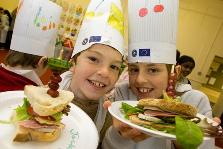
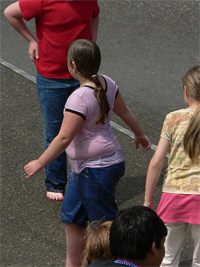 Ruth Hegarty, Secretary-General of Euro-toques Ireland, says it comes down to Children and Food Education
Ruth Hegarty, Secretary-General of Euro-toques Ireland, says it comes down to Children and Food EducationWhile discussing the government’s approach to tackling obesity recently with one of our member chefs, he told me that his 10 year old daughter had been at a school hockey game the week before and, having won the game, the teachers decided to ‘treat’ the children to lunch at McDonalds.
Being unaccustomed to eating fast food, his daughter opted for a wrap and some of the other children chided her for going for the ‘healthy option’. But then this drew her attention to the fact that the wrap actually had a higher number of calories than some of the burgers and she decided to change her order to a lower calorie option.
Now Minister Reilly might argue that this anecdote proves the case for putting calorie counts on menus. But to me it raises lots of worrying questions about our attitude to food and how we want to see this developing.
Firstly, if adults (indeed educators) see bringing children to a fast food outlet as a suitable treat after a sports activity, what kind of message are we sending out? If children see choosing an apparently healthy option as something worthy of derision, clearly we have done nothing to encourage positive peer pressure in this area. And do we really want our children to think of the food they eat in terms of calorie counts? Does anyone really believe that this is the path to better eating habits?
In Euro-toques our belief is that we need to send positive messages to children about food and, rather than constantly giving them dos and don’ts, we need to equip them with some practical tools to enable them to make better food choices. Simply put, this means teaching them how to buy good fresh food, how to prepare and cook it, and even how to eat it...because in many ways we do need to be re-trained on how to eat.
 This is why last week many Euro-toques chefs around the country took time out from busy kitchens to share a little of their passion of food and cooking in Ireland’s classrooms, part of an annual ‘Mini-Chefs’ School Food Workshops week, an initiative by Euro-toques Ireland – Irish branch of the Europe-wide ‘European Community of Chefs’ – to encourage healthier eating habits in children.
This is why last week many Euro-toques chefs around the country took time out from busy kitchens to share a little of their passion of food and cooking in Ireland’s classrooms, part of an annual ‘Mini-Chefs’ School Food Workshops week, an initiative by Euro-toques Ireland – Irish branch of the Europe-wide ‘European Community of Chefs’ – to encourage healthier eating habits in children.The idea behind the workshops is simply to get children interested in food; how it grows or is produced, where it comes from, how to prepare and eat it, and to encourage them to think and ask questions about what they eat. A fundamental part of all the workshops is teaching children to taste food; children’s palates are constantly being ‘dumbed down’ by the big salt, sugar and fat hits of processed foods, which they come to crave, and as their palates develop they are often missing out on the more subtle tastes and aromas that make food so pleasurable and interesting.
That is why every workshop includes some time talking about the different tastes and the role that all the senses play in the eating experience; and in that way, almost re-training children to be fully aware when they eat – something that many adults would also benefit from.
We also believe that if we can only make children more open to tasting different things, and show them that no disastrous consequences will ensue from experiencing a strange or new flavour, we can break through a conservative attitude to food which, if not tackled, can often last a lifetime.
In general, public health campaigns based on negative messages and guilt trips have proven to be ineffective and we believe the current government approach to dealing with our chronic obesity problem and bad eating habits will be a dismal failure.
Not only because it fosters doubt and lack of confidence around food, further spurring people to choose the very processed ‘convenience’ food which have caused so many problems in the first place, but also because it does not give our children any of the tools they need to improve the way they – and future generations – will eat.
It may be quite an obvious thing to us, but healthier eating is closely linked to cooking ability. Clearly, if you are unable to cook, you are more likely to consume pre-prepared and mass manufactured foods and less likely to value fresh ingredients. A 2003 paper from Harvard University* showed that the increase in obesity in the US was in direct proportion to the reduction in time spent cooking at home and, it follows, an increase in consumption of ‘mass-produced’ food.
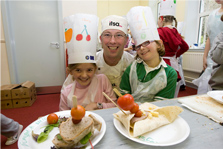 When it comes to children it has also been shown that involvement in food preparation and cooking not only increases their knowledge of what constitutes healthy food, but also makes them more inclined to eat the finished product (and if you needed a study to prove this, as it seems we do for everything these days, there have been several in the UK*).
When it comes to children it has also been shown that involvement in food preparation and cooking not only increases their knowledge of what constitutes healthy food, but also makes them more inclined to eat the finished product (and if you needed a study to prove this, as it seems we do for everything these days, there have been several in the UK*). Of course, growing their own food has the very same impact, making children feel involved in the process, instilling a pride in what they have achieved, and making them open to foods they may previously have scoffed at. But right now we are now facing a lost generation who cannot cook, and will not pass any cooking skills on to their children, and no one at policy level is doing anything to address this.
Ireland’s obesity rates continue to rise. Earlier this year Minister for Health Dr. James Reilly’s announced his intention to ask (and if they were not compliant, force) restaurants to include calorie counts on menus. This is essentially a US policy, which has been replicated in some states in Australia and was introduced as part of a voluntary scheme for fast food chains in the UK.
One really has to wonder why Dr. Reilly wants to follow in the wake of the country which long ranked as the fattest in the world and where obesity rates continue to rise. The US has a kind of sad, love-hate, relationship with food; eating far too much and eating the wrong kinds of foods, then going on all kinds of fad diets and eating foods that claim to solve all the problems that over-eating and junk foods have caused; reduce cholesterol, lose weight, boost immunity. This is the kind of behaviour that public policies based on negative messages and ‘guilt’ motivators result in.
Thinking of food in terms of calorie counts and nutritional tables instils a fear of food, encourages a negative relationship with it, and does nothing to encourage better eating behaviours. According to a recently published report* people in France show particularly low understanding of nutritional labelling on food, yet they have the lowest obesity rates in Europe. The French paradox is renowned; the French apparently eat many things which are viewed as fattening or unhealthy but manage to stay slim.
The reality is that French people, in the main, respect food and take pleasure in everything they eat. They demand quality ingredients and know how to cook them; taste is of utmost importance. And they remember the maxim, ‘everything in moderation’, something we would all do well to pay heed to. Incidentally, the country which displays most knowledge of nutritional labelling and average calorie content of food? The US.
We should be teaching our children that good food is one of the greatest pleasures of life and encourage them to love food, not fear it. The government are totally missing the point when they talk about calorie counts and nutritional labels. It is the very foods which carry all this information on their packages, which have destroyed our diets and our health. Unless people can cook, they have no chance of accessing better food.
We need a radical change in attitude and approach towards food in this country. We need a national policy on Food Education, something which currently does not exist. This should involve teaching children about food ingredients; how they are produced, where they come from, teaching them how to taste and appreciate food, giving them the skills to prepare food, and most of all, allowing them to enjoy it, without guilt or fear.
Knowing how to cook and to eat in a balanced way is an essential life skill – for some it can also become a lifelong passion.
*REFERENCES
*Study links rise in obesity to reduction in time spent cooking.
Why have American Become More Obese? Journal of Economic Perspectives—Volume 17, Number 3—Summer 2003—Pages 93-118
http://www.economics.harvard.edu/faculty/cutler/files/Why%20Have%20Americans%20Become%20More%20Obese.pdf
*Studies link Cookings Skills With healthier eating, UK
http://www.cancook.co.uk/wp-content/uploads/2012/01/Report-on-a-Cooking-Initiative-in-Liverpool-a-study-of-the-activities-of-Can-Cook.pdf
Why Cooking Skills are the Key to Healthy Eating http://www.bbc.co.uk/news/health-16854572
*The Nielsen Global Survey of Food Labelling Trends 2012
59% of consumers worldwide are struggling to understand the nutritional labels on food packaging
North America: 57% of consumers indicate they understand the information
Europe the average of good understanding of nutritional labels is 45%; ranging from Portugal with 60%, Ireland and Denmark with 53%, down to France with 31%.
Doing it the Westport Way

 We have long admired Westport and were not a bit surprised when it was recently hailed The Irish Times Best Place To Live In Ireland. Not just a pretty town - although it is certainly that – but also an exceptionally satisfying place to visit for a break, and to do business, it is blessed with wonderful scenery, good planning (why have we learned so little from the success of our planned towns?) and a vibrant community who work together to bring people to the area.
We have long admired Westport and were not a bit surprised when it was recently hailed The Irish Times Best Place To Live In Ireland. Not just a pretty town - although it is certainly that – but also an exceptionally satisfying place to visit for a break, and to do business, it is blessed with wonderful scenery, good planning (why have we learned so little from the success of our planned towns?) and a vibrant community who work together to bring people to the area. Ahead of the annual Westport Food Festival (21-23 September; westportfoodfestival.ie) and Achill Seafood Festival (19-22 July; achilltourism.com/seafood) MARILYN BRIGHT spoke to some key players about the town and its inspiring route to success.
The green shoots that everyone keeps talking about have certainly taken root in the west of Mayo, and are already sending out healthy branches and leaves. This is largely down to the success of the Great Western Greenway , which now runs from Westport through Newport and Mulranny to Achill. The longest off-road walking and cycling trail in Ireland, it has brought new life to the tourism scene and its amenities are equally enjoyed by locals.
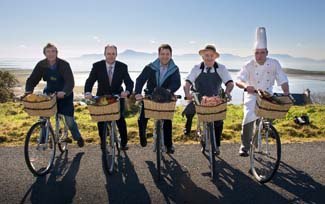 The scenic trail which encompasses Clew Bay is a joint initiative of Failte Ireland and Mayo County Council, built on the track of the Great Western Railway which closed in 1937. Now in its third year, the Greenway has been extended in two phases to run the full 44km from Westport to Achill and there's even talk that other areas will join up to form a western seaboard trail that could bring off-road tourists from Galway to Donegal.
The scenic trail which encompasses Clew Bay is a joint initiative of Failte Ireland and Mayo County Council, built on the track of the Great Western Railway which closed in 1937. Now in its third year, the Greenway has been extended in two phases to run the full 44km from Westport to Achill and there's even talk that other areas will join up to form a western seaboard trail that could bring off-road tourists from Galway to Donegal.Brian Quinn, of Failte Ireland’s Mayo office, reports that the first phase of the Greenway from Westport to Mulranny via Newport was the most difficult, with the daunting prospect of dealing with 150 different landowners along the disused track. Miraculously, permissions for right of way were achieved without payment or one compulsory purchase order. "It was a real community effort, with local businesses and families seeing the advantages for safe off-road walking and cycling that benefitted local users and also attracted visitors to a wonderful amenity.”
The extension to Achill was achieved one year later in 2011 and hotels in the area are reporting the best room occupancy rates in the west. Suzanne O'Brien of Mulranny Park Hotel reports this is their busiest year since the re-opening of the historic hotel in 2005, with steady demand for rooms and the apartments booked up until September.
Declan Heneghan of Hotel Westport confirms that the opening of the Greenway prompted an immediate rise in enquiries which have resulted in bed nights. “Becoming known as an area for activity holidays has given us a competitive advantage, shared by businesses in the town as well as those along the actual trailway. This year we introduced a five-day wellness package in January - sometimes referred to as the hoteliers graveyard - incorporating in-house activities like zumba dancing and spa and pool sessions, with cycles and walks on the Greenway. It has been so successful that we're running the programme three times a year and getting a lot of repeat customers.”
Local business people and residents point to an influx of visitors and a renewal of energies that, has inspired spruced up shopfronts and welcoming floral displays in villages all along the Greenway route. According to Sean Kelly, of the renowned Kelly's Butchers in Newport, the trail has been hailed as “the best 'thing to happen to Mayo since Knock airport".
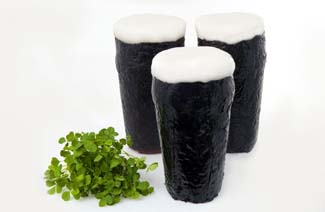 The Mulranny Park Hotel is the driving force behind a spin-off christened Gourmet Greenway, now in its second year with restaurateurs and artisan food producers teaming up to showcase the best of locally produced food. Visitors can enjoy the likes of Carrowholly cheese and Sean Kelly's award winning black pudding or the Atlantic Seaspray lamb that is likened to the pré-sale lamb of French coastlands. The speciality foods appear on tables of member restaurants and in shops and many producers welcome visitors to their premises, giving a "food trail” aspect, to the Greenway.
The Mulranny Park Hotel is the driving force behind a spin-off christened Gourmet Greenway, now in its second year with restaurateurs and artisan food producers teaming up to showcase the best of locally produced food. Visitors can enjoy the likes of Carrowholly cheese and Sean Kelly's award winning black pudding or the Atlantic Seaspray lamb that is likened to the pré-sale lamb of French coastlands. The speciality foods appear on tables of member restaurants and in shops and many producers welcome visitors to their premises, giving a "food trail” aspect, to the Greenway.Euro-Toques chef Frankie Mallon of An Port Mór Restaurant in Westport says the Greenway has put Mayo “on the radar” and the area is getting the name of a food destination. He credits Dermot Madigan of Mulranny Park Hotel as the main man in organising the Gourmet
Greenway group, which now runs to thirteen members. "Our seafood is coming in fresh on day boats, we have Clew Bay lobsters and prawns and mussels, crab from Inishturk and organic smoked salmon from Gerry Hassett in Achill – you can’t get any more local than that.”
The Greenway has created a feel-good factor, Frankie thinks, with the community all working together, "We opened at the worst time three years ago and the business was built by word of mouth with recommendations from B&B's and hotels. We have a loyal customer base through the low season too — it's the locals who keep us going.”
Adrian Noonan of Knockranny House Hotel just outside Westport is anticipating the completion of a direct link to the Great Western Greenway. "You can see the effect with families arriving in cars with bicycles on the back. We’re offering a flexible Greenway package which includes bike hire and packed lunches. We’re already known for good food and our award winning restaurant and this is another string to our bow.”
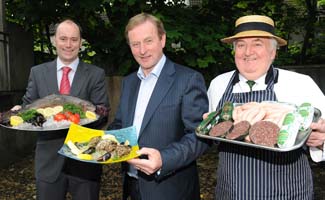 Greenway Adventures is the latest initiative, being launched this summer by Taoiseach Enda Kenny, who is no stranger to the outdoor activities of the area himself and a real supporter of Mayo local enterprise – who knows, you might even find him joining in your climb or mountain walk! The grouping consists of a baker’s dozen of companies operating along the trail, offering activities that include sea angling, cycling, walking, abseiling, kiteboarding, horse riding, windsurfing and sailing — plenty of choice for action-seeking or just relaxing on one of the blue flag beaches,
Greenway Adventures is the latest initiative, being launched this summer by Taoiseach Enda Kenny, who is no stranger to the outdoor activities of the area himself and a real supporter of Mayo local enterprise – who knows, you might even find him joining in your climb or mountain walk! The grouping consists of a baker’s dozen of companies operating along the trail, offering activities that include sea angling, cycling, walking, abseiling, kiteboarding, horse riding, windsurfing and sailing — plenty of choice for action-seeking or just relaxing on one of the blue flag beaches,Mulranny Park is the only hotel directly on the Great Western Greenway, enjoying a position beside the railtrack it was built to serve in 1897. Today it benefits from a different kind of business, marketing executive Susanne O'Brien points out."People may be staying here or just passing while doing various sections of the Greenway and call in for all-day food in the Waterfront Bar. There's a causeway which runs from the hotel to the blue flag beach we serve teas in the old Victorian gardens which have been restored."
Andrew Pelham Burn, maker of Carrowholly cheese and member of the Gourmet Greenway also views a burgeoning new tourism. "The Greenway has had a galvanising effect on the area. Formerly we had coach tourists being bussed in and out. Now people are staying to enjoy the scenery and activities and the shops and there's greater benefit to the whole area."
Most of all, the Westport area is just a fantastic place to be - as thousands of first-time visitors have discovered over the last couple of years, including the many happy families visiting our Family Friendly Hotel of the Year 2012, Westport Woods Hotel. In Newport, butcher Sean Kelly sums up the success of the Great Western Greenway. “Two years ago, you wouldn't have been able to hire a bike in Newport - now there are a thousand. The Greenway has brought business for everybody, from all parts of the world. We've been making black pudding here for 60 years and now we’ve opened a cafe, Kelly’s Kitchen, next door. Mayo has never looked better,"
40 Years of The Blue Book
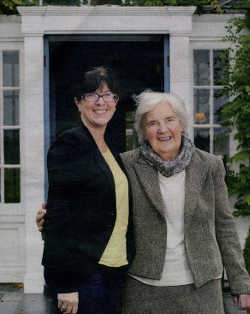
In 2014 Ireland’s premier association of country houses, historic hotels and restaurants, The Blue Book, will celebrate 40 years since its foundation. Gillian Nelis talks to founder member Myrtle Allen and incoming president, Catherine Dundon, about the association and its enduring success
"Ants? Ants did you say? In a jar? Well, we can be thankful for that at least." Over dinner in the restaurant at Ballymaloe House, Myrtle Allen is questioning me closely about one of the dishes served up to customers at Claridges in London last year by Rene Redzepi of the Danish restaurant Noma -- cabbage leaves dressed with creme fraiche that came served in a kilner jar and topped with live ants.
At nearly 90, the first lady of Irish hospitality remains as curious and engaging as ever. We are meeting to discuss her involvement with The Blue Book, the association of country houses and manors that celebrates its 40th birthday this year.
Ballymaloe, which at the time was run by Allen and her late husband Ivan, was one of the original members, as were a small number of properties who remain members today, among them Cashel House in Connemara, Longueville in Cork, Hunter's Hotel in Wicklow and Currarevagh House overlooking Lough Corrib.
For Allen, who was present at the meeting where the association was set up, the main attraction was the chance to meet other like-minded people. "I remember being very pleased when I got the invitation because I felt it was very much needed," she says. "I was so pleased to meet other people doing the same thing. At the time what we were doing in Ballymaloe was very unusual, so I jumped at the chance of joining."
The next morning, over tea and scones in the conservatory, Allen is discussing the ups and downs involved in running a country house hotel with Catherine Dundon, who takes over as president of the Blue Book this month. Like the Allens, the Dundons run a family business -- Dunbrody House in Wexford, which includes 22 bedrooms, a cookery school where Dundon's husband, the well-known chef Kevin Dundon teaches a range of courses, a spa and a newly-opened pub.
The Dundons opened Dunbrody to guests in 1997, having acquired the property, which dates from 1830, from the Chicester family. Prior to that, Kevin Dundon was executive chef at the Shelbourne hotel in Dublin, but the pair had long held ambitions to open their own business.
"Kevin was always looking in estate agent's windows on his way home from work, hoping to spot the right place. We looked at properties all along the east coast -- the location was important, because we wanted somewhere that could be open all year; we didn't want to have to close for five months every year, which we realistically would have had to do if we had bought somewhere in the west," she says.
"When we walked into Dunbrody, even though the decor was very drab, we instantly got a very warm feeling. It's a very relaxing house; it's not the kind of place where you feel you have to sit up straight. It was a good fit for us, and for what we wanted to do."
The history of Ballymaloe goes back quite a way further, to around 1450, when a Norman castle was built on land near present-day Shanagarry by a branch of the Fitzgerald family, the illegitimate descendants of the Knights of Kerry. It was acquired by Ivan and Myrtle Allen in 1948, but it wasn't until 1964 that the couple opened their dining room as a restaurant known as The Yeats Room.
While Myrtle Allen's philosophy of using local produce and changing her menus to reflect what was in season and available has become second nature to many of today's chefs, at the time it was revolutionary. "When we opened I did all the cooking myself, because I knew exactly what I wanted to do," Allen says. "My philosophy was 'what's at hand, what's good, what's fresh, and what do I know how to cook?' At the time that wasn't the norm, so it took a little while for us to get busy. In the early days there would always be great excitement when people would book."
From Monkstown in Cork, Myrtle Allen met her future husband, who was originally from Drogheda in Co Louth, when she returned to Ireland from an English boarding school following the outbreak of World War II. "The man who was living in this house at the time had a daughter my age who was at Newtown school in Waterford, and he was very impressed with it, so my father decided to send me there," she says.
"I arrived in the middle of the night off the train from Cork, and they showed me to a room where three other girls were sleeping. When I told them I was from Cork they asked me if I knew Ivan, who was on the school committee -- they told me he was 'rare'. I'd never heard that expression before, so I was looking forward to meeting him!"
The Allens raised six children in Ballymaloe; at Dunbrody, Catherine and Kevin Dundon's three children are growing up in a house their parents built within a few hundred metres of the hotel. For both women, rearing a family while at the same time operating a business from the family home presented its own challenges.
"We used to live in the hotel," says Catherine Dundon. "With one child that was fine, with two it was less than fine but still doable, but by the time our youngest came along, as well the dogs, fish and all the other stuff that kids bring with them, it just wasn't workable any more.
"Now we're still there, but at least when I'm not actually in Dunbrody, I am actually off. But it's still very much a seven day a week job. Some of those days might only involve a couple of hours work, but it's never going to be five days a week. You're always on call if there's a problem."
Myrtle Allen agrees. "For me it was a little bit easier, because by the time we opened the restaurant, the children weren't tiny tots. But if you're in a house like this, you're always in work."
And of course, buying and running a country house involves money -- sometimes substantial amounts of it. Catherine Dundon describes the acquisition of Dunbrody as a "massive" financial commitment. "A few years after we bought the house, we had to put on a new roof. But when you have a property like this, you do what you have to do," she says.
"What was great about Dunbrody was that it hadn't been touched at all in a structural sense, so you still had very definite front of house and back of house areas. That made it much easier to run it as a small hotel -- the layout was essentially ready for us -- so we tried to do as little as possible in terms of changing the structure."
Ballymaloe was in good condition when the Allens acquired it, but again, substantial investment was needed over the years. Having a realistic idea of just what it costs to keep a country house running is, according to Myrtle Allen, crucial for anyone thinking of running one as a business. "If you have a big house, it's going to be expensive to keep up. There's just no way around it," she says.
Keeping things simple, whether that's the food or the decor, is also important, she believes.
"Look around and see what the products of the area around you are, and then think about menus -- don't do it the other way around," she says. "I based my menu on the food that we were growing ourselves, and that's always how it has been. There's no point in doing anything else really -- if you live in a food-producing area, or on a farm, there's no point in trying to do Italian cuisine. Why would you bother?"
Gillian Nelis is Managing Editor of the Sunday Business Post, where this article first appeared, and a member of the Irish Food Writers’ Guild.
www.ballymaloe.ie, www.dunbrodyhouse.com
The Curious Traveller

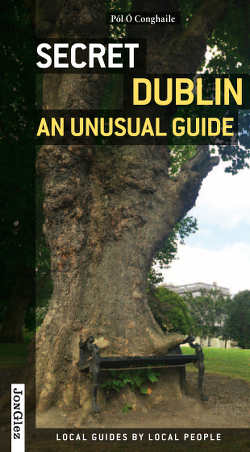 So you think you know Dublin? This month we’re delighted to feature some little known gems hidden away in the capital - and unearthed for the curious visitor by Irish Travel Writer of the Year, Pól Ó Conghaile, when researching his fascinating new book, Secret Dublin: An Unusual Guide. Given the month that’s in it, he begins, naturally enough, with St Valentine...
So you think you know Dublin? This month we’re delighted to feature some little known gems hidden away in the capital - and unearthed for the curious visitor by Irish Travel Writer of the Year, Pól Ó Conghaile, when researching his fascinating new book, Secret Dublin: An Unusual Guide. Given the month that’s in it, he begins, naturally enough, with St Valentine...
You can look for love anywhere, but the chances of finding it are higher at a rather unexpected location: the Whitefriar Street Church in Dublin.
“This shrine contains the sacred body of Saint Valentinus the Martyr,” reads a beautifully matter-of-fact inscription set beneath the church’s statue of the saint. “Together with a small vessel tinged with his blood.”
The relics are contained in a small wooden box. It is tied with a silk ribbon, sealed with wax and locked inside a casket bearing the coat of arms of Gregory XVI.
When I went looking for hidden gems, off-radar attractions and quirky statues, parks and museums for my book, Secret Dublin: An Unusual Guide, St. Valentine was the last thing I expected to find. But he was just the start of the discoveries.
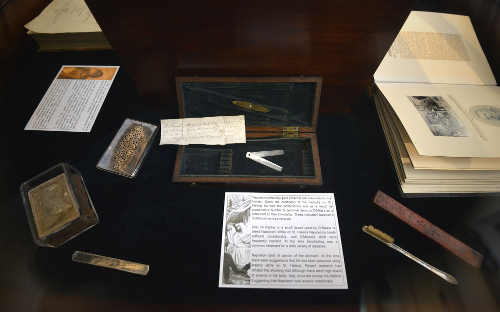 Did you know Napoleon’s toothbrush is in Dublin?
Did you know Napoleon’s toothbrush is in Dublin?
Together with a pair of snuffboxes, and a small lancet used to bleed the French Emperor, it’s kept on display in the Royal College of Physicians on Kildare Street. The items, I learned, were donated to Barry Edward O’Meara, an Irish physician that cared for Napoleon during his imprisonment on St. Helena.
Were you aware that George IV’s footprints are encased in stone at the end of Howth’s West Pier, or that deep within the Iveagh Trust buildings on Patrick Street sits a ‘Museum Flat’ unchanged since its last tenants first arrived in 1915?
 Another of my favourite discoveries was the Maid of Erin.
Another of my favourite discoveries was the Maid of Erin.
This peeling wooden sculpture is one of three beat-up statues stashed away within the offices of the Dublin Civic Trust (Henry Grattan and Daniel O’Connell are the others). They were rescued from the Irish House, a legendary pub renowned for its flamboyant stuccowork before it was demolished in 1967.
Located at the corner of Winetavern Street and Wood Quay, the Irish House had dated from 1870, and its Celtic Revival panels, friezes and plaques offered a famously romantic vision of Irish history and myth. The Maid of Erin represents the plight of her children in bondage, but the pub’s exterior also featured Grattan addressing the Irish Parliament for the final time, O’Connell clutching his Act of Repeal… and several round towers fashioned from cement!
After the Irish House was demolished to make way for Dublin’s new City Council offices, casts were taken of the stuccowork, and eventually found themselves under the guardianship of the Dublin Civic Trust – located today on Castle Street.
 As for St. Valentine, he ended up in Dublin after Pope Gregory XVI gifted his relics to the Irish Carmelite, John Spratt, in the 1830s.
As for St. Valentine, he ended up in Dublin after Pope Gregory XVI gifted his relics to the Irish Carmelite, John Spratt, in the 1830s.
Today’s shrine is found in a little alcove to the right of the altar. Above it you’ll find a spiral-bound notebook, into which visitors can write their petitions. “Thank you for helping Natalie and I sort out our troubles,” reads one, with a smiley-face after the name. “I’m never going to let her go. I love her forever and ever.”
On St. Valentine’s Day, the reliquary is placed before the high altar at Whitefriar Street. Couples are welcome to attend a ceremony that includes a blessing of rings in as weird and wonderful a celebration of love as you’re likely to find.
Best of all, it’s just the start of Dublin’s secrets.
 Secret Dublin: An Unusual Guide (Jonglez, €17.90) is available to buy or order in all good bookstores, and online at Amazon.co.uk.
Secret Dublin: An Unusual Guide (Jonglez, €17.90) is available to buy or order in all good bookstores, and online at Amazon.co.uk.
Pól Ó Conghaile is Irish Travel Writer of the Year. He contributes to National Geographic Traveller, RTE radio & TV, The Irish Independent and Cara Magazine among other media outlets. He is the author of Secret Dublin, and you can read more of his tips, features and discoveries at www.poloconghaile.com.
The Curious Traveller - The Wild Atlantic Way
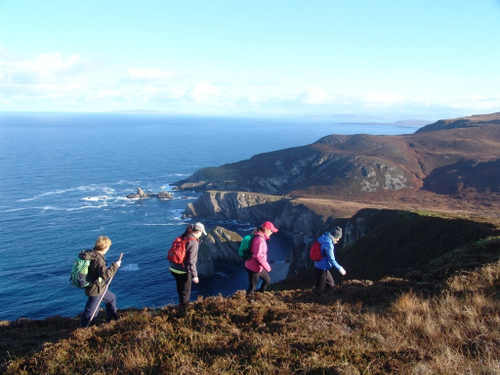
 The world’s longest coastal touring route has just been unveiled – and it’s right on our doorstep. Pól Ó Conghaile maps the Wild Atlantic Way.
The world’s longest coastal touring route has just been unveiled – and it’s right on our doorstep. Pól Ó Conghaile maps the Wild Atlantic Way.
Thundering surf. Epic cliffs. Cosy pubs, cracking crab claws and coastal walks that’ll blow off the cobwebs and leave your Facebook friends drooling. The Wild Atlantic Way is the world’s newest coastal touring route, and it’s right on our doorstep.
Strike that. The Wild Atlantic Way is our doorstep.
Stretching 2,500km from Donegal’s Northern Lights to the sizzling kitchens of Kinsale, the tour was launched as “the journey of a lifetime” last month, and its final signposts are slotting into place. It’s already shaping up as an iconic route, and the hope is for a Gathering-like boost to Irish tourism - albeit over years rather than months.
It’s Ireland’s western seaboard, repackaged for the 21st century.
At first glance, it does seem surreally obvious. Hasn’t the Atlantic Coast always been there, after all? Hasn’t Ireland always had captivating coastal views? Aren’t the cliffs, beaches and sea stacks of the west coast already central to our tourism offering?
Of course they are. Sometimes the best ideas are the simplest, however. The decision to channel 10 million euro into chevron signposts and designated discovery points could be seen as pie in the sky, but it could also be a cost-effective way of packaging a priceless piece of tourism infrastructure that Mother Nature has already built.
It’s a busy world, out there. But something as clean, visual and breathtaking as Ireland’s Wild Atlantic Way could just cut through the chatter. It could kick this beautiful coastline of ours into thoughts and plans of millions of potential visitors.
This really is as raw as Ireland gets. This is spray-in-your-face, mud-on-your-tyres, salt-on-your-windscreen stuff. It’s about jagged peninsulas, deserted villages, brilliant beaches and coastal hubs ranging from Kinsale to Kenmare and Kilkee.
The Wild Atlantic Way is longer than California’s Pacific Coast Highway or South Africa’s Garden Route, has fewer tourists (well, outside of the Cliffs of Moher and Ring of Kerry, anyway), and its halfway house is Galway City.
What’s not to like?
Few people will drive the entire 2,500km, of course. Sure, you’ll find intrepid adventurers taking it on (Liffey Press are shortly to publish a book by Eugene O’Loughlin, for example, who travelled the route by Harley Davidson). But most of us will be happy to dip in and out, biting off little bits and stopping whenever the mood strikes.
At any rate, whether you walk 10km or drive 1,000km doesn’t really matter. The Wild Atlantic Way is not there to be ‘done’ or ‘finished’. From a marketing point of view, touring routes attract more people, get them to stay longer and spend more money. For the rest of us, it’s another way to sex up a good ol’ fashioned staycation.
Businesses should benefit too. The Wild Atlantic Way is a once-in-a-lifetime opportunity to jump on-board a branding bandwagon with international reach - one that comes with its own ads, marketing budget and app (available end of June).
From culture vultures to adrenaline junkies, birdwatchers to big wave surfers, golfers to anglers and families to the far-flung diaspora, the Wild Atlantic Way is a grand invitation to all comers, reminiscent of Seamus Heaney’s lines from Postscript:
“And some time make the time to drive out west”
 Pól Ó Conghaile is Irish Travel Writer of the Year. He contributes to National Geographic Traveller, RTE radio & TV, The Irish Independent and Cara Magazine among other media outlets. He is the author of Secret Dublin, and you can read more of his tips, features and discoveries at www.poloconghaile.com or follow him on twitter.com/poloconghaile.
Pól Ó Conghaile is Irish Travel Writer of the Year. He contributes to National Geographic Traveller, RTE radio & TV, The Irish Independent and Cara Magazine among other media outlets. He is the author of Secret Dublin, and you can read more of his tips, features and discoveries at www.poloconghaile.com or follow him on twitter.com/poloconghaile.
Restaurant Trends

 Joe McNamee
Joe McNamee
From food tourism — holidays that are all about the restaurants — to annual pilgrimages to high-end eateries, the way we eat out has been transformed.
THERE was a time in Ireland, not so long ago, when a visit to a ‘serious’ restaurant was as rare and as welcome as the annual trip to the dentist as entire families squirmed in mortified silence, terrified of drawing down the withering disdain of those infinitely superior beings hovering on every shoulder, supposedly there to serve.
This summer, one of the hottest restaurant tickets in the country is Dillisk, a boat shed in Connemara. Diners sit alongside strangers on benches at bare communal tables. The menus are a collision of the familiar and the fantastic: prosaic local meat and fish alongside more exotic produce; and you bring your own wine. Next month it will close. It may or may not open again next year.
There have been radical changes in the first world’s approach to dining and food in recent years, triggered by a perfect storm of recession in an age when food has become a bona-fide ‘hobby’ practiced by the ‘foodie’, this huge newfound public interest leading to a great democratic levelling in matters epicurean.
A New York restaurant was anxious to find out why their service had slowed down so drastically over the last 10 years, despite serving the same amount of customers with an even greater number of staff.
Analysing old CCTV footage, they discovered it was primarily down to the increased amount of time customers devoted to their mobile devices from the moment they walked into the restaurant. This included taking photos of themselves and the food in front of them, many of them spending so long on the latter, they ended up returning dishes, complaining they were cold.
FOOD TOURISM
Food tourism is now one of the fastest growing areas in global tourism, according to the World Tourism Organisation and, though Ireland is so dependent on tourism and agriculture, we don’t really register on the global food tourism map. Nonetheless, there are plenty of homegrown food tourists.
Orlaith Mannion, from Galway, saves for her annual ‘pilgrimage’ to Chapter One.: “Winston Churchill, when he was pressed about cutting the arts budget during WWII, refused, saying the people need something to keep them going. I’m one of the much-maligned civil servants but I’ve had three significant pay cuts during the last three years, yet I wouldn’t think a year was a proper one without saving to go to Chapter One, once a year.”
Maria O’Mahony, of the Kinsale Good Food Circle, sees it every year at their Gourmet Festival Weekend: “The ticket price is €90 for the Mad Hatter’s tasting tour and people save all year to come, sometimes in groups, putting away a tenner a month. Some would come for the weekend and have been coming for the last eight or nine years.”
Norwegian Trond Johnsen, now living in Cork, and partner Yzabel, have ticked off an impressive list, including Heston Blumenthal’s The Fat Duck and Noma, in Copenhagen.
“There’s no point in going on your own to a place like that so we went with four friends. It’s so much about the experience that it’s nice to share that with others. I absolutely loved them both. Most of the big restaurants we’ve been to are in Spain but our favourite Irish restaurant is Patrick Guilbaud’s, in Dublin. It is a treat to ourselves from time to time.”
Laura Healy is a home economics teacher in Presentation College, Mitchelstown, and last year, she and nine fellow teachers made the trip to Chapter One. “It came from a discussion at coffee break. We all need something to look forward to and we’re a young enough staff, we all get along well and are all at about the same stage in life with young families and mortgages, so it was one of those treats we could all look forward to over the year. We saved each week, starting in September and went up by train the following March at mid-term and stayed overnight. It was fabulous and we still talk about it.”
Dubliner William Toft is a culinary arts graduate, now working as a chef. Along with friend and fellow graduate Brian McCarthy, he is also one half of Salt Lick, currently the hippest new Dublin pop-up restaurant, operating from the homely Hobart’s Café, in Ranelagh.
“I’m very lucky to have the girlfriend I have,” says William, “she’s very understanding of me and my passion for food. The big one was going to [Michelin two-star] Restaurant Sat Bains, in Nottingham. It was her surprise present for my 30th birthday. It was excellent.”
CASUAL DINING
Dillisk is the brainchild of Katie Sanderson and Jasper O’Connor, who met while working alongside each other in Dublin’s Fumbally Café. Katie has form in this respect: another of her culinary projects, Living Dinners, served up highly imaginative raw food dinners in offbeat locations including a rainforest, an art gallery and an empty old Georgian home.
“Jasper’s parents live in Connemara and suggested we use their boat shed so we set about converting it. We got loads of friends to help out. We had really nice weekends, brought friends down, cooked loads of food and worked as we went. It is definitely a summer project only though.
Casual dining is about the way it makes you feel, you can have quite upmarket food and still have casual dining. Somewhere like Forest Avenue is one of my favourite restaurants but the feeling is really casual, you don’t have that stiffness of some of the high-end restaurants. At Dillisk, you have strangers ending up exchanging numbers. Communal tables were a necessity at first but now I really like the community aspect of them.”
In 2012, The Chef’s Table at Brooklyn Fare, became one of only a handful of restaurants ever to debut in the Michelin fine dining guide with two stars. Now it has three. But equally surprising was the set-up. In the basement of a gourmet grocery store, a maximum of 18 customers sit at a counter, diner-style observing chef Cesar Ramirez in action. Though a degree of decorum is expected of diners, The Chef’s Table seemed the apogee of the global trend in casual dining, a world away from the starched, stiff service of yesteryear.
Declan Ryan, of Arbutus Breads, is the former owner/operator of the Arbutus Lodge, in Cork, the first Irish establishment to receive a Michelin Star, back in 1974. “The Michelin machine used to be too interested in the linen, the ‘waiters’, the silverware and all that but they’ve come away from that. Look at places like Aniar — which is a shop front, bare wooden tables — and absolutely superb food.”
Hazel Allen has run Ballymaloe House and Restaurant since 1971, also a former Irish Michelin star establishment. “Recent stars have tended to move away from the haute cuisine type of thing. In England, Petersham Nurseries got a star for what was a restaurant in a garden centre; St John’s is in an old abattoir. The emphasis is definitely on the food but the surroundings are great fun.”
Derek Bulmer, who retired just three years ago after over 30 years as Michelin inspector for Ireland, traces the roots of ‘serious casual’ dining in Britain and Ireland to the pub.
“An awful lot more stars began to be awarded when the UK underwent a gastropub revolution in the early ’90s. It began with the Eagle on Farringdon Road, it was a little bit slow to start but then began to roll out to the rest of the UK and quite a number of stars in the UK are in pubs.”
The enormously successful Fade Street Social illustrates the Irish are increasingly ready to embrace the concept.
Chapter One Chef/Proprietor Ross Lewis says: “Casual dining has been coming for some time. Back in 1978, when The Carved Angel, in Devon, got a star, there was a collective gasp of breath — they didn’t even have tablecloths! But the trend is accelerating. When the recession came, the horizon was demolished and a new one appeared and it corresponded to trends all over the world — less formality, more accessibility, really good food, a sort of super-bistro. Young people, in their mid- to late-twenties are more likely to be gourmands as opposed to before when the typical restaurant-goer was older, middle class and more wealthy. This younger generation are very mobile, have income but don’t have the debt burden of the middle classes in the 45-60 bracket.”
Bulmer says: “I would have thought before the Irish liked their pubs for drinking in rather than eating in, for having the craic.
“If that’s changing, that’s great, there is a new and very real source of stars in the future for Ireland.”
Sometime chef and current member of Slow Food Ireland and the Irish Food Writers’ Guild, Joe McNamee, is a regular contributor to the Irish Examiner (where this article first appeared) and his alter ego ‘The Swashbuachaill’ blogs on http://josephdmcnamee.com He is currently studying at Cork Institute of Technology for a Bachelor of Arts Degree in Culinary Arts.
A Burren Farm Visit
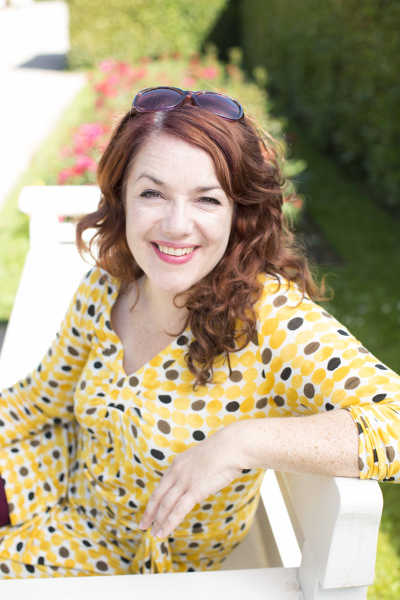
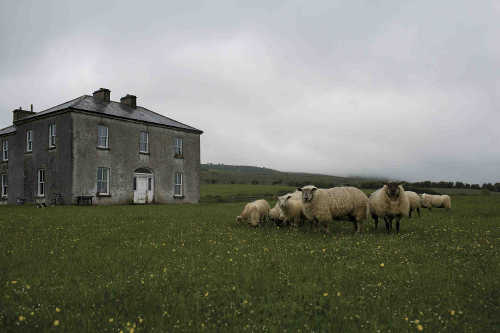 Aoife Carrigy heads off on a very unusual trip to Co Clare
Aoife Carrigy heads off on a very unusual trip to Co Clare
It’s hard to resist an invitation of tea at Father Ted’s house. Especially when it’s to be followed by lunch at the Robson family farmhouse in the heart of the Burren, prepared by ely’s executive chef Ryan Stringer and with wines, craft beers and cider specially selected by sommelier Ian Brosnan. Throw in talks from BurrenLife conservationists, the Burren Smokehouse and the Burren SPUD project and it’s no surprise we set off from ely chq with a bus full of ely staff, bloggers and journalists.
“We’ve been in business 15 years and we’ve never organised a trip to the farm, so we thought it about time,” says Erik Robson, who runs the three ely outposts in Dublin with his wife Michelle. Nestled in the rugged limestone highlands, the farm in question is run by Erik’s father Hugh, who supplies ely with organic beef and rare-breed pork.
The restaurants’ organic lamb – dubbed Craggy Island Lamb – comes from just over the hill where the Robson’s neighbour Patrick McCormack is real-life custodian of the bricks-and-mortar HQ of the ecclesiastical sitcom.
‘Careful now’ warns the sign propped at the front door. Nobody bats an eyelid at the pair of horses wandering amongst the sheep either side of the driveway. Inside, we move Mrs Doyle’s hat and an oversized rubber plate of sandwiches off the sofa before settling in for tea and homemade scones and a chat with Pat, who turns out to be a born storyteller.
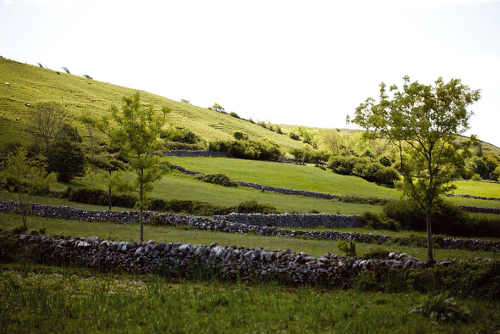 “There’s an extravagance to the Burren,” exclaims Pat, who thinks he’s the luckiest man alive to be continuing a farming legacy that dates back over 6,000 years in these very hills. Their free-draining limestone acts as “a giant radiator”, he tells us, storing the summer’s heat for the winter months when cattle are brought upland for ‘winterage’.
“There’s an extravagance to the Burren,” exclaims Pat, who thinks he’s the luckiest man alive to be continuing a farming legacy that dates back over 6,000 years in these very hills. Their free-draining limestone acts as “a giant radiator”, he tells us, storing the summer’s heat for the winter months when cattle are brought upland for ‘winterage’.
In between explaining these unique local farming practices, Pat references the Celtic philosopher John Moriarty on how a connection with the land can shape its people, and quotes American poet David Wagoner about what we lose when we lose that connection. “Stand still!” he cries with an urgency that suggests the ‘Careful now’ sign may be more than just a bit of fun.
Back on the bus and over the hill, Erik points out cattle grazing in the nook of the valley. “Where those cows are now is actually Europe’s biggest turlough,” he explains. “That stream floods the valley floor every winter and turns it into a seasonal lake.”
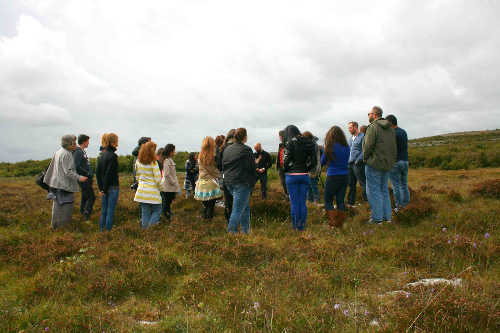 Just as well the cow’s have the rich grazing of their winterage on the hills to look forward to. And just as well for the flora of the hills too: research has shown that those winter grazing traditions play a crucial role in maintaining the biodiversity of the region. The Burren is home to three-quarters of all of Ireland's native flowers – including most of the Irish orchid species – as well as to a rich fauna.
Just as well the cow’s have the rich grazing of their winterage on the hills to look forward to. And just as well for the flora of the hills too: research has shown that those winter grazing traditions play a crucial role in maintaining the biodiversity of the region. The Burren is home to three-quarters of all of Ireland's native flowers – including most of the Irish orchid species – as well as to a rich fauna.
We take a detour to spy the web of the rare Marsh Fritillary at the BurrenLife butterfly sanctuary on the edge of the Robson farm. “We have made conservation a product,” explains Dr. Sharon Parr of BurrenLife’s Farming for Conservation project.
Under the EU Habitats Directive, Ireland is obliged to maintain the listed habitats in the Burren in 'favourable conservation status'. They do so by incentivising farmers to continue the traditional practices which have shaped the landscape over millenia. Many locals farmers are now earning more from maintaining ‘species-rich farmland’ than from the cattle which, for some, has become a ‘by-product’.
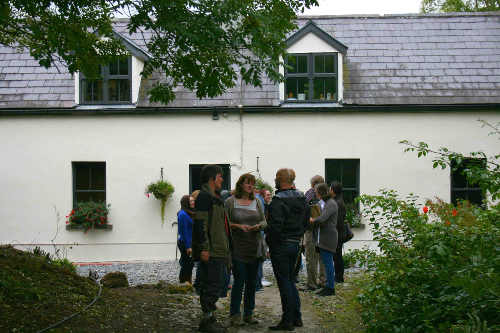 Enriched by this inspiring success story, we arrive at the whitewashed farmhouse where the smell of roast beef and porchetta wafts out to greet us. Maybe the free-range pigs caught wind of the lunch too.
Enriched by this inspiring success story, we arrive at the whitewashed farmhouse where the smell of roast beef and porchetta wafts out to greet us. Maybe the free-range pigs caught wind of the lunch too.
There’s a few matriarchal sows holding court by the main cattle shed, and a pair of pigs spooning in their pen. But the rest have escaped the idyllic tree-sheltered field they normally call home to go walkabout on the farm. Hugh is unperturbed: life is too good for them here to be gone long.
Inside the table is heaving with modern Irish farmhouse fare. There’s beetroot pickled eggs and beef tongue with black truffle. Perfectly roasted beef with pickled onions and horseradish, and porchetta cooked for 26 hours at 60ºC. Caraway-seeded goats gouda, and smoked organic salmon marinated in kombu and dillisk to umami-tastic effect.
There’s stylish wine too of course: a classic Rhone blend of Marsanne-Rousanne to start, in the form of the Yann Chave Crozes-Hermitage Blanc, followed by an elegant Spanish Syrah from Castell d’Encus in DO Costers del Segre. And there’s Orpens Irish Cider and O’Haras Curim Gold and Trouble Brewing’s Sabotage IPA. All in all, it’s a feast fit for a fifteenth birthday celebration.
We chat over lunch about the role traditional farming methods play in preserving the fragile landscape of the Burren (www.burrenlife.com), as well as the role of public art in strengthening local communities (www.x-po.ie) and of the humble spud in tackling global food security (www.deirdre-omahony.ie/public-art-projects/spud).
As the autumnal evening draws in, we bundle ourselves on the bus back to the IFSC where Oktoberfest is in full swing. The magic of ‘Burren time’ feels like a world away rather than just a few hours down the road. It’s good to know it is in the good hands of so many committed caretakers.
[Reproduced with kind permission of Food&Wine Magazine.]
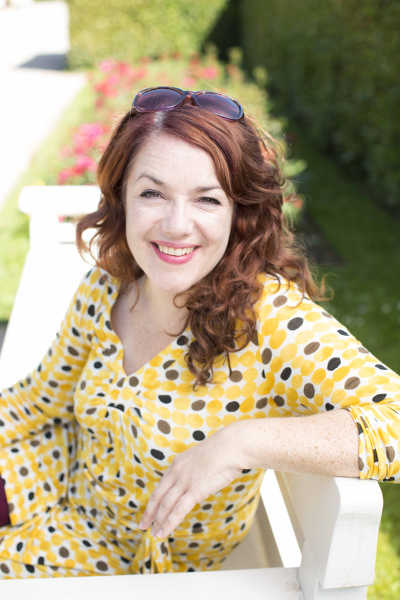 ---
---
Aoife Carrigy is a food and wine writer, editor and blogger (holymackerel.ie). She is a regular contributor to FOOD&WINE Magazine as well as writing for the likes of The Irish Independent and The Sunday Times, and she lectures in journalism at the Independent College Dublin.
Aoife was co-author of The Ard Bia Cookbook and general editor of The ICA Cookbook, The ICA Book of Home and Family and, most recently, The ICA Book of Tea & Company.
New Year, Great Start - Artisan Food Producers Growing Together
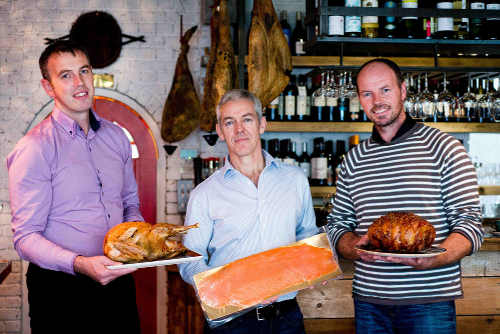
 Barbara Collins on the groundbreaking collaboration between three complementary artisan food producers in the West of Ireland
Barbara Collins on the groundbreaking collaboration between three complementary artisan food producers in the West of Ireland
Three high profile artisan food producers from the West of Ireland have joined forces to create a complementary group that will boost sales for all of their products. Castlemine Farm Shop in Roscommon has formed a partnership with Kinvara Smoked Salmon and The Friendly Farmer to provide an all-in-one hamper/basket service for customers in hotels and restaurants.
Castlemine already supply high profile restaurants in Galway such as Cava, Aniar and Eat Gastropub as well as Kai and Loam. The company is run by two brothers, Brendan and Derek Allen and they have now teamed up with Declan Droney, Kinvara Smoked Salmon and for Christmas, Ronan Byrne aka The Friendly Farmer.
Castlemine Farm produces and sources beef, lamb, pork and poultry while Ronan Byrne aka ‘The Friendly Farmer’ specialises in pasture poultry farming - chicken, turkeys, geese and ducks - from his base in Athenry.
“I always admired Castlemine farm as they share similar values of quality and customer service with Kinvara Smoked Salmon, so I am delighted with the merger. From a market point of view, both at home and in the UK, there are considerable synergies in offering a basket of West of Ireland premium products. So we really look forward to growing our combined business in the future,” says Declan Droney from Kinvara Smoked Salmon.
“Derek and I have always seen the shared economy and collaboration as a great opportunity for our business and when we met Declan first and noticed the same thinking in him we knew an opportunity existed. The merger is a fantastic step for us and particularly because each brand can continue to produce great products but the unseen elements of the business such as distribution, logistics, admin and management are shared,” says Brendan Allen of Castlemine Farm Shop.
“Mergers are something we hear about mostly from big companies. As small companies we need to consider our options for collaborating and how we can exploit new markets together as complementary groups instead of ploughing lonely furrows and thinking this is the only way,” added Brendan.
The basket includes a choice of speciality dry-cured hams, dry-aged Angus beef, handmade sausages, breakfast puddings from Castlemine Farm, pasture reared bronze turkeys or geese from The Friendly Farmer and award-winning organic Smoked Salmon from Kinvara Smoked Salmon.
---
 Barbara Collins is a BBC journalist and freelance food, travel and agricultural writer. She contributes regularly to Countryfile magazine, the Farmers Guardian, the Irish News, FFT and the Irish Mail on Sunday. She was Chief Food Writer for Flavour magazine. She is a member of both the UK and Irish Food Writers Guilds and splits her time between Belfast and Galway. Barbara also does menu consultancy and copywriting.
Barbara Collins is a BBC journalist and freelance food, travel and agricultural writer. She contributes regularly to Countryfile magazine, the Farmers Guardian, the Irish News, FFT and the Irish Mail on Sunday. She was Chief Food Writer for Flavour magazine. She is a member of both the UK and Irish Food Writers Guilds and splits her time between Belfast and Galway. Barbara also does menu consultancy and copywriting.
@thegoodchinaset
Culinary Fun and Games in Belfast and Galway
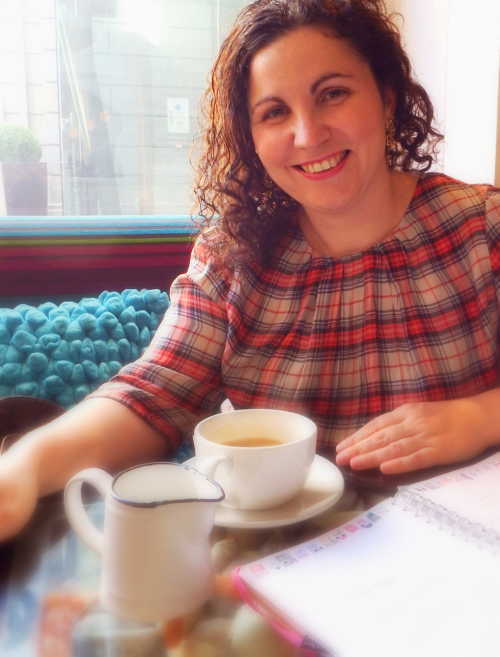
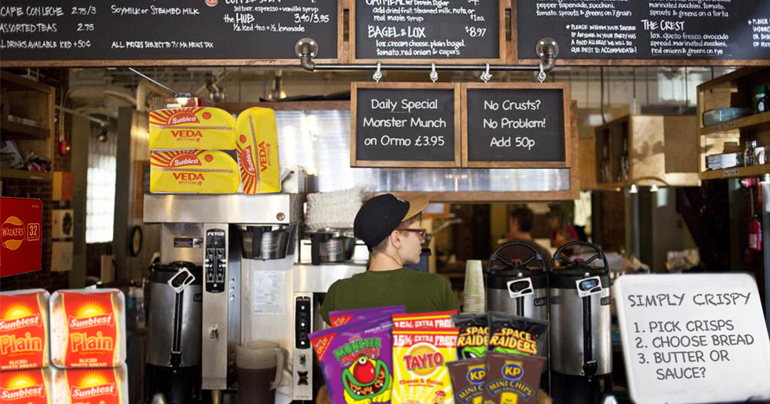 Barbara Collins looks at the way trends are going, as seen in two very different - but equally popular - restaurants…
Barbara Collins looks at the way trends are going, as seen in two very different - but equally popular - restaurants…
It’s a case of one extreme to the other when it comes to what two eateries are doing to drum up business this month. Simply Crispy Café started as a joke on a website, but when people started asking where they could get crisp sandwiches in a Belfast café it became reality.
The idea started on a spoof website, www.theulsterfrycom. They created a fictional restaurant “Simply Crispy” parodying the Cereal Café in London. According to the Ulster Fry article, this new café would offer a menu of gourmet snacks such as Tayto Cheese and Onion on sliced pan with Flora, or the more exotic Thai Sweet Chilli on Italian Granary with a splash of balsamic vinegar. The story went viral.
Within hours the story had spread across Facebook and Twitter, even attracting the interest of the BBC and Guardian food critic Jay Rayner, with many asking “is this a real thing?” Andrew McMenamin, owner of That Wee Café in Belfast City Centre, thought that it could be, and contacted the creators of the website to ask if they’d be interested in teaming up?
“When I read the article I immediately thought, we could make that joke into a reality, and got in touch. The lads at the Ulster Fry thought it would be fun, so we rebranded the café under the name ‘Simply Crispy’.”
Diners can build their own crisp sandwich and enjoy it alongside a perhaps more nutritious side order. However even those will have a Simply Crispy twist. “If you order our soup, you have the option of Monster Munch Croutons” says Andrew, “and we’ve been working on Cheesy Wotsit infused chips…” After a month-long trial, they’ve decided to keep it open.
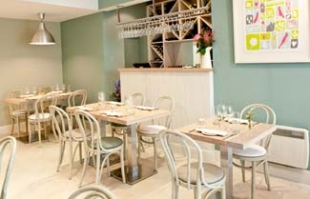 Meanwhile, over in the west, JP McMahon and Ultan Cooke of the Michelin-starred Aniar restaurant have decided to offer a cheaper Tasting Menu to entice those who might be put off by Michelin prices.
Meanwhile, over in the west, JP McMahon and Ultan Cooke of the Michelin-starred Aniar restaurant have decided to offer a cheaper Tasting Menu to entice those who might be put off by Michelin prices.
The new menu allows for 2, 4, 6, 8 and 10 courses, with a starting price point of €35 without wines. They have also extended their tasting menu to 10 courses. Two people eating together can also order a different amount of courses.
“The menu is the interface between the customer and the kitchen. Our new format allows the guest to create their own unique dining experience. This is a huge step in a new direction and it's very exciting” says Ultan Cooke.
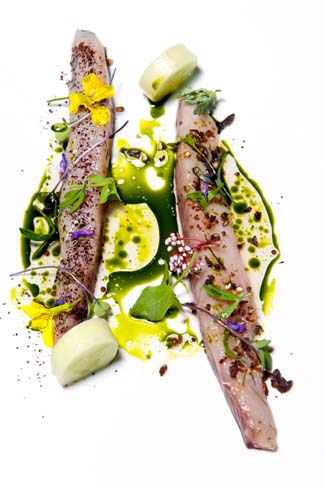 “Aniar is an open and welcoming space and the menu and food reflect that openness. The innovation that goes on in the kitchen dictated by the produce we receive each day is reflected in the ever-changing dishes on the menu” says JP McMahon
“Aniar is an open and welcoming space and the menu and food reflect that openness. The innovation that goes on in the kitchen dictated by the produce we receive each day is reflected in the ever-changing dishes on the menu” says JP McMahon
“So while pushing the boundaries and delivering a formidable full 10-course Tasting Menu, diners choosing the 2 and 4 courses will also have the same experience with wine pairings. We are seeing more and more international restaurants adapting this type of model".
North for a witty crisp sandwich or West for the excitement one of the country’s most forward-looking Tasting Menus? The choice is yours.
---
 Barbara Collins is a BBC journalist and freelance food, travel and agricultural writer. She contributes regularly to Countryfile magazine, the Farmers Guardian, the Irish News, FFT and the Irish Mail on Sunday. She was Chief Food Writer for Flavour magazine. She is a member of both the UK and Irish Food Writers Guilds and splits her time between Belfast and Galway. Barbara also does menu consultancy and copywriting.
Barbara Collins is a BBC journalist and freelance food, travel and agricultural writer. She contributes regularly to Countryfile magazine, the Farmers Guardian, the Irish News, FFT and the Irish Mail on Sunday. She was Chief Food Writer for Flavour magazine. She is a member of both the UK and Irish Food Writers Guilds and splits her time between Belfast and Galway. Barbara also does menu consultancy and copywriting.
@thegoodchinaset
2015 Year of Irish Design - Aileesh Carew

 In the first of a new series, Aileesh Carew introduces the Year of Irish Design and its importance for tourism.
In the first of a new series, Aileesh Carew introduces the Year of Irish Design and its importance for tourism.
2015 has been designated as the year of Irish design. Irish Design 2015 (ID2015) is a year-long programme which will promote and celebrate Irish design in all forms. It is an all-island initiative and will showcase the best of Irish design at home and abroad through events and exhibitions.
Design is increasingly important in tourism – it creates a sense of place – just think of Titanic Belfast, Samuel Beckett Bridge, the Aviva Stadium, it creates heritage – some of the beautiful Irish designed crafts purchased here on holiday will become family heirlooms and beautiful mementos of holidays spent in Ireland.
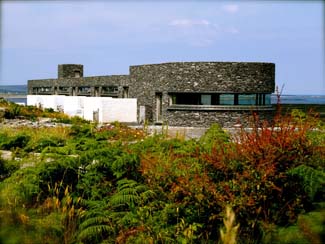 Design can have a far reaching impact on business, e.g. using interior design to create the visitor experience – think Inis Meáin Restaurant and Suites – an elemental travel experience, where every single detail is inspired by the island.
Design can have a far reaching impact on business, e.g. using interior design to create the visitor experience – think Inis Meáin Restaurant and Suites – an elemental travel experience, where every single detail is inspired by the island.
Design plays a big part in creating identity – from branding, communications, animation and guest experience design – check out the wonderful (and award winning) new brochures for Ballymaloe Cookery School – a work of art – just like the place itself.
You can immerse yourself in Irish Design as soon as you land at Dublin Airport - Design Island, a year-long photographic exhibition at Dublin Airport, celebrates the breadth of Irish creativity. In it, Irish photographer Peter Rowen captures 24 designers at work in their studios around Ireland.
Other highlights of the programme include:
The Coach House at Dublin Castle is a design hub for ID2015, showcasing Irish and international design exhibitions from partners including Design Museum London and Vitra Design Museum, Germany.
Irish Design 2015, in partnership with IBM are developing an app to bring the best of Irish Design to people exploring the island of Ireland. The app full be full of great recommendations from the design community of what to see and do in Ireland from a design perspective and will be launched in March.
Portfolio at Soloman – a beautiful gallery in the Westbury Mall showcasing the best of Irish ceramics, glass, jewelry and furniture throughout the year.
A “Celebrate Your Local Design Hero” initiative will encourage local libraries to celebrate designers from their local area through events, workshops or mini festivals.
A design innovation fund will see the initiation of a diverse range of projects such as workshops, conferences and events which will have a strategic impact on the development of supports for design companies and SMEs across the island of Ireland.
The work of Irish designers will be presented at international events such as Milan and Dutch Design Weeks, London Festival of Architecture, London and Paris Fashion Weeks, London Design Festival, Chicago Architecture Biennial and Bi-City Biennale of Urbanism/Architecture in Hong Kong/Shenzhen
Design Challenges will take place during the year where Irish designers will work with communities to develop solutions to design needs or opportunities for improvement
Many tourism businesses are already seeing the benefit of good design and we hope the Year of Irish Design will foster this dialogue and engagement with design and designers.
ID2015 is delighted that the inaugural Irish Tourism Industry Awards have included a special award to highlight good design in Tourism. For more information www.irishtourismindustryawards.ie/categories/
Irish Design 2015 partners include Founding Partner - MCO Projects; Accommodation Partner - The Doyle Collection; Venue Partner - OPW; Exhibition Partners – DAA. Technology Partner - IBM
An overview of the core programme of events can be found at www.irishdesign2015.ie
Aileesh Carew is the Tourism Advisor for Irish Design 2015. Her role is to provide advice and management of the tourism programme for the year of Irish design 2015, to communicate and animate interest in the Year of Design – nationally & internationally - and engage with tourism industry partners to raise awareness for Irish Design 2015. She has spent most of her career managing hotels, most recently opening Ballyfin Demesne in Co Laois, putting it on the international map as one of the best small hotels in Europe. A graduate of Shannon College of Hotel Management, with an MBA from Copenhagen Business School and Business Management Coaching from Scandinavian Leadership, she loves to travel, read cookery books, occasionally cooking from them, eat out and spend time with her family.
www.facebook.com/Irishdesign2015
@irishhdesign2015
instagram.com/irishdesign2015
Use Design in Your Business

 This is the Year of Irish Design and, continuing her fascinating series on the opportunities that good design can bring to Irish food and tourism businesses, AILEESH CAREW focuses on a very famous - and illuminating - example.
This is the Year of Irish Design and, continuing her fascinating series on the opportunities that good design can bring to Irish food and tourism businesses, AILEESH CAREW focuses on a very famous - and illuminating - example.
Design opens up valuable opportunities for businesses. Its importance is often underestimated, but good design can bring some significant business benefits. Research in 2013 from the Design Council UK states that for every €1 invested by a business in design generates over €20 euro in increased revenues.
The effective use of design gives customers a reason for buying from you and not from your competitors. It's a valuable source of differentiation - a well-designed product or service will stand out from the competition. Customers are often willing to pay more for well-designed products that can offer benefits such as greater usability, increased functionality and improved aesthetics.
This article explores some of the benefits Ballymaloe Cookery School has seen from investing in re-design of their brochure.
First things first – why would a well-established business feel the need to invest in a new brochure? At Ballymaloe Cookery School it was felt that the brochure needed a fresh new look to bring it up to date and it needed to be more interesting and attract attention – “something that people would be drawn to and pick up”.
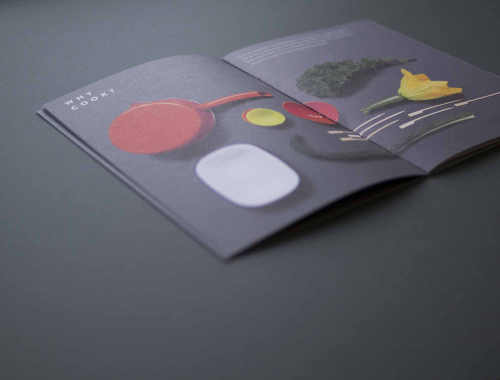 The brief to John Gavin of True Output was to ensure that images and text communicate the history of the school, that the Cookery School is both traditional and cutting edge and that Ballymaloe Cookery School is “more than just cooking... it’s all aspects of the world of food”. The brochure also had to have a practical function and clearly present the schedule information, list other Ballymaloe events and activities and direct readers to the website.
The brief to John Gavin of True Output was to ensure that images and text communicate the history of the school, that the Cookery School is both traditional and cutting edge and that Ballymaloe Cookery School is “more than just cooking... it’s all aspects of the world of food”. The brochure also had to have a practical function and clearly present the schedule information, list other Ballymaloe events and activities and direct readers to the website.
Having been lucky enough to visit the school last December I can personally say I was in awe of the culture of excellence in everything they do, but more than that – there is a great energy there – the passion for the ingredients and turning them into wonderful meals, celebrating food and good living, emphasis on teaching and generosity in everything that they do.
I asked John how he went about capturing life at Ballymaloe Cookery School and the passion within. He started by spending time at the school to truly understand the design brief.
“The concept of the brochure is based around taking an inventory of the utensils, objects and ingredients students would encounter if they enrolled on a course. We went to the school, styled and photographed a broad range of objects and produce in grouped scenarios. The use of a restrained utilitarian typography style echoed the recipes, kitchen lists and technical information found at the school.”

Has it made business sense?
Feedback from Toby Allen at Ballymaloe Cookery School is very positive and according to him re-design of the brochures has supported their overall business aims. Some of the benefits seen are:
• “The design solution has helped raise our visual profile and aligns more closely to what the cookery school is all about.”
• “The clarity of the structure and layout of the information means our clients can digest and understand everything in an easier manner.”
• “The brochure helps drive more traffic to the website where there is additional information and booking facility available.”
• “The work carried out has given us more options for communicating. We now have a full brochure and also a mini folding brochure which is more cost effective to print and distribute.”
• “The visual look has helped us to easily integrate it into other marketing materials and advertising while maintaining a strong coherence across all our communications.”
The resulting brochure is timeless, the photography is beautiful and it is a brochure that captures both the history, passion and development of the Ballymaloe cookery school. Seeing the benefits realised so quickly demonstrates in this case that design does matter.
True Output: www.true-output.com
Ballymaloe Cookery School: www.ballymaloecookeryschool.ie
* ID2015 is delighted that the inaugural Irish Tourism Industry Awards have included a special award to highlight good design in Tourism. For more information http://www.irishtourismindustryawards.ie/categories/
* Irish Design 2015 partners include Founding Partner - MCO Projects; Accommodation Partner - The Doyle Collection; Venue Partner - OPW; Exhibition Partners – DAA. Technology Partner - IBM
An overview of the core programme of events can be found at www.irishdesign2015.ie

Aileesh Carew is the Tourism Advisor for Irish Design 2015. Her role is to provide advice and management of the tourism programme for the year of Irish design 2015, to communicate and animate interest in the Year of Design – nationally & internationally - and engage with tourism industry partners to raise awareness for Irish Design 2015. She has spent most of her career managing hotels, most recently opening Ballyfin Demesne in Co Laois, putting it on the international map as one of the best small hotels in Europe. A graduate of Shannon College of Hotel Management, with an MBA from Copenhagen Business School and Business Management Coaching from Scandinavian Leadership, she loves to travel, read cookery books, occasionally cooking from them, eat out and spend time with her family.
www.facebook.com/Irishdesign2015
@irishhdesign2015
instagram.com/irishdesign2015
What's on in April
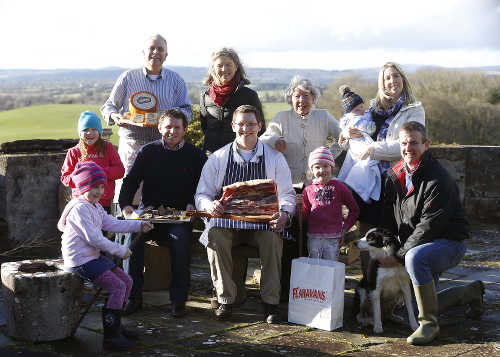

Festival season well and truly ignited this month, with the fourth annual Galway Food Festival kicking things off last weekend over the Easter bank holiday weekend. The five-day festival celebrated all things foodie in Galway and by all accounts was as successful, if not more, than previous years.
Next on the calendar, we travel south east to the coastal town of Dungarvan and surrounding countryside for the West Waterford Festival of Food, taking place from Thursday 9th to Sunday 12th April and celebrating eight successive years.
Following on last year’s theme of ‘Pioneering Women in Irish Food’, the theme of this year’s festival is ‘Generations in Irish Food’. Focusing on the rich family tradition of food on the island, the festival will shine a spotlight on some of our home-grown heroes and the generations of families who continue to produce, cook, sell and run some of Ireland’s greatest and best-loved restaurants and food businesses.
One of the key events of the programme will be hosted in Dromana House, which incredibly this year celebrates 800 years of ownership by the same family, and is created by local chef (and regular contributor to our ezine) Eunice Power as a tribute to local West Waterford food families.
Called ‘Celebrating Generations of West Waterford Food Stories’, Eunice’s menu celebrates the food stories of the McGraths, Flahavans, and Barrons by showcasing not just the continuing history and narrative of these family businesses, so important in the region, but their delicious ingredients too!
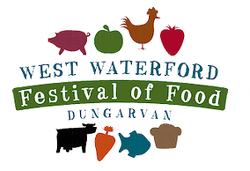 Other festival highlights include:
Other festival highlights include:
• The legendary Darina Allen and her equally talented brother Rory O’Connell of Ballymaloe Cookery School, giving their unique family insight into the food story of Ireland.
• ‘The Emerging Generation’ series of demonstrations from up-and-coming members of established food families features the next generation cooking, as the older generation lends a hand, with Jack & Tim McCarthy, the award-winning butchers from Kanturk, Richard and Duncan Blair (and their mother!) of Georgina Campbell’s Pub of the Year 2014, Blairs Inn, and charcuterie master Frank Krawczyk with his talented son, chef Rob Krawczyk, who will demo together for the first time with the title Charcuterie from Father to Son.
• The Tannery continues as a cornerstone of the festival as they host tasting menus on Friday and Saturday called ‘Generations of Food Producers’, and on Sunday they host a duck feast for lunch, in association with Silverhill, the internationally-renowned family business of duck producers.
• The hugely popular Farmer’s Market will held in the main square on Sunday 12th.
• Busanna Bia will return, with three different routes this year, giving festival goers the opportunity to visit as many producers as possible on each route.
• Visitors can expect bike buffets, seaweed seminars, 50 Shades of Tae, Irish craft in a glass which offers a series of opportunities to taste and learn about the increasingly popular craft beer, gin, cider and whiskey of Ireland, and much more!
Tickets are on sale now, visit waterfordfestivaloffood.com.
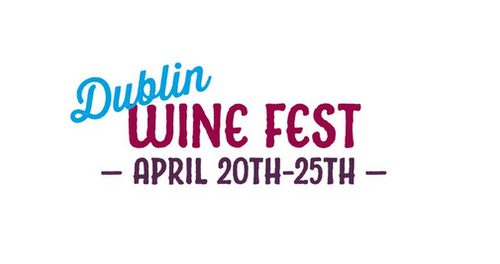 The final festival in April takes us back to the capital for the inaugural Dublin Wine Fest from Monday 20th to Sunday 25th April. This is one of five new city-wide festivals from Great Irish Beverages – a celebration of the exciting range of drinks that the best Dublin bars, restaurants and hotels serve today.
The final festival in April takes us back to the capital for the inaugural Dublin Wine Fest from Monday 20th to Sunday 25th April. This is one of five new city-wide festivals from Great Irish Beverages – a celebration of the exciting range of drinks that the best Dublin bars, restaurants and hotels serve today.
Twenty-five of the city’s best bars and restaurants came on board for the first two festivals from Great Irish Beverages, Dublin Cocktail Fest (October 13th–18th) and the more recent Dublin Whiskey Fest (February 16th–21st). Plus, later this year sees a further two festivals – the Dublin Gin & Tonic Fest in June and Dublin Cider Fest in August.
The Dublin Wine Fest works in a similar way to a music festival in that festival-goers buy a wristband for the event, which costs €5 – from participating venues or www.Entertainment.ie – and gets you a 30% discount on at least two festival wines at more than 20 Dublin bars and restaurants.
Each bar/restaurant will also offer a ‘Dublin Wine Experience’ for the week of the festival to complement their festival wines. This might be an aperitivo hour (e.g. 5pm-7pm), featuring a wine-based cocktail; it might be a flight of wines; or maybe wine with a tapas-sized food pairing etc. Festival-goers will vote online for the festival’s ‘Best Dublin Wine Experience’, with a cash-prize for the winning venue.
Participating venues will be promoted in neighbourhood and transport-based hubs (e.g. Georgian Dublin; Luas, etc.) to encourage festival-goers to engage in self-guided wine trails – the aim being to experience each venue in a new way and encourage return visits, rather than simply promoting cut-price drinking.
Participating venues include: Ely HQ, Ananda, Balfes, The Butcher Grill, Camden Kitchen, Chameleon, Coppinger Row, Diep le Shaker, Drury Buildings, Dunne & Crescenzi, ely winebar, Fade St Social, l’Gueuleton, Koh, l’Officina, Rock Lobster, Rustic Stone, Stanley’s Restaurant & Wine Bar, Super Miss Sue, Tribeca Winebar, The Woollen Mills and more.
Follow all activity for the event and future ones at www.facebook.com/GreatIrishBeverages or on Twitter @IrishBeverages. Look out for #DublinWineFest for all festival news, including details of the Dublin Wine Experience offering from each participating venue.
---
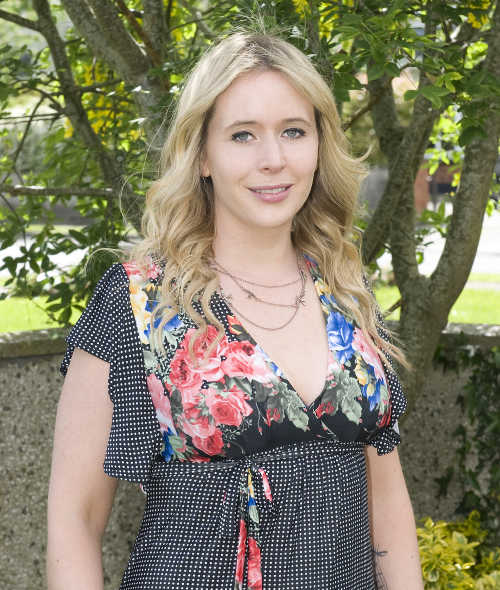 Dee Laffan is a freelance food writer and editor. Formerly editor of Easy Food magazine, she has written for the Irish Independent and Sunday Independent. She is a proud supporter of Irish producers and their products, and takes part in judging for food competitions including Blas na hÉireann and the Great Taste Awards. She is a member of the Irish Food Writers' Guild and secretary for Slow Food Dublin. Twitter @deelaffan
Dee Laffan is a freelance food writer and editor. Formerly editor of Easy Food magazine, she has written for the Irish Independent and Sunday Independent. She is a proud supporter of Irish producers and their products, and takes part in judging for food competitions including Blas na hÉireann and the Great Taste Awards. She is a member of the Irish Food Writers' Guild and secretary for Slow Food Dublin. Twitter @deelaffan
Belfast Beer Festival
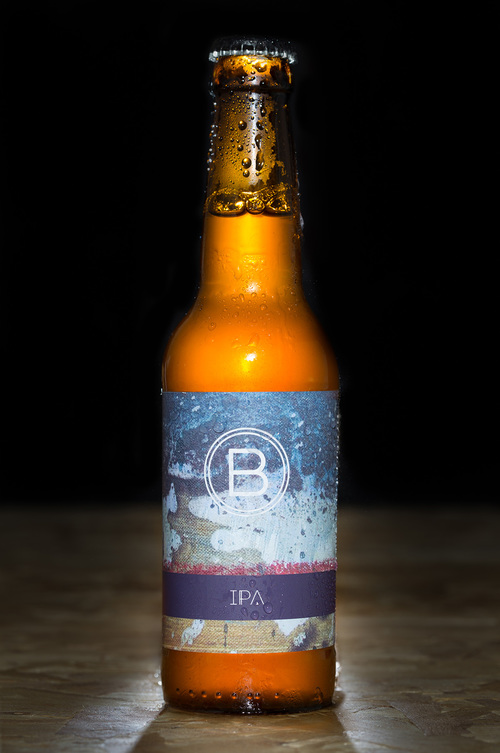
 Barbara Collins
Barbara Collins
Craft breweries are springing up all over the place these days. This Bank Holiday weekend 22-23 May the historic Titanic Drawing Offices will be the venue for a festival to celebrate the best in Northern Ireland and beyond.
Michael Kerr is part of the team of four behind ABV Fest 15. He owns the Belfast-based Boundary Brewing Co-Operative.
“The local beer scene is rapidly changing...for the better! People want more than just a pint. They want quality and choice. Local pubs and off-licences are increasing the range of beer they offer. The number of independent breweries here has more than tripled in a decade.
“We believe that a growing local beer scene needs an innovative beer festival. That's how ABV Fest came to be. We wanted to create a space where the vast range of beer styles being brewed right now could be showcased.”
Beer and cider producers from Ireland and the UK will be attending. The festival will go on for three days with a range of special tastings planned.
“The speed at which tickets have been selling tells us something. Belfast has been crying out for a different kind of beer festival; a festival where not drinking the same thing twice is to be encouraged. It will be a festival where great beers can be sipped, shared, talked about and debated in the company of some of those who create them.”
Admission: £12 per session / £30 weekend pass available at www.abvfest.com • Full beer list and prices to be announced online • Follow @abvfest for the latest news
---
 Barbara Collins is a BBC journalist and freelance food, travel and agricultural writer. She contributes regularly to Countryfile magazine, the Farmers Guardian, the Irish News, FFT and the Irish Mail on Sunday. She was Chief Food Writer for Flavour magazine. She is a member of both the UK and Irish Food Writers Guilds and splits her time between Belfast and Galway. Barbara also does menu consultancy and copywriting.
Barbara Collins is a BBC journalist and freelance food, travel and agricultural writer. She contributes regularly to Countryfile magazine, the Farmers Guardian, the Irish News, FFT and the Irish Mail on Sunday. She was Chief Food Writer for Flavour magazine. She is a member of both the UK and Irish Food Writers Guilds and splits her time between Belfast and Galway. Barbara also does menu consultancy and copywriting.
@thegoodchinaset
What can Irish Design do for Tourism?
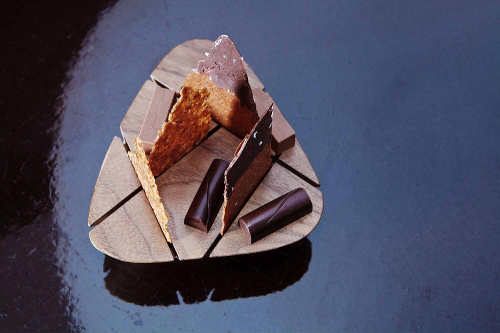
 In the latest of her series on the Year of Irish Design and its importance for tourism, Aileesh Carew explores the developing role of design in food.
In the latest of her series on the Year of Irish Design and its importance for tourism, Aileesh Carew explores the developing role of design in food.
This month my focus turns to design in food and the fast changing landscape. Cutting-edge chefs, kitchen brands, restaurateurs and supermarkets are increasingly turning to designers to give their offerings added cultural relevance and commercial appeal.
Irish Design 2015 has just returned from a very successful exhibition in Milan, where for the first time over 20 designers exhibited their work in the capital of design. From a food perspective, one very interesting inclusion was the collaboration between Designgoat and Katie Sanderson.
They have developed a collection of objects that was used to serve a collaborative dinner inspired by Irish food, the sea and raw ingredients. The aim is to create an experience that will be developed throughout 2015, growing with each show. The tableware for each dish is influenced by the process of preparing the food, the ingredients used and how the designers and the chef would like people to experience it.
Food is no longer merely about the simple act of eating and the pure experience of smell and taste. New trends and materials have led to unique opportunities for food businesses to work with the designers of today to enhance and elevate the culinary experience by speaking to our minds as well as our stomachs. Engaging all our senses in a holistic culinary experience is becoming more commonplace.
In recent years we have seen a new set of values emerging that prizes the local and the hand-crafted over the homogenous and the manufactured. The notion of provenance – where something comes from – has become highly important in restaurants, with people expecting transparency about the origin of goods and ingredients.
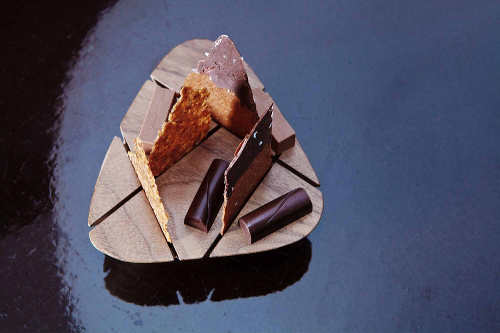 The next step in this journey will be provenance in the design of the experience. It is no surprise that Ross Lewis is leading the way. Last year he gave Designgoat the task of designing a new plate for his petit fours. He wanted this piece to reflect the modernity of his restaurant but still retain a sense of being natural and Irish.
The next step in this journey will be provenance in the design of the experience. It is no surprise that Ross Lewis is leading the way. Last year he gave Designgoat the task of designing a new plate for his petit fours. He wanted this piece to reflect the modernity of his restaurant but still retain a sense of being natural and Irish.
They did this by creating an organic form that was CNC'd from solid walnut. Serving the stunning looking petit fours on this plate is a piece of theatre designed to serve as a memorable last act in the dining experience.
With all this in mind, I am really looking forward to Irish Design 2015’s next exhibition – Appetite for Design – in the National Craft Gallery in Kilkenny, running from May 9th to June 30th.
Curated by Designgoat, the exhibition explores the very best in food design and builds on the increasing global recognition of outstanding Irish produce from coast to coast, and seabed to soil.
The work of leading Irish and international designers, cooks and restaurateurs will be featured, documenting, discussing and speculating about the design of food and our experience of it. Examples of the aesthetics, promotion, communication and representation of food will be showcased, along with the equipment and tools used to prepare and consume it.
Featured work will include Bompas & Parr, Marije Vogelzang, Omer Polek, The Decorators, Chapter One and Loam.
To enrich the experience of the exhibition, a series of culinary evenings and performances will be hosted by Godless Domestic, Dublin Pop-up, Culinary Counter and Tom Spruce. For similar events, check out Litfest at Ballymaloe in May, where the theme of design in food will also be explored.
http://www.irishdesign2015.ie/liminal/
http://www.irishdesign2015.ie/programme/single/appetite-for-design
http://wearedesigngoat.com/
* ID2015 is delighted that the inaugural Irish Tourism Industry Awards have included a special award to highlight good design in Tourism. For more information http://www.irishtourismindustryawards.ie/categories/
* Irish Design 2015 partners include Founding Partner - MCO Projects; Accommodation Partner - The Doyle Collection; Venue Partner - OPW; Exhibition Partners – DAA. Technology Partner - IBM
An overview of the core programme of events can be found at www.irishdesign2015.ie

Aileesh Carew is the Tourism Advisor for Irish Design 2015. Her role is to provide advice and management of the tourism programme for the year of Irish design 2015, to communicate and animate interest in the Year of Design – nationally & internationally - and engage with tourism industry partners to raise awareness for Irish Design 2015. She has spent most of her career managing hotels, most recently opening Ballyfin Demesne in Co Laois, putting it on the international map as one of the best small hotels in Europe. A graduate of Shannon College of Hotel Management, with an MBA from Copenhagen Business School and Business Management Coaching from Scandinavian Leadership, she loves to travel, read cookery books, occasionally cooking from them, eat out and spend time with her family.
www.facebook.com/Irishdesign2015
@irishhdesign2015
instagram.com/irishdesign2015
Word from the West
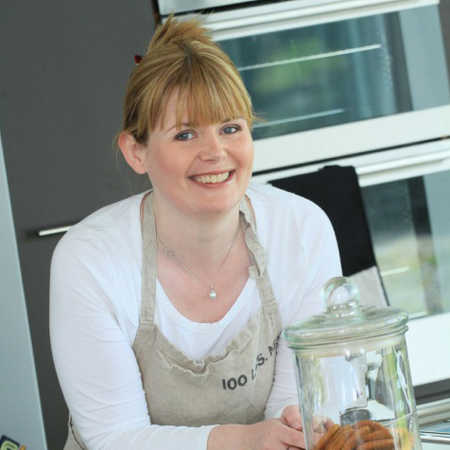
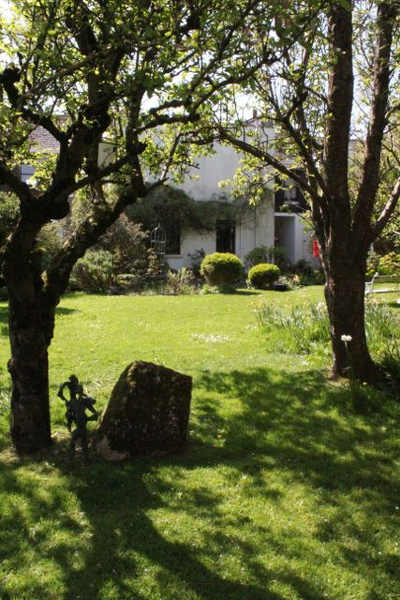 West of Ireland food writer Anne Marie Carroll introduces an unlikely new farm, right in the heart of Galway city
West of Ireland food writer Anne Marie Carroll introduces an unlikely new farm, right in the heart of Galway city
A group of snails can be referred to as a rout, escargatoire or a walk of snails. How fitting then, that a leafy courtyard on Galway’s famous ‘Long Walk' should be the romantic setting for Galway’s newest farm.
Dubbed the ‘chicken of the soil’ by snail devotees who love its low fat content, and traditionally thought of as continental delicacy particular to France, it seems snails are trailing their way across the Channel. The much maligned mollusc is suddenly a restaurant menu must-have.
Roasted snail shells have been found in archaeological excavations, an indication that snails have been eaten since prehistoric times. In several parts of the ancient world snails were eaten frequently.
The Romans, in particular, are known to have considered escargot as an elite food. Heliciculture, commonly known as snail farming, is the process of raising land snails specifically for human consumption, either to use their flesh as edible escargot, their eggs as a type of caviar, or more recently, to obtain snail slime for use in cosmetics.
It's no surprise that snails are related to other animals with an obvious shell, like clams, mussels and oysters, but they're also related to squid and octopuses. They all belong to a group of highly varied animals called molluscs. The first snail-like mollusc lived millions of years ago on the seafloor. Some moved onto land and began breathing with lungs instead of gills.
They found terrestrial life quite to their liking. Land snails now live just about everywhere from deserts to tropics, from sea level to mountain tops, and in all parts of the world with the exception of Antarctica, and who would want to live there? Living quiet lives under the cover of darkness, land snails have done well for themselves. Together with their water snail cousins, they are number two on the list of most species on earth, second only to insects.
One explanation for the much higher esteem in which they are held in Catholic countries such as France, Italy and Spain, is that in the days of regular religious fasting, snails were not classed as meat and could be eaten along with fish at those times.
Closer to home, snails are now resolutely on British menus. Heston Blumenthal famously makes a signature dish of snail porridge. But is there a market in Ireland for these delicacies? Eoin Coyle, a chef and native of the Long Walk certainly thinks so.
Ireland’s only other snail farm, Gaelic Escargot in Co Carlow, has been growing at a tremendous rate and plans to export tonnes of this European delicacy in the next few years. Demand in Italy averages around 194 million tonnes each year, while in France, it is 115 million tonnes. Neither country produces anywhere near enough to meet their own needs.
France in particular, the country synonymous with escargot, has to import most of its snails from Eastern Europe. The problem is moisture. Snails thrive in mild temperatures and damp environments, and so Galway, as famous for its plentiful rain as the Cote d’Azur is for its sunshine, must indeed be a snail farmers paradise.
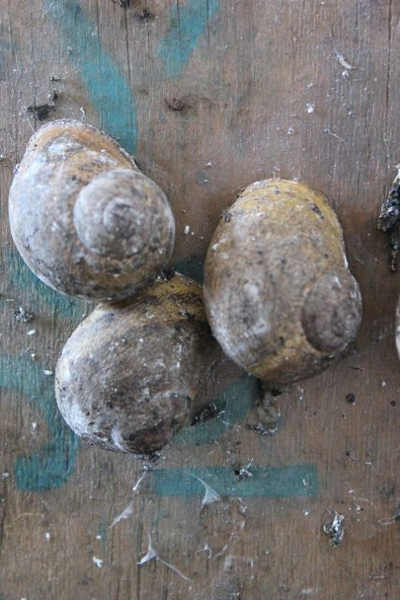 The development of the Galway snail has four cycles. The first is the mating and egg laying stage, which begins in February. Next comes the incubation and hatching of eggs. The infant snails then make their way to the surface of the soil in their specially adapted boxes. They spend weeks feasting on a mixture of fresh vegetables and a calcium supplement to develop to full size. Eoin describes them as having “the texture of abalone with a flavour of the forest floor”.
The development of the Galway snail has four cycles. The first is the mating and egg laying stage, which begins in February. Next comes the incubation and hatching of eggs. The infant snails then make their way to the surface of the soil in their specially adapted boxes. They spend weeks feasting on a mixture of fresh vegetables and a calcium supplement to develop to full size. Eoin describes them as having “the texture of abalone with a flavour of the forest floor”.
A newborn's shell size depends on the egg size, since the shell develops from the egg's surface membrane. As the snail grows, the shell is added on in increments. Eventually the shell will develop a flare or reinforcing lip at its opening.
This shows that the snail is now mature and there will be no further shell growth. Aged one week old, they weigh as little as 20mg each, but can be grown to 20g in five months, a 1,000-fold weight gain. From a farmer’s point of view, there is great productivity in snails.
For export, the snails are hibernated by dropping the temperature to less than 5 degrees celsius. While the Carlow snails are grown mainly for export, their Galway brethren have a different future in store. Eoin would like to develop a market for them in Ireland. Starting off with a small amount of breeders at the beginning of April - they expect to have their first edible crop of snails in October.
While Ireland’s appetite for escargot may be very much in its infancy, Galway has more than its fair share of progressive chefs who have already shown an interest in cooking with this new local ingredient. It is an area just waiting for local, fresh escargot to capitalise on Galway’s growing image as the food capital of Ireland. Escargot, it would seem, is catching on at more than a snail’s pace.
--
 Anne Marie Carroll is a freelance food writer and member of the Irish Food Writers’ Guild who lives in Galway with her husband and two children.
Anne Marie Carroll is a freelance food writer and member of the Irish Food Writers’ Guild who lives in Galway with her husband and two children.
With a background in design and illustration, Anne Marie made the switch to journalism with a regular food and wine column in The Galway Advertiser. Her work now mainly focuses on restaurant reviews, writing and editing recipes, the development of food photo shoots, including styling and photography. She also writes for a number of other publications and works as a consultant for small producers, food retailers and restaurants.
Anne Marie writes about all things food from the West of Ireland at her blog, Warm & Snug & Fat. You can also find her on twitter as @Biscuits4ABear
Taste of Ulster TV
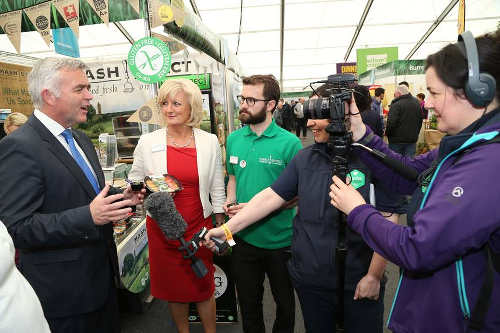
 Barbara Collins, who is Channel Editor of Taste Of Ulster TV, introduces this exciting new resource
Barbara Collins, who is Channel Editor of Taste Of Ulster TV, introduces this exciting new resource
Jamie Oliver’s done it with Food Tube, now Taste of Ulster/Food NI has launched a brand new digital channel which showcases the very best of Northern Ireland food and drink.
The channel was launched by the Agriculture Minister, Michele O’Neill at this year’s Balmoral Show in the Food Pavilion. Among the first subscribers were the Secretary of State, Theresa Villiers, the Enterprise Minister, Jonathan Bell, NI Food Ambassador James McIntosh and Howard Hastings of Hastings Hotels and Tourism NI.
“We’re really excited about this. Nothing tells a story like pictures and there are so many food and drink stories to be told now,” says Michele Shirlow, CEO of Food NI.
The channel broadcasts twice a week on Sundays and Wednesdays. There are step-by-step recipes that you can recreate in your own kitchen. The stories of the hero ingredients in those recipes are also being told.
The crew has already been to Broughgammon to see how they rear goat kid meat and rose veal. There’s also been filming done inside Peter Hannan’s Himalayan Salt Chamber and at Irwin’s in Portadown where they make the iconic Nutty Krust batch loaf.
Carl Johannesson, Head Chef at James Street South Bar and Grill is in the studio kitchen, accompanied by Leona Kane of Broighter Gold Rapeseed Oil and Stephen Chisholm, winner of the Great Irish Bake Off, 2013. Stephen bakes at Oliver’s Coffee Bar in East Belfast and he’s rolling the dough for Taste of Ulster TV too.
Whet your appetite by searching for Taste of Ulster TV on You Tube. It’s free to subscribe. Just click on the Subscribe button on You Tube. If you click on the sun icon you can also get updates to your inbox.
www.youtube.com/watch?v=2OjNwZrZpgk
---
 Barbara Collins is a BBC journalist and freelance food, travel and agricultural writer. She contributes regularly to Countryfile magazine, the Farmers Guardian, the Irish News, FFT and the Irish Mail on Sunday. She was Chief Food Writer for Flavour magazine. She is a member of both the UK and Irish Food Writers Guilds and splits her time between Belfast and Galway. Barbara also does menu consultancy and copywriting.
Barbara Collins is a BBC journalist and freelance food, travel and agricultural writer. She contributes regularly to Countryfile magazine, the Farmers Guardian, the Irish News, FFT and the Irish Mail on Sunday. She was Chief Food Writer for Flavour magazine. She is a member of both the UK and Irish Food Writers Guilds and splits her time between Belfast and Galway. Barbara also does menu consultancy and copywriting.
@thegoodchinaset
What can Irish Design do for Tourism?
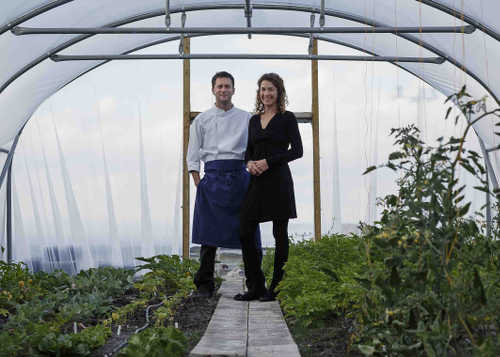
 In the latest of her series on the Year of Irish Design and its importance for tourism, Aileesh Carew highlights the award for Design in Tourism at the inaugural Irish Tourism Awards.
In the latest of her series on the Year of Irish Design and its importance for tourism, Aileesh Carew highlights the award for Design in Tourism at the inaugural Irish Tourism Awards.
In April, I was honoured to be involved in the inaugural Irish Tourism Awards, where the award for Design in Tourism went to Inis Meáin Restaurant and Suites. The judges’ comments described the remote destination as a high quality, genuinely Irish experience, attributes that are carried through in every detail, from the building itself to the food and services offered, the company’s website and their communications strategy.
This was a product that someone would travel half way around the world to enjoy. Inspired by their enthusiasm, I decided I had to try it myself and planned that my family and I would visit this summer. Imagine my surprise to find there were just two rooms available for the remainder of the season and, thanks to my husband’s GAA commitments, neither date suited, so it is now on the bucket list and I am eagerly awaiting the opening of their 2016 booking calendar.
The website is exquisite and convincingly sells a not inexpensive product, especially as there is a minimum stay of two nights required. In light of this example of the evident benefits that good design can bring to a business, this month’s article will explore the benefits of design to the hotel sector.
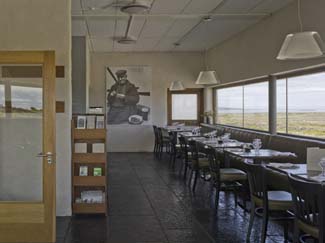 In a crowded market, design is an invaluable tool to differentiate one hotel from another and help guests make a choice. Guests are often willing to pay extra for good design. “The importance of individuality can make a big difference to your profit margin,” explained a spokesperson of Furniture Realm in a recent article on www.hotel-industry.co.uk. “Your clients are looking for that something special that appeals to them. It is vital for you to show them you are not a pack animal following the crowd - dare to be different!”
In a crowded market, design is an invaluable tool to differentiate one hotel from another and help guests make a choice. Guests are often willing to pay extra for good design. “The importance of individuality can make a big difference to your profit margin,” explained a spokesperson of Furniture Realm in a recent article on www.hotel-industry.co.uk. “Your clients are looking for that something special that appeals to them. It is vital for you to show them you are not a pack animal following the crowd - dare to be different!”
I interviewed Marie-Thérèse, one of the owners of Inis Meáin, on her background and experience of design in their business. Over the course of a very interesting conversation, she told me that the business was inspired by their desire to live on the beautiful island of Inis Meáin and the need to create a business there. Her husband Ruairí is the chef (and if I need another reason to lure my husband away from the GAA, the restaurant was selected as one of the 12 Best Restaurants (worldwide) by Nicholas Lander of the Financial Times in 2011).
 Inis Meáin Restaurant & Suites was created by Marie-Thérèse and Ruairí de Blacam with the aim of enabling guests to best experience their unique location. Eight years ago, Marie- Thérèse and Ruairí felt the market on Inis Meáin was already was well serviced with B&Bs and they needed to create something different.
Inis Meáin Restaurant & Suites was created by Marie-Thérèse and Ruairí de Blacam with the aim of enabling guests to best experience their unique location. Eight years ago, Marie- Thérèse and Ruairí felt the market on Inis Meáin was already was well serviced with B&Bs and they needed to create something different.
Luckily, they both had a keen interest in design and wanted to do something very special and unique. What has been established has been born out of love, dedication, vision and lots of hard work. With such a short season, the couple double-jobbed for many years to make ends meet while they built up the business.
Their hard work has certainly paid off - the Aran Islands are already listed as a place of great natural beauty in every guidebook to Ireland, but this very special place has attracted travellers to the region who would never have heard of it or considered coming if it were not for such incredible accommodation and restaurant. As testament to the quality of their design offering, many of the guests are from the creative industry.
What makes this establishment so special, and differentiates it from all of the beautiful boutique hotels that have sprung up worldwide, is its contact with nature and a design ethos that suits its location.
According to the owners, every last detail comes from the surroundings – as just one example, the pattern in the stone walls inspired the logo of the business. Architect Shane de Blacam really understood the terrain and designed a place that would allow guests to truly engage with the spectacular landscape.
--
http://www.irishdesign2015.ie/liminal/
http://www.irishdesign2015.ie/programme/single/appetite-for-design
http://wearedesigngoat.com/
* ID2015 is delighted that the inaugural Irish Tourism Industry Awards have included a special award to highlight good design in Tourism. For more information http://www.irishtourismindustryawards.ie/categories/
* Irish Design 2015 partners include Founding Partner - MCO Projects; Accommodation Partner - The Doyle Collection; Venue Partner - OPW; Exhibition Partners – DAA. Technology Partner - IBM
An overview of the core programme of events can be found at www.irishdesign2015.ie

Aileesh Carew is the Tourism Advisor for Irish Design 2015. Her role is to provide advice and management of the tourism programme for the year of Irish design 2015, to communicate and animate interest in the Year of Design – nationally & internationally - and engage with tourism industry partners to raise awareness for Irish Design 2015. She has spent most of her career managing hotels, most recently opening Ballyfin Demesne in Co Laois, putting it on the international map as one of the best small hotels in Europe. A graduate of Shannon College of Hotel Management, with an MBA from Copenhagen Business School and Business Management Coaching from Scandinavian Leadership, she loves to travel, read cookery books, occasionally cooking from them, eat out and spend time with her family.
www.facebook.com/Irishdesign2015
@irishhdesign2015
instagram.com/irishdesign2015
Word from the West
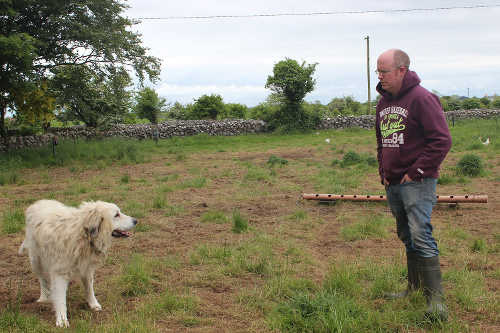
 This month Anne Marie Carroll introduces some very special East Galway dogs - livestock guardian dogs are an ancient solution to a common farming problem.
This month Anne Marie Carroll introduces some very special East Galway dogs - livestock guardian dogs are an ancient solution to a common farming problem.
Traditionally in Ireland, the working farm dog has always been the Border Collie and this is still the case today. The black and white pooches with their low, loping stride are still a familiar sight on the back roads and laneways of the countryside moving their woolly charges from one pasture to the next.
Other ‘herding breeds’ are occasionally used, such as the New Zealand Huntaway and the Australian Kelpie. A well trained dog with the right temperament is worth its weight in gold to a farmer.
In 2007, Ronan Byrne returned to the family farm outside Athenry in East Galway, from Poland, where he had managed a large scale dairy farm. He had grown up on these 35 acres, which once belonged to his grandparents.
He switched to an ‘open pasture’ method of farming in an attempt to redress the balance of intensive poultry production and the demand for better quality. Ronan has worked hard since then in getting his 'open pasture’ farm in Knockbrack established.
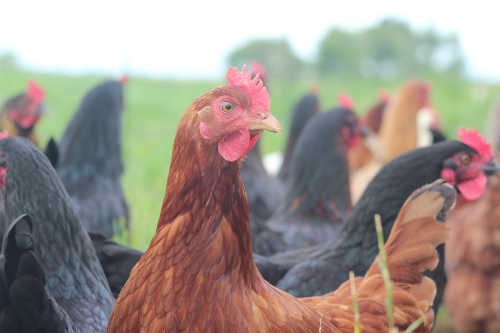 He is now recognised as a key supplier of top quality poultry not only in the West of Ireland but also to restaurants around the country. While he keeps a few Hereford cross cattle still, he concentrates on poultry, supplying chickens, ducks, geese and also the famous bronze turkey at Christmas time.
He is now recognised as a key supplier of top quality poultry not only in the West of Ireland but also to restaurants around the country. While he keeps a few Hereford cross cattle still, he concentrates on poultry, supplying chickens, ducks, geese and also the famous bronze turkey at Christmas time.
One of the biggest obstacles to running a successful ‘open pasture’ poultry operation is predators like foxes, minks and dogs. When searching for a solution, Ronan came up with something a little different, one of the highlights of his style of farming. His new farmhand came in the shape of man’s best friend. One with over 10,000 years of agriculture experience and naturally hardwired for the job in hand.
Livestock Guardian Dog (LGD) breeds have been used for centuries to protect livestock from wolves in Europe and Asia. If trained properly they will protect whatever livestock they live with.
In the United States, where they have coyotes, possums, racoons, owls and hawks to think about, the most well-known of these breeds are the Pyrenean Mountain Dog, Anatolian Shepherds, Akbash and Maremma. Many also work as family and home guardians, and several are assistance dogs to their disabled owners, as they are sturdy enough to provide physical support.
With the right socialisation, training and physical environment, LGDs can be successful family pets and home protectors. They are generally aloof toward strangers and their size alone is rather intimidating. Though strong, independent-minded and protective, they are normally gentle with children and livestock alike.
Ronan’s first recruit was Bess, a pure white Pyrenean Mountain Dog, who has lived at the farm since she was 12 weeks old. Pyrenean Mountain dogs are one of the oldest dog breeds in the world. They were bred as dogs of war and then used during peacetime as sheep guarding dogs.
The Pyreneans are one of the least aggressive of the large guardian dogs, so often people cherish them as family dogs. They are regal and independent compared to other dogs breeds, traits necessary to spend days alone guarding flocks.
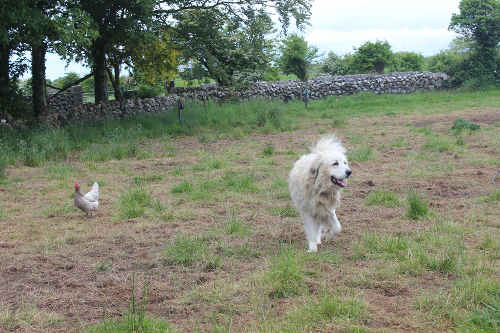 Bess has proven to be a great help on the farm. So much so that a second helper was employed, Bruce the Polish Tatra Sheepdog. LGDs are most effective when working in pairs, the alpha dog routinely makes a patrol of the home base while leaving the more submissive partner to stay with the flock.
Bess has proven to be a great help on the farm. So much so that a second helper was employed, Bruce the Polish Tatra Sheepdog. LGDs are most effective when working in pairs, the alpha dog routinely makes a patrol of the home base while leaving the more submissive partner to stay with the flock.
The Polish Tatra Sheepdog is used for herding and as a guardian for flocks of sheep and goats. It can also be kept as a companion and a watchdog. This natural working dog is self-thinking, highly intelligent and able to assess situations without human guidance.
They are devoted and loving to their family and close friends but will often be reserved around strangers. They will give big warning barks at anything deemed suspicious or strange, they will also deter two-legged predators and they make an excellent 'door bell'. The Polish Tatra Sheepdog will not bite a stranger or other animals unless continuously provoked.
When left outside they will be awake and vigilant during night hours, patrolling the property. Luckily for Bruce, they love snow and cold weather and are very weather resistant. They also get along with other non-canine pets and are very gentle with children.
Judy the sheep dog and her pups complete the canine staff on the Friendly Farmer’s Knockbrack poultry farm. Livestock guardian dogs are an ancient solution to a common farming problem.
Photo Caption: Ronan Byrne, aka, the Friendly Farmer with Bess, the Pyrenean Mountain Dog.
--
 Anne Marie Carroll is a freelance food writer and member of the Irish Food Writers’ Guild who lives in Galway with her husband and two children.
Anne Marie Carroll is a freelance food writer and member of the Irish Food Writers’ Guild who lives in Galway with her husband and two children.
With a background in design and illustration, Anne Marie made the switch to journalism with a regular food and wine column in The Galway Advertiser. Her work now mainly focuses on restaurant reviews, writing and editing recipes, the development of food photo shoots, including styling and photography. She also writes for a number of other publications and works as a consultant for small producers, food retailers and restaurants.
Anne Marie writes about all things food from the West of Ireland at her blog, Warm & Snug & Fat. You can also find her on twitter as @Biscuits4ABear
Potato Vodka
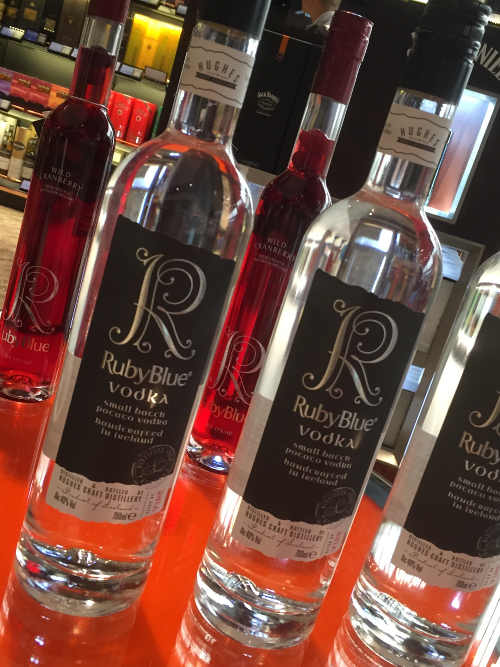

The potato is ubiquitous in Ireland, and of course is the key ingredient in poitin, but a Lisburn Distillery has become the first to make potato vodka
Hughes Craft Distillery in Lisburn is already known for its fruit-based Ruby Blue liqueurs. The company was founded in 2010 by husband and wife team Stuart and Barbara Hughes. The Ruby Blue Craft Irish Potato Vodka is their newest venture.
"We've used our longstanding experience in distilling our very successful range of berry liqueurs to create a distinctive potato vodka. It made sense to us to take potatoes, so long a dietary staple in Ireland, to handcraft small batch vodka that offers super-premium quality with a unique flavour” says Barbara Hughes, sales director
“The first batch pre-sold within a few days of announcing it and now we are working to fulfil orders to some of the best-known on-line retailers, local bars, and restaurants and off licenses.
Ruby Blue Potato Vodka is 40% ABV 80% proof and is described by taste experts as having "an appealing nose with subtle notes of vanilla and crisp apple. The taste is buttery and well-rounded with a heartening earthiness and a long clean finish". It's being marketed as being perfect for those who like to enjoy vodka neat but can also be used to create exceptional cocktails.
---
 Barbara Collins is a BBC journalist and freelance food, travel and agricultural writer. She contributes regularly to Countryfile magazine, the Farmers Guardian, the Irish News, FFT and the Irish Mail on Sunday. She was Chief Food Writer for Flavour magazine. She is a member of both the UK and Irish Food Writers Guilds and splits her time between Belfast and Galway. Barbara also does menu consultancy and copywriting.
Barbara Collins is a BBC journalist and freelance food, travel and agricultural writer. She contributes regularly to Countryfile magazine, the Farmers Guardian, the Irish News, FFT and the Irish Mail on Sunday. She was Chief Food Writer for Flavour magazine. She is a member of both the UK and Irish Food Writers Guilds and splits her time between Belfast and Galway. Barbara also does menu consultancy and copywriting.
@thegoodchinaset
What is Service Design and Why is it Important for Tourism?
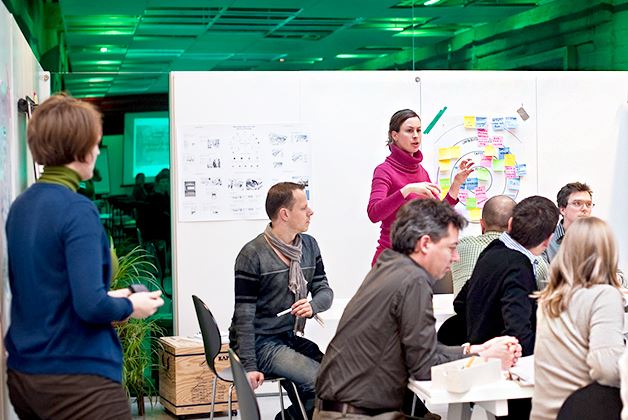
 The tourism sector is constantly becoming more and more transparent through social media and review websites. Nowadays, it’s the individual guest’s experience that makes or breaks the success of a tourism product.
The tourism sector is constantly becoming more and more transparent through social media and review websites. Nowadays, it’s the individual guest’s experience that makes or breaks the success of a tourism product.
Thus, the focus in tourism shifts from mere marketing communications to meaningful experiences. Indeed it is widely accepted in the restaurant sector that no matter how amazing the food is, a customer can be lost due to poor service. Service design thinking can provide an in-depth and holistic understanding of customers to co-create meaningful experiences with guests.
This evolving way of thinking can help make the experiences your organisation delivers useful, usable, efficient, effective and desirable. Product designers create things (iPhones, shoes, etc.), while service designers understand how a series of interactions make up a customer experience, like making a reservation online or finding information about a hotel or restaurant.
I recently had the opportunity to attend a workshop on service design, where we mapped the service offered to three different customer groups in a gallery. This was an in-depth process looking at the consumer’s expectations of the product versus the actual experiences of the product delivery process. In the gallery the product offering consisted of multiple service touchpoints which customers perceive prior to, during and after their engagement with the gallery.
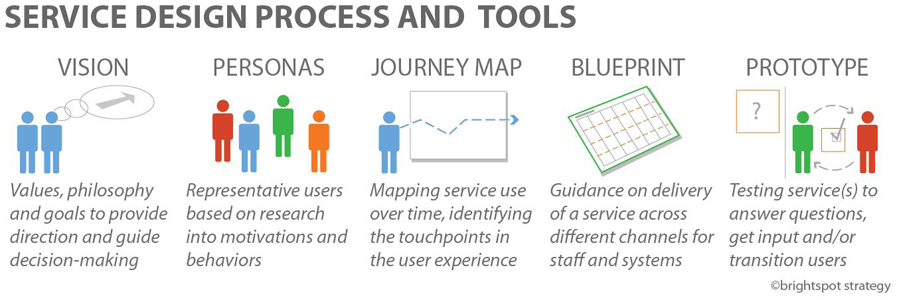
The real engagement and value of insights achieved in the workshop came from including staff at all levels, from front facing team to administration, communications and a customer representative from the gallery’s main customer segments. The process we followed covered the following steps:
User-centered where services were examined as they were experienced through the customer’s eyes.
Co-creative where all stakeholders were identified and included in the service design process.
Sequencing where the service was visualised as a sequence of interrelated actions and several maps were completed during the day.
Evidencing where intangible services were visualized in terms of physical artifacts.
Holistic where the entire environment of a service was considered – this included walking up the street to map first impressions of the gallery and touring the full gallery experience. This exercise took just 45 minutes and gave fantastic insights into everything from signage to visibility to how easy the door was to open, to engagement with the gallery team, placement of information etc.
The competitiveness of any service product ultimately depends on customer satisfaction, which is determined by the perception of the experience. Matching, or even exceeding, customer expectations is crucial for generating customer satisfaction and needs to be constantly designed and measured.
The better your organisation understands the overall service experience, the better you can make this experience and in many cases spot opportunities to introduce new services.
A great example of this kind of thinking is Virgin Atlantic’s move to include door to door shuttle transfers as part of their first class service. When mapping the customer experience they discovered the opportunity of including the journey to and from the airport (often a major stress point) as part of the overall Virgin experience. This link shows some of the work completed by Engine to help enhance the pre- and post-flight experience at Virgin’s London Heathrow Terminal 3.
In a nutshell, service design in tourism equals putting people first. In order to generate a relevant, integrated and attractive customer experience, it’s necessary to consider the entire span of the customer’s journey through your service product to understand both their needs and their expectations; the value this awareness can add to a tourism business is immeasurable.
For further information on service design and a great toolkit check out www.servicedesigntoolkit.org/
--
http://www.irishdesign2015.ie/liminal/
http://www.irishdesign2015.ie/programme/single/appetite-for-design
http://wearedesigngoat.com/
* ID2015 is delighted that the inaugural Irish Tourism Industry Awards have included a special award to highlight good design in Tourism. For more information http://www.irishtourismindustryawards.ie/categories/
* Irish Design 2015 partners include Founding Partner - MCO Projects; Accommodation Partner - The Doyle Collection; Venue Partner - OPW; Exhibition Partners – DAA. Technology Partner - IBM
An overview of the core programme of events can be found at www.irishdesign2015.ie

Aileesh Carew is the Tourism Advisor for Irish Design 2015. Her role is to provide advice and management of the tourism programme for the year of Irish design 2015, to communicate and animate interest in the Year of Design – nationally & internationally - and engage with tourism industry partners to raise awareness for Irish Design 2015. She has spent most of her career managing hotels, most recently opening Ballyfin Demesne in Co Laois, putting it on the international map as one of the best small hotels in Europe. A graduate of Shannon College of Hotel Management, with an MBA from Copenhagen Business School and Business Management Coaching from Scandinavian Leadership, she loves to travel, read cookery books, occasionally cooking from them, eat out and spend time with her family.
www.facebook.com/Irishdesign2015
@irishhdesign2015
instagram.com/irishdesign2015
Northbound Brewery
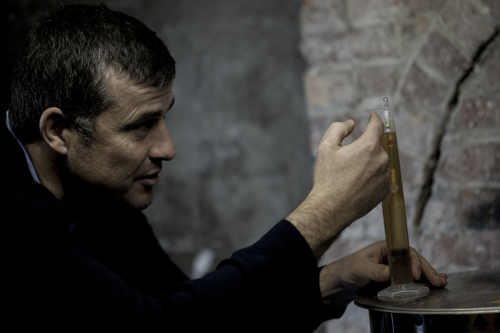
 Barbara Collins introduces the new Northbound Brewery in Derry, where the local ingredients used include Irish malt, Derry water and Irish carrageen moss - and it is already being used as an ingredient by a successful local food producer
Barbara Collins introduces the new Northbound Brewery in Derry, where the local ingredients used include Irish malt, Derry water and Irish carrageen moss - and it is already being used as an ingredient by a successful local food producer
David Rogers and his wife Martina decided to open up a craft brewery in Derry to fit in with rearing a young family.
Management consultant David did a Master Brewing Diploma after becoming interested in craft brewing while living in Australia. He’s originally from Scotland and his wife is from Fermanagh. Martina worked within the financial services sector where she gained sales and marketing skills.
They moved back to Northern Ireland with their three children in 2012. “We felt bound by the north-west of the country, hence the name,” says Martina.
Production started at the site in Campsie in February of this year. Using local ingredients where possible, including Irish malt, Derry water and Irish carrageen moss, the brewery has released 2 beers to date, "08" a Kolsch Style Ale, and "26" a Pale Ale.
“We’ve seen best practice in Japan and Australia and I want to take what we’ve learned to make a sustainable brewery in the north west of Ireland, which hopefully will become a regional brewery.
David's knowledge has now been recognised by the Institute of Brewing and Distilling, having been awarded the prestigious Master Brewer qualification, a rare recognition only bestowed upon a dozen people globally each year.
Looking ahead, Northbound Brewery is continuing to trial natural new ingredients that celebrate the high quality of produce in the region, and are collaborating with local producers to bring out the best of the North West.
A successfully established local cheese maker, Julie Hickey of Tamnagh Foods, has washed a new cheese in her Dart Mountain Cheese range, Banagher Bold, with their 26 Pale Ale - and, after being ‘aged for three months to give it the strength it deserves’, it will be released in September 2015.
“If you get it right you can create great process and come up with consistently good beer. It’s also perfect to fit in with our family life” says David.
---
 Barbara Collins is a BBC journalist and freelance food, travel and agricultural writer. She contributes regularly to Countryfile magazine, the Farmers Guardian, the Irish News, FFT and the Irish Mail on Sunday. She was Chief Food Writer for Flavour magazine. She is a member of both the UK and Irish Food Writers Guilds and splits her time between Belfast and Galway. Barbara also does menu consultancy and copywriting.
Barbara Collins is a BBC journalist and freelance food, travel and agricultural writer. She contributes regularly to Countryfile magazine, the Farmers Guardian, the Irish News, FFT and the Irish Mail on Sunday. She was Chief Food Writer for Flavour magazine. She is a member of both the UK and Irish Food Writers Guilds and splits her time between Belfast and Galway. Barbara also does menu consultancy and copywriting.
@thegoodchinaset
Word from the West
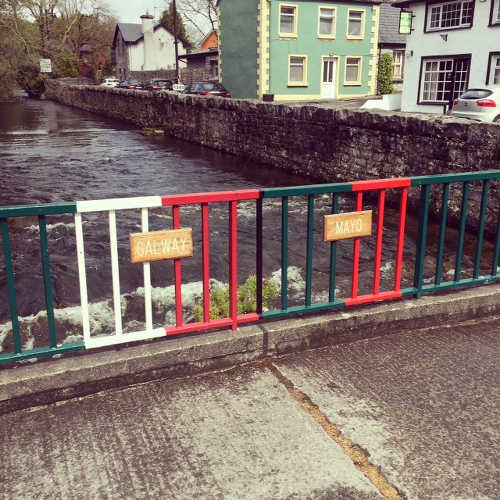
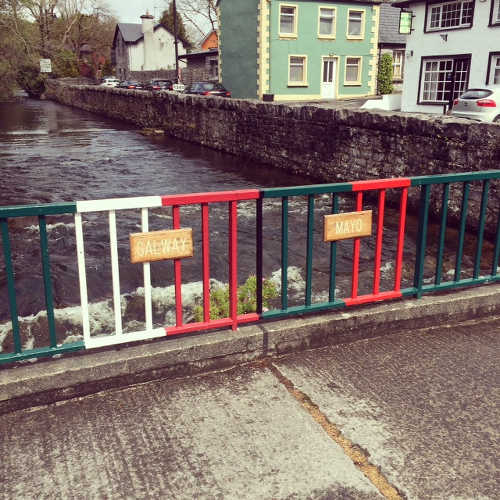
The village of Cong in County Mayo is small and intimate with narrow streets and friendly pubs. Famously the village is where much of the Quiet Man was filmed. Although you can retrace the steps of the actors throughout the town, Cong is so much more than just a movie set for tourists.
There are the ruins of the old abbey right in the town to explore and a path along the river where you can stroll through one of the loveliest woods. Adjacent to the village stands the dramatic and magnificent Ashford Castle.
One of Ireland's most magnificent and most luxurious resort hotels, the Castle has overlooked the shores of Lough Corrib since the 12th century. You can stroll around the grounds and get a feeling of what Ireland was like hundreds of years ago.
Yet, for all the elegance and splendour of the castle, it is far from being Cong’s only attraction. Sure, they have speciality teas, champagne and finger sandwiches. There may be talk of tasty pastries and cupcakes. But after many decades in the shadow of Ashford Castle’s grandeur, Cong at last is defining itself and carving out an identity of its own as Cong Food Village (www.facebook.com/www.congfoodvillage.ie).
Until very recently, Cong’s credentials as a food destination seemed unpromising. Apart from Ashford Castle and its associated businesses, breakfast options for visitors were largely limited to traditional greasy spoon style operations.
Lunch was a similarly sparse affair. But in the last few years the streets have blossomed into a veritable hub of good places to eat, and casual dining has replaced formal afternoon tea as the village’s selling point.
There’s a plethora of new laid back, friendly eateries catering to the many visitors from far and near. Locally sourced ingredients make up the breakfasts, sandwiches, soups and salads, and the luscious cakes and scones are all homemade. As food tourism grows in popularity in Ireland, they develop their local food and hospitality to take on a central role in their tourism offering while also sustaining their local environment.
Cong sits right on the border of Galway and Mayo and this is where they source most of their produce. Locally smoked salmon from the nearby village of Cornamona, beef and pork from Kelly’s of Newport, coffee roasted in Westport, bottled water from the nearby hills of Tourmakeady, shellfish from Killary Harbour and fish such as hake and mackerel from Galway Bay. They even have their own Connacht Craft Beer.
Cong has some very active members of Slow Food Mayo and along with Aran McMahon from Rua in Castlebar and Jonathan Keane, head chef at the Lodge at Ashford Castle, Cong Food Village has been instrumental in bringing the ethos of good local and fair food to Mayo.
They have extended themselves to create something that they can be truly proud of, and for that they deserve recognition. Cong’s reputation as the day-trip capital of Ireland seems assured.
--
 Anne Marie Carroll is a freelance food writer and member of the Irish Food Writers’ Guild who lives in Galway with her husband and two children.
Anne Marie Carroll is a freelance food writer and member of the Irish Food Writers’ Guild who lives in Galway with her husband and two children.
With a background in design and illustration, Anne Marie made the switch to journalism with a regular food and wine column in The Galway Advertiser. Her work now mainly focuses on restaurant reviews, writing and editing recipes, the development of food photo shoots, including styling and photography. She also writes for a number of other publications and works as a consultant for small producers, food retailers and restaurants.
Anne Marie writes about all things food from the West of Ireland at her blog, Warm & Snug & Fat. You can also find her on twitter as @Biscuits4ABear
What can Irish Design do for Tourism? The Design Island App


One of the great things about summer is the chance to get out and explore a bit (always with my Georgina Campbell Guide at hand). Part of the pleasure of travel is plotting out where to stay and, more importantly, where to eat - food is always an integral part of our holiday experience.
This year, I also have a new app to help me find the best places to pursue these favourite pastimes, specifically with a focus on design. The app, called Design Island, features a wealth of curated recommendations from design experts and enthusiasts on things to do and places to visit on the island of Ireland. It’s an invaluable bible for intrepid adventurers, laid-back holiday makers and design hunters alike.
The idea behind the app is to help users see Ireland through the eyes of design experts – and discover a series of hidden gems along the way. Luminaries and aficionados from across the Irish design community contributed their top design destinations to the list, the places they love to visit when travelling through our green island.
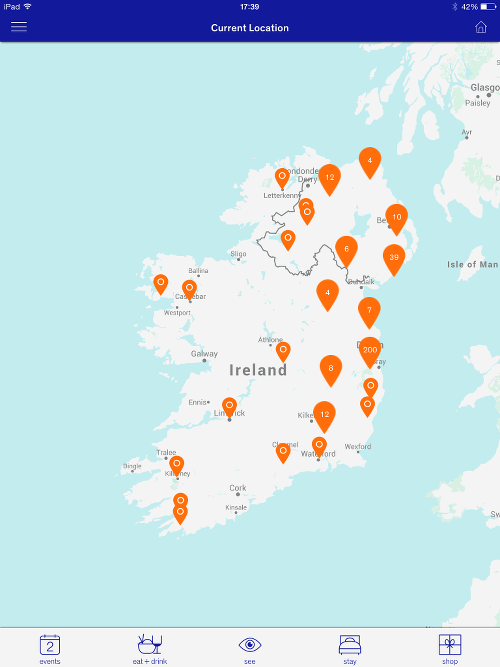
One of the best things about Design Island is the personal flavor of the recommendations – the words come from the curators themselves, so you can gain an insight into where Irish Times fashion journalist Deirdre McQuillan loves to shop or what little-known structural gems architect Marc O’Riain goes out of his way to see.
While many of the destinations are businesses of one kind or another, there is also a whole host of non-commercial locations, out-of-the-way nooks of the country that no tourist guide would ever reveal.
Not surprisingly, there are many Georgina Campbell recommended establishments on the app. Some highlights include:
Stay: Number 31 in Dublin is a boutique hotel designed by one of Ireland’s great modernist architects, Sam Stephenson. Nominated by Barry Sheehan, Head of Design, Dublin Institute of Technology.
Eat and Drink: Ard Bia at Nimmos in Galway places a strong emphasis on fresh local produce and is renowned as a hub for local creative types. Nominated by Dylan Haskins, Broadcaster.
See: Kilcullen’s Seaweed Baths in Enniscrone, County Sligo are housed in an Edwardian bath house and have been in operation for over a hundred years. Nominated by Superfolk.

It looks great too - produced by Irish Design 2015 (ID2015), it was designed and developed by design veterans IBM Studios|Dublin, Atelier David Smith and Conor & David.
Try it out – it will add another dimension to your trip.
Design Island can be downloaded free from the App Store or Google Play.
--
* ID2015 is delighted that the inaugural Irish Tourism Industry Awards have included a special award to highlight good design in Tourism. For more information http://www.irishtourismindustryawards.ie/categories/
* Irish Design 2015 partners include Founding Partner - MCO Projects; Accommodation Partner - The Doyle Collection; Venue Partner - OPW; Exhibition Partners – DAA. Technology Partner - IBM
An overview of the core programme of events can be found at www.irishdesign2015.ie

Aileesh Carew is the Tourism Advisor for Irish Design 2015. Her role is to provide advice and management of the tourism programme for the year of Irish design 2015, to communicate and animate interest in the Year of Design – nationally & internationally - and engage with tourism industry partners to raise awareness for Irish Design 2015. She has spent most of her career managing hotels, most recently opening Ballyfin Demesne in Co Laois, putting it on the international map as one of the best small hotels in Europe. A graduate of Shannon College of Hotel Management, with an MBA from Copenhagen Business School and Business Management Coaching from Scandinavian Leadership, she loves to travel, read cookery books, occasionally cooking from them, eat out and spend time with her family.
www.facebook.com/Irishdesign2015
@irishhdesign2015
instagram.com/irishdesign2015
Great Taste of the North
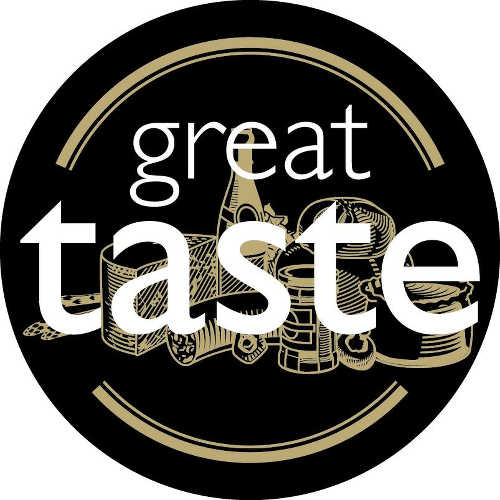
 Northern Ireland may not be the biggest geographical area in the annual Great Taste Awards but, says Barbara Collins, that doesn’t stop them winning dozens of gold stars
Northern Ireland may not be the biggest geographical area in the annual Great Taste Awards but, says Barbara Collins, that doesn’t stop them winning dozens of gold stars
The famed Hannan Meats of Moira Co Down pretty much swept the board in the 2014 Great Taste Awards, with sixteen entries winning a staggering 35 gold stars - but, although Peter Hannan decided to stand back from the competition this year, there were still plenty of gongs for the Northern Ireland stable in this year’s Great Taste Awards.
Baronscourt Estate in Omagh led the posse, with one of its three entries, Wild Sika Venison French, not only taking 3 stars - but also selected as only Northern Ireland product listed in the Top 50 Foods in the UK. Judges complimented it for its “iron richness” and perfectly “gamey” and “buttery texture” and they also awarded stars for Baronscourt’s Wild Sika Venison Loin and Wild Sika Venison Sausage.
Dale Farm was another major winner this year, taking 3 stars for its “creamy and buttery” Fivemiletown Ballyoak, two stars each for Boilie Goats Cheese Barrel and Spelga 0% Fat Greek Frozen Yogurt Mixed Berries and also a one star award for a number of other products.
Run by the UK’s Guild of Fine Food and judged by over 400 of these islands’ most demanding palates - food critics, chefs, cooks, restaurateurs, producers and a host of food writers and journalists - Great Taste is widely acknowledged as the most respected food accreditation scheme for artisan and speciality food producers.
The products are blind-tasted but, having judged at them, this doesn’t mean they are just put out on a table without any context. No packaging or identification is allowed, but applicants are invited to give limited background information about their products including, where relevant, details of how they are produced.
In order to achieve a one star award, a product must be deemed good enough by the first judging table to go on to a number of other tables for tasting. Less than a third of the entries got over this first hurdle, and the number of tastings increases as the star level rises - the maximum is three stars and, at that level a product will have been tasted dozens of times.
Another important element of the Great Taste Awards is the feedback given by judges. If they feel a product could be improved, they suggest how and the producers can then act on this advice if they feel it’s justified. Many say they went on to get stars the following year having made the recommended tweaks. They know that those gold and black stickers do wonders for sales.
Other successful Northern Ireland businesses who will be proudly displaying them this year include Magherafelt bakers Genesis Crafty, who won 3 stars for their Supervalu Brown Soda Loaf, and there were stars a-plenty for Suki Tea products, with their Belfast Black and Nana Mint winning 2 gold stars and a gold star each for Belfast Brew, Chamomile, Fairtrade, Organic and Rainforest Alliance Certified Earl Grey Blue Flower, Earl Grey, Lemongrass, Peppermint, Red Berry and Breakfast Teas.
Two star awards also went to Glastry Farm Ice Cream, for their Ling Heather Honey ice-cream, Yellow Door for their Christmas Pudding and Hillstown Brewery for their Goats Butt Wheat and Rye Hybrid Beer.
En Place Foods did very well, winning two stars for their Black Garlic Mostarda and one star each for Chipotle Smoked Chilli Relish, Korean BBQ Sauce and Chorizo Picante Savoury Jam with Oloroso Sherry, while Ann’s Pantry also took two stars for their Guinness Oven Wheaten and a star each for their Oatmeal Biscuit, Custard Tart, Spelt Brown Soda Spelt Potato bread with black pudding, Spelt Madeira and All Butter Shortbread.
2 star awards also went to La Coquine Masala Chai and Salted Caramel, Salted Chilli Caramel and Safari Joe chocolates, Morelli’s Rhubarb & Custard, Espresso coffee and Caramelised Hazelnut Ice Cream and SD Bell's Natural Leaf and "Directors' Brew" Teas and Colombian Supremo Coffee Beans.
The top awards, including the Supreme Champion, were announced at the Golden Fork Awards, in London.
---
 Barbara Collins is a BBC journalist and freelance food, travel and agricultural writer. She contributes regularly to Countryfile magazine, the Farmers Guardian, the Irish News, FFT and the Irish Mail on Sunday. She was Chief Food Writer for Flavour magazine. She is a member of both the UK and Irish Food Writers Guilds and splits her time between Belfast and Galway. Barbara also does menu consultancy and copywriting.
Barbara Collins is a BBC journalist and freelance food, travel and agricultural writer. She contributes regularly to Countryfile magazine, the Farmers Guardian, the Irish News, FFT and the Irish Mail on Sunday. She was Chief Food Writer for Flavour magazine. She is a member of both the UK and Irish Food Writers Guilds and splits her time between Belfast and Galway. Barbara also does menu consultancy and copywriting.
@thegoodchinaset
Word from the West

 West of Ireland food writer Anne Marie Carroll introduces a new Whiskey Trail in Galway and the history that inspired it
West of Ireland food writer Anne Marie Carroll introduces a new Whiskey Trail in Galway and the history that inspired it
“Too much of anything is bad, but too much good whiskey is barely enough,” Mark Twain.
Galway has always been known for its diversity. A mixed bag of vagabonds, sailors and tribes, this medieval city has been a melting pot for as long as it has existed. From the very beginning there has been a trade in alcohol of one kind or another. Many a hogshead of wine has passed under the Spanish Arch to supply the Kings’ castles in Connacht…
During the fifteenth and sixteenth centuries, merchants built up a strong and extensive wine trade with Spain and other countries. In turn many Spanish merchants settled in Galway and the old town was actually arranged on the plan of a Spanish town.
The city also benefited, with a good and constant supply of wine. Mead was another very popular drink during the medieval period, a drink so ancient that its origins are lost in antiquity. It became the most popular drink of the Irish and was often referred to in Gaelic poetry.
The distillation of spirits from malt was first practiced in Ireland around the year 1590. Prior to this a spirit called 'aqua vitae' was imported from France and England. The Irish word for whiskey, Uisce-beatha, meaning the ‘water of life’, most likely originated from this.
Prior to this there was another very popular drink called ‘Pimento’ which was drunk extensively throughout the country. Made of wine, honey, cinnamon, ginger, and known as “Irish Nectar” it was highly prized at the time.
It is believed that the process of making Irish whiskey started with Scottish distillers who settled in Ireland. By then, the Irish Parliament had removed all taxes on beer in order to discourage the drinking of spirits.
Sam Maguire recorded in the 'Galway Reader' in 1954 that during the nineteenth century, “Whiskey remained the Galway drink, morning, noon and night”. The whiskey brewed in Connemara from barley and malt was comparatively mild and there was also, of course, the illegal distilling of poteen, with a long history behind the “hard-stuff” or mountain dew as it was also known.
While Galway has always been noted for its wine trade, it was also famous for its whiskey production. The best known whiskey in Galway during the nineteenth century was distilled at the Nun’s Island distillery. This imposing five storey distillery was situated on a small island formed by a fork in the River Corrib.
It was an extensive distillery with two mills capable of grinding all the grain necessary for the production of whiskey. There were three large “Coppers” and some five hundred feet of cooling pipes along with all the equipment to run a large still. It had its own maltings and cornstores and operated a triple distillation process. Persse’s Galway Whiskey, as it became known, was a huge success.
The business developed and had an annual output of 400,000 gallons of whiskey, establishing Galway as one of Ireland’s major whiskey hubs over 200 years ago. It was the largest employer in the city at the time and the leading Irish whiskey exporter to the UK, “As supplied to the House of Commons” was proudly printed on the Persse casks.
Nowadays, Irish Whiskey is always spelt with an ‘e’. While some people believed that this was to differentiate between Irish and Scottish whisky, it was in fact for the Dublin distilleries to distinguish their product from rural Irish distilleries.
Other Irish distilleries continued to use the traditional spelling of whisky for many years. During that time, Irish Pot Still whiskey was regarded as the best in the world and Dublin distillers were considered to be top of the range. They had much competition from the Persse distillery however.
Now we can witness the rich history of Galway whiskey come to life once again. Irish whiskey has experienced a renaissance recently, while many bars have become havens for craft beer, Galway’s best loved pubs have embraced this traditional spirit. A group of publicans have come together and created a Whiskey Trail, which celebrates the history of the city’s most famous distilleries. The Galway Whiskey Trail is encouraging locals and visitors to travel back in time to learn about Galway’s rich whiskey heritage.
The Trail - launched in true Galway fashion in August 2015, with spectacular street theatre by Macnas - is set to raise a toast to the 200 years of whiskey distilling in the City, and to the thriving future of whiskey appreciation and production in Galway. This is a tour designed to delight the taste buds of whiskey enthusiasts far and wide, featuring tastings in some of the city’s oldest and most established whiskey bars.
The eleven Trail Venues boast some of the most impressive whiskey stocks along the Wild Atlantic Way. The variety of the venues is superb, from a retail based whiskey tasting bar at McCambridge’s Food Shop where you can purchase a rare and distinctive bottle of whiskey as a gift, to the Connacht Whiskey Bar of the Year at the traditional Garavan’s on Shop Street, to Freeney’s an original Galway whiskey bar on High Street with an enviable selection of whiskeys, or An Púcan on Forster Street off Eyre Square where their whiskey range spans two centuries.
Also on the trail is the renowned Kings Head which features part of Galway’s original wall, Sonny Molloy’s formerly a drapery store, the Dail Bar, Blake’s Bar, Tigh Neachtain the former home of human rights activist Richard Martin, and, on Eyre Square the highly recognisable O Connell’s and Garvey’s, all of which stock an extensive menu of rare whiskeys.
As Irish whiskey undergoes resurgence, there has never been a more apt time to celebrate the enterprise that carried the Galway name with pride and distinction around the world. Involving the most beloved of Galway businesses, this free and self-guided trail will come as a true delight to whiskey enthusiasts. A blend of history, culture, food and drink designed to reclaim Galway’s title as Irelands foremost whiskey hub once more.
Slainte!
Keep up to date with the Galway Whiskey Trail twitter @GalwayTrail or on the Facebook page: www.facebook.com/GWTrail or log onto www.galwaywhiskeytrail.com
--
 Anne Marie Carroll is a freelance food writer and member of the Irish Food Writers’ Guild who lives in Galway with her husband and two children.
Anne Marie Carroll is a freelance food writer and member of the Irish Food Writers’ Guild who lives in Galway with her husband and two children.
With a background in design and illustration, Anne Marie made the switch to journalism with a regular food and wine column in The Galway Advertiser. Her work now mainly focuses on restaurant reviews, writing and editing recipes, the development of food photo shoots, including styling and photography. She also writes for a number of other publications and works as a consultant for small producers, food retailers and restaurants.
Anne Marie writes about all things food from the West of Ireland at her blog, Warm & Snug & Fat. You can also find her on twitter as @Biscuits4ABear
What can Irish Design do for Tourism?
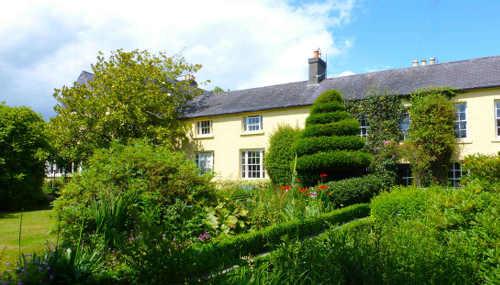
 In the latest of her series on the Year of Irish Design and its importance for tourism, Aileesh Carew suggests a touring itinerary that would take in range of the great design experiences that Design Island can offer, many of which you can eat and/or stay in…
In the latest of her series on the Year of Irish Design and its importance for tourism, Aileesh Carew suggests a touring itinerary that would take in range of the great design experiences that Design Island can offer, many of which you can eat and/or stay in…
Design Island Sample Itinerary – Tour of Ireland (minus Dublin)
I hope from last month you have taken the time to download Design Island – full of great recommendations from the design community on the best of design in Ireland. Dreaming of some travel, I worked out a route from the recommendations starting in Wicklow, working South and then all the way up to Derry. Good design is timeless, and this is reflected on the breadth of recommendations to be found. I hope it inspires you to get out and about and support some great places and experiences somewhere new.
From Dublin, drive an hour and a half south to Hunter’s Hotel, Ireland’s oldest coaching inn. Revel in the old world charm of the building, the interior of which hasn’t changed since the early nineteenth century, having been run by the same family since 1825.
After a leisurely lunch and a stroll around the gardens, head for Borris in County Carlow and The Step House Hotel. This restored Georgian manor house has an easy formality and is within walking distance of architectural curiosities such as The Old School House and an abandoned, 16-arch, GSWR railway viaduct which towers across a valley on the edge of town.
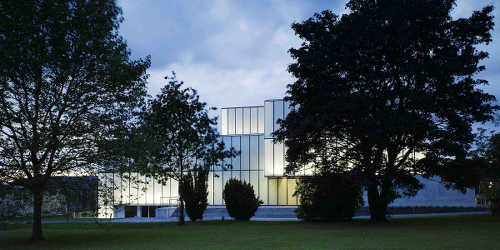 If you have time, it’s well worth the trip into Carlow town centre to visit the county’s foremost arts centre, Visual Carlow. The contemporary building houses exhibitions and events on film, visual art, dance, music, theatre and more - and has an excellent café Lennons at Visual.
If you have time, it’s well worth the trip into Carlow town centre to visit the county’s foremost arts centre, Visual Carlow. The contemporary building houses exhibitions and events on film, visual art, dance, music, theatre and more - and has an excellent café Lennons at Visual.
Once you’ve explored all that Carlow has to offer in the field of design, make your way to Tipperary and The Old Convent, which lies in a quiet area of the country between Clonmel and Mitchelstown. This gentle adaptation of a convent building offers repose in stylish rooms along with a restaurant that prides itself on its use of Irish artisan produce.
Using this relaxing haven as your base, take the time to explore the surrounding countryside, venturing down to County Cork. Here, you can get your coastal fix with the Ballycotton Island Lighthouse Tours, a boating trip to an uninhabited island off the coast of Ballycotton fishing village where you can climb to the top of a mid-nineteenth century lighthouse and take in the panoramic views of the Cork coastline.
Once you’ve worked up an appetite on the water, head for The Real Olive Company and Toonsbridge Dairy, an hour’s drive away just outside Macroom. Here you’ll find the source of Ireland’s first home-grown buffalo mozzarella, made from the milk of a herd of ‘Irish’ water buffalo. The company also imports a range of quality Mediterranean foods that you can enjoy in their weekend café, before buying some wares to take home from their shop.
From this culinary haven, it’s a two hour drive towards the coast and one of Ireland’s best-kept secrets at Liss Ard Estate, The Crater in The Irish Sky Garden. This is a James Turrell installation from the nineties that allows for a spot of solitary sky watching – a really unique experience.
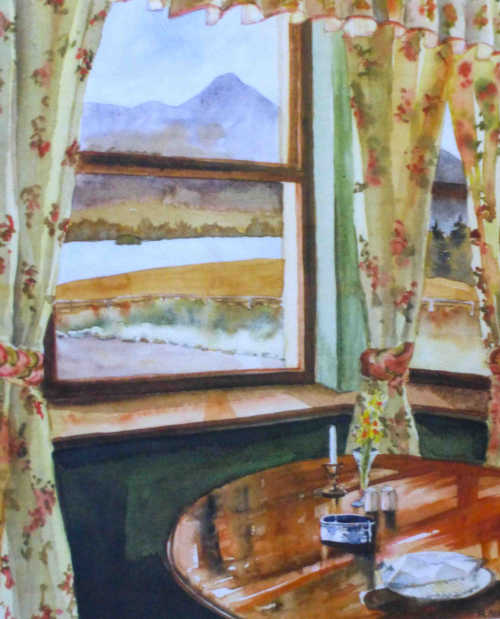 Leaving behind the delights of The Old Convent, head north-west for Lough Inagh Lodge in Connemara. This fishing lodge dates from the 1880s and boasts breathtaking mountain views. The surrounding countryside is also a rich source of design curiosities, all within a half day’s drive.
Leaving behind the delights of The Old Convent, head north-west for Lough Inagh Lodge in Connemara. This fishing lodge dates from the 1880s and boasts breathtaking mountain views. The surrounding countryside is also a rich source of design curiosities, all within a half day’s drive.
Two and a half hours south of the lodge is the feat of engineering that is Ardnacrusha Hydroelectric Power Station. Marvel at the four giant turbines that generate 332.000MWh of electrical power per year for the local population, in a structure that was built in the 1920s.
For another day’s outing, head for Bunlahinch Clapper Footbridge just outside Louisburgh in County Mayo, less than an hour’s drive north of the lodge. This stone footbridge dates from the famine period and is the largest complete clapper bridge in the country.
An hour’s drive north of Bunlahinch up the coast you’ll find Kilcullen’s Seaweed Baths in Enniscrone, County Sligo. These traditional baths are housed in an Edwardian building and have been in operation for over a hundred years.
Once you’ve revived your senses at the baths, make your way to Galway for an epicurean pit stop. Ard Bia at Nimmos near the Spanish Arch in the centre of the town is loved as much for its status as a hub for local creative types as it is for its excellent menu based on fresh local produce. A more recent favourite is Kai Café and Restaurant, a contemporary eatery that also makes the most of Galway’s excellent local produce, placing a strong emphasis on its relationships with its suppliers.
To round off your tour of Ireland’s design treasures, head north to County Down where your final base will be Helen’s Tower near Bangor, an enchanting stone structure offering private accommodation, set deep in the woods down a dirt track. From here, you can explore the best craft shopping the north has to offer.
A short drive south of the tower, beyond Newtownards, The Old Post Office is in the little village of Lisbane near the western shore of Strangford Lough; it dates back to the 1840s and has been lovingly restored as a centre for local craft. It retains its thatched roof and many of its original rooms, and is a warren of spaces where you will find a café, deli and gift shops.
A couple of hours drive to the northwest in Derry/Londonderry city, you’ll find The Craft Village, a reconstruction of an 18th century street and a 19th century square which is a great place to find ceramics, textiles, jewellery, glass and prints by local designer-makers.
--
* ID2015 is delighted that the inaugural Irish Tourism Industry Awards have included a special award to highlight good design in Tourism. For more information http://www.irishtourismindustryawards.ie/categories/
* Irish Design 2015 partners include Founding Partner - MCO Projects; Accommodation Partner - The Doyle Collection; Venue Partner - OPW; Exhibition Partners – DAA. Technology Partner - IBM
An overview of the core programme of events can be found at www.irishdesign2015.ie

Aileesh Carew is the Tourism Advisor for Irish Design 2015. Her role is to provide advice and management of the tourism programme for the year of Irish design 2015, to communicate and animate interest in the Year of Design – nationally & internationally - and engage with tourism industry partners to raise awareness for Irish Design 2015. She has spent most of her career managing hotels, most recently opening Ballyfin Demesne in Co Laois, putting it on the international map as one of the best small hotels in Europe. A graduate of Shannon College of Hotel Management, with an MBA from Copenhagen Business School and Business Management Coaching from Scandinavian Leadership, she loves to travel, read cookery books, occasionally cooking from them, eat out and spend time with her family.
www.facebook.com/Irishdesign2015
@irishhdesign2015
instagram.com/irishdesign2015
What can Irish Design do for Tourism?
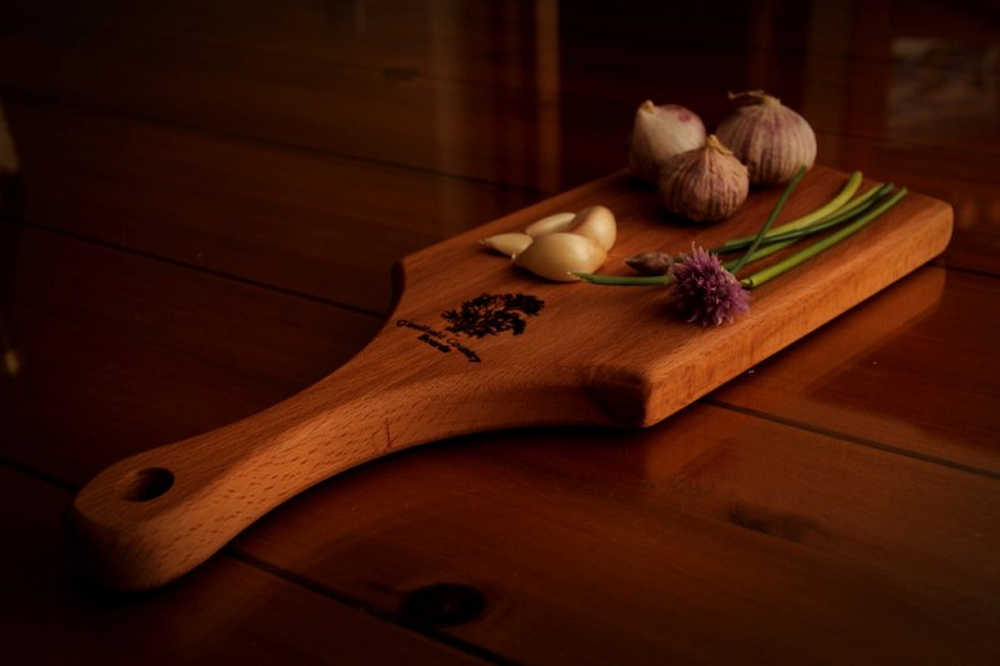
 In the latest of her series on the Year of Irish Design Aileesh Carew picks some favourites from the Design & Crafts Council of Ireland’s seasonal campaign, which highlights the choice of gifts designed and made in Ireland.
In the latest of her series on the Year of Irish Design Aileesh Carew picks some favourites from the Design & Crafts Council of Ireland’s seasonal campaign, which highlights the choice of gifts designed and made in Ireland.
As I sit to write this month’s piece, I spot some strategically placed shelves of Christmas cheer. I check my calendar to find out how many weeks left to … I really don’t want to say the word yet.
However, we all want to avoid the last minute rush around the shops and if we give a gift to a loved one or a valued customer we want it to be special and mean something. This year’s seasonal campaign, recently launched by the Design & Crafts Council of Ireland, presents a wider than ever choice of gifts designed and made in Ireland.
Like a child thumbing through the Ken Blacks catalogue, I found myself engrossed in the Give Irish Craft website (www.giveirishcraft.ie), which is packed with an amazing array of unique gift ideas all designed and made in Ireland, along with information on where to buy products both online and in store. The navigation of the site itself makes shopping a breeze, with products clearly categorized and filters that allow browsing by price bracket.
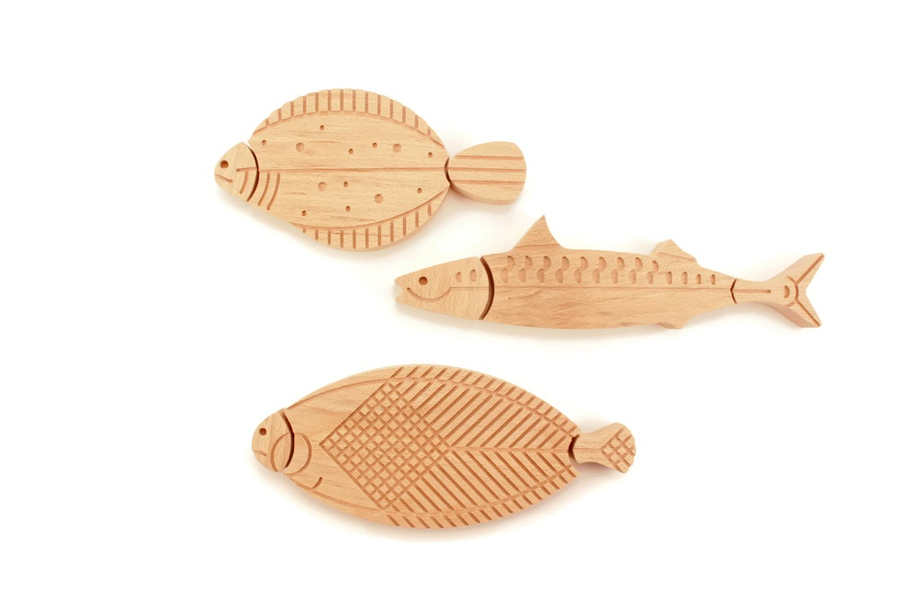
• Anything from Saturday Workshop, a family-owned company who mix traditional skills and new technologies to make simple yet original wooden products from locally sourced native hardwoods. Saturday Workshop recently featured in Ó, an exhibition of Irish craft and design at London Design Festival which received global recognition from esteemed publications including the New York Times Style Magazine, Dezeen and Wallpaper.
• Then I would cozy up with a huge box of Skellig chocolates and a throw from the Mayo based Foxford Woollen Mills, one of the last working mills in Ireland. Foxford’s collection of designs for contemporary interiors attracted international attention at the inaugural Irish Design Pavilion at trade show Maison et Objet in Paris this year.
• My Christmas cheeseboard will be displayed on a slab from the Meath-based Caulfield Country Boards, a company who produce a range of functional yet beautiful solid wood cutting boards recently shown in New York as part of DCCoI’s presence at NY NOW, one of the premier trade events in the US market. The boards and are now stocked in Brown Thomas.
• Of course Christmas is a time for sharing and these are just some of the gifts I will have on the list for my dearest (that I can enjoy too!):
 • A watch from Ansley Watches, who design and create unisex timepieces. These beautiful pieces have an air of timeless elegance and a strong celebrity following, with Hozier and Amy Huberman numbered among their fans.
• A watch from Ansley Watches, who design and create unisex timepieces. These beautiful pieces have an air of timeless elegance and a strong celebrity following, with Hozier and Amy Huberman numbered among their fans.
• A piece from Magda Bethani, a Wicklow-based ceramicist who creates functional ware, as well as one-off pieces of outstanding quality.
• A distinctively-Dublin framed print from young Irish studio me&him&you
Look for the recognisable ’Designed & Made in Ireland’ thumbprint symbol to easily identify genuine Irish products.
www.irishdesign2015.ie/liminal/
www.irishdesign2015.ie/programme/single/appetite-for-design
--
* ID2015 is delighted that the inaugural Irish Tourism Industry Awards have included a special award to highlight good design in Tourism. For more information http://www.irishtourismindustryawards.ie/categories/
* Irish Design 2015 partners include Founding Partner - MCO Projects; Accommodation Partner - The Doyle Collection; Venue Partner - OPW; Exhibition Partners – DAA. Technology Partner - IBM
An overview of the core programme of events can be found at www.irishdesign2015.ie

Aileesh Carew is the Tourism Advisor for Irish Design 2015. Her role is to provide advice and management of the tourism programme for the year of Irish design 2015, to communicate and animate interest in the Year of Design – nationally & internationally - and engage with tourism industry partners to raise awareness for Irish Design 2015. She has spent most of her career managing hotels, most recently opening Ballyfin Demesne in Co Laois, putting it on the international map as one of the best small hotels in Europe. A graduate of Shannon College of Hotel Management, with an MBA from Copenhagen Business School and Business Management Coaching from Scandinavian Leadership, she loves to travel, read cookery books, occasionally cooking from them, eat out and spend time with her family.
www.facebook.com/Irishdesign2015
@irishhdesign2015
instagram.com/irishdesign2015
Word from the West
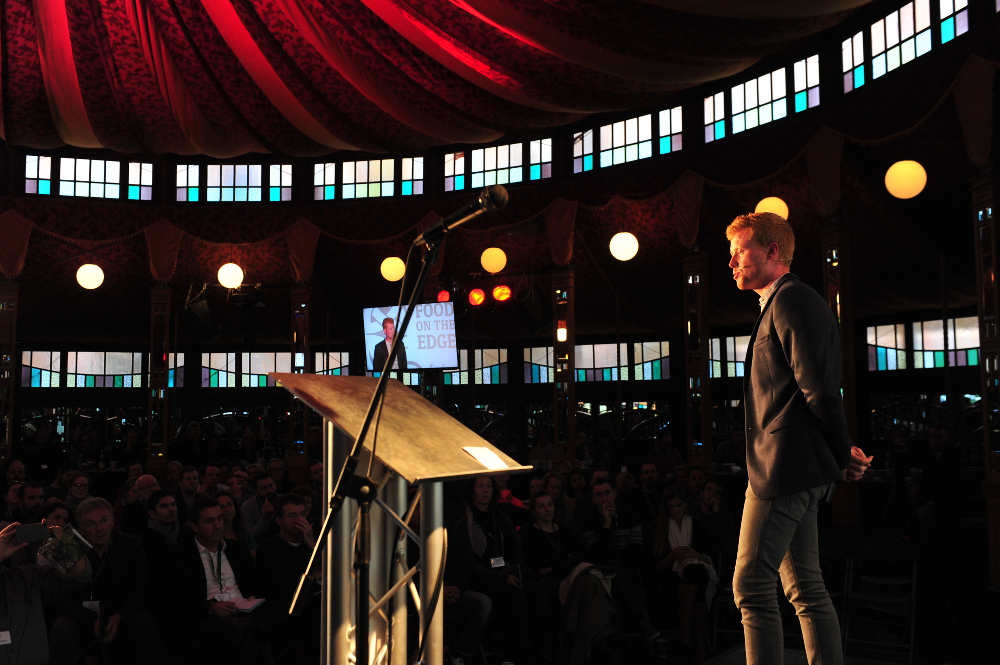

West of Ireland food writer Anne Marie Carroll reports on an extraordinary event that took place in Galway last month - Food on The Edge.
Monday and Tuesday have traditionally been the chef’s day off. On Monday 19th & Tuesday 20th of October 2015 restaurants around the globe may well have been deserted as a gathering of the worlds top chefs and food leaders came together for Food On The Edge, a Food Symposium in Galway.
It saw some of the biggest names in food converge on Galway city for two days of debate around the future of food. 'Food On the Edge' was the brainchild of JP McMahon of the EatGalway restaurant group, which includes the small but much feted Aniar restaurant in Galway.
Over forty top international chefs attended the inaugural two-day event in Galway. Considered by many to be the equivalent of a ‘G8 Summit’ for food and food culture, international chefs, restaurateurs and up to 350 attendees a day came to Galway to share their thoughts on what the food industry can do for the future of food. The highly anticipated symposium aimed to challenge our perspective on food and our connection with it.
The 40 or so speakers over the two day event were all chosen for their innovation, passion and influence on today’s food culture. Each speaker, with their own unique perspective spoke on the cultural, social, environmental and educational aspects of food.
The mission of Food on the Edge was to create a benchmark for best practice, in terms of food, its culture, and the people who produce it, debated on an open platform. The theme was the 'Future of Food'.
‘I had the idea for this event over a year ago and contacted about 200 top chefs never expecting the likes of Daniel Patterson, Elena Arzak, Quique Dacosta, Albert Adria and David Kinch to accept my invitation. Their drive to constantly test boundaries with food and food sustainability and then share that knowledge is inspirational."
JP McMahon said. "Many had never been to Ireland, let alone Galway, so given the beauty of our rugged location and the food provenance we have here it was an easy task to ask them to speak at Food On The Edge and visit.’. JP has an enviable contact list on his laptop, that’s for sure.
Each participant was given the opportunity to deliver topics such as nostalgia, emigration, preservation and traditions that centred on the future of food. The core theme which emerged across the two days, however, was responsibility. Responsibility in the way we source food, waste food, fish for food and supply food was repeatedly returned to.
LA chef Daniel Patterson discussed new fast-casual project named Loco’l, an idea with the potential to revolutionise fast food in The States and to impact on, what Patterson says are, forgotten communities. He also used his time on stage to talk about the lack of diversity in the industry and asked why 95% of the top chefs are white males. He hopes that some of the local, black staff he will employ will go on to work in and influence the industry at the very top.
Top young Irish chef Mark Moriarty, San Pellegrino World Young Chef 2015 (Photo above by Boyd Challanger), spoke about the shortage of chefs facing the industry at the moment and said that all chefs, especially those at the top, have a responsibility to change the conditions of work in the kitchen. He believes that many young people avoid the industry because of the long hours, harsh settings, stress and lack of financial gain and asked that those who employ young staff help to improve this.
Food waste was another core theme for Matt Orlando from the Amass restaurant in Copenhagen. He talked of a hypothetical future in which restaurants could be taxed on the amount of food they waste and gain bigger tax breaks for using local suppliers and responsible energy consumption. "We need to be proactive and not reactive, when you are reactive it is already too late".
Supermarkets also came under fire from Australian chef, Mark Best who spoke about how large supermarket chains are destroying the supply chain with increased profits and small margins for farmers and other smaller suppliers.
He also admitted that despite having the best of weathers, soil and farmers that they as a country are unable to feed themselves, relying more and more on imports to feed their population. Canadian Amanda Cohan explained why vegetables were stupid.
Sustainability and fishing also formed a key focus for a number of chefs. Nathan Outlaw and Albert Adria spoke about the need for rapid changes if there is to be anything edible left in our oceans. Adria spoke about ingredients that in just 15 years have become less and less available such as lobsters and mussels.
Outlaw, who runs two specialist seafood restaurants in the UK, questioned his own future and asked if a restaurant like his is sustainable in the future and if so, how much would he have to charge diners to make it viable when his entire business is based on dwindling ocean stock.
Roderick Sloan, a man whose work is diving for sea urchins in Norway for restaurants like Noma and Malmo, suggested that chefs can impact the seafood industry by connecting with smaller, more sustainable fishermen, dealing with 20 tonne quota boats rather than monster 200 tonne trawlers that suck up stock from the sea with no care for by-catch. He believes that sustainability, waste reduction, inclusion and incorporation are fundamental things for chefs to understand and the ways to influence debate and increase awareness.
A number of renowned Irish chefs also spoke including Chapter One’s Ross Lewis, Paul Flynn of The Tannery‚ Kevin Thornton and our own Jessica Murphy from Kai.
JP McMahon said ‘The first Food on the Edge has surpassed all my dreams and expectations. I have rarely experienced such passion, interest and excitement from a group of chefs of this calibre, we have started a forum where chefs can openly debate and discuss the key issues of an industry which doesn’t often get a chance to meet and speak peer to peer. The future of food is crucial to the health and wellbeing of the next generations and not just to a fine dining audience. I look forward very much to continuing this conversation at Food on the Edge in 2016!’
--
 Anne Marie Carroll is a freelance food writer and member of the Irish Food Writers’ Guild who lives in Galway with her husband and two children.
Anne Marie Carroll is a freelance food writer and member of the Irish Food Writers’ Guild who lives in Galway with her husband and two children.
With a background in design and illustration, Anne Marie made the switch to journalism with a regular food and wine column in The Galway Advertiser. Her work now mainly focuses on restaurant reviews, writing and editing recipes, the development of food photo shoots, including styling and photography. She also writes for a number of other publications and works as a consultant for small producers, food retailers and restaurants.
Anne Marie writes about all things food from the West of Ireland at her blog, Warm & Snug & Fat. You can also find her on twitter as @Biscuits4ABear
What can Irish Design do for Tourism?
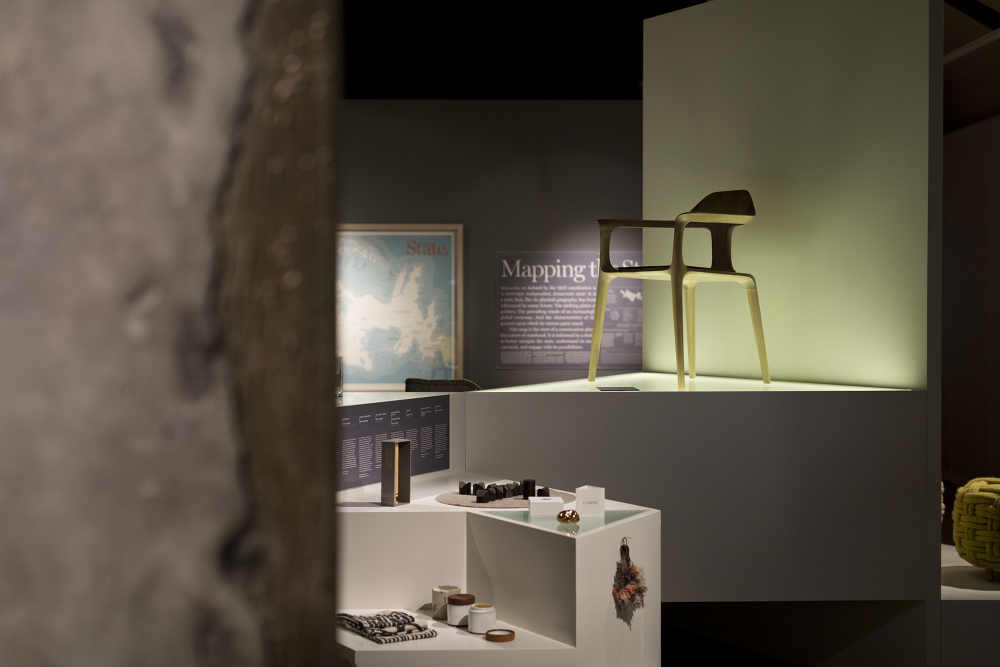

In the last of her series on the Year of Irish Design and its importance for tourism, Aileesh Carew writes about the initiative’s flagship exhibition Liminal - Irish design at the threshold.
As the year-long programme for Irish Design 2015 comes to a close, it is with great pride that I write this month about the initiative’s flagship exhibition Liminal - Irish design at the threshold, running at The Coach House at Dublin Castle until the end of December. If you miss it, you can catch it at the National Craft Gallery in Kilkenny from April 2016.
The exhibition presents a selection of Ireland’s most exciting design thinking and practice, with work developed collaboratively between designers working across disciplines. What is really interesting is the designers’ ability to transcend these disciplinary boundaries to address the issues of today and to meet the design challenges of tomorrow.
With my tourism hat on, the piece in the exhibition that I am immediately drawn to is The Souvenir Project. This is a collection of objects, curated by Makers & Brothers, that seeks to revitalise the notion of a what a souvenir can be, moving away from negative associations with mass tourism and mass production. It’s also an opportunity to show visitors to this country the truly extraordinary creative talent and quality of materials and making on offer.
Infamously, The Irish Farmer’s Journal published a letter in 1973 wherein a ‘disgusted teenager’ decried the fact that a souvenir she bought in Ireland was in fact manufactured in Japan. In a country with such a rich heritage of craft and workmanship, The Souvenir Project comes at a timely moment when a sense of place is being re-instilled into Irish produce.
The project includes nine souvenirs in total; the following are three of my favourites:
• Designed by Johnny Kelly and made by Nicholas Moss, The Rainbow Plate acknowledges and celebrates a defining moment in Ireland’s history: the legislation of same-sex marriage on 22 May 2015. The rainbow pattern on this beautiful plate is reconstructed entirely from the Nicholas Mosse Pottery’s archive of motifs, including elements dating back to the 1970s when the pottery was first established.
• Maybe not everyone would like to be reminded of the rain in Ireland, but it is what makes our countryside so beautifully green. Naming Rain, designed by Scott Burnett and made by J. Hill’s Standard, is a gorgeous crystal vase with the nature of rain interpreted through cuts on crystal.
 • The Lumper… what IS a lumper? I had never heard the word before but this souvenir is so covetable – a beautiful piece of bronze that begs to be picked up and cradled in your palm and would adorn any desk or bookshelf. Designed by Makers & Brothers and made by Bronze Art Fine Art Foundry, Lumper is a memento with a wonderfully curious form. And I now know that this humble root vegetable was introduced into Europe in the 16th century and has since become uniquely associated with Ireland. Once the most prevelant food source in the country, it is now grown on only one farm. Wouldn’t that be an interesting item to have on a menu?
• The Lumper… what IS a lumper? I had never heard the word before but this souvenir is so covetable – a beautiful piece of bronze that begs to be picked up and cradled in your palm and would adorn any desk or bookshelf. Designed by Makers & Brothers and made by Bronze Art Fine Art Foundry, Lumper is a memento with a wonderfully curious form. And I now know that this humble root vegetable was introduced into Europe in the 16th century and has since become uniquely associated with Ireland. Once the most prevelant food source in the country, it is now grown on only one farm. Wouldn’t that be an interesting item to have on a menu?
Unlike the mass produced mementos often sold around the country which present a kitsch image of Ireland that’s more Darby O’Gill than current, these beautiful souvenirs capture something of a place that is central to its identity. The Souvenir Project in its entirety can be seen at the Liminal exhibition (Lumper is presented with an essay by Darina Allen) and some are for sale at makersandbrothers.com
www.facebook.com/Irishdesign2015
@irishhdesign2015
instagram.com/irishdesign2015
--
* ID2015 is delighted that the inaugural Irish Tourism Industry Awards have included a special award to highlight good design in Tourism. For more information http://www.irishtourismindustryawards.ie/categories/
* Irish Design 2015 partners include Founding Partner - MCO Projects; Accommodation Partner - The Doyle Collection; Venue Partner - OPW; Exhibition Partners – DAA. Technology Partner - IBM
An overview of the core programme of events can be found at www.irishdesign2015.ie

Aileesh Carew is the Tourism Advisor for Irish Design 2015. Her role is to provide advice and management of the tourism programme for the year of Irish design 2015, to communicate and animate interest in the Year of Design – nationally & internationally - and engage with tourism industry partners to raise awareness for Irish Design 2015. She has spent most of her career managing hotels, most recently opening Ballyfin Demesne in Co Laois, putting it on the international map as one of the best small hotels in Europe. A graduate of Shannon College of Hotel Management, with an MBA from Copenhagen Business School and Business Management Coaching from Scandinavian Leadership, she loves to travel, read cookery books, occasionally cooking from them, eat out and spend time with her family.
Indie Fude
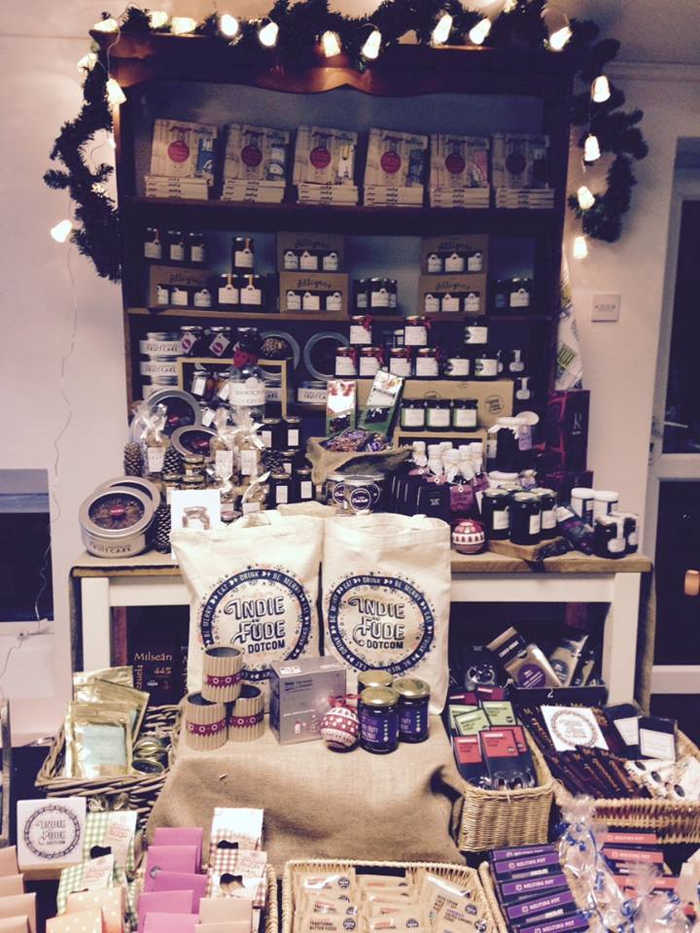
 Barbara Collins introduces a new pop up shop in County Down. “Not what it sounds like” could be a first reaction by the uninitiated - but lovely once you’re in the know!
Barbara Collins introduces a new pop up shop in County Down. “Not what it sounds like” could be a first reaction by the uninitiated - but lovely once you’re in the know!
They started off as an online artisan food service, now the Northern Ireland-based Indie Fude company has popped up at their new shop in Comber, County Down.
They have a stall at the town’s popular monthly Farmers’ Market and business was brisk enough for them to explore premises there.
“We knew that people wanted a bricks and mortar version of our business” says Founder and Chief Taster Jonathan McDowell.
The company sources artisan food products from across the island of Ireland. They include Sarah’s Honey, Kitty O’Shea’s Turf Sauce, Suki Tea, Green Saffron spice mixes and Broighter Gold Rapeseed Oil.
“We want people to experience the food made by independent producers. It’s all made in small batches and it all tastes great. Customers can buy shop, gift or subscribe through the website. Everything comes hand-wrapped in a funky, re-usable tote bag with our logo” says Jonathan.
Indie Fude also takes stalls at farmers markets and events around Ireland.
The delicatessen opened on November 26th in the Courtyard on High Street, Comber.
---
 Former BBC journalist and Chief Food Writer for Flavour magazine, Barbara Collins is a freelance food, travel and agricultural writer. She contributes regularly to Countryfile magazine, the Farmers Guardian, the Irish News, FFT and the Irish Mail on Sunday. She is a member of both the UK and Irish Food Writers Guilds and divides her time between Belfast and Galway. Barbara also does menu consultancy and copywriting.
Former BBC journalist and Chief Food Writer for Flavour magazine, Barbara Collins is a freelance food, travel and agricultural writer. She contributes regularly to Countryfile magazine, the Farmers Guardian, the Irish News, FFT and the Irish Mail on Sunday. She is a member of both the UK and Irish Food Writers Guilds and divides her time between Belfast and Galway. Barbara also does menu consultancy and copywriting.
@thegoodchinaset
Word from the West
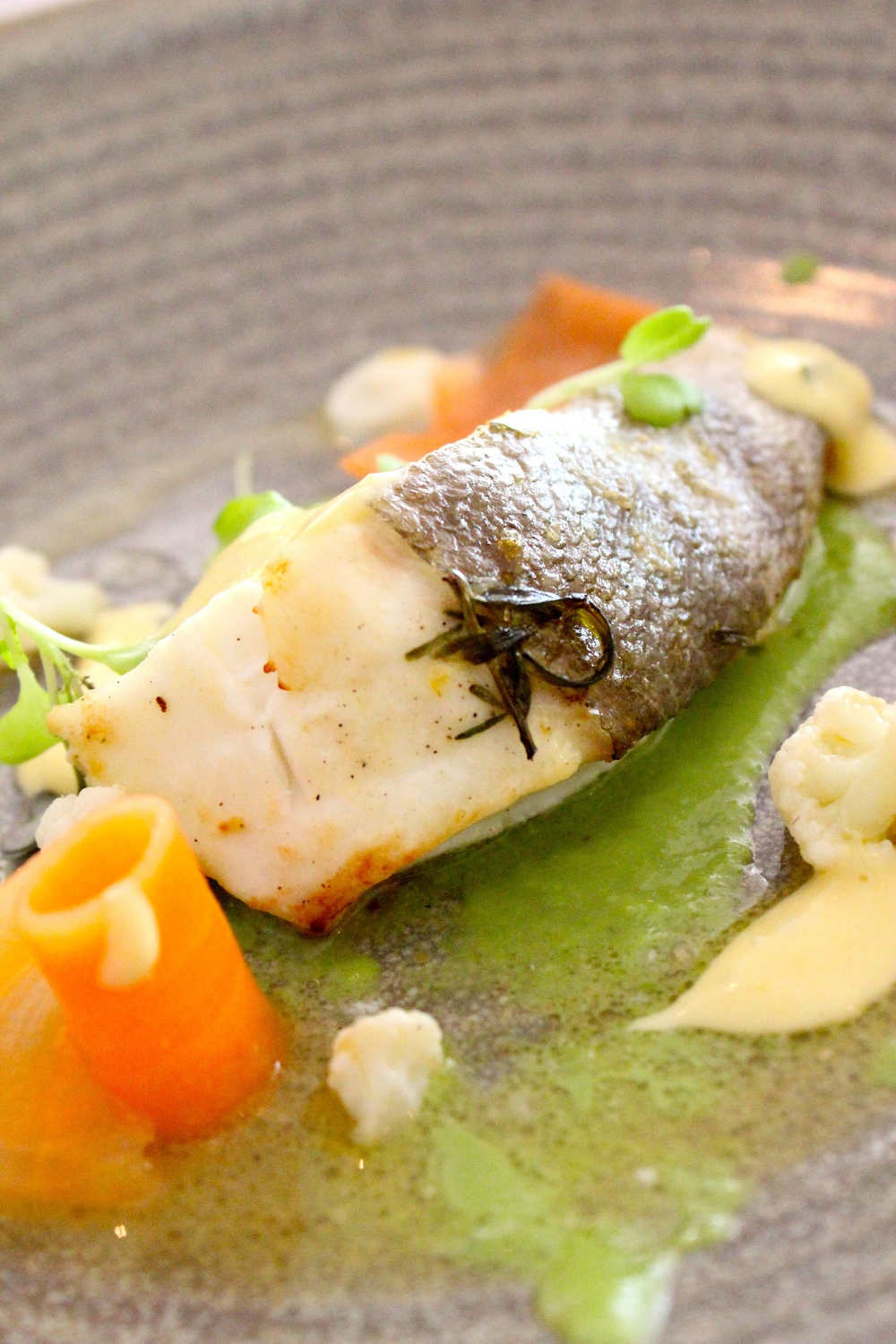
 West of Ireland food writer Anne Marie Carroll enjoys a tour of the hospitality and culinary arts department at the Galway-Mayo Institute of Technology (GMIT).
West of Ireland food writer Anne Marie Carroll enjoys a tour of the hospitality and culinary arts department at the Galway-Mayo Institute of Technology (GMIT).
Tourism is now Ireland’s most important indigenous industry, probably the most sustainable industry we have available to us here in the West. The importance of Food Tourism to our economy cannot be over emphasised. Notwithstanding some negative media coverage regarding some compromise within our food chain recently, it is still widely recognised that Ireland produces some of the world's greatest food.
While much has been made in recent times of the rise and rise of the standard of food and hospitality in the West of Ireland, many stars have had to come into alignment to bring this about. Talented, creative chefs, top class floor staff, promising venues, new restaurateurs and increase in commitment to local and seasonal ingredients.
Above all, no small part is due to the high standard and commitment of the staff of GMIT catering and hospitality who provide the new 'cannon fodder' to feed the ever increasing demands of Ireland's hospitality sector each season.
In the care of Cáit Noone, Head of College Tourism & Arts, I was given the ‘grand tour’. Cáit returned to Ireland from China in 2007 to take up the post of head of the Department of Hotel and Tourism Management in GMIT, advancing to her current title in 2012.
As Head of College she is responsible for the overall strategic direction and continued development of the College with an emphasis on inter-disciplinary programmes, college-industry links, international activities, and flexible modes of delivery. She also specialises in collaborating, colluding, cadjoling and convincing - there is not a culinary concern that she hasn't got some involvement in.
I also met Gerry Talbot, Head of Department of Culinary Arts & Service Industries. These two departments deliver the many courses that our growing hospitality and tourism sector require. The skills are extremely portable and can be applied to any corner of the world. Many of the college’s graduates occupy highly regarded posts around the globe as chefs and in hotel management.
Higher certificate in hotel management, higher certificate in bar supervision, higher certificate in tourism, higher certificate in hospitality studies, higher certificate in culinary arts - these are among the types of courses that are run. You can move on to a BA in those areas and others. There is also a BA honours degree for those wishing to broaden their horizons or possibly teach.
Many of the courses favour mature students either from within or outside of the industry and, if you are someone who has worked in the industry but has no formal qualifications, you may qualify for a process known as recognition of prior learning which entitles you to exception from particular studies due to your practical experience in those areas to date.
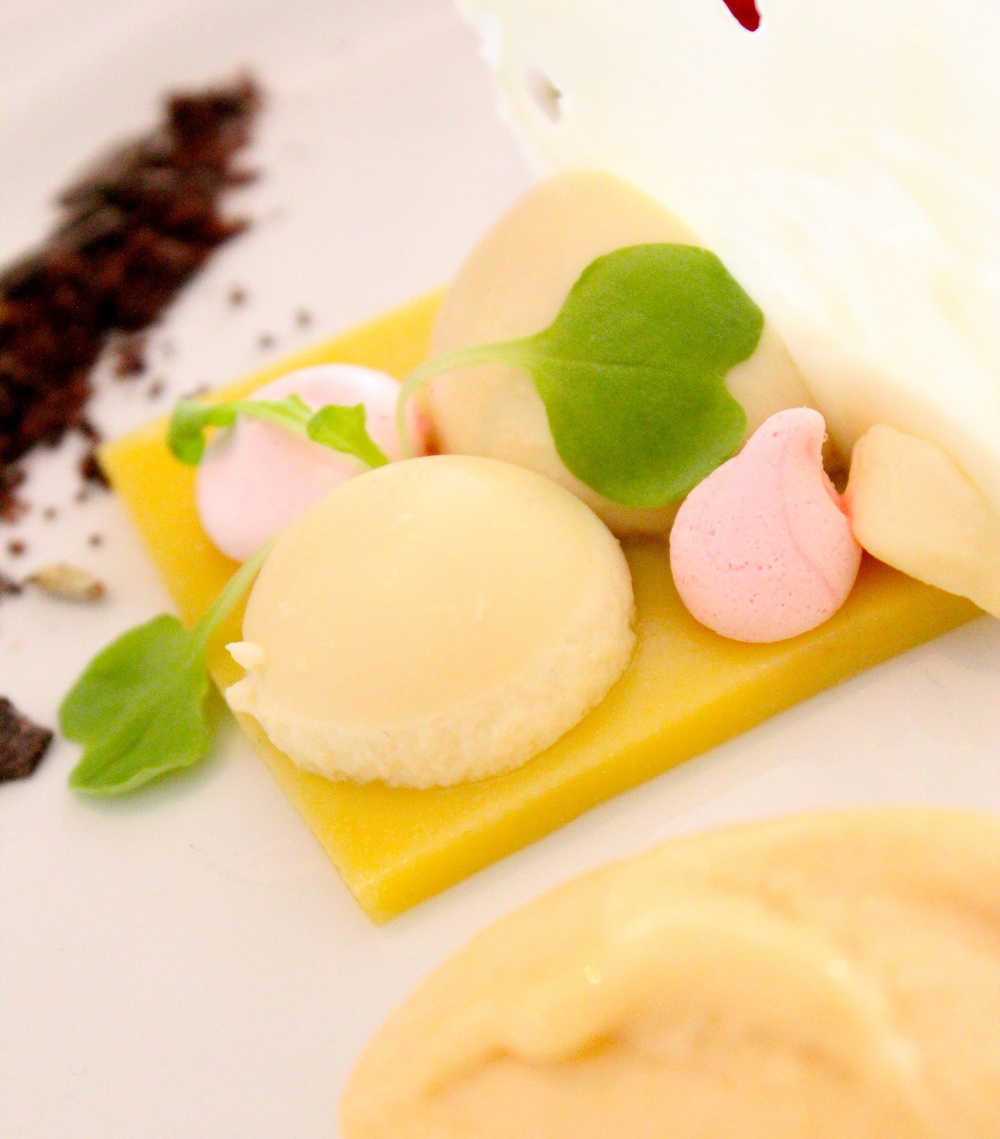 Starting this year is the exciting 'Certificate in Food Innovation and Entrepreneurship'. This free course is part of the Government-funded Higher Education Springboard initiative. A part-time course, it will be delivered by high-profile entrepreneurs including Brendan Allen of Castlemine Farms, JP McMahon, a Michelin-starred Galway restaurateur, Ronan Byrne aka The Friendly Farmer and Declan Droney of Kinvara Smoked Salmon, and delivered over two days per week for nineteen weeks at the Galway campus commencing Tuesday, 19 January 2016 and commencing at the Mayo campus in March 2016.
Starting this year is the exciting 'Certificate in Food Innovation and Entrepreneurship'. This free course is part of the Government-funded Higher Education Springboard initiative. A part-time course, it will be delivered by high-profile entrepreneurs including Brendan Allen of Castlemine Farms, JP McMahon, a Michelin-starred Galway restaurateur, Ronan Byrne aka The Friendly Farmer and Declan Droney of Kinvara Smoked Salmon, and delivered over two days per week for nineteen weeks at the Galway campus commencing Tuesday, 19 January 2016 and commencing at the Mayo campus in March 2016.
The training kitchens showcase new developments in food preparation. Internet access and visual aids are available to enhance the students’ learning experience whilst on the job. The well stocked central distribution larders feed out to all the kitchens.
The students work in the training restaurants - fine dining style in 'The Connemara', bistro-style in 'City of Galway,' with two fully stocked training bars in the City of Galway and the dedicated bar 'Wine Geese'.
I was treated to a five course tasting menu in 'The Connemara', absolutely delicious — the detail, the care, the balance of flavours belied the relative inexperience of the kitchen team. Apart from the individual kitchen units where basic culinary skills are taught, there are production kitchens attached to the training restaurants so students are preparing courses for service as they would in a real working restaurant with real paying customers.
A dedicated pastry kitchen teaches skills from basic to advanced levels. Their students’ chocolate sculptures and sugar craft creations are both intricate and stunning - one of the training restaurants is decorated with exhibition pieces that have won many awards, and who knew there was a competition for sugar craft architecture?
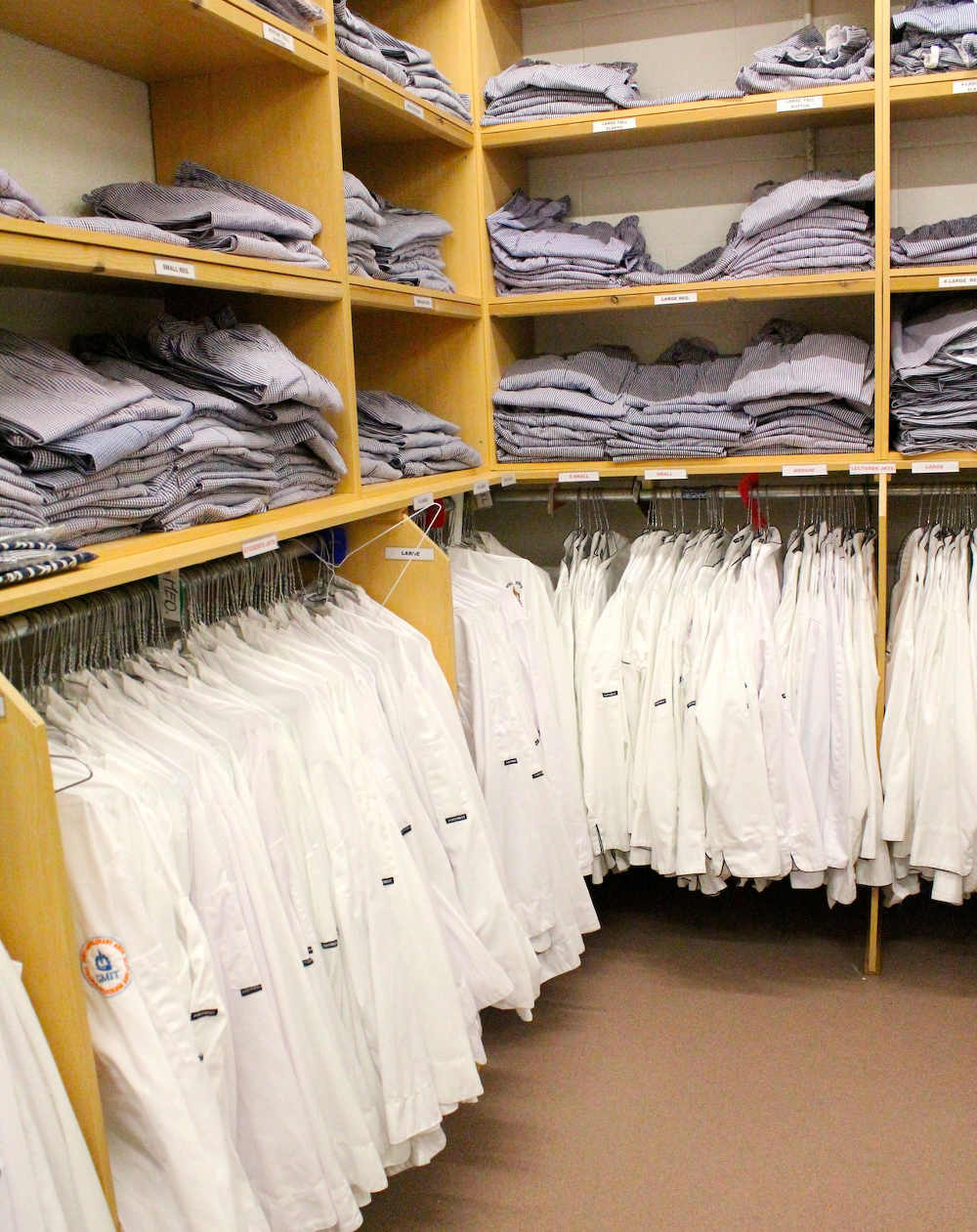 Other training facilities include a Wine Tasting Laboratory and Language Labs to further enable students to take up positions abroad. Plans are at an advanced stage for the introduction of an onsite brewery training facility. This will place GMIT at the forefront of this ever growing and innovative industry. For a sum payable by students at the beginning of the academic year, GMIT also boasts the only on site laundry to ensure that chefs whites are always pristine.
Other training facilities include a Wine Tasting Laboratory and Language Labs to further enable students to take up positions abroad. Plans are at an advanced stage for the introduction of an onsite brewery training facility. This will place GMIT at the forefront of this ever growing and innovative industry. For a sum payable by students at the beginning of the academic year, GMIT also boasts the only on site laundry to ensure that chefs whites are always pristine.
The tour with Cáit Noone was fascinating. The department is run with military precision and the emphasis is put on making the whole experience as close as possible to working in a real food business.
The department is also a sizable purchaser of goods in the local area as every day sees several kitchens running full blast with students cooking meals at every level. In the past few years they have increasingly been trying to buy from local farmers and producers with now over 70 per cent of all produce being obtained on a local level. Many of the students are required to do work experience for 12 weeks, a wonderful facility for those in the business during their busiest time in June, July, and August.
The passion and professionalism shown by the teaching staff such as Cormac Handy, Jacinda Dalton, Ulrich Hoeche and Colin Gilligan is second to none. On a local level the industry has been very supportive of the school and many of the leading organisations active in the hospitality, food and wine industry have acted as mentors to student on industry placements, give their time to help develop new programmes and encourage high performing students.
This level of support and continued success of students and graduates is reassuring and indicates that the partnership between the school, students, graduates and industry is vibrant and dynamic and will continue to grow into the future. Something which will, hopefully, continue to be mutually beneficial to all.
--

Anne Marie Carroll is a freelance food writer and member of the Irish Food Writers’ Guild who lives in Galway with her husband and two children.
With a background in design and illustration, Anne Marie made the switch to journalism with a regular food and wine column in The Galway Advertiser. Her work now mainly focuses on restaurant reviews, writing and editing recipes, the development of food photo shoots, including styling and photography. She also writes for a number of other publications and works as a consultant for small producers, food retailers and restaurants.
Anne Marie writes about all things food from the West of Ireland at her blog, Warm & Snug & Fat. You can also find her on twitter as @Biscuits4ABear.
A Year in Food - What restaurant trends will we see emerging in 2016?
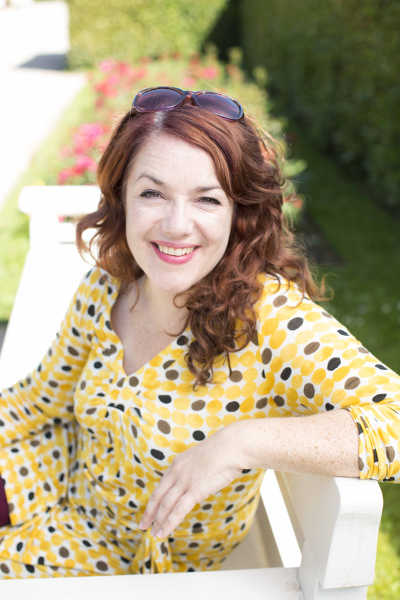
Aoife Carrigy polishes up her crystal ball to see what’s coming to the restaurant scene in Ireland - especially Dublin - and elsewhere this year (with a little help from some insider tipsters…)
1. Values not value
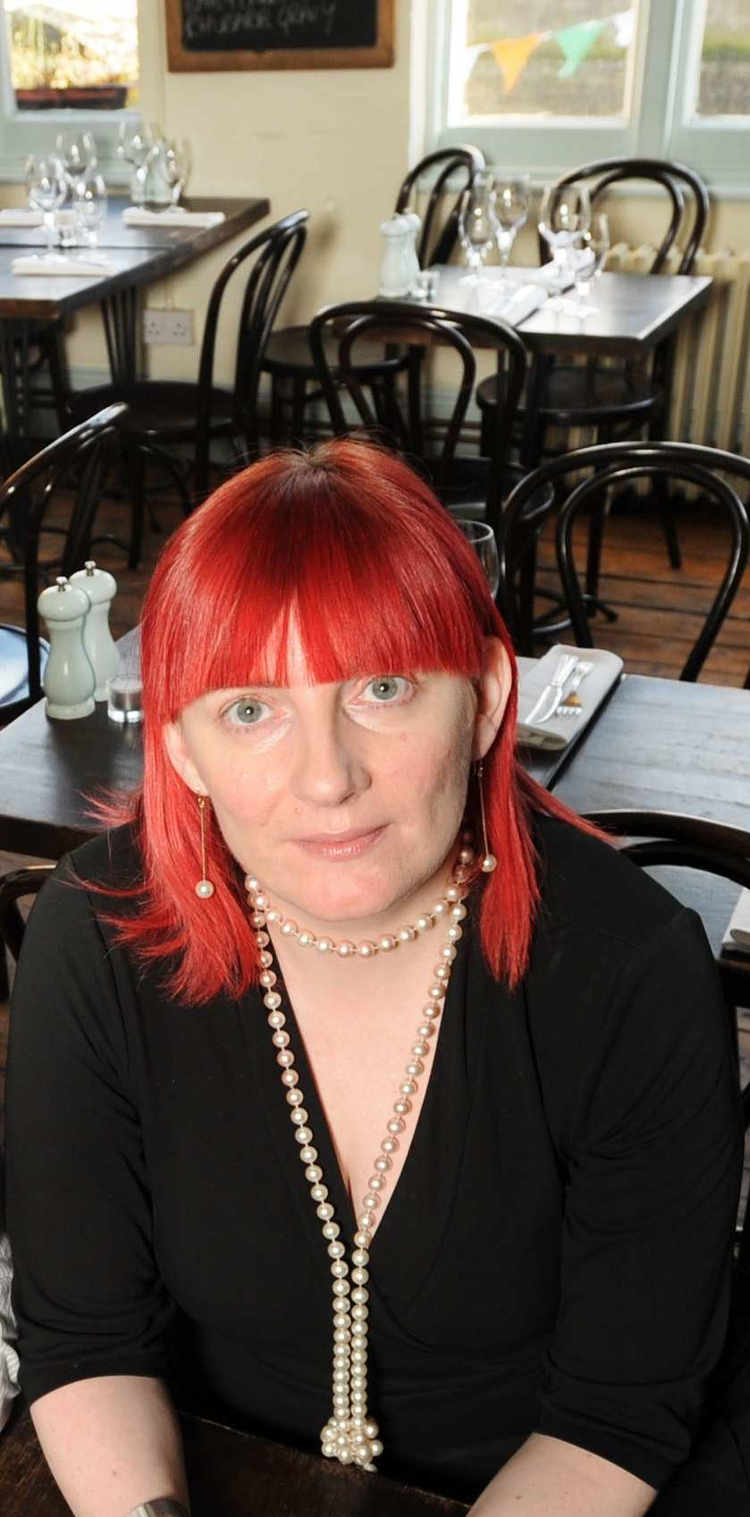 ‘Values not value’ is what serial restaurateur Elaine Murphy, right (of The Winding Stair, The Woollen Mills, The Washerwoman and next year’s Legal Eagle gastropub) describes as “a hilarious phrase which is set to sum up the ethos for food in 2016”. Sustainability, ethical and ecological trading and food waste were certainly hot topics at 2015’s Food on the Edge food symposium. Run by Galwegian chef JP McMahon, it attracted top international chefs such as Daniel Patterson, whose game-changing new US-based Loco’l chain offers “fast food with real ingredients”. McMahon has since been busy on Kickstarter raising funds for Farmer, a new Irish ethical fast food chain with a focus on provenance, sustainability and animal welfare. Watch this space.
‘Values not value’ is what serial restaurateur Elaine Murphy, right (of The Winding Stair, The Woollen Mills, The Washerwoman and next year’s Legal Eagle gastropub) describes as “a hilarious phrase which is set to sum up the ethos for food in 2016”. Sustainability, ethical and ecological trading and food waste were certainly hot topics at 2015’s Food on the Edge food symposium. Run by Galwegian chef JP McMahon, it attracted top international chefs such as Daniel Patterson, whose game-changing new US-based Loco’l chain offers “fast food with real ingredients”. McMahon has since been busy on Kickstarter raising funds for Farmer, a new Irish ethical fast food chain with a focus on provenance, sustainability and animal welfare. Watch this space.
2. Dramarama
If there’s one man who knows a marketable food trend when he sees it, it’s entrepreneur John Farrell of Dublin’s 777, SuperMissSue, Luna, The Butcher Grill and Dillingers. He stirred up 2015 with 1950’s glamour à la SMS Luna, with the kind of glamorous dining room that you’d don your glad rags for. Food consultancy specialist, Tim Magee of Host & Co believes that next year we’ll see “more ‘dressy up’ dining” by which he means heavy investment in pretty rooms. “People want comfort again, and drama.”
3. Less is more (or less)
“I love the idea of little restaurants or vendors in stalls that are doing one thing, and doing it really well,” says Katie Sanderson of Dillisk and Living Dinners fame. Katie name-checks London’s Weligama (Sri Lankan egg hoppers from a street market) and Bao (steamed buns) as great single-item examples. “I think I'd personally like to explore this area,” she adds, having just dropped the bomb that there most likely won’t be a Dillisk 2016.
4. Green green grass of home
Fat is back and butter is the reclaimed Queen of the Dairy. And who does butter better than we Irish? Chefs are taking advantage of all that rain and all that grass with dishes that celebrate our milk and cream. They’re churning their own butter, like Barry Fitzgerald at Bastible, whose menu might also feature milk curd dumplings, smoked ricotta, or truffled crème fraiche for the house chips. And a cow’s not just for cream you know. Indigenous breeds are making a comeback with the likes of Glenarm Shorthorn and Dexter (as featured on the menu of D2 newcomer, Richmond) being So Hot Right Now.
5. Chuck’s back
Crispy chicken skin is de rigeur while wings are getting a going over. London’s Smoking Goat and Portland’s Pok Pok pimp theirs with fish sauce for extra umami-whammy. Glasnevin’s The Washerwoman offer Washerwings, a three-way choice between classic Buffalo, Washerwoman BBQ or Chipotle Ketchup style, each served with Young Bucks Blue raw milk cheese dip
6. Ethnic reboot
With John Farrell, chef Karl Whelan and music guru Will Dempsey off to Hong Kong to research their new Dublin ‘contemporary Chinese’ juke joint (which Farrell is designing for owners Dempsey and Whelan), we’re set to see ethnic being re-mapped. Farrell describes the yet-to-be-named Camden Street eatery as “contemporary Chinese, an homage to Hong Kong with an emphasis on duck”. Further up the road, chef Sunil Ghai of Ananda fame will open Pickle very soon, focusing on regional northern Indian cuisines and eschewing prime cuts for rustic ingredients.
7. Here, fishy fishy
Once there was none and now they’re everywhere. Seafood eateries, that is. But it’s not just Dubliners who think fish is suddenly sexy. Berkeley Square’s preposterous Sexy Fish was the hottest things to hit Mayfair this year. Throughout January 2016, The Cliff Townhouse’s initiative called ‘Here’s a fish you should meet’ will feature daily special lesser-ordered lovelies such as coley, dory or pickled herrings and they will be tweeting tips for cooking with fish in the run-up to their Seafood Masterclass on Wednesday evening, 27th January (€25pp including glass of bubbly on arrival).
8. For Preservation’s Sake
Smoking, fermenting, pickling, brining, curing. All these age-old ways of making food last longer often make food taste better too. And chefs love making food taste better. Simple infusions can stretch out seasonal flavours, while the lighter touch of marinating may not preserve so much as transform – think raw fish as reconfigured in ‘poke’, an on-trend Hawaiin-style ceviche. Expect a further embracing of these age-old arts, with a particular scope for non-alcoholic fermented drinks such as kombucha and kefir to become the new cold-pressed juice (as per The Fumbally’s lead).
9. Super Sprout Me
We all want to eat well. And we all want to live well. ‘Can’t we do both?’ asks almost everyone these days, and daytime hotspots Counter Culture, Cocu and Sprout & Co are answering with clever takes on clean food. Besides their cold-pressed juices, Sprout & Co offer chia porridge for breakie various veg-tastic salads and build-your-own protein boxes (the new sandwich). There’s kale too, natch.
10. And to drink?
Murphy’s “old-school gastro-pub” Legal Eagle will have “an unprecedented whiskey bar with people able to keep and mark their own bottles”, with which to wash down all sorts of fare from devilled kidneys and jugged hare to hefty salads and soul-food sambos. As well as whiskey in the jar-oh, all over town we will be drinking craftier cocktails, ciders and beers, often paired with food in place of wine, not to mention more Irish gins and even Irish tonics (aka the new Poacher’s Well). Cheers to that folks – and a happy new year while we’re at it!
--

Aoife Carrigy is a freelance food and wine writer and editor. She is a regular contributor to FOOD&WINE Magazine, The Irish Independent, The Herald and Cara Magazine, amongst others, and was co-author of The Ard Bia Cookbook and general editor of The ICA Cookbook, The ICA Book of Home and Family, The ICA Book of Tea & Company and, most recently, The ICA Book of Christmas. In 2015, she teamed up with Great Irish Beverages to launch the inaugural Dublin Wine Fest and Irish Cider & Food Day.
This feature first appeared in The Herald and is reproduced with their kind permission.
Word from the West
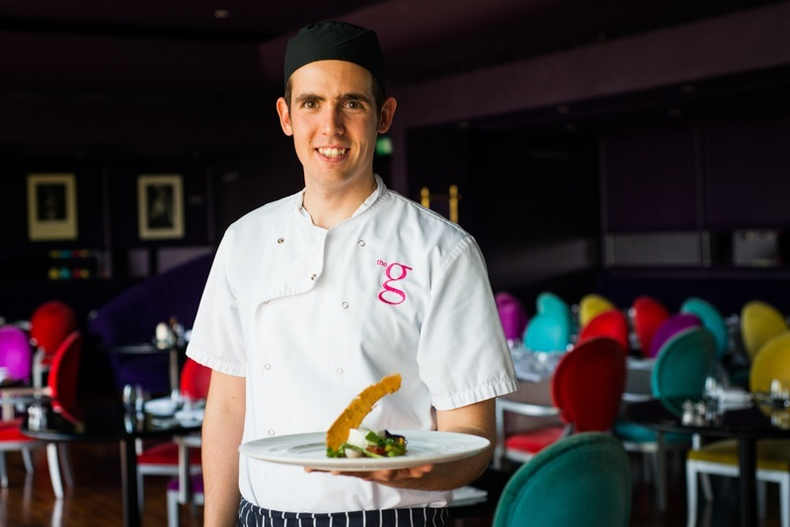
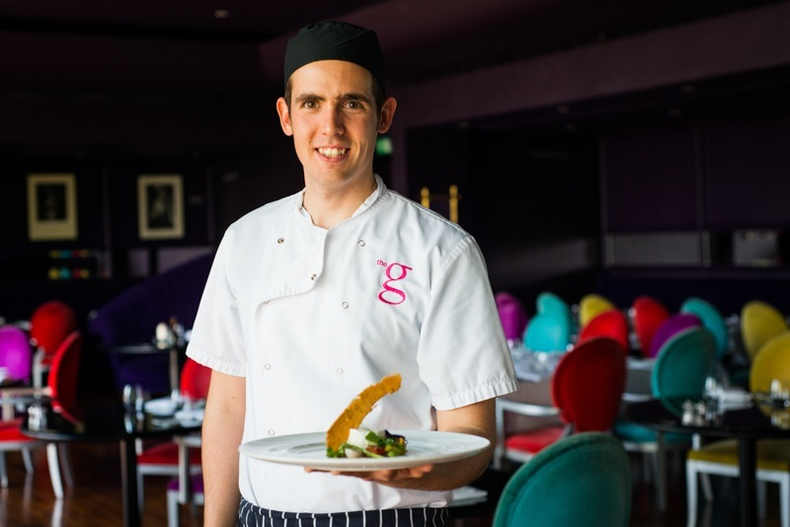 West of Ireland food writer Anne Marie Carroll reveals something surprising on the menu at the G Hotel
West of Ireland food writer Anne Marie Carroll reveals something surprising on the menu at the G Hotel
When the debate began early last year on the government’s plans for the introduction of a mandatory calorie count on menus, it’s fair to say, not everyone was happy about it.
According to the Food Safety Authority of Ireland, overweight and obesity as a public health issue are ranked as the biggest pandemic affecting the largest number of people in Ireland, contributing to a myriad of preventable chronic diseases.
The proposed legislation will apply to food businesses regardless of size, type of food sold, ownership or location. The requirements are specific - all menus, including boards, leaflets and digital must display calorie details alongside the price, in the same font size and colour.
Why is putting calories on menus important? The arguments for putting this information on menus are compelling. The problem of being overweight affects people of all ages in Ireland and we have the second highest rate of obesity in Europe.
More and more people in Ireland are suffering from heart disease, cancer, diabetes and stroke because of obesity. As our size goes up so does that of the food available to us, portions sizes have become much bigger in recent years.
Bigger portions lead consumers to eat more calories. The ultimate aim of putting calories on menus is to help people stay within their calorie limits and thus improve the nation’s health.
While large scale restaurants such as Supermac’s have everything measured to a very exact and precise level and have long had their calories available to the public, the arguments against calories on menus for artisan and fine dining establishments are multiple. The cost is prohibitive, the proposed legislation would cost each restaurant an estimated €5,000 per year, a real problem for a small restaurant in an industry with notoriously tight margins.
This all comes not so long after the mandatory introduction of allergens on menus was brought in, in December 2014 - restaurants suggest it already takes them an additional 4-5 hours each week to prepare this information. How exactly would the Government would monitor the compliance of these businesses? There are over 22,000 food outlets in Ireland to check.
 Displaying the amount of calories on food and drinks for sale is a form of labelling. The first and most important rule of labelling is that the consumer must not be misled, so this information must be accurate. Most chefs will tell you that menus in restaurants vary from day to day and therefore calorie counting would be highly inaccurate - it is difficult to calculate hand-crafted dishes correctly.
Displaying the amount of calories on food and drinks for sale is a form of labelling. The first and most important rule of labelling is that the consumer must not be misled, so this information must be accurate. Most chefs will tell you that menus in restaurants vary from day to day and therefore calorie counting would be highly inaccurate - it is difficult to calculate hand-crafted dishes correctly.
Calorie counts on menus have already been introduced in the United States, five out of six customers paid no attention to the information, according to a study by New York University. Some people prefer to go out and enjoy themselves without having to know the calorie content of their meal.
The biggest problem with calories is that they tell us so very little about the food as to not matter at all. Calories are merely a unit of energy, no more, no less. There are good calories and bad. They don't tell how much salt or sugar there is, or if there are any artificial sweeteners, GMO's or anything of real consequence.
Somewhere that will tell you everything you need to know about the quality of your calories is The g Hotel and its chef, David Bodas (top right). David combines his love of food and cooking with his background in nutrition to show the hotel guests that food can be both tasty and healthy.
He is motivated by the positive impact food can have on your energy, health and long term well-being. Since January this year he and the Hotel have been providing detailed nutritional information for their dishes in the Signature Lounges.
The culinary team is headed up by Cedric Bottarlini. This is a chef who cares about food, the local landscape and showcasing Irish produce with a touch of flair. He has built a strong team of similarly passionate chefs who share his culinary vision and strive for excellence in everything they craft.
This initiative is their way of taking it to the next level and give the guests all the information they need to make better choices. Their aim is to provide the options for a healthier lifestyle without sacrificing taste or quality. "It is the way things are going, this is the future" Cedric says. "People should have the information to make informed decisions."
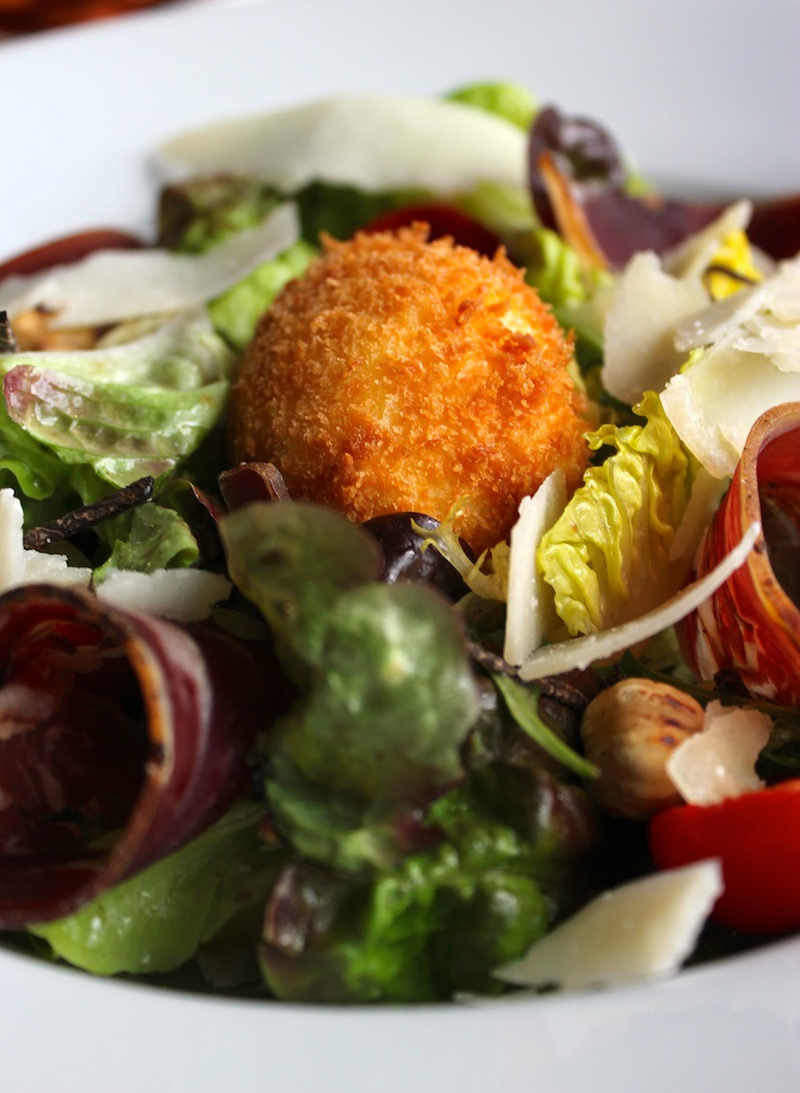 Each dish on the lunch and lounge menus has its own details printed on a little card listing not only the allergens and calories but also the carbohydrate, sugar, fibre and protein content. Total fat is listed and how much of that is saturated. Cholesterol, calcium and sodium are all included as well as vitamins A, C and D. A real help for those not just watching their weight but also those with concerns about cholesterol, sugar or salt levels.
Each dish on the lunch and lounge menus has its own details printed on a little card listing not only the allergens and calories but also the carbohydrate, sugar, fibre and protein content. Total fat is listed and how much of that is saturated. Cholesterol, calcium and sodium are all included as well as vitamins A, C and D. A real help for those not just watching their weight but also those with concerns about cholesterol, sugar or salt levels.
There’s no tricky maths to do, the values are presented for the full dish as it is presented to you and they are consistent every time as the portions are pre-weighed. Chefs Cedric and David insist it is not that difficult to do either, with the help of the right software and an organised team in the kitchen. Best of all, the nutritional information is not on the menu, but available on request, so you can choose to munch away in blissful ignorance if you so wish.
The g's three Signature Lounges are perfect for casual dining with food served from 11am until 10pm and a wide choice from small bites to main-courses and tempting treats on the menu.
While I firmly believe that better, more considered food education from primary school level and beyond is the preferred answer to the obesity epidemic rather than calories on menus, in a clever twist, the g team have managed to put something much more useful than calories on the menu while not actually putting the calories on the menu at all - I tip my Philip Treacy hat to you Chefs!
--
 Anne Marie Carroll is a freelance food writer and member of the Irish Food Writers’ Guild who lives in Galway with her husband and two children.
Anne Marie Carroll is a freelance food writer and member of the Irish Food Writers’ Guild who lives in Galway with her husband and two children.
With a background in design and illustration, Anne Marie made the switch to journalism with a regular food and wine column in The Galway Advertiser. Her work now mainly focuses on restaurant reviews, writing and editing recipes, the development of food photo shoots, including styling and photography. She also writes for a number of other publications and works as a consultant for small producers, food retailers and restaurants.
Anne Marie writes about all things food from the West of Ireland at her blog, Warm & Snug & Fat. You can also find her on twitter as @Biscuits4ABear
Word from the West
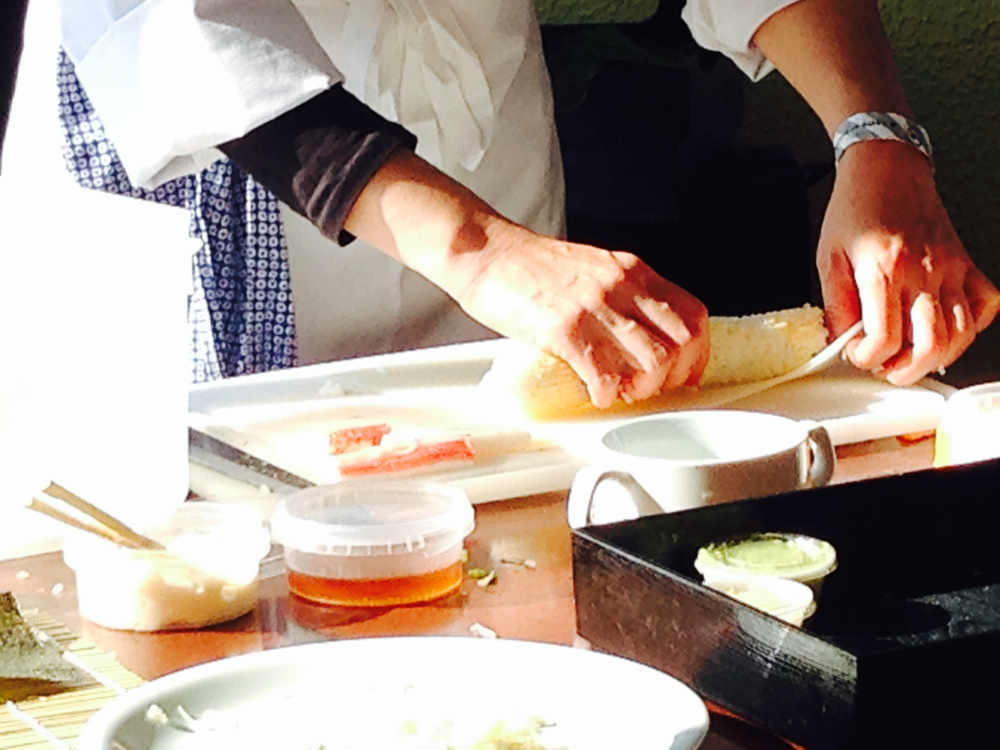
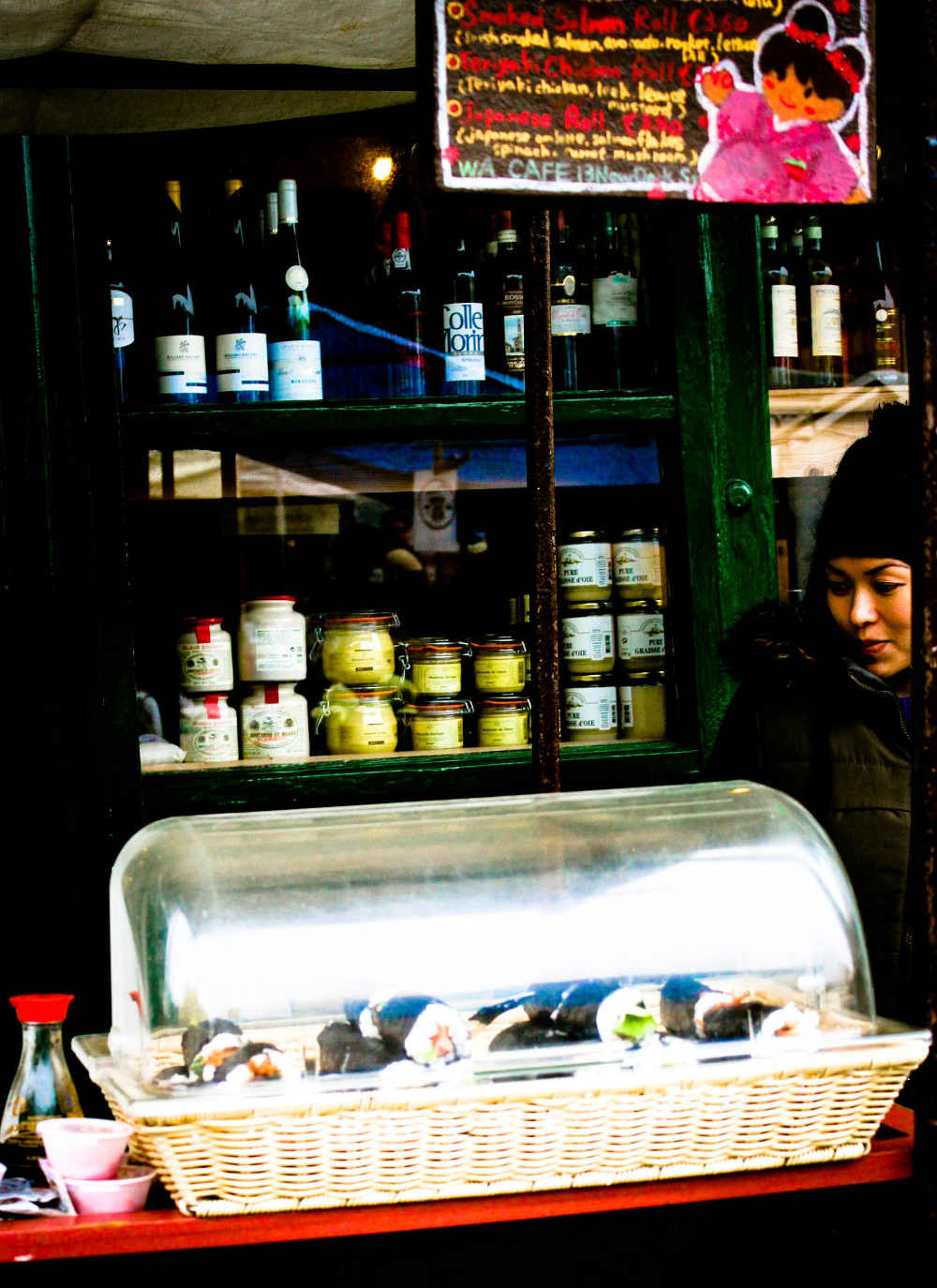 Anne Marie Carroll finds that East meets West at Wa Café.
Anne Marie Carroll finds that East meets West at Wa Café.
For the majority of the population of the world, it would be unthinkable to sit down to dinner without a pot of hot rice on the table. Put there to soak up sauces and juice, sitting at the centre of the plate, making it a meal. Long-grain, short-grain, brown, black and red, there is a rice for every dish, from a classic risotto or paella to biryani and kedgeree. And who among us could say no to a creamy rice pudding with a dollop of homemade jam?
We Irish, of course, take similar comfort in potatoes, refusing to have a main meal without them. Boiled, roasted, mashed with butter, even pizza or pasta come with a side of spuds in some households.
Wa Cafe is a cosy little spot just off the docks in Galway City where the rice is soft, sticky and delicious and the food is authentically Japanese, from sushi rolls, miso soup, bento boxes to green teas.
The menu is short with a rotating choice of specials ensuring there is always something new. Knowing as we do, that the Japanese are the only people on earth to ever manage the culinary magic trick of making tofu palatable, it is no surprise that there is a good choice for vegetarians. There are chopsticks on the tables, but they will give you a fork and not laugh if you need one.
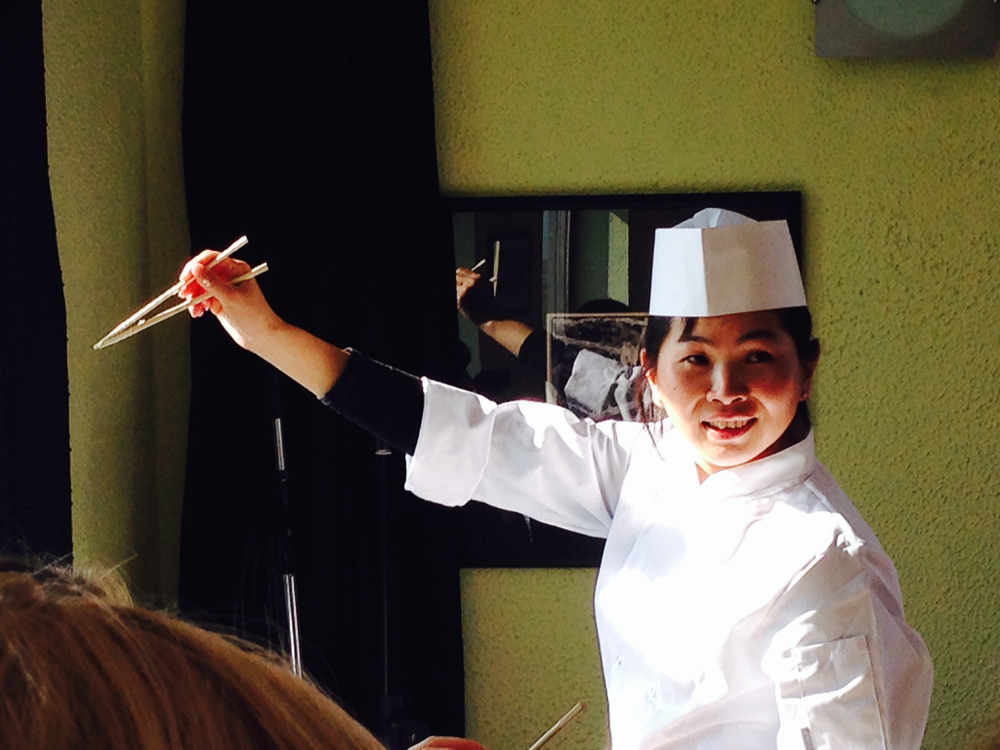 In Japan a chef must train for ten years to become a professional sushi chef or `Shokunin`. Wa Cafes owner, Yoshimi Hayakawa, had done her sushi training in Tokyo when just over fourteen years ago she came to Galway to learn English and like so many before her to visit Galway, she has never left.
In Japan a chef must train for ten years to become a professional sushi chef or `Shokunin`. Wa Cafes owner, Yoshimi Hayakawa, had done her sushi training in Tokyo when just over fourteen years ago she came to Galway to learn English and like so many before her to visit Galway, she has never left.
She fell in love with the City of the Tribes and began her culinary career serving traditional sushi in Galway’s famous market, captivated by Galway’s cosmopolitan vibe and the warm and engaging spirit of its people.
Yoshimi opened Wa Café at 13 New Dock Street eight years ago and this taste of Japanese life is now a firm fixture on Galway’s dining scene. The cafe has a very loyal following from both locals and visitors to the city.
Wa, which means harmony, brings a fusion between East and West and now Yoshimi does exactly that too. Just last year, through her connection with the Back to Education Centre, Yoshimi enrolled in the culinary school at GMIT. Wa Cafe had provided a platform for work experience through the education centre and through this relationship, Yoshimi found herself heading to school for the first time in Ireland.
With no knowledge of traditional Irish cooking methods, she spent six months immersed in learning new skills. “I have enjoyed so much learning how to cook an Irish Fry, baking bread and even an apple tart, these are things I would never have experienced, except that I am in Galway and am taking these opportunities,” she says. As part of this course Yoshimi had to complete seventy hours work experience in her friend Jess Murphy’s kitchen at her restaurant, Kai, on Sea Road.
Through this journey of food and culture, Yoshimi has updated and changed her own menu at Wa Cafe to incorporate more flavours and seasonal produce to suit Irish diners. “After going back to school and working in Kai, I felt that tradition is important but also transition is important too. Studying nutrition, menu planning and food trends are also to the forefront of my mind and interests.”
 The new menu includes Connemara miso soup bowl and riceballs using seaweed from Mungo Murphys, 'Toyota City Ramen', (Yoshimi's home town) with sticky Friendly Farmer chicken, Ramen noodle, Galway free range hens egg and vegetables from the market. “The world is changing fast, becoming more diverse and people mind more about food. You can find a harmony in the Wa café new menu, harmony of tradition and transition as well as harmony of east and west.
The new menu includes Connemara miso soup bowl and riceballs using seaweed from Mungo Murphys, 'Toyota City Ramen', (Yoshimi's home town) with sticky Friendly Farmer chicken, Ramen noodle, Galway free range hens egg and vegetables from the market. “The world is changing fast, becoming more diverse and people mind more about food. You can find a harmony in the Wa café new menu, harmony of tradition and transition as well as harmony of east and west.
For dinner time, you can still enjoy traditional style of nigiri sushi made with local and seasonal fish. Do not be surprised there are no tuna and no salmon on the menu, Wa cafe will use only sustainable fish.” explained Yoshimi.
The Wa Cafe Lunch Box includes panko pollock, traditional tofu cake, chicken combined with miso soup and market salad of quick pickles. You can also choose from the sushi roll selection that ranges from a Wa ginger and Wasbi, Achill Island smoked mackerel, chicken or mushroom turnip roll.
Galway is known for its diversity, our medieval city has been a melting pot for as long as it has existed. This has translated to our restaurants and our cuisine is becoming as varied as the population. There is a rich exchange of cultural influences and food traditions from far and wide that comes with each of the many migrant populations that chose to settle here and call Galway home. Cuban, Japanese, Indian or African, these exotic, complex cuisines are creating a food culture that continues to evolve. Yoshimi Hayakawa's story is a story about food, community and culture, one more very welcome voice in Galways global village.
Wa Cafe, 13 New Dock Street, Galway City.
Tel: 091 895850. E-mail: info@wacafe.net
Wa Cafe is open Monday to Thursday from 12pm to 3pm for lunch and from 5pm to 9pm for dinner and from Friday to Sunday from 12pm to 9pm. Wa Cafe have a stall at the Galway Market every Saturday and Yoshimi also runs sushi workshops teaching traditional sushi making methods.
--
 Anne Marie Carroll is a freelance food writer and member of the Irish Food Writers’ Guild who lives in Galway with her husband and two children.
Anne Marie Carroll is a freelance food writer and member of the Irish Food Writers’ Guild who lives in Galway with her husband and two children.
With a background in design and illustration, Anne Marie made the switch to journalism with a regular food and wine column in The Galway Advertiser. Her work now mainly focuses on restaurant reviews, writing and editing recipes, the development of food photo shoots, including styling and photography. She also writes for a number of other publications and works as a consultant for small producers, food retailers and restaurants.
Anne Marie writes about all things food from the West of Ireland at her blog, Warm & Snug & Fat. You can also find her on twitter as @Biscuits4ABear
Templeicious
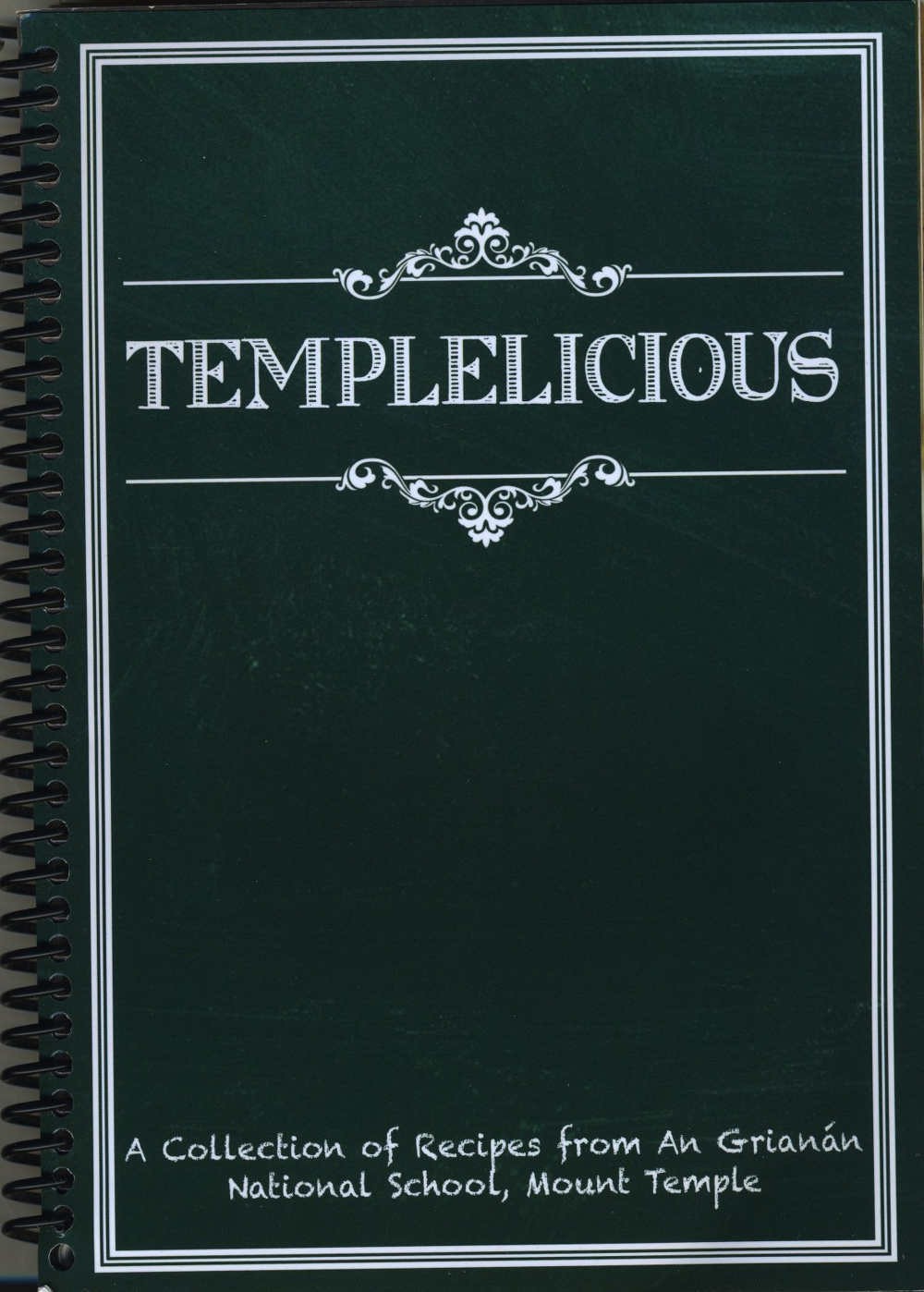
 Nessa Robins introduces a terrific cookbook that the students and staff of An Grianán National School in Mount Temple, Co. Westmeath, have produced to help raise funds for the school.
Nessa Robins introduces a terrific cookbook that the students and staff of An Grianán National School in Mount Temple, Co. Westmeath, have produced to help raise funds for the school.
Templelicious is a fundraising cookbook from An Grianán National School in Mount Temple, Co. Westmeath. It is mainly a collection of recipes, from the 4th, 5th and 6th class students and the staff of An Grianán, but there are also recipes from some well known celebrities, such as Neven Maguire, Robbie Henshaw, John Heslin and James O' Donoghue, as well as inspirational quotes from some of the children's sporting heroes.
Additionally, the book includes words of wisdom, including kitchen tips, remedies and old wives' tales, from the local active age group. All in all this is so much more than just a recipe book, it’s a glance into moments the school children hold close to their hearts, while also being reflective of the community as a whole.
This project has been incredibly rewarding for the entire school. From choosing the title of the book to styling and photographing the food photos, the children have been involved every step of the way. The older end of the school submitted their recipes, while the younger end had the opportunity to recipe test these recipes before the book went to print.
The book was compiled and edited by the school's cookbook committee, comprising of Nessa Robins, local food writer and parent, and staff members, Anna Cahalin, Aine Curran, Catherine Claffey, and Carmel Keogh.
Tea and samples from the book were served when the book was launched by Neven Maguire, in the school, on the 9th of March, with members of the Westmeath Senior football team also making an appearance.
Templelicious retails at €15. If you would like to interview the children, the staff or Nessa about the book please contact the school on 090-6481085.
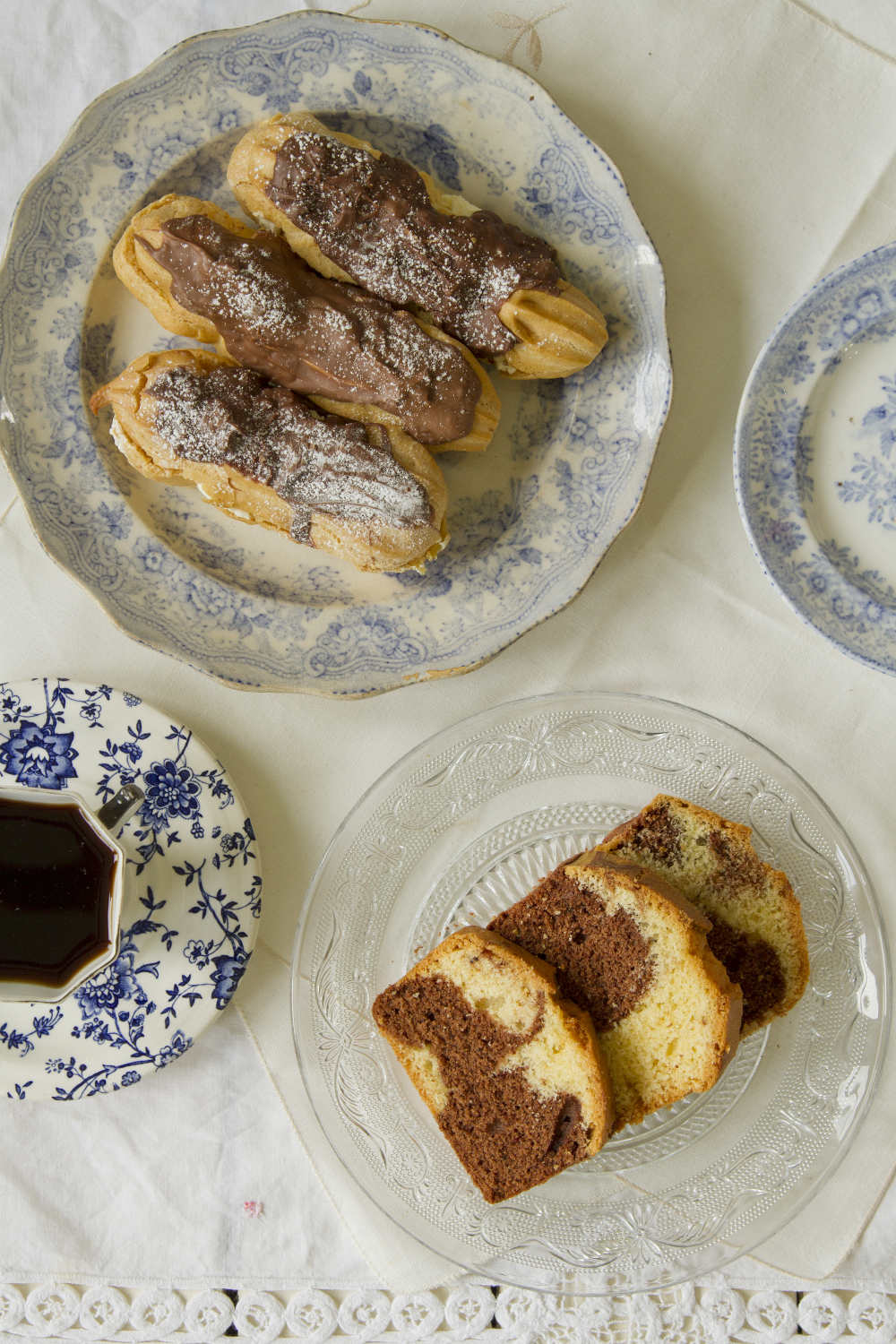 Marble Cake by Toni Nolan, 4th Class
Marble Cake by Toni Nolan, 4th Class
I love my Granny’s marble cake. She got the recipe from her Granny. It is lovely to have with a cup of tea.
Ingredients
100g butter/margarine
100g caster sugar
2 large eggs
1 tsp vanilla extract
100g self raising flour, sieved
1 tsp baking powder, sieved
50g cocoa powder
Method
1. Preheat the oven to 180°C/fan 160°C/gas mark 4.
2. Put butter and sugar into a bowl and beat until white and creamy.
3. Lightly whisk the eggs and extract and gradually add to the creamed butter and sugar. Beat well.
4. Fold in the flour and baking powder using a metal spoon.
5. Place half of the mixture into a separate bowl and add the cocoa powder. Stir to combine. Add to a lined 6 inch round or 8 inch loaf tin, alternating between the two mixtures.
6. Bake in the oven for 1 hour and 15 minutes.
7. Leave to cool on a wire rack.
--
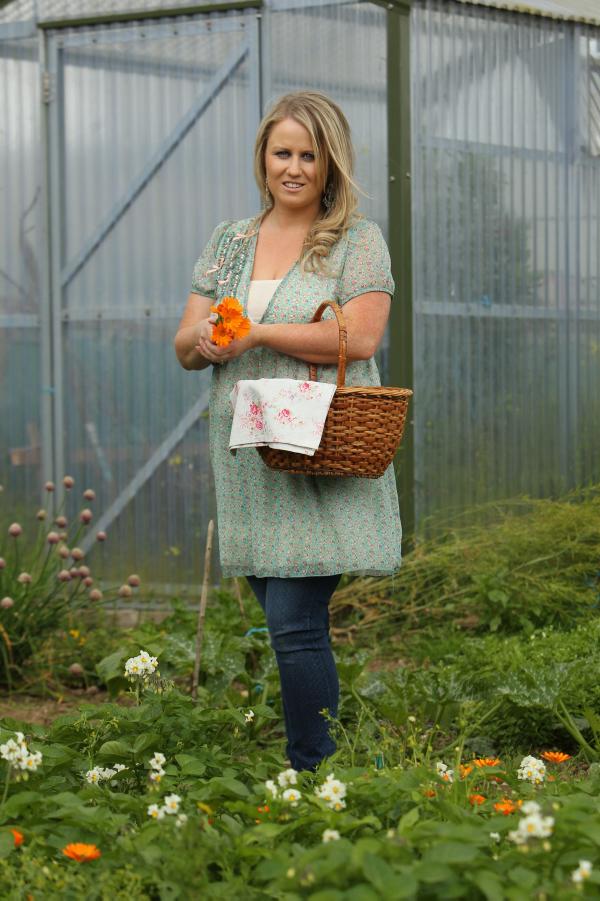 A nurse by training, Irish Food Writers’ Guild member Nessa Robins writes the popular blog Nessa's Family Kitchen, is the author of the cookbook ‘Apron Strings - Recipes from a Family Kitchen’ and writes a number of columns about food and health. She lives in Moate Co Westmeath, and she also gives classes in the area.
A nurse by training, Irish Food Writers’ Guild member Nessa Robins writes the popular blog Nessa's Family Kitchen, is the author of the cookbook ‘Apron Strings - Recipes from a Family Kitchen’ and writes a number of columns about food and health. She lives in Moate Co Westmeath, and she also gives classes in the area.
http://nessasfamilykitchen.blogspot.com/
http://twitter.com/Nessa_Robins
http://www.facebook.com/Nessas.Family.Kitchen
https://www.instagram.com/nessarobins/
7 things every foodie should know about the TTIP treaty and the secret seven who got exemptions

 Seanad Candidate Ross Golden-Bannon explores the all-encompassing CETA & TTIP treaties and their many worrying provisions, which bode ill for the Irish food sector.
Seanad Candidate Ross Golden-Bannon explores the all-encompassing CETA & TTIP treaties and their many worrying provisions, which bode ill for the Irish food sector.
International trade seems like a very distant affair to those of us who care about our immediate foodie neighbours. But if the closest thing you’ve got to trade is swapping your windfall apples for some elderflower syrup, now is the time to get worried. Two mega-treaties, which the EU is about to sign with the US and Canada, could see all we hold dear in the food world come to nought.
TTIP, the Trans-Atlantic Trade & Investment Partnership, and CETA, its Canadian cousin are the largest global treaties ever. TTIP, pronounced ‘tea-tip’, encompasses just about every area of human endeavour from health services to education, from food to manufactures, from medical supplies to employment practices.
In fact, in a breath-taking departure from even the most basic human norms the treaties cover everything unless stated as being excluded in the treaties. Ireland has negotiated just seven exclusions but there’s plenty in the treaty to be worried about too.
1 Standards will be equalised between the EU and the USA.
European standards are based on a ‘precautionary principle’, this means producers must prove chemical or other ingredients are safe before they can be used.
In the US the opposite is the case where just 16 chemicals are banned in cosmetics yet the EU considers some 1,200 chemicals too dangerous for human use.The Commission claims “EU standards simply aren’t up for negotiation. TTIP would uphold them.”
Yet EU TTIP negotiators caved in under pressure from the American Chamber of Commerce deciding not to ban 31 pesticides containing endocrine disrupting chemicals linked to cancer and male infertility. Can we really trust what the Commission says?
2 GMOs.
While some argue that GMOs are not harmful others hold the opposing view. Either way the use of GMOs are a symptom of mono-cultural farming as the mega farms eschew sustainability for mass production and high profit margins. At present in the US over 90% of corn, soya and cotton is genetically engineered. In the EU we grow almost no GMO crops and individual states can ban GMOs.
3 Pesticides.
Over 80 pesticides used in the US are banned in Europe and we tolerate lower levels of pesticide residue than the US. It’s highly unlikely that the US will raise their standards to match ours as it would require a major cultural and structural change. In Europe firms must prove a material or substance is safe before they can us them while in the US the opposite is the case as any substance can be used until it’s proven to be unsafe.
4 Hormones.
The use of growth-promoting hormones are banned in cattle or pigs across the EU because of links to a wide range of illnesses and the particular risk to children’s health. In the US they have no such qualms and hormone use is normal practice. As we stand now hormone treated US beef sales are banned in the EU. However, negotiators and lobbyists including the American Farm Bureau Federation said: “continuing barriers to the export of U.S. beef... are major areas of interest.” The EU is also proposing to dilute meat and food import inspections and plans to accept lower international standards. This will completely undermine our national beef industry.
5 Chemical washes on chicken.
As the US have an ‘end of pipe’ form of food chain management they have much lower concerns about farm hygiene. Essentially inadequate hygiene on farms and in abattoirs means disinfectant washes are used at the end of process to kill the higher levels of bacteria. Chemical washes are banned in the EU as a ‘farm to fork’ approach creates higher levels of hygiene along the entire production process. These higher EU standards are viewed as ‘barriers to trade’ by US negotiators.
6 Absolutely everything is in the treaty unless otherwise stated.
In an extraordinarily Machiavellian masterstroke these treaties do not state what goods and services they include, everything is assumed to be in the treaty unless you state otherwise through a list of exemptions.
Our government has only managed to protect a handful of our economic activities. Such areas of business include Irish mining and ore extraction companies; legal services in respect to Irish law and EU law (but significantly not international law); social services, (but excluding convalescent and retirement homes); along with a range of marine related activity including fishing, aquaculture; seagoing transport; as well as construction of waterways, harbours, dams and other water works.
Food and farming, except aquaculture, does not appear on the list so these sectors will be open to competition from mega-farms and trans-national food manufacturers, driving prices and standards down. But that’s not the end of it.
7 New international courts which bypass national law.
A mechanism has been created to allow companies to sue states if they believe policy changes damage their profits or future earnings. This means any laws created to protect health or the environment can trigger lawsuits, which bypass our courts. It will strengthen the hand of companies like the Japanese Tobacco company who have threatened to sue us over our plain packaging cigarettes.
The number of these investor-state cases has ballooned over the last two decades from just three in 1995 to some 700 by January 2016 and a record of 70 in 2015. The amount of compensation has also expanded dramatically, with an award against Russia at a stratospheric US$50 billion (Yukon Oil v Russia).
Some 60% of the trade claims against EU member states concerned the environment. Fears over these legal actions will also having a chilling effect on all sorts of protective legislation from bans on toxic chemicals, anti-discrimination policies, financial stability measures, the environment and protecting the integrity of our food.
While I don’t object to a bit of trade, where else would I get some limes for my gin and tonic, mega-treaties such as TTIP & CETA are a very long way from fair trade principles. There is no evidence that jobs will be created and every evidence to the contrary. The NAFTA trade agreement between the US, Canada and Mexico saw a loss of one million US jobs over a 12 year period rather than the much promised hundreds of thousands of extra jobs.
The Commission ‘independent impact studies’ are in fact their own studies which claim there will be annual GDP growth of 0.05%. In fact this growth is over a 10 year period. More realistic predictions suggest little more than 0.01% growth over ten years. A trivial figure which the Trade Commissioner, Cecilia Malmström would prefer us not to know.
But here’s what she does know and think about the millions of people across Europe protesting against TTIP: “I do not take my mandate from the European people.” It’s time we let her know otherwise.
Ross Golden-Bannon is a member of the Irish Food Writers’ Guild and is standing as an Independent candidate for Seanad Éireann for the NUI Panel. Follow him on Twitter at @goldenshots.
The Secret Ingredients in Our Food


On the warpath once again in the fight for better food, Seanad candidate and food writer Ross Golden-Bannon explores the tricks that the processed food sector gets up to, to make additives sound “as homely as godmother from Wanderly Wagon”!
Most people spend just a few seconds reading food labels. It says ‘natural’, right? A quick look at the back, no ‘E numbers’? Perfect. Pop it in the basket. But if you’re the sort of person who forensically examines food labels you’ll know there are new ways of describing additives that make them sound as homely as godmother from Wanderly Wagon.
But did you also know there’s a raft of ingredients which mass food manufacturers are not even obliged to name on the label? The processed food sector is a billion dollar industry and they are intent on protecting those profits regardless of the costs to our nation’s health, real food producers or indeed simple honesty.
E’s are scary
Those few seconds you spent glancing at the label to reassure yourself that all is well are the result of millions of euros’ worth of lobbying in Brussels. Customers’ fears over the dreaded ‘E number’ on labels drove the sector to reform labelling without actually changing their practices and it looks like it may have worked.
There are two simple sleights of hand they use, one reclassifies ingredients in less frightening sounding terms like ‘functional starch’, often shortened to ‘starch’.
The other sleight of hand is more sinister: the sector has lobbied hard to have a wide array of chemicals reclassified as being part of the process or as a ‘processing aid’ and therefore not ingredients. So, the chemicals don’t appear on the label at all.
You’ve also probably noticed the disappearance of many ‘E’ numbers from your food labels. This seems like a good thing, but again this a combination of rebranding, heavy lobbying and compliant EU food regulators.
Our perceptions are being managed by big food business spin-doctors. It’s called ‘premiumisation’, the legal labelling of food with words such as ‘natural’ and ‘craft’ to make us believe we are buying wholesome products that just happened to be shrink-wrapped.
New alternatives have been formulated to persuade us that all is well behind the label. Some firms happily found natural replacements others just looked at their bottom line and got more imaginative.
There are three major additives which manufacturers needed to replace. Hydrocolloids, which make your food taste creamy; modified starch acetylated distarch adipate (E1422), formulated to maintain moisture as well as the extreme temperatures of the industrial process. And finally gelatine, magically created by boiling skins and bones of pigs and cows. Texturisers are also used to give desserts and other dishes that distinctive creamy, melting texture.
Unnatural flavours
They’re all chemically altered starches designed to survive the rigours of industrial scale food manufacturing and long shelf lives. In many cases these additives have now been replaced by similar, highly processed starches which can be classed as ‘functional native starch,’ often just shortened to ‘starch’. Not scary at all.
The enzyme transglutaminase is used to help reformed meat retain more water, that’s meat scraps to you and me. A handy little chemical if you are at the bottom end of the deli meat market and trying to keep your costs down. Transglutaminase is deemed a processing aid. So it never appears on the label.
Artisan labelling
Meanwhile the likes of artisan producers are in the ha’penny place. Many of the words they use with integrity are blithely woven into deceiving labels of mass-produced food. At present there are no laws in Ireland to protect the following terms: ‘artisan, artisanal, farmhouse, traditional, natural or craft.’
However, guidelines were issues in 2015 by the Food Safety Authority (FSA) to cover ‘artisan, artisanal, farmhouse, traditional, natural’ but excluding ‘craft’. A short while later, in September 2015, McDonald’s Ireland launched the McMór burger describing it as ‘artisan’. It was later renamed but they were not legally obliged to. There are plenty of other, less high profile food producers out there using this term. It’s a word you will see more often now on products and drinks that are really more crafty than crafted.
This all has to change. Lists of ingredients should be exactly what they say: a real list of what the product contains. Labelling in Ireland needs to be transparent and easily-readable so consumers can make real choices about what they are buying. Guidelines are only guidelines and big food businesses can afford to ignore them. Labelling legislation needs to be legally binding and fully enforceable.
Can we change this? Of course we can. Sugar and salt have found themselves in the cross-hairs in recent years and a combination of legislation and consumer power is changing sugar and salt content in our food. Let’s do the same for unnamed chemicals too.
Ross Golden-Bannon is a member of the Irish Food Writers’ Guild and is standing as an Independent candidate for Seanad Éireann for the NUI Panel. Follow him on Twitter at @goldenshots. [This piece was written by Ross in a private capacity and first appeared in thejournal.ie]
Word from the West
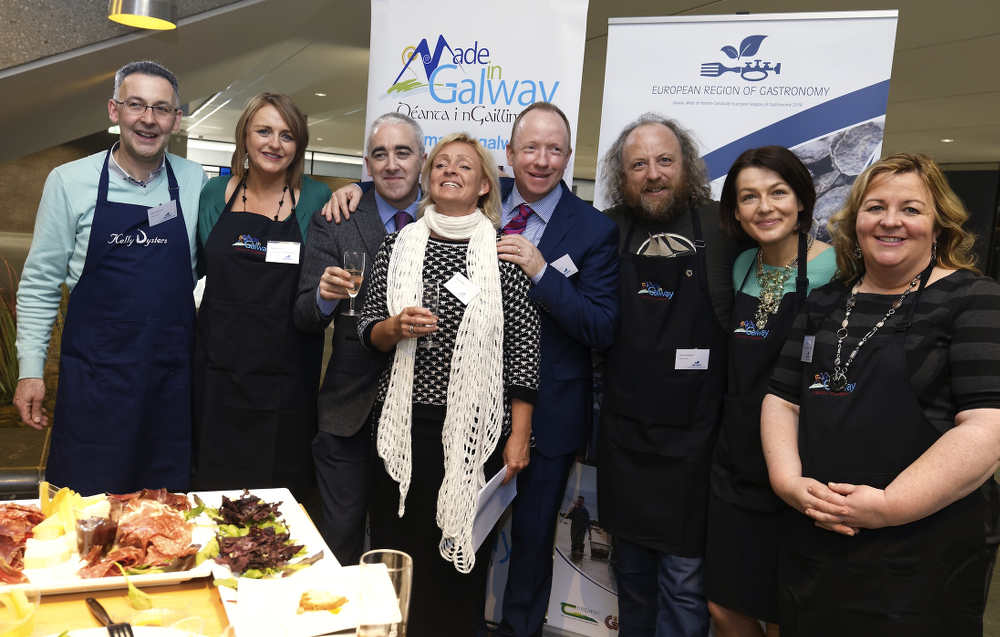
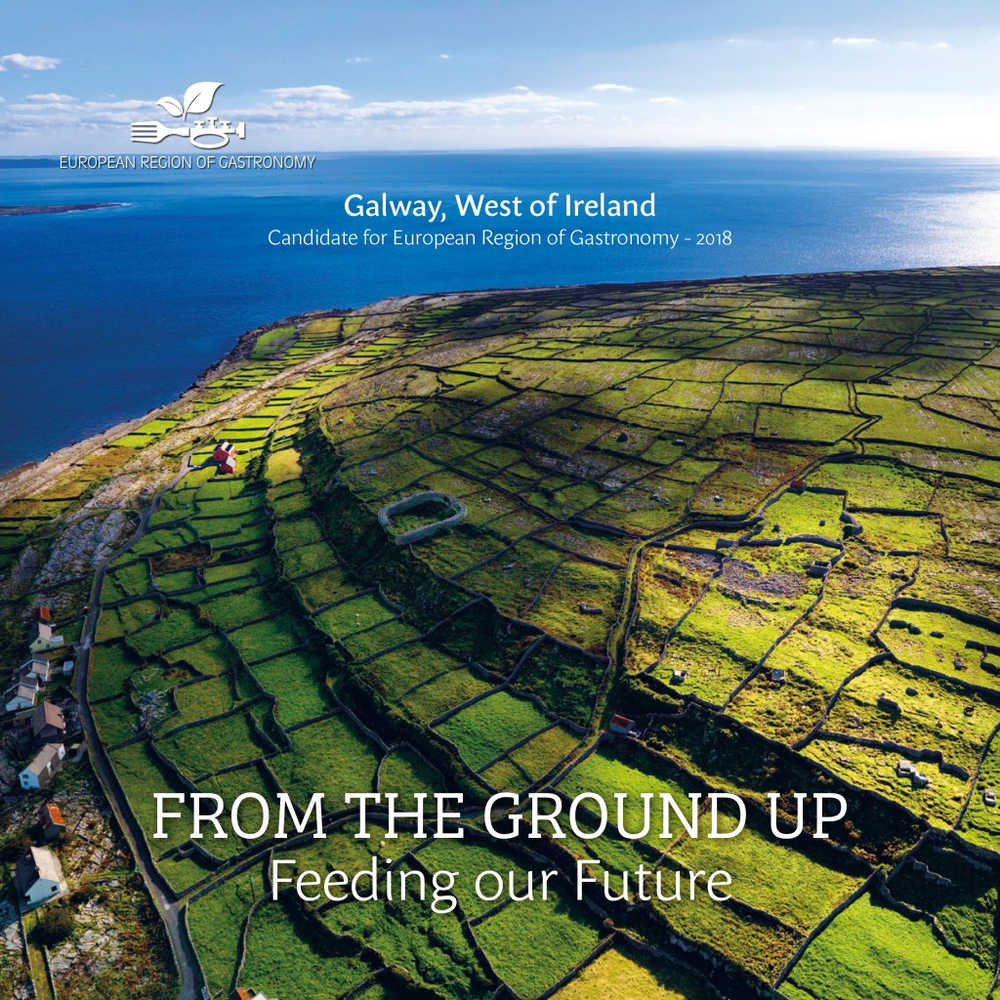
“European Region of Gastronomy certainly sounds impressive,” says Anne Marie Carroll, following Galway's success in winning the European Region of Gastronomy designation - “but what exactly is it?”
“We will reach into our communities to develop our programme for the European Region of Gastronomy and our vision for Galway gastronomy. This is about our farmers, fishermen, food producers, our hospitality sector, our small businesses, our health workers, our teachers, our parents, our children... In short, all of us.”
The luck of the Irish was with the Galway bid team as they won the European Region of Gastronomy designation on St. Patrick’s Day, one of just two European Regions of Gastronomy in 2018. 'Galway - West of Ireland' and North Brabant in the Netherlands were named as the successful bidders at a meeting of International Institute of Gastronomy, Culture, Arts and Tourism (IGCAT) experts in Den Bosch on the 17th of March.
European Region of Gastronomy certainly sounds impressive, but what exactly is it?
These awards recognise innovation and integration in gastronomy, culture, tourism and economy. They aim to contribute to a better quality of life in European regions, by highlighting distinctive food cultures, educating for better health and sustainability and stimulating gastronomic innovation. Successful bidders go on to mount a year-long programme to best showcase their region and its produce.
The Galway team behind the bid successfully achieved the designation, representing to an International panel of experts in Province House in Nord Brabant, followed by a tasting lunch featuring a range of their local produce. IGCAT organises the award with the support of European institutions. Candidate regions are invited to join a knowledge-exchange platform of European regions in order to further cross-border collaborations and develop shared initiatives.
The regions awarded the title should demonstrate their “uniqueness”: through offering a comprehensive and complex experience to a visitor created as a result of creative coexistence and appreciation of culture, gastronomy, and art or artistic expressions. Catalonia and Minho in Portugal are this year’s European Regions of Gastronomy, with Riga-Gauja and Aarhus, Central Denmark to follow in 2017.
Galway’s bid, entitled “From the Ground Up, Feeding our Future”, was submitted on behalf of Galway County Council, Galway City Council, Galway Mayo Institute of Technology and Teagasc with the support of the local food community. It focused on five key areas identified following a stakeholder engagement workshop last September. Education and Health were seen as the most critical areas of any future projects and the bid team used this feedback to guide the bid book development.

The process to seek this designation began last summer following engagement with the European Capital of Culture team when food was identified as a strong theme. Last September Galway County Council, Galway City Council and Galway Mayo Institute of Technology signed the ‘cooperation agreement’ allowing Galway to become a member of the European Region of Gastronomy Platform. Teagasc also joined the platform and have been leading discussions on how Galway’s farming and agriculture sector will support and engage with innovations and the programme of work.
Reacting to the news of the success of the bid, the Cathaoirleach of County Galway, Peter Roche, warmly congratulated all involved. “The joint efforts of all involved in the bid have been justly recognised in securing this prestigious title for our region. It will provide a platform for the continued growth of Galway as a destination known for the quality of its food sector and the strength of the connection between its people, the land and our gastronomic traditions.”
Dr Diane Dodd, Director from the Institute of Gastronomy, Culture, Arts and Tourism (IGCAT) thanked the Galway team and in particular the food producers, represented by Diarmuid Kelly from Kelly’s Oyster and Liam Heneghan from Tribal Foods. The jury was impressed not only with Galway’s support and commitment to grass-roots initiatives, but with its wide stakeholder base and efforts to bring in private, public, third-sector and knowledge institutions.
This award comes at a choice time for the region’s flourishing food scene and places the West firmly on the international stage. The designation will be formally awarded, pending a jury visit to Galway on June 20th in Aarhus, Denmark. For more information on the Galway submission you can visit their website, www.galwaygastronomy.ie and follow the team on twitter @gastronomy2018
Photo shows: Galway's Bid Team with Dr Diane Dodd of IGCAT. Pictured from left to the right: Diarmuid Kelly - Kelly's Oysters, Jacinta Dalton - GMIT, Cathal O'Donoghue - Teagasc, Alan Farrell - Galway County Council, Liam Heneghan - Tribal Foods, Caitriona Morgan - Galway County Council, Cait Noone - GMIT.
--
 Anne Marie Carroll is a freelance food writer and member of the Irish Food Writers’ Guild who lives in Galway with her husband and two children.
Anne Marie Carroll is a freelance food writer and member of the Irish Food Writers’ Guild who lives in Galway with her husband and two children.
With a background in design and illustration, Anne Marie made the switch to journalism with a regular food and wine column in The Galway Advertiser. Her work now mainly focuses on restaurant reviews, writing and editing recipes, the development of food photo shoots, including styling and photography. She also writes for a number of other publications and works as a consultant for small producers, food retailers and restaurants.
Anne Marie writes about all things food from the West of Ireland at her blog, Warm & Snug & Fat. You can also find her on twitter as @Biscuits4ABear
No Ordinary Airport Fare
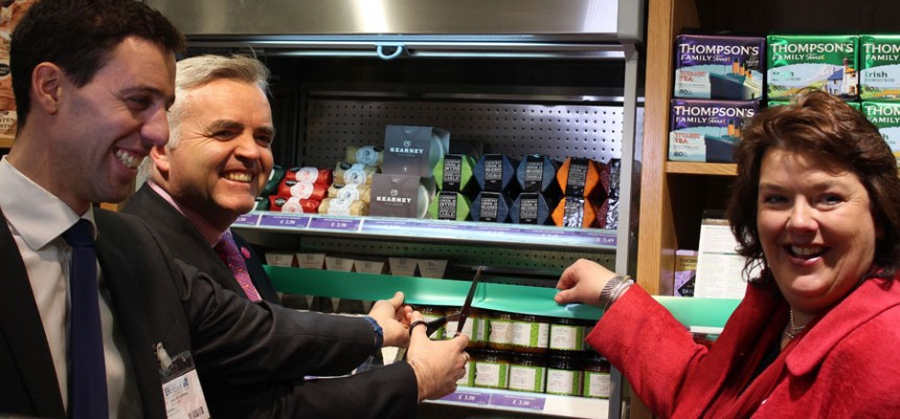

Barbara Collins introduces The Taste of Ulster Shop, a great artisan food and drink initiative at Belfast International Airport
Most Duty Free shops across the world are fairly generic. The same big brands appear time after time and small producers don’t tend to get a look in. Not so at Belfast International Airport where almost thirty artisan food and drink companies are selling their products. It is a joint venture between Lagadere Travel Retail, Belfast International Airport and Food NI, the organisation responsible for Taste of Ulster.
The Taste of Ulster shop is located within the Aelia Duty Free shopping complex in the Departures zone. Aelia is part of Lagardère, one of the world’s biggest operators of airport duty free shops. The shop was officially opened last month by the Northern Ireland Enterprise Minister Jonathan Bell and Amaury Dehen, managing director of Lagardère Travel Retail UK and Ireland.
“We believe it to be essential that our retail operations represent the best local merchandise available and contribute to economic well-being. The shop offers smaller companies access to almost three million passengers. The airport expects to be handling 4.9 million passengers” said Mr Dehen. “The Taste of Ulster shop represents a significant development of the relationship that we have had with several Northern Ireland businesses over many years.
“We’ve now extended this engagement to embrace Northern Ireland’s developing artisan food and drink sector, a sector including many companies which have achieved great recognition in international and national awards.”
Mr Bell said: “We are lucky to have such a fantastic array of fresh ingredients, a wide range of eating places, talented chefs, artisan producers and indeed a flourishing foodie culture here in Northern Ireland.
“With 2016 being designated the Northern Ireland Year of Food and Drink there has been no better time to showcase all that is great about local produce. The launch of the first Taste of Ulster range, by Food NI, within the Aelia Duty Free store at Belfast International airport will help both tourists and visitors to discover the great tastes of Northern Ireland.”
Northern Ireland companies featured in the Taste of Ulster Shop at Belfast International Airport
• Abernethy Butter, Dromara – handmade butters
• Ann’s Pantry, Larne – breads and cakes
• Broighter Gold Rapeseed Oil, Limavady – rapeseed oils
• Eleanor Craig’s Fudge, Larne – handmade fudge
• Eringrove, Enniskillen – jams and chutneys
• Farmview Dairies, Belfast – dairy products including Kearney Blue Cheese
• Gracehill Fine Foods, Ballymena – black and white puddings
• Hannan Meats, Moira – beef, bacon and ham
• Harnetts Oils, Waringstown – rapeseed and other culinary oils
• Johnsons Coffee, Lisburn – roasted coffee
• Kennedys Bacon, Omagh – bacon, gammon and ham
• Made with Love, Donaghadee – jams and relishes
• NorthCoast Smokehouse, Ballymena – smoked salmon and condiments
• Our Daily Bread, Belfast –wheaten and soda bread and bread mixes
• Papas Mineral Company, Bangor – traditional Northern Irish minerals
• Passion Preserved, Lisburn – relishes and chutneys
• PopNotch Popcorn, Draperstown – popcorn
• Punjana, Belfast – tea blends
• Suki Teahouse, Belfast – loose leaf tea and fruit infusions
• The Chocolate Manor, Coleraine – chocolates
Several Northern Ireland producers of spirits have been included by Aelia in the duty free. They are:
• Echlinville Distillery, Kircubbin– Dunville Irish Whiskey
• Hughes Craft Distillery, Lisburn – RubyBlue Irish Potato Vodka and fruit liqueurs
• Jawbox, Belfast – Gin
• Niche Drinks, Derry – The Quiet Man Irish Whiskey
• Rademon Craft Distillery, Crossgar – Shortcross Gin
---
 Barbara Collins is a freelance food, travel and agricultural writer. She contributes regularly to Countryfile magazine, the Farmers Guardian, the Irish News, FFT and the Irish Mail on Sunday. She was Chief Food Writer for Flavour magazine. She is a member of both the UK and Irish Food Writers Guilds and splits her time between Belfast and Galway. Barbara also does menu consultancy and copywriting.
Barbara Collins is a freelance food, travel and agricultural writer. She contributes regularly to Countryfile magazine, the Farmers Guardian, the Irish News, FFT and the Irish Mail on Sunday. She was Chief Food Writer for Flavour magazine. She is a member of both the UK and Irish Food Writers Guilds and splits her time between Belfast and Galway. Barbara also does menu consultancy and copywriting.
@thegoodchinaset
Word from the West
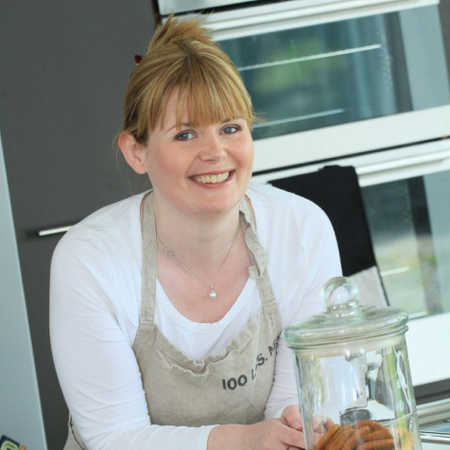
 West of Ireland food writer Anne Marie Carroll fills us in on the latest good food news from Galway: Food On The Edge Set To Return
West of Ireland food writer Anne Marie Carroll fills us in on the latest good food news from Galway: Food On The Edge Set To Return
'Food On The Edge', held in Galway last October, is set to return again this year with even more international leaders from the culinary world.
Following on from the success of the inaugural symposium in 2015, the lineup of speakers has already been announced for 2016. Last year’s event saw forty of the worlds best chefs address over 350 audience members each day.
Attendees included food enthusiasts, chefs, restaurateurs and some of Ireland’s biggest names in food, among them Darina Allen, Neven Maguire, our own Georgina Campbell and a host of others who cited it as an unmissable and inspirational food learning event for anyone interested in food and how we eat.
The official 2016 launch took place in Copenhagen on 25th April. The symposium creator and director, JP McMahon, launched this year’s event at Amass Restaurant surrounded by Nordic chefs Matt Orlando, Christian Puglisi and Sasu Laukkonen (above right).
Last year Galway welcomed many world renowned Nordic chefs, including Icelandic chef Gunnar Karl Gislason, Danish chef Mads Refslund and Swedish chef Mikael Jonsson, part of the group of international chefs at the symposium which included talks, presentations, networking, entertainment and tastings in the heart of Galway City.
 The first official 2016 speaker will be Peruvian chef Diego Munoz (right) who also delivered a talk at the launch on the subject of sustainability in the fishing industry. He said, “It's really important that chefs move out of the kitchen to research in order to understand the production process. It's about time that we kept a close eye on our natural resources, they are the core of our gastronomy. For me, it’s the farmers and producers who are the new leaders of the gastronomical movement, and we as chefs need to work and interact more closely with them. The future of food and its sustainability are core themes of 'Food On The Edge' and ones that I am passionate about.”
The first official 2016 speaker will be Peruvian chef Diego Munoz (right) who also delivered a talk at the launch on the subject of sustainability in the fishing industry. He said, “It's really important that chefs move out of the kitchen to research in order to understand the production process. It's about time that we kept a close eye on our natural resources, they are the core of our gastronomy. For me, it’s the farmers and producers who are the new leaders of the gastronomical movement, and we as chefs need to work and interact more closely with them. The future of food and its sustainability are core themes of 'Food On The Edge' and ones that I am passionate about.”
There are also a number of exciting Nordic chefs already confirmed for this year’s 'Food On The Edge' including Swedish chef Magnus Ek of 'Oaxen Krog' which in a few years has become one of Sweden’s most renowned gourmet restaurants and chef Christian Puglisi who opened restaurant 'Relae’ in Copenhagen and was awarded a Michelin star in 2012.
Matt Orlando (below right), chef and owner of 'Amass' started his cooking career in San Diego, California at the age of fifteen and worked his way up the ranks. He was Head Chef in 'Noma' before opening Amass in 2013. Matt attended and spoke at Food On The Edge last year: “Food On The Edge encourages us to take a look at the bigger picture by asking us the question - how will we be cooking in the future and with what kind of ingredients? It gives us a fantastic opportunity to network and debate important food issues, ideas and concepts with our peers from around the world.”
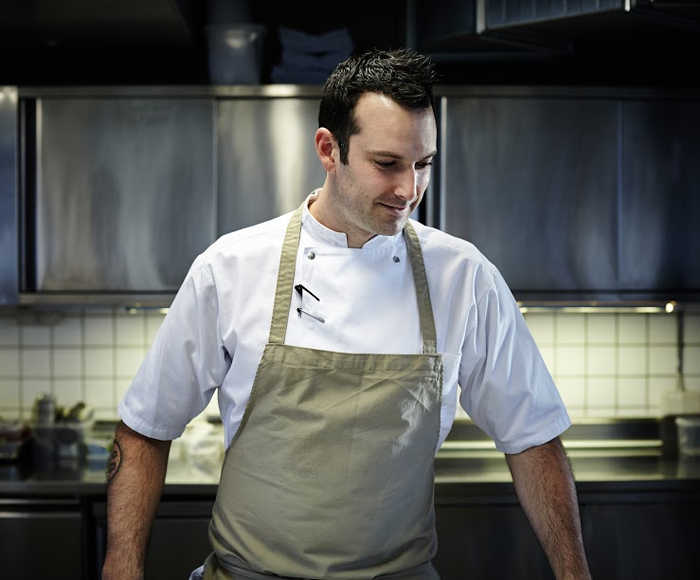
JP commented that the first Food on the Edge in 2015 surpassed all his expectations: “It was an incredible almost surreal experience. Each chef was given the opportunity to deliver topics that centred on the future of food - they discussed their ideas, shared their fears, their dreams, their dreads and regrets from their careers. There was a core theme, however, which resonated strongly across the two days and that was “responsibility”. Responsibility in the way we source food, waste food, fish for food and supply food was passionately debated. The speakers are chosen for their passion, drive, and ability to inspire chefs around the world. They are leaders that we look up to for inspiration. It is important for us to create a sense of continuity. Rather than only invite new chefs to discuss the future of food, each year a number of past speakers will return to reflect on their previous presentation and assess the change or development of their thought and practice.”
As the line-up continues to build, more speakers are included and there is a new addition of an Expert Panel Discussion. Speakers confirmed include Daniel Burns, currently one of the hottest chefs in New York city who owns 'Luksus'; Shaun Hill, who owns the renowned restaurant 'The Walnut Tree' in Wales; and Tim Hollingsworth who recently opened the three star 'Otium' in Los Angeles. The prolific Massimo Bottura, Italian restaurateur and chef patron of 'Osteria Francescana', a three-star restaurant in Modena, Italy, will also be speaking on the subject of the future of food.
Food On The Edge 2016 takes place in Galway on 24th & 25th October, ticket price includes lunch on both days, entry to a party on Monday night where the audience can meet and mingle with the speakers. Early bird tickets are available until July, priced at €350, (normal price ‚€400) at www.foodontheedge.ie
A full List of confirmed speakers for the 2016 event can be found at www.foodontheedge.ie/speakers.html with more yet to be added. #FOTE2016 @foodontheedge
--
 Anne Marie Carroll is a freelance food writer and member of the Irish Food Writers’ Guild who lives in Galway with her husband and two children.
Anne Marie Carroll is a freelance food writer and member of the Irish Food Writers’ Guild who lives in Galway with her husband and two children.
With a background in design and illustration, Anne Marie made the switch to journalism with a regular food and wine column in The Galway Advertiser. Her work now mainly focuses on restaurant reviews, writing and editing recipes, the development of food photo shoots, including styling and photography. She also writes for a number of other publications and works as a consultant for small producers, food retailers and restaurants.
Anne Marie writes about all things food from the West of Ireland at her blog, Warm & Snug & Fat. You can also find her on twitter as @Biscuits4ABear
See And Taste Fermanagh By Water Taxi
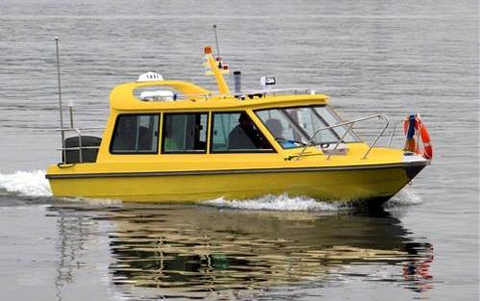
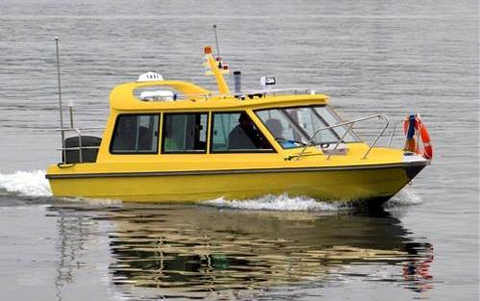
In the NI Year of Food & Drink 2016 calendar, May is designated ‘Landscape & Places’ month. What better time for Barbara Collins to introduce a new way to get around the food hotspots of Fermanagh
There’s a new way to get around the food hotspots of Fermanagh - by water taxi! Barry Flanagan does Erne Food Tours on his chauffeur-driven, covered 8-seater boat, which takes in hotels and food producers on Upper and Lower Lough Erne.
They include stop-offs at the Catalina Restaurant at the 5 star Lough Erne resort where Noel McMeel is at the helm, Belleek Restaurant, the Kove at the Killyhevlin and the thatched Watermill at Lisnaskea.
“We have a gorgeous landscape in Fermanagh but we also have some fantastic people making great produce and cooking with it. These tours are a way for people to see all of that in an enjoyable, accessible trip,” says Barry Flanagan.
He has teamed up with Kettyle Irish Foods, Sheelin Brewery, O’Doherty’s Fine Meats and Corleggy Cheeses on Upper Lough Erne and Inishmacsaint Craft Beer, Erin Grove Preserves, Tickety Moo Ice Cream and The Traditional Food Company who make boxty on the Lower Lough.
“People can see the livestock roaming the islands on the Upper Lough tour. We get out on the Lower lough one and toast the saints at some of the monastic islands. Those tours are £50 each and we also do an Islander picnic for £35. They’re already proving really popular,” says Barry.
To book go to www.ernewatertaxi.com
 ***For more information on things to do and see on our rivers, lakes and canals, A Taste of the Waterways 2016 is produced jointly by Georgina Campbell’s Guides and Waterways Ireland. Featuring independently selected places to eat along all of the the inland waterways managed by Waterways Ireland, this informative guide is available free from tourist information offices in the waterways areas and to download from www.shopwaterwaysireland.org.
***For more information on things to do and see on our rivers, lakes and canals, A Taste of the Waterways 2016 is produced jointly by Georgina Campbell’s Guides and Waterways Ireland. Featuring independently selected places to eat along all of the the inland waterways managed by Waterways Ireland, this informative guide is available free from tourist information offices in the waterways areas and to download from www.shopwaterwaysireland.org.
For a printed copy, order from http://www.ireland-guide.com/shop or email your name and address to info@reland-guide.com including ‘A Taste of the Waterways 2016’ in the subject line
----

Barbara Collins is a freelance food, travel and agricultural writer. A former BBC journalist and Chief Food Writer for Flavour magazine, she now contributes regularly to Countryfile magazine, the Farmers Guardian, the Irish News, FFT and the Irish Mail on Sunday. She is a member of both the UK and Irish Food Writers’ Guilds and splits her time between Belfast and Galway. Barbara also does menu consultancy and copywriting.
@thegoodchinaset
Word from the West
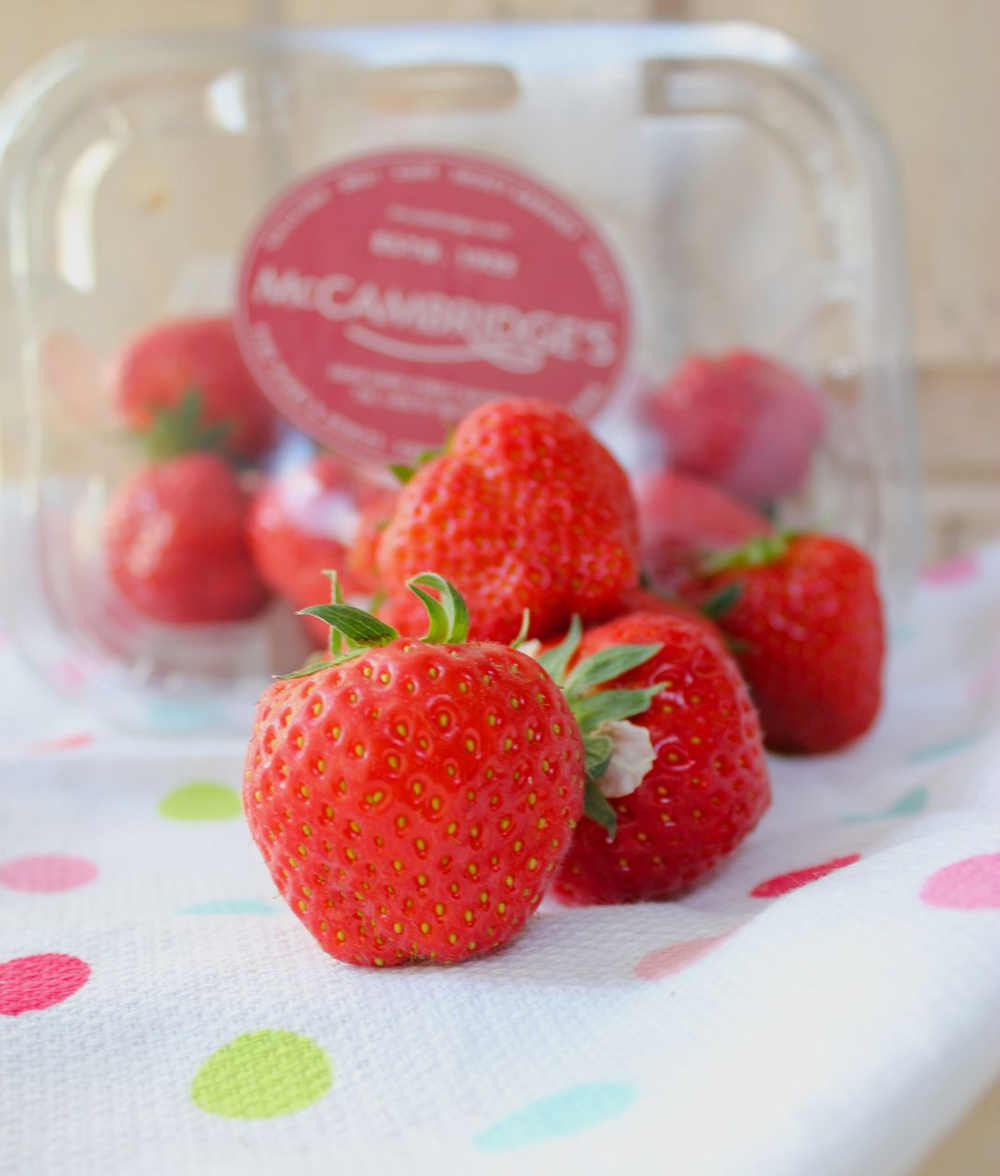

West of Ireland food writer Anne Marie Carroll says that summer starts with strawberries grown by the wonderful McCambridge's of Galway
The Irish Summer. You know when it’s coming and you know when it has arrived. It is not the weather that indicates the summertime, that will remain as changeable as ever. The Summer Season is indicated by strawberries. Not the ever present ones in the shops, but the glorious seasonal Irish ones. The kind that really taste like strawberries. We go overboard when they first arrive, bringing home punnets full, far more than we could possibly eat in their limited lifetime. Those not immediately consumed go into cakes, ice-cream, milkshakes and popsicles.
The abundance of the Wexford strawberry sellers on the sides of the roads means it is the height of the season. With the recent good spell of weather they are ripening fast and furiously. These berries certainly don’t last as long as the sprayed-to-death ‘super-berries’ you'll find in the chiller all year round. The ones that look like strawberries, possibly smell like strawberries but alas, taste of nothing at all.
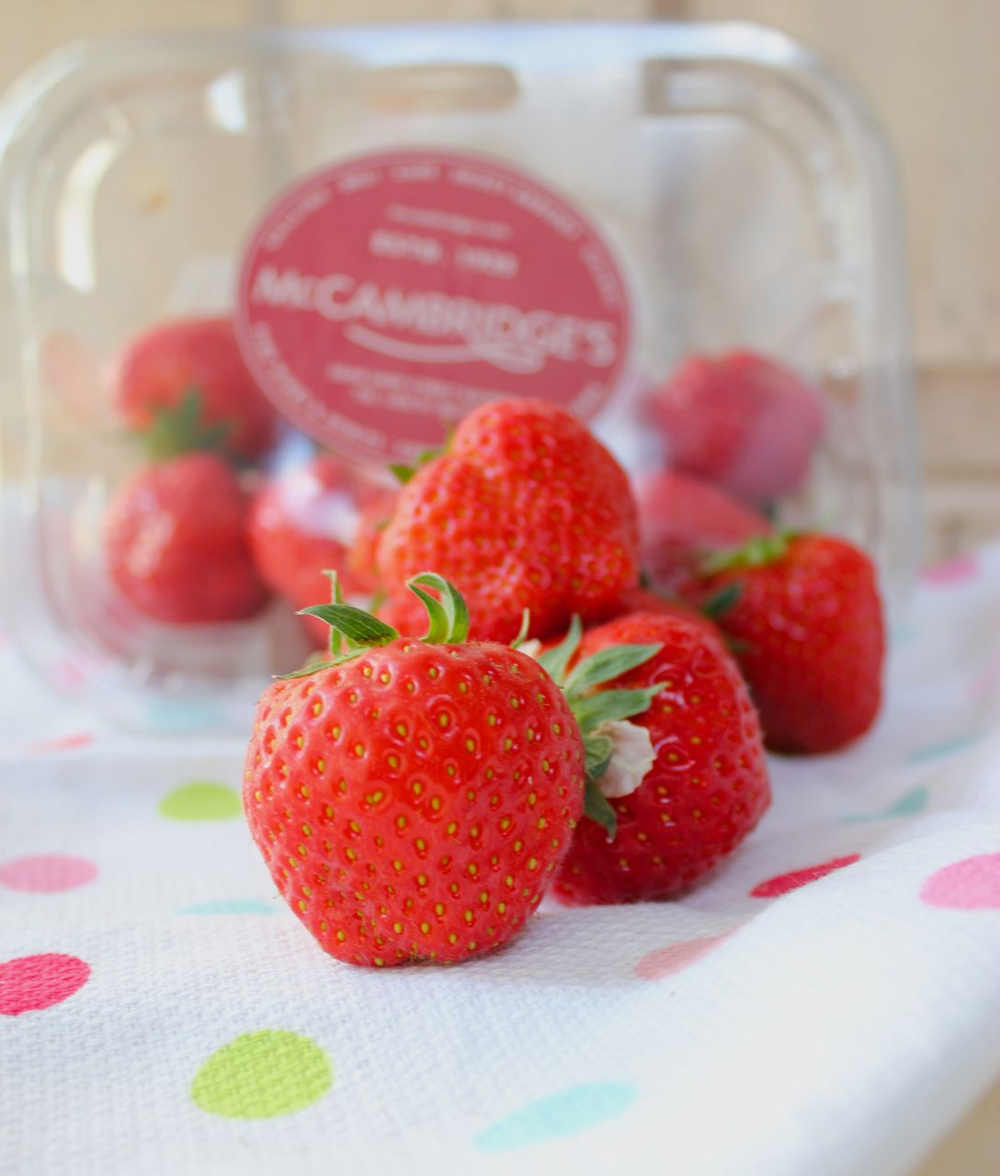
When the rest of the country is enjoying the Irish tradition of Wexford strawberries from the roadsides, the strawberry season in Galway starts with McCambridge's berries, plump and juicy, grown in polytunnels in Furbo, west of the city in a walled garden, a stone's throw away from the sea.
It seems as though McCambridge's has always been here, much more than a shop, it has become part of the landscape. A busy grocers, delicatessen, off-licence and in recent years, cafe and wine bar, it is woven into the fabric of the city.
They're from a time long ago when everything from salt, tea and sugar were to be bottled, bagged and weighed, wrapped into brown paper packages tied up with string. Salty butter arrived in barrels and was hand shaped into pounds and swaddled in grease-proof paper. Spirits and beers, similarly, were bottled on the premises. A time gone by when Guinness was hand pumped from wooden barrels at the bar in the shop.
McCambridge's has always moved with the times and through many major renovations and upgrades, it still is as relevant today as it was then. Serving Galway since 1925, the third generation of the Galway McCambridge family - Eoin and his sisters Natalie and Norma are now at the helm, working closely with their team of staff, leading from behind.
And three of them are needed as the queues at the sandwich bar and on the stairs up to the restaurant will attest. The outside seating on the sunny side of Shop Street is always filled and the shop buzzing with customers seeking a elusive ingredient, wine or whiskey not to be had from anywhere else.
The land in Furbo was once the estate of the Blake Family, the landlords in that area. The strawberries are grown in a walled garden which historically grew the produce for the kitchens of the estate house. An abundance of vegetables and fruit for the house and its inhabitants.
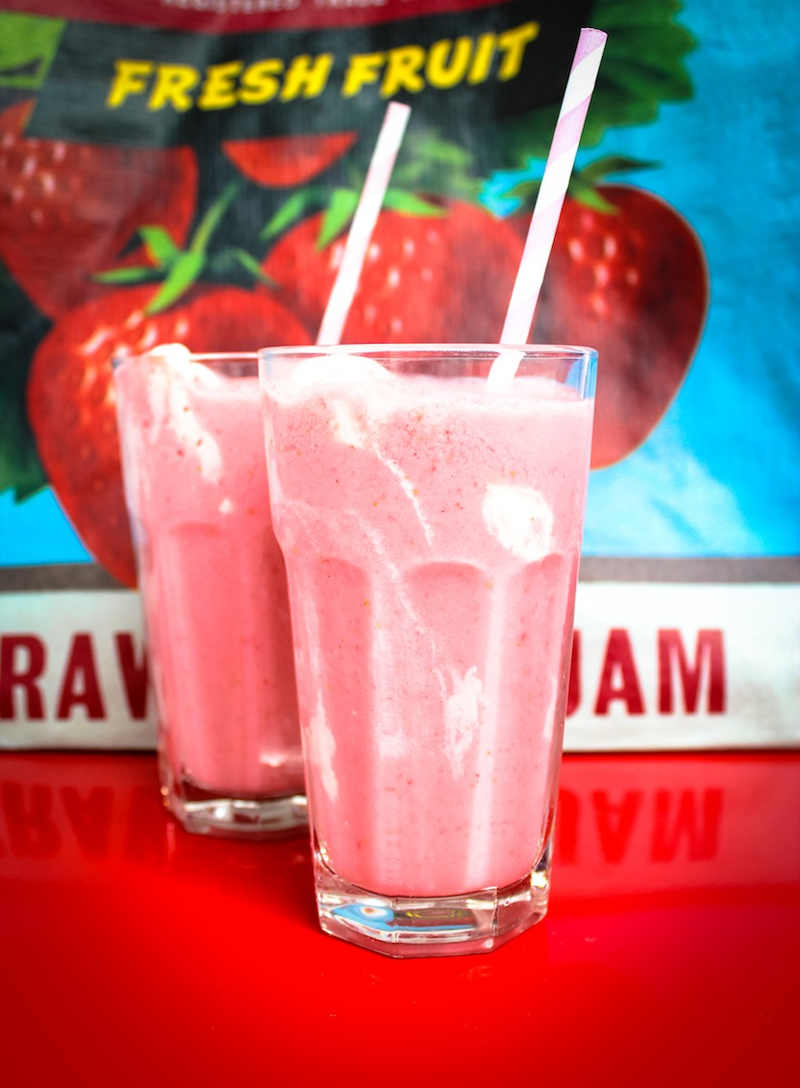
In the seventies and early eighties Pat McCambridge grew lettuce and strawberries to supply to the shop, but when his gardener retired it fell fallow for a time until another daughter, Patricia McCambridge stepped in. The 'green fingers' of the family, Patricia has a degree in horticulture and landscape design and took herself to bring the garden back to life. Starting small, the first polytunnel went in.
A few years down the road and the strawberries have been a magnificent success. Locally grown and picked by the family, their friends and local kids. Some of the fourth generation are now getting amongst it with Natalie's son, Marcus, earning his first wage packet working hard in the tunnels last summer.
This year, and now with three poly tunnels, Patricia is expanding more into lettuces and herbs for the shop. She also delivers them to Galway restaurants including Kai, The Twelve, Mulberry’s and of course McCambridge’s own café.
Jumping on the farm-to-table ethos, and continuing a trend pioneered long ago here in Ireland by the good people at Ballymaloe, is typical of the entrepreneurial spirit of the McCambridge family. Long known for championing local producers, Irish meats and cheeses, speciality teas, pasture fed poultry and pork, rustic breads, they are now part of that story themselves.
--
 Anne Marie Carroll is a freelance food writer and member of the Irish Food Writers’ Guild who lives in Galway with her husband and two children.
Anne Marie Carroll is a freelance food writer and member of the Irish Food Writers’ Guild who lives in Galway with her husband and two children.
With a background in design and illustration, Anne Marie made the switch to journalism with a regular food and wine column in The Galway Advertiser. Her work now mainly focuses on restaurant reviews, writing and editing recipes, the development of food photo shoots, including styling and photography. She also writes for a number of other publications and works as a consultant for small producers, food retailers and restaurants.
Anne Marie writes about all things food from the West of Ireland at her blog, Warm & Snug & Fat. You can also find her on twitter as @Biscuits4ABear
A Particpant's View of LitFest
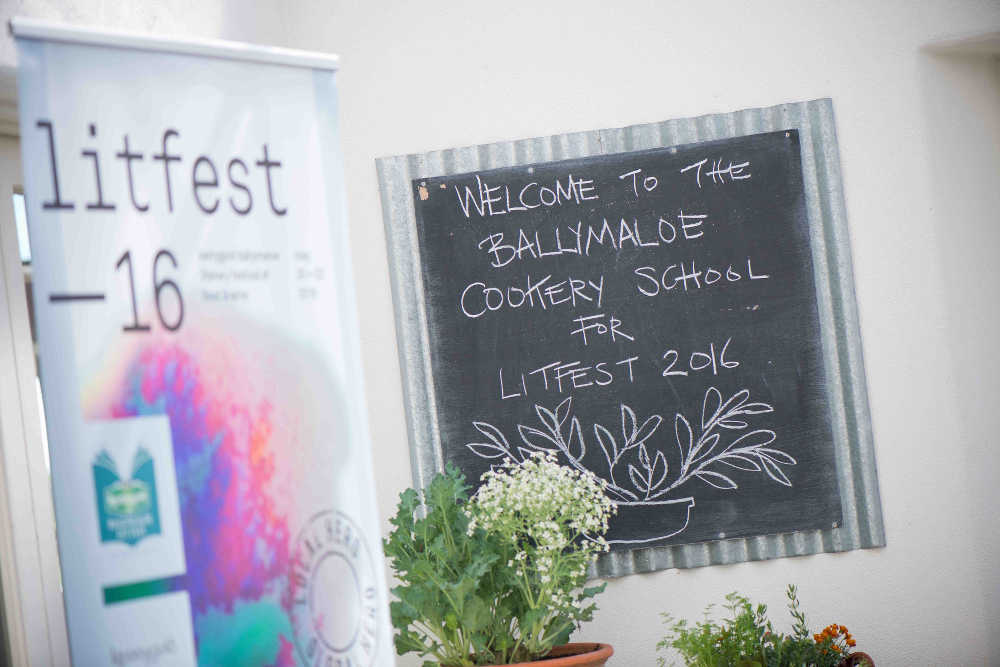
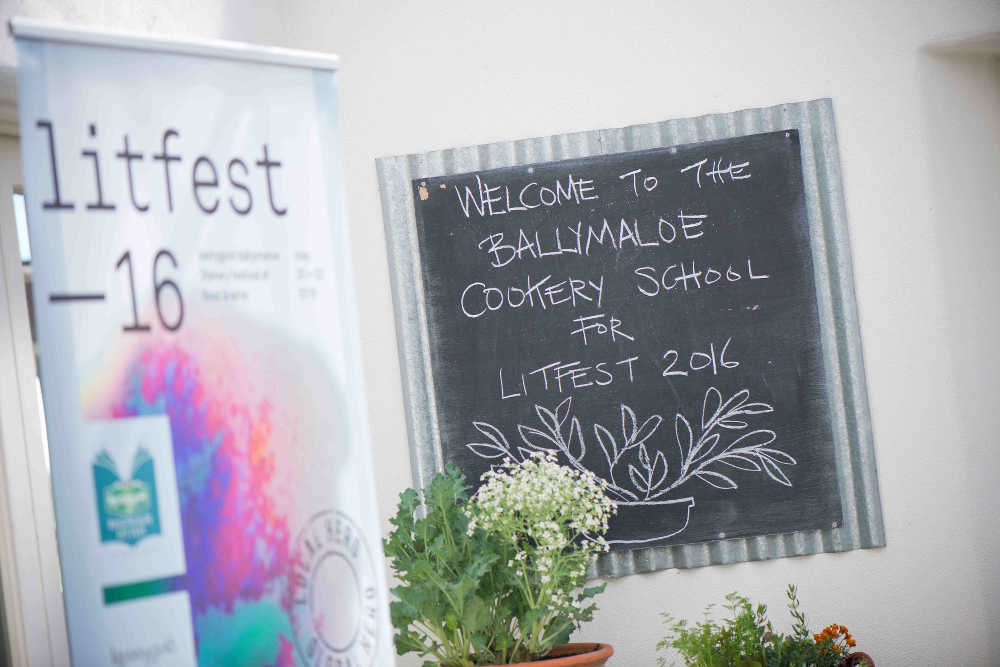
Irish Food Writers’ Guild Chairperson, Aoife Carrigy gives a participant’s view of LitFest!
The sun shone on Shanagarry and we all pretended that life was always like this here in Ireland. That it wasn’t raining everywhere except this blessed corner of East Cork (it was). And that we were all well used to mucking it around a working farm and kicking back in country house hotel style in the company of some of the world’s biggest names in food, from the charming Yotam Ottolenghi to the shamelessly swaggering Francis Mallman.
But of course, given the calibre of international culinary talent who have attended the Kerrygold Ballymaloe Festival of Food and Wine each May since 2012, the many regular returnees to the festival are getting used to such excellent company and the fine food for thought it provides.
Like any great festival, one individual experience could only ever offer a glimpse of the buzz of activities on offer, from shoreside foraging, blind tastings and butter-making disco brunches to cookery demos, readings, debates and TED-style talks asking ‘Our Food – What’s the Story?’
Over in the walled garden, the Garden Shed proved a popular spot throughout the weekend with a broad-ranging line-up that included a Food & Wine Special ‘Questions and Answers’ session with John Bowman, a Banter interview with Ottolenghi and a panel of five-minute interviews with members of the Irish Food Writers Guild, conducted by myself as Chair of the Guild, about what they’re currently writing and why it’s exciting them.
From food politics to modern Irish recipes, profiles of up-and-coming artisan producers to reviews of the hottest new restaurants, taken collectively our 60-plus members really do write on a diverse range of food topics. Leslie Williams had a good honest rant about some of the things he loves (and hates) about Irish restaurant food today, applauding the original creativity of chefs like Mikael Viljanen of the Greenhouse.
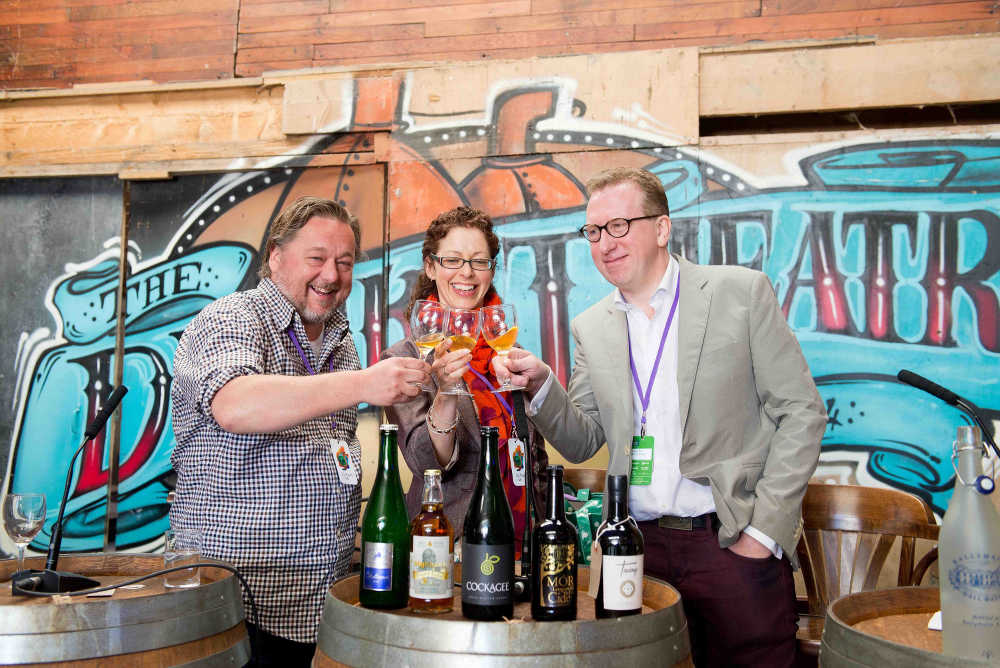
Caroline Hennessy discussed the book she co-authored with Guild secretary, Kristin Jensen, Sláinte: The Complete Guide to Irish Craft Beer and Cider, and her unswerving devotion to the modern classic pairing of porter with dark chocolate brownies.
Joe McNamee called for the appropriate food authorities to give real support to small-scale food producers facing cases of food fraud, as their name is misused on menus to sell dishes featuring someone else’s produce.
Dee Laffan explored some of the challenges facing consumers trying to navigate ambiguous and sometimes oblique labels, and highlighted some of the added elements that don't have to be listed as ‘ingredients’ on a menu (something she has written about on the Guild website).
And Michael Kelly talked about his current series of weekly articles, 52 Veg – A Year of Growing, Cooking and Eating Your Own Food, which explores the themes so close to this GIY-founder’s heart.
Of course, many of those involved in the Guild talk featured at various other sessions throughout the action-packed weekend. And there were more Guild members who popped up elsewhere over the weekend: Marie Claire Digby seemed to be everywhere at once, documenting the festival for the Irish Times, while Imen McDonnell was baking up a storm at the Kerrygold Korner with a beautifully moist milk cake. Sally and John McKenna were MCing various talks while Darina Allen and Rory O’Connell were truly being the hosts with the most.
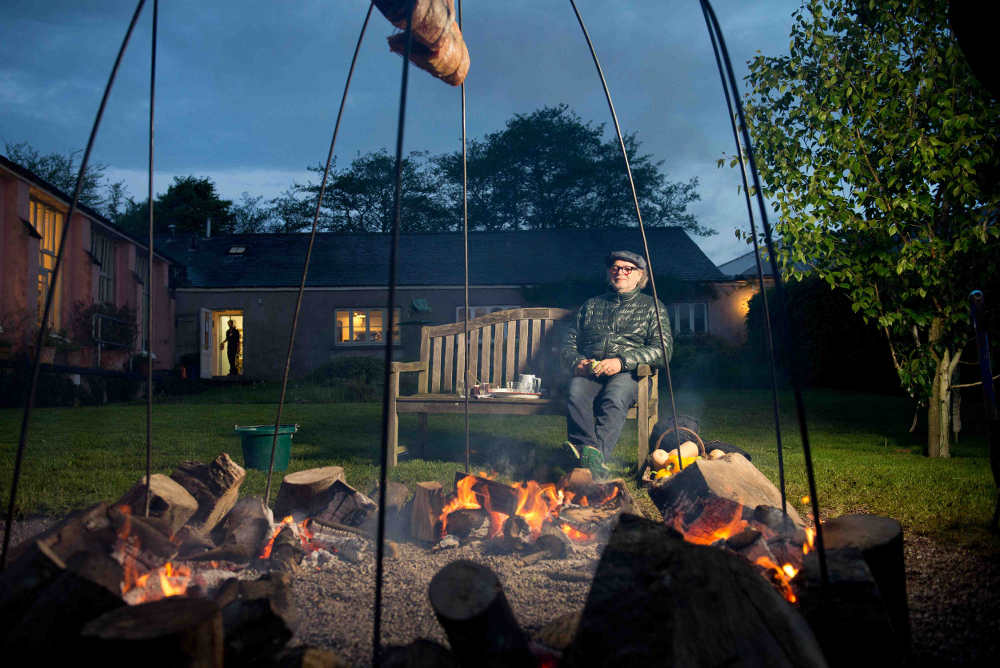
Like the rest of the festival goers, many got up before dawn on Saturday morning to join Mallmann in the cookery school grounds to start the slow work of building the open-air fires he would cook off later that morning in time for the most leisurely of lunches. Others stayed up to a similar hour on the last night in the Big Shed, which is where much of the festival’s eating and drinking happens, as well as most of its dancing.
Outside the Big Shed, Fingal Ferguson of Gubbeen was roasting a whole lamb over fire and Broughgammon Farm were serving up kid goat tacos, while inside My Goodness wowed with their take on El Salvadorian papusa (ground corn tortilla stuffed with black beans) and Rocketman with his salads and pickles, and Green Saffron served curry until the wee hours.
There was fermented gorse tonic from America Village Apothecary, a whole host of kefirs and kombachas and a brilliant choice of Irish craft beers and ciders to wash it all down.
All in all, as sun-soaked Shanagarry weekends go, this was another one to remember. Roll on May 19–21, 2017, for the fifth annual Kerrygold Ballymaloe Litfest.
--

Chairwoman of the Irish Food Writers’ Guild, Aoife Carrigy is a freelance food and wine writer and editor. She is a regular contributor to FOOD&WINE Magazine, The Irish Independent, The Herald and Cara Magazine, amongst others, and was co-author of The Ard Bia Cookbook and general editor of The ICA Cookbook, The ICA Book of Home and Family, The ICA Book of Tea & Company and, most recently, The ICA Book of Christmas. In 2015, she teamed up with Great Irish Beverages to launch the inaugural Dublin Wine Fest and Irish Cider & Food Day.
News from the North
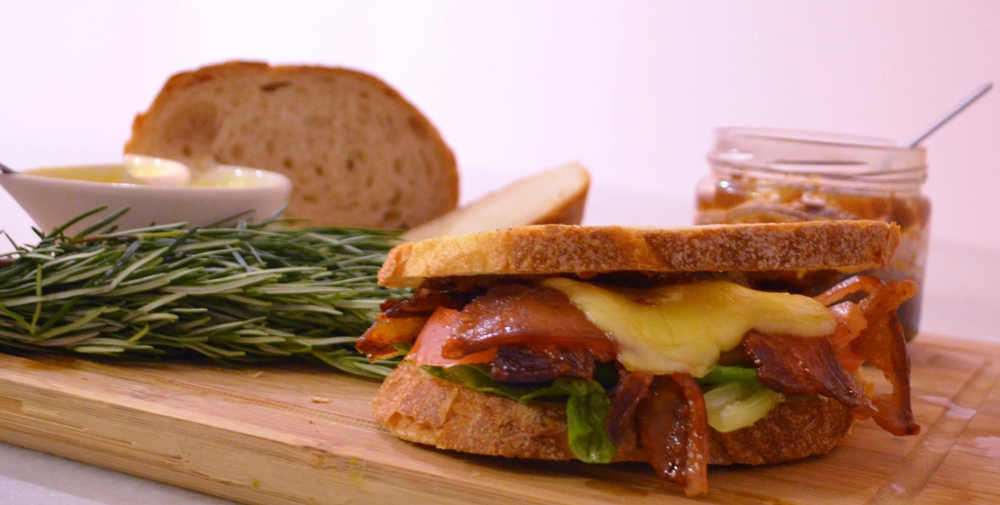

Barbara Collins introduces the British Street Food Awards, an exciting new competitive event at this year’s Hillsborough International Oyster Festival
Food NI is collaborating with both British Street Food and Hillsborough Oyster Festival to bring the Northern Irish Heat of the British Street Food Awards to Hillsborough on the 3rd September 2016.
The awards have been going since 2010 but this is the first ever Northern Irish heat which Food NI’s CEO, Michele Shirlow, says will shine a light on the new generation of the area’s street food talent.
“British Street Food as an organisation is growing 20 per cent every year and it’s worth £600 million to the UK economy. Here in Northern Ireland we have seen a huge increase in the number of food trucks selling everything from goat kid burgers to potato and apple bread and everything in between” says Michele Shirlow.
“The Hillsborough Oyster Festival is an international event with lots of footfall so it is the perfect place to stage the first ever Northern Ireland heats.”
Judges are looking for an innovative food offering and food with visual appeal. Only 20 entrants will be chosen and the selection process will be carried out by Richard Johnson, the creator of British Street Food.
The heat will take place in the County Down village on the 3rd of September 2016. The finals will be in Birmingham on 17/18th September.
www.hillsboroughoysterfestival.com
---
 Barbara Collins is a freelance food, travel and agricultural writer. A former Chief Food Writer for Flavour magazine, she contributes regularly to Countryfile magazine, the Farmers Guardian, the Irish News, FFT and the Irish Mail on Sunday. She is a member of both the UK and Irish Food Writers Guilds and splits her time between Belfast and Galway. Barbara also does menu consultancy and copywriting.
Barbara Collins is a freelance food, travel and agricultural writer. A former Chief Food Writer for Flavour magazine, she contributes regularly to Countryfile magazine, the Farmers Guardian, the Irish News, FFT and the Irish Mail on Sunday. She is a member of both the UK and Irish Food Writers Guilds and splits her time between Belfast and Galway. Barbara also does menu consultancy and copywriting.
@thegoodchinaset
Word from the West
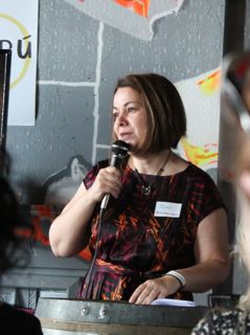
 West of Ireland food writer Anne Marie Carroll, reports on the recent Athru 2016 conference in Galway city, which focused on empowerment across the culinary arts
West of Ireland food writer Anne Marie Carroll, reports on the recent Athru 2016 conference in Galway city, which focused on empowerment across the culinary arts
Galway’s recent Athru 2016 conference focused on empowering women in the culinary arts in Ireland - and this core focus was echoed in the words of Darina Allen, “Talent has no gender”.
The two day conference and workshop was attended by close to 200 people and aims to establish a working Irish female chef database and mentoring system that would ensure that women are included on a 50/50 platform for judging, media and/or to provide a female voice and point of view.
Athru 2016 had an equal number of male and female speakers with Colin Harmon from 3FE leading the key note address on Monday - running a progressive business and kitchen in Dublin, he and Head Chef and Athru 2016 founder Hilary O’Hagan Brennan expressed the need for “A change to happen around traditional practices and the way of doing things in the culinary arts. It’s not about men and women, it is about how the way things are run. The brigade kitchen system and the nature of kitchen does need to change,” explained Hilary.
“In our first of Athru 2016 on both days there were 15 men in attendance, on each day. This is our first year. The conference aimed to raise the questions that need to be asked of the industry across the board. We had 50/50 male/female speakers.
Athru 2016 was about starting the conversation for change”, commented Jess Murphy of Kai Cafe. "Athru has been interesting, empowering to everybody. The industry needs to change throughout. The discussions, the speakers - what will come out of this will be a catalyst for change. We are starting the conversations that need to happen. Athru could be a twice annual conference, moving throughout the country. Awareness from this has been incredible, the last two days on social media has been powerful. It was a fully inclusive empowering event."
Eanna Hassett, Director of food and beverage at Ashford Castle, agreed. “It’s about changing the processes and work practices within the industry,” he said. “Everybody wants more balance. Mentoring will be key to bringing this industry on, you want people to be the best they can be and it doesn’t matter if they are a man or a woman.”
For more information on Athru 2016 check out www.athru.net or follow @Athru2016 across all social media platforms.
--
 Anne Marie Carroll is a freelance food writer and member of the Irish Food Writers’ Guild who lives in Galway with her husband and two children.
Anne Marie Carroll is a freelance food writer and member of the Irish Food Writers’ Guild who lives in Galway with her husband and two children.
With a background in design and illustration, Anne Marie made the switch to journalism with a regular food and wine column in The Galway Advertiser. Her work now mainly focuses on restaurant reviews, writing and editing recipes, the development of food photo shoots, including styling and photography. She also writes for a number of other publications and works as a consultant for small producers, food retailers and restaurants.
Anne Marie writes about all things food from the West of Ireland at her blog, Warm & Snug & Fat. You can also find her on twitter as @Biscuits4ABear
Food Academy Programme

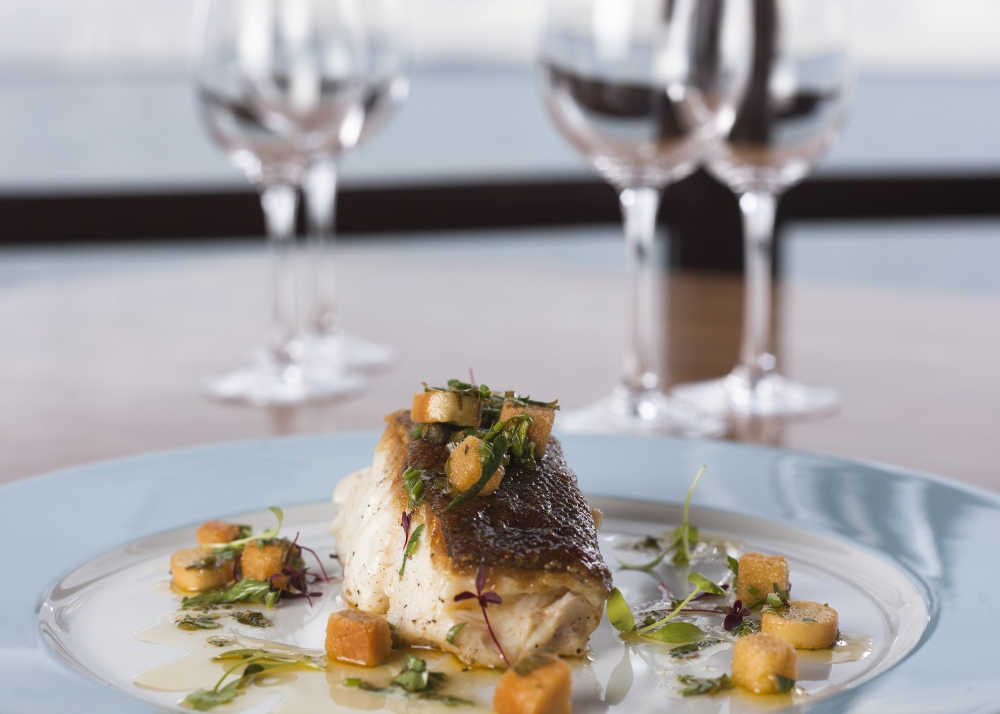
Aoife Carrigy says there’s Something (Deliciously) Fishy Going On Around Ireland This Summer!
It's great to see innovative food producers being showcased as part of SuperValu's Food Academy programme. A joint initiative between SuperValu, Bord Bia and the Local Enterprise Office Network, the national programme has been upping its ante this year, with sales for 2016 expected to double those of 2015. The programme test-runs new producers in their local stores before rolling them out nationally.
Of the 53 small food producers recently introduced to Supervalu shelves in their locality, several are tapping into the under-utilised edible resources of our island's waters to offer a 'Taste of the Sea'.
Donegal shoppers can stock up their store cupboards with jars of Shines' excellent Irish tuna preserved in oil or with tins of peppered smoked mackerel fillets from Irish Atlantic Canned Fish. Dubliners seeking a quick fish supper can choose between Simon's Smokies and Howth Cuisine's Thai fish cakes, while down in Cork, the Union Hall brand produces a very decent smoked mackerel pâte.
But it's not just about the fish. Achill Island sea salt, available in 18 stores in Mayo, is a sea salt flaky enough to satisfy Maldon devotees. And several companies are exploring clever uses for Irish sea vegetables.

Cork's The Laughing Oyster dried seaweed seasoning adds flavour to everything from soups and stews to scrambled eggs, while The West of Ireland Seaweed Kitchen in Galway has developed a low-salt, organic chocolate mousse mix that utilises Irish carrageen for texture. Also in Cork, Roaring Water Sea Vegetable has developed meat-free substitutes for chorizo sausage and black pudding that make great use of Irish wakame.
It's also nice to see one of our seafood-focused restaurants getting some international recognition. Howth is Dublin's most picturesque fishing village and Aqua Restaurant boasts one of its most atmospheric locations, perched at the end of Howth's West Pier with views across to Ireland's Eye. The restaurant recently picked up the title of Best Luxury Seafood Restaurant at the World Luxury Restaurant Awards, which took place at the Grand Kronenhof Hotel, Pontresina, Switzerland.
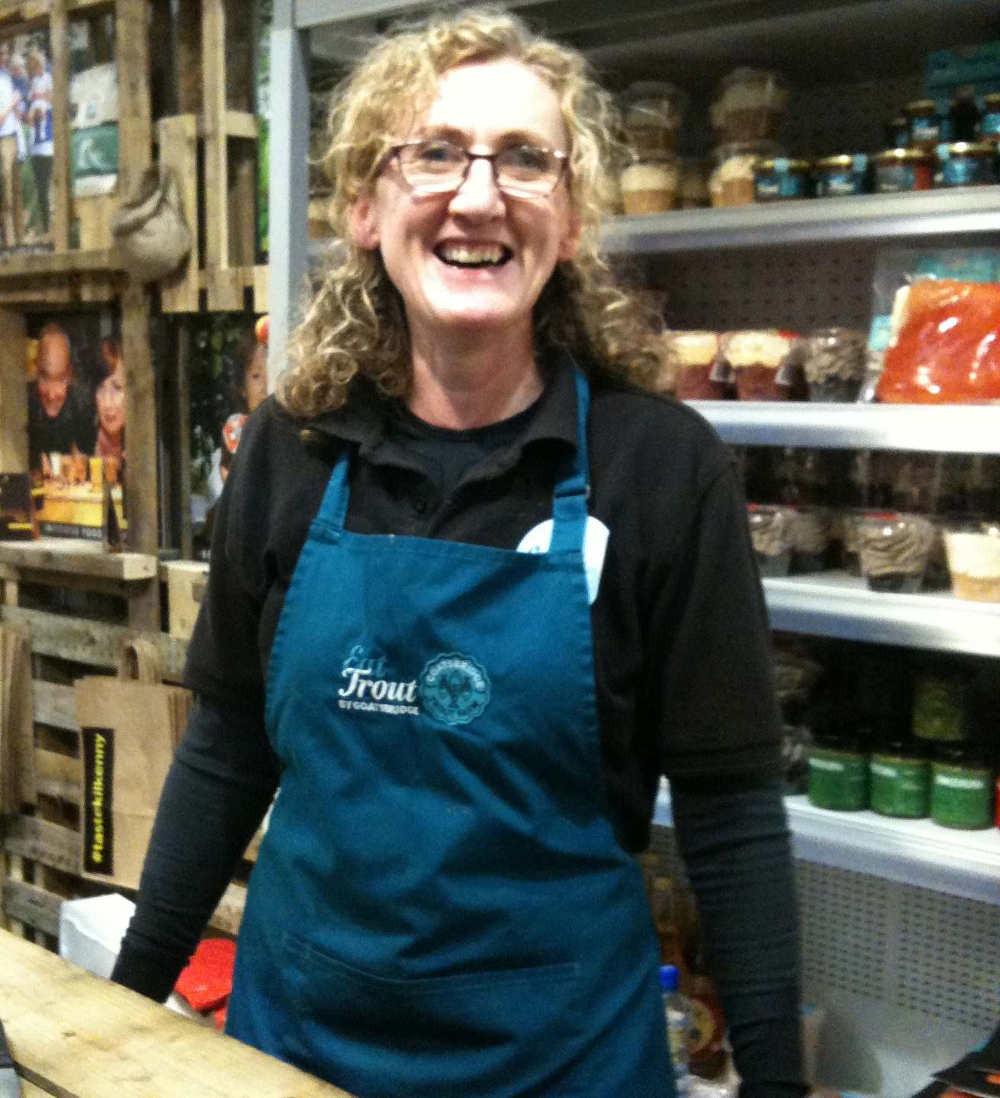 Another great champion of Irish fish, Mag Kirwan of Goatsbridge Trout Farm, is gathering trout recipes from women in Ireland and Uganda from diverse backgrounds and professions into an upcoming cookbook: ‘Fishwives’ will be launched at Savour Kilkenny on October 28th, and all proceeds will go to Hospice Africa Uganda. For more details, see goatsbridgetrout.ie/fishwives-fish-recipe-book
Another great champion of Irish fish, Mag Kirwan of Goatsbridge Trout Farm, is gathering trout recipes from women in Ireland and Uganda from diverse backgrounds and professions into an upcoming cookbook: ‘Fishwives’ will be launched at Savour Kilkenny on October 28th, and all proceeds will go to Hospice Africa Uganda. For more details, see goatsbridgetrout.ie/fishwives-fish-recipe-book
[First published in the Irish Independent 24/07/2016.]
--

Chairwoman of the Irish Food Writers’ Guild, Aoife Carrigy is a freelance food and wine writer and editor. She is a regular contributor to FOOD&WINE Magazine, The Irish Independent, The Herald and Cara Magazine, amongst others, and was co-author of The Ard Bia Cookbookand general editor of The ICA Cookbook, The ICA Book of Home and Family, The ICA Book of Tea & Company and, most recently, The ICA Book of Christmas. In 2015, she teamed up with Great Irish Beverages to launch the inaugural Dublin Wine Fest and Irish Cider & Food Day.
Food for the Soul
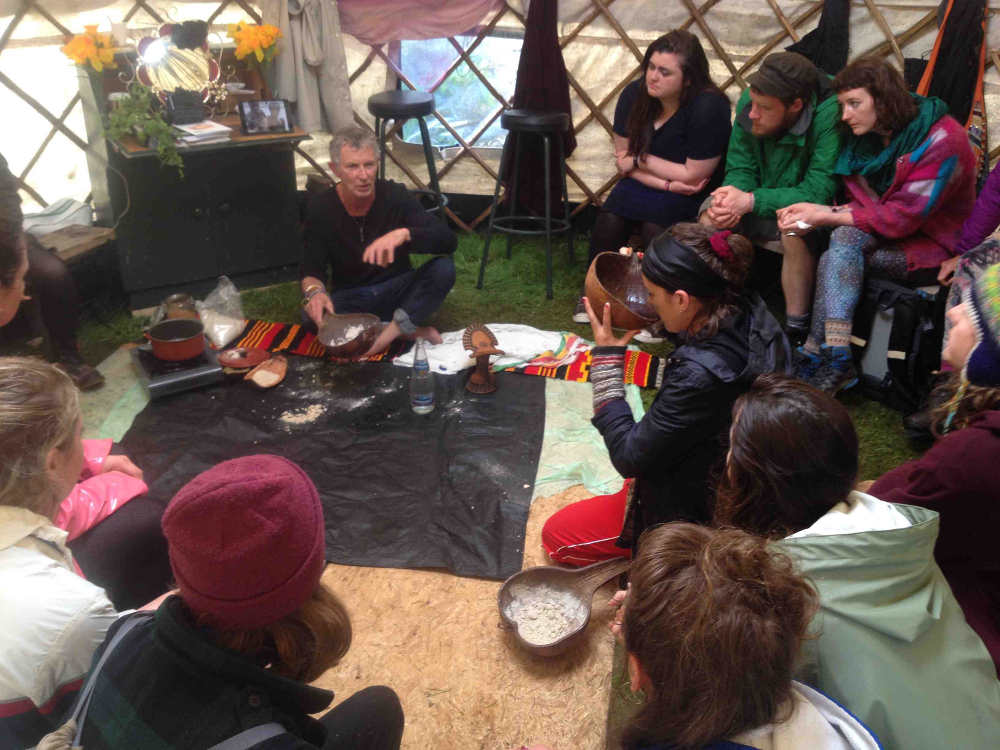
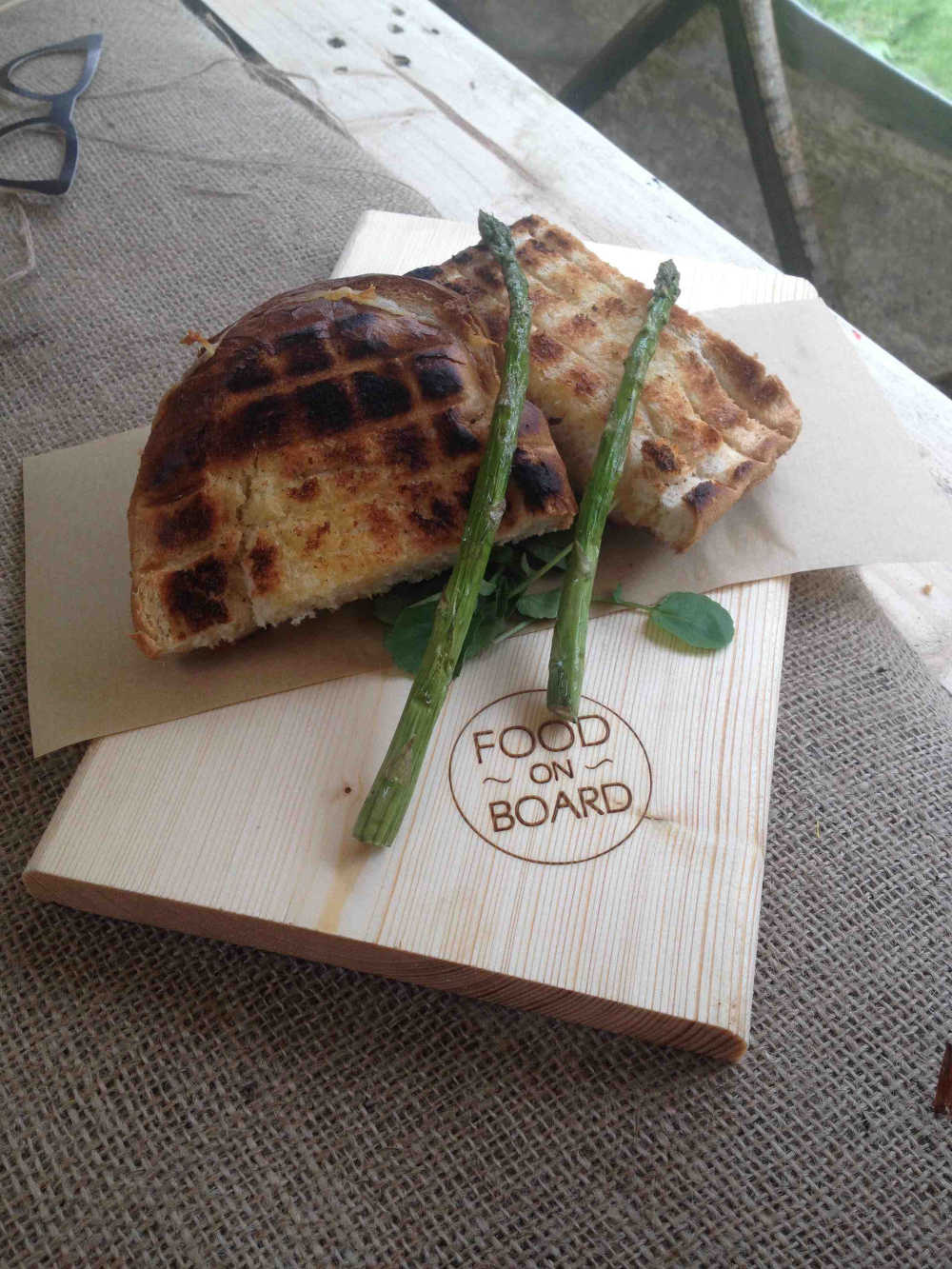 The Body & Soul Festival 2016 was held recently in the grounds of Ballinlough Castle, Co. Westmeath. Dee Laffan, a passionate campaigner against food waste, found much of interest to report on, including great contributions from some well known food producers, chefs and writers.
The Body & Soul Festival 2016 was held recently in the grounds of Ballinlough Castle, Co. Westmeath. Dee Laffan, a passionate campaigner against food waste, found much of interest to report on, including great contributions from some well known food producers, chefs and writers.
One of many weekend music festivals on the Irish scene, each with its own unique personality, the USPs at the heart of Body & Soul are art, theatre, culture and music. Each area is adorned with light and art installations and many attendees wear fancy dress to take part in a sort of combined performance over the weekend.
This year, the Walled Garden was home to a new project, Food on Board, the brainchild of Jack Crotty of The Rocket Man Food Company based in Cork.
The idea behind Food on Board was to create a collective of food companies from all corners of the country, to provide festival goers with an area where they can relax and escape from the slight madness outside while enjoying quality food prepared with sustainability and provenance in mind. Food providers included some of Ireland’s edgiest kitchen thinkers such as The Market Kitchen, Assassination Custard, Katie Sanderson, The Sharp Knife and Gruel Gorilla.
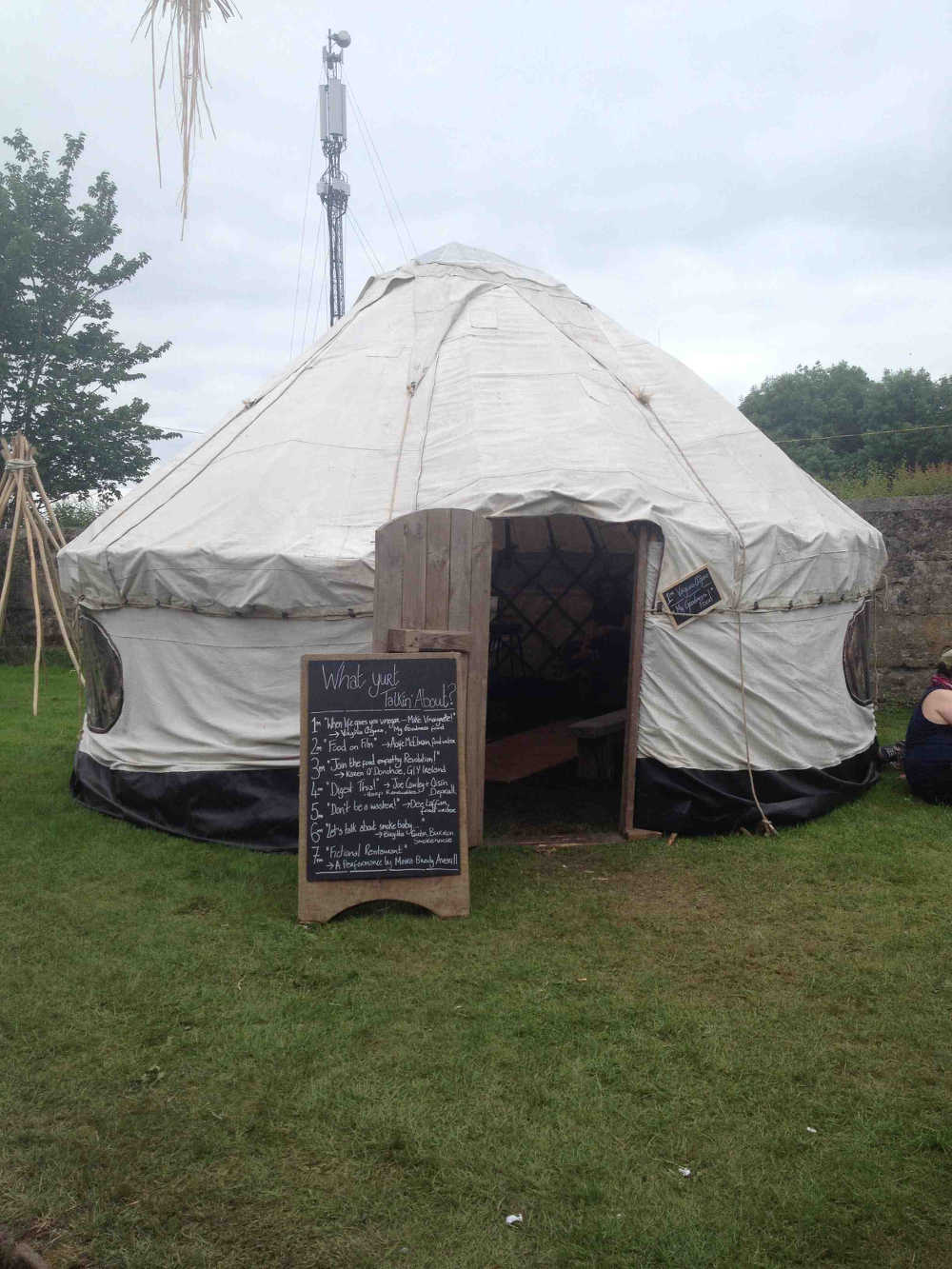
The principle of Food on Board, and the idea behind its name, is a desire for less waste in the world, including food waste, packaging and food service items. Each dish from a Food on Board stall holder was served on bespoke wooden boards – 800 were made especially for the event – and when people were finished eating they returned their board, which was then washed and reused; all plastic and paper was collected for recycling; and all food waste was put in a compost bin, which was composted onsite by Harp Renewables.
Harp Renewables have created organic waste digesters to reduce food waste into dry material, similar to coffee grinds, in 24 hours. This composted material can then be used to as a high-energy biomass fuel. For example, it could have been used to heat the water for the showers in the campsites of the festival – food for thought for next year!
In a corner of Food on Board was the conversation yurt – What Yurt Talkin’ About? – where a line up of food producers, chefs, writers, performers and many more involved in the food industry in some way, spoke about a topic that they are passionate about.

Performers included: Virginia O’Gara from My Goodness Food chatting about a permaculture approach to creating recipes, making kombucha, vinegars and her amazing rain water keffir, which everyone got to sample; Birgitta Curtin from the Burren Smokehouse gave an insightful talk about the ins and outs of smoking fish and the importance of supporting Irish food producers; chef Kevin Thornton demonstrated tribal cooking and spoke about how travel inspires food; Clare Anne O’Keefe chef and food curator at the Dublin Science Gallery spoke about the taste of things to come and bringing science and food to life through the exhibitions and events at the gallery; TTIP was a hot topic all weekend being mentioned by many speakers, and was thoroughly discussed by attendees of Dr. Ollie Moore’s incisive talk on the matter.
For more on food at Food on Board, including the full line up of speakers, visit: www.bodyandsoul.ie.
-----

Dee Laffan is a freelance food writer and editor. Formerly editor of Easy Food magazine, she has written for the Irish Independent and Sunday Independent. She is a proud supporter of Irish producers and their products, and takes part in judging for food competitions including Blas na hÉireann and the Great Taste Awards. She is a member of the Irish Food Writers' Guild and secretary for Slow Food Dublin. Twitter @deelaffan
Word from the West
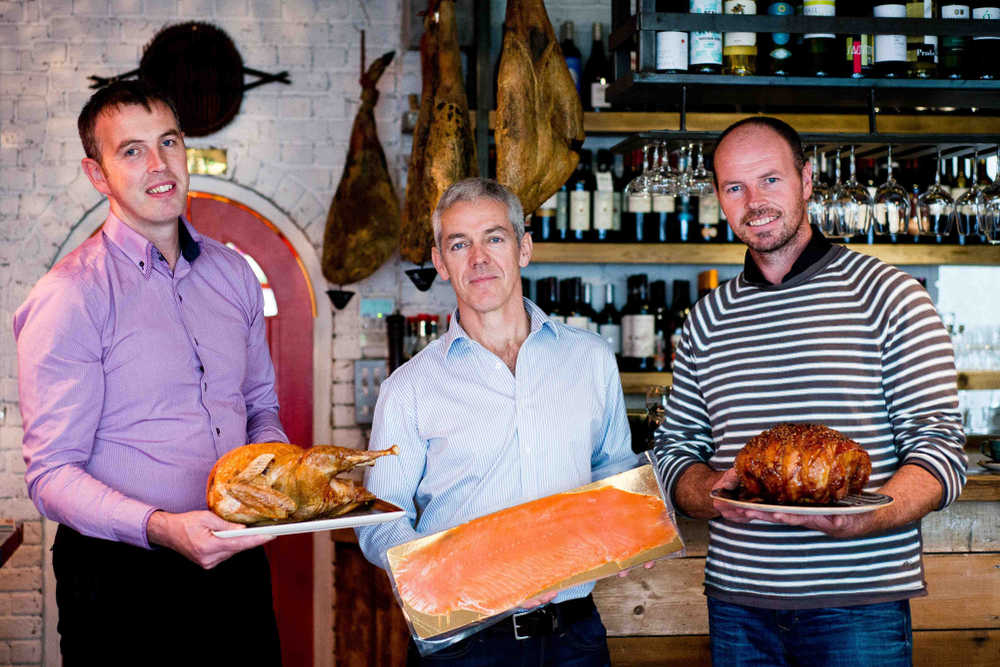
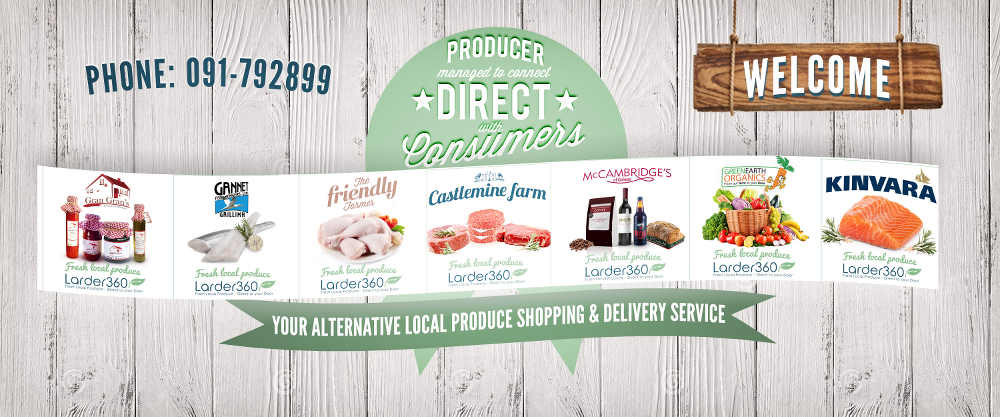
West of Ireland food writer Anne Marie Carroll, tells us all about a brilliant Galway food initiative - an online farmers’ market called Larder 360
“Larder 360 makes getting your hands on locally produced, high quality food products extremely easy… It’s the same as any supermarket online delivery service.”
The idea of a community co-op was a recurring theme at the recent Taste Council of Ireland Food Summer School 2016, organised in association with Bord Bia and held at the end of August at The BrookLodge, Macreddin Village, Co. Wicklow.
That idea is already a reality in Galway city where Larder360.com has recently established itself as a new and exciting initiative, a Galway-based collaboration making small production food more readily available. It is, in essence, an online farmer’s market.
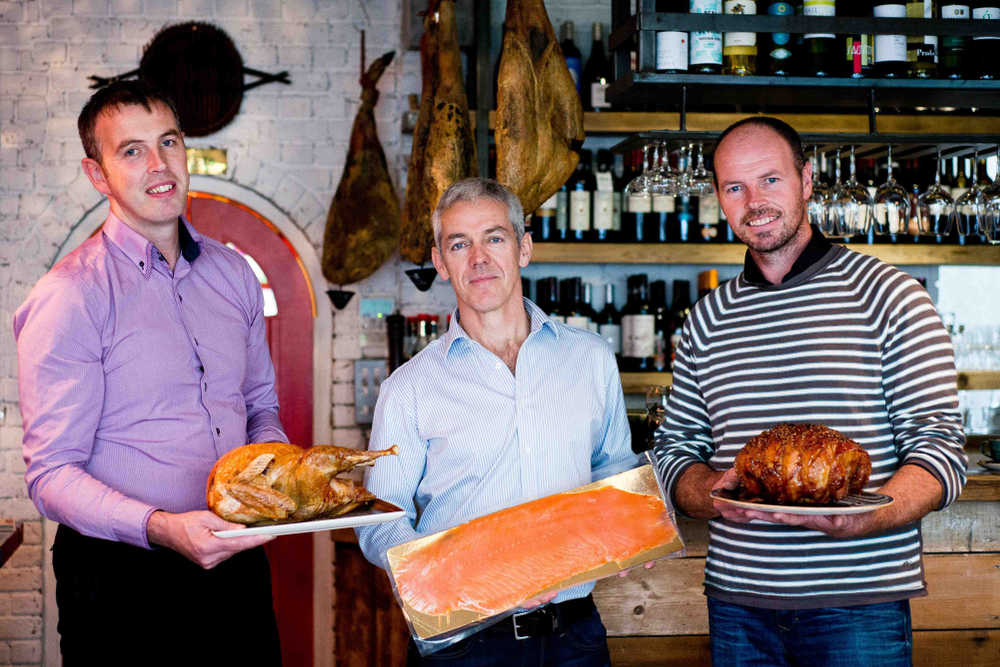
The idea originated from Declan Droney of Kinvara Salmon and Brendan Allen from Castlemine Farm who have experimented with this co-operative model before now. As local producers both Declan and Brendan faced the same challenges as their peers working in the current food supply system. The system only benefits the distributors and large super market chains who are driven by profit margin - and not always quality of product. They recognised this as an opportunity for change.
Local consumers want the best fresh produce available at competitive prices - local producers want a closer connection to their customers and to be fairly compensated for their products. Declan, Brendan and Ronan Byrne (The Friendly Farmer) were already selling their farm produce to their own customer base.
Larder 360 was developed to operate as a shared economy, pooling the resources of many. Instead of each setting up a website of their own, one central website was built, a platform helping producers to be more visible and more accessible. This way the producers themselves can log in and upload whatever they want, enabling them to compete more effectively in the marketplace. Its a one-stop shop for all the best local farm produce, catering to customers who are looking for quality and care in their food, and making those kind of goods as easy to get as your weekly shop online from a big supermarket.
The range is very impressive with great variety, from tea to fresh fish to oils and sauces and it is growing all the time. There were over 150 products on offer at last count. In the few months since they have been up and running the feedback has been largely positive. Looking at the figures, retention levels are encouragingly high - 76% of customers have shopped with them two or more times, and 30% have placed 5 or more orders.
With the continuing controversy over meat labelling customers value having produce they can trust and, with these smaller producers, everything is traceable and freshness is the driving force. Orders are taken twice a week, with deliveries on Tuesday and Friday. Delivering twice weekly means everything perishable you get in your delivery has been produced within four or five days. Meat arrives vacuum packed with no chance of spillage. They have a “food hub” at their base across from the Maldron Hotel Oranmore, where they keep some of the items with a longer shelf life, like coffee and jarred goods.
Larder 360 deliver to either the home or to the workplace, dropping off the groceries there so people can just pack it into the car as they’re going home. The order arrives in a smart, branded cooler box with plenty of ice. There’s no need for you to wait around for a delivery, they can just pop it round by the back door and it will be perfectly fine until you get back.
Currently they are delivering to NUIG, GMIT, IBM, Boston Scientific and Medtronic and adding to this list all the time. Larder 360 makes getting your hands on locally produced, high quality food products extremely easy. The same as any supermarket online delivery service but with the most important difference being the quality of the products available.
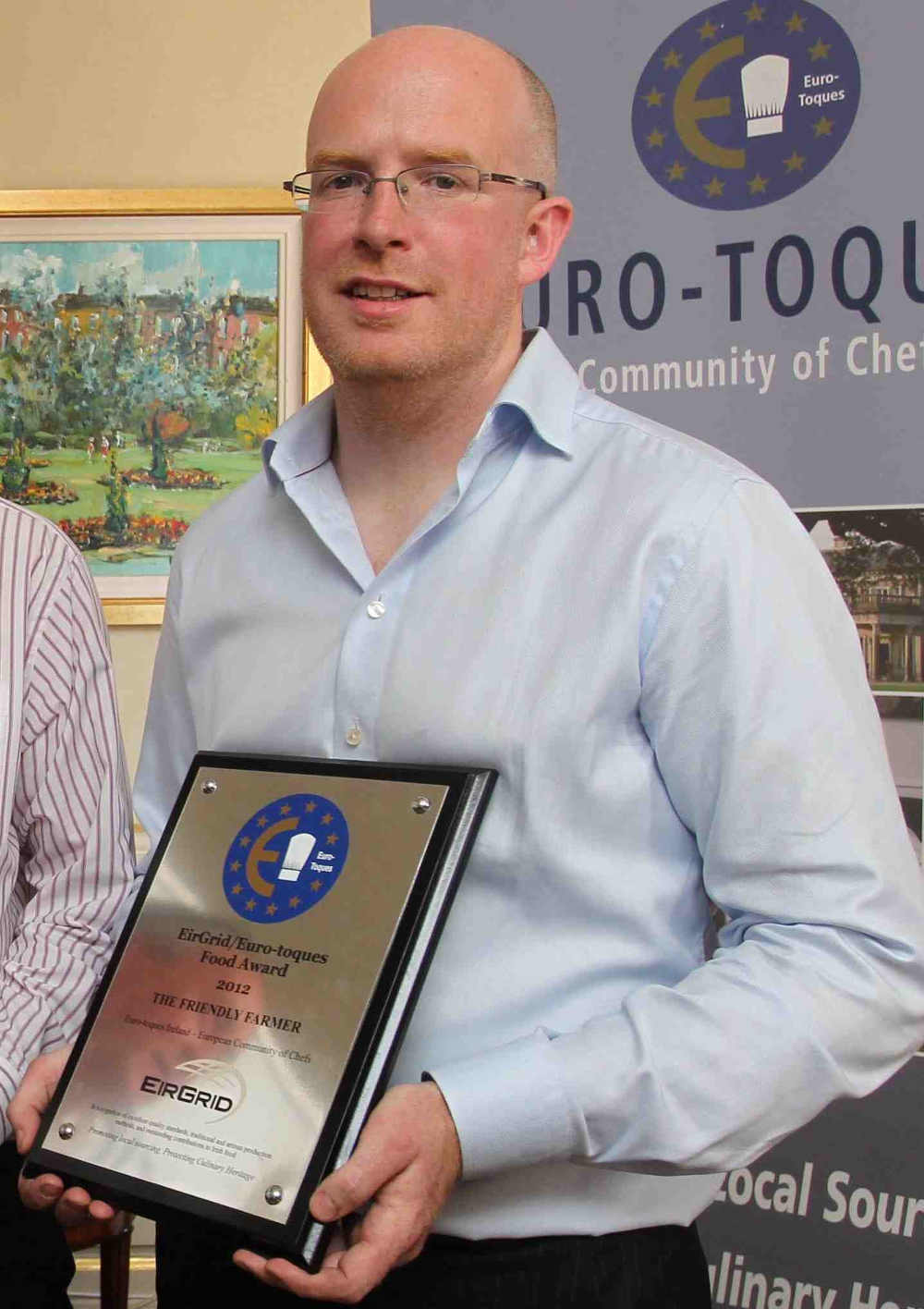
I like to make sure I buy good quality products and do my bit to support local producers when possible. However, I don’t always have the time to get to all the different shops and stalls which stock my favourite products so I was happy to give Larder 360 a whirl. My first order wasn’t too big, just a few Castlemine sausages and rashers and some chowder mix and fish from Gannet Fishmongers, things I usually get at the Saturday market. There was some steak also and horseradish sauce from Gran Grans Foods range.
The website was simplicity itself to use and delivery ran like clockwork. Everything was of the highest quality and I found no down side to the service, in fact I have started putting together my next order. I have my sights set on a nice chicken carcass for stock as well as some chicken livers and pork belly. Maybe a fruit and veg box from Greenearth Organics and some Bluebell Falls goats cheese...
It is not just for the keen cook though. There are excellent ready meals and soups from Yum Tree Kitchen and a sticky toffee pudding or good quality bar of chocolate for afters. Did I mention the wines and craft beers form McCambridges? It’s been great to see such a positive response so far here in Galway, and they’re planning to expand to Dublin, the North and eventually as near to nationwide as possible.
Building local food hubs with local produce reduces the amount of transport time and handling ensuring the food you receive is fresh. Less transport reduces unnecessary carbon and other emissions to the environment. Larder 360 connects quality conscious consumers to a community of local producers and the products we all know and trust.
Definitely one to try!
Unit 16 Westlink Commercial Park, Oranmore, Galway, H91 D951. www.larder360.com Tel: 091 792899 Email: info@larder360.com
--
 Anne Marie Carroll is a freelance food writer and member of the Irish Food Writers’ Guild who lives in Galway with her husband and two children.
Anne Marie Carroll is a freelance food writer and member of the Irish Food Writers’ Guild who lives in Galway with her husband and two children.
With a background in design and illustration, Anne Marie made the switch to journalism with a regular food and wine column in The Galway Advertiser. Her work now mainly focuses on restaurant reviews, writing and editing recipes, the development of food photo shoots, including styling and photography. She also writes for a number of other publications and works as a consultant for small producers, food retailers and restaurants.
Anne Marie writes about all things food from the West of Ireland at her blog, Warm & Snug & Fat. You can also find her on twitter as @Biscuits4ABear
News from the North
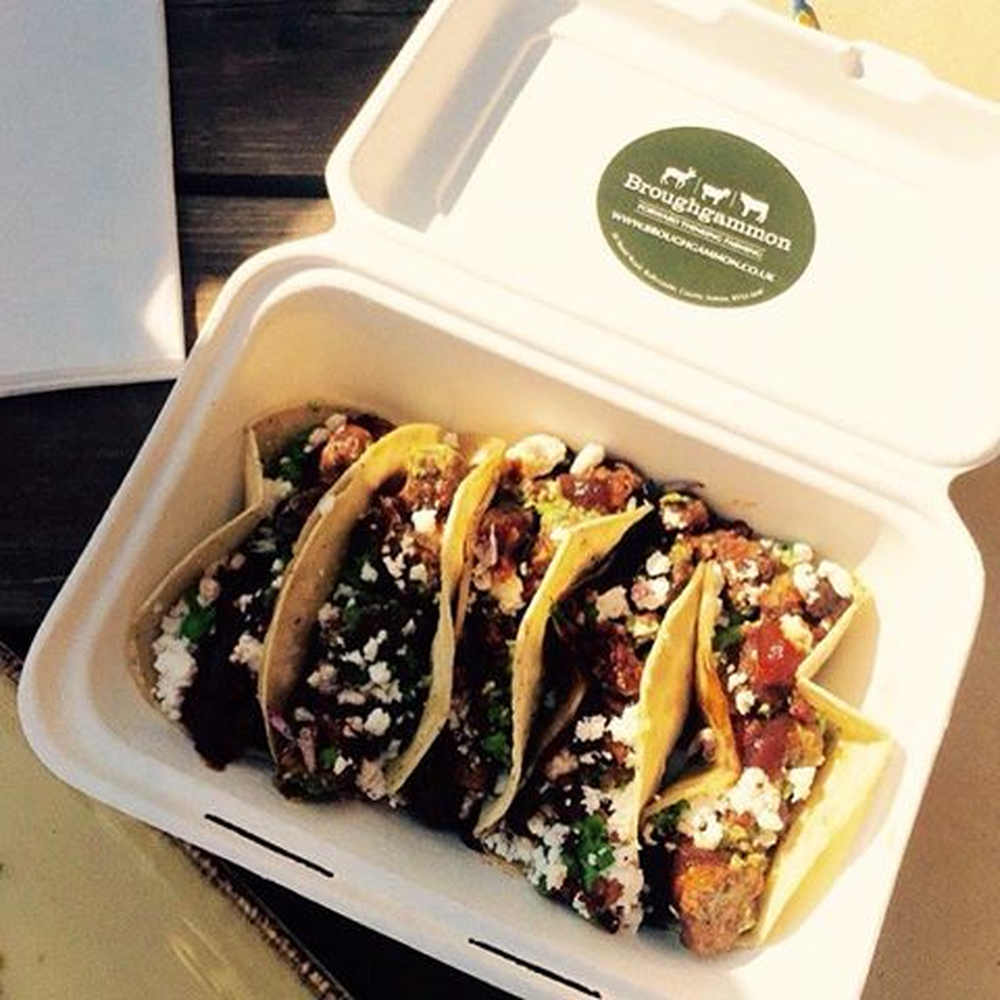

Barbara Collins
Ballycastle-based Broughgammon Farm’s goat tacos have won them the Best Snack Food category in the influential British Street Food Awards 2016 in Birmingham.
Broughgammon Farm, a family business, came out on top of a finalists field of 17 street food businesses from across the United Kingdom. It was a first time win for a Northern Ireland food business.
The finalists also included Pheasant’s Hill Farm from Downpatrick, both reached the finals in Birmingham followed their success in the recent Northern Ireland regional heat held as part of the Hillsborough International Oyster Festival.
Becky Cole, Broughgammon’s marketing manager, says: “We are delighted to have won the award for our goat taco with chorizo and bacon crumb. It’s a product that we’ve developed to offer a great taste, something completely different. The judges have clearly recognised this and it’s great to be bringing the award to Northern Ireland for the first time. It will raise our profile substantially in Britain as well as in Northern Ireland, where we’d like to have the opportunity to cook our meats at Belfast’s St George’s Market in particular.”
Welcoming Broughgammon’s success in the British Street Food Awards Final, Michele Shirlow, Food NI chief executive, said: “This is a tremendous achievement for Broughgammon Farm, now among the most innovative of smaller food businesses in Northern Ireland.
“The Cole family in Ballycastle is spearheading the development of Cabrito goat meat and dishes in Northern Ireland and has been immensely successful in creating a consumer awareness of the quality of their ever-growing range of goat and veal products.
“It’s another tremendous boost for our Year of Food and Drink, especially in Great Britain, and will help to further enhance our reputation in our most important market as a primary source of premium food that combines innovation, superb taste and provenance. Broughgammon has also been among the biggest supporters of Year of Food and Drink and has become a regular feature at food festivals across Northern Ireland.
“Increasing the profile and quality of Street Food here is one of the most important objectives of Year of Food and Drink. We saw a need to support the expansion of food festivals throughout Northern Ireland by encouraging those interested in a service that has long been a feature of many cities internationally and helps to reinforce the tourist experience.
“We want visitors to Northern Ireland to enjoy our street food and to rate it on a par with cities such as Amsterdam, Paris, New York, Hong Kong and Bangkok. We have the quality ingredients and enterprising people to succeed in what has become an very exciting industry that’s reckoned to be worth an amazing £600 million a year and is growing annually by 20 per cent.”
The British Street Food Awards were launched in 2009 by UK food journalist Richard Johnson, who had enjoyed delicacies from around the world and wanted to encourage the industry’s growth in Britain.
He subsequently won the backing of celebrity chefs such as Mark Hix and Marco Pierre White as well as respected food writers including Tom Parker Bowles. Xanthe Clay, the Daily Telegraph’s food expert, was among the judges.
---
 Barbara Collins is a freelance food, travel and agricultural writer. A former Chief Food Writer for Flavour magazine, she contributes regularly to Countryfile magazine, the Farmers Guardian, the Irish News, FFT and the Irish Mail on Sunday. She is a member of both the UK and Irish Food Writers Guilds and splits her time between Belfast and Galway. Barbara also does menu consultancy and copywriting.
Barbara Collins is a freelance food, travel and agricultural writer. A former Chief Food Writer for Flavour magazine, she contributes regularly to Countryfile magazine, the Farmers Guardian, the Irish News, FFT and the Irish Mail on Sunday. She is a member of both the UK and Irish Food Writers Guilds and splits her time between Belfast and Galway. Barbara also does menu consultancy and copywriting.
@thegoodchinaset
Word from the West
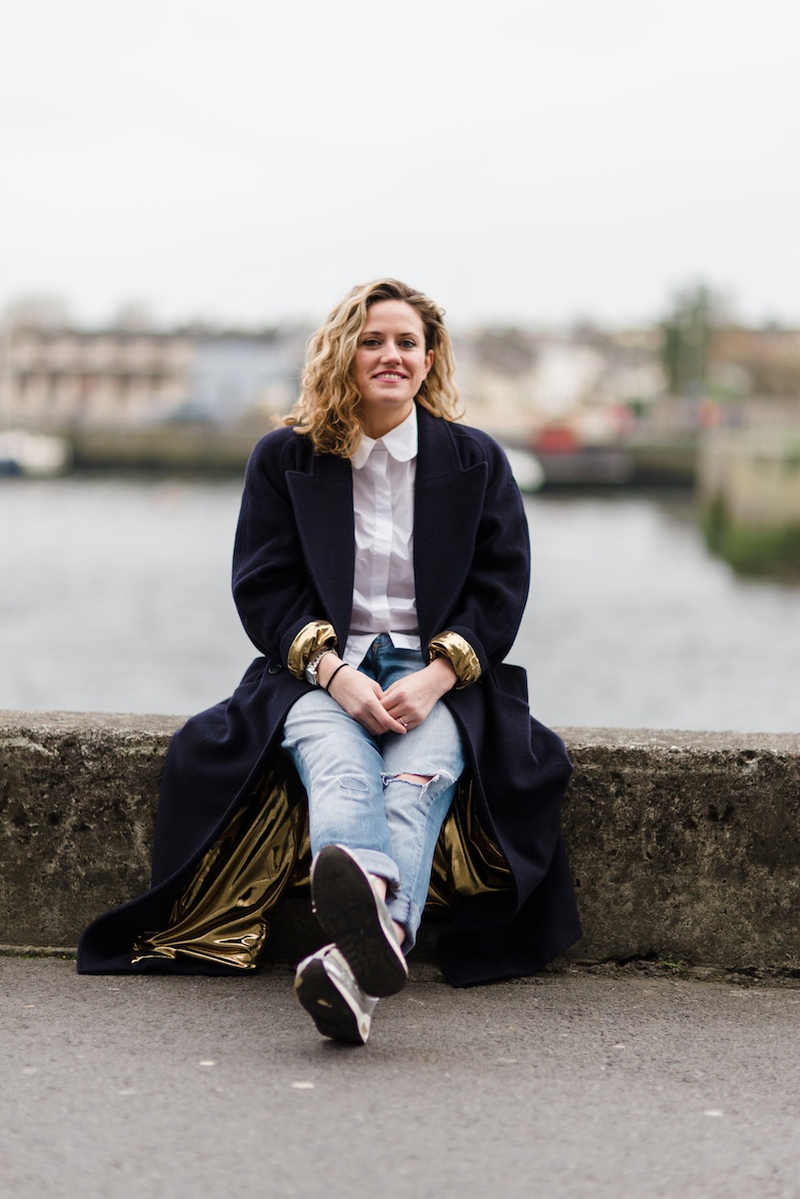

West of Ireland food writer Anne Marie Carroll introduces Galway Food Tours, Around the Marketplace, a culinary walking tour of Galway - just the thing if you have visitors from out of town
Sheena Dignam’s popular Galway Food Tours started a couple of years ago during the Galway Food Festival and has been going strong ever since. Sheena leads food enthusiasts around Galway’s finest food destinations and guests usually replace lunch with the tour as, along the way, you will sample fresh sushi, the finest cheese, Galway oysters, delicious breads, savoury bites and sweet treats while soaking up the atmosphere of Galway city - the 'City of the Tribes'.
Sheena is a Franco-Irish food and wine lover who is originally from Wicklow but grew up in the Loire valley, where she studied Culinary Arts & Wine. Having spent over 15 years in the food industry, her passion led her to launch Galway Food Tours.
The original daytime tour took in some of Galway’s culinary hot spots and market stalls from Dannys Doughnuts and Sheridans Cheese to An Cupan Tae. Sheena guides you along the streets where you meet artisan producers and sample their products.
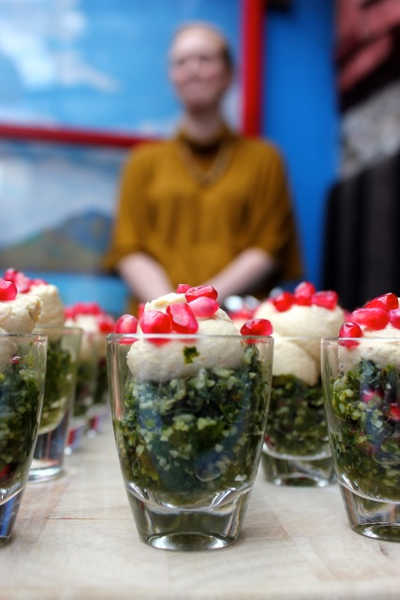
The Saturday and Sunday tours include a trip to the now famous Galway Market and all days include visits to award-winning restaurants and cafés. Just the thing if you have visitors from out of town. Since then, the variety of tours has grown to feed the demand for these culinary adventures.
There has been a special 'Pastry Food Tour' visiting a selection of the best bakeries and cake shops in town as part of Galway Bake Fest, where a limited number of very lucky people were introduced to the history behind Galway’s best loved bakeries and pastry shops, sampling delightful bites from Griffins to Goyas, Petit Délice and more. They also found time to indulge in a glass of bubbles in Tigh Neachtain.
There is a unique Westend Food Tour, which started in May to celebrate all things tasty in Galway’s most bohemian neighbourhood. The tour takes in some of their best loved restaurants, food haunts and watering holes including Ernies fruit & veg, Eat @Massimo, Dela and Pearl Na Mara. Our guide, Sheena has some sound advice for people interested in any of her tours, “Come hungry and thirsty as there will literally be a feast of great food and refreshing drinks.”
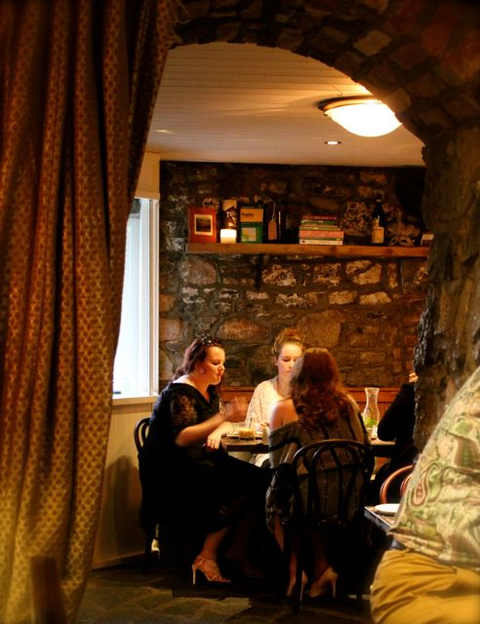
The newest of these tours sees Sheena taking a small group out to experience the sights, sounds and tastes of Connemara and the Aran Islands. You can visit an abalone farm, a bakery and a brewery, meet a herd of goats and sample all that you have learned about with a lunch in Tigh Nan Phaidi before flying back to the main land.
Galway Food Tours is now ready to head to the East Side with a new evening food tour coming in November, visiting all the talent on that side of town - Loam, Raw- Sushi In The Sky, Le Petit Pois, Hotel Meyrick and others. It will be another great evening filled with good food and drink.
Times, prices and tickets are available from Sheena on 086-7332885. Check out Galway Food Tours Around the Market Place on Facebook and Instagram for more information.
--
 Anne Marie Carroll is a freelance food writer and member of the Irish Food Writers’ Guild who lives in Galway with her husband and two children.
Anne Marie Carroll is a freelance food writer and member of the Irish Food Writers’ Guild who lives in Galway with her husband and two children.
With a background in design and illustration, Anne Marie made the switch to journalism with a regular food and wine column in The Galway Advertiser. Her work now mainly focuses on restaurant reviews, writing and editing recipes, the development of food photo shoots, including styling and photography. She also writes for a number of other publications and works as a consultant for small producers, food retailers and restaurants.
Anne Marie writes about all things food from the West of Ireland at her blog, Warm & Snug & Fat. You can also find her on twitter as @Biscuits4ABear
Word from the West
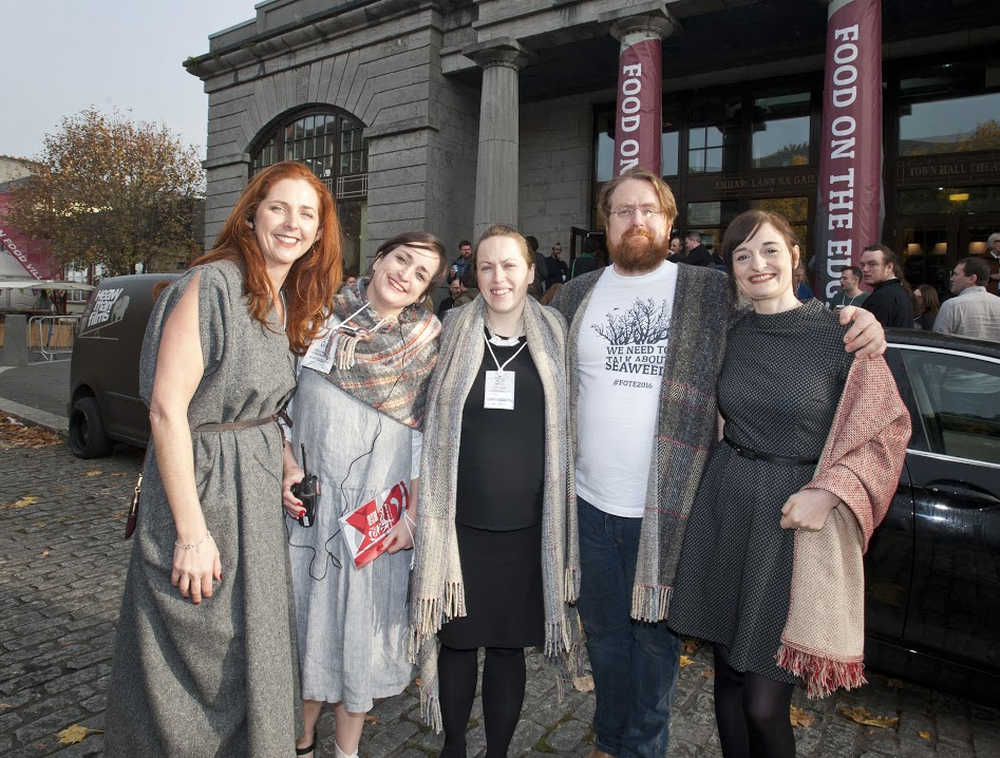

West of Ireland food writer Anne Marie Carroll reports on Galway’s second Food On The Edge international symposium
It is said that behind every great man is a great woman - but in the case of JP McMahon, chef, restaurateur and occasional visionary, there are four. At least. Last month saw the second edition of Food on The Edge, the international food symposium held in Galway, a meeting of the most exciting minds and heavy-hitters from the culinary world. This year we welcomed such giants as Virgilio Martinez, Claude Bosi, Massimo Bottura and Christian Puglisi to our vibrant city on the rugged west coast of Ireland.
Christ-like in his tweed robes, and yet still Apostolistic in a printed FOTE team teeshirt brandishing the message ‘We Need To Talk About Seaweed’, JP took to the stage to introduce each speaker. On a small budget, his squad of ladies, almost faultlessly, pulled off a very successful event with big ambitions and expectations. Congratulations to Drigin Gaffey, event coordinator; Olivia Collins, communications manager; Ruth Hegarty, sponsorship manager; and Edel McMahon, administrator & graphic designer.
Monday and Tuesday have traditionally been the chef’s day off. On Monday 24th and Tuesday 25th October 2016, restaurants around the globe may well have been deserted as a gathering of the worlds top chefs and food leaders came together in the Town Hall Theatre, Galway. An audience of around 400 people attended on each day, to hear speakers debate and discuss themes around the huge and murky issue of the future of food.
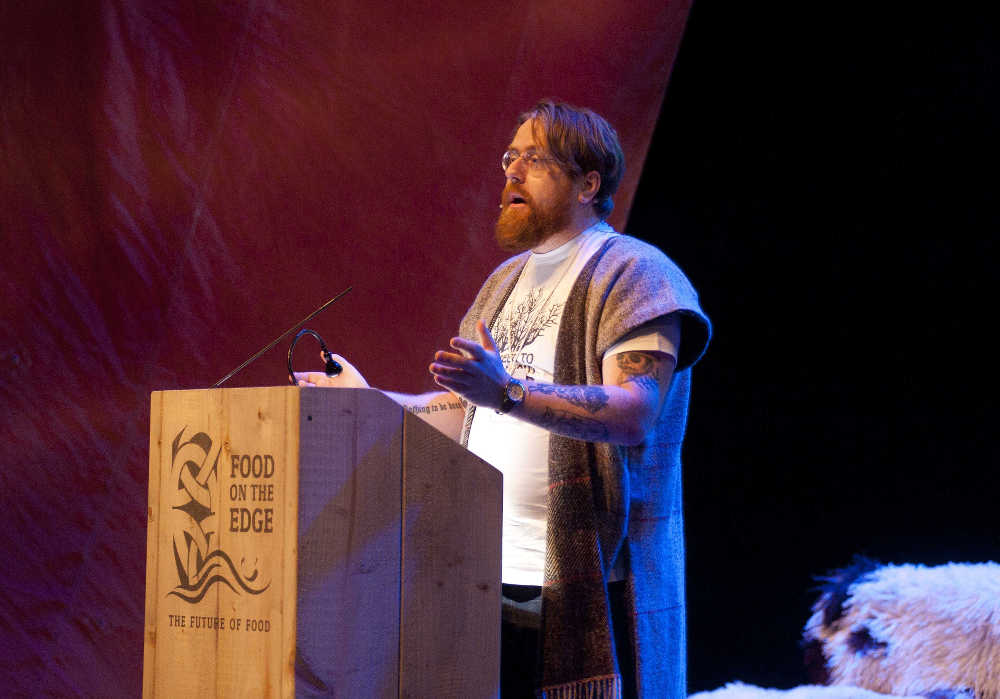
'Food On the Edge' was the brainchild of JP McMahon of the Eat Galway restaurant group which includes Michelin-starred Aniar restaurant in Galway. Over forty international chefs, many with stars of their own, attended the two-day event in Galway. Considered by many to be the equivalent of a ‘G8 Summit’ for food and food culture, international chefs, restaurateurs and other delegates came to Galway to share their thoughts on what the food industry can do for the future of food and indeed the planet.
The symposium aims to challenge our perspective on food and our connection with it. Establishing a forum where chefs can openly debate and discuss the key issues of an industry which doesn’t often get a chance to meet and speak peer to peer, the first Food on the Edge last year surpassed everyone’s expectations. The future of food is crucial to the health and wellbeing of the next generations and the industry enthusiastically welcomed this opportunity to continue the conversation at Food on the Edge 2016.
There were approximately 40 speakers over the two day event, all chosen for their innovation, passion and influence on today’s food culture. The mission of Food on the Edge is to create a benchmark for best practice, in terms of food, its culture, and the people who produce it, debated on an open platform. The speakers, each with his or her own unique perspective, all spoke with passion on diverse cultural, social, environmental and educational aspects of food.
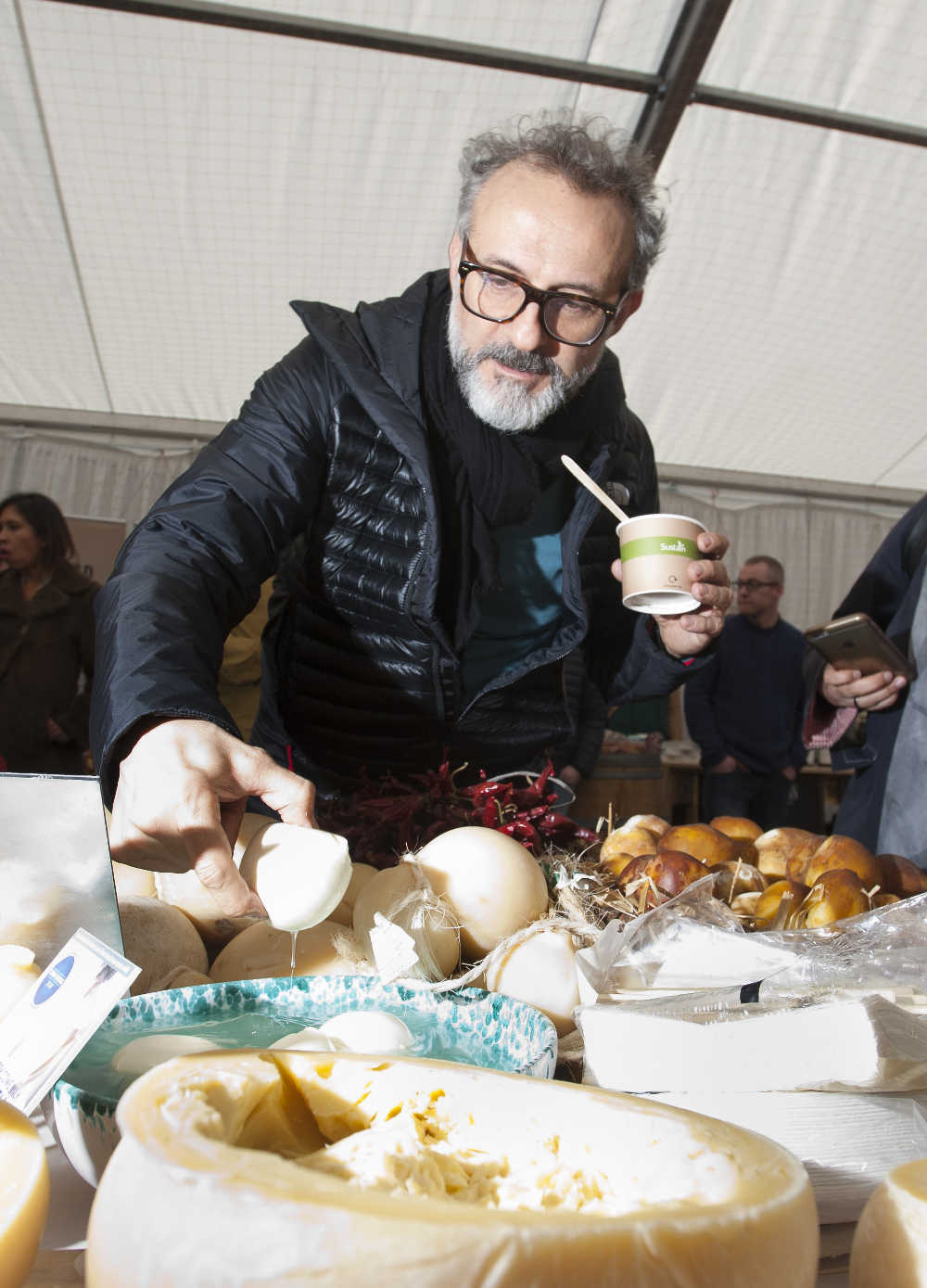
Massimo Bottura, the visionary Italian chef enthralled attendees when he delivered an impassioned talk about his Refettorio Gastromotiva project, which transformed wasted Olympics food into nutritious and tasty meals for the needy during the Rio games last August. At the other end of the experience spectrum, a young Galway chef who has been making his mark in the UK, Evan O’Ceallaigh spoke compellingly on the topic ‘On A New Culture of Chef’, highlighting that the best kitchens are those where respect for all is the philosophy, and there is no fear.
Panel discussions took place on the topics of the ‘Future of Irish Food’, the ‘Future of Canadian Food’ and the ‘Future of Australian Food’. It was truly international in flavour as delegates had travelled from as far away as Peru, the USA, the Middle East, the Philippines, Russia, Scandinavia, France, Spain, the Netherlands and Germany. The Artisan Food Village, however, which took up residence beside the Town Hall Theatre for the duration of the symposium, was distinctly Irish, showcasing a number of top quality food producers.
Perhaps most significantly, for an Irish audience, Jock Zonfrillo screened a powerful video on the disconnect aboriginal people experience from their cultural heritage. His message was to "Give back more than you take." The Scottish chef is now resident down under, but has learned about the culture of his adopted homeland through Aboriginal people and their connection with the land. "I didn't realise how sophisticated their food culture was, to take something inedible and make it edible - the key to that lies in their culture. It hurts to have so much knowledge passed on and on, then to have it broken."
John Mulcahy, Head of Food Tourism for Failte Ireland and a supporter of Food On The Edge, said, ’With interest in the combination of food and tourism in explosive mode, there is no doubt that Food On The Edge is helping to change international perceptions of Ireland’s food while also raising the gastronomic profile of Galway, the Wild Atlantic Way and Ireland on a global scale.’ He added that the food movement in Ireland is coming of age. ‘This is evident in the current levels of activity relating to food, and the interest around local food and traditions. As a result, there is much happening and much to be proud of, and Food On The Edge is symptomatic of that.’
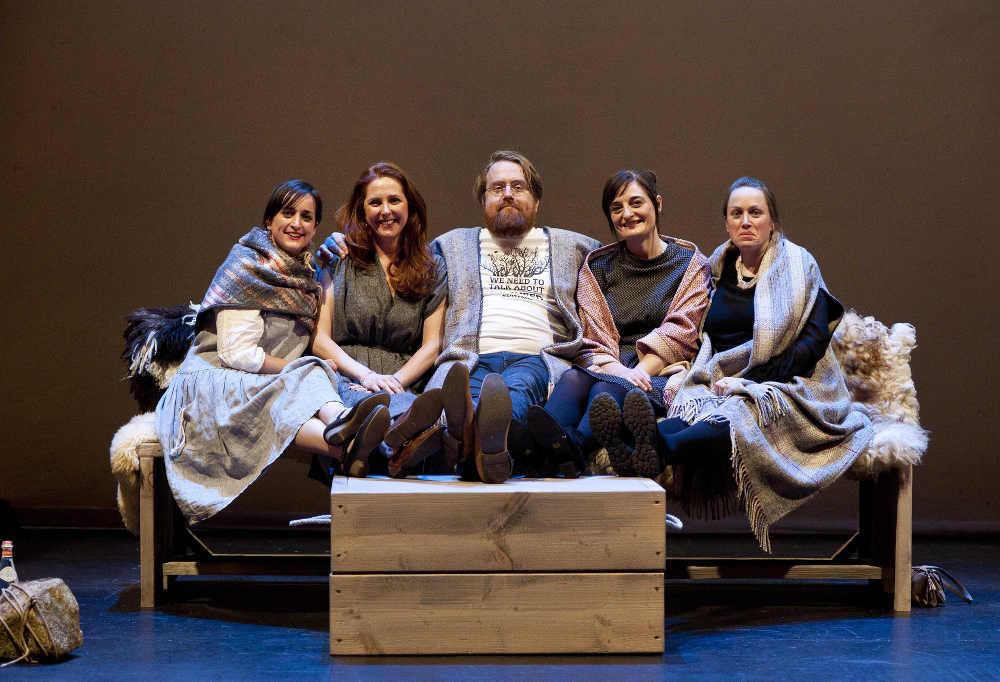
JP McMahon closed out the event with a summary of the common topics that emerged over the two days: ‘There are ten key points to take away from this year’s Food On The Edge - caring about the food we produce; sharing our culinary heritage as chefs; looking into the past to create the future; the importance of diversity and travelling to make us become true change makers; taking time for mentorship and family; accepting our failings as chefs and people; cooking as a call to act; and using food as a form of social change.’ JP also stressed the importance of increasing our production and consumption of organic food and seaweed.
Food on the Edge is a genuine attempt to do something meaningful in the world of food, to make an impact and a difference, to try to effect change and start a dialogue. The impressive event programme left attendees inspired and with plenty of food for thought. Chefs are the link between producer and end user and at Food On The Edge, this year as last, they showed what a powerful international community they can be - intelligent, articulate and genuinely concerned about the future of food. There is no doubt that Food on the Edge has resonated deeply with its participants.
Just on its second voyage, Food on the Edge challenges our perspectives on food. Is it time to rethink everything?
--
 Anne Marie Carroll is a freelance food writer and member of the Irish Food Writers’ Guild who lives in Galway with her husband and two children.
Anne Marie Carroll is a freelance food writer and member of the Irish Food Writers’ Guild who lives in Galway with her husband and two children.
With a background in design and illustration, Anne Marie made the switch to journalism with a regular food and wine column in The Galway Advertiser. Her work now mainly focuses on restaurant reviews, writing and editing recipes, the development of food photo shoots, including styling and photography. She also writes for a number of other publications and works as a consultant for small producers, food retailers and restaurants.
Anne Marie writes about all things food from the West of Ireland at her blog, Warm & Snug & Fat. You can also find her on twitter as @Biscuits4ABear
Vintage Tea Tours
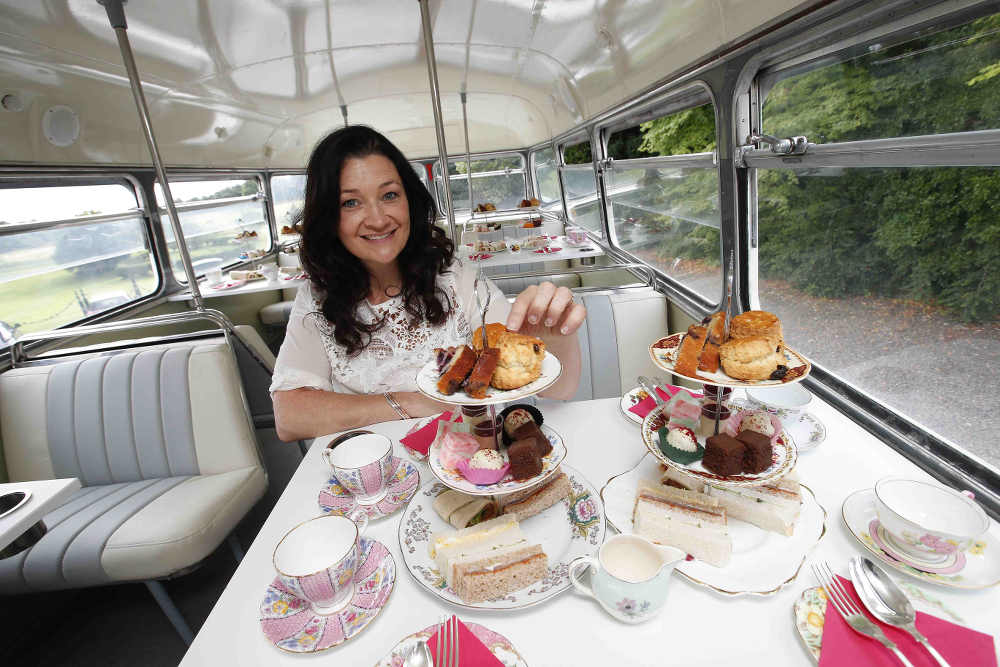

Jeanne Quigley and friends enjoy Dublin’s latest (and most unusual) Afternoon Tea experience - on a vintage tea bus called Pauline
Afternoon tea on a bus driving around the Dublin streets? And not just any bus – a genuine 1961 Routemaster, a real vintage bus named Pauline.
It sounds like a crazy idea but it totally works.
The Vintage Tea Tour is the brainchild of Karen Nixon - the bus named after her much-loved granny “whose kitchen was always full of fun, love and honesty where the problems of the day evaporated into laughter over tea and cake”, and the venture a dream come true.
Teaming up with Italian chef Donato Romano, who creates the delicious goodies, she has given Dublin city a unique and exciting new outing.
On a Sunday afternoon, we find Pauline parked in all her glory beside City Hall. She’s an eye-catching dark green and cream painted venue for our Afternoon Tea. For those of us old enough to remember Dublin buses back in the fifties and sixties with the open platform at the back, going on board is nostalgic.
While Sophia ticks our names off the list, we relive memories of running after a moving bus and hopping aboard; coming downstairs in mini-skirts desperately trying to pull them down to cover a bit more leg; knowing every bus conductor by name on the school route. Bob, the driver, has his own separate cab – no talking to the driver please.
We have booked upstairs where there are five tables for four and three for two, the two at the front with the best city views. On each table there is a tiered cake stand with some delectable-looking cakes. At each place there’s a plate of crustless – what else would you expect - sandwiches and a slice of salmon roulade.
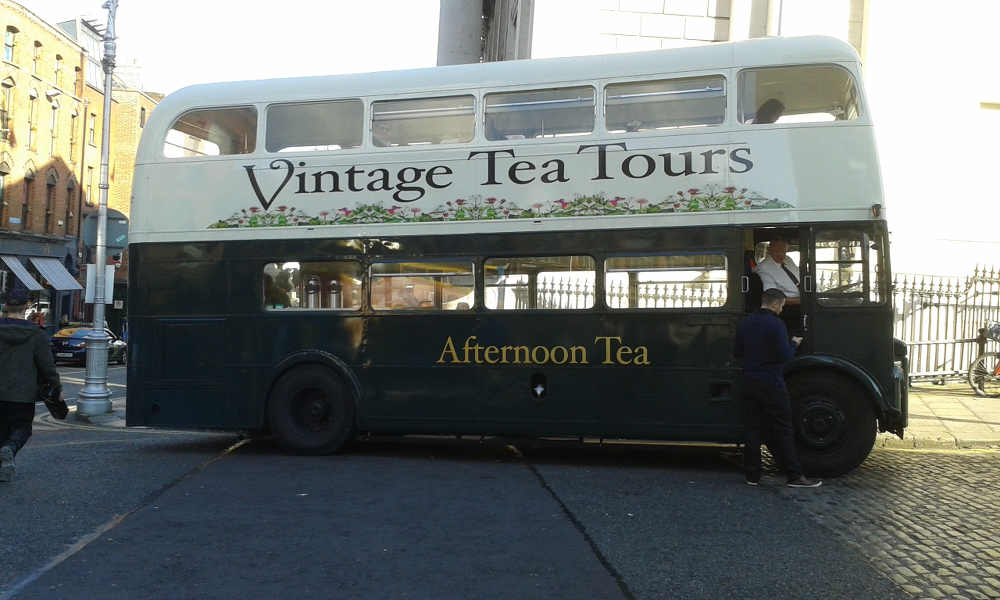
As Pauline begins her journey, we automatically put out hands to stop things moving around on the table. But there’s no need. Everything has been thought through and beneath each plate there’s a type of placemat that sticks to the table top. Jack and Sophia, our hosts for the day, bring tea and coffee in large specially-made containers. And there’s a deep hole in the table to sit this in to, avoiding any nasty spills.
At first we are so busy talking and eating, we almost forget about looking outside. We take photos of the food, ourselves, the interior of the bus. This has been given a complete facelift and is painted white, with white comfortable seats and the original windows.
But when we turn our attention to outside, it’s a beautiful sunny September afternoon and we realise that Pauline, not surprisingly, is drawing attention to herself as we drive through the city streets. Children wave and we wave back, parents smile as we sit and nibble.
And so to the food. Our sandwiches were one each of beef, egg and cream cheese. On the top section of the cake stand, there is lemon and blueberry drizzle cake. The centre plate has white chocolate velvet cake, Guinness brownie. There are fresh scones and …..but I won’t spoil the surprise.
Pauline brings us to the Phoenix Park, where we take in Aras an Uachtarain and the American Ambassador’s residence; we drive slowly through Georgian Dublin, and O’Connell Street where Jack tells us about the Rising.
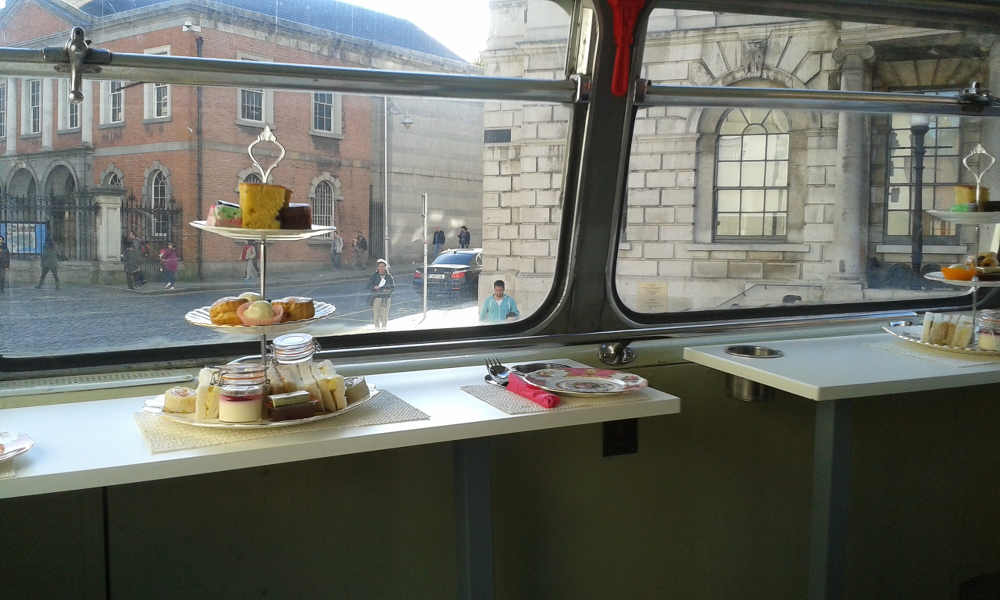
We see the tall ship, Jeanie Johnston, docked proudly at Custom House Quay. Who knew that in all the voyages the original ship made to the USA during the Famine, not one person died on this ship? A remarkable fact, just one of many told to us by Sophia.
Not for Pauline is there an automated commentary. Our hosts take turns to come upstairs to give us some of Dublin’s fascinating history. As my group comprised an English lady, an American, an Italian and two other Irish (but not from Dublin), we all learned something new. It’s a great day out, and perfect for entertaining friends and relations visiting Dublin or simply taking a wander back down memory lane.
Too soon, but with the goodies polished off - though I suspect some were taken home as there is a generous amount of food – we arrive back at City Hall. Sophia tells us that there have been many brides and grooms fresh from taking their vows in this historic Dublin building, who pose for photographs on Pauline. Without doubt, she is a bus destined for history.
VINTAGE TEA TOURS -THE LOWDOWN:
The Route: A trip through Dublin city takes in the Phoenix Park, St. Patrick’s Cathedral, Christ Church, Wood Quay, O’Connell Street, Trinity College, Georgian Dublin, St. Stephens Green and more.
Days & Times: Wednesday-Sunday, 3 tours per day at 11am, 1.15pm and 3.30pm. Pick up at City Hall on Cork Hill, Dublin 2 (arrive 15 minutes before departure time).
Tickets: €40-€50 per person (depending on seats selected); book online. Gift certificates available from €40.
---
Jeanne Quigley is a freelance food and travel writer and a member of the Irish Food Writers’ Guild.
Word from the West
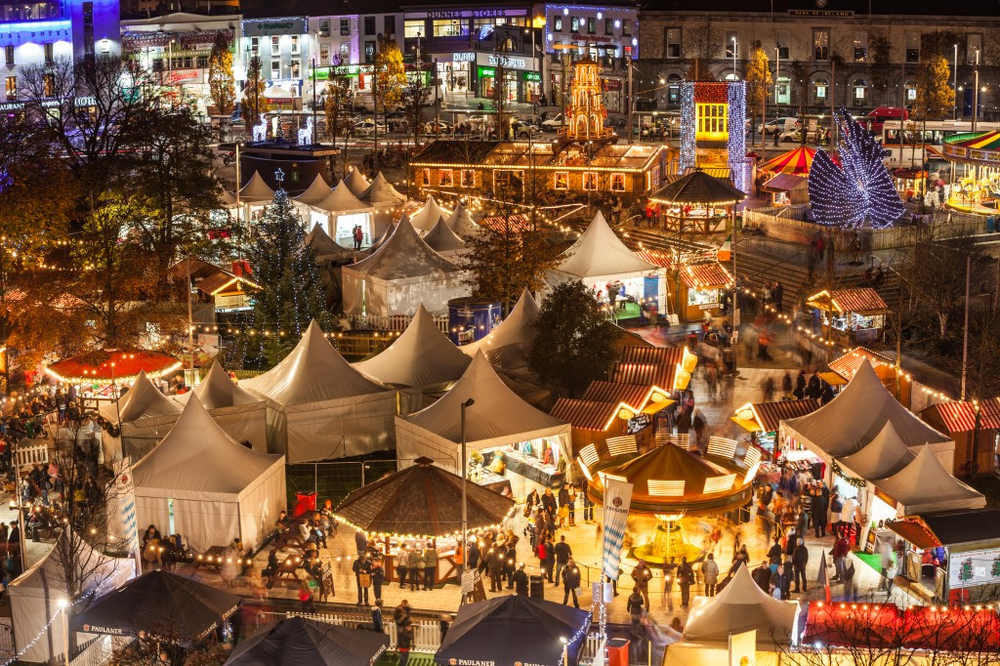
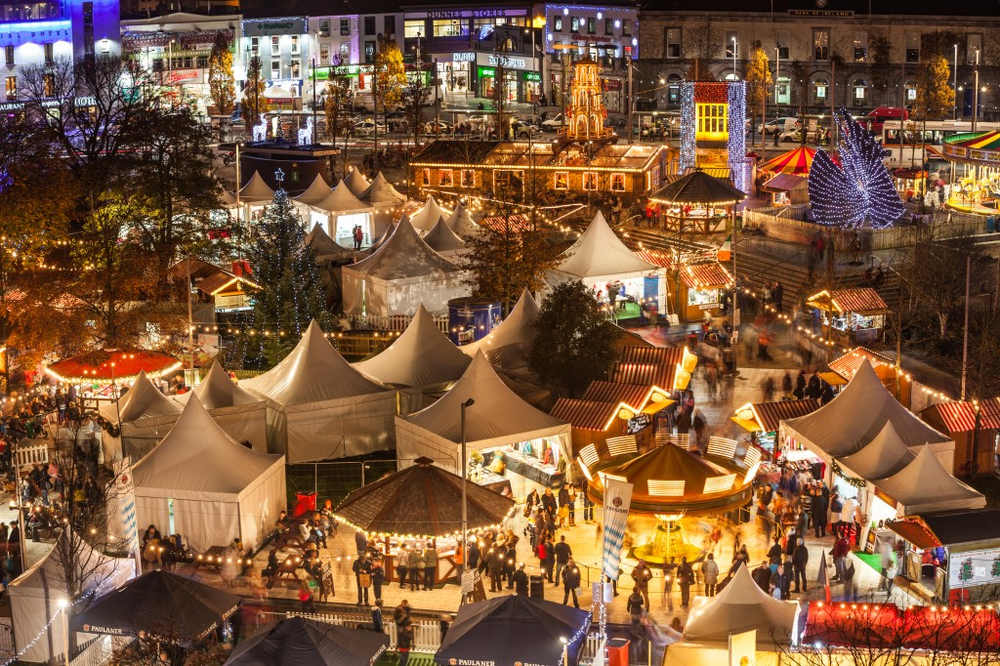
With Galway’s famous Christmas Market in full swing and casting its magic spell over the city, West of Ireland food writer Anne Marie Carroll celebrates Galway markets old and new
In America they have sugar cookies and candy canes but it's shrimp on the barbie and drinking tinnies in the sun in Australia. The French have buche de Noel while in Italy, there is panettone and the Feast of the Seven Fishes while KFC is the traditional Christmas dinner in Tokyo (Yes, really!) From our oversized turkey feast to the potato, cheese, and anchovy casserole known as Jansson's Temptation that is a traditional part of the Julbord (Christmas smorgasbord) in Sweden, it seems there are as many festive traditions related to food as there are countries in world.
Now in its seventh year, the Galway Continental Christmas Market as much a part of an authentic Galway Christmas experience as a tin of USA biscuits, a brisk dip in the sea or the giant inflatable snowman tethered jauntily outside McGaughs Garden Centre. There is no doubt that a good Christmas Market can really make the season come alive and these festive fairs can cure even the worst case of the 'bah, humbugs'. It is nearly impossible not to fall under the spell of the spiced mulled wine and good cheer. This year there are more wooden chalet style stalls than ever located on Eyre Square along with Santa's Grotto.
This year the market features amusement rides including a Big Wheel, Helter Skelter and a cheerful Carousel along with live performers, puppet shows and the popular bier keller on the plaza. Gifts and stocking fillers include hand blown glass ornaments, wooden toys and jigsaws, paper stars, jewellery and accessories, wood sculptures, ceramics, and there are all manner of seasonal indulgent treats including the ever-popular Czech chimney cakes, classic French crepes, authentic Belgian waffles, German bratwurst and gluhwein, donuts, handmade Italian chocolates, candied nuts, and Irish fudge from the Aran Islands. How very different from the markets that used to be held here before.
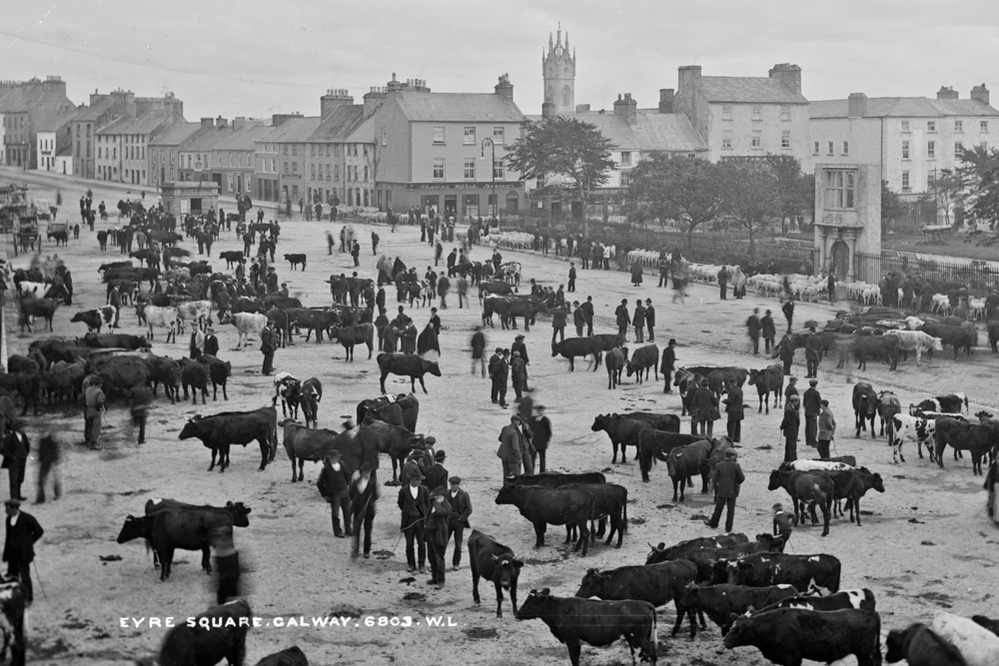
Galway has always been a market town and at the turn of the 19th century was a buzz of activity with produce of every sort openly traded on the streets. In Eyre Square, a hay, turf, fowl, pig and cattle market ran each week. Just by the Small Crane potatoes were weighed and The Spanish Arch was the historic site of the Fish Market, where a John Dory could be had for sixpence.
At Easter, during the Galway Food Festival, we see the annual revival of the Woodquay Market (pictured below), the roots of which go right back to the early 1800s when potatoes, eggs and butter were sold, together with wood and timber brought down by boats. Historically, this was a real country market with fresh and smoked fish, simple soda bread, good salty butter, double cream, marmalade, fat blue duck eggs, bacon and crumbly black pudding. Strawberries and tomatoes, cabbages and apples followed in their seasonal progression, with Irish cheeses and potatoes early and late. One could buy willow baskets too and, occasionally, scallops for thatching. It is lovely to see it revived even if it is only for one or two days a year.
The area around Mainguard Street and St. Nicholas Church especially was a hive of activity with cartloads of vegetable, eggs and butter for sale from people who had travelled in from the country. This bustling street market has been trading in Church Lane by St Nicholas' Church in the centre of the city for centuries.
The following observations of a Galway Saturday 100 years ago were made in a book entitled 'The Charm of Ireland' by Burton E Stevenson, published in 1915. “We found the streets crowded for it was Saturday and so, market day, and the country folk had gathered in from many miles around. The men were for the most part buttoned up in cutaways of stiff frieze, almost as hard and as unyielding as iron; and the women, almost without exception, wore bright red skirts, made of fuzzy homespun flannel, which they had themselves woven from wool dyed with the rich crimson of madder.
The shaggier the flannel, the more it is esteemed, and some of the skirts we saw had a nap a half inch deep. They are made very full and short, somewhat after the fashion of the Dutch, but the resemblance ends there, for most of these women were barefooted, and strode about with a disregard of cobbles and sharp paving stones which proved the toughness of their soles."
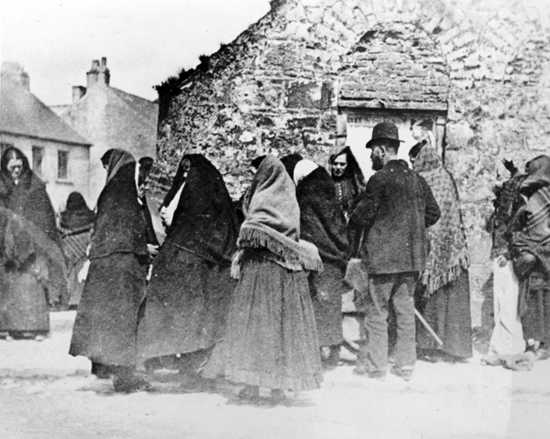
“The countrywomen ranged along the curb with great baskets in front of them containing eggs and butter and other products of the farm. How far they had walked that morning, carrying those heavy burdens, I did not like to ask, but we met one later who had eight miles to go before she would be home again. A few had carts drawn by little grey donkeys; and the old woman sitting in one of these was so typical that I wanted to get her picture.
She was sitting there watching the crowds with her elbows on her knees, and a chicken in her hands, but when she saw me unlimbering my camera, she shook her head menacingly, so I asked a quaint looking old man if I might take his picture. ‘You may and welcome’‚ he said. ‘Look at the ould saftie standin there to get his picter took’, she shouted, and she went on to say other, presumably less complimentary things in Irish."
“One row of women were offering for sale a kind of seaweed, whose Celtic name, as they pronounced it, I could not catch, but which in English they called dillisk; a red weed which they assured us they had gathered from the rocks along the beach that very morning, and which many were buying and stuffing into their mouths and chewing with great relish. It did not look especially inviting, but the women insisted, with much laughter, that we sample it and we finally did, somewhat gingerly.
The only taste I detected was that of salt water in which it had been soaked; but it is supposed to be very healthy, and to be especially efficacious in straightening out a man who has had a drop too much. No matter how tangled his legs might be, so the women assured us, a few mouthfuls of dillisk will set him right again and no man with a pocketful of dillisk was ever known to go astray or spend a night in a ditch.”

The Market still thrives around St Nicolas Church and Market Street and, as you walk between the stalls you will be arrested by the smells, tastes, sights and sounds and the lively atmosphere created by stall holders and browsers alike. These days you will be met by fresh food and flower vendors, scarf weavers and wood carvers selling their goods.
There's a great variety of food available, Madras curry, Crepes, Sushi, and mouth watering breads and bakes, to the fresh fruit and veg stalls, where the stall holders often throw in fresh herbs or extra items for good measure. There are the quality gourmet stands too, selling many different types of olives, fresh pasta, cheeses, home made relishes and sauces.
Novel gift ideas include candles of all shapes and smells, beautiful hats, handmade soap and freshly caught fairies. Beautiful Celtic and delightfully novel jewellery crafted from silver and copper is also sold, as are books, paintings and prints. It is no wonder that locals and visitors flock to the market every Saturday, rain, hail or shine.
The market is open all year round on Saturdays and The Traditional Christmas Market runs everyday 9 am to 6 pm from the 14th to the 24th of December with lots of home made Christmas foodstuffs and a lovely atmosphere with all the stalls decorated and decked with lights and candles.
While the list of things to see and do at this time of year in Galway is long, put the Christmas market right up at the top of the list. A true Galway Christmas tradition.
--
 Anne Marie Carroll is a freelance food writer and member of the Irish Food Writers’ Guild who lives in Galway with her husband and two children.
Anne Marie Carroll is a freelance food writer and member of the Irish Food Writers’ Guild who lives in Galway with her husband and two children.
With a background in design and illustration, Anne Marie made the switch to journalism with a regular food and wine column in The Galway Advertiser. Her work now mainly focuses on restaurant reviews, writing and editing recipes, the development of food photo shoots, including styling and photography. She also writes for a number of other publications and works as a consultant for small producers, food retailers and restaurants.
Anne Marie writes about all things food from the West of Ireland at her blog, Warm & Snug & Fat. You can also find her on twitter as @Biscuits4ABear
The King Sitric & La Confrerie St Etienne d'Alsace - A Celebration of Quality
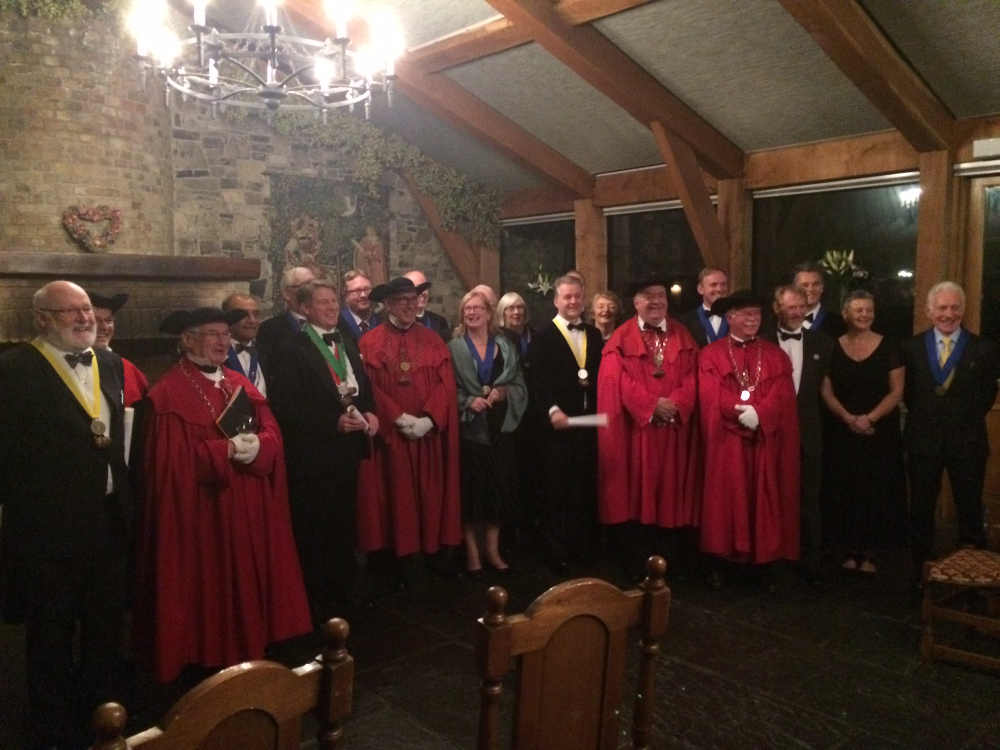
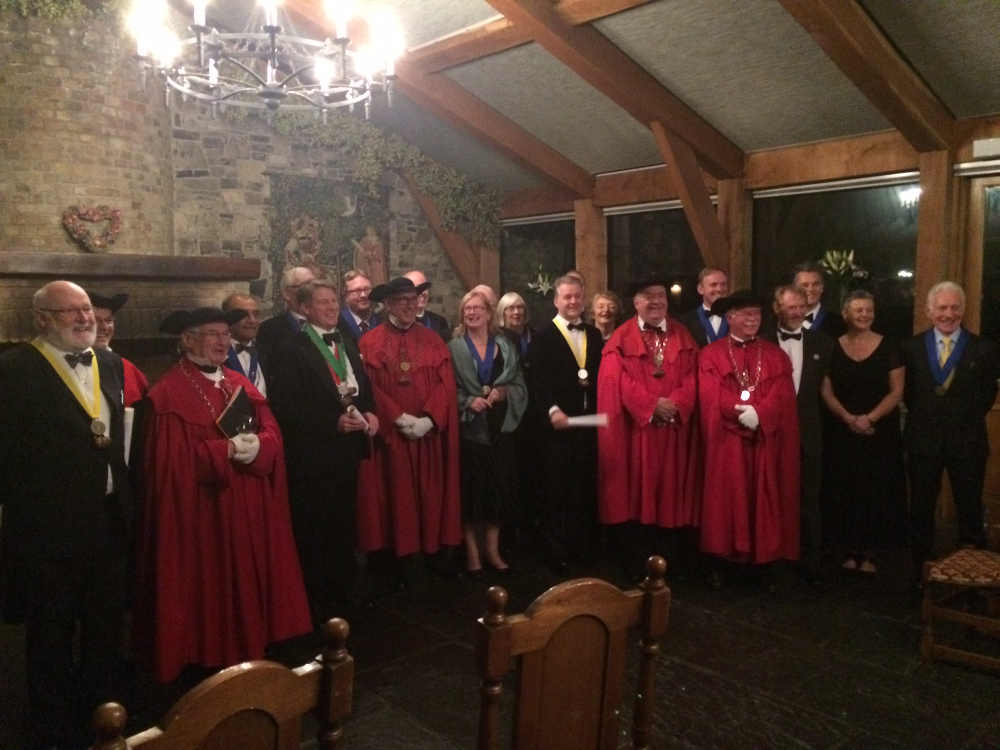
Ross Golden Bannon reflects on the significance of a very special event, when the oldest wine guild in France teamed up with the oldest seafood restaurant in Dublin - a unique celebration of quality that resulted in a convivivial evening of wonderful wine and food pairings
What is the essence of a successful restaurant? Longevity. Because people just won’t come back if you can’t deliver great food and wine. The King Sitric, Howth’s famed fish restaurant, has been serving discerning diners for some 40 years. Now that’s a successful restaurant.
Over those four decades they’ve forged a long and lasting relationship with the wine growers of Alsace. So it’s no surprise that when the guild of Alsatian wine makers (La Confrérie St Etienne d’Alsace) decided to hold their first chapter meeting outside France they chose the eponymous Dublin restaurant for their first dinner on Friday 18 November.
With typical King Sitric style two generations of the MacManus clan welcomed, cooked and chatted with a gathering of Irish food and wine writers along with some of Alsace’s finest wine producers. Joan MacManus was on front of house and it was good to see Aidan MacManus sitting in his own restaurant as his son Declan did the cheffing. Declan’s fiancée, Susan McKiernan, served the sparkling Meyer-Fonné Brut Extra Cremant d’Alsace. Champagne certainly does not have all the best bubbles, as this drop proves. Lip-smackingly dry and an elegant match for cloud-like prawns caught mere metres away in Balscadden Bay.
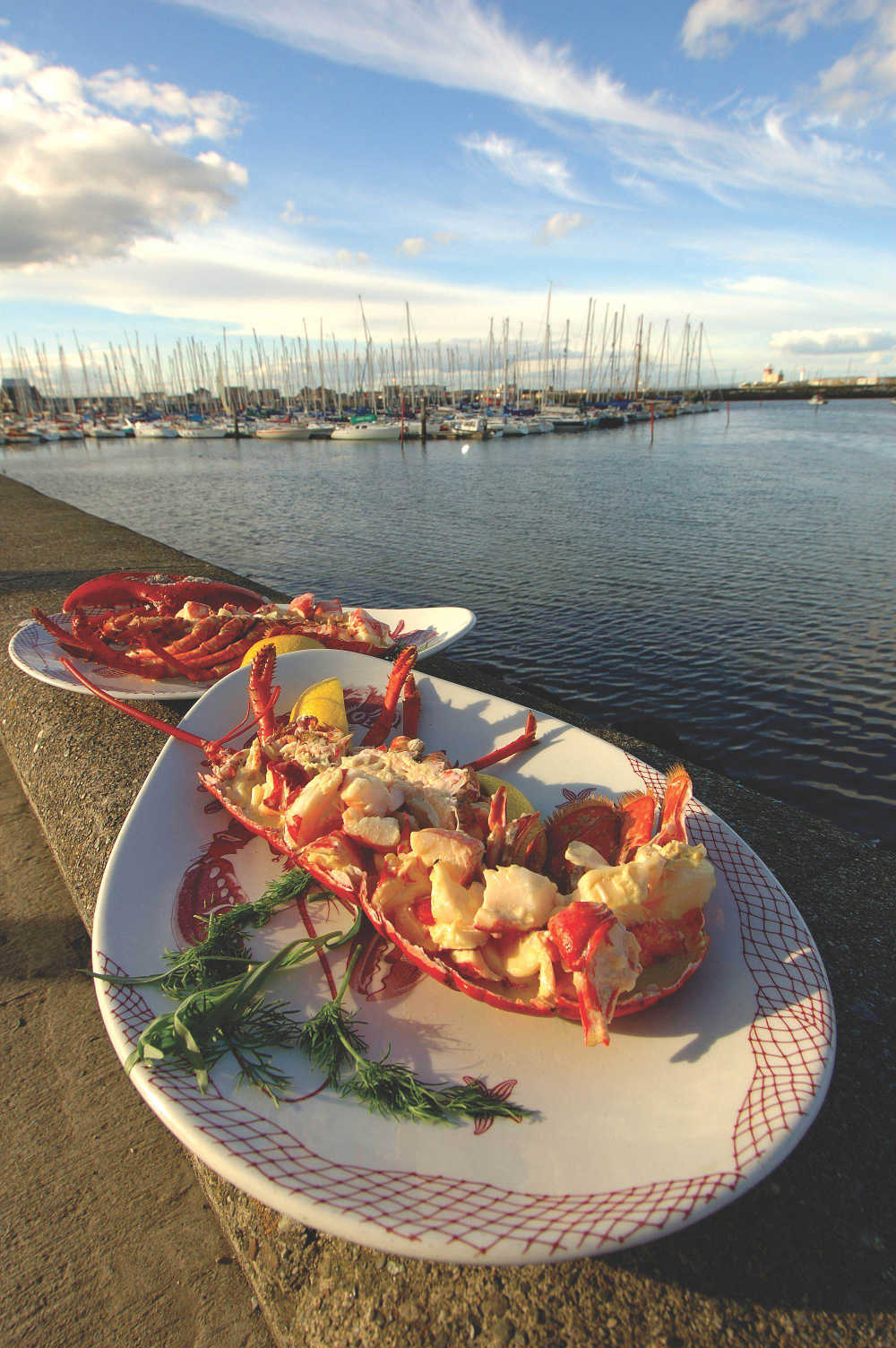 La Confrérie St Etienne d’Alsace dates back a little further than two generations, indeed they were founded in 1561 and are the oldest guild in France. Even at that, they were rather late getting themselves organised as the first vineyards were planted in Alsace by the Romans in the third century AD.
La Confrérie St Etienne d’Alsace dates back a little further than two generations, indeed they were founded in 1561 and are the oldest guild in France. Even at that, they were rather late getting themselves organised as the first vineyards were planted in Alsace by the Romans in the third century AD.
The guild is based in the Chateau de Klentzheim and their cellars are filled with over 60,000 bottles of wine dating back to 1834. Their role is to oversee the quality of Alsatian wines through blind tasting, and it is only after they pass this quality test that selected wines are awarded the right to bear the stamp ‘sigille’ on their bottles.
The present Grand Master of the Confrérie is an old friend of Ireland, David Ling, who is married to Alsace native, Marie-Leonce Freudenreich, known as Mimi, whose passion for the beautiful region knows no bounds. So they are well matched. David introduced the wines, with great aplomb, in the face of the usual Irish high-volume conviviality. He explained that The King Sitric has its own world records and is the world's largest single restaurant customer of Hugel’s Pinot Blanc.
A highlight of the dinner was the main course of fillet of wild turbot with celeriac, Howth apple foam and kale pommes purée with its echoes of ancient Irish Halloween traditions. This was matched with three great Alsatian wines: Riesling Josmeyer 1976; Clos St-Theobald Grand Cru 1996; and Riesling Frederick Emile from Trimbach 2008.
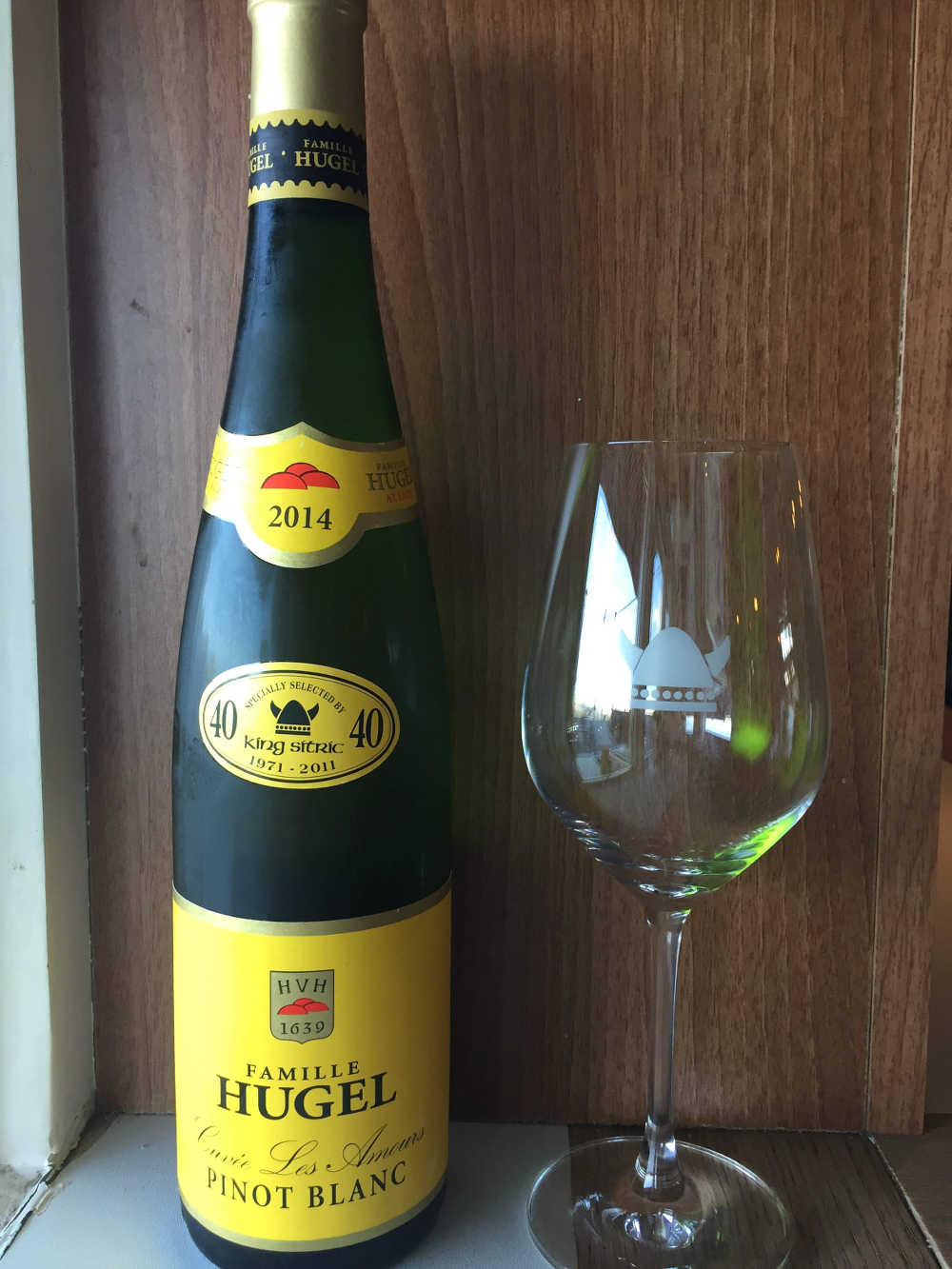 This extraordinary collection of wines was proof positive of the staying power of fine white wines, a phenomena which is often ignored in favour of the aging power of red wines. This clever pairing of wines from over 40 years was not just a respectful salute to the age of the King Sitric but the quintessence of the culinary arts, as the flavours of the dish sang counterpoint and harmony to decades of fine wine maturation.
This extraordinary collection of wines was proof positive of the staying power of fine white wines, a phenomena which is often ignored in favour of the aging power of red wines. This clever pairing of wines from over 40 years was not just a respectful salute to the age of the King Sitric but the quintessence of the culinary arts, as the flavours of the dish sang counterpoint and harmony to decades of fine wine maturation.
If the job of the Confrérie was to remind people of the versatility and quality of the wines of Alsace, they delivered that in spades - and did so again at a more formal ceremonial event held at Barberstown Castle a couple of days later.
If the job of the King Sitric was to remind people that we have a gem of a seafood restaurant in Howth, they delivered on that too. However, restaurateurs and wine makers can never be sure, until the final taste of an agreed menu with the wine, if they’ve achieved that gastronomic miracle of food and wine becoming greater together than apart. The marriage of the King Sitric with the Confrérie St Etienne d’Alsace did just that, reminding me why I fell in love with gastronomy in the first place.
---

Ross Golden-Bannon is a member of the Irish Food Writers’ Guild. Follow him on Twitter at @goldenshots
Word from the West
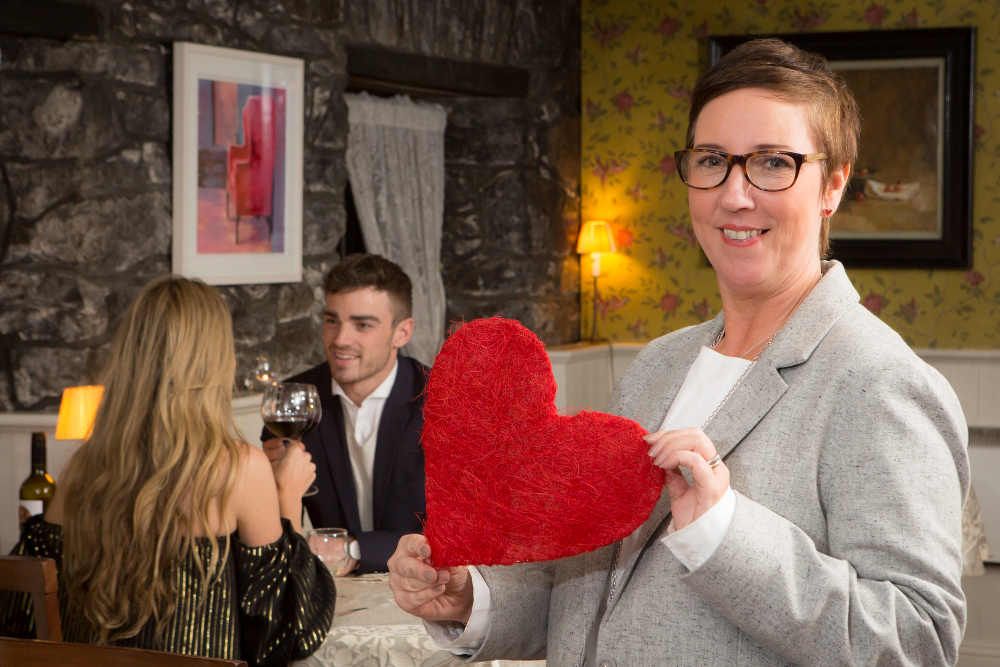

In a light hearted mood this month, West of Ireland food writer Anne Marie Carroll introduces a unique Galway food tour that celebrates singletons on Valentine’s Day
Valentine's Day may be the day of romance and passion, but that doesn't mean that you can't make the day memorable if you are not in a couple. Single guys listen to friends complain about having to buy gifts for their girlfriends on Valentine's Day, while wishing they had someone to buy for themselves. Boyfriend bonfires and copious ice-cream consumption are the yearly Valentine's Day prescriptions for single ladies. It might just be a silly holiday created by greeting card companies, but that doesn’t dull the sting of Valentine’s Day for the newly, or perpetually, single.
The good news is that this year, in Galway at least, being single is actually a blessing in disguise. Rather than being tied down for the night, you’re free to do whatever you like. If you are looking for a reason to get out of the house and have a great evening this Valentine’s weekend, we have the answer.
White Gables in Moycullen are hoping to bring the fun and romance of the popular TV show 'First Dates' to their restaurant this February. Is there anything like watching people find love to warm the cockles of your heart? Well this is what happens on the First Dates show on our TV screens both here in Ireland and in the UK.
The reality show watching single strangers meet has taken the nation by storm. White Gables have decided it’s time for some romance and love, what better way to do that than with good food and the possibility of a new relationship. First Dates at White Gables will be all about bring strangers together for a first date.
Throughout the course of the weekend, Friday 10th to Sunday 12th of February, vetted couples will be brought together at the restaurant to see if they are a fit. Prospective dates will be asked to fill out a questionnaire so in house match maker Sandra Heaney can hopefully find the perfect match. Each couple will be booked into the restaurant over the weekend for their blind date.
Owner of the White Gables, Anne Dunne will act as maitre d’ and Sandra Heaney will be there all weekend to do the post date interviews and hopefully see how many new couples are a match.
“We all love the show, so we wanted to see if we could help bring people together this year. White Gables is a place that is synonymous with first dates in Galway, but we wanted to bring an element of fun and romance with the blind dating. I am really looking forward to matching people together and seeing if they are a fit in reality. We are hoping people take a chance and go for it on this - really there is nothing to lose,” explained Sandra.
Dinner is €30pp; all candidates can apply though White Gables on Facebook, on the website www.whitegables.com or by phoning 091-555744.
It’a a safe bet that large numbers of V-Day resisters are banding together to create an alternative way to celebrate or collectively reject this artificial holiday that really only benefits Argos jewellery and whoever makes those little candy hearts. If you feel more comfortable in a crowd, Galway’s Westend 'Singles Only' food tour is the Valentines evening for you.
.jpg)
Galway Food Tours, the culinary walking tour of Galway, run by Sheena Dignam, is hoping to bring some flirting and seduction to the streets of Galway this February with a very special Valentines inspired food tour.
Join the tour on Sunday 12th February for a fun time in Galway’s westend. "We will introduce our own take on Valentine's night for the foot loose and single people of the town, who love to eat, drink and mingle. You never know what could happen as we stroll around the streets," said cupid wannabe, Sheena.
The tour takes place in Galway’s westend including Kai, Dela, Rouge, Pearla Na Mara, The Universal, Deli La Tosca, Blue Note and Mitzi's Mezze. At each stop, the food tour is treated to a flavour of just what each place offers as well as a little tipple.
Each location has a story to tell and this is the beauty of the tour, you get to experience the inside track on all these brilliant food and drinks haunts in Galway’s westend. “There are always a few stories that will ensure people will leave smiling”, says Sheena.
The tour runs from 6pm to 8.30pm and is priced at €55, places are limited so booking is essential. Call Sheena on 086- 7332885 or check out www.galwayfoodtours.com.
--
 Anne Marie Carroll is a freelance food writer and member of the Irish Food Writers’ Guild who lives in Galway with her husband and two children.
Anne Marie Carroll is a freelance food writer and member of the Irish Food Writers’ Guild who lives in Galway with her husband and two children.
With a background in design and illustration, Anne Marie made the switch to journalism with a regular food and wine column in The Galway Advertiser. Her work now mainly focuses on restaurant reviews, writing and editing recipes, the development of food photo shoots, including styling and photography. She also writes for a number of other publications and works as a consultant for small producers, food retailers and restaurants.
Anne Marie writes about all things food from the West of Ireland at her blog, Warm & Snug & Fat. You can also find her on twitter as @Biscuits4ABear
It all began with the crane
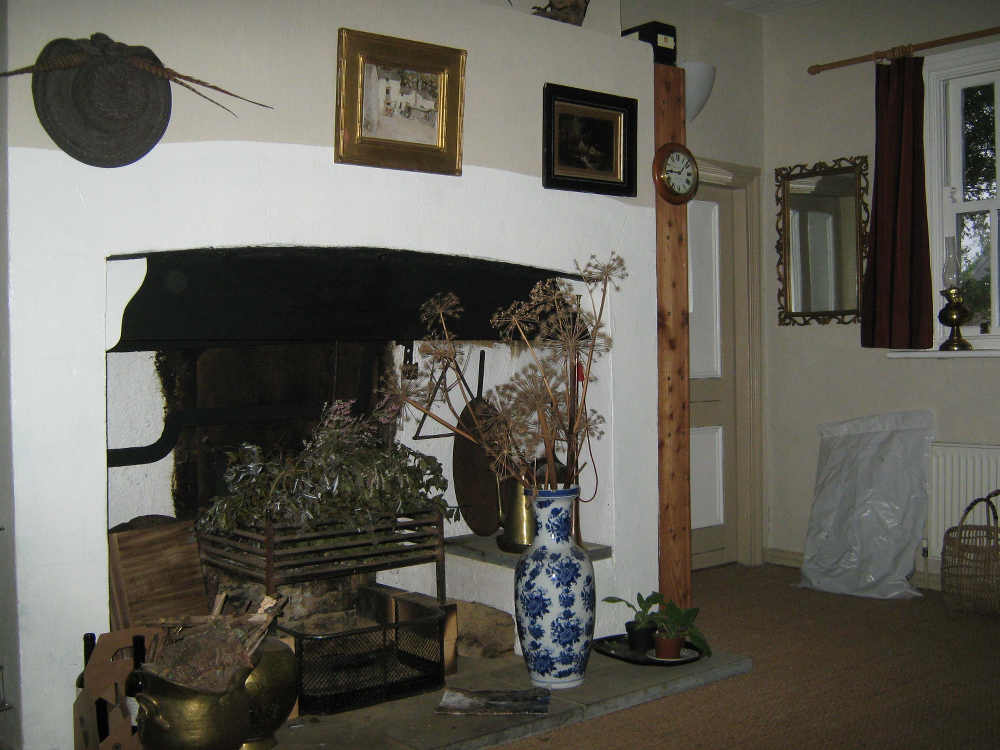

Food writer Margaret Hickey sees the history of Ireland differently - and it’s all through the prism of food and drink
It all began with the crane. In 1999, I resigned from Country Living magazine, where I'd been deputy editor with responsibility for food and drink, and moved to a house with no running water and no electricity. But it did have an enormous fireplace, complete with a crane that hinged out over the hearth. I acquired a chain, hooks, a bastable, kettle, griddle and a frying pan that weighed a ton, and I learned to cook using ancient practices.
Unsurprisingly, I'd experienced a massive culture shock, moving from central London to a very rural part of east Galway. In those days an avocado was never seen in my local town. Indeed, the humble leek went unrecognised by many. However, at my local greengrocer's the variety of potato was discussed by staff and customers alike, and while butchers were a disappearing breed in England, here I was spoilt for choice and the beef was a revelation.
I began to ask myself questions. Why were there no savoury pies in the Irish tradition? (Aside from the little-known Dingle pies.) Why was food preserved by salting, not pickling? What had poor people eaten before the potato came along? The more I pondered, the more fascinated I became and before I knew it, I was pitching an idea to a London publisher.
I proposed to write the history of Ireland from as far back as I could go right up until the present day, all seen through the prism of food and drink. She liked it and I rushed away to write. Around the country I buzzed, from west Cork to Antrim, interviewing food producers, poring over folklore archives, inspecting a fulacht fiadh (ancient cooking pit) at Craggaunowen in Co Clare, visiting the Ceide Fields, the site of the oldest field system in the world (a thousand years older than the pyramids) and much more. I read extensively. And then the wheels came off the cart. A series of misfortunes, unrelated to me, saw the book unadopted and I put it in a drawer and moped. For years.
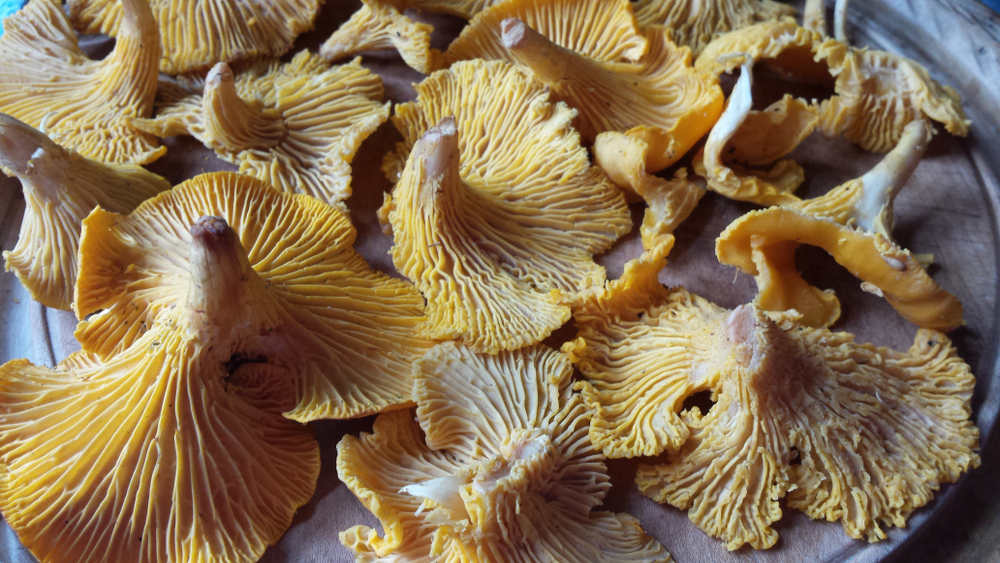
Cut to a few months ago, when I heard about Unbound, the London publishers. I submitted my synopsis and a sample chapter, and in jig time they came back to me. They not only liked it, they thought it was – ahem! – wonderful. Unbound operates in a way that seems new. Before production begins, the writer needs to reach a financial target by urging people to select one of a range of pledges. While this notion of crowdfunding is part of today’s zeitgeist, a similar method was employed by Charles Dickens, whose crowdfunding was known as subscription.
In my (typical) case, a short video was made and put up on the Unbound website. In it I talk about Ireland’s Green Larder – a history, not a cookbook, although recipes are dotted here and there. It has been written for the general public and I've laced it with accounts of miracles, poems, extracts from diaries, letters and much more.
With St Patrick's Day in mind, I'd like to offer you this little snippet from my researches. Early in the twelfth century, a monk called Jocelin, in his account of the life of St Patrick, tells us how the saint, during his religious training, was tempted to eat meat and hid some pieces of pork to eat on the sly. But then he repented. 'St Patrick, rising from the earth, utterly renounced the eating of flesh-meat and humbly besought the Lord that he would manifest his Pardon. Then an Angel bade Patrick to bring forth the hidden meats and put them into Water. And the flesh-meat immediately became Fishes.'
Many people chose to interpret this miracle in a way that suited them well during the penitential period of Lent. They would plunge meat into water on the saint's feast day, and when it was taken out it was cooked and eaten under the name of the Fishes of Saint Patrick!
Details of the ultra-strict diet of the Culdee monastic communities contrast strikingly with an account of the lavish dinner given by a Mrs Delany in the 18th century, the first course alone consisting of a large joint of beef “tremblante”, garnished with small patés, two soups, pigeon pie, stuffed veal with parsley and cream, and casserole with vin de Bourgogne. (She wished to pique her guests’ appetite before the following two courses were brought on.)
That foray into the dealings of the Big House is a rarity in the book, though. My overriding concern was to examine the food that poor people produced, caught and ate. I spent happy hours suspending pots from that crane of mine, and poking around in the ashes of my turf fire.
Taking the precaution of piercing its shell, I buried an egg and raked it out after half an hour, to find the white had solidified but the yolk remained creamy, with a subtle, smoky taste. My kind farming neighbour Tommy gave me a carton of beestings to cook with, (scones rise like magic!) and I learned the economy of simple ingredients and minimal tools. All my researches strengthened my admiration for the fortitude, ingenuity and generosity of generations of Irish people who made do with little or less.
The Ireland I studied most closely was rural, but I also look at how the urban poor kept body and soul together, telling how Dean Swift roared at the duplicity of fishwives shouting Salmon! Alive and lepping! and how Brendan Behan, as a young lad, cooked a pig’s head for the granny and what happened next...
If you want to know more, it would do you no harm to watch my video and then swoop to the side of the page and pledge. Pledgers get access to the writer via regular “Shed” musings, plus the glow of knowing they’ve helped turn a dream into a reality. On the joyous day when the special edition of Ireland’s Green Larder is delivered, you’ll rip open the package and find your name printed at the back of the book you helped create. It’ll feel good.
https://unbound.com/books/irelands-green-larder
---
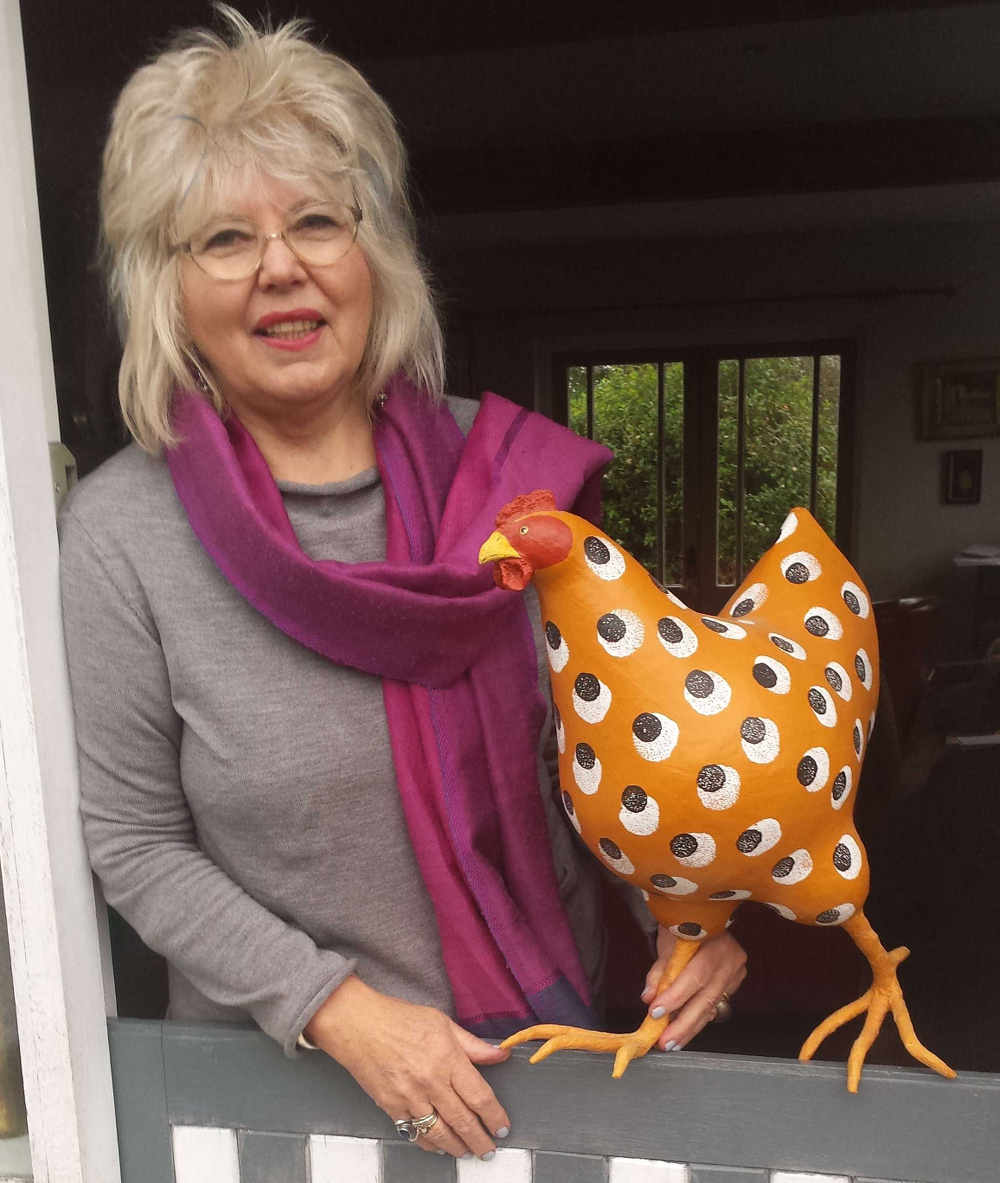
As deputy editor and food and drink editor at Country Living magazine, Margaret Hickey commissioned a range of food writers and chefs, including Richard Corrigan, Nigel Slater, Rick Stein and Darina Allen. In her freelance writing career she wrote on food, drink and travel for most of the national British press, including The Financial Times, The Guardian and The Times.
In 1999 she moved to Ireland to complete a book commissioned by UK publisher Kyle Cathie. Irish Days, a collection of oral histories, received coverage in both Ireland and the UK and she was interviewed about it on the Pat Kenny Show, plus the TV3 morning show. The paperback version came out in 2003.
She has lectured at University College, London and University College, Limerick on the subject of oral history and had a weekly food and cookery slot on Premier Radio in London during the 1990s.
She is currently Vice Chairperson of Portumna Arts Group, which runs Shorelines, an annual arts festival, and for many years she has been a judge at the Strokestown International Poetry Festival.
Word from the West
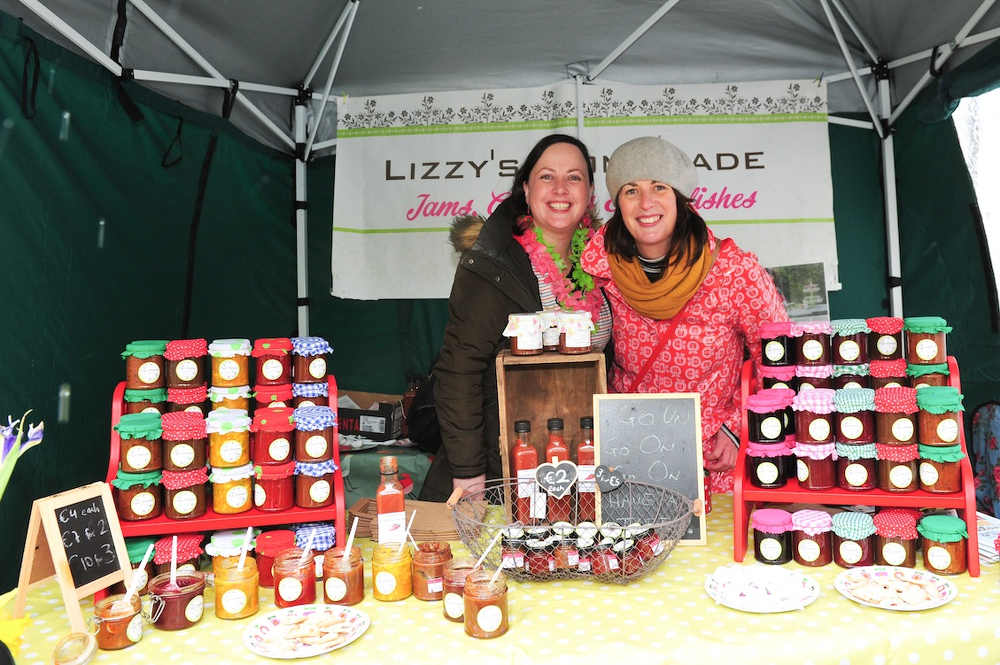
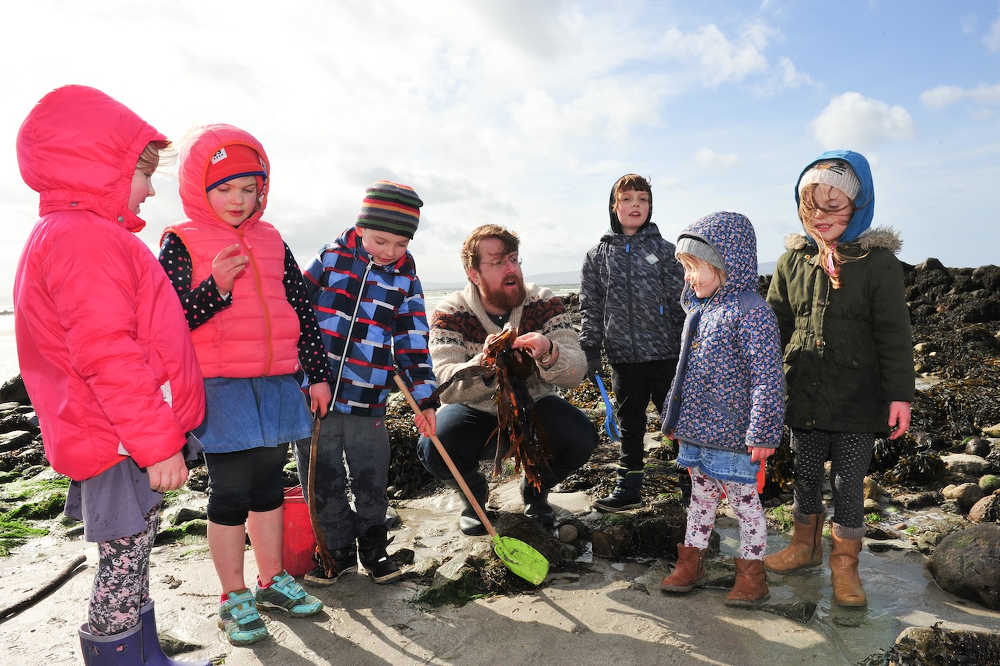
West of Ireland food writer Anne Marie Carroll introduces the 2017 Galway Food Festival, a celebration of ‘Community and Food’ to be held over the Easter Bank Holiday Weekend
If you’re looking for inspiration this Easter weekend, then Galway - and the 6th annual Galway Food Festival - is the place to be. Celebrating the relationship between ‘Food and Community’, this year’s theme focuses on Galway’s 21st century cultural identity through food and - through the involvement of food producers, suppliers and outlets located along the western seaboard, and in the festival’s markets and events programme - the festival aims to build on Galway’s growing reputation as the Food Capital of the Wild Atlantic Way.
And, with Galway having the honour of being selected as the European Region of Gastronomy in 2018, the Festival will build on Galway’s food story and the important role that food tourism will play throughout the entire West coast.
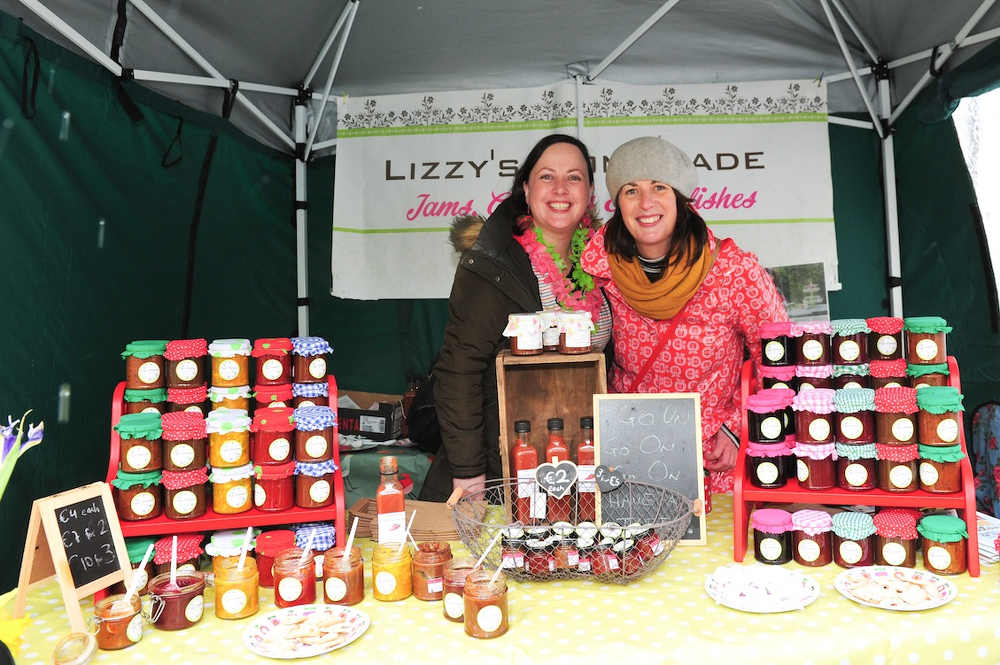
Exploring the theme of ‘Community and Food’, a stimulating programme of over 100 food-based events will celebrate the importance of sharing food together to promote a healthy community that starts in the home.
Through an extensive programme of talks, workshops, tours and in-house events, the festival will encourage people to reconnect with where their food comes from, tapping back into our knowledge of what nature can provide for us.
Aiming to unite the diverse communities and groups that exist within Galway City and County, the festival will explore their relationship with food and their cultures of sharing food together. Communities will include new immigrants, sports, schools and youth groups, also the restaurant and food community. It aims to highlight the strength among the Galway food community and the contribution to Galway food.
Festival events will include the pairing of diverse community groups with leading chefs, working together in creating a healthier and happier life through good food. Sports teams will visit community gardens to learn about healthy eating; immigrant communities living in Galway will come together to share their food culture; different sectors within the food industry will be challenged to work together; and there will be a massive ‘Community pot luck’ - a tradition where families or guests bring a cultural dish from their particular country of origin and it is shared among the community.
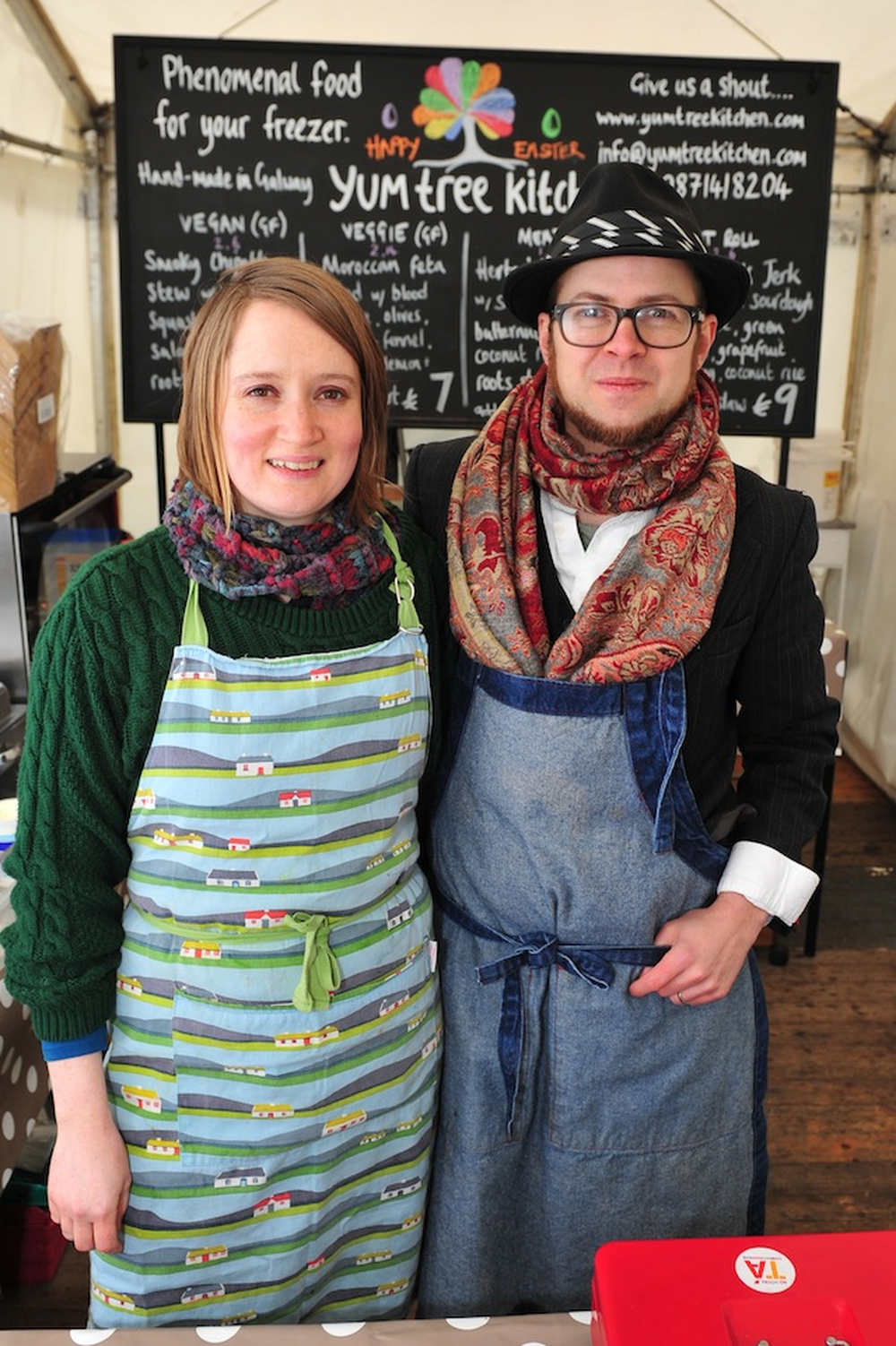
Galway Food Festival and Slow Food Galway will collaborate on My Grannie’s Recipes, inviting the public to explore food with your Grandmother (or Grandfather, Aunt, Uncle or Parent). Young people are encouraged talk to their grandparents or other family members about food, and ask them questions about what they liked to eat when they were young, what historical family food stories they may have, and traditional recipes that have been passed down through generations.
The 10 best entries will be invited to showcase their recipes and a dish at The Kitchen Restaurant in Galway City Museum on Good Friday. The winner and runner-up will win a cookery demo with one of Galway’s top chefs for themselves and their class.
Breaking Bread, a community driven event, will bring together various cultural, religious, sporting and special interest groups to share food, stories and ideas. The event will be hosted by Galway Food Festival in conjunction with Galway 2020 European Capital of Culture; it hopes to create a legacy of community inclusion and collaboration, and will include a charity food drive.
The Festival will also initiate The 5-Day Week Challenge, a campaign challenging families to share five meals together each week, in partnership with ALIVE charity, promoting positive mental health and wellbeing.
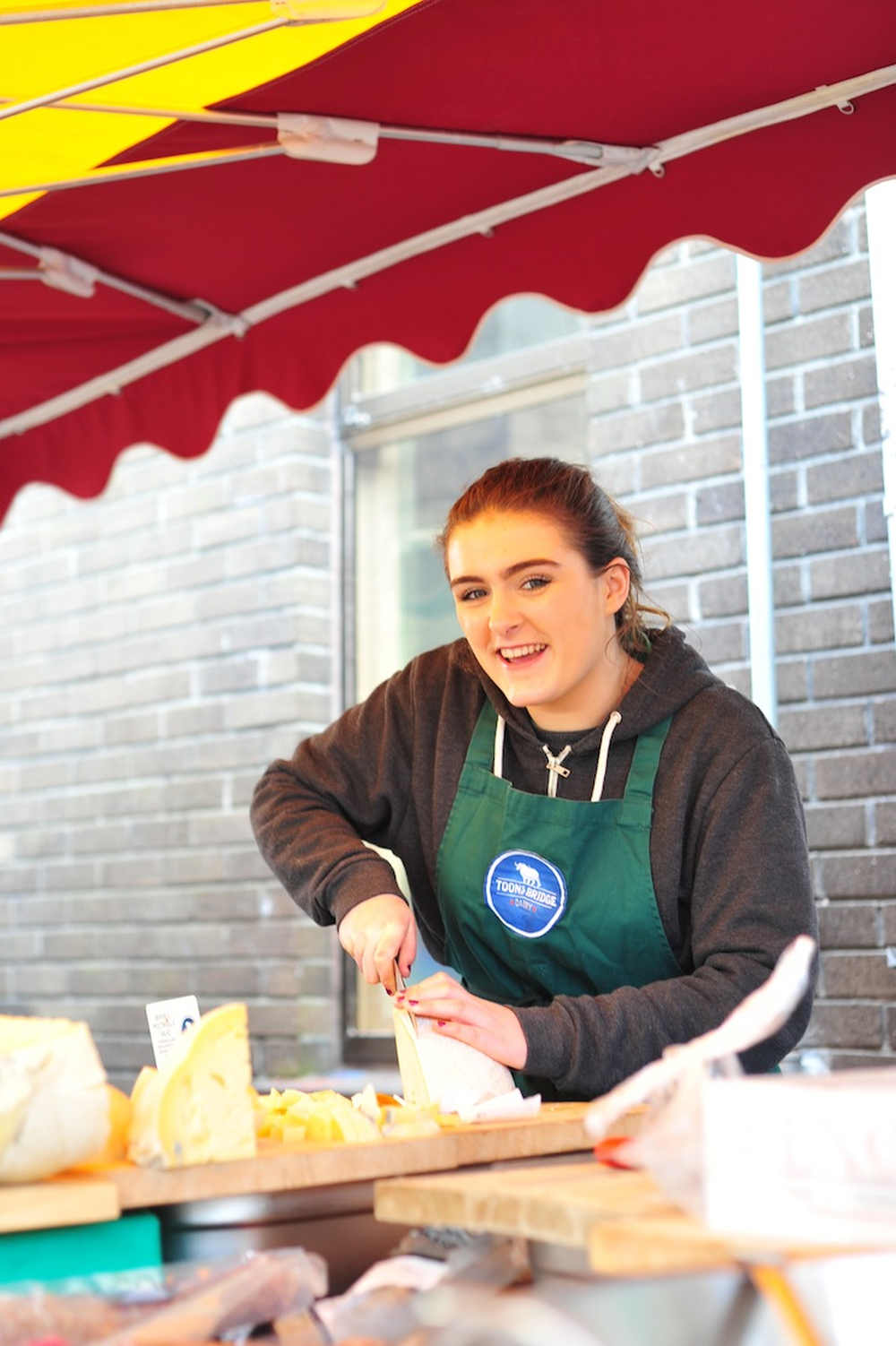
The challenge will highlight the numerous benefits of sharing food in terms of food education, life skills, an enjoyable way of communicating and sharing stories with family at the table while discussing the issues of the day that might be present.
Visitors can once again savour the many foods available at the open air markets and Festival Village at Fish Market Square, Spanish Arch. Additional events will include an extended food trail, the ever popular talks at Druid’s Mick Lally Theatre, the ‘Made in Galway’ demo tent and an expansion of the eclectic programme of Food Tours.
There will be lots of in-house events that will include exciting pop ups, cocktail classes, wine and whiskey tastings and a comprehensive schedule of talks on a range of topical issues within the food and drinks industry.
Over 70,000 people attended events at last year’s festival, which drew huge interest among the national and local media and a resulted in a marked increase in the number of domestic and international visitors who travelled to Galway specifically for the festival. Festival applications are open until Friday, 24 February.
Markets interested in participating can email markets@galwayfoodfestival.com Festival participants (restaurants, bars, cafes and food retailers) can contact participants@galwayfoodfestival.com
6th annual Galway Food Festival, Easter Weekend, 13th -17th April 2017 For further information contact info@galwayfoodfestival.com or view Festival 2016 video footage, photographs and regular Festival 2017 updates at www.galwayfoodfestival.com
--
 Anne Marie Carroll is a freelance food writer and member of the Irish Food Writers’ Guild who lives in Galway with her husband and two children.
Anne Marie Carroll is a freelance food writer and member of the Irish Food Writers’ Guild who lives in Galway with her husband and two children.
With a background in design and illustration, Anne Marie made the switch to journalism with a regular food and wine column in The Galway Advertiser. Her work now mainly focuses on restaurant reviews, writing and editing recipes, the development of food photo shoots, including styling and photography. She also writes for a number of other publications and works as a consultant for small producers, food retailers and restaurants.
Anne Marie writes about all things food from the West of Ireland at her blog, Warm & Snug & Fat. You can also find her on twitter as @Biscuits4ABear
Word from the West
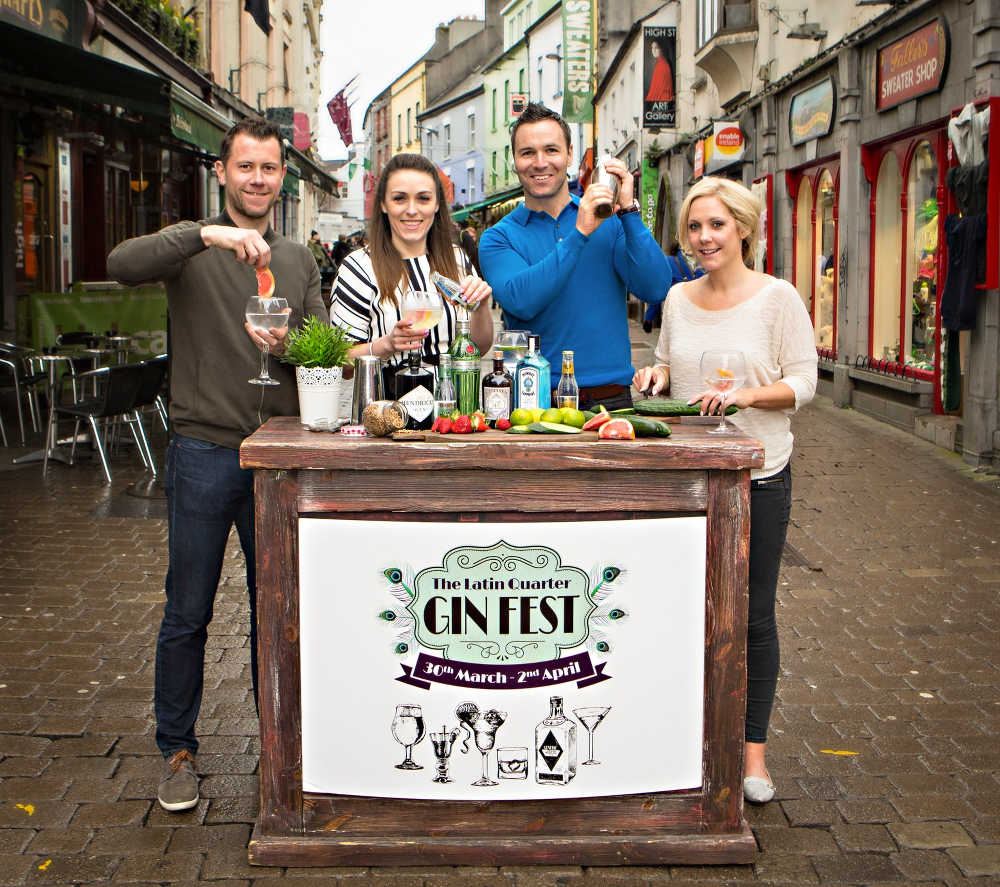
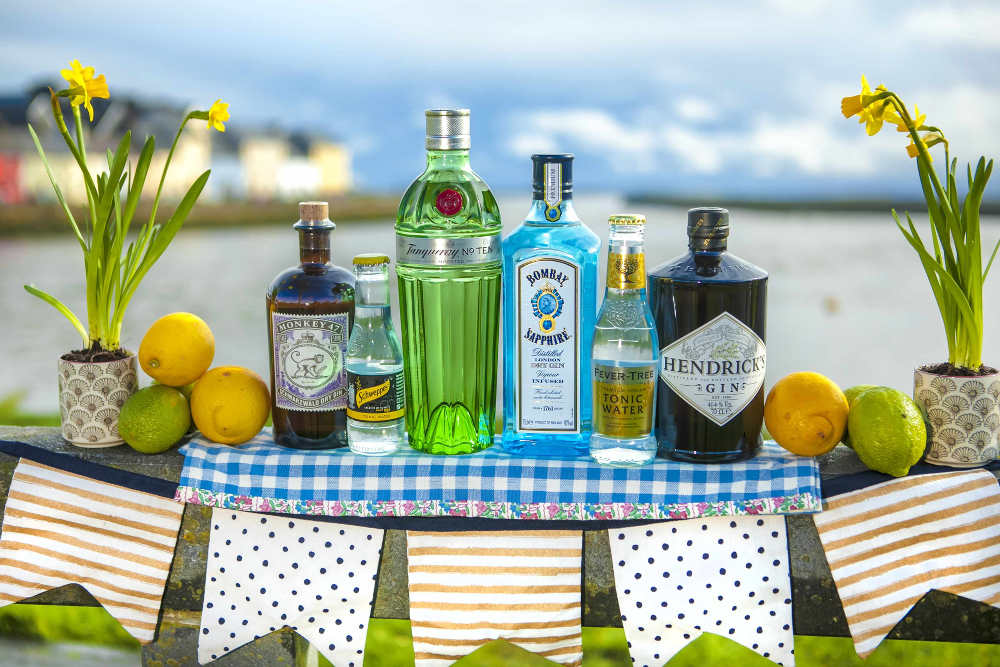
West of Ireland food writer Anne Marie Carroll introduces Galway’s first Gin Festival and related treats.
The craft beer revolution is in full swing and has well and truly whet the consumer’s appetite for higher quality beverages. The new thirst for premium alcoholic products has set the stage for the micro-distillers to start a revolution of their very own.
Whiskey distilleries have begun to pop up across the country over the last few years. Since whiskey is required to be in a cask for three years to earn the Irish stamp of approval, many operators struggle to survive long enough to break even. Gin, however does not suffer from the same limitations. The process of making gin is quicker than whiskey, no long-ageing in barrels or intricate blending of different casks is required.
Once the preserve of the older G&T brigade, the recent surge of interest in cocktails has seen gin become one of the most fashionable spirits of them all. Bombay Sapphire and Hendrick’s started the trend over a decade ago, but since then a host of new craft gin producers has sprung up in the US, Britain and beyond.
Meanwhile, a new generation of craft producers in small distilleries around the country are redefining Irish gin. As a nation we always had a flair for whiskey, now we are starting to get to grips with white spirits.
An excellent single-estate organic apple-based gin and one distilled from cows’ whey are among the very few made with a spirit base produced in Ireland, however there are many distilleries dedicated to creating bespoke, artisan gins flavoured with the very best botanicals. Gin must contain juniper but after that it is up to the master blender to come up with the blend of herbs, spices or fruits to put create their own unique spirit.
As craft gin production has taken off here in the past two years, the variety of Irish gins available increases. Wild clover, elderberries and elderflowers give some gins an aromatic hint of meadows. Some are based on wild flowers and herbs foraged locally, some experiment with seaweed flavours gin, some go foraging in the countryside for herbs and roots to flavour their gin while others use spices imported from across the world. You can even make your own ‘bathtub’ gin simply by soaking juniper berries and whatever botanicals you favour in a neutral spirit like vodka, though the new gin drinker is much more discerning.
Most gin is consumed in cocktails, where the combination of botanicals can really add complexity to the mix. Classic cocktails, such as negroni, martini or simply the gin and tonic are in fashion, but there are plenty of innovative options on cocktail menus as well. Fever Tree is the preferred tonic water, although each gin tends to go very nicely with the market leader, Schweppes. Whatever way you drink them, the new gins offer a range of fascinating flavours.
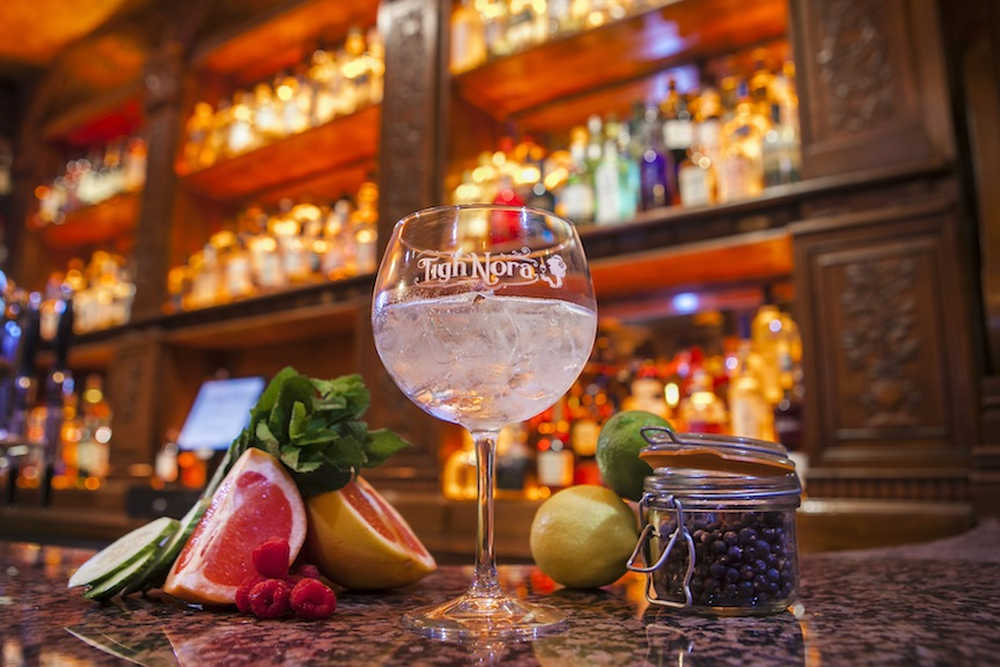
With the gin craze sweeping the nation, it’s no surprise that a gin bar has just opened its doors in Galway city. With over 100 different types of gin, Tigh Nora is Galway’s first Gin bar, a haven for gin drinkers. Tigh Nora is situated next to The Front Door Pub on Cross Street and offers a bespoke range of Irish and international gin brands, perfectly complemented with a range of premium tonics, served with a variety of fresh garnishes.
Tigh Nora is named after Nora Barnacle, the wife and inspiration of James Joyce, who is arguably Ireland's most influential and celebrated writer. Nora was a Galway girl and grew up just around the corner, passing by this bar every day on her way to school and to visit her family. In her late teens Nora moved to Dublin where she met James Joyce and he instantly fell madly in love with her. The day they met, Thursday 16th June 1908, is famously depicted in James Joyce’s novel Ulysses and now celebrated annually as ‘Bloomsday’.
Nora Barnacle’s fondness for gin is the reason that Tigh Nora is predominantly a gin bar today. But, while gin is certainly the speciality at Tigh Nora, it also serves a full bar menu including draft beer and a variety of whiskeys and spirits, along with a wine and cocktail selection. There is also a lunch and evening food menu with a selection of tapas, light bites, salads and sandwiches, sharing boards and daily specials - perfect to enjoy with a drink of your choice. Inside Tigh Nora you will find an intimate bar with soft lighting, comfy seating, an open fire and shelves laden with books, making it the perfect spot to enjoy a G&T. The staff are always happy to make a recommendation from their gin selection.
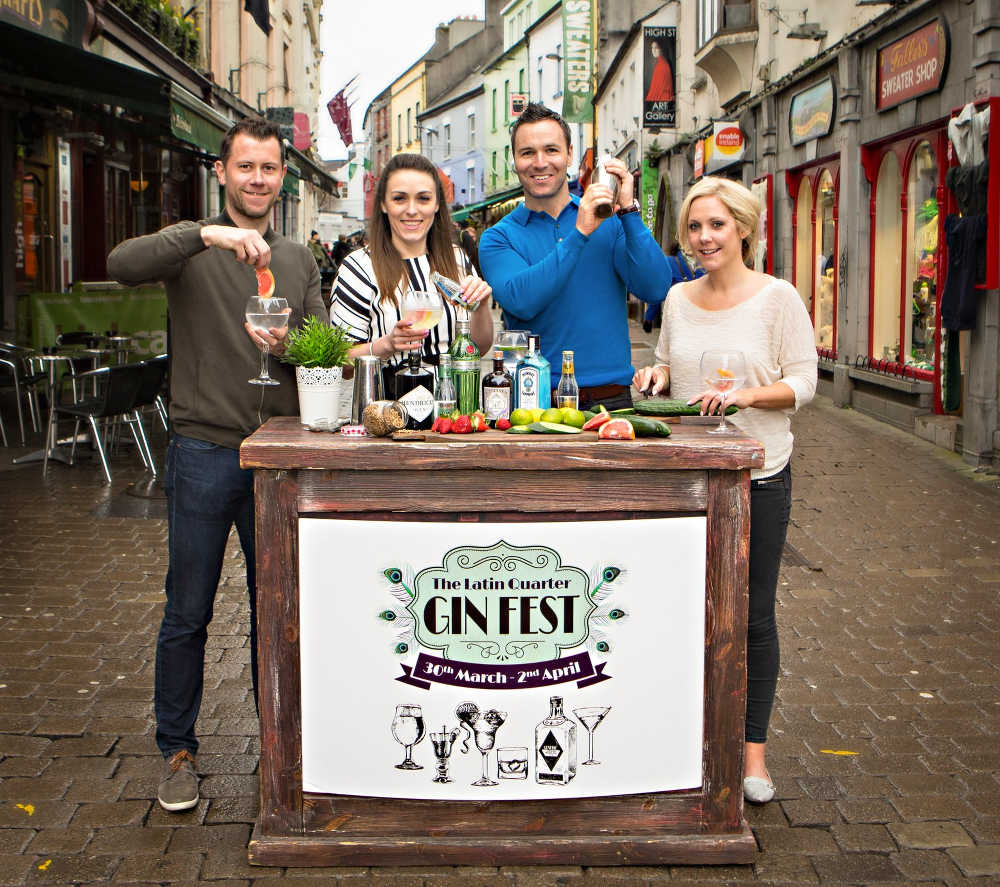
In Galway in particular, gin has been embraced as the most popular drink of 2017. On Thursday 30th March - Sunday 2nd April 2017 the West of Ireland’s first Gin Festival was held, with a four day fun-filled celebration of all things related to gin in the bars of The Latin Quarter.
It was a weekend of complete gin-joyment where a range of events took place, from master classes, gin afternoon teas, cocktails competitions and new gin brand launches to name a few. The focus of the festival was to encourage people to try the variety of gin and tonic brands now available on the market, both Irish and international brands. There was also a focus on the education side of how gin is produced, learning about the perfect serve when choosing garnishes and how tonics enhance the flavour of the drink.
Located in the heart of the city, The Latin Quarter is often referred to as the cultural hub of Galway and is home to many of the city’s quirkiest and best-known pubs, restaurants, shops and hotels. The area also boasts pedestrianised cobblestone streets that offer a unique festive-like atmosphere and provides the heartbeat to the City of the Tribes.
From gins 'n reels session at Tig Choili, blind tasting in The Dail Bar, Bombay Gin masterclass at The Kings Head, gin and food pairing in The House Hotel, to serving a selection of gin and tonics in Taffes, Tigh Neachtain, Busker Brownes, Murphys, Dew Drop Inn Freeneys and more, all of Galway’s best loved watering holes were involved.
The Latin Quarter committee commented, “Galway is renowned as the city of festivals, so adding Gin Fest to the programme of events is another fantastic celebration for locals and visitors to the city to savour. In the past year, bars across the country have seen a surge in the popularity and demand for gin, so we want to create a festival that brings people together from the master distillers to those who enjoy drinking it".
It was the inaugural year of the festival, made possible with the support of sponsors and the commitment of the bars in The Latin Quarter, all working together to create another fine addition to Galway, the city of festivals. Here’s hoping it will become an annual event.
--
 Anne Marie Carroll is a freelance food writer and member of the Irish Food Writers’ Guild who lives in Galway with her husband and two children.
Anne Marie Carroll is a freelance food writer and member of the Irish Food Writers’ Guild who lives in Galway with her husband and two children.
With a background in design and illustration, Anne Marie made the switch to journalism with a regular food and wine column in The Galway Advertiser. Her work now mainly focuses on restaurant reviews, writing and editing recipes, the development of food photo shoots, including styling and photography. She also writes for a number of other publications and works as a consultant for small producers, food retailers and restaurants.
Anne Marie writes about all things food from the West of Ireland at her blog, Warm & Snug & Fat. You can also find her on twitter as @Biscuits4ABear
A Taste of Costa Rica
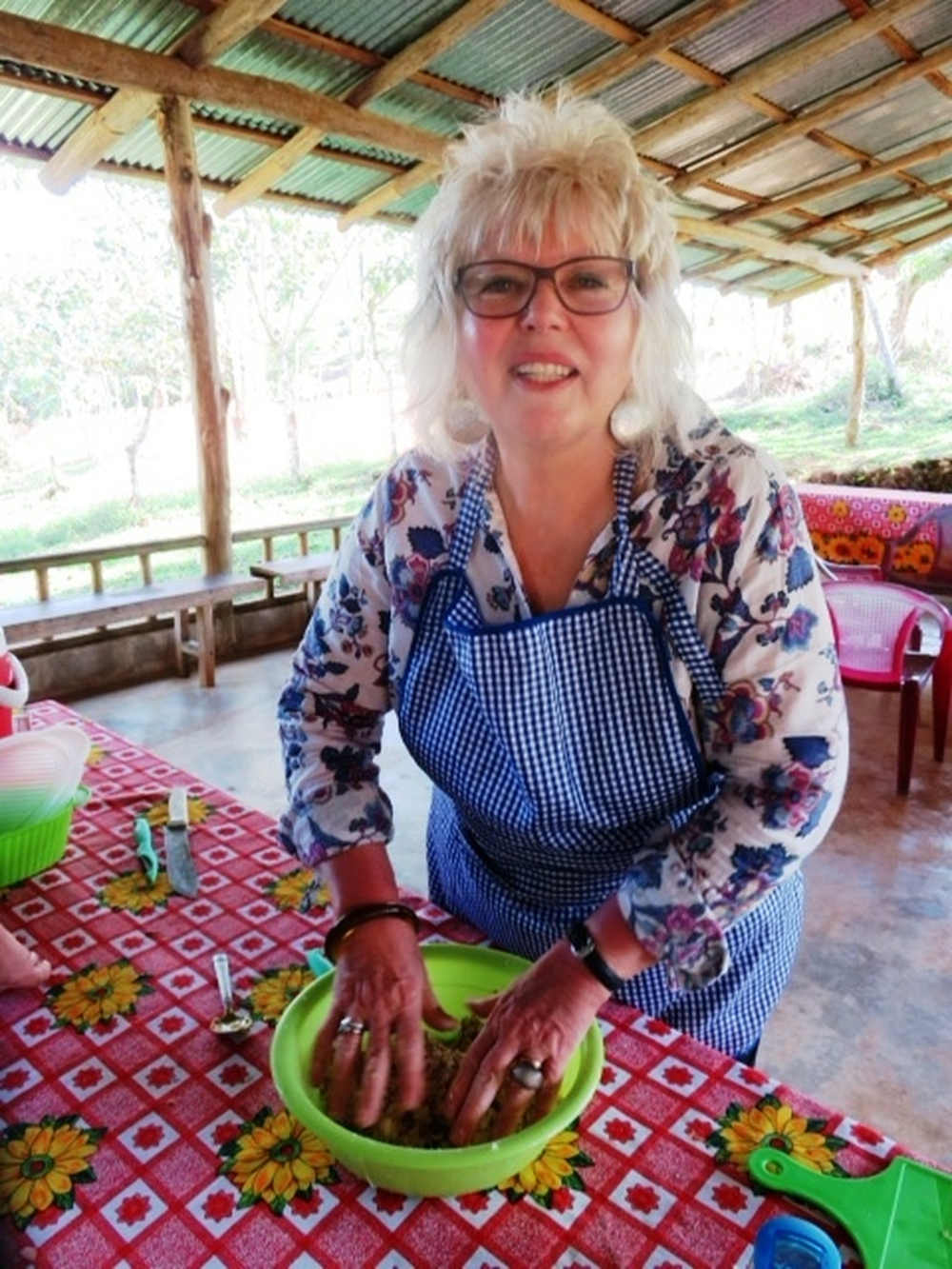
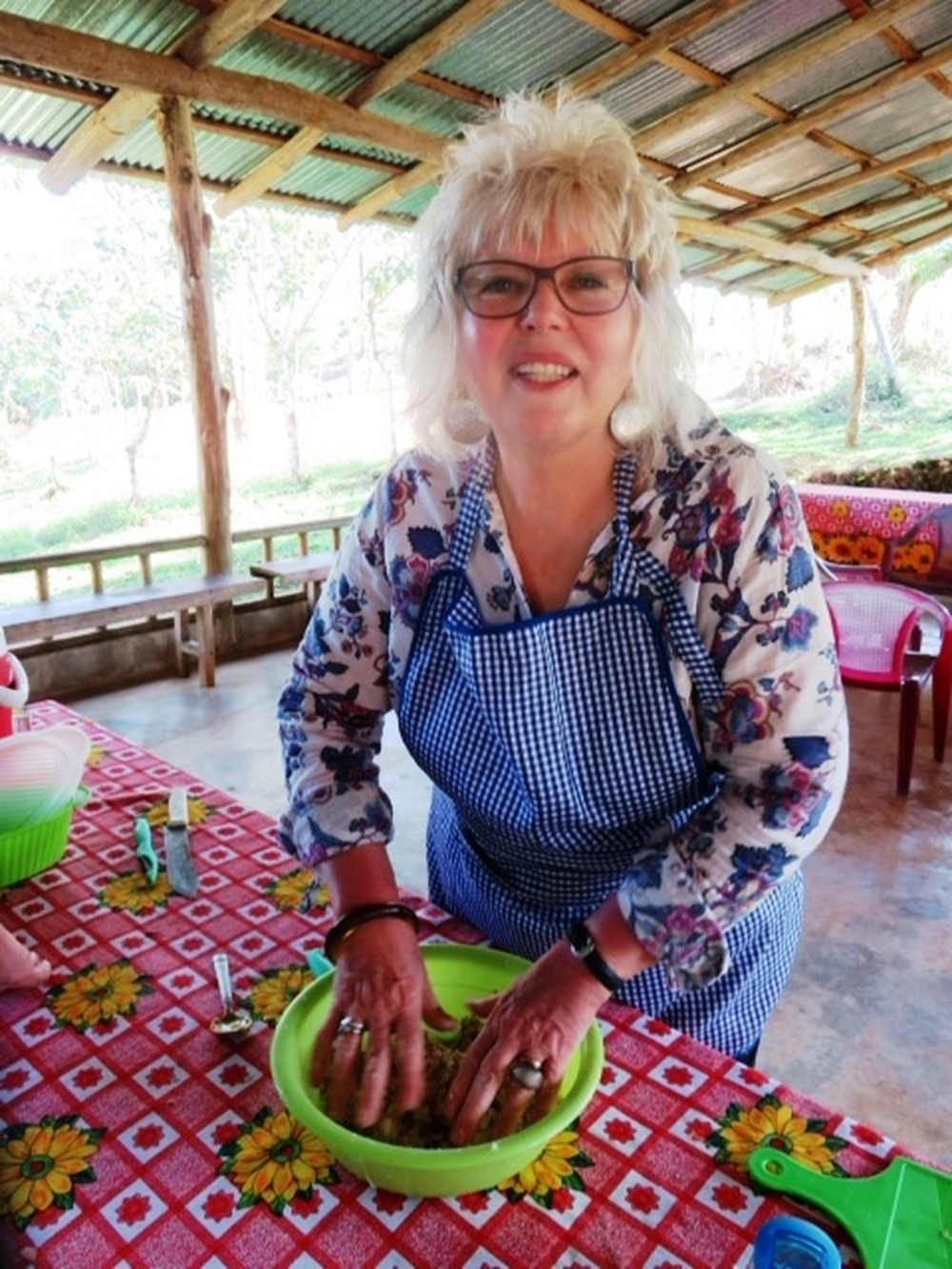
Margaret Hickey
Having written Ireland's Green Larder, a history of the food and drink of Ireland, concentrating on the food of the rural poor in particular, I was particularly interested in the food of a country I've just visited - Costa Rica.
Think coffee, think avocados the size of melons, think stupendous chocolate and think fresh, fresh fish and shellfish. But also think poverty. The people are well nourished, but not well off, so the staple diet for many is still gallo pinto - rice and black beans.
The translation is speckled chicken, and it's the two mixed together that gives that dappled look. (No chicken is involved!) This basic is often supplemented with meat or prawns, and yellow slices of fried plantain are often served as a vegetable accompaniment.
Gallo pinto is often served for breakfast, while at lunchtime you might typically order a casado, where, interestingly, the rice and beans are served side by side, accompanied by meat or fish and a salad, perhaps with the fried plantain (patacones) again.
It's very curious, this business of sometimes mixing them, sometimes serving the rice and black beans separately. But, as with the potato in Ireland, if you eat enough you'll get sufficient nutrients to live on. These days, of course, the diet is more varied than it once was.
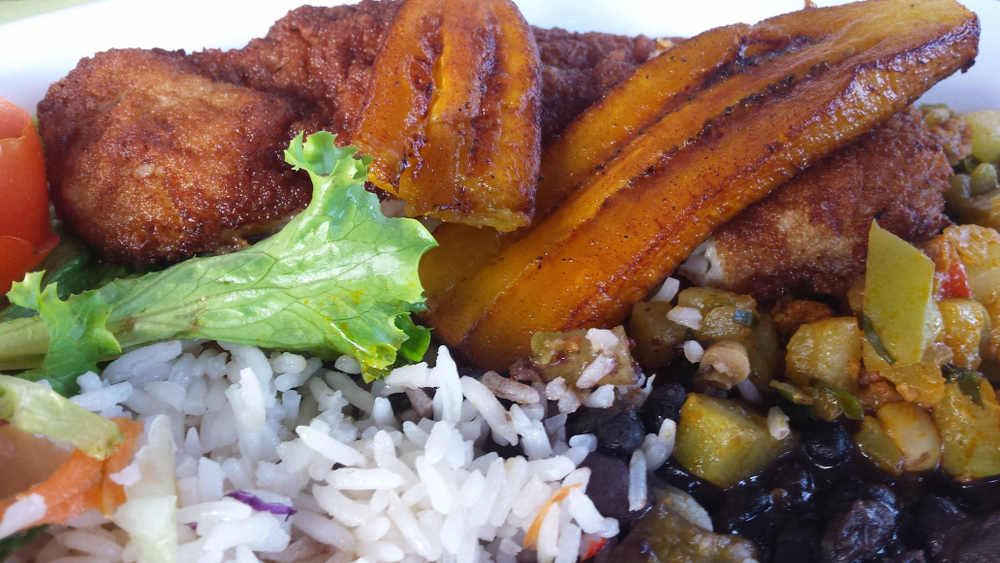
Those of us in Europe who buy pineapples can never hope to experience their true sweetness, as the fruit for export is picked before it is fully ripe. In the home of bananas, pineapple and mangos, you are offered an enticing choice of blended drinks, so if you're not drinking beer out of the neck of a bottle of the local brand, Imperial, you will very likely be sipping a fresco or batido (similar to a smoothie) through a straw.
The number one feature of my visit was the homestay night. We arrived at the small agricultural commune of Juanilama, Santa Rosa de Pocosol, where some 60 families have moved from the capital San Jose to start a new life as organic farmers.
After a tour of the farm, we were offered a brilliant lunch in the communal hall. A tangy, chilli-spiced broth was accompanied by tortillas made from maize flour and water that morning. As soon as that was devoured with grunts of appreciation, we loaded our plates with tiny chicken dumplings, an intricate salad of organic vegetables, toasted cheese that resembled haloumi, plus a seemingly unending supply of fried chicken thighs. Like the Irish, the Costa Ricans are generous and hospitable, sharing what they have.
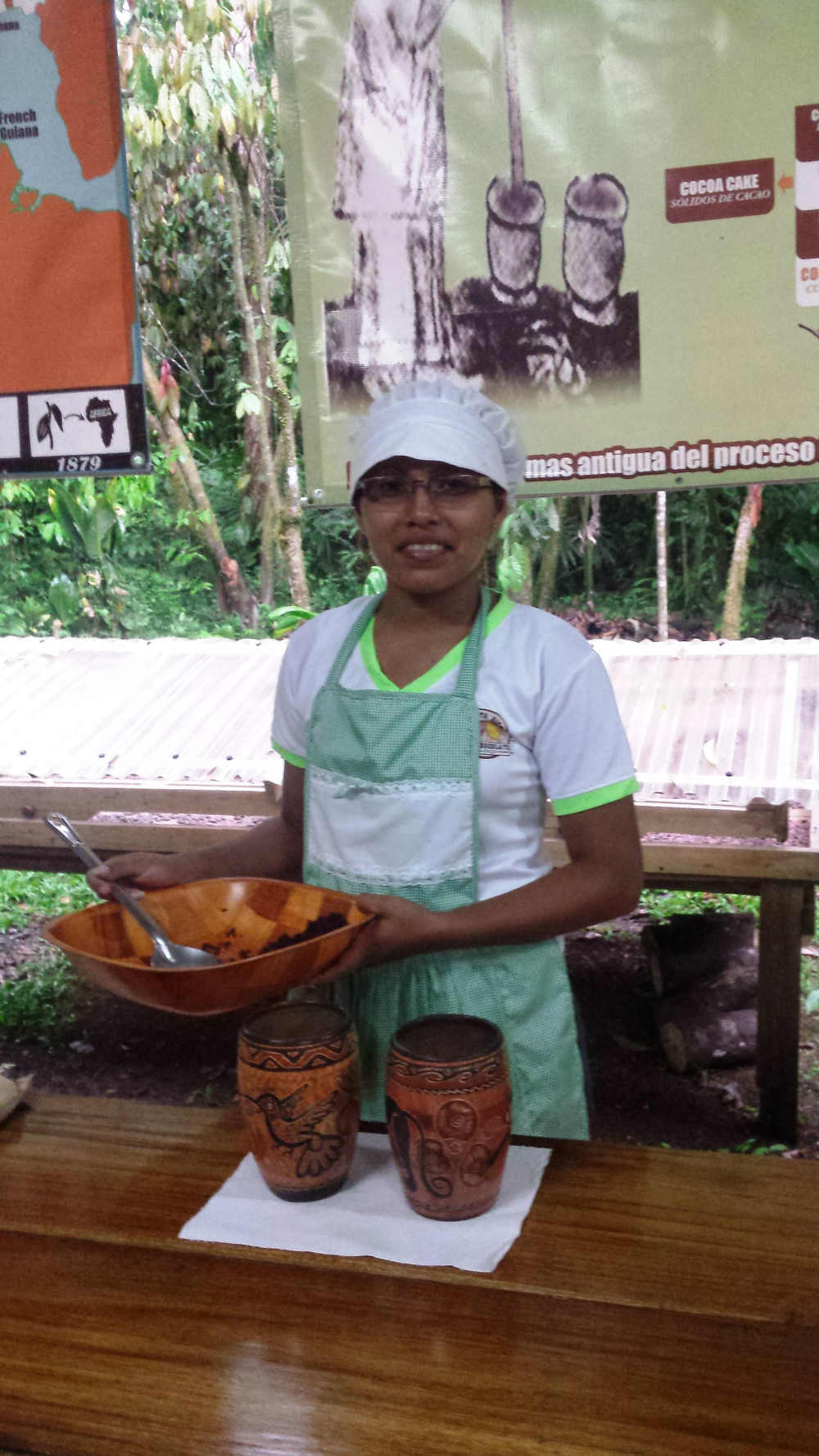
I was privileged to get a cookery lesson from kind, patient Gisele, who taught three of us how to make those spicy little chicken dumplings, a delicious chicken broth and the secret of making a flat and even tortilla from the simplest of ingredients - maize flour, salt and water!
At Sarapiqi we were given an unforgettable chocolate tour. Did you know that the cacao tree is unique in that the pods grow on both the branches and on the trunk of the tree? Doubly unique, in that when the unpicked fruit withers and dies, it remains on the tree and doesn't drop off, as other fruit does. But we weren't concentrating too much on these interesting facts. Our entire senses were given over to seeing how the relatively bitter inside of the cacao pod is transformed into seriously impressive chocolate by the Costa Rica Best Chocolate company.
It's a co-operative that cares for the land (they're very, very eco-conscious in Costa Rica), pays fair wages to its suppliers, tries to employ local people in areas of poverty and sets itself to live up to its name by making chocolate that is of the top quality. Even in the steamy heat of a Costa Rican afternoon, the bars of chocolate showed no sign of melting, unlike some of our group!
The best meal I had in Costa Rica? It was in Monteverde. It's a tourist town and the repetition of dishes on most menus could get monotonous, but Jaime, our guide, took us to a brilliant restaurant where the wife cooked up a storm in the kitchen, her husband presided amiably over the tables and the whole place is named for their little three-year-old, Thomas. Ceviche, carpaccio and amazing grilled tuna steak were outstanding.
If, as I was, you're unsure where this country is, I can tell you that it's in that little neck of land that links North and South America. Nicaragua to the north and Panama to the south. And it's not to be confused with Puerto Rico!
If you have any interest in the wildlife of our planet, you should consider a trip to Costa Rica, which has a huge amount of earth's biodiversity. Among the stars are the incredible (and lovable) animal that is the sloth, which spends most of its life hanging upside down, crocodiles, iguanas, hummingbirds, the Jesus Christ lizard (so called because it 'walks' on water), the keel-billed toucan and the resplendent quetzal.
My book Ireland's Green Larder is currently being crowd funded and publication will be spring 2018. To see a short video and description of the book, click on this link.
https://unbound.com/books/irelands-green-larder
---

As deputy editor and food and drink editor at Country Living magazine, Margaret Hickey commissioned a range of food writers and chefs, including Richard Corrigan, Nigel Slater, Rick Stein and Darina Allen. In her freelance writing career she wrote on food, drink and travel for most of the national British press, including The Financial Times, The Guardian and The Times.
In 1999 she moved to Ireland to complete a book commissioned by UK publisher Kyle Cathie. Irish Days, a collection of oral histories, received coverage in both Ireland and the UK and she was interviewed about it on the Pat Kenny Show, plus the TV3 morning show. The paperback version came out in 2003.
She has lectured at University College, London and University College, Limerick on the subject of oral history and had a weekly food and cookery slot on Premier Radio in London during the 1990s.
She is currently Vice Chairperson of Portumna Arts Group, which runs Shorelines, an annual arts festival, and for many years she has been a judge at the Strokestown International Poetry Festival.
Japanese Food in Ireland
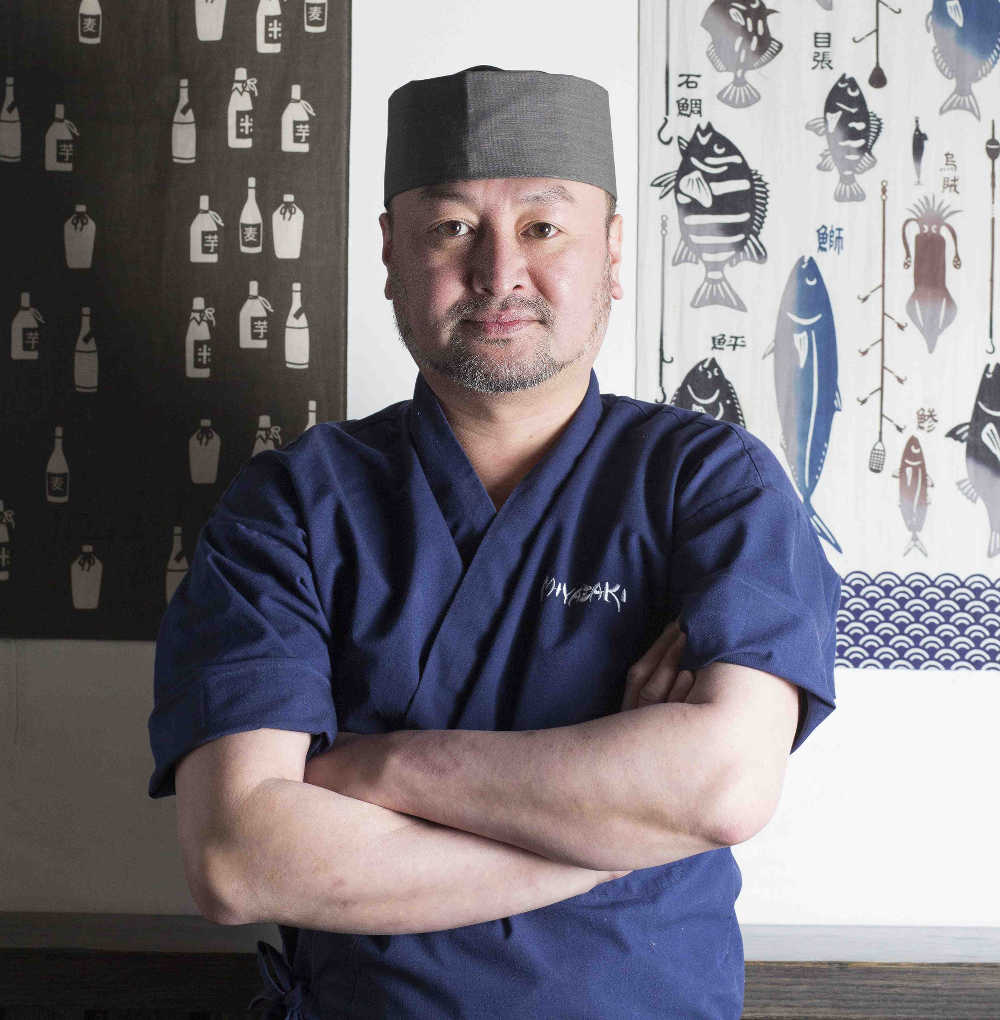
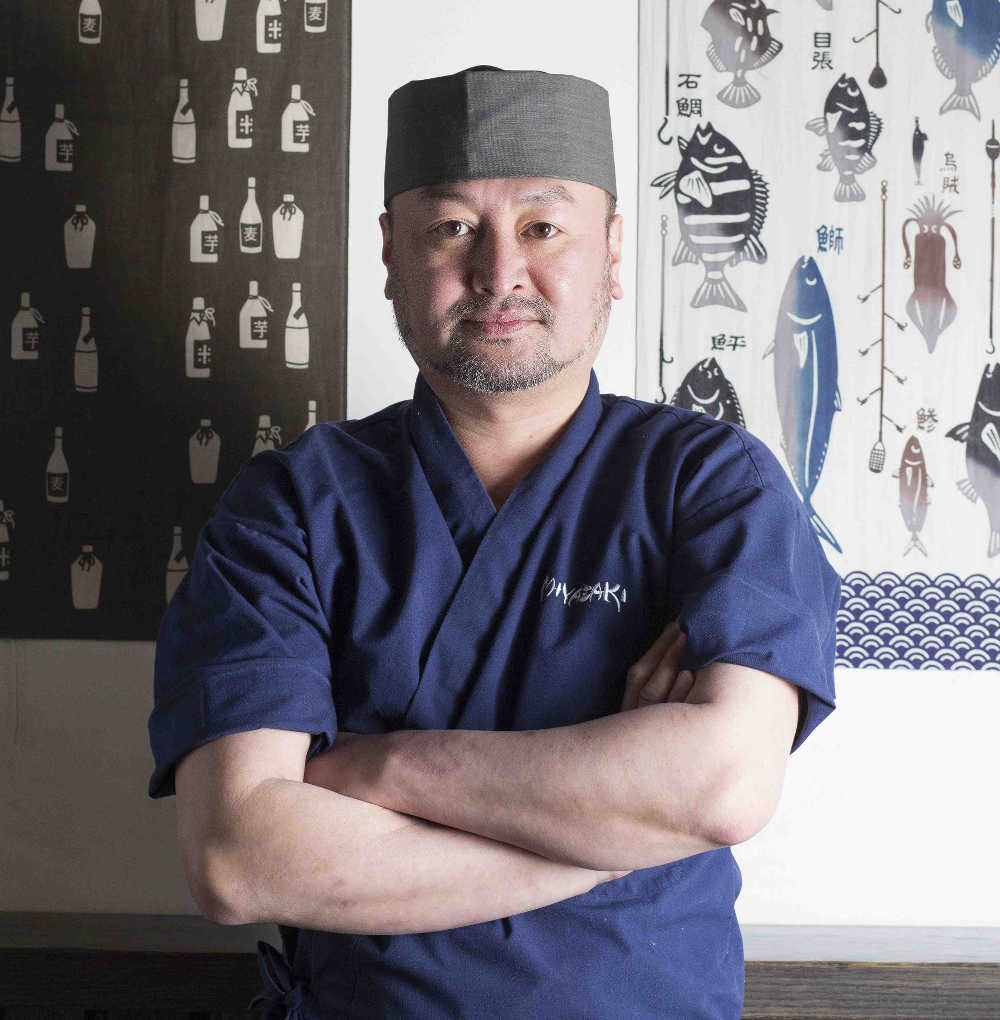
Dee Laffan speaks to the acclaimed Cork chef Takashi Miyazaki about Ireland’s growing love affair with Japanese food - and the challenges of starting a Japanese restaurant here.
There is no doubt that our plates and palates are often swayed by trending foods and fads - cronuts, pulled pork and bubble tea, anyone? However, the rise in the popularity of Japanese and Korean food in the past few years in Ireland is undeniable.
Restaurants have opened up island-wide as our tastebuds cry out for ramen, sashimi and kimchi, and home food deliveries of sushi (the new hangover food du jour) are in high demand.
We were slow to catch this train, however, with other countries having a long-established relationship with these cuisines and cultures - but, while we might have been a little slow to this table, perhaps the reasons for our growing grá is that we have recognised the common roots with Irish food that have been here all along.
Takashi Miyazaki is a Japanese chef and restaurateur based in Cork. His takeaway restaurant, Miyazaki, opened two years ago and is renowned as one of best in the country for serving authentic Japanese food, winning the Best World Cuisine in Munster and Best Chef in Cork accolades recently at the regional RAI Restaurant Awards.
Modest as he tries to be, there is no denying this man’s talents in the kitchen, his masterful use of Irish ingredients in Japanese dishes and a fine tuning for delicate flavour combinations - not to mention his creative flare for presentation, each dish an esoteric work of art.
But, much as his food is well received now, it has been a big learning curve for Irish palates to appreciate it. For Takashi, who moved to Ireland eight years ago, opening a restaurant here was a dream that for a long time he wasn’t sure would become a reality.
“When I came here it was really hard to get Japanese ingredients, they weren’t available in the markets. Now there are some available in Cork in The English Market and in Dublin in the Asia Market on Drury Street,” explained Takashi. “Because they were hard to find and so expensive back then, it was a risk to try and open a restaurant. We couldn’t put the price really high for the customer and, as we needed to cover our costs, I couldn’t open a restaurant. Now it is definitely easier, although it was very hard for me to set up a business here and I think it is still hard for Japanese people. It took me a few years to set up, I’ve been in Ireland for the past eight years and only able to achieve it now. It’s definitely why there aren’t more authentic Japanese restaurants here.”
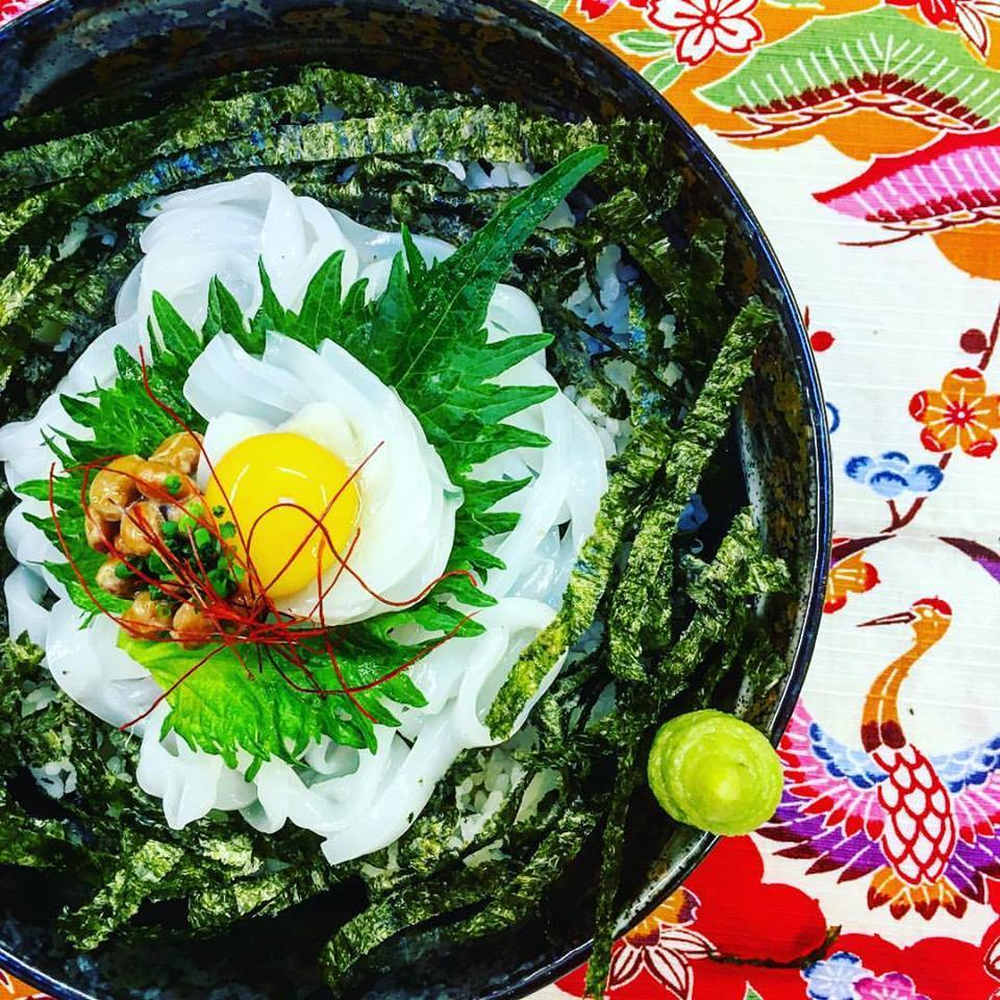
“The last few years I’ve seen lots of Japanese takeaways and Korean restaurants opening,” he continued. “The Japanese restaurants that have opened are copying a style of Japanese cuisine and you also have some fusion-style restaurants, which I don’t mind, but if either type are saying they are authentic, they’re not.”
Washoku, the name used to describe all types of Japanese dishes, was added to UNESCO’s Intangible Cultural Heritage list in 2014. Washoku became the 22nd Japanese asset to be listed on the list, which also includes kabuki, noh and bunraku.
At the time, it was hoped that the accolade would help preserve Washoku as traditional dietary habits had started to die out in parts of the country. It also helped to export Japanese products overseas, which led to the rising ‘trend’ of the cuisine globally.
“In Europe, the fermentation part of Japanese cuisine is so popular, in the same way as we have seen here the past couple of years. As people are thinking more about healthy eating at the moment, it was almost a natural progression to look to Japanese food,” commented Takashi.
“Sushi is the most popular form of our cuisine here, of course, but it’s not just that, there is so much more! There are so many types of Japanese food. It’s a treasure box. I want people to enjoy the real flavours. Japan is a small country, but with so many regions and each has its own, different flavours.”
“The funny thing is there are so many similarities between Irish and Japanese food, especially ingredients like seafood. I am really happy with the ingredients I use in delivering an authentic taste. I forage for seaweed locally and often use that for dishes on the daily specials menu. Irish pork is great for Japanese cooking, especially pork belly, and beef as well. I always use local meats and love the flavours in my dishes, they marry together perfectly. Another ingredient is beetroot, which is really good in Japanese cooking. We normally fry it with sesame oil – it’s called Kinpira. It is really amazing. In Japan, it is really hard to get beetroot, so it’s great to be able to get it here. It has a really earthy flavour that works so well with Japanese ingredients.”
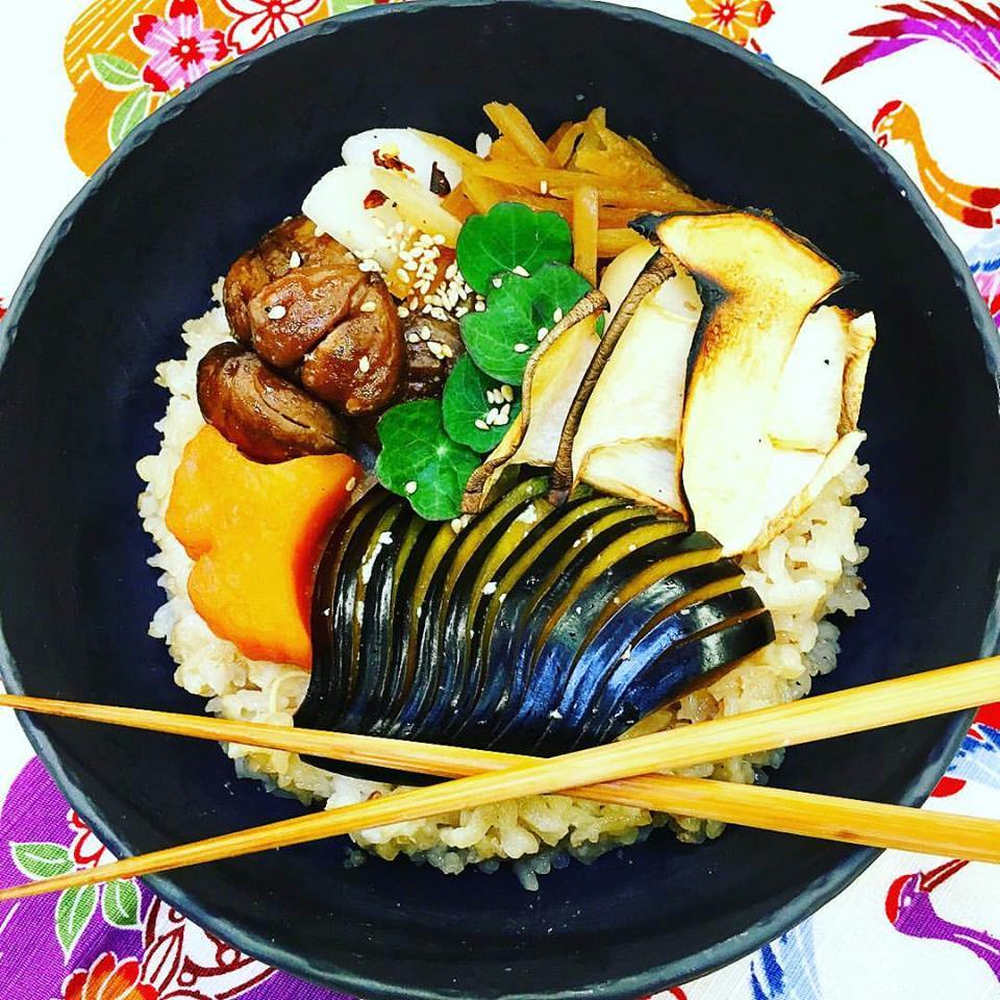
“Other similarities I’ve seen here are in the cuisine of chefs like JP McMahon. He is an example of a chef who is doing something similar in his food as uses similar techniques to Japanese cuisine and lots of seaweed and fermentation, although I know that he doesn’t like to compare his cooking to it. And I agree because, you see, the basis of cooking, whether it’s French, Japanese, Chinese, Korean, they are all the same – heat on the pan, frying, steaming, it’s the same. It just depends on what region you are from and what ingredients you use for your cooking. In some ways Irish cuisine’s roots are similar to Japanese for this reason, but a localised version.”
In order for the future of Japanese food in Ireland to develop to a healthier mindset - put down the California rolls for a minute here folks - we must first acknowledge our own food heritage and roots with ingredients such as seaweed and other sea greens.
“The culture has to grow. This is my challenge, to promote Japanese food more. With every menu I try to do more specials and ones that Irish people won’t know. Once they trust my taste they’ll try it, if they like it then they’ll try another thing, and another. At first people wouldn’t try the specials, but I asked for their trust in my taste and after two years now people are asking me “what’s your special?” They are looking for something new and they have confidence to try a new dish that I cook. That means it is growing up now, but we have a long way to go.”
Takashi’s recommendations for restaurants using Japanese techniques and ingredients: Aniar, Galway; Amuse, Dublin 2; Chapter One, Dublin 1; Etto, Dublin 2; Pilgrim, Rosscarbery, Co Cork.
IMAGES by Clare Keogh: Takashi Miyazaki; Cuttlefish, mooli, dashi; Ballyhoura eryngii and chestnuts okowa.
---

Dee Laffan is a freelance food writer and editor. Formerly editor of Easy Food magazine, she has written for the Irish Independent and Sunday Independent. She is a proud supporter of Irish producers and their products, and takes part in judging for food competitions including Blas na hÉireann and the Great Taste Awards. She is a member of the Irish Food Writers' Guild and secretary for Slow Food Dublin. Twitter @deelaffan
Memories of Veronica Steele


Moved by Cork’s recent celebration of ‘Milleeens Week’, food writer Margaret Hickey shares her personal memories of the late great cheesemaker, Veronica Steele
31st August 1978, 2 fatty Milleens, 2 gals each. Ladled into unlined moulds. Both moulds collapsed. ladled slices of curd back in. Cld be interesting.
Extract from her cheese maker's diary.
In early January this year, after an illness borne with typical courage and humour, the legendary cheese maker Veronica Steele died. But she left behind a legacy and I was moved to pay tribute to her in a week when all across Cork, in the places of good food and good cheer that are the Character Cafés, Milleens Week was being celebrated.
It wasn't in Ireland that I first came across Milleens cheese - it was in Paris. Myrtle Allen opened La Ferme Irlandaise, a shop and restaurant specialising in Irish food, in 1981 and it was the toast of le tout Paris.
Even my most chauvinist French friends had to admit that this was a cheese worthy of praise, and when I then moved to London I searched it out in the halls of good food - Neal Street and Paxton & Whitfield among them.
During my time as an editor at Country Living magazine, I wanted to spread the word about the excellence of Ireland's food , so I commissioned a piece by the only begetter of Milleens - the indomitable Veronica Steele. Readers wrote in about her piece, thrilled with the vigour, humour and honesty of her story. She began by telling me that one day she was on the bus with her youngest child, who asked where they were going. 'Why, darling, we're going to Maher's,' she replied. The child's eyes grew wide. 'We're going to Mars! On a bus!' They were, in fact, on their way to Maher's in Cork, and when they got there, they found a cheese that was wrapped in strips of muslin, like bandages. As a chunk was cut off with the cheese wire, you could smell and see that it was the real thing, made from the milk of a cow and, what’s more, a cow that had fed on the rich grass of Co Cork. When the word got out that this cheese was no longer to be made, Veronica couldn't allow there to be a vacuum, and so she determined to step into the breach.
Her husband Norman explains that with too much milk in the summer, they also needed to make cheese, and so Veronica obliged with a cooked curd cheese, Beara. Norman wasn't easily satisfied, though. 'I said, Come on! More exciting! I want something really special.' And so Veronica came up with Milleens.
Right from the start, luck played a part in the cheese's huge success. The Steeles sent it up to a pal cooking in Sneem, and the first night Milleens went to the table was the night that Declan Ryan of Arbutus Lodge was there. He made short work of the wondrous farmhouse cheese presented to him. And the very next night none other than Myrtle Allen sat down and was equally smitten. According to Norman, Mrs Allen said, 'This is the most exciting day of my professional life - a really good Irish cooked cheese.'
Veronica makes typically humorous reference to this in her cheese maker's diary. 'Rumour has it that there was a full eclipse of the Sun and earth tremors when the first Milleens was presented on an Irish cheese board.'
Many years later, when I was travelling around Ireland, researching for my book Ireland's Green Larder, I arranged to go down to the Beara peninsula to meet Veronica and Norman in their home and to visit the dairy.
Unfailingly hospitable, they gave me a magnificent lunch and when I admired a particularly striking piece of art on wall, a great slab of rusty metal, Norman said, with a perfectly straight face, 'Yes, and the extraordinary thing is that there's a barn out there with a hole in the wall of exactly the same dimensions as this!' No one showed they were laughing inside.
As I was leaving, I was introduced to a tall young man called Quinlan. And now it is he who is bringing to the making of Milleens all the passion and attention to detail that is required if you are to keep up the extraordinarily high standards that his mother brought to it. She was a free spirit who married discipline with a creative flair to make a classic cheese. And she also made an enduring impression on anyone who met her. She is greatly missed.
There is an entire chapter on White Meats (all things dairy) in my forthcoming book, Ireland's Green Larder (more info through link below).
My book Ireland's Green Larder is currently being crowd funded and publication will be spring 2018. To see a short video and description of the book, click on this link.
https://unbound.com/books/irelands-green-larder
---

As deputy editor and food and drink editor at Country Living magazine, Margaret Hickey commissioned a range of food writers and chefs, including Richard Corrigan, Nigel Slater, Rick Stein and Darina Allen. In her freelance writing career she wrote on food, drink and travel for most of the national British press, including The Financial Times, The Guardian and The Times.
In 1999 she moved to Ireland to complete a book commissioned by UK publisher Kyle Cathie. Irish Days, a collection of oral histories, received coverage in both Ireland and the UK and she was interviewed about it on the Pat Kenny Show, plus the TV3 morning show. The paperback version came out in 2003.
She has lectured at University College, London and University College, Limerick on the subject of oral history and had a weekly food and cookery slot on Premier Radio in London during the 1990s.
She is currently Vice Chairperson of Portumna Arts Group, which runs Shorelines, an annual arts festival, and for many years she has been a judge at the Strokestown International Poetry Festival.
Word from the West

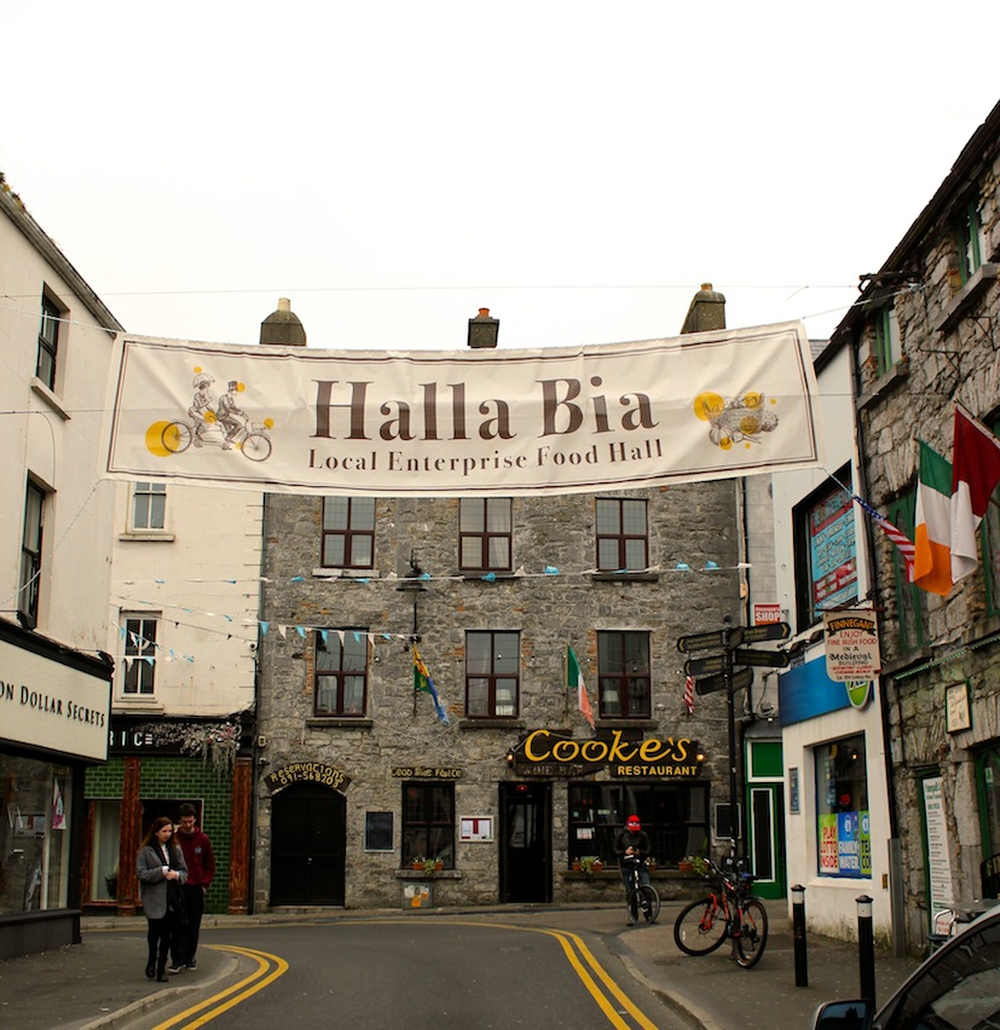
West of Ireland food writer Anne Marie Carroll welcomes plans for a new covered market in the European tradition - right in the heart of Galway city
Markets are a must-see when going somewhere for the first time - when on holiday abroad, most of us will look for a good market to visit. It’s always fascinating to see the local produce, taste different types of food, and enjoy a new place with its own dynamic and atmosphere - and an indoor market is best for this.
You can spend many happy hours in La Boqueria, for example, the largest indoor market in Spain, and the most popular market in Barcelona. Located right at the Ramblas, the main boulevard of the city, fruits, vegetables, meat, fish and seafood are sold there; it dates back to the early 13th century when it was an outdoor market located in front of one of the gates to the old city wall, only becoming an indoor market in the 19th century.
Mercato Centrale, the central market of Florence, is located in the city centre and hosts a variety of vendors selling typical Tuscan and Italian food produce, olive oil, pasta, mushrooms, artichokes, capers and the famous limoncello.
It has a second floor which houses bars and restaurants and, outside, vendors sell leather goods and tourist souvenirs. With more than 100 stalls and a history that dates back to the 11th century, London’s Borough Market is another favourite. An indoor market selling a large variety of seafood, meat, cheese and baked goods, it also offers ready to eat dishes and attracts a wide variety of customers - locals and tourists, professional chefs and culinary enthusiasts.
Closer to home, The Milk Market in Limerick welcomes its visitors with an array of colours and aromas. With roots going back to the 1770s, it has an interesting heritage. And, of course, The English Market has long been the pride of Cork and a big draw for visiting tourists, providing a unique showcase for the very best in local crafts, food and drink.
The most exciting aspects of this year’s Galway Food Festival was Halla Bia, Galway's very first indoor market. A collection of around 40 indigenous food producers and suppliers from the West of Ireland showcased their produce in the old Connacht Tribune Printing Works in the city centre.
The initiative was in partnership with the Local Enterprise Office and stalls ranged from naturally grown, seasonal vegetables and herbs from Bia Oisin, baked artisan goods from the Bread Shed to a unique Venezuelan style artisan cheese produced in Galway city.
There were small producers from along the West coast such as Ivy House Chocolates from Galway, Linalla ice-cream from Clare, The Gluten Free Kitchen Company from Kerry and The Legumerie from Donegal as Halla Bia provided an opportunity for small local food and drink producers to bring their goods to market.
It seems obvious that an investment in a covered food and craft market to promote local food, create a unique character, and attract people into the city should be the next step for Galway. Whilst the existing Galway Market is undoubtedly one of the best in the country and provides a valuable service, a purpose built sheltered and appropriately serviced market would be a major step forward in facilities in the city and could complement rather than compete with the existing market.

What is needed is to create a unique market for the region that supports local enterprise, including the production of artisan foods, both land and sea-based, supplying the home and restaurant market. Such a market has the potential to be the backbone of our local food system and an integral part of our economy and identity.
A covered food and craft market in the city centre formed a key component in a five-year plan outlined by Galway Chamber’s Economic Development Plan 2015-2020. Planning permission has previously been sought for the neighbouring car park on Market Street and adjacent disused warehouse. A derelict space at the back of the train station has also been discussed.
Seamus Sheridan, founder of the city’s well-known Sheridan’s Cheesemongers and a former Green Party general election candidate for Galway West called for a market to be located on the ground floor of Hynes Yard car park, a site owned by Galway City Council and currently leased to Park Rite for the operation of the car park. ‘A seven-day covered market is the lung that we need in this city’‚ he says. But the Printing Works - largely disused save for an annual infestation of elves for the Elf Town Santa experience and as an gallery during the Arts Festival - would make a perfect stop gap while a more permanent solution is found. With 2020 Year of Culture looming and European Region of Gastronomy 2018 just around the corner, time is no longer on our side.
Most recently reports have emerged that Galway looks set to get a new 200-room hotel and Covent Garden-style covered marketplace on Market Street in the city (plans pictured above right). A spokesman for Royal Horizon Ltd, which purchased the Market Street Car Park in 2015, has confirmed that it has agreed to purchase the Connacht Tribune premises adjoining the car park and expects to submit a full planning application during the summer.
The building will be three storeys high over an underground car park, with a roof terrace restaurant. Modelled on similar food markets in Europe, the food hall is expected to cover 17,000 square feet under a double height ceiling.
Exploiting the natural link between tourism and food, a market such as this would be a huge tourist attraction to the city. With pride of place accorded to small traders providing personalised service, and an emphasis on organic products and small-scale producers, it would give small producers an opportunity to benefit from the West’s growing tourist numbers. It could also be a permanent civic space, a meeting place and a bustling social hub of the city with unique appeal to locals and visitors.
--
 Anne Marie Carroll is a freelance food writer and member of the Irish Food Writers’ Guild who lives in Galway with her husband and two children.
Anne Marie Carroll is a freelance food writer and member of the Irish Food Writers’ Guild who lives in Galway with her husband and two children.
With a background in design and illustration, Anne Marie made the switch to journalism with a regular food and wine column in The Galway Advertiser. Her work now mainly focuses on restaurant reviews, writing and editing recipes, the development of food photo shoots, including styling and photography. She also writes for a number of other publications and works as a consultant for small producers, food retailers and restaurants.
Anne Marie writes about all things food from the West of Ireland at her blog, Warm & Snug & Fat. You can also find her on twitter as @Biscuits4ABear
Aoife Carrigy - Wild Atlantic Way Food Tour
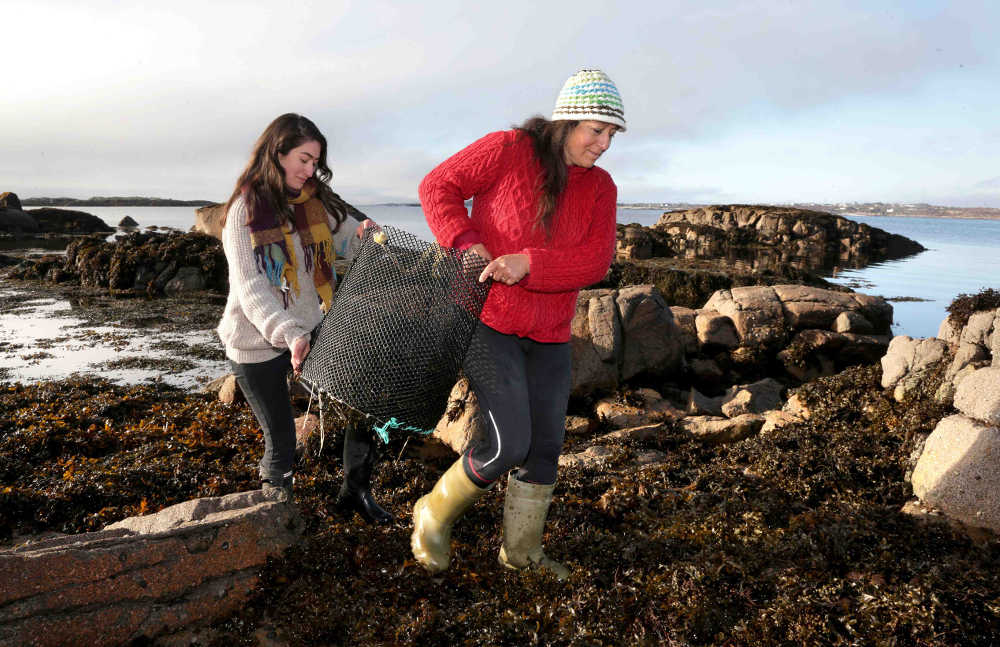
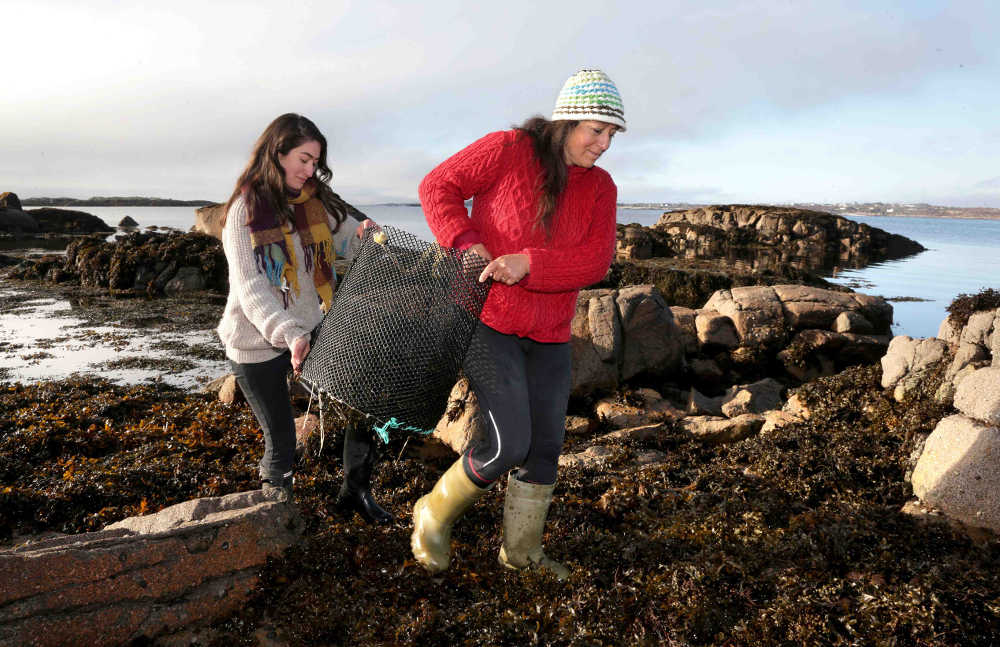
Aoife Carrigy heads west for a day of grazing along the Wild Atlantic Way
“Imagine 40 Hookers racing out from that bay.” We’re sitting outside Tigh Chadhain pub on a lesser-travelled stretch of Connemara’s Wild Atlantic Way. It’s gone noon on a Saturday straight out of a brochure and there’s not a cloud in the sky as we tuck into bowls of creamy chowder and glasses of Guinness.
Nooks and crannies of the sheltered bay sparkle below us while publican and local historian Michael Coyne regales us with tales of his blink-and-miss-it village.
Many stories shelter within Kilkieran’s hills and inlets: there’s the ancient tobar mhuire (holy well) blessed by St Kieran of Clonmacnoise on his way to meet St Enda on the Aran Islands, or the regatta of Galway Hookers on the first weekend in July to celebrate traditional trading between coastal communities in Connemara, the Burren and the islands.
Inside the thick-walled bar, framed newspaper cuttings tell their own stories of times past. Next door in the bistro, a fish-heavy menu featuring fresh tuna steak or Atlantic fish and chips battered with the local Independent Brewing beer suggests that some of modern Ireland has been absorbed in this timeless Gaeltacht outpost.
As we reluctantly re-board our minibus, we thank Michael for the warm welcome. “Thank yourselves”, he replies, “thank yourselves.”
It’s a quintessentially Connemara moment: the kind that the Wild Atlantic Way promises to tourists willing to detour from the beaten track.
You could easily happen upon Coyne’s Bar & Bistro on a self-drive tour (though pity the designated driver). But it’s less likely that you would find yourself at our first stop that morning: a modern mother-and-daughter-run abalone farm near the traditional fishing harbour of Rossaveal. For that you’d want to sign up to the Wild Atlantic Way Food Tour.
The tour is a collaboration between Sheena Dignam of the excellent city-focused Galway Food Tours and Gaeltacht-native Padraic O Raighne of Connemara Pub Tours, combining Sheena's food-industry insider knowledge with Padraig’s local and logistical expertise.
We meet up the night before for a pre-tour meal in Dela on Galway’s Dominick Street. Margaret and Joe Bohan’s menu showcases stellar local produce like fresh crabmeat from Rossaveal or Ketteridge pork belly from the iconic local pork butcher. But the real stars are the fruit and vegetables harvested from the hedgerows and polytunnels of their Moycullen farm, the development of which is being overseen by kitchen garden specialist Dermot Carey.
Even the drinks at Dela are ultra local: we toast our impending trip with a ‘Dela Sloe Royale’ cocktail featuring sloe berries foraged last autumn, and we wash down a dessert of chocolate mousse and beetroot crisps with a malty porter produced by Joe himself.
The next morning, after a restful night in the spotless ensuite rooms of The Nest boutique hostel in Salthill, we reconvene over a light self-service breakfast. It turns out that not only do granola, fruit, pastries and fresh coffee make a better breakfast than abalone soup, pan-fried sea cucumber and seaweed tapenade – but that if you’ve eaten the former then you might just be open to trying the latter.
Cindy O’Brien (pictured top right) established her abalone farm 10 years ago, exporting to East Asia where this sea snail is considered a delicacy for its flavour and texture as much as its medicinal properties. As she shows us around the bubbling seawater tanks of her boutique aquaculture farm, she explains the five-year process involved in growing abalone from seed size to the 10cm specimen favoured in China.
Then Cindy disappears into the kitchen, leaving her daughter Sinead to talk us through the local seaweeds that she harvests from the wild and sells under the Mungo Murphy brand: the sea spaghetti that she adds as a natural flavour enhancer to a cookie mix to help reduce the need for salt and sugar; the vivid green sea lettuce that she mixes with kelp, alaria (or ‘wild Atlantic wakame’) and black olives into a delicious anchovy-free vegan tapenade.
There’s some quiet speculation amongst us whether this pair’s glowing skin is due to the high collagen content of abalone or the intense nutritional attributes of the sea vegetables.
Either way, we’re all game to try their tinned abalone soup, also available under the Mungo Murphy brand. It turns out to be quite delicious, especially when its pork broth base has been seasoned with some extra ginger, garlic and chilli as suggested on the back of the tin. We also sample the abalone simply pan-fried and sliced to accentuate its mushroom-like texture.
But it’s the sea cucumber that is the biggest revelation. Cindy has cooked it in green tea (a tip from Cork chef, Takashi Miyazaki, who cooked her sea cucumber at a recent pop-up dinner in Cork) before chopping it into thick strips, tossing in seasoned gram flour, pan-frying in butter and serving with aioli. They put me in mind of soft, subtly flavoured and rather moreish udon noodles.
After this challenging but surprisingly delicious start, the rest of the day is full of creature comforts – not least of which are the views of the most spectacular scenery Ireland has to offer. Our driver Eamon is full of chat and local knowledge as we pass the new interpretative centre at Pearse’s Cottage and head into the depths of Connemara, where the Twelve Bens (Beanna Beola) look like cardboard cut-outs in the unusually stark sunlight.
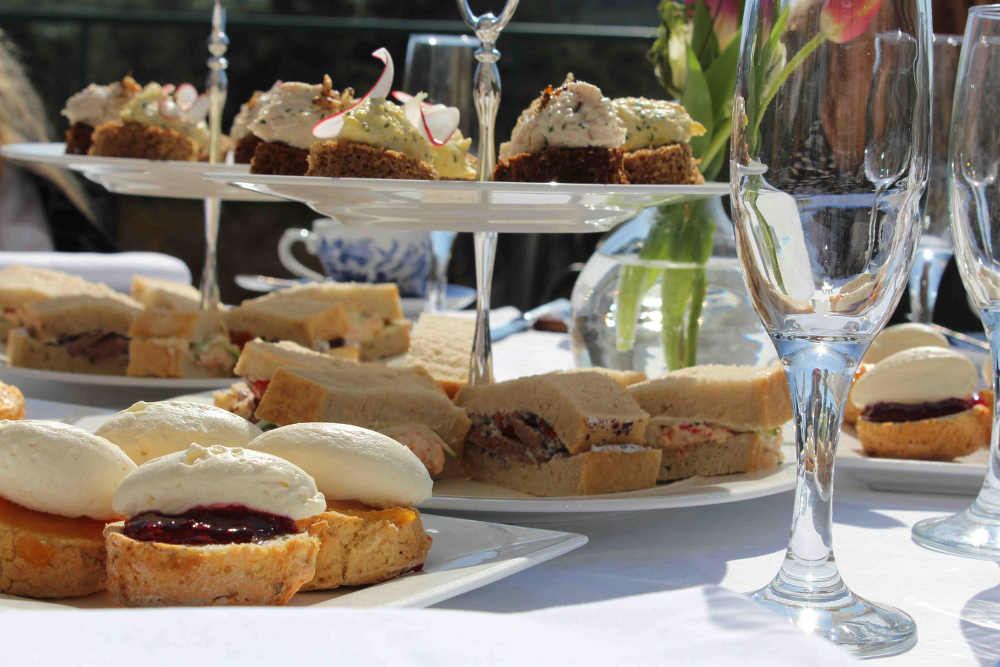
Before we know it, it’s time for afternoon tea and we find ourselves at just the spot for it, the quirky five-star Ballynahinch Castle. First a short tour of the recently expanded grounds and kitchen gardens and a nosy around the hotel’s elegant dining rooms and homely fisherman’s bar, whose walls are adorned with original Yeats paintings and stuffed 20lb salmons respectively.
Then we’re ushered to the riverside terrace where a linen-laid table soon heaves with delights from chef Pete Durkan’s kitchen. Finger sandwiches of crayfish, roast beef or truffled chicken and bite-sized scones topped with jam and cream. Solaris tea scented with wild local herbs and lashings of prosecco.
We eventually retreat inland and back towards the city by way of the utterly charming Power’s Thatch Pub in Oughterard, a lovingly restored hostelry that is full of character and curiosities like stuffed local fauna or a dressed cast-iron bed in the exposed attic. Owner Rory Clancy tells us of the welcome tide of slow tourism that the local Greenway project is heralding and the revived community spirit being fostered in the town.
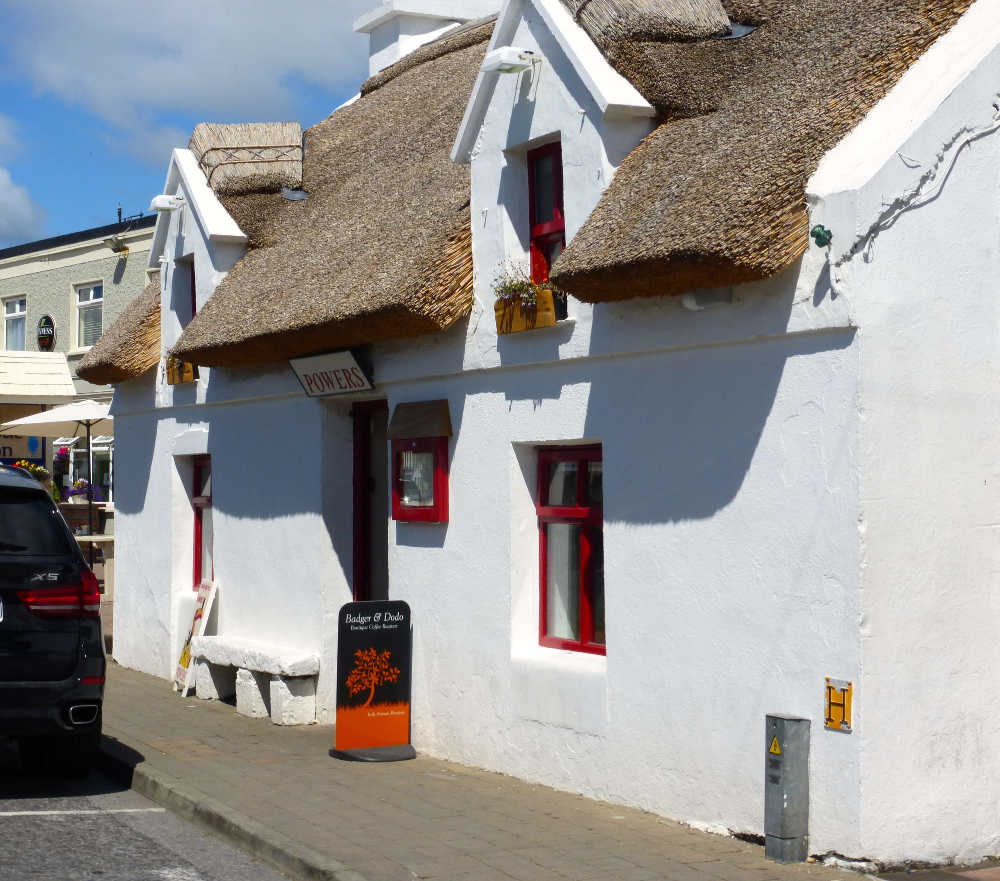
We graze on air-dried pork, beef and Connemara Hill lamb from local butcher James McGeough as craft brewers Barry Davey and Enda Cleary from the local Wild Bat Brewery charm us with their core and seasonal selection. Favourites include Sonic (a malty Californian Common Beer, which is technically a lager but brewed like an ale) and a cloudy New England-style IPA bursting with passionfruit and pine hops character.
A last stint on the minibus finds us back at Salthill, where ice-cream and beer season is well and truly open. But it’s something a little stronger that we’re after, as we pass through the beer-hall depths of Oslo brewhouse and into the poitin distillery hidden out back. Pádraic Ó Griallais of Micil Poitin is here to bust a few myths about this barley-based spirit and talk us through the recipe that he proudly inherited from his great-great-grandfather, Micil Mac Chearra. The family recipe still features the signature addition of local bogbean flowers, and the resulting honeyed, floral aromas make this as good sipped neat as in a Micil Sour.
As we raise a final toast to what has been a perfect day, we thank ourselves one last time for signing our Saturday over to the Wild Atlantic Way Food Tour. And with tours running all summer, you could be thanking yourself too.
Tours cost from €95pp for a full day tour. See www.wildatlanticwayfoodtours.com for more details.
A version of this article first appeared in The Sunday Business Post.
---

Chairwoman of the Irish Food Writers’ Guild, Aoife Carrigy is a freelance food and wine writer and editor. She is a regular contributor to FOOD&WINE Magazine, The Irish Independent, The Herald and Cara Magazine, amongst others, and was co-author of The Ard Bia Cookbook and general editor of The ICA Cookbook, The ICA Book of Home and Family, The ICA Book of Tea & Company and, most recently, The ICA Book of Christmas. In 2015, she teamed up with Great Irish Beverages to launch the inaugural Dublin Wine Fest and Irish Cider & Food Day.
Word from the West
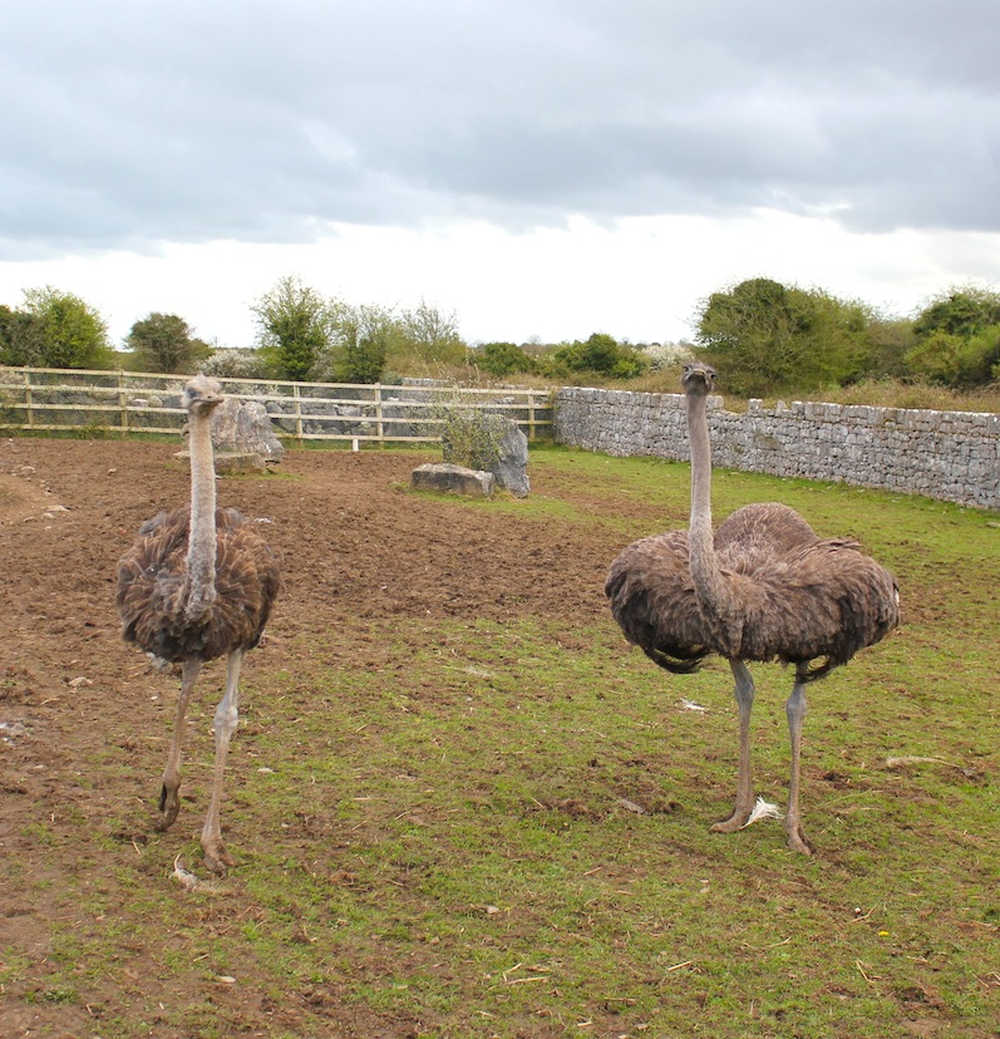
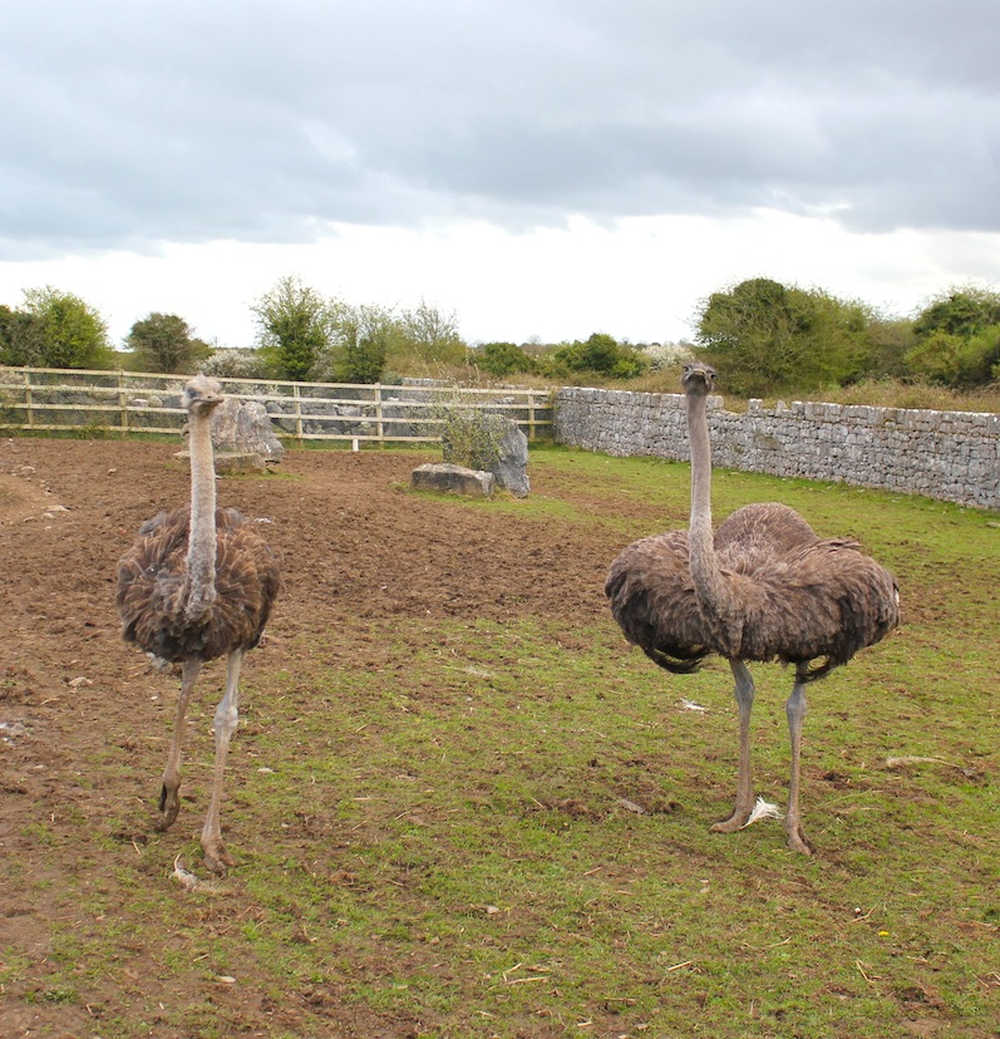
West of Ireland food writer Anne Marie Carroll has some unusual neighbours among the stone walls and green fields of rural Galway.
Whether it’s a few clucking chickens, downy ducks or a gaggle of geese, keeping a few animals for the pot or for profit has long been a part of Irish life. The pig has an important place in Irish food culture, giving 'torc' (boar) or 'muc' (pig) to many place names. Many rural and urban households kept a pig fattened on potatoes and scraps.
In pre-famine Ireland pigs, or 'the gentleman who pays the rent', played a very important role in the lives of poor farm labourers. This term of endearment evolved in deference to the animal who ensured a roof overhead and food on the table.
A plot of land as small as a quarter acre could produce enough potatoes to sustain a whole family and a pig. The potatoes were for eating but the pig was nearly always for sale.
The pig would be sold on 'gale day', the twice yearly date when rents were collected. Hence the euphemism 'the gentleman who pays the rent' came into being when referring to the family’s prized possession.
Some lucky swine lived in their own, custom-made abode attached to the main family dwelling, but most shared their master’s house, made from thick walls of straw, earth, and stone, with a thatch roof and a clay floor. Hens would live in a dresser and the porky 'gentleman' lay grunting happily on a bed of straw in the corner.
In times gone by, poultry were managed by women in rural areas and seldom killed for their own table. Eggs were a source of income rather than chickens being a source of protein. The eggs were sold to buy household goods and shoes for children, so a regular small income from farm poultry was a boon for women running households.
Backyard poultry keepers have been on the increase in recent years, with many fanciers keeping themselves well supplied with hens eggs for breakfast, duck eggs for baking or fattening their own turkeys for Christmas. Keeping just two hens at the bottom of a town or city garden, is an ideal way of supplying the home with lots of fresh eggs as well as having easy to keep pets that can teach the family all about where their food comes from.
There are more exotic fowl you can dabble in of course. I recently had the pleasure of my neighbours’ peacock taking a liking to roosting in the branches of the large chestnut tree directly outside my bedroom window. While he was a handsome creature to have around, the novelty of seeing his stunning plumage quickly palled when compared to being awakened by his offensive early morning shrieking that effectively drowned out all other songbirds.
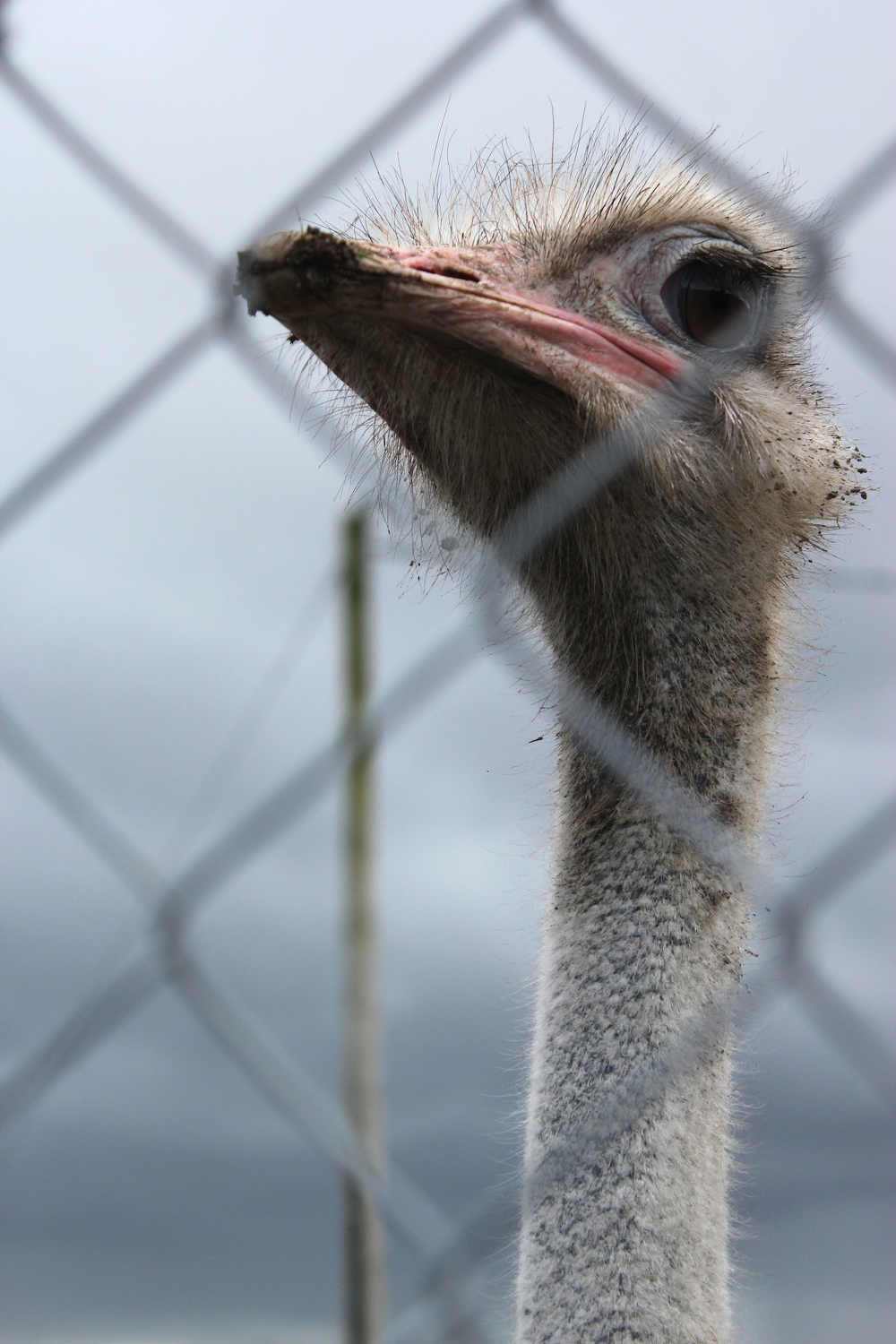
Also in our neighbourhood, among the stone walls and green fields that are populated with the usual black faced sheep and lumbering cattle is another smallholding, an unusual one for this part of the world - a small paddock of ostriches. We regularly stop to admire them en route to Galway or Oranmore.
Ostriches are the world’s largest birds but they are not birds of flight. An adult is 2.2 metres high and a fully grown male would weigh in at around 135kg. Their strong muscular legs facilitate movement at up to 40 miles per hour. They have small brains and their protection in the wild is mainly through their excellent eyesight, hearing and speed of foot.
The huge eyes occupy most of the space within the skull. But the ostrich has another defensive string to its bow. They kick forward with their single sharp claw and this is highly dangerous to their handlers. Would-be predators should think twice before tangling with this comical looking bird.
Ostrich farming is one of the most open, free range farming systems wherever it is practiced and ostriches are easily capable of withstanding the Irish climate. They have long lives and a female could be productive for over 30 years. On average, a breeding trio of ostriches require, at minimum, a half hectare and since they need exercise they should have a sizable run.
An ostrich paddock should be well fenced to a height of 1.7m. Ostriches are a grazing bird with a staple diet of grass supplemented with poultry-type feeds. The breeding season begins in March and can last into September.
South Africa has the world’s largest industry with approximately 400 producers. This is not surprising since the continent of Africa is a natural habitat for ostriches. The business in Ireland has been principally driven by a small number of breeding stock holders, with only very small quantities of meat product coming on the market.
Ostrich meat first hit Galway in the 90's. Those of us old enough to remember might recall seeing it listed alongside alligator, buffalo and other 'novelty' meats on Brannagans menu, the restaurant under CP's nightclub in Abbeygate Street - it has been largely absent ever since its closure.
Ostrich is known as the healthy red meat alternative and this is where its marketing potential lies. It is a low fat, low calorie, low cholesterol alternative to traditional red meat, is high in protein and highly palatable. Farmers markets and good restaurants may offer a local outlet for this ‘exotic’ meat, sometimes called volaise.
Our local ostriches remain in their paddock for now, and it is unclear whether they are intended for the pot or, like 'the gentleman', to pay the rent. One wonders how to access a vet with the appropriate knowledge in this part of the world, or where you would have them butchered and other practicalities.
One thing is certain, since it’s claimed that an angry ostrich can deliver a kick that can kill a lion - ostrich farming is not for chickens. I'll stick to my neighbouring noisy peacock.
--

Anne Marie Carroll is a freelance food writer and member of the Irish Food Writers’ Guild who lives in Galway with her husband and two children.
With a background in design and illustration, Anne Marie made the switch to journalism with a regular food and wine column in The Galway Advertiser. Her work now mainly focuses on restaurant reviews, writing and editing recipes, the development of food photo shoots, including styling and photography. She also writes for a number of other publications and works as a consultant for small producers, food retailers and restaurants.
Anne Marie writes about all things food from the West of Ireland at her blog, Warm & Snug & Fat. You can also find her on twitter as @Biscuits4ABear
Aoife Carrigy - Ballymaloe Litfest
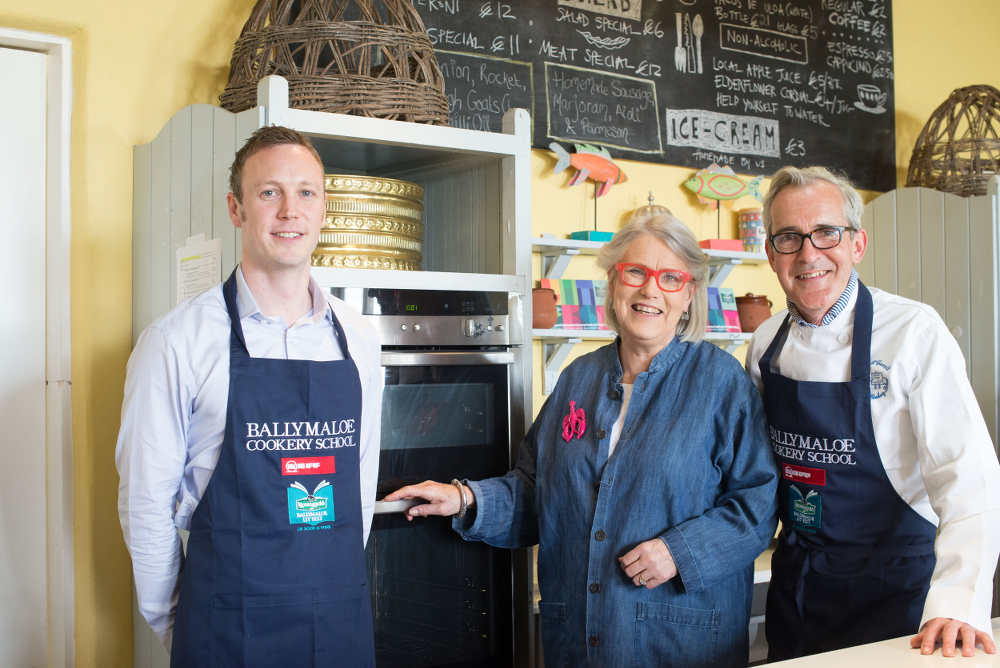
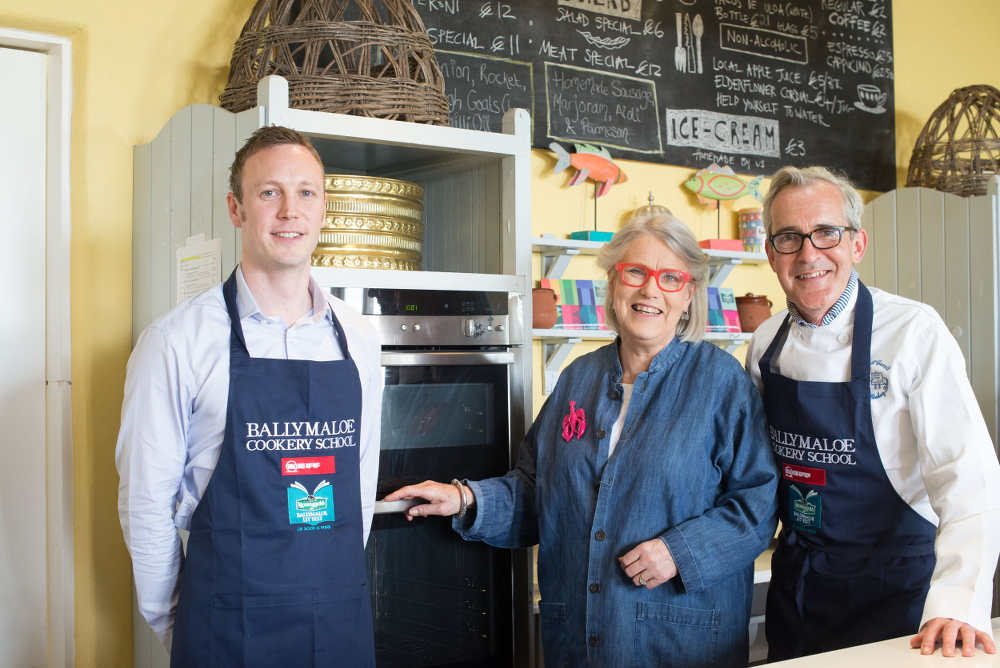
Aoife Carrigy shares some of the highlights and recurring themes of this year’s Ballymaloe Litfest
The third weekend in May has become an unmissable pilgrimage in the Irish food and drinks world, as food lovers and professionals flock to Shanagarry in East Cork for the annual Ballymaloe Litfest.
What began life five years ago as a food and drinks literary festival has become a festival of food and drinks literacy that aims to explore the joint responsibility we have as eaters, cooks, shoppers, merchants, growers and producers of food in a rapidly changing world.
Spread over the grounds of two working farms at Ballymaloe House and Cookery School, and with various farm sheds and garden tents hosting much of the festivities, it’s a lively weekend of food talks, screenings, walks, demos, tastings, snacking and of course full-blown meals.
Litfest17 kicked off on Friday evening with a welcome from film producer and multi-Oscar winner Lord David Puttnam who spoke of his love of his adopted home of Cork. Puttnam is a champion of the digital revolution which he credits with ‘destroying distance’, allowing young entrepreneurs to build businesses that engage with an international market but run them from the inspiring surrounds of County Cork or similarly far-flung beauty spots.
And Lord Puttnam wasn’t the only legend at the festival. Claudia Roden spoke about how her love of collecting recipes came from the formative teenage experience of fleeing her beloved home of Egypt with her Jewish family, friends and relatives.
Not knowing when or if they would see each other again, loved ones would exchange recipes as a parting gift and a way to remember one another. Food was a powerful tool for human bonding – and a pre-digital era way to destroy distance and be transported back to another time and place.

Dietician and author Jane Clarke is also fascinated with how food can be used to offer precious pleasure in the face of suffering. She spoke about her career as that rare breed – a food-loving dietician – and how it led to her latest cookbook, Nourish, which provides nourishing recipes for all stages in life.
She’s particularly interested in working with patients living with cancer and dementia, and developing accessible recipes for suitable food that can be enjoyed by these patients together with loved ones. She is on a mission to develop and share afternoon tea recipes in particular to reintroduce a moment of shared deliciousness – her recipes free from her nourishbyjaneclarke.com website.
That question of what you feed your loved ones – and what it can teach you if you start to pay attention – was a recurring theme for several speakers. Chef Christian Puglisi from Copenhagen’s Relae spoke of the chain effect of fundamental changes implemented at his restaurants as a direct result of having a child and starting to think about the personal health implications of how our food is reared, produced and sourced. Those questions eventually led Puglisi to setting up his own organic farm to supply his various restaurants with quality produce.
It arose again in several talks with Ellie Kyesombe and Michelle Darmody of Our Table, a wonderful and steadily evolving initiative that aims to draw attention to the shameful institution of Direct Provision in Ireland. Ellie spoke of her own personal experience of not being about to cook for her Malawian children – and also of the joy that re-engaging with food has brought back to her life.
There was also an enlightening ‘Blogging or Flogging?’ discussion about the changing ethical challenges of food writing in a digital age hosted by the Irish Food Writers’ Guild with Micheal Lee of the Advertising Standards Authority of Ireland and Ireland’s first food blogger, Caroline Hennessy of Bibliocook.
And of course there was plenty of deliciousness to sample. Isabelle Legeron’s natural wine tasting and Kristin Jensen’s Irish craft beer tasting and panel discussion were highlights in the Drinks Theatre, while personal favourites from the Big Shed included a brunch of fish tacos and iced hibiscus tea from Beunos Vida Tacos, Ethiopian injera bread with vegetarian wat and shiro from Emye and tasting Anthony Creswell’s new Ummera smoked rapeseed oil – not to mention his curious smoked water, which some bright spark suggested would make great ice-cubes for a Bloody Mary.
At the end of this action-packed weekend, festival director Rory O’Connell announced that Litfest will be taking a year out – in part to allow festival manager Rebecca Cronin to have a baby in peace, and in part to “regroup, recharge and research” before returning in 2019. It will be much missed next May, when the third weekend of the month will seem awfully quiet in comparison.
---

Chairwoman of the Irish Food Writers’ Guild, Aoife Carrigy is a freelance food and wine writer and editor. She is a regular contributor to FOOD&WINE Magazine, The Irish Independent, The Herald and Cara Magazine, amongst others, and was co-author of The Ard Bia Cookbook and general editor of The ICA Cookbook, The ICA Book of Home and Family, The ICA Book of Tea & Company and, most recently, The ICA Book of Christmas. In 2015, she teamed up with Great Irish Beverages to launch the inaugural Dublin Wine Fest and Irish Cider & Food Day.
Root to Tip Sustainability
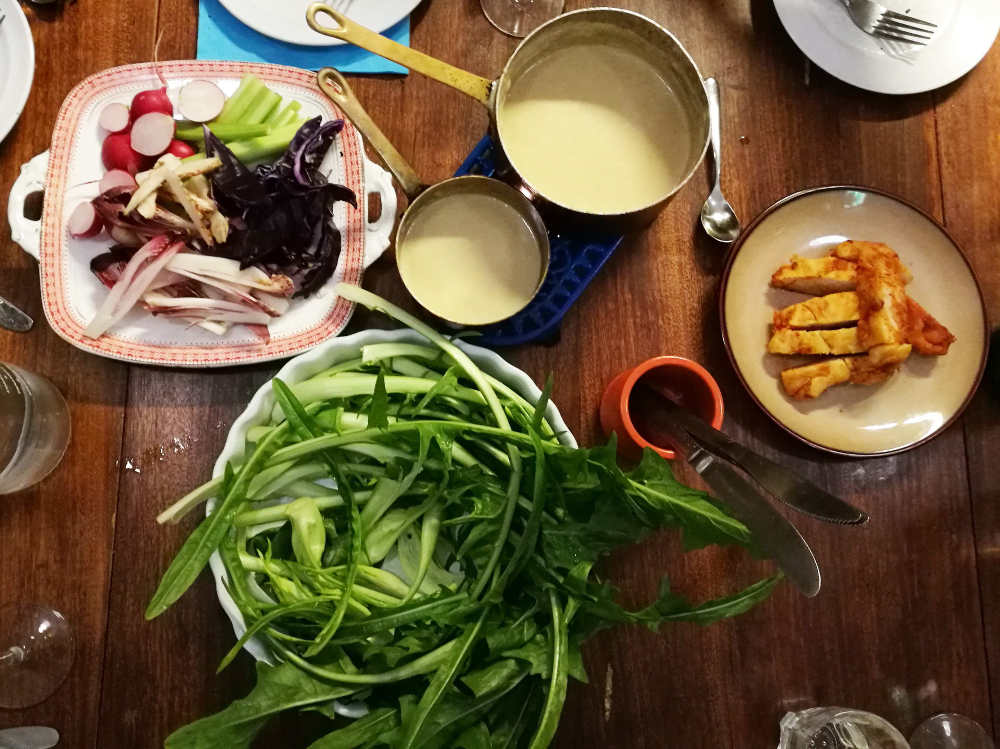
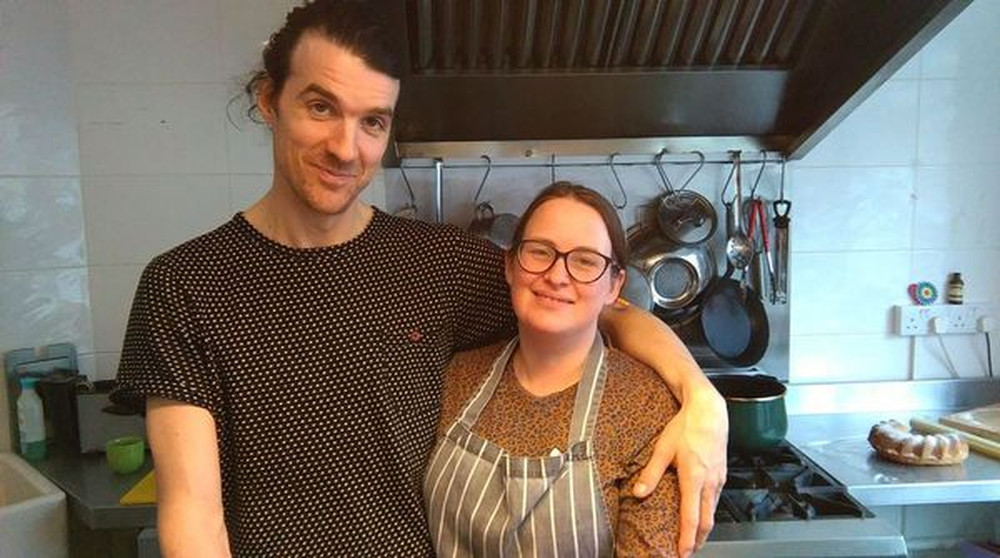
Dee Laffan talks ‘Root to Tip’ sustainability
Love them or loathe them we are all influenced by trends, whether it’s fashion or food. They trickle down until they find their way into our wardrobes or onto our plates; the popularity of avocados being one notable global food trend recently – you know it has spiked when someone tries to serve coffee in it – which unfortunately has had detrimental effects for the growers in Peru, Chile, Mexico, New Zealand and California.
Proof that a trend can cause havoc to communities, economies and even ecosystems, due to mass demand. Sustainability has to be at the forefront of our food ethos globally, otherwise more incidents of this nature will occur.
Thankfully, sustainability is rising in popularity globally. Not that ‘sustainability’ and ‘popularity’ are two words that should really ever be used in tandem, but nonetheless the drive against food waste is making people more food aware - and this has caused another food trend, root-to-tip eating, one that will hopefully not be short-lived and can be adopted to become the norm.
In fact, like nose-to-tail butchery, root-to-tip eating is not a new concept; historically, using every part of vegetables - using vegetable off-cuts to make stock and eating root greens as part of a meal - was the norm, but in a time of over consumption and when food production is at an all-time high, these older methods have been by-passed, like so many others.
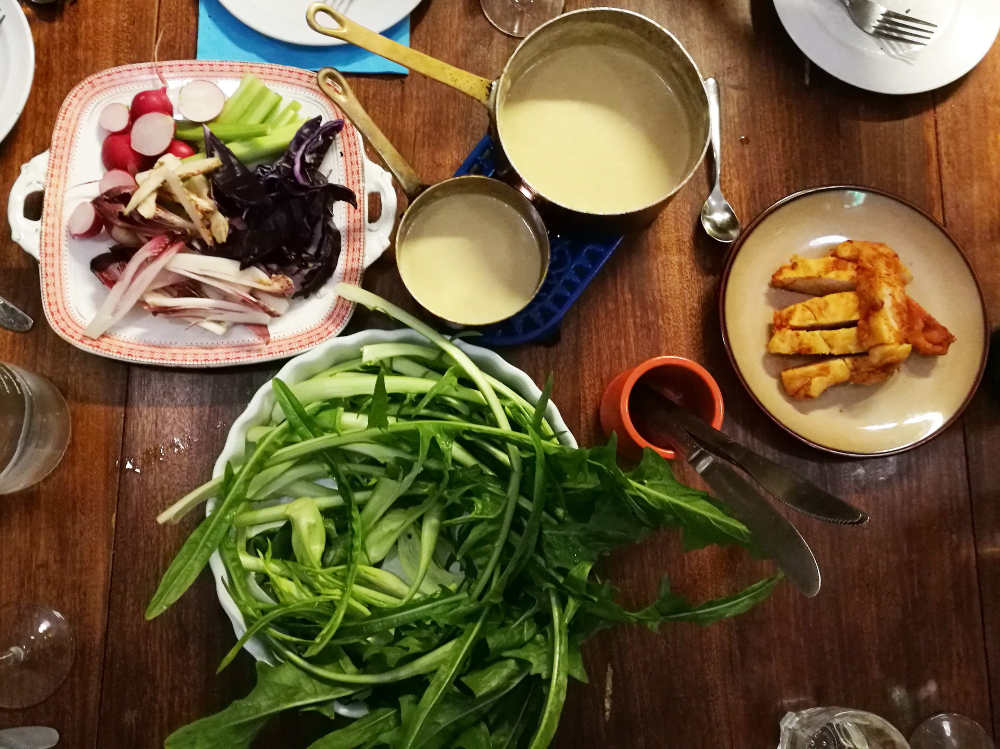
When tasting the lesser-used vegetables and lesser-used parts of them, the flavours are undeniable and also create wonderful texture in a dish. Vegetable tops, such as carrot and radish tops and turnip and beetroot greens, are old favourites that are now finding their way into modern menus.
“Food is such a big thing now, everyone is conscious of what they are eating,” said Ken Doherty of Assassination Custard, on Kevin Street Lower in Dublin 8. With his partner Gwen McGrath (pictured above right), Ken owns and runs this restaurant which has earned critical acclaim for its food and their use of vegetables on the menu.
“Maybe it’s because we’ve gone as far as we can go with other foods, so you go back to the simple things that people want. You come back to what is easy and what was here before. When you buy vegetables now, you’ll see veg that you wouldn’t have seen 10 years ago, but would have seen maybe 50 years ago,” Ken explained.
“For example, we always have dandelion leaves on the menu and people ask us all the time ‘did you pick those out of your garden?’ Of course there’s a difference between the cultivated ones we use in the restaurant and the ones that grow in grass in gardens, but they are much the same. People are even still amazed by wild garlic and when they get it in our restaurant, they ask why we’re not eating it all the time [when it’s in season].”
“We are very aware of waste in Assassination Custard. When Gwen and I travelled, we saw how people in other countries don’t waste vegetables; turnip tops and dandelion leaves are prized ingredients in Turkey and Italy,” Ken commented.
“We try to show off the vegetables as the star on our menu, on which we’d have 7-9 dishes. The first one could be a quick one like pickles, which are preserved and fermented, then the main dishes will be small vegetable dishes such as a salad of sliced Marmande tomatoes, simply served with oil and salt; bitter leaves (radicchio, chicory, red or Belgian endives) cooked in lard and drizzled with walnuts and a dressing made with lard and vinegar; wild garlic and Labneh (strained yoghurt) with Pistachios or anchovies; ragged jack kale blanched with black garlic; and Thoran, a vegan dish from Kerala in southern India, of raw beetroot grated into the pan, with mustard seeds and curry leaves and cooked in coconut oil, topped with coconut yoghurt.”
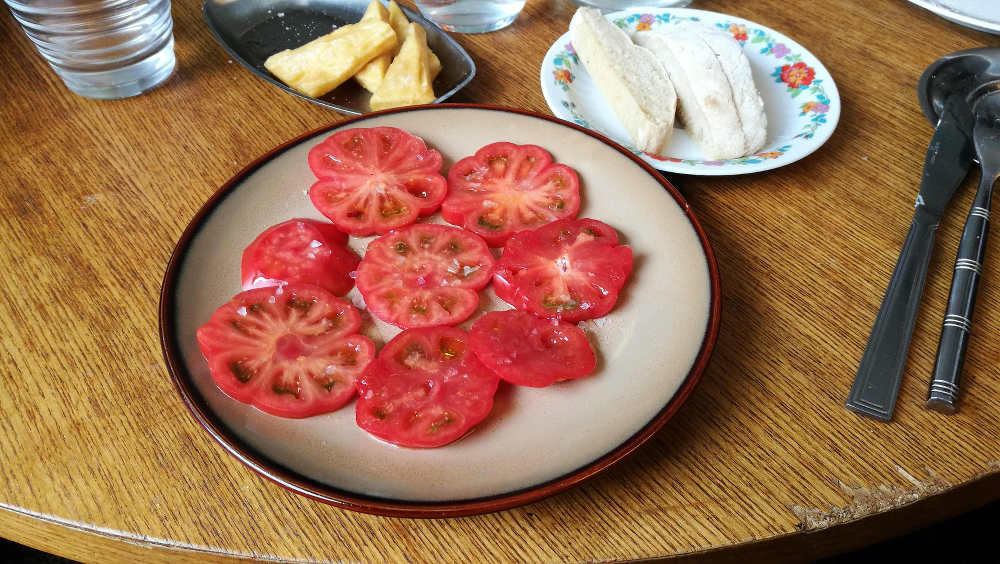
“We could all be eating root to tip and there are lots of restaurants that do this,” Ken explained. “But also it has to do with control, over the produce you use and your connection to it. Speaking to your veg supplier, for example - I get my veg from McNally’s, Patrick and Jenny - and asking them what’s going to be in and seasonal and buying veg that way so you can use it to its best, highlighting the flavour.”
Purchasing vegetables this way is definitely more sustainable, having the connection from farm to fork is important and makes us more food conscious; where food comes from should be an important decider in purchases, with sourcing and labelling coming into play also.
Assassination Custard, 19A Kevin Street Lower, Wood Quay, Dublin 8.
www.facebook.com/assassinationcustard
---
Dee Laffan is a freelance food writer and editor. Formerly editor of Easy Food magazine, she has written for the Irish Independent and Sunday Independent. She is a proud supporter of Irish producers and their products, and takes part in judging for food competitions including Blas na hÉireann and the Great Taste Awards. She is a member of the Irish Food Writers' Guild and secretary for Slow Food Dublin. Twitter @deelaffan
Economusee
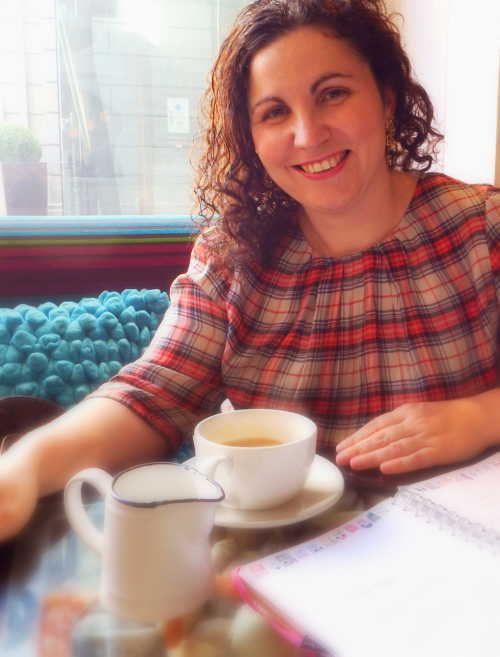
Barbara Collins introduces Northern Ireland’s newest members of Economusée, an international network of artisans renowned for their excellence.

Broughgammon Farm in Ballycastle and Hillstown Farm in Randalstown are the latest members of Food NI to join the Économusée group, an international network of artisans renowned for their excellence.
The ÉCONOMUSÉE Craft Reach Northern Europe Project sees the combination of culture, craft and tourism as local artisans open their doors to visitors to watch them at work and learn about the heritage and traditions of their skill. Canada, Norway, Greenland, Iceland, The Faroe Islands, Sweden, Ireland and Northern Ireland are all partners involved in this initiative, which was developed in Québec. By March 2018 there will be 93 Économusée workshops across the 8 partner countries.
Each ÉCONOMUSÉE is carefully concocted to make your visit memorable. Whether it's outside on the porch, inside the front doors, or woven through the garden, the RECEPTION area is where you meet the artisan or one of their helpers, and get oriented to their trade and to the working studio you're about to explore.
The Cole family at Broughgammon Farm in Ballycastle, Co. Antrim describe themselves as “forward-thinking farmers” (and are winners of a Euro-Toques Food Award this year, see Special Irish Foods & the People Who Make Them). Charlie Cole started producing goat kid meat in 2011 and has now progressed to supplying high-welfare rose veal and seasonal wild game. These ingredients make up the main protein elements in their very popular street food offerings to be found at events across the island of Ireland. They run Good Life courses and are keen environmentalists. There is a small farm-shop and butchery on site.

Hillstown Brewery in Randalstown, Co. Antrim has also joined the fold. Here you can see up close how this traditional working farm has diversified to meet Northern Ireland’s growing demand for artisan products including craft beer and Wagyu-style beef, fed with Hillstown’s own brews. You can try and buy produce from the brewery and farm at the café and farm shop complete with a red Massey Ferguson tractor on the roof.
Broighter Gold rapeseed oil in Limavady, Co.Londonderry is the longest-standing member to be awarded Économusée status in Northern Ireland. It is a working family farm. Depending on the time of year you visit, you may see some of the fields being planted or harvested while you are there. One of the award-winning oils contains 24 carat gold to symbolise a hoard of gold found on the land.
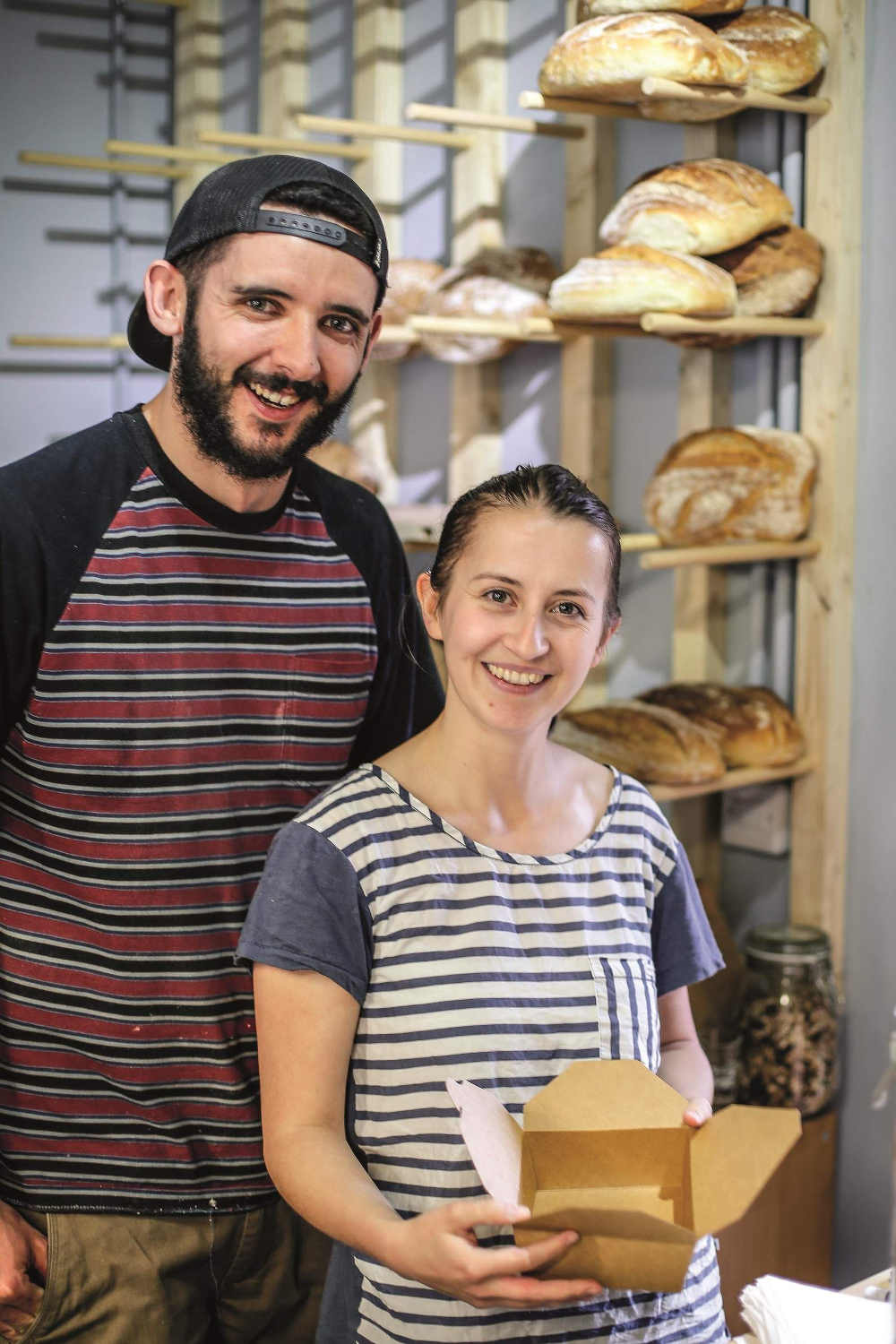
Also recently welcomed into the fold is the Ursa Minor Bakehouse in Ballycastle. Founders Ciara and Dara O hArtghaile discovered delights like sourdough loaves and friands while living for a year in New Zealand. Both are self-taught bakers. Dara learned how to create sourdough by trial and experimentation until he felt he had mastered the craft. Ciara had been baking all her life at home with her family. She now specialises in sweet bakes, in particular her adored friands. Keen to keep the business on a sustainable scale, the finished products have very low transport miles and are exclusively available in this area of the north coast.
More members are sure to follow. If you are interested, please contact Tiérna Mullan- tierna@ccght.org 028 2075 2100 / 07595 413 239 or Carole O’Kane- carole@ccght.org 028 2075 2100 / 07595 068 174.
---
 Barbara Collins is a BBC journalist and freelance food, travel and agricultural writer. She contributes regularly to Countryfile magazine, the Farmers Guardian, the Irish News, FFT and the Irish Mail on Sunday. She was Chief Food Writer for Flavour magazine. She is a member of both the UK and Irish Food Writers’ Guilds and splits her time between Belfast and Galway. Barbara also does menu consultancy and copywriting.
Barbara Collins is a BBC journalist and freelance food, travel and agricultural writer. She contributes regularly to Countryfile magazine, the Farmers Guardian, the Irish News, FFT and the Irish Mail on Sunday. She was Chief Food Writer for Flavour magazine. She is a member of both the UK and Irish Food Writers’ Guilds and splits her time between Belfast and Galway. Barbara also does menu consultancy and copywriting.
@thegoodchinaset
The Georgina Campbell Irish Breakfast Awards 2018 in association with Failte Ireland


It’s shaping up to be a great year for Irish hospitality and with accommodation bookings well up everywhere and eating out for breakfast and brunch now hugely popular - especially in cities - the quality of The Irish Breakfast is playing a new part in showcasing the stellar standards of our food and hospitality industries.
Acknowledging the role of this modest meal in creating some of Ireland’s most memorable food and hospitality experiences, some of the nation’s leading businesses and personalities have again received due recognition for their unstinting efforts at the second annual Georgina Campbell Irish Breakfast Awards in Association with Fáilte Ireland, which took place at the InterContinental Hotel, Dublin, on 22nd March 2018 and are also supported by RTE lyric fm.
The coveted Irish Breakfast Awards were presented in each of the Fáilte Ireland accommodation categories and others, including Visitor Attraction and Brunch - and, very importantly - in Breakfast Foods categories, ranging from Breakfast Meats and Dairy, to Cereals, Preserves and Irish Bread.
In addition, the results of the first in a series of important annual Irish Breakfast Surveys conducted by Georgina Campbell in association with Fáilte Ireland were announced on the day. As part of an effort to increase the overall quality of breakfast on offer to visitors nationally, a baseline survey was conducted with accommodation providers to determine quality baseline and increasing practises with which to measure improvements over time.
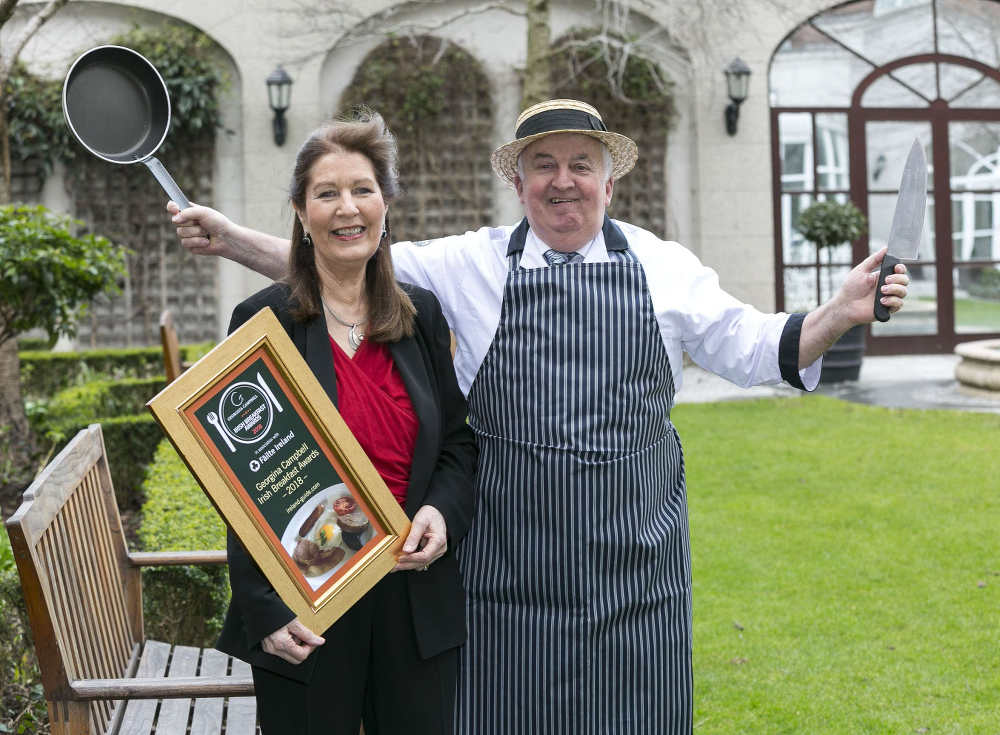
Topline findings include:
• Ireland’s two big tourism brands account for 71.9% of responses (Wild Atlantic Way, 45.9%; Ireland’s Ancient East, 26.0%), suggesting strongly that the Fáilte Ireland food tourism strategy is growing industry awareness of the value of offering a quality locally-focused breakfast. A high proportion of breakfast menus reflect their tourist region - 62.3% have at least three options and, of those, about half have five or more options that tell their local food story.
• A good breakfast is either ‘a key selling point’ (34.2%) and/or ‘a point of pride’(over 65%)
• Sample menu descriptions provided include a lot of producer name checking and descriptions like ‘free range’, ‘organic’, ‘local’, ‘homegrown’ and ‘homemade.’ Over two thirds of respondents (62.3%) said the traditional Irish Breakfast is highly rated (imparts ‘the holiday feeling’, ‘visitors enjoy the novelty’), with almost all (88.4%) conveying the traditional and/or local Irish food story through items on their breakfast menu – and over a third (33.6%) saying that over 75% of their breakfast ingredients are sourced locally (within 25km), and a similar number use produce from their own farm or garden.
“While there is plenty of work to be done over the coming three years to ensure a consistently high standard of breakfast across the board in Ireland, this survey indicates an infectious enthusiasm for engagement which will no doubt inspire others to up their game – and perhaps be among the award winners next year” Georgina commented
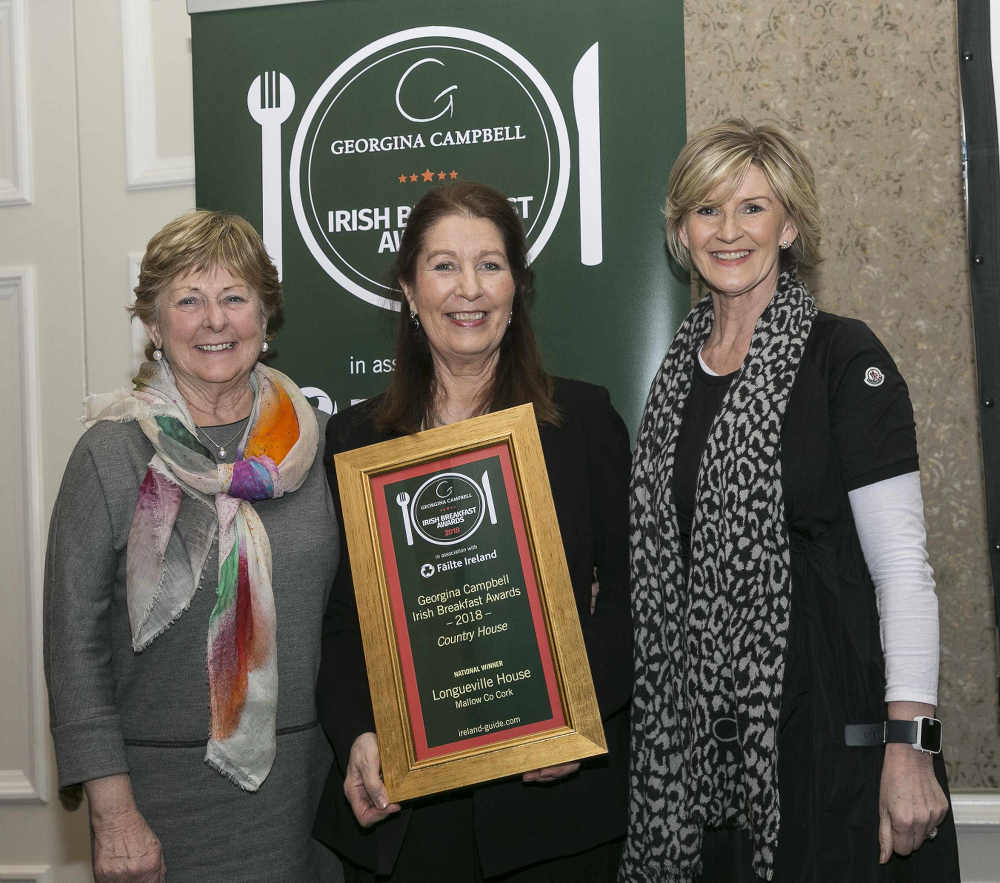
Darina Allen - who offers Breakfast and Brunch courses at Ballymaloe Cookery School - was the keynote speaker; Darina shared some of her invaluable insights into The Irish Breakfast, and how to make it a special experience, while Tara Kerry, Hospitality Manager at Fáilte Ireland explained their vision for the Irish Breakfast experience to become a highlight of a visit anywhere in Ireland.
Speaking about the Awards, Paul Keeley, Director of Commercial Development at Fáilte Ireland said:
“They say breakfast is the most important meal of the day and it’s certainly becoming a very important part of the visitor experience. We are delighted to partner with Georgina Campbell’s Irish Breakfast Awards to promote the authentic taste of Ireland that a quality Irish breakfast can provide to visitors. As part of Fáilte Ireland’s recently launched Food & Drink Strategy 2018-2023, we have highlighted the importance that food experiences play in determining overall visitor satisfaction. Quality experiences are now a major contributor to increasing holiday satisfaction, creating positive memories and driving positive word of mouth. Amongst those deciding on a holiday location, the expectation of good food is nearly as important as hospitality and today’s Awards are another important step forward in promoting the very best of Irish cuisine.”
So what’s different about these Awards? A lot, according to Georgina Campbell: “Aside from shining a spotlight on the meal that can only be described as the Cinderella of the Irish culinary scene, these are the only Awards [with the exception of the Euro-Toques Food Awards, which are nominated by member chefs] where the main aim is to link the best Irish food producers with those who prepare and serve food to the public. How often have you had a wonderful dinner in a hotel, only to be disappointed by breakfast? Our winners can inspire others to up their game and ultimately, we hope, lead to everyone being able to enjoy an authentic breakfast experience that reflects the locality.” Explaining the key role of the Irish Breakfast Foods categories, Georgina added, “Whether it’s a nine-course Tasting Menu in a top restaurant or a homely breakfast in a B&B, quality ingredients are the foundation of any good meal. These Awards recognise the quality Irish Breakfast Foods that can lift this simple meal into an expression of the local land - and seascape - and we want to see more of them on Irish breakfast menus.”
Georgina also paid tribute to the Galway - West of Ireland European Region of Gastronomy 2018 designation, saying, “This recognition is very well deserved - and, as shown by our Awards today, standards of food and hospitality are exceptionally high in this stunningly beautiful region.”
Regarding the selection process, Ms Campbell said “Georgina Campbell’s Ireland’s rigorous programme of anonymous assessment visits continues all year and the resulting reports are then fed through to the respected independent website, Ireland-guide.com. Award winners are nominated solely by the assessment team - and the wealth of information gathered is also the foundation of our printed guides, of which the latest is the recently published Georgina Campbell’s Ireland, The Best of the Best.”
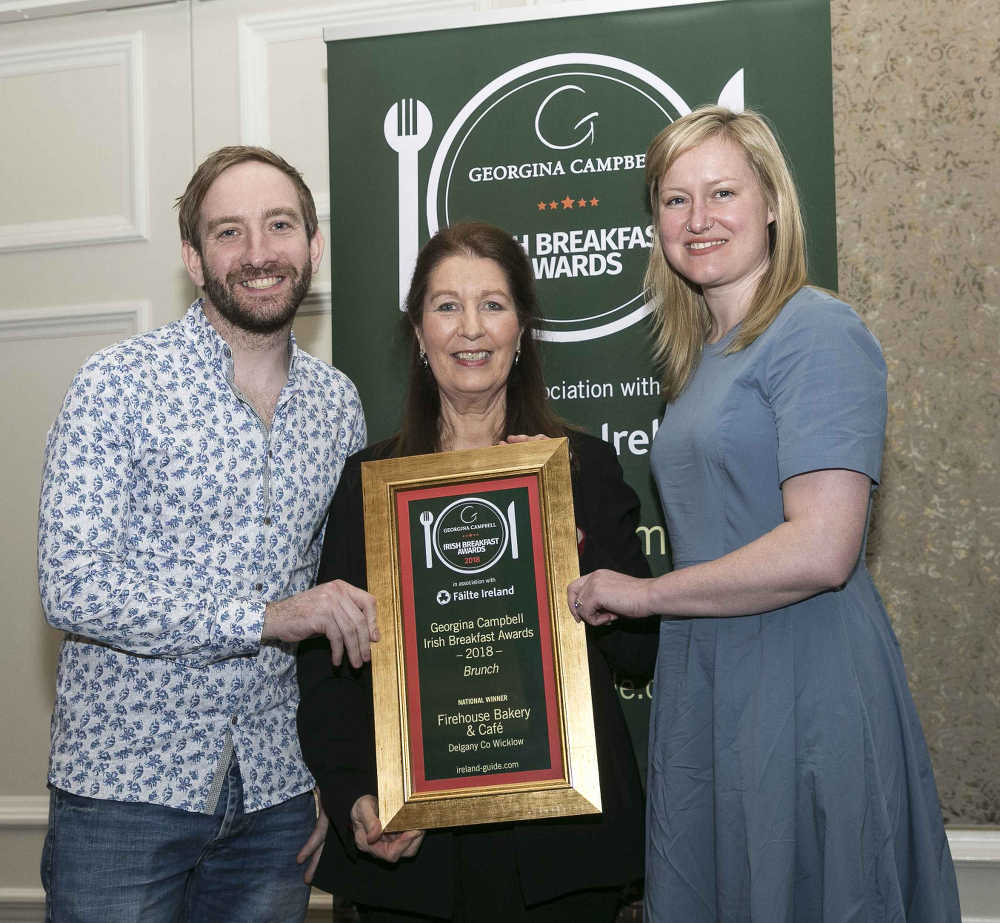
"Georgina Campbell Irish Breakfast Awards 2018" - In Association with Fáilte Ireland - WINNERS
5* HOTEL
Winner: Ashford Castle, Cong, Co Mayo
Highly Commended: Hayfield Manor, Cork
Highly Commended: The Marker Hotel, Dublin
4* HOTEL
Winner: Gregans Castle Hotel, Ballyvaughan, Co Clare
Highly Commended: Harvey’s Point, Lough Eske, Co Donegal
Highly Commended: Beech Hill Country House Hotel, Derry, Co Londonderry
3* HOTEL
Winner: Greenhills Hotel Conference & Leisure Centre, Limerick
Highly Commended: Schull Harbour Hotel, Schull, Co Cork
Highly Commended: Nox Hotel Galway, Galway
COUNTRY HOUSE
Winner: Longueville House, Mallow, Co Cork
Highly Commended: Carrig Country House & Restaurant, Killorglin, Co Kerry
Highly Commended: Whitepark House, Ballycastle, Co Antrim
GUESTHOUSE
Winner: Hanora’s Cottage Country Guesthouse & Restaurant, Ballymacarbry, Co Waterford
Highly Commended: Butler House, Kilkenny, Co Kilkenny
Highly Commended: The Olde Post Inn, Cloverhill, Co Cavan
B&B
Winner: Archways B&B, Rosslare, Co Wexford
Highly Commended: Coill Dara House B&B, Tubbercurry, Co Sligo
Highly Commended: Castle Murray House, Dunkineely, Co Donegal
WELCOME STANDARD (includes Historic Houses)
Winner: Currarevagh House Oughterard, Co Galway
Highly Commended: Rowan Tree Café Bar, Ennis, Co Clare
Highly Commended: Ghan House, Carlingford, Co Louth
VISITOR ATTRACTION
Winner: The Crawford Gallery Café, Cork
Highly Commended: The Garden Café @ Avoca, Ashford, Co Wicklow
Highly Commended: Glenarm Castle Walled Garden Tea Room, Glenarm, Co Antrim
BRUNCH
Winner: Firehouse Bakery& Café, Delgany, Co Wicklow
Highly Commended: Ely Bar & Brasserie, IFSC, Dublin 1
Highly Commended: Gather Restaurant, Tuam, Co Galway
IRISH BREAKFAST FOOD AWARDS
Meats: Kelly’s of Newport Artisan Butchers, Newport, Co Mayo
Fish: Connemara Smokehouse, Ballyconneely, Co Galway
Cereals: The Foods of Athenry, Athenry, Co Galway
Dairy: Cuinneog Irish Farmhouse Country Butter & Natural Buttermilk, Ballina, Co Mayo
Preserves: G’s Gourmet Jams, Abbeyleix, Co Laois
IRISH BREAD AWARD
Aherne's Seafood Restaurant & Accommodation, Youghal, Co Cork
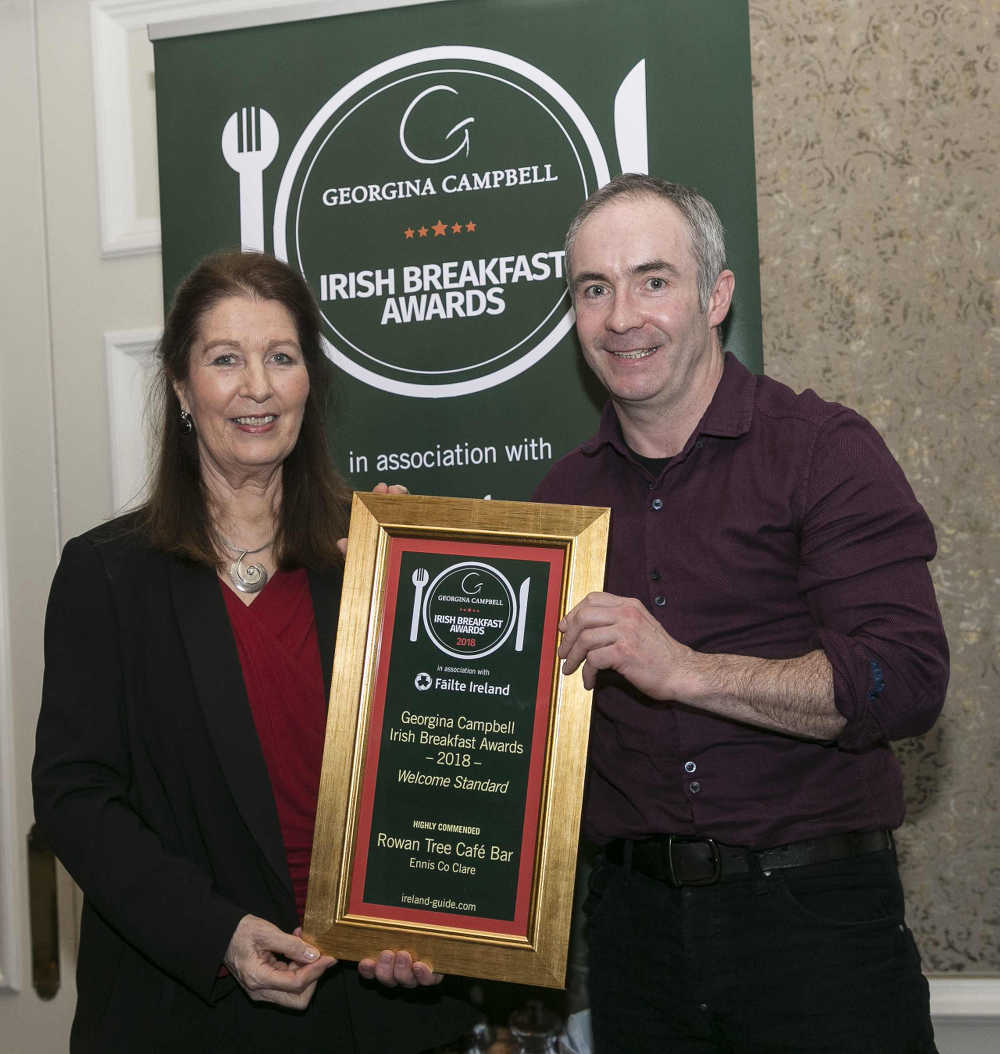
"Georgina Campbell Irish Breakfast Awards 2018" - In Association with Fáilte Ireland - CITATIONS
FIVE STAR HOTEL CATEGORY
Winner: Ashford Castle, Cong, Co Mayo
Breakfast at Ireland’s grandest castle hotel is served in the elegant George V Dining Room and, reflecting the overall experience at this extraordinary place, it is a high point in the day, offering a unique combination of tradition, a sense of place and the warmly professional service from outstanding staff that offsets any possible tendency to over formality Executive Head Chef Philippe Farineau is known for his support for Irish artisan producers and suppliers and the buffet offers as fine a range of fare as the pickiest guest could desire (and will especially please those with a hankering for a continental-style start to the day). The hot table service menu showcases local produce such as black and white puddings and sausages from the county's most famous butchers, Kelly's of Newport, in a classic Full Irish. Along with traditional grilled kippers and many other favourites, there's even a 'free-from' organic porridge (no egg, gluten or dairy) offered with a range of tempting extras including Irish Whiskey. And, while guests lay a delicious foundation for the day ahead, the charming captain of one of the two lake cruisers - the MV Isle of Inisfree and the MV Corrib Queen 2 - tours the tables taking bookings for what is sure to be a memorable outing on beautiful Lough Corrib, with its 365 islands and magnificent Connemara mountain backdrop. Just one of the many activities offered here, but an opportunity that should be snapped up - and that excellent breakfast will set the right mood to enjoy it to the full.
Highly Commended: Hayfield Manor Hotel, Cork
Set in gardens near University College Cork, Hayfield Manor is the city’s premier hotel and has the feel of a large period house. Breakfast is well-established as a particular highlight of any stay here and non-residents are welcome by reservation too, making it an appealing destination for informal morning business meetings. It is served in the fine dining restaurant, Orchids, which is attractively situated overlooking a courtyard garden and transformed for the morning service. The whole of the adjoining room is set up with a series of buffet tables offering a wide range of juices (orange and grapefruit, both freshly squeezed), fruits, cereals (including their own granola), baked goods, smoked fish, meats and cheeses - and, an eye-catching item, a full size honeycomb frame. A good hot menu is offered too - the Full Irish, with the Allshires’ splendid bacon and black pudding from Rosscarbery, is outstanding - and there's also a separate children's menu, which is very unusual at breakfast. With its excellent food and service, and soothing garden outlook this is a very pleasant place to start the day.
Highly Commended: The Marker Hotel, Grand Canal Square, Dublin 2
Overlooking the Grand Canal Basin, Dublin city’s most striking modern hotel has magnificent views from the upper floors and predictably impressive public spaces, which include a ground floor cocktail bar and brasserie. The Brasserie makes a great space for an outstanding breakfast, especially on a sunny day and the offering is vast. Baking is of an especially high standard, from the toast – served in a silver rack with pats of creamy Glenilen butter (deleted served) on little wooden boards – to sesame rolls, crusty slice-yourself loaves and choice of flaky croissants, Danish pastries and pains au chocolat. A quality hot breakfast is matched by a good selection of cold meats, cheeses and salad items. *Among many treats on the buffet, smoked Gubbeen manchego and salami lend an appealing Irish tone to the continental breakfast (you can even dress your salad with Llewellyn’s cider vinegar). You’ll also find Burren Smokehouse organic smoked salmon, Flahavan’s Porridge, Tommy Doherty’s sausages and even John Stone sirloin on the hot menu too. From the health-conscious to the treat-seeker there is something for everyone here and table service is wonderful, with well trained, engaging staff delivering toast in silver racks and tea in elegant silver teapots.
FOUR STAR HOTEL CATEGORY
Winner: Gregans Castle, Ballyvaughan, Co Clare
Simon and Freddie Haden’s quietly luxurious and restorative country house hotel offers simple West of Ireland joys like warming turf fires and views across the Burren landscape - and it is one of Ireland’s top food destinations. Renowned for food that is ‘modern European but distinctively Irish and unpretentious’, the Gregans team takes enormous pride in showcasing the wonderful foods of the locality and many of the producers are members of The Burren Food Trail. The memorable dining experience continues at breakfast, where the very best of local and Irish ingredients are treated with the greatest respect. The cold buffet is especially impressive for its informative labelling as much as for the careful selection of the foods on display, which showcase special local products - including cheeses made nearby at Aillwee Cave, and Burren Smokehouse fish from Lisdoonvarna - alongside excellent produce from other areas, including Gubbeen charcuterie. Hot dishes are simple and perfectly executed, allowing the sheer quality of the food to star. All this, plus warmly efficient service from long serving local staff make breakfast at Gregans an experience to treasure.
Highly Commended: Harvey’s Point, Lough Eske, Donegal, Co Donegal
The Gysling family opened this stunningly located hotel on the shores of Lough Eske in 1989, and it’s now run by Marc Gysling and his wife Deirdre McGlone. Aside from the setting, it has many claims to fame including the increasingly luxurious accommodation, the special activity breaks offered throughout the year - and, its greatest USP, the engaging friendliness and helpfulness of the owners and staff. Good food has always been a key feature too - and that includes a very good breakfast, served in The Restaurant with its lovely lake view. Highlights include an outstanding buffet (featuring, of course, Granny Gysling's bircher muesli among many temptations); a fine rendition of The Irish Breakfast, including famed McGettigan's sausages from Donegal Town; a chef's station where a splendid ham is freshly carved and pancakes and eggs are cooked to your liking; and fish dishes (fresh and smoked) cooked to order from the table service menu. Service, as always at Harvey's Point, is impeccable and good humoured - a great start to the day.
Highly Commended: Beech Hill Country House Hotel, Derry, Co Londonderry
Beautifully set in peaceful woodland and gardens, this charming hotel dates back to 1729 and proprietor Patsy O’Kane (very deserving recipient of an MBE in 2014, in recognition of her service to the tourism and hospitality industry) is a caring hostess who loves her hotel to bits. History matters here - US Marines had their headquarters here in World War II (a small museum of the US Marine Friendship Association still attracts interest) and the comfortable rooms give a home to Patsy’s ever-growing collection of antiques. Good food is also central to Patsy’s ethos and a very good breakfast is served in the Ardmore Restaurant, which has a conservatory area running along the garden side, overlooking water features and makes a lovely bright place to start the day. Quality comes first here and there are no gimmicks, just a menu offering many all-time favourites, excellent food (including seasonal produce from the restored walled gardens) cooked simply and well - and solicitous service from caring staff. Just what discerning guests want, in fact.
THREE STAR HOTEL CATEGORY
Winner: Greenhills Hotel, Conference & Leisure Centre, Limerick
It would be all too easy to miss this pleasant family-run hotel when speeding by on the Limerick - Shannon road, but it’s well worth a stop. Daphne Greene is the third generation of the family to head up front of house, while her brother Hugh is the Executive Head Chef with responsibility for all (deleted of) the hotel’s food, including a very good breakfast that’s available until late morning and popular with local people as well as residents. The Greenhills Hotel is renowned for homely touches like freshly baked cookies, and its well-earned reputation for good food is based on quality local produce. Reflecting its popularity, the breakfast menu is quite extensive with ‘Irish’ and ‘free range’ the dominant themes. A well-cooked Irish Breakfast is available in several variations, including a Mini Breakfast at just €6. Welcoming is the byword at this comfortable hotel, and that is just what’s needed to start the day - and to transform a straightforward breakfast into a meal that will be remembered, and for all the right reasons.
Highly Commended: Nox, Galway, Co Galway
With quirkily decorated public areas in vibrant tones of turquoise, orange and metallic, this youthful budget hotel just off the Headford Road is a lively spot and has filled a niche, becoming a popular meeting place for a casual bite to eat or a drink in the busy open-plan bar, where craft beers and cocktails are the thing. There’s an emphasis on leisure travel, including families, at weekends, but weekday guests appreciate the in-room business amenities, free parking - and good food. A quick look at the video on their website shows visitors that they’re serious about the breakfast served in Fork Restaurant, which is cleverly pitched as a meeting place for non-residents as well as hotel guests - and the tempting buffet display, in particular, never fails to impress.
Highly Commended: Schull Harbour Hotel, Schull, Co Cork
Stylish and comfortable, with excellent facilities, prices that are very reasonable for the standard offered - and good food - this privately owned hotel overlooking the harbour is cheerfully painted in true West Cork style, with colourful window boxes on the upper window ledges. It may not look very big from the outside, but that’s deceptive - and the extent of the amenities could come as a pleasant surprise, especially to families. The hotel's reputation for good food is growing - and, as well as wide ranging bar meals, evening dining and Sunday lunch in the restaurant at weekends, the tasty fare on offer includes a very good breakfast with plate service from the kitchen for the hot dishes. With friendly, welcoming staff always on hand, this hotel is a real asset to the area.
COUNTRY HOUSE CATEGORY
Winner: Longueville House, Mallow, Co Cork
There are a few special places where the breakfast offering is so outstanding that it’s a reason in itself for visiting. The O’Callaghan family’s beautiful yet relaxed 18th century house near Mallow is one of them, although there are plenty of other persuasive reasons too. It’s a luxurious and interesting place to stay, well located for exploring an exceptionally rewarding area including Cork city - and it’s remarkably self-sufficient. The river, farm and garden supply virtually all the fresh produce for farmer-chef-proprietor William O’Callaghan’s kitchen, and their artisan products - including Longueville House Cider and Irish Apple Brandy - and a goodly portion of that produce ends up on the breakfast menu or the splendid buffet. The ham and bacon, in particular, are exceptional and a visit to the pigs in their woodland idyll is a must. Smoked Blackwater salmon too, of course, free range eggs, delicious fruits in season, cloudy apple juice, honey, freshly baked breads and homemade preserves… it really is a one-off, a genuine taste of north Cork.
Highly Commended: Carrig Country House Caragh Lake Killorglin Co Kerry
Set in fine gardens with lake and mountain views, Frank and Mary Slattery’s Victorian country house was originally a hunting lodge and it’s a very attractive property with a relaxed atmosphere, charming sitting rooms where you can enjoy a drink beside the fire, and spacious bedrooms furnished with antiques. A ‘proper country house’, Carrig is a quietly luxurious and serene place to stay - a perfect escape from the modern world, and with excellent food, including a delicious breakfast served in the lovely lakeside dining room. It’s a house of little hideaways and surprises and this is reflected in the breakfast, where there is no grand display but modest arrangements of good things - especially fruits and freshly made bread and baked goods - on the buffet. A thoughtfully composed menu includes a well-sourced Irish Breakfast - Loughnane’s sausages, Kennelly’s bacon, Athea black and white puddings, Iveragh smoked salmon and, a real treat in season, grilled Caragh Lake trout with lemon butter. More than the sum of its parts, a relaxing Carrig House breakfast starts the day on a high.
Highly Commended: Whitepark House, Ballycastle, Antrim
On the A2 coastal road between the Giant’s Causeway and Carrick-a-Rede Rope Bridge, Bob and Siobhán Isles’s pretty old house is tucked away in a sylvan setting, well back from the road. It enjoys stunning views of Whitepark Bay, and a path just across the road leads down to the beautiful beach. Famous first and foremost for the warm welcome extended by the chatty and well-informed hosts, it’s an exceptional place to stay - stylish, cosy and luxuriously comfortable, and with Bob’s lovely gardens to enjoy as well. Gorgeous food too, including an immaculately presented fireside afternoon tea on arrival - and delicious breakfasts. Set up stylishly in a lovely conservatory overlooking Bob’s beloved gardens, there’s a real sense of occasion to breakfast at Whitepark. Vegetarian and vegan options are offered, the cooking and presentation is immaculate and Bob, apparently effortlessly, cooks, serves and chats to guests - while simultaneously giving all the low-down on unmissable places and the best local dining spots. A one off.
GUESTHOUSE CATEGORY
Winner: Hanora’s Cottage Country Guesthouse & Restaurant, Ballymacarbry, Nire Vally, Co Waterford
Mary Wall and her late husband Seamus took the Ireland’s Best Breakfast title at our 2002 Awards, and the extraordinary thing is that their award citation could be repeated today, almost to the word. Mary now runs the wonderful Hanora’s Cottage with her son Eoin and his wife Judith, both Euro-Toques chefs who use local foods from small suppliers whenever possible and credit them on their menus, and their enthusiasm is a tonic. Fans travel from far and wide to dine in the restaurant and many will choose to stay overnight especially to begin the day with Hanora’s legendary breakfast buffet. Set up over a series of tables and laid out artfully in baskets and Stephen Pearce bowls, it offers an amazing array of freshly made breads and baked treats (the legacy of Seamus, who was a baker), fruits both local and exotic, juices, cereals, porridge, cheeses… and that’s before you even think about excellent hot dishes which are carefully cooked to order. As we said in 2002: “This is truly a gargantuan feast, designed to see you many miles along the hills before you stop for a little packed lunch (prepared that morning) and ultimately return for dinner.”
Highly Commended: Butler House, Kilkenny
This handsome Georgian townhouse - the original Dower House of Kilkenny Castle - was restored (by Kilkenny Design) in the 1970s, in a style combining contemporary design and period architecture. Always a unique and conveniently central place to stay, it has recently undergone major improvements in all areas, including food. Breakfast was previously served in the Kilkenny Design Centre across the gardens, which was no hardship, but daytime food, including a wonderful breakfast, is now available here at the elegantly appointed Butler House Tea Room & Pantry. Chef Gerard Dunne delights in showcasing local produce including, for breakfast, oatmeal from the Little Mill, butchers sausages made with Butlers Farm free range pork, eggs from Fanningstown House (baked with Goatsbridge smoked trout, cream and chives, perhaps) and Highbank Orchard syrup (delicious with Buttermilk Pancakes and crispy bacon…), all served with delicious homemade breads and preserves. Enjoyed in such lovely surroundings, it adds up to a lovely sense of place - and a memorable experience.
Highly Commended: Olde Post Inn, Cloverhill, Co Cavan
A cut stone building set in neatly landscaped gardens, Gearoid and Tara Lynch’s atmospheric restaurant with rooms served as a post office until the 1970s. Gearoid, a former Commissioner General of Euro-Toques Ireland, is a chef who is committed to supporting local producers and showing respect for regional and seasonal foods, so any meal here, including breakfast, promises to be a true taste of Ireland. Tara manages front of house with quiet efficiency and, after dinner, residents’ rooms are only yards from the fire in the cosy bar…Like everything at the Olde Post Inn, breakfast is a thoughtfully considered meal, based on meticulously sourced ingredients (carefully prepared and cooked - and served with professionalism and good humour. But an unusual aspect of the Olde Post Inn is that Gearoid is coeliac and the author of a successful cookery book, 'My Gluten-Free Kitchen', so coeliac guests will feel especially well looked after here. Gluten-free alternatives to all of the baked treats are available, including breakfast, and staff are well informed. You certainly don’t have to be coeliac to relish a visit here, but it is an exceptionally relaxing experience for anyone restricted to a gluten-free diet, as they are in such good hands.
B&B CATEGORY
Winner: Archways B&B Rosslare Co Wexford
Eileen and Chris Hadlington’s smart modern B&B just outside Tagoat is an exceptional place to stay, offering superb food and genuine hospitality. They constantly find new ways to ensure a memorable stay for their guests, notably through outstanding food. A former restaurateur, Chris is an inspired chef - residents’ dinner is a real treat and so is breakfast, which has previously received our B&B Breakfast of the Year Award and it just goes on getting better. Seasonal, local and home-produced is the ethos and his own rare breed pork sausages will be on the menu, alongside esteemed Wexford producer Pat O’Neill’s dry-cured bacon (recipient of one of our Irish Breakfast Food Awards last year) and other local treats. The Slaney Breakfast, for example, showcases Meyler’s locally smoked Irish salmon, and The Kilmore Breakfast features poached smoked fish (haddock, hake or cod) with poached eggs and Eileen’s homemade brown bread. And there is much more, including special orders like devilled kidneys (aaah…) and kedgeree. Early breakfast (and late night snacks) available for the ferry too. This is a place to plan your holiday around.
Highly Commended: Coill Dara House B&B, Tubbercurry, Co Sligo
Patricia and Roger McCarrick’s beautiful Georgian-style family home, Coill Dara (Wood of Oak), is set in an acre of landscaped gardens on a small sheep farm on the edge of Tubbercurry. Yet, despite its wonderfully away-from-it- all rural ambience, the walk to town takes just five minutes and Ireland West Airport (Knock) is only 15 minutes’ drive. Luxurious, family-friendly and pet friendly, this delightful place also offers excellent food, including a very good breakfast: a sideboard full of all kinds of fresh fruit, cereals and health grains as well as hot dishes prepared to order - including a perfectly cooked Irish breakfast, which is also available in a mini version. Everything is delicious and beautifully presented - and packed lunches can be provided too. No ordinary B&B - and, like so many places in the west, what guests love most is the genuine welcome and natural friendliness of their hosts.
Highly Commended: Castle Murray House, St. John’s Point, Dunkineely, Co Donegal
Most of the stylish bedrooms at Marguerite Howley and Peter Lawler’s beautifully located clifftop property have wonderful sea and coastal views. It has a well-deserved reputation as a relaxing hideaway, and, although the once-famous restaurant no longer operates, a delicious breakfast - and dinner for residents on some evenings - is served there, on the seaward corner of the hotel, overlooking the sea and the ruined castle after which the house is named. Set up with polished wooden tables and comfortable chairs, the dining area is welcoming and a cheerful Good Morning blackboard heralds an excellent breakfast, offering a short but engaging choice - for traditionalists there’s creamy whiskey porridge (either Jameson or Bushmills) and then The Full Irish “Farm to Fork” . Then there’s also Pete’s in-house smoked mackerel with free range scrambled eggs and lemon and garden herb Donegal rapeseed oil, or pancakes with organic maple syrup. Traditional homemade brown bread, fruit scones and banana bread and homemade preserves are also delicious and the whole experience is a treat. A very special place - and pet friendly too.
WELCOME STANDARD (INCLUDES HISTORIC HOUSES)
Winner: Currarevagh House, Oughterard, Co Galway
Tranquillity, trout and tea in the drawing room - these are the things that have always drawn guests back to Henry and Lucy Hodgson’s gracious, but not conventionally luxurious, early Victorian manor overlooking Lough Corrib. Offering old-fashioned service and hospitality, it’s more like a private house party than an hotel and country pursuits, especially fishing, are the ruling passion. Lucy, a Prue Leith trained cook, showcases fresh local produce in season, maintaining the Currarevagh motto ‘keep it simple, unfussy and ultimately delicious’. They don’t have a breakfast menu, but there’s always something interesting on offer - homemade kombucha, sourdough breads and natural yogurt are current favourites in the Currarevagh kitchen and there’s kedgeree most mornings too - and a particular treat would be fresh trout from the Corrib which is offered “quite often when available”. Not something that can be promised, of course, but what a special experience if you’re there at the right time. A real country house, doing things in season, Currarevagh is special.
Highly Commended Rowan Tree Café Bar, Ennis, Co Clare
Beside Harmony Bridge in the centre of Ennis, Brian O'Neill and Marianne Maurer’s delightful Rowan Tree is a boutique hostel as well as a café and bar and has some outside tables overlooking the river in this attractive market town. The menu declares its ethics – local food where possible, properly sourced food, the best ingredients and something for vegetarians and vegans, too - and, while the weekday breakfast for residents is a complimentary light snack, the food philosophy extends to the extensive Sunday Brunch that has become a favourite destination in the town. Smaller dishes range from the Rowan Tree vegan granola to the more indulgent Doolin crab and salmon paté, while more substantial dishes include classic brunch favourites, often with a twist (O’Connor spelt breakfast bap, Rowan Tree breakfast pizza), more lunch-style dishes like poached salmon wrapped in Parma ham - and delicious homemade cakes for afters. Great Illy coffee too - everything they do at the Rowan Tree feels just right, and Sunday Brunch is up there with the best.
Highly Commended: Ghan House, Carlingford, Co Louth
Conveniently located just an hour from Dublin or Belfast airports, the Carroll family's 18th century house is attractively situated in its own walled grounds on the edge of Carlingford village, with views across the lough to the Mountains of Mourne. It is currently operated by Paul Carroll whose mother, Joyce, established one of Ireland's first cookery schools here. She is still responsible for all the jams (about six) and marmalades served at Ghan House, and her recipes are behind many of the treats that appear on the breakfast menu, including 'Joyce's Homemade Muesli' (a particularly interesting mixture, with grated fruits and honey added to the basic mix each day), the house wheaten bread and the dried fruit compotes. The hot choices include classic poached kipper with butter, free range egg dishes and The Ghan House Fry, featuring local Cooley sausage and free range eggs, alongside Kelly's black and white pudding, tomato and mushroom. ‘Free from’ dishes are also available for coeliacs, vegetarians and vegans. Breakfast is open to non-residents and well worth considering for business or before heading up for a day in the hills.
VISITOR ATTRACTION
Winner: Crawford Gallery Café, Cork
One of Cork city’s favourite informal eating places since it was opened by the legendary Myrtle Allen in 1986, this atmospheric outpost of Ballymaloe features artwork from the Crawford Collection and is currently run with style by Sineád Doran. Her seasonal menus continue to reflect the Ballymaloe philosophy that food is precious and should be handled carefully, and everything sings with flavour. The Crawford Gallery Café breakfast has become an institution in itself, especially on Saturday. The number one item is the Crawford Full Irish - featuring McCarthy's of Kanturk bacon, Rosscarbery sausages and puddings, O'Brien's free-range eggs, it is served with freshly squeezed orange juice and toasted Pana Bread - but there are healthy vegetarian options too. An indulgent bowl of creamy porridge, for example, and a whole range of simply delicious egg dishes - Eggs Benedict (‘best ever’), Eggs Royale, Eggs Florentine, all feature or you can just have a couple of eggs poached, fried or scrambled on sourdough toast, perhaps with a base of magnificent Ballyhoura mushrooms. The cooking and service are terrific and impeccably sourced local ingredients listed on the menu include Frank Hederman's smoked salmon, which is always a treat. Tea is by Barry’s, of course, coffees by Golden Bean roastery at Ballymaloe and there's a good choice of other drinks too, including homemade lemonade and elderflower cordial, and Crinnaghtaun apple juice. Definitely not your average ‘visitor attraction’ experience.
Highly Commended: The Garden Café @ Avoca, Mount Usher, Ashford Co Wicklow
At the entrance to Mount Usher, the Garden Café @ Avoca is the key (main) feature of a low key shopping courtyard - and a charming destination for visitors to this scenic area. Local and seasonal is the mantra for the fresh and delicious daytime meals that are the foundation of the Avoca reputation, notably irresistible home baking and a mix of traditional and eclectic influences. Offered with delicious homemade preserves, the morning’s freshly baked breads, scones and pastries would themselves be reason enough to drop in for a light bite and a cuppa from the tea and coffee menu, but there’s also organic granola or power seed porridge and plenty of more substantial fare. This includes The Mount Usher Breakfast (with meats from Higgins butchers) and variations - all carefully cooked and presented with typical Avoca verve, often garnished with fruit or organic leaves. Unusually, there’s a pick’n’mix range of breakfast favourites - tasty grilled back bacon, scrambled Bushfarm free-range eggs, Higgins black pudding, Millbank oaked smoked salmon from Co Cork - offered as sides, so you can build your own breakfast plate. All of this, plus well trained staff and stylish surroundings, make breakfast here a good decision before visiting the beautiful Robinsonian Mount Usher Gardens. All round, the Garden Café @ Avoca is a wonderful asset to Mount Usher and the area - and always well worth a detour.
Highly Commended: Glenarm Castle Walled Garden Tea Room, Glenarm, Co Antrim
Glenarm Castle, ancestral home of the McDonnell family, Earls of Antrim, offers much of interest including The Walled Garden, and the Castle itself is also open several times a year. The Tea Room is open to the general public all year and it makes a lovely stopping off place when touring this scenic coast. It’s a charming setup in the old Mushroom House beside the kitchen garden and, following a recent revamp, it now has several very pleasant rooms to choose from - and there’s a choice of outside seating too, one being in the inner gardens for customers with tickets. Glenarm Castle is known for its Organic Farm, which produces superb organic lamb and pedigree Shorthorn Beef, so it is natural that organic and local ingredients should take centre stage. There are organic teas and good coffees and Head Chef Sean Moran and his team provide excellent all day food, including a breakfast /brunch menu that sets garden visitors up for the day and offers plenty of well-made favourites - Eggs Benedict, for example, with sourdough toast and baked ham, or a classic Castle Breakfast - and the Glenarm Organic Smoked Salmon sandwich is always popular. There is also a new gift shop near the Tea Room, selling quality items including Glenarm Castle merchandise and gardening gifts. A great place to know about when visiting Northern Ireland’s most famous tourist area.
BRUNCH
Winner: Firehouse Bakery & Café Delgany, Co Wicklow
One of a clutch of businesses housed in The Delgany (the stylishly renovated former Delgany Inn), Patrick Ryan and Laura Moore’s superb Firehouse Bakery - a sister of their Bread School on Heir Island, West Cork - produces outstanding artisan breads, pastries and pizza and you can be sure of a seriously tasty casual bite at the Firehouse Café, including a terrific breakfast / brunch every day. The quality is superb and, at the lighter end of the spectrum, there are variations on healthy homemade granola, yogurt and various fruits, or Big Ger’s power porridge. Those with a hankering for traditional bacon flavours will be very happy with something like the Firehouse Bacon Butty, featuring Hick’s bacon in the starring role. It’s all very atmospheric with the pizza oven taking centre stage- a great place to know about if you’re visiting beautiful Co Wicklow, or as a destination in its own right.
Highly Commended: Ely Bar & Brasserie, IFSC, Dublin 1
While most famous for their amazing the wine list - which runs to more than 500 bottles and offers almost 100 wines by the glass - the top-notch organic food (much of it from the Robson family’s organic farm in Co Clare), along with great coffee and relaxed service makes Erik and Michelle Robson’s contemporary venue a winner by day or night. A dashing younger sister to the original Ely wine bar on Ely Place, the stylish waterside atrium sits above spectacularly renovated 200-year-old wine vaults and includes a spacious heated outdoor terrace overlooking the Liffey - just the spot to enjoy a leisurely weekend brunch including classic treats like Dungarvan Bay oysters and the Ely organic Burren beef burger with Hegartys traditional cheddar and Burren bacon.
Highly Commended: Gather, Tuam, Co Galway
Thanks to their years of experience in the industry, the Flaherty siblings Siobhan (chef), Daragh (host) and Aoife (business manager) quickly built up a loyal clientele at their well-named Tuam restaurant after opening in December 2016. People gather here in great numbers to enjoy the great ingredients which Siobhan has gathered from local producers - and their breakfasts and weekend brunches, especially, are extremely popular. Regulars happily travel for dishes like baked free-range eggs with kale and wooded pig chorizo and in-house sourdough or their Full Irish (Castlemine Farm bacon and sausage, local eggs and mushrooms); vegetarian choices are excellent as well - pancakes with Velvet Cloud yogurt and berries, for example - and super coffee from Bell Lane too.
IRISH BREAKFAST FOODS - all in this category are Winners
MEATS: Kelly’s of Newport, Newport, Co Mayo
Quality meat products are the essential foundation of a good traditional Irish Breakfast - and it’s always a good sign to see Kelly’s of Newport on the menu. An excellent traditional butchers with a licensed abattoir where they slaughter all their own locally sourced lamb and beef, Kelly’s has been in the family since the 1930s and the larger-than-life Sean Kelly – the Mayo Person of the Year 2017 - is one of Ireland’s most innovative butchers and the founder of Mayo's first Économusée (working museum), which opened last autumn. Proud to ‘make up to a standard, not down to a price’, their range includes speciality sausages; a Wild Atlantic Way pudding (the magic ingredient is seaweed from the nearby shoreline); gluten free pudding - and even a vegetarian pudding. Many of their products are now widely distributed and available online, but people travel great distances to buy from the shop and have a bit of banter – and, perhaps, stay and eat some of their meats at Kelly’s Kitchen next door, run by Sean’s daughter Shauna.
FISH: Connemara Smokehouse, Ballyconneely, Co Galway
Smoked fish plays an important role in the Irish Breakfast - on the buffet and as a key ingredient in hot dishes such as smoked salmon with scrambled egg - but quality is paramount to avoid disappointment. Run by second generation smoker Graham Roberts and his wife Saoirse, the reputation for excellence of the beautifully located Connemara Smokehouse near Clifden is based on “following a simple recipe: fresh fish, natural ingredients, and traditional smoking methods that have stood the test of time.” Although most famous for smoked salmon, they produce a diverse range of excellent products, including traditional breakfast kippers. Connemara Smokehouse was Ireland’s first food Économusée (a sort of working museum, introducing visitors to traditional artisan production), and the whole process is demonstrated, with tastings, at smokehouse tours.
CEREALS: The Foods of Athenry, Athenry Co Galway
The hotel cereal buffet can be a dismal sight, especially for anyone looking for gluten-free, dairy-free or vegan options. But the excellent products made by former dairy farmers Paul and Siobhan Lawless’s ‘free-from’ farmhouse bakery - started in a converted bicycle shed in 2000 - are a boon. Specialising in healthily delicious home bakes with no additives (including salt and yeast), they have earned a national reputation, notably for their gluten-free range, which is made in a dedicated facility and registered with the Coeliac Society. The range includes granolas, muesli and porridge and its reputation is well deserved.
DAIRY: Cuinneog Irish Farmhouse Country Butter and Natural Buttermilk Castlebar Co Mayo
Thanks to the Butler family (deleted comma) who farm near Castlebar, Mayo is home to some once-familiar dairy products, which had all but disappeared but are now beginning to be produced again – Irish farmhouse country butter and natural buttermilk. These are fuller-flavoured products than the commercial norm and the butter, especially, has deservedly caught the public imagination, because country butter was once made routinely on most small-scale Irish dairy farms - and seeing Cuinneog Irish Farmhouse Country Butter featured on menus is always a sign of a chef who cares.
PRESERVES: G’s Gourmet Jams, Abbeyleix, Co Laois
Serving homemade preserves is a great USP for many hospitality businesses, and Helen Gee’s traditional handmade jams, marmalades and relishes are a match for them. Famous for successfully capturing that homemade flavour, the secret of this good old-fashioned product with natural flavour is simple: fresh fruits, including home grown rhubarb and raspberries, are used, with no additives - and they’re genuinely handmade, which means a lot of people busy stirring steaming jam pans. The G’s range includes four excellent marmalades (Breakfast; Seville, Three Fruit; Irish Whiskey) and all the family are involved with the business, growing it carefully to protect the real homemade flavours that are their pride and joy.
IRISH BREAD AWARD: Aherne's Townhouse & Seafood Bar, Youghal, Co Cork
The superb, moist, malty Aherne’s Brown Bread from the FitzGibbon family’s Aherne's Townhouse & Seafood Bar in Youghal is a highlight of the excellent breakfast they serve to overnight guests and the perfect complement to seafood. It is made with fresh yeast but, although the yeast and treacle give it excellent flavour, it contains no 'strong' flour or fat and involves no kneading, so it is close to the Irish soda bread tradition in terms of method and final texture. It is also cooked at a lower temperature than most breads, hence its exceptional moistness. David FitzGibbon uses Kells wholemeal flour from the Mosse family’s Little Mill in Bennetsbridge, Co Kilkenny and he gets yeast from a local baker.
Nominate Ireland's Best Brunch

Brunch: an unhurried meal between meals, an indulgent late breakfast or early lunch, a growing weekend staple and a social occasion to dissect or prolong the night before. However you like your brunch, we’re keen to hear about it!
%20Bord%20Bia.jpg)
Nominations for the Irish Dairy Complete Natural Brunch Award at our annual Irish Breakfast Awards are now open and we want to hear from you about your favourite brunch and brunch spot.
An excellent brunch is about far more than Instagrammable eggs and avocado on toast. The Irish Breakfast Awards, in association with Fáilte Ireland, rewards excellence in brunches served in all kinds of establishments throughout Ireland and we’ve partnered with Irish Dairy The Complete Natural to find the best Brunch in Ireland as part of the 2019 awards, taking place on February 19th.
Nominations are open to anyone 18+ in the 32 counties of Ireland. Establishments serving brunch are eligible to nominate themselves. The shortlist and winner will be selected by our team of independent assessors, and all nominations judged will be given full and fair consideration.
To nominate your favourite brunch spot, email office@ireland-guide.com with the Subject line ‘Irish Dairy The Complete Natural Brunch Award Nomination’ and tell us the following:
 1. Your Full Name & Address and phone number
1. Your Full Name & Address and phone number
2. Your county
3. Name of establishment you’re nominating
4. A paragraph (max 300 words) outlining why you’re nominating the brunch at this establishment - what makes it so special or enjoyable, how good, innovative or unique the brunch offering is, the local and other quality ingredients used, the level of service etc. Give us as much detail as possible!
5. A photograph, which illustrates your reason for nominating this establishment. Menu in support of nomination also welcome.
Nominations close on Tuesday 29 January at 11pm.
The Irish Dairy The Complete Natural Brunch Award is one of multiple categories at the Irish Breakfast Awards, all assessed independently and nominated by Georgina Campbell’s renowned team of assessors.

Irish Dairy - The Complete Natural is the consumer facing representation of the National Dairy Council. It has been created to promote the natural benefits that dairy offers the consumer as opposed to other alternative foods with many ingredients. Dairy is a completely natural product produced by grass fed cows. It is highly nutritious and a complete food with eight nutrients in a glass. For further information please visit www.thecompletenatural.ie
For Terms & Conditions, click here
Terms & Conditions
Irish Dairy The Complete Natural Brunch Award at the Georgina Campbell Irish Breakfast Awards, in association with Failte Ireland
Terms & Conditions
Nominations are now open for the Irish Dairy The Complete Natural Best Brunch Award at the Georgina Campbell Irish Breakfast Awards.
The following are the terms and conditions of the nomination process and by nominating, you agree to be bound as hereinafter set out.
1. Georgina Campbell’s decision in relation to selection of shortlist and winner is final and no correspondence will be entered into.
2. Competition entrants must be over 18 years old and resident in the Republic of Ireland or Northern Ireland in order to nominate a winner.
3. Nominations for this awards can be made by anyone over 18, including owners or staff of the nominated business, via an email submission to the Georgina Campbell team. The nominator is liable for the content of their nomination. Nominations must be made in good faith.
4. Nominations must be completed with full details, including nominator´s full name & address and phone number to ensure the assessment team can validate the nomination is for a real establishment.
5. The nominations must be received within the official nomination time period and before the closing date & time as advised by the organisers.
6. Nominators are encouraged to include as much detail about the brunch at their nominee’s establishment as possible within the word count limit (max 300 words). A photograph to support the nomination is required, and menus are also welcome.
7. Each nomination will be reviewed by Georgina Campbell’s independent assessment team. The ultimate winner of the award will be chosen by Georgina Campbell, in consultation with her independent assessment team, and all nominations received via this nominations call will be considered fully & fairly.
8. The Award: The winner of the Irish Dairy The Complete Natural Brunch Award will be invited to the Irish Breakfast Awards 2019 at the InterContinental Hotel Dublin to pick up their Award Certificate. Travel and Hotel costs will not be supplied.
9. There is no cash alternative to the stated award.
10. Supply of inaccurate information will disqualify competition entrants from receiving the award.
11. Georgina Campbell and Irish Dairy The Complete Natural reserve the right to change award details without notice.
12. Acceptance of the award constitutes permission to use the relevant winners name, establishment name and likeness for purpose of advertising, promotion or publicity in any media without additional compensation or any liability for any loss or damage incurred.
13. Georgina Campbell and Irish Dairy The Complete Natural reserve the right to change these terms and conditions at its sole discretion. Any such change to the terms and conditions will be effective to all nominations once included in the text of these terms and conditions and posted online.
14. Any entrants found to be in disregard of the above rules will be disqualified.
15. Georgina Campbell and Irish Dairy the Complete Natural reserve the right to disqualify any contestant for any reason whatsoever at their sole discretion.
16. Neither Georgina Campbell nor Irish Dairy The Complete Natural nor their affiliates are responsible for printing or typographical errors in any materials relating to promotions: fraudulent, late, misdirected, incomplete or altered entries; or entries which are processed late or incorrectly or are lost due to computer or other technical malfunction.
17. Georgina Campbell and Irish Dairy The Complete Natural reserve the right to cancel or amend the nominations process or the award if fraud or technical failure compromises the integrity of any promotion as determined by Georgina Campbell and Irish Dairy The Complete Natural.
18. Neither Georgina Campbell nor Irish Dairy The Complete Natural nor their agents or representatives accept any responsibility whatsoever for any death, injury or other damage, loss, expense or liability caused or arising as a result of taking the award or the use of the award or the non compliance with and terms and conditions attaching to the award or in the event that any third party supplying the award is no longer able to perform its obligations thereunder. Nor will NDC or GCuides have any liability or responsibility for any claim arising in connection with participation in or as a result of this nominations process.
19. Nomination of an establishment denotes acceptance of these terms and conditions and any additional specific terms and conditions which may be advertised.
The Georgina Campbell Irish Breakfast Awards 2019 in association with Failte Ireland
 2.jpg)
%202.jpg)
From 5* hotels to B&Bs and from cafés to country houses, the winners of the 2019 Georgina Campbell Irish Breakfast Awards in association with Fáilte Ireland were announced on Tuesday, February 19th.
Now in their third year, the Irish Breakfast Awards celebrate Ireland’s leading hospitality establishments and the people who strive to make the first meal of the day a particularly special experience for visitors and regulars alike. According to Georgina Campbell, one of Ireland’s foremost food and hospitality writers, the significance of the humble breakfast cannot be underestimated, and it is as important to Ireland’s reputation in food and tourism as a world-class hotel or a fine dining restaurant.
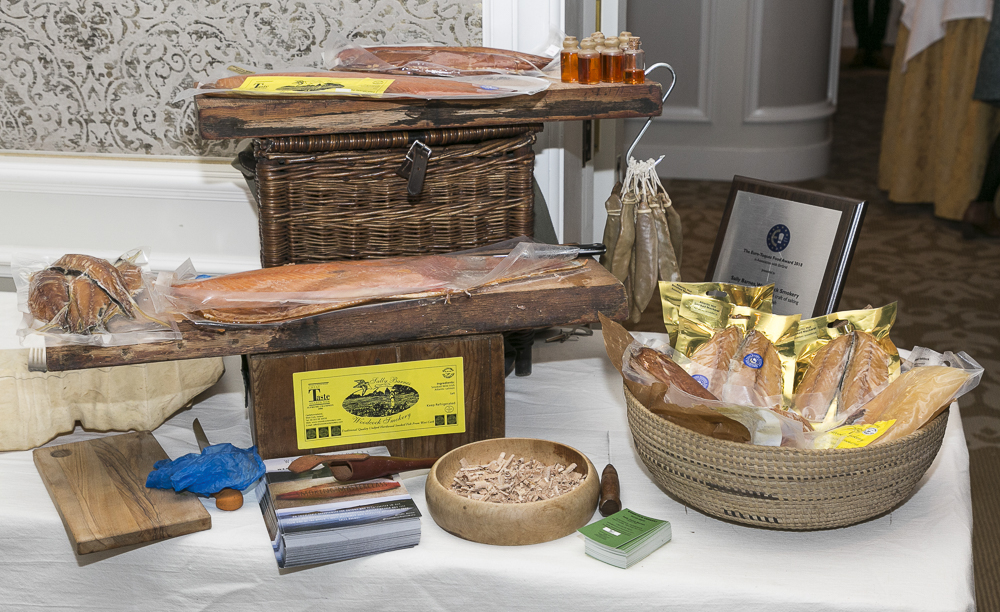 “A great Irish breakfast starts with the raw materials and as part of these awards, we identify exceptional Irish breakfast food producers who help chefs turn a good breakfast into an outstanding one,” said Georgina Campbell. “Using high quality, Irish produce is the foundation on which chefs and business owners need to build to create great and memorable breakfast experiences. However, sourcing local, seasonal and quality produce is often overlooked when it comes to the first meal of the day, and that has to change if we want to support our indigenous food industry and fly the flag for Irish producers, and the Irish breakfast, both at home and abroad.
“A great Irish breakfast starts with the raw materials and as part of these awards, we identify exceptional Irish breakfast food producers who help chefs turn a good breakfast into an outstanding one,” said Georgina Campbell. “Using high quality, Irish produce is the foundation on which chefs and business owners need to build to create great and memorable breakfast experiences. However, sourcing local, seasonal and quality produce is often overlooked when it comes to the first meal of the day, and that has to change if we want to support our indigenous food industry and fly the flag for Irish producers, and the Irish breakfast, both at home and abroad.
“A recent Australian survey (concerned mainly with weight loss) may have tried to debunk the idea that breakfast is the most important meal of the day, but our bodies – and our visitors - know better. And so do our hospitality industry and quality food producers - it’s a critical component for them, and success or failure in achieving the highest possible standards can truly make or break a business,” said Georgina.
“Given the quality of our local produce and the fantastic range of establishments right across the country, we have a unique opportunity to elevate the Irish breakfast scene into something quite special that we can be proud of.”
 The Georgina Campbell Irish Breakfast Awards in association with Fáilte Ireland took place at the InterContinental Dublin, with special guest and previous Irish Breakfast award-winner, Neven Maguire of MacNean House and Restaurant who said, ““Get the basics right; is so important. The option of preparing a great breakfast using 100% Irish produce is available to us all, and we don’t have to look too far to find these terrific products. At MacNean House and Restaurant we put as much emphasis on giving our guests as memorable a food experience for breakfast as the dinner the night before. It is the last meal our guests have before they leave, so we want to make it special.”
The Georgina Campbell Irish Breakfast Awards in association with Fáilte Ireland took place at the InterContinental Dublin, with special guest and previous Irish Breakfast award-winner, Neven Maguire of MacNean House and Restaurant who said, ““Get the basics right; is so important. The option of preparing a great breakfast using 100% Irish produce is available to us all, and we don’t have to look too far to find these terrific products. At MacNean House and Restaurant we put as much emphasis on giving our guests as memorable a food experience for breakfast as the dinner the night before. It is the last meal our guests have before they leave, so we want to make it special.”
 Paul Kelly, CEO of Fáilte Ireland said, “Fáilte Ireland is delighted to partner with Georgina Campbell and the Irish Breakfast Awards to highlight the important role that breakfast plays in providing visitors with a taste of Ireland. In recent years, the reputation of our breakfast offering has advanced in terms of quality and perception. Great strides have been made and the importance of a quality food experience cannot be underestimated especially for overseas visitors. We can raise our offering to the next level and ensure that our reputation as a producer of great quality food is maintained and indeed enhanced over the coming years.”
Paul Kelly, CEO of Fáilte Ireland said, “Fáilte Ireland is delighted to partner with Georgina Campbell and the Irish Breakfast Awards to highlight the important role that breakfast plays in providing visitors with a taste of Ireland. In recent years, the reputation of our breakfast offering has advanced in terms of quality and perception. Great strides have been made and the importance of a quality food experience cannot be underestimated especially for overseas visitors. We can raise our offering to the next level and ensure that our reputation as a producer of great quality food is maintained and indeed enhanced over the coming years.”
BEST IRISH BREAKFAST FOODS
According to Georgina, the Irish Breakfast Foods Category is central to the awards as without great Irish produce, there would be no great Irish breakfasts. “These awards are unique in that they help to connect some of our exceptional producers and their produce to the people who care passionately about the food they prepare and serve. The seven food producers we are recognising today are the hidden heroes of Ireland’s thriving breakfast scene. We want to see more and more of them featuring on Irish breakfast menus, highlighting provenance, quality and authenticity.”
THE 2019 IRISH BREAKFAST FOOD AWARD WINNERS ARE:
Meats: Castlemine Farm, Co Roscommon
Fish: Woodcock Smokery, Co Cork
Eggs: Clonarn Clover, Co Meath
Dairy: Glenisk Organic Dairy, Co Offaly
Cereal: Paddy O’s Granola, Co Laois
Fruit: Keeling’s Juices, Co Dublin
The Irish Bread Award went to Longueville House, Mallow, Co Cork.
BEST BRUNCH SPONSORED BY IRISH DAIRY THE COMPLETE NATURAL
The push to rethink early menus in cafés and restaurants across Ireland has been helped by the rise in popularity of brunch, which is why this year, Georgina Campbell teamed up with Irish Dairy The Complete Natural to invite members of the public to nominate their favourite establishment for a Best Brunch Award. The 2019 Best Brunch in association with Irish Dairy The Complete Natural Dairy was awarded to The Fumbally, Dublin, following a public nomination process
Zoe Kavanagh, CEO of the NDC said: ‘We are proud in Ireland of our excellent dairy produce with its unique taste and the versatility which lends itself so well to breakfast and brunch dishes. Ireland has become a real destination in recent years for quality brunch venues creating innovative dishes as part of this ever-popular meal occasion. We are excited to celebrate the cream of Ireland’s brunch venues shortlisted for these awards and hopefully, it will help raise the bar for brunch venues around the country.’
GEORGINA CAMPBELL IRISH BREAKFAST AWARDS 2019 IN ASSOCIATION WITH FÁILTE IRELAND FULL LIST OF WINNERS AND HIGHLY COMMENDED WINNERS
5* HOTEL
Winner: Park Hotel Kenmare, Kenmare, Co Kerry
• Highly Commended: Cliff House Hotel, Ardmore, Co Waterford
• Highly Commended: The Merchant Hotel, Belfast
• Highly Commended: The Westbury Hotel, Dublin
• Highly Commended: The Heritage Killenard, Killenard, Co Laois
4* HOTEL
Winner: Marlfield House Hotel, Gorey, Co Wexford
• Highly Commended: Dunraven Arms, Adare, Co Limerick
• Highly Commended: Granville Hotel, Waterford
• Highly Commended: Bushmills Inn, Bushmills, Co Antrim
• Highly Commended: Sheedy’s Hotel, Lisdoonvarna, Co Clare
3* HOTEL
Winner: Dingle Benners Hotel, Dingle, Co Kerry
• Highly Commended: The Huntsman Inn, Galway, Co Galway
• Highly Commended: Aran Islands Hotel, Inis Mór, Co Galway
• Highly Commended: Carrygerry Country House, Newmarket-on-Fergus, Co Clare
• Highly Commended: Zuni Restaurant & Boutique Hotel, Kilkenny
COUNTRY HOUSE
Winner: Virginia Park Lodge, Virginia, Cavan
• Highly Commended: Rathsallagh House, Dunlavin, Co Wicklow
• Highly Commended: Rosleague Manor, Letterfrack, Co Galway
• Highly Commended: Dunnanelly Country House, Co Down
• Highly Commended: Lodge at Ashford Castle, Co Mayo
GUEST HOUSE
Winner: Wineport Lodge, Glasson, Athlone, Co Westmeath
• Highly Commended: Castlewood House, Dingle, Co Kerry
• Highly Commended: Killarney Lodge, Killarney, Co Kerry
• Highly Commended: Gleesons Townhouse, Roscommon, Co Roscommon
• Highly Commended: Blackwell House, Scarva, Co Armagh
B&B
Winner: Bantry House and Garden, Bantry, Co Cork
• Highly Commended: Shelburne Lodge, Kenmare, Co Kerry
• Highly Commended: Aldridge Lodge, Duncannon, Co Wexford
• Highly Commended: Ardawn House, Galway, Co Galway
• Highly Commended: Ghan House, Carlingford, Co Louth
VISITOR ATTRACTION
Winner: Hook Lighthouse - Visitor Centre Café, Hook Head, Co Wexford
• Highly Commended: The Castle Café, Blackrock Castle, Cork
• Highly Commended: Lennons@VISUAL, Carlow, Co Carlow
• Highly Commended: The Kitchen, Galway City Museum, Galway
• Highly Commended: Avoca Café, Malahide Castle, Malahide, Co Dublin
IRISH BREAKFAST MENU - NEW FOR 2019
Winner: Breac.House, Dunfanaghy, Co Donegal
• Highly Commended: Ravenhill Guest House, Belfast
• Highly Commended: King Sitric Restaurant& Accommodation, Howth, Co Dublin
• Highly Commended: Coolanowle Country House & Organic Farm, Co Carlow
• Highly Commended: Viewmount House, Longford, Co Longford
BRUNCH SPONSORED BY IRISH DAIRY THE COMPLETE NATURAL
Winner: The Fumbally, Fumbally Lane, Dublin City, Co Dublin
• Highly Commended: Nook Café & Restaurant, Collooney, Co Sligo
• Highly Commended: The Green Barn, Burtown House, Co Kildare
• Highly Commended: House of Plates, Castlebar, Co Mayo
• Highly Commended: Brunel’s Restaurant Newcastle Co Down
THE SELECTION PROCESS
Georgina Campbell’s Ireland’s rigorous programme of anonymous assessment visits is a year-round process and, with the exception of this year’s Brunch Award, which was open to public nominations, award winners are nominated solely by an independent assessment team. Reports are fed through to the hospitality website Ireland-guide.com.
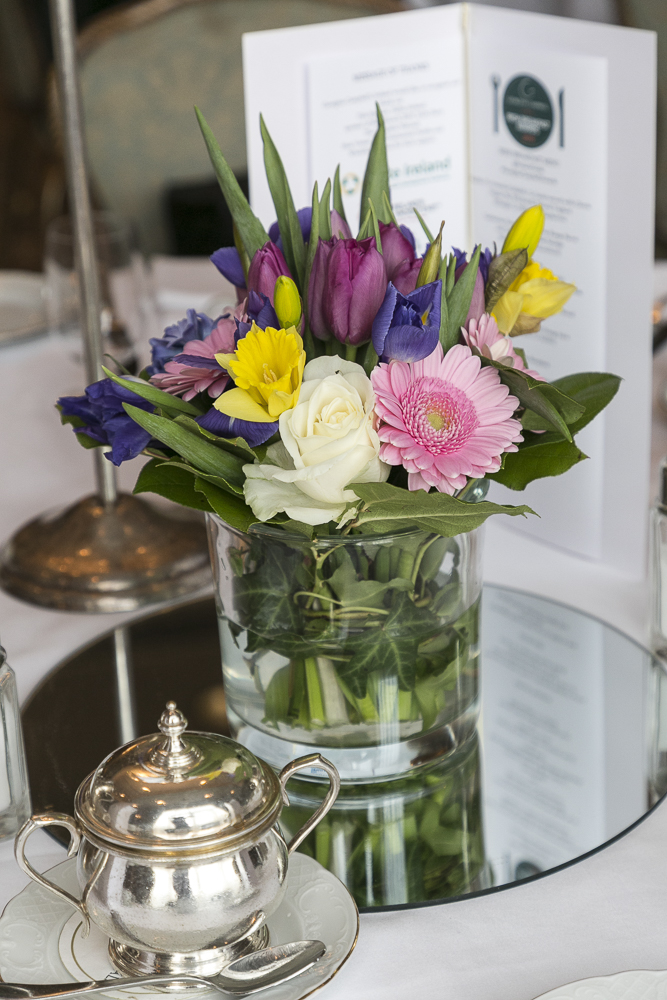 2019 IRISH BREAKFAST AWARDS SURVEY
2019 IRISH BREAKFAST AWARDS SURVEY
Findings from the second in a series of annual Irish Breakfast Surveys, conducted by Georgina Campbell in association with Fáilte Ireland, were also announced today.
As part of an effort to increase the overall quality of breakfasts nationally, a survey was conducted with accommodation providers last year, to determine a quality baseline. And the news is good, as this year’s follow-on survey indicates an increased awareness for the importance of the breakfast experience and a greater commitment to quality across a wide range of areas.
Telling the local story through name-checking producers and suppliers and staff engagement is increasingly a part of the Irish breakfast experience. And these things are working. More than half of respondents say it’s ‘a key reason for choosing us. And, like last year, the majority of responses were from the big tourism brands (Wild Atlantic Way; Ireland’s Ancient East and the new Ireland’s Hidden Heartlands), suggesting that the Fáilte Ireland food tourism strategy is growing industry awareness of the value and benefits of offering a quality, locally-focused breakfast.
The range of breakfast options offered is widening, but the traditional Irish Breakfast is certainly not in decline (respondents say it imparts ‘the holiday feeling’) and there is growing interest in sustainability, with many opting for the short food miles that come with Irish, locally produced and home grown breakfast ingredients.
“It’s good to see positive signs of improvement this year - and the survey results match our experience when travelling around doing independent assessments,” Georgina commented. “But we still need to convince decision makers across the board that ‘buying local’ is a win-win situation that will support the local economy, please visitors and be good for business.
“This survey indicates that we’re heading in the right direction - and we hope to build on that momentum and encourage others to up their game, so that there will be new names among the award winners next year”
CITATIONS
The aim of the Georgina Campbell Irish Breakfast Awards in association with Fáilte Ireland is to encourage everyone who is serving breakfast in Ireland to up their game and give visitors - both international and domestic - the best possible experience to start their day. Recognising those who are already doing a great job is a key element in that process and, in seeking out the best, we look for an all round experience and genuine hospitality, as well as authenticity - and a sense of place.
Our winners come from all around Ireland - see regional tourism brands highlighted alongside winners names, and a summary of the Fáilte Ireland regional tourism brands below.
The essence of the regional tourism brands, as defined by Fáilte Ireland:
• The Wild Atlantic Way is Ireland's first long-distance touring route, stretching along the Atlantic coast from Donegal to West Cork.
• Ireland’s Hidden Heartlands: Explore the lush green heartlands of Ireland’s natural rural beauty... where activity and relaxation are centred around rural communities and their lifestyles, that can be discovered across a lattice work of land and water trails showcased by the iconic River Shannon and the Beara Breifne Way.
• Ireland's Ancient East showcases Ireland’s living culture and ancient heritage and brings it to life through stories that create unique visitor experiences, unite stakeholders and support vibrant communities.
• Dublin living thrives side by side with the natural outdoors so you can constantly jump between completely unique, different and often unexpected experiences.
FIVE STAR HOTEL CATEGORY
We all expect a stay in a five star hotel to be an all-round special experience, offering the very best of the best of everything - impressive surroundings, exceptionally spacious and luxurious accommodation, outstanding food and service, wonderful leisure amenities…. It should be a real treat and, at its best, that’s just what it is, providing superb and truly Irish experiences. Yet, even at this level, there are variations in standards. And an area where these variations are especially noticeable is in the breakfast offering, which can be genuinely memorable - but is not always as wonderful as the experiences which are such a pleasure at our winning hotels.
.jpg) Winner: Park Hotel Kenmare Kenmare Co Kerry
Winner: Park Hotel Kenmare Kenmare Co Kerry
WILD ATLANTIC WAY
ABOUT: Deservedly one of Ireland’s best loved leading hotels, the magnificent waterside location and mountain views of the Park Hotel Kenmare belie its convenience, right at the heart of this charming Heritage Town. Its fame dates back to Victorian times and, in the ownership of Francis “At Your Service” Brennan since 1985, it is a benchmark for exceptional standards of service, comfort and cuisine. A stay here is always a treat - luxury and hospitality are the bywords - also outstanding food, overseen by respected Head Chef, James Coffey.
Special breakfast highlights?
Where to begin…the simply worded menu doesn’t give too much away but, from the first glass of freshly squeezed fruit or vegetable juice to the final sip of coffee, everything about this table service only experience is special. Warm Macroom stoneground porridge oats, delicious breads and preserves, three fish choices, an immaculately presented Classic Irish Breakfast (featuring Sneem black pudding, of course) and much more besides…Then there is the setting - the gardens, river and mountains are simply lovely, and the classical dining room is at its brightest and best in the morning. And the warmly professional, mainly Irish, staff are simply wonderful. What’s not to love?
Highly Commended: Cliff House Hotel Ardmore Co Waterford
IRELAND’S ANCIENT EAST
ABOUT: A bold modern boutique hotel overlooking Ardmore Bay, this chic bolthole draws guests as much for the culinary offerings as the setting in one of Ireland’s most delightful villages. Dutch head chef Martijn Kajuiter strives for perfection in The House Restaurant, using meticulously sourced local and seasonal produce to deliver stunning cooking that appeals to adventurous diners. This luxury hotel has earned a reputation for service too, with discreet customer care the byword. The Well spa includes an outdoor infinity pool, looking out over the bay.
Special breakfast highlights?
An excellent (and speedily served) breakfast is served in the restaurant. While at night, however, it's all about stretching the kitchen’s culinary muscles to their limits, morning brings simplicity and a short menu of good things - the freshest of juices, the welcome familiarity of a well-sourced Full Irish, freshly brewed tea and coffees, freshly baked breads and pastries, homemade preserves - and the pleasure of enjoying them in the company of a lovely view of the bay. It makes for a quietly memorable experience.
Highly Commended: The Merchant Hotel Belfast
NORTHERN IRELAND
ABOUT: The grandeur of a larger-than-life Victorian banking building is a fit setting for Belfast’s most dramatic and beautiful hotel. The lobby sets the tone for the whole hotel – warmly luxurious, but not ostentatious. The elegant, opulent bedrooms and suites are available in Victorian and Art Deco styles; everything exudes indulgence and service is impeccable. The house style in the aptly named Great Room Restaurant is upbeat classic and accomplished meals showcase local ingredients. Afternoon Tea, also served in The Great Room, is a speciality, and with vegetarian, gluten-free, and nut-free options available.
Special breakfast highlights?
A full à la carte breakfast menu is served every morning in The Great Room Restaurant and it is open to non-residents, offering an ideal venue for an early business meeting, or a treat for leisure guests to the city. Everything is as it should be. The staff bring just the right balance of friendliness and professionalism and, while the wide ranging menu doesn’t spring too many surprises, dietary requirements are willingly met, and there’s an emphasis on Irish artisan produce. Everything is beautifully cooked and presented and the magnificent setting conveys a sense of occasion - it really is the star at The Merchant.
Highly Commended: The Westbury Hotel Dublin
DUBLIN
ABOUT: Possibly the most conveniently situated of all Dublin’s luxury hotels, The Westbury Hotel is seconds from Grafton Street (and with underground parking). Unashamedly sumptuous, the hotel’s public areas drip with chandeliers although the bedrooms are decidedly more contemporary. Fashionable for afternoon tea, the hotel is popular with business and corporate guests, but also makes a great base for a leisure break. Wilde, the beautiful Art Deco-influenced restaurant, offers delicious all-day dining and great service while there’s casual brasserie and bar fare at Balfe’s.
Special breakfast highlights?
While residents may have the option of breakfast at Wilde, for Dubliners or out-of-towners up for meetings or a day’s shopping, Balfes ticks all the boxes. There’s a great weekday breakfast menu offering a range of ‘Bodybyrne’ fitness dishes alongside more conventional favourites like organic porridge various ways, a range of egg dishes or frankly indulgent morning pastries. And then comes the weekend brunch, when the options widen to include an aperitif cocktail menu and other drinks, bigger dishes like burgers and fish & chips, or open sandwiches…Whatever the day or time, it’s one of the coolest spots in town for breakfast or brunch.
Highly Commended: The Heritage Killenard Killenard Co Laois
IRELAND’S ANCIENT EAST
ABOUT: In new ownership since 2014 and operated with style, great staff and exceptional leisure facilities are the trump cards at this luxury hotel in rural Laois. Not only is there a destination spa and (next door) an 18-hole Seve Ballesteros golf course, but onsite facilities also include bowls, tennis and a floodlit jogging track. Spacious accommodation is very comfortably furnished and dining options include fine dining in the Arlington Room, Afternoon Tea in the Lobby Lounge, and informal options elsewhere in this attractive venue.
Special breakfast highlights?
Breakfast is served in the Arlington, and a cold buffet offering a good spread of fruits, breads, and cereals, cheese and salamis is displayed in an adjoining room. Unusually, there are three milks available: full, low fat and skimmed - and there's a generous gluten free corner, with breads and cereals on offer. Hot dishes include pancakes, omelettes, smoked salmon, various eggs (Benedict, Florentine) and of course the full Irish - no surprises, perhaps, but the quality is top notch.
FOUR STAR HOTEL CATEGORY
Usually seen as luxurious, Four Star hotels are spacious and offer suites and extensive amenities, often including a spa. They also tend to have ambitious restaurants, many with a national reputation that ensures their success as a food lovers’ destination. At their best, destinations like our winning establishments offer an outstanding guest experience and often very good value too, usually seen in special offers such as midweek and off-season breaks. But sometimes the high standards of food and service enjoyed at dinner can descend into something very different at breakfast time - and we would love to see breakfast given the same status as dinner, and be accorded the same respect.
%20(presentation).jpg) Winner: Marlfield House Hotel Gorey Co Wexford
Winner: Marlfield House Hotel Gorey Co Wexford
IRELAND’S ANCIENT EAST
ABOUT: Famously quoted by an international guide as ‘the luxury country house hotel par excellence’, this impressive house was once the residence of the Earls of Courtown, and is now an elegant oasis of unashamed luxury offering outstanding hospitality and service, where guests are pampered in sumptuous surroundings. Opened as an hotel in 1978 by Mary and Ray Bowe, their daughters Margaret and Laura are now continuing - and developing - the family tradition of hospitality. As well as the main house, they now also operate a lovely informal café-restaurant, The Duck, alongside the kitchen garden - and also Duck Lodge, a contemporary self-catering cottage.
Special breakfast highlights?
This is a place where things are done correctly and the Marlfield House breakfast is a magnificent throwback to high standards now rarely seen…Tables are beautifully set with proper starched white tablecloths and napkins, silver cutlery and a white china dish displaying butter, homemade marmalade and jam. Leaf tea is served in a silver teapot, along with delectable fresh scones and croissants, while the buffet offers fresh juices, stewed rhubarb, stewed apples with cinnamon, blueberries and raspberries, Killowen yogurts… The excellent brown bread is a speciality, and a perfect match for the Full Irish, or any of the other dishes on an impressively comprehensive menu, which includes a supplier list (all in Wexford) and an invitation to ask for takeaway juice or coffee if travelling - or to purchase homemade breads, scones, marmalade, chutneys and jams at reception.
Highly Commended: Dunraven Arms Hotel Adare Co Limerick
WILD ATLANTIC WAY
ABOUT: Established in 1792, the Murphy family’s large hotel in Adare has retained the comfortable ambience of a country inn – albeit a very luxurious one. An unrivalled reputation for the quality and value of short breaks offered, and a dedication to giving personal service, make Dunraven Arms an outstanding example of contemporary Irish hospitality. The delightfully old-fashioned Maigue Restaurant showcases the best of local produce and is renowned for its superb beef - carved at a trolley in classic style, many repeat guests travel especially for the pleasure of enjoying this classic speciality.
Special breakfast highlights?
Dedication to quality extends to the outstaanding breakfast offered - an area where many hotels seek savings, to the detriment of the overall guest experience. Not so at the Dunraven Arms, where the dining room is set up as smartly for breakfast as it is for dinner in the evening and well-slept guests are treated to an extensive buffet display of the freshest foods and drink, including fruits and juices, yogurts, cheeses and cold meats, a range of freshly baked goods and a magnificent ham set up for carving to your liking. Cooked to order breakfasts are equally impressive, with a lovely range of dishes offered and everything served, perfectly cooked, to your table by helpful staff.
Highly Commended: Granville Hotel Waterford
IRELAND’S ANCIENT EAST
ABOUT: One of the country’s oldest hotels, this much-loved quayside establishment has been owner-run since 1979 by the Cusack family, who have restored the old building to its former glory. The overall food style is proudly traditional, with some local specialities featuring, and the hotel’s Bianconi Restaurant delivers good value and excellent cooking by Executive Head Chef Stephen Hooper. As elsewhere in the hotel, it is the warm Irish hospitality and service that really make a visit here memorable.
Special breakfast highlights?
Infectious enthusiasm is the keynote here and, from an excellent buffet to the hot food cooked to order, the breakfast offering is outstanding. The famous Waterford Blaa stars in the Bakery Basket of course (and hot dishes include Blaa Eggs Benedict Waterford Style), alongside unusual preserves such as Granville Marmalade with Muldoon Whiskey. Good renditions of all the breakfast favourites are available, including delicious fresh fish, but perhaps the defining feature is ‘The Granville Hotel Organic Porridge Experience’ which elevates the local Flahavans porridge to a new level - partly by including the local Muldoon Waterford Whiskey Liqueur or Highbank Organic Apple Syrup. Magic.
Highly Commended: Bushmills Inn Hotel Bushmills Co Antrim
NORTHERN IRELAND
ABOUT: Originally a 19th century coaching inn, the traditional tone of Alan Dunlop’s famously interesting and well-run hotel is set by the turf fire and country furniture in the hall. Public rooms include an atmospheric gas-lit bar and a unique circular library, while the exceptionally well planned bedrooms are furnished in a cottagey style that suits the building. Known for its wholesome food, pride in Irish ingredients and traditions is most obvious in day menus that often include old dishes like Brotchan (‘an old name for “aitin n drinkin” soup’). A great base for playing the famous golf courses of the area, or exploring this beautiful coastline.
Special Breakfast highlights?
Atmosphere rules at the Bushmills Inn and that includes the restaurant, with its rustic booths, where breakfast is served. Simplicity suits the surroundings well, and the great Northern Ireland baking tradition is alive and well here, with the home baked breads a highlight amongst the traditional breakfast offerings - and keen, well-trained and engaging young staff leave a lasting impression.
Highly Commended: Sheedy’s Hotel Lisdoonvarna Co Clare
WILD ATLANTIC WAY
ABOUT: John and Martina Sheedy run one of the west of Ireland’s best-loved small hotels - it offers some of the most comfortable accommodation in the area and has been a key dining destination for many years, yet it still has the warm ambience and friendly hands-on management which make a hotel special. John showcases Irish foods, and especially local produce like Burren lamb and Atlantic seafood, with style at every meal (and makes everything from scratch - breads, biscuits, jams, preserves, ice creams...). While relaxed and informal, the sheer quality makes Sheedys a treat for food lovers.
Special breakfast highlights?
The same high standards apply at breakfast, when pride in local produce and home made food informs an extensive menu that offers many delicious choices. Service is table service only, and the meal brings a succession of good things including fresh fruit compotes and juices; an impressive selection of home-made breads and pancakes; a fresh fish dish, as well as classic smoked salmon with scrambled eggs - and a perfectly cooked Traditional Irish Breakfast of course, which brings together products from several counties.
THREE STAR HOTEL CATEGORY
The majority of Irish hotels fall into the Three Star category and the range is inevitably very wide. They include everything from excellent small family-run hotels to much larger properties that might score on amenities (such as the leisure facilities that are so important for family holidays), rather than hands-on hospitality or a focus on good food. Our winners represent the best at the smaller end of the spectrum, and show just how rewarding a stay at a Three Star hotel can be. This is the category where we have found the most improvement in the last year, although we would love to see more Three Star hotels up their game at meal times - and especially at breakfast, which is too often a price-led offering.
.jpg) Winner: Dingle Benners Hotel Dingle Co Kerry
Winner: Dingle Benners Hotel Dingle Co Kerry
WILD ATLANTIC WAY
ABOUT: This 300-year old centrally-located hotel makes a very comfortable base within easy walking distance of the whole of Dingle town - and it is full of character. Good food with a local flavour has become a USP of the hotel in recent years, and - as well as wide-ranging day and evening menus showcasing local ingredients, notably seafood and West Kerry lamb - that includes an impressive breakfast.
Special breakfast highlights?
Served in a large, bright, dining room towards the back of the hotel, breakfast kicks off with a well-presented buffet display notable for its quality as much as the variety offered. Home baked ham, artisan cheeses and yogurts, smoked salmon, Irish cereals and freshly baked brown bread and pastries all feature, as well as a choice of fresh fruits and juices. And cooked to order dishes include a full vegetarian breakfast which is offered alongside a well-sourced 'Traditional Irish', catch of the day, kippers and other favourites like Lispole Eggs Benedict and crepes or waffles. Impressive all round, and very tasty.
Highly Commended: The Huntsman Inn Galway
WILD ATLANTIC WAY
ABOUT: Near the city centre and easily accessible by car, this busy spot near the G Hotel looks like a pretty row of houses and, with its colourful hanging baskets, the cottagey facade cleverly disguises a large interior. The smart, contemporary en-suite bedrooms offer great value, and it’s a relaxed, comfortable place for flavoursome food at a reasonable price. Uncomplicated menus reflect a refreshingly down to earth philosophy and everything is cooked with care and well presented.
Special breakfast highlights?
The breakfast menu reads reassuringly well, offering plenty of fresh and well sourced foods - freshly squeezed orange juice, freshly baked scones and brown bread, Collerans and Herterich’s breakfast meats, Connemera Smokehouse smoked salmon - and the promise follows through, with good cooking (scrambled eggs singled out for praise, which is unusual) and really tasty food. And excellent staff make the experience, by providing very good service.
Highly Commended: Zuni Restaurant & Boutique Hotel Kilkenny
IRELAND’S ANCIENT EAST
ABOUT: Although Zuni is an hotel (‘boutique’, and with a youthful style of accommodation), the atmosphere is more restaurant with rooms: an oasis of contemporary chic in this bustling city, it has long been favoured by discerning Kilkenny diners. Well known Kilkenny chef Michael Thomas joined the team from Waterford Castle in 2018 and he enthusiastically maintains the house policy of supporting local producers and suppliers, which matches his own philosophy perfectly.
Special breakfast highlights?
Breakfast, served in the streetside café-bar, is notable for the friendly, smartly-uniformed and well-informed staff, and the cosy café atmosphere as much as for the excellent cooking. The menu offers all the breakfast/brunch favourites, sometimes with a little twist (as in chilli scrambled eggs), but there are no gimmicks and its success is down to careful cooking, attractive presentation, attention to detail and great suppliers - Kenna's butchers are mentioned, along with Highbank Orchard Syrup (nice to see this delicious product featuring rather than the ubiquitous maple syrup), and Zuni's own home made breads.
Highly Commended: Aran Islands Hotel Inis Mór Co Galway
WILD ATLANTIC WAY
ABOUT: A young, very professional, team - brothers, Keith and Niall Madigan and Chef Damien Lyons, all from Ennis - took over this warmly comfortable hotel in 2015 and have made Inis Mor their home. All the island’s big events are held at the hotel, from celebrations to funeral meals, and their wedding pack would tempt anyone to have the big day here. The restaurant, Madigans @ The Hotel, has a view of the bay while An Síbín Pub, with an open fire and traditional Irish music at weekends, is the most popular spot in the hotel - and also serves good wholesome food. Five bedrooms have good views of bay and harbour and all are very comfortable.
Special breakfast highlights?
Breakfast offers a quality buffet counter with an appealing selection of cereals and granola and a choice of yoghurts, plus fresh fruit brought in from the mainland. However it is the steaming hot fresh porridge served in large wide bowls that stands out - and so does the freshly cooked traditional Irish breakfast straight from the kitchen, with truly delicious freshly fried eggs. There is the usual sliced bread, but the defining feature is the delicious homemade brown bread. Served at table, by delightful local staff, this simple island meal can be memorable.
Highly Commended: Carrygerry Country House Newmarket-on-Fergus Co Clare
WILD ATLANTIC WAY
ABOUT: It’s only 10 minutes from Shannon airport, yet Niall and Gillian Ennis’s lovely 18th century residence is a world away, in a beautiful rural setting and overlooking the Shannon and Fergus estuaries. The ambience is very pleasant, with spacious, comfortable reception rooms, open fires and an hospitable atmosphere, as well as a high standard of accommodation. Niall’s menus in The Conservatory Restaurant showcase local ingredients - especially seasonal herbs and vegetables - and they produce a range of speciality food products that make perfect small gifts.
Special breakfast highlights?
Breakfast, which is served in the conservatory, offers a great choice (perhaps more limited in winter) with provenance highlighted and it is cooked to order. Everything is very tasty and highlights include gorgeous homemade brown bread and house made preserves, which are full of flavour. The ubiquitous white sliced pan may also appear at times - underneath Poached Eggs with fresh tomatoes, for example - but most guests won't mind that at all.
COUNTRY HOUSE CATEGORY
While the Irish B&B and Guesthouse categories are quite clearly defined, that great gem of Irish hospitality, the Irish Country House, will generally be found tucked in somewhere among the B&Bs, listed as an Historic House. There is a logic to this as, although large properties, they rarely have more than half a dozen guest rooms. However, it would be lovely to see these wonderful places - and the extraordinary families who run them - given the starring role that they deserve, in a special category. As is self-evident from the range of winners representing them here, they are the beating heart of Irish rural tourism - and especially rewarding to seek out.
.jpg) Winner: Virginia Park Lodge Virginia Co Cavan
Winner: Virginia Park Lodge Virginia Co Cavan
IRELAND’S ANCIENT EAST
ABOUT: Beautifully located overlooking Lough Ramor, this eighteenth century sporting lodge charmingly combines informality and grandeur. In 2013 a famous local man, the chef Richard Corrigan, bought the property and lost no time in renovating the house and establishing productive gardens, which now also supply his London restaurants in season. A desirable private venue for weddings, corporate events and sporting weekends, it also opens as a pop up (book online) and makes an elegant and atmospheric setting for Richard Corrigan’s famously direct seasonal, ingredients-led cooking.
Special breakfast highlights?
Breakfast for overnight guests at Virginia Park Lodge is an exceptional experience. A long fireside table is set up atmospherically with candles and decorative foliage and, even in summer, a welcoming log fire is lit in the huge fireplace. Rustic charm is the order of the day and the foods displayed on a nearby sideboard have all the Corrigan trademarks of simplicity, quality and irresistibility. Big jugs of freshly squeezed juice, poached garden fruits, wonderful home bakes and buttery pastries - even if you don't like croissants, you must try these. Hot dishes range from a simple, extremely tasty rendition of the traditional Irish (with fresh tomatoes from the garden, in summer) to house-smoked salmon and more contemporary favourites like a Breakfast Burrito. Terrific coffee, gorgeous breads, butter and home made preserves too - everything is perfect.
Highly Commended: Rathsallagh House Dunlavin Co Wicklow
IRELAND’S ANCIENT EAST
ABOUT: The O’Flynn family’s large, rambling country house on the Wicklow-Kildare border is just an hour from Dublin, but it could be in a different world. Insistent that it is ‘not an hotel’, it has a classic country house atmosphere - but it’s very professionally run and has all of the expected amenities. Rooms range from spacious ones with great views in the old house to cottagey rooms in the stable yard, all very comfortable. Good food is central to Rathsallagh - starting with seasonal produce from the farm and beautiful walled garden, you will eat well here.
Special breakfast highlights?
Rathsallagh is renowned for its magnificent Edwardian breakfast buffet, which offers every conceivable good thing, including silver chafing dishes, full of reminders of yesteryear. A large sideboard display offers an array of temptations - fresh juices, fruits and home-bakes, local honey and home-made jams and chutneys... Irish farmhouse cheeses, whole ham on the bone, salamis and smoked salmon... then there are the hot dishes, including their own free range eggs, the full Irish, and some less usual dishes like smoked salmon kedgeree, too.
Highly Commended: Rosleague Manor Letterfrack Co Galway
WILD ATLANTIC WAY
ABOUT: A member of the legendary Connemara hospitality family, the Foyles of Clifden, the energetic young owner-manager, Mark Foyle, is gradually working his way through a major renovation programme at this lovely, graciously proportioned, pink-washed Regency house. It looks out over Ballinakill Bay through gardens planted with rare shrubs and plants and, although the area also offers plenty of active pursuits, there is a deep sense of peace at Rosleague and it’s hard to imagine any better place to recharge the soul. Interestingly furnished in an upbeat traditional style, accommodation is luxurious and it also offers relaxed fine dining with specialities including local Leenane lamb and Killary lobster.
Special breakfast highlights?
While the focus at Rosleague is on dinner (which is open to non-residents by reservation) overnight guests are invariably delighted with the breakfast. From the lovely fresh flowers (a special feature throughout the house) and discreetly helpful staff, to the interesting menu with its emphasis on fish and less usual dishes (devilled kidneys with poached egg, for example) and details on the table like the bowl of freshly cubed butter and homemade preserves, everything is a real pleasure. And you can even call by to see the happy pigs, when out for your morning walk.
Highly Commended: Dunnanelly Country House Downpatrick Co Down
NORTHERN IRELAND
ABOUT: Although it is just three miles from Downpatrick, Sally King’s gorgeous Georgian-style house lies secluded in gardens, fields and woodland, with views of the Mourne Mountains to the south. Offering all the benefits of a Georgian house with the comfort of mod cons too, it would make a wonderful base for experiencing the St Patrick Story and exploring this beautiful county. The six bedrooms are beautifully furnished with great attention to detail and every comfort you could wish for - and the Kings also take pride in sourcing the best local products for breakfast, with Sally’s jams among the treats, made with home-grown fruit. An absolute gem.
Special breakfast highlights?
Breakfast is served in the elegant dining room and an attractive card showing the provenance of all the food served sits proudly on the table. Sausages, bacon, eggs and smoked salmon all come from within a few miles, the honey is home-produced, and free-range, organic or Fair Trade products are used whenever possible. Sally’s jams are made with their own home grown fruit – and she even uses home grown lemons in her marmalade.
Highly Commended: The Lodge at Ashford Castle Cong Co Mayo
WILD ATLANTIC WAY
ABOUT: In common ownership with neighbouring Ashford Castle, the heart of this boutique destination is a fine period house with views down Lough Corrib from the bar, restaurant and the best rooms. Newer accommodation - including suites - is comfortable and stylish, and at Wilde’s Restaurant head chef Jonathan Keane serves wonderfully imaginative cuisine based on the best seasonal local produce. In a lovely first floor space with lough views from window tables, you can expect an unusual dining experience backed up by an interesting wine list.
Special breakfast highlights?
An excellent breakfast is served in Wilde’s - allow time to enjoy this feast as it makes a great start to the day and provides a wonderful introduction to some of the best local producers and suppliers. While the short menu doesn’t give too much away, staff are more than helpful and the display of juices, fruits, baked goods, hot and cold meats and much more is seriously impressive. Set up over a number of tables, each item is carefully labelled - and there’s even a bottle of Jameson to hand beside the porridge, for you to help yourself!
GUESTHOUSE CATEGORY
So what exactly is a guesthouse? In the AirBnB era, this question is being asked more and more often. Bigger than a B&B (2-6 rooms) and smaller than most hotels, a guesthouse has 7 to 30 en-suite bedrooms and must be registered with Fáilte Ireland in order to use the term. Breakfast must be provided and, in the Guide’s experience of this somewhat misunderstood and underrated category, the best Irish guesthouses provide some of the finest accommodation, food and hospitality in the country - as our winners demonstrate.
.jpg) Winner: Wineport Lodge Glasson Athlone Co Westmeath
Winner: Wineport Lodge Glasson Athlone Co Westmeath
IRELAND’S HIDDEN HEARTLANDS
ABOUT: Ray Byrne and Jane English’s unique shoreside lodge overlooking Lough Ree started life in 1993 as a restaurant and - although it now has thirty beautiful rooms (all with private balconies overlooking the lake), a hot tub and treatment rooms - the lovely contemporary restaurant remains its heart, serving fine meals with warmth and professionalism. The food experience has always been about seasonal local produce and a formal meal in this stunning venue is a special outing - but it’s also ideal for Afternoon Tea or a casual daytime bite in the bar, and it makes a perfect journey break.
Special breakfast highlights?
A softly gleaming jewel in the crown of Ireland’s Hidden Heartlands, Wineport is a wonderful place at any time, and there is something very special about beginning the day enjoying wholesome local food from the likes of Kilbeggan Organic Oats (porridge or granola) and Horan’s pork butchers in Athlone, while taking in the constantly changing light and wildlife on the lough just a few feet away from your table. And it’s especially wonderful at weekends when a superb brunch menu comes into play, offering everything from the super healthy to the frankly indulgent. Tasty dishes like Croque Monsieur, Steak’n’Eggs or Smashed Avocado leap off the page, while Superfood Salad is a longstanding favourite and the gluten-free, vegan and vegetarian options are very appealing - but the Traditional Irish Brunch (aka the Full Irish) is still hard to beat! All round, it’s a winner.
Highly Commended: Castlewood House Dingle Co Kerry
WILD ATLANTIC WAY
ABOUT: Just five minutes’ walk west of Dingle Town, this luxurious purpose-built guesthouse is a younger sister of Heatons House and, although they are independent businesses, the gardens are linked and it’s a close family unit. It’s run by Brian and Helen Heaton - who have both worked in some of Ireland’s finest hotels, and for whom nothing is too much trouble to ensure that their guests enjoy the very best of Irish hospitality. Attention to detail is seen in everything they do, from the outstanding in-room facilities provided to the delicious breakfasts freshly cooked to order from a wide-ranging menu and served in the sea view dining room.
Special breakfast highlights?
The daily buffet offers an impressive range of fruit dishes along with charcuterie and cheese (the lovely Little Cheese Shop in Dingle is a supplier). Very community focused, they buy as many products locally as possible - O’Connors Maherees fruit and veg, Mannings Eggs, Iasc Ui Mhathuna and Ted Brownes fish - and all baked goods are made in-house Brian’s breakfast brings many guests (new and repeat) to Castlewood House and it’s easy to see why- and, unusually for a guesthouse, they also welcome non residents by reservation.
Highly Commended: Killarney Lodge Killarney Co Kerry
WILD ATLANTIC WAY
ABOUT: Set in private walled gardens just a couple of minutes walk from the town centre, this is one of the most conveniently located places to stay in Killarney. Run with warm professionalism by a member of one of the area’s most respected hotelier families, Catherine Treacy, it is also one of the best. It’s a fine, very comfortable purpose-built guesthouse: the spacious rooms have all the amenities expected of an hotel, plus the care that only hands-on owner management can give. All that, and private parking too.
Special breakfast highlights?
Breakfast at Killarney Lodge is excellent, including home-baked breads and scones and a tempting array of juices, fruit, cheeses and so on - all displayed in their own chill cabinet, which is highly unusual. Cooked to order dishes include everything from from porridge to the Full Irish and, in between, there are pancakes (served with stewed apple and cinnamon, perhaps - very enjoyable), waffles, cinnamon toast with bananas, mushrooms on toast, and, of course, all kinds of eggs, including scrambled, poached and boiled...Lovely service too, from Catherine and her staff.
Highly Commended: Blackwell House Scarva Co Armagh
NORTHERN IRELAND
ABOUT: Complimentary cream tea for guests arriving between 3 and 4pm is just one of the nice little extras offered by Stephen and Joyce Brownless at their splendid guesthouse near Banbridge. Open since 2014, it is set in lovely rolling drumlin country on the Armagh-Down border, and makes a great base for exploring a wide area - including Belfast and Dublin which are both easily accessible for day visits. Local and homemade food is central to life at Blackwell and dinner is available, enjoyed communally around a fine big table.
Special breakfast highlights?
Breakfast is a reflection of the best of Ulster’s traditional fare, with a nod to current trends thrown in. Cooked to order dishes include their own eggs any way, a fine local rendition of the Ulster Fry (of course), Griddle pancakes, smoked Ardglass haddock, porridge, and avocado on soda bread with salted poached eggs - and attention to detail is seen everywhere, in small items like leaf tea and homemade marmalade and jams. And, true to the great Ulster baking tradition, Great Aunt Maggie’s 100 year old black griddle pan and her hand written recipe books live on at Blackwell House - and Joyce even offers a griddle bread baking class to interested guests.
Highly Commended: Gleesons Townhouse Roscommon Co Roscommon IRELAND’S HIDDEN HEARTLANDS
ABOUT: Overlooking the square, Mary and Eamonn Gleeson’s townhouse and restaurant provides just what every visitor hopes to find: a warm welcome, comfortable rooms and good food. The Gleesons place great emphasis on food, offering wholesome fare in their popular coffee shop and extensive all day menus in the Manse Restaurant. They buy local where possible, including produce from the weekly farmers’ market (which takes place just a few yards from their door), and take pride in offering the region’s great meats in house specialities such as their renowned version of the classic Irish Stew.
Special breakfast highlights?
With all the (mainly local) suppliers credited, the tempting breakfast menu reflects the ethos of this business. A well stocked buffet includes a great selection of freshly baked breads and scones (some of which are available to buy), and many of the hot dishes feature Roscommon producer Ray Gannon’s wholesome free range eggs. They provide the key ingredient in the Free Range Omelette, for example, and they star on the Vegetarian Breakfast plate, also in the popular toasted sourdough with avocado, spinach and poached eggs - or with Kelly’s of Newport’s famous black and white puddings and other meats from local supplier Lundy Foods. All very tasty - and, importantly, very pleasant and helpful staff ensure a happy experience.
BED AND BREAKFAST CATEGORY
The family run B&B is our most familiar accommodation across Ireland and, whether rural or urban, it’s especially popular with overseas visitors. So what makes a great B&B? They can be anything from a roadside bungalow to a historic house or a restaurant with rooms, but all of the best are lovely, friendly places to stay, offering comfort at a reasonable price, great breakfasts and interested hosts who anticipate their guests’ needs yet give them space – and who enjoy nothing better than introducing people to their area. We have some superb B&B stays on offer in Ireland - but there is room for many more, and we’d like to see more B&B, including farms, upping their game to make this a more obvious choice for discerning visitors.
.jpg) Winner: Bantry House and Garden, Bantry Co Cork
Winner: Bantry House and Garden, Bantry Co Cork
WILD ATLANTIC WAY
ABOUT: Whether as a destination stay in their beautiful rooms, or for refreshment when visiting the house and garden at the Shelswell-White family’s famous 18th century mansion overlooking Bantry Bay, (both open to the public), a visit to their Tearoom is highly recommended. Once you have seen the mouth-watering food laid out for display, you will be very glad you chose to come here - and the elegant surroundings and wooded walks are wonderful. Afternoon Tea (pre-booked) is also available, in The Library
Special breakfast highlights?
The breakfast offered to B&B guests at Bantry House is a delight – freshly squeezed orange juice, proper leaf tea, plunger coffee, and two sideboard buffets offering delicious fruits, yogurts, homemade granola, Irish cheeses and charcuterie, brown bread, scones … and that’s before you look at the menu! The menu then tempts you further with what’s in the kitchen; traditional porridge, pancakes, the full Irish (featuring Clonakilty black & white pudding), scrambled eggs with Frank Hederman’s smoked salmon, and Sally Barnes’ kippers. An experience to cherish.
Highly Commended: Ardawn House Galway
WILD ATLANTIC WAY
ABOUT: Mike and Breda Guilfoyle’s hospitable guesthouse is convenient to the university and just a few minutes walk from Eyre Square. Accommodation is very comfortable, with good amenities and Mike and Breda take great pride in every aspect of the business, (including an extensive breakfast) and help guests to get the very best out of their visit to Galway
Special breakfast highlights?
The breakfast menu is mainly the Full Irish and variations thereof - eggs feature throughout, with bacon, with sausages, or with smoked salmon - but the secret is in the careful cooking. And then there’s that other hard to measuree component, which is special about everything at Ardawn House: the exceptional hospitality. Food tastes so much better when there is real warmth and shared pleasure in its service.
Highly Commended: Ghan House Carlingford Co Louth
IRELAND’S ANCIENT EAST
ABOUT: One of Carlingford’s most interesting houses, the Carroll family’s 18th century property is attractively situated in its own walled grounds on the edge of the medieval village. Atmospheric rooms in the main house have sea or mountain views and an adjacent building offers newer accommodation. Residents and other guests in for dinner can mingle and relax in the bar, or beside the fire in the drawing room.
Special breakfast highlights?
Recalling a more leisurely age when this lovely property was a private home, breakfast is served in a first floor ‘ballroom’. It provides a scenic start to the day, with views across Carlingford Lough to the Mountains of Mourne in County Down - an atmospheric spot to enjoy a meal that reflects another side of Ghan House, which also acts as a bespoke cookery school that has always championed local produce. Home made treats like breads, scones and preserves feature, also cooked to order dishes including fresh and smoked fish - and, of course, the ever-popular Ghan House Fry.
Highly Commended: Shelburne Lodge Kenmare Co Kerry
WILD ATLANTIC WAY
ABOUT: The oldest house in Kenmare, Tom and Maura Foley’s house is a fine stone building with lovely gardens, and they have run it with great style and attention to detail for nearly a quarter of a century. Elegant and extremely comfortable, with an inviting log fire and interesting books to read, the feeling is of being a guest in a private country house. Their breakfasts set a benchmark standard in the area from the outset and, at night, guests are directed to the family’s restaurant, Packie’s, where Maura was the owner-chef for many years before opening Shelburne Lodge.
Special breakfast highlights?
Maura Foley was way ahead of the posse in recognising the value of quality local ingredients and her hand written ‘Produce & Suppliers’ list covers everything on the menu from the full Irish (four esteemed suppliers in Cork and Kerry for the main ingredients alone), to Sean O’Leary’s Kenmare honey. The daily menus - which are surprisingly extensive for a small establishment - include variations on key elements (pancakes, fish, fruit compotes…), also based on hand written notes. The cooking is simple, the service warm - the experience always memorable.
Highly Commended: Aldridge Lodge Duncannon Co Wexford
IRELAND’S ANCIENT EAST
ABOUT: Billy Whitty and Joanne Harding have a well-earned following for the excellent food and warm hospitality at their restaurant with rooms overlooking the picturesque fishing village of Duncannon. Billy’s fine modern Irish cooking showcases superb local produce, including some supplied by family members. A super destination, offering outstanding food and lovely accommodation.
Special breakfast highlights?
Breakfast includes an excellent Full Irish (in two sizes) and some brunchy dishes that are lifted by special details as well as quality ingredients - the beans offered on toast with poached egg are homemade, for example, and so is the brown sauce served with a Crowe's Farm bacon sandwich - and, of course, there’s fresh fish. It would be hard to beat a magnificent plate of plaice that comes with a poached egg (choice of hen or duck), tomatoes and a Portobello mushroom. Some terrific starters too, including pear poached in red wine - a great way to start the day.
VISITOR ATTRACTION CATEGORY
Our Visitor Attractions are not generally known for their food - and, all too often, can be downright disappointing. This is letting everyone down, and it’s a missed opportunity to enhance the experience. But it doesn’t have to be like that - and it is improving. Our winners this year offer very different experiences, focusing on interests as diverse as the arts, gardens, our maritime heritage and science, yet they all have one thing in common: a memorable food experience. All are food destinations in their own right and - crucially - they’re accessible to all, as you don't have to pay the entrance fee to the attraction in order to eat there. Each offer a great example for our visitor centres to aspire to.
.jpg) Winner: The Lightkeeper’s House Café Hook Lighthouse Visitor Centre Co Wexford
Winner: The Lightkeeper’s House Café Hook Lighthouse Visitor Centre Co Wexford
IRELAND’S ANCIENT EAST
ABOUT: The pride of Ireland's Ancient East, the magnificent Hook Head Lighthouse dates back 800 years and is the oldest working lighthouse in the world. Tours - including the climb up '115 well worn steps' - are available all year round, and the stunning 360 degree views repay the effort many times over. It's a fascinating and atmospheric place for a day out and very popular with families, with regular fun activities offered and also an annual calendar of special events and late opening occasions for all ages. And, with a good café and bakery on site, it has become a favourite destination for a bite to eat too.
Special breakfast highlights?
You’ll hardly find a more spectacular location for a café and an excellent weekend Brunch Menu is available all day Saturday and Sunday. Expect morning mainstays such as Eggs Benedict and Ballyhack Smokehouse Salmon, also Protein Packed Avocado Toast and local mushrooms with toasted sourdough. A favourite is the Hook Lighthouse Home-made Pancakes (beer and cardamon sugar pancakes), with various toppings: banana, crispy bacon, Ballyhack Smokehouse salmon, cream cheese and, of course, maple syrup. A good hot cuppa is the drink of choice here - but local Ballycross apple juice is a delicious alternative.
Highly Commended: The Castle Café Blackrock Castle Cork
IRELAND’S ANCIENT EAST
ABOUT: Judy Howard, Tracy Corbett and Conrad Howard (of Market Lane, ORSO Kitchen Bar, and Elbow Lane in Cork city), own this bright modern Leeside restaurant at the Blackrock Castle and Observatory. It is a friendly and welcoming place with riverside walks nearby, plenty of outside seating for fine weather, and a lively atmosphere. Great service and fresh and flavoursome local ingredients come first here - and they offer real value for money too.
Special breakfast highlights?
The Castle Café offers a terrific morning menu, with plenty of light options and brunch classics - including some especially gorgeous egg dishes and excellent vegetarian and vegan options - but it’s the Cork producers’ breakfast with delicious Rosscarbery bacon, black pudding and sausage that steals the show.
Highly Commended: Lennons@VISUAL Carlow Co Carlow
IRELAND’S ANCIENT EAST
ABOUT: Well known restaurateur Sinead Byrne and her son Ross run the restaurant at this stunning cultural amenity in the heart of Carlow Town. There’s a spacious terrace and floor to ceiling windows allow views of Carlow Cathedral and Carlow College across the grass. Local artists’ paintings are displayed for sale and there’s great pride of place - a perfect spot to enjoy simple, homely food with a real local flavour. A super spot.
Special breakfast highlights?
The long established Lennons philosophy is to use the best local and regional artisan produce (most of the suppliers detailed are in Carlow and the South-East) and the appealingly simple food is cooked to order. Many people come for the leisurely Sunday brunch when the speciality is Poached eggs various way - Benedict (with back bacon) Florentine (with creamed spinach), Royale (with Meyler’s oak smoked salmon), all served with double cooked chips…
Highly Commended: The Kitchen Galway City Museum Galway
WILD ATLANTIC WAY
ABOUT: Well placed near the Spanish Arch, Galway City Museum The Kitchen at the Galway Museum is a highly popular attraction, engaging visitors interested in the archaeology, history and sea science of Galway. It also has a well established, friendly café where head chef and proprietor Michelle Kavanagh’s extensive travels bring an eclectic mix of flavours to the table. This is 'good for you' food where there is a respect for ingredients and pride in the carefully sourced product.
Special breakfast highlights?
Great coffee, freshly squeezed juices to order (apple & celery; orange, carrot & ginger; or watermelon & orange, for example) and a menu offering fresh and exciting options, including a Mexicana brekkie. Mini scones are made with Cuinneog natural buttermilk from Mayo, and Gannet fishmongers supplies the smoked salmon (served with horseradish sour cream on their own treacle bread. The long-established all-day weekend brunch has a following - and there's always a warm 'Kitchen' welcome for the vegans of the city too, with menu items like 'hummus, quinoa and roasted flatcap mushroom wrap'.
Highly Commended: Avoca Café Malahide Castle Malahide Co Dublin
DUBLIN
ABOUT: North County Dublin is generously supplied with lovely places to visit, and the 12th century Malahide Castle and its extensive grounds would be high on any list of favourites. Surrounding the castle, there are woodland walks, sports grounds, a children’s playground and botanical gardens, including a Secret Walled Garden with Ireland’s only Butterfly house. Atmospherically situated in an old stone courtyard, the Avoca Café is a great asset to the castle demesne offering great baking and the famously home cooked fare based as much as possible on local and artisan produce.
Special brunch highlights?
They think of everything at Avoca and the range of breakfast and brunch dishes is just what you want before or after an hour or two exploring the grounds. The full breakfast is predictably different (it comes with salad) and there are variations of all the classic morning treats including the humble scone. But get there early - although large, it’s always busy.
BRUNCH CATEGORY
Irish Dairy The Complete Natural Brunch Award 2019
Sponsored by Irish Dairy The Complete Natural
Marking the first time that a Georgina Campbell award has been open to public participation, public nominations were invited this year for the Irish Dairy The Complete Natural Brunch Award 2019. Nominations came from all over the country and, like brunch itself, were fascinating in their diversity. Of all meals, this is the one that reflects modern Ireland the best and its flexible timing, relaxed approach and wide-ranging menu base give brunch a unique multi-generational appeal. The high calibre of nominations made the choices very difficult but, from a long list of over 20, we finally selected the five that we felt best convey the essence of the ideal brunch in both urban and rural areas. And the nominations also introduced us to a lot of promising places that are new to us, so we look forward to visiting them during the coming year.
.jpg) Winner: The Fumbally Dublin
Winner: The Fumbally Dublin
DUBLIN
ABOUT: The Fumbally is as much a community as it is a café. Created by Luca D’Alfonso and Aisling Rogerson, good food, coffee and people are at the heart of its ethos. Simple organic food promoting provenance is key to its menus, with a focus on creating rustic, fresh, healthy and seasonal dishes for breakfast and lunch. The open-plan café space is a communal one, where tables are shared for meals, chats and meetings. It makes for a spirited, friendly atmosphere often with a soundtrack of live music and an aroma of spices. Sharing the site is The Fumbally Stables, an atmospheric venue used for workshops and events, recipe development and more.
Special brunch highlights?
The Fumbally is nothing less than an institution, and sustainabiliity is key - they champion local producers on their menu, and try to use organic foods as much as possible. This strong ethical foundation means customers are served quality food with heart and inspiration - and at great value. Breakfast time is always buzzing and The Fumbally's famous egg dishes are hard to say no to; lightly scrambled free range eggs with olive oil, garlic and tomatoes served on toasted sourdough are simply delicious - and Gubbeen hot smoked ham makes an irresistible tasty little extra!
Highly Commended: Nook Café & Restaurant Collooney Co Sligo
WILD ATLANTIC WAY
ABOUT: Open since 2016, the colourful Ethna Reynolds has created a seriously impressive menu in this little gem of a café in Collooney, which has become a popular spot for breakfast and lunch. The first thing you’ll notice about the menu – besides how tempting every dish sounds – is the focus on fresh, local artisan ingredients, from the meat to the cheese and right down to the beautiful salad leaves. It’s an absolutely delightful and well worth a stop en route to Sligo town, or as a destination in its own right.
Special brunch highlights?
Praise from Nook’s regular customers is nothing if not consistent. Everybody loves the menu (‘innovative, unique and fun’), there’s high praise for innovative use of local produce such as Velvet Cloud yoghurt, Andarl Farm pudding (must-try: Andarl farm black pudding Benedict) and Dozios swiss-style cheese from Carracastle; also for the ‘best vegan and vegetarian breakfast options in Ireland’ - and the brilliant service. A one-off.
Highly Commended: The Green Barn Burtown House Athy Co Kildare
IRELAND’S ANCIENT EAST
ABOUT: A visit to the Fennell family’s early Georgian property is one of the most rewarding days out to be found anywhere in Ireland; the beautiful gardens, woodland and artworks feed the soul - and, although the previous small café had a special charm that some regular customers still miss, The Green Barn (restaurant, exhibition space, artisan foods and retail) continues to offer very seasonal food (much of it home produced, alongside favourites like Burtown organic Dexter beef burgers. It has developed wonderfully well of late and there’s a sense of growing confidence as the productive gardens around it mature, and the ‘grand plan’ emerges for all to enjoy.
Special brunch highlights?
The Green Barn café is an atmospheric place by any standards but, now that the gardens are settling in around it, you can see the season’s ingredients from your table - and that’s especially satisfying at brunch time, when healthy deliciousness is what’s needed most. Honest, unfussy, unpretentious food is the promise and that means the likes of freshly squeezed fruit and vegetable juices, classic egg dishes with homemade sourdough toast, the house variation on the Irish breakfast, smashed avocado with Mausu peanut butter rayu, and more. Deelish.
Highly Commended: House of Plates Castlebar Co Mayo
WILD ATLANTIC WAY
ABOUT: The name House of Plates refers to Barry and Helen Ralph's dining style of offering a number of small dishes, perhaps for sharing, rather than the traditional menu. A bit like tapas but, being big-hearted Mayo, the portions are more generous than that implies…either way, Barry's philosophy of working with the region's terrific producers (their 'food partners') will make sure that what you get on your plate in this friendly 'rustic industrial' restaurant is a real taste of the best of Mayo.
Special brunch highlights?
A delicious small dish like Galway Goats Farm Cheese with Beetroot, honeycomb, pine nuts and pear will start off the day on a high with its punchy flavours, or - heading towards the lunch end of brunch perhaps - some Clew Bay Oysters with lemon and tabasco, seaweed and lemon. It's the fresh textures and big tastes that stand out - and the super friendly and very well informed staff who know their menus back to front. There's no show-off cooking, but everything is just right including the price - and vegetarians and vegans will do very well here, thanks to the great flavours.
Highly Commended: Brunel’s Restaurant Newcastle Co Down
NORTHERN IRELAND
ABOUT: Having moved from their original small but cosy home above The Anchor Bar to a much better location near the Slieve Donard Hotel, Brunel's may no longer be hidden but it is still a real gem in this famous seaside town. Friendly staff greet new arrivals to a delightful restaurant that's named (and themed) to honour the pioneering Victorian engineer Isambard Kingdom Brunel's connections with the town, and is full of quirky charm. And the food is terrific. Head Chef Paul Cunningham has earned a following for creative, ingredients-led cooking and those in the know travel from a wide area to enjoy his flavoursome food. The cooking is terrific - every dish looks great and, more importantly, is bursting with flavour - and the excellent service and pleasing surroundings create a sense of occasion, so even the lightest meal here will feel like a treat.
Special brunch highlights?
Brunch is available every day at Brunel’s, which is a USP in itself, and the mouthwatering menu is perfectly balanced to bridge the gap between breakfast and lunch; showcasing mainly local produce (egg and dairy producers just 10 minutes away, meats 20 minutes), there’s a brilliant range of dishes and virtually everything is made in-house. From the egg dishes, scrambled eggs with Jameson cured sea trout is something a bit different, and steak and eggs (6oz sirloin, fried eggs, béarnaise sauce, watercress - served with parmesan soda or treacle soda…) is increasingly popular. But nothing can compete with Brunel’s Fry Up (Carnbrooke Meats sausages, smoked bacon, fried egg, Clonakilty black pudding, tomato, seasonal mushrooms and treacle soda) which is available as a small or large plate and tops the bill every time.
IRISH BREAKFAST MENU CATEGORY
A new category introduced for 2019 - recognising the importance of the Irish Breakfast Menu is providing a tangible link between the wonderful Irish produce that is available to kitchens all over the country and the visitors - both international and domestic - who will benefit from the sense of place that a meaningful menu can create. The winners were chosen from the dozens of excellent menus that were submitted by establishments responding to the Irish Breakfast Survey recently completes by Georgina Campbell’s Guides on behalf of Fáilte Ireland.
.jpg) Winner: Breac.House Dunfanaghy Co Donegal
Winner: Breac.House Dunfanaghy Co Donegal
WILD ATLANTIC WAY
ABOUT: Heaven for design lovers is to be found at this beautifully located south-facing boutique B&B on Horn Head, just a short distance from Dunfanagahy. Opened in 2017 by former Dublin accountants Cathrine Burke and Niall Campbell (and ten years in the planning), Breac.House is an ode to the rugged beauty of North-West Ireland and everything about this modern retreat is a celebration of the region's talents, craftsmanship, materials and produce. Although it is a large house there are just three guest rooms, each with its own private terrace or balcony, a custom-made super king oak bed and many bespoke details including a specially designed hatch that allows your breakfast tray of local treats to arrive silently "as if by magic", to be enjoyed at leisure.
Special breakfast highlights?
Breac.House offers one of Ireland’s most holistic hospitality experiences - maybe because it was a long time in the making, the philosophy is so well thought through that every element complements the whole. This includes a daily-changing seasonal breakfast menu, which is very personal (‘Good morning Anne & Paddy, We hope you had a lovely sleep…’) and, like everything else at this exceptional destination, is a celebration of the locality. Many of the items on the tray are homemade - bread and pastries, butter and preserves, seasonal fruit compote, granola and yogurt - and 'main course' dishes tend to be based on local salmon (eg “The Haven” turf smoked Donegal salmon, Boiled Horn Head hens egg) or local pork (‘Terrine of Donegal Ham Hock with prune compote, Boiled Horn Head Duck egg’, perhaps) with vegan/vegetarian options available and any allergies/preferences expressed by guests taken into account. And they finish off with bite size sweet cake or little treats such as ‘Mini Horn Head damson tarts’ - just like dinner!
Highly Commended: Coolanowle Country House & Organic Farm Ballickmoyler Co Carlow
IRELAND’S ANCIENT EAST
ABOUT: Set on three acres of natural woodland with three lakes and lots for children to do, Bernadine and Jimmy Mulhall’s organic farm is perfect for people of any age who enjoy rural life. They offer lovely homely B&B with an open fire to relax beside, home cooking featuring their own meats, fruit and vegetables, and self-catering accommodation too. There’s a farm shop selling their organic meats (also available online and from farmers’ markets), and they also host weddings and events and offer holistic treatments (nearby).
Special breakfast menu highlights?
The standout feature of the Coolanowle breakfast menu is its immediacy - so much of it is the produce of their own organic farm that just reading it makes you feel as if you’re standing in the yard in well worn wellies. It includes their own delicious home-cured bacon and home-made sausages and newly-laid eggs among the treats - a breakfast to remember. If every visitor to Ireland could experience this kind of hospitality, we’d be beating them from the door.
Highly Commended: King Sitric Restaurant & Accommodation Howth Co Dublin
DUBLIN
ABOUT: Established in 1971, Aidan and Joan MacManus’s elegant sea-view restaurant with rooms is one of Dublin’s original fine dining establishments. Aidan’s famous commitment to the best of seasonal, local produce is seen on menus that offer outstanding, mainly seafood, dishes for every budget - treats matched by one of the country’s finest wine lists. Their son Declan MacManus, and his wife Susan, are also closely involved with managing the business, which includes the affordable and hugely popular contemporary East Café Bar, on the ground floor, and the rooms, which have recently been refurbished in a smart nautical style.
Special breakfast menu highlights?
Where to begin...The buffet offers all the quality that King Sitric fans would expect, including Glenisk Organic Yoghurt, Irish farmhouse cheese, James McGeough air-dried meats from Connemara and Aidan’s modestly-entitled ‘house-made jams and marmalades’ - including Jameson Whiskey marmalade, and also half a dozen less usual combos such as plum & vanilla (all a match for their lovely brown bread, a 2017 winner in the Irish Bread category). The main menu is equally impressive (Flahavans porridge, Clonarn eggs…) but it’s the fish that really blows everyone away - simply cooked fresh fish of the day from the harbour is superb, of course, but there’s also a mini-menu (salmon, haddock, kippers) ‘from our own little smoke house’. Magic!
Highly Commended: Viewmount House Longford Co Longford
IRELAND’S HIDDEN HEARTLANDS
ABOUT: Surrounded by beautiful gardens created over two decades, the heart of James and Beryl Kearney’s lovely Georgian property is its famous VM Restaurant, which has taken the midlands by storm since opening in 2008, making Longford a must-visit destination for food lovers. The cooking is grounded in the familiar products of the region, and not overly cheffy - well worth a journey.
Special breakfast menu highlights?
Quite an extensive (and very delicious) breakfast menu is served in the unusual vaulted dining room. In its quiet way it's very evocative - how many breakfast menus lead off with a local poem of times almost forgotten, written by a blind fiddler ('Raftery')? And each item offered speaks of the philosophy of this lovely house and its relationships with a network of special producers and suppliers in the surrounding area. Every detail of this unshowy meal is just right - it's an experience that lingers in the mind.
Highly Commended: Ravenhill Guest House Belfast
NORTHERN IRELAND
ABOUT: Roger and Olive Nicholson’s late-Victorian redbrick house has a sense of seclusion despite being on a busy road. It’s a very welcoming house and the bedrooms are comfortable and stylishly furnished, with lots of little extras such as fresh milk kept handy in a fridge for guests’ use. An excellent base for a stay in Belfast - and breakfast is sure to be the highlight of a stay here.
Special breakfast menu highlights?
The Nicholsons buy all their fresh goods from local farmers and producers at the weekly St George’s Market, and they love nothing better than to share that information through their menu and website. They make everything possible on the premises, including muesli, fruit compotes, shortbread and preserves like fruit syrups and jellies. And, not only do they make both wheaten bread and sourdough breads with organic wheat and rye grain from Dunany Farm, Co Louth - but they even grind the flour themselves, just before the daily baking. Beat that!
IRISH BREAKFAST FOODS CATEGORY
The Irish Breakfast can be a wonderful experience - but it’s only as good as its ingredients. All cooking depends on the quality of ingredients for success and the simpler the meal the more obvious that is - and breakfast is not only the most important meal of the day, but it is also the simplest. On the upside, that offers a unique opportunity to showcase the excellent Irish produce that is central to a memorable breakfast experience, and especially the traditional breakfast plate - the crispy rashers, the succulent sausages, the beautiful free range egg - but, on the downside for those who are running price-led food operations, any shortcuts taken are glaringly obvious. We aim to encourage everyone who offers an Irish breakfast to make it a really good one. To that end, we have selected some of the key elements of a good breakfast - Meats, Fish, Cereals, Eggs, Fruit and Dairy - and heartily commend a producer in each that is notable for consistent excellence. Most are also medium sized business that have the scale of production needed for consistent supply to hotels. Source authentic ingredients and the difference will show on the plate.
IRISH BREAKFAST FOODS - MEATS:
.jpg) Castlemine Farm Roscommon Co Roscommon
Castlemine Farm Roscommon Co Roscommon
IRELAND’S HIDDEN HEARTLANDS
Brothers Derek and Brendan are the current generation of Allens to run the family farm near the exceptionally tidy town of Keadue (several times a winner in the annual Tidy Towns competition) and, as they say tellingly, to care for the land. This likeable and innovative family produce pasture fed beef (Aberdeen Angus, Limousin, Charolais and Hereford), lamb, rare breed pork (Saddlebacks, Gloucester Old Spots, Tamworths and crosses), poultry and vegetables; while not organic, it is a traditional farm run on extensive principles and with animal welfare at its heart. The stock is all free range, fed mainly on home grown fodder when grass on the farm's limestone pastures is unavailable, and allowed to grow at nature's slow pace - and they then hang beef for at least 21 days and lamb for 7 to 10 days before butchering. All this care is reflected in the quality and flavour of the produce sold in their smart farm shop and production unit in Roscommon town, at markets, and online. All of their core products are highly relevant in the hospitality industry and any quality-led establishments serving breakfast should consider investing in their dry-cured bacon and free range sausages, especially - happy customers will tell the tale.
IRISH BREAKFAST FOODS - FISH:
Woodcock Smokery Castletownshend Co Cork
WILD ATLANTIC WAY
Ireland has many excellent smokehouses, and some outstanding ones, but few would disagree that the benchmark has been set by Sally Barnes whose iconic Woodcock Smokery dates back to 1981. Her philosophy closely matches that of the Slow Food movement, which she enthusiastically supports, and her traditionally smoked range of ‘Wild and Sustainable Fish Products’, notably smoked salmon, has earned every conceivable accolade. No artificial chemicals or dyes are used, only traditional smoking methods over native hardwoods, and she deals exclusively with fresh wild fish caught by sustainable methods. And, although her superb matured wild smoked salmon and wild smoked salmon have deservedly attracted international praise at the highest level, the range of fish currently offered also includes cold smoked haddock, hot smoked mackerel, hot smoked tuna and kippers - all or any of which it would be good to see featuring more often on Ireland’s breakfast menus.
IRISH BREAKFAST FOODS - EGGS:
Clonarn Clover Kells Co Meath
IRELAND’S ANCIENT EAST
Established by Margaret and Leo Farrelly in 1983, this family business on the Meath-Cavan border is now Ireland’s leading producer of Bord Bia approved free-range eggs and Ireland's only producer of pasteurised free-range eggs. Using traditional farming methods and always determined to pursue free range and organic egg production, the Farrelly's Clonarn Clover range includes O’Egg branded organic eggs (supplied to Clonarn Clover by a certified organic egg farmer), brown and white shell eggs and - exclusively - pasteurised liquid free range eggs (whole egg and whites only), which are a godsend to bakers and the quality-led end of the catering industry. The story is inspiring and the product - also sold as Margaret's Free Range Eggs - is terrific. It’s always good to see quality eggs like these named-checked on breakfast menus.
IRISH BREAKFAST FOODS - FRUIT:
.jpg) Keeling Juices Ballyboughal Co Dublin
Keeling Juices Ballyboughal Co Dublin
DUBLIN
Fred Keeling's family has a very long association with fruit farming in North Dublin, and his business Keeling Juices has a well-earned reputation for the quality of the natural juices and related products they’ve been making since 2004. Their varied range of cold-pressed fruit and vegetable juices includes terrific orange juices and the popular Pure Green health drinks like 'Beet Up', 'Liquid Lunch' and Ginger Tonic' - and what these 'free-from' products all have in common is a remarkable freshness of flavour. Made from 100% pure juice and without preservatives, their secret weapon is a natural preservation method known as HPP (High-Pressure-Processing) which keeps juices fresh longer without heating (pasteurisation) or additives, so the natural flavours are retained. The Freshly Squeezed Orange Juice with Bits, especially, tastes and smells as if it has just been squeezed and has a really refreshing, zesty flavour - and plenty of tasty bits in. It deserves a place on any breakfast menu where squeezing fruit daily on site is not a viable option - and hosts should be proud to credit in on the menu.
IRISH BREAKFAST FOODS - CEREAL:
Paddy O’s Granola Cullahill Co Laois .jpg) IRELAND’S ANCIENT EAST
IRELAND’S ANCIENT EAST
As one of the famed O'Connells of Cullahill (relatives who have made their mark in Irish food include Darina Allen, Rory O'Connell and Tom O'Connell), Paddy O'Connell has a love of good Irish food and the entrepreneurial spirit in his genes. So it was no surprise when he came up with a brilliantly simple product based on local ingredients - in this case a delicious crunchy and sustainable anytime treat made from Irish grains. He tells the story of how he started making granola above his parents’ pub in Cullahill, trying and testing it on friends and family until it was just right… And now there’s a range of super granolas - with berries, fruit & seeds, strawberry & apple - and speciality items too, including a gluten-free option, a high protein granola, and even a grain-free version (nuts and seeds). They're available in 5kg and 10kg tubs - perfect for hotels and restaurants.
IRISH BREAKFAST FOODS - DAIRY: .jpg) Glenisk Organic Dairy Killeigh Co Offaly
Glenisk Organic Dairy Killeigh Co Offaly
IRELAND’S ANCIENT EAST
Situated beside the Cleary family’s farm at Killeigh, Glenisk is Ireland’s largest organic dairy producer. Working with about 50 organic farmers, they produce cows’ milk and yogurt, a children’s range – yogurt and fromage frais – and also goats’ milk and yogurt. The scale of the operation means that their products can compete effectively with mainstream dairy foods, bringing organic production to a widely accessible level. This makes their excellent range - and particularly the versatile Glenisk Organic Bio Wholemilk Natural Yogurt - ideal for use in the hospitality sector and it is always a pleasure to see it name checked on menus.
IRISH BREAD AWARD
If ever there was a perfect example that the little things matter, it’s bread. Every self-respecting hotel, B&B and restaurant makes their own special bread, and this simple gesture sets the tone for many a memorable experience. It’s one of the great strengths of Irish cooking, which makes it especially disappointing when tasteless commercial baking is offered instead of the real thing - and, in recent years, ‘new’ breads have joined our traditional soda breads which has enriched the range. This year’s winner is an interesting and particularly delicious example of Irish bread making at its best.
.jpg) Longueville House Mallow Co Cork
Longueville House Mallow Co Cork
IRELAND’S ANCIENT EAST
ABOUT: Well located for exploring an exceptionally rewarding area including Cork city, the O’Callaghan family’s beautiful yet relaxed 18th century house is a luxurious and interesting place to stay. The river, farm and garden supply virtually all the fresh produce for chef-proprietor William O’Callaghan’s kitchen and their artisan products, including Longueville House Cider and Irish Apple Brandy. Country pursuits, including falconry, are available or you can just visit the walled garden (a productive working garden rather than a show piece), pigs and orchards. Dining here is special - and their Longueville House Cider & Walnut Bread is just one of the many details that ensure that their breakfasts are a particular treat.
Eggs for Anytime

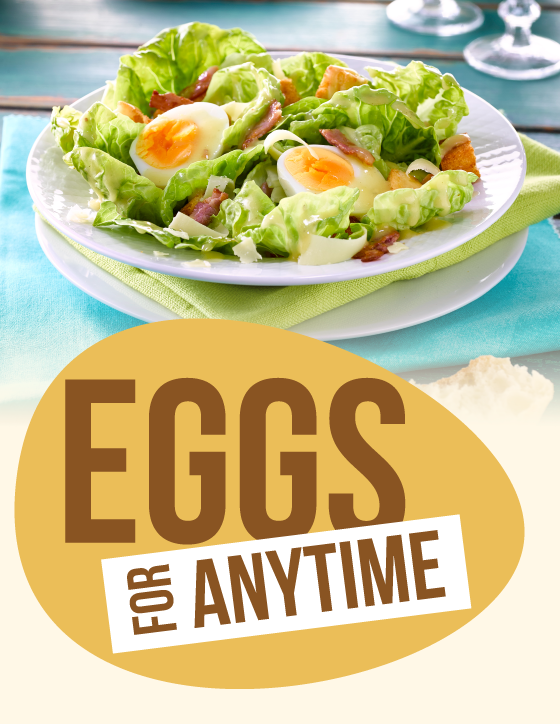 Calling all Chefs -
Calling all Chefs -
Your Egg Recipe Could be a Winner!
Bord Bia and the Irish Egg Association are on the hunt for Ireland’s most Eggsciting recipes from Chefs all over the country, and we don’t mean breakfast or brunch. We’re talking lunch, dinner, tapas and any other Eggspresssions from creative Chef Eggsperts!
Not only are eggs nutritious and delicious, they are also hugely versatile and can offer a great value savoury alternative for a lunch or dinner menu offering.
We want to hear about your favourite egg recipe... Providing... the recipe submitted is a savoury dish and made with Bord Bia Quality Assured eggs; that is not a breakfast or brunch offering.
Entries are open to professional chefs and cooks in the Republic of Ireland. The winner and four regional runners up will be selected by Georgina Campbell and the Bord Bia team, and all submissions entered will be given full and fair consideration.
Don’t forget to use Bord Bia Quality Assured Eggs in your recipe so you know they have been produced to the highest Bord Bia quality standards which have been verified at every stage.
Prizes
• €1,000 for the winning entry: (€500 One4All voucher PLUS €500 to be redeemed against a hotel/restaurant of your choice)*
• 4 x €250 One4All vouchers for each of the four shortlisted runners-up entries
• Sunday Independent magazine feature highlighting the winner and their selected egg dish.
• PR opportunities for both runners up and winner
* Venue must be located in Ireland.
Submit your favourite egg recipe
| ENTER NOW! |
Nominations close on Tuesday 30th April 2019 at 12 noon.
How to identify Bord Bia Quality Assured Eggs
All eggs in the Bord Bia Egg Quality Assurance Scheme carry the Bord Bia Quality assurance logo both on the packaging and on the egg itself.

Key Aspects of the Bord Bia Egg Quality Assurance Scheme
This scheme is designed to build on the general high health status of the country’s laying flock by introducing further measures of prevention and control. It is a code of best practice covering the rearing, production and packing of eggs.
Why Choose Eggs produced under the Bord Bia Quality Assurance Scheme
The FSAI recommends Bord Bia Quality assured eggs to avoid the possibility of salmonella particularly for use in recipes that require either raw eggs or undercooked eggs. In an advisory note of May 2010 they state:
Hen eggs produced under the Egg Quality Assurance Scheme, set up by Bord Bia in 1999, are subject to enhanced Salmonella spp. controls in addition to the regulatory requirements and are ink-jet marked with the Quality Assurance logo. Caterers using fresh shell hen eggs in egg dishes that are not cooked thoroughly should use the safest eggs available i.e. eggs produced under the Bord Bia Egg Quality Assurance Scheme.
|
|
|
|
|
|
21 YEAR MILESTONE IN CELEBRATING EXCELLENCE IN IRELAND�S FOOD & HOSPITALITY
Ireland's longest-running, independent Irish food and hospitality awards, in association with AIB, will celebrate 21 years under the current branding (plus a good few more before that!), with a gala event at the Intercontinental Hotel in Dublin on Sunday, 15th September, with special guest, Richard Corrigan. This year's Georgina Campbell Irish Food & Hospitality Awards have a particular focus on celebrating Ireland's talented industry pioneers; those who laid the quality foundations that have made Ireland's food tourism and hospitality journey such a vivid success story (many of whom are still leaders today), and the new pioneers who are doing the same thing for its future.
Shortlisted winners and industry guests will gather for a magnificent lunch featuring award-winning Irish produce and fine wines, and will enjoy an exclusive Q&A with one of the industry's great chefs and innovators, Richard Corrigan. Then it's down to the business of the day; the much-anticipated announcement of the winners of the 2020 Georgina Campbell Irish Food & Hospitality Awards.
Due to their independence, these prestigious awards are often cited as the most important in Ireland. Establishments are anonymously assessed by a team of impartial food experts, food writers and retired hospitality professionals, who visit and experience all shortlisted and winning establishments, together with the many more that do not make the shortlists, each year.
The 25 food and hospitality awards award categories, plus a special group of valued food / drink producers and suppliers, are detailed below, followed by the shortlisted winners.
Spaces for the awards event on September 15th are limited and nominees are encouraged to book early to avoid disappointment.
2020 GEORGINA CAMPBELL IRISH FOOD & HOSPITALITY AWARD CATEGORIES
- Georgina Campbell Hospitality Hero Award
- Hotel of the Year
- Restaurant of the Year
- Chef of the Year
- Business Hotel of the Year
- 'Taste the Island' Innovation Award, sponsored by Fáilte Ireland
- 'Just Ask!' Restaurant of the Year, sponsored by Bord Bia
- Pub of the Year
- Wine Award of the Year
- Outstanding Guest Experience of the Year
- Host of the Year
- Seafood Restaurant of the Year
- A Taste of the Waterways Award
- Newcomer of the Year
- Family Friendly Hotel of the Year
- Hideaway of the Year
- Pet Friendly Place of the Year
- Atmospheric Restaurant of the Year
- Ethnic Restaurant of the Year
- Casual Dining Restaurant of the Year
- Café of the Year
- Street Food of the Year
- Country House of the Year
- Guesthouse of the Year
- B&B of the Year
- Natural Food Awards - for Producers & Suppliers
Georgina Campbell Irish Food & Hospitality Awards 2020
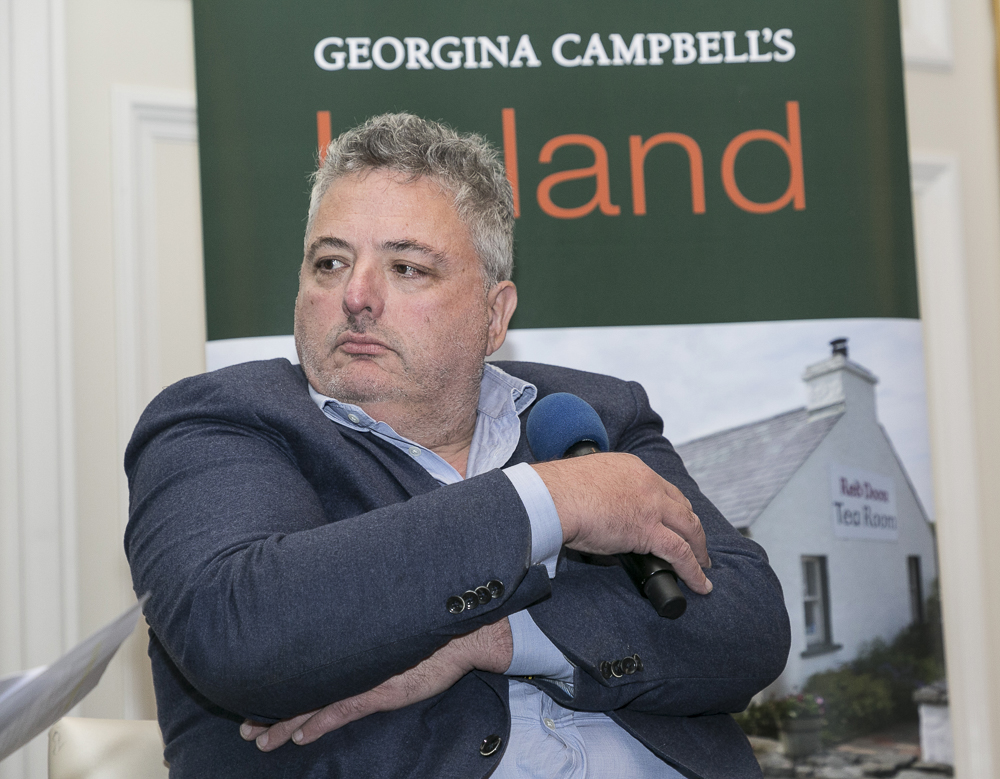
Ireland’s Hotel, Restaurant, Chef, Hideaway and Pub of the Year announced at National Awards Ceremony
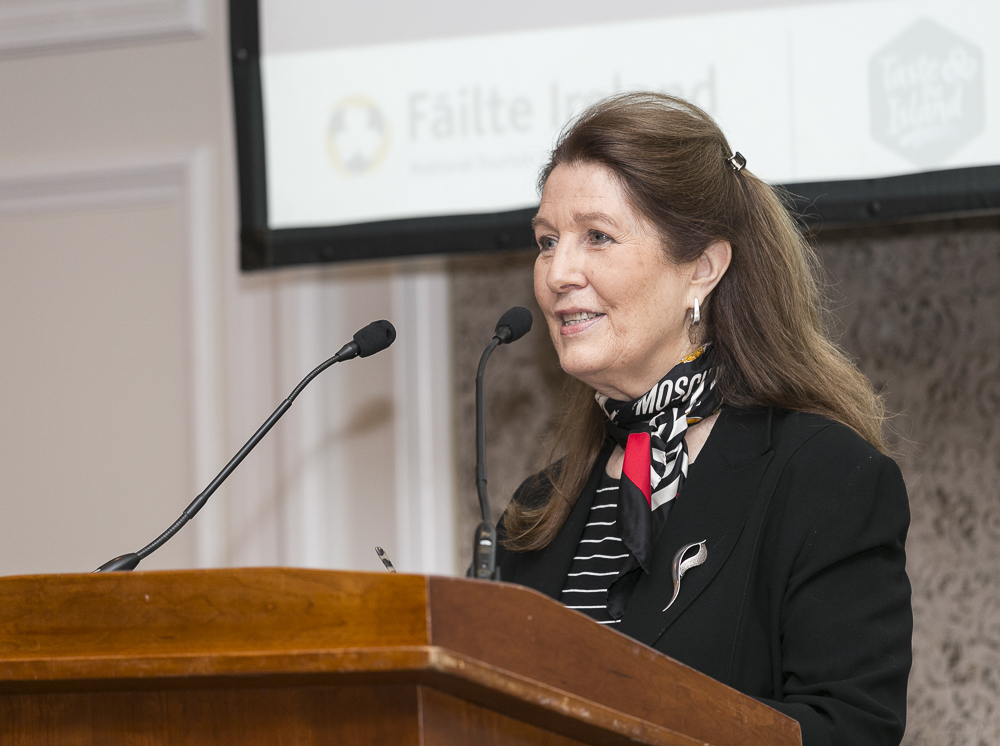 From Ireland’s best street, ethnic and seafood to the finest host and the most pet-friendly destination, winners of Georgina Campbell Irish Food & Hospitality Awards 2020, in association with AIB announced
From Ireland’s best street, ethnic and seafood to the finest host and the most pet-friendly destination, winners of Georgina Campbell Irish Food & Hospitality Awards 2020, in association with AIB announced
• Marlfield House Hotel, Wexford, Hotel of the Year
• Chef of the Year awarded to Mickael Viljanen of The GreenHouse, Dublin
• Aimsir in Kildare announced Restaurant of the Year
• Chef / restaurant proprietor Michael Deane receives Ireland’s Hospitality Hero of the Year Award
• The Lodge at Ashford Castle is Ireland’s Pet Friendly Destination of the Year
• Five food producers selected for a Natural Food Award
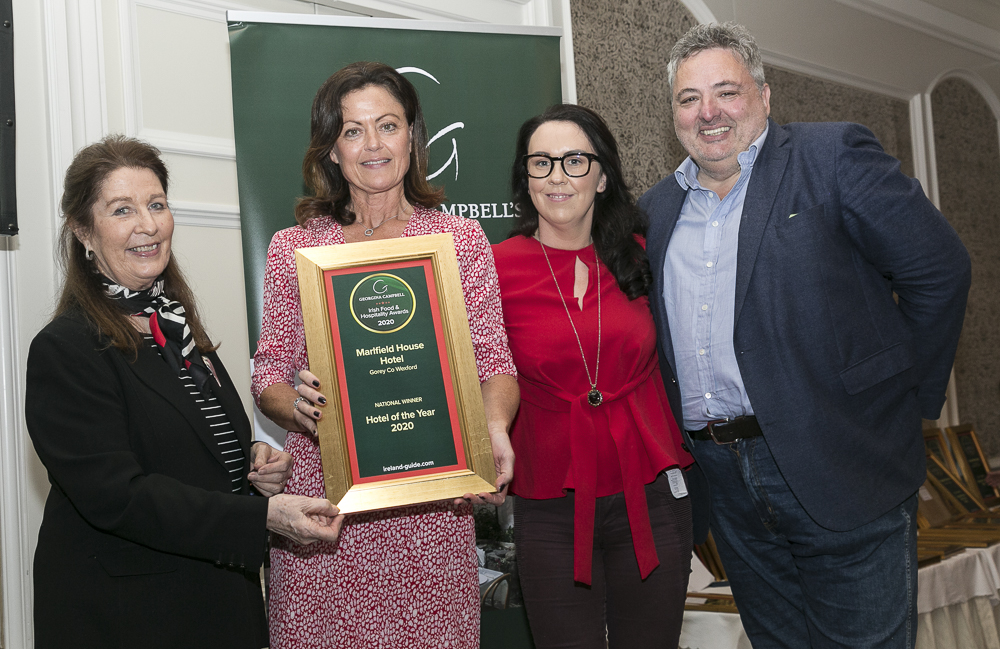
Celebrating 21 years in their current incarnation, the Georgina Campbell Awards recognise and honour Ireland’s standard-bearers in food and hospitality in Ireland with particular emphasis, this year, on the industry pioneers who put down quality markers a generation or more ago.
Celebrating generations of standard-bearers
According to Georgina Campbell, one of Ireland’s foremost food and hospitality writers, Ireland’s success in food, tourism and hospitality is a very exciting and ever-developing story. “I have been thinking a lot about the legacy of the wonderful Myrtle Allen - to whom the industry owes an enormous debt of gratitude and who we remember fondly at today’s event - and those of her generation who have laid down the unshakable foundations of quality. Many of these great people are still active and working alongside their children and often their grandchildren, and they are the pioneers of the genuine hospitality, sustainable food sourcing and innovation that Ireland is gaining a reputation for today,” said Georgina Campbell.
“Equally we can marvel at the wave of talented, skilled and motivated young people who are laying down new foundations and safeguarding the future for the generations to come. It’s a challenging time to be in food and hospitality right now, but it’s also a very exciting time and, in the main, standards are increasing at every level from ground-breaking new restaurants to casual dining destinations, street food trucks, cafés and bars. So much so, in fact, that selecting the shortlists for these awards was an even more demanding task than usual.”
Sustainability
Georgina added, “This year, in tune with our special recognition of the pioneers in Irish food and hospitality, we have also been looking particularly at sustainable development, and especially when it takes place within a family business. The ability to recognise the need for change and act creatively and sustainably so that they can not just survive, but thrive, is what marks out many of our most successful multi-generational businesses - some of which have re-invented themselves several times in recent decades.”
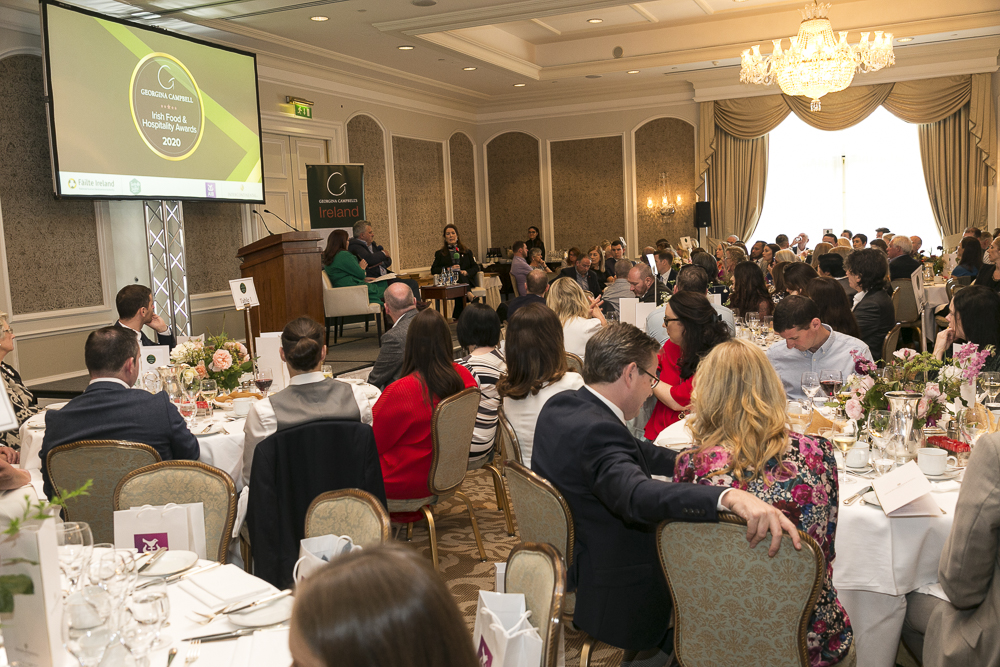
Whilst the awards are a celebration of our best hospitality and finest producers, Georgina Campbell did express a note of caution. “When carrying out our independent and anonymous assessments around the country, we have encountered disappointments once again, and particularly with some 4- and 5-star hotels, where there really should be no excuses. There is a worrying lack of a sense of hospitality in some cases and poor training - or indeed no apparent training at all - and it is baffling that there are still issues with standards at ‘top’ establishments every year. Hotel prices are continuing to rise too, especially in the major cities and without any corresponding rise in standards, and it is disappointing to see us losing the competitive edge that was so hard won during the recession,” said Georgina.
Sourcing and provenance
Speaking at the awards, Georgina Campbell had praise for the improvements in sourcing policies, crediting Bord Bia’s Just Ask programme for the work it has done in this area. “Provenance is so important to consumers and establishments owe it to themselves, their suppliers and their customers to highlight the origin of the produce on the menu, thereby supporting Irish suppliers,” said Georgina.

Amongst the many guests who attended the prestigious awards were Richard Corrigan, Darina Allen Michael Deane, Niall McKenna and Andy McFadden, all of whom are widely recognised as leading lights in the promotion of Ireland’s thriving food and hospitality industries.
THE SELECTION PROCESS
Georgina Campbell’s Ireland’s rigorous programme of anonymous assessment visits is a year-round process and winners are nominated solely by an independent assessment team.
Fill list of winners can be found here.
Georgina Campbell Irish Food & Hospitality Awards 2020
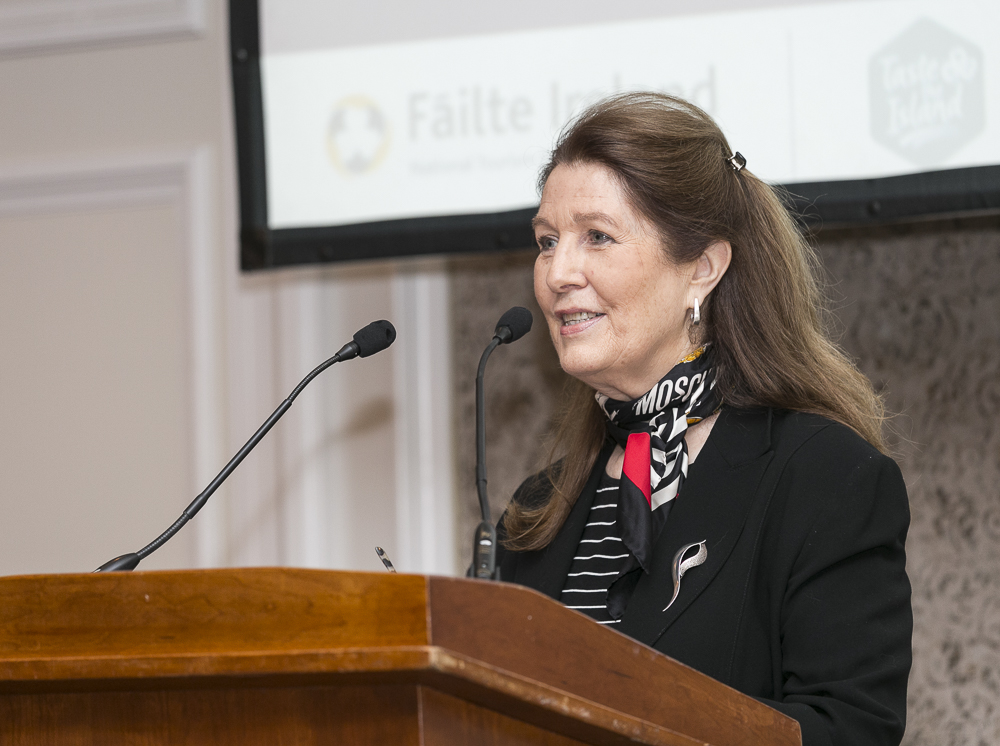
1. NATURAL FOOD AWARD 2020
• POULTRY Carlow Free Range Fenagh Co Carlow
• FISH Goatsbridge Trout Farm Thomastown Co Kilkenny
• DRINKS Longueville House Beverages Mallow Co Cork
• VEGETABLES Drummond House Garlic & Asparagus Baltray Co Louth
• DAIRY Cashel Farmhouse Cheesemakers Fethard Co Tipperary
• POULTRY Carlow Free Range Fenagh Co Carlow
One of the few Irish poultry businesses to own and manage the entire supply chain process from rearing birds in a stress free environment through to the processing, packaging and delivery, the highly regarded company Carlow Free Range started production in 1993 - and it’s been a force to be reckoned with since 2004, when Bertram and Celine Salter married. Now a byword for quality, they’re true to their philosophy that ‘Free range tastes better’ and have an EU Licensed slaughterhouse on site. They’re sold in leading retailers such as Ardkeen Quality Food Store and some of the butchers who took the first deliveries in 1993 are still proudly selling the product today.
•FISH Goatsbridge Trout Farm Thomastown Co Kilkenny
Previous generations of Margaret and Gerard Kirwan's family business took over where the Cistercian monks of Jerpoint Abbey left off in this area, ensuring there's trout aplenty in the Arrigle River in the Nore valley. While fundamentally steeped in tradition, they are constantly innovating; new products are regularly introduced and they welcome visitors to see their eco-friendly working environment and to try their Premium Fresh and Smoked Trout - and also their delicious Irish Trout Caviar, which is a first for Ireland.
• VEGETABLES Drummond House Garlic & Asparagus Baltray Co Louth
Having inherited a Co Louth farm from his uncle, architect Peter Collier and his wife Marita decided to specialise - and it is now 'The Home of Irish Garlic'. This enterprising couple produce a number of garlic varieties - and Elephant Garlic (a member of the leek family, not a true garlic), Green Garlic (the young plant of any of the garlic varieties), and delicious crunchy Garlic Scapes (stalks, which are a by-product). Distributed by Redmond Fine Foods, the superb Drummond House produce (including, since 2014, asparagus) is also sold in local shops and at the farm.
• DAIRY Cashel Farmhouse Cheesemakers Fethard Co Tipperary.
Veterans of farmhouse cheese production, Jane and Louis Grubb and family have been making cheese on their Tipperary farm since 1984, with daughter Sarah and her husband Sergio Furno now closely involved in the business, Cashel Irish Farmhouse Cheesemakers. The internationally renowned Cashel Blue is still made by hand on the same 200 acre farm, using their own milk and supplies from selected nearby farms. They also make Cashel Blue Organic, Crozier Blue (Ireland’s only sheep’s milk blue) and the newer Shepherd’s Store (a hard sheep’s milk cheese) and offer an on-farm Visitor Experience.
• DRINKS Longueville House Beverages - Mallow Co Cork
Established by the late Michael O’Callaghan, who planted orchards (and vines!) in the 1980s, and now made very successfully by his son William, the single estate Longueville House Beverages are made using sustainable traditional processes (crushing, pressing, fermentation, filtration), and the ciders are lightly carbonated and pasteurised. Longueville House Irish Apple Brandy is distilled annually and the newest product, Longueville Mór Cider, is fermented and aged in Longueville Apple Brandy casks; it is the only cider made this way in Ireland, producing a truly delicious and unique cider which has received well-deserved acclaim.
2. GEORGINA CAMPBELL ‘Hospitality Hero’ AWARD 2020, FOR SERVICES TO IRISH FOOD & HOSPITALITY
WINNER: Michael Deane Deanes Belfast
Deservedly hailed as Northern Ireland’s premier restaurateur for many years, chef Michael Deane’s Howard Street venue has long been the benchmark by which other restaurants in the region are judged and - although other talented and dedicated people are also raising the bar for Belfast as a top dining destination - it remains a beacon of excellence. Always ahead of the game and never interested in gimmicks, Michael’s antennae seem to have a private line to the evolving market - and, whenever he senses the need for change, he invariably creates something special and just right. Having spearheaded modern food in Belfast - and, in particular, working with hand picked suppliers and transforming their seasonal ingredients into delicious, perfectly conceived dishes - he continues to provide leadership, and to bring discerning Northern Ireland diners with a cuisine choice of exceptional quality and value.
3. HOTEL OF THE YEAR 2020
WINNER: Marlfield House Hotel Gorey Co Wexford
Opened as an hotel in 1978 by the legendary Ray and Mary Bowe, this impressive house outside Gorey (former residence of the Earls of Courtown) soon established a reputation as an elegant oasis of unashamed luxury offering outstanding hospitality and service. Always well run, it has changed with the times - and in style - under the management of their daughters, Margaret and Laura, who are now continuing - and developing - the family tradition of hospitality. As well as the main house, they now also operate the lovely informal café-restaurant, The Duck, alongside the kitchen garden - and also Duck Lodge, a contemporary self-catering cottage - all of which means this beautiful property can be enjoyed by a much wider audience. A magnificent example of sustainable development and a joy to visit.
Highly Commended: No. 1 Pery Square Limerick
Immaculately restored by owner Patricia Roberts in celebration of its original architectural features, Limerick’s premier boutique hotel is a stunning property on the city’s most gracious Georgian square. The fine public rooms and sumptuous bedrooms are a delight and the holistic Spa @ No. 1 offers the ultimate in pampering. Head chef Mark Belton oversees a number of dining options including the fine dining Sash restaurant and the recently opened Long Room. "...All about simplicity and pride, inspired by our wonderful producers, not just from Limerick and its environs but from the whole island” it offers an innovative menu of simple, tasty dishes with a sense of place. Afternoon Tea, served in the first floor Drawing Room, is another highlight - and the warmth of welcome and pampering of guests at this luxurious hotel match the care devoted to the building
Highly Commended: Castle Leslie Estate Glaslough Co Monaghan
Home to the Leslie family since 1665, this beautiful property is now run by Sammie Leslie, the great-great granddaughter of the man who built the present castle. Choose between rooms in the extraordinary Castle or in The Lodge, a sensitively designed and atmospheric modern hotel built around a stable courtyard, complete with an equestrian centre and Victorian Treatment Rooms. Except for Afternoon Tea at The Castle (and groups), dining options for both residents and non-residents are the hotel’s informal Conors Bar (all day) or the excellent evening destination Snaffles Restaurant, where the menu includes dishes based on old recipes from the Castle Leslie Estate Cookbook - and a very good breakfast is served.
4. RESTAURANT OF THE YEAR 2020
WINNER: Aimsir Cliff at Lyons Celbridge Co Kildare
The most keenly anticipated restaurant opening in recent years, the arrival of chef Jordan Bailey (from Cornwall and formerly head chef at top Scandinavian restaurant Maaemo, in Norway) and his Danish wife, Majken, and their restaurant Aimsir was a first for Ireland. It is a huge compliment to Ireland and the quality of its produce that they chose to settle in Co Kildare. Aimsir, meaning weather in Irish, is dedicated to "Celebrating what can be sown and harvested, fished and foraged on the island of Ireland" and Jordan’s exquisite 18-course tasting menu is 95% sourced within Ireland. Everything about Aimsir is meticulously planned and just right. And what lingers in the mind is not just the sheer creativity and skill, or even the deep flavours and extraordinary attention to detail - but, especially, the warmth, friendliness, enthusiasm and charm that make for a memorable dining experience. It’s a one off.
Highly Commended: Liath Blackrock Co Dublin
Dinner at Liath, in Blackrock Market, is one of the finest dining experiences in Ireland. With just 22 seats, this stylish little restaurant offers a sense of escapism and exclusivity. Serving an exquisite ten-course tasting menu, Damien Grey and his superb team, spearheaded by the ebullient Niall O’Connor, deliver a fairy tale experience underpinned by seasonality, excellence and genuine warmth. The ten-course offering unfolds like a well directed movie, with a gripping opening, compelling narrative and sublime cast. Each dish has a star ingredient with supporting cast of textures, the flavours developing with each course. It is, quite simply, a sensational restaurant. Small? Yes. But perfectly formed.
Highly Commended: MacNean House & Restaurant Blacklion Co Cavan
Neven Maguire's position as one of Ireland's leading chefs is well earned, and the prospect of a meal at the restaurant that he and his wife Amelda run in this little border town has long attracted devotees from all over Ireland, and beyond. Once a modest restaurant with rooms, they have made it a spacious place of sumptuous comfort, providing the setting that is deserved by Neven's exceptional cooking of the local foods that he has always championed with such passion. Neven leads an outstanding team and the restaurant is constantly evolving, always with the same hands-on care and a genuine desire to please both new guests and local diners - who are especially appreciative of his famous Sunday lunches. Thoughtful touches abound, making it a very special place.
5. CHEF OF THE YEAR 2020
WINNER: Mickael Viljanen The GreenHouse Dublin
Mickael Viljanen’s cooking is in a league of its own and The GreenHouse delivers one of Ireland’s finest culinary experiences. Everything from the intimate room to the warm staff enhance the special feeling you’ll get when dining here on the extraordinary Finnish-Irish cooking. Together with restaurateur Eamonn O’Reilly, Viljanen promises an exceptional seasonal treat with lunch offering some of the best value in town. Stunning food will take your breath away, and even the most jaded diners never fail to be astounded by the level of creativity and brilliance poured into every dish.
Highly Commended: Stephen Toman OX Belfast
Since 2013 Stephen Toman and Alain Kerloc'h’s ambitious yet relaxed Lagan-side restaurant has been a national point of inspiration for a new kind of seasonal cooking. Describing itself simply as 'A restaurant with seasonal creativity’, it combines stylish modern ingredients-led food and impeccable service with a casual vibe and continues to be one of the most consistently exciting dining rooms in the country. The month's Larder of foods in season is the starting point for every dish and meat, fish, vegetables and other ingredients, including foraged foods, are each afforded equal respect and Stephen Toman's cooking is exquisite, with great attention to detail - a standard mirrored by seemingly laid-back, yet highly efficient service and, of course, the backing of Alain Kerloc'h’s famous wine experience. A great team and a wonderful, affordable restaurant.
Highly Commended: Andy McFadden Glovers Alley Dublin
Returning from a successful career in London to the space formerly occupied by Kevin Thornton’s eponymous restaurant overlooking St Stephen’s Green, Tallaght man Andy McFadden brings years of experience cooking at the highest levels. Andy’s menus – lunch, dinner à la carte and tasting – represent the very best of Irish produce, which are proudly declared in print. Dishes feature luxury ingredients and a mix of classic and international influences Each dish is a tiny work of art, colourful, delicate, imaginative, all served on beautiful tableware and desserts especially are exquisite Though prices are stiff, the food is creative, ambitious and beautiful - this is some of Dublin's finest food.
6. ‘TASTE THE ISLAND’ INNOVATION AWARD 2020, sponsored by Fáilte Ireland
WINNER: Tartare Galway
Owned by leading restaurateurs JP McMahon and Drigin Gaffey, and just across the road from their famous fine dining destination, Aniar, this informal little sister quickly became one of Galway’s best-loved spots thanks to its brilliantly simple food and cool arty vibe. Equally committed to foods of the region - especially oysters and grass-fed beef - Tartare is popular for casual daytime fare and by night the focus is on beautifully conceived small plates and biodynamic wine. And, innovative as always, JP and Drigin are finding ways for Tartare to contribute to the city’s vibrant cultural life, notably through their free-entry Wine & Design evenings, which provide a local artist or designer with a platform, to discuss their work, their inspirations, and what it means to be an artist in Galway (coming up soon is Noeline Kavanagh, Artistic Director of Macnas) together with a talk and tasting of carefully-selected organic, natural, and biodynamic wines. Original, educational and fun - very Galway.
Highly Commended: Osta@W8 & W8 Centre Manorhamilton Co Leitrim
A perfect reason to explore the beautiful and relatively undiscovered North-West of Ireland, the W8 Centre is an imaginative modern tourist and cultural hub in the friendly town of Manorhamilton. Created with vision by developer Shane Kerrigan from an abandoned ghost estate, W8 Village is now a model of sustainable tourism, offering stylish high-spec 2- and 3-bedroom self catering accommodation, an urban garden and underground parking. With some great special interest breaks offered (Foodie, Fishing and Outdoor Activities to Health & Wellbeing, Crafts and Team Bonding/…) it’s ideal for families and small groups - and its stylish modern restaurant, OstaW8, is a destination in its own right. The younger sister of Brid Torrades' acclaimed ingredients-led restaurant in Sligo Town, this stylish and very friendly modern restaurant opened in April 2019 and soon established itself as a quality casual dining destination for discerning diners travelling to, or through, the area as well as the lucky locals.
Highly Commended: Killary Lodge & The Misunderstood Heron Leenane Co Galway
Jamie and Mary Young opened their pioneering Little Killary Centre near Leenane in 1981, and now there's a feeling of things coming full circle as they and their children, Shane and Ciara who - together with sister Kim and her husband Reinaldo and their magnificent food truck *The Misunderstood Heron - continue the family habit of constant reinvention. Embarking on an equally exciting new era, 2018 saw the opening of the Young family's beautiful purpose-built 'nature lodge' The Killary Lodge, on the grounds of their famous Killary Adventure Centre. Sustainably designed as a (mainly) self-catering destination for groups, it makes a stunning venue for everything from corporate events like think tanks and training programmes, to getaways such for special interest groups. It is also perfect for multi-generational family breaks, and even small weddings - and The Misunderstood Heron team can provide the catering. So inventive, and super practical too. [*The Misunderstood Heron was the winner of our Street Food of the Year Award, 2019]
7. “JUST ASK” RESTAURANT OF THE YEAR AWARD 2020
sponsored by Bord Bia
WINNER: The Wilds Enniscorthy Co Wexford
Paula Asple and Simon Nelson’s thriving café is set in a landmark building at the top of Weafer Street - and it has become the go-to place in Enniscorthy for delicious daytime food. The philosophy here is admirable – the best local, Irish, seasonal, free-range, organic, ingredients are used where possible, and suppliers and producers credited on the menu include local giants of sustainability such as O’Neill’s Bacon, Butler’s Family Farm, Stafford’s Butchers Enniscorthy, The Veg Patch Ferns, Fairfield Milk, Ballycross Apple Farm, and Millstream Fishmongers Enniscorthy - a great cross section of the very best that's available locally. No wonder they have built up such a loyal clientele. A gem.
Highly Commended: Flanagan's Gastro Pub Brickens Co Mayo
Easy to spot with its bright cream and red colour scheme and an old Austin delivery van parked outside, Luke and Caroline Flanagan's attractive pub is very family-friendly and offers plenty of crowd pleasers, but the difference is in the commitment to quality - the Flanagans are great supporters of local producers, with a list of suppliers given and many ingredients name checked throughout their menus - a Greek style salad, for example, may be made with delicious Aran Island Feta Cheese and organic leaves from Mill House Farm near Galway. There’s also a good choice of craft beers from Mayo and neighbouring counties and ciders from Louth and Armagh - and a 125cl "driver's glass" wine measure, which is a great idea for any rural pub/restaurant.
Highly Commended: Dunmore House Hotel Clonakilty Co Cork
Set in one of West Cork's most desirable locations, the O'Donovan family's immaculately maintained hotel is magnificently situated overlooking the Atlantic Ocean near Clonakilty. "A sense of place by the sea using the finest ingredients from West & County Cork" is how they introduce the bar menu and it pretty well sums up the food philosophy of the whole hotel. Superb Hereford beef, puddings and pork sausages, for example, come from MJ O' Neill's butchers in Clonakilty, which was established in 1919 and still has its own abattoir...also puddings from the world renowned Clonakilty Black Pudding Company, of course, and poultry from another highly respected and long established Clonakilty family business, Shannon Vale Foods which was founded by the O'Regan family when they arrived here in 1885
8. A TASTE OF THE WATERWAYS AWARD 2020
WINNER: Wineport Lodge Glasson Co Westmeath
Ray Byrne and Jane English’s unique shoreside lodge overlooking Lough Ree started life in 1993 as a rustic restaurant with themes echoing life around the river and lakes - and, although it now has thirty beautiful rooms (all with private balconies overlooking the lake), a hot tub and treatment rooms - the lovely contemporary restaurant remains its heart, serving fine meals with warmth and professionalism. A great example of sustainable development, the food experience here has always been about seasonal local produce and a formal meal in this stunning venue is a special outing - but it’s also ideal for Afternoon Tea or a casual daytime bite in the bar, and this giant of the inland waterways makes a perfect journey break
Highly Commended: The Cottage Restaurant Jamestown Co Leitrim
Colourful paintwork, window boxes and hanging baskets give an attractive cottage character to this cheerful white-washed restaurant. Situated on the edge of the pretty village of Jamestown near Carrick-on-Shannon, it is one of the River Shannon’s favourite destinations with both local diners and visitors, many of whom arrive to the nearby quay by boat. It’s run by the talented and energetic local chef, Shamzuri Mohid Hanifa ('Sham'), whose excellent modern European and Asian food is based proudly on the best seasonal local produce available and offers something different from other restaurants in the area. A proud Euro-Toques chef, Sham’s simply worded menus support their philosophy and demonstrate pride in using the best of local and other Irish suppliers, while the friendly, smartly turned out staff make sure that everyone enjoys his delicious cooking - and will want to return.
Highly Commended: Larkins Bar & Restaurant Garrykennedy Co Tipperary
You can’t miss this pretty white cottage pub with its cheerful red paintwork, beside the charming little harbour in Garrykennedy. Owned by Maura and Cormac Boyle since 2006, it’s not as old as it looks but it has a genuinely traditional ambience. Maura and Cormac’s four children, Cillian, Cathal, Muireann and Diarmuid are all involved, especially in summer, and, as the Boyles are from farming backgrounds, the wholesome food offered is firmly based in the locality, especially the area’s famous meats. You’ll find delicious traditional dishes like Irish stew alongside more modern ones and local beef is the backbone of the evening menu. Cheerful, friendly and exceptionally accommodating service matches the country mood of this appealing pub - and the music and dancing are legendary.
9. SEAFOOD RESTAURANT OF THE YEAR 2020
WINNER: King Sitric Fish Restaurant & Accommodation and East Café Bar Howth Co Dublin
Established in 1971, Aidan and Joan MacManus’s elegant seaview restaurant with rooms is one of Dublin’s original fine dining establishments - and one of the first to specialise in seafood. Aidan’s famous commitment to the best of seasonal, local produce is seen on menus that offer outstanding dishes for every budget - mainly seafood, but also with a focus on game in winter - treats that have always been matched by one of the country’s finest wine lists. Evolving with the city, the cosily old world restaurant was transformed nearly two decades ago into a smart modern venue that was all about the great sea views with rooms. And, added more recently, the contemporary smart-casual East Café Bar is run by son of the house, Declan MacManus, with his wife Susan McKiernan. Offering a limited menu, Aidan's fantastic food and great value, it is proving a real winner.
Highly Commended: Eithna’s by the Sea Mullaghmore Co Sligo
A favourite destination for seafood lovers, Eithna O’Sullivan's atmospheric harbourside seafood restaurant teems with life throughout the summer and her food is better than ever. Mainly a daytime place, she offers classic seafood and quality light meals using the best from sea and land, including seaweeds. The simple style, sure handed cooking and attention to detail allow the flavours, colours and textures of the superb ingredients to take centre stage - and, although many people travel especially for the lobster, which may not not always be available, there are plenty of other delicious things to choose from. You'll find one of Ireland's best seafood chowders here, for example, or you could try seafood salad on brown bread with dressed salad, perhaps, or grilled mackerel with seaweed pesto. Also vegetarian options - and delicious desserts. Simply magic.
Highly Commended: Vaughans Anchor Inn Liscannor Co Clare
The Vaughan family's traditional bar has great character, with open fires and lots of memorabilia - it was our Pub of the Year back in 2006 and remains just the place for some seriously good seafood at fair prices, either in the bar or in the well appointed restaurant at the back with its fascinating aquarium feature. Denis Vaughan is an exceptionally talented and creative chef and uses as much local produce as possible. And everything really is fresh - all fish is from Irish waters and bought whole in order to have greater control over quality. He uses as many native species as possible, on both lunch and dinner menus - and the menu may even be changed in mid-stream because there's something new coming up off the boats. Dedication and attention to detail is seen in every dish served here - including the home made desserts, and delicious breads. Great cooking is matched by excellent service - and, while quality food can never be cheap, it's real value
10. OUTSTANDING GUEST EXPERIENCE 2020
WINNER: Inis Meain Restaurant & Suites Aran Islands Co Galway
This wonderful place on the most tranquil and least visited of the Aran Islands group has earned an international reputation as one of Ireland's most desirable destinations. Chef Ruairi de Blacam, a native of Inis Meáin, and his wife, Marie-Thérèse, offer a unique experience, serving beautifully simple food in a modern restaurant with a panoramic view of the island, sea and sky. Suites are designed to help guests discover the peace and quiet of the island, with fishing rods, bicycles and books instead of TV or a spa. An Inis Meáin Breakfast Box, HotPot Lunch, and Exploration Kit are delivered to each suite, so that guests have everything that is needed to make the most of their stay without decision making. In their own words: "Inis Meáin offers the best of Ireland in one easily explored island – unparalleled natural beauty, culture, and history in a living community." After a decade, the offering develops from year to hear but the philosophy remains unchanged: simply magic.
Highly Commended: BrookLodge & Macreddin Village Aughrim Co Wicklow
It’s hard to know where to begin to describe the experiences that this extraordinary food, drink and leisure destination has to offer. Built on the site of a deserted village, it exists thanks to the vision of three brothers, Evan, Eoin and Bernard Doyle, with Evan being the hands-on driving force. A spacious and welcoming hotel, its many USPs include ‘green’ conferences and events and a luxurious spa - and, of course, it is especially famous for its food and, especially in the main restaurant, The Strawberry Tree, has earned national recognition for their pioneering position on organic and wild food. Actons Country Pub and The Orchard Cafe are especially atmospheric, and the memorable meals served everywhere at BrookLodge are great value, especially given the outstanding quality of the ingredients and the consistently excellent standard of cooking. An organic food market is held here on the first Sunday of the month too (first and third in summer), and it is always worth a journey
Highly Commended: The Quay House and Blue Quay Rooms Clifden Co Galway
The Quay House is the oldest building in Clifden. It was built around 1820 and, since 1993, has been relishing what must surely be its most enjoyable phase, in the incomparable hands of long-time hoteliers, Paddy and Julia Foyle. It’s a fine house, with spacious rooms, including a stylishly homely drawing room with an open fire and exceptionally comfortable accommodation in wittily decorated and sumptuously furnished rooms. Breakfast is served in their new conservatory (and a treat to relish) and not only are Paddy and Julia consummate hosts, making sure that a stay here is a luxuriously enriching experience, but the family has created the perfect alternative nearby at Blue Quay Rooms, where their son Toby and his wife Pauline offer budget accommodation with great style. All round, it’s Irish hospitality at its very best.
11. HOST OF THE YEAR 2020
WINNER: Mary Sweeney Castle Grove Country House Letterkenny Co Donegal
Parkland designed by “Capability” Brown in the mid-18th century creates a wonderful setting for Raymond and Mary Sweeney’s beautiful period house overlooking Lough Swilly. A reputation for promoting the good food of the area and produce from their own gardens has attracted many a food lover to this hospitable Blue Book property - and, with daughters Karoline and Irene now on the management team, there’s a youthful new dimension to the business. But fortunately that doesn’t deprive guests of the company of Mary Sweeney who - with a keen interest in just about everything, and exhaustive local knowledge - makes Castle Grove a number one choice for many when visiting Donegal. Mary has the gift of making every guest feel special and at home - and, sensing where their interests lie, nothing is too much trouble when it comes to advising on how to spend their time most happily when exploring Donegal. A very special person.
Highly Commended: Beryl Kearney Viewmount House & VM Restaurant Longford
Viewmount House is a beautiful destination - and James and Beryl Kearney took the midlands by storm in 2008 when they opened VM Restaurant with Head Chef Gary O’Hanlon in atmospherically converted outbuildings beside the lovely old house. Today Dutch chef Marcio Laan is continuing the tradition, with excellent cooking which is grounded in the familiar products of the region, and is not overly cheffy. But good food is nothing without hospitality - and the key to the reason why a meal here is sure to be a memorable experience is the attentive service given by well trained and very pleasant staff - and, especially, Beryl Kearney’s caring interaction with guests. Always worth a journey
Highly Commended: Sonia McGonigle Glen House Clonmany Co Donegal
The McGonigle family's large, beautifully located and well-managed B&B has a charming 18th century house at its heart and it’s a delightful place to stay. The dramatic 40 foot Glenevin Waterfall is accessed by a path right beside the house, and one of the first improvements that Martin and Sonia McGonigle made when they bought Glen House in 2005 was to add an impressive decked area overlooking the river which runs down from the waterfall. More recently they added a little traditional thatch-roofed cottage which serves as a craft shop and ice cream parlour. Everything is immaculately maintained and has a very welcoming feeling - which is very much down to Sonia McGonigle, who is a thoughtful and hospitable host who conveys a feeling of great personal care and warmth about the whole property.
12. BUSINESS HOTEL OF THE YEAR 2020
WINNER: The Shelbourne Dublin
The Shelbourne celebrates its 195th anniversary this year - and it is still the heart and soul of Georgian Dublin. A recent facelift, which included the addition of the 1824 Bar and The Terrace, has in no way compromised its iconic charm. From uniformed doormen to sparkling chandeliers it remains itself and the rooms overlooking St Stephen’s Green, especially, are unique. While always a favoured choice for leisure trips and special occasions, The Shelbourne also has a special niche as a business and conference destination, offering state-of-the-art amenities in an historic setting that conveys a unique cachet to any event held here. So whether it’s a grand occasion for up to 350 guests in the magnificence of The Great Room, or something for just a couple of dozen in one of the four beautifully renovated meeting suites, there is an appropriately atmospheric venue in this historic hotel for every event
Highly Commended: Ballygarry House Hotel Tralee Co Kerry
Now in the third generation of McGillicuddy family ownership, this is an appealing hotel and it gives good value for the high standard of accommodation, food and service offered. One of Kerry’s most sought-after venues, it is especially popular for weddings but is also an excellent choice for meetings and conferences, offering a selection of very attractive and well equipped rooms catering for anything from a small group of eight to a large conference for up to about 350 delegates - and, in common with other experiences in the hotel, good food and the exceptionally friendly and helpful staff ensure a well run event that makes people want to return.
Highly Commended: Radisson Blu Hotel & Spa Sligo
This spacious and very comfortable hotel near Rosses Point enjoys views over Sligo Bay - the Classsiebawn Restaurant, in particular, has a wonderful outlook. But the Radisson Blu Hotel & Spa Sligo has more than an outstanding location to offer - this well run hotel is the area's go-to destination for many occasions and events, and the Radisson reputation for reliability and environmental awareness is a plus. Conference facilities for up to 740 delegates and a business centre with ten flexible meeting spaces (all with natural light and bay views) are among the features that make this the top venue in the region - and it has great downtime activities to offer too.
13. WINE & DRINKS EXPERIENCE 2020
WINNER: Chapter One Dublin
The drinks offering at Chapter One has always been exceptional, and there’s a constant effort to innovate and improve. Seeking ‘unique personality and strong character’, the wine list is an evolving search for perfection that includes plenty of excellent affordable choices, as well as great wines for deep pockets. One of the first restaurants to switch to an Irish-only gin menu, you’ll also find other Irish inspirations on offer - a seasonal signature cocktail, like Blackberry Royal (Laurent Perrier Brut topped with Móinéir Irish blackberry wine), for example, embodies Chapter One’s pioneering spirit. Should you only want to drink one glass of wine with dinner, you may be offered two small pours of a red and white - allowing you enjoy the matching experience to the full, with ‘just one glass’. Thoughtful touches like these, overseen by charming restaurant manager Danny Desmond and his team of sommeliers, make every meal here a joy.
Highly Commended: Paradiso Cork
Denis Cotter's ground-breaking vegetarian restaurant is famous for serving exciting mainstream cooking and Denis has received well earned international recognition recently for his sourcing policy and long term relationship with suppliers. What might be less obvious is that their way of doing things differently extends to the wine experience too. The wine list itself is pleasing and - with its thoughtful selections, including a good sprinkling of biodynamic, natural and organically produced bottles - it is an extension of the underlying philosophy at Paradiso. And another USP is that it’s unusually customer friendly. Since a major rethink a while ago they have a flat rate mark up (encouraging more adventurous choices) and all are very accessibly offered in four sizes -150ml glass, 250ml ‘quartino’ and 500ml ‘mezzo’ carafes and 750ml bottle. All this plus friendly, unassuming advice from floor manager Dave O'Mahony, makes for a very enjoyable experience - and it would be nice to see more establishments following suit.
Highly Commended: Sheridans Wine Bar Galway
A visit to Sheridans is a relaxed, convivial affair. Aromas from the cheesmongers and deli below accompany you up the stairs and there are shelves of wines to greet your arrival. Knowledgeable staff assist your choice of wines from the rustic, blue tiled bar and are very happy to let you try any bottles that are open. The wines are old world, mainly Italian and imported exclusively for Sheridans, along with some excellent wines from small producers in France, Spain and Portugal. You can buy a bottle to take home with you too, all wines are for sale. The boards are diverse and delicious, chosen daily from their wide selection of farmhouse cheeses - and wine and cheese tastings feature regularly too. A quiet seat overlooking the bustle of the Saturday market with a nibble and a tipple in hand is always a pleasure - and by night there is always a buzz, when Galwegian greats converge to catch up and discuss the issues of the day in this magic place.
14. PUB OF THE YEAR 2020
WINNER: The Roadside Tavern Lisdoonvarna Co Clare
Peter Curtin’s historic and hospitable hostelry oozes character and, famous for music for over a century, many legendary musicians have played here. More recent attractions are beers from their on-site microbrewery, the Burren Brewery, and the good food served by ‘Kieran’s Kitchen’ where chef Kieran O’Halloran (also owner of the gorgeous new Oar Restaurant in Doolin) features smoked fish from the family’s other equally famous business, the nearby Burren Smoke-house (burrensmokehouse.com) on his simply delicious menus. Next door, the latest enterprise, the multi-purpose venue, Burren Storehouse offers artisan pizzas and chargrills nightly in summer. All round, this great traditional pub and its associated businesses are the hub of activities in Lisdoonvarna - and go a long way towards making it one of the West of Ireland’s coolest destinations.
Highly Commended: The Ballymore Inn Ballymore Eustace Co Kildare
A great pub where food has always come first, Barry and Georgina O’Sullivan’s stylish café-bar was providing what was effectively the best possible gastro-pub experience long before the concept had caught on in Ireland. Nobody understands the importance of careful sourcing better than former the Bord Bia food advisor Georgina O’Sullivan, and the O’Sullivans’ policy of using only the very best ingredients, careful cooking and providing a relaxed ambience has proved a winning formula. Fans return for the smashing speciality pizzas and fresh fish, and they're renowned for their steaks - but best of all perhaps is the service given by impeccably trained staff, which respectfully complements the good food served. And there’s a little artisan shop too, so you can take some of these good things home.
Highly Commended: The Tavern Bar & Restaurant Murrisk Co Mayo
Beginning with the ‘Supporting Local Suppliers’ board at the entrance, everything about Myles and Ruth O’Brien's delightful bar and restaurant at the foot of Croagh Patrick tells a story of local food and community. The O’Briens have been running The Tavern since 1999 and have built up a great reputation for their hospitality - and Myles's good cooking of course, which demonstrates enormous pride in showcasing local food and drinks. Favourites that never fail to please include The Tavern’s legendary Seafood pie, a superb Beef steak and Guinness casserole and delicious vegetarian options such as Galway Goat Farm Cheese Bon Bons. And a local beer called Mescan - named 'after a monk who was St. Patrick's friend and personal brewer' - stars on a special Mescan Menu each spring and autumn. A great spot, where everyone leaves happy.
15. NEWCOMER OF THE YEAR 2020
WINNER: Killeavy Castle Estate Killeavy Co Armagh
First time visitors expecting a conventional castle hotel are in for a surprise at Killeavy Castle, but it will be a pleasant one as there is so much to discover - and the opening of Killeavy Castle Estate is set to give discerning travelers, from within Ireland and abroad, the joy of discovering the Ring of Gullion, and the beautiful Slieve Gullion Forest Park. And it's all thanks to the vision and determination of the owners, Australian-based local man Mick Boyle and his wife Robin, who have restored what was a derelict 19th century castle to create a boutique venue - and, alongside it, a modern hotel of character that's been developed around the castle's old coach house and mill buildings.
A perfect getaway, set in one of Ireland's loveliest yet least known areas - and just minutes from Newry.
Highly Commended: Restaurant Lady Anne Castlecomer Co Kilkenny
Set in the old Creamery House (now owned by local entrepreneur John Comerford, who has given its painstakingly authentic restoration a vast amount of TLC), this atmospheric restaurant is named after its original owner, the much-loved Lady Anne Wandesforde Countess of Ormonde (1754-1830). Its restoration gave Chef Keith Boyle and his wife Carmel (formerly of The Bay Tree Bistro Waterford City) an opportunity to bring elegant dining to this handsome town - and, from the outset, it has been a highly professional operation, with the passionately immaculate cooking and presentation of superb local produce at its heart. It’s a one-off and a must-visit destination for food lovers when in Co Kilkenny
Highly Commended: No. 14 The Georgian House Comber Co Down
A fine building which dates back to 1722 is the setting for chef Jim Mulholland’s first restaurant venture. Previously Head Chef at establishments as varied as Ballyrobin Country Lodge and Restaurant Novelli at the AC Hotel in Belfast, this admirable operation on the square in Comber is unusually for a chef this calibre. While offering the very best of fine dining, No. 14 is accessible to all and open for breakfast, lunch and dinner six days a week. Very community-focused, it’s a place where you can have freshly baked scones and coffee, a casual lunch or a fine dining experience at dinner. The breadth of the chef’s experience with his solid grounding in classic techniques and creativity in showcasing Irish produce make No. 14 a must-visit destination.
16. FAMILY FRIENDLY HOTEL 2020
WINNER: Newpark Hotel Kilkenny Co Kilkenny
Very much at the heart of local activities, this popular 1960s hotel is just a ten-minute walk to the centre of Kilkenny. Following recent renovations, bedrooms are modern and comfortable and all amenities have been upgraded. Long established as a business and conference destination, the Newpark has also earned reputation for family breaks. There’s a kids’ club in season, for example, plus playgrounds suitable for children of different ages, and a movie room with games consoles for older kids. Best of all perhaps is the hotel’s unique pet farm - complete with alpacas, llamas, pigs, rabbits, chickens, geese, goats, donkeys and Highland cows, it is a great attraction, especially as admission is free. An attractive option initially thanks to the good value deals offered - and the range of dedicated family rooms and interconnecting rooms available - the family amenities are likely to make the Newpark Hotel a return destination.
Highly Commended: Hillgrove Hotel, Leisure & Spa Monaghan Co Monaghan
Overlooking Monaghan town from a fine hillside location and with spacious public areas, the Hillgrove is the leading hotel in the area for business and leisure. The contemporary bedrooms have pleasant views - as does the main restaurant, Vettriano, which also has a large terrace looking out over the town. Families are made very welcome here and, unusually, special needs are well catered for, including at the leisure centre, which has a special needs changing room. With a playroom, games room with pool table, outdoor playground, and also a Kids Club and crèche during school holidays, the Hillgrove is a very appealing - and attractively priced - destination for family breaks.
Highly Commended: Killashee Hotel & Spa Naas Co Kildare
Set in impressive gardens and woodland just outside Naas, highlights of this attractive hotel include the spa, its lovely traditional rooms (four-posters in some) and a large first floor piano lounge overlooking the grounds, which is pleasant for afternoon tea and informal socialising. While best known for weddings and business events, it’s also a great destination for a family break. There’s a summer kids’ club (ages 4-11) and very good facilities are provided for children including an indoor playroom and library, as well as an outdoor playground with swings, climbing frame, zipline and slides. Little ones also love the Fairy Forest, and the exciting Butterfly Trail and Teddy Bear’s Picnic Trail to follow in the gardens.
17. PET FRIENDLY DESTINATION OF THE YEAR 2020
WINNER: The Lodge at Ashford Castle Cong Co Mayo
While it is especially renowned for its beautiful location adjacent to Ashford Castle and head chef Jonathan Keane’s imaginative seasonal cuisine at Wilde's, The Lodge at Ashford Castle is also a favourite destination for people travelling with pets. VIPs (Very Important Pets) are made very welcome in garden rooms with easy access to walking in the grounds; a dog bed, towel, bowls and a hand made bone treat are all provided at a cost of €10 per dog per night (max 2 per room), plus a refundable damage deposit. Unusually, cats are also welcome and there are special pet menus available for both dogs and cats. A great place to stay - and very useful for dog owners to know about.
Highly Commended: The Ardilaun Hotel Galway
Set in gardens and convenient to the city centre, this long-established hotel has been in the ownership of the Ryan family for over 50 years. It is equally suited to business and leisure breaks, a leading wedding venue and a popular meeting place for locals - and a quietly located place to stay, where families and visitors travelling with pets are all made welcome. This is, as they say themselves, 'one of the few Galway hotels to realise that you can’t have a family break without all of the family'. Ground floor rooms with direct access to gardens at the back of the hotel are available for guests with dogs, and there's an Ardilaun Doggy Pack provided.
Highly Commended: Warehouse No 1 Café and Bistro Derry Co Londonderry
Among the best of Derry city’s excellent casual dining venues, this quirky café and late week bistro is famed for its coffee, very tasty hearty artisan food and an interesting drinks menu, including craft beers. Everything is top quality - and with well known chef Ivan Taylor (former owner of Browns) leading the kitchen team, that is a given. And, unusually, the warm welcome extends to customers' four-legged friends, with treats offered including ‘pawesome bites’ biscuits - and there's even a 'puppuccino', which is an espresso cup of whipped cream with a sprinkle of dog biscuits. An interesting destination all round - and a great amenity for dog owners.
18. HIDEAWAY OF THE YEAR 2020
WINNER: The Hideaway at Dromquinna Manor Kenmare Co Kerry
Beautifully located on the shores of Kenmare Bay this stunning property was rescued from dereliction by John “At Your Service” Brennan and re-opened as a ‘glamping’ destination and wedding venue in 2012. More recently the aptly named Hideaway Tent - a seriously luxurious en-suite tent tucked away in the woods, with its own gate leading into a little garden - was added to the mix. The water feels close enough to touch and you can enjoy views over the cliff and the bay from the veranda, or from your super comfortable bed. There's a mini bar, and breakfast is delivered to your door as part of the service - and, when you get hungry, The Boathouse Bistro is just a short stroll away. A total escape
Highly Commended: Newforge House Magheralin Co Armagh
There is something especially entrancing about the idea of a hideaway that’s in, or near, a city - somewhere like John and Louise Mathers’s lovely Georgian country house which is only a short drive from Belfast and yet, set in mature trees, gardens and green fields, it feels like worlds away. It’s been in the Mathers family for six generations and it was stylishly refurbished throughout in 2005, when John and Louise opened for guests. It now offers luxurious accommodation with beautiful bathrooms - and John's terrific meals showcasing home grown, local and organic produce. It’s one of Northern Ireland's most desirable destinations - perfect for a short break, with many activities nearby.
Highly Commended: Ardtara Country House Upperlands Co Derry
Former home to the Clark linen milling family, this Victorian country house is owned by the excellent Browns Restaurant Group (of Derry City and Letterkenny) and, with Executive Chef and part owner Ian Orr overseeing the kitchen team, there's a particular buzz about the restaurant. The setting - in the former snooker room, with original skylight and hunting frieze - is highly unusual, and both the cooking (which showcases seasonal local foods with style), and the warm, friendly and relaxed service live up to the surroundings. Guest rooms are lovely too - luxuriously furnished in period style, with working fireplaces - and informal meals are offered in the bar or conservatory. A destination in itself and an excellent base for exploring this beautiful and unspoilt area.
19. ATMOSPHERIC RESTAURANT OF THE YEAR 2020
WINNER: Overwood at Balloo House Killinchy Co Down
Ronan and Jennie Sweeney's famous 19th century coaching inn has oodles of character and a great reputation for outstanding pub dining in the old kitchen bar... And now it has Danni Barry leading the kitchen team - and the gorgeous Overwood restaurant upstairs, with its cool tented terrace and brilliantly simple menu showcasing the best of local produce. It’s all about fire at Overwood, and not just for cooking - the beguiling scent of woodsmoke greets guests in the bar, where a smart glass-fronted log-burning stove is a welcoming presence, and - the pièce de résistance - a huge woodburning stove on the terrace which provides an ever-changing focal point and great atmosphere, as well as a cosy spot to enjoy a drink. Magic.
Highly Commended: 1826 Adare Adare Co Limerick
When leading chef Wade Murphy and his wife Elaine decided to open their own restaurant in 2013, these experienced industry professionals knew exactly what they wanted - and that included moving away from Wade’s formal fine dining background, to offer a more relaxing experience. And so they ended up in Adare, offering what Wade called “a broadly gastropub style, but without being a pub!” Pub or not, their superb "fine dining without the fuss" has been a huge success thanks to the top notch cooking that comes with Wade’s classical training, warmly professional service - and a wonderfully atmospheric setting. The charming cottagey premises has a lovely combination of the traditional themes that go with the territory in Adare - the old spinning wheel in an alcove, a black cast iron kettle beside the fire - and a stylishly simple modern side too. Wade and Elaine Murphy have a great following and what brings people here first and foremost is Wade’s cooking - but you can’t beat an atmospheric setting to put a smile on a contented diner’s face, and there’s no shortage of that at 1826 Adare. Magic.
Highly Commended: Greene’s Restaurant at Isaacs Hotel Cork
Despite its location on one of Cork’s busiest through roads, Hotel Isaacs - and especially Greenes Restaurant, at the back of the building - has a sense of being an oasis in the city. The entrance is uniquely enticing: a limestone arch beside the hotel's (highly atmospheric) wine bar, Cask, leads to a courtyard with a tumbling waterfall cascading down a rocky outcrop, which is floodlit at night. It can be enjoyed from some of the hotel bedrooms and especially from its destination restaurant, Greenes, which is one of the city’s top restaurants and the heart and soul of Hotel Isaacs. Greenes has a well-earned following for its pride of place, consistently outstanding cooking by Chef Bryan McCarthy and his team, excellent service - and wonderful ambience. To have an impressive waterfall as an natural feature is a very unusual USP for a city centre restaurant and tables are set up beside it in fine weather, making a romantic setting in summer. It is also an atmospheric backdrop at any time for Greenes - ands a good match for the beautiful food on the plate.
20. ETHNIC RESTAURANT OF THE YEAR 2020
WINNER: GRANO Dublin
Grano has brought authentic rustic Italian cooking to Stoneybatter and this casual, relaxing gem is one of Dublin’s most exciting recent openings. Following a Slow Food ethos, outstanding handmade pasta and organic ingredients sourced from small Italian producers are combined to deliver exceptional and memorable food. Everything is made from scratch, and the cooking is extraordinary. And - another thing to get excited about - Roberto Mungo's buzzy little joint also offers an all-Italian wine list from small, organic and biodynamic producers. Grano is a small restaurant with a big heart - and the simple and brilliant cooking ensures that every customer wants to return.
Highly Commended: Ananda Restaurant Dublin
Sister to the popular Jaipur restaurants, Asheesh Dewan’s flagship restaurant, Ananda, brought a new level of Indian dining to Ireland when it opened in 2008. More than a decade later, ‘a breath of fresh air’ still describes it well - and it retains its place as one of Ireland's top restaurants. Fresh from stints in the Oberoi group via Aroqa in New York, an exciting young chef, Karan Mittal, has been responsible for Ananda's innovative menu since 2018. Combining classic training with contemporary flair, his style of bold, exciting cooking quickly won him fans - and the glamorous dining room sets the scene well for his cutting-edge Indian cuisine.
Highly Commended: Wa Café Galway
At the friendly little Wa Café, it's all about the fish that comes fresh every day from the best that Gannet Fishmongers has to offer. Owner Yoshimi Hayakawa completed her sushi training in Tokyo before coming to Ireland, where she began by serving traditional sushi in Galway’s Saturday market, later opening Wa Café while also keeping up the market and offering sushi classes. Yoshimi is largely credited with introducing Japanese cuisine to the city's popular food scene and everything on the short menu is authentically Japanese, from sushi rolls, miso soup and bento boxes to green teas. A real taste of Japanese life.
21. CASUAL DINING RESTAURANT OF THE YEAR 2020
WINNER: James St. Belfast
Niall McKenna, chef-proprietor of one of the city’s top restaurant groups and a leader in the development of Northern Ireland’s thriving food scene, brought a little bit of New York to Belfast some years ago when he opened a classy urban steakhouse, The Bar and Grill, alongside his fine dining mecca, James Street South. Now, having merged the two, James St. has become one of the city’s top casual dining destinations. The Josper charcoal grill still plays centre stage, cooking not just some of the best steaks and prime cuts Northern Ireland has to offer but also fresh whole fish, pork and vegetables - and some of the favourites from the old fine dining menus are finding a new home here too. A great informal dining experience in Belfast city centre.
Highly Commended: Jacques Restaurant Cork
An integral part of Cork life since 1982, sisters Eithne and Jacqueline Barry's delightful restaurant has evolved from quite a traditional place to a smart and - since 2013 - much larger contemporary space. But, while the surroundings may go through periodic re-makes, the fundamentals of warm hospitality and great food never waiver and that is the reason why many would cite Jacques as their favourite Cork restaurant. And no wonder since, as Eithne says, "We still love what we do and are still hungry to come up with new recipes and exciting food." Menus are based on carefully sourced ingredients from a network of suppliers built up over many years and a meal here can be magical
Highly Commended: Dunne and Crescenzi Frederick Street Dublin
A glass of wine, a plate of antipasti and great coffee will transport you to Italy in this bustling and unpretentious spot where food with provenance is a priority. It's the perfect place to shop for genuine Italian ingredients - risotto rice, pasta, oils, vinegars, olives, cooked meats, cheeses, wines and much more - and yet there is commendable emphasis on sourcing the best of local ingredients for their beautiful fresh-tasting meals. Serving simple rustic food at reasonable prices, this is the original branch of the hugely successful husband-and-wife-run chain that set the standard for stylish casual dining in Dublin over two decades.
22. CAFÉ OF THE YEAR 2020
WINNER: GROW Café Waterford
Michael Kelly is the driving force behind the Grow It Yourself (GIY) movement and it’s hard to imagine anyone other than the charismatic former journalist being able to get it going at all, never mind achieve its phenomenal growth - and, most recently, the opening of the beautiful GIY headquarters and GROW HQ café in Ardkeen. Here, head chef JB Dubois and his talented kitchen team transform the seasonal harvest (and other organic, chemical free, free-range ingredients sourced locally) into delicious plant-based, but not entirely vegetarian, meals. A fantastic, innovative place, and well worth visiting for a delicious bite to eat and a good browse.
Highly Commended: Country Choice Nenagh Co Tipperary
With its wonderful seasonal window displays and focus on local foods, Country Choice has been a joy to visit since 1982. Long before it was popular, Peter and Mary Ward championed the producers of the area by promoting the seasonal fresh foods that reflect the agricultural economy of Tipperary. Food lovers in the know would never miss the chance to take in a little serious shopping here - and have a light meal in the café, where simple deliciousness is the order of the day and no short cuts are taken. Mary, an exceptional cook, has quietly produced great quantities of wonderful things over the years - magnificent terrines from the family's saddleback pigs, thousands of jars of jam in season and vast numbers of handmade Christmas puddings… Peter's cheeses are legendary, and he is one of the most energetic and dedicated movers and shakers in the world of artisan foods - we have lot to thank them for. Their daughters Eliza and Evie are chips off the old block too, with their innovative NutShed plant-based products going a blinder. Always worth a detour.
Highly Commended: Kelly’s Café Drinagh Co Wexford
A hot daytime destination in the Wexford area, this bright and stylish café with speciality food and wine store is an outpost of the legendary Kelly’s Hotel and bears all of the parent business’s hallmarks of quality and originality. Reflecting the long held Kelly’s philosophy, fresh local and seasonal is the mantra when it comes to food sourcing, and - while outside influences enliven the menu, notably from the Mediterranean - the pride in Wexford produce is palpable. In the wider picture, the café - like its little sister Kelly’s Deli in Rosslare, and other recent developments including the hotel’s fantastic new kitchen gardens - shows the Kelly’s team’s keen awareness of changing times, and the openness to constant review and reinvention that is the secret of their success.
23 STREET FOOD OF THE YEAR 2020
WINNER: The Garden Café Truck Ballymaloe Cookery School Shanagarry Co Cork
It’s all about local seasonal food - and especially food organically produced on site - at the brilliant food truck at Ballymaloe Cookery School. But 'truck' isn't an adequate word for this casually chic (and equally seasonal) operation - the cool silver Airstream is parked just in front of the cookery school and it's all charmingly set up in the trademark rustic style. The menu is short and sweet - and focused on detail. Superb hot and cold soups, for example, come with more-ish breads from the cookery school's own 'bread shed' and hand rolled butter, while salad lovers will be in heaven when the daily Farm Salad appears. Everyone one seems to be a regular here, and no wonder - it's a brilliant summer destination.
Highly Commended: The Hatch Castlewellan Co Down
Chef Colin Johnstone and his wife Bronagh started The Hatch in 2016 and their ingredients-led fare soon picked up a following. Winning ’Ireland’s Best Burger 2019’ at BurgerFest was a well deserved achievement and attracted a whole new crowd. But it's not all about burgers at The Hatch, there are plenty of other favourites that fans are happy to queue for, including good things for kids. They work the Mourne Coastal Route (Dundrum, Kilkeel, Newcastle - details on Facebook), plus events and festivals - where their smart new Just Desserts pod is easy to spot.
Highly Commended: The Market Kitchen Temple Bar Market Dublin
Since 2015 Sarah McNally and Liadain Kaminska’s well named business has been a feature at Temple Bar Market. A food stall with a difference, it's as seasonal as the McNally family's famous organic farm and everything is sourced from other stall-holders who are proudly credited for the good foods they supply. Specialising in all day breakfast and gourmet toasties - made with the magnificent Le Levain bread and filled with a host of good things such as Corleggy, Gubbeen and Knockanore cheeses, finished with their famous mustard béchamel sauce - they’re among the most consistently popular stalwarts of Temple Bar Market, and the Irish street food scene.
24. COUNTRY HOUSE OF THE YEAR 2020
WINNER: Ballyvolane House Castlelyons Co Cork
Justin and Jenny Green are the current custodians of this gracious 1728 mansion. Surrounded by its own farmland and magnificent wooded grounds, it has wonderful gardens (domain of Justin’s father, Jeremy), a trout lake and salmon beats on the River Blackwater, it’s also known for contemporary charms - glamping (bell tents or the pig ark!), an atmospheric wedding venue and even their own gin, the famed Bertha’s Revenge. Justin and Jenny are an extremely hospitable couple, committed to continuing the standards of hospitality, comfort and food and drink for which this lovely and fun-filled house is renowned - and recent guests Prince Charles and the Duchess of Cornwall obviously enjoyed it, as you can see from their framed letter of thanks in the drawing room.
Highly Commended: Coopershill House Riverstown Co Sligo
Undoubtedly one of the most delightful and superbly comfortable Georgian houses in Ireland, this sturdy granite mansion is a warm and friendly place under the management of Simon O’Hara, who runs it with the seamless hospitality born of long family experience. Rooms are sumptuous and, as well as seasonal home grown fruit and vegetables, you may perhaps find their own venison on the dinner menu, along with other delicious dishes cooked up by Simon's partner, Christina McCauley. Home of the O’Hara family since it was built, in 1774, Coopershill is a particularly perfect country house.
Highly Commended: Temple House Ballymote Co Sligo
A Georgian mansion situated in 1,000 acres of farm and woodland, overlooking the original lakeside castle which was built by the Knights Templar in 1200 A.D, the Percevals have lived here since 1665. But the current owners, Roderick and Helena Perceval, are a thoroughly modern couple and today it's a place for fun. The enormous rooms are perfect for parties (it's a brilliant wedding venue) and the range of activities offered is outstanding. - and this Sligo Food Trail member offers chef Dave Mullan’s home-produced and local food to non-residents (Saturdays). Just the place for today's discerning guest.
25. GUESTHOUSE OF THE YEAR 2020
WINNER: Perryville House Kinsale Co Cork
More country house than townhouse, Andrew and Laura Corcoran’s Georgian harbour-front home is the prettiest in Kinsale. Renovated and furnished with style, it is immaculately maintained and offers plenty of relaxing space, including a handsome bar and garden room, as well as outstanding accommodation in generous and extremely comfortable rooms (with luxurious bathrooms). Ten new rooms were added this year - so seamlessly executed that the casual observer would never guess at any recent changes. And, masters of detail as always, they even created a stunning new garden to the side of the building so that rooms without a seaview would have an equally pleasing outlook. All this plus great service and, reflecting the Corcorans’ Slow Food philosophy, carefully considered food. An outstanding destination.
Highly Commended: Pembroke Townhouse Dublin
This handsome Georgian townhouse offers comfortable bedrooms, elegant public areas and delicious breakfast with good home baking. Guest swill enjoy hands-on manager Fiona Teehan's thoughtful touches like the invitation to ‘raid the larder in the middle of the night for home baked cookies.’ Following recent upgrades it’s all pretty luxurious and you’ll find the amenities usually expected of a hotel, including an elegant drawing room and study for residents' use, and secure private parking.
Highly Commended: Teach De Broc Ballybunion Co Kerry
Given its location alongside Ballybunion Golf Club, it’s no surprise that many guests at Aoife and Seamus Brock’s spacious and luxuriously appointed custom-built guesthouse are golfers. But all visitors to this popular seaside resort are very welcome at Teach de Broc - and many simply come to eat here, at the impressive Strollers Bistro, which is equally popular with local diners and visitors to the area, as well as resident guests.
26. B&B OF THE YEAR 2020
WINNER: Glasha Farmhouse Ballymacarbry Co Waterford
Olive and the late Paddy O’Gorman made their relaxing Nire-side farmhouse into the kind of relaxed country retreat that visitors to Ireland dream of finding, with spacious thoughtfully appointed rooms and plenty of comfy lounging space too. Ideal for lovers of outdoor pursuits, it’s a walkers’ paradise - Glasha links the Comeragh and Knockmealdown sections of the Munster Way - and the nearest pub is just 3 minutes’ walk. But essentially it’s all about Olive - en exceptionally welcoming hands-on host, she even makes a delicious home-cooked dinner for guests, in the almost-forgotten B&B tradition. It’s just a lovely place to stay
Highly Commended: Sheedys Doolin Doolin Co Clare
Space, good design and quality are the keynotes at Frank and Marian Sheedy's hospitable modern B&B in Doolin village. The welcome starts even before you arrive, as Marian is an unusually proactive host, giving guests tips on what to do in the area and making dinner bookings in local restaurants. And, given the couple's well-earned reputation as former restaurateurs, a good breakfast is also in the mix
Highly Commended: Fergus View Corofin Co Clare
Genuine hospitality and pride of place abound at Mary Kelleher's farmhouse overlooking the Clare countryside and, immaculate as this little jewel may be, regular visitors will see improvements each year. To ensure that everyone enjoys their visit to the full detailed information packs are supplied in every neatly appointed room, including specific directions to the best places for walking. Providing an hospitable and inexpensive base for exploring this fascinating area, Fergus View also showcases local and home-grown foods at breakfast.
2020 Georgina Campbell Irish Breakfast Awards shortlist announced
.jpg)
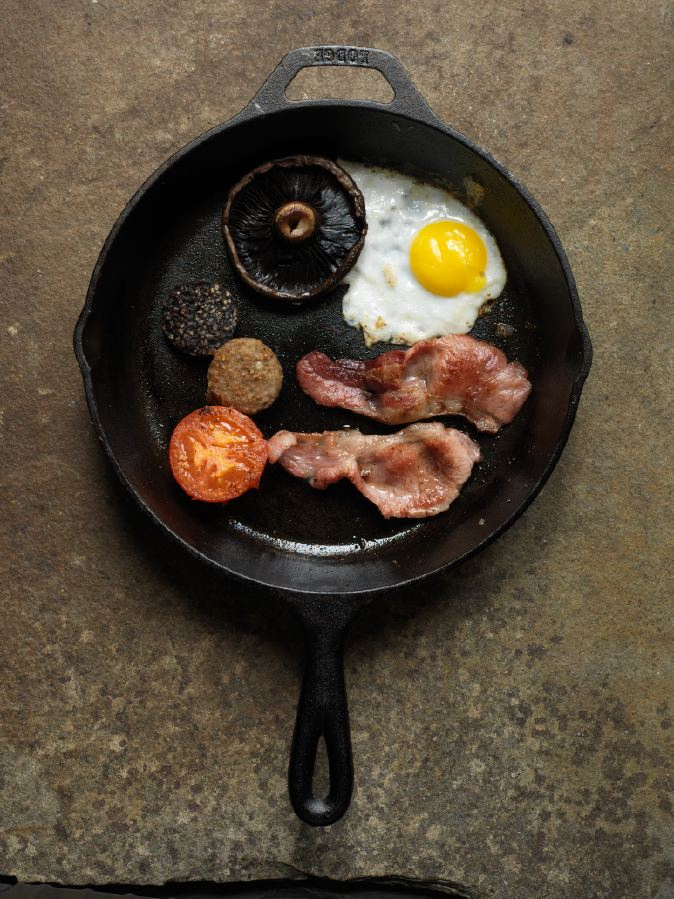 From 5* hotels and cosy cafés to the finest country houses in the Emerald Isle, the shortlist for the 2020 Georgina Campbell Irish Breakfast Awards in association with Fáilte Ireland has been announced.
From 5* hotels and cosy cafés to the finest country houses in the Emerald Isle, the shortlist for the 2020 Georgina Campbell Irish Breakfast Awards in association with Fáilte Ireland has been announced.
Taking place on February 17th at the InterContinental Dublin, the Irish Breakfast Awards celebrate the finest Irish food producers and those who take special pride in serving the best breakfasts and brunches in Ireland to tourists and locals alike.
Each shortlisted establishment has been independently assessed and recognised by Georgina Campbell and her team as being among the leading breakfast venues in Ireland.
Almost 40 names have been shortlisted across the 17 Award categories which include Irish Breakfast Menu of The Year, Irish Breakfast Food Awards, Ireland’s Best Brunch, Best Irish B&B Breakfast and Best Irish Breakfast at a 5-Star hotel.
Among those shortlisted for an award are;
• Powerscourt Hotel Resort & Spa, Co. Wicklow
• The Commons at MoLI, Dublin City
• The Quay House, Co. Galway
• Cliff at Lyons, Co. Kildare
• Vaughan Lodge, Co. Clare
• Danny Minnies Country House, Co. Donegal
Speaking ahead of the Awards, renowned food writer and author, Georgina says: “No one should underestimate the importance of a great breakfast. It is fundamental to maintaining and building Ireland’s international standing as a country with an outstanding food culture and a reputation for warm hospitality. Tourists select a hotel or guesthouse for many reasons, but breakfast ranks among the most important and is often the reason guests return in the future – or not.
“The aim of the Irish Breakfast Awards is not only to reward those who are raising the bar for breakfast, but to encourage others to consider what they can do to ensure that they are showcasing and supporting the best local and Irish producers. And now, more than ever before, it’s not just about sourcing and serving great Irish food. Establishments have to ensure consistently high standards of service and offer value for money, while being mindful of the impact their business is having on the environment.
“We all have a responsibility to create a more sustainable planet, and the hospitality industry has a significant role to play,” said Georgina. “This is why we have introduced a new Sustainability Award for 2020, which will recognise a hotel, guest house, B&B, café or visitor attraction for its contribution and commitment to the environment.”
The awards will be attended by leading representatives from the hospitality industry, food writers and food organisations and with special guest, chef and author, Rachel Allen.
Now in their fourth year, The Irish Breakfast Awards in association with Fáilte Ireland are regarded as among the most important food awards in Ireland, due to their independent, anonymous assessment process and the industry standards they promote.
The shortlist excludes Brunch places, which will go to a public vote, and Ireland’s best Breakfast Menu.
• Carlow: Huntington Castle, Clonegal
• Clare: Trump International Golf Links & Hotel, Doonbeg
• Clare: Vaughan Lodge, Lahinch
• Clare:Sheedy’s Doolin Boutique B&B, Doolin
• Cork: Eccles Hotel, Glengarriff
• Cork: Good Day Deli, Cork City
• Cork: McCarthy’s Of Kanturk, Kanturk
• Cork: Lancaster Lodge, Cork City
• Derry: Ardtara Country House, Maghera
• Donegal: Danny Minnies Country House, Annagry
• Donegal: Filligans, Glenties
• Down: Hillsborough Cafe and Stableyard Tearooms, Hillsborough Castle and Gardens
• Dublin: Stauntons on the Green
• Dublin: The Wilder Townhouse
• Dublin: The Commons at MoLI
• Fermanagh: Lough Erne Resort, Enniskillen
• Galway: The Quay House, Clifden
• Kerry: Heatons Guesthouse, Dingle
• Kerry: The Killeen House Hotel, Killarney
• Kerry: Quinlan’s Fish, Caherciveen
• Kildare: Cliff at Lyons in Celbridge
• Kilkenny: Avalon House Hotel, Castlecomer
• Louth: Belview Eggs, Drogheda
• Mayo: Rua Cafe & Deli, Castlebar
• Mayo: Ashford Castle, Cong
• Tipperary: Ashley Park House, Nenagh
• Tipperary: The Apple Farm, Cahir
• Waterford: The Little Milk Company, Dungarvan
• Wicklow: Powerscourt Hotel Resort & Spa, Enniskerry
Public Vote Ireland�s best brunch!

With its flexible timing, relaxed approach and wide-ranging menu base, brunch is probably Ireland's most popular meal. High standards all around the country make our awards choices very difficult and we'd love your help! Just select from our nominations below the one that you think best conveys the essence of the ideal brunch, in both urban and rural areas.
The Georgina Campbell Irish Breakfast Awards 2020 in association with Failte Ireland
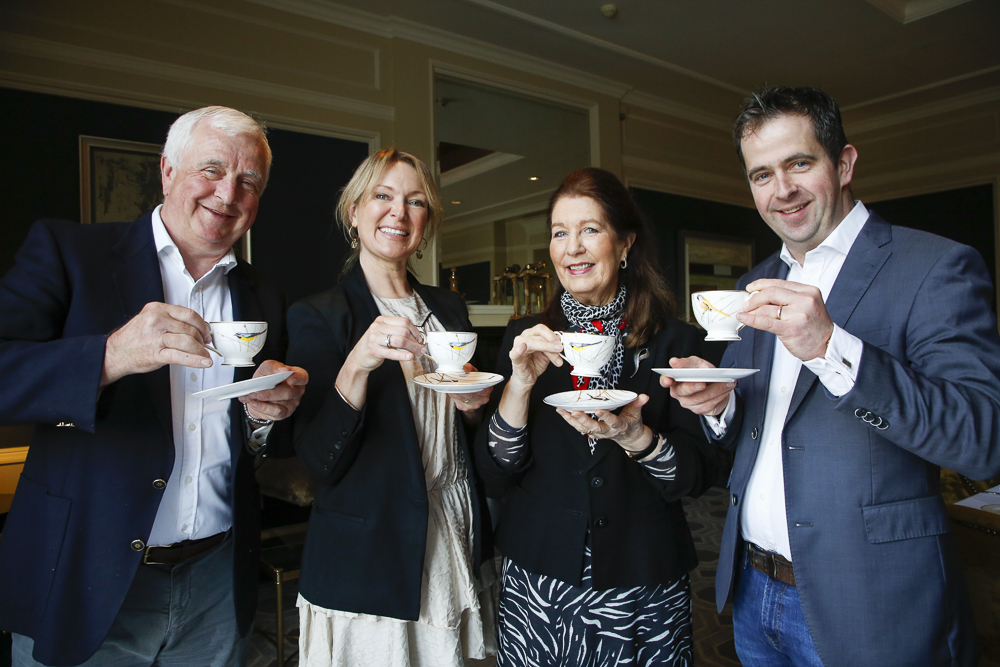
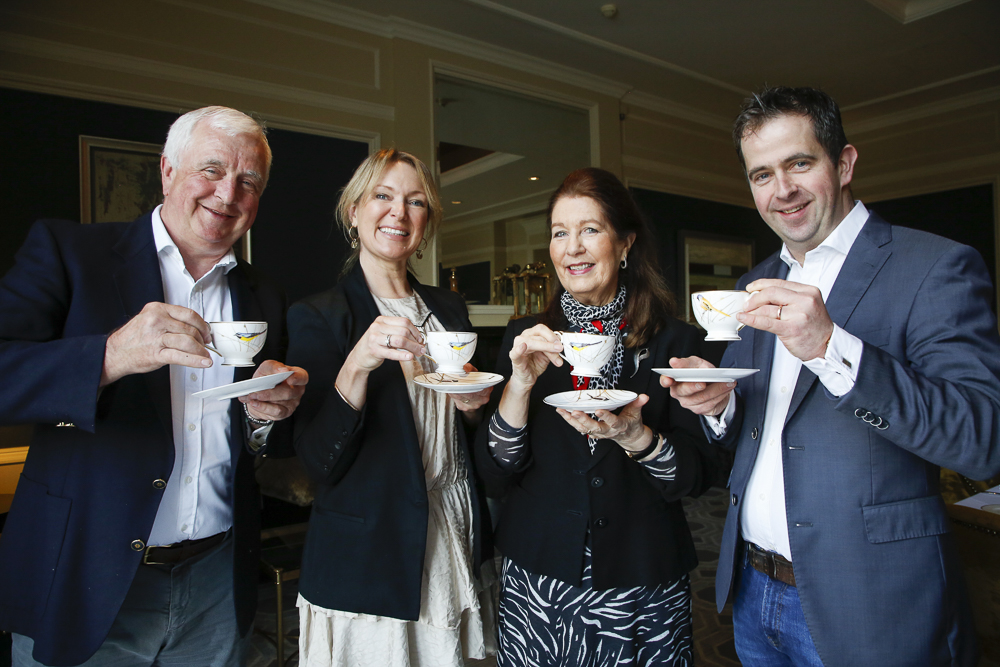
From classic breakfast favourites to dishes with a twist, the winners of the 2020 Georgina Campbell Irish Breakfast Awards in association with Fáilte Ireland were announced today.
Eight businesses across the country were crowned Ireland’s top breakfast venues in categories including 5* Hotel, B&B and Guest House. This year saw the introduction of a special sustainability award; the public got to have their say on Ireland’s best brunch venue and five Irish producers were selected for the consistently excellent quality of their produce, which appear on many of the best breakfast menus across Ireland - and deserve to be seen on many more.
Now in their fourth year, the Georgina Campbell Irish Breakfast Awards celebrate the people and businesses that strive to make the first meal of the day as memorable as any fine dining experience, and with a real sense of place. If you are tucking into homemade brown bread, creamy Irish butter, McCarthy’s Irish sausages and apple juice from Co. Tipperary, chances are you’re enjoying one of the highest quality Irish breakfast in Ireland, and there’s nowhere else in the world that can compare, according to Georgina Campbell.
Biggest not always the best
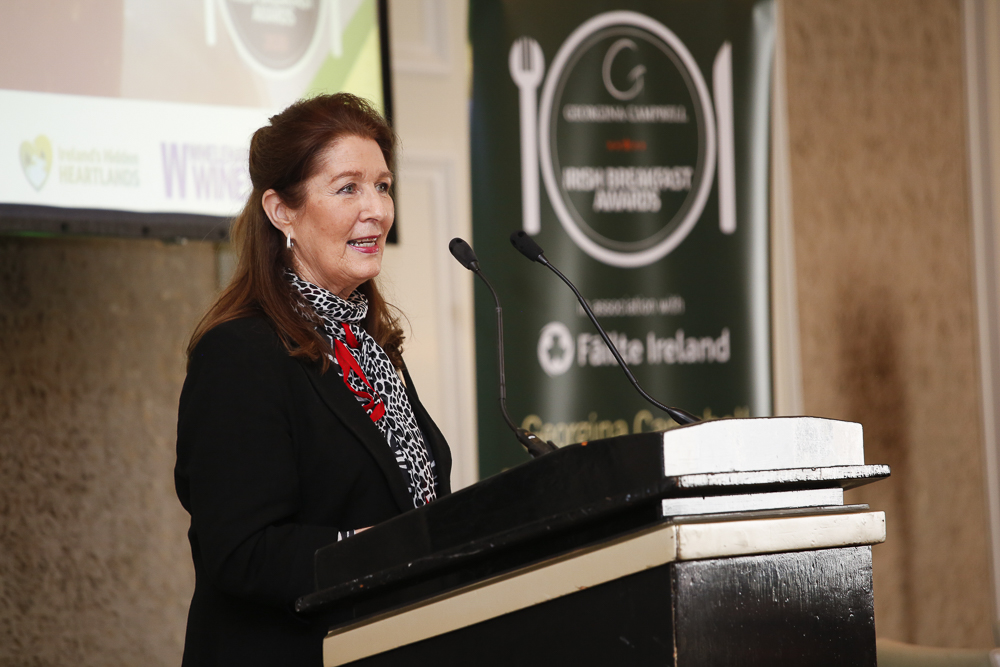
“The great thing about being able to offer a hearty Irish breakfast is that you don’t have to be the biggest to be the best and indeed, can be a venue of any size to compete in this important and competitive arena. Serving up a good quality breakfast can have a lasting impression on customers. Doing the simplest of things well is enough to encourage a return visit and build a strong reputation for your establishment, regardless of how many people you can seat,” said Georgina Campbell.
This year Georgina noticed some marked improvements, notably in the three-star hotel category, which has become more focused on its breakfast offering. “We are considering more three-star hotels than ever before for an award, and this is really heartening, with huge efforts going into producing a fine breakfast from many business owners and their kitchen teams. There have been improvements across the board, particularly in the area of food sourcing and local provenance – as seen in the excellent breakfast menus that establishments submitted as part of our Irish Breakfast Survey, undertaken in partnership with Fáilte Ireland. But there is still a lot of work to be done and I am hopeful we will see even greater improvements next year.”
Sustainability - keeping it local
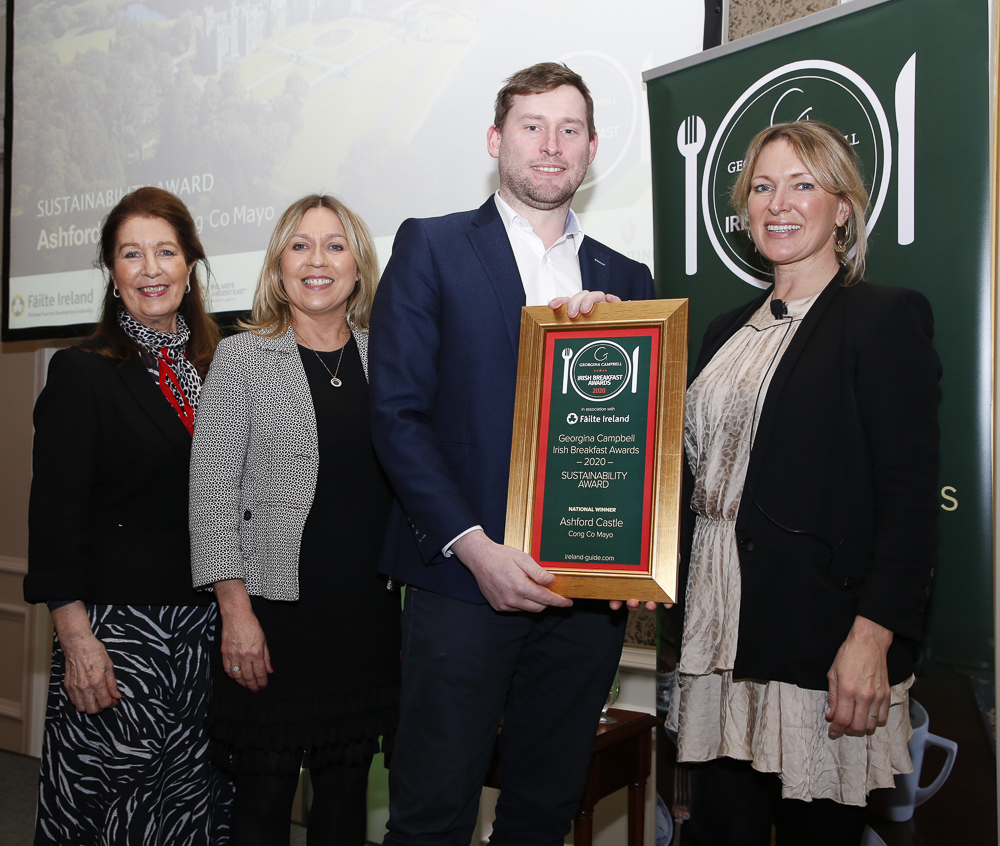
Ashford Castle was selected as the inaugural winner of the Sustainability Award at the Irish Breakfast Awards, recognised for its environmental credentials in relation to impressive sustainable practices including its food sourcing policy and commitment to sourcing the best seasonal ingredients from the west of Ireland. It was the first five-star hotel in Ireland to be awarded GREENmark Plastic Smart recognition by GreenTravel.ie for its efforts in responsible tourism and commitment to removing all single-use plastics by 2022.
Special Guest Rachel Allen on the Awards
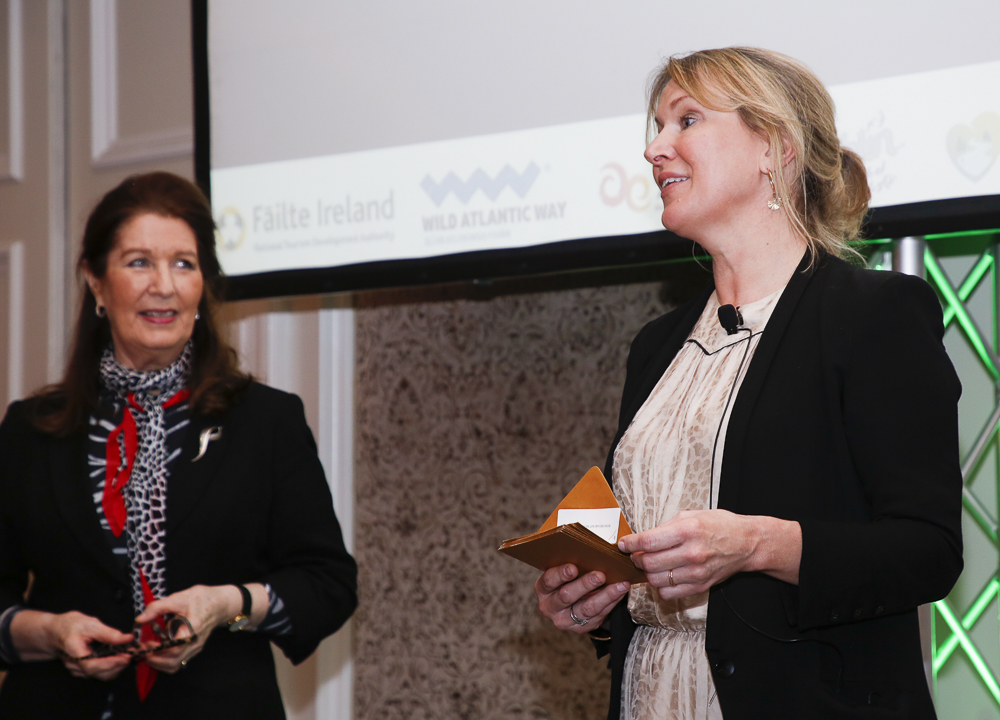
Brunch - not just a passing trend
The Brunch Award was also a key moment at the awards gala after 30 shortlisted venues were whittled down to one, following a public vote.
“Brunch is now part of the fabric of Ireland’s food culture. People truly enjoy the quality and variety of dishes on brunch menus across Ireland. So much, in fact, that brunch is now considered one of the most popular meals for people to enjoy “out”. It’s for this reason that we opened the Brunch Award to a public vote, and we were delighted by the hugely enthusiastic response from food lovers across the country. But there was one very clear winner, Arán Bakery and Bistro in Co. Kilkenny, which received a torrent of votes from its loyal customers, indicating just how passionate Kilkenny people are about their brunching options.”
Visitor experience key to growth
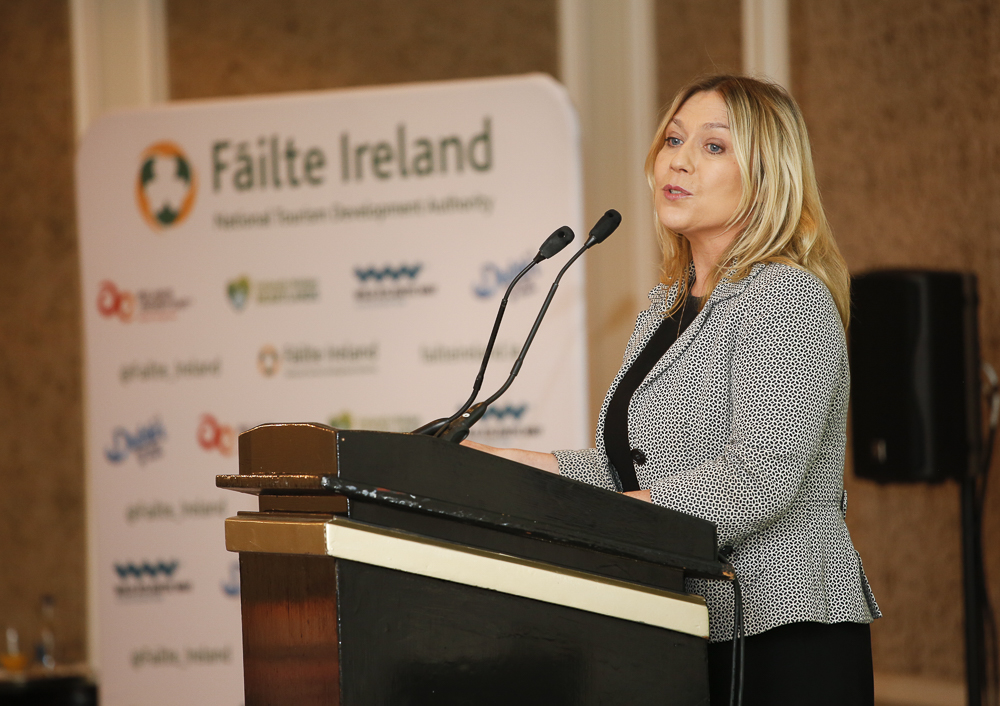
“Great experiences are central to the growth and success of our tourism industry and breakfast should be a positive part of every holiday or break. We have come a long way and today’s winners are testament to the incredible standards that can be achieved, regardless of the type or size of establishment. These businesses are exemplars for the industry and demonstrate that continuously raising the bar ensures consistently high visitor satisfaction levels.”
The Georgina Campbell Irish Breakfast Awards in association with Fáilte Ireland took place at the InterContinental Dublin.
GEORGINA CAMPBELL IRISH BREAKFAST AWARDS 2020 IN ASSOCIATION WITH FÁILTE IRELAND – WINNERS:
IRISH PRODUCER AWARDS
• Meat: McCarthys of Kanturk, Kanturk, Co Cork
• Eggs: Belview Eggs, Drogheda, Co Louth
• Dairy: The Little Milk Company, Dungarvan, Co Waterford
• Fruit: The Apple Farm, Cahir, Co Tipperary
• Preserves: Filligans, Glenties, Co Donegal
IRISH BREAD AWARD
• Rua Deli & Café, Castlebar, Co Mayo
IRISH BREAKFAST MENU
Hotel
Winner Limerick Strand Hotel, Limerick
• Highly Commended: The Twelve Hotel, Barna, Co Galway
Small Stay
Winner Lough Bishop House, Collinstown, Co Westmeath
• Highly Commended: Archways B&B, Rosslare, Co Wexford
5* HOTEL
Winner: Lough Erne Resort, Enniskillen, Co Fermanagh
• Highly Commended: Trump International Golf Links & Hotel, Doonbeg, Co Clare
• Highly Commended: Powerscourt Hotel Resort & Spa, Enniskerry, Co Wicklow
4* HOTEL
Winner: Avalon House Hotel, Castlecomer, Co Kilkenny
• Highly Commended: Cliff at Lyons, Celbridge, Co Kildare
• Highly Commended: Vaughan Lodge, Lahinch, Co Clare
3* HOTEL
Winner: Eccles Hotel, Glengarriff, Co Cork
• Highly Commended: The Killeen House Hotel, Killarney, Co Kerry
• Highly Commended: Stauntons on the Green, Dublin
COUNTRY HOUSE
Winner: Huntington Castle & Gardens, Clonegal, Co Carlow
• Highly Commended: Ashley Park House, Nenagh, Co Tipperary
• Highly Commended: Ardtara Country House, Upperlands, Co Derry
GUEST HOUSE
Winner: The Quay House, Clifden, Co Galway
• Highly Commended: Heatons House, Dingle, Co Kerry
• Highly Commended: Lancaster Lodge, Cork
B&B
Winner: Sheedy’s Doolin Boutique B&B, Doolin, Co Clare
• Highly Commended: Danny Minnies, Annagry, Co. Donegal
• Highly Commended: The Wilder Townhouse, Dublin
VISITOR ATTRACTION
Winner: Hillsborough Castle Café, Hillsborough, Co Down
• Highly Commended: The Commons Café at MoLI, Dublin
• Highly Commended: Good Day Deli, Nano Nagle Place, Cork
SUSTAINABILITY AWARD
• Ashford Castle, Cong, Co Mayo
BRUNCH OF THE YEAR AWARD – PUBLIC VOTE
Winner: Arán Artisan Bakery & Bistro, Kilkenny
Runners up:
• Seasalt Café & Deli, Cobh, Co Cork
• Kelly’s Kitchen, Newport, Co Mayo
• Sweet Geranium Café, Drumshanbo, Co Leitrim
• Osta Café & Wine Bar, Sligo
THE SELECTION PROCESS
Georgina Campbell’s rigorous programme of anonymous assessment visits is a year-round process. With the exception of the Brunch Award, which is open to public nominations, and the Irish Breakfast Award, which is judged from menus submitted as part of the annual Irish Breakfast Survey, conducted in association with Fáilte Ireland, award winners are nominated solely by an independent assessment team. Reports are fed through to the hospitality website Ireland-guide.com.
Editors Notes
Georgina Campbell’s Irish Breakfast Awards in association with Fáilte Ireland celebrate the finest Irish food producers and those who take special pride in preparing and serving the best breakfasts in Ireland. Highly sought after, the award winners are selected based on the findings of Georgina Campbell’s annual assessment process; a team of independent assessors travel incognito to every county in Ireland to assess the breakfast offering at recommended establishments. Georgina Campbell also operates the independent Georgina Campbell’s Ireland guides in print and online.
Fáilte Ireland: Fáilte Ireland is the National Tourism Development Authority which aims to support the tourism industry and work to sustain Ireland as a high-quality and competitive tourism destination. Fáilte Ireland works with other state agencies and representative bodies, at local and national levels, to implement and champion positive and practical strategies that will benefit Irish tourism and the Irish economy.
CITATIONS
The aim of the Georgina Campbell Irish Breakfast Awards in association with Fáilte Ireland is to encourage everyone who is serving breakfast in Ireland to up their game and give visitors - both international and domestic - the best possible experience to start their day. Recognising those who are already doing a great job is a key element in that process and, in seeking out the best, we look for an all round experience and genuine hospitality, as well as authenticity - and a sense of place.
Our winners come from all around Ireland - see regional tourism brands highlighted alongside winners names, and a summary of the Fáilte Ireland regional tourism brands below.
The essence of the regional tourism brands, as defined by Fáilte Ireland:
• The Wild Atlantic Way is Ireland's first long-distance touring route, stretching along the Atlantic coast from Donegal to West Cork.
• Ireland’s Hidden Heartlands: Explore the lush green heartlands of Ireland’s natural rural beauty... where activity and relaxation are centred around rural communities and their lifestyles, that can be discovered across a lattice work of land and water trails showcased by the iconic River Shannon and the Beara Breifne Way.
• Ireland's Ancient East showcases Ireland’s living culture and ancient heritage and brings it to life through stories that create unique visitor experiences, unite stakeholders and support vibrant communities.
• Dublin living thrives side by side with the natural outdoors so you can constantly jump between completely unique, different and often unexpected experiences.
SUSTAINABILITY AWARD
An important new award introduced this year, the Sustainability Award reflects the core values of our entire awards programme. With sustainability and environmental concerns taking centre stage worldwide, the hospitality industry has an important contribution to make and luxury hotels, especially, need to re-assess their offering.
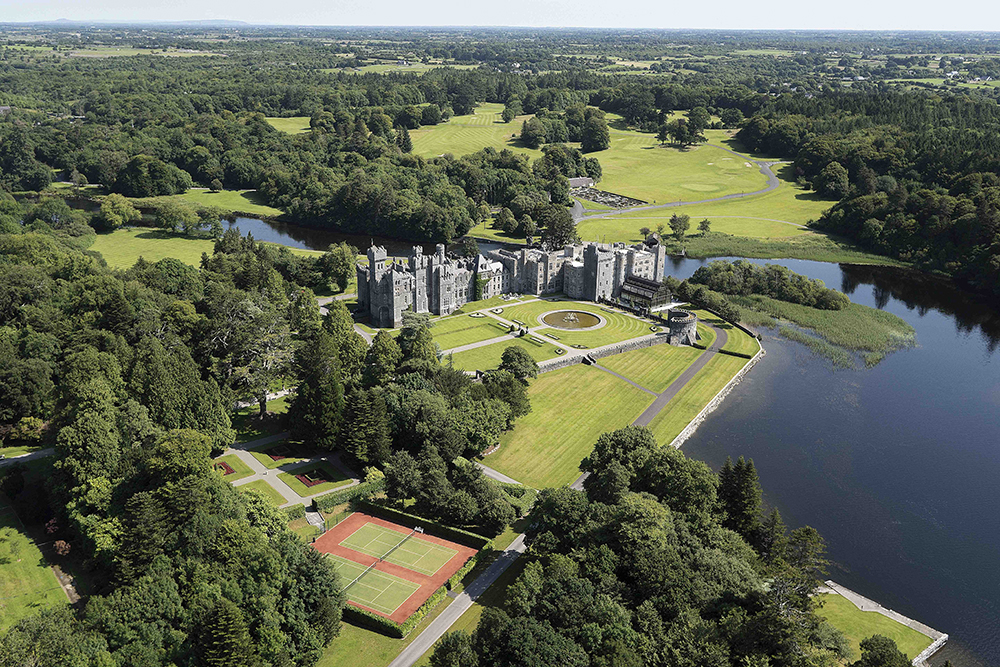 Winner: Ashford Castle, Cong, Co Mayo
Winner: Ashford Castle, Cong, Co Mayo
WILD ATLANTIC WAY
ABOUT: Ireland’s grandest castle hotel, Ashford Castle, was bought by Beatrice and Stanley Tollman, of the South African hotel group Red Carnation Hotels, in 2013. Since then, an extensive programme of repair, restoration and refurbishment has brought the property back to its glorious best, and, in line with the Red Carnation Hotels policy, there is now a particular focus on environmental initiatives. Notably, it is the first five star hotel in Ireland to be awarded GREENmark Plastic Smart recognition by GreenTravel.ie, the Green Tourism reference site for DiscoverIreland.ie, for its efforts in responsible tourism and commitment to remove all Single Use Plastics (SUPs) from the property by 2022.
Special breakfast highlights?
Ashford Castle was the Five Star Hotel winner in our 2018 Irish Breakfast Awards and its local sourcing policy was a key reason for the award. While breakfast is just one part of the sustainability picture, it is an important one as Executive Chef Philippe Farineau has always been committed to sourcing the best seasonal ingredients from the West of Ireland - as has Chef Jonathan Keane at the Lodge at Ashford, which is also on the estate. So, by supporting local producers of all the ingredients that make a great meal, including a breakfast - the rashers and eggs, the sausages, the whole ham, the smoked salmon, even the whiskey that guests are encouraged to sprinkle onto their porridge - the kitchen team at Ashford Castle are making a real difference. It’s good to see a leading hotel taking the lead on sustainability - more power to them.
FIVE STAR HOTEL CATEGORY
We all expect a stay in a five star hotel to be an all-round special experience, offering the very best of the best of everything - impressive surroundings, exceptionally spacious and luxurious accommodation, outstanding food and service, wonderful leisure amenities…. It should be a real treat and, at its best, that’s just what it is, providing superb and truly Irish experiences. Yet, even at this level, there are variations in standards. And an area where these variations are especially noticeable is in the breakfast offering, which can be genuinely memorable - but is not always as wonderful as the experiences that are such a pleasure at our winning hotels.
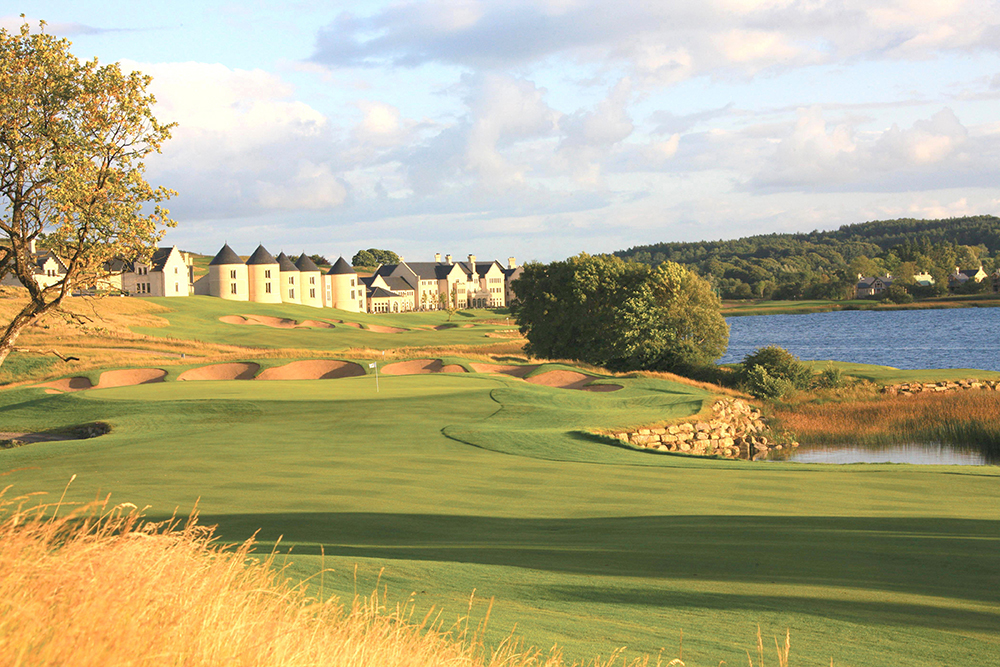 Winner: : Lough Erne Resort, Enniskillen, Co Fermanagh
Winner: : Lough Erne Resort, Enniskillen, Co Fermanagh
NORTHERN IRELAND
ABOUT: Beautifully located in County Fermanagh's rolling lakelands, this world-class resort had the distinction of being chosen as the venue for the G8 Summit in 2013 – an event which attracted worldwide attention and continues to attract visitors to this lovely area. Under the eye of a watchful general manager, the hotel is notably well run: service is attentive, warm and courteous, and everything is extremely well kept with logs fires blazing and brasses gleaming.
Special breakfast highlights?
Executive Chef Noel McMeel has been very active in the recent development of Northern Ireland's food culture and it’s an understandably popular dining destination, notably for the experience offered in the fine dining Catalina Restaurant, which is named after the famous flying boats that were based in Fermanagh in WW2 and enjoys lovely lough views. It also provides an uplifting setting for breakfast when an impressive array of in-house breads and pastries is offered alongside an outstanding rendition of the traditional Ulster fry, made with local Cavanagh Free Range Eggs, Pat Doherty’s bacon and other local produce, while other irresistible dishes include Smoked Haddock and Eggs Benedict…. An experience to savour.
Highly Commended: Powerscourt Resort & Spa, Enniskerry, Co Wicklow
IRELAND’S ANCIENT EAST
Highly Commended: Trump International Golf Links & Hotel, Doonbeg, Co Clare
WILD ATLANTIC WAY
FOUR STAR HOTEL CATEGORY
Usually seen as luxurious, Four Star hotels are spacious and offer suites and extensive amenities, often including a spa. They also tend to have ambitious restaurants, many with a national reputation that ensures their success as a food lovers’ destination. It is a highly competitive category and, at their best, destinations like our winning establishments offer an outstanding guest experience and often very good value too, usually seen in special offers such as midweek and off-season breaks. But sometimes the high standards of food and service enjoyed at dinner can descend into something very different at breakfast time - and we would love to see breakfast given the same status as dinner, and be accorded the same respect.
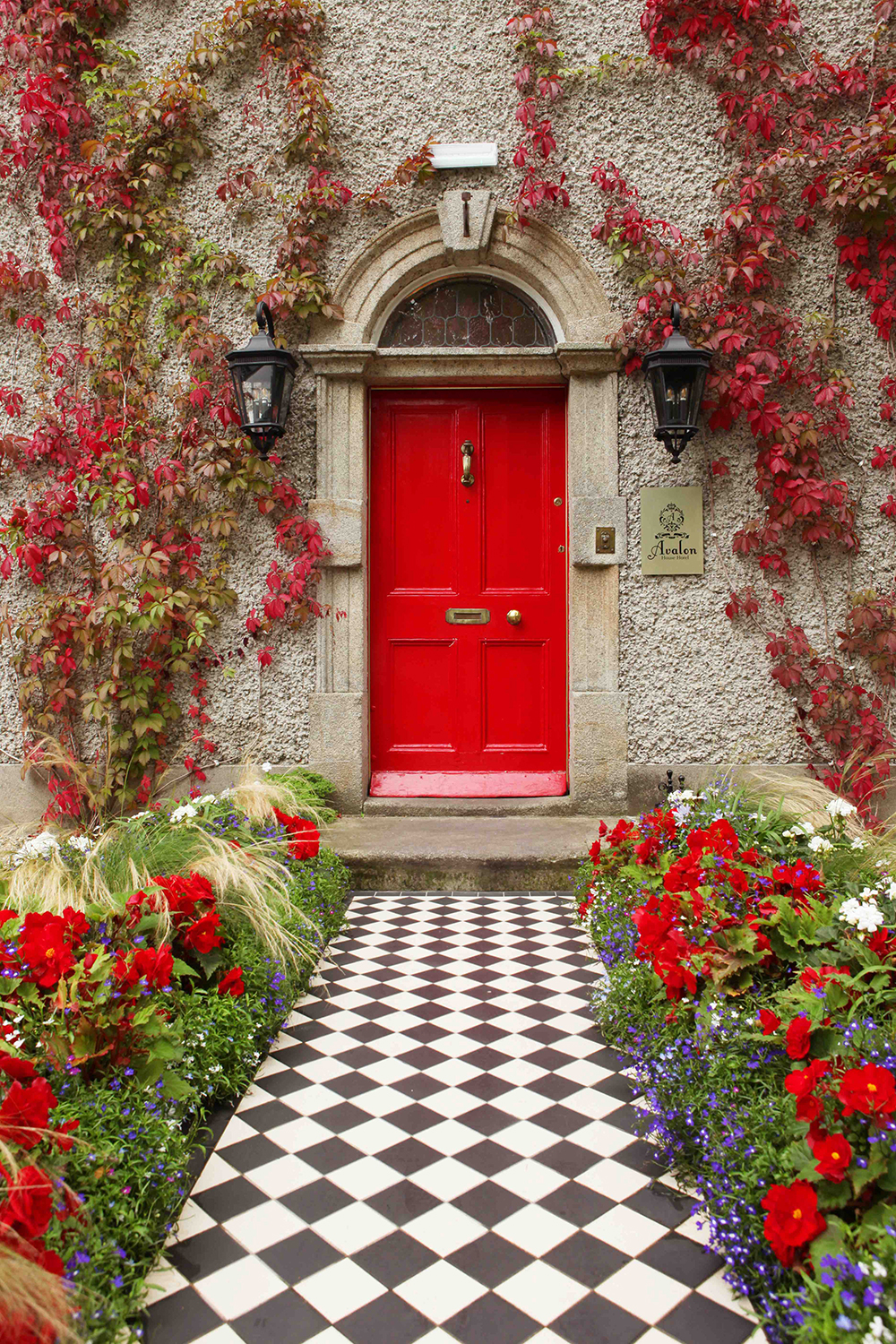 Winner: Avalon House Hotel, Castlecomer, Co Kilkenny
Winner: Avalon House Hotel, Castlecomer, Co Kilkenny
IRELAND’S ANCIENT EAST
ABOUT: It is always a pleasure when new quality destinations are added to Ireland’s hospitality portfolio and this one is especially welcome. A lovely old creeper-clad building on Castlecomer's handsome main street, the Avalon House Hotel lay empty for some years until the Comerford family brought it back to life and it re-opened as a four-star hotel in spring 2019. And, not only did a lot of TLC go into the restoration, but happily there was an equal commitment to the kitchen. Chef Cathal O'Dowd has a well-earned following and the atmospheric first floor restaurant, Lil's, attracts diners from a wide area.
Special breakfast highlights?
The delicious local food offered here includes a really good breakfast, which is served in Lil's by cheery, well trained staff. Menus include all of the best breakfast dishes (with name checked suppliers for many items) with unusual touches - homemade baked beans, for example - and some brunch-style dishes such as a Mexican omelette, with avocado/jalapeno, scallions, chorizo and cheese. The high standard of cooking and the enjoyable breakfast experience overall also encourages guests to have other meals in the hotel. All round, this lovingly restored hotel is a great asset to Castlecomer - and to County Kilkenny.
Highly Commended: Cliff at Lyons, Celbridge, Co Kildare
IRELAND’S ANCIENT EAST
Highly Commended: Vaughan Lodge, Lahinch, Co Clare
WILD ATLANTIC WAY
THREE STAR HOTEL CATEGORY
The majority of Irish hotels fall into the Three Star category and the range is inevitably very wide. It includes everything from excellent small family-run hotels to much larger properties that might score on amenities (such as the leisure facilities that are so important for family holidays), rather than hands-on hospitality or a focus on good food. Our winners represent the best at the smaller end of the spectrum, and show just how rewarding a stay at a Three Star hotel can be. This is the category where we have found the most improvement in the last two years, although we would love to see more Three Star hotels up their game at meal times - and especially at breakfast, which is too often a price-led offering.
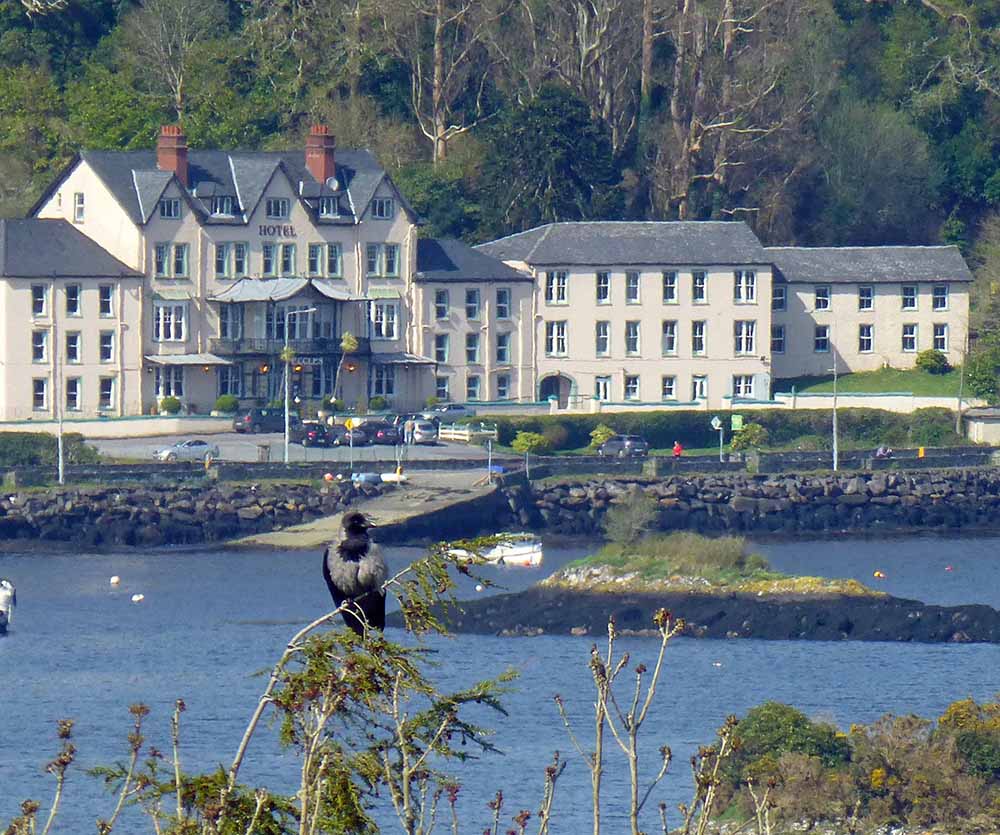 Winner: Eccles Hotel & Spa, Glengarriff, Co Cork
Winner: Eccles Hotel & Spa, Glengarriff, Co Cork
WILD ATLANTIC WAY
ABOUT: Famous for its mild Gulf Stream climate and lush growth, Glengariff has been a popular tourist destination since Victorian times, although the historic Eccles Hotel overlooking Glengarriff Bay actually dates back further, to 1745. In new ownership since 2016, it's an interesting place to stop for a bite to eat in the bar, or to enjoy afternoon tea in the sun overlooking the harbour - and there's always a welcoming fire burning in the large reception area too. In summer, especially, it’s a food lovers’ destination, with chef and Great British Menu star, Eddie Attwell, heading up a strong kitchen team.
Special breakfast highlights?
The Garinish Restaurant, where both dinner and breakfast are served, is a handsome room with views across the bay. Each morning a beautifully decorated table offers a splendid buffet selection – a tempting display of freshly baked breads and pastries, a full range of cereals, fruits and juices - in addition to a good choice of hot dishes, including organic porridge with honey, the traditional Irish (featuring the excellent Rosscarberry bacon), waffles with syrup, organic smoked salmon and scrambled eggs, and a particularly delicious Eggs Benedict. Eddie is a keenly seasonal chef, well known for his love of home grown, local and foraged foods and that sense of immediacy informs all of his menus – and ‘breakfast like a king’ could well be his motto.
Highly Commended: The Killeen House Hotel, Killarney, Co Kerry
WILD ATLANTIC WAY
Highly Commended: Stauntons on the Green, Dublin
DUBLIN
COUNTRY HOUSE CATEGORY
While the Irish B&B and Guesthouse categories are quite clearly defined, that great gem of Irish hospitality, the Irish Country House, will generally be found tucked in somewhere among the B&Bs, listed as an Historic House. There is a logic to this as, although large properties, they rarely have more than half a dozen guest rooms. However, it would be lovely to see these wonderful places - and the extraordinary families who run them - given the starring role that they deserve, in a special category. As is self-evident from the range of winners representing them here, they are the beating heart of Irish rural tourism - and especially rewarding to seek out.
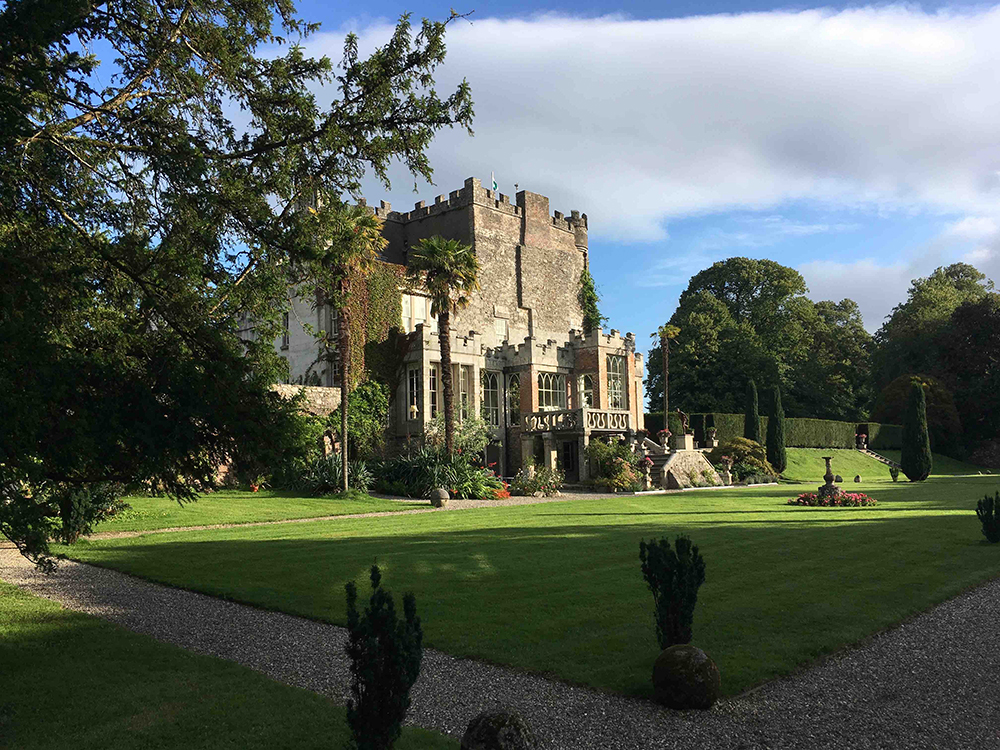 Winner: Huntington Castle & Gardens, Clonegal, Co Carlow
Winner: Huntington Castle & Gardens, Clonegal, Co Carlow
IRELAND’S ANCIENT EAST
ABOUT: Ancient seat of the Esmondes and now home to their descendants, the Durdin Robertson family, Huntington Castle dates back to 1625 and is full of surprises - not least in the basement, where an exotic Temple to the Goddess Isis replaces the old dungeons - and, like all the very best castles, it even boasts a cast of resident ghosts. Add very special gardens, an adventure playground, gorgeous accommodation and a charming daytime café (plus the wonderful Sha Roe Bistro at the end of the drive) and Huntington Castle adds up to a perfect destination.
Special breakfast highlights?
Breakfast is served country-house style, at a big old kitchen table, allowing guests to mingle and share their recent activities and plans for the day. As one happy guest said: "There is something special about dining in a historic castle at a communal table and being served by the owners. This is hospitality in a relaxed way - breakfast was pre-ordered and it was just perfect. Nothing fancy but just excellent ingredients, perfectly cooked - and we really enjoyed meeting other guests and swapping stories and recommendations." All round, Huntington Castle is irresistible.
Highly Commended: Ashley Park House, Nenagh, Co Tipperary
IRELAND’S HIDDEN HEARTLANDS
Highly Commended: Ardtara, Upperlands, Co Londonderry
NORTHERN IRELAND
GUESTHOUSE CATEGORY
So what exactly is a guesthouse? In the Airbnb era, this question is being asked more and more often. Usually bigger than a B&B and smaller than most hotels, a guesthouse has 7 to 30 en-suite bedrooms and must be registered with Fáilte Ireland in order to use the term. Breakfast must be provided and, in the Guide’s experience of this somewhat misunderstood and underrated category, the best Irish guesthouses provide some of the finest accommodation, food and hospitality in the country - as our winners demonstrate.
%209_19%20%20.jpg) Winner: The Quay House, Clifden, Co Galway
Winner: The Quay House, Clifden, Co Galway
WILD ATLANTIC WAY
ABOUT: It’s not every day that you see oysters on a breakfast menu, but it’s one of the many things that makes The Quay House different. In a lovely location - right on the harbour, with pretty water views when the tide is in - it was built around 1820 and is the oldest building in Clifden. Now in the incomparable hands of long-time hoteliers, Paddy and Julia Foyle, it’s a fine house, with exceptionally comfortable accommodation in wittily decorated and sumptuously furnished rooms, and has been one of Ireland’s most desirable destinations since 1993.
Special breakfast highlights?
With the restaurants of Clifden just a short walk away, no dinner is served - but they make up for that at breakfast, which is served in a lovely new conservatory overlooking the harbour. The buffet is laid out to tempt you as you enter, and orders for your tea or coffee are taken even before you sit down at tables welcomingly set up with individual jugs of freshly squeezed orange juice. Organic apple juice is also available, along with fruits, Greek-style yogurt, home made cakes and breads, delicious farmhouse cheeses, and a choice of teas, as well as filter coffee and hot chocolate. Main dishes includes that ‘dish of local oysters,’ fish of the day and naturally smoked kippers, alongside more usual dishes, such as a perfectly cooked traditional Irish breakfast, creamy scrambled eggs with oak smoked salmon, or omelette with ham, cheese and herbs, all served with crisp toast, and fresh top-ups of tea and coffee. The Eggs Benedict and its variations make another excellent start to the day (try it with that smoked salmon rather than the usual bacon), and guests are also invited to enquire about the daily specials. There's nothing flash about breakfast here, just simple perfection, as it always has been.
Highly Commended: Heatons House, Dingle, Co Kerry
WILD ATLANTIC WAY
Highly Commended: Lancaster Lodge, Cork, Co Cork
IRELAND’S ANCIENT EAST
BED AND BREAKFAST CATEGORY
The family run B&B is our most familiar accommodation across Ireland and, whether rural or urban, it’s especially popular with overseas visitors. So what makes a great B&B? They can be anything from a roadside bungalow to a historic house or a restaurant with rooms, but all of the best are lovely, friendly places to stay, offering comfort at a reasonable price, great breakfasts and interested hosts who anticipate their guests’ needs yet give them space – and who enjoy nothing better than introducing people to their area. We have some superb B&B stays on offer in Ireland, but there is room for many more, and we’re glad to hear that more B&Bs - including farms, we hope- are planning to up their game to make this a more obvious choice for discerning visitors.
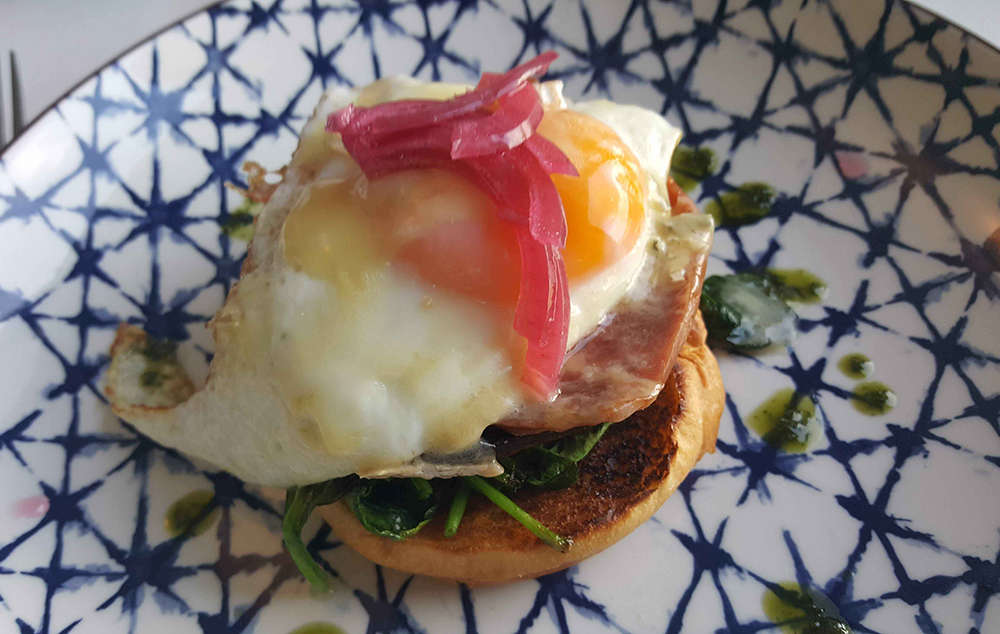 Winner: Sheedy’s Doolin Boutique B&B, Doolin, Co Clare
Winner: Sheedy’s Doolin Boutique B&B, Doolin, Co Clare
WILD ATLANTIC WAY
ABOUT: There are many well-established businesses that have been doing an outstanding job for decades, and we salute them all. But it is always especially encouraging to see new class acts coming on stream - and that is the case at Frank and Marian Sheedy's hospitable modern B&B in Doolin village. Space, good design and quality are the keynotes at Sheedy’s and - given the couple's well earned reputation as former restaurateurs in the village – it’s no surprise that good food is also the highlight of a stay here.
Special breakfast highlights?
Considering this is a small establishment, you will hardly believe the buffet spread that is laid out in the spacious and well-lit dining room and there may even be a special to add to the already extensive menu on offer. The fruits, the yogurts, the delicious freshly baked breads and then the perfectly cooked hot dishes, it all adds up a memorable breakfast experience. Then, when the well-fed guests reluctantly depart, even the Red Setter, Beans, comes out to say goodbye - and, hospitable to the end, everyone leaves armed with plenty of guidance on the best things to do on the next stage of their trip. There should be nothing but happy memories from a stay at Sheedy’s of Doolin.
Highly Commended: Danny Minnies, Annagry, Co Donegal
WILD ATLANTIC WAY
Highly Commended: The Wilder Townhouse, Adelaide Road, Dublin
DUBLIN
VISITOR ATTRACTION CATEGORY
Our Visitor Attractions are not generally known for their food and, all too often, can be downright disappointing. This is letting everyone down, and it’s a missed opportunity to enhance the experience. But it doesn’t have to be like that - and it is improving. Our winners this year offer very different experiences, focusing on interests as diverse as the arts, gardens, our rural heritage and education, yet they all have one thing in common: a memorable food experience. All are food destinations in their own right and - crucially - they’re accessible to all, as you don't have to pay the entrance fee to the attraction in order to eat there. Each offers a great example for our visitor centres to aspire to.
Winner: Hillsborough Castle Café, Hillsborough, Co Down
NORTHERN IRELAND
ABOUT: A splendid late Georgian ‘Big House’ with a fascinating history, Hillsborough Castle is now an official UK government residence of the Secretary of State for Northern Ireland, and of the Queen. Following a major restoration, Hillsborough Castle and Gardens opened to the public in April 2019, and you can now do a tour of the castle's elegant State Rooms (still used by the royal family), and explore the 100 acres of beautiful gardens - with sustenance provided by Simon Dougan’s famed Yellow Door Catering. The team includes another leading chef, Barry Smyth, who is the Managing Partner at Hillsborough Castle with responsibility for Hillsborough Café (at the Visitor Centre near the car park and open to all) and the Stableyard Tearooms (ticket holders only). The Café is very large, to provide for group tours and very busy times, but there's an alternative to the cafeteria ambience in some more intimate, comfortable areas that are more appealing to individual visitors - and the locals who enjoy popping in for a tasty bite.
Special breakfast highlights?
To the credit of all, this new jewel in the crown of Northern Ireland’s already impressive tourism offering is a committed ambassador for the region’s – and Ireland’s – food history and culture. A hearty breakfast of, for example, the ‘Full Ulster Fry’ (with both soda bread and potato bread) in the Café will set visitors up for a day’s exploring. The Yellow Door supplier list reads like a who's who of quality Irish food, including names like Clandeboye and Glenilen yoghurt (North Down and West Cork respectively), Whites Oats of Armagh, Kennedy dry cure bacon, Quails sausages (Banbridge), Cavanagh free range eggs (Fermanagh) and the wonderful Abernethy butter (Down) among many others. All round, it’s a wonderful destination - one for the bucket list.
Highly Commended: The Commons Café at MoLI, Dublin
DUBLIN
Highly Commended: Good Day Deli, Nano Nagle Place, Cork
IRELAND’S ANCIENT EAST
BRUNCH
Of all meals, brunch is the one that reflects modern Ireland the best and its flexible timing, relaxed approach and wide-ranging menu base give brunch a unique multi-generational appeal. This is the only Georgina Campbell award that’s open to public participation and, from over 150 nominations, we posted a ‘shortlist’ of 30 leading brunch venues that we felt best conveyed the essence of the ideal brunch in both urban and rural areas, and invited the public to support their favourite. The high calibre of nominations must have made for some difficult choices but, from many thousands of votes, the top five bunched ahead of the rest - and a clear winner eventually emerged.
%20WINNER%20(better%20online_).jpg) Winner: Arán Artisan Bakery & Bistro, Kilkenny
Winner: Arán Artisan Bakery & Bistro, Kilkenny
IRELAND’S ANCIENT EAST
ABOUT: Bart Pawlukojc and his wife Nicole Server-Pawlukojc brought a wealth of experience at top restaurants in Europe and beyond when they settled in Kilkenny and opened this superb bakery and daytime restaurant in 2019 - and it shows in the stylishly simple interior as well as their delicious food. Arán - meaning bread in Irish - is all about simple and good. Their breads are made with just four ingredients - flour, salt, water and natural leaven or a fresh yeast culture - and stone-baked in their special bread oven. And, unusually, they use locally grown stoneground flour, which is milled by the seventh generation of the Mosse family at The Little Mill on the River Nore, at nearby Bennettsbridge.
Special brunch highlights?
The all-day brunch changes depending on seasonal availability but will always showcase local produce from Kilkenny and nearby counties. Many come especially for the Arán Breakfast Platter, featuring Ballon Farms Egg Sunny Side Up, Sourdough Toast, Jam, Baba Ghanoush, Knockanore Cheddar Cheese, John Joe’s Rashers, Dizzy Goat farms Wild Pig Sausage & Goat’s Cheese, Hash Brown and Sautéed Mushrooms, it's definitely not your average Irish breakfast. Vegetarian and vegan options are available too, and this is just the start of a menu that offers imaginative variations of many of the most popular breakfast and brunch dishes, along with stalwarts such as soup of the day. Everything has a very local tone and there are irresistible cakes and pastries too, of course - and natural wines (including bubbly) available to give your meal a lift. Most certainly worth a detour, Arán is simply special.
In county order:
Highly Commended: Seasalt Café & Deli, Cobh, Co Cork
IRELAND’S ANCIENT EAST
Highly Commended: Sweet Geranium Café, Drumshanbo, Co Leitrim
IRELAND’S HIDDEN HEARTLANDS
Highly Commended: Kelly’s Kitchen, Newport, Co Mayo
WILD ATLANTIC WAY
Highly Commended: Osta Café & Wine Bar, Sligo
WILD ATLANTIC WAY
IRISH BREAKFAST MENU CATEGORY
The best Irish Breakfast menus provide a tangible link between the wonderful produce that is available to kitchens all over the country and the visitors - both international and domestic - who will benefit from the sense of place that a meaningful menu can create. The Menu winners have been chosen from the many dozens of evocative menus that were submitted by establishments responding to the Irish Breakfast Survey recently completed by Georgina Campbell’s Guides in association with Fáilte Ireland. Undertaken with accommodation providers recommended by the Guide over a three-year period, the main aim of the survey has been to sound out industry attitudes and encourage improvements to the visitor experience across the board through giving breakfasts in Ireland that special sense of place - which, of course, involves enthusiastically supporting local producers. Judging by the high standard of menus submitted (which is backed up by the experience of independent assessors), we are well on the way to achieving that aim.
IRISH BREAKFAST MENU
Judged from menus submitted by participants in our 2020 Irish Breakfast Survey, the ‘Hotel’ and ‘Small Stay’ designations given below reflect the diversity of participating establishments.
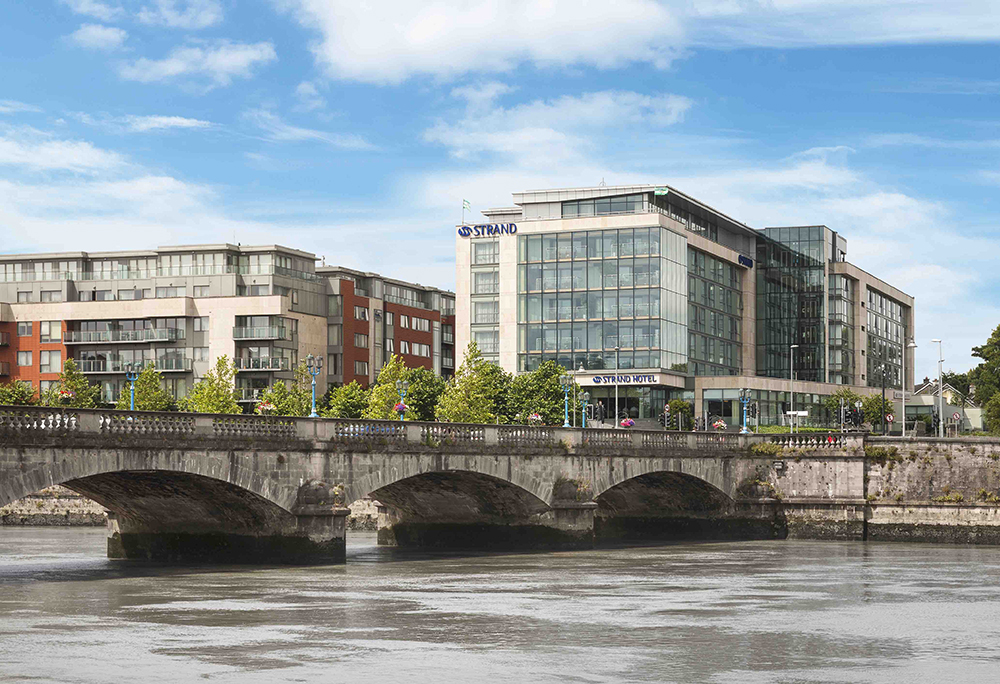 Winner - Hotel: Limerick Strand Hotel, Limerick
Winner - Hotel: Limerick Strand Hotel, Limerick
WILD ATLANTIC WAY GATEWAY
ABOUT: Just across the Sarsfield Bridge from the main commercial heart of Limerick, this highly regarded modern hotel has a pleasant ambience, with great views from the upper floors - and, unusually for a large hotel, it's a good place to explore some of the foods of the region. This is all thanks to the efforts of Executive Chef Tom Flavin, who has been a Fáilte Ireland Food Champion and works hard to make food provenance and seasonality a point of difference throughout the hotel, and especially in The River Restaurant.
Special breakfast menu highlights?
Serving a good breakfast has always been a point of pride for Chef Flavin and the hotel is a previous winner in our Irish Breakfast Awards. The buffet boasts over 100 items - yet it is not the wide variety that makes it exceptional, but the care that has gone into the selection. Leading off with a mini-feature on the benefits of organic honey, this unusual breakfast menu next highlights some key suppliers - including J. O’Dea Smoked Cheddar, Achill Island Sea Salt, Flesk Meats of Macroom (Irish Sausages) Leah’s Foods, Listowel (Black & White Pudding) and Sean Duggan, of Croom (Free Range Eggs and Honey) - thus setting the quality tone, before launching into what must be one of the country’s most extensive offerings of cold buffet and hot dishes from the chef’s station, in-house bakery and their own Limerick Strand Pantry Range Preserves & Chutneys. It is an outstanding offering by any standards - and it runs like clockwork too.
Highly Commended - Hotel: The Twelve Hotel, Barna, Co Galway
WILD ATLANTIC WAY
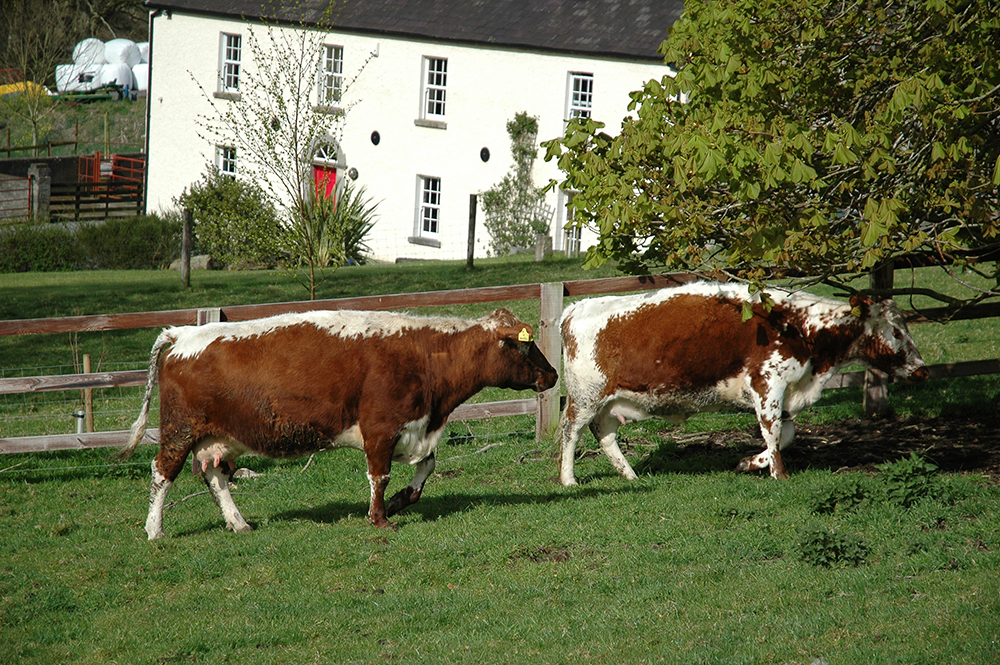 Winner - Small Stay: Lough Bishop House, Collinstown, Co Westmeath
Winner - Small Stay: Lough Bishop House, Collinstown, Co Westmeath
IRELAND’S HIDDEN HEARTLANDS
ABOUT: Down a long drive off a byroad between Collinstown and Castlepollard, in a beautifully scenic area awash with lakes, gentle hills and rich farmland, you’ll find Lough Bishop - a working organic farm complete with Irish draught horses, where Helen and Christopher Kelly offer a warm welcome and a genuine Irish family home experience.
Special breakfast menu highlights?
Also previous winners in our Irish Breakfast Awards in 2011, when we asked ourselves, among other things, “How many hosts can offer fresh fruit and just-pressed apple juice from their own orchard at breakfast?” Nearly a decade on, and the appeal is just the same. While the menu is not long, every single item on it - from Helen’s homemade granola (‘with Kilbeggan Organic Oats and honey from our bees’) to the Bell Lane Coffee from Mullingar - is local or home produced. There’s fruit from the garden and the cooked breakfast features ‘eggs from our hens’, sausages and dry-cured bacon from Thomas Doherty craft butchers of Kells and smoked black pudding from the famous ‘Smokin’ Butcher’ Hugh Maguire in Ashbourne. And then there are the home baked breads (both soda and sourdough), homemade marmalade and a whole rake of preserves made with ‘fruit from the orchard, garden or around the farm’. Simply magic - and you can have dinner here too.
Highly Commended - Small Stay: Archways B&B, Rosslare, Co Wexford
IRELAND’S ANCIENT EAST
IRISH BREAKFAST FOODS CATEGORY
The Irish Breakfast can be a wonderful experience - but it’s only as good as its ingredients. All cooking depends on the quality of products for success and the simpler the meal the more obvious that is - and breakfast is not only the most important meal of the day, but it is also the simplest. On the upside, that offers a unique opportunity to showcase the excellent Irish produce that is central to a memorable breakfast experience, and especially the traditional breakfast plate - the crispy rashers, the succulent sausages, the beautiful free range egg - but, on the downside for those who are running price-led food operations, any shortcuts taken are glaringly obvious. We aim to encourage everyone who offers an Irish breakfast to make it a really good one. To that end, each year we select some of the key elements of a good breakfast – typically a range of Meats, Fish, Cereals, Eggs, Dairy, Fruit, and Preserves - and heartily commend a producer in each that is notable for consistent excellence. Most are also medium sized business that have the scale of production needed for consistent supply to hotels. Source authentic ingredients and the difference will show on the plate.
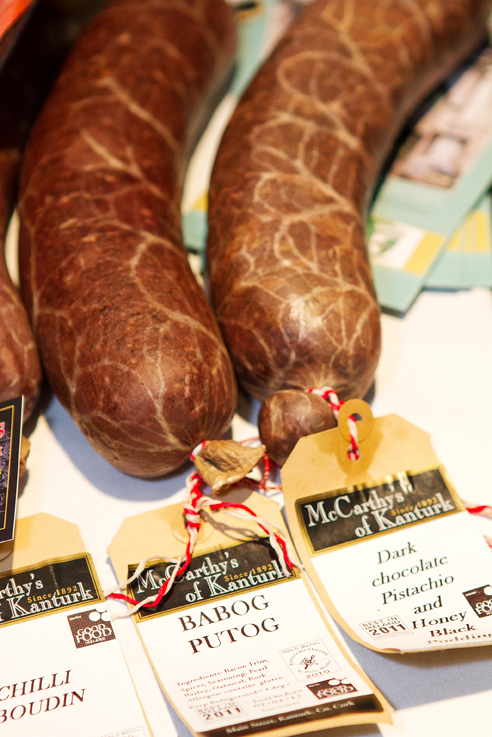 IRISH BREAKFAST FOODS - MEATS: McCarthy’s of Kanturk, Co Cork
IRISH BREAKFAST FOODS - MEATS: McCarthy’s of Kanturk, Co Cork
WILD ATLANTIC WAY REGION
One of Ireland’s most famous butchers and rightly so, McCarthy’s of Kanturk in Co Cork is an institution that is very definitely ‘worth a detour’. Fifth and sixth generation butchers Jack McCarthy and his son Tim come from a long line of butchers that have been perfecting their techniques and developing new and value-added meat products since1892. Colourful recent highlights in the McCarthys’ careers include a visit from 23 members of the French Brotherhood of the Knights of the Black Pudding, no less, who presented Jack with a Gold Medal for his fresh blood pudding - and they created a bespoke pudding to serve at the state banquet celebrating Queen Elizabeth’s visit to Ireland in 2011 too. Today, in their recently redesigned shop, they stock an exceptional range of fantastic meats including local free range pork, Aberdeen Angus beef, local Duhallow milk lamb and free range chicken, and you’ll also find highly regarded speciality products here including spiced beef, air-dried beef - and their sought-after Ardrahan cheese & smoky bacon sausages. They also introduced Ireland’s first “Practical Pig in a day” courses for chefs, single pig families and food lovers - and, bang on the money commercially too, they have an excellent online shop with delivery anywhere in Ireland.
.JPG)
IRELAND’S ANCIENT EAST
Established in 1978 by Dermot and Nicola Herlihy, this family run business may not be the biggest egg producer in Ireland - but it's a leading operation when it comes to sustainability. Improving on sustainable systems is at the heart of their development and this includes installing 400 solar panels, so the farm is now powered completely by solar energy. This and other initiatives, including many undertaken as part of their membership of the Bord Bia Origin Green project, have led to Belview Eggs being seen as a benchmark in the industry, which must be a great point of pride for the family. The hens benefit from all these initiatives too, of course, and so does the local environment. It's a remarkable vision - and something to marvel at next time you spot Belview Eggs in your local shop, or pass one of their vans on the road.
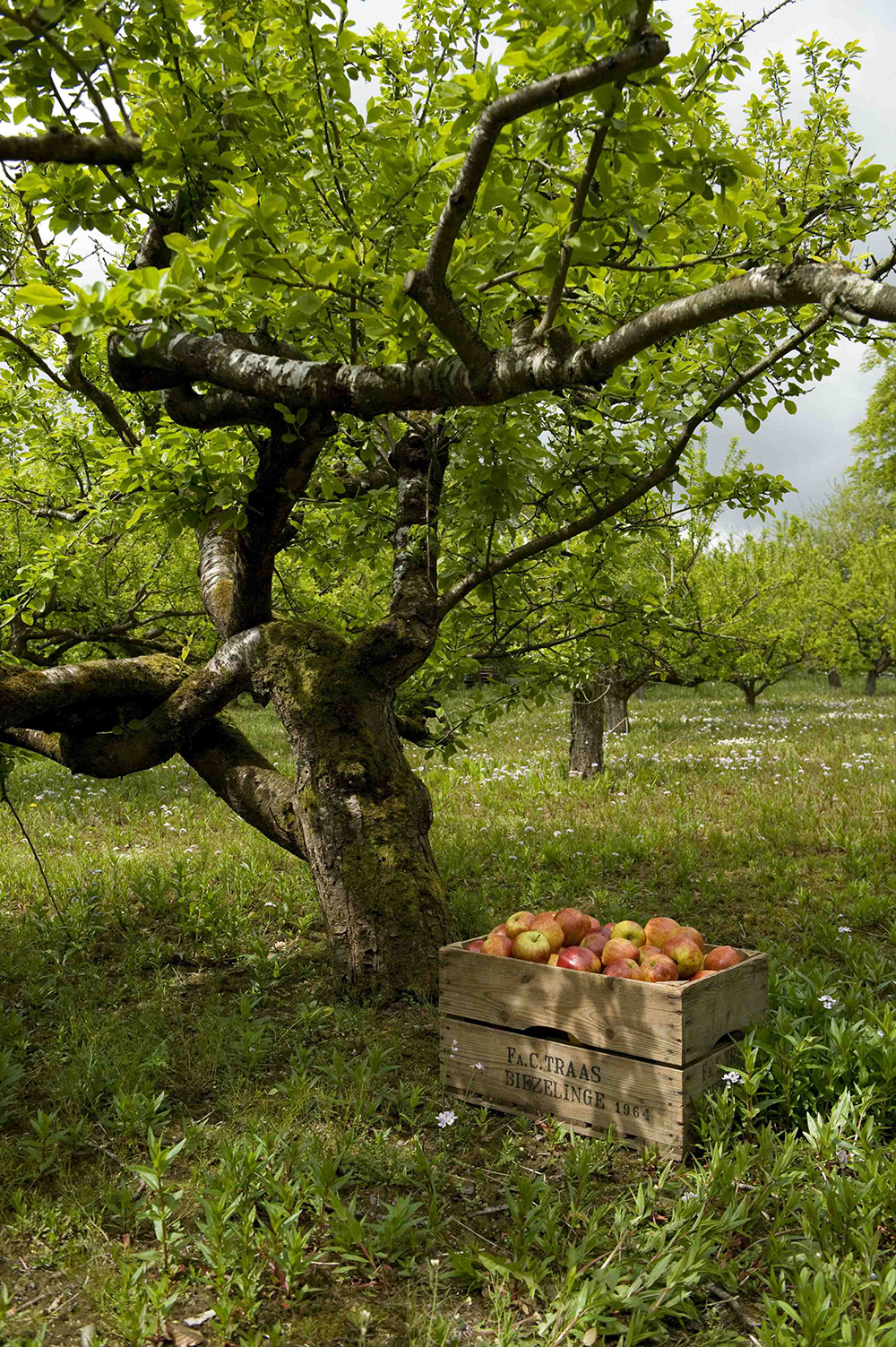 IRISH BREAKFAST FOODS - FRUIT: The Apple Farm, Cahir, Co Tipperary
IRISH BREAKFAST FOODS - FRUIT: The Apple Farm, Cahir, Co Tipperary
IRELAND’S ANCIENT EAST
The Traas family has operated an all year farm shop at The Apple Farm near Cahir since the 1970s, offering fresh fruit in season, fruit juices (including a unique sparkling apple juice and a natural cider vinegar) cider and preserves. Visitors are welcome to walk around this beautiful and rightly famous farm and see the fruit growing - and there is even a spacious caravan/camping site on the farm, with good facilities. Con Traas and his team grow an astonishing range of apples - about 60 varieties - along with multiple varieties of other fruits, including strawberries (grown outdoors and only available when they ripen naturally), raspberries, cherries, plums and pears. Today they are best known for their juices, made from fruit grown on site specifically for juicing, and there are some innovative new products too, such as Irish Beetroot Juice, a 70/30 blend of Offaly beetroot from Feighery's Farm and Tipperary apples - any of which would enhance the finest breakfast offering.
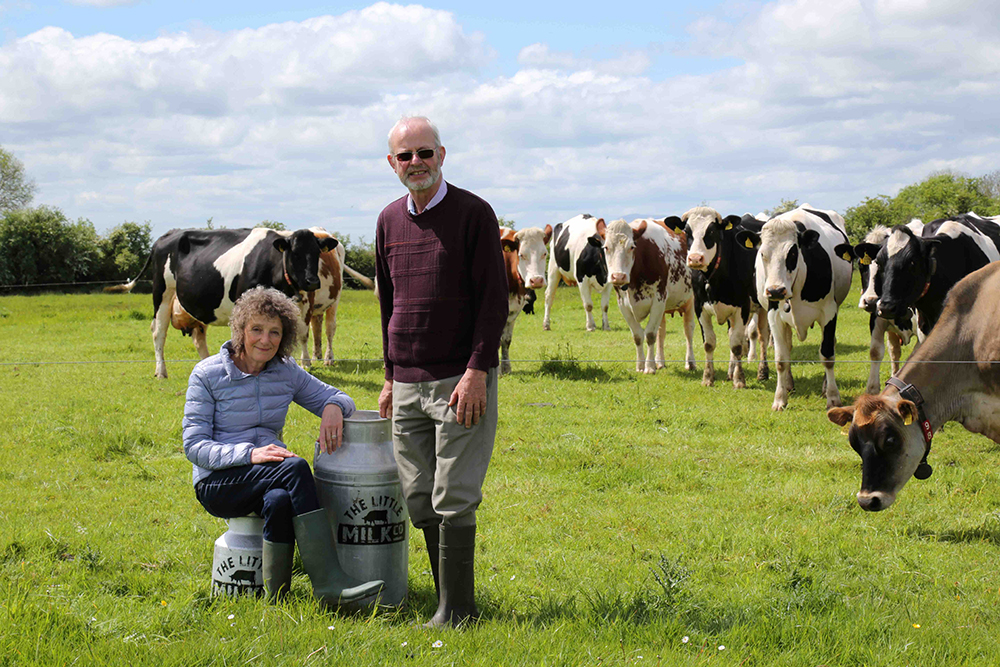 IRISH BREAKFAST FOODS - DAIRY: The Little Milk Company, Dungarvan, Co Waterford
IRISH BREAKFAST FOODS - DAIRY: The Little Milk Company, Dungarvan, Co Waterford
IRELAND’S ANCIENT EAST
Beginning as a discussion group to consider the sustainability of their organic family farms in 2008 and established as a company with a full time CEO in 2013, The Little Milk Company is an innovative organic farmers’ cooperative demonstrating that environmentally responsible small producers can thrive by working together. Today a high proportion of their milk production is used to make a range of organic cheeses, and the company continues to recruit local farmers to convert to organic production in order to meet future demand. They collaborate with local cheesemakers, including the famed Cashel Blue, and export much of the production. Their excellent cheeses are not only a treat to eat - they make a great talking point on the breakfast buffet too.
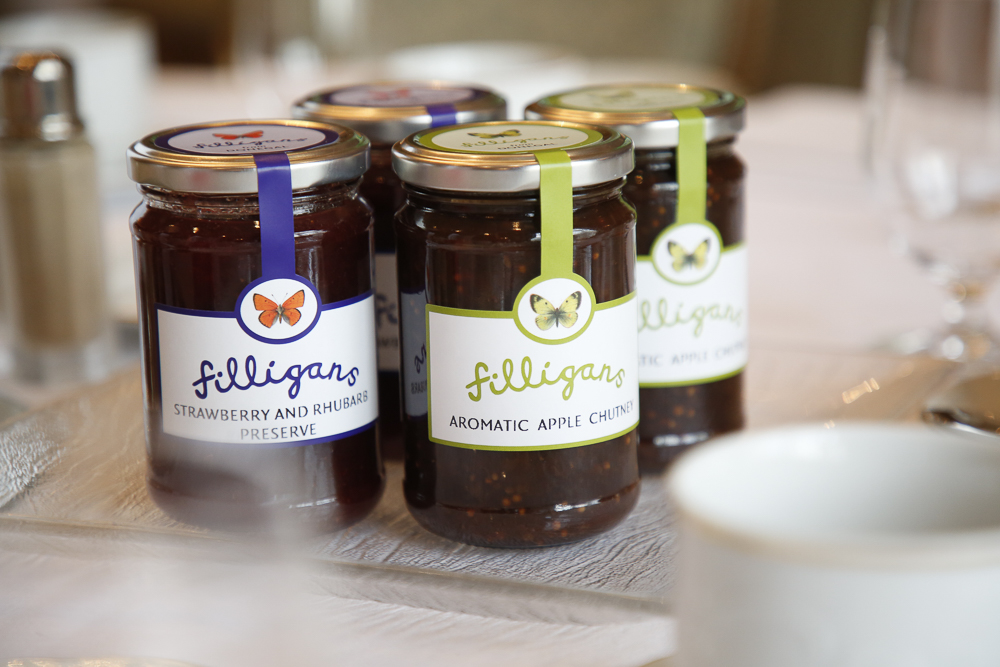
WILD ATLANTIC WAY
Where there is good home baking, delicious handmade preserves are unlikely to be far away – and this is certainly true of the North-West of Ireland. Since 1997, for example, Filligans, one of Ireland’s most respected ranges of traditionally handmade preserves, has been made by Sara and Philip Moss away up in the unlikely location of Glenties in north-west Donegal. Initially their small batches of jams, marmalades and chutneys were made for just one shop in Dublin, and their growing range is now available from a network of carefully selected specialist outlets. And, although the business has expanded - and with it their commercial kitchen - Filligans products are still made in the traditional homemade way, and the recipes they use have either been passed on to them by family and friends or they have developed them themselves. When visiting the area, you’ll spot them in quality shops - and also on menus in some of the nicest places to eat and stay.
IRISH BREAD AWARD
A former Director General of Failte Ireland (Bord Failte as it was then) instigated this award in the early 1990s - it was ahead of its time and few understood its significance, but its time has certainly come now.
If ever there was a perfect example that the little things matter, it’s bread. Every self-respecting Irish hotel, B&B and restaurant makes their own special bread, and this simple gesture sets the tone for many a memorable experience. It’s one of the great strengths of Irish cooking, which makes it especially disappointing when tasteless commercial baking is offered instead of the real thing. In recent years, ‘new’ breads have joined our traditional soda breads and this has enriched the range although we shouldn’t forget the old favourites in the rush for novelty. This year’s winner is an interesting and very delicious example of Irish bread making at its best.
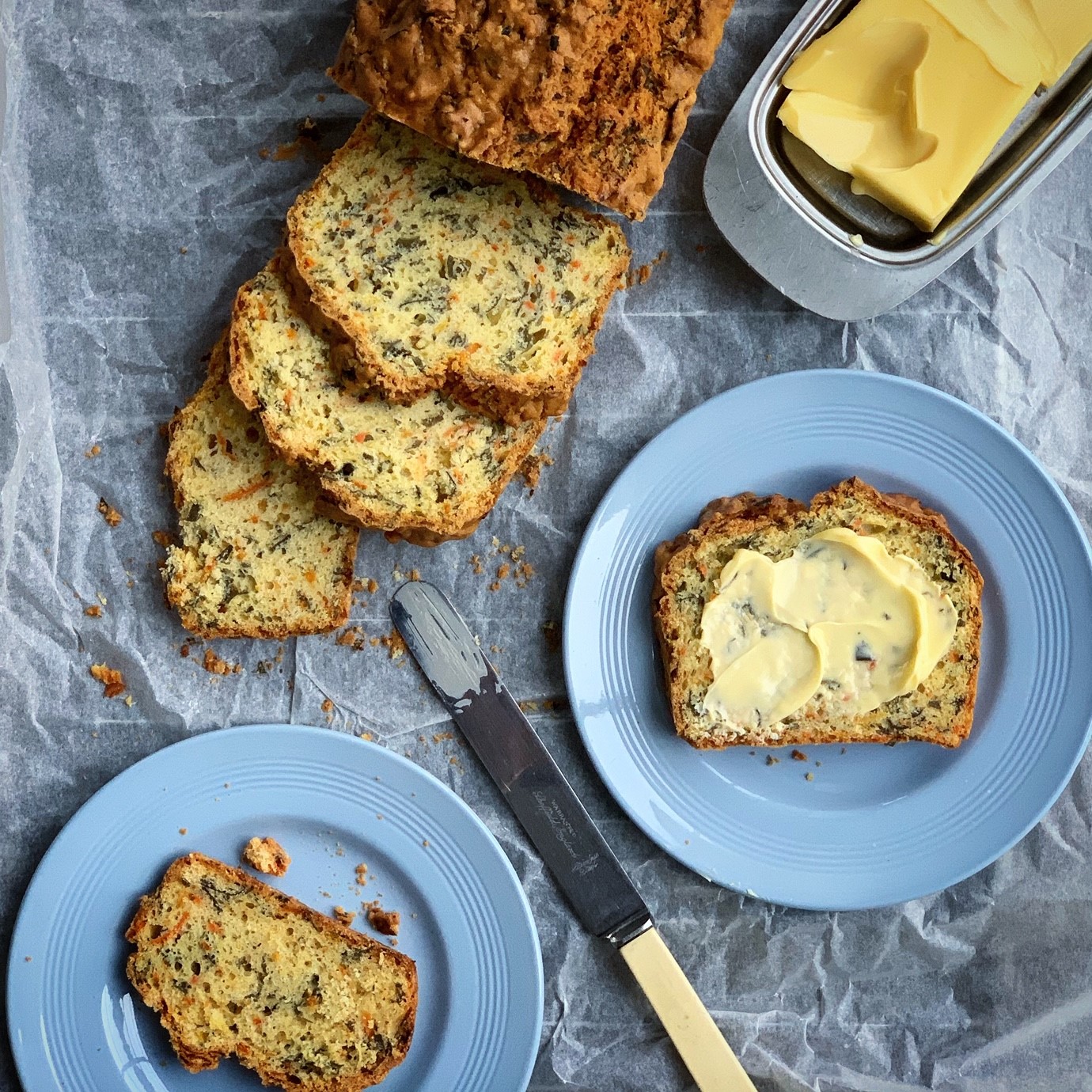 WINNER: Rua Café & Deli, Castlebar, Co Mayo
WINNER: Rua Café & Deli, Castlebar, Co Mayo
WILD ATLANTIC WAY
ABOUT: This unusual bread is from the McMahon family’s Rua Café and Deli in Castlebar, Co Mayo, and it was originally a Gerry Galvin recipe. “As a chef, restaurateur and poet, Gerry was always an inspiration to us at Rua”, explains Aran McMahon, who runs the Rua businesses with his sister Colleen. “After his untimely passing in 2013, we decided to make a version of his delicious Dillisk Soda Bread, which we had remembered enjoying at a family meal in Drimcong many years before. We still make the bread every week and sell it at our shop on Spencer Street every Friday where it is much loved by our customers.” A classically trained chef with a love of Irish traditions and a curious, inventive mind, Gerry Galvin was always ahead of the curve; this recipe is an unusual hybrid of different baking techniques, and he was one of the earliest chefs to use seaweed in modern Irish cooking.
Brunch - not just a passing trend
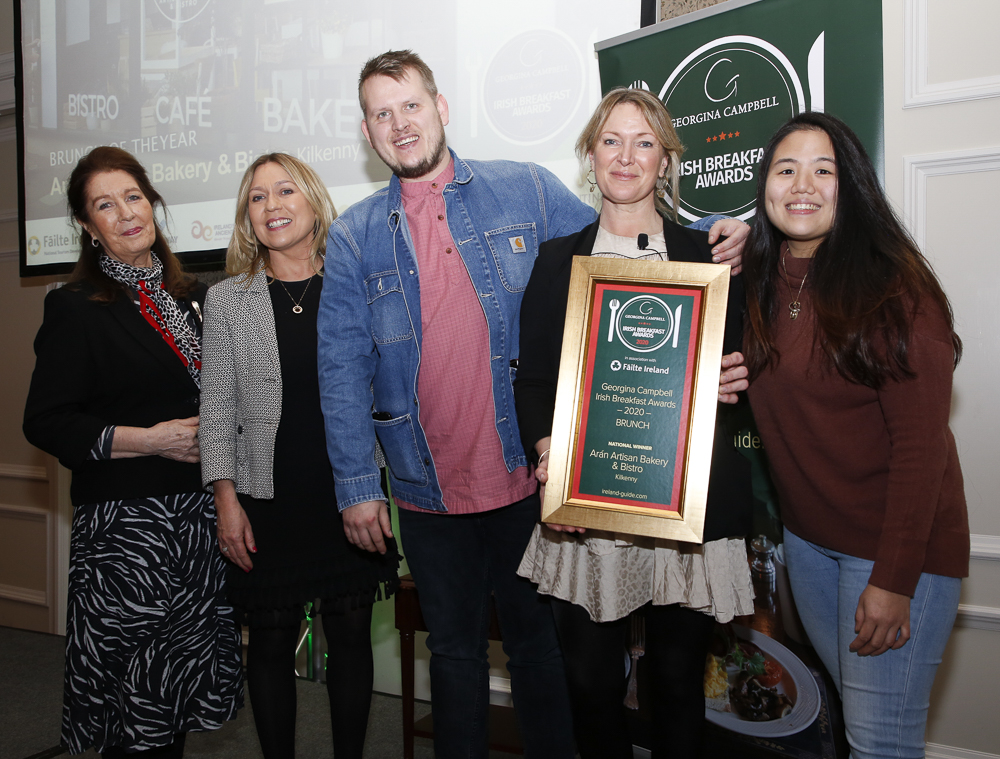
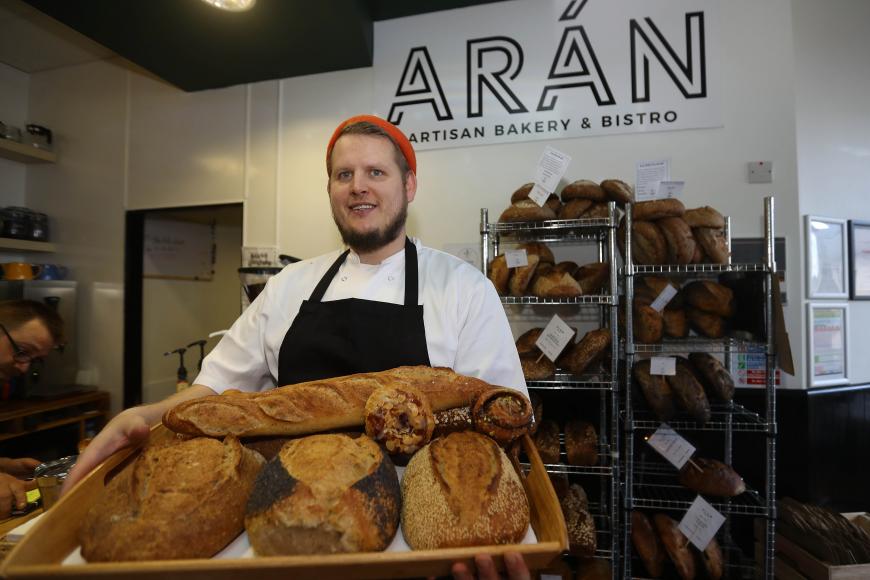 Of all meals, brunch is the one that reflects modern Ireland the best and its flexible timing, relaxed approach and wide-ranging menu base give brunch a unique multi-generational appeal. This is the only Georgina Campbell award that’s open to public participation and, from over 150 nominations, we posted a ‘shortlist’ of 30 leading brunch venues that we felt best conveyed the essence of the ideal brunch in both urban and rural areas, and invited the public to support their favourite. The high calibre of nominations must have made for some difficult choices but, from many thousands of votes, the top five bunched ahead of the rest - and a clear winner eventually emerged, Arán Bakery and Bistro in Co. Kilkenny, which received a torrent of votes from its loyal customers, indicating just how passionate Kilkenny people are about their brunching options.
Of all meals, brunch is the one that reflects modern Ireland the best and its flexible timing, relaxed approach and wide-ranging menu base give brunch a unique multi-generational appeal. This is the only Georgina Campbell award that’s open to public participation and, from over 150 nominations, we posted a ‘shortlist’ of 30 leading brunch venues that we felt best conveyed the essence of the ideal brunch in both urban and rural areas, and invited the public to support their favourite. The high calibre of nominations must have made for some difficult choices but, from many thousands of votes, the top five bunched ahead of the rest - and a clear winner eventually emerged, Arán Bakery and Bistro in Co. Kilkenny, which received a torrent of votes from its loyal customers, indicating just how passionate Kilkenny people are about their brunching options.
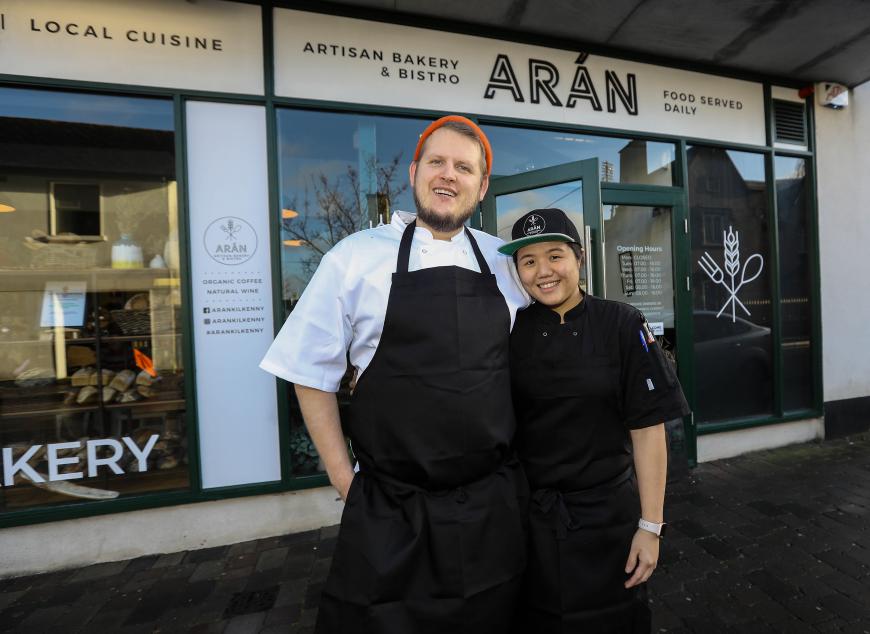 Bart Pawlukojc and his wife Nicole Server-Pawlukojc brought a wealth of experience at top restaurants in Europe and beyond when they settled in Kilkenny and opened this superb bakery and daytime restaurant in 2019 - and it shows in the stylishly simple interior as well as their delicious food. Arán - meaning bread in Irish - is all about simple and good. Their breads are made with just four ingredients - flour, salt, water and natural leaven or a fresh yeast culture - and stone-baked in their special bread oven. And, unusually, they use locally grown stoneground flour, which is milled by the seventh generation of the Mosse family at The Little Mill on the River Nore, at nearby Bennettsbridge.
Bart Pawlukojc and his wife Nicole Server-Pawlukojc brought a wealth of experience at top restaurants in Europe and beyond when they settled in Kilkenny and opened this superb bakery and daytime restaurant in 2019 - and it shows in the stylishly simple interior as well as their delicious food. Arán - meaning bread in Irish - is all about simple and good. Their breads are made with just four ingredients - flour, salt, water and natural leaven or a fresh yeast culture - and stone-baked in their special bread oven. And, unusually, they use locally grown stoneground flour, which is milled by the seventh generation of the Mosse family at The Little Mill on the River Nore, at nearby Bennettsbridge.
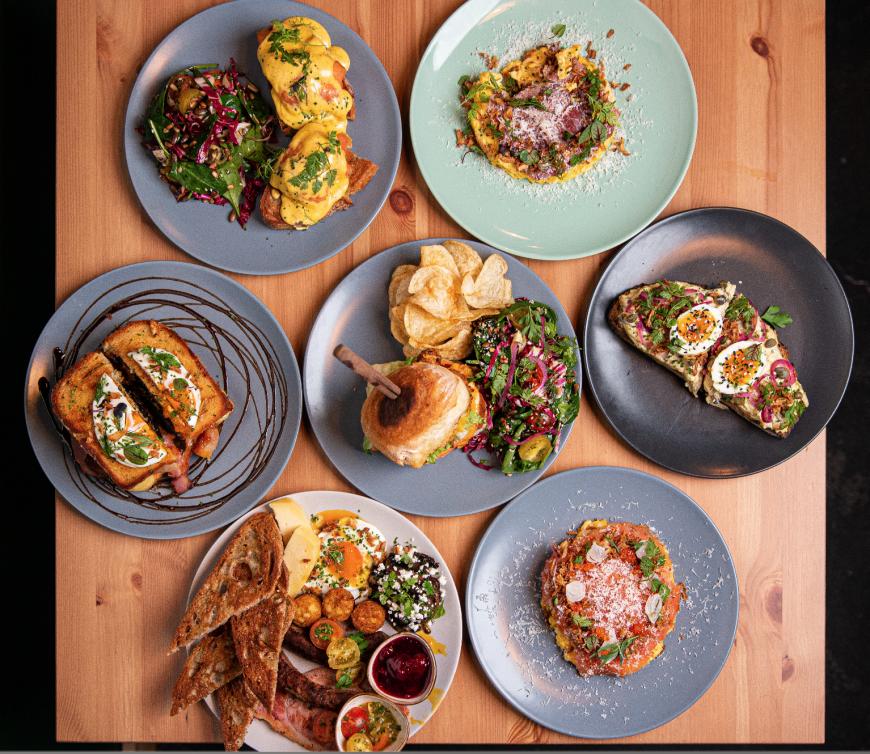 The all-day brunch changes depending on seasonal availability but will always showcase local produce from Kilkenny and nearby counties. Many come especially for the Arán Breakfast Platter, featuring Ballon Farms Egg Sunny Side Up, Sourdough Toast, Jam, Baba Ghanoush, Knockanore Cheddar Cheese, John Joe’s Rashers, Dizzy Goat farms Wild Pig Sausage & Goat’s Cheese, Hash Brown and Sautéed Mushrooms, it's definitely not your average Irish breakfast. Vegetarian and vegan options are available too, and this is just the start of a menu that offers imaginative variations of many of the most popular breakfast and brunch dishes, along with stalwarts such as soup of the day. Everything has a very local tone and there are irresistible cakes and pastries too, of course - and natural wines (including bubbly) available to give your meal a lift. Most certainly worth a detour, Arán is simply special.
The all-day brunch changes depending on seasonal availability but will always showcase local produce from Kilkenny and nearby counties. Many come especially for the Arán Breakfast Platter, featuring Ballon Farms Egg Sunny Side Up, Sourdough Toast, Jam, Baba Ghanoush, Knockanore Cheddar Cheese, John Joe’s Rashers, Dizzy Goat farms Wild Pig Sausage & Goat’s Cheese, Hash Brown and Sautéed Mushrooms, it's definitely not your average Irish breakfast. Vegetarian and vegan options are available too, and this is just the start of a menu that offers imaginative variations of many of the most popular breakfast and brunch dishes, along with stalwarts such as soup of the day. Everything has a very local tone and there are irresistible cakes and pastries too, of course - and natural wines (including bubbly) available to give your meal a lift. Most certainly worth a detour, Arán is simply special.
Sustainability - keeping it local
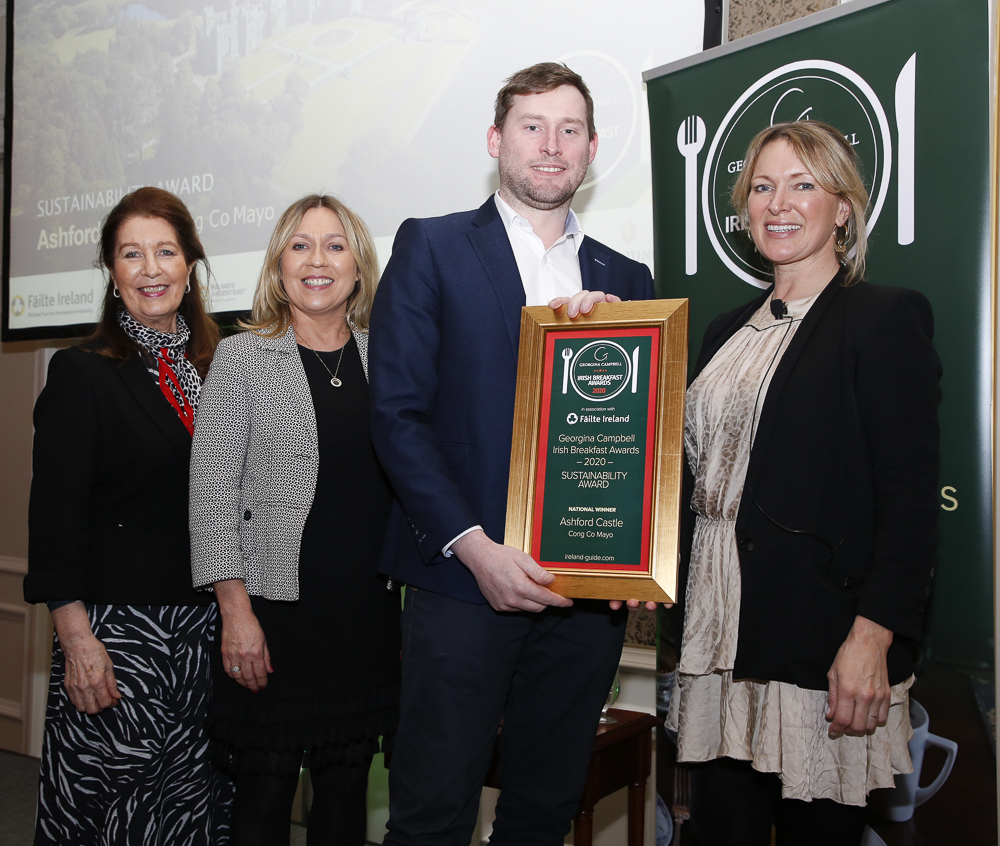

Acknowledging Ireland’s leading producers is an important element of the Irish Breakfast Awards, as we need to encourage all breakfast providers, particularly hotels, to support local producers. By investing in and supporting good quality local providers you are investing in and supporting a more sustainable Ireland. This has become a real priority for the hospitality industry and it’s something that has to be at the top of our collective agenda – permanently. Ethical, sustainable practices are good for business and a commitment to quality produce with a sense of place should be seen as a sound investment rather than an unnecessary cost. It will enhance the reputation of individual hospitality providers, along with Ireland’s reputation and that in itself is progress.
Ashford Castle was selected as the inaugural winner of the Sustainability Award at the Irish Breakfast Awards, recognised for its environmental credentials in relation to impressive sustainable practices.
Ireland’s grandest castle hotel, Ashford Castle, was bought by Beatrice and Stanley Tollman, of the South African hotel group Red Carnation Hotels, in 2013. Since then, an extensive programme of repair, restoration and refurbishment has brought the property back to its glorious best, and, in line with the Red Carnation Hotels policy, there is now a particular focus on environmental initiatives. Notably, it is the first five star hotel in Ireland to be awarded GREENmark Plastic Smart recognition by GreenTravel.ie, the Green Tourism reference site for DiscoverIreland.ie, for its efforts in responsible tourism and commitment to remove all Single Use Plastics (SUPs) from the property by 2022.
Ashford Castle was the Five Star Hotel winner in our 2018 Irish Breakfast Awards and its local sourcing policy was a key reason for the award. While breakfast is just one part of the sustainability picture, it is an important one as Executive Chef Philippe Farineau has always been committed to sourcing the best seasonal ingredients from the West of Ireland - as has Chef Jonathan Keane at the Lodge at Ashford, which is also on the estate. So, by supporting local producers of all the ingredients that make a great meal, including a breakfast - the rashers and eggs, the sausages, the whole ham, the smoked salmon, even the whiskey that guests are encouraged to sprinkle onto their porridge - the kitchen team at Ashford Castle are making a real difference. It’s good to see a leading hotel taking the lead on sustainability - more power to them.
IRISH FOOD WRITERS� GUILD AWARDS 2020
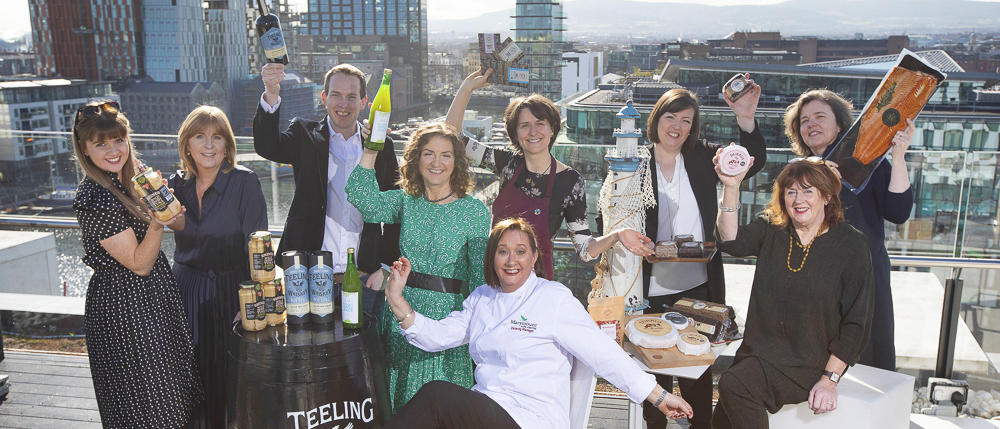
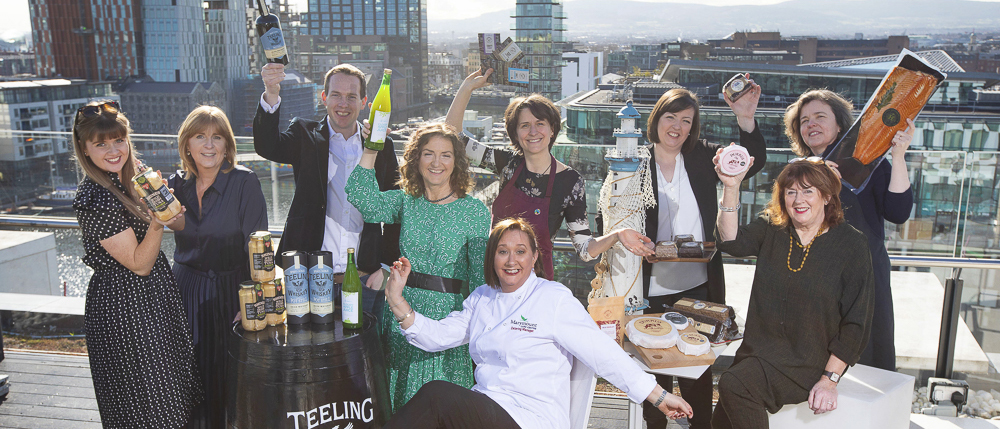
At the awards - held for the first time at The Marker Hotel, where guests assembled at the sunny rooftop bar to see the winners’ displays and marvel at the spectacular views over Dublin city before enjoying a celebratory lunch created by executive head chef Gareth Mullins to showcase the winning produce - IFWG chairperson, Kristin Jensen explained their importance:
“We are honouring the innovative and dedicated exemplars of our industry who represent so much of what is great about Irish food and drink. In addition to taste, quality and continually achieving standards of excellence, sustainability is a crucial determinant when it comes to nominating and voting for our winners. And while the issue of sustainability has only really dominated the headlines in recent years, it has always been an integral part of our awards process. Over the course of the IFWG Awards’ history - which is over a quarter of a century now - we have consistently looked to reward those operating sustainable businesses, so this is not just a passing trend.”
The IFWG Food Awards are unique, as no one can enter themselves or their product into the awards and no company knows it has been nominated or shortlisted for an award. The Guild is the sole nominating and decision-making body. The exception to this is the Community Food Award, for which the Guild invites nominations every year from the general public as well as their own members.
The winners of the 2020 Irish Food Writers’ Guild Food Awards are:
1. Food Award: Frank Hederman for Hederman Hot Smoked Irish Salmon, Co Cork
2. Food Award: Shine’s Seafood for Shine’s Wild Irish Tuna, Co Donegal
3. Food Award: Inch House Traditional Black Pudding, Co Tipperary
4. Irish Drink Award: Teeling Single Pot Still Irish Whiskey, Co Dublin
5. Outstanding Contribution to Irish Food Award: Joyce Timmins, Co Dublin
6. Environmental Award: Exploding Tree (Chocolate), Co Cork
7. Community Food Award: Falling Fruit Ireland (fruit harvesting), Co Dublin
8. Lifetime Achievement Award: Jeffa Gill (cheesemaker), Co Cork
The IFWG also paid special tribute to Bord Bia for its support of the awards and its tireless work on the home and export markets to promote and develop the Irish food industry. Una Fitzgibbon, Bord Bia’s Director of Marketing, said: “Consumers are actively seeking out new food experiences and research by our consumer and market insight centre, Bord Bia Thinking House, has shown that the majority of Irish shoppers have a real appetite to buy locally sourced, high-quality food and drink products. This is good news for the many small to medium producers who underpin the wider local community and the image of Ireland as a provider of innovative and sustainable food. The IFWG Awards are an opportunity to pay tribute to these artisan producers and recognise the important contribution they make to the Irish economy.”
To read more about award winners click here
For the full menu and recipes incorporating the 2020 winners click here

Irish Food Writers' Guild Awards 2020
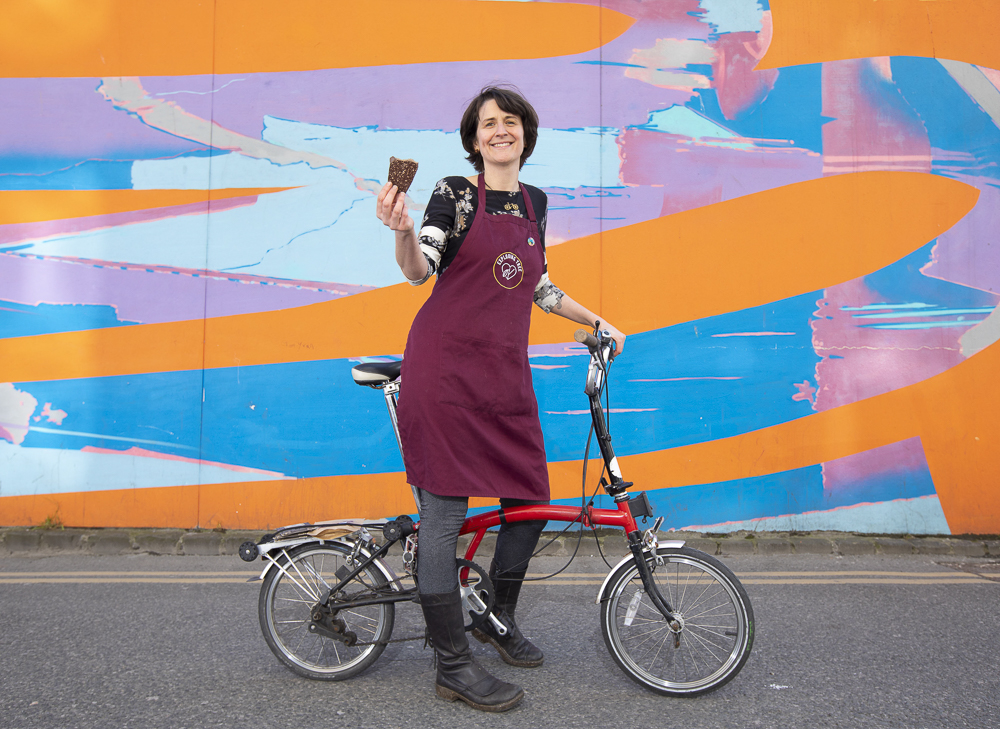
The IFWG Food Awards are unique, as no one can enter themselves or their product into the awards and no company knows it has been nominated or shortlisted for an award. The Guild is the sole nominating and decision-making body. The exception to this is the Community Food Award, for which the Guild invites nominations every year from the general public as well as their own members.
1. Food Award: Frank Hederman for Hederman Hot Smoked Irish Salmon
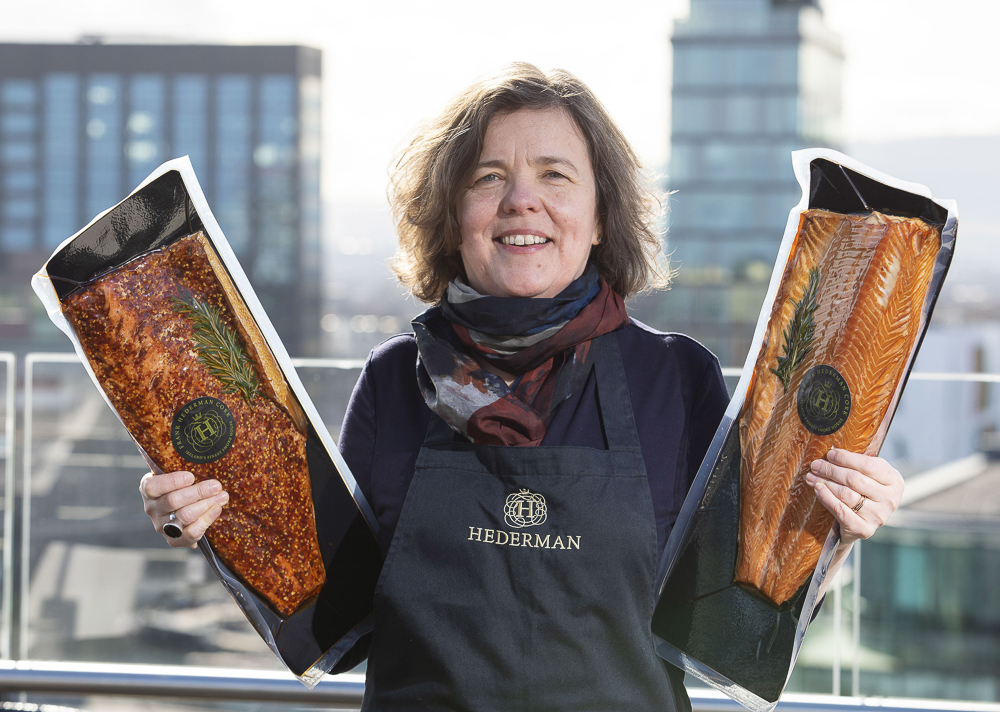
2. Food Award: Shine’s Seafood for Shine’s Wild Irish Tuna
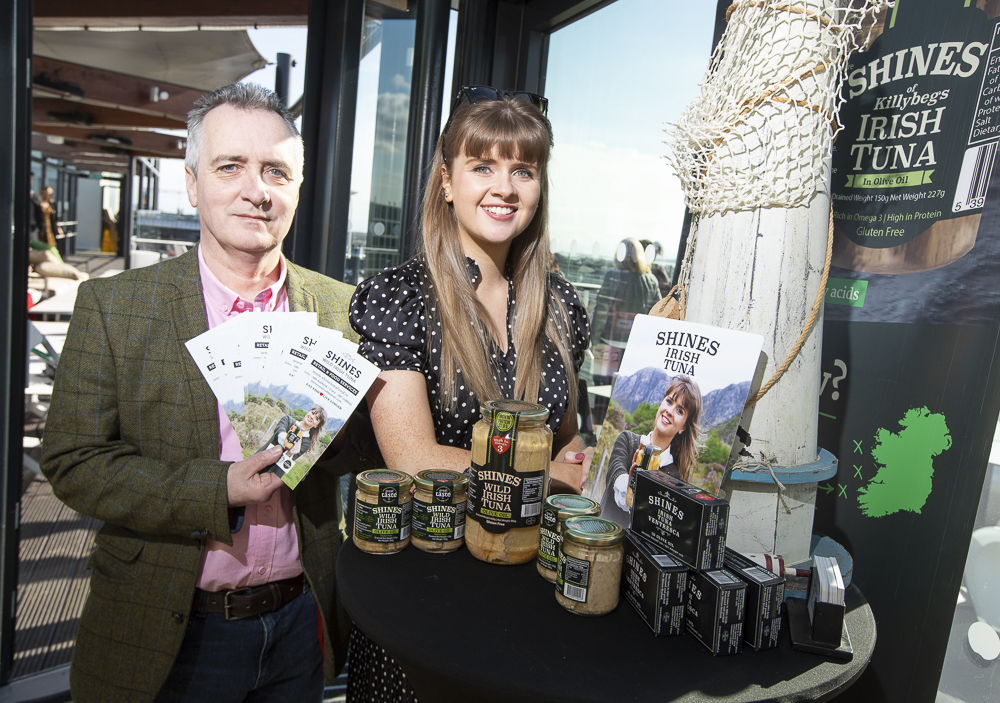
3. Food Award: Inch House Traditional Black Pudding
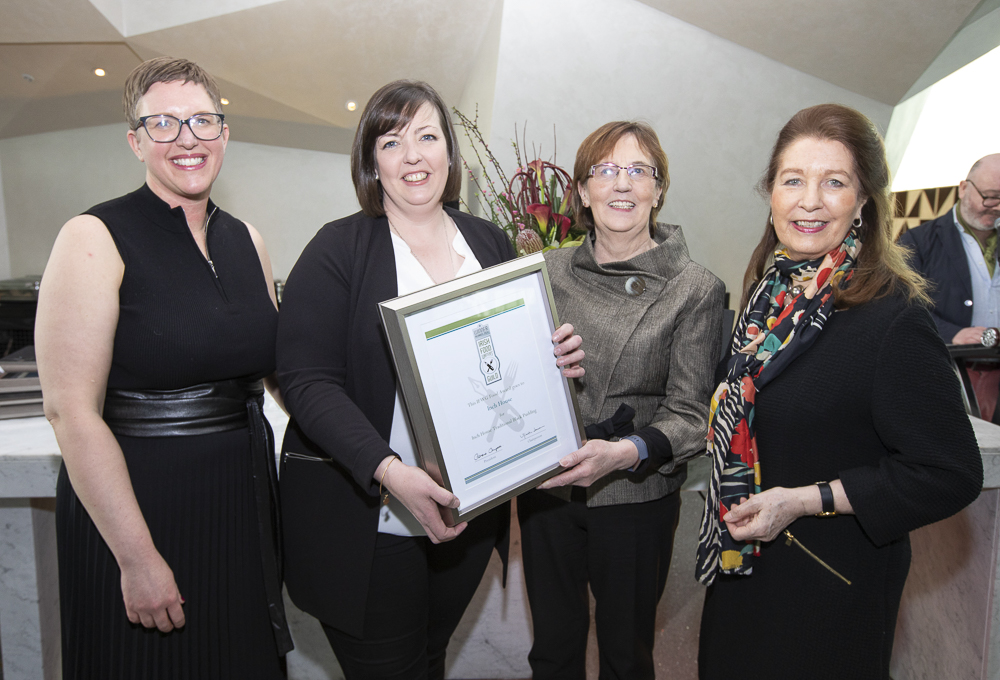
4. Irish Drink Award: Teeling Single Pot Still Irish Whiskey
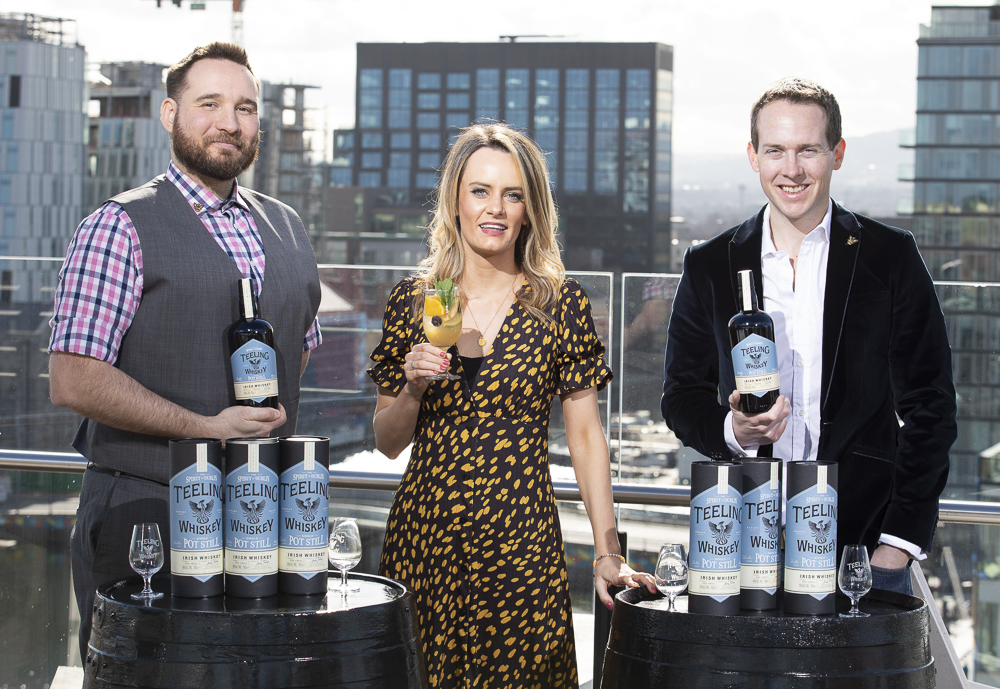
5. Outstanding Contribution to Irish Food Award: Joyce Timmins
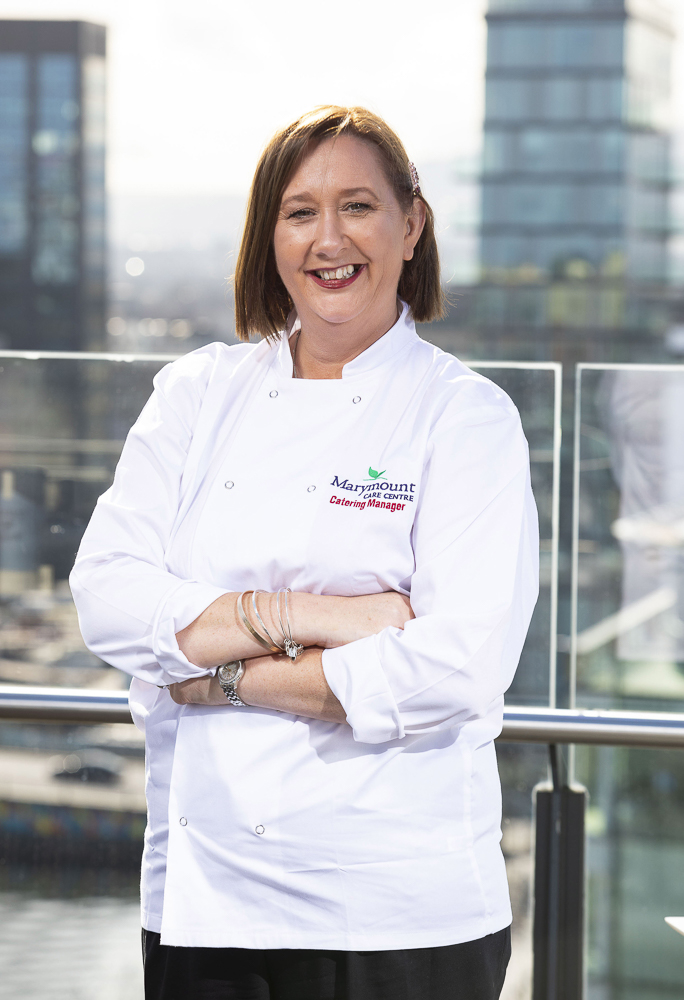
6. Environmental Award: Exploding Tree
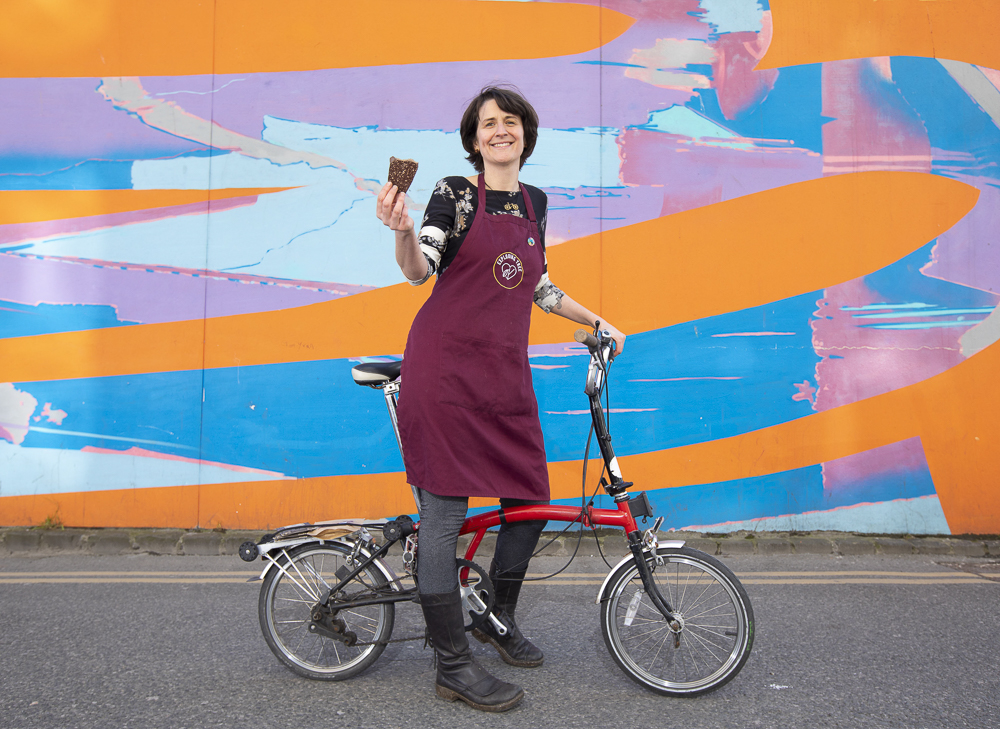
7. Community Food Award: Falling Fruit Ireland
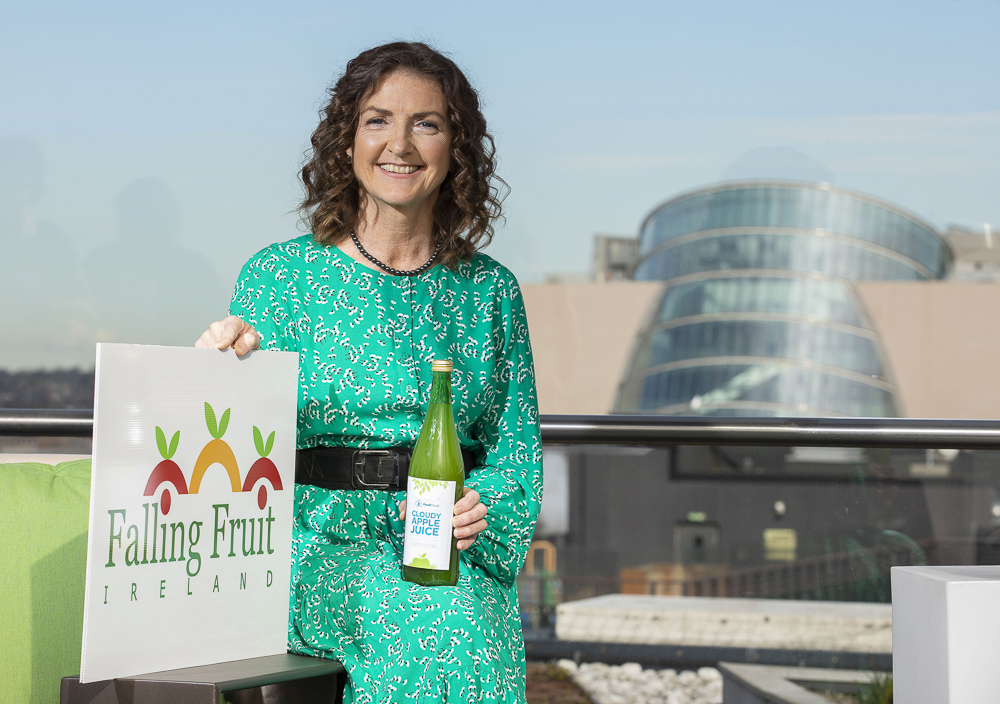
8. Lifetime Achievement Award: Jeffa Gill
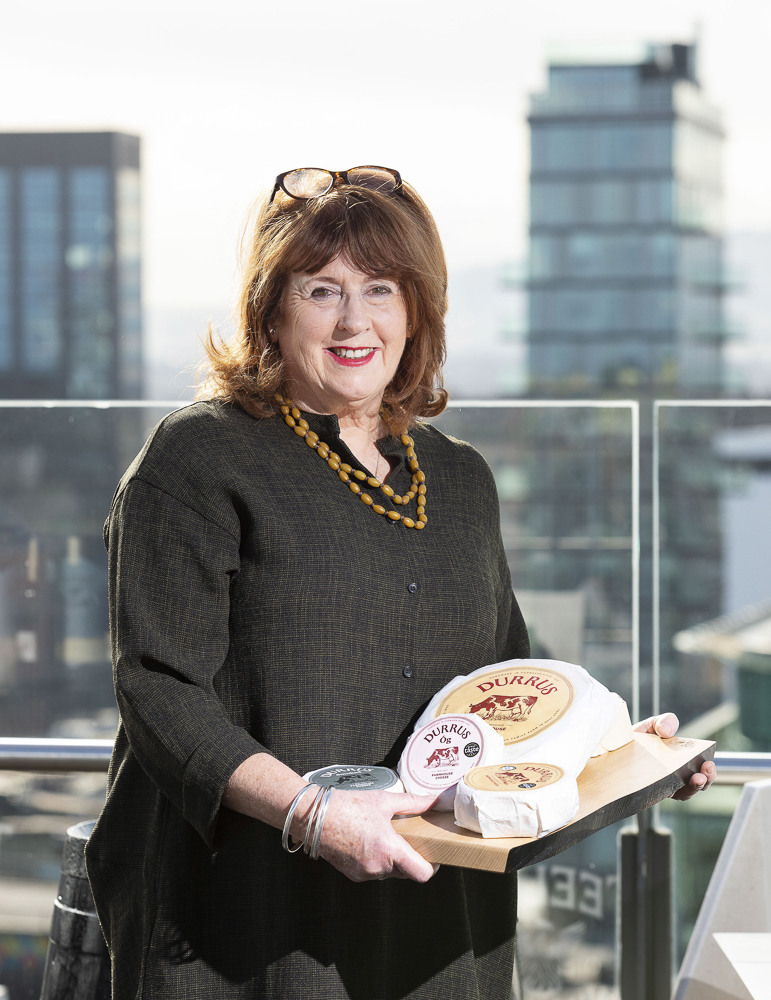
Under Lockdown in Rome - Thoughts from Eileen Dunne & Stefano Crescenzi
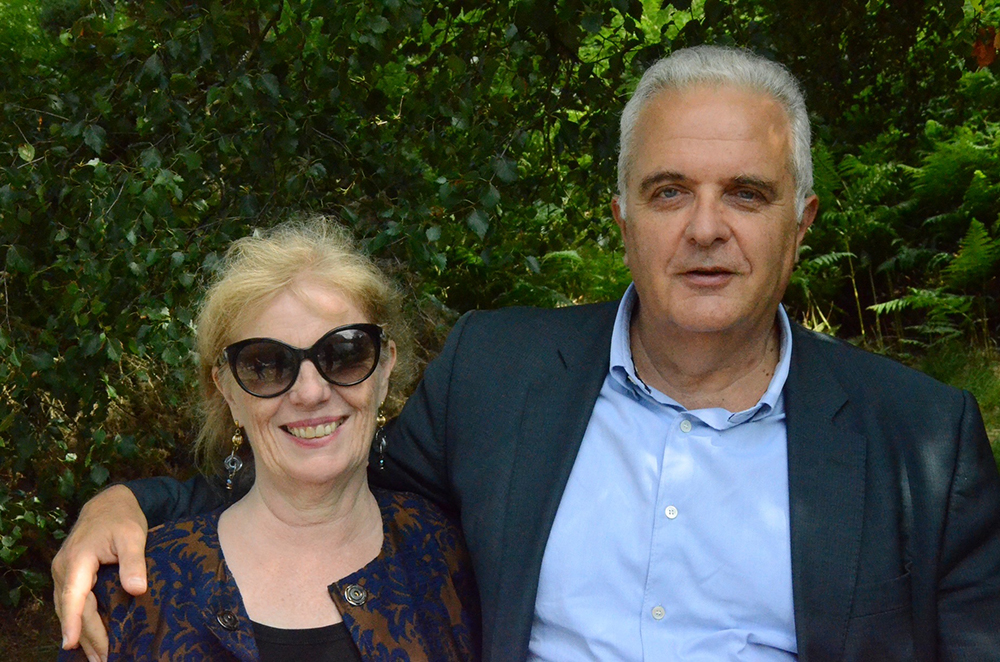
Eileen and Stefano Crescenzi have been housebound in Rome for weeks. But, true to form, they are not letting that get them down. Food is a tonic as ever and the evening meal has become the focus of the day - they alternate who cooks dinner, and each dinner has become a special occasion.
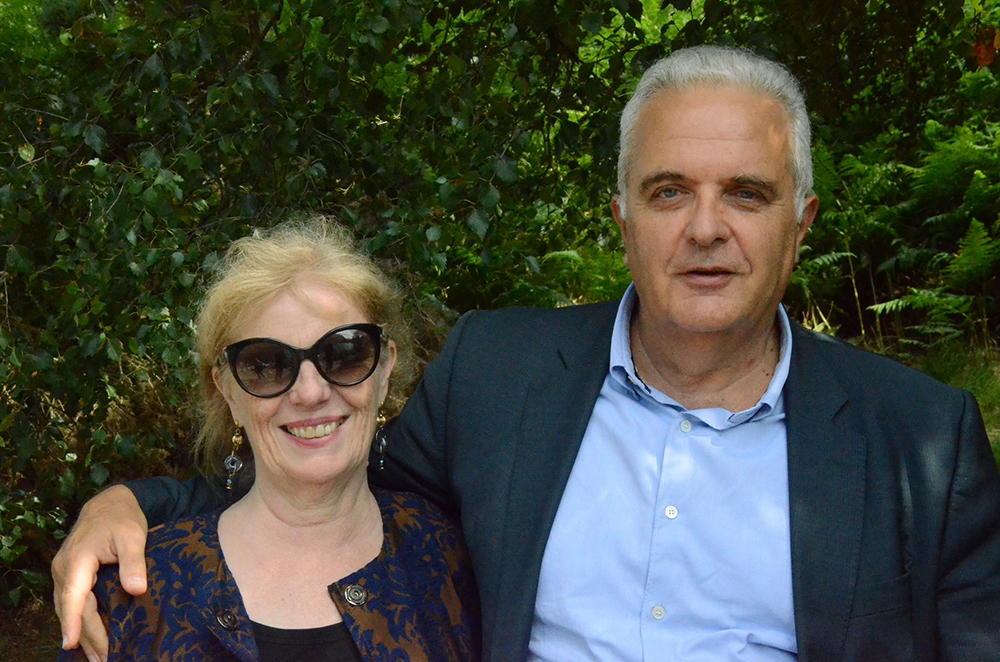
Here are some of Eileen’s tips from Rome on how to get through the current restrictions:
• The first week is probably the most difficult as it is necessary to adjust to a new lifestyle.
• It's important to establish a routine - arise, shower and dress as you usually do (no PJ days).
• Check your emails.
• Do an exercise routine. There are plenty online, if you are in an apartment like us, otherwise make the most of your garden.
• Think about lunch and what you will have - time to eat healthily, we are supporters of the Mediterranean diet.
• Afternoons can be devoted to hobbies and if you don't have one now is a good time to embark on something that you have always intended to do.
• The evening meal takes some thought and planning and families can take turns creating meals, cooking can be fun for all ages. (Sign up with your local supermarket for home deliveries if you have not already done so).
• A couple of times a week Skype family and friends and dine together. We eat with our daughters in Berlin a couple of times a week or with the boys in Dublin.
• It has never been so easy to stay at home - books, films, e-learning at our fingertips and all those jobs you intended to tackle; arrange old photographs, clear out wardrobes, move furniture around and good old fashioned Spring cleaning.
• Limit access to information on the Covid-19 virus, we need to be sensible but it cannot take over our lives.
• Stay in and stay safe. Say no to visitors, including family, you feel awkward saying this initially but you get used to it.
• Time to write another cookbook I guess!
Eileen is reading the memoirs of the Sicilian writer, Giuseppe Tomassi di Lampedusa (author of the classical novel The Leopard). He starts off saying that while famous persons tend to write their memoirs, how interesting it would be to read the memoirs of the ordinary person e.g. Byron's waiter. So, start writing... (“Sorry,” adds Eileen, “I don't mean ordinary in the general sense of the word, rather interesting and intriguing!”)
So back to food - Eileen says why not make their Signature Dunne & Crescenzi Lasagna Tradizionale for dinner this week? It's one of their own favourites - perfect for a comforting, cosy home dinner…
“We hope you enjoy the recipe and we look forward to seeing you soon - in the meantime, keep in touch! Let us know how your Lasagna turned out, if you have any questions or if there are any D&C favourites you'd like us to share the recipe for! Ciao a tutti, Eileen”
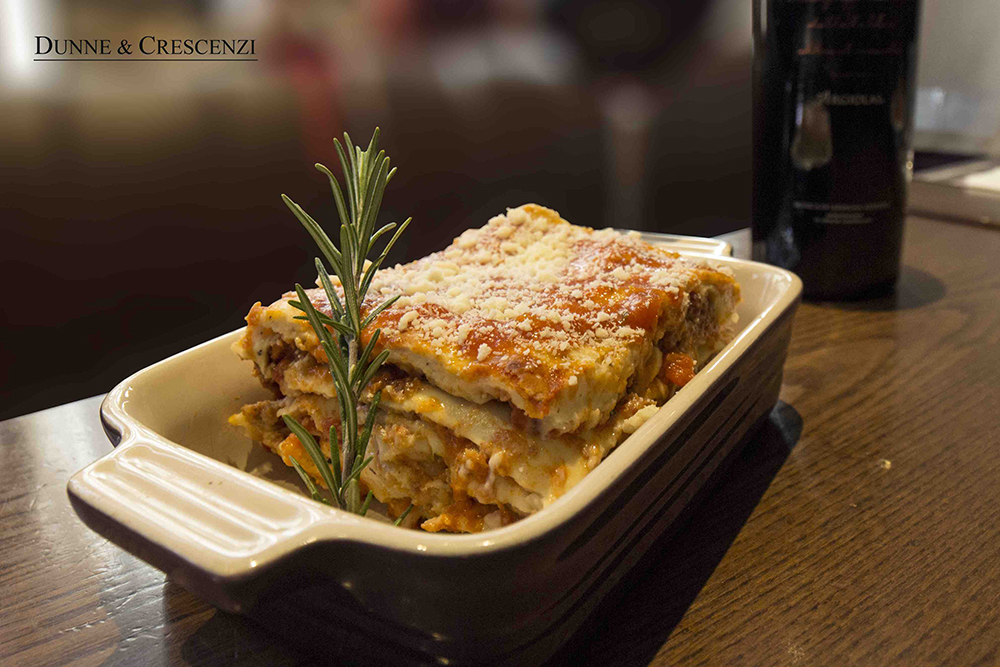 LASAGNA TRADIZIONALE
LASAGNA TRADIZIONALE
Serves 6-8
Ingredients for the ragu:
Soffritto: 1 diced carrot, 1 stick of celery and 2 shallots
6 tablespoons of extra virgin olive oil
50g pancetta, diced (optional)
200g quality minced beef
200g quality minced pork
1 glass of red wine
2 ripe beef tomatoes, chopped
500ml tomato passata or 2 tins of plum tomatoes
2 bay leaves
Salt and pepper to taste
Ingredients for white sauce (béchamel):
50g butter
50g plain flour
500ml milk
To assemble:
400g dried lasagna
200g grated parmigiano
200g mozzarella, diced
Method
• For the ragu: Sauté the soffritto in the oil on a low heat and add the pancetta, cook for a couple of minutes and add the minced meats. Stir until the meats takes on a rich pink colour but avoid browning. Add the wine and increase the heat momentarily to cook off the alcohol, then add the tomatoes, bay leaves, salt and pepper to taste, and cook on a low heat for about 2 hours, stirring occasionally. Add some warm water if it becomes dry
• For the béchamel sauce: Melt the butter, and stirring continuously, fold in the flour little by little until it is absorbed. Gradually pour in the milk, little by little, stirring continuously until all of the milk is absorbed and the sauce coats the back of a spoon.
• To assemble: Preheat the oven to 200 degrees C. Put a little oil in the bottom of a rectangular oven dish and line with lasagna sheets. Cover with a thin layer of ragu, drizzle béchamel sparingly over the ragu, sprinkle with the parmigiano and dot with mozzarella.
• Repeat this process for about 3 or 4 layers, finishing with a layer of béchamel, parmigiano and mozzarella. Place in the ovenfor around 40 minutes.
• Leave to rest for a couple of minutes before cutting.
info@dunneandcrescenzi.com
Three to Try - Restaurant Standards for Home Dining
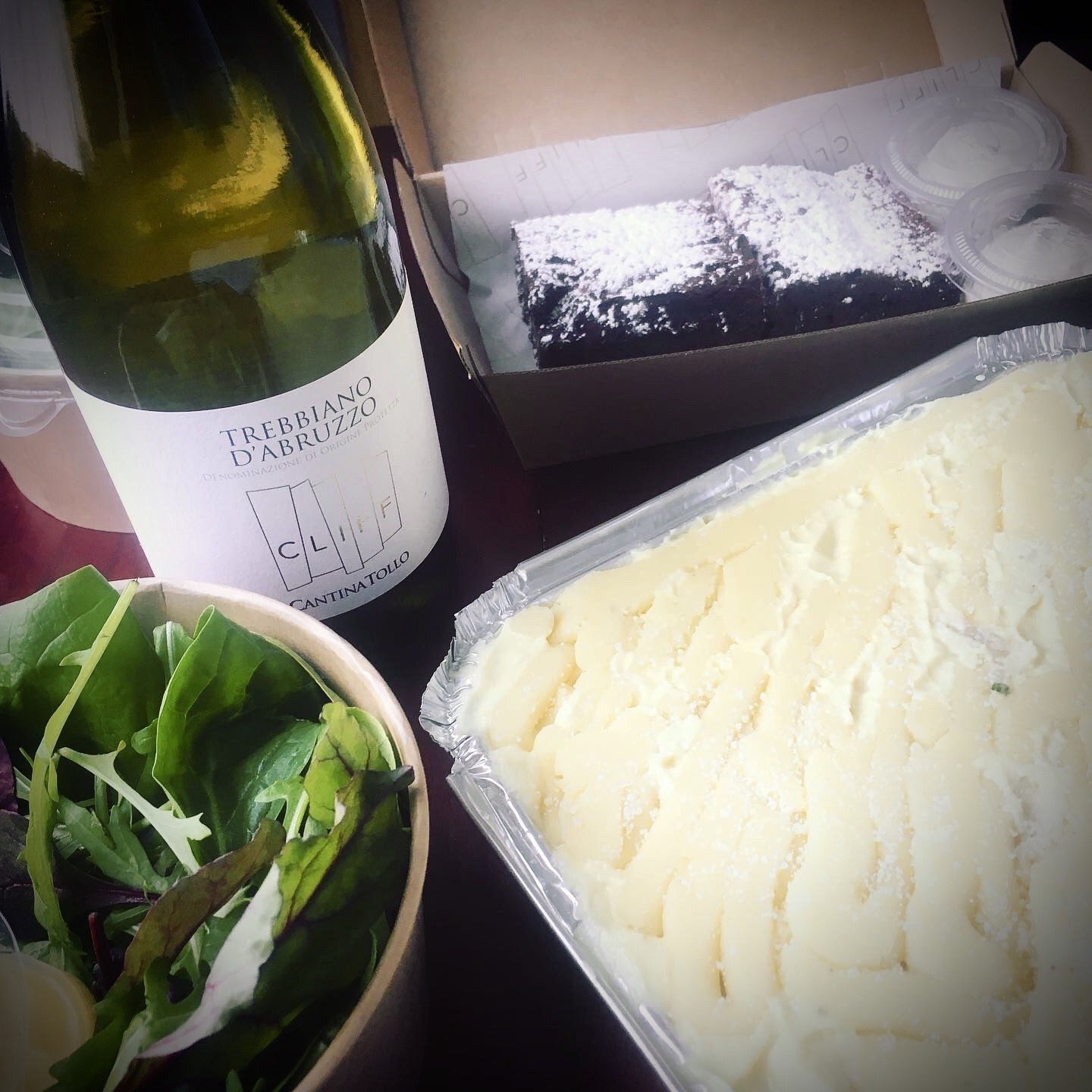
As more restaurants gear up towards reopening this summer, Aoife Carrigy highlights three very different Dublin eating places where they’re testing the waters and keeping regulars happy with call and collect options
All across the land, restaurant owners are puzzling over how they can adapt to the new normal. For some, an early step has been to keep themselves and a skeleton staff busy by offering take-home options for collection by loyal regulars who want to continue to support their local restaurants – and take a break from the endless home-cooking while they're at it. Judging from a small but diverse sampling from my local area, the results that these resourceful professionals are achieving are extremely impressive, managing to maintain in-house standards to be enjoyed at home while keeping things safe for all involved.
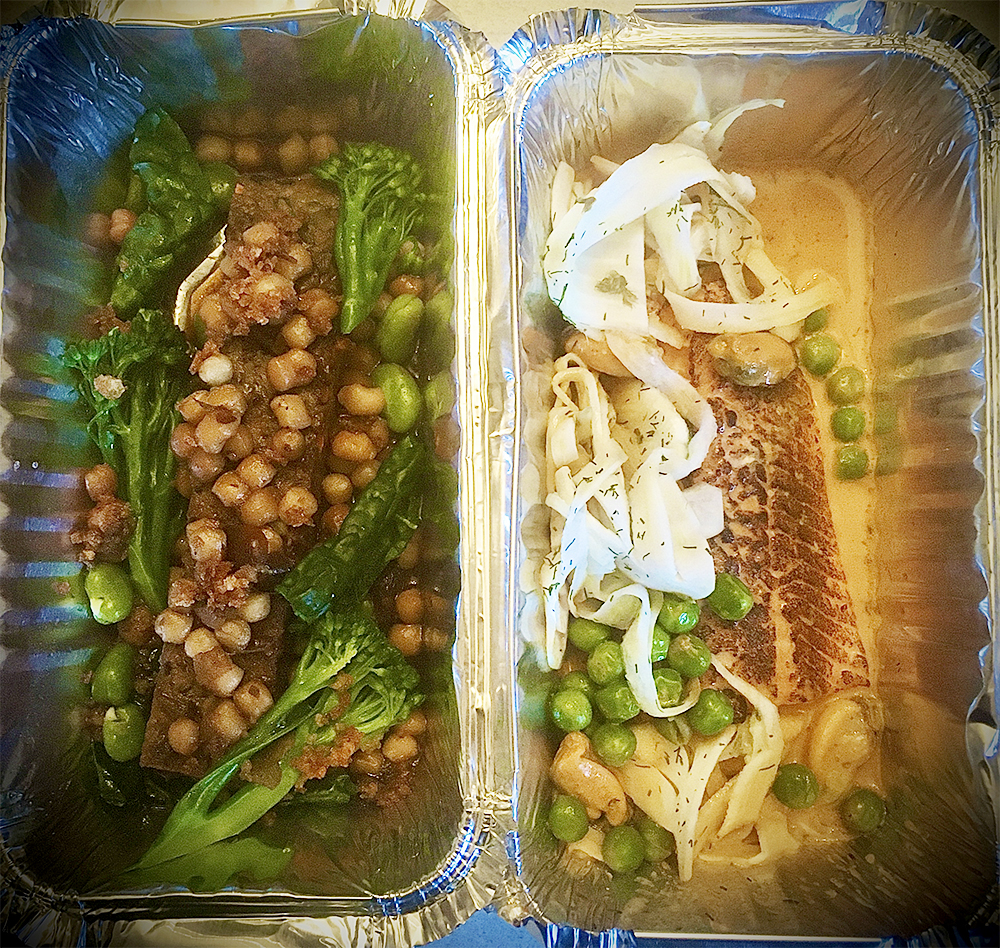 Just off the canal at Portobello, Richmond is doing a busy weekend trade for lucky locals (Thu–Sat evenings, collection 5pm–8.30pm). It's currently a two-man operation, with owner-manager Russell Wilde fielding phone orders and handing out bags for collection at allocated times across a two-top table wedged into the doorway, and head chef David O'Byrne executing each week's pared back menu. A choice of one starter (€5), two mains (€12 each), one or two sides (€4) and a dessert (€5) means that you can go all out and order one of everything to share between two people for just €22 a head. leaving a bit of change to pick up a bottle of wine from their selection, such as an excellent Picpoul de Pinet (sold pre-chilled, of course). Peter is a talented chef who draws on classic European techniques to extract maximum flavour from well-sourced ingredients. Everything that we ate could have been served with pride by Russell and his front-of-house team. Arancini balls in a crunchy rice coating yielded to a moreish interior of subtly spiced lamb shoulder, foregrounded by a text-book almond-enriched romesco sauce of sweet red pepper. Main courses held up well in the transportation and while keeping warm in the oven: pressed duck leg dressed in a perfectly pitched date sauce and served with vibrant spring greens (broad beans and tender stem broccoli) and fat nuggets of fregola pasta; and a beautiful piece of sea trout with plump mussels, sweet peas, shaved fennel and the kind of bisque sauce that takes time, patience and a professional touch. Sides were typical of O'Byrne's creative attention to detail (in this case cauliflower in cheese custard, and baby potatoes in a tomato pesto) while dessert was a clever combo of rich chocolate brownie, crunchy honeycomb and zingy blackberry sauce. This is food to bring comfort and pleasure during times that warrant both, and a reminder of why restaurants like Richmond are so worth supporting and protecting.
Just off the canal at Portobello, Richmond is doing a busy weekend trade for lucky locals (Thu–Sat evenings, collection 5pm–8.30pm). It's currently a two-man operation, with owner-manager Russell Wilde fielding phone orders and handing out bags for collection at allocated times across a two-top table wedged into the doorway, and head chef David O'Byrne executing each week's pared back menu. A choice of one starter (€5), two mains (€12 each), one or two sides (€4) and a dessert (€5) means that you can go all out and order one of everything to share between two people for just €22 a head. leaving a bit of change to pick up a bottle of wine from their selection, such as an excellent Picpoul de Pinet (sold pre-chilled, of course). Peter is a talented chef who draws on classic European techniques to extract maximum flavour from well-sourced ingredients. Everything that we ate could have been served with pride by Russell and his front-of-house team. Arancini balls in a crunchy rice coating yielded to a moreish interior of subtly spiced lamb shoulder, foregrounded by a text-book almond-enriched romesco sauce of sweet red pepper. Main courses held up well in the transportation and while keeping warm in the oven: pressed duck leg dressed in a perfectly pitched date sauce and served with vibrant spring greens (broad beans and tender stem broccoli) and fat nuggets of fregola pasta; and a beautiful piece of sea trout with plump mussels, sweet peas, shaved fennel and the kind of bisque sauce that takes time, patience and a professional touch. Sides were typical of O'Byrne's creative attention to detail (in this case cauliflower in cheese custard, and baby potatoes in a tomato pesto) while dessert was a clever combo of rich chocolate brownie, crunchy honeycomb and zingy blackberry sauce. This is food to bring comfort and pleasure during times that warrant both, and a reminder of why restaurants like Richmond are so worth supporting and protecting.
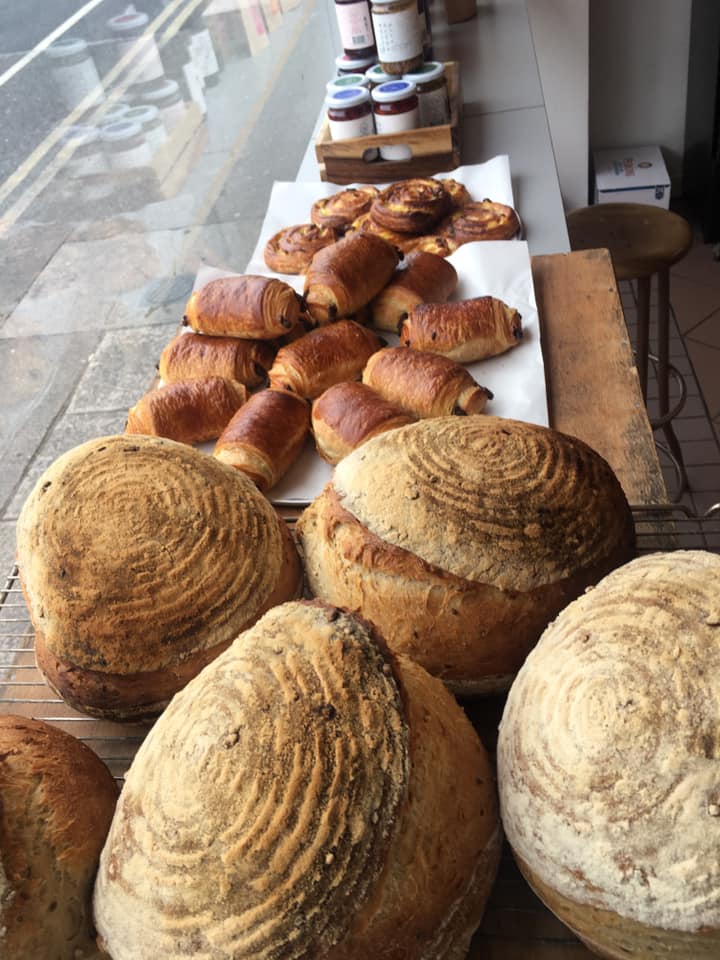 Meanwhile, at Leonard's Corner, Dublin 8 locals are spoilt with the combination of Gaillot et Gray for take-home pizzas by night and breads and pastries by day and the neighbouring 57 The Headline which managed a swift pivot from craft beer pub to take-home and deliveries of everything from Aperol spritz kits to local brews to wine and cheese boards. Chef-owner Giles Gaillot is an excellent baker and his rustic bread is worth putting a call in for (available to order Wed-Sat from 9am along with home-baked pastries, Imbibe coffee from local roasters and other locally produced treats such as White Mausu peanut rayu and cashew-miso crunch). It's a morning-only offer, with last orders dispatched by noon to give the crew a break before they reopen from 4pm to take call-ahead orders for pizza, available up until 9pm. And what singular pizzas these are: more biscuit-like in base than their Italian counterparts, as is the French style; served nicely charred from their Four Grand-Mère wood-fired oven; and topped with a Provencal-style tomato sauce scented with fragrant marjoram, punchy Emmenthal cheese and your choice from about eight menu options. We went for one of their classics – a combo of juicy merguez sausage, mushrooms and onion – and their superb special of asparagus, wild garlic pesto and sun-dried tomatoes, which is about as complex as their cleverly simple flavour pairings get. Even with transportation home on the back of a bicycle, a short blast in the preheated oven was all that was needed to return each pizza to its just-cooked glory.
Meanwhile, at Leonard's Corner, Dublin 8 locals are spoilt with the combination of Gaillot et Gray for take-home pizzas by night and breads and pastries by day and the neighbouring 57 The Headline which managed a swift pivot from craft beer pub to take-home and deliveries of everything from Aperol spritz kits to local brews to wine and cheese boards. Chef-owner Giles Gaillot is an excellent baker and his rustic bread is worth putting a call in for (available to order Wed-Sat from 9am along with home-baked pastries, Imbibe coffee from local roasters and other locally produced treats such as White Mausu peanut rayu and cashew-miso crunch). It's a morning-only offer, with last orders dispatched by noon to give the crew a break before they reopen from 4pm to take call-ahead orders for pizza, available up until 9pm. And what singular pizzas these are: more biscuit-like in base than their Italian counterparts, as is the French style; served nicely charred from their Four Grand-Mère wood-fired oven; and topped with a Provencal-style tomato sauce scented with fragrant marjoram, punchy Emmenthal cheese and your choice from about eight menu options. We went for one of their classics – a combo of juicy merguez sausage, mushrooms and onion – and their superb special of asparagus, wild garlic pesto and sun-dried tomatoes, which is about as complex as their cleverly simple flavour pairings get. Even with transportation home on the back of a bicycle, a short blast in the preheated oven was all that was needed to return each pizza to its just-cooked glory.
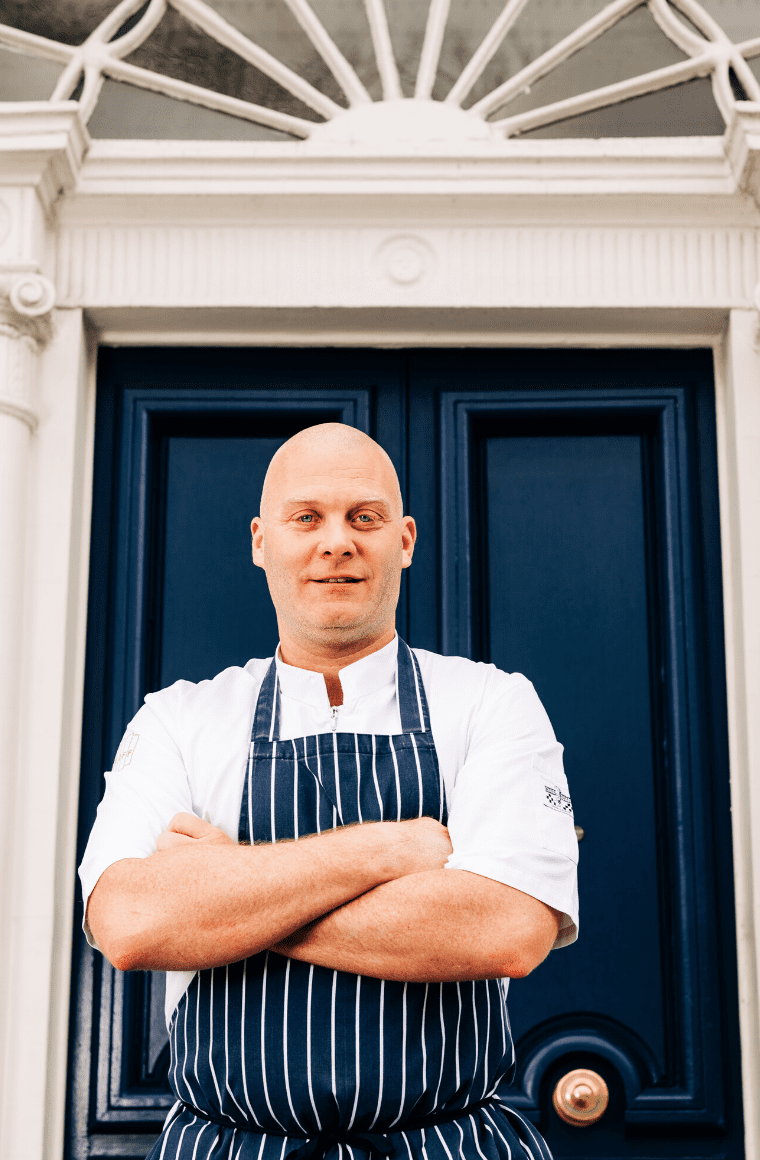 If the worry of keeping food hot while getting it home is off-putting, some operations are offering a choice of cooked or chilled versions of certain dishes. The Cliff Townhouse on Stephen's Green is taking full advantage of head chef Sean Smith's skill with seafood to offer top-notch dishes such as their Family Fish Pie to enjoy at home. We tried the chilled option, which came with clear cooking instructions that produced hunks of perfectly cooked white fish and generous prawns in an elegantly creamy leek sauce subtly bolstered by some smoked fish. Designed to sate four hungry souls, the pie comes with a spanking fresh salad and dressing and a bottle of smart house white wine for €57. The fish pie can also be collected cooked, alongside other cooked dishes from the takeaway menu like fish croquettes (€6) or tempura prawns with an avocado, lime and black pepper dressing (€14) – or alternatively you could opt for their CLIFF Heat at Home meal kits (€32.50 per person for three courses) that promise to be as elegant as they are easy to assemble. As with most call and collect offers, you can pre-book in advance to secure your time slot. Then it's as simple as parking outside and having your dinner delivered by gloved-up staff who will wipe down your car boot afterwards – which, in these strangest of times, is the new-normal equivalent to attentive service details like keeping water topped up and linen crumb-free.
If the worry of keeping food hot while getting it home is off-putting, some operations are offering a choice of cooked or chilled versions of certain dishes. The Cliff Townhouse on Stephen's Green is taking full advantage of head chef Sean Smith's skill with seafood to offer top-notch dishes such as their Family Fish Pie to enjoy at home. We tried the chilled option, which came with clear cooking instructions that produced hunks of perfectly cooked white fish and generous prawns in an elegantly creamy leek sauce subtly bolstered by some smoked fish. Designed to sate four hungry souls, the pie comes with a spanking fresh salad and dressing and a bottle of smart house white wine for €57. The fish pie can also be collected cooked, alongside other cooked dishes from the takeaway menu like fish croquettes (€6) or tempura prawns with an avocado, lime and black pepper dressing (€14) – or alternatively you could opt for their CLIFF Heat at Home meal kits (€32.50 per person for three courses) that promise to be as elegant as they are easy to assemble. As with most call and collect offers, you can pre-book in advance to secure your time slot. Then it's as simple as parking outside and having your dinner delivered by gloved-up staff who will wipe down your car boot afterwards – which, in these strangest of times, is the new-normal equivalent to attentive service details like keeping water topped up and linen crumb-free.
It's so impressive to see how these businesses are adapting, and heartening to know that we can support our favourite restaurants and help boost their morale and their coffers as they face into this unprecedented challenge for their industry and for our food culture.
After Lockdown - Return to Business - Time to Think Outside the Box

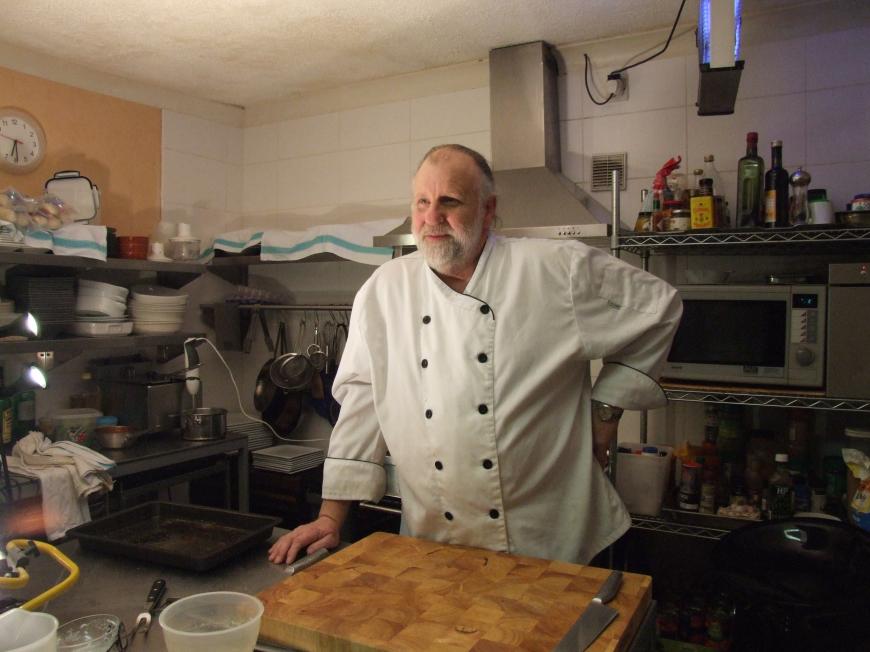
The time is fast approaching when restaurants, bars and cafés will be re-opening after lockdown and we’ll need to be prepared to operate in a very different world.
The doom and gloom being spread by many people in the hospitality industry is, in my opinion, very sad. We’re the guys and gals whose raison d’etre is to cheer people up and make them happy during difficult times, so we need to be proactive in the preparation of our establishments and educate the government about what we can do to revive our sector of the economy.
We are the industry professionals so we should have the expertise to find solutions to the demands being placed on us by government. I’d like to share some ideas that businesses could consider implementing, or that might get owners thinking positively about practical measures that could be developed in their particular situation.
These concepts are offered as outlines of what we can do to keep customers and staff safe while remaining compliant with Government guidelines and yet maintaining an acceptable level of profitability. We can split these concepts into two categories
1. The physical methods of compliance.
2. Operational changes.
.jpg)
PHYSICAL CHANGES
Restaurants, bars and cafés are being asked to reduce capacity by 50% by spacing tables 2 metres apart. There has been no alternative offered and it’s clear that a 50% reduction in customers would be devastating:
Create booths.
This need not be an expensive or constrictive concept but will certainly maximise seating in any space.
• Build screens using timber and perspex.
• They need to be light and mobile.
• Based on a simple timber frame surrounding and a 2mm thick sheet of perspex, the screens need to be approx.1200mm long x 1200 to 2000mm high, on legs up to 500mm tall.
• In a bar or café with smaller tables, the screens can be sized to suit the space and style.
• If made from clear perspex, customers will not feel claustrophobic and you have the opportunity to decorate the screens with logos, graphics, artwork or even to put the menu on, which will avoid the need to have paper/card menus.
• It’s also possible that in some circumstances you could create the screens using curtain fabric, MDF board, or indeed any other material that will create the separation and enhance the style of your eating area.
• Use these screens to separate tables so there is no longer a need for tables to be 2 metres apart. Also, as they will be light and moveable, place a screen in front of the table. Service staff will then be able to move them simply to access the table. This will require some modification to service.
• For bars, these booths could be created in a similar construction but 3-sided to sit partly on the bar, obviously with a gap at the bottom of the bar side to pass drinks through.
In kitchens, production areas and washups may become a bit more of a problem and will require screens to be designed for your style and space, but the same principles will apply by ensuring that the screens are lightweight and readily moveable.
OPERATIONAL CHANGES
Front-of-house staff
It would be prudent that all front-of-house staff wear masks. This is mainly for their protection. These don’t have to be medical-style masks but can be made easily from layers of cotton in an attractive material to enhance the establishment style. If correctly made, they would be washable and therefore re-useable.
Guest arrival
As guests arrive it might be advisable to take their temperature, insist on the use of hand sanitising gel and offer facemasks. This will not be the easiest thing for staff to do as it’s not how we treat people normally in hospitality, but these are not normal times and I intend to lobby government and hospitality trade bodies to publicise the need for such actions to avoid the potential backlash on our staff.
If tables are not ready then guests will need to queue, respecting Social Distancing. If there is not sufficient space inside, then guests will need to stay outside. Not the best if it’s raining or cold, but we must do what we can to make them comfortable and reduce the waiting time as much as possible.
It’s worth staggering bookings if possible and making customers aware when they book that they will need to meet that booking time to prevent any discomfort. Also at the time of booking, guests can be made aware of temperature testing and service style to prevent any shock on arrival.
Where the establishment is based on walk-in customers, strict control over numbers will need to be kept.
The Menu
There are many ways we can present menus without the written card or leather-bound tome.
• Using a tablet is an expensive way of doing it, but they can be sanitised after collection from customers. Or staff can input the order on the tabet
• Menu cards can be single use and disposable, although this is not necessarily the most environmentally friendly presentation.
• The menu could possibly be projected onto a wall or screen for all to see.
• Menus could be written up on the dividing screens for a bit of fun and practicability.
Crockery, cutlery and glassware
• These need to be sanitised before handing to customers. Mainly they will be “sterilised” when leaving the dishwashing machines but, given the airborne capabilities of Covid 19, a final sanitising may ideally be prudent. (Diversey have a product called “Suma Quat D4 Sanitiser”. I know this is used in Hong Kong where plates, cups, bowls etc. are sprayed with a dilute solution before being handed to guests.)
• Glassware needs to be stored open side down on sanitised trays and only handled by stem or base, but that’s normal good practice in bars and restaurants anyway.
Food style and service
While this may raise the hackles of many a chef/patron, I suggest that we create menus made up of “Sharing Platters”. But, continuing the theme of being creative, this need not be detrimental to the quality of food offered before lockdown, even though it will require a lot of lateral thinking to be a success.
• Tables could be pre-laid ready for guests, or cutlery could be wrapped to prevent any contamination.
• You could use personalised paper bags and linen napkins.
• The menu could be printed on the bag or an envelope with the cutlery inside.
• I recommend that table furniture (flowers, cruets etc.) are excluded from table setup.
• Create the dishes and design the presentation to sit on a board or platter. Each course could have its own style and that leaves the style of presentation wide open to interpretation!
• Once the food is ready for service, the service staff would take the appropriate sanitised plates or bowls to the table, then a single board with the chosen dishes presented on it would be placed on the table for guests to help themselves.
It’s important that this is well-rehearsed as it’s imperative that staff spend the minimum time in close proximity to the customers, that the staff wear masks, protective visors and protective gloves. Again, jolly these PPE items up for a bit of fun.
All drinks could also be served simply on a tray for guests to dispense themselves or, for hot beverages, you could offer a self-serve drinks service station.
You might want to consider asking guests to get their own drinks, including wine, from the bar but these are all things that will be dictated by the design and space in your restaurant.
In Conclusion.
I understand that what I am suggesting above may not suit everyone’s operation and many of you may think it’s a bridge too far and therefore not worth it. I would however urge you to take it as it’s meant and that’s to help everyone to think “outside the box” and create ways in which your business and our industry will survive - and just show people how resilient we are.
Dax Entertainment
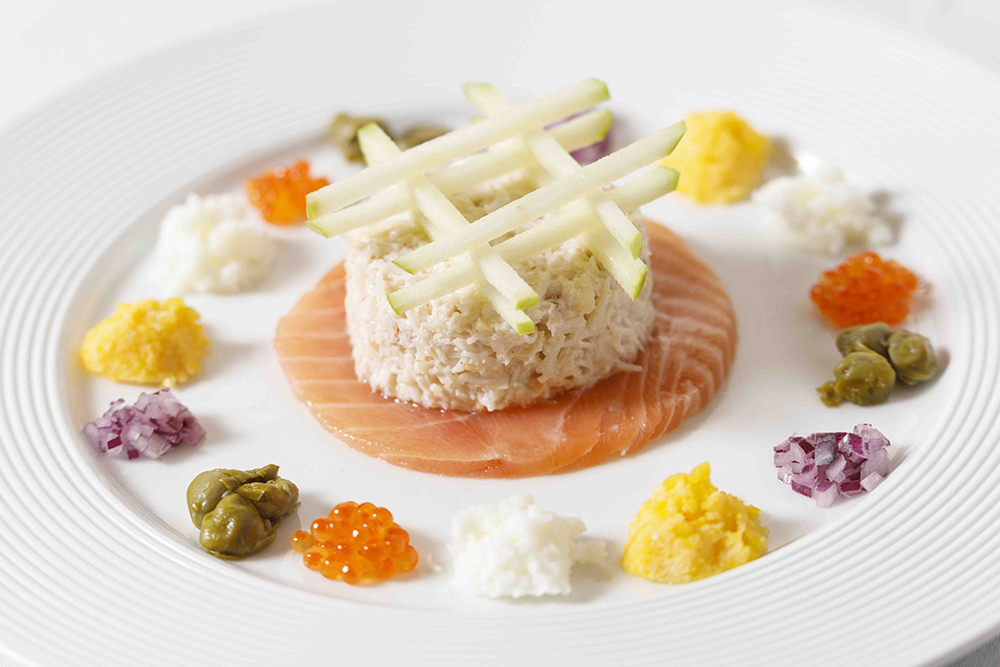
As the country's restaurants reopen, Aoife Carrigy revisited one of Dublin's finest for her first post-lockdown outing - an experience that, after months of home cooking, “felt like waking up in a rainforest after slumbering in a savannah.”
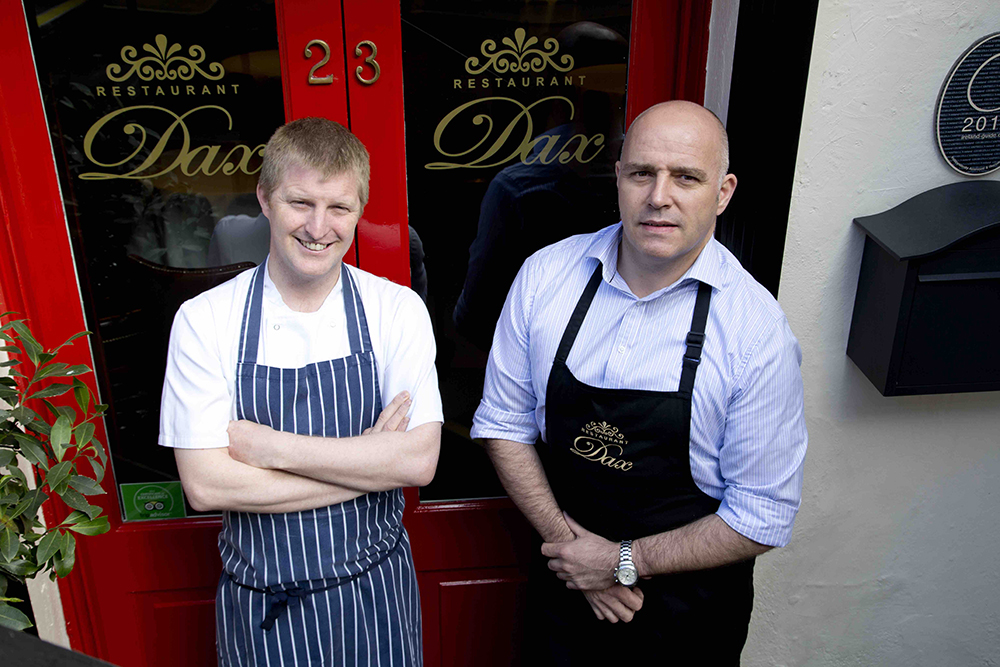
I was full of all sorts of emotions last Friday evening en route to Dax restaurant in the heart of Georgian Dublin.
There was that gorgeous glow that the anticipated pleasure of a great restaurant elicits: knowing you'll be in excellent hands for the evening, as talented professionals choreograph their finessed efforts front and back of house to give you the best night possible. There was giddiness too, to be frocked up and meeting a school friend who has been having a challenging lockdown as a primary carer to a beautiful soul with special needs, and to have nothing to do but choose what we'd most like to eat and drink, sit back and chat amongst ourselves as waves of deliciousness arrive before us.
There was relief that we'd got to this point of the process where restaurants and pubs were slowly reopening – and a lingering frisson of disbelief, which I still get blasts of all these months later, that this is our new reality.
If I'm honest there was a little fear in the mix, or tentative nerves at least: not so much that I wasn't delighted with my brief to review one of my favourite restaurants - and one that counts Georgina Campbell's Restaurant of the Year 2018 and a GC Wine Award among its well-earned accolades - but certainly more anxiety than was shown by the laughably laidback fox who sauntered across my path on Leeson Street, pausing only to have a territorial dispute with a swooping seagull. The city has become their Friday evening haunt, and we humans are only starting our gradual reclaiming of those streets as our leisure-time habitat.
Around on Pembroke Street, an alarm was barking loudly and I hoped it wasn't an omen of things to come. But a few skips later down the steps to the plush carpeted basement that Dax calls home, followed by a couple of squirts of hand sanitiser to bless the divine experience ahead, I was being greeted by one of the best maitre d's in the business.
 Even behind his visor, Olivier Meisonnave exudes a signature blend of warm charm and assured authority amassed over decades in the finest of dining rooms. When he opened Dax in 2004, Olivier brought with him a congregation of well-heeled converts from his time as maitre d' at the (then) two-star Thorntons Restaurant, and he has been steadily recruiting ever since.
Even behind his visor, Olivier Meisonnave exudes a signature blend of warm charm and assured authority amassed over decades in the finest of dining rooms. When he opened Dax in 2004, Olivier brought with him a congregation of well-heeled converts from his time as maitre d' at the (then) two-star Thorntons Restaurant, and he has been steadily recruiting ever since.
Settling me in at my table, where my friend was just ahead of me – we would have met nearby for a drink first, but of course that would have meant ordering a meal too – Olivier suggested a glass of Domaine Renardat-Fache Bugey Cerdon, a joyous plum-pink fizz from the French alpine foothills of southern Jura. Based on juicy-flavoured Gamay and Poulsard grapes, it is produced in the méthode ancestrale without a secondary fermentation or added yeast or sugars to give an off-dry, naturally sparkling, low-alcohol wine of 8% abv. It reminded me of well-made kir royale, counterbalancing elegant structure and vibrant summer fruits, only without the added cassis.
Olivier first served this gorgeous drop in Mionnay near Lyon back in 1990 at the three-starred restaurant of legendary nouvelle cuisine innovator Alain Chapel, and has been searching for it ever since. He recently rediscovered it thanks to Enrico Fantasia of Grape Circus who now sources it from the organic growers who produce it. This is the kind of kaleidoscopic experience that makes restaurants special, where a particular shard of deliciousness might lodge itself in Olivier's memory for three decades before being brought back to life by Enrico's curiosity to discover the traditional treasures that wine-making folk such as the Renardat-Fache family are faithfully keeping alive. This is what shared gastronomic culture is all about.
Happily, that same confluence of people, passion and pursuit of pleasure is expressed through every mouthful of every plate of impeccably sourced food served at Dax. For four years now, Graham Neville has been honing his pared back style of cooking in the Dax kitchen. Graham is another alumni of Thorntons, where he worked for seven years before heading up the kitchens at Residence for several more and picking up the title of Best Chef in Ireland for the first of two times to date. Of all the many things that I admire about his culinary style – the technical skill, the bold aesthetic, the unabashed luxury – it is his quiet restraint that is most disarming. His food doesn't feel like it was squeezed from a siphon or pinched by a tweezers, though it may have been. It is not trying to impress with clever concepts but rather win over with subtly layered and sometimes dazzling flavour pairings.
Take my starter of pan-seared foie gras, impossibly light in texture for all its inherent richness and served with lightly pickled cherries, rich Roscoff onion puree and an inspired shell of roasted seeds, amongst which the occasional coriander seed bursts like a ray of sunshine. Or the addition of Szechuan pepper to bring a smouldering heat and bright fragrance to the black pepper seasoning on a perfectly cooked North Leinster fillet of beef, served with slow-cooked Jacob's Ladder rib of beef and a fat sweet carrot and old-school brandy and peppercorn sauce. These brilliant little touches illuminate the excellence around them.
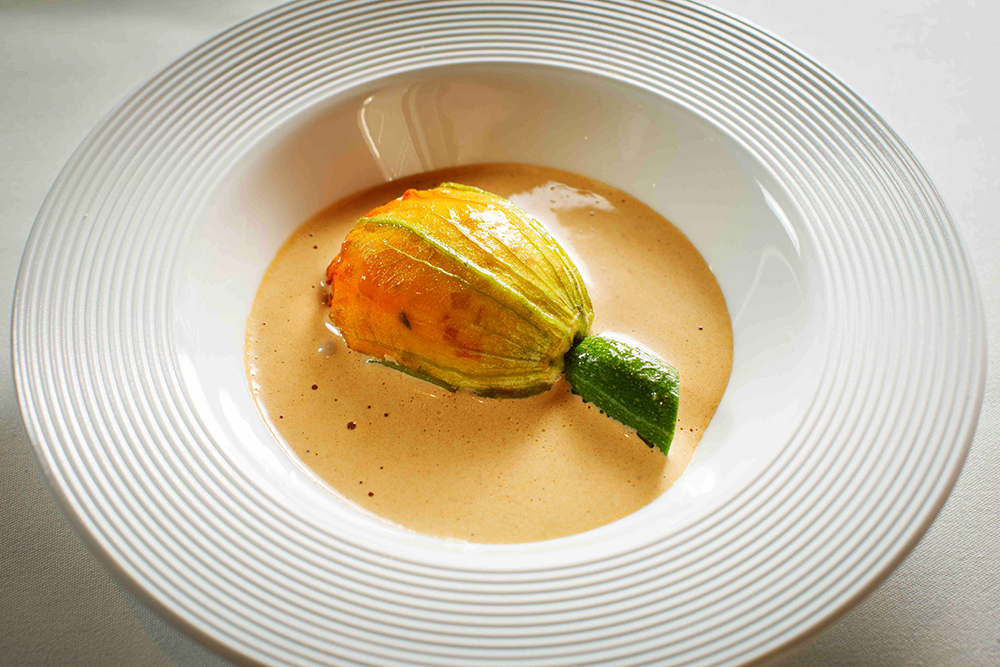 This is a chef who can harness the comfort of classics while making unlikely juxtapositions sing. My main course of perfectly cooked turbot was sauced with heady elderflower and earthy saffron. His signature summer dish is a plump courgette flower from Iona Farm in north county Dublin stuffed with the meaty flesh of Dublin Bay prawns and perched like a lacquered jewel amidst a sabayon-light crown of lemongrass and ginger bisque. Who knew that the flavour of gingernut biscuits and roast langoustine shells were a pairing from heaven? Graham Neville, that's who.
This is a chef who can harness the comfort of classics while making unlikely juxtapositions sing. My main course of perfectly cooked turbot was sauced with heady elderflower and earthy saffron. His signature summer dish is a plump courgette flower from Iona Farm in north county Dublin stuffed with the meaty flesh of Dublin Bay prawns and perched like a lacquered jewel amidst a sabayon-light crown of lemongrass and ginger bisque. Who knew that the flavour of gingernut biscuits and roast langoustine shells were a pairing from heaven? Graham Neville, that's who.
Elsewhere, this team have the confidence to minimise the cheffing and let the sourcing speak for itself, as with a starter of taut Annagassan smoked salmon and pristine Clogherhead crab meat, set like a sun and half moon within a constellation of garnishes: minced egg whites and yolk, red onion, capers and lolly-orange trout roe topped with Granny Smith matchsticks and a tumble of charcoal grey caviar. Eating this kind of food after months of home cooking felt like waking up in a rainforest after slumbering in a savannah.
Unsurprisingly, this is a kitchen that can produce a textbook tarte tatin with planifolia vanilla ice cream, or nail a perfect chocolate fondant with a surprisingly compatible lemon sorbet.
Nor is it unexpected that Olivier effortlessly guides us through just-right wines by the glass to complement each dish: luscious Domaine Baumard Coteau du Layon with the foie; salty-fresh Domaine Cazalet blend of Barroque and Gros Manseng with the salmon; sunny Villa Huesgen Mosel Riesling with the turbot; generous Les Deux Cols Côtes du Rhônes with the beef; and a cool sweet red Domaine Petri Geraud Banyuls with dessert.
What was surprising to me was how quickly I stopped seeing the visors on all the staff, how normalised a part of their uniform it became.
None of this kind of excellence comes cheap though there is value to be had, given that three courses of starter, fish or meat and dessert (from a limited choice of two each) comes to €78, while four courses (fish and meat) is just €11 more. Likewise, a wine list that is dominated by discounted premier wines including lots of left bank heavyweights offers much temptation to those who can afford it. However, as at many of our top flight restaurants, lunch - at €29 for two courses, or €36 for three - is a real snip for the outstanding experience offered.
Value is a relative concept, and it's worth remembering at this transitional time that our favourite restaurants survive because we support them, especially if they've had to reduce capacity by 30 per cent as is the case here. From a diner's perspective, that reduced capacity makes the elegant room feel even roomier. From a restaurateur's perspective, it's a brave leap of faith into the uncharted territory ahead.
We can't always afford to spoil ourselves in gastro-temples like Dax – I know that for me, personally, disposable income is at a premium. But right now, any support we can offer our favourite restaurants will surely nourish our shared gastronomic culture. And there's real value in that.
Irish Cider's Home Rules
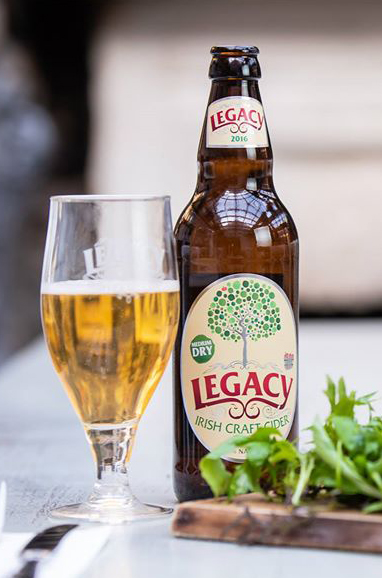
Aoife Carrigy talks to Seamus O’Hara of Drinks Ireland|Cider about why Irish cider is at a seriously exciting stage in it millennia-long evolution.
A couple of autumns ago, I had the joy of visiting Washington State in all its glorious fall colours and touring several cideries and orchards within a short ferry-and-drive from Seattle. Researching a feature for CARA Magazine on the local wine and cider scene (available to read here) I discovered that each was as dynamic as the other.
FLAVOUR EXPERIENCES
One Seattle cider bar had several dozen diverse choices on tap, scores more in a wall of fridges and the popular option of building your own flight, so that you could sample oak-aged or berry flavoured or hopped, tannic or spiced APPLE ciders side by side with classic styles ranging from bone-dry to fully sweet with all sorts of tangy or bittersweet accents. It reminded me of visiting an old-school sweet shop as a young child, with its mind-blowing rows of possible flavour experiences.
UNLIKELY FRIENDS
Cider and wine might seem unlikely friends, but both are fermented beverages based on seasonal fruit - unlike beer, which is brewed from grain and preserved with flavoursome hops. In Ireland we don’t have the weather to grow grapes for wine on a viable commercial scale (though some intrepid souls are trying) but apples we can do very well, making cider a natural home-grown alternative to wine. Many of its diverse styles pair very well with food, combining the complex fermented character of wine with the palate-cleansing carbonation of beer.
.jpg) APPLE VARIETIES - LOCAL PRODUCT
APPLE VARIETIES - LOCAL PRODUCT
All sorts of apple varieties thrive in all sorts of orchards dotted along the eastern half of the island, from Armagh through Louth, Meath and Dublin down to Tipperary, Kilkenny and Waterford, representing many different microclimates. That diversity is what makes the still-nascent Irish cider sector so ripe for discovery and innovation.
“I got interested in cider because it’s so interesting as a local product,” says Seamus O’Hara, whose Carlow Brewing Company was a leading light of the first wave of Irish craft brewing in the 1990s. Today Seamus also heads up Falling Apples cider and Craigies Cider, which was originally the passion project of Simon Tyrrell, an Irish wine importer who also makes wine in France, and he chairs Drinks Ireland|Cider, an offshoot of IBEC that represents both large and small cider makers around the country. “There are so many variables involved,” he enthuses, “depending on the varieties used and the particular orchards and their specific terroir – just like with wine.”
LONG HISTORY
Cider has a long history on this island, going back at least two millenia, as cider maker Mark Jenkins of The Cider Mill explains very well on the website of Cider Ireland, an association of like-minded small-scale cider makers, many of whom grow their own apples. There are over 70 distinctly Irish varieties of apple still in existence. Within the four main types of cider apples – Sharps, Bittersharps, Bittersweets and Sweets – lie many shades of flavour and character, all of which can be harnessed into diverse expressions of this ancient native drink.
QUIET REVOLUTION
Somewhere along the way, however, expressions of Irish cider became dominated by a style so sticky sweet that even fans prefer it poured over a pint glass of ice, for palatability (as low temperatures suppress flavour). In recent years, we have seen a quiet revolution with more and more independent craft-focused cider makers exploring the diversity that those apples offer, without resorting to artificial colourants, sweeteners or concentrates. “These ciders are as diverse as the producers who make them,” writes Mark Jenkins, “full of character and distinctive local flavours unique to each maker.”

DIVERSE RANGE
There’s no better time than this summer to get to know this increasingly diverse range of Irish craft ciders – many of which have more in common with their dry French or experimental north-American counterparts than with the sticky-sweet-over-ice style that dominated our market for too many years. As highlighted in a recent Cider Market Report from Drinks Ireland|Cider, while cider sales in Ireland were slightly down in 2019 – reflecting an overall reduction in alcohol consumption – our diverse range of cider producers have seen exports to the UK rise by a third, giving them a much-needed boost. Unfortunately, at home in Ireland, we pay the third highest rate of excise on cider in the European Union – something that acts as both a deterrent to drinkers exploring the good stuff and a barrier to small producers building a viable business. Drinks Ireland|Cider is calling for cider to be included within the EU Excise Structures Exemption, which currently makes excise relief reductions of up to 50% available to small craft breweries. As Seamus explains, “that reduction in excise was a game changer for craft breweries,” making them commercially viable without the economies of scale that benefits mass product
CRAFT DRINKS TOURISM
Drinks Ireland|Cider have also called for direct online sales to be allowed for cider makers, many of whom do not have strong representation in off-licences or supermarkets. While a 2018 Bill lead by Labour’s Alan Kelly allows for breweries, distilleries and similar premises to apply for a licence to sell their produce to visitors at their premises – making craft drinks tourism a more viable revenue stream for them – currently producers who have not applied for that specific licence can only sell at minimum quantities of three cases.
For Seamus O’Hara, however, one of the biggest barriers to growth of the Irish cider sector has been perception amongst consumers. “People have a very limited idea of cider and what it is and when you might drink it,” he says – despite the efforts of a growing number of restaurants that are promoting cider as a locally produced, food-friendly alternative to wine.
INTRODUCTORY SELECTION
Below is a small introductory selection to what is an increasingly diverse range of Irish craft ciders – but really there are so many more wonderful styles out there, from Long Meadow’s robust Oak-Aged Cider or Tempted’s zippy Strawberry Cider (both from Co Armagh) to Longways’ delicate Elderflower Cider (Co Tipperary), Highbank’s honeyed Medieval Cider (Co Kilkenny) and Longueville House’s robust Mór Cider (Co Cork) aged in their own apple brandy casks. My best advice to you is to look out for what is being produced or sold in your own locality, and give it a go – with or without food. You may be surprised what you’ll find.
FIVE CIDERS AND PAIRINGS TO TRY
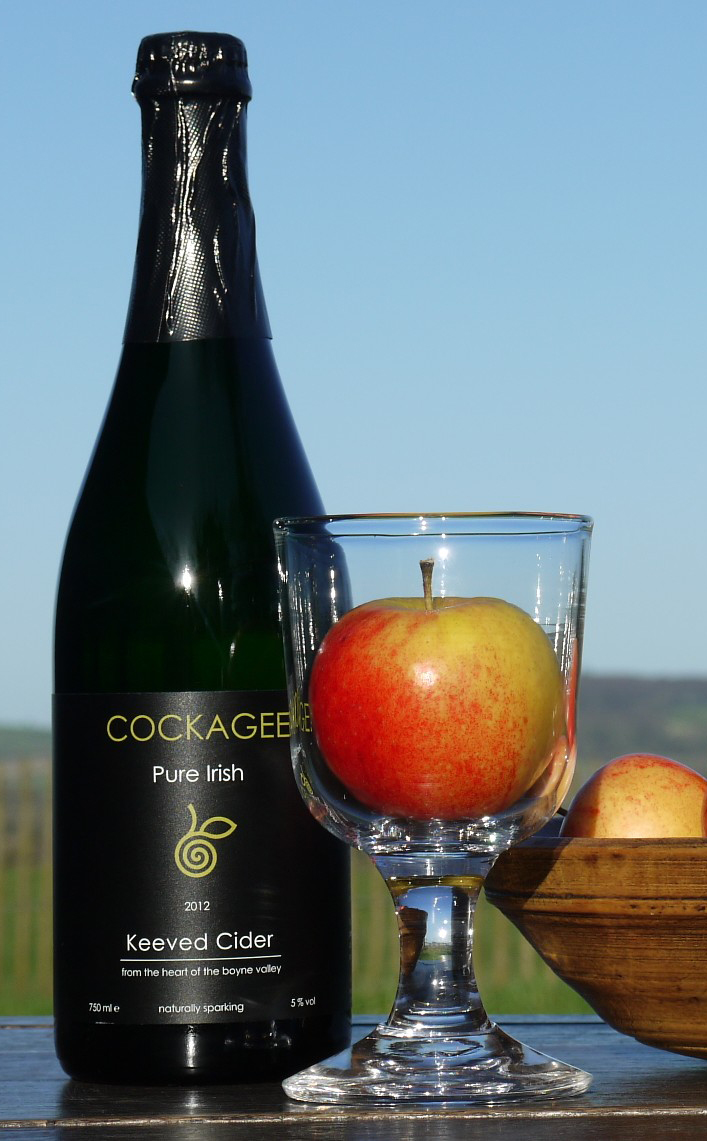 1. Cockagee, Co. Meath
1. Cockagee, Co. Meath
5%, €10.99, 750ml, drinkstore.ie and selected independents
Mark Jenkins of The Cider Mill near Slane doesn’t believe in cutting corners or hurrying life’s good things, and is Ireland’s only cider maker to stay loyal to the traditional keeving process, in which nothing is added to the pressed juice but time and technique – no filtering or pasteurisation, sweetening or force carbonating. The result is a naturally sparkling cider with bright aromas and rich, robust flavours that is both full-bodied and dry enough to pair with a broad range of foods, or to drink solo as a celebratory drop.
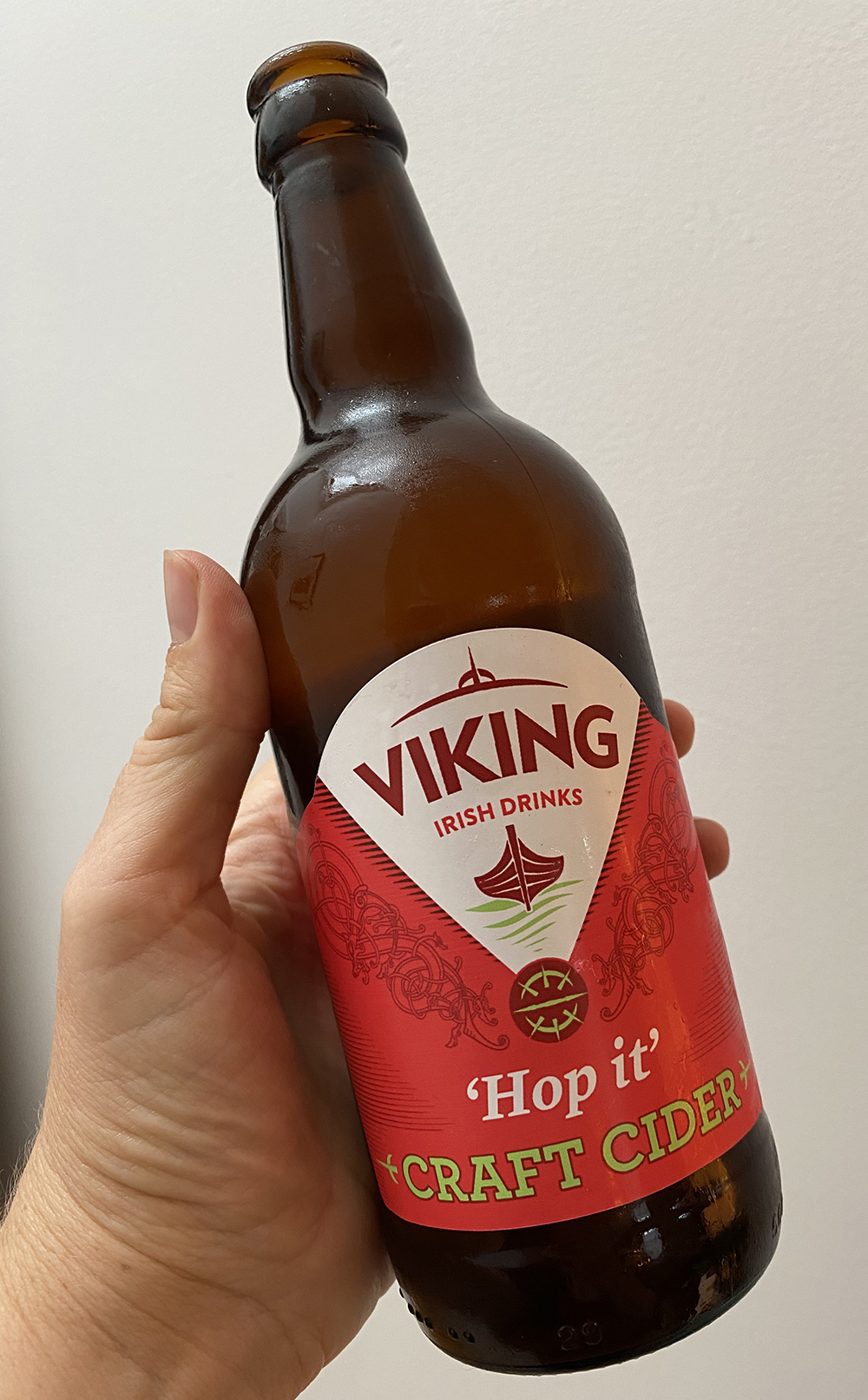 2. Viking Hop-It Cider, East Waterford
2. Viking Hop-It Cider, East Waterford
5.5%, RRP €4.49, 500ml, Ardkeen and selected independents
An adventurous soul, David Dennison is experimenting with both wines and unfiltered ciders, having planted 3.5 hectares of orchards featuring over a dozen different cider and culinary apples alongside a hectare of vines. Look out for this hopped cider, in which Citra, Cascade and Amarillo hops layer citrus and herbal character over a refreshing farmhouse style. One to pair with rustic stews or cold cut teatime platters.
 3. Legacy Dry Irish Craft Cider, Dungarvan
3. Legacy Dry Irish Craft Cider, Dungarvan
5%, €3.95, 500ml, selected Supervalu, Ardkeen and legacyirishcider.ie/shop
Liam McDonell knows his apples, having been born into generations of West Waterford apple growers (his father has a PhD on the matter). This crisp, dry and subtly tannic cider balances the floral fragrance of Elstar apples and tart Bramley tang with the juicy sweetness of Michellin apples. A great choice to cut through oily fish or cream-based pork or chicken dishes.
 4. Craigies Ballyhook Flyer, Co. Wicklow
4. Craigies Ballyhook Flyer, Co. Wicklow
€3.95, 500ml, widely available including selected Dunnes, Spar, Eurospar, Londis, Mace and independents
Established by Angus Craigie and wine importer and producer Simon Tyrrell, Craigies is now owned by Seamus O’Hara’s Carlow Brewing Company, who also make Falling Apples Cider. This dry and elegant Breton-style cider balances fruity and savoury flavours with refreshing acidity and some tannic astringency, the result of blending of tannic Dabinett apples with sweet Katy dessert apples andf tart Bramleys from various orchards in Waterford, Tipperary and Kilkenny. Try with roast white meats, cheese boards or as a refreshing drink on its own.
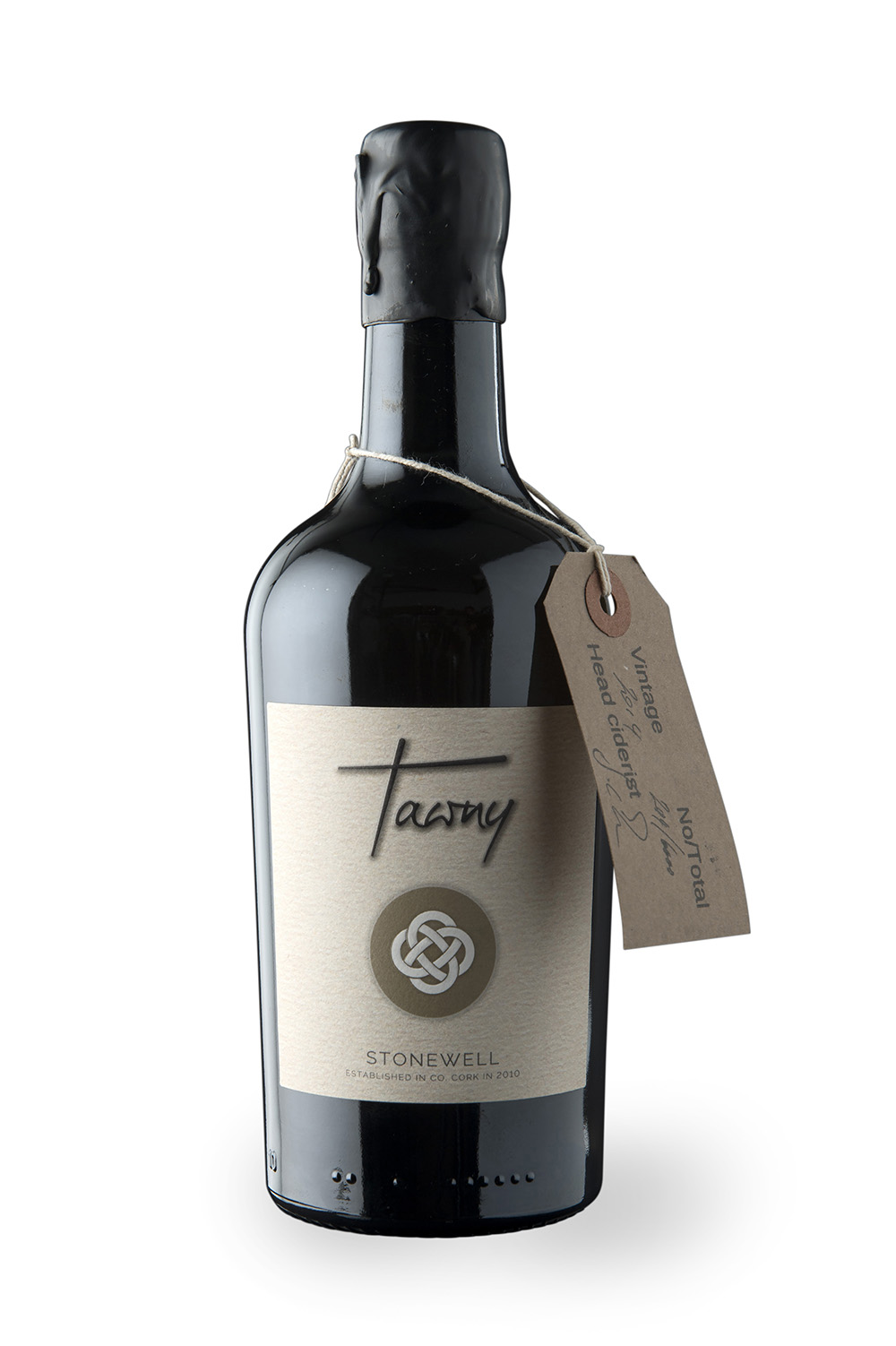 5. Stonewell Tawny, Co. Cork
5. Stonewell Tawny, Co. Cork
15%, €16.99, 500ml, see stonewellcider.com/news/tawny-stockists for selected independents
Daniel Emerson is one of Ireland’s most celebrated cider makers, having won all sorts of awards for his range (which includes a superb seasonal Rós apple and rhubarb cider). Here, techniques such as chaptalisation, dry-hopping and a long maturation produce this very unusual tawny: a high-alcohol, medium-dry, still cider with honeyed, raisined, baked apple aromas that is very much made for sipping. Serve lightly chilled as an aperitif or perhaps to accompany a creamy soft-rind cheese like Co Armagh’s Triple Rose.
 Aoife Carrigy is a freelance journalist, editor and author specialising in food, beverages and travel. She is drinks editor of Image Interiors & Living, a regular contributor to various publications including The Irish Independent, FOOD&WINE Ireland, Cara Magazine and The Guardian, and is completing a Masters by Research in TU Dublin examining the cultural evolution of the Irish pub. Aoife was co-author of Cornucopia: The Green Cookbook and The Ard Bia Cookbook and general editor of five cookbooks for the Irish Countrywomen's Association.
Aoife Carrigy is a freelance journalist, editor and author specialising in food, beverages and travel. She is drinks editor of Image Interiors & Living, a regular contributor to various publications including The Irish Independent, FOOD&WINE Ireland, Cara Magazine and The Guardian, and is completing a Masters by Research in TU Dublin examining the cultural evolution of the Irish pub. Aoife was co-author of Cornucopia: The Green Cookbook and The Ard Bia Cookbook and general editor of five cookbooks for the Irish Countrywomen's Association.
Our Future is Food
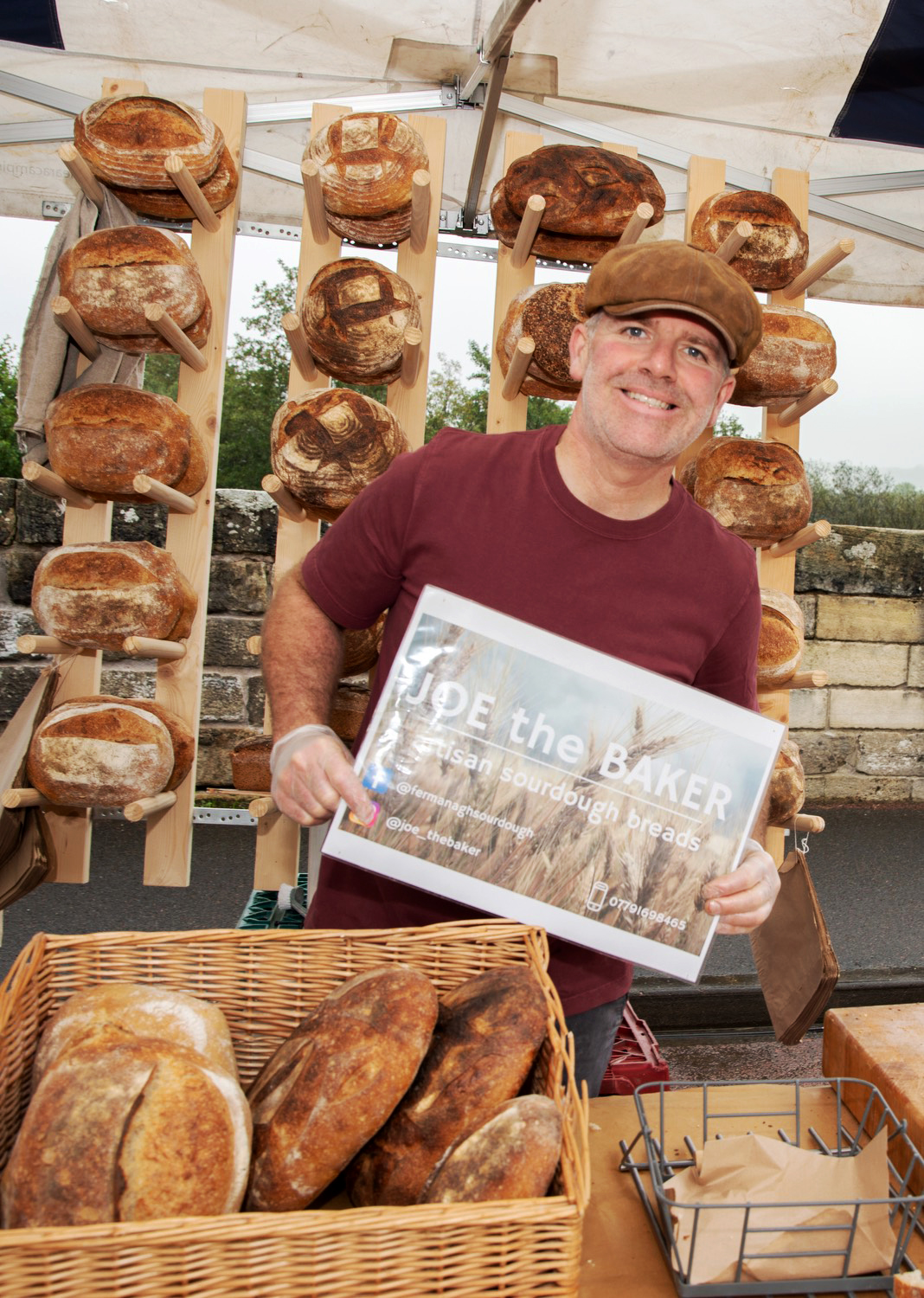
Ireland’s first PhD in Food Tourism, John Mulcahy, speaks with vision and experience when he says the Covid cloud has a silver lining – the food in tourism
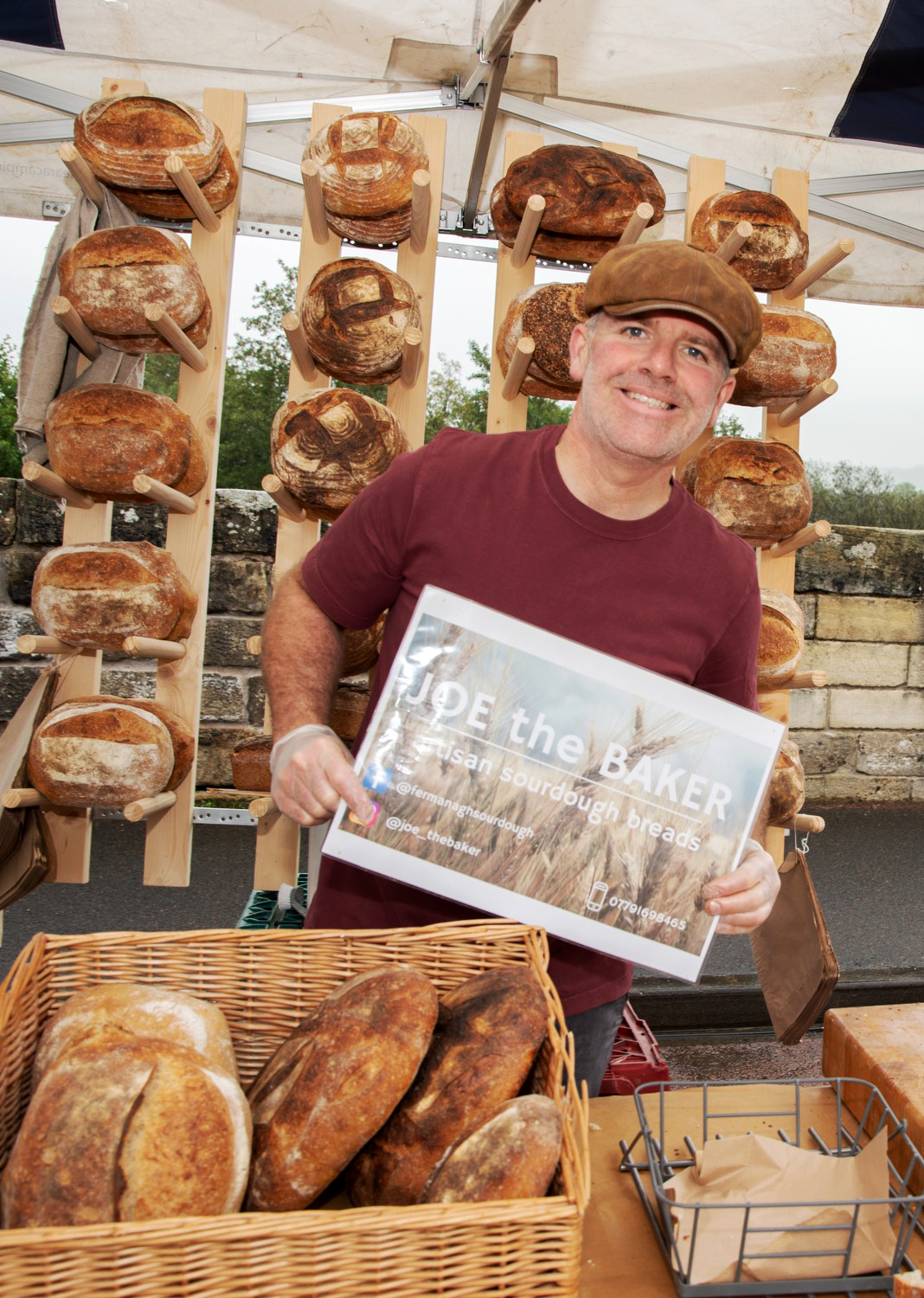 Whenever anything went wrong, a former colleague of mine always took the opportunity to remind us that you should never let a serious crisis go to waste. What they meant by that was every crisis, irrespective of scale, provides new perspectives. There is an opportunity to do things differently, things that you used to think that could not be done before the crisis.
Whenever anything went wrong, a former colleague of mine always took the opportunity to remind us that you should never let a serious crisis go to waste. What they meant by that was every crisis, irrespective of scale, provides new perspectives. There is an opportunity to do things differently, things that you used to think that could not be done before the crisis.
Rediscovering simple food pleasures
The pandemic is one of those opportunities, despite the personal grief, the economic hardship, the restrictions and the uncertainties that it has inflicted upon us. It is providing us all with an opportunity, whether we recognise it or not, to rediscover ourselves, our community, and our locality. We have rediscovered some of the simple food pleasures, like baking and family meals, and also the effort, skills, time and money needed to get catering at home right.
I believe we all now have a renewed appreciation of our country and what it has to offer, of the beverages and foods available, and what it takes to provide hospitality. While we haven’t quite become foodies, I think we are at a tipping point - we have realised that our ingredients, producers and artisans are world class. Thanks to the pandemic, there is a sense that there is increased respect and understanding of where our ingredients come from, who has grown them, and what to do with them. We have been led by clever and risk-taking chefs finding new ways to do business, particularly in home deliveries, while others share their knowledge like Mark Moriarity on RTÉ One’s 'Cook-In'.
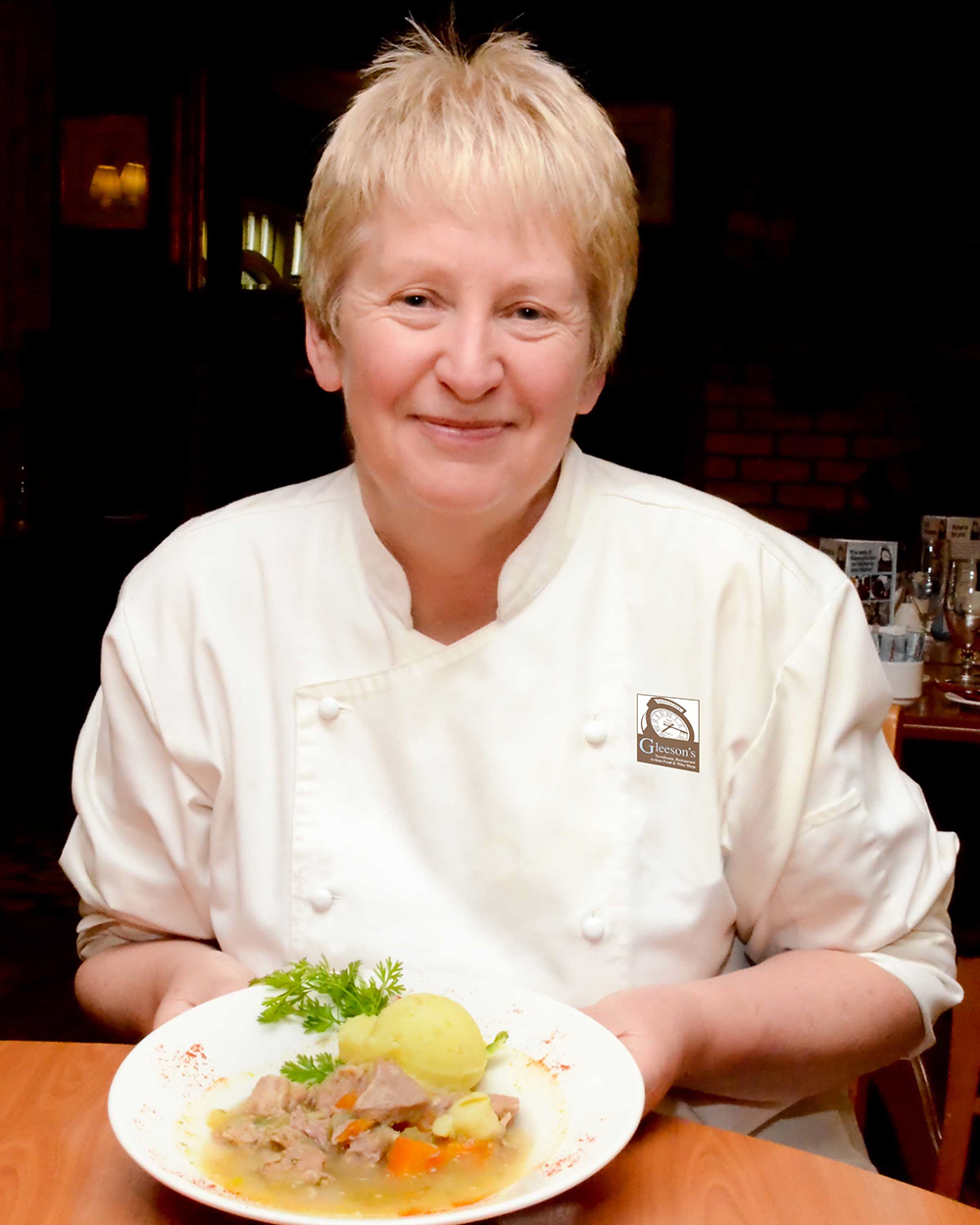 But this is not entirely new. We have been here before, although the financial crisis in 2007 now seems minor by comparison. Faced with challenging business conditions, the wider hospitality industries went back to basics, creating an Irish food renaissance which the Irish public responded to with gusto, as evidenced by the listings in the GC Guide. The zeitgeist for food that is local, sustainable, and linked to heritage has remained strong and continues to evolve. Food tourism became a ‘thing’.
But this is not entirely new. We have been here before, although the financial crisis in 2007 now seems minor by comparison. Faced with challenging business conditions, the wider hospitality industries went back to basics, creating an Irish food renaissance which the Irish public responded to with gusto, as evidenced by the listings in the GC Guide. The zeitgeist for food that is local, sustainable, and linked to heritage has remained strong and continues to evolve. Food tourism became a ‘thing’.
Why food is key
But this time there is a key difference. The domestic audience, Ireland’s population, seems to have little appetite for high risk travel abroad and the window of opportunity for staycations is closing fast as a new academic year approaches. The best option, then, is for us all to become domestic tourists exploring Ireland. A warning note for the industry, though – traditionally, domestic tourists have been mainly motivated by people oriented activities (family or social occasions, concerts, sport), and not just by destination. Covid has now generated a change of mindset, so that we are now consuming Ireland as a destination, and a leisure one at that, which is why food is key. Every hospitality and tourism business has to attract us, the Irish population, on that basis.
Overseas v domestic tourists – interesting facts
Similarly of course, the tourism and hospitality industries cannot rely on the traditional customers that they know best, tourists from overseas, as the people in those markets are making the same decisions about holidays as we are. This worries the thousands of small Irish businesses relying on overseas tourists, especially the seasonal operations, but here are some interesting facts. Fáilte Ireland estimates that the UK & USA alone usually make up more than 55% of visitors, but only 55% of those are holiday makers and the daily spend of an overseas tourist is €72. This turns out to be very close to the €71 generated by domestic overnight trips and, in each case, 40% of that is spent on food! Using 2018 figures, this means that food in domestic tourism alone is worth at least €1.5 billion annually. Even if this figure is reduced by 50% due to the pandemic, there is still a considerable amount of business to be gained through food alone over the next few months. And to be clear, the food in tourism is for everyone, not just foodies. We are all food tourists, every day, whether we realise it or not, whether we buy a ‘99’ at the seaside, have a picnic of fish and chips in the park, or travel to a specific place for the style of food they do.

Once-in-a-generation opportunity
So, courtesy of Covid, this is a once-in-a-generation opportunity for everyone involved in food and tourism. There is a captive local audience with time, money, and opportunity, hungry for a break from the house, and we have a range of hospitality, tourism, food, and beverage businesses desperately looking for customers to help them survive. This is an opportunity not just for tourism hot spots, or for the usual pubs, restaurants, B&B’s, hotels, and holiday rentals – it is for everyone in our food and tourism landscape, shaped by our farmers, growing our food.
This landscape is bigger than you might imagine, from farmers and fishermen, to artisan cheesemakers and food producers, to visitor centres and retail shops. I have always believed that tourism is the industry of every parish as those components are all there already – the accommodation, the places and food to eat, the producers and processors, the things to do, all driven by a community with their own best interest at heart, working together. In my experience, food and tourism incentives communities to identify their food story and to tell people what is on offer - never has that been more relevant than now. It doesn’t have to fancy or sophisticated. It just has to be true to the community.
Putting the economy back on its feet
Ireland has the best combination of ingredients, people, and places on the planet. No one loves our food more than we do. Our food story sets us apart – but right now, when we have the place to ourselves, we need everyone in Ireland to realise this, to celebrate our food as we explore our island, supporting the producers by looking for and consuming their products. And if we can harness that, we will help put an economy back on its feet, ensure the survival of thousands of livelihoods, and we will have a country of advocates proud to share the amazing story of Irish food with the world when the world opens up again.
#ThisisIrishFood
John first wrote about this for the Dublin Gastronomy Symposium in 2012 here
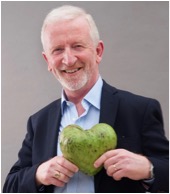 John D. Mulcahy
John D. Mulcahy
Gastronomy tourism activist, advisor & researcher
Dublin
Recognised as the architect of food tourism development in Ireland. A lifetime of experience in the hospitality industries, in hospitality skills education, & as an Irish public servant in food tourism, enhanced by a PhD (Food Tourism), MA Degree (Gastronomy), MSc degree (Hospitality Mgt), & WSET Diploma in Wine & Spirits. Member of the Irish Food Champions Assembly (Twitter @irishfoodchamps), and Advisors & Experts Network, World Food Travel Association
Twitter: @JDeclanM
LinkedIn: www.linkedin.com/in/gastronomy
Experience the Taste of the Atlantic Trail
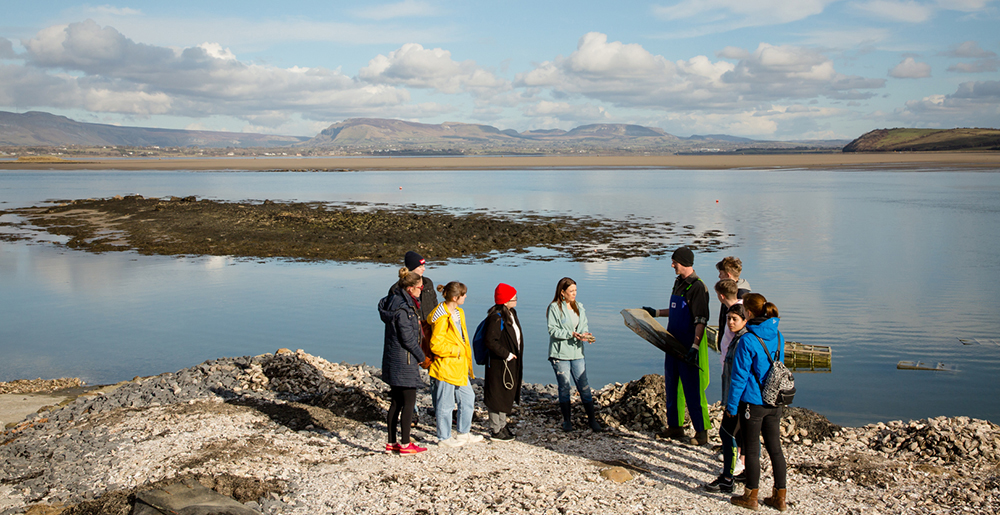
Some places have a magic that’s hard to capture and that you really just have to experience for yourself.
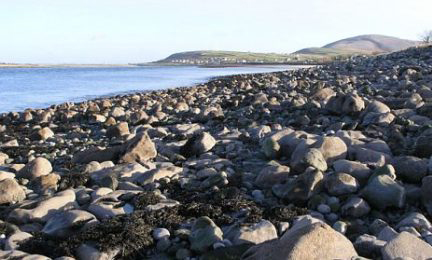 For me, New Quay and the Flaggy Shore on the edge of the Burren in County Clare is one of those places: somewhere that myself and my family gathered for a holiday one year, and loved so much that we rented the house the following year for our mother’s 70th birthday. I’ve gone back again and again, and each time discovered something new to love in the area – pints and fresh seafood at Linnane’s, a browse of the books, prints and Italian oils and wines at Russell Gallery, or the bean-to-bar chocolate factory up the road at Hazel Mountain Chocolate.
For me, New Quay and the Flaggy Shore on the edge of the Burren in County Clare is one of those places: somewhere that myself and my family gathered for a holiday one year, and loved so much that we rented the house the following year for our mother’s 70th birthday. I’ve gone back again and again, and each time discovered something new to love in the area – pints and fresh seafood at Linnane’s, a browse of the books, prints and Italian oils and wines at Russell Gallery, or the bean-to-bar chocolate factory up the road at Hazel Mountain Chocolate.
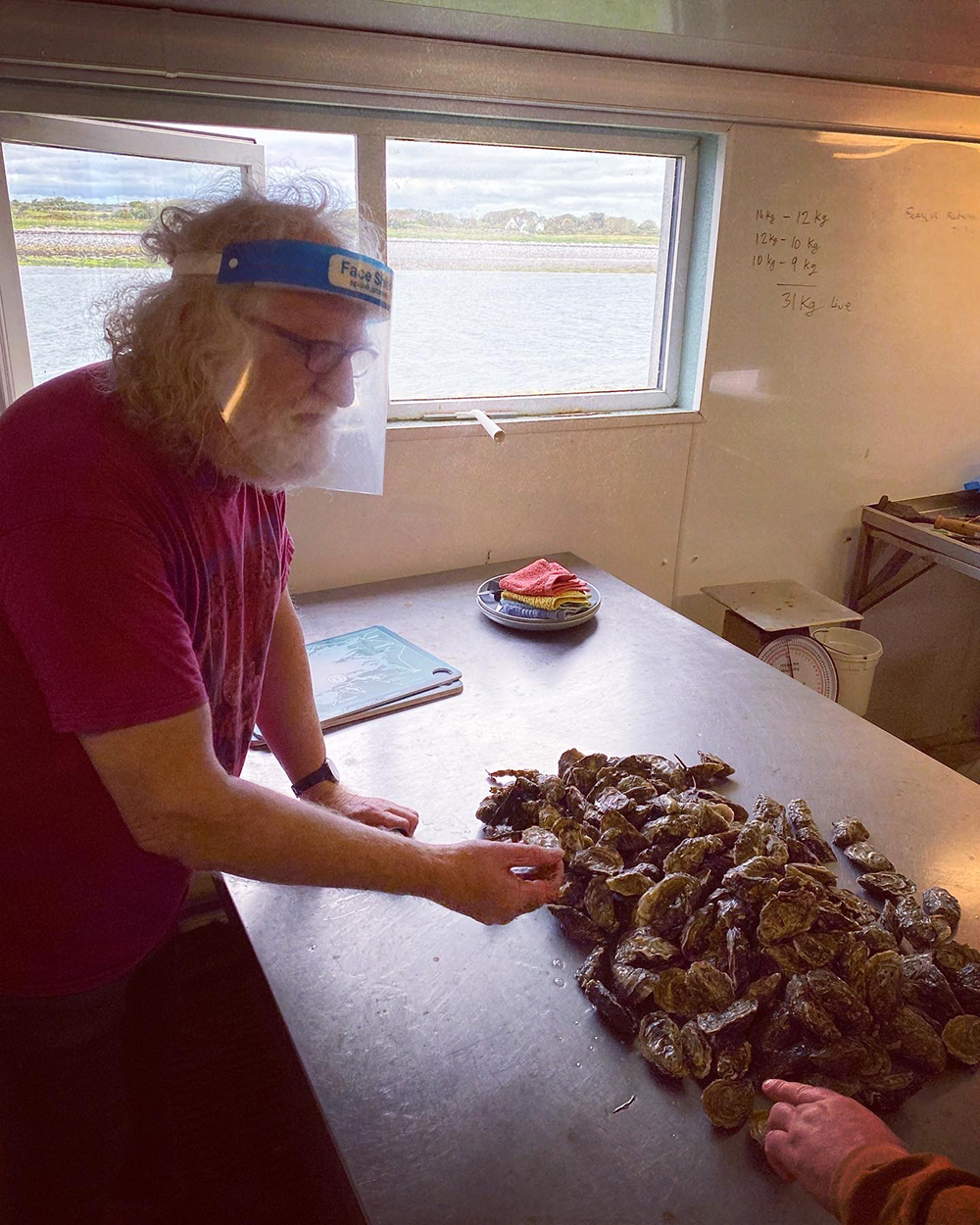 This time, it was an afternoon of joy spent in the wonderful company of Gerry O’Halloran, a marine biologist who works alongside his daughter Ciara (the boss, he tells me) at Burren Food Trail member, Redbank Food Company, where they offer their Flaggy Shore Oyster Experience. It was their first time delivering it in post-pandemic style, but Gerry’s charm quickly put everyone at ease – not to mention the endless charm of little Noah, the non-stop-smiling baby who was there with the other Irish couple taking part that day and the only one not wearing a mask.
This time, it was an afternoon of joy spent in the wonderful company of Gerry O’Halloran, a marine biologist who works alongside his daughter Ciara (the boss, he tells me) at Burren Food Trail member, Redbank Food Company, where they offer their Flaggy Shore Oyster Experience. It was their first time delivering it in post-pandemic style, but Gerry’s charm quickly put everyone at ease – not to mention the endless charm of little Noah, the non-stop-smiling baby who was there with the other Irish couple taking part that day and the only one not wearing a mask.
Gerry talked us through some of the fascinating history of the local landscape, including the details of how Aughinish Island got cut off from this shoreline back in 1755, when a tsunami caused by the major earthquake in Lisbon flooded some nearby low-lying land to create Aughinish Bay. The island sits just a few hundred metres across a very fast estuary mouth and can be seen out of the window behind Gerry, yet is a full 25-minute drive away, all the way into Kinvara in County Galway and back out across the causeway that the British later built to reach their Martello tower look-out for Napoleon’s imminent attack (it never came). In contrast, it takes 45 minutes to drive all the way to Galway city, which feels a world away.
After talking us through the lifecycle and farming process of the oysters, and introducing us all to some of the sea creatures that they keep in aquarium tanks, from starfish and anemones to spider crabs and lobster, Gerry gave a masterclass in oyster shucking before sitting us down at the best-laid table where we could shuck and eat our fill masks off at last and seated at a suitably safe distance from one another. I discovered that Wild Wood Vinegars wild blackberry balsamic is a superb match for oysters, as is their wild cliff samphire and wild fennel balsamic, and that chipotle Tabasco is a surprisingly good pairing too – although these dainty oysters, which are harvested earlier than most, should also be sampled solo for their delicate sweet flesh and briny finish. We washed all of this down with a lovely fresh white wine from Lisbon, to remind us of that unlikely connection, as Gerry regaled us with more stories and answered our endless questions.
The Shuck Off experience is part of the Taste the Atlantic Seafood Trail developed by Bord Iascaigh Mhara and the Wild Atlantic Way, which features 21 different interactive experiences all the way from Inishowen to Kinsale. You can explore the map here to see who is offering what: the choice is nothing if not diverse. I can also vouch for the well-informed charms of Aisling Kelly Hunter of Sligo Oyster Experience and WB’s Coffee House, who runs the new Sligo Oyster Farm Tour out at Coney Island under Belbulben and Knocknarea. Sligo’s landscape is equally full of age-old stories – the name translates from ‘Sligeach’ meaning ‘abounding in shells’ – and Aisling will share local folklore, the history of Sligo’s native oysters and some seashore foraging tips on a guided coastal walk, before arriving at the Coney Island Oyster Farm (pictured below) to see the process of cultivation first hand. The experience wraps up with an oyster shucking demonstration plus unlimited Sligo oysters with all the condiments, including a signature seaweed dressing.

You can read more about the trail and our Irish oyster heritage here in a piece I wrote for the Irish Independent a little while back. Or just do yourself a favour, in the words of Seamus Heaney ’s ‘Postscript’:
‘And some time make the time to drive out west
Into County Clare, along the Flaggy Shore,
In September or October, when the wind
And the light are working off each other
So that the ocean on one side is wild
With foam and glitter, and inland among stones
The surface of a slate-grey lake is lit
By the earthed lightening of a flock of swans,
Their feathers roughed and ruffling, white on white,
Their fully-grown headstrong-looking heads
Tucked or cresting or busy underwater.
Useless to think you'll park or capture it
More thoroughly. You are neither here nor there,
A hurry through which known and strange things pass
As big soft buffetings come at the car sideways
And catch the heart off guard and blow it open.’
And while you’re there, take a visit to Gerry and Ciara, and tell them we sent you.
Book the Shuck Off experience at +252 (0)86 254 9837 or feedme@flaggyshoreoysters.com; or talk to Ciara about picking up a box of freshly shucked oysters to enjoy in a picnic along the Flaggy Shore.
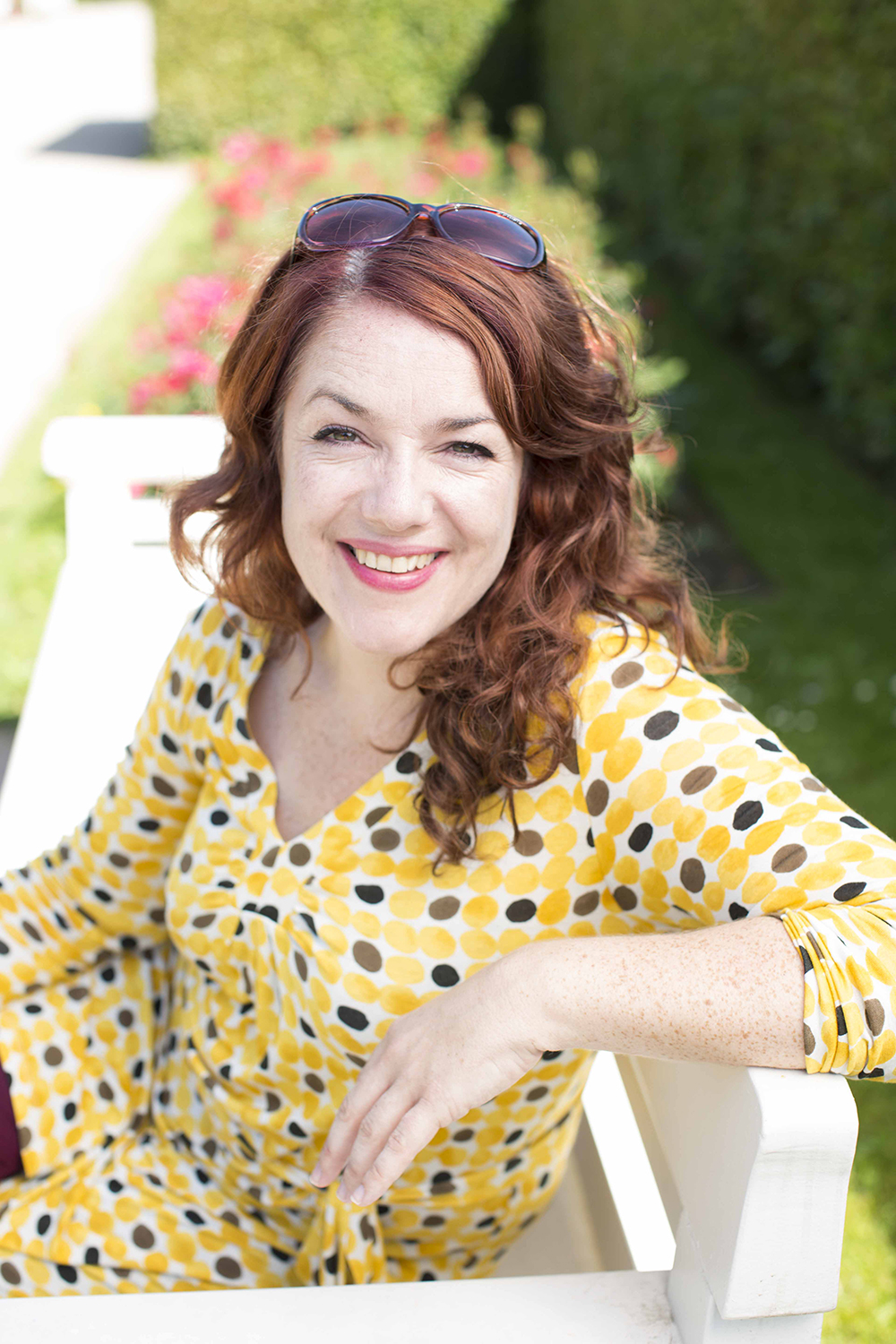 Aoife Carrigy is a freelance journalist, editor and author specialising in food, beverages and travel. She is drinks editor of Image Interiors & Living, a regular contributor to various publications including The Irish Independent, FOOD&WINE Ireland, Cara Magazine and The Guardian, and is completing a Masters by Research in TU Dublin examining the cultural evolution of the Irish pub. Aoife was co-author of Cornucopia: The Green Cookbook and The Ard Bia Cookbook and general editor of five cookbooks for the Irish Countrywomen's Association.
Aoife Carrigy is a freelance journalist, editor and author specialising in food, beverages and travel. She is drinks editor of Image Interiors & Living, a regular contributor to various publications including The Irish Independent, FOOD&WINE Ireland, Cara Magazine and The Guardian, and is completing a Masters by Research in TU Dublin examining the cultural evolution of the Irish pub. Aoife was co-author of Cornucopia: The Green Cookbook and The Ard Bia Cookbook and general editor of five cookbooks for the Irish Countrywomen's Association.
Festive Wines
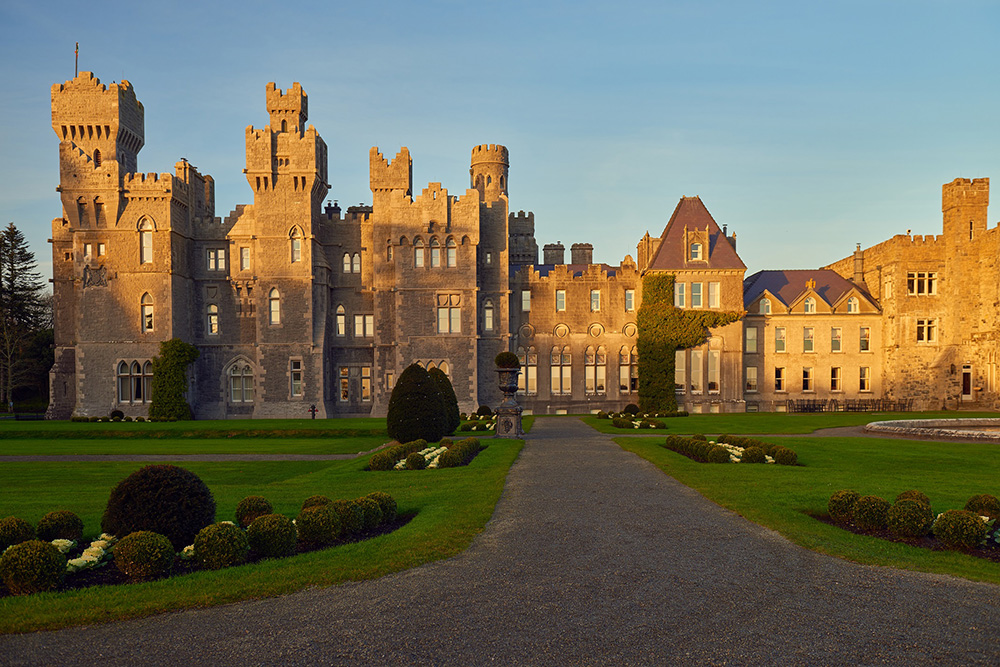
Paul Fogerty, head sommelier at Ashford Castle, shares his recommendations for wine choices to complement many occasions and foods over the festive period - even if you’re not booked into Ashford Castle for Christmas!
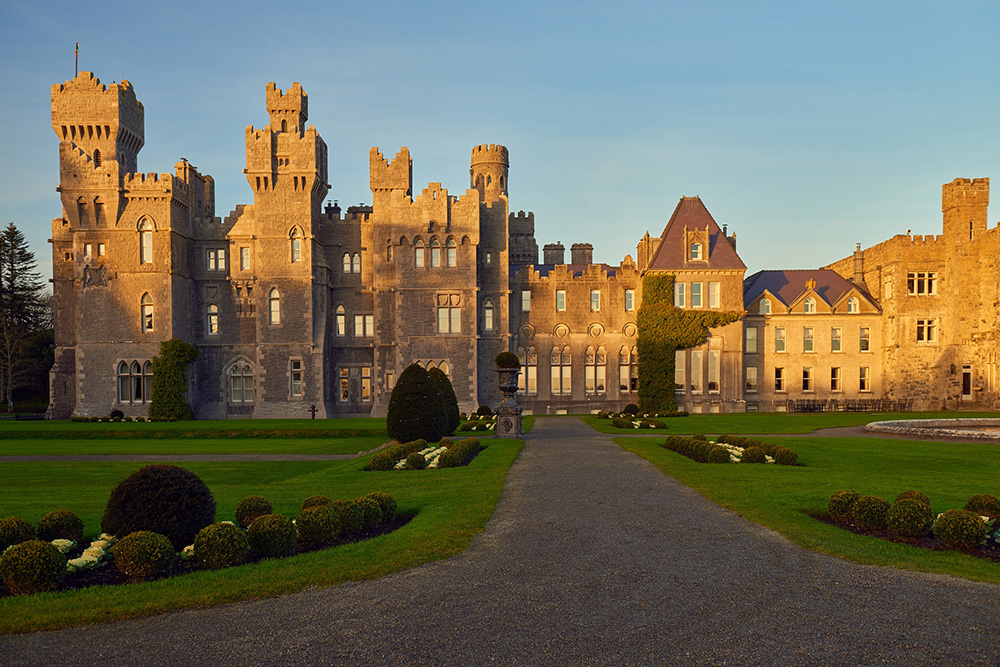
Choosing the right wines for Christmas can be a tricky business but, according to Ashford Castle's Head Sommelier, Paul Fogerty, the most important characteristic of any wine is its enjoyment.
Paul Fogerty believes that while there isn't always a correlation between how much you spend on a bottle of wine and how much you enjoy it, it's always nice to spend a little extra at Christmas for something special, if you can. One of the country's leading experts on wine, Paul and his team have recently been working on their wine pairings for the Christmas season at Ashford Castle, working closely with executive head chef, Philippe Farineau and resort executive head pastry chef, Paula Stakelum to create the perfect menu.
But if you haven't booked your place at the Ashford Castle Christmas dinner table fear not, as Paul has compiled a wine list that will help you navigate the festive season with ease. Traditional turkey, a spot of game, vegetarian or seafood, Paul has a recommendation to complement every dish.
APERITIF
It wouldn't be a celebration without Champagne and if you want to start off the day in style, Paul says that Rosé Champagne is a great option as it really opens up the taste buds in readiness for all the delicious food to follow.
Paul Fogerty recommends: Billecart-Salmon Brut Rosé. Elegant, refined and showing great finesse, this Rosé Champagne is bursting with aromas and flavours of red berry fruits: delicate and crisp on the palate.
TRADITIONAL TURKEY
For those opting for the traditional turkey feast, Paul recommends a Burgundy Pinot Noir or, for something really special from Ashford Castle's sister property in South Africa, Bouchard Finlayson, Galpin Peak Pinot Noir.
A full-bodied Chardonnay is Paul's choice for white wine drinkers. "Chardonnay is an exceptional accompaniment to turkey and is delicious with side dishes such as bread sauce," says Paul. "Choose a wine with good complexity and an oaky richness, which will really help to bring out the flavours of the meat. If in doubt, speak to your local wine merchant or off licence and they'll be happy to help you pick out something special for Christmas Day."
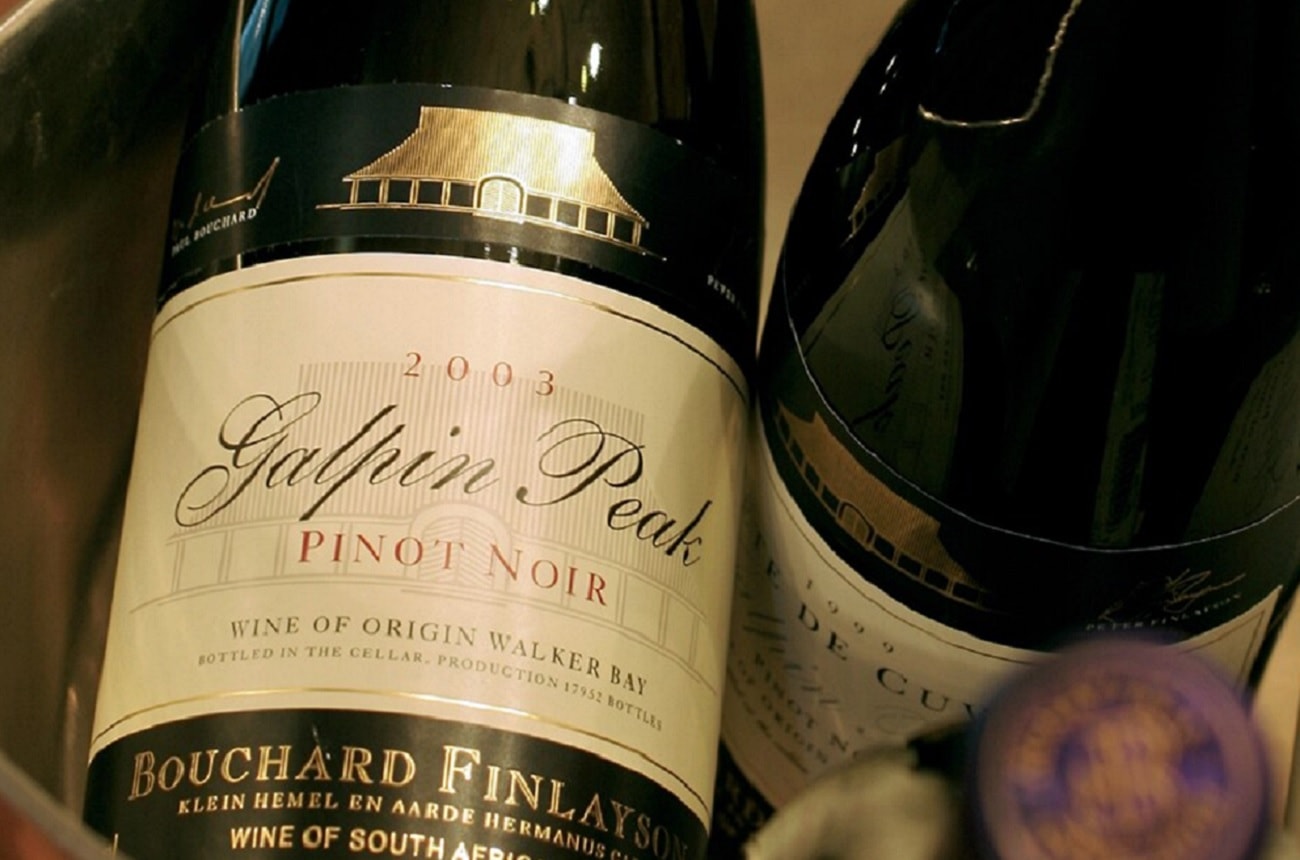 Paul Fogerty recommends: Bouchard Finlayson Galpin Peak Pinot Noir exuding all the finesse of a good Burgundy, but the fruit and finish of a New World wine. It packs a wonderful dark cherry flavoured punch, lingers on the palate and its own classic 'gamieness' makes it the perfect pairing for the festive bird.
Paul Fogerty recommends: Bouchard Finlayson Galpin Peak Pinot Noir exuding all the finesse of a good Burgundy, but the fruit and finish of a New World wine. It packs a wonderful dark cherry flavoured punch, lingers on the palate and its own classic 'gamieness' makes it the perfect pairing for the festive bird.
SEAFOOD AND FISH
In addition to the more traditional fare, Ashford Castle will be offering guests a wonderful selection of seafood, fresh off the boats from local fishermen in Connemara. Lobster, crab and shellfish bisque will all have a starring role on the Christmas menu and Paul's pairings for seafood and fish dishes include:
Smoked Salmon: a lightly oaked aged Chardonnay
Oysters: one option only, Champagne such as Taittinger (who have recently established a vineyard in Kent, England)
Seafood cocktail: a dry Riesling or Sauvignon Blanc
BEEF
For many, beef is part of the great Christmas Day tradition and households across Ireland choose beef instead of or indeed, as well as the traditional turkey.
Paul Fogerty recommends: you don't necessarily need a big red wine to bring out the flavours of the beef according to Paul who recommends the earthy characteristics of a Bordeaux Cabernet Sauvignon or one of Italy's finest – a silky Barolo. Beef, especially Roast Beef or Beef Wellington, loves the classical pairing of a great Bordeaux that is Cabernet Sauvignon dominated. Or why not try a full- bodied Malbec.
VEGETARIAN
Executive head chef at Ashford Castle Philippe Farineau and his team have developed special vegetarian and vegan menus for guests that include fabulous options such as Beetroot, Carrot & Date Galette and French Truffle & Potato Risotto and featuring seasonal ingredients foraged on the 350-acre Ashford Estate.
Paul Fogerty recommends: a Beaujolais Cru such as Morgon complements most earthy and mushroom dishes. Morgon offers aromas of black fruit and cherries, that follow through the rich, soft body of the wine. For warm, tomato-based dishes, Paul recommends Chianti, which, depending on how long it has been aged can evoke a sense of flowers and spices along with aromas of plums and dark succulent cherries.
DESSERT
Paul Fogerty recommends: Beaumes de Venise - a golden Muscat - one of the great classic dessert wines, and which is widely available from wine merchants and off licenses across Ireland. Paul also recommends Moscato D'Asti, a lower alcohol, sweet sparkling white wine with a lovely light finish
CHEESE
Paul Fogerty recommends: a Vintage Port - Neipoort Vintage Port goes particularly well with strong cheeses such as Cashel Blue or Stilton. "What can you say about this beautiful wine, but that it's full, rich and packed with plums, berries showing ripeness and on the finish, subtle nuances of cinnamon and nutmeg," says Paul.
NEW YEAR'S EVE
New Year celebrations offer the perfect opportunity to crack open a bottle of Champers and Paul's recommendation is Perrier Jouët - Grand Brut. But, says the wine expert, there are fabulous alternatives to Champagne including any Crémant from the Alsace region. "In Ireland, Crémant seems to be the lesser known of the sparkling varieties of wine," says Paul, "but it's probably my favourite." Crémant is similar to Champagne in terms of how it is made, but it's less effervescent and usually, not as expensive.
Prosecco is a popular alternative to Champagne and Paul suggests popping a Prosecco Valdobbiadene, Santa Margherita, Italy. Characteristics include lovely aromas of pineapple and peaches, along with delicate florals, lively bubbles and a crisp, dry, yet sweet finish on the palate. Paul is also a big fan of some of the wonderful wines from Cava, Spain so when it comes to bubbles, there are plenty of options, and price points, from which to choose.
Ashford Castle also offer a collection of special gift items, including a range of hampers. The mid-range Lady Ardilaun Gift Hamper, for example, is €75 (with free delivery in Ireland) and comes beautifully packed in a traditional lined hamper basket, while smaller items include Ashford Castle Luxury Crackers (€50) and an Ashford Castle Chocolate Box (€20).
You may be interested to know…..
16TH CENTURY CELLARS
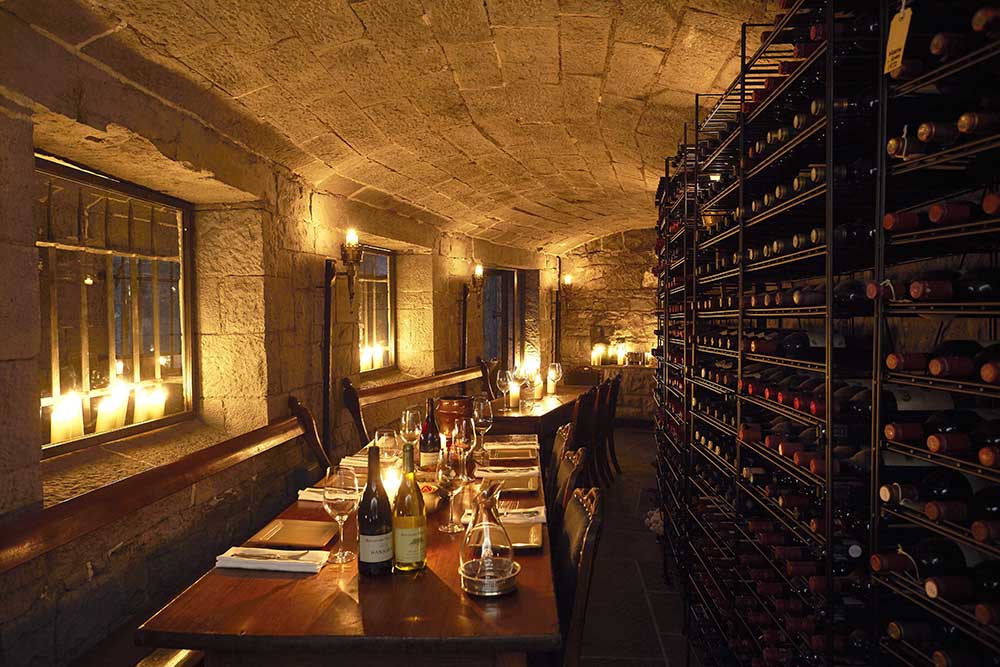 Paul Fogerty and his team curate the carefully selected wines that are stored in the 16th Century wine cellars buried deep beneath Ashford Castle and unearthed during the renovations of 2013. The tunnels, formerly the old servant's entrance to the castle have been transformed and not only do hold some of the world's most exclusive wines, but they offer three very special private spaces for wine tastings and private dining experiences.
Paul Fogerty and his team curate the carefully selected wines that are stored in the 16th Century wine cellars buried deep beneath Ashford Castle and unearthed during the renovations of 2013. The tunnels, formerly the old servant's entrance to the castle have been transformed and not only do hold some of the world's most exclusive wines, but they offer three very special private spaces for wine tastings and private dining experiences.
BOUCHARD FINLAYSON
The world-renowned Bouchard Finlayson winery is located in the internationally acclaimed wine region of Walker Bay in the Western Cape. The winery is owned by the Tollman family of The Red Carnation Hotel Collection and collaboratively run by Victoria Tollman and Peter Finlayson. Bouchard Finlayson wines are available in Ireland exclusively at Ashford Castle and sister hotel, The Lodge at Ashford.
Delicious Dinner Deals for Date Night Treats
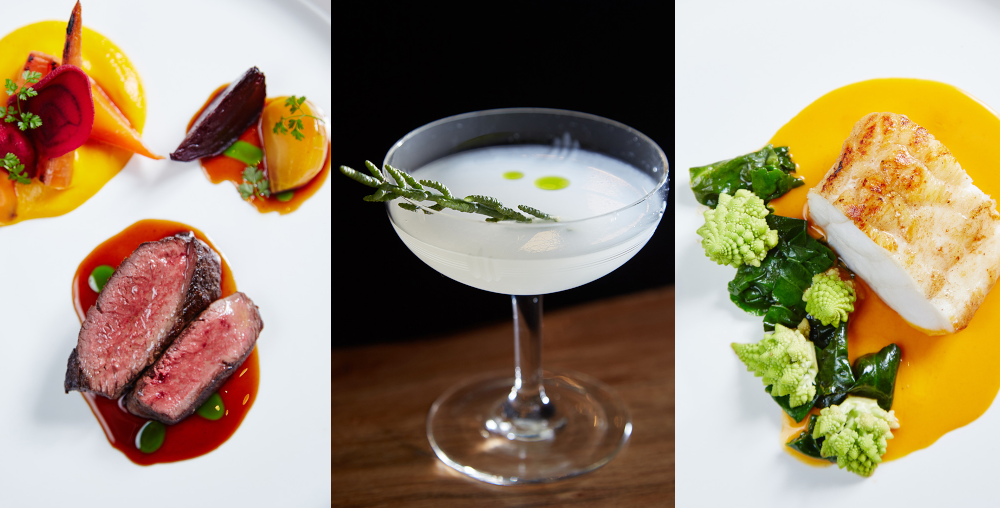
While St Valentine's Day has been and gone, there will be plenty of date nights when you want to make sure it's a memorable occasion - and an excellent start would be to check out the many superb celebration menus available for collection or delivery. Here's just a few of the best that were selected by Jillian Bolger for Valentine's - but there will be no shortage of delicious dinners where these came from...
777
Mexican favourite 777 in has a Valentine's dinner for two for €80 with a main of braised pork belly. Order here.
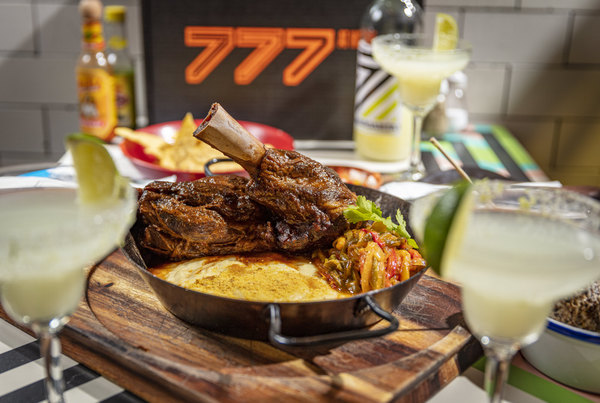
Asador
Monkfish and dry aged Chateaubriand for two star on Asador’s Valentine’s menu. €79.
Order here.
Back to Dine
A 7-course collaboration between JP McMahon of Aniar and Temple Garner of Bresson €99.95 here.
Bang
Bang in Dublin 2 has mix-and-match delivery and collection menus. Order here.
Bon Appetit
Oliver Dunne’s restaurant group offers 14 menus including Pink Afternoon Tea for two (€50) and a Valentine’s menu for €75. Order here.
Cask, Cork
6 interesting tapas in a box with the choice of an add-on order of new Valentine’s cocktails. €35. Cocktails extra
Order here
Dax
Fabulous fine dining menus by Graham Neville in his Dax at Home.
Order here.
Ely Wine Bar
Ely’s build your own food box offers one of the biggest choices around, including crab ravioli, their famous ELY burger and excellent wine pairings.
Order here

Greene’s, Cork
Choose from 5 menus, including a vegetarian choice,and complementary chocolates at a great price.
€45
Order here
Liberty Grill, Cork
A new 3-course offering, with many menu favourites, from this reliable Cork classic. €35.
Order here
Le Perroquet
4-course menus from Nick Munier ,with a choice of 3 menus, including seafood and vegetarian.
Order here.
One Pery Square, Limerick
Lovely choices on a good value menu that comes with a sharing dessert platter from this boutique hotel. €70.
Order here
Peploes
3 menus with plenty of sides, including Beef Wellington. €80.
Order here
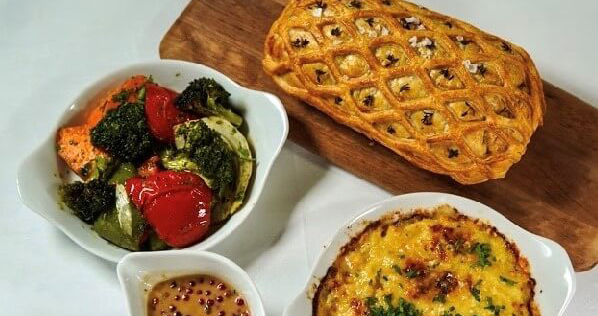
Richmond
A Call & Collect service only from the popular Portobello spot, suckling pig belly is the main event on their Valentine’s menu.
Order here
Sweet Beats, Sligo
A 3-course plant-based meal kit for collection only from Sigo’s Sweet Beat Café.
€59.95. Order here.
The Chop House
Chef Kevin Arundel’s Valentine’s menu includes prawns and a 1kg Cote de Bouef with all the trimmings. €80
Order here
The Glass Curtain, Cork
One of Cork’s most exciting restaurants, choose from two tasting menus, including a creative vegetarian one.
Order here
The Port House
A Valentine’s weekend tapas box with your choice of drinks.
Order here.
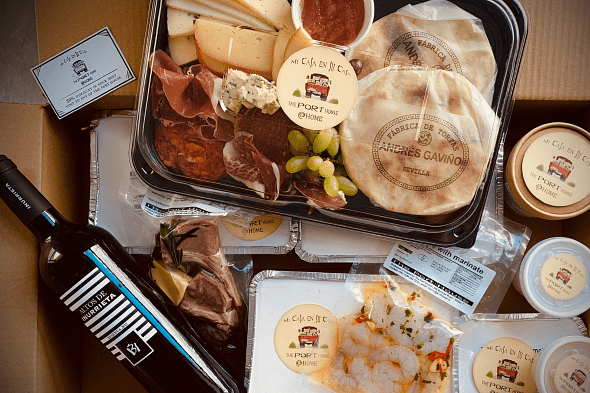
The Winding Stair & Legal Eagle
Bringing you the best of both locations, their Valentine’s offering has 3 menus, including one seafood and one vegetarian.
Order here.
The Olde Post Inn, Cavan
One of only two deals here with alcochol included, this click and collect menu includes a dish of wild turbot.
€150.
Order here
Clanard Court Hotel, Athy, Co Kildare
“Cupid's Candleit Dinner For Two” is a super deal with everything included: wine/prosecco, chocolates, rose - and even a candle! Great value too at €60/€70 for a 2/3 course meal available on Friday 12th, Saturday 13th & Sunday 14th (order by 12th February).
Order here
Blooming Beautiful Irish Flowers
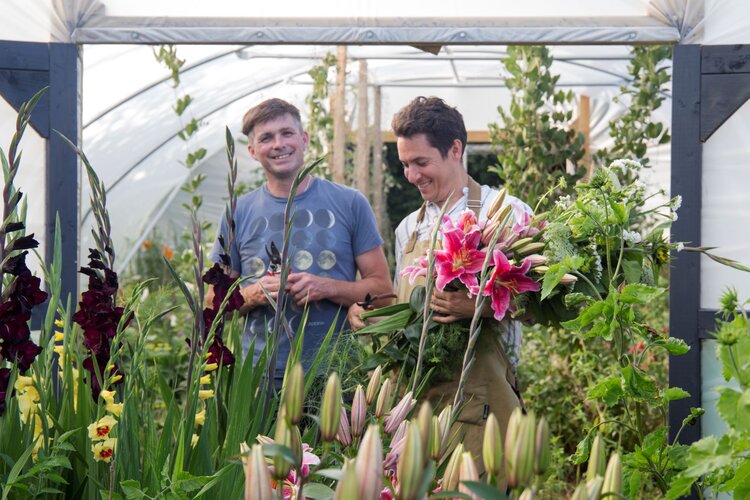
Flowers are synonymous with gifting - but not all flowers are equal. Fresh, lively, seasonal flowers from a local grower will out-class the superficial perfection of imported ones any day - and many of our home grown blooms have beautiful natural fragrance too, which is rarely the case with those flown in from afar. And, as well as the pleasure given to the recipient, there’s the satisfaction of supporting Irish businesses too - just like our food producers, flower farmers urgently need our help. For most, weddings and events are usually their main business, so retail sales are hugely important at the moment. Many are members of the association Flower Farmers of Ireland which promotes sustainably grown local, seasonal flowers and is the go-to reference site for finding local Irish flower farmers. Although it’s a bit early in the season, all of those listed below can provide delivery locally and, in some cases, nationally, for special dates like Mother’s Day and Easter - and you’ll also find local flower growers at Farmers’ Markets and on the NeighbourFood website.
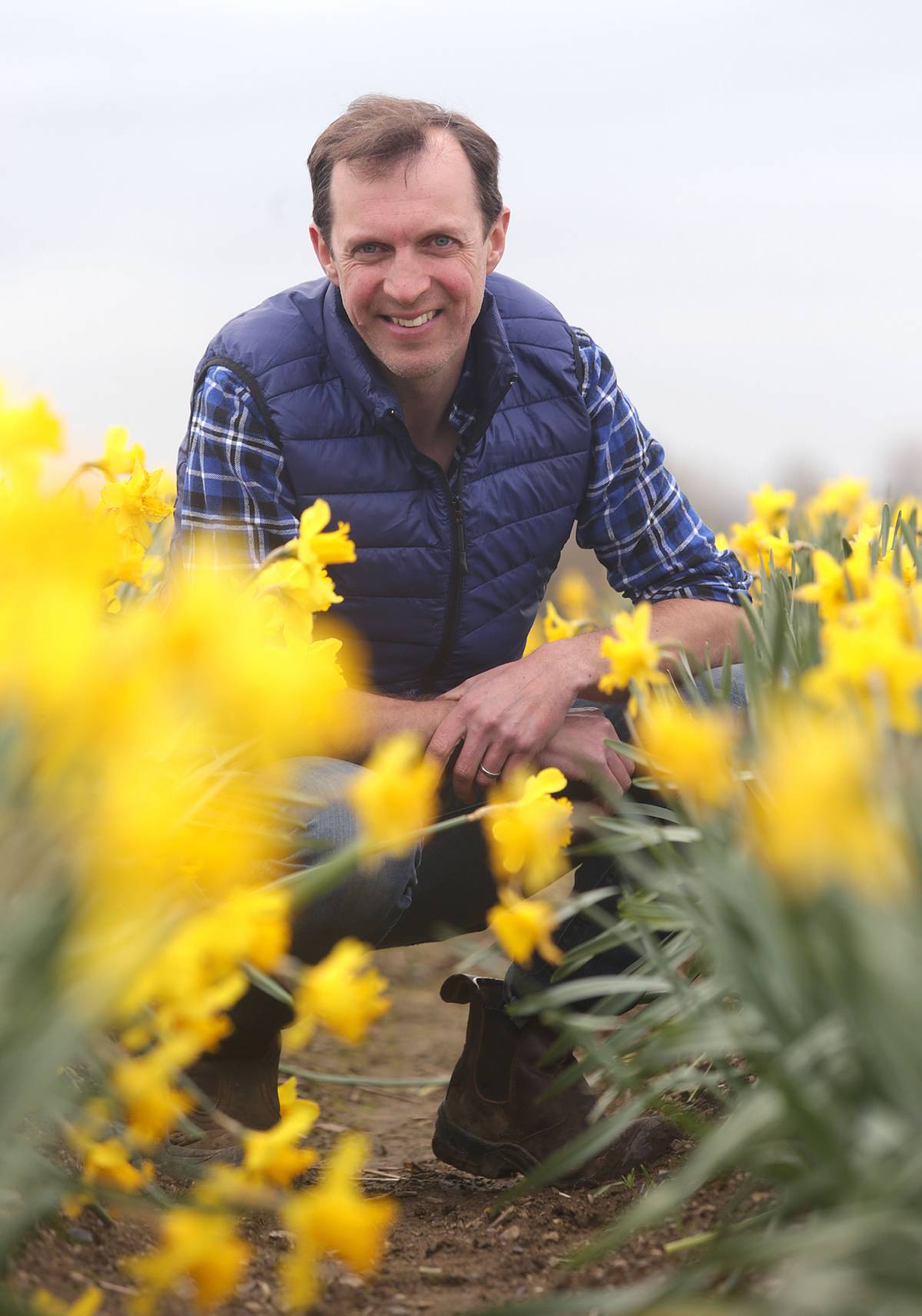 Elmgrove Farm
Elmgrove Farm
Gormanstown Co Meath
Tel: 041 9884389; Email: info@elmgrove farm.ie
Farmer and journalist Darragh McCullough grows 75 acres of flowers on his Co Meath farm and offers an excellent all-year service with free all-Ireland delivery of freshly picked, seasonal flowers. Great value too - from €30 for an Irish springtime bouquet (including a donation to the Irish Cancer Society) to €100 for a 6-week flower subscription - and Elmgrove Farm is also a good place to buy your bulbs for next season. ORDER HERE
Flowers From The Secret Garden
Newmarket Co Cork
Tel: 086 1200 269; Email: sarah@thesecretgardener.com
Having started her North Cork floristry business in 2010 using mainly imported flowers for weddings, Sarah Evans soon changed course dramatically - instead, she now enjoys providing something ‘unique and different from the high-street florist or supermarket’ and only uses imported (EU grown) flowers when needed to supplement her beautiful seasonal Irish ones. Delivery in North Cork; call or email for further information and to order.
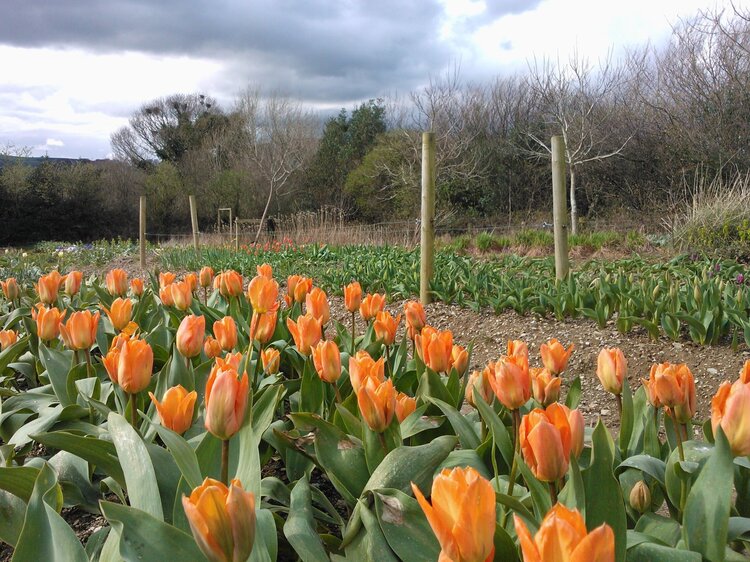 The Flowerfield
The Flowerfield
Tinahely Co Wicklow
Tel: 087 9493632; Email: myflowerfield@gmail.com
Originally trained as a landscape architect Britta Baranowsky now grows flowers sustainably at the foot of the Wicklow Mountains. Dried arrangements are available off-season, fresh seasonal flowers from mid-March, and she supplies BrookLodge & Macreddin Village as well as local markets. Deliveries in North Wexford, Wicklow and Dublin - contact directly for ordering details or, for Dun Laoghaire NeighbourFood collection, ORDER HERE
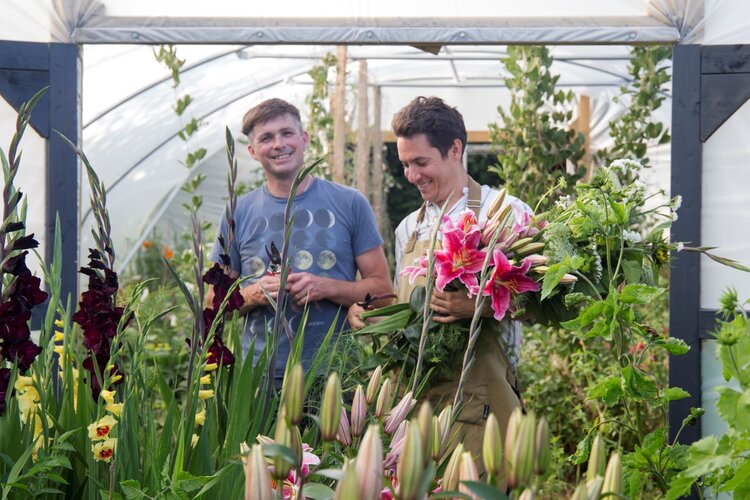
Between the Briars
Glanmire Co Cork
Email: betweenthebriars@gmail.com
Taylor Nelsen and his partner Kevin run their small flower farm on the sustainable ‘no-dig’ system, producing fresh flowers from April to October; off season they may pair Irish grown foliages with European-grown flowers for special holidays. Prices range from about €25 (their newsletter gives updates and special discount codes) and they offer Cork city and Glanmire area deliveries three times weekly, plus nationwide delivery by courier. ORDER HERE
Big Sky Flowers
Mullingar Co Westmeath
Tel: 087 2222562;
’Big Sky small grower’ is the mantra at Anne Browne’s unusual midlands ‘micro flower farm’, which is split between her suburban garden and a field beside Lough Owel. Her designs tend to have an artful simplicity that is very appealing and Flower Growing courses are offered too. Deliveries in Mullingar and the surrounding area. ORDER HERE
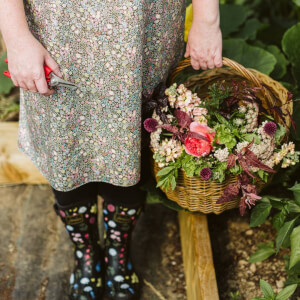 Bell Meadow
Bell Meadow
Tullow Co Carlow
Tel: 086 076 9720 ; Email: bellmeadowireland@gmail.com
Maria Ryan is relatively new to flower farming and, following on from a previous career path, offers other gifts and cards on her website as well as beautiful fresh and dried flowers grown on land that has been in her husband’s family for generations. Local and nationwide delivery is offered (flat rate €5), and you can order online for collection from NeighbourFood Carlow. Neighbourfood ORDER HERE
From Seekings
Ballymacoda Co Cork
Tel: 860439930; Email: fromseekings@gmail.com
It’s all about sustainability for former solicitor Anna Hogan, now a full time no-chemical flower farmer in East Cork. As well as her farming and seasonal floristry, this unstoppable woman makes preserves and sustainably produced skin care products, and offers courses. Vouchers available; bouquets from around €35 / €45 ORDER HERE
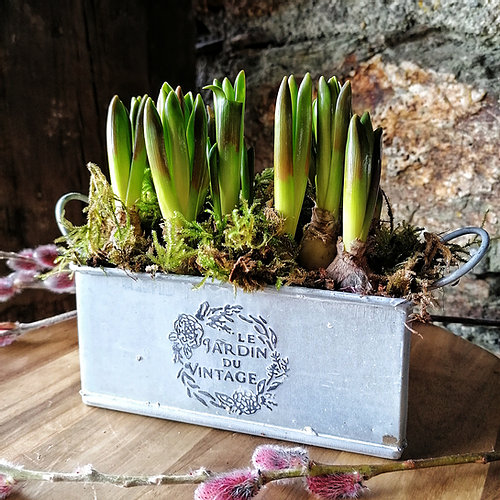 Howe Hill Flowers
Howe Hill Flowers
Kilbrittain Co Cork
879376148 hello@howehillflowerfarm.com
Eco flowers
Former designer and milliner, West Cork flower farmer Flicky Howe-Prior is the eleventh generation of the Howe family to make a living from the soil in this lovely coastal area. Nurturing it with seaweed from the beach and manure from a nearby farmyard, she grows a wide range of flowers, sometimes supplemented by certified Fair Trade EU imports. Her online shop includes lovely special occasion items from €12.50-€50, with delivery between Kinsale and Clonakilty. ORDER HERE
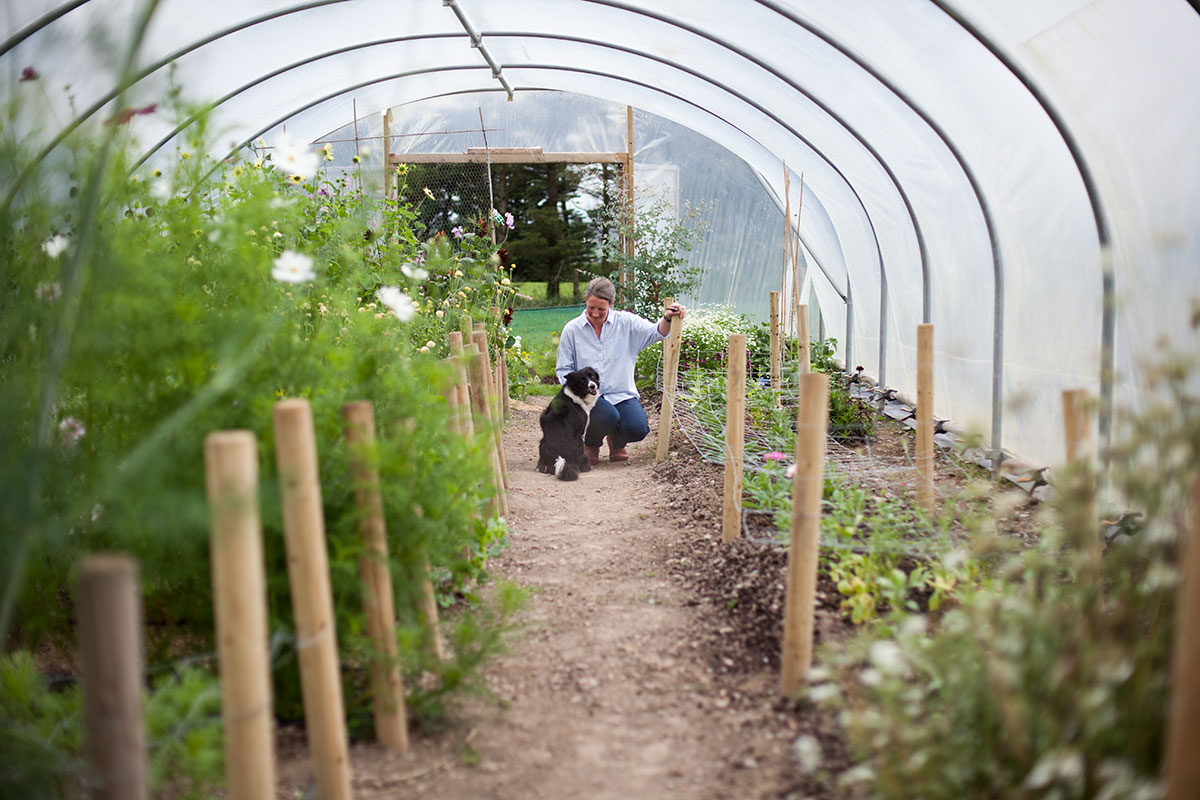
Ruth Fortune Flowers
Glandore Co Cork
Tel: 086 3606830; Email: ruthfortuneflowers@gmail.com
Since 2013, former architect Ruth Fortune has specialised in offering natural, seasonal Irish-grown flowers from her West Cork garden, for weddings and special occasions. They’re available from mid-March until late September - and you’ll find her at Skibbereen Farmers’ Market throughout the season. Ruth also offers workshops, and can deliver in West Cork. Visit the website to see her style, and contact her directly for full details and to place an order.
.jpg) Amelia's Garden Flowers
Amelia's Garden Flowers
Roberstown Co Kildare
Tel: 086 6007478; Email: ameliaraben@gmail.com
“Flowers are in my blood,” says Amelia Raben, whose grandfather was a flower farmer in the 1950s. So, although trained in Interior Design, she followed her destiny to become a flower farmer and florist, working mainly from a cutting garden near Clane. Outside the growing season she works with dried material and her lovely dried flower wreaths are still available heading into spring and early summer, as the new season picks up. Amelia offers workshops as well as flowers for all occasions (including weekly subscriptions), with delivery in Kildare and Dublin. Phone or message Amelia for full details.
Irish Handmade Chocolates for Easter Treats - 10 of the Best
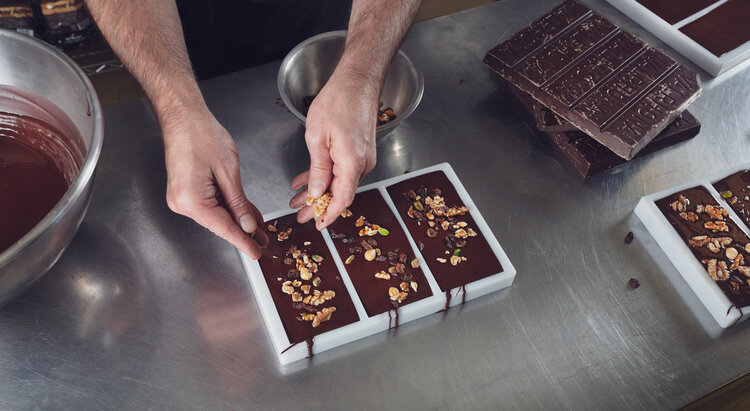
Our national chocoholism is no secret and it revs up to top gear at Easter, - when it’s not just about eggs but all kinds of symbols of spring - while theme-free top quality chocolates make the perfect all-year treat. While Ireland’s growing reputation for quality chocolate is largely thanks to excellent mainstream producers such as Butlers, Lily O’Briens, and Lir, smaller-scale chocolate specialists are increasingly making a big impact as well. We’ve selected just ten of Ireland’s growing band of top chocolatiers, who produce everything from exquisite creations for the most discerning recipient to fun family gifts. All of those below offer an online shopping and delivery service, but in-person shopping is always fun – particularly if you visit a specialist like Cork favourite The Chocolate Shop at the city’s English Market where Irish producers take their place among ‘the best quality chocolate from the best artisan chocolatiers throughout the world’ and the range includes organic, 100% cocoa bars & powders, gluten-free and diabetic chocolate. What’s not to love…

Ballinrobe Co Mayo
Tel: 083 093 6684; Email: webshop@vanvelzes.com
The Dutch famously take chocolate very seriously and - tucked away on a garage forecourt in Ballinrobe - you’ll find a tiny shop and production unit creating exceptional handmade chocolates under the brand name Van Velze. Run by Master Chocolatier and Baker Robbert Van Velze and his wife Deborah Kilroy, this is very much a special treat. Eschewing the trend for brightly coloured finishes, these are restrained and elegant in presentation with colour restricted to a hint of red and green on their Mad About Mayo chocolate - and, as an added touch of luxury, each box is adorned with a little card and tied with a satin ribbon so that opening it feels truly extravagant. Before settling in Ireland, they ran a chocolate boutique and patisserie in Rob’s native Amsterdam (still in operation and with an impressive corporate client list) and now – as well as an excellent online service - you'll find Van Velze’s beautifully presented and packaged artisan chocolate at some of the region's finest delis and foodstores as well as their little shop in Ballinrobe.
SHOP HERE: https://vanvelzes.ie/
Bon Chocolatiers
Tullamore Co Offaly
Young chefs Georgia Quealy and Daniel Linehan bravely started this ambitious small business during the lockdown in 2020 and they’ve since earned a national reputation for their exquisite Bon Chocolatiers handmade Irish chocolates. Sold online as gift boxes, their sumptuous creations are also supplied to some carefully selected restaurants and hotels - and, at certain seasons, they're available through some partnering local businesses too, including Daniel's family's delightful Athlone café, Beans and Leaves. Using the very best ingredients is key to everything that Georgia and Daniel do. The foundation is ethically sourced chocolate from France and Switzerland and they use as many local and Irish producers as possible, including Irish butter and cream of course ("Irish dairy - the best in the world!"), foraged berries in season and some special products such as Oriel sea salt - an EU Protected Designation of Origin product from Co Louth. A beautiful gift at any time, and seasonal specialities include their trademark triple layer Easter eggs…
SHOP HERE: https://www.bonchocolatiers.ie
Bean and Goose
Ballyloughan Business Park, Gorey, Co. Wexford
Email: hello@beanandgoose.ie
The concept of chocolate as a seasonal product is new to many but - citing childhood memories of happy chocolate associations and a passion for using seasonal, natural ingredients as their inspirations – sisters Karen and Natalie Keane’s Bean and Goose superb ‘bean to bar’ chocolate is made from organic single origin beans and flavoured with home-grown and foraged plants that reflect and celebrate the Irish seasons. Now made at their Chocolate Bar Café location in Gorey, the delicious traditionally tempered Bean and Goose chocolate was first produced at the farm where they grew up in Co Wexford, and sustainability informs everything from the ingredients to the recyclable packaging. Their gorgeous range includes some utterly irresistible Easter treats, some for sharing, from about€19.50. To celebrate a decade in business and many well deserved awards they’ve released a new Weekend Wander gift box with three flavours: Salty Almonds; Umami Seaweed and Smoky Sea Salt. All Ireland delivery is offered.
SHOP HERE: https://beanandgoose.ie/
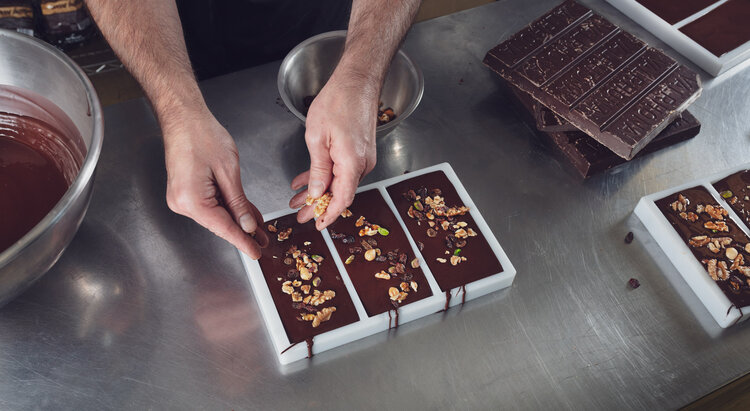
Lorge Chocolatier
Bonane Kenmare Co Kerry
Lorge Chocolatier was established by the acclaimed French Pastry Chef Benoit Lorge in Kenmare, in 2003, and he has since received plenty of well-earned praise for the luxury, hand-made confectionery that he creates using top quality ingredients. The range includes beautifully presented boxes, truffles, bars, hot chocolate, chocolate spreads, and other confectionery such as nougat and marshmallows – and seasonal specialities including Easter eggs (in various sizes, filled and unfilled, from about €11.50) and some cute novelties including their trademark ‘Bunny Carrote’ (a chocolate bunny clutching a whole carrot, €9.50). Chocolate courses are also available for professionals and amateur enthusiasts and Lorge products are available at a number of speciality outlets including PonaireLorge, Adare as well as shops at the factory (Bonane) and in Kenmare Town.
SHOP HERE: https://lorge.ie/shop
Hazel Mountain Chocolate
Bell Harbour Co Clare
Tel: 065 707 8847 Email: info@hazelmountainchocolate.com
Although it is well signed near north Clare’s famous Flaggy Shore, John and Kasha Connolly’s charming little chocolate factory, bakery and café still comes as a surprise. John, who knows The Burren like the back of his hand, is well known as a walking guide, and this enterprising couple’s businesses are run from the cottage farmhouse that John inherited from his grandmother. Since opening in 2014, they have - as they say themselves - been making waves on the Irish and international chocolate scene, thanks to their commitment to using local, sustainable, natural ingredients, sourcing the best cacao beans from ‘little guy’ cocoa bean farmers, and also due to the charming and highly educational set-up at their must-visit factory (tours available). Easter treats include Bunny Munch Carrots and a beautiful Wild Atlantic Easter Egg.
SHOP HERE: https://www.hazelmountainchocolate.com/collections/all
Chez Emily
The Ward Co Dublin
Tel: 01 835 2252; Email: sales@chezemily.ie
Ferdinand Vandaele and Helena Hemeryck have crafted their exquisite Chez Emily handmade chocolates near Mabestown, since 1996. During that time the business has grown to include a shop and café, Chez Emily Chocolate Boutique, in Ashbourne, Co Meath (open daily except bank holidays), but the ethos is unchanged and their sustainable cottage industry still uses carefully sourced ingredients and the original family recipes to produce chocolates that are handmade with care. The range includes dairy free, gluten free and vegan chocolate and, in addition to the 30 varieties that are available year round, there are seasonal specialties including an Easter selection ranging from a Pablo Bunny lollipop at €2.75, to an Easter Family Box at €40; delivery within Ireland takes 1 to 5 working days.
SHOP HERE: https://chezemily.ie/shop/
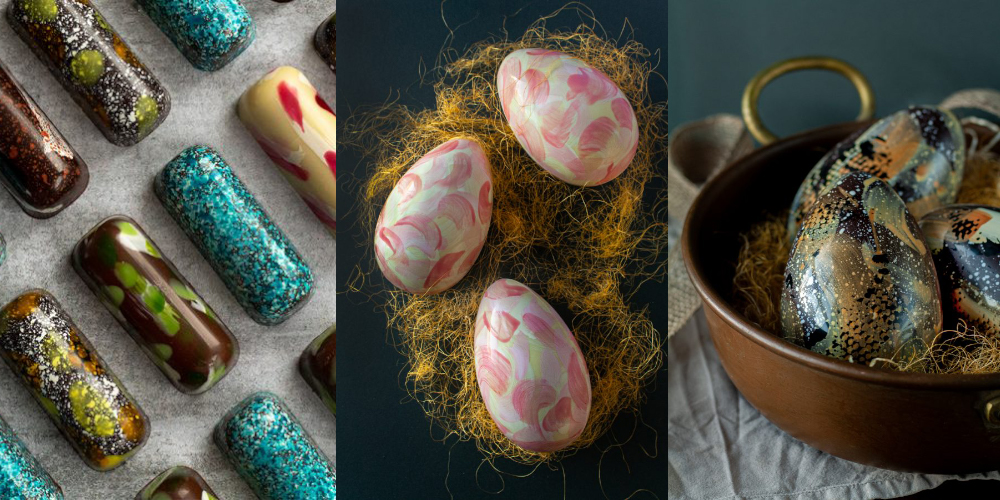
Grá Chocolates
Kilchreest Co Galway
Tel: 085 2294653 Email: hello@grachocolates.com
The 2019 winner of the Euro-Toques Young Chef of the Year title, pastry chef Gráinne Mullins was working in an exciting new restaurant when Covid hit – and, with the closure of hospitality, so began her beautiful business. Following the Euro-Toques principles of sourcing locally and sustainably (“great taste comes from the finest ingredients”), Gráinne works in small batches and her hand-painted and polished bonbons take three days to create. Locally and ethically produced ingredients are also used for the fillings, and the current range includes some stunning Easter eggs, which can be pre-ordered with a selected shipping date. Promising “the pure taste of happiness” Grá has earned a loyal following and – thanks to a successful Kickstarter campaign – is all set to achieve their mission of building Galway's first chocolate factory.
SHOP HERE: https://grachocolates.com/shop/
Skelligs Chocolate
Ballinskelligs Co Kerry
Tel: 066 9479119 Email: info@skelligschocolate.com
This high quality chocolate operation is scenically located at the remote St Finian's Bay on the Ring of Kerry, overlooking the Skellig islands, and its unique appeal - together with Noelle Campbell-Sharp's wonderful Cill Rialaig Centre (art exhibitions, shop & café), which is nearby - has made the Skellig Ring a destination for families on holiday, food lovers and art collectors alike. Uniquely, the open plan Skelligs and Cocoa Bean Chocolates production kitchen allows visitors to watch the process (and taste samples) while taking in the dramatic scenery. Specialities available all year include 60 varieties of truffles (flavours change with the seasons) while limited editions include the Easter range of solid eggs (Dubai mini solid egg from €10, whiskey egg from €29.50), shell eggs and hampers (from €37.50). A great place to visit, and also a good online service.
SHOP HERE: https://skelligschocolate.com/buy-chocolate-online/
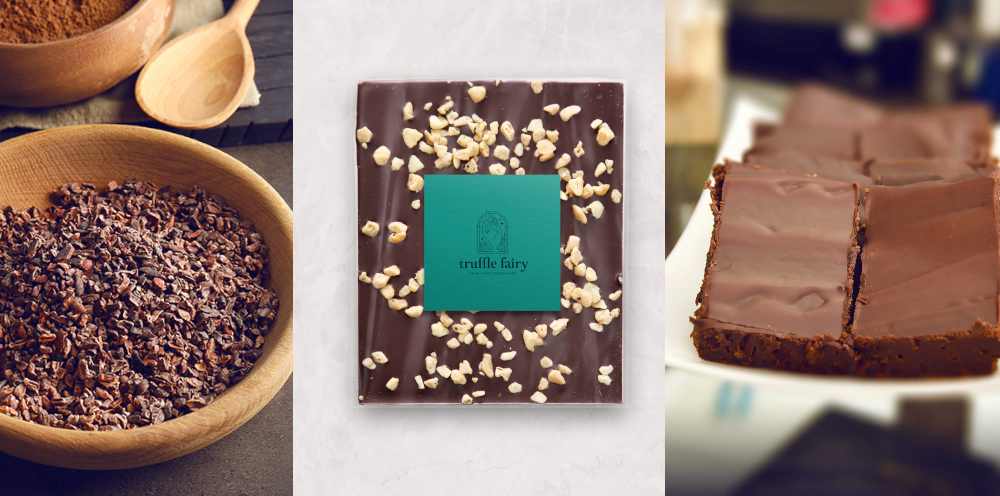
Truffle Fairy
Thomastown Co Kilkenny
Tel: 087 286 2634 E-mail: info@trufflefairy.ie
There is a touch of magic about chef Mary Teehan’s chocolate creations, and chocoholics visiting the Kilkenny area should seek out both the chocolates themselves and the Truffle Fairy Chocolate Café & Shop, where you can see the production kitchen (and you may also to get a complimentary truffle with your coffee). While not a novelty producer - Mary is famous for luscious single origin truffles and chocolate fudge - the range also includes chocolate bars and chocolate barks (bars covered with dried fruits and/or nuts), cakes, cookies and seasonal treats including Easter eggs. The freshness and quality of her ethically sourced ingredients speaks for itself – and well-earned accolades include Great Taste Awards gold stars for several of her exotic truffles and her chocolate brownies. The main business is in Thomastown, but there is also a lovely shop and café on Ormonde Street, in Kilkenny City. Also sold at farmers’ markets and speciality stores including the lovely Glasrai and Goodies at Gowran.
SHOP HERE: https://trufflefairy.ie/shop-2/
The Chocolate Manor Castlerock Co Antrim
Tel: +44 79 1933 2843
Email talktous@thechocolatemanor.com
Not just a premium chocolate producer but a destination promising to “… have an experience for everybody. Families can get together ... Visitors and locals love to explore the fantastic Taste Causeway Experience…”, The Chocolate Manor is a recent winner of the Best Food & Drink Experience at the Tourism NI Giant Spirit Awards and they have been part of the Northern Ireland branch of the international network Economusée (‘artisans at work’) since 2022. Owner and Chief Chocolatier Geri Martin is a founding member and current chairperson of Taste Causeway (which is associated with Slow Food) and keen to introduce visitors to both the chocolate making process and the impressive range of other local artisan products as well as their own. All round a fascinating place to visit, and you can also buy online.
SHOP HERE: https://thechocolatemanor.com/
Post-Covid World - The New Tourism
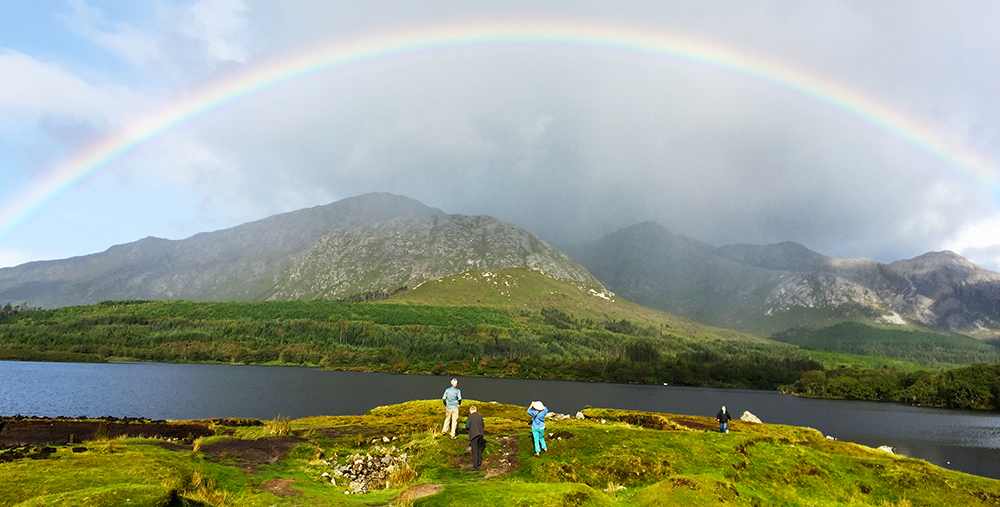
Pivoting has been one of the most-used words throughout the pandemic - and with good reason, as those able to see opportunities and move quickly to change direction are staying the course. But it’s not a new concept, as lifelong hospitality professional Joe Hughes explains. Here he shares his experience of pivoting from high-end hotel management to an entirely different tourism sector - and makes some predictions about future opportunities.

With the tourism and hospitality industry in disarray, many people are already wondering what the post-Covid visitor experience will be - and what getting back to work is really going to be like. Things will be different. Competition for jobs will be high. However, it’s not all negative. When the industry begins to stretch its wings again there will be opportunities that could not have been foreseen a year ago, because the recent changes will bring about a new perspective – if we are open minded to embrace it.
All my life I have been an hotelier but some years back a family crisis put me at a crossroads, and I took a break to care for a family member. A few months turned into five years. Trying to get back into hotel management afterwards proved impossible and, believing that I only knew about managing hotels, I could see no future for myself. But fate intervened in the form of an invitation to take up some very different temporary work in tourism, which eventually became permanent and - to my great surprise - very rewarding. It introduced me to prospective incoming tour group and cruise ship operators and, while a hotel management background was a sound foundation, it demanded new skills.
So, I had to re-learn a huge amount and to brush up my knowledge on everything that you can (and much that you probably can’t) imagine, to interest and engage with visitors who may not be in the young adventure holiday category, but don't want to just sit on a tour bus and sleep. Instead they want to get involved with activities such as spending a morning with a farmer on the Burren; watching a home based handweaver in Donegal; learning about Hurling and playing it; spending time with a sheep farmer in Connemara and so on.
Let me share with you what I learned over the course of the years following my change of direction.
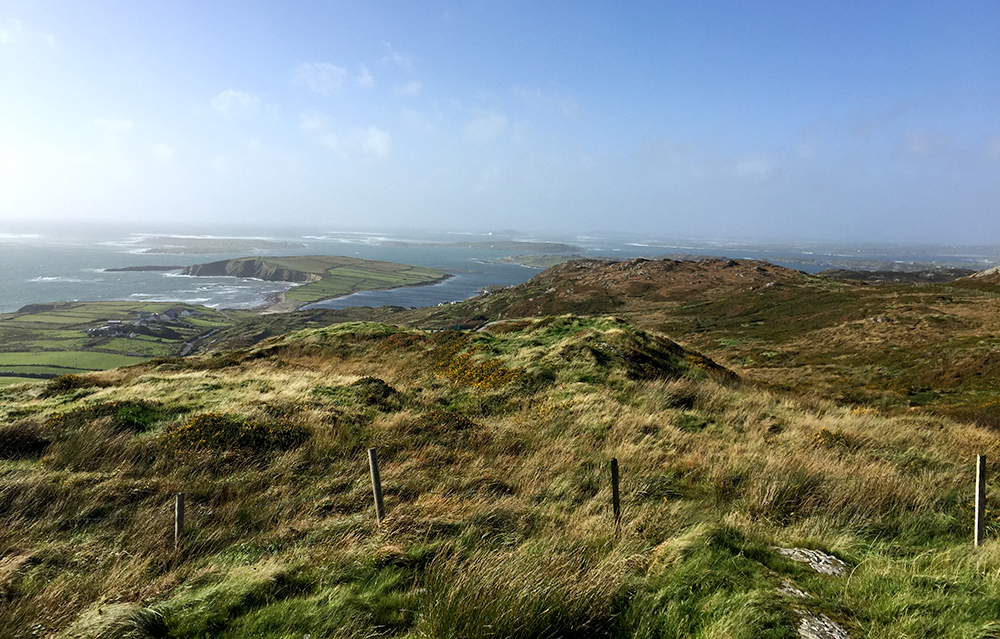
The most important thing that I learned is, obvious as it may seem, that tourists do not come to Ireland for the weather, nor do they come to sit in the sunshine on our beautiful empty beaches. If asked why people come to Ireland, could you answer? And let me say here it has nothing to do with the country being so green, for it often comes as a shock to us Irish to realise that there are many other green countries in the world. The answer of course, as born out by countless Tourism Ireland surveys, is that they come here to meet the people.
Yet, strangely, we often do the best we can to keep them away from the people. Not our wonderful waiters and waitresses, or our warm and friendly receptionists, of course, but the people in the street.
Possibly my biggest surprise came when an operator asked me if I could arrange for some of her travellers to spend a morning at a Hospice? And the second request was a morning or an afternoon working with young offenders. Tourism has changed and not because of Covid 19; it had already changed, but the pandemic is accelerating the process. Most of the incoming visitors that I work with take more than one vacation each year and yes, one of those is probably spent frying on a golden beach listening to the gently lapping waters. But on the other vacation or vacations they are looking for the extraordinary. This is where opportunity opens its door to us, as long as we keep in mind that the objective is authenticity - they want the real thing; and the second objective is to give them time to chat with the locals.
Many people are already providing home hosted meals for touring visitors. The group is broken up into smaller groups of between six and eight people. Each small group will visit a home (dropped off by the tour guide) where they will have lunch or dinner with some of the family members – most particularly they want to meet the woman of the house. Food is simple, a light starter, a main course such as Cottage Pie or Bacon and Cabbage and a light dessert with tea or coffee. Dinner is often a bit more elaborate and could include Roast Chicken. A glass of wine or a beer is presented. But the food, while authentically homely and enjoyable, is not the star of the event - that is the opportunity to meet the locals in their own home and talk about everyday topics. It is not too daunting as most of the food is prepared in advance and each group stays no longer than two hours before they are picked up by the tour guide.
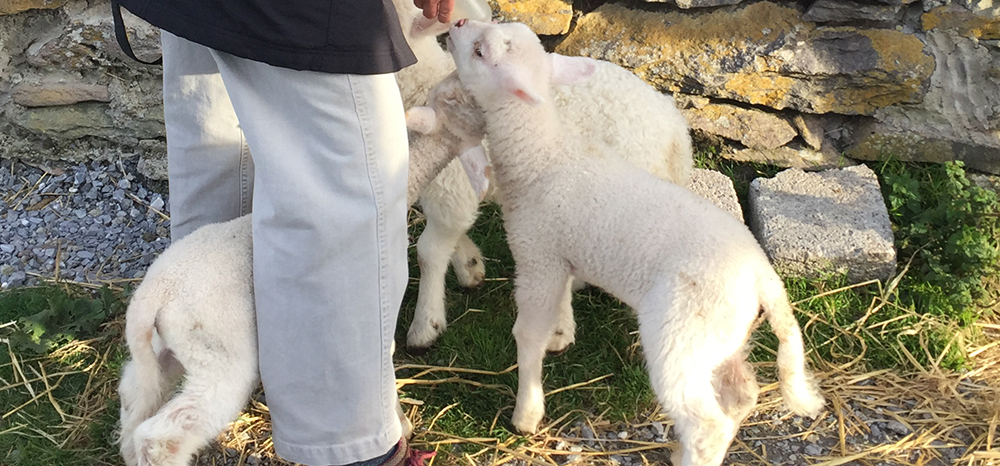
But supposing having people at home for a meal is actually too daunting, what about an evening playing cards? The full group is broken up into smaller groups who each then go to a different home for two hours of cards. A cup of tea or coffee, some sandwiches and a slice of apple cake. A traditional Irish evening from days gone by!
Already incoming visitors are visiting small farm holdings, particularly retired farmers and they generally talk ‘farm talk’ with ‘himself’ and the woman of the house demonstrates how to bake scones or soda bread which the group then eat with a cup of tea. In two hours the group is gone.
How about story telling? Or, better still, storytelling and a bowl of Irish Stew?
Do the children play traditional instruments? Or do they do Irish dancing? Perhaps there is a vacant church hall? What about a Ceili for touring visitors?
Or a GAA Club could host a group of visitors, in the morning when the Club is empty, and talk about the games - and then let them hit a few pucks.
The opportunities are as endless as our imaginations. Tour operators are always looking for something unique – I once suggested to a retirement association that I had visitors who would love to meet retired Irish people for a cup of coffee in the morning to talk about what it means to be retired in Ireland. Unfortunately, nothing came of it because they couldn’t see outside the box.
I understand that clichés are the bane of life but there is always a kernel of truth in there. Many people think that while necessity is the mother of invention she is somebody else’s mother! But it is not as difficult as our fear of change can make it seem. All that’s needed is one organiser, a group of willing participants and a bank account in which to lodge the money!
 Joe Hughes has spent over 40 years in hospitality, mainly in hotel management, and, with his earliest experiences having been in food and beverage, his passion for food grew. His work in hotels and restaurants has taken him to London, South Africa, the USA and finally home to Ireland, his first love. Joe is known to many for his work in the 90’s as President of the Irish Hospitality Institute. In more recent years he has worked in tourism and tour guiding - a surprise career change, but one that now gives him the privilege of sharing Ireland’s history, myths, legends, heritage, and more with culturally curious travellers.
Joe Hughes has spent over 40 years in hospitality, mainly in hotel management, and, with his earliest experiences having been in food and beverage, his passion for food grew. His work in hotels and restaurants has taken him to London, South Africa, the USA and finally home to Ireland, his first love. Joe is known to many for his work in the 90’s as President of the Irish Hospitality Institute. In more recent years he has worked in tourism and tour guiding - a surprise career change, but one that now gives him the privilege of sharing Ireland’s history, myths, legends, heritage, and more with culturally curious travellers.
Joe can be contacted by email at: jvhughes1@sky.com
Earth Day at Virginia Park Lodge

While President Biden’s Earth Day summit on 22nd April was the highlight event on the international stage, the day also inspired myriad public contributions from businesses, organisations and individuals all over the world, including Ireland. We especially enjoyed this one from Richard Corrigan’s Co Cavan property, Virginia Park Lodge, because it sums up the optimism, energy, generosity and practicality of the man himself - the world needs more like that - and, importantly, his Top Ten Tips remind us of the simple things that we can all do to make a difference.

The 22nd of April was Earth Day, a global initiative that aims to ‘diversify, educate, and activate the environmental movement worldwide’.
Unfortunately, this event has become increasingly relevant over the years, and today it is more important to acknowledge and spread the word than ever before. But, let’s not get caught up catastrophising. Instead, let’s celebrate the little things that we do, and focus on what more we can do, to help tackle climate change.
Virginia Park Lodge was built on the concept of self-sufficiency. Geoffrey Thomas Taylour, 4th Marquess of Headfort and fourth occupant of the Lodge, was an avid and enthusiastic horticulturist. He had a particular penchant for planting trees, and fervour for exotic flora and fauna. Still today, the woodland surrounding the Lodge grows as a continuation of his legacy. Interspersed among the acres of native trees, you will find Japanese Maple, Giant Sequoia, and some rather spectacular Monkey Puzzles, to name a few.
Since purchasing the Lodge in 2014, Chef Richard Corrigan has worked tirelessly to ensure that sustainability remains at the forefront of what we do. In the past seven years, we have replaced and replenished hundreds of trees, including an acre of young orchard, which already bestows an abundance of fruit upon us every year. Trees are not only vital oxygenators, in turn, they help to clean the air of carbon, as well as providing a habitat for so many species of insects, birds and small mammals.
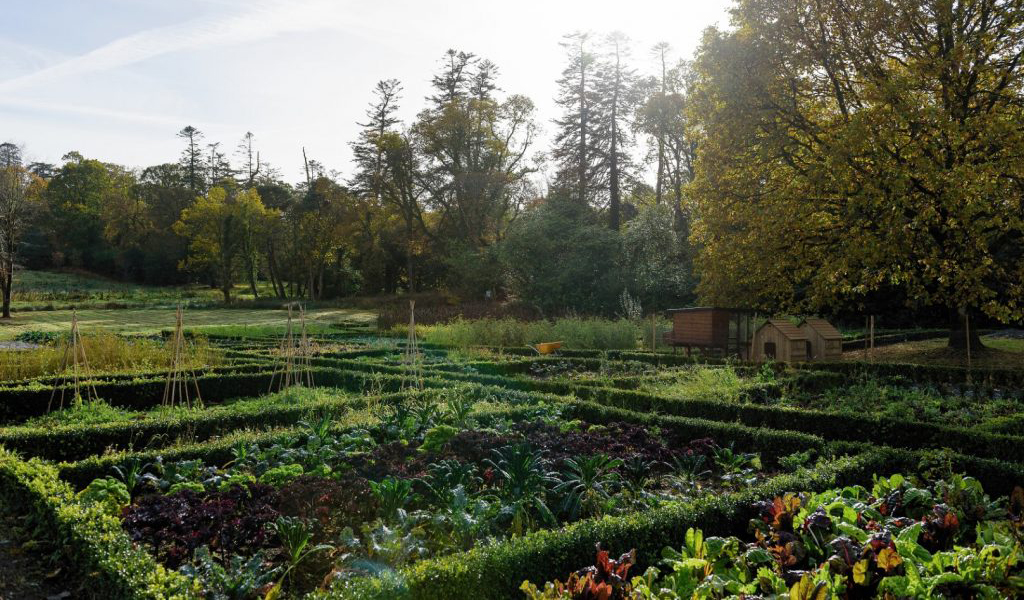
Alongside our replanting projects, Richard is particularly proud of our Gooseberry Gardens, which supply produce year-round to our own kitchen, as well as his London restaurants; Corrigan’s Mayfair, Daffodil Mulligan, and Bentley’s Oyster Bar & Grill. Having grown up on a farm in Co. Meath, Chef Corrigan is no stranger to living off the land, which is why all of our menus are dictated by the seasons. Food waste is fiercely forbidden, so we take care to use every stalk, leaf and claw going, with any natural by-products going straight into our compost, enriching the soil for the next season’s harvest.
Of course, none of this growth would be possible without the help of our beloved bees. We have two hives that are tended to by Amel, a 5th-generation beekeeper, who ensures each and every productive pollinator is happy and healthy. You can tip your hat to our fuzzy friends for every fruitful yield, as they spread pollen from field to field.
Now, we all understand the challenges involved in being sustainable, especially those in the hospitality industry. But, the important thing to remember is that there are always things you can do to help offset the effects of climate change, and little efforts make a huge difference when made collectively.

Ten Top Tips to Protect our Planet
1. Reduce food mileage – buying locally and seasonally as much as possible reduces carbon emissions and also supports small businesses.
2. Shop mindfully – plan your shops in advance to avoid food wastage and try to minimise plastic packaging by bringing your own reusable alternatives.
3. Reduce water waste – take shorter showers, turn the tap off while brushing your teeth, hang-dry your clothes – every drop makes a difference.
4. Recycle, recycle, recycle!
5. Use every last scrap – roast those cauliflower stalks, save your chicken bones for broth, put your potato peelings in the compost.
6. Grow your own – whether it’s a full-on veg patch in the garden, or a window box of herbs, growing your own helps to avoid unnecessary plastic packaging, and can give you a real sense of achievement at the same time.
7. On your bike (or your feet)! – avoid taking transport whenever you can, there’s no better action for your mind, body, or the planet.
8. Don’t let litter lie – whether you’re picking up that plastic bottle you saw on the side of the street, or organising a beach cleanup, just because it isn’t yours doesn’t mean you should leave it.
9. Count those kilowatts – most energy suppliers will offer a free electricity smart meter, and watching that bill add up is guaranteed to make you unplug.
10. Second-hand saviours – forget fast-fashion, buying second-hand can save the planet and save you pennies!
For more on Virginia Park Lodge, visit https://www.virginiaparklodge.com/
In Praise of Rain
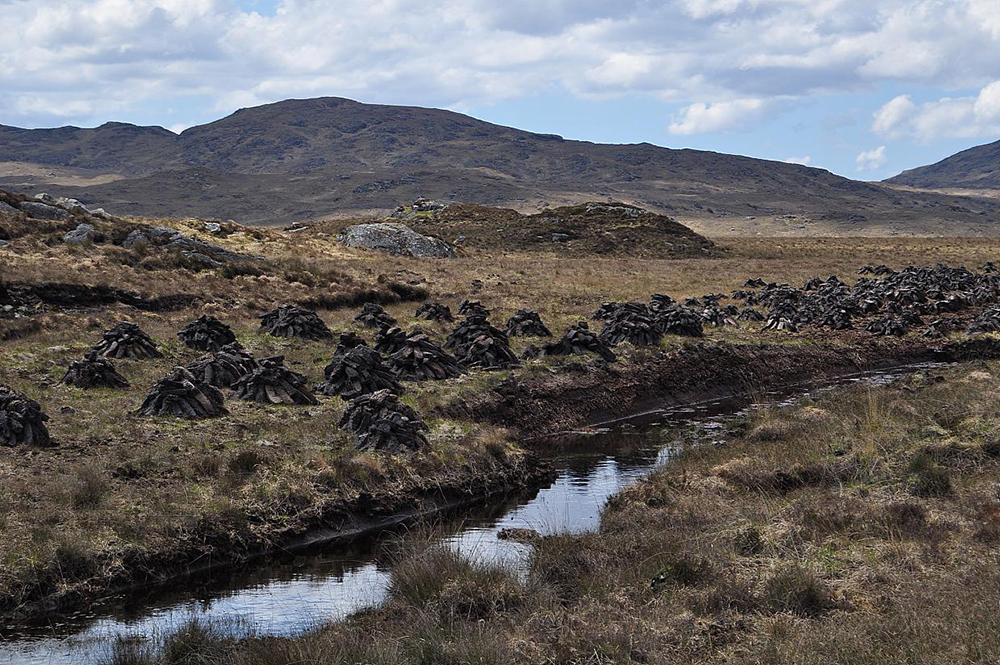
We all know that water is our most precious resource so let’s hear it for rain, wonderful rain, says Joe Hughes. To a man who knows what drought is all about, our references to rain in last month’s ezine - Rachel Gaffney’s ‘Let’s Go Wild’ piece and the Editor’s suggestion that we should “take a cue from the Swedish ’rain city’, Gothenburg - struck a chord.

One of Billie Holiday’s most famous lines goes invitingly ‘…don't threaten me with love, baby. Let's just go walking in the rain…’ Rain. Here in Ireland what should be our greatest natural asset is also the most grumbled about topic of conversation whenever people meet. We know that there’s rarely a day without rain and when we have a few days without it we declare a national drought. Why is our relationship with it so uneasy? It’s strange that we live with this treasure and yet we have never adapted to it, let alone given it the status it deserves.
Having lived in southern Africa for a decade during the 80’s I experienced six years of drought and so, after saving my shower water all that time to put on the plants in my garden or wash my dusty car, my attitude to rain is different to many of my friends and colleagues here at home. When I returned to Dublin from Africa I vividly remember the first time I experienced a rain shower on my face, and thinking how beautiful was this blessed rain!
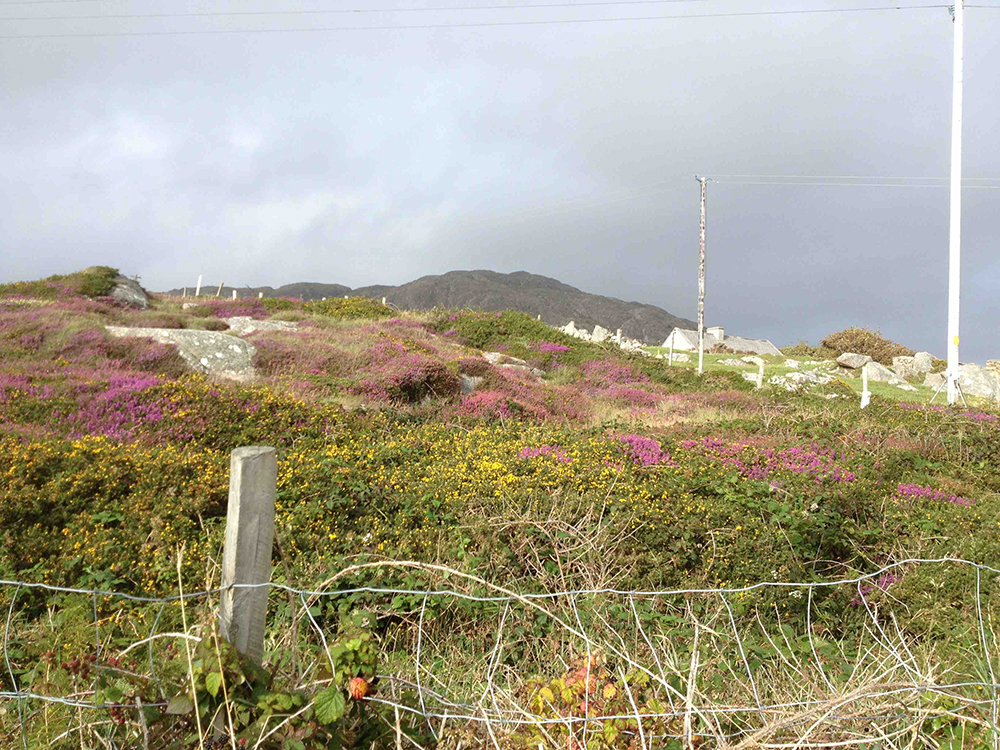
When I take touring visitors around Ireland I am constantly delighted by the benefits of our liquid gold on the undulating landscape and hearing them marvel at the lush greenness and the profusion of wildflowers growing by the roadside. So I wonder why this special asset is treated with negativity and disdain – why do we not embrace what we cannot change?
Two hundred years ago Switzerland faced lockdown each winter. Snow fell and it isolated towns and villages – people prepared for winter, and they stored the provisions that would see them through the six months of impassable weather. The only means of travel was by wooden skis with poles like strange walking sticks. But a few intrepid visitors to the Alps found travelling by skis exhilarating and, never slow to see an opportunity, the inventive Swiss turned a negative into a positive and a billion euro business.
Why have we Irish - apart from the farmer who needs it to grow crops - never seen the positive benefits of rain? I’ve been questioning this for decades, but thinking ahead of your time can be almost as bad as not having an idea in the first place – or worse. I remember a Master Baker friend who invested and lost thousands when he introduced bagels to Dublin in the 80’s and people in the food and hospitality business laughed at him. Need I go on?
But, with attitudes to climate and the environment now changing dramatically, it’s a good time for our tourist bodies to market rain as a positive. Before that happens however we need a national plan, probably following similar lines to the Swiss and their snow.
%202019%20LR.jpg)
Visitors should be able to hire the right ‘gear’ on arrival, boots, and outerwear – with airline luggage costs growing all the time, this makes good economic sense for travellers. From our point of view it offers business opportunities, and it helps reduce the carbon footprint of carrying extra weight to and from Ireland.
And so the visitors have arrived, and it is time to kit them out with online maps and GPS (a business opportunity?) to assist in the adventure whether it is walking, hiking, trekking, fishing, sailing, climbing, pony trekking etc - or even shopping. All adventurers could be presented with their own handmade Irish walking stick (another business opportunity) which could become a trip souvenir and perhaps engraved with the visitor’s name, maybe even in Irish and/or Ogham.
Specific routes taken could have eco-friendly refreshment stops at the beginning or end point (another business opportunity) and returning to their accommodation would mark the beginning of ‘après rain’ (or perhaps some unique Irish term) when visitors are met with an Irish Coffee or Hot Toddy. Then there are drying rooms to dry gear overnight ready for the next day’s adventure. Saunas, steam rooms, hot tubs, Spas and such like offer the visitor an opportunity to relax and unwind before dinner, and blazing fires to warm the body and lift the spirit. The rest of the evening is taken care of with the hospitality that Irish people know best: good food, honest craic and plentiful ceol!
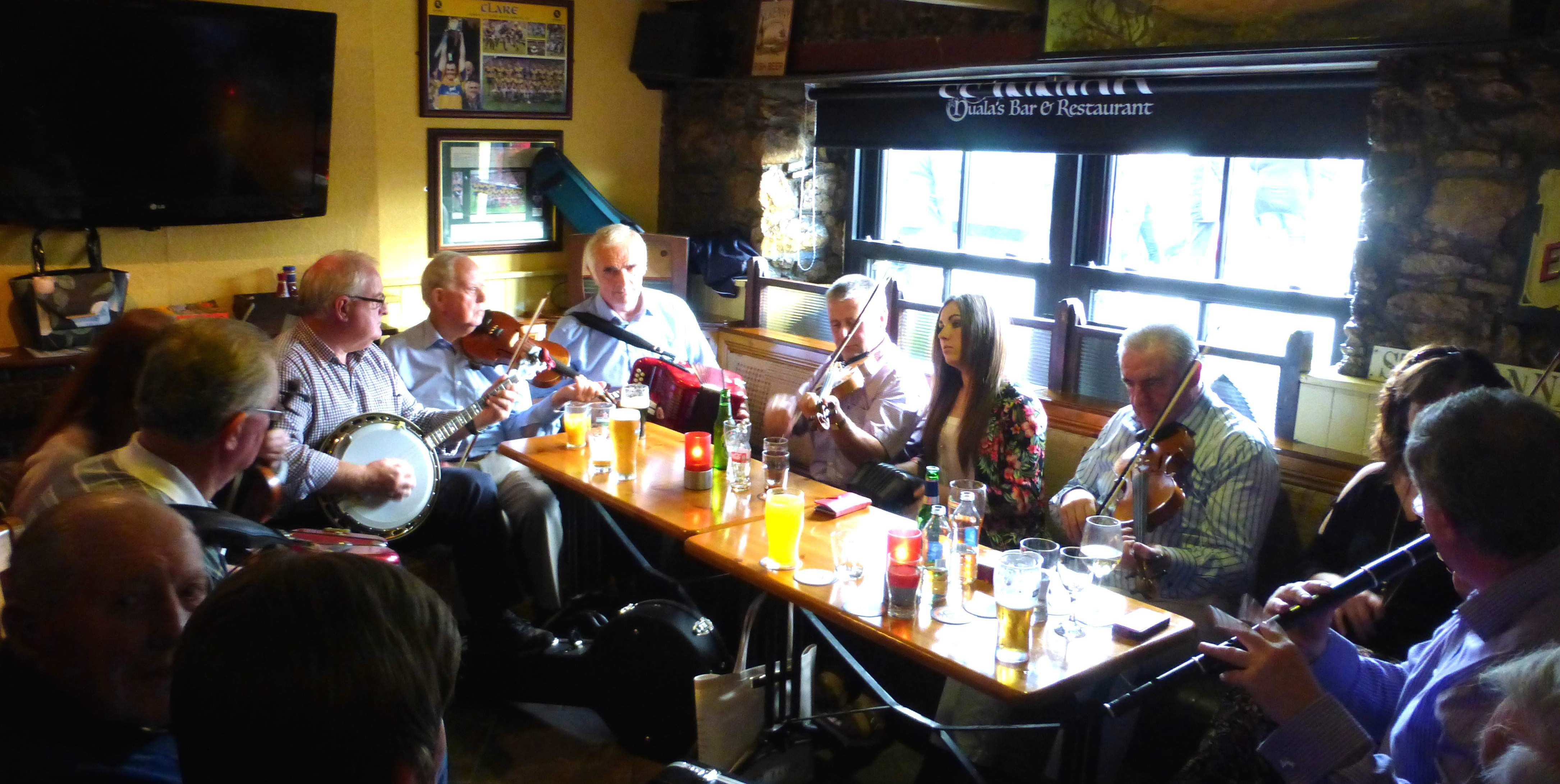
Of course, as it did for the Swiss, all of this involves financial investment. But it will extend the season into the winter months and create a whole new - and unique – all year experience. With the facilities in place there are opportunities a-plenty for summer rain walks all over Ireland - in the Burren, in Connemara, in the Glens of Antrim and in the fascinating boglands of the West and the Midlands…; the possibilities are endless, and it’s all over and above our standard provision.
We could also sell the benefits of fresh clean Irish rain for the skin – natural beauty enhancing products and pampering salves and pomades would provide adventurers with protection and an enhanced feeling of Irish wellbeing. A few creative companies are already looking outside the box – Magee of Donegal, for example, produce iconic clothing that works with the Irish climate – Winnie Magee owner of the Lightning Tree in Comber, Co Down produces the only waterproof Irish Linen outerwear in the world and her creations would look cool on any Parisienne boulevard.
Many cities around the world such as Seattle and Gothenburg have already begun to acknowledge that rain is something to be accepted and embraced instead of acting as if it doesn’t exist and feigning surprise when it comes down for the fourth time that morning. It’s all about grasping the nettle to make a saleable soup!
The most off-putting thing about rain is that moment when it soaks through to your skin. It is uncomfortable and downs the spirit, but if on your return you are met with warm cosy comfort and a way to dry clothing for tomorrow’s new experience then it becomes an exhilarating Irish adventure and one that is unique in world tourism.
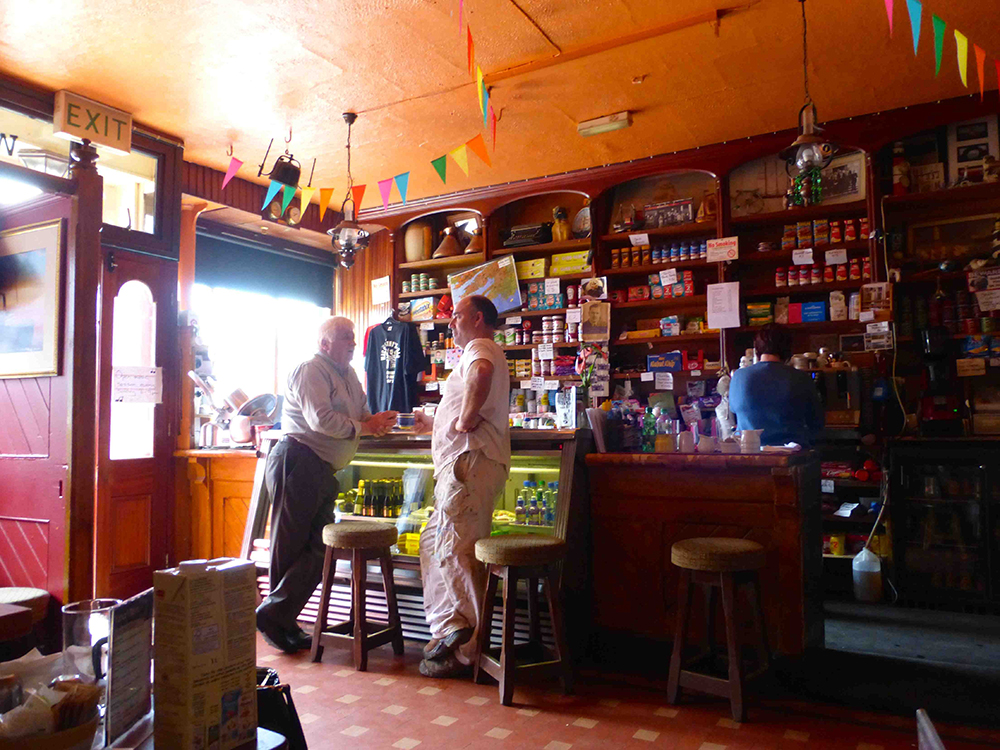
“Let the rain kiss you. Let the rain beat upon your head with silver liquid drops. Let the rain sing you a lullaby.” Langston Hughes (no relation!)
 Joe Hughes has spent over 40 years in hospitality, mainly in hotel management, and, with his earliest experiences having been in food and beverage, his passion for food grew. His work in hotels and restaurants has taken him to London, South Africa, the USA and finally home to Ireland, his first love. Joe is known to many for his work in the 90’s as President of the Irish Hospitality Institute. In more recent years he has worked in tourism and tour guiding - a surprise career change, but one that now gives him the privilege of sharing Ireland’s history, myths, legends, heritage, and more with culturally curious travellers.
Joe Hughes has spent over 40 years in hospitality, mainly in hotel management, and, with his earliest experiences having been in food and beverage, his passion for food grew. His work in hotels and restaurants has taken him to London, South Africa, the USA and finally home to Ireland, his first love. Joe is known to many for his work in the 90’s as President of the Irish Hospitality Institute. In more recent years he has worked in tourism and tour guiding - a surprise career change, but one that now gives him the privilege of sharing Ireland’s history, myths, legends, heritage, and more with culturally curious travellers.
Joe can be contacted by email at: jvhughes1@sky.com
Discovering Irish Food Culture at UCC
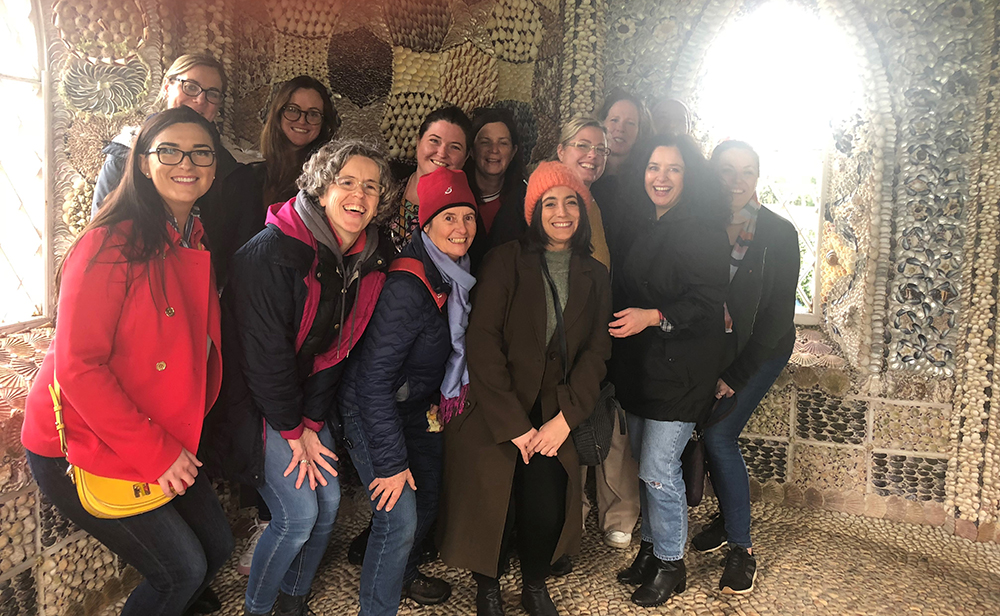
Applications are open for UCC’s Postgraduate Diploma in Irish Food Culture. Recent graduate, food writer Kate Ryan, gives her perspective on why it’s never too late to return to college!
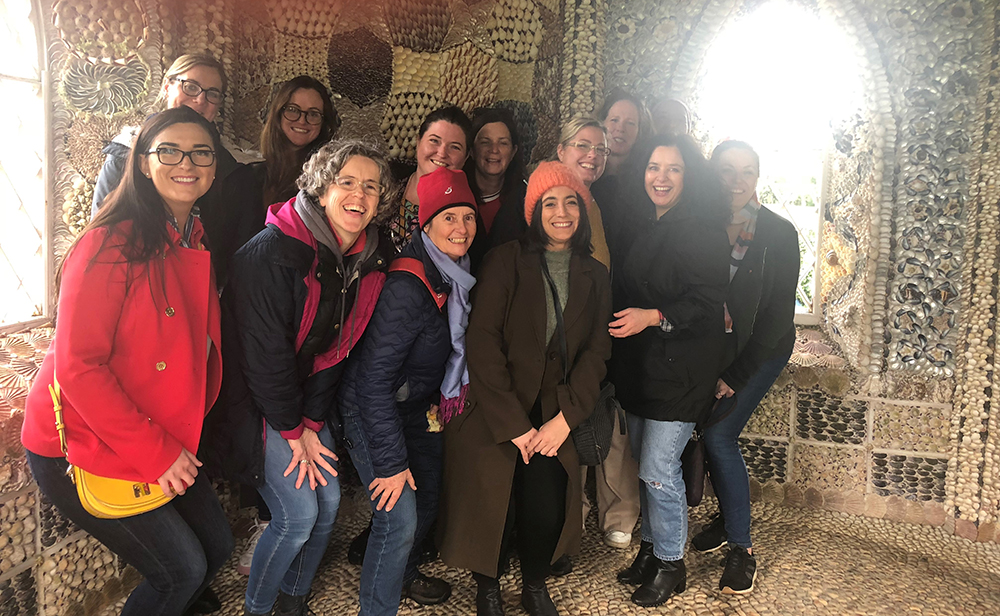
I have just received news I will be awarded a First for my Postgraduate Diploma in Irish Food Culture! I’m delighted, naturally, but also hugely surprised. You see, it had been two whole and fleeting decades since academia and I last parted company, and I had convinced myself there would never be a good time to go back. I mean, what would I study? How could I find the time? Could I see it through the to the end? Who am I trying to convince?
That all changed in 2019 when I signed on the dotted line to begin a new course of study at University College Cork. Little did I realise that doing so would result in one of the most rewarding experiences of my adult life: as a student – a mature student!
The Postgraduate Diploma in Irish Food Culture, (PDIFC), the first of its kind in Ireland, is a trans-disciplinary course that explores the idea of an Irish Food Culture through a diverse range of studies: history, folklore, policy, science, nutrition, philosophy, geography, and literature. It is a two-year course, part-time with one three-hour lecture per week plus a recommended 12 hours for self-guided reading, research, and coursework completion. In addition, four full-day guided workshops and field trips [pre-Covid images supplied] pepper the calendar, usually on Saturdays. The PDIFC sits at point 9 on the NFQ scale – equivalent to a Masters.
Over two years and eight course modules, rarely is the question “What is Irish Food Culture” tackled head on – rather the learning is lateral and expansive, steering you away from simple questions, binary answers and the familiar to encouraging an embrace of the murk: the less simplistic, the complex, and the unfamiliar.
.jpg) The Programme Manager is Regina Sexton, a respected culinary historian, and she teaches the module on Irish Food and Culinary History. The other seven modules are taught by a small army of UCC academics and lecturers, all leaders in their field of research. It is rare to have access to such a rich seam of knowledge, thought, and research - that alone is like an adrenaline shot to the brain! Against this backdrop, students are encouraged to build their own learning experience – like a net cast wide and gradually hauled back filtering, understanding, questioning, positing arguments, building a new foundation for your own new-found knowledge.
The Programme Manager is Regina Sexton, a respected culinary historian, and she teaches the module on Irish Food and Culinary History. The other seven modules are taught by a small army of UCC academics and lecturers, all leaders in their field of research. It is rare to have access to such a rich seam of knowledge, thought, and research - that alone is like an adrenaline shot to the brain! Against this backdrop, students are encouraged to build their own learning experience – like a net cast wide and gradually hauled back filtering, understanding, questioning, positing arguments, building a new foundation for your own new-found knowledge.
Good learning should result in coming away with bigger and better questions than you began with. The PDIFC delivers that in abundance. Because of what I have learned, I want to continue to learn – to read even more, question more.
It also delivers on a rewarding collegial experience, too, and the opportunity to meet new people, like-minded people all brilliant in their own way, and from whom is impossible to not learn. When the course began in September 2019, little did we know six months later, how dramatically the way we learned would change.
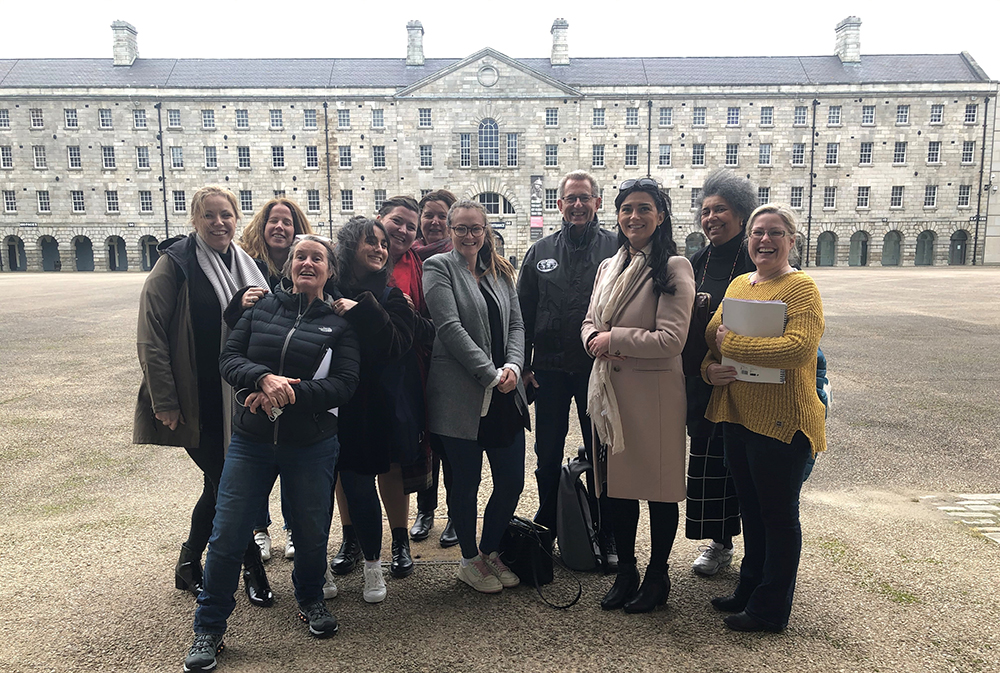
While the country - the world - stopped moving, PDIFC went online and carried on uninterrupted. In hindsight, the sanctuary of learning ensured there was something to focus on, study to get lost in. Logging onto lectures every Tuesday evening became one normal thing in another abnormal week.
Revisiting those questions now that held me back so long, the answers now come easily:
• What would I study? The world and everything in it!
• How could I find the time? It’s hard to find time in the schedule, but it’s there, and you’ll find it.
• Could I see it through the to the end? Dig deep, but never underestimate your tenacity.
• Who am I trying to convince? No-one, I just did this for me.
Applications are open until 27th August 2021, course begins 21st September. Full course information, including fees and how to apply, can be found here: https://www.ucc.ie/en/ace-pdifc/
Kate Ryan, Flavour.ie
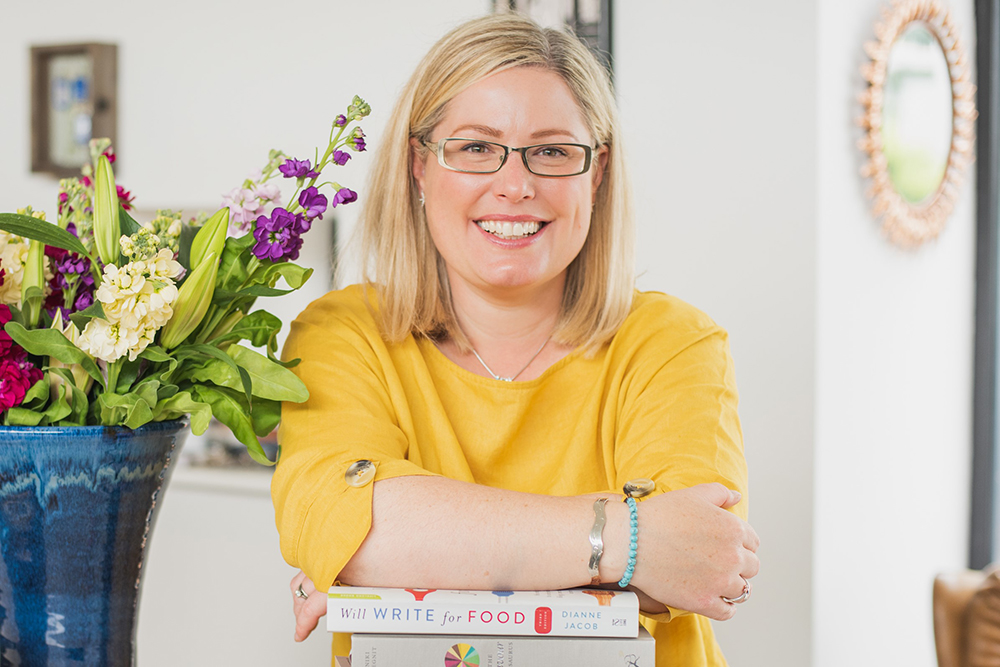
Georgina Campbell Irish Food & Hospitality Awards 2021
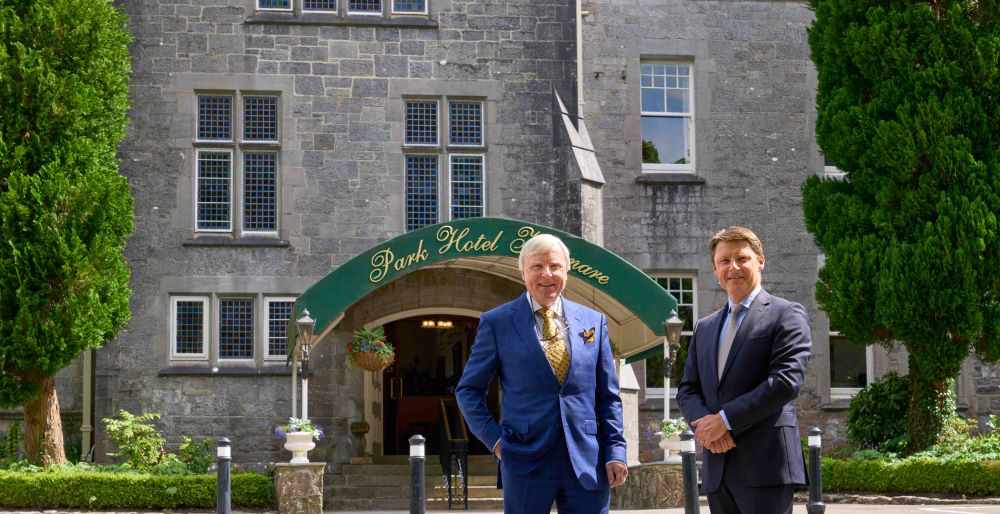
Ireland’s Restaurant, Chef, Hideaway and Pub of the Year announced in ‘Love letter to Irish food and hospitality’
From Ireland’s best hotels, fine dining and seafood to garden stays and the most pet-friendly destination, winners of Georgina Campbell Irish Food & Hospitality Awards 2021
• Chapter One by Mickael Viljanen Restaurant of the Year
• Chef of the Year awarded to Damien Grey of Liath, Dublin
• The Olde Glen, Donegal, announced Pub of the Year
• Alex & Carina Conyngham of Slane Castle receive Ireland’s ‘Movers & Shakers’ Award
• The Twelve, Galway, is Ireland’s Pet Friendly Destination of the Year
• Family Friendly Hotel of the Year is Fitzgerald’s Woodland House & Spa, Limerick
• Newcomer of the Year title goes to Camus Farm Kitchen, Cork
• Five selected for new ‘Happy Place’ Awards
Media Release
Representing the four corners of Ireland, the winners of the 2021 Georgina Campbell Irish Food & Hospitality Awards have been announced (15th September 2021).
Celebrating 23 years in their current incarnation, the Georgina Campbell Awards recognise and honour Ireland’s standard-bearers in food and hospitality in Ireland with particular emphasis, this year, on the industry heroes who have maintained quality and put out the welcome mat with a smile whenever permitted during the pandemic.
Celebrating the bravest and the best
Describing this year’s awards as ‘a kind of love letter to Irish food and hospitality’ Georgina Campbell, one of Ireland’s foremost food and hospitality writers, says that despite everything that we have gone through in the last eighteen months, Ireland’s food, tourism and hospitality is a very exciting and ever-developing story. “I am lost in admiration for all of the brave and dedicated people in the sector who have stretched themselves to the limit to keep their businesses (many of them family owned) going, keep their staff together if at all possible, and provide incredibly creative alternative services to customers ,” said Georgina Campbell.
“Despite the early worries about mass closures, the most surprising thing about the last couple of years is the number of new openings, especially restaurants, cafés and, of course, food trucks – alongside some superb pivoting and diversification, notably the excellent retail operations that many restaurants have developed alongside, or sometimes to replace, the core business. And, although there’s been a lot of complaining about rising prices and falling standards, in the main, standards are holding up better than might be expected. So much so, in fact, that selecting the finalists for these awards was an even more demanding task than usual and it must be emphasised that the few selected for special praise today are just representative of many, many more who are equally deserving of recognition – and we are especially conscious of the challenges that many hotels face, as they may have less options for pivoting than smaller buisinesses On the question of pricing, if quality-led businesses are to be sustainable we must expect to get used to paying fair prices – the alternative is a race to the bottom. And this is a good time to mention that those who have been predicting the end of fine dining in recent years are being proved way off the mark. While there is undoubtedly a swing towards more casual styles, and the pandemic has emphasised that, you have only to look at our Restaurant of the Year and Chef of the Year - among others in this year’s awards selections – to see that the very finest of fine dining is very much alive and doing extremely well, thank you. And it’s providing a strong foundation for the food tourism which will undoubtedly blossom as the pandemic recedes.”
Sustainability, staycations and the great outdoors
Georgina added, “This year, in tune with the times, we have also been looking particularly at sustainable development – a topic which has been focusing many minds of late and the art of reinvention is in top gear. As Niall Rochford, General Manager of Ashford Castle and The Lodge at Ashford Castle, said a while ago, “If 2020 was the year in which we all learned how to pivot, 2021 will be the year of reimagining.” And – as is reflected in our awards selections - it will be reimagining with the experience of the pandemic as a backdrop, creating meaningful experiences for people whose lives have been brightened by staycations, outdoor activities, gardens, pets, baking, community awareness and mutual support in recent months.”
Sourcing and provenance
Speaking about the awards, Georgina Campbell had praise for the improvements in sourcing policies. “The pandemic and the need to support our local communities has made provenance even more important to consumers and it is good top see more establishments highlighting the origin of produce on their menus, thereby supporting Irish suppliers,” said Georgina.
THE SELECTION PROCESS
Georgina Campbell’s Ireland’s rigorous programme of anonymous assessment visits is a year-round process and winners are nominated solely by an independent assessment team.
Full list of winners can be found here.
Blasta Books - Q&A with Kristin Jensen

The brain behind the brand - we talk to cookery editor, and now publisher, Kristin Jensen about her new cookery imprint, Blasta Books
 Q1: As a pandemic project, Blasta Books would take some beating. It has burst onto the Irish food scene like the proverbial blast of fresh air this year - but when did you first come up with the idea and how long was it actually in the making?
Q1: As a pandemic project, Blasta Books would take some beating. It has burst onto the Irish food scene like the proverbial blast of fresh air this year - but when did you first come up with the idea and how long was it actually in the making?
A: I came up with the idea during the summer of 2020, though it’s always been my ‘if I ever won the lotto’ dream to start my own publishing company one day. One of the outcomes of the Black Lives Matters protests that summer was the start of a long-overdue conversation about diversity, inclusivity and representation (or rather, the lack of it) in publishing in general and that trickled down into food media more specifically. These conversations were happening in the US and UK, but I didn’t see them happening in Ireland. As an immigrant myself (I’m originally from the US but have lived in Ireland since 1999) I’ve been increasingly frustrated that the modern, vibrant, diverse food scene in Ireland wasn’t being reflected in the mainstream media, not to mention the outdated, cliched image of Ireland that persists abroad. I also knew that it was almost impossible to get a cookbook deal from traditional publishers since cookbooks are so expensive, and therefore risky, to produce. I was convinced there had to be another way and I hit on the idea of a series of short, small format, illustrated cookbooks. It took a full year between the time I had the idea and when I launched my Kickstarter campaign in June to get the project up and running.
Q2 With their vibrant, colourful design, short titles and - as you put it yourself - being ‘what street food is to restaurants’, the first four Blasta Books convey a strong message about the diversity of modern Ireland. Did that theme influence your choice of the authors you wanted to lay the foundation of the project? Or was it perhaps that the theme developed naturally from the authors themselves?
A: The whole point of the Blasta Books series is to provide a platform for the rich diversity of writers, cuisines and topics that aren’t being published in the mainstream media here and to do it in a fun, approachable, inexpensive way. I think our series 1 books and authors perfectly reflect the voices and faces of modern Ireland: three of our first six authors are immigrants and the authors of book #2 are a gay couple. I will continue to prioritise diversity and new voices and readers can expect a similar mix of authors going forward.

Q3: Your creative director, Jane Matthews, and series artist, Nicky Hooper, have created a stunning brand that will be instantly recognisable from across the floor of a very large bookshop. How did you pick your team and how important was this particular dynamic to your grand plan?
A: I worked with Jane Matthews for several years on the SuperValu Fresh magazine and already knew how talented and hardworking she is and that we work well together. I first came across Nicky Hooper on Instagram (@nickyhooper) and instantly fell in love with her gorgeous watercolours of food. From our very first conversation knew I’d found a kindred spirit and we’ve got on like a house on fire ever since. I’m proud of the fact that this project is being done by only three women. We are a small but mighty team, just like our books.
I had some initial ideas about the overall feel of the books and knew I wanted a nice big chunky font, but Jane steered us towards using one single, iconic image for each book and keeping the colour scheme bold and punchy. Nicky ran with that to brainstorm lots of different options for the covers and then it was a tough process of elimination to choose just one. We also had the advantage of being able to design the covers of the first series all at the same time so that we could make sure they all work together as a family.
Q4: You mention a steep learning curve when talking about bringing the project to fruition. What have you enjoyed most about it so far? And least? Any advice for others on moving that big idea from dream to reality?
A: I’ve worked in publishing as a freelance editor for over 20 years and know that part of the business inside out, but I’ve had to learn a lot about the more technical, behind-the-scenes parts of the industry in a short amount of time, from things like metadata and how important it is in the book supply chain, to working with printers and a distributor.
My favourite part, hands down, has been working more closely with authors from the very start of their publishing journey and developing their books with them. I come away from those conversations positively buzzing from all the creative energy.
My least favourite part has been the nitty-gritty business things like having to look up the different VAT rates charged for books in all the EU countries and getting thrown in at the deep end in how to run an e-commerce website – the kinds of things that you don’t really think about when you dream of starting a publishing company but are all part of the package.
As for making a dream a reality, I mentioned earlier that it took me a year to launch the project. But to be perfectly honest, five or six months of that time was spent doing almost nothing because I was so overwhelmed and thought I needed to have everything figured out before I told anyone about the project. But in the new year I decided to just go for it and reach out to my first four authors, because once I did, it made me accountable to them and I’m one of those people who never likes to miss a deadline or let anyone down if I’ve said I’m going to do something. My attitude was that I’d figure it out as I went along, and so far, so good! I also read two books that were just what I needed at the time and would highly recommend: The Practice by Seth Godin and Dream First, Details Later by Ellen Bennett.
Q5: The Blasta Books series will be made up of short, affordable books - smartly presented but fun, maybe a bit quirky and each with only about 25 recipes. How important was it for you to keep them short and accessibly priced?
A: One of the reasons it’s so hard to get a cookbook deal is that the big, 250-page cookbooks are incredibly expensive to produce. My thinking was that if I could keep the books short and therefore affordable to both publish and to buy, it would be a win for everyone. Readers would get to try something new for the price of a few takeaway coffees and because there are only two dozen recipes, the brief for my authors is that every single one has to be a winner. I’m also hoping that these small books will be a springboard for my authors to go on to publish the bigger, full-size cookbook – which is why I didn’t stop at the Blasta Books series. I founded the Nine Bean Rows publishing company so that I could provide that very pathway for my authors.
Q6 As an editor, you’ve played a key role in the production of leading Irish cookery books for two decades and it will leave a big gap in our national skill set in this area if you step aside - will you keep up some freelance editing, or do you see your future as a full-time publisher now?
A: At the moment I’m still doing a bit of freelance work, but I very much hope that by this time next year I can be working full time on all my Blasta Books and Nine Bean Rows projects. I have so many ideas for books and collaborations that there aren’t enough hours in the day.
Q7: Funding books - even little ones - is always a challenge for small publishers. Did you have any previous experience of the Kickstarter programme and how did it work out for you?
A: I had never run a Kickstarter campaign before, so that was another steep learning curve. There was a lot of work that went into it behind the scenes before it launched, and it was an intense four weeks while it was running. I did debate whether to go the Kickstarter route or just ask the bank for a business loan, but Kickstarter had lots of advantages. Perhaps most importantly, it allowed me to test the market for the project. I was so delighted – and relieved! – at the overwhelmingly positive reception to the idea from day one and humbled that almost 1,000 people funded the books, sight unseen, to make them a reality. I also hope that it inspires other people to look at crowdfunding as a viable option to make their own book a reality.
Q8: Any favourite recipe(s) from the first batch of Blasta Books?
A: Books #3 and #4 are still being written, so I haven’t seen all those recipes yet. But I’ve been making Lily Ramirez-Foran’s pork pibil tacos for years from her blog, but she updated the recipe for her book, Tacos, and it’s even better now. I couldn’t wait for the lockdowns to lift earlier this year so that I could make it for anyone and everyone who came over. I also think the buttermilk fried chicken from the GastroGays’ book, Hot Fat, is the kind of recipe where you’d buy the whole book just to have that one recipe in your repertoire, but I suspect their spice bag recipe might be the one that goes viral. Being able to cook recipes from books before they’re published is one of the perks of the job.
Q9: The new website is brilliant – what was the thinking behind it?
A: I worked with the Ovo Creative Agency to relaunch the Blasta Books website earlier this month, where you can now pre-order any of the first four books or buy the entire series at a discount. We also have some merchandise available: the modern Irish pantry art print that Nicky Hooper created for our Kickstarter campaign as well as a wall calendar and greeting cards that she designed just for us and some fun fridge magnets.
Q10: I notice that you are making a donation of 1% of your net sales to the UN Refugee Agency - how did that come about?
A: I was inspired by authors Jess Murphy and Eoin Cluskey – who are donating all their author proceeds for their book, The United Nations of Cookies, to UNHCR, the UN Refugee Agency – to also give back. Starting from the launch of my new Blasta Books website earlier this month until the end of 2022, I will be donating 1% of all net proceeds of all sales of our books and merchandise to UNHCR.
ABOUT THE BOOKS AND THE AUTHORS
 Blasta Books #1: Tacos by Lily Ramirez-Foran
Blasta Books #1: Tacos by Lily Ramirez-Foran
Lily Ramirez-Foran has spent years sharing how fun, vibrant and convivial Mexican food is and how easy it is to make at home, and what better way to do that than with tacos? But there are tacos, and then there are Lily's tacos. These are the authentic flavours of Mexico, from real corn tortillas to smoky chillies, matched with the best of Irish produce. There is something for everyone here, whether you're a carnivore, vegetarian or vegan. Your taco night is about to get taken up a level.
Lily Ramirez-Foran is the founder of Ireland’s first Mexican boutique grocer and cookery school, Picado Mexican in Portobello, Dublin 2. She’s also the author behind the popular Mexican food blog A Mexican Cook. Lily has been living and cooking in Ireland for 20 years with her Irish husband and business partner, Alan Foran. She’s a woman on a mission to showcase Mexican food beyond its clichés and misconceptions. When not busy with work, Lily can be found in her kitchen experimenting with recipes, writing at her kitchen table and learning to grow food in her tiny urban garden. Shopkeeper, food writer, storyteller, mad dreamer and lover of all things Irish.
 Blasta Books #2: Hot Fat by Russell Alford and Patrick Hanlon
Blasta Books #2: Hot Fat by Russell Alford and Patrick Hanlon
Russell Alford and Patrick Hanlon are fried food aficionados – they are absolutely obsessed with anything that can be put in a deep fryer or a pot full of dripping. They've taken familiar favourites, chipper classics and the flavours we can’t get enough of these days and have created the ultimate version of every recipe, from the perfect chips to spice burgers, corn dogs and Korean fried chicken. Their style is all about fun, casual and approachable food, which is exactly what this book delivers.
Patrick Hanlon and Russell Alford are the food and travel writer duo behind GastroGays. Begun in 2013, GastroGays has grown into an internationally recognised and award-winning brand and website, specialising in food and travel through recipes, features and guides as well as highly engaged social media channels, all served with a unique tone of voice, style and vision. The pair co-produce and present the popular Chew the Fat podcast series and regularly contribute to the media landscape, from appearances on RTÉ radio and Newstalk to writing for The Irish Times, Lonely Planet, RTÉ Lifestyle and other publications, both in print and online. Based just outside Dublin, the pair are also brand ambassadors for the Boyne Valley Flavours region of food and drink producers and venues around their home area of Louth/Meath.
 Blasta Books #3: The United Nations of Cookies by Jess Murphy and Eoin Cluskey
Blasta Books #3: The United Nations of Cookies by Jess Murphy and Eoin Cluskey
Who doesn't love a cookie? But there's more to this book than just a sweet treat. Jess is an official High-Profile Supporter of the UNHCR (the UN Refugee Agency), with whom she works to raise awareness and to advocate for refugees. She will be working with refugees around Ireland to collect and share their recipes for this book. The book will also include recipes from people from up to two dozen different countries who have made Ireland their home. This is a little book with a big heart.
Jess Murphy, the chef and owner at the beloved Kai Restaurant in Galway (kai is the Maori word for food), is well known and highly regarded in the food industry for her work with refugees and her advocacy for women in food. Eoin Cluskey, a carpenter turned baker, is the founder and owner of Bread 41, an organic sourdough bakery on Pearse Street in Dublin with a cult following that puts community at the heart of its work.
 Blasta Books #4: Wok by Kwanghi Chan
Blasta Books #4: Wok by Kwanghi Chan
Born in Hong Kong but raised in Buncrana, Co. Donegal, Kwanghi Chan’s book, Wok, will break new ground as the first Irish-Chinese cookbook to be published. The book will be broken down into eight sections – dumplings, beef, pork, poultry, fish and shellfish, vegetarian, rice and sweet – with three recipes in each section. Kwanghi wants to bring Asian food to a wider Irish audience and this book is just the approachable introduction you need.
Kwanghi Chan, born in Hong Kong, moved to Buncrana, Co. Donegal, when he was eight years old. Kwanghi trained in traditional Chinese cooking in the family restaurant and takeaway, then studied at the Killybegs Culinary College. As soon as he graduated, he ventured further afield. ‘I felt it was important to learn, which I did from chefs such as Ross Lewis, Derry Clarke, Aidan Byrne, Fergal O’Donnell and Martijn Kajuiter. They all taught me crucial lessons, including that ingredients are to be respected, to be creative with, not just used as fuel but also gratification.’ All the skills and lessons that Kwanghi learned have been applied to his own burgeoning culinary empire: Bowls, Bites by Kwanghi food truck and ChanChan Asian Sauces. Regularly featured on Virgin Media TV’s Six O’Clock Show, Kwanghi’s unique culinary style and affable personality make him one of Ireland’s leaders in the Irish food scene.
Cookery Feature - Tradition Stands Strong at the IFWG Annual Food Awards
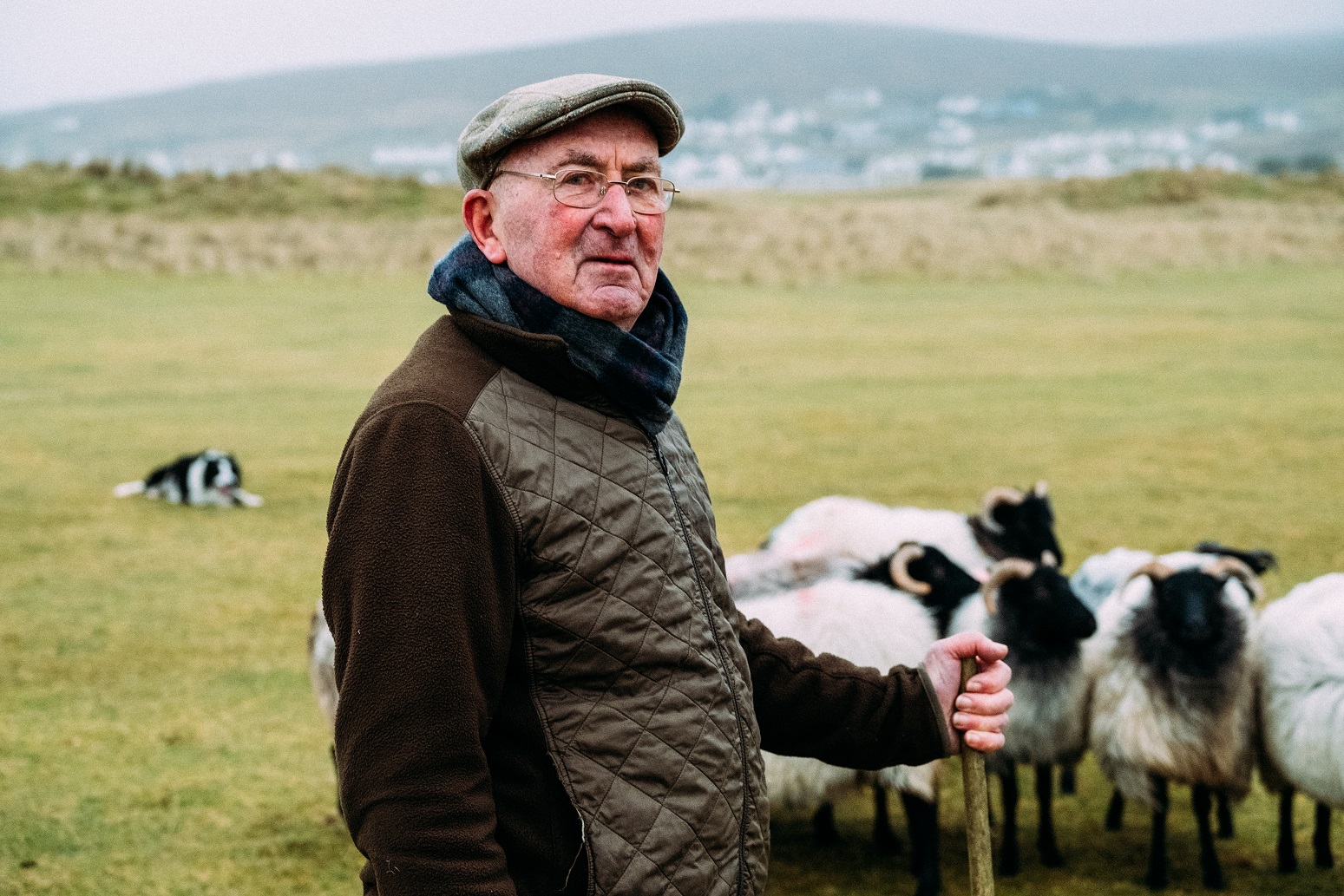
Bringing a beacon of hope and goodness at a time when a shaken world is badly in need of reassurance - and especially about sustainable food and farming - the annual Irish Food Writers’ Guild (IFWG) Awards have been announced. Fiercely independent and going strong since 1994, they are unique. And, as IFWG Chair, Caroline Hennessy, commented: “Passion, hard work and a can-do attitude are core values that the winners of the 2022 IFWG Food Awards have in abundance and the IFWG is proud to recognise the vibrancy and resilience of the Irish food industry - and fittingly, as our announcement coincided with International Women’s Day, five of our eight awards were presented to some of the food industry’s most inspirational women.”
Ireland is blessed with a thriving culinary community and the standard of the country’s artisan food produce is world-class but there is one standout quality that links the 2022 IFWG winners – tradition. “Many of our 2022 winners are traditional products, but with a twist,” said Caroline. “From fishmonger to baker, cheese maker to the Galway duo who have played with the traditional Irish love of tea, innovative producers are putting their own stamp on things, creating something unique and something quite delicious. I believe there has never been a greater appreciation for Ireland’s food producers and the wider food community for what they have achieved over the past two years. Amid lockdowns and restrictions, so many of these businesses and producers managed to adapt to soaring demand for click and collect services, online shopping deliveries, food boxes and food trucks. In many ways, our artisan food community are heroes, bringing not just nourishment and sustenance but comfort and even joy to what was otherwise a very difficult period for so many people.”
ABOUT THE WINNERS
(For full citations, interviews with the winners and recipes please see the lovely 2022 IFWG Food Awards e-zine, which you can check out here)
Food Award: Bread 41, Dublin
After initially training and working as a carpenter, Eoin Cluskey completed the Ballymaloe 12-week cookery course, then founded Bread 41 in 2018. In just a few short years the Dublin 2 bakery has become one of the city's best-known and well-loved artisan companies. At the bakery, each perfectly unique loaf is sustainably made, with Cluskey committed to running a zero-waste, carbon neutral company.
Food Award: Calvey's Achill Mountain Lamb, Mayo
The Calveys have been sheep farmers on Achill Island for over a century and a half. An on-site abattoir means their lambs do not have the stress of travelling to a slaughterhouse but remain on their own territory and in the care of familiar people to the end. The same hands-on care applies to the butchery and the wonderful meats sold at the family’s recently upgraded and relaunched farm shop at Keel.
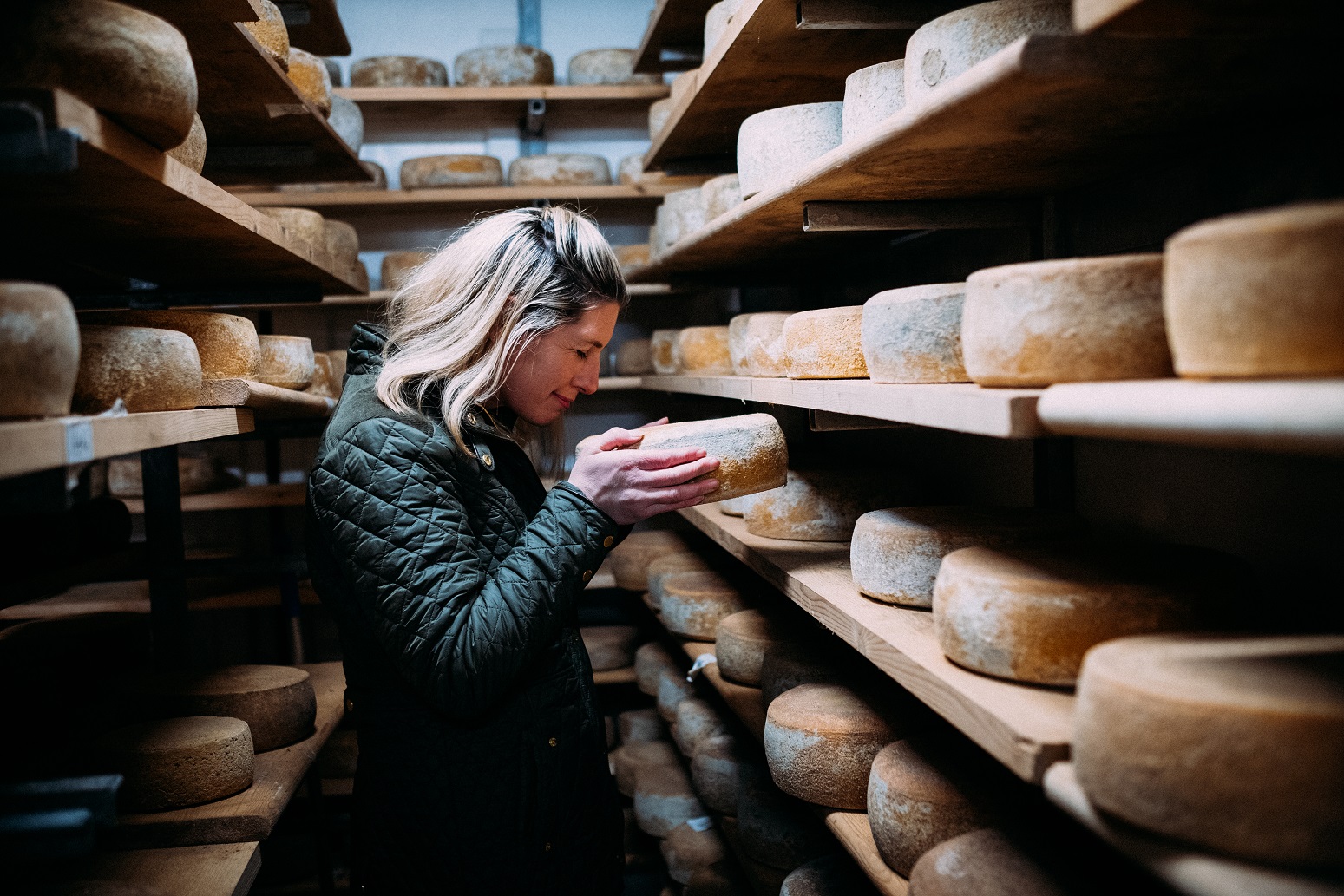
Food Award: Coolfin Cheese, Galway
Coolfin cheese is an Alpine-style hard cheese made in the foothills of the Slieve Aughty mountains in East Galway by Teresa Roche. The cheese is handmade on the family farm using only summer milk, is fully traceable and has a low carbon footprint. It takes up to ten months to mature and has a deliciously smooth texture with distinctively sweet, creamy and nutty flavours and a lingering aftertaste.
Irish Drink Award: All About Kombucha, Galway
Established in 2017 by Emmett Kerrigan and Keith Loftus, two young entrepreneurs from Galway, All About Kombucha brews freshly fermented sparkling tea from organic ingredients. Each bottle of All About Kombucha is hand-brewed from the organic ingredients of tea, sugar and water. The drink is currently available in three core flavours: raspberry, ginger & lemon and carrot & turmeric, which can be found in over 250 stockists across the country and also purchased online.
Notable contribution to Irish Food Award: Stefan Griesbach of Gannet Fishmongers, Galway
Stefan Griesbach came to Ireland in 1997, having worked in fish shops in Paris, and started his business with a single stall outside Sheridan's in Galway. Since then, this stall has evolved into Gannet Fishmongers, known for sourcing the very best quality of locally caught fish. Through its online store, Gannet Fishmongers deliver the freshest of Irish fish nationwide; shoppers see what came in from the boats, place their order and receive it soon after, cold-packed and spanking fresh.
Sustainability Award: Rock Farm Slane, Meath
Owned by the Conyngham family, Rock Farm Slane is an intertwined organic farm and ecotourism business underpinned by sustainable and environmentally-conscious practices. Organic cattle, pigs, hens, turkeys and vegetables are all produced on the 90-acre farm, which is run according to permaculture principles. This is complemented by luxury eco-glamping, which offers visitors a unique opportunity to experience the food, landscape and culture of the Boyne Valley region. An inspiring example of rural business diversity that lead others to follow.
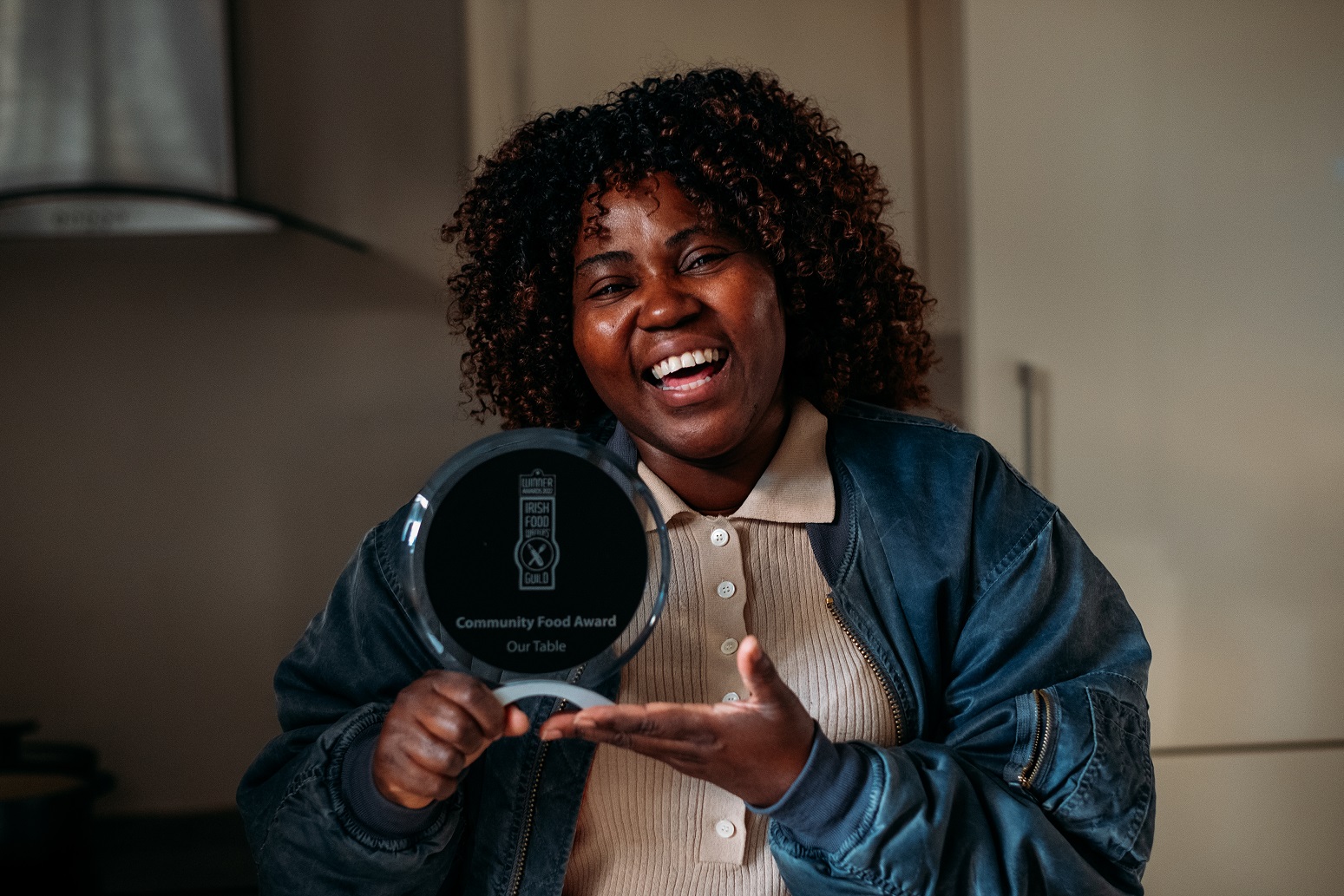
Community Food Award: Our Table, Dublin
Malawian Ellie Kisyombe, a former asylum seeker, met café owner and food writer Michelle Darmody while doing volunteer work in the Irish Refugee Council. Together they set up Our Table, a community-based, social enterprise that uses food as a way to connect, start a conversation and draw attention to the realities of those living in Direct Provision. Our Table started out hosting pop-up and catering events aimed at generating awareness about conditions within the Direct Provision system, while also providing immigrants with employment. During the pandemic, the team focused on getting as much good, wholesome food as possible to those living in emergency accommodation and Direct Provision Centres. Plans for the future include setting up a new Our Table kitchen that will be used for their many projects and ongoing training, cooking and mentoring.
Lifetime Achievement Award: Sally Ferns-Barnes, Cork
Since 1979 Sally Barnes has been perfecting the art of smoking wild Irish fish at West Cork's Woodcock Smokery. Over the last 40 years, Sally has acquired great knowledge on everything that links the ocean and its bounty, smoke curing, and working with nature and natural processes. The Keep, established adjacent to the smokery in 2020, is where that knowledge is shared through masterclasses in the art of curing and smoking wild fish. Sally is the last person in Ireland that exclusively handles wild fish and is a keystone in the age-old traditions of our Irish food culture.
ABOUT THE IRISH FOOD WRITERS’ FOOD AWARDS
The IFWG Food Awards are unique. No business or individual can enter, nor do they know if they have been nominated or shortlisted for an award. The Guild is the sole nominating and decision-making body* whose members nominate and anonymously buy products for tasting. Proportional representation voting is then undertaken at a Guild tasting meeting. Winning products must be produced in Ireland and the main ingredient must be Irish grown or produced.
SOME RECIPES FROM THE WINNERS TO TRY:
KYLEMORE FARMHOUSE CHEESE SCONES WITH COOLFIN
Recipe by Gráinne Mullins of Grá Chocolates
Gráinne Mullins is a chef and the founder of Grá Chocolates; she knows a good product when she finds it, and she’s a fan of using Coolfin in her delicious cheese scones. The flavour and texture of Coolfin make it a wonderful cheese to cook with and these scones have been a big hit in the Kylemore farm shop, where Teresa Roche says that there’s much more demand for the cheese version than plain scones. And rightly so too –it’s not so easy to find a scone that uses cheese of this quality
MAKES 12
360g plain flour
1½ tsp baking powder
¼ tsp black pepper
80g salted butter, plus a little extra for the muffin tin
200g Coolfin from Kylemore Farmhouse Cheese, grated
1 egg
230g buttermilk
Abernethy butter and GranGrans Foods’ red onion marmalade, to serve
Heat the oven to 150°C (130°C fan). Butter a muffin tin, or line a baking tray with a sheet of baking parchment.
Sift the flour, baking powder and black pepper into a bowl, then sift again to make sure the ingredients are thoroughly combined.
Add the butter to the bowl and combine with your fingertips to make breadcrumbs. Sprinkle the grated cheese into the breadcrumb mixture and rub together until evenly distributed. Try not to mix too much as the heat from your hands may start to melt the butter.
Mix together the egg and buttermilk. Make a well in the centre of the dry ingredients and pour in enough of the buttermilk mixture to give a fairly soft but firm dough. Do not pour in all the liquid at once; you may not need it all to get the right consistency.
Weigh the mixture into 120g pieces and roll into balls. Place them into the muffin tin. Alternatively, lightly flour a surface and roll out the dough to approximately 2cm thick. Cut out the scones with a medium cutter (about 8cm) then place on the lined baking tray.
Bake in the oven for 25-30 minutes, or until golden brown and cooked through. Serve with a knob of butter and a spoon of delicious red onion marmalade.
BARBECUED ACHILL MOUNTAIN MUTTON CHOPS
Recipe by Usha Faulkner via Helen Calvey of Calvey’s Achill Mountain Lamb
In Helen Calvey’s words: “This recipe was given to us by a dear friend and customer Usha Faulkner. A lover of genuine food she appreciates the dedication and work that goes into producing our wonderful product. Usha has been a customer of ours for over ten years and regularly travels over from Great Britain to bring our mutton back home, where she only shares it with the very best of friends. Reared in India, she put herself through college in England to become a consultant with the NHS. She is an excellent cook, very passionate about her spices and this recipe is one of her favourites, having learned it from her mother.”
SERVES 4
1 tsp red chilli powder
1½ tbsp tandoori masala
2 tbsp yoghurt
1 heaped tsp garlic paste
1 tsp lemon juice, or vinegar
1 tsp garam masala
½ tsp salt
8 Achill Mountain mutton chops
Butter, for brushing
Thinly sliced red onions and lemon wedges, to serve
Combine the chilli powder, tandoori masala, yoghurt, garlic paste, lemon juice, garam masala and salt in a large bowl.
Mix well and tip in the lamb chops. Use your hands to coat the chops evenly in the mixture.
Let the meat marinade for a minimum of 4 hours in the refrigerator.
Cook on a charcoal barbecue, starting the chops on a hot area to sear the meat, then moving them to a cooler part of the barbecue to cook through. It will take 10-15 minutes on both sides for well cooked meat. Brush with a little butter to avoid the meat drying out.
Serve two chops per person with thinly sliced red onions and a wedge of lemon.
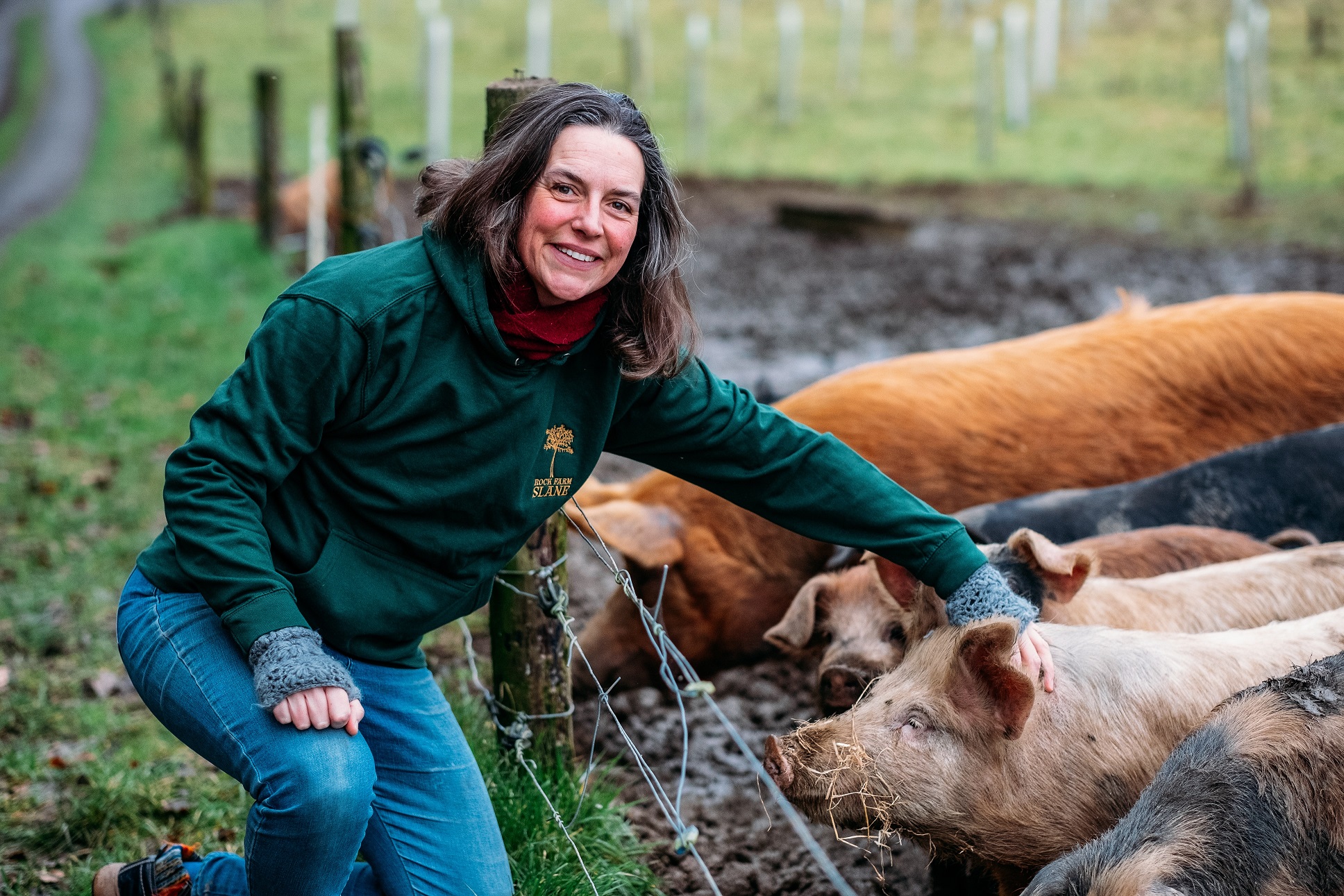
PORK CHOPS WITH CANNELLINI BEANS
Recipe by Tara Walker, with additions from Carina Conyngham of Rock Farm Slane.
Carina likes to use Rock Farm Slane organic pork, apples, rosemary, sage and garlic cloves to make this simple dish and she credits chef and cookery teacher Tara Walker from the East Coast Cookery School “for showing me how to cook pork chops.” Tara says that “good quality pork will render a fair amount of fat when seared and this will mix with the deglazed wine to create an emulsion, which then will be flavoured with the herbs and mashed garlic.”
SERVES 2
2 organic Rock Farm Slane pork chops, on the bone if possible
Sea salt and freshly ground black pepper
Newgrange rapeseed oil
1 x 400g tin of cannellini beans or butter beans
100ml white wine
2 sprigs fresh rosemary, chopped
A bunch of fresh sage, chopped
1-2 garlic cloves, peeled but left whole
1 lemon, halved
2 apples, preferably Bramley or cooking apples, peeled, cored and sliced
A sprinkling of brown sugar
Preheat the oven to 180 ?C.
Season meat on both sides and brush with oil. Rinse beans in a sieve or colander.
Heat a heavy bottomed, ovenproof frying pan until very hot. Brown eat on all sides and remove to a warmed plate. Add wine to deglaze the pan, then add the rosemary, sage and garlic. Tip beans into the pan and return the pork with any juices.
Squeeze lemon juice over the meat and leave the halves in the pan.
Place pan in the oven and cook for 3 minutes, then turn over, spoon the juices over the other side of the meat and return to the oven for a further 2 minutes.
Remove from oven and let meat rest for at least 10 minutes. Before serving, mash the garlic with a fork in the pan to help it mix through the remaining juices.
Meanwhile, heat a little oil in a frying pan over a medium heat. Add apple slices, sprinkle with a little brown sugar, and fry until beginning to brown.
Plate the beans with pork chops on top, cooked sliced apples on the side and the juices spooned over the meat. Serve with a locally sourced mixed salad or mixed orientals, all available at the Rock Farm Slane weekly farmer’s market.
https://www.irishfoodwritersguild.ie/2022-awards/
The Story Behind The Door
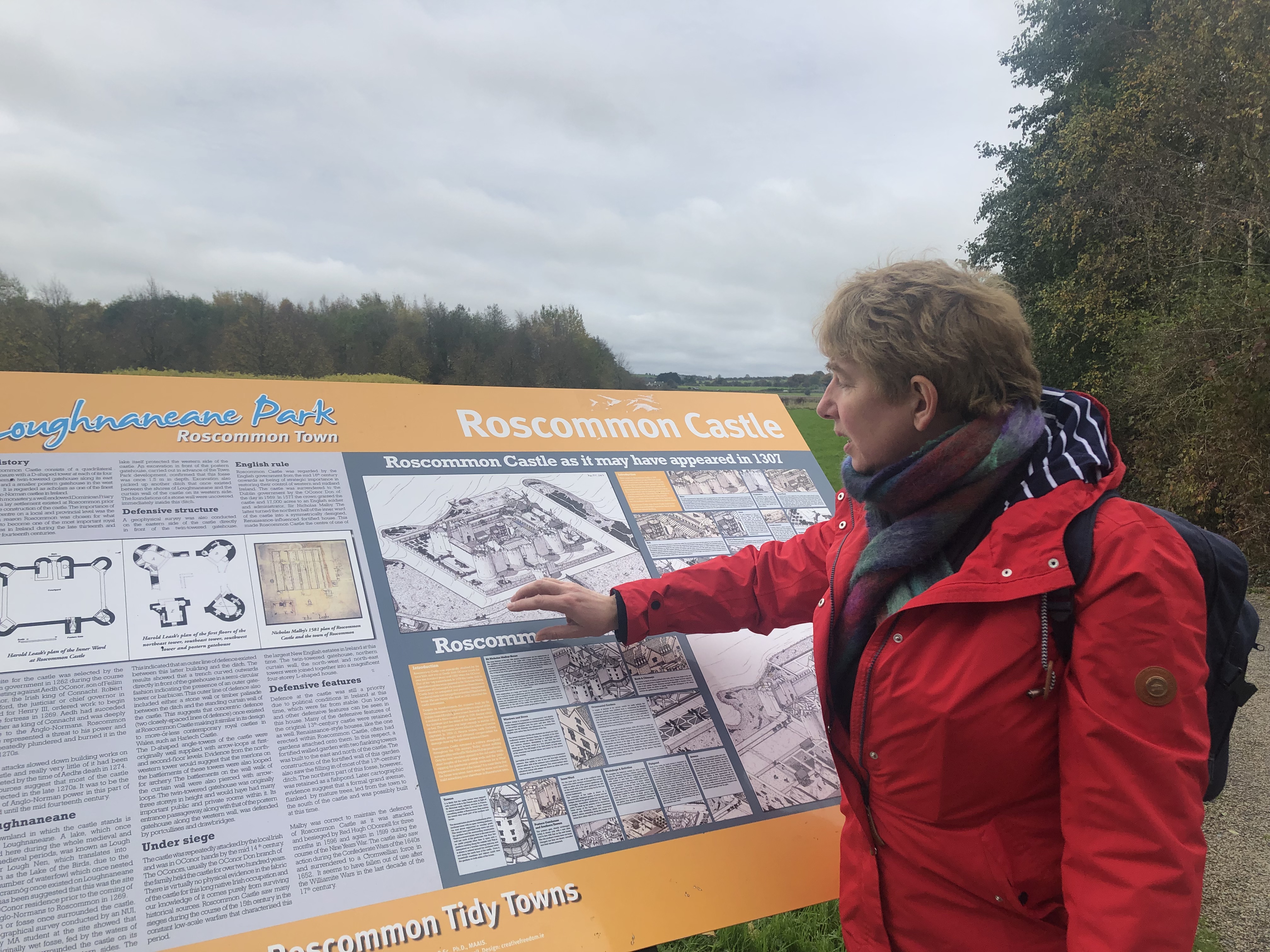
Lesley Emerson of PRWest shares an intriguing story about an extraordinary woman with Roscommon connections who is proudly remembered at a famous destination in the town - and also featured by a local historian who brings the town’s history to life on walking tours. How many other Irish hotels and hospitality businesses must have stories of their own to tell…
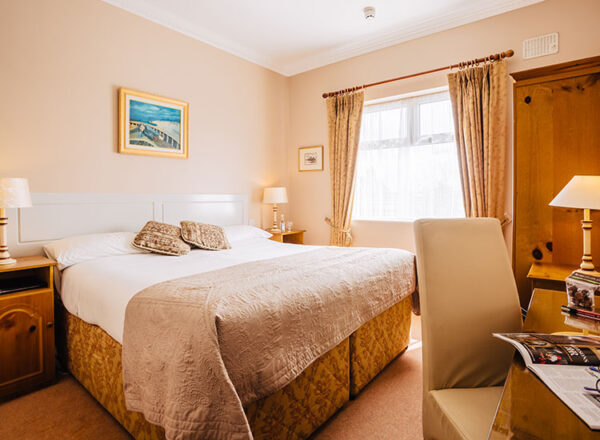 Room 103 at Gleesons Roscommon is intriguingly named The Aleen Cust Room. Who was this lady with such an unusual name – and what is her connection to Roscommon?
Room 103 at Gleesons Roscommon is intriguingly named The Aleen Cust Room. Who was this lady with such an unusual name – and what is her connection to Roscommon?
Aleen Isabel Cust was the first female veterinary surgeon in Ireland or Britain. She was a trailblazer and a strong, resolute woman in both mind and body. Born in Tipperary in 1868 into an aristocratic family, Aleen’s world changed dramatically when she was ten years old and her father, Sir Leopold, died. Her mother, Lady Isabel, moved the family to London and took up a prestigious position in Queen Victoria’s royal household. Tall, big boned and strong, Aleen had entirely different interests, and from an early age was determined to be a vet.
Lady Isabel was equally determined that she should not, and threatened to ostracise her daughter if she followed her dream. Sadly, that is exactly what happened. The Royal College of Veterinary Surgeons (RCVS) in London refused her admission, but in 1895 a new college was opened in Edinburgh by Professor William Williams and Aleen was accepted. Her mother carried through on her threat and Aleen scraped by on a meagre allowance for her five years of study.
She was an exceptional and award-winning student but, despite an attempted legal challenge, the RCVS refused to let her sit the required examination or to qualify stating that it was ‘contrary to long usage and all precedent that women should be admitted to the veterinary profession’. She found herself in a quandary: highly capable and educated but unable to find a position. That’s where the Roscommon connection came in. Professor Williams knew a vet in Athleague, Roscommon named William Byrne and with a fine testimonial and letter of recommendation from the Professor, he agreed to employ the young lady.
Getting acceptance in Roscommon was also a challenge with dubious farmers and the parish priest castigating her from the pulpit. However, her ability began to change impressions and even the priest was convinced when she saved the life of one of his cows. Aleen and William Byrne proved to be an impressive veterinary team, especially as equine vets. Aleen applied for and, on a vote of 14 to 10, secured a part time post of veterinary inspector with Galway County Council. Once again controversy arose from the RCVS, and as a compromise she was termed ‘inspector’.
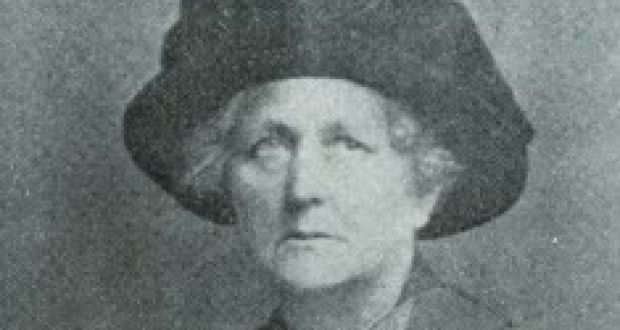 Aleen’s story did not finish there, she joined the war effort during World War 1, first purchasing horses for action and then driving in her own car to the front in France to volunteer as a vet with the Army Veterinary and Remount Service.
Aleen’s story did not finish there, she joined the war effort during World War 1, first purchasing horses for action and then driving in her own car to the front in France to volunteer as a vet with the Army Veterinary and Remount Service.
In the post-war years things changed for the better in terms of equality between the sexes and in 1919 the all-important Sex Disqualification Act was passed. The RCVS could no longer refuse her membership and eventually in 1922 she received her diploma, a mere 22 years after completing her veterinary course.
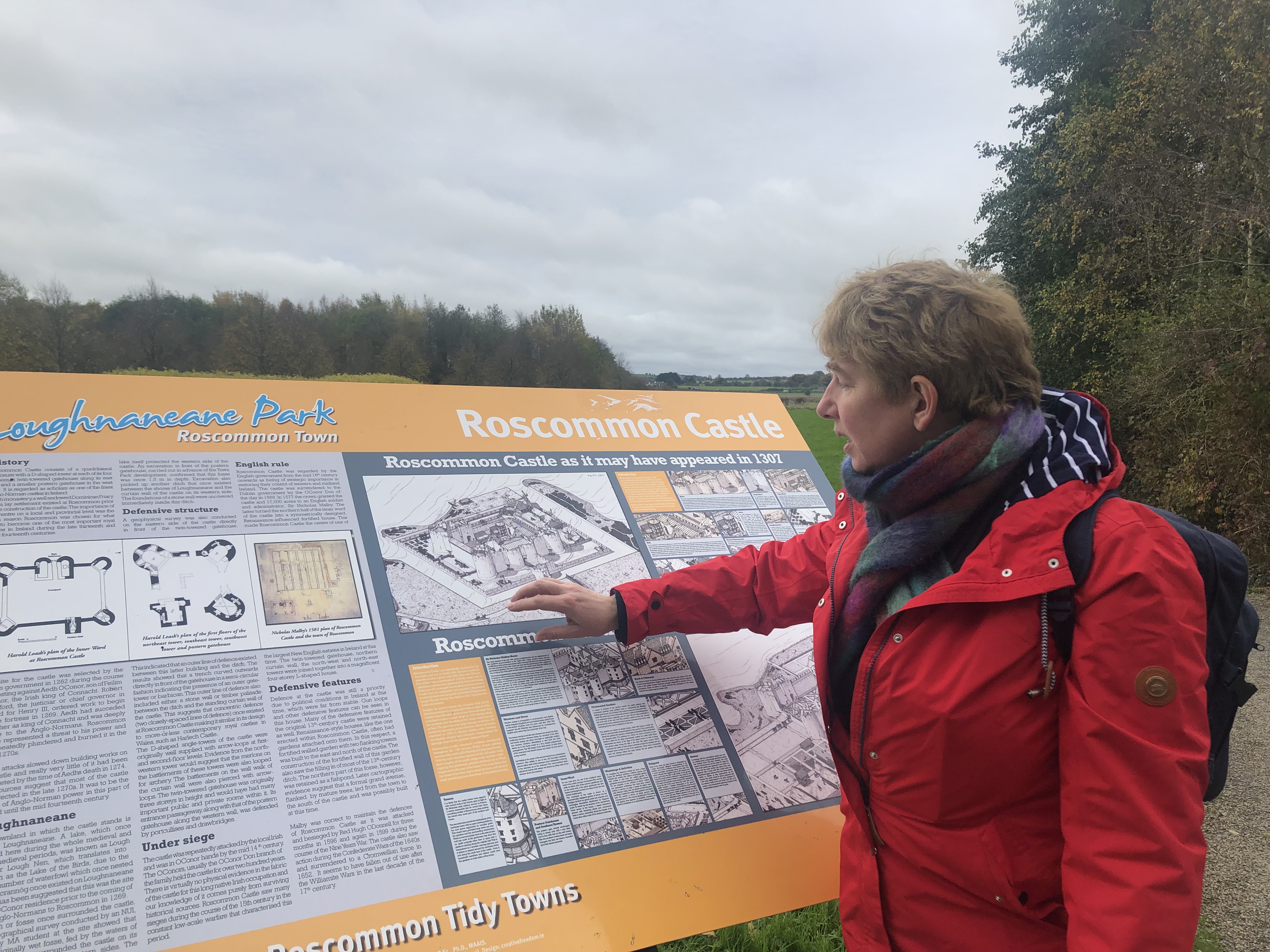 She retired to the New Forest in Hampshire around that time and lived surrounded by her beloved horses and dogs. In declining health, possibly because of her war activities, she went to Jamaica in 1936 to spend the winter with friends in a warmer climate. Sadly, she died suddenly three weeks later following a heart attack (and allegedly just 20 minutes after treating a local dog). Aleen Cust was just eight days short of her 69th birthday.
She retired to the New Forest in Hampshire around that time and lived surrounded by her beloved horses and dogs. In declining health, possibly because of her war activities, she went to Jamaica in 1936 to spend the winter with friends in a warmer climate. Sadly, she died suddenly three weeks later following a heart attack (and allegedly just 20 minutes after treating a local dog). Aleen Cust was just eight days short of her 69th birthday.
The veterinary surgeon William Byrne who believed in Aleen and made her career possible, is buried in the Church of Ireland graveyard in Roscommon town. Local historian and tour guide Marie Gillooly brings these and many more stories to life during her lively historical tours of Roscommon. While making a very comfortable base to explore the area, Room 103 at Gleesons Roscommon may not seem unusual - but what an extraordinary story it recalls. Book a tour with Marie next time you’re up that way.
2022 Georgina Campbell Irish Food & Hospitality Awards
.jpg)
Ireland’s Restaurant, Chef, Hideaway and Pub of the Year announced in end-of-year celebration of Irish food and hospitality
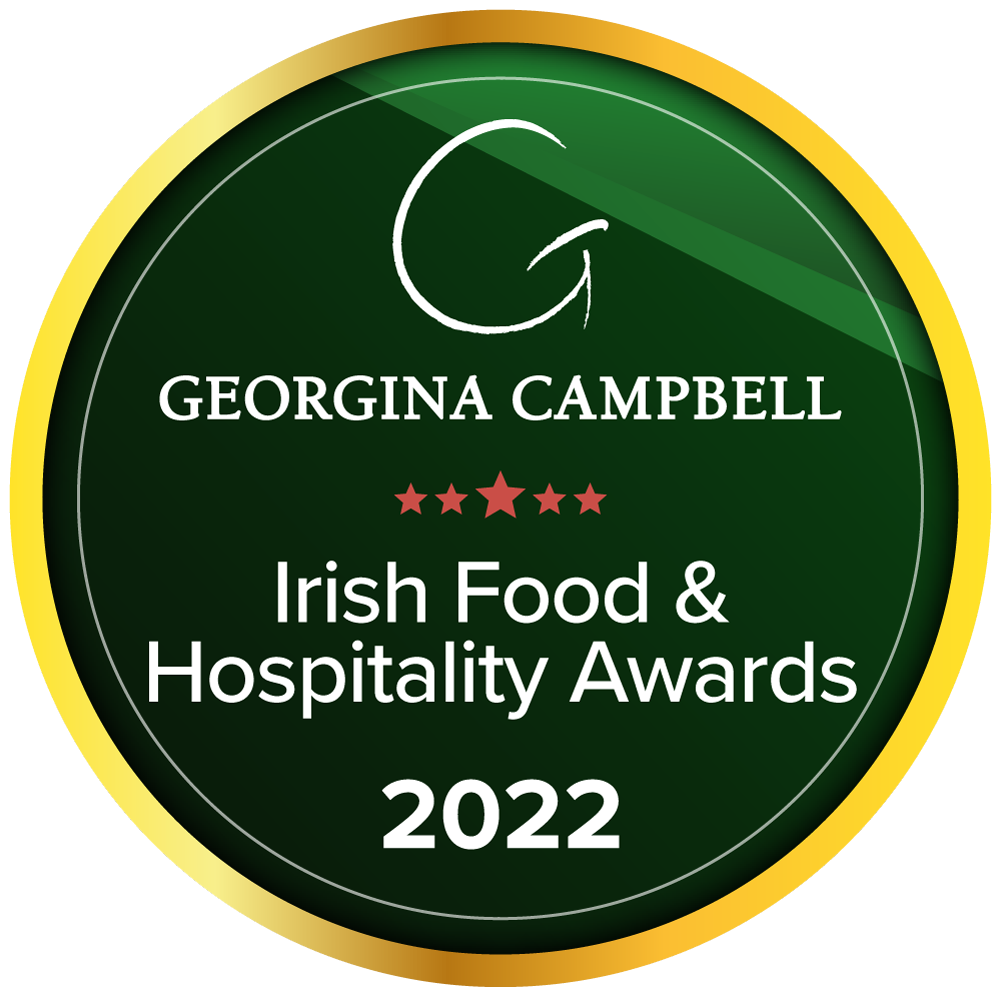
From Ireland’s hospitality leaders, best hotels, fine dining and seafood to casual dining favourites and the most pet-friendly destination, winners of Georgina Campbell Irish Food & Hospitality Awards 2022 are announced
• Richard Corrigan is hailed Ireland’s Hospitality Hero
• Niall McKenna, James Street South Group, Belfast, receives the ‘Movers & Shakers’ Award
• Lignum, Co Galway is Restaurant of the Year
• Chef of the Year awarded to Garrett Byrne Campagne Restaurant Kilkenny
• Cronin’s Pub, Crosshaven, Co Cork, announced Pub of the Year
• Carbery Cottage Guest Lodge, West Cork is Ireland’s Pet Friendly Destination
• Family Friendly Hotel of the Year is Doonmore Hotel Inishbofin Co Galway
• Newcomer of the Year title goes to Alumni Kitchen Table & Rooms Co Kildare
• ‘Happy Place‘ Award for Gaz Smith, Michaels & Big Mikes, Co Dublin
• Six selected for this year’s special Casual Dining awards group
28th December 2022: Representing the four corners of Ireland, the winners of the 2022 Georgina Campbell Irish Food & Hospitality Awards have been announced.
Celebrating 24 years in their current incarnation, the Georgina Campbell Awards recognise and honour Ireland’s standard-bearers in food and hospitality in Ireland with particular focus, this year, on those who have maintained standards across the board in the face of post-pandemic energy and staffing crises, among many other challenges – and the brave newcomers who, against the odds, continue to delight with inspiring new businesses.
.jpg)
Niall McKenna (left) with Cathal Duncan (centre), Waterman House Cookery School chef, and Aaron McNeice (right), new head chef at Waterman
Flying the flag for excellence - celebrating our true professionals
This year in hospitality could probably be seen as something of a triumph of hope over expectation. Despite everything we have gone through in recent years, Ireland’s food, tourism and hospitality continues to be an exciting and ever-developing story. Widespread closures were predicted as we came out of the worst part of the pandemic early this year, but the sheer resilience of the industry in the face of massive challenges is extraordinary. There have been losses and those business are much-missed, especially when family-owned, but the big surprise is not only how well many are coping, but how many exciting new businesses continue to open. Far from just surviving, the emphasis for many is now on ‘Recover, Recreate & Rebuild’ and it is great to see..
And, although a tendency towards rising prices and falling standards is an inevitable consequence of financial challenges and staff shortages, the determination of many true professionals to keep flying the flag for excellence at all levels is reflected in this year’s award selections. At the top end we see this in establishments like our Restaurant of the Year and Chef of the Year – one recently opened, the other an industry stalwart, both proving that fine dining is still very much alive and well – but we have also focused especially on casual dining this year, as mid-range quality is especially relevant to diners in these straitened times. Interestingly however – perhaps still reflecting pent-up appetite post-pandemic - the demand for luxury travel is very high, with visitors constantly requesting luxury properties including top five star hotels, private drivers, one-off experiences, golfing, and country activities like game shooting. And, of course, even the most privileged travellers need the smaller experiences as well as the grand stays (of which the gorgeous new Cashel Palace Hotel is already becoming a favourite destination), so quality in smaller establishments like cafés and bakeries is appreciated by such visitors as much as by discerning domestic travellers and diners.
Sustainability
This year, we have again been looking particularly at sustainable development – a topic which is now focusing minds mightily and the art of reinvention is in top gear. As Niall Rochford, General Manager of Ashford Castle and The Lodge at Ashford Castle, said last year, “2021 will be the year of reimagining”. It was, and thankfullyit has been a strongly growing trend throughout 2022. And, encouragingly - as is reflected in our awards selections - it is reimagining with the experience of the pandemic as a backdrop and a sense that we can not only do things differently, but also very much better.
Sourcing and provenance
Ongoing improvements in sourcing policies have been noted all around the country this year and it’s pleasing to see the Eat Local aspirations become more of a reality. The pandemic and the need to support our local communities has made provenance even more important to us all and it is good to see more establishments highlighting the origin of produce on their menus, thereby speeding up the move towards greater sustainability as well as supporting Irish suppliers and growing the future of Ireland as a food tourism destination.
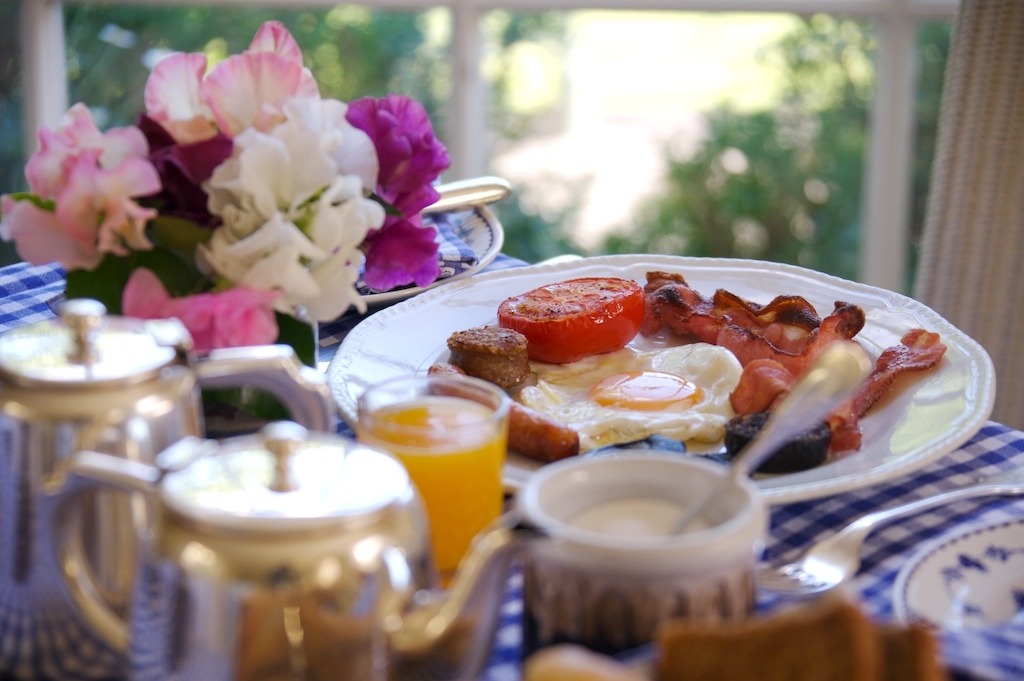
The Irish Breakfast
With its social distancing requirements and a ban on the buffet, the traditional Irish Breakfast as we know it virtually disappeared during the pandemic. But it is making a comeback and we have highlighted a few of the best in this year’s awards selection - and hope to bring back our popular standalone Irish Breakfast Awards next year.
THE SELECTION PROCESS
Georgina Campbell’s Ireland’s rigorous programme of anonymous assessment visits is a year-round process and winners are nominated solely by an independent assessment team.
Media inquiries: Georgina Campbell, Editor, Georgina Campbell’s Guides
E: info@ireland-guide.com
IRISH FOOD WRITERS� GUILD CELEBRATES 30 YEARS OF FOOD AWARDS
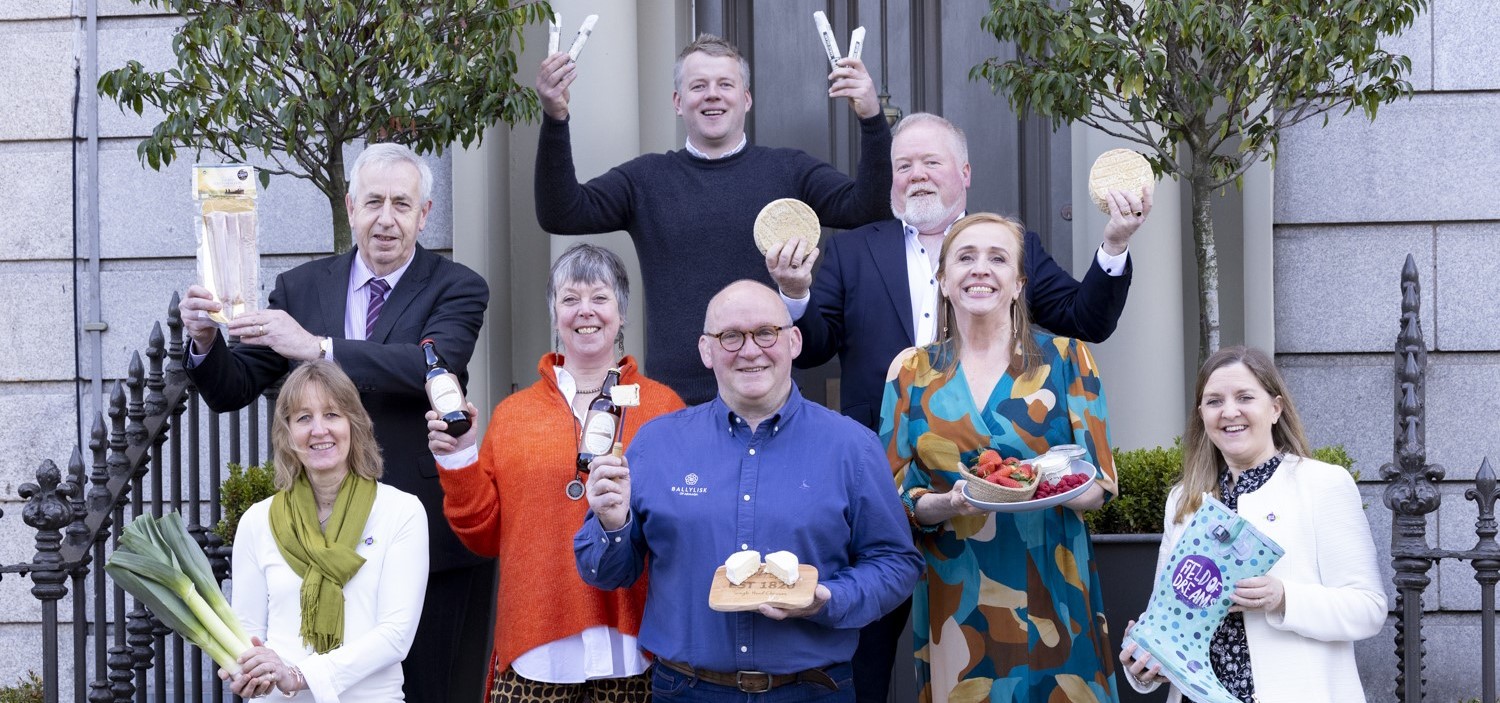
IRISH FOOD WRITERS’ GUILD CELEBRATES 30 YEARS OF FOOD AWARDS WITH SPOTLIGHT ON CHEESE, EEL AND ALE AT 2023 AWARDS
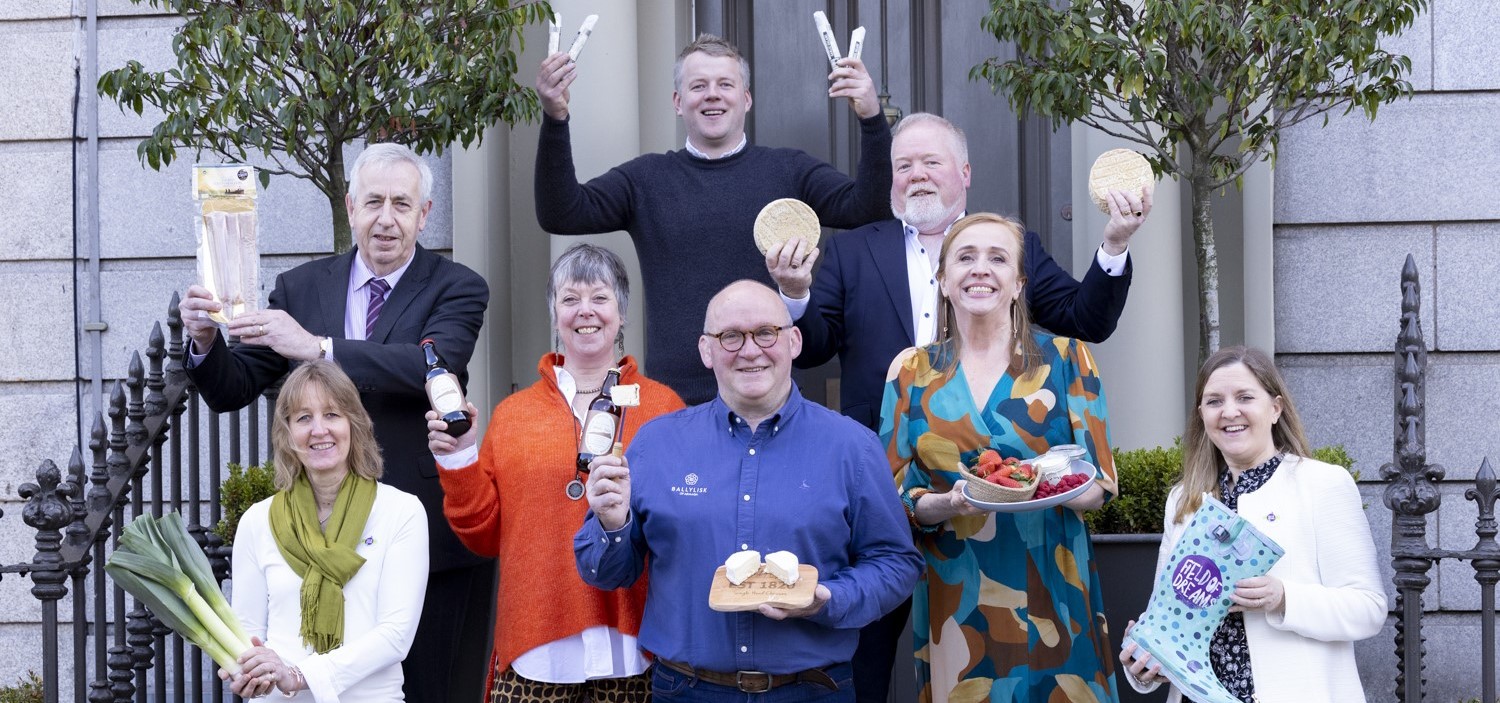
March 2023: From eel and ale and sheep’s milk yogurt to eco-friendly pig farming, the winners of the 30th Irish Food Writers’ Guild Food Awards are a diverse group that represent a commitment to provenance, sustainability, quality and flavour above all else.
With just eight prestigious awards presented, the biggest winner of the day was Irish cheese, with Ballylisk of Armagh, Gabriel Faherty of Aran Island Goats’ Cheese and brothers, Kevin and Seamus Sheridan of Sheridan’s Cheesemongers all picking up awards at the 2023 Irish Food Writers’ Guild (IFWG) Food Awards.
Speaking about this year’s awards, Caroline Hennessy, chair of the IFWG said: “Since the Food Award’s inception, each winner has been chosen independently and anonymously by IFWG members, recognising the best in Irish food by shining a light on smaller producers who might otherwise slip under the radar. From traditional products of the highest quality to new innovations, this year’s winners exemplify what is so exciting about Ireland’s food and drink industry right now.”
The winners of the 2023 Irish Food Writers’ Guild Food Awards are:
1. Food Award: Smoked Lough Neagh Eel, Co Antrim
2. Food Award: Velvet Cloud Sheep's Milk Yogurt, Co Mayo
3. Food Award: Ballylisk of Armagh, Co Armagh
4. Irish Drink Award: Beoir Chorcha Dhuibhne for Béal Bán, Co Kerry
5. Outstanding Contribution to Irish Food: Gabriel Faherty, Aran Island Goats’ Cheese, Co Galway
6. Environmental Award: The Wooded Pig, Co Meath
7. Community Food Award: Field of Dreams - Down Syndrome Cork, Co Cork
8. Lifetime Achievement Award: Kevin and Seamus Sheridan, Co Galway
.jpg) Three decades on from the first IFWG Food Awards, Caroline Hennessy took a moment to celebrate how the industry has evolved and how this has been reflected in the Food Awards each year: “When the IFWG Food Awards began in 1993, it was with the aim of promoting and celebrating Ireland’s indigenous food producers and, as Ireland’s artisan food scene has developed and flourished, our core principles have remained true.
Three decades on from the first IFWG Food Awards, Caroline Hennessy took a moment to celebrate how the industry has evolved and how this has been reflected in the Food Awards each year: “When the IFWG Food Awards began in 1993, it was with the aim of promoting and celebrating Ireland’s indigenous food producers and, as Ireland’s artisan food scene has developed and flourished, our core principles have remained true.
“Guild members have always shared a passion for nurturing a proud and vibrant Irish food culture. Thirty years on from those first awards, we are fortunate to live in a country where there is more attention paid to the food we eat, to who is producing it and how it is produced.
“Many of the winners from the early years are still familiar names today, proof of their enduring quality and we have no doubt that this year’s cohort of winners will continue that legacy.”
Una Fitzgibbon, Director of Marketing at Bord Bia, which sponsors the IFWG Food Awards, said: “Bord Bia is delighted to support The Irish Food Writers’ Guild as it consistently highlights the outstanding quality, craftsmanship and innovation in Ireland’s artisan food industry through these awards. Now in their 30th year these awards have honoured those in the sector that take ingenuity and entrepreneurship to the next level. Congratulations to all those involved in these prestigious food awards and, of course, to the very deserving winners.”
About the winners
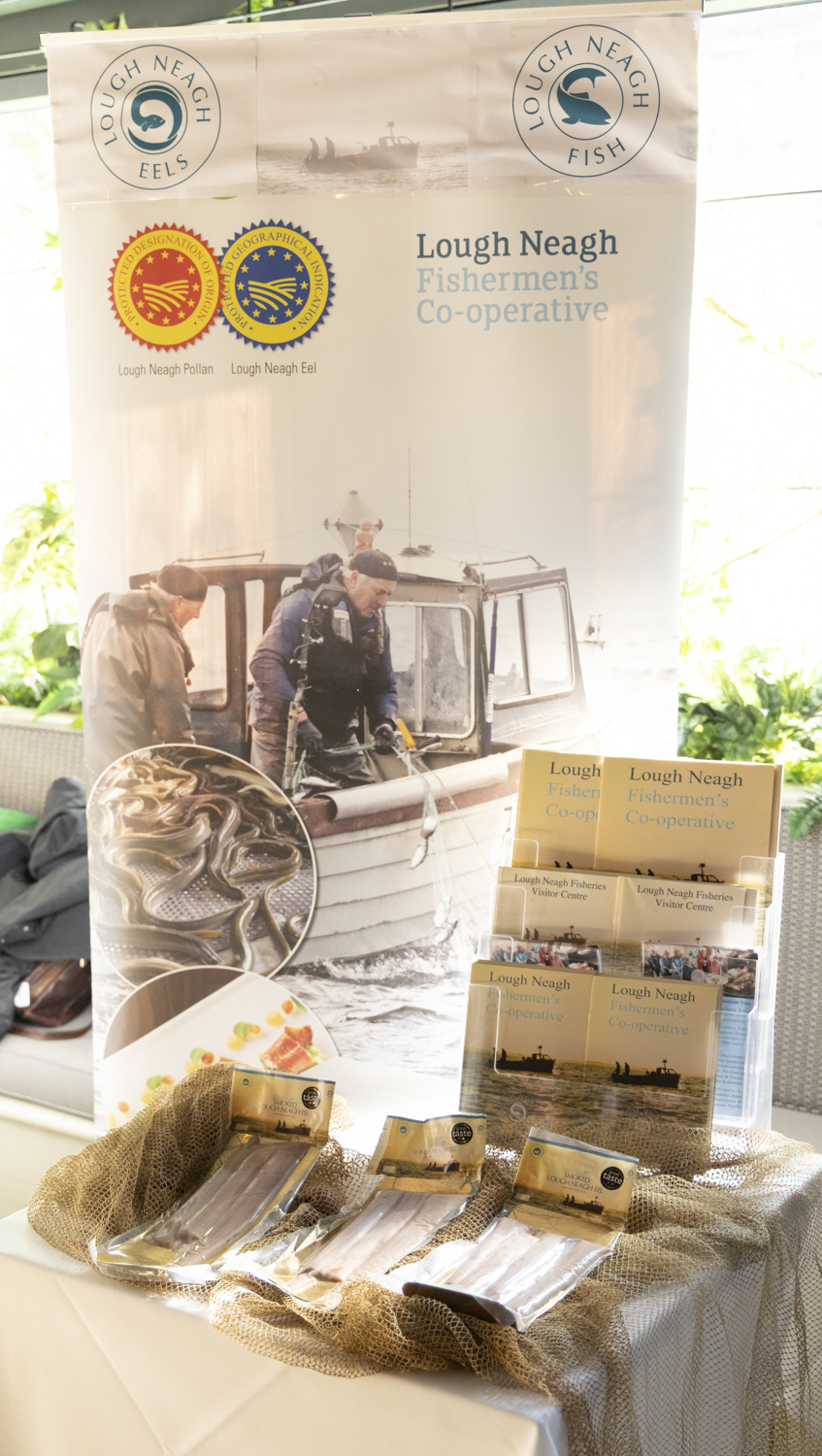 Irish Food Award - Smoked Lough Neagh Eel
Irish Food Award - Smoked Lough Neagh Eel
A Lough Neagh eel is a curious thing. Born in the Sargasso Sea, the young elvers gradually make their way across the wild Atlantic to mature in the largest freshwater lake on the island of Ireland. It’s a unique habitat and one which ensures that Lough Neagh eels are renowned for their flavour and texture.
In 1965, Lough Neagh Fishermen’s Co-Operative was set up to safeguard the traditional methods of catching eels. In 2011, Lough Neagh eel joined an illustrious line-up of foods such as Champagne, Gorgonzola and Parma ham when it was awarded PGI (Protected Geographical Indication) status by the EU. In line with careful conservation guidelines, the Co-Operative now catches and processes around 220 tonnes of Lough Neagh Eel annually. A select few are smoked and it is this smoked Lough Neagh eel that wins a 2023 IFWG Food Award.
 Irish Food Award -Velvet Cloud Sheep’s Milk Yogurt
Irish Food Award -Velvet Cloud Sheep’s Milk Yogurt
There’s something ethereal about Velvet Cloud Sheep’s Milk Yogurt. “Nothing added, nothing strained away,” the label says, just the pure, natural goodness of sheep’s milk from an almost 400-strong flock on the Flanagan family farm near Claremorris, Co Mayo. Nutritionally, it punches above its weight with a higher-than-average protein yield, alongside probiotics and live cultures. Eaten on its own, the yogurt is a pleasure in itself, but it performs magical things in sauces, marinades, drinks, bakes and desserts.
 Irish Food Award - Ballylisk of Armagh
Irish Food Award - Ballylisk of Armagh
Ballylisk's range is a real taste of Armagh. Mark Wright, one of the fifth generation of the Wright family, who grew up on the family farm at Ballylisk, Co Armagh, makes Ballylisk's Triple Rose. This white mould ripened, single-herd, triple cream cheese was Armagh's first farm-produced cheese. Since developing and launching the flagship Triple Rose, Ballylisk has gone on to make two more gorgeous cheeses. There is also a range of accompaniments, notably a balsamic Bramley apple chutney, to complement the cheeses.
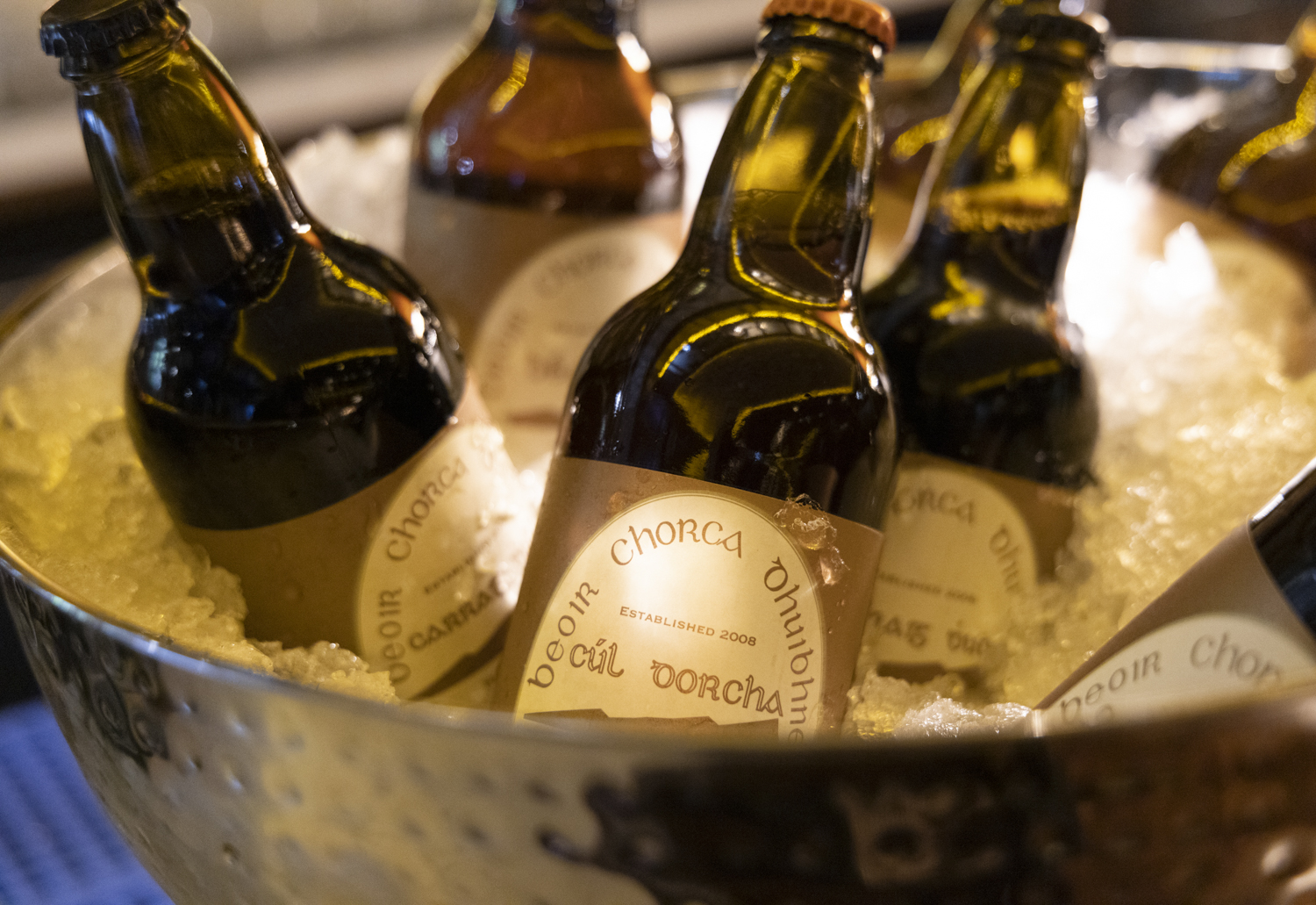 Irish Drink Award - Béal Bán from Beoir Chorcha Dhuibhne
Irish Drink Award - Béal Bán from Beoir Chorcha Dhuibhne
Adrienne Heslin is one of Ireland's early craft beer innovators, founding Beoir Chorca Dhuibhne, also known as West Kerry Brewery, in 2008 in the garden of her pub, Tig Bhric, in Ballyferriter on the Dingle Peninsula. Beoir Chorcha Dhuibhne was the first brewery in Kerry and the first in Ireland to be founded and managed by a woman. With a small 800-litre kit and using water from 150 feet below the brewery, this is true craft brewing that has an intense connection with its terroir. Besides Béal Bán, which is a brilliant golden ale, Adrienne and her team now have 17 beers in their portfolio.
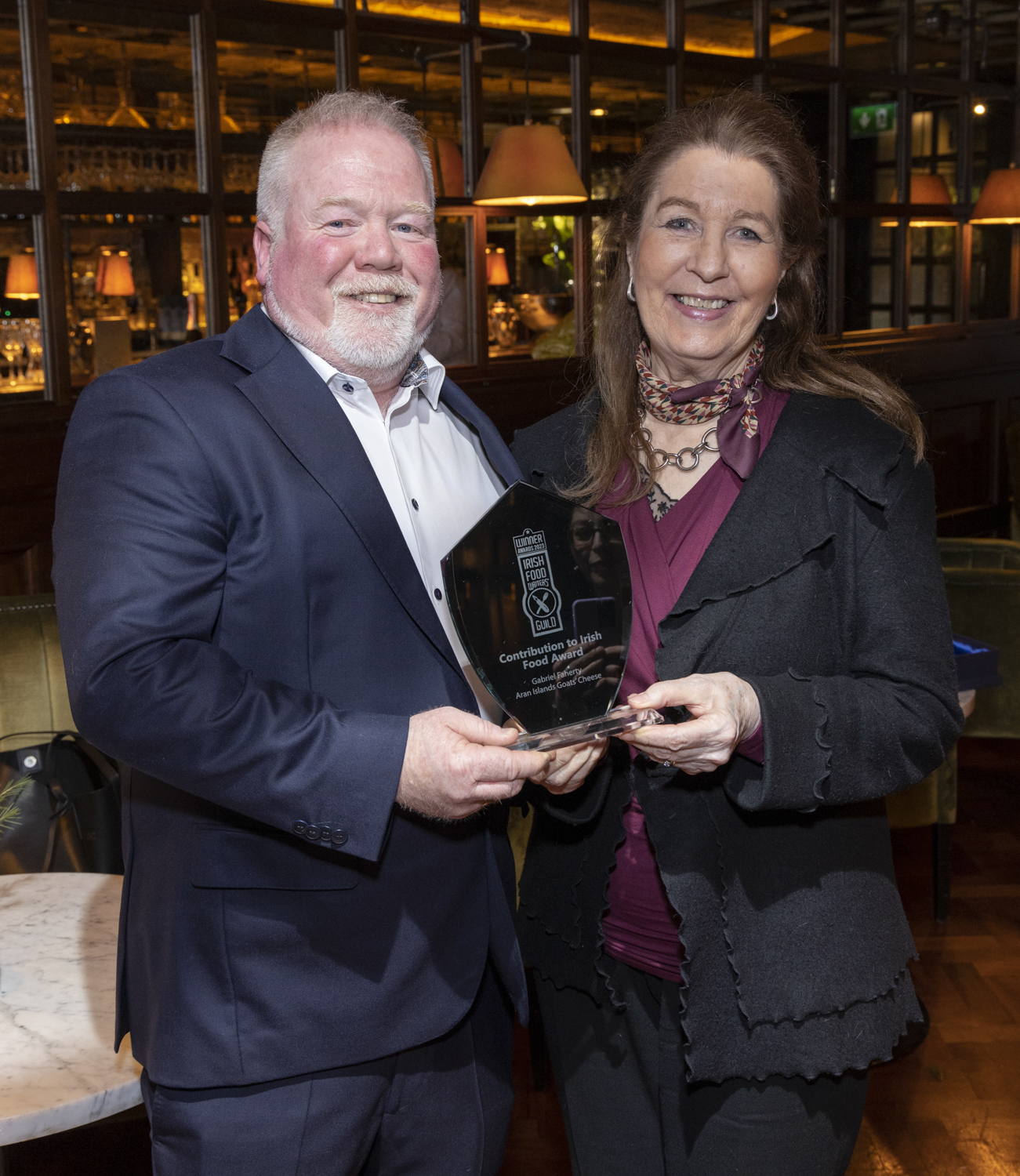 Notable Contribution to Irish Food Award - Gabriel Faherty of Aran Islands Goats’ Cheese
Notable Contribution to Irish Food Award - Gabriel Faherty of Aran Islands Goats’ Cheese
Gabriel Faherty is a born and bred Aran Islander who started his cheese journey after his wife bought him a cheese-making course as a birthday present. When he decided to buy a herd of frisky goats, Aran Islands Goat's Cheese – Cáis Gabhair Árann – was born.
In 2021, Gabriel set up Aran Food Tours and combines his cheese production with bespoke tours on the history, culture and food of Inis Mór. Gabriel is the very definition of a seanchaí, a storyteller, and his deep knowledge of the island coupled with his passion for food makes him a real food hero and a marvellous ambassador for the Aran Islands, Galway County and beyond.
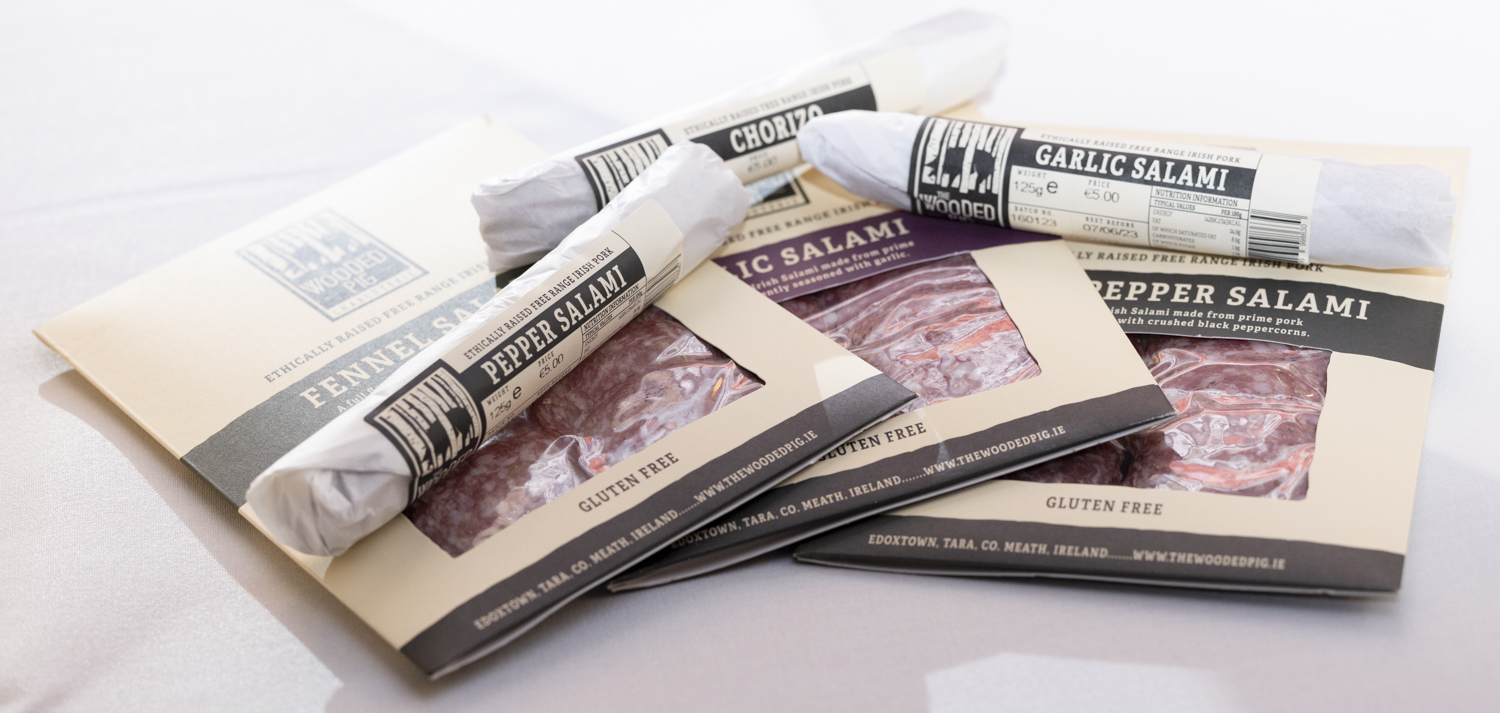 Environmental Award - The Wooded Pig
Environmental Award - The Wooded Pig
Eoin Bird established the Wooded Pig in 2016 on his family-run farm in the Boyne Valley in Tara, Co. Meath, where he and his team produce ethically raised free-range Irish pork charcuterie.
Eoin values the importance of seasonal, ethically produced food and its provenance. He and his artisan team practise ethical and regenerative agriculture not only to craft the best possible food produce, but also to ensure a nature-friendly farming network. The pigs roam freely among ash, oak and beech trees, allowing them plenty of shade in the summer and endless mud to bathe and dig in when it rains.
Curing meat is a long process involving butchering, spicing and drying. These age-old traditions are carried out on the grounds of the farm, thus ensuring full traceability, the highest possible food production standards and reduced food miles. It all makes for very happy pigs and delicious, hand-crafted charcuterie.
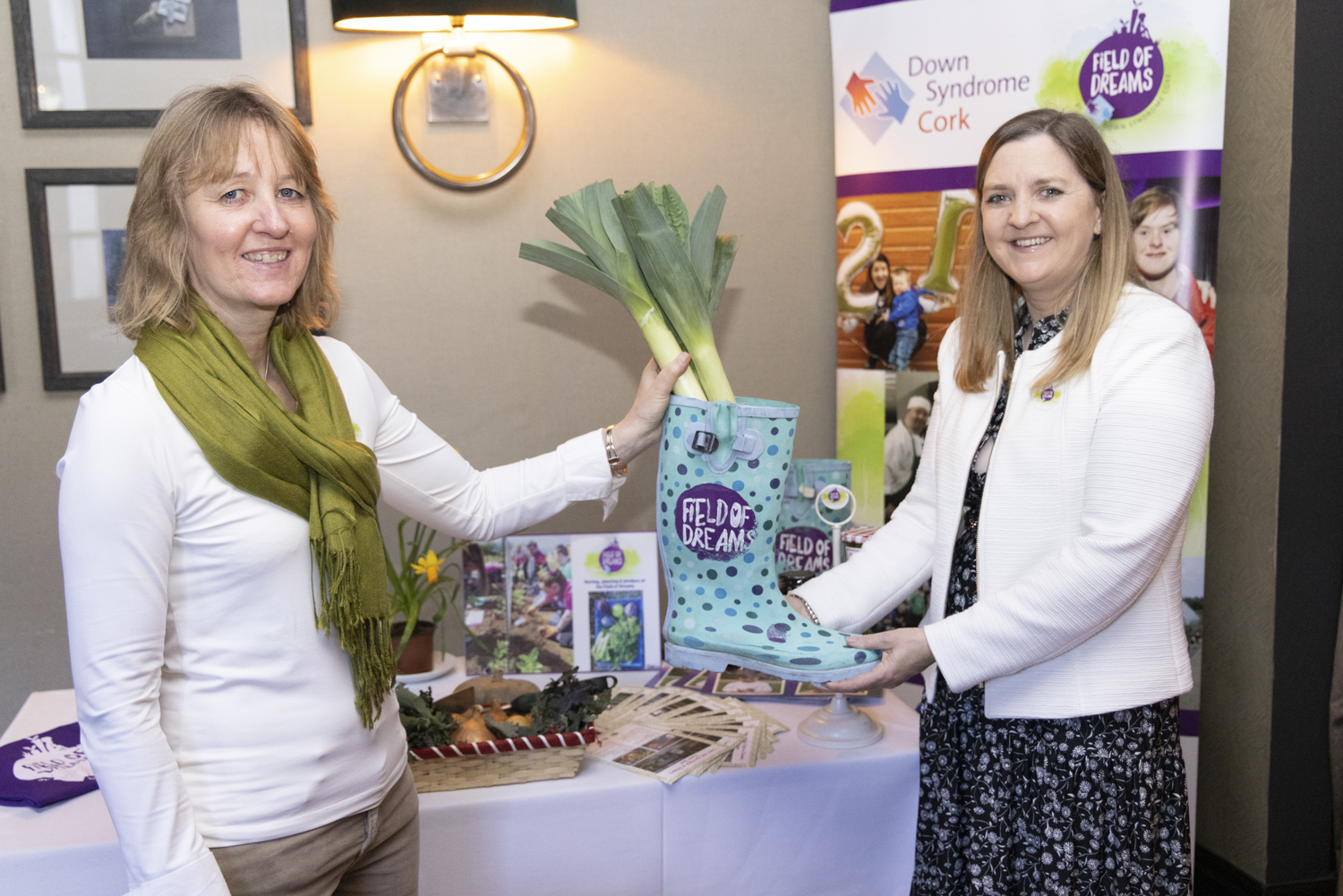 Community Food Award - Field of Dreams
Community Food Award - Field of Dreams
Field of Dreams was established in 2017 by the Cork branch of Down Syndrome Ireland. The three-acre site supports the learning needs of adults with Down Syndrome across the city and county of Cork using horticulture as a catalyst for learning and personal development. From seed to plot to plate, participants work together to grow and harvest food, learn about good nutrition and how to cook. Field of Dreams works to enable adults with Down Syndrome to lead fully engaged lives with greater personal independence and self-reliance. Field of Dreams is a perfect example of how food and community come together.
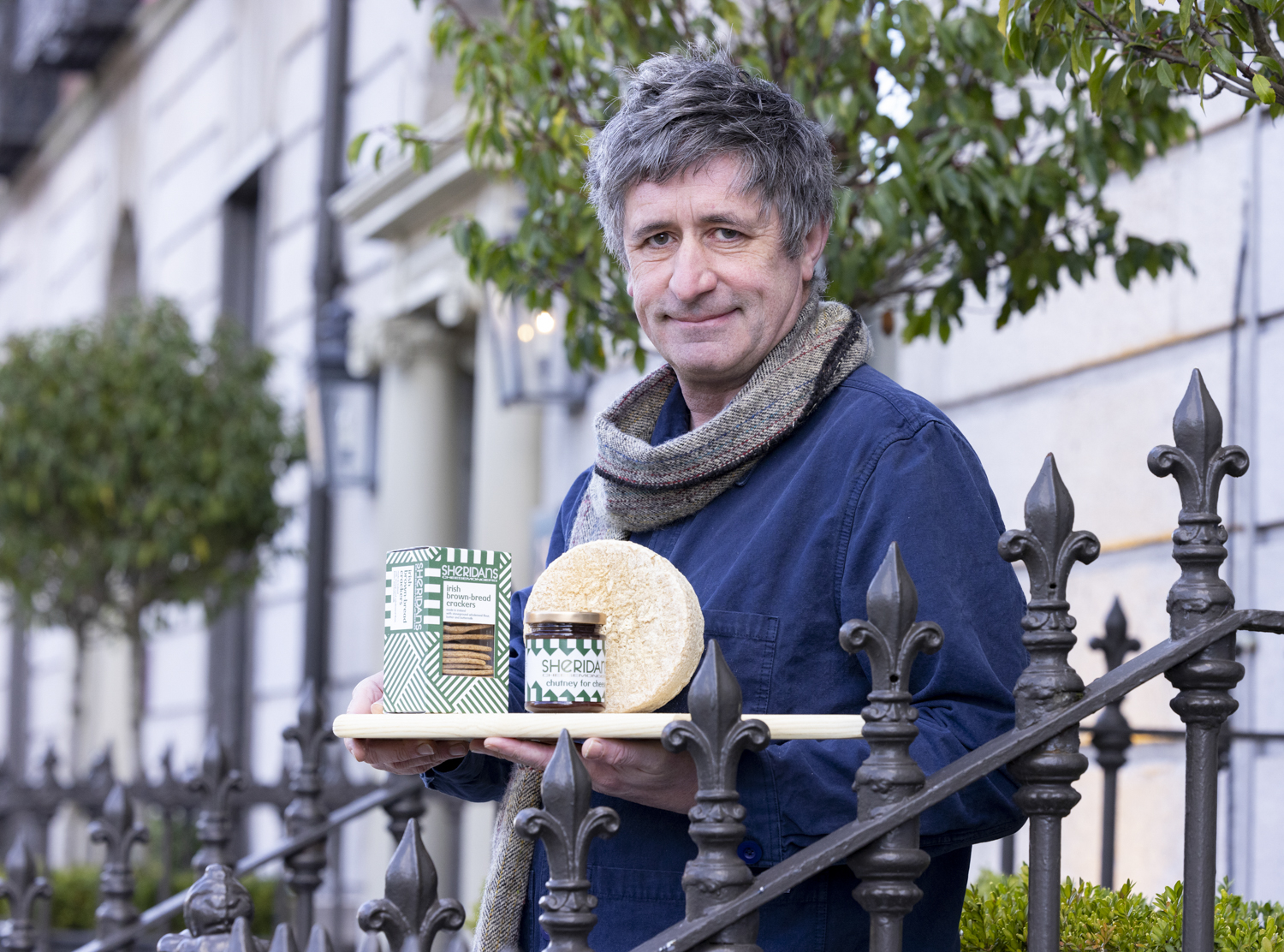 Lifetime Achievement Award - Kevin and Seamus Sheridan
Lifetime Achievement Award - Kevin and Seamus Sheridan
From farmers’ market stall to household name. That’s been the journey for Kevin and Seamus Sheridan who started selling cheese at Galway’s Saturday market in 1995 and who have worked to develop and grow a market for Irish farmhouse cheese. Building strong relationships with producers and working closely with them to get the very best, has been central to the ethos of the company. Today the Sheridans name - and that distinctive green, white and gold packaging - is synonymous with quality. They've opened up a new world for the cheese lovers of Ireland.
ABOUT THE IRISH FOOD WRITERS’ FOOD AWARDS
The IFWG Food Awards are unique. No business or individual can enter, nor do they know if they have been nominated or shortlisted for an award. The Guild is the sole nominating and decision-making body* whose members nominate and anonymously buy products for tasting. Proportional representation voting is then undertaken at a Guild tasting meeting. Winning products must be produced in Ireland and the main ingredient must be Irish grown or produced.
The Irish Food Writers’ Guild Food Awards were celebrated at Dublin’s Suesey Street, with a lunch created by Head Chef Deniss Lasenko, featuring the winning produce. The Guild is grateful to the team at Suesey Street, Liberty Wines and Teeling Whiskey for their support.
Award Menu
• Drinks Reception - Beoir Chorcha Dhuibhne, Beal Bán
• Ballylisk Triple Rose | Balsamic caviar | Pan de Cristal
• Aran Island Cranberry & Honey Goats' Cheese | Balsamic Bramley Apple Chutney
• Smoked Lough Neagh Eel | Velvet Cloud Sheep’s Milk Yoghurt Mousse | Dill
• The Wooded Pig Coppa-Wrapped Monkfish | Broad Beans | Peas | Charred baby
• leeks | Morels
• Lemon Cheese Cream with Velvet Cloud Sheep’s Milk Yogurt Granita | Shortbread | Mango Ginger Gel
• Selection of Sheridans' Cheese, Crackers & Chutney
See full Menu and Recipes here
Twitter/Instagram/Facebook: @foodguild @BordBia #IFWGAWARDS2023
*With the exception of the Community Food Award, for which the Guild invites nominations
Euro-Toques Ireland Food Awards are back!
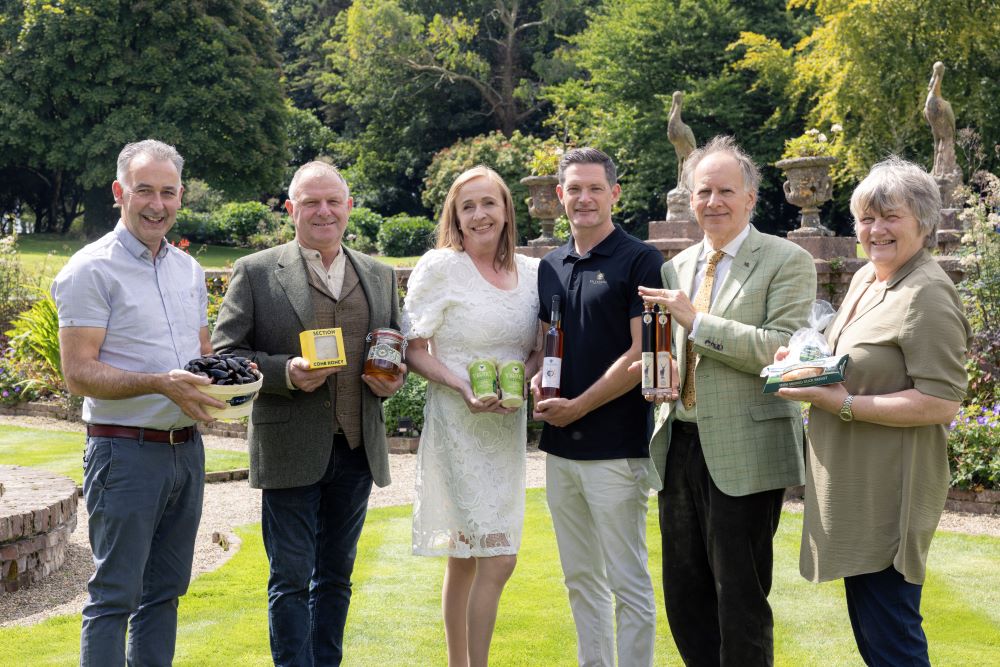
It’s good to see some of our favourite food and drink producers honoured at the 2023 Euro-Toques Food Awards, which were held recently at the lovely Dunbrody Country House Hotel in Arthurstown, Co Wexford.
Offering a unique opportunity for chefs to acknowledge the work of the small artisan producers they depend on, the Euro-Toques Food Awards were established in 1996 based on an idea by the legendary Myrtle Allen, and are still held annually to recognise and celebrate the very best food being produced in Ireland.
Introduced by renowned Irish chef Kevin Dundon and food writer, author and Irish Food Writers’ Guild Chairperson, Caroline Hennessy, six awards were presented by Euro-Toques Ireland under the categories Water, Land, Farm, Dairy and Artisan Produce and Craft.
This year's award winners are:
- WATER: Kelly Mussels
for their outstanding Blue Rope Mussels and their contribution to regenerative aquaculture in Ireland
- LAND: Sliabh Aughty Honey
for their outstanding Raw Honeys and their contribution to the protection of Irish heritage and biodiversity.
- FARM: Skeaghanore West Cork Farm
for their outstanding Pekin Duck and their contribution to preserving the traditional and ethical way of rearing animals in Ireland
- DAIRY: Velvet Cloud
for their outstanding Sheep Milk Yogurt and their contribution to championing Ireland's rich and flavoursome dairy bounty
- ARTISAN PRODUCE: Killahora Orchards
for their outstanding Rare Apple Ice Wine and their contribution to championing the artisan production of Irish craft drinks using apples.
- CRAFT: Wildwood Balsamics
for their outstanding Wild Aged Vinegars and their contribution to protecting the tradition and skill of vinegar making in Ireland.
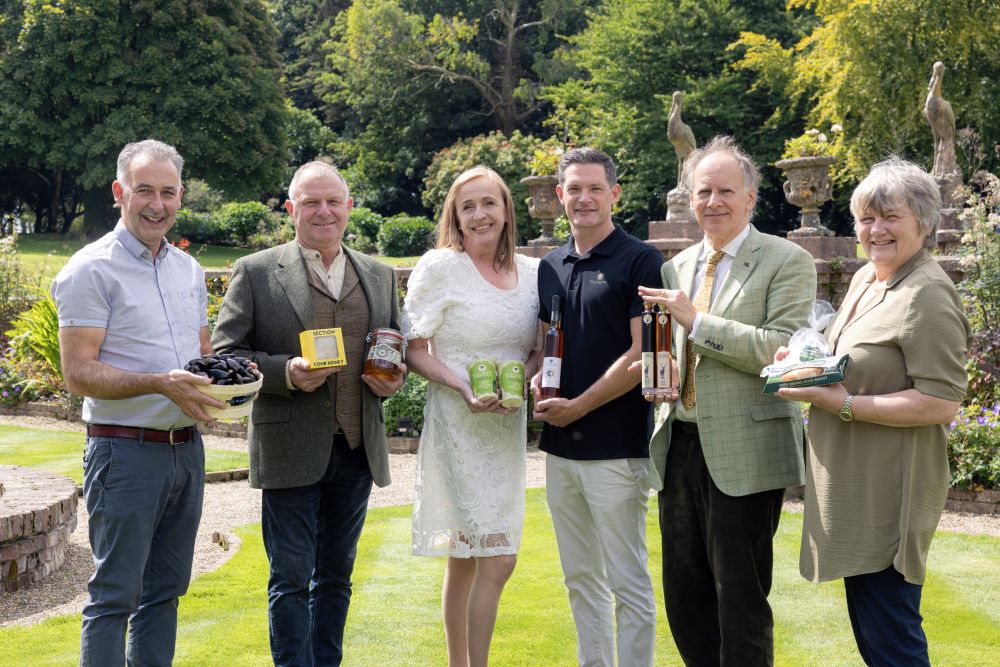
The ceremony was followed by a wonderful garden feast that brought together 100 chefs and producers, a real celebration of Irish produce featuring this year's winners, nominees, and Euro-Toques members. Produce from over 30 producers was showcased on a beautifully laid-out communal Harvest Table, created by the Euro-Toques Food Council to highlight some of the best produce Ireland has to offer.
The common denominator running through the six categories this year is the theme of social responsibility with a focus on increasing biodiversity and the conservation of traditions and heritage. For 2023, Euro-Toques particularly highlighted: mussel farms and regenerative aquaculture; honey producers and beekeepers; producers of forgotten meats; our rich bounty of yogurts and ice-creams; makers of craft drinks based on apples such as cider, brandy and wines; and last - but not least - our innovative vinegar makers.
"The Food Council's mission extends far beyond this event,” explained the newly elected Head of the Euro-Toques Ireland Food Council chef Conor Halpenny. “Together we represent a diverse tapestry of culinary knowledge, experiences, and insights that have shaped our approach to recognizing excellence within the industry. We are committed to fostering a sustainable, inclusive, and thriving culinary landscape. Our responsibility is not only to acknowledge the talents and achievements of our nominees and winners but also to inspire and empower the entire community. Today, we honour the unsung heroes - the producers, farmers, and artisans - who work diligently behind the scenes to craft the flavours that delight our senses. We pay tribute to the artisans - the masters of their craft -who tirelessly strive to preserve traditions, revive forgotten flavours, and push the boundaries of what is possible in the culinary realm."
Euro-Toques Ireland's long-term strategy is to create a platform where chefs and producers can meet, network and exchange knowledge. Membership to the Community is open to all chefs and producers who are aligned with the ethos of Euro-Toques Ireland, based on local, seasonal produce that has been grown, farmed, or produced in a way that prioritises short supply chains. Manuela Spinelli, Head of Community, People & Culture said: "When chefs and producers ask me 'What do I gain in becoming a member of Euro-Toques?' I always answer, 'You get to be part of it!' Developing a community with shared values is our objective at Euro-Toques Ireland and engage, engage, engage, is our message."
ABOUT THE AWARD WINNERS:
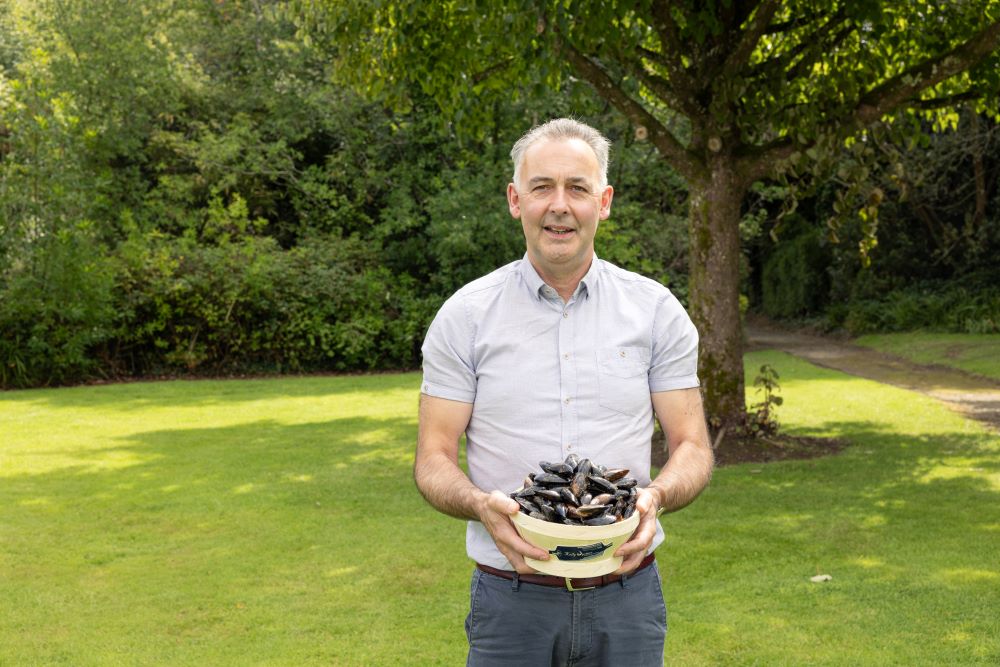 WATER: Kelly Mussels
WATER: Kelly Mussels
The Kellys work with the native blue mussel - Mytulis edulis - which thrives in the clean,
cold waters of the Irish coast. With a delicate, briny flavour and firm, chewy texture, these small, delicious molluscs are highly prized by chefs who know that starting with a good product means that you don't have to do much to it. Farmed sustainably by the Kelly family on the Galway coastline, the mussels are grown using both the long line and mussel raft methods. They live in dense colonies, feeding on the plankton present in the seawater and filtering it as they go. Nutrient dense, environmentally sustainable and absolutely delicious, Kelly's mussels are an Irish ocean treasure.
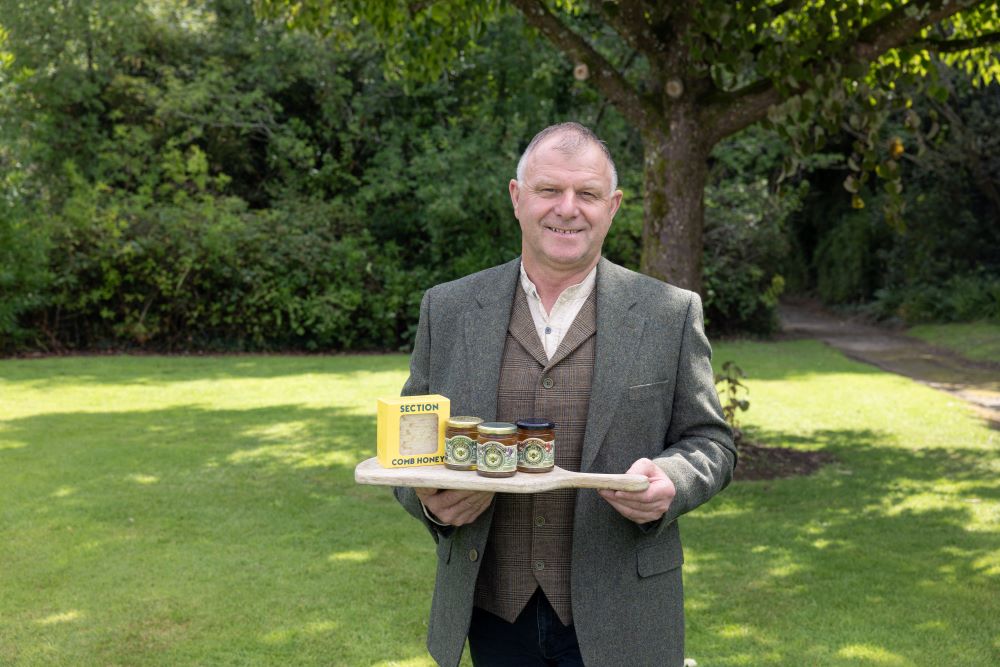 LAND: Sliabh Aughty Honey
LAND: Sliabh Aughty Honey
The Leahy family have been beekeepers for four generations, harvesting Sliabh Aughty Honey from hives near and on the slopes of the Sliabh Aughty Mountains near Loughrea in east Galway. Starting with Noel Leahy's grandfather, bees have played an integral part in the family history. Their native Irish bees, kept in traditional hives, take nectar and pollen from wild heather on the mountains. The Leahy's also keep hives of these small, busy polinators in their garden, natural pastures and nearby woodlands. The honey is 100% raw, with all the aroma and flavour of local wildflowers, and is processed in a traditional manner with no additives or blending. This is a true superfood, with antioxidant, antibacterial and anti-inflammatory properties. Using their raw honey, Leahys also produce cult favourite Noel's Hot Honey for The Dough Bros in Galway. For the way it captures wild flavours in a jar, Sliabh Aughty Honey is a true taste of place.
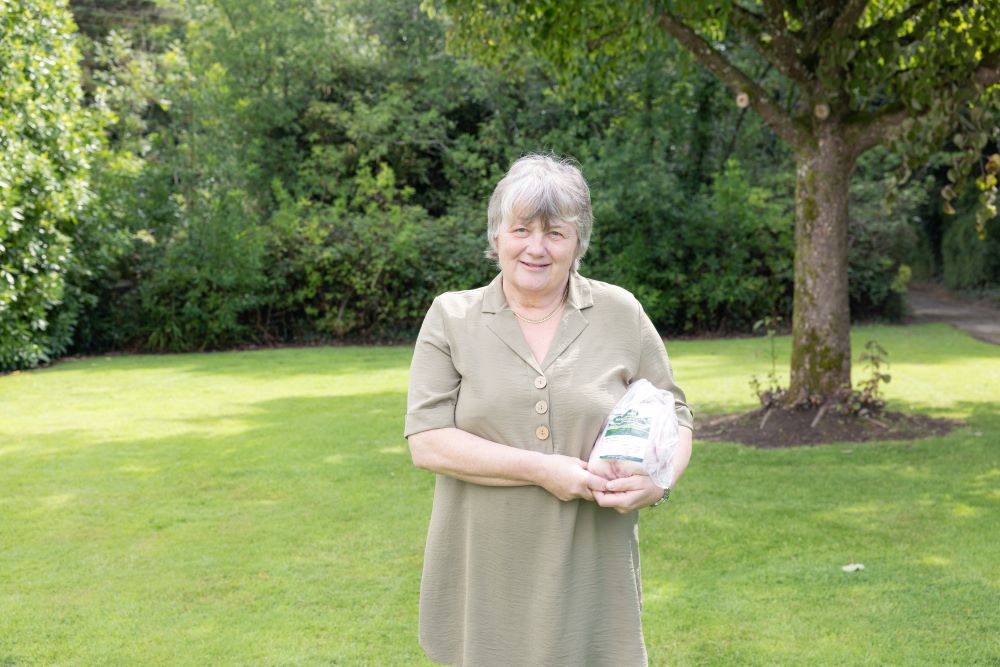 FARM: Skeaghanore West Cork Farm
FARM: Skeaghanore West Cork Farm
Spotting a duck-shaped niche in the Irish market in 1994, set Eugene and Helena Hickey on a path that has ensured that the name Skeaghanore is known to chefs throughout Ireland and abroad. Skeaghanore Duck is produced on their family farm overlooking Roaring Water Bay in West Cork. The Hickeys hand-rear the ducks -a domestic breed called Pekin - which is particularly succulent and tender. Helena believes that their location also gives them an edge: the salty sea air imparts a unique taste, acting as a pre-salting agent and enhancing the rich, savoury flavour of the duck. Testament to the quality of their product is the fact that they are always stocked by Fields of Skibbereen, one of the first outlets to stock the duck when they first started production almost 30 years ago. With the next generation now working on the farm, it is clear that duck is no longer a forgotten meat and the Hickeys are to be applauded for ensuring its survival on Irish menus.
 DAIRY: Velvet Cloud
DAIRY: Velvet Cloud
From their family farm in Co Mayo, Aisling and Michael Flanagan make a range of natural sheep milk yogurt and cheese under the name Velvet Cloud. The land is ideal for sheep, something appreciated by their flock of Lacaune and Friesland ewes, who can graze on the grass and clover pastures almost the entire year around. Their products include a sheep milk yogurt – the only one of its kind in Ireland - sheep milk, a semi-hard sheep cheese and their newest addition, a soft and spreadable sheep milk labneh. Their yogurt is made with just two ingredients: fresh sheep's milk from Flanagan's farm and live yogurt cultures. With a naturally sweet taste and unctuous, creamy texture, it is an especially versatile ingredient and one that has caught the attention of many chefs who use it in all manner of sweet and savoury dishes.
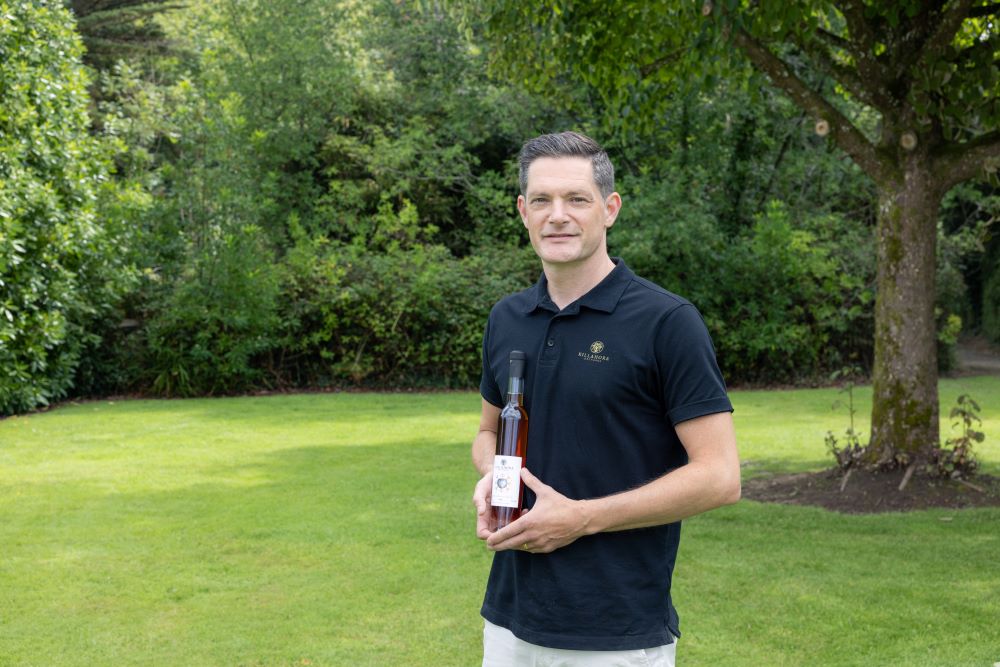 ARTISAN PRODUCE: Killahora Orchards
ARTISAN PRODUCE: Killahora Orchards
Killahora Orchards – Rare Apple Ice Wine
Founded by cousins David Watson and Barry Walsh, Killahora Orchards in East Cork is rooted in the past – the first mention of their orchard dates from 1837 – but with a firm view to the future. With the goal of making the best possible drinks from the apples and pears that they grow on site, Watson and Walsh have always been innovative. Their portfolio includes Pom'O apple port, a pet-nat bottle conditioned bittersweet cider, and a fine, lightly sparkling perry.
Their Rare Apple Ice Wine is made in a similar manner to Canadian ice wine: freezing and then thawing apple juice before slowly fermenting it to produce a first class dessert wine. The rich, toffee apple and butterscotch flavour is complemented by a fresh acidity at an ABV of just 10.5%. This versatile tipple can make an appearance in cocktails, with a cheeseboard or, when chilled, as a palate whetting aperitif.
 CRAFT: Wildwood Balsamics
CRAFT: Wildwood Balsamics
Wildwood Balsamics was founded in spring 2012 with the elderflower harvest and has followed nature's calender ever since. Artist turned vinegar-maker Fionntan Gogarty picks his ingredients from the mountains, hedgerows, seashores and gardens of Co Mayo before transforming them utterly into vinegars of rare flavour and beauty. He starts this process by making wines from foraged or organically grown fruit or flowers. These wines are turned into vinegars and then, with the addition of cooked fruits from the wine-making process, become balsamics. None of this happens quickly: the young berry balsamics take 18 months to produce, the flower and herb based ones take two years. Gogarty also barrel-ages some of his balsamics for five years, infusing them gradually with flavour that enhances every food that they come in contact with. Just a few drops of these precious potions, which come from the very landscape of Mayo, lighten flavours with their bright acidity.
HOW THE EURO-TOQUES FOOD AWARDS WORK
Focusing on the foods and production methods that preserve the traditions and heritage of the Irish food, farming and fishing industries, each year Euro-Toques Ireland members are asked to nominate their favourite suppliers, from a shortlist carefully selected by the Euro-Toques Food Council. Members of the Council are: Conor Halpenny (Head), Aishling Moore (Deputy), Anthony O'Toole, Sham Hanifa, Janice Casey-Bracken and Philippe Farineau.
Further details on the Euro-Toques Food Awards 2023, including nominees and winners: https://euro-toques.ie/food-awards/this-years-winners-2-2/
A Taste of Wexford
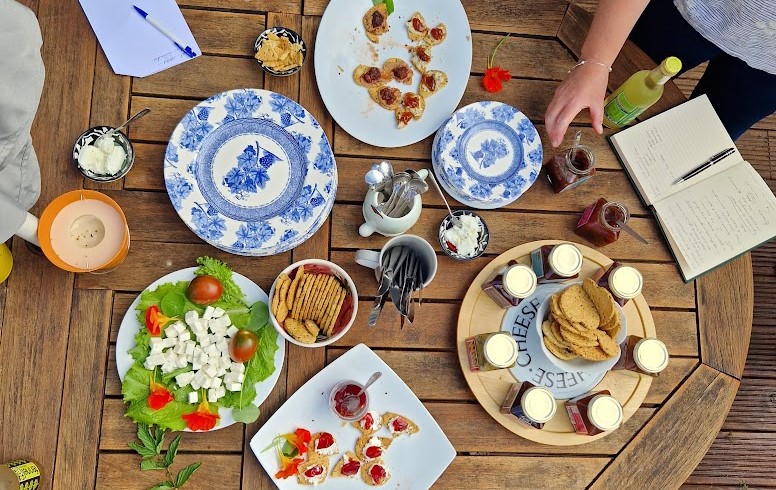
 A highlight of the year for the Irish Food Writers’ Guild, of which I am a founder member, is our summer outing – and this time we had a ball visiting north Wexford. The sunny South-East lived up to its name in fine style and we had a lovely day immersed in the food culture of the area thanks to IFWG Chair, Caroline Hennessy, and local food, travel specialist and chef Anthony O'Toole, who worked out a fascinating showcase of food and producers, focusing on the area around Gorey.
A highlight of the year for the Irish Food Writers’ Guild, of which I am a founder member, is our summer outing – and this time we had a ball visiting north Wexford. The sunny South-East lived up to its name in fine style and we had a lovely day immersed in the food culture of the area thanks to IFWG Chair, Caroline Hennessy, and local food, travel specialist and chef Anthony O'Toole, who worked out a fascinating showcase of food and producers, focusing on the area around Gorey.
With Anthony and Lorraine O'Dwyer from https://gallivanting.ie/ as our hosts and tour guides, we first visited IFWG Award Winner and Blás na hEireann Supreme Champion Wild About to meet with Fiona and Malcolm Falconer, where we were also joined by Marisa Roche of Meadowfield Goat Cheese. After being shown around their wild, permaculture gardens and learning all about the value of many overlooked wild foods – and nettles, in particular, which are now growing happily in their polytunnel as well as in the wild - we tasted some of their range of sparkling drinks, syrups, jellies, and chutneys, most notably their best-selling Nettle Syrup, which is full of vitamins, minerals and antioxidants (and has a great reputation for easing arthritis) and then made a quick visit to see where the nettle waste gets reused nearby, at the wonderful Dots Plots Donkey Rehoming Hub where donkeys are lovingly cared for until they are ready for their forever home.
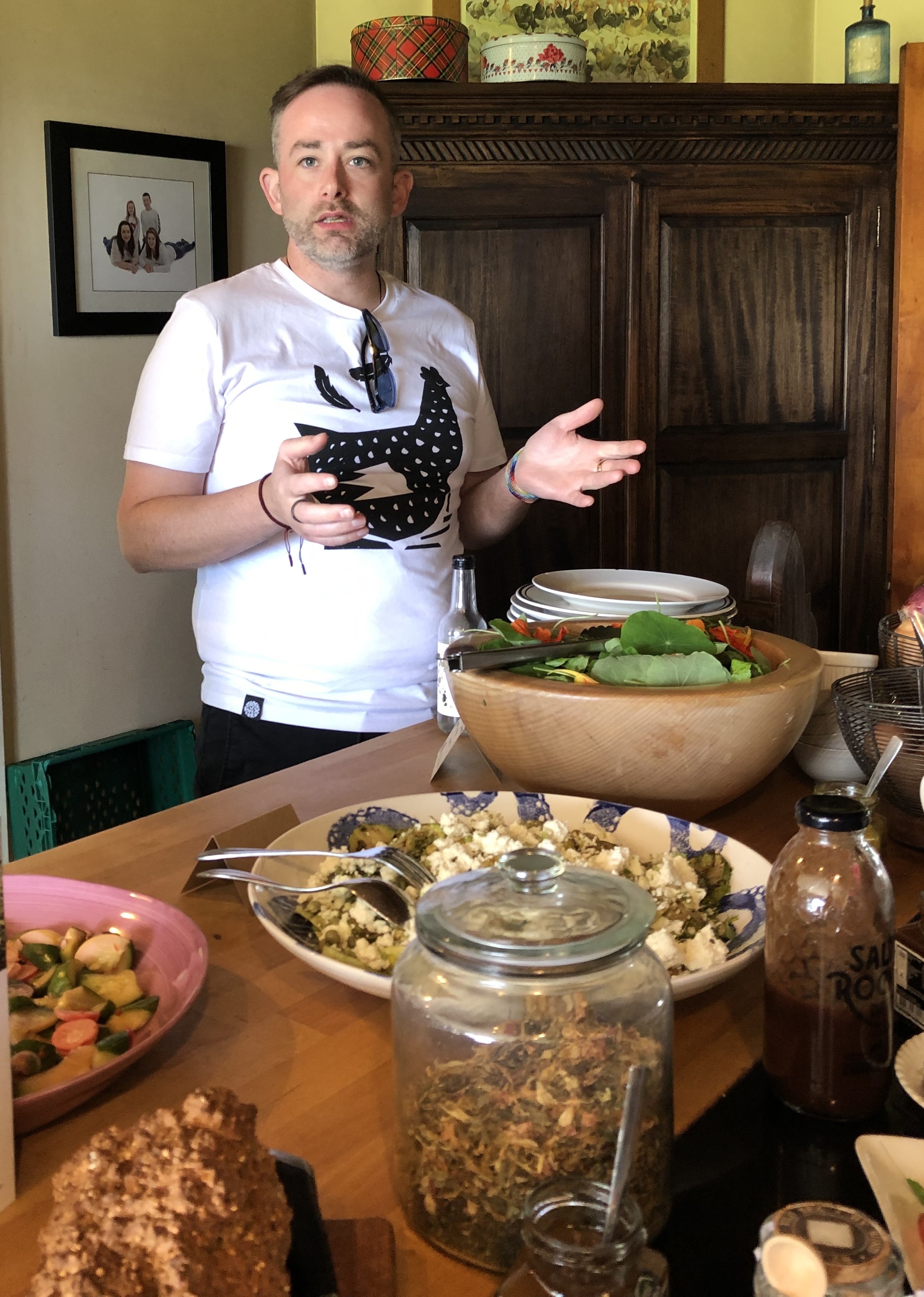 On then to Salt Rock Dairy a short distance away, where Catherine Kinsella showed us the travelling vending machine that enables her to sell the pasteurised, unhomogenised milk of their own Holstein cross dairy cows direct to local customers in order to minimise the food miles. She currently sells fresh flavoured and unflavoured milks, and will soon be extending that to offer homemade yoghurt and butter as well. We enjoyed a delicious buffet lunch at Catherine's kitchen table, catered by Anthony, and featuring her milk, butter and yogurt, and vegetables from Anthony's garden along with a selection of foods from other local producers.
On then to Salt Rock Dairy a short distance away, where Catherine Kinsella showed us the travelling vending machine that enables her to sell the pasteurised, unhomogenised milk of their own Holstein cross dairy cows direct to local customers in order to minimise the food miles. She currently sells fresh flavoured and unflavoured milks, and will soon be extending that to offer homemade yoghurt and butter as well. We enjoyed a delicious buffet lunch at Catherine's kitchen table, catered by Anthony, and featuring her milk, butter and yogurt, and vegetables from Anthony's garden along with a selection of foods from other local producers.
After lunch, we visited Tara Hill Honey, donning bee keeper suits (much to the amusement of all) alongside Michael and Anne Wildes to harvest some of their wildflower honeycomb. That certainly was an experience, as was getting to eat the honeycomb while it was still warm from the hive. Sticking with .jpg) the sweeter side of Wexford, our stop at Bean and Goose chocolatiers in Gorey’s Ballyloughan Business Park saw us learn about their ethical sourcing from Original Beans, check out some experiments that they're working on and taste some of the original flavours that sisters Karen and Natalie Keane produce. Inspired by the Irish landscape and traditions, they make a wide range of bars including Gorse, Toasted Soda Bread, Umami Seaweed, Smoky Sea Salt, Salty Almonds, Sour Cherry Orchard – and you can visit the premises by arrangement.
the sweeter side of Wexford, our stop at Bean and Goose chocolatiers in Gorey’s Ballyloughan Business Park saw us learn about their ethical sourcing from Original Beans, check out some experiments that they're working on and taste some of the original flavours that sisters Karen and Natalie Keane produce. Inspired by the Irish landscape and traditions, they make a wide range of bars including Gorse, Toasted Soda Bread, Umami Seaweed, Smoky Sea Salt, Salty Almonds, Sour Cherry Orchard – and you can visit the premises by arrangement.
Our base in Gorey was the Ashdown Park Hotel where we had the opportunity to relax over a glass of locally produced Jackford Irish Potato Gin with Poachers mixers (made in Dublin, but with a strong Wexford connection) and a tasting of beautifully reared and matured beef while we learned from GM Paul Finegan, horticulturalist Andrea McCann and head chef Andrew O'Gorman about the hotel's sizable farm to fork operation at their own Redmond Family Farm.
%20AIL4fc9Xp7IY2itPzybggddCSXj1SwaUg4sd8Rkj_288Px_sf0sAz_30Cwy4nzZ34yxo66wjrx-dtnozwRvE-TYBBpyjejAil.jpg) And so to the grand finale, the producers' dinner at Andrew Duncan’s gem of a restaurant Table 41 He cooked a superb meal using many ingredients from producers and guests, including Anthony O’Toole’s founding partner in Taste Wexford, Jean O’Connell, who joined us for dinner, in a tasting menu that complemented our tastings through the day. Once again seasonality and local – and, in most cases that means Wexford - were key. And, as always with this talented chef, there were some surprises, as in a deliciously innovative buffalo carpaccio with Mount Leinster raw milk cheddar, pickled baby carrots, basil aioli and hazelnuts, for example…
And so to the grand finale, the producers' dinner at Andrew Duncan’s gem of a restaurant Table 41 He cooked a superb meal using many ingredients from producers and guests, including Anthony O’Toole’s founding partner in Taste Wexford, Jean O’Connell, who joined us for dinner, in a tasting menu that complemented our tastings through the day. Once again seasonality and local – and, in most cases that means Wexford - were key. And, as always with this talented chef, there were some surprises, as in a deliciously innovative buffalo carpaccio with Mount Leinster raw milk cheddar, pickled baby carrots, basil aioli and hazelnuts, for example…
It was a lovely way to round off the day and, for anyone who wants to learn more about Wexford food, the Taste Wexford food tours, trails, workshops and tastings would be a great place to start.
2023 Georgina Campbell Irish Food & Hospitality Awards
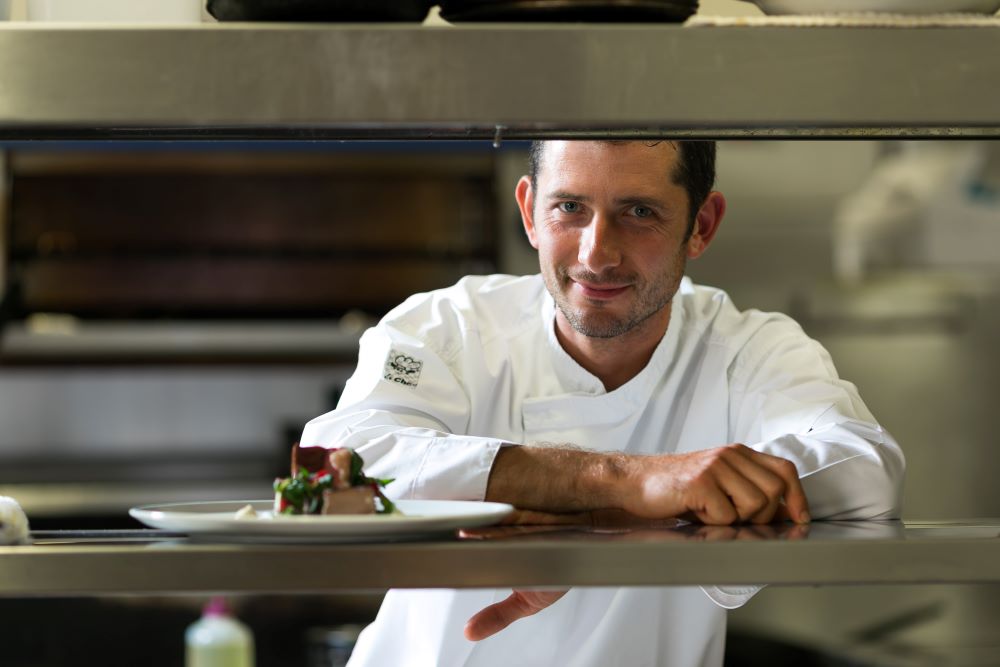
Ireland’s Restaurant, Chef, Pub and Newcomer of the Year announced in celebration of Irish food and hospitality
.png)
From Ireland’s hospitality leaders, best hotels, fine dining and seafood to casual dining favourites and the most pet-friendly destination, winners of Georgina Campbell Irish Food & Hospitality Awards 2023 are annouced
• Francis and John Brennan of Park Hotel Kenmare are joint recipients of Ireland’s ‘Hospitality Hero’ Award
• Darina Allen & Rory O’Connell, Ballymaloe Cookery School, receive the ‘Movers & Shakers’ Award
• Neighbourhood Naas is Restaurant of the Year
• Chef of the Year awarded to Angel Pirev, The Mustard Seed, Ballingarry, Co Limerick
• The Parson’s Nose, Hillsborough, Co Down, announced Pub of the Year
• Cashel House Hotel, Connemara, Co Galway is Ireland’s Pet Friendly Destination
• Family Friendly Hotel of the Year is Ocean Sands Hotel, Enniscrone, Co Sligo
• Newcomer of the Year title goes to Bramley Restaurant, Abbeyleix, Co Laois
• ‘Happy Place‘ Award for Vintage Tea Trips, Dublin
• Five selected for this year’s special Casual Dining awards group
10th October 2023: Representing the four corners of Ireland, the winners of the 2023 Georgina Campbell Irish Food & Hospitality Awards were announced at an event hosted by Bord Bia at their new Global Hub in Dublin
Celebrating 25 years in their current incarnation, the independent Georgina Campbell Awards are Ireland’s longest running food and hospitality awards. They recognise and honour Ireland’s standard-bearers in food and hospitality in Ireland with particular focus, this year, on genuine hospitality, consistency, innovation and good value. Also special tributes to some of the giants of Irish food and hospitality – and the brave newcomers who, against the odds, continue to delight with inspiring new businesses.
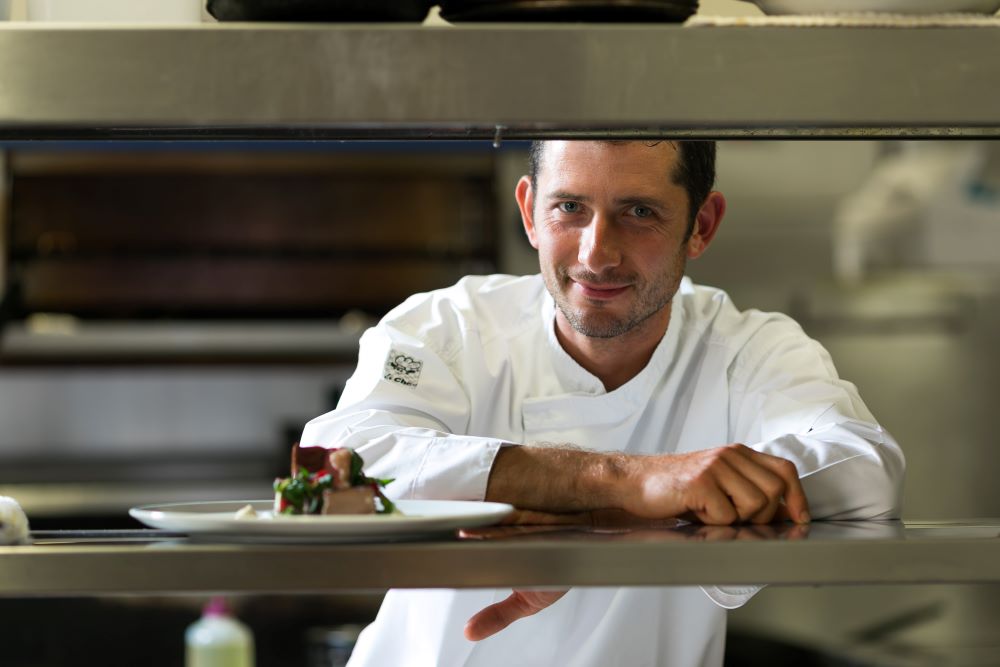
Seeking out the best
It’s been a joy to travel freely again this year but accommodation shortfalls (partly due to the continuing negative effects of short-term lets), short weeks, reduced hours, early kitchen closures, minimum 2-night stays and other restrictions related to staff shortages and high costs, notably energy costs, have been challenging to work around. As always, we have been seeking out genuine hospitality and those striving to give the best possible guest experience, ahead of convenience to the host business. Each year a theme emerges in the awards, reflecting the weight of nominations proposed by the assessment team. This year suggests a bit of a swing away from cities towards rural destinations and smaller towns, possibly reflecting post-pandemic preferences and/or a levelling up of standards. And words like unshowy, consistent, genuinely hospitable, customer-focused, and kind are typical of our nominations.
Closures and VAT
Despite everything we have gone through in recent years, Ireland’s food, tourism and hospitality continues to be an exciting and ever-developing story. Widespread closures were predicted as we came out of the pandemic, but the sheer resilience of the industry in the face of massive challenges is extraordinary. However, although new businesses continue to open at an astonishing rate, the losses are mounting and there is no doubt that raising the VAT rate will be the final nail in the coffin for many, especially for smaller businesses. The Guide supports a return to the 9% VAT rate, and that it should be permanent.
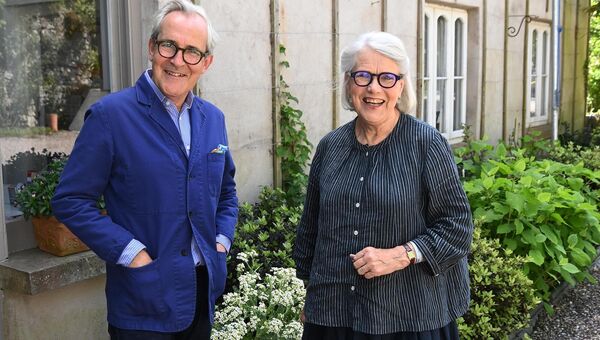
Sustainability
With sustainability a growing focus year on year, examples of good practice are increasing and becoming more diverse, and some especially interesting examples are included in our awards, including some especially impressive productive hotel gardens. Yet sometimes there’s a sense that small but effective meaures are being overlooked. Offering smaller portions or a choice of portion sizes, for example, could prevent a lot of waste - and have health benefits too.
Value for Money
Mixed experiences this year have included some surprising highlights (often including small details that make an experience memorable) and some unexpected disappointments - including high profile experiences where exorbitant prices (eg menus at €150+ with no alternative choices) indicate that respect for customers who are coping with the cost of living crisis appears to be missing. Menus at that level seem to say more about ego and personal ambition than hospitality – yet there are those, including several of our award-winners, who manage to combine top level fine dining with more community-friendly and family-friendly options and that is a very welcome development. The cost versus value debate continues and our 5-star hotel winner, in particular, is an example of high prices adding up to good value.

Fine Dining meets Casual Dining
With the line between fine dining and top level casual dining becoming increasingly blurred, our Casual Dining collection in particular is a good indication of the way trends are going. The smaller, owner-run restaurants, cafés and bakeries are our greatest strength at the moment – sometimes offering fine dining on one or two evenings a week - and this is where real quality and local character are to be found.
Sourcing and Provenance
Ongoing improvements in sourcing policies continue to be noted all around the country this year and it’s pleasing to see the Eat Local aspirations become more of a reality. The pandemic and the need to support our local communities has made provenance even more important to us all and - although cost cutting is also evident - it is good to see more establishments highlighting the origin of produce on their menus, thereby speeding up the move towards greater sustainability as well as supporting Irish suppliers and growing the future of Ireland as a food tourism destination. A national strategy seems to be lacking currently however, and leadership is needed.
The Irish Breakfast
The traditional Irish Breakfast as we know it virtually disappeared during the pandemic. But it is making a comeback and our popular Irish Breakfast Awards will be announced separately.
THE SELECTION PROCESS
Georgina Campbell’s Ireland’s rigorous programme of anonymous assessment visits is a year-round process and winners are nominated solely by an independent assessment team.
Media inquiries: Georgina Campbell, Editor, Georgina Campbell’s Guides
E: info@ireland-guide.com
T: +353 (0)1 839 5972 / 086 2269727
Click here for full awards list
The Winter Table
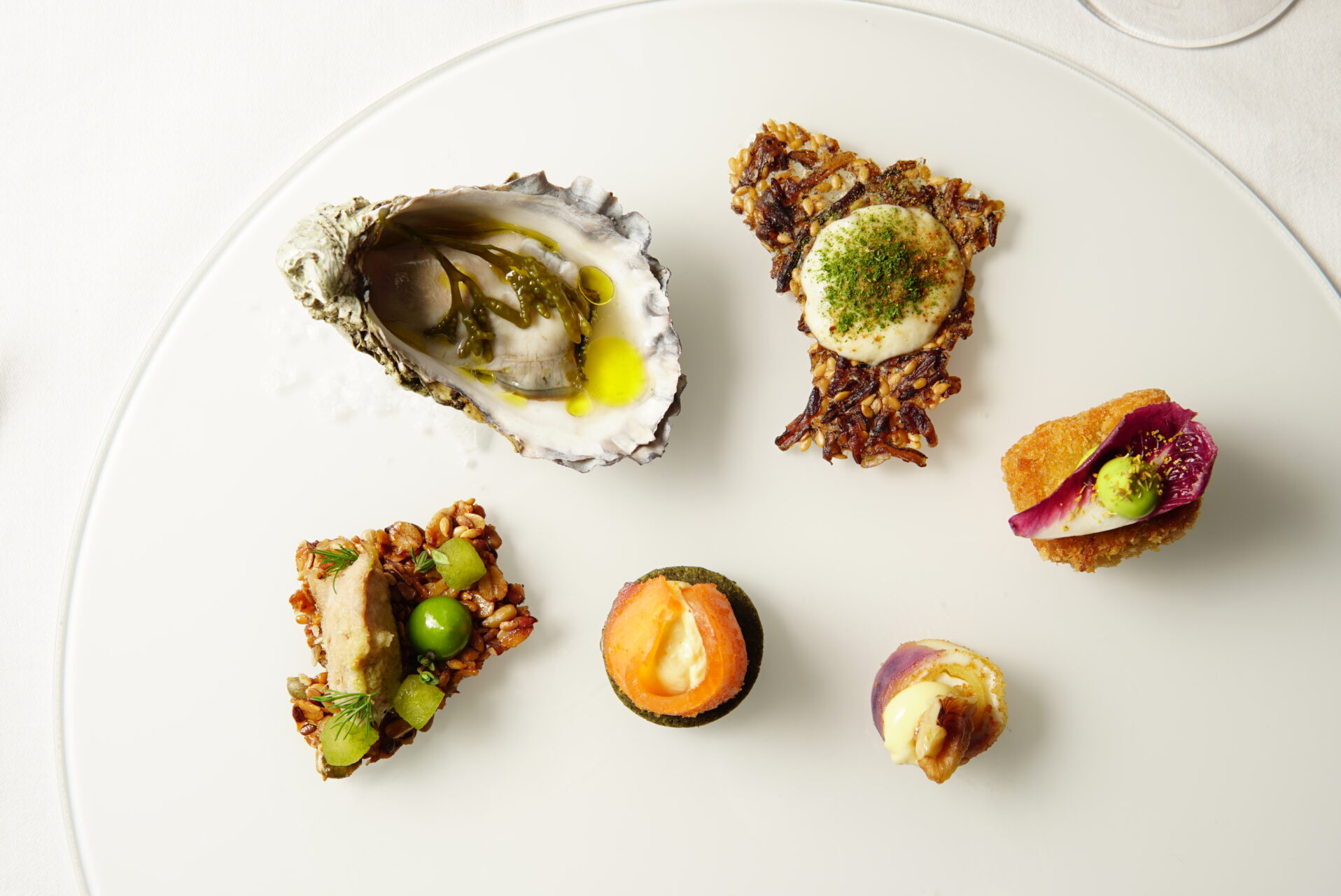

Delicious seasonal food isn’t just for summer….Celebrating Ireland’s winter bounty, Euro-Toques Ireland chefs and producers are coming together during December and January, to raise awareness of the wonderful produce that is available in the colder months.
Euro-Toques Ireland may not be familiar to everyone, but is very special - a member-based community of chefs, cooks and producers who pride themselves on being the custodians of Irish food heritage, they achieve this through their daily work and inspiring activities like their Young Chef of the Year Competition (based on young chefs meeting producers and conveying the integrity and flavour of their produce, they have launched the careers of some of our top chefs, including Neven Maguire) and their annual Food Awards which highlight the work of some of our finest food producers.
To celebrate The Winter Table, Euro-Toques members will highlight some of the best produce Ireland has to offer in the colder months. Their online campaign will see participating members, young chefs and producers promote the best of the winter bounty, with an exciting series of activities and dining experiences around the island of Ireland, where chefs will celebrate our wild game such as venison, rabbit, hare, pigeon, pheasant, snipe, duck, mallard, partridge, woodcock, also freshwater fish (eg pike, eel, trout), herring, oysters, mussels, clams, crab, sea herbs and vegetables (i.e. seaweed), and wild woodland produce including mushrooms, sea buckthorn, sloes, rosehips, wild herbs, nuts as well as winter roots and greens.
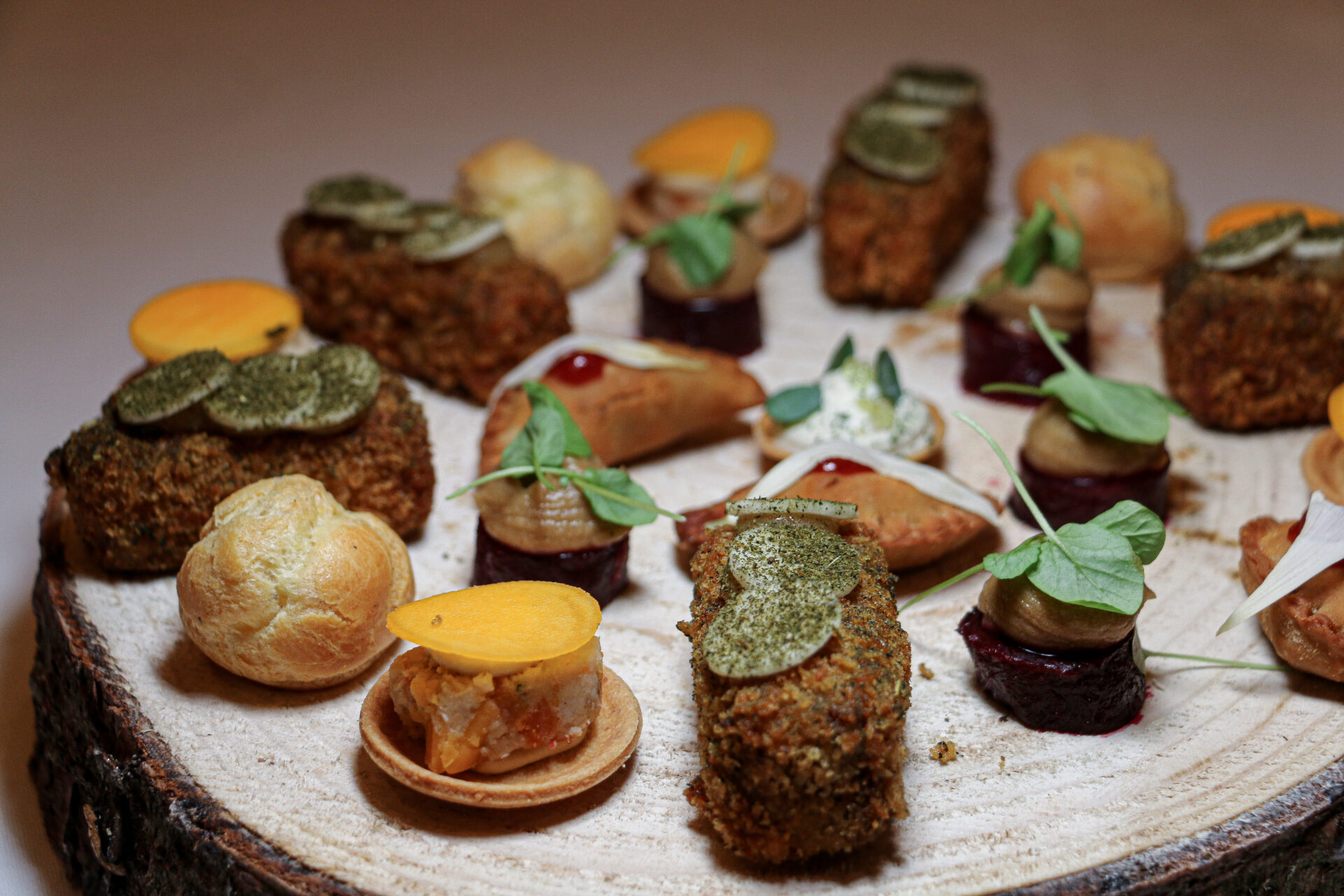
As part of the campaign, member chefs working in cafés, pubs, bistros, and restaurants will offer either a special or a full menu experience showcasing Ireland's winter bounty and highlighting the work of small artisan producers. A list of producers and participating chefs - including household names like Ross Lewis (Osteria Lucio), Aishling Moore (Goldie), Jp McMahon (Aniar) and Sunil Ghai (Pickle) - is available online.
Watch out for hashtag #WinterTable on the community's platforms @eurotoques_ireland on Instagram and @eurotoquesirl on Twitter to find out what produce is readily available in Ireland this winter and stay up to date with recipes, produce, special menus, tips and know-how from chefs and producers alike.
All Euro-Toques members and the wider public are encouraged to join in the online conversation using the hashtags: #WinterTable #WinterBounty #Chefsmeetproducers
Cookery Feature - Celebrating the 2024 Irish Food Writers' Guild Food Awards in Style
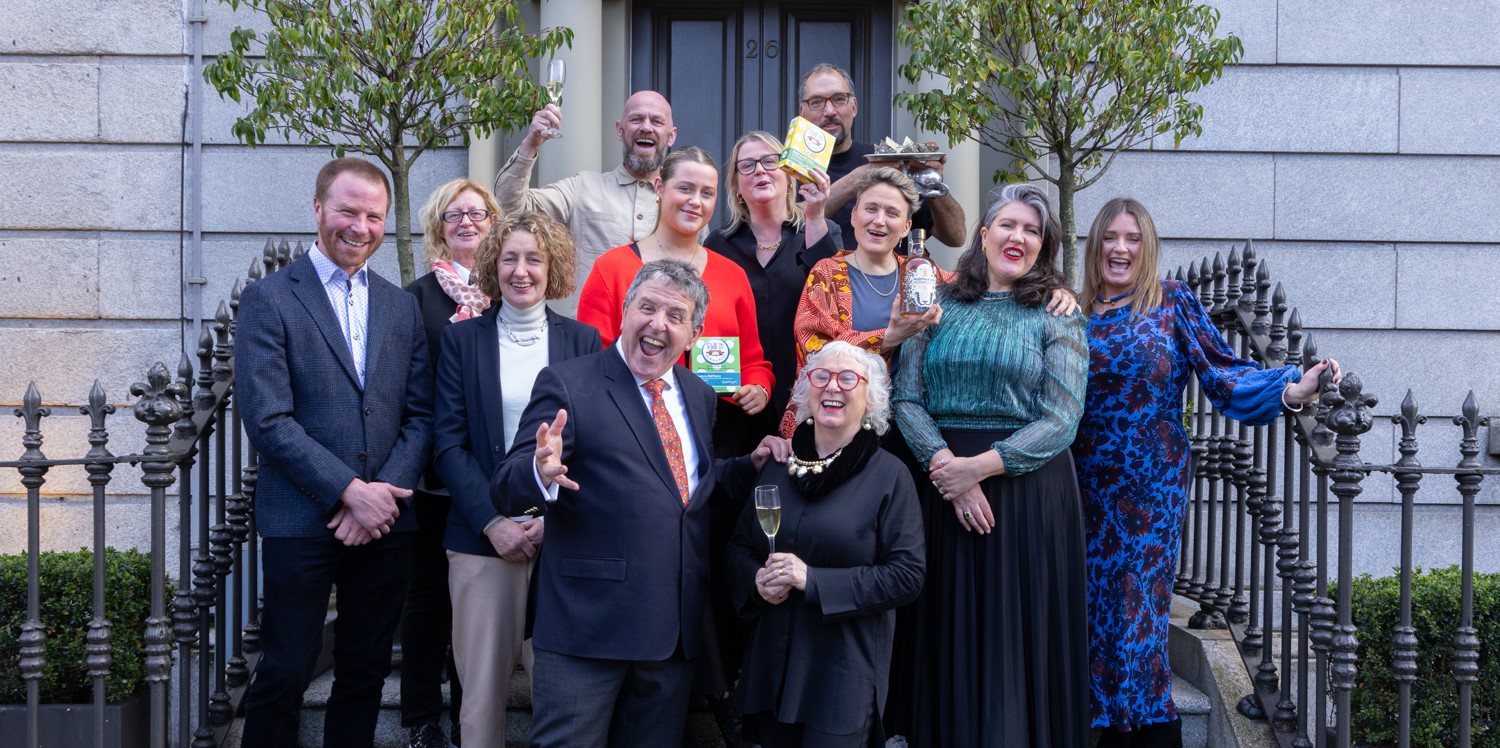
Now in their 31st year, the Irish Food Writers’ Guild Food Awards are very special. The Guild advocates for ethical practices in Ireland’s food and drink sector and the awards are a unique independent celebration of sustainable excellence, promoting ‘distinguishable quality in Irish produce and its committed creators’.
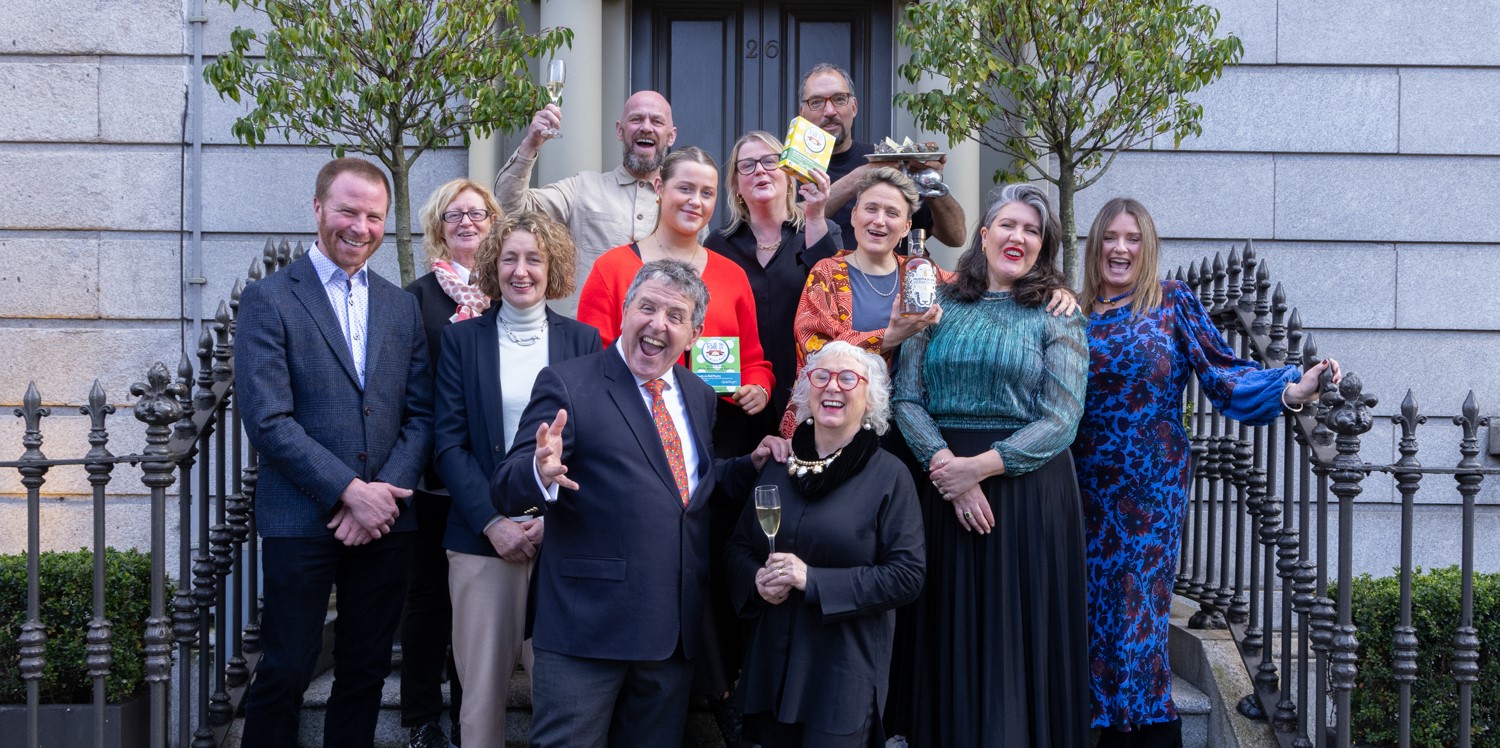
The 2024 awards were celebrated recently at Dublin’s Suesey Street. Of the eight awards presented, five were for food and drink products - Carlingford Oysters, Co Louth; Regan Organic Chicken, Co Wexford; Roll It All Butter Pastry, Co Meath, Rare Ruminare beef, Co Sligo (Environmental Award) and Valentia Island Vermouth, Co Kerry – and they featured stylishly in a celebration lunch menu specially devised by Suesey Street Head Chef, Matt Fuller, to showcase them.
Very much a special occasion menu, Matt Fuller has kindly shared the recipes (see below). Some of the ingredients may come into the sphere of 'molecular gastronomy' (and it's far from that most of us were reared) but they will delight chefs and adventurous cooks who enjoy experimenting with modern cooking techniques, while home cooks with a preference for simpler dishes can adapt the theme to use more familiar methods. And, while each recipe is composed of several elements, they can be simplified by selecting sections of the recipes rather than completing the complex dish. The key point is the sheer quality of the showcased ingredients, any of which can be enjoyed equally for special occasions or everyday cooking.
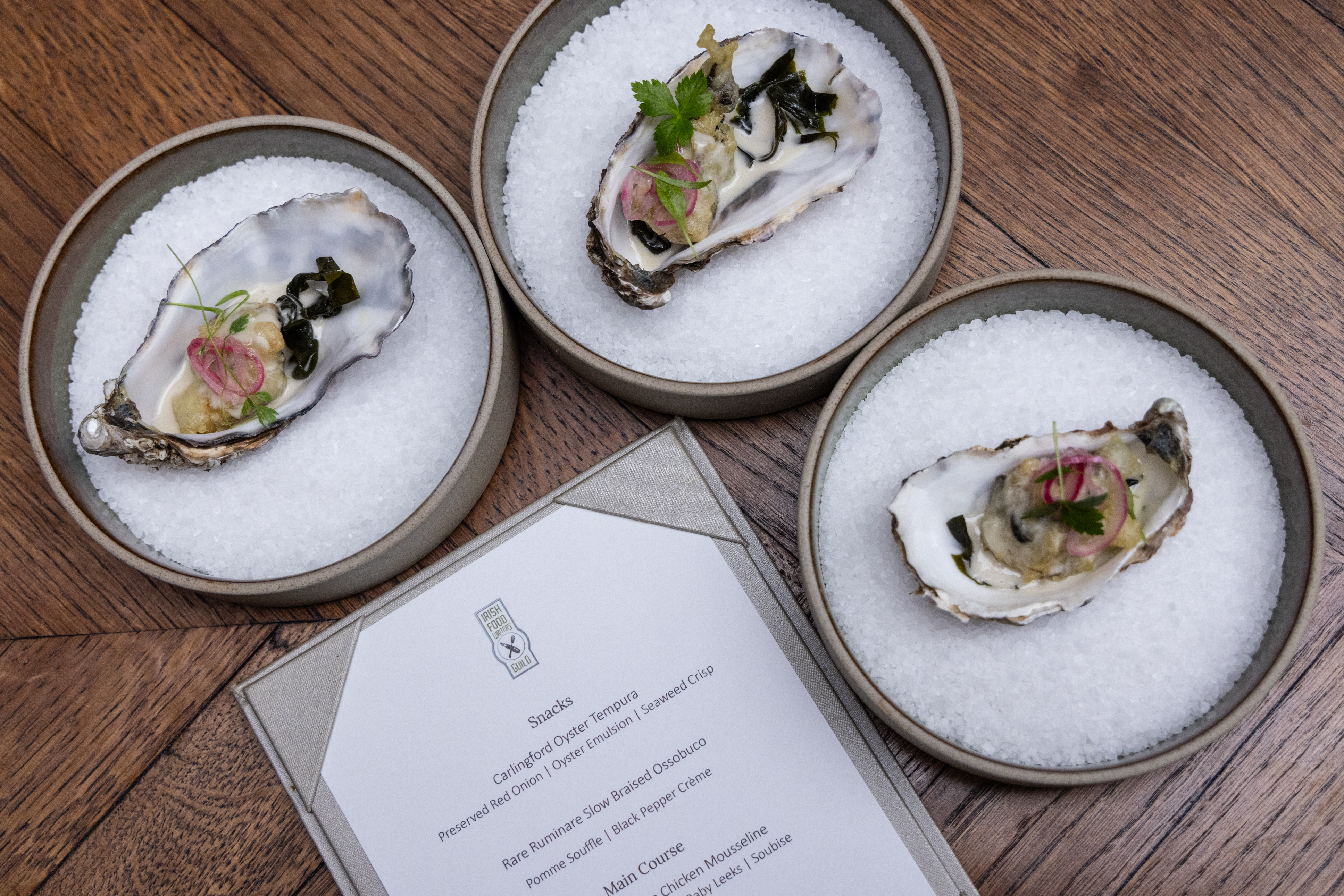
Award Menu devised by Suesey Street Head Chef, Matt Fuller
• Carlingford Oyster Tempura, Preserved Red Onion, Oyster Emulsion, Wakame Salad
• Pomme Soufflé of Rare Ruminare Braised Ossobuco, Black Pepper Crème
• Regan Organic Farm Chicken, Mousseline Potato, Morel & Shallot Stew, Irish Baby Leeks, Soubise
• Valentia Island Vermouth Poached Pear, Roll It All Butter Pastry Feuilletine, Coffee Crème, Oat, Muscovado Ice Cream, Burnt Apple Purée paired with Valentia Island Vermouth
THE RECIPES
1. Snack: CARLINGFORD OYSTER TEMPURA
with Preserved Red Onion, Oyster Emulsion, Wakame Salad
These delicious oysters are coated in a tempura batter that includes trisol, a wheat-based ingredient that is popular with chefs because batters including it remain crunchy for longer than traditional recipes. It is available online but is not necessary for making small quantities that are to be served immediately, so you can use your favourite tempura recipe instead at home. For the emulsion, Ultratex is a tapioca starch thickening agent ‘perfect for Molecular Gastronomy and Modernist Cooking applications’. It is also available online.
Tempura Batter
Ingredients
350g rice flour
100g gluten free flour
10g Trisol
10g salt
630ml sparkling water
Method
In a large bowl, whisk all ingredients together gently.
Preserved Red Onions
Ingredients
100ml white wine vinegar
80g sugar
100ml water
5g salt
2 star anise
5 juniper berries
2 sprigs tarragon
2 small red onions, peeled and thinly sliced
Method
Bring the vinegar, sugar, water, salt and spices to a boil in a medium saucepan. Remove from the heat.
Add the tarragon and red onion.
Pour into a sterilised jar. Cover with a lid and allow to cool before refrigerating.
Oyster Emulsion
Ingredients
6 Carlingford oysters
20ml Chardonnay vinegar
5g Ultratex
250ml sunflower oil
Zest and juice of a lemon
Salt
Method
Shuck the oysters, taking care to reserve the juices.
Put the oysters into a food processor with the vinegar and Ultratex.
Blend on medium speed, drizzling the oil very slowly into the food processor.
Season with the lemon zest, juice and salt.
Finishing the Carlingford Oyster Tempura
Ingredients
1 dozen Carlingford oysters
Wakame salad
Tempura batter
Oyster emulsion
Preserved Red Onions
Method
Preheat fryer to 180C.
Shuck the oysters, making sure to polish the oyster shell. Put some of the wakame salad into the shell.
Whisk the tempura batter and dip the oysters, one at a time, into the batter. Gently lay the oysters in the fryer and fry for about 45 seconds.
Place the fried oyster in the shell with the wakame salad. Spoon on a little emulsion and sprinkle on a few preserved onions.
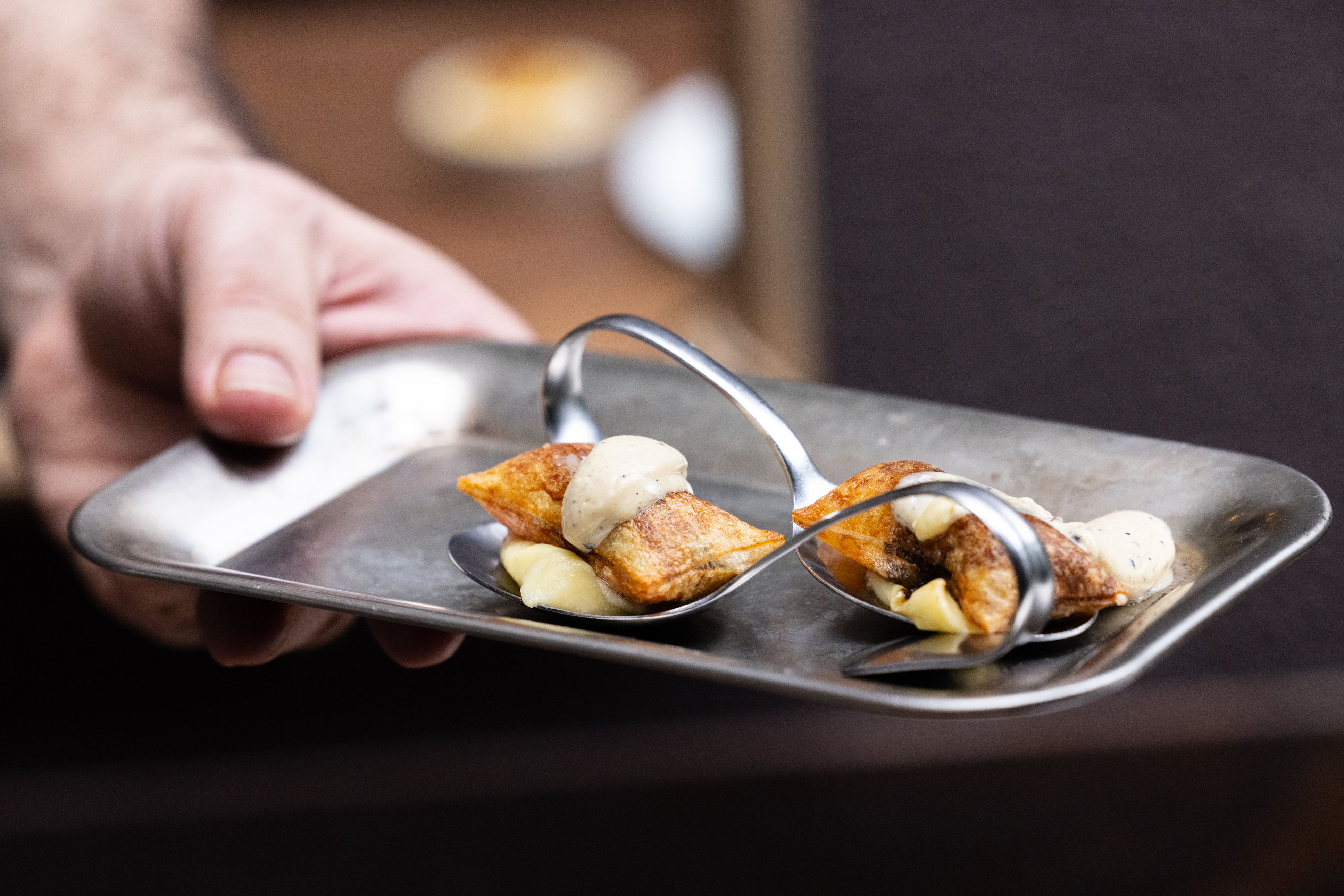
2. Snack: POMME SOUFFLÉ OF RARE RUMINARE BRAISED OSSOBUCO, BLACK PEPPER CRÈME
Braised Ossobuco
Ingredients
2 tbsp olive oil
1kg Rare Ruminare veal shin, sliced into 4cm slices
500ml brown chicken stock
500ml veal stock
2 carrots, peeled and roughly chopped into 2cm chunks
1 onion, peeled and roughly chopped into 2cm chunks
½ head celeriac, peeled and chopped into 2cm chunks
2 leeks, sliced into 2cm pieces
½ bottle red wine
250ml Madeira
1 tsp fennel seeds
3 bay leaves
2 star anise
1 tsp whole black peppercorns
Bunch of thyme
10 shallots, peeled and finely diced
Method
Preheat the oven to 140C.
Heat the olive oil in a large heavy bottomed pan over a medium-high heat. Fry the ossobuco until golden on both sides. Remove from the pan and reserve.
Sweat the vegetables in the same pan, allowing them to colour.
Add the wine and Madeira. Allow to bubble and cook until the pan is almost dry. Return the ossobuco, vegetables, chicken stock and veal stock to the pan with the herbs and spices.
Bring to a simmer on the stove top and then finish in the oven, covered with parchment paper and a lid.
Cook for approximately 2 hours until tender. The meat should be falling off the bone.
Separate the meat, bone, stock and sinew, reserving all three.
Reduce the stock by half.
Pass the sinew through a mincer and fry in a heavy bottomed pot with the shallots.
Add the meat and reduced stock and cook until the mixture resembles a sticky stew.
Brown Chicken Stock
This makes more chicken stock than you'll need but it's worth keeping any extra in the freezer for soups and gravies.
Ingredients
5kg chicken wings
2 onions
1 head of fennel
2 green top carrots
1/8 head celeriac
3 sticks celery
1 leek
4 cloves garlic
2 tbsp olive oil
5 fennel seeds
1 star anise
250ml red wine
7.5 litres white chicken stock
Method
Preheat the oven to 220C. Spread the chicken wings on a large baking tray and roast for approximately 45 minutes, until dark brown.
Clean and slice the vegetables into 4cm pieces.
Heat the olive oil in a stock pot over a medium-high heat. Cook the vegetables until golden.
Add the spices, wine and chicken stock.
Simmer at a low heat for 24 hours. Strain through a fine chinois.
Refrigerate overnight. Take the fat off the top.
Bag and freeze
Veal Stock
Again, this makes more stock than you'll need. Freeze any extra for future use.
Ingredients
5kg veal bones
2 onions
1 head of fennel
2 green top carrots
1/8 head celeriac
3 sticks celery
1 leek
4 cloves garlic
2 tbsp olive oil
5 fennel seeds
1 star anise
375ml red wine
Method
Preheat the oven to 175C.
Spread the veal bones on a large baking tray and roast for 1 hour, or until they reach a deep golden brown.
Clean and slice the vegetables into 4cm pieces.
Heat the olive oil in a stock pot over a medium-high heat. Cook the vegetables until golden.
Add the veal bones, fennel, star anise, wine and enough water to cover.
Simmer at a low heat for 24 hours. Strain through a fine chinois.
Refrigerate overnight. Take the fat off the top.
Bag and freeze.
Pomme Soufflé
Ingredients
1kg Maris piper potatoes, peeled
100g potato starch
3-4 egg whites
Maldon salt
Oil for frying
Method
Preheat fryer to 180C.
Thinly slice the potato. It should be fine, transparent and even.
Dust half of the potato slices with the potato starch.
Brush the other half of the potato slices with egg white.
Pair one potato starch-dusted slice with one egg white-brushed slice and cut to the desired size. Repeat for the whole batch. Fry until they puff up into hollow little pillows
Black Pepper Crème
Ingredients
9g black peppercorns
12g salt
1 litre cream
9 egg yolks
2 leaves gelatine
Extra cream, as necessary
Method
Preheat the oven to 100C.
Toast the whole black peppercorns in a dry pan until the aroma develops and there is a hint of smoke.
Blend the peppercorns in a spice grinder.
Boil the peppercorns, salt and cream in a pot and pour over the egg yolks. Add the gelatine, whisking constantly.
Cook in the oven in a bain-marie (as per a crème brulee) for approximately 90 minutes.
Allow to cool and blend with a touch of extra cream until you reach the desired texture.
Allow to set in the fridge.
Finishing the Pomme Soufflé of Rare Ruminare Braised Ossobuco
Ingredients
Pomme Soufflé
Braised Ossobuco
Black pepper crème brúlée
Potato mousseline
Fennel cress
Method
Fry the pomme soufflé.
Warm the ossobuco.
When the pomme is fried, stuff it with the ossobuco braise and some potato mousseline.
Put a small dot of mousseline onto a plate, place the soufflé on top and finish with a quenelle of black pepper crème.
Decorate with fennel cress.
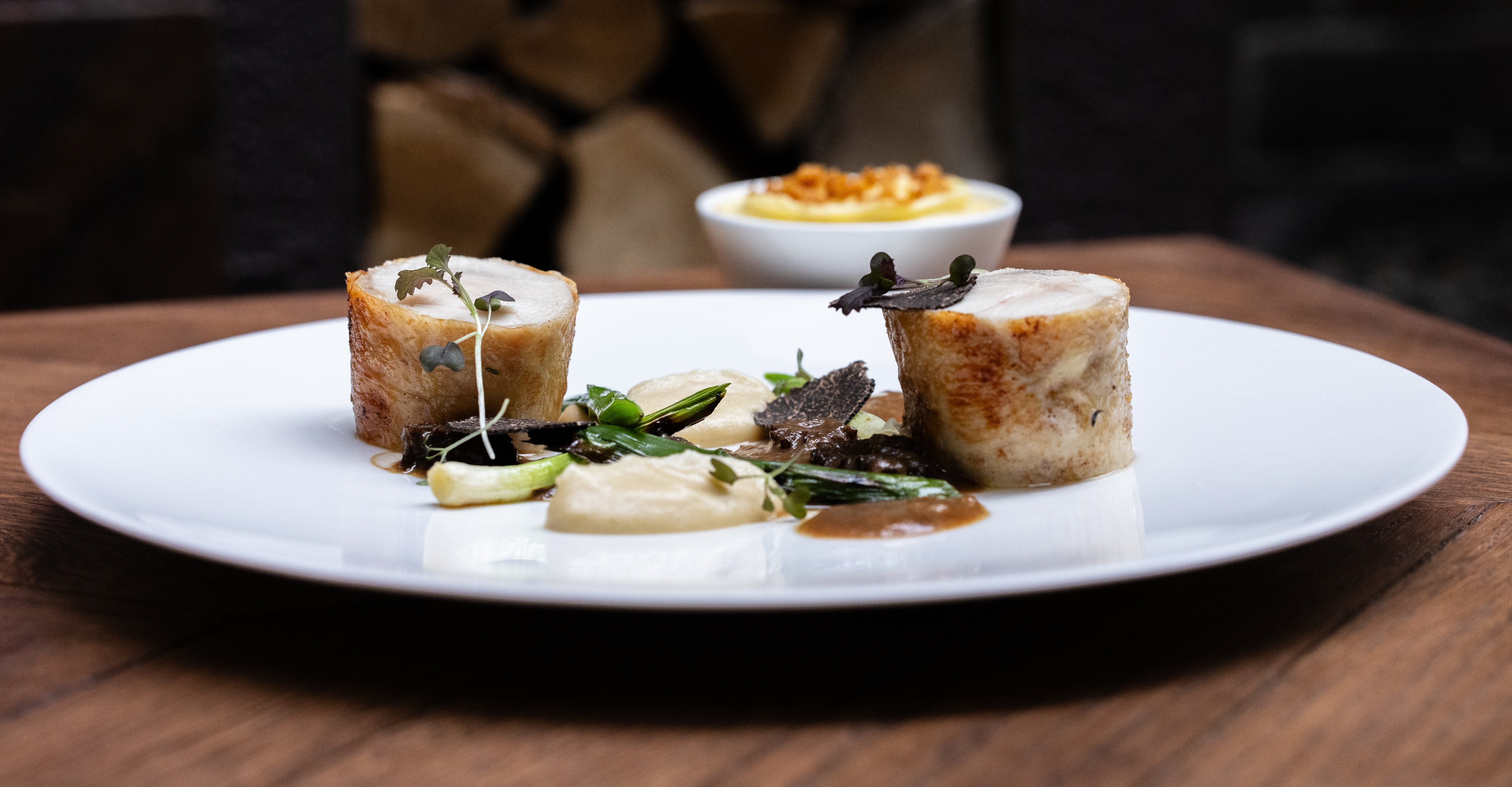
3. Main Course:
REGAN ORGANIC CHICKEN MOUSSELINE POTATO
with Morel & Shallot Stew, Irish Baby Leeks, Soubise
Regan Organic Chicken
Brine for chicken
Ingredients
5 lemons
6 bay leaves
100g flat leaf parsley
30g fresh thyme
85g honey
1 head of garlic
14g black peppercorns
275g salt
2 litres water
2kg ice
Method
Put all the ingredients except the ice in a large pot.
Bring to the boil, then take off the heat. Add the ice and allow to cool.
Reserve in the fridge for 24 hours. After that it must be discarded.
Chicken Mousseline
Ingredients
500g chicken skins
500g unsalted butter
Maldon sea salt
500g ratte potatoes
125ml milk
125ml cream
Maldon salt
Method
Preheat the oven to 170C.
Fry chicken skins in the butter over a low heat to render their fat. Drain the butter and reserve.
Put the skins on a baking tray and roast for 10-15 minutes until golden and crispy. Chop and season with a little Maldon sea salt.
Cook the potatoes in a saucepan of salted water until tender enough to be easily pierced with a fork, about 20-25 minutes. Drain and peel. Return to the hot pan.
In a small saucepan, bring the milk, cream and reserved butter to the boil.
Mash the potatoes and whip with the hot dairy mixture. Season.
Butter Poached Leeks
Ingredients
12 baby leeks
A knob of butter
A couple of sprigs of thyme
Salt
Method
Thoroughly clean the leeks and put into a vac pack bag with butter, salt, and thyme.
Put the bag into a simmering pot of water for approximately 1 minute or until the leeks are tender.
Put the bag into iced water to cool.
Morel and Shallot Stew
Ingredients
200g large morel mushrooms, cleaned
1-2 tbsp olive oil
4 shallots, peeled and finely diced
100ml Madeira
250ml brown chicken stock
A dash of cream
Method
Cut the stalks and tips from the morels.
Heat the oil in a skillet over a medium heat. Add the morel stalks and shallots to the skillet and fry until fully cooked.
Tip in the Madeira and bubble off until well reduced.
Add the chicken stock and cream. Reduce until the sauce darkens.
Blend in a food processor and pass through a fine chinois.
Slice the rest of the mushrooms into 5mm slices.
Lightly fry the mushroom slices in a little more oil.
Pour the sauce onto the mushroom slices and simmer for 2 minutes.
Finishing the Regan Organic Chicken
Ingredients
Regan Organic Chicken crown
Brine for chicken
Chicken mousseline
Butter pached leeks
Morel and shallot stew
Onion soubise
Oil for cooking
Cold diced butter
Garlic cloves, peeled
Thyme
Method
Remove the skin from the crown and reserve for the mousseline. Remove the breasts from the carcass.
Put the breasts into the brine and refrigerate for 12 –18 hours.
Roll the breasts in the reserved skin and roll in cling film to create a sausage-type shape.
Vac pack the chickens without removing the cling film and poach at 59C for 55 minutes. Chill in ice water.
Heat the mousseline, leeks, morel stew and onion soubise.
Cook the chicken in a hot pan, making sure to turn it regularly and get a good golden colour all over. Add cold diced butter to get a good foam in the pan. Add the garlic and thyme towards the end of cooking time.
Slice the chicken into 4 pieces.
Cut the leeks into 2cm pieces and warm in a little butter emulsion.
Sauce the plate with morel stew and put some of the soubise around the plate
Plate the leeks on the soup and place the chicken on the plate.
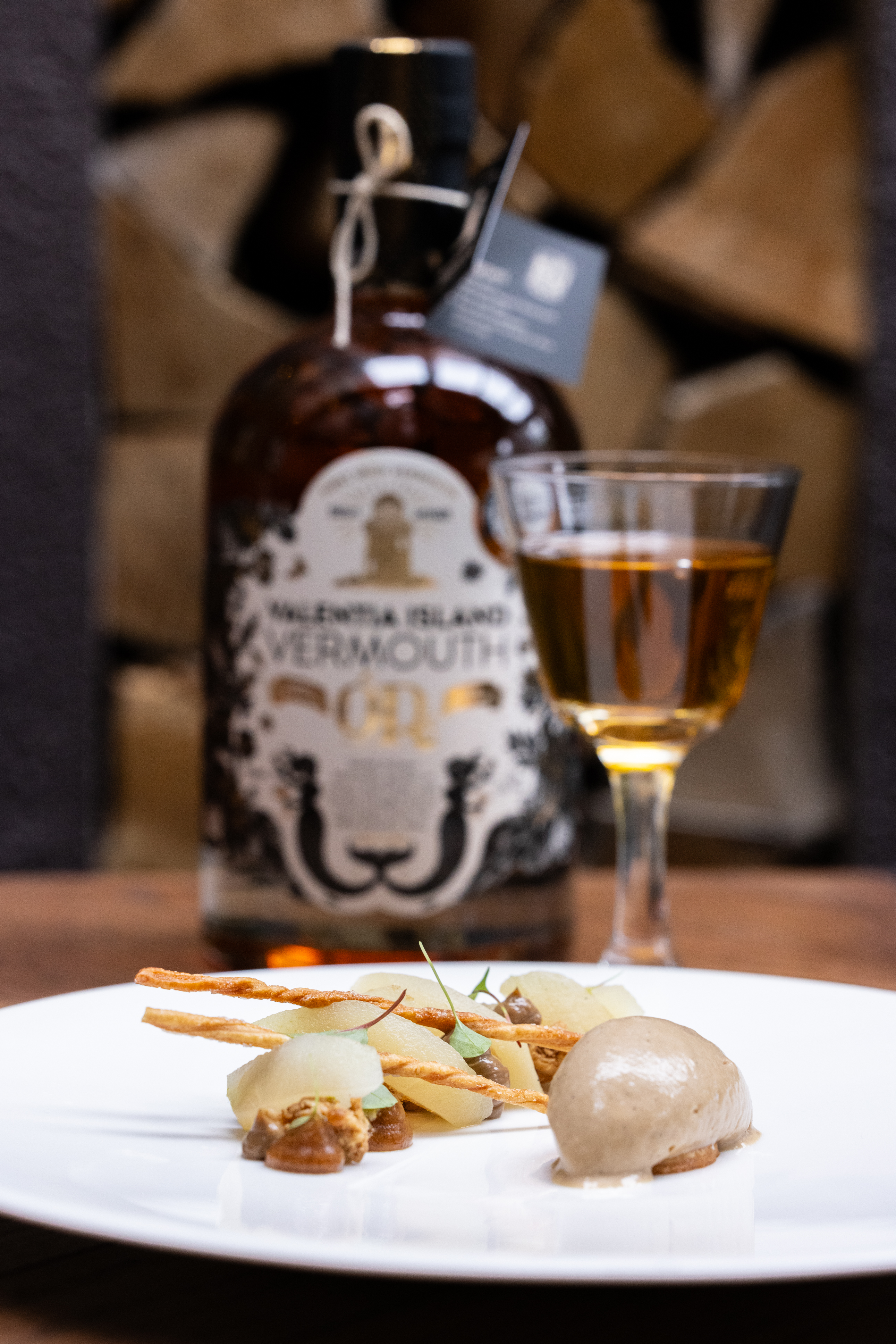 4. Dessert: VALENTIA ISLAND VERMOUTH POACHED PEAR ROLL IT ALL BUTTER PASTRY FEUILLETINE
4. Dessert: VALENTIA ISLAND VERMOUTH POACHED PEAR ROLL IT ALL BUTTER PASTRY FEUILLETINE
with Coffee Crème, Oat, Muscovado Ice Cream, Burnt Apple Purée
Agar Agar is available from speciality food shops such as Kates Kitchen in Sligo and online from KatesKitchen.ie
Valentia Island Vermouth Poached Pear
Ingredients
4 Comice pears, peeled, cored and halved.
200ml Valentia Island Vermouth
15g lemon juice
25g sugar
½ vanilla pod
Method
Put all of the ingredients into a vac pack bag.
Heat the water bath to 80C and poach for 20-30 minutes.
Coffee Custard
Ingredients
10g agar agar
100g demerara sugar
150g muscovado sugar
300ml oat milk
750ml cream
30g coffee extract
10g vanilla extract
200g egg yolks
Method
Mix the agar agar with the demerara sugar.
Put the agar agar / demerara sugar mixture and all of the ingredients, except the egg yolks, into a deep saucepan and bring to a simmer.
Whisk the egg yolks in a large bowl. Pour over the simmering liquid while still hot and whisk until incorporated
Cool in the fridge for at least 2 hours.
Blend in a high speed blender and reserve in bottles.
Burnt Apple Purée
Ingredients
5 Granny Smith apples, quartered and cored
50g sugar
Pinch of salt
Method
Preheat the oven to 170C. Line a baking tray with parchment paper.
Slice apples thinly and lay on an oven tray. Sprinkle with the sugar and salt.
Bake in the oven for 20 minutes. Stir the apples and bake for another 20 minutes.
Blend in a high speed blender and pass through a sieve.
Oat Crumble
Ingredients
200g cold butter
75g muscovado sugar
60g caster sugar
Seeds of 1 vanilla pod
250g rolled organic oats
200g almond nibs
Method
Preheat the oven to 170C and line a baking tray with parchment paper.
Put the butter, sugars and vanilla seeds into the bowl of a stand mixer. Mix on low speed until just combined.
Add the oats and almonds and mix until incorporated.
Spread on the lined baking tray and cook for 12 minutes.
Roll It All Butter Pastry Feuilletine
Ingredients
100g water
150g caster sugar
400g Roll It All Butter Puff Pastry
Icing sugar to dust
Method
Preheat the oven to 170C and line two baking trays with parchment paper.
Place the water and caster sugar into a small saucepan and warm over a medium heat until the sugar is dissolved.
Roll the pastry out to 4mm.
Brush with the syrup and dust with icing sugar.
Cut into strips, 2cm wide and 15cm long. Holding one end gently, roll the other until the strip is loosely twisted.
Cook for 10 minutes until golden brown and crunchy.
Allow to cool on a wire tray.
Muscovado Ice Cream
Ingredients
300ml cream
400ml milk
20g glucose
Seeds of ½ vanilla pod
180g egg yolk
150g muscovado sugar
50g caster sugar
Method
Pour the cream, milk , glucose and vanilla into a deep saucepan and bring to the boil.
Mix the egg yolks and the sugars together in a large bowl.
Pour the boiling cream mixture onto the yolks, whisking constantly.
Pour back into the saucepan and return to the heat, stirring constantly, until the mixture reaches 82C.
Cool and churn in an ice cream machine as per the manufacturer's instructions.
Finishing the Valentia Island Vermouth Poached Pear
Poached pear
Lime, juice and zest
Coffee Custard
Burnt Apple Purée
Oat Crumble
Roll It All Butter Pastry Feuilletine
Red sorrel cress
Muscovado Ice Cream
Method
Cut the pear into wedges and cut in half across the length.
Place the pear in a steel bowl and dress with a few drops of lime juice and some zest.
Pipe small amounts of the coffee custard and apple pureé in small piques creating a crescent moon shape on the plate.
Break up the oat crumble into thumb sized pieces and place at intervals on-top of your crescent moon design.
Put your poached pears at intervals between the oat crumbles and decorate with the pastry feuilletine and red sorrel cress.
Serve with an elegant rocher (one-handed quenelle) of the muscovado ice cream
SPECIAL EVENTS AT THE WORLD-RENOWNED WOODCOCK SMOKERY IN WEST CORK
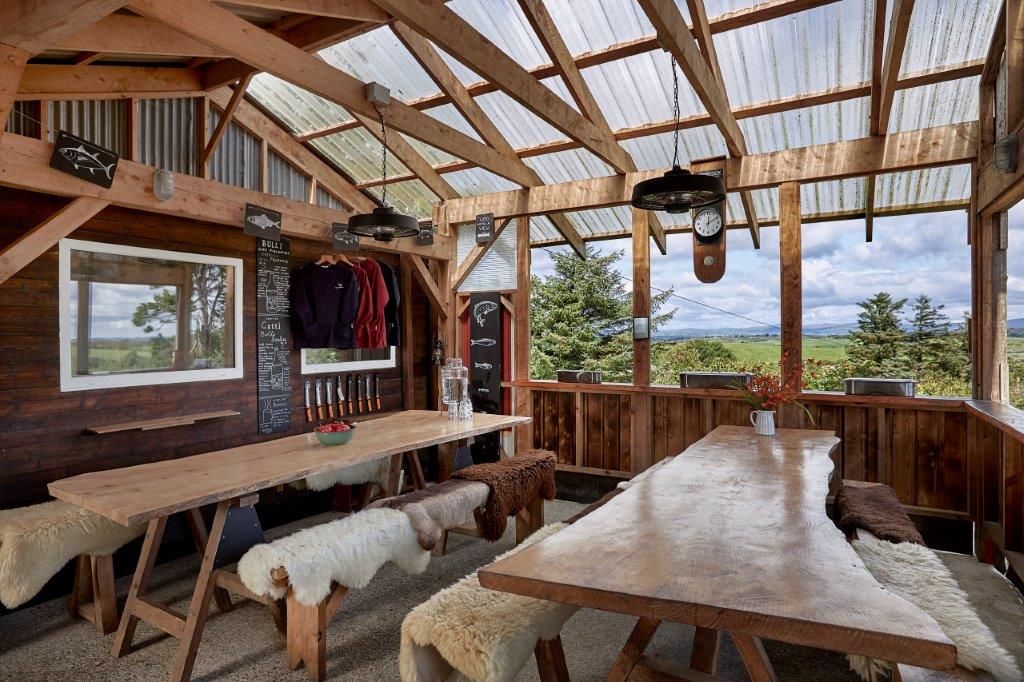
 Busy-bee chef ANTHONY O’TOOLE explains how he’s getting together with the legendary SALLY BARNES to host a Producer x Chef event series in West Cork over the next few months – with more events to be announced for 2025.
Busy-bee chef ANTHONY O’TOOLE explains how he’s getting together with the legendary SALLY BARNES to host a Producer x Chef event series in West Cork over the next few months – with more events to be announced for 2025.
Ain't I lucky to be able to say that Sally Barnes is a close friend of mine? We’ve been pals for many years, meeting in the early days of Theatre of Food at Electric Picnic. Worried about food security and climate change long before it became an essential topic on every government list, we’ve since travelled the world together as Slow Food activists, participating in different events and educating people and politicians on what is happening to our global food systems and ways to counteract it.
I learned about Sally before we became friends, through reading cookery books and my Culinary Arts degree course at DIT Cathal Brugha Street (now TU Dublin), as she is one of the key figures in Ireland's food renaissance of the last forty-plus years. Alongside other pioneering women in the Irish food community, like Myrtle and Darina Allen (Ballymaloe), Veronica Steele (Milleens Cheese), Jeffa Gill (Durrus Cheese), Iris Diebrok (Orla Cheese), Giana Ferguson (Gubbeen Cheese), Madeline McKeever (Brown Envelope Seeds) and Danette Milne (Danette's Feast), Sally has made it her business to ensure that Ireland's indigenous food culture is celebrated and experienced by locals, visitors, and international tourists.

From the moment we met, we got along so well, ranting about everything that’s wrong with the world of food. And for twelve years now, I've retreated to West Cork to Sally's a few times a year to help with smoking and packing fish, organise events, and soak up some fresh air. It’s a place where I get to switch off, think, and breathe. Anyone who has visited Sally's home knows what I mean. She is the essence of hospitality.
Among many things, Sally and I have been talking for some time about hosting an event series at her new fish-smoking school called The Keep (https://www.woodcocksmokery.com/). She designed this space a few years ago to exchange knowledge and traditional skills of wild food preservation. Sally is the only fish smoker left in Ireland who only smokes wild fish. Many chefs, producers, writers and other activists admire her determination to educate regulators on what is happening to our rivers and oceans, particularly why wild Atlantic salmon is becoming a rare treat. Anyone interested in learning more, can listen to a recent Podcast with Michael Kelly of GIY here (https://giy.ie/episode-7-sally-barnes-irelands-wild-salmon-warrior/)
After 44 years of working through the ups and downs of running a small artisanal business, Sally took a sabbatical early this year to write her first book. During this time, she told me she wanted to do more events and courses, educating people on what is happening to wild fish instead of returning to full-time production. Sourcing pristine wild fish is becoming harder for Sally, along with jumping through the many obstacles our food regulatory bodies put in front of small artisan producers.
Being stronger together, we invited other like-minded culinary creatives to use the space, deciding to organise an event series with some of our favourite chefs in Ireland and further afield alongside brilliant producers. Anyone we have asked said YES, so it is now all about finding the right time to host a magnificent event.

We are hosting a few special Sunday Lunches for the first round of the Series. A few weeks ago, we kicked off with Con McLoughlin and Karen Austin of the Lettercollum Kitchen Project (https://lettercollum.ie/) , with a Wild Salmon feast alongside delicious vegetables from their walled garden. Like Sally, Con and Karen are legends in West Cork, known for their cooking and celebrating their travels through their delicious ingredients.
Another event was with one of Ireland's most exciting young chefs, Aishling Moore of Goldie in Cork City (https://goldie.ie/), who cooked a delectable lunch with three of her team. What a lunch! We were treated to some of their famous snacks featuring Rossmore native oysters, alongside a beast of a Halibut from Ballycotton, potatoes from the Churchfield community trust gardens, and vegetables from Singing Frog in West Cork.
Next up is the Bean Queen Ali Honour (https://www.ali-honour.com/about) on Sunday, 22nd September, which promises to be an event to attend, with lots of organic vegetables, a few beans of course, and Sally's smoked fish. Ali is heavily involved with the United Nations' Chefs Manifesto community, working on the 'Beans is How' campaign, an ambitious campaign mobilised by the SDG2 Advocacy Hub to double the consumption of beans by 2028.
Tickets for the Sunday lunch are €100, which includes a welcome drink and snacks before a three-course lunch. See www.woodcocksmokery.com for booking details.
More dates will be announced for the rest of the year, with chefs like Caitlin Ruth and Mark Jennings with something special for the Christmas period. I will also cook a feast myself, featuring produce from my Fat Tomato horticulture project (https://www.anthonyotoole.com/edible-garden) Sally and I are also working on a three-day West Cork retreat, bringing in some other food and drink experts and storytellers, details to be revealed very soon.
Keep an eye out on Instagram @WoodcockSmokery and @AnthonyOToole_
2024 Georgina Campbell Irish Food & Hospitality Awards

Ireland’s Hotel, Restaurant, Hospitality Hero, and Pub of the Year announced at National Awards Ceremony
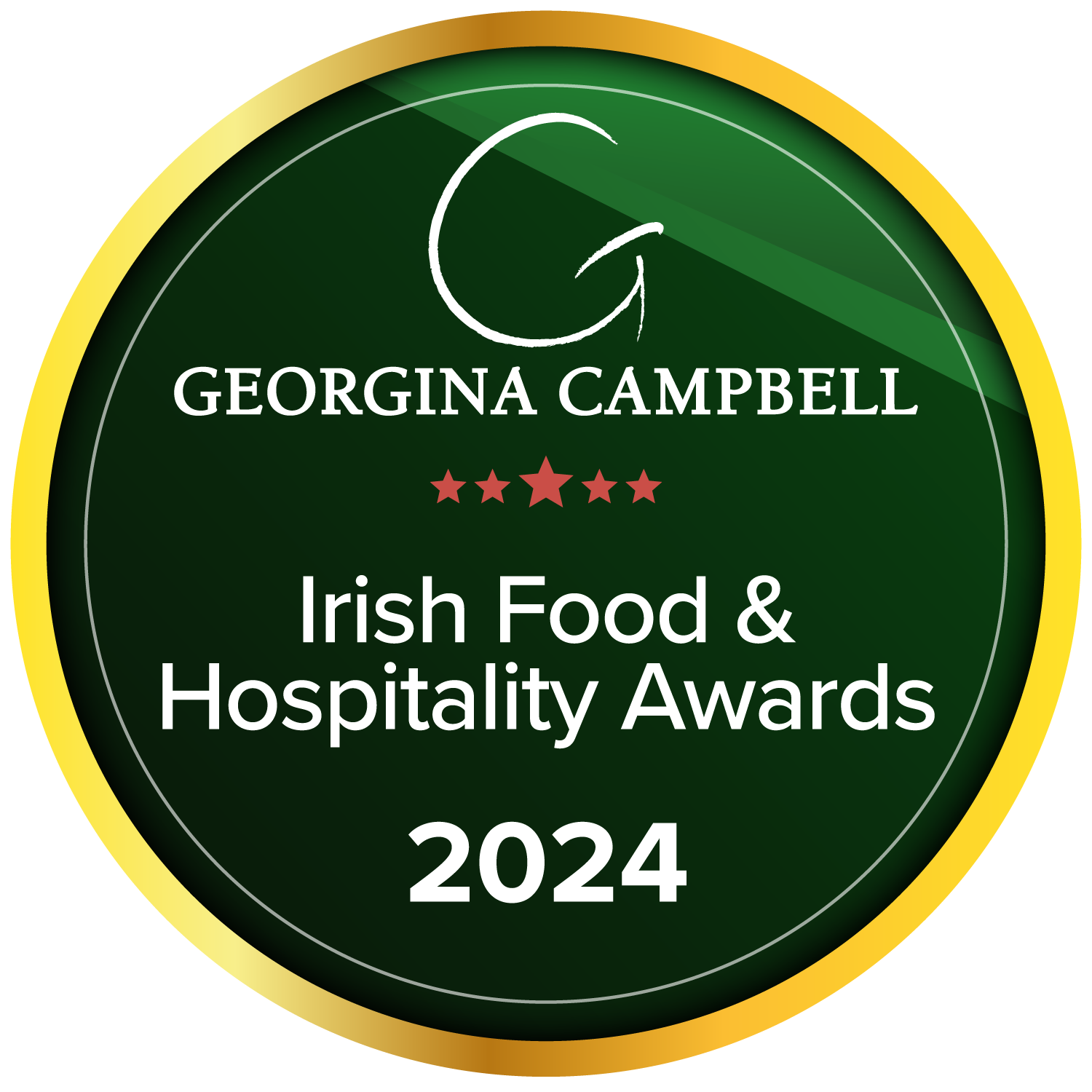
From newcomer of the year to the most pet-friendly destination and Ireland’s finest host, the 2024 winners of the annual Georgina Campbell Irish Food & Hospitality Awards are announced
• Chef of the Year awarded to Danni Barry of Ballynahinch Castle Hotel
• Sheen Falls Lodge is 2024 five-star hotel of the year
• OX in Belfast announced as Fine Dining Restaurant of the Year
• Dromoland Castle’s Mark Nolan honoured as the Hospitality Hero of the Year
• Wren Urban Nest in Dublin receives 2024 Sustainability Award
• Castle Grove Country House, Letterkenny awarded the coveted Irish Bread Award
• Six selected for this year's special Casual Dining awards group
15th October 2024: Celebrating Ireland’s gold standard champions of the food and hospitality industries, the winners of the Georgina Campbell Food & Hospitality Awards 2024 were announced today.
Ireland’s longest running food and hospitality awards, the selections are the result of independent all-year assessments by a team of anonymous experts. This year, the great benefits of regional collaborations in creating hubs of excellence around the country are especially recognised, along with the increased importance placed by the food and hospitality sector on sustainability and supporting Irish producers - who are celebrated in a special category of the awards as providing the foundation of all of our good food.
There was also a note of caution about falling standards in some areas, however, particularly around the most important meal of the day: breakfast.
Cost-cutting is understandable and often necessary in the current business environment, but it needs to be done with care. Slashing the quality of breakfast in an otherwise enjoyable experience is counter-productive, and leaves guests disappointed on departure. But, as usual, this year’s Irish Breakfast Award winners are setting a gold-star standard for the famous Irish breakfast and showing how a reputation for serving an outstanding breakfast can be good for business.
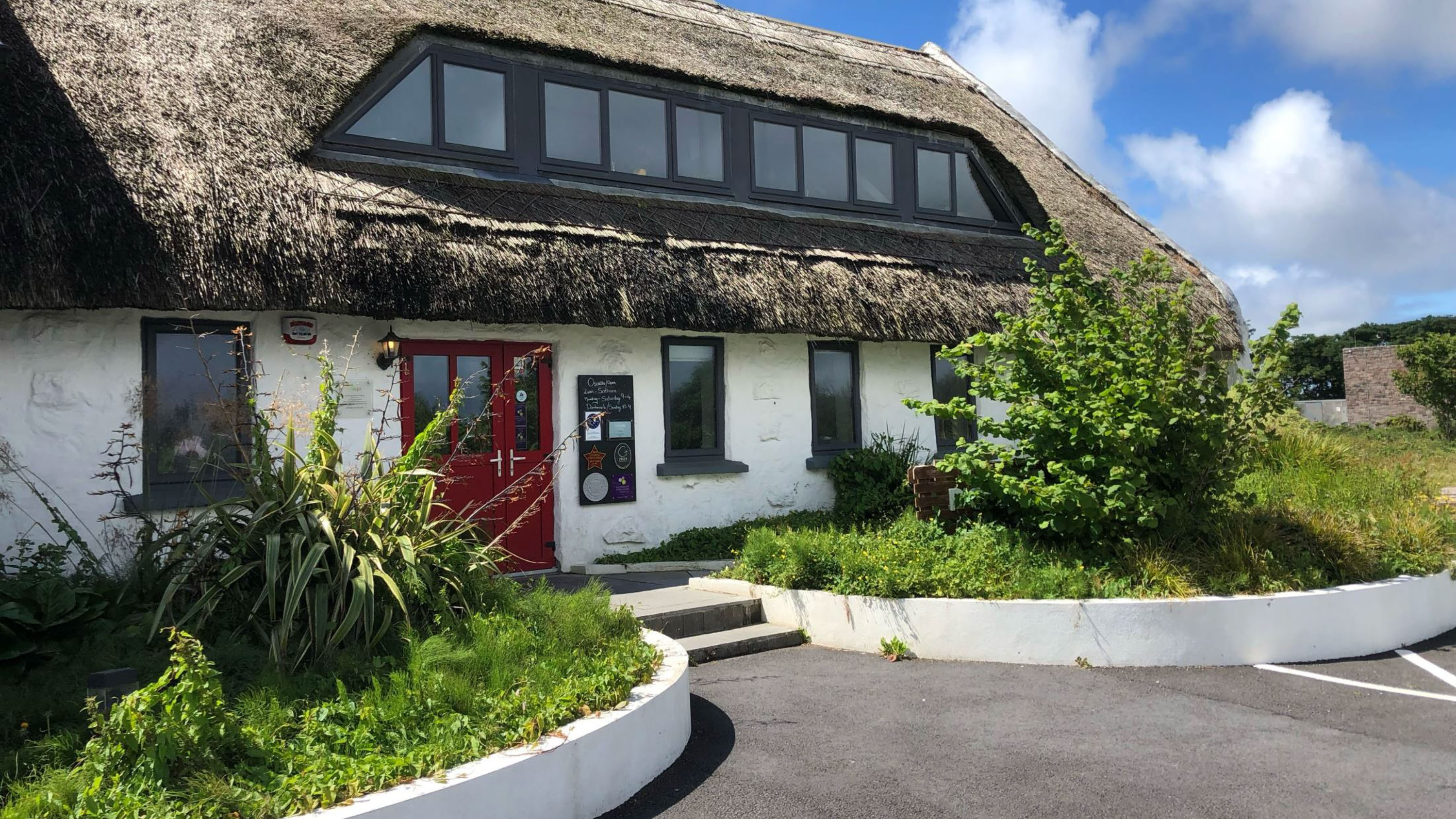
The ceremony featured an engaging panel discussion and a lively Q&A with special guest and award-winning Irish chef, Richard Corrigan, who is a great ambassador for Irish food and an inspiration for young people considering a career in hospitality. This year, Georgina particularly acknowledged the achievements of those who have been striving for high standards over many years and continue to do so in the face of all kinds of challenges – and the new ‘Long Haul Hero’ award (Mary Wall, Hanora’s Cottage, Waterford), is a specific recognition of those special people.
We need to encourage more young people to see the food and hospitality industry as an exciting option. Even quite young children could experience the enjoyment of doing rewarding work with a hospitality team, and that could create positive associations that would remain with them later, when career choices are to be made. Waterford’s GIY (Grow It Yourself) initiative is a great example of this approach. It is not enough to tell a child about the hospitality sector, we must help them to develop an early interest and that could shape the sector’s future pioneers from the get-go.
Community spirit
The sense of resilience, determination, and collaborative spirit amongst tourism bodies, food producers and hospitality operators, is something to strive for, alongside the wider community and businesses working together for the betterment of all. There are great examples of groups working together to better their community and region as much as their individual business at the moment which brings new meaning to the Irish adage of ‘a hundred thousand welcomes. It’s a challenging time in the hospitality industry, with restaurant closures and a Budget that was tough on the sector, but it’s an incredibly exciting one when you consider, not only the talent of our winners, but also their willingness to give back.
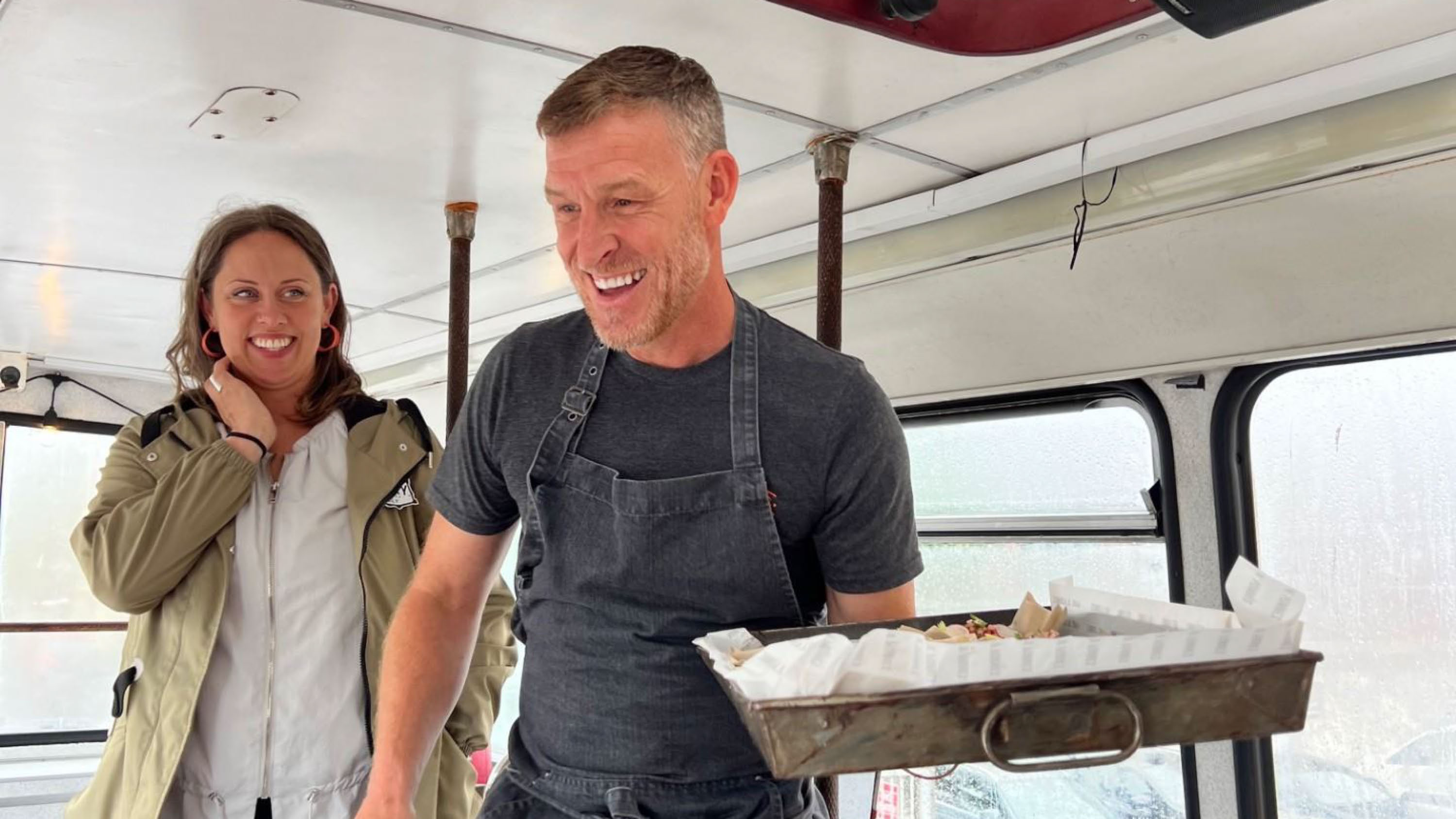
Sustainability
Something special that we noticed this year was how the rise of the kitchen garden is accelerating. We’re seeing more chefs getting actively involved in this eco-friendly initiative and not just paying lip-service to the concept. Growing their own seasonal produce is something for establishments to be proud of, as well as having environmental benefits. It’s great to be working with deliciously fresh, nutrient-dense produce grown right outside your door, and it’s a point of special interest for guests.
The rise of the bakery
And there are some particularly exciting developments at the moment It’s wonderful to see the continuing rise of the bakery, deli, café concept throughout Ireland. These small businesses are serving their local communities in a unique way as they are supporting local farmers and other Irish suppliers by sourcing ingredients from them – and creating very special experiences for visitors to enjoy.
Room for improvement
But, although service has improved a lot this year and there is generally a warmer feel to hospitality, shortcuts are being taken in some establishments. We would like to see cost challenges addressed in more imaginative ways than cutting quality – by offering more choice of sizes for dishes on menus, for example, and reducing waste overall. That the shorter weeks and shorter opening hours that resulted from the pandemic are still continuing in many places – often together with higher prices - is not helping matters and must be discouraging for people thinking about having a break or a meal out.
SCROLL DOWN FOR LIST OF WINNERS
GEORGINA CAMPBELL IRISH FOOD & HOSPITALITY AWARD WINNERS 2024
1. GEORGINA CAMPBELL ‘HOSPITALITY HERO’ AWARD 2024
- Mark Nolan, Dromoland Castle, Co Clare
2. GEORGINA CAMPBELL ‘MOVERS & SHAKERS’ AWARD 2024
- Sally Barnes, Woodcock Smokery, Skibbereen, Co Cork
3. GEORGINA CAMPBELL BEST SUPPORTER OF IRISH FOOD & DRINK PRODUCERS 2024, sponsored by Bord Bia
- The Coach House, Roundwood, Co Wicklow
4. GEORGINA CAMPBELL FINE DINING AWARDS 2024
- FINE DINING RESTAURANT OF THE YEAR 2024: OX, Belfast
- FINE DINING HOTEL RESTAURANT OF THE YEAR 2024: House Restaurant, Cliff House Hotel Ardmore, Co Waterford
- NEIGHBOURHOOD FINE DINING RESTAURANT OF THE YEAR 2024: The Lemon Tree Restaurant, Letterkenny, Co Donegal
- BIJOU FINE DINING RESTAURANT OF THE YEAR 2024: Restaurant Chestnut, Ballydehob, Co Cork
- CHEF OF THE YEAR 2024: Danni Barry, Ballynahinch Castle Hotel, Recess, Co Galway
5. GEORGINA CAMPBELL HOTEL OF THE YEAR AWARDS 2024
- 5-Star Hotel of the Year: Sheen Falls Lodge, Kenmare, Co Kerry
- 4-Star Hotel of the Year 2024: Kilkea Castle Estate & Golf Club, Castledermot, Co Kildare
- 3-Star Hotel of the Year 2024: Foyles Hotel, Clifden, Co Galway
- Boutique Hotel of the Year 2024: Elephant Rock Hotel, Portrush Co Antrim
- Business Hotel of the Year 2024: The Horse & Jockey Hotel, Horse & Jockey, Co Tipperary
6. GEORGINA CAMPBELL ‘SMALL STAY’ AWARDS 2024
- COUNTRY HOUSE: Ballyvolane House, Fermoy, Co Cork
- GUESTHOUSE: Teach de Broc, Ballybunion, Co Kerry
- B&B: Barnahown, Mitchelstown, Co Cork
- HIDEAWAY: No. 1 Pery Square, Limerick
7. GEORGINA CAMPBELL CASUAL DINING AWARDS 2024
- HISTORIC DESTINATION: Stitch & Weave, Derry, Co Londonderry
- RESTAURANT & BAR: Sadler’s, Fethard, Co Tipperary
- SMART-CASUAL DINING: The Glass Curtain, Cork
- NEIGHBOURHOOD RESTAURANT: No 14 Georgian House, Comber, Co Down
- BAKERY-CAFÉ 2024: Ursa Minor Bakehouse, Ballycastle, Co Antrim
- STREET FOOD 2024: Pyke’n’Pommes, Derry
8. GEORGINA CAMPBELL SPECIALITY HOSPITALITY & SUSTAINABILITY AWARDS 2024
- VISITOR ATTRACTION 2024: The Shed Distillery & Jackalope Café Drumshanbo Co Leitrim
- TASTE OF THE WATERWAYS AWARD 2024: The Purple Onion, Tarmonbarry, Co Roscommon
- INNOVATION AWARD 2024: Ballykilcavan Farm & Brewing Company, Stradbally, Co Laois
- SUSTAINABILITY AWARD 2024: Wren Urban Nest, Dublin
- SEAFOOD RESTAURANT OF THE YEAR 2024: QC’s Seafood Restaurant, Quinlan & Cooke Boutique Townhouse, Caherciveen, Co Kerry
- SEAFOOD CHEF OF THE YEAR 2024: Aishling Moore, Goldie, Cork
- GLOBAL CUISINES AWARD 2024: Nightmarket, Dublin
9. GEORGINA CAMPBELL ‘MEMORABLE MOMENTS’ AWARDS 2024
- HAPPY PLACE AWARD 2024: Osteria Lucio, Dublin
- MEMORABLE EXPERIENCE AWARD 2024: The Drawing Room at Ashford Castle, Cong, Co Mayo
- NEWCOMER OF THE YEAR 2024: Farmgate Lismore, Lismore, Co Waterford
- GASTRO-PUB OF THE YEAR 2024: Deerpark Inn, Virginia, Co Cavan
- TRADITIONAL PUB OF THE YEAR 2024: Thomas Connolly Traditional Pub & Whiskey Bar, Sligo, Co Sligo
- WINE EXPERIENCE 2024: Ristorante Rinuccini, Kilkenny, Co Kilkenny
10. GEORGINA CAMPBELL ‘SPECIAL IRISH HOSPITALITY’ AWARDS 2024
- FAMILY FRIENDLY HOTEL OF THE YEAR 2024: McWilliam Park Hotel, Claremorris, Co Mayo
- PET FRIENDLY DESTINATION OF THE YEAR 2024: Seaview House Hotel & Spa, Ballylickey, Co Cork
- ATMOSPHERIC DESTINATION OF THE YEAR 2024: The Old Inn, Crawfordsburn, Co Down
- HOSTS OF THE YEAR 2024: Margaret & Laura Bowe, Marlfield House, Gorey, Co Wexford
- LONG HAUL HERO 2024: Mary Wall Hanora's Cottage Nire Valley Co Waterford
11. GEORGINA CAMPBELL IRISH BREAKFAST AWARDS 2024 sponsored by Flahavan’s
- HOTEL: Gregans Castle Hotel, Ballyvaughan, Co Clare
- COUNTRY HOUSE: Rathsallagh House, Dunlavin, Co Wicklow
- GUESTHOUSE: Castlewood House, Dingle, Co Kerry
- CAFÉ: POTA Café, Inverin, Co Galway
- IRISH BREAD AWARD: Castle Grove Country House, Letterkenny, Co Donegal
12. GEORGINA CAMPBELL ‘NATURAL FOOD’ AWARDS 2024 (PRODUCERS)
- MEATS: Higgins Family Butchers, Dublin
- DAIRY: Dart Mountain Cheese, Claudy, Co Londonderry
- HONEY: Sliabh Aughty Honey, Leahy Beekeeping, Carrownmore, Co Galway
- FRESH PRODUCE: Waterfall Farms, Waterfall, Co Cork
A LONG TIME COMING - ANTHONY O'TOOLE'S HORTICULTURE PROJECT, FAT TOMATO, IS ABOUT TO RIPEN. IT ONLY TOOK 8 YEARS!

 Perched on the picturesque Carrig Rua Hill in North Wexford behind his parents’ house, Anthony’s tiny garden is now home to over 500 varieties of organic heritage seeds and plants. What began in 2016 with a polytunnel from Anthony’s friends at Highbank Orchards in Kilkenny, a ‘handful’ of organic seeds from Brown Envelope Seeds in West Cork and Irish Seed Savers in Clare, a lively compost heap, some feathered friends, and a commitment to working with nature, Anthony’s edible garden has blossomed into a vibrant tapestry of curiosity, biodiversity and flavour full of hope and possibilities.
Perched on the picturesque Carrig Rua Hill in North Wexford behind his parents’ house, Anthony’s tiny garden is now home to over 500 varieties of organic heritage seeds and plants. What began in 2016 with a polytunnel from Anthony’s friends at Highbank Orchards in Kilkenny, a ‘handful’ of organic seeds from Brown Envelope Seeds in West Cork and Irish Seed Savers in Clare, a lively compost heap, some feathered friends, and a commitment to working with nature, Anthony’s edible garden has blossomed into a vibrant tapestry of curiosity, biodiversity and flavour full of hope and possibilities.
We asked Anthony to tell us, in his own words, the story of how Fat Tomato came about - and this is what he came back with…
As many people who know me say, my curiosity and passion for food and drink define my personality. Whether working on a project with me, exploring a farmers’ market, embarking on a culinary tour, visiting a producer, cooking and sharing a meal, immersing myself in a new culture or fighting the good fight as a Slow food activist, my love for food and drink is always at the forefront.
My childhood
 I’ve always been interested in where food and drink came from. I grew up reading food, gardening and cookery books – I’ve over 2000 in my collection! My childhood TV programmes were Keith Floyd, Saturday Kitchen and Two Fat Ladies, so it was no surprise that I ended up cooking in a professional kitchen at the age of 13. Both my parents cooked, as they both had jobs, to feed me and my four siblings, along with the Chernobyl and foster kids that appeared in our home from time to time.
I’ve always been interested in where food and drink came from. I grew up reading food, gardening and cookery books – I’ve over 2000 in my collection! My childhood TV programmes were Keith Floyd, Saturday Kitchen and Two Fat Ladies, so it was no surprise that I ended up cooking in a professional kitchen at the age of 13. Both my parents cooked, as they both had jobs, to feed me and my four siblings, along with the Chernobyl and foster kids that appeared in our home from time to time.
My grandparents used to produce some of their food; my dad’s parents had a smallholding and grew potatoes, rhubarb, soft fruit and reared pigs and sheep, while my mum’s parents were dairy farmers and raised some poultry for the table. We used to live in London when I was young. I remember coming back on the boat for the summer and spending time on my mum’s family farm, helping my granny (we all call her Betty), my grandad (who loved sprinkling sugar on his buttered brown bread) and my uncle, who drank tea as thick as treacle. I’ve fond memories of working on the farm, milking the cows, making soda bread, foraging wild berries for the yearly hedgerow jelly and plucking turkeys for the winter table.
Travel
Since childhood, I dabbled a bit in growing various herbs and vegetables in pots, but nothing like what I have embarked on with my own edible garden. I travel a lot for work and when returning home, I kept asking the following questions:
• Why does Ireland only grow a few varieties of fruit, herbs, and vegetables commercially?
• Could I grow some of the delicious fruits, herbs, and vegetables I crave when returning home from my travels?
• What happened to all the culinary herbs I read about in old cookery and gardening books?
• If Ireland's great houses and castles grew tropical fruits many years ago, could we grow them again now?
• With climate change destroying crops, would some heritage varieties thrive in these difficult conditions while the readily available ones might not?
• And most of all, what would they taste like if I grew them?
Starting my garden
After returning home to Wexford after living in Dublin for nearly 8 years, I had a bit more time to act on an idea in the back of my head. My parents' back garden was still the same as when we moved into the newly-built house at Christmas of 2008, so I decided to take on the task of making use of it.
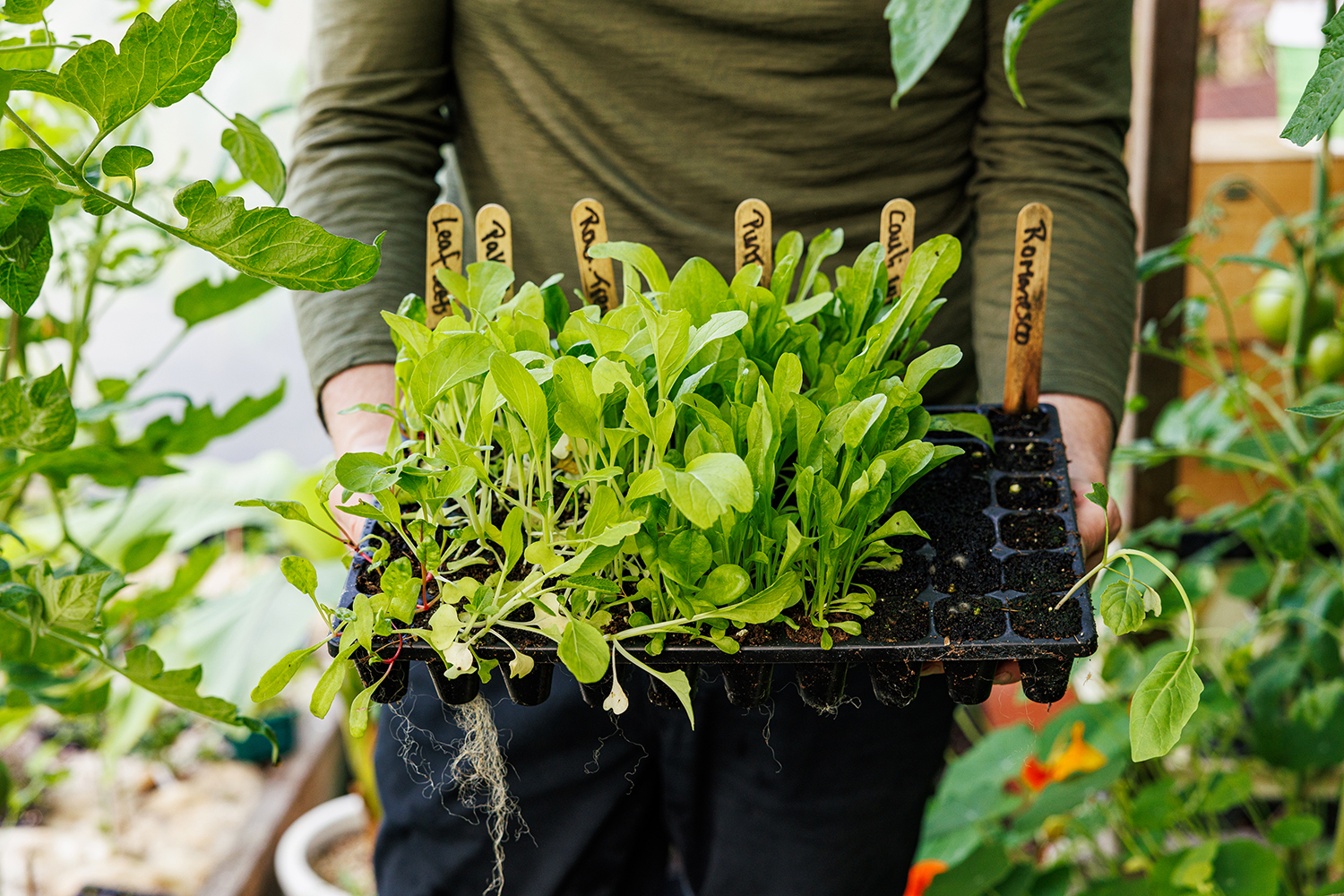 My horticulture project, Fat Tomato, is all about celebrating old and new Irish flavours. It is an edible garden, a kitchen pantry, a shop, and, later, a new place for sharing.
My horticulture project, Fat Tomato, is all about celebrating old and new Irish flavours. It is an edible garden, a kitchen pantry, a shop, and, later, a new place for sharing.
Driven by curiosity, biodiversity, and flavour, my garden celebrates the differences in colour, size and flavour among edible plant varieties. Think of different types of tomatoes (I grow over 100 varieties yearly), peaches, figs, apples, chillies, pears, squashes, and currants. Over the years, I’ve collected over 1000 packets of certified organic heritage seeds from reputable growers worldwide, with some being more successful in growing than others.
As a chef, I am always searching for flavour with integrity, so my edible garden is all about growing for flavour, not yield. I vividly remember my first harvest in 2016. The tomatoes were bursting with flavour, the peas were sweet, the beans were tender, the cucumbers were crisp, the chillis were fruity, the corn was sweet, the tomatillos were tangy, and the squash was nutty and rich. The tunnel was like an edible forest, and everything grew from there.
As they say, good things take time.
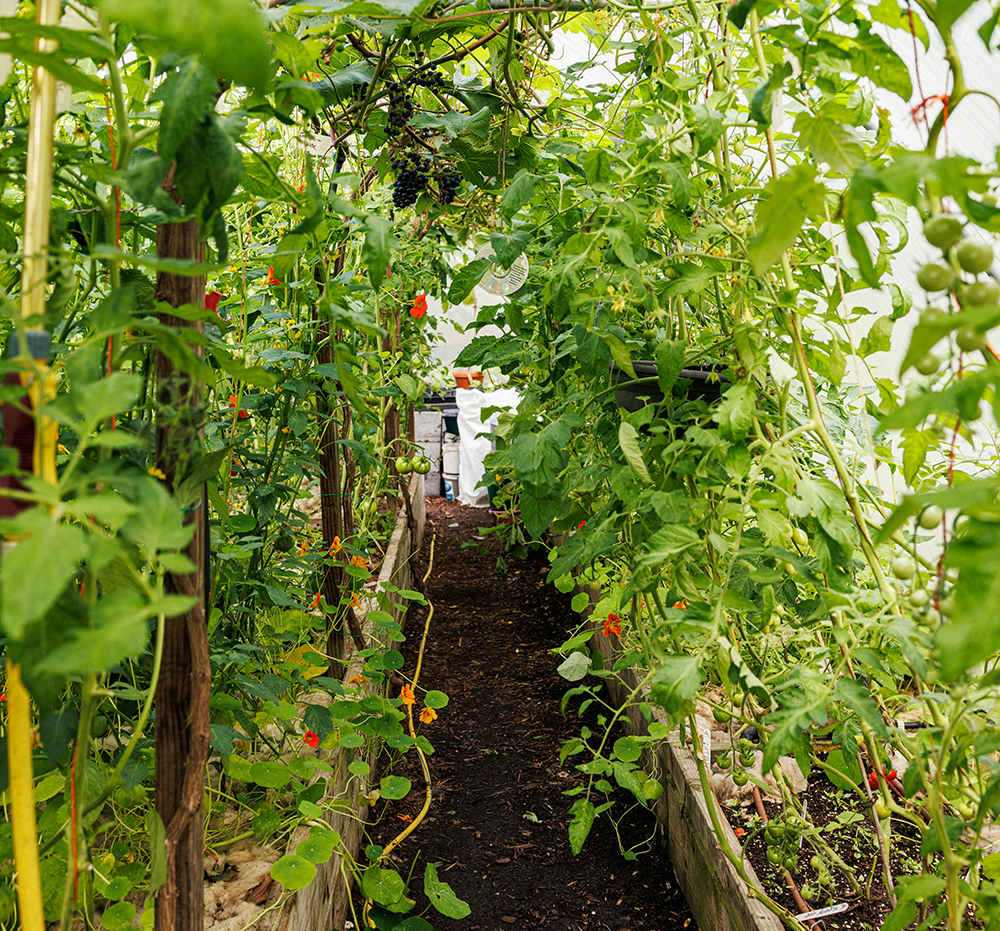 I kept scratching that itch each year, and now my edible garden and kitchen pantry are jam-packed with delicious things I should share with you all. In 2023, I decided 2024 would be all about me and my projects. As anyone who works for themselves and moves from one project to the next knows, your ideas are always put on the back burner.
I kept scratching that itch each year, and now my edible garden and kitchen pantry are jam-packed with delicious things I should share with you all. In 2023, I decided 2024 would be all about me and my projects. As anyone who works for themselves and moves from one project to the next knows, your ideas are always put on the back burner.
In June 2024, I finally opened my not-so-ordinary Edible Garden Honesty Shop at the bottom of the driveway. It’s one of a kind, full of limited-edition bottles and jars from my kitchen pantry, rainbow eggs, fruit, herbs and vegetables, seeds, and potted plants from the garden. I also sell products from like-minded friends, like SaltRock cultured butter and Bread & Weather soap. Seeing my customers get a taste of what Fat Tomato will be about has been a joy.
Depending on the weather and the flavour of the harvest, some of my garden produce is preserved into condiments like spices, vinegars, chutneys, sauces, jams, jellies, syrups, and drinks. Stepping into my pantry is like embarking on a culinary adventure of new and old Irish flavours. It is full of vats, barrels, bottles, and jars maturing away.
I am just about to launch my all-singing-all-dancing website with an online store full of small-batch products, garden seeds, gift boxes, a seasonal subscription box, and an area called ‘Grow & Cook’ where I will share my knowledge, tips, and tricks on how to grow, when to sow, and how to prepare, cook, and eat. www.fattomato.ie
Like the seasons, my shop will change throughout the year with different bottles and jars, garden seeds, and fresh produce as I grow and harvest, make and mature. No chemicals, no artificial flavours or setting agents, just the best-tasting old and new Irish ingredients one can grow and buy. Most of the things sold will be grown and made by me and my tiny team. Once the products are sold out, you must wait for the following year or the year after. Who knows what the weather will bring?
What’s next for Fat Tomato?
I started my edible garden in 2016, with a bigger plan from the start, to begin again. I always wanted to create a space that celebrates my love for food, drink, and travel and share it with my eclectic mix of friends, family, colleagues, and anyone fun who crosses my path in the future.
Sadly, there is no land available beside my parents’ home, so plans are well underway looking for the new piece of land in the southeast that is full of character to be the new home of Fat Tomato. It will be a new place for living, a smallholding, a home for sharing, a garden and workshop where chefs, farmers, producers, artists, writers, and other creatives can escape, hide, breathe, energise, and get time to dream and, most importantly, grow, cook, and eat. It will be an edible forest of new and old Irish flavours where you never know who you might meet, what you might taste, or what might happen, adding an element of excitement to your stay.
But, for now, I look forward to seeing you visit my honesty shop, packing your online orders and seeing my products bring joy to many kitchen tables.
Follow Anthony on social at @FatTomato and @AnthonyOToole, or sign-up for his bi-monthly newsletter at www.fattomato.ie
Historic Houses of Ireland - From Surviving to Thriving
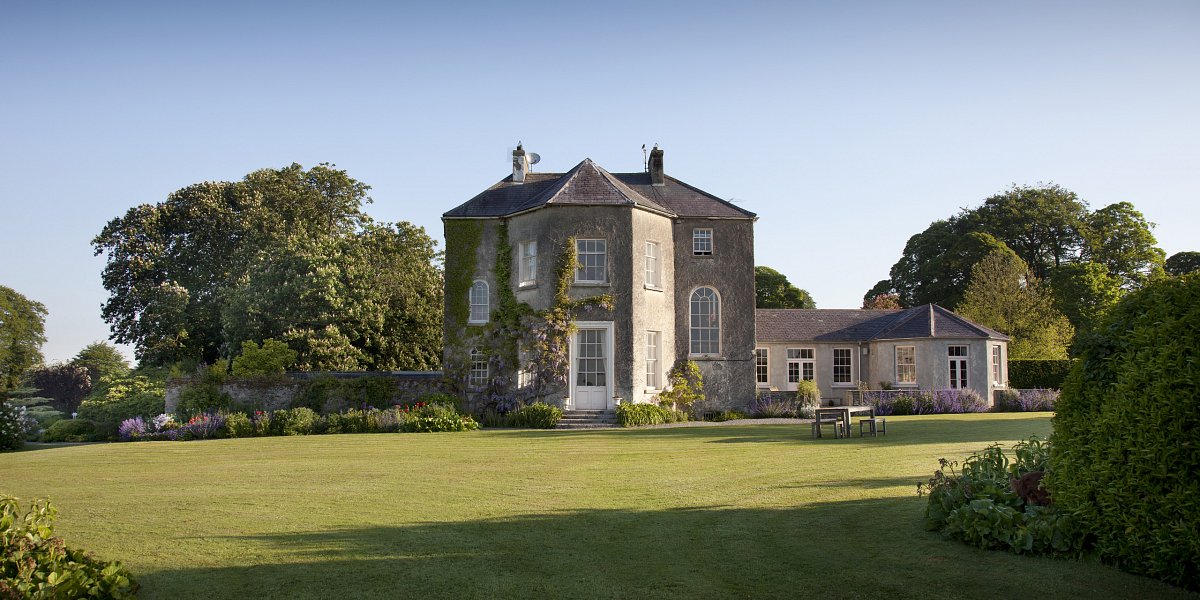
Anyone familiar with Irish hospitality will understand the key role played by our historic houses, many of which are famous members of associations such as Ireland’s Blue Book and Hidden Ireland, or vistor attractions in their own right (Castle Leslie, Enniscoe House, Bantry House, Glin Castle, Lismore Castle…) while others, although less well known, are equally special - and they all share many of the same challenges. Seeking ‘Practical Insights for a Vibrant Future in Irish Tourism for Privately-owned Historic Houses’, the Historic Houses of Ireland members got together with a wide range of tourism experts at Co Kildare’s lovely Burtown House & Gardens (below) recently, to work out ways to make the leap from surviving to thriving.
There was plenty of food for thought, says food writer Kate Ryan, who was a contributor at the event – and, as an outsider to the world of historic houses, finds the idea of ‘slow sustainability’ especially fascinating.
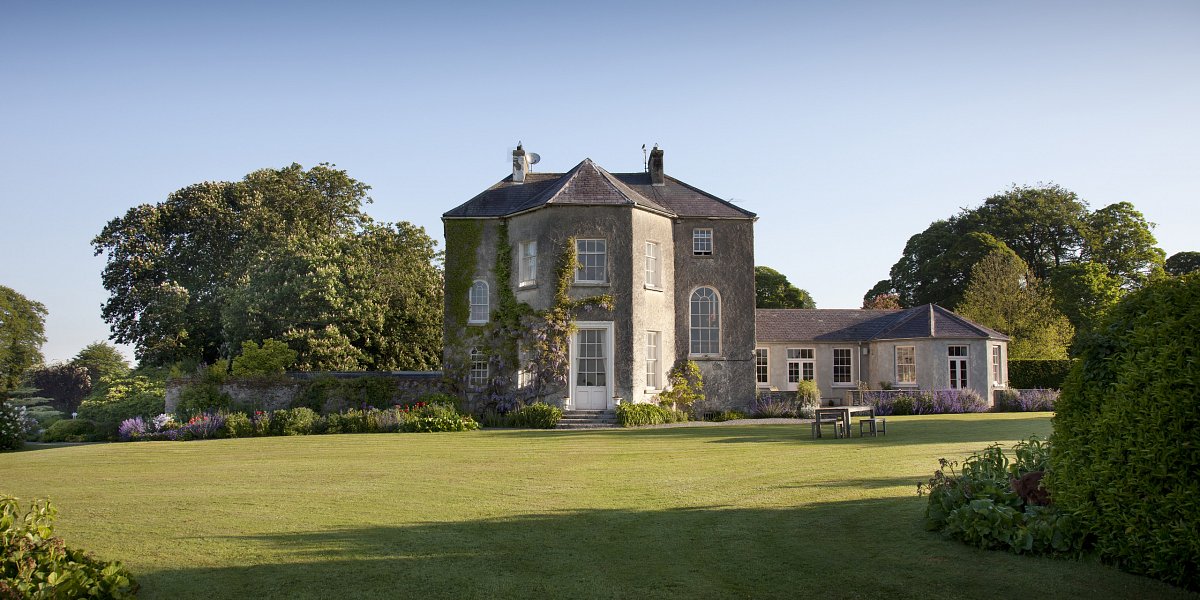
On a bright, crisp October morning, a gathering from across Ireland assembled in among the autumn garden colours of Burtown House for the inaugural Historic Houses of Ireland (HHI) Autumn School.
Held in response to ongoing feedback from HHI’s 200 members, the autumn school was an opportunity to bring in experts and expertise to discuss issues and topics of concern and interest. The autumn school was open to everyone, with members and non-members from the heritage sector all here to learn, exchange ideas and information, create new connections and network.
The inaugural event chose as its topic a focus on historic house tourism. Six panel discussions in two sessions covered topics such as event curation, biodiversity and sustainable tourism, public land access, hospitality in the 21st century, food and drink tourism, and strengthening ties with historic houses and their immediate communities.
Over 100 delegates from many different sectors of the heritage industry assembled to hear from historic house owners, event and festival programmers, historic houses operating in the food and drink space, journalists and food writers, learning and development specialists, OPW, Heritage Council, bespoke tour operators, insurance specialists, biodiversity and sustainability specialists, and chefs.
Speakers inspired conversation and questions from among the audience, and a delicious buffet lunch featuring produce from Burtown House’s own organic kitchen gardens provided plenty of opportunity to network and share ideas. Owners took what was relevant to them, their house and business, using it to spark ideas for creating positive opportunities and proactive change.
The word sustainability gets bandied about a lot and can mean many things to many people. A recurrent theme throughout the autumn school discussion was sustainable change – or rather, change that suits you and your property. It’s a refreshing stance that doesn’t demand headline grabbing Big Bang Impacts but is about incremental slow change that can only truly come with the kind of deep knowledge of house, land, history and heritage of our historic houses.
Ireland’s historic houses are custodians of our shared built heritage, but they are also custodians of natural heritage. One point everyone could find a shared middle ground on is that preserving and improving the biodiversity and natural habitats of the lands around these great houses is not only vital for sustainability, but an increasingly important facet of heritage tourism.
As Richard Tyrone said in the panel discussion “From Ideas to Events”, historic houses can think in much longer terms than traditional business planning: a 50–100-year plan is more typical than a five-year plan, he said. With that different mindset comes the idea of slow sustainability which enables decision-making and implementation to thrive within a long-term view with permanent and lasting impact, rather than the goal of short-term gain.
As an outsider to the world of historic houses and the challenges that surround their conservation and survival, it was interesting to hear myriad concerns (the perennial issue of insurance, for example, or how to open up lands and houses in a way that is welcoming and protects the fragility of material heritage) juxtaposed to a general and positive willingness to make changes and find ways to share these houses with ever more people.
It's vital, one panellist remarked, that the old and long-standing perception of the “Big House” be kept at arm’s length and to focus more on the active role historic houses can have in welcoming people. Ireland’s Historic Houses receives funding annually from the Heritage Council which in exchange encourages houses to engage with Heritage Week. In HHI’s 2024 annual report, 70 member houses opened their doors to visitors during Heritage Week 2024 – twenty more than the previous year, and the appetite for participation is growing.
This was a positive event that provided plenty food for thought for all who attended and participated. The good news is the autumn school will return in 2025 with initial plans for an extended 2-day event with an equally extended programme, too.
To find out more about the Historic Houses of Ireland, visit www.ihh.ie
Kate Ryan, Flavour.ie
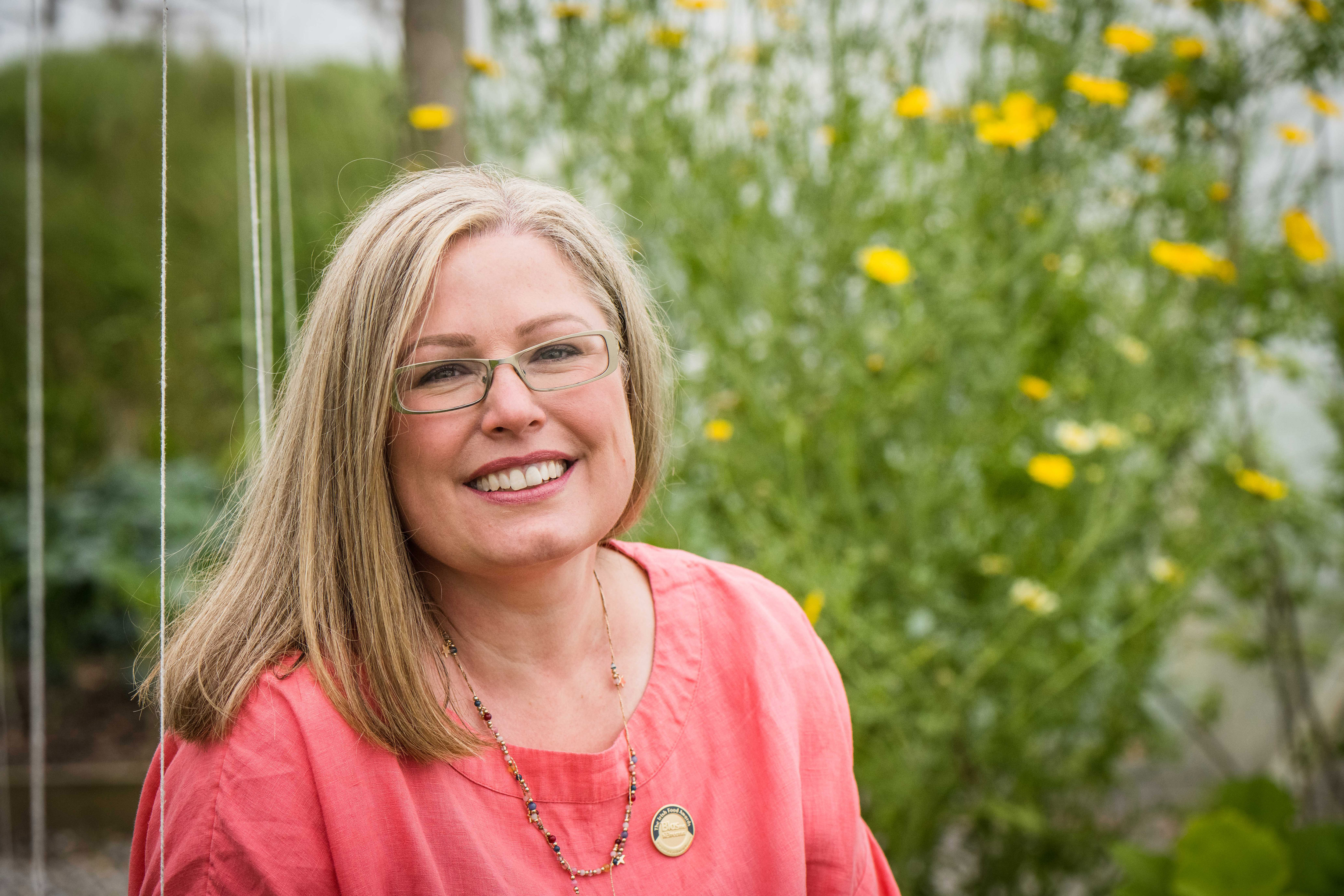
Cookery Feature - 32nd Irish Food Writers' Guild Food Awards
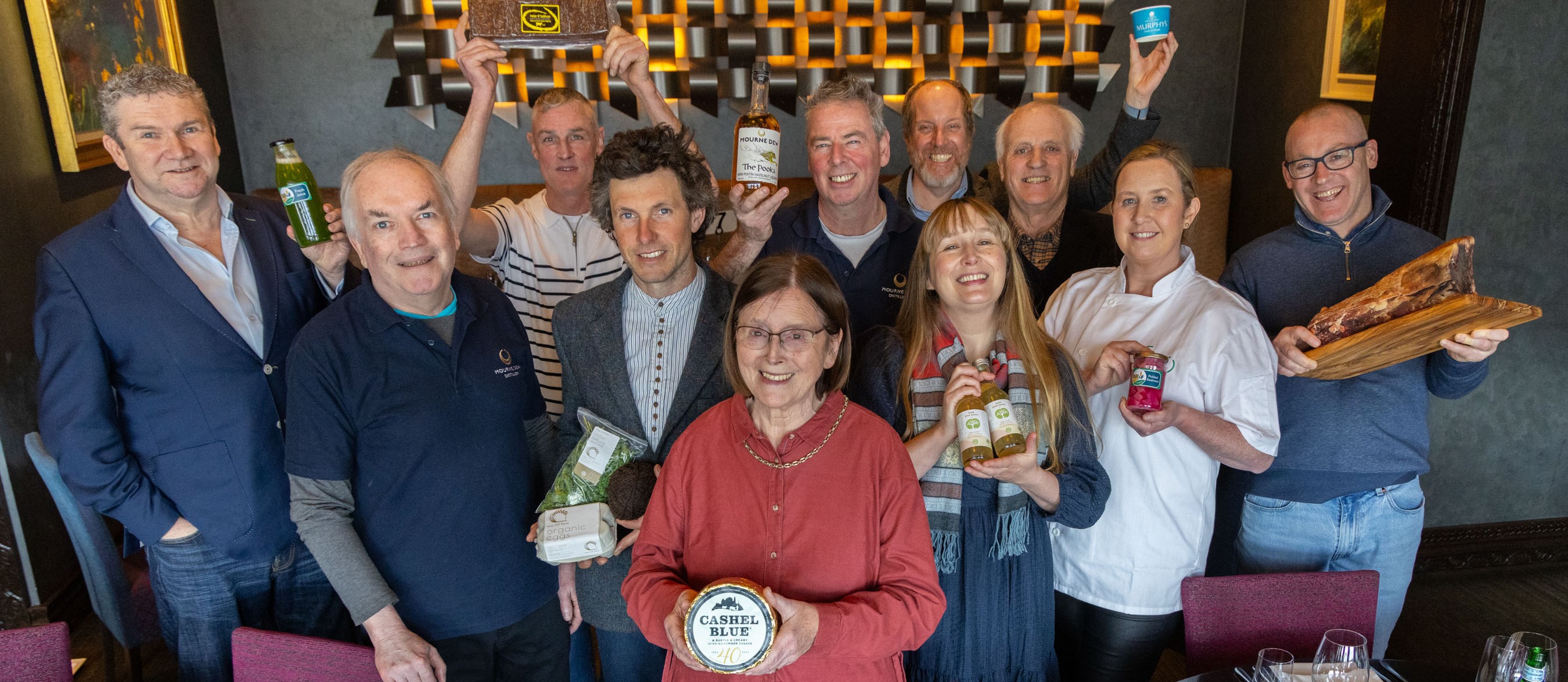
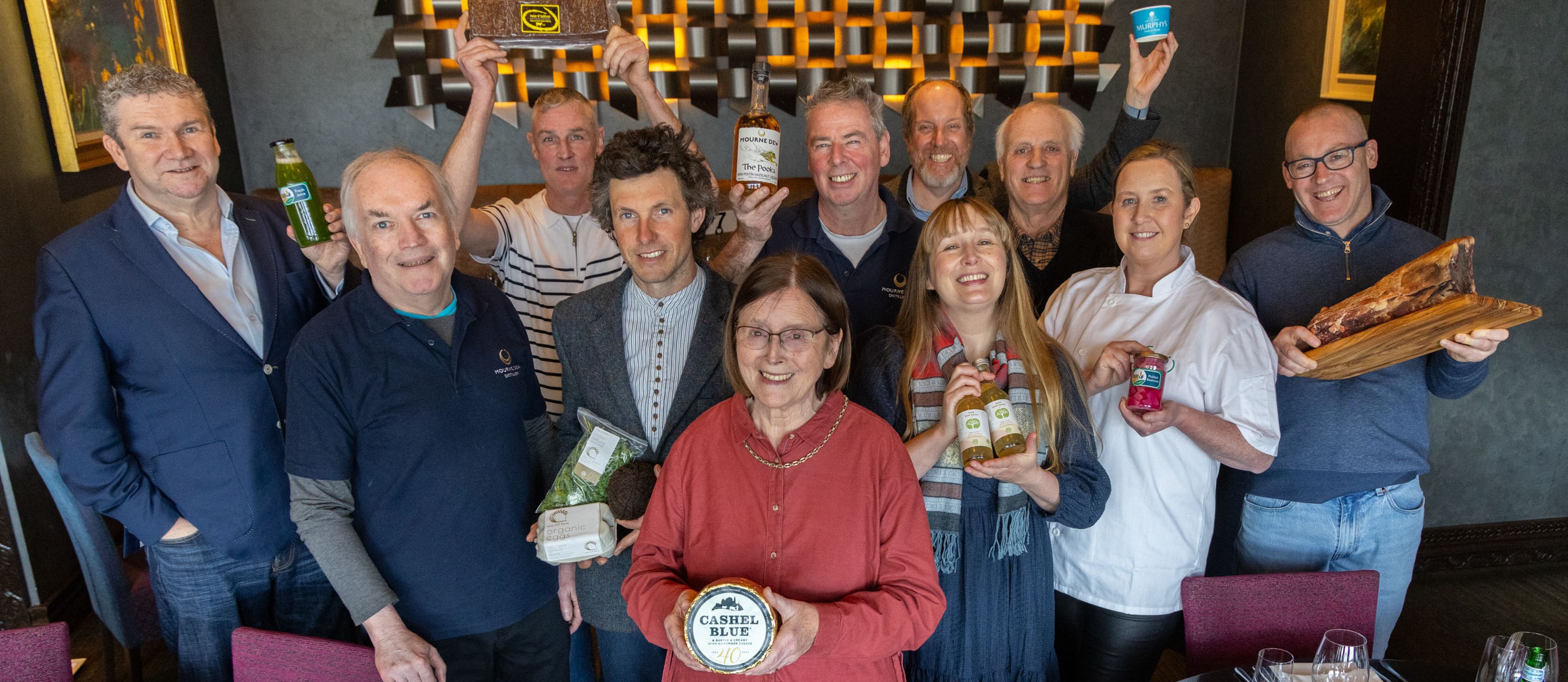
“When sustainability is merely used as a marketing tactic, consumers are misled, and the credibility and reputation of true sustainable producers is undermined,” said Paula McIntyre, chair of the Irish Food Writers’ Guild (IFWG), at the presentation of the 2025 IFWG Food Awards.
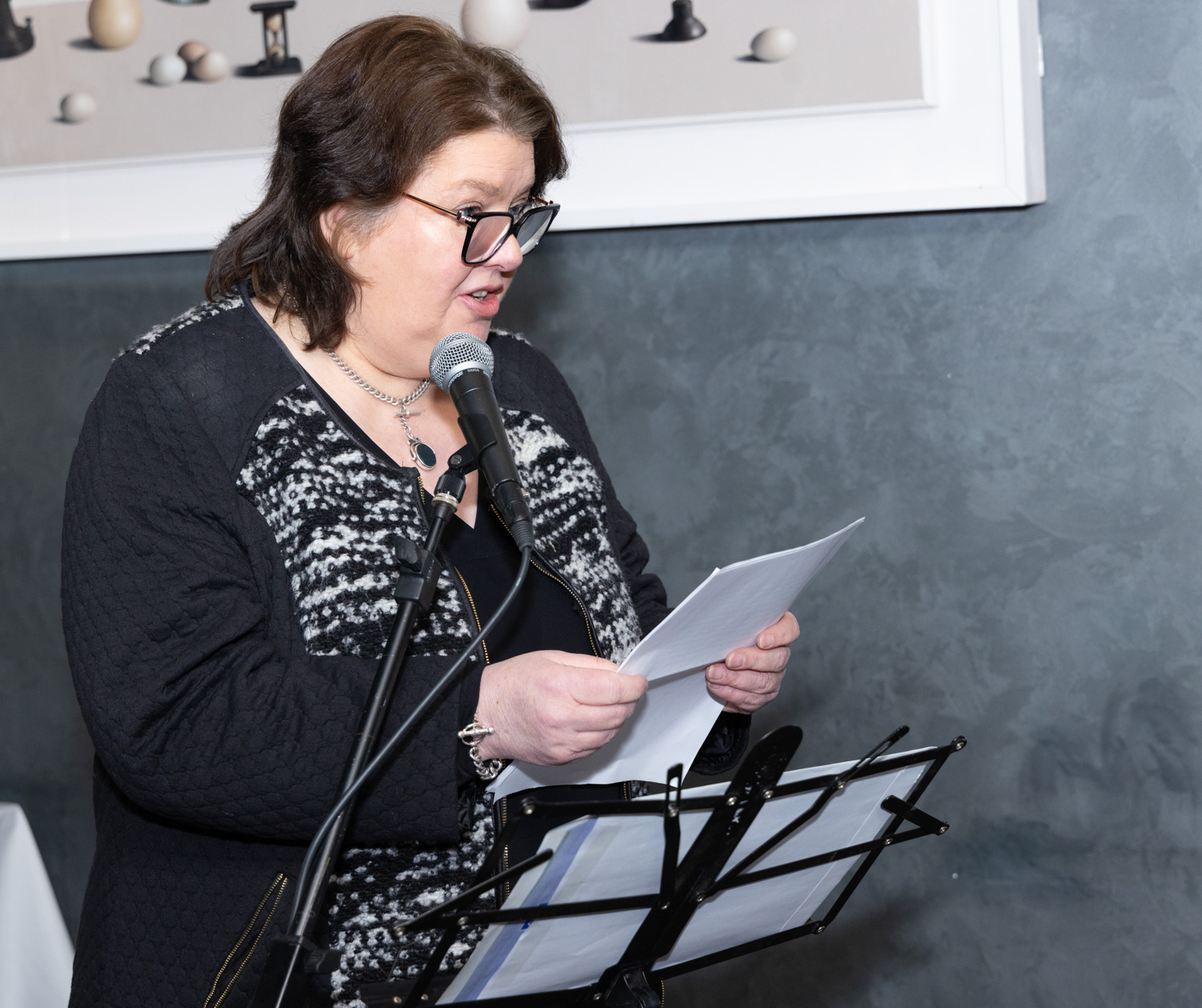 Calling on regulatory bodies to adopt a more proactive and vigilant approach to tackling the issue of greenwashing and for environmentally conscious consumers to be even more discerning, Ms McIntyre continued, “Greenwashing has infiltrated the food and drinks sector in ways many of us don’t even realise. Offending brands use vague buzzwords, deceptive green packaging, and even dubious certifications to take advantage of consumers’ efforts to shop and eat more sustainably - without making any real environmental impact. Meanwhile, truly sustainable Irish producers work tirelessly to uphold the highest ethical and environmental standards, often without the recognition or support they deserve.”
Calling on regulatory bodies to adopt a more proactive and vigilant approach to tackling the issue of greenwashing and for environmentally conscious consumers to be even more discerning, Ms McIntyre continued, “Greenwashing has infiltrated the food and drinks sector in ways many of us don’t even realise. Offending brands use vague buzzwords, deceptive green packaging, and even dubious certifications to take advantage of consumers’ efforts to shop and eat more sustainably - without making any real environmental impact. Meanwhile, truly sustainable Irish producers work tirelessly to uphold the highest ethical and environmental standards, often without the recognition or support they deserve.”For more than three decades the IFWG has been highlighting many of these outstanding producers, with sustainability a consistent thread linking our annual award winners. And, with no applications or submissions allowed (except for the Community Award, for which public nominations are welcome), this year’s winners were – as always - chosen solely for their quality, integrity, and commitment to genuine sustainable practices.
Winners of the 2025 IFWG Food Awards (all of equal standing):
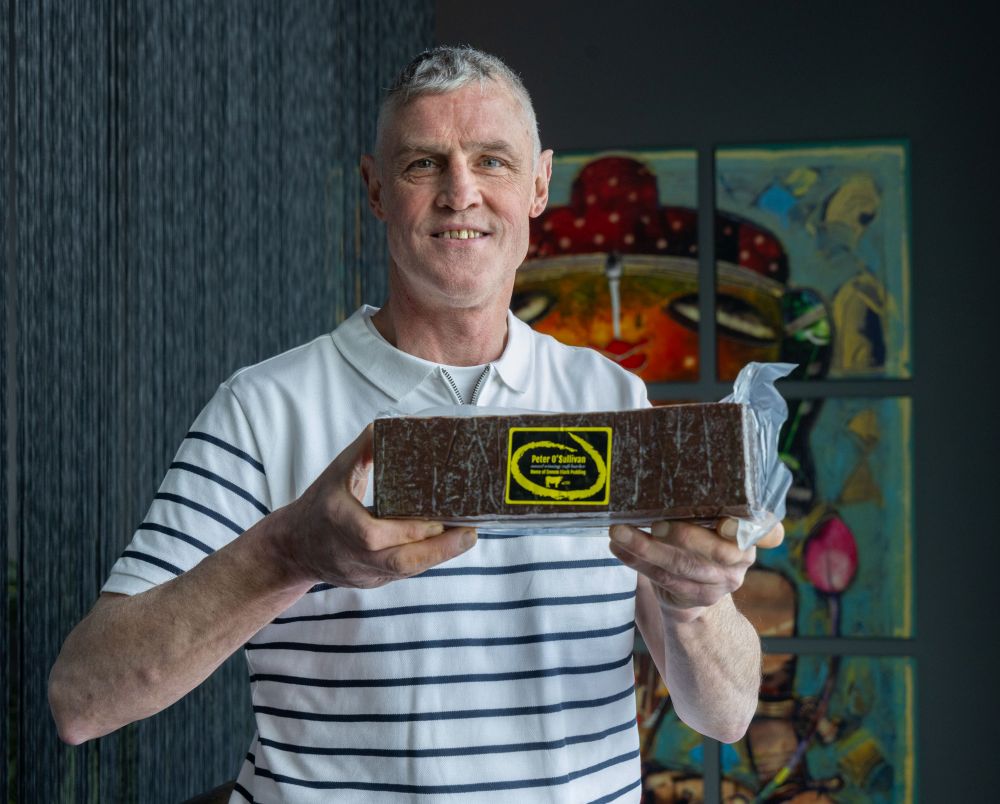 1. Food Award: Sneem Black Pudding – Peter O’ Sullivan Butchers, Co. Kerry.
1. Food Award: Sneem Black Pudding – Peter O’ Sullivan Butchers, Co. Kerry.
A traditional blood sausage with a smooth, mousse-like texture, crafted in small batches using locally sourced ingredients including fresh blood and a recipe passed down through generations, resulting in a rich, earthy flavour with subtle seasoning and exceptional provenance.
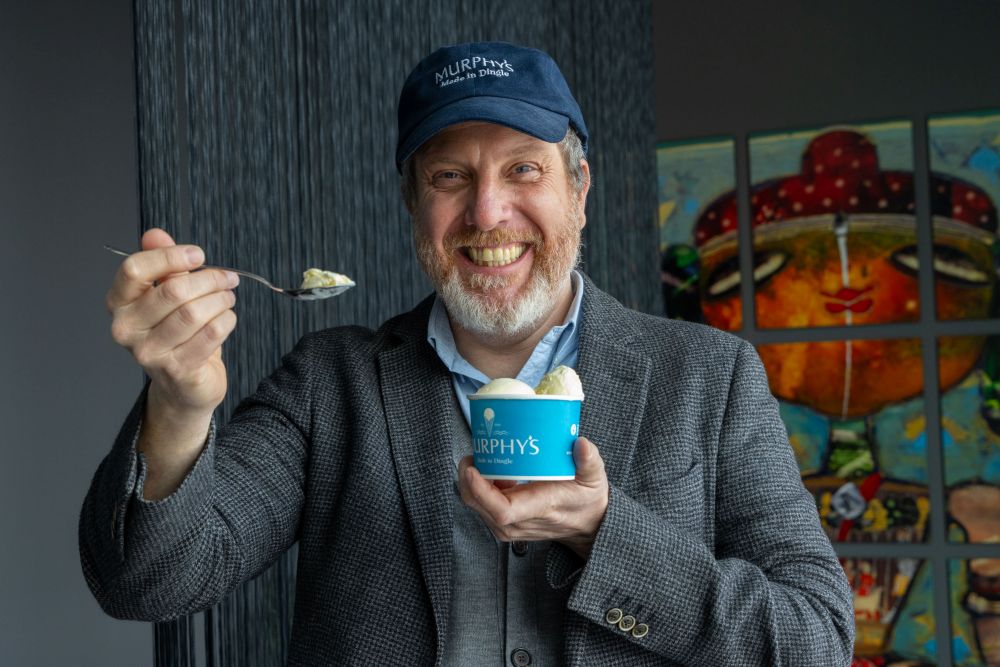 2. Food Award: Murphy’s Ice Cream, Co. Kerry.
2. Food Award: Murphy’s Ice Cream, Co. Kerry.
Crafting award-winning ice cream with a focus on local, inventive flavours, Murphy’s Ice Cream uses milk from the Kerry Cow and ingredients sourced from nearby farms, creating indulgent, high-quality treats that celebrate the best of County Kerry.
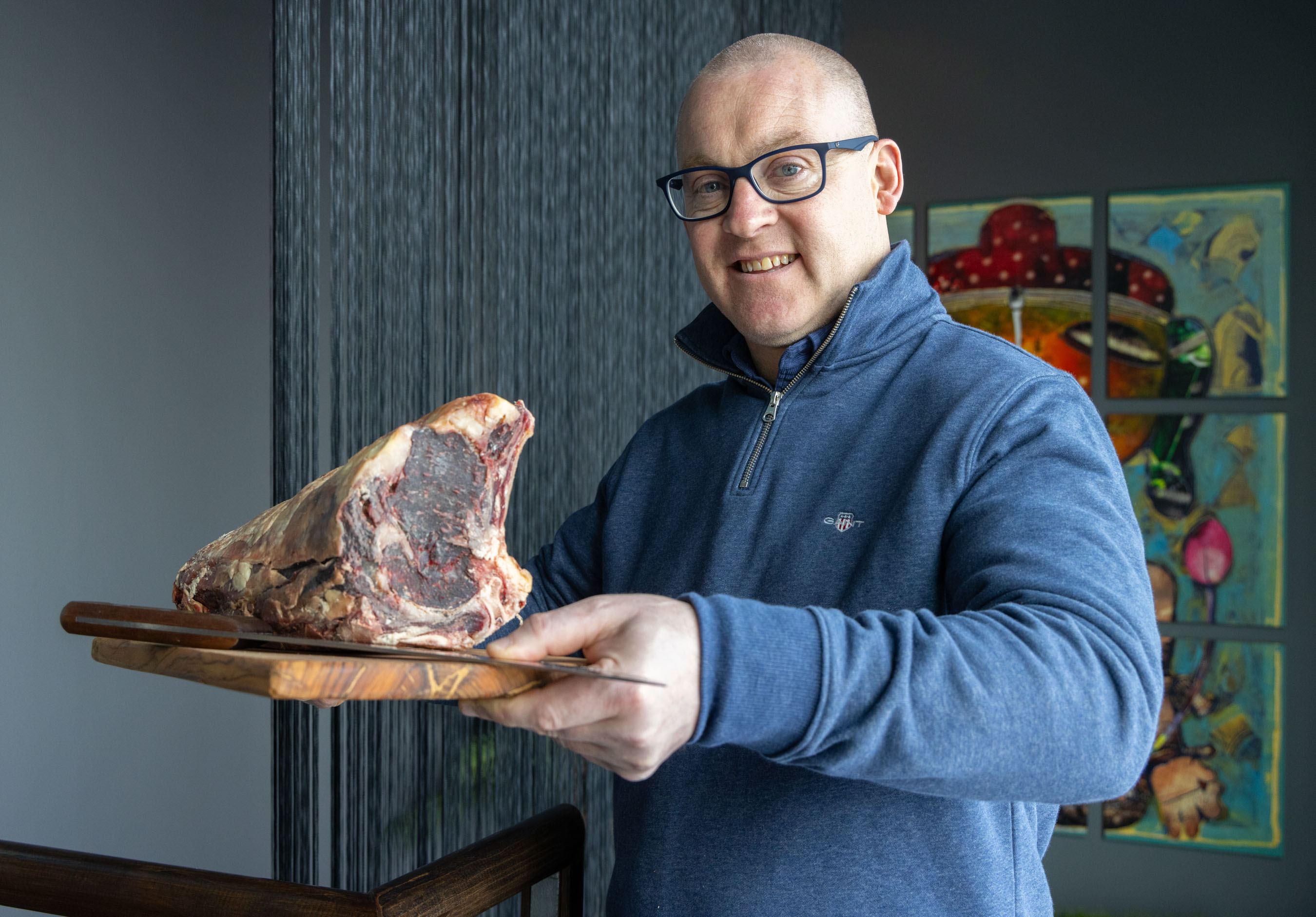
3. Food Award: 40 day aged Côte de boeuf - Higgins Family Butcher, Co. Dublin.
Known for their dry-aged expertise, Higgins Family Butchers’ 40 day aged Côte de boeuf is a standout, expertly aged to enhance its rich, tender flavour and exceptional texture, making it a must-try for meat lovers and a signature offering in their acclaimed range.
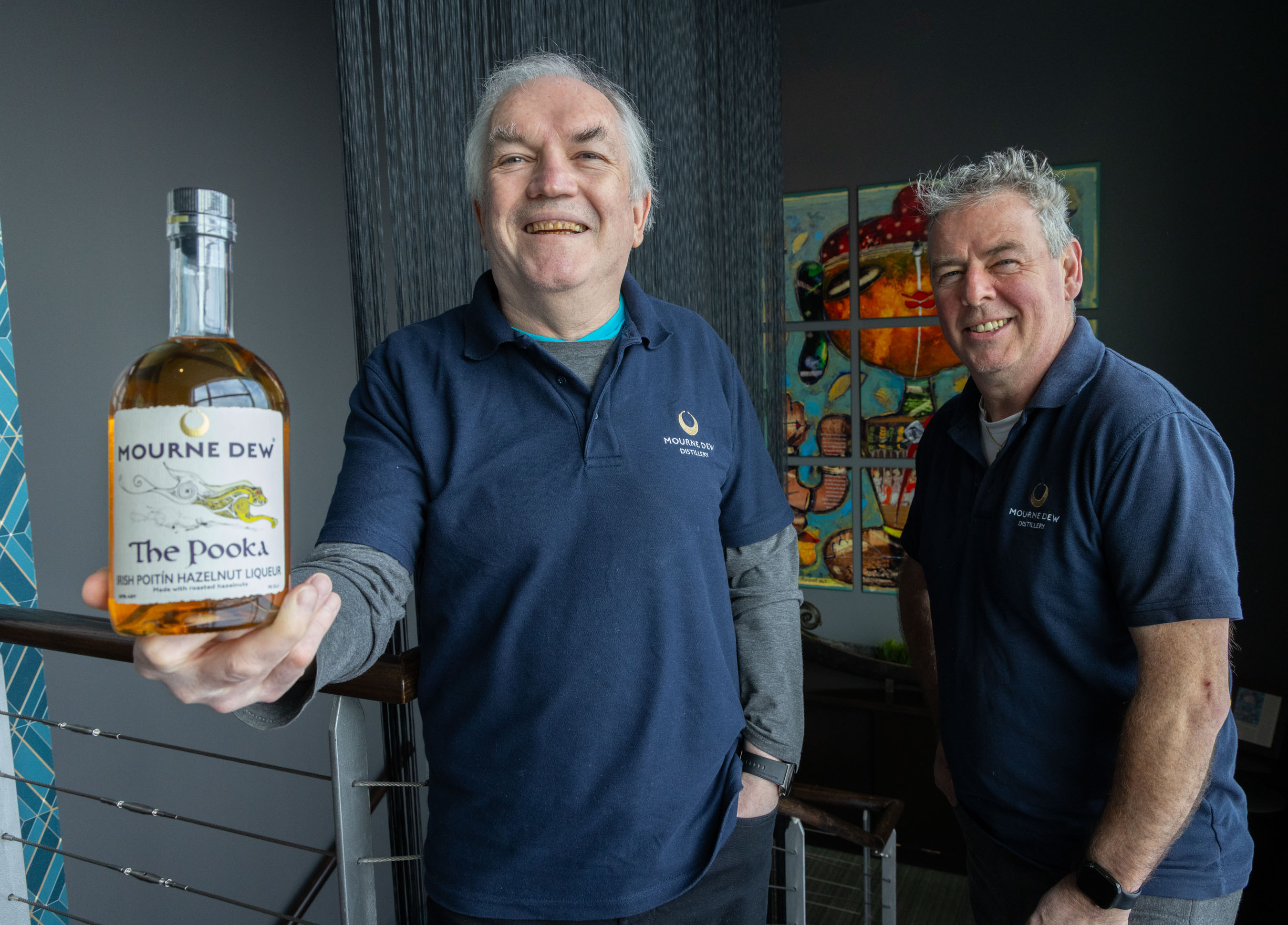
4. Irish Drink Award: Pooka Hazelnut Poitín Liqueur - Mourne Dew Distillery, Co. Down.
The Pooka Hazelnut Poitín Liqueur combines rich, nutty flavors with hints of vanilla, chocolate, and cream, offering a smooth, innovative twist on traditional poitín. Recognised for its exceptional quality, it’s a standout among Mourne Dew’s renowned range of spirits.
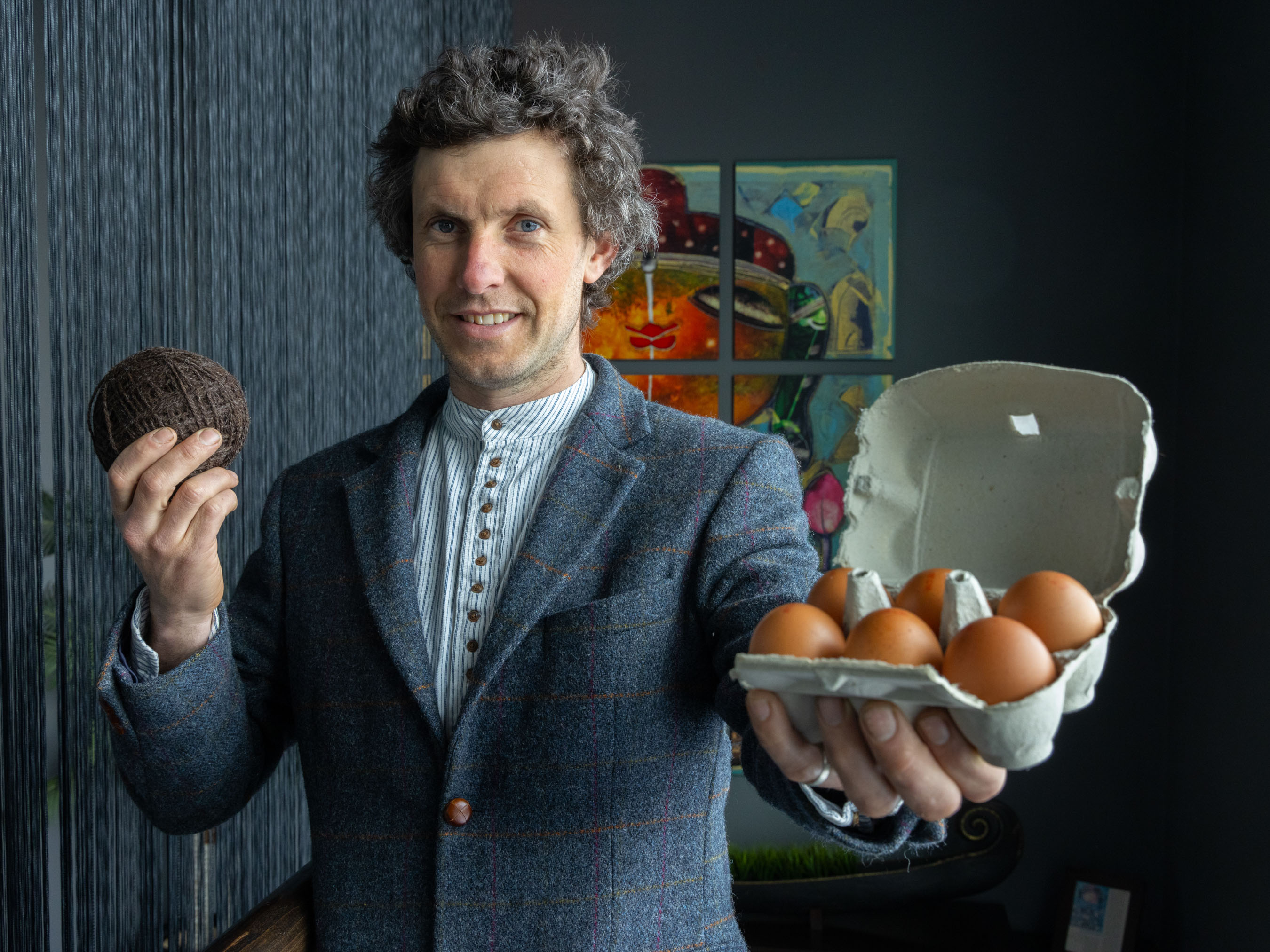
5. Notable Contribution to Irish Food: Moy Hill Farm, Co. Clare.
A vibrant regenerative farm that blends sustainability and community spirit, Moyhill Farm nurtures nutrient-dense organic produce while promoting biodiversity and teaching future generations the art of holistic farming.

6. Environmental Award: Master Chefs Ellan Farm, Co Limerick.
A pioneering initiative by Master Chefs, this organic farm blends sustainability and zero-waste practices to supply high-quality, locally grown food to Ireland's catering industry. Their farm-to-table-back-to-farm approach sets a new standard in ethical, community-focused food production.
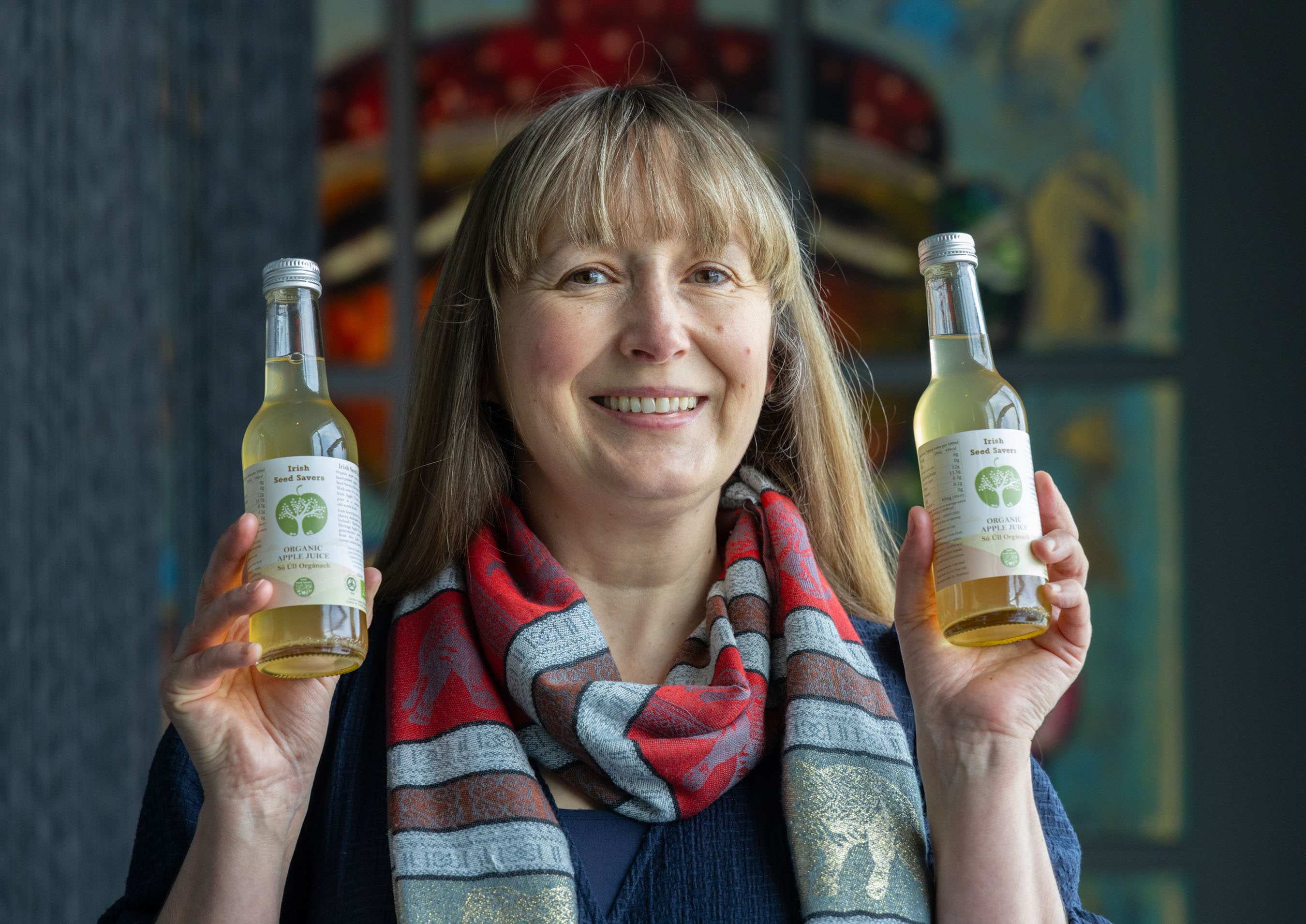
7. Community Food Award: Irish Seed Savers Association, Co. Clare.
A beacon of sustainable agriculture, Irish Seed Savers works tirelessly to conserve Ireland’s food crop heritage, ensuring the protection of genetic diversity in our food systems. Their efforts to safeguard plant genetic resources are crucial to the future of food security and biodiversity.
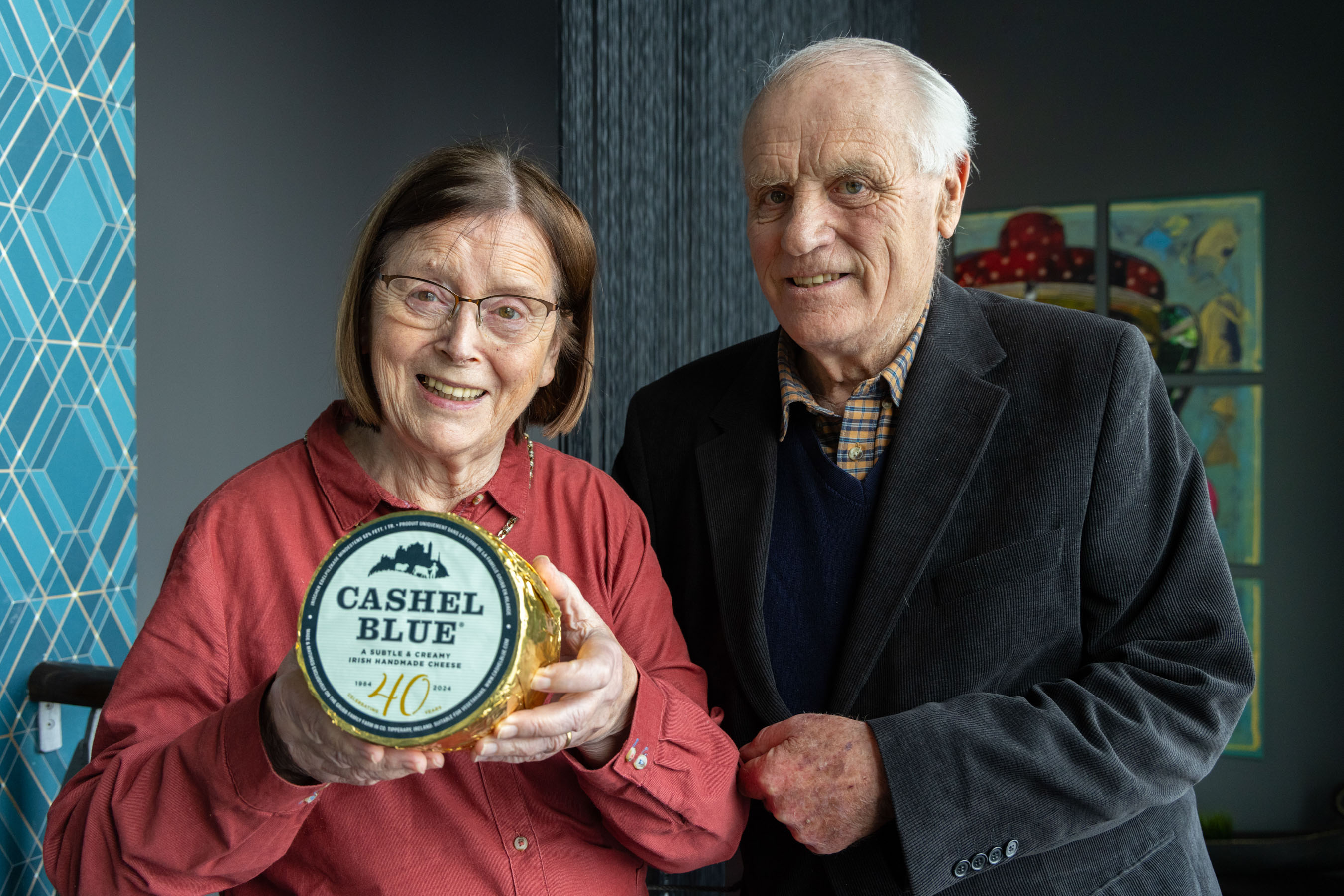
8. Lifetime Achievement Award: Jane and Louis Grubb of Cashel Blue, Co. Tipperary.
In 1984 Jane and Louis Grubb introduced Cashel Blue, Ireland’s first native blue cheese, made with milk from their family farm. Their legacy continues, blending tradition with innovation, producing award-winning cheeses like Cashel Blue, Crozier Blue, and Shepherd’s Store. Their dedication to quality has made them a cornerstone of Ireland’s cheesemaking industry.
About the IFWG Food Awards: The IFWG Food Awards are unique in that no business or individual can enter, nor do they know if they have been nominated for an award. The Guild is the sole nominating and decision-making body; its members nominate products, which are bought for tasting at a Guild meeting, where proportional representation voting is undertaken Winning products must be produced in Ireland and, where possible, the main ingredient must be Irish grown or produced.
Una Fitzgibbon, Director of Marketing at awards sponsor Bord Bia attended the event and expressed pride in supporting the awards, saying, “Bord Bia values the opportunity to collaborate with the Guild in recognising and promoting these outstanding contributions to the Irish food sector”, while IFWG chairperson Paula McIntyre commended the work being done by Bord Bia to support Irish producers through collaboration and education, helping them navigate sustainability challenges with integrity and authenticity. She also thanked Bord Bia for their continuous support of the awards, together with the team at ANANDA, Liberty Wines and Teeling.
For more information: www.irishfoodwritersguild.ie / foodwritersguild / #IFWGAWARDS2025
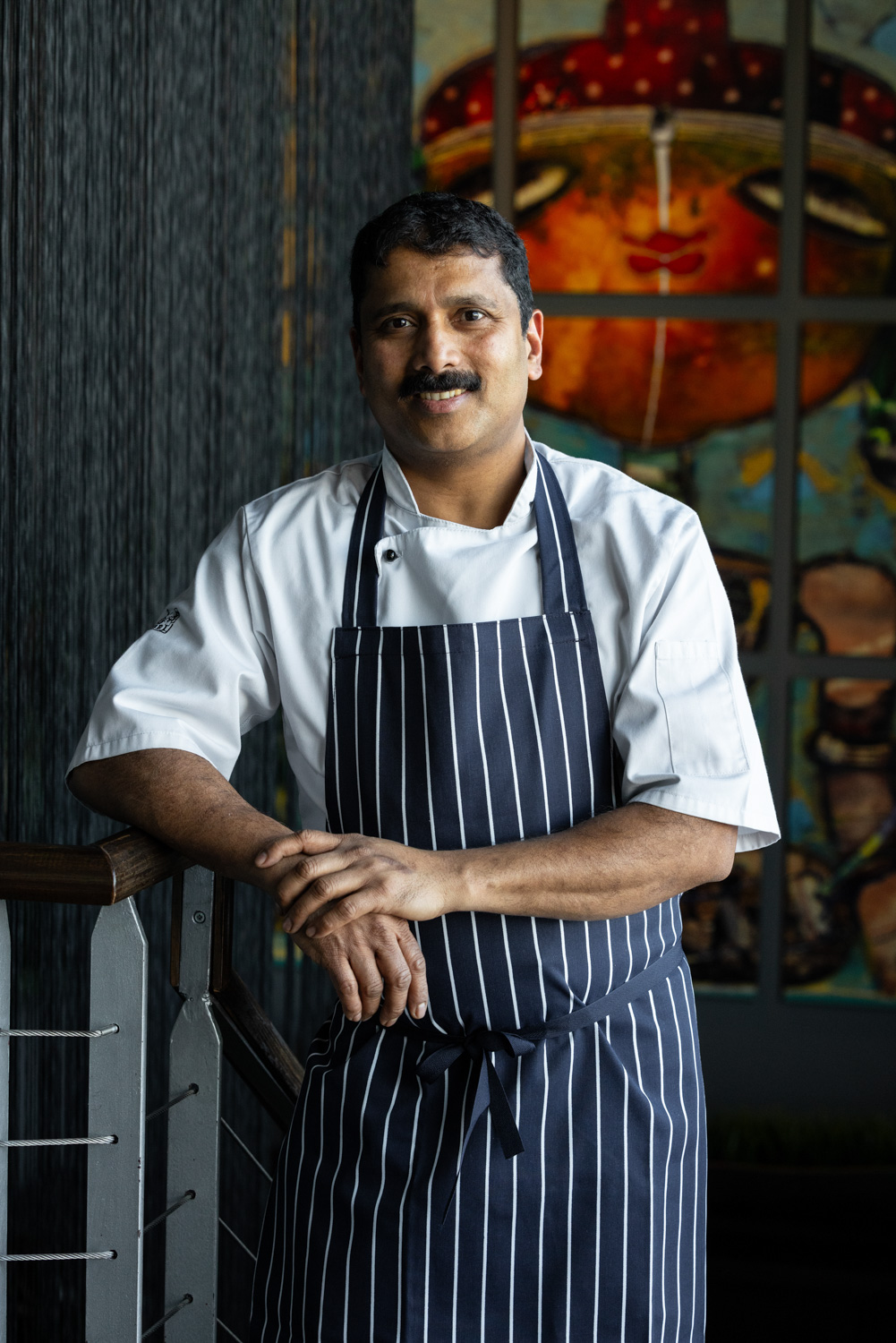 The IFWG Food Awards took place at Dublin’s ANANDA Restaurant, chosen for its consistent use of high quality Irish produce, and guests enjoyed a lunch featuring the winning produce, which was created by chef Sunuraj Thadiyil Kuttappan and Conor Spacey, who won a 2024 IFWG Food award for his notable contribution to Irish food.
The IFWG Food Awards took place at Dublin’s ANANDA Restaurant, chosen for its consistent use of high quality Irish produce, and guests enjoyed a lunch featuring the winning produce, which was created by chef Sunuraj Thadiyil Kuttappan and Conor Spacey, who won a 2024 IFWG Food award for his notable contribution to Irish food.
For the full story on the 2025 awards, plus winners’ citations visit The Irish Food Writers Guild website.
RECIPES - devised by Ananda Head Chef, Sunuraj Thadiyil Kuttappan (see right) in collaboration with Conor Spacey for the 2025 IFWG Food Awards lunch
To see all recipes visit The Irish Food Writers Guild website
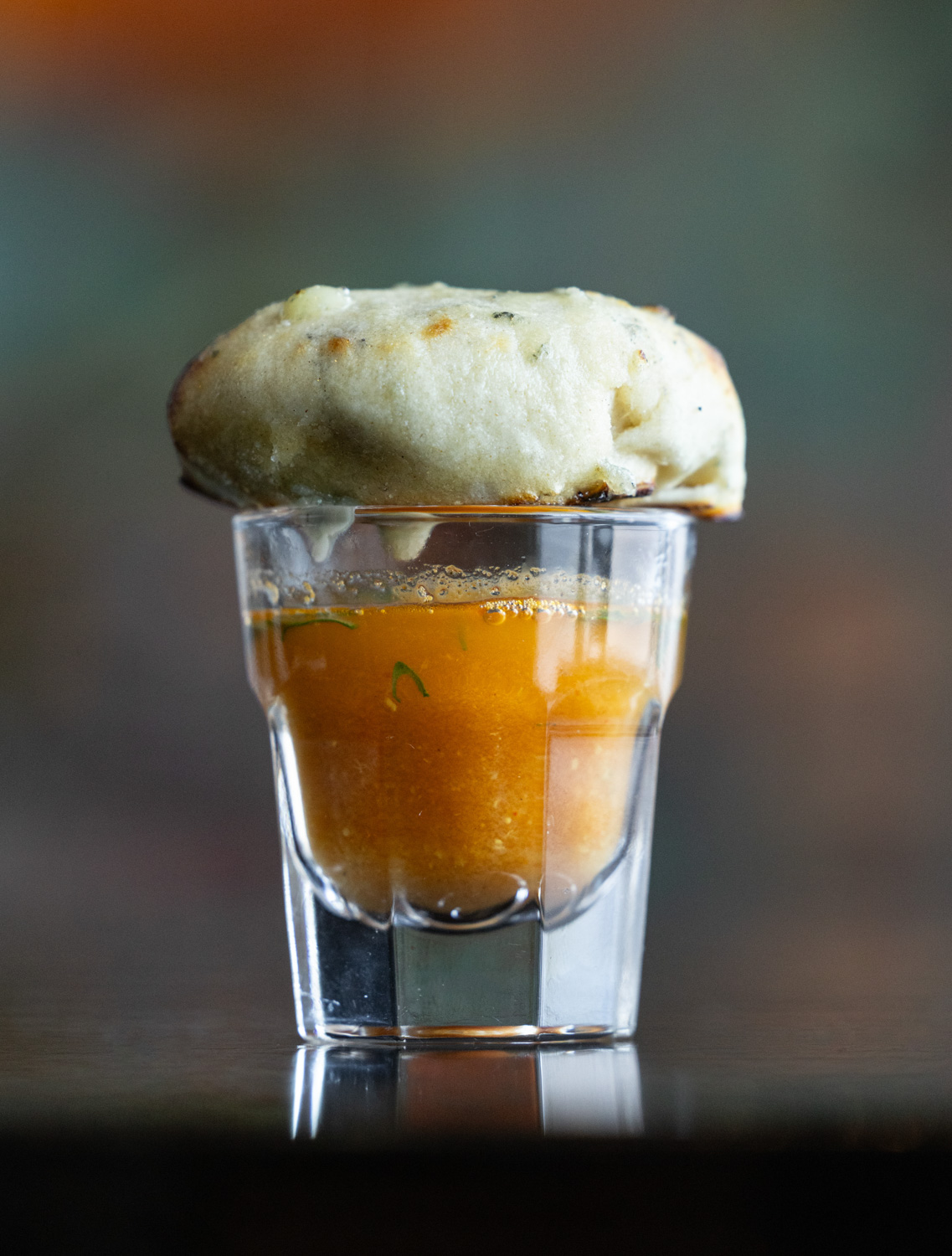 CASHEL BLUE CHEESE NAAN, TOMATO RASAM
CASHEL BLUE CHEESE NAAN, TOMATO RASAM
Cashel Blue Cheese Naan
Ingredients (makes about 15 small pieces)
• 250g plain flour
• 1 tsp sugar
• 1 tsp salt
• 65ml warm milk
• 120ml warm water (adjust as needed)
• 2 tbsp oil
• Butter (for brushing)
• Cashel Blue Cheese, as required, for stuffing
To prepare the dough: mix the sugar, salt, and warm milk, warm water and oil in a large bowl; gradually add the flour and knead for about 8-10 minutes, until it becomes a smooth, soft dough. Cover the bowl with a damp cloth and let it rest for 1-2 hours, then divide it into small balls. Flatten and stuff with Cashel blue cheese.
Seal and roll to flatten the dough.
Cook on a hot pan or pizza stone and serve warm with Tomato Rasam [Find Tomato Rasam recipe at www.irishfoodwritersguild.ie/2025-recipes ]
To serve: Pour the tomato rasam into serving glasses and top each with a piece of Cashel Blue naan. (The naans can also be served on their own if preferred.)
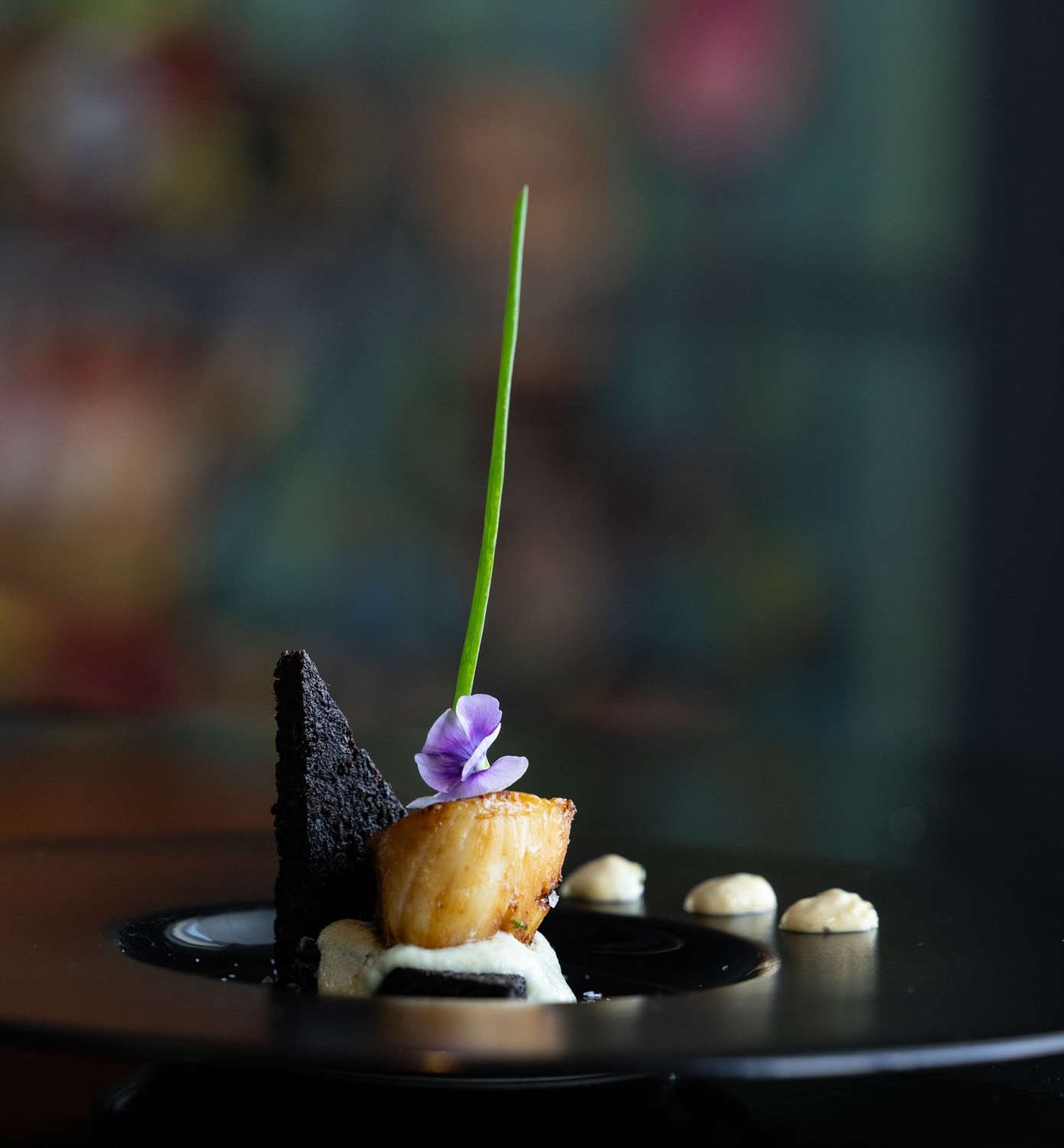 SNEEM BLACK PUDDING WITH IRISH SCALLOP, JERUSALEM ARTICHOKE PURÉE AND CELERIAC REMOULADE
SNEEM BLACK PUDDING WITH IRISH SCALLOP, JERUSALEM ARTICHOKE PURÉE AND CELERIAC REMOULADE
Ingredients, per person:
2x ½ inch/1.25cm thick slice of Sneem Black Pudding per person
1 scallop per person
To serve: Jerusalem Artichoke Purée and Celeriac Remoulade [Find Celeriac Remoulade recipe at www.irishfoodwritersguild.ie/2025-recipes/ ]
Sneem Black Pudding
Method:
• Slice the black pudding into half inch / 1.25cm squares.
• Heat a little oil in a frying pan, cook on both sides on a medium high heat, until crisp on the outside and hot through to the centre.
Irish Scallops
Method:
• Pat the scallops dry with kitchen paper.
• Heat a little oil in a frying pan, on a medium high heat cook briefly on both sides, until golden brown.
• Add a large knob of butter, when the butter is foaming baste the scallops in the butter for 1-2 minutes.
Serve with: Jerusalem Artichoke Purée and Celeriac Remoulade (link to recipes above).
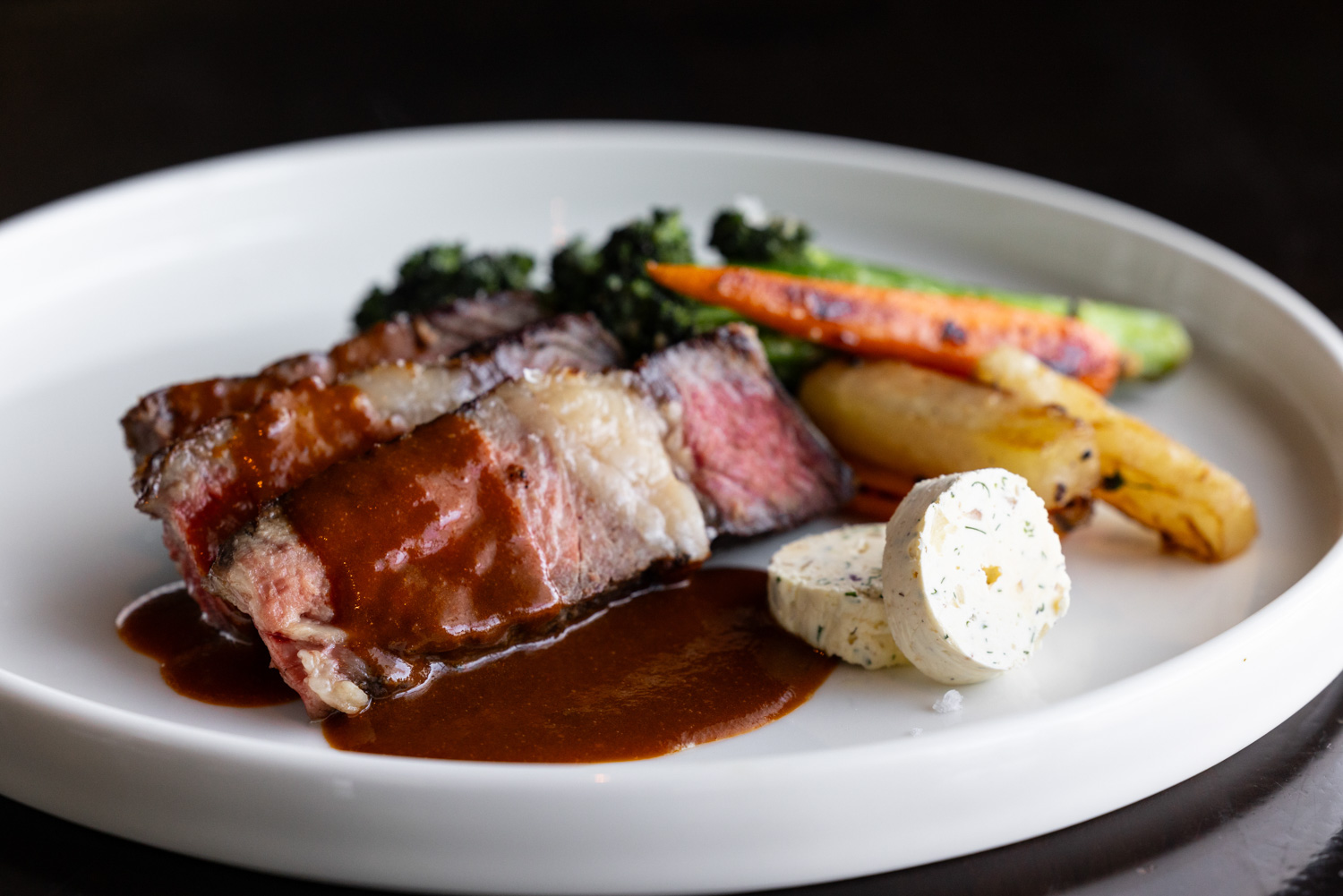 HIGGINS FAMILY BUTCHERS, 40 DAY AGED COTE DE BOEUF, MASALA JUS, GUNPOWDER POTATOES, SEASONAL VEGETABLES
HIGGINS FAMILY BUTCHERS, 40 DAY AGED COTE DE BOEUF, MASALA JUS, GUNPOWDER POTATOES, SEASONAL VEGETABLES
For the côte de boeuf (cuts offered range from around 24oz to 35oz, allow around 8oz of meat per person, depending on appetite):
• Higgins Family Butcher Côte de Boeuf
• Oil; butter, for basting
• Minced garlic, to taste
• Salt & freshly ground black pepper
• To serve: Masala Sauce (see below), Gunpowder Potatoes and seasonal vegetables [Find recipe for Gunpowder Potatoes & all recipes: www.irishfoodwritersguild.ie/2025-recipes/ ]
Method:
• Remove meat from the refrigerator at least 30 minutes before cooking, to come to room temperature. Season the meat on both sides with salt and pepper.
• Meanwhile, make the Masala Sauce (see below) and preheat the oven to 200ºC / 400ºF / fan oven 180ºC / Gas 6.
• Put some oil in a heavy pan over a high heat.
• Sear the meat on all sides for about 3 minutes, until golden brown all over.
• Add butter and garlic to the steak and baste well.
• Cook in the preheated oven for 10/15 minutes per lb/500g for a rare/medium rare roast.
• Let the meat rest, loosely covered with foil, for 5 minutes, then carve long downward slices from the end opposite the bone
• To serve: Serve slices of côte de boeuf alongside a portion of gunpowder potatoes, with masala sauce for pouring.
Masala Sauce
Ingredients:
• 2 tbsp oil or ghee
• 1 tsp cumin seeds
• 1 large onion, finely chopped
• 2 cloves garlic, minced
• 1-inch piece of ginger, grated
• 1 tsp each garam of masala & ground coriander
• ½ tsp each of turmeric, chili powder & salt
• 250ml each of red wine & beef stock
• 65ml double cream
• 25g butter
Method:
• Heat the oil/ghee in a pan over medium heat. Add cumin seeds and let them sizzle for a few seconds. Add onions and sauté until golden brown. Stir in garlic and ginger and cook for another minute until fragrant. Mix in the spices (garam masala, coriander, turmeric, chili powder, salt). Stir well.
• Add red wine and stock; simmer for 5–10 minutes. Blend the sauce until smooth then strain.
• Stir in the cream and butter at the end.
 HAZELNUT PANNA COTTA, COFFEE & MILK CHOCOLATE CREAM
HAZELNUT PANNA COTTA, COFFEE & MILK CHOCOLATE CREAM
For the hazelnut panna cotta (serves 6):
3 gelatine sheets
500 ml double cream
100 ml whole milk
80g sugar
50ml Pooka Hazelnut Poitín Liqueur from Mourne Dew Distillery
For the coffee and milk chocolate cream (serves 8 to 10):
250ml double cream
25g glucose syrup
28g sugar
1 tbsp. coffee (instant or brewed espresso)
180g milk chocolate, finely chopped
175ml whipped cream (to be added at the end)
For serving: Murphy’s ice cream – try e.g. Dingle Sea Salt or Honey flavours
To prepare the hazelnut panna cotta:
Bloom the gelatine by soaking in cold water for 10 minutes.
In a saucepan, heat the double cream, milk and sugar over medium heat. Stir occasionally until the sugar dissolves. Do not let it boil.
Remove from heat. Squeeze the water from the gelatine and add to the hot cream mixture. Add the hazelnut liqueur.
Strain the mixture through a fine sieve for a smoother texture. Pour into ramekins or serving glasses.
Refrigerate for at least 4 hours (or overnight).
To prepare the coffee and milk chocolate cream:
In a saucepan, heat the double cream, glucose syrup, sugar, and coffee over medium heat. Stir gently until the sugar dissolves and the mixture is hot but not boiling. Pour the hot cream mixture over the chopped milk chocolate in a bowl. Let it sit for 1-2 minutes, then stir until smooth and fully melted.
Let the chocolate mixture cool to about 35-40°C (95-104°F); it should be warm but not hot.
Gently fold in the whipped cream using a spatula. Mix until smooth and airy, without deflating the whipped cream.
Use immediately as a topping, or refrigerate until needed.
To serve: Top each panna cotta with some coffee and milk chocolate cream, alongside a scoop of Murphy’s ice cream.
3 of the Best Food Experiences in Wicklow's Great Houses
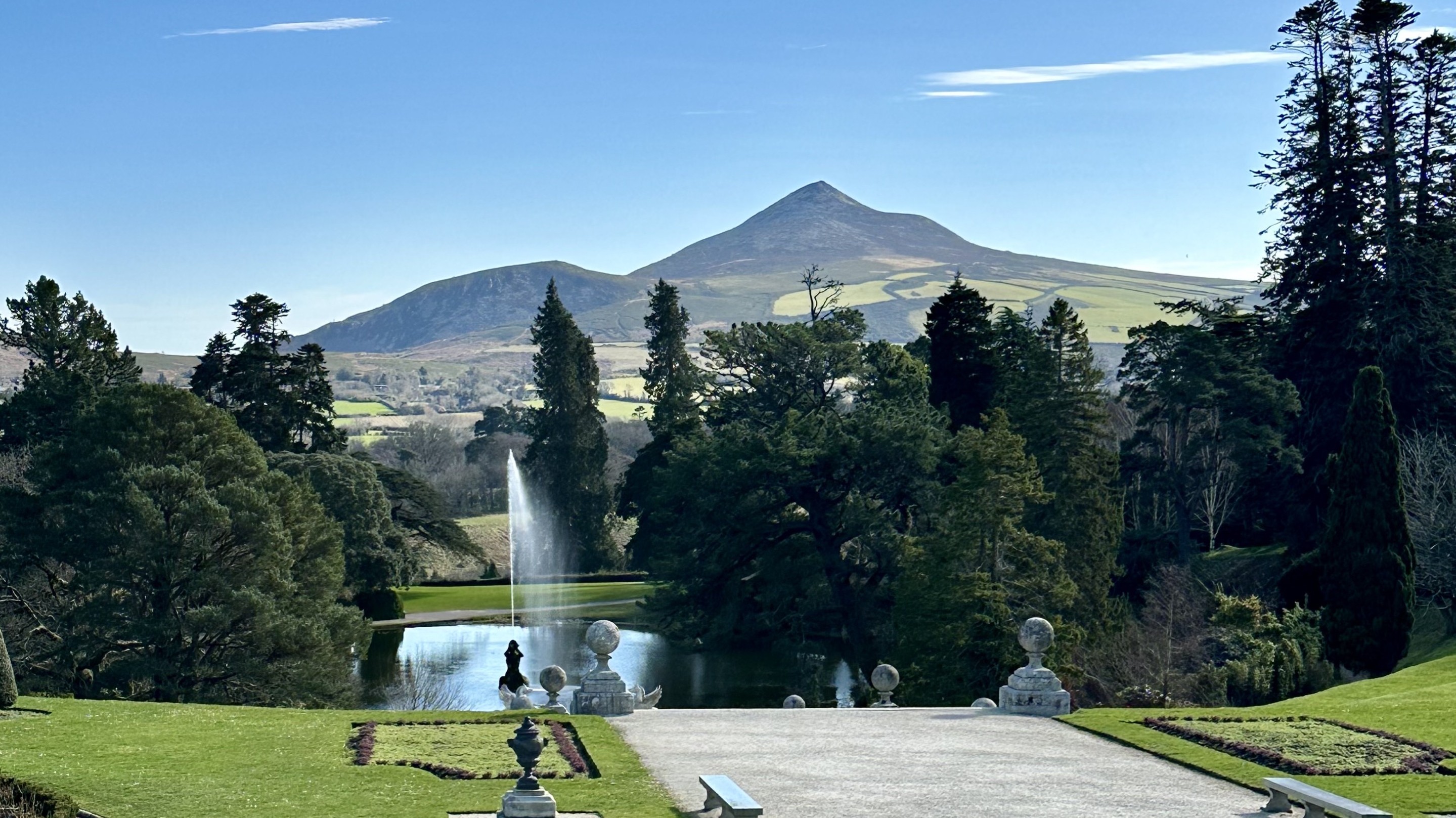
Kate Ryan, Flavour.ie; images courtesy of Kate Ryan
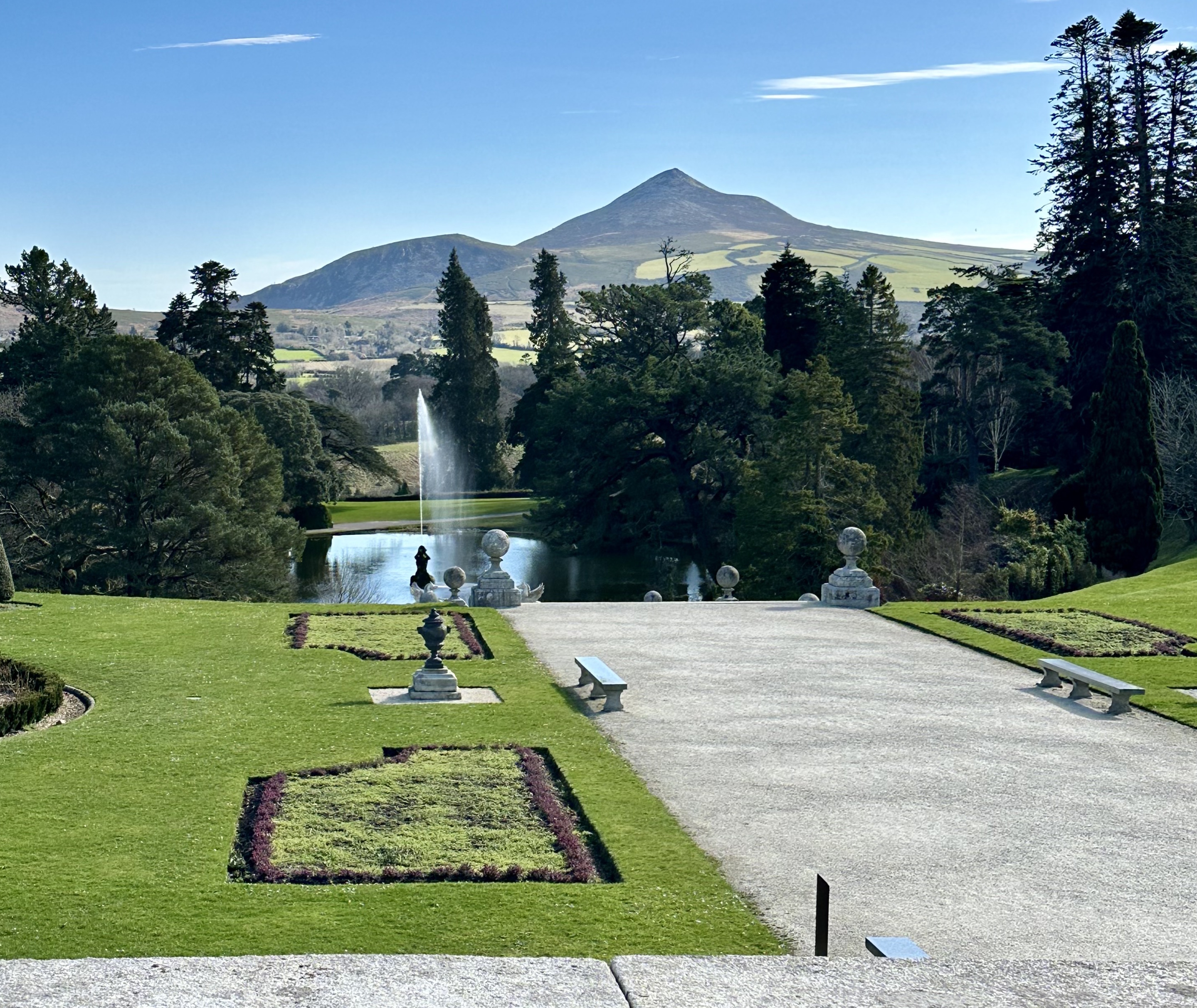 County Wicklow has a well-deserved reputation as the Garden of Ireland, a moniker bestowed for the county’s unusual concentration of historic houses and their beautifully landscaped gardens. The county boasts epic wild scenery gifted by the ruggedness of the Wicklow Mountains, the timelessness of Glendalough and its national park.
County Wicklow has a well-deserved reputation as the Garden of Ireland, a moniker bestowed for the county’s unusual concentration of historic houses and their beautifully landscaped gardens. The county boasts epic wild scenery gifted by the ruggedness of the Wicklow Mountains, the timelessness of Glendalough and its national park.
Among the riches of the built heritage of County Wicklow’s great houses, a few are publicly accessible and have made great efforts to recentre themselves within their community. They are custodians of a side of Irish history that is complex – hundreds of years of colonial rule, landed gentry and hereditary titles rub uneasily beside the spectre of famine and poverty. But while it is true that some of history’s landlords are ill-remembered, this is not the case for all.
Operation of these vast Wicklow estates was possible only by the labour of local people. One Wicklow native I spoke to can trace their family’s working roots on the Powerscourt Estate back several generations, including themselves, and remembers the estate being an ever-present part of their childhood with great fondness. Meanwhile, in Killruddery House, letters have been found in old archives from famine times detailing instructions to estate gardeners to collect seeds from vegetables that could be grown when potatoes could not, to package them up and gift them to as many people as possible to reestablish the small kitchen gardens kept for self-sufficiency.
This is not a worldview that will win everyone over, and that is important too. History is made of both the good and bad, and to remember both is essential for ensuring the past is remembered in accordance with the different experiences of all kinds of people.
Notwithstanding, Ireland’s historic houses play an essential role in preserving history. The houses and estates are custodians of multiple facets of heritage, history and tradition, and were often pioneers in embracing new-fangled fashions which, over time, trickled through layers of society to become enmeshed in customs and bound into a culturally Irish way of life.
It was prized among these great estates to be as self-sufficient as possible – certainly in relation to food, but also in leisurely pursuits. Collecting treasures such as art, sculpture and books fed the mind while pursuits such as fishing, hunting, boating, flower gardens and parklands had a more corporeal function. Growing and producing food was vital to these estates. Farming was often a source of income via tillage, beef and dairy. The growing of vegetables, fruits and herbs, the keeping of livestock and poultry and lakes stocked with trout and perch were not only essential for keeping an estate fed and watered but also a status symbol. To be entirely served by the estate demonstrated its bountifulness and attested to how well it was run and, ultimately, an estimation of its value. These were not just grand and pretty houses!
Today, three of Wicklow’s great houses are embracing food as a way to meet a new generation of visitor. They say food is the great leveller, so there is a logic to the likes of Killruddery, Powerscourt and Russborough offering a place to break bread as an enticement to explore the hundreds of years of history built up within their walls.
POWERSCOURT ESTATE (North County Wicklow)
www.powerscourt.com
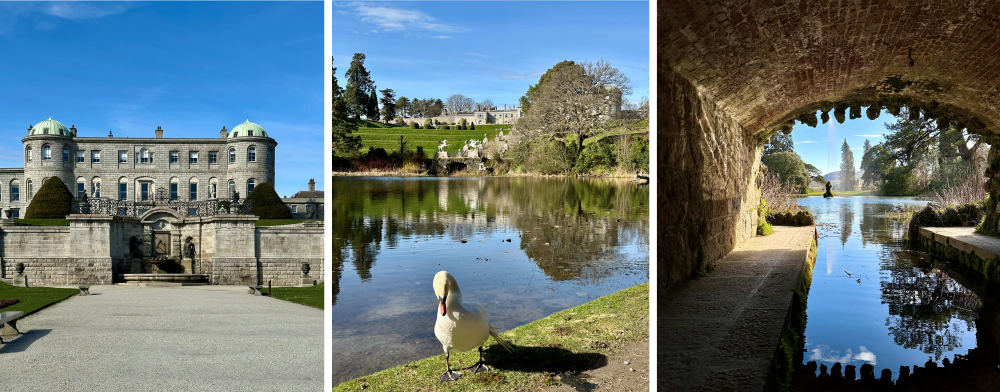
The Powerscourt Demesne itself encompasses the historic house and gardens, the site of Powerscourt Whiskey Distillery and Visitors’ Experience, Powerscourt Garden Centre, Powerscourt Hotel and Powerscourt Waterfall. Some 851 acres in total.
Only a small portion of the house (now owned by the Slazenger family of sports equipment fame) is open to the public which includes a selection of curated retail experiences encompassing interiors, arts and crafts, and an Avoca store which carries a great selection of Wicklow-made artisan food and drink items – perfect for a last-minute picnic in the gardens. Avoca also run the café on site which includes a marvellous terrace overlooking the sweeping staircase, lawns, woodland and ever-present Sugarloaf Mountain that make up just some of the 47 acres of stunning gardens. The café is open year-round serving light bites from soup to hearty bakes, and a daily selection of freshly baked scones, cakes and pastries.
Adjacent to the main house is Powerscourt Distillery located inside an old mill house dated back to the 1700s. The building has been lovingly restored, and where original pieces of mill machinery were uncovered, have been preserved to enhance the heritage story of the building. Outside the main entrance, the original farm bell still hangs; silent now, but a reminder of a time before watches when the daily work was measured out by its tolling.
 The impressive trio of pot stills was crafted by Forsythe in Scotland. Currently, the distillery has capacity to produce 300k litres of new make spirit but was built with future expansion in mind – if required, production could be ramped up to a million litres per year!
The impressive trio of pot stills was crafted by Forsythe in Scotland. Currently, the distillery has capacity to produce 300k litres of new make spirit but was built with future expansion in mind – if required, production could be ramped up to a million litres per year!
The distillery laid down its first batch of new make spirit in 2018, which means the oldest pot to bottle Irish whiskey here is a seven-year-old blended whiskey – Fercullen. Malt and pot still whiskeys are made on site and the Fercullen brand range includes malt, grain and blended spirits.
The distillery is fed from pure spring water, and annually 300 tonnes of barley used is sourced from the Powerscourt Estate farmlands with additional barley sourced further afield within the county. In addition, the distillery is pushing the envelope in terms of creating ever more unique flavour profiles in their whiskey to create a true taste of place through experimentation with heritage Irish oak and wild cultivated yeast.
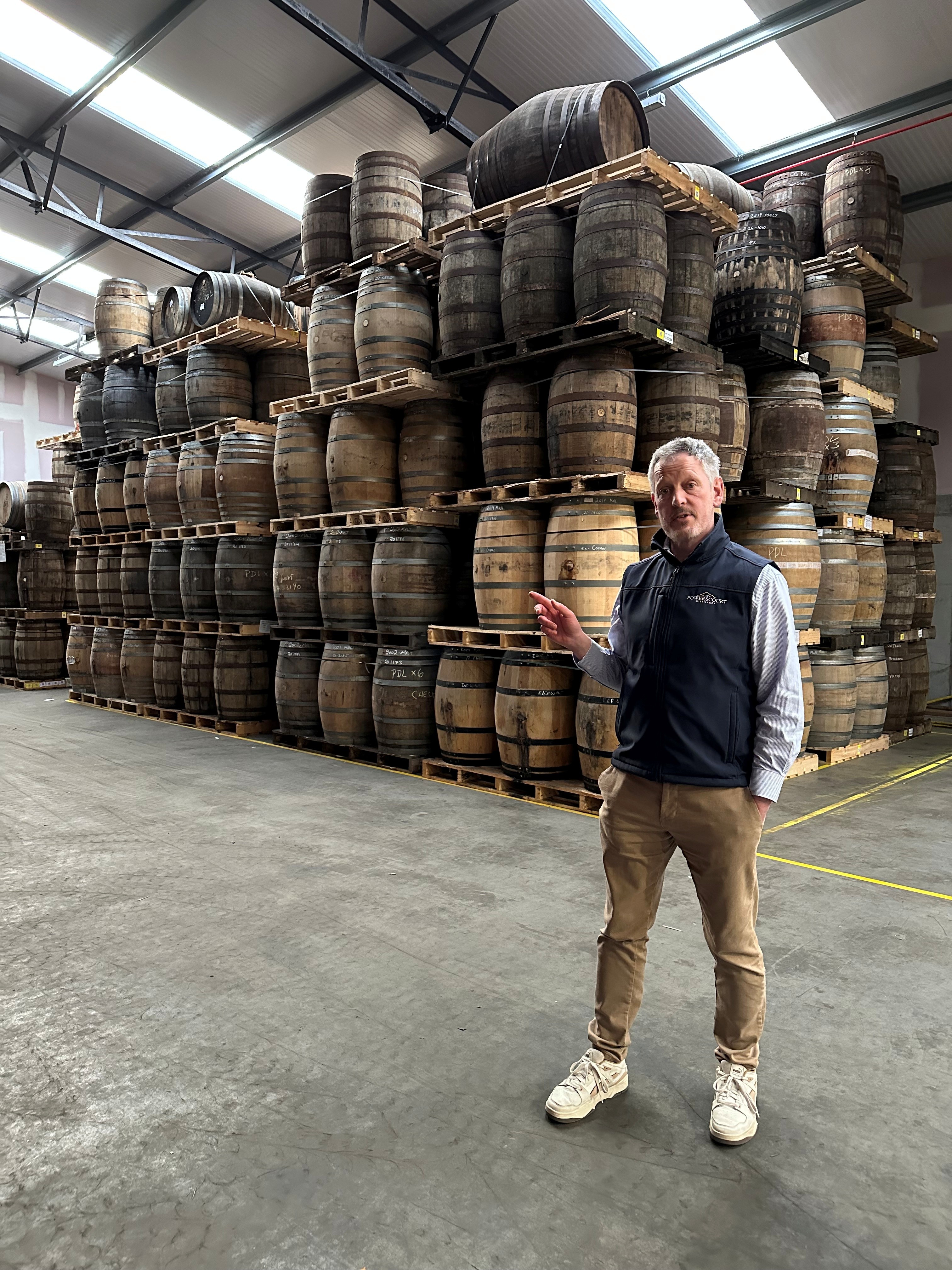 The distillery has secured access to a small number of windfallen oak trees from a nearby heritage Irish oak forest which has been in existence for close to 500 years. During storms in 2024, a small number of these oak trees fell and, with permission, the distillery salvaged the wood. It is currently being seasoned in Champagne, France (the region, not the wine) and eventually will return to Ireland and sent to a cooperage to be transformed in virgin Irish oak barrels for storing and maturing new make whiskey spirit.
The distillery has secured access to a small number of windfallen oak trees from a nearby heritage Irish oak forest which has been in existence for close to 500 years. During storms in 2024, a small number of these oak trees fell and, with permission, the distillery salvaged the wood. It is currently being seasoned in Champagne, France (the region, not the wine) and eventually will return to Ireland and sent to a cooperage to be transformed in virgin Irish oak barrels for storing and maturing new make whiskey spirit.
In the whiskey world, the use of wood to impart flavour and character is still a burgeoning area of exploration for whiskey makers. For Irish whiskey to be called so, it must rest in barrels for a minimum three years and a day. Most whiskey is matured in ex-bourbon American oak, and because Irish oak is protected and therefore rare, the prospect of access to a small amount of this wood is the stuff of dreams to whiskey makers.
The final frontier is the cultivation of a wild yeast. Most Irish whiskeys used one or two commercially available brewers’ yeast which feeds off the natural sugars in the mash during fermentation. The distillery team has paired up with Technological University Dublin to propagate a wild yeast strain captured from the estate. If the trial is a success, Powerscourt Distillery will be the first to produce a true single estate Irish whiskey from water, grain, yeast, spirit and wood all from Powerscourt Estate.
As exciting as this is, we must all cool our hooves a little! Irish Whiskey is a slow process, so even when every element is ready, we will still have to wait at least the obligatory three years and a day to taste the results of this endeavour.
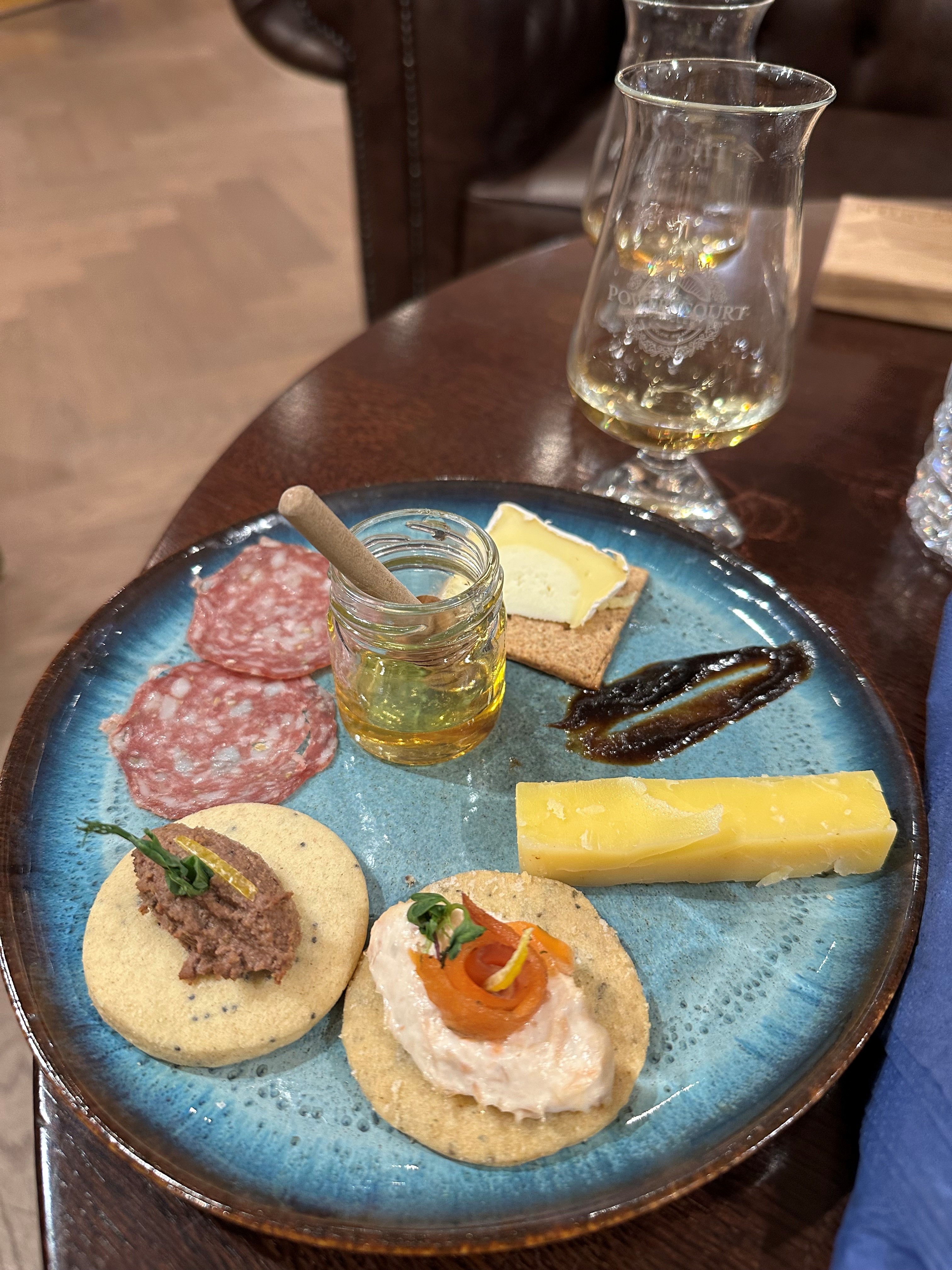 In the meantime, Powerscourt Distillery has relaunched its distillery tours for the coming season and they have also reopened their tasting room for their signature Tasting Experiences in the beautifully appointed whiskey lounge.
In the meantime, Powerscourt Distillery has relaunched its distillery tours for the coming season and they have also reopened their tasting room for their signature Tasting Experiences in the beautifully appointed whiskey lounge.
Daily tours include the Ultimate Irish Whiskey Experience (1 hour, €25pp) or the literally sensational Fercullen Irish Whiskey and Artisan Food Pairing (1.5 hour, €45pp). If you’ve seen enough distilleries in your time and you just wish to taste a selection of whiskeys, choose from a Standard Whiskey Tasting (3 samples, €15), Premium Whiskey Tasting (€55, includes rare and limited-edition whiskeys), or opt for a bespoke whiskey cocktail from the Mixology Menu.
KILLRUDDERY HOUSE (Bray, East County Wicklow)
www.killruddery.com
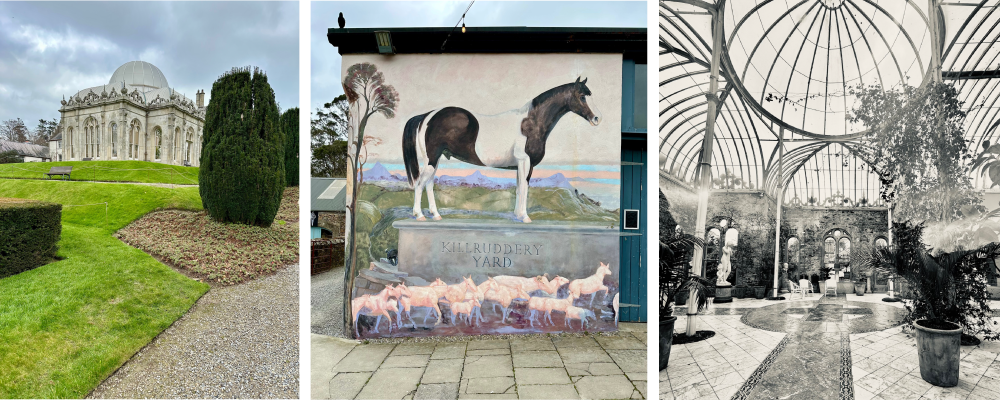
Killruddery House is an exceptional example of an historic house that has truly leaned into providing a gateway for experiencing the property through the promotion of good, local food. The house itself has been in the Brabazon family since 1618 with the current generation Anthony Brabazon and his wife Fionnuala incredibly hands on in all aspects of the estate, leveraging everything the house, gardens and farm have to offer.
As well as tours of the house during the garden season, the breathtaking Orangerie is available as a fairytale wedding venue for a lucky few happy couples each year. There is a regular schedule of wellness events that tap into demand for reconnecting with nature, and the estate hosts events and gigs. But it is the development of a series of courtyard buildings into a communal space that celebrates wonderful Wicklow food that draws locals and visitors alike to the estate with satisfying regularity.
The Farm Shop is a great supporter of artisan food producers from within the Wicklow Naturally food and drink network, a curated selection of the best of the rest, as well as Killruddery Farm lamb, beef and pork and a selection of heat-and-eat meals, preserves and sauces produced from the farmlands and extensive walled vegetable and fruit gardens that surround the house.

The café adjoins the farm shop offering freshly baked cakes and scones made by the restaurants’ pastry chef. Further along in the same pavilion of buildings once used to house a dairy and stables is The Pizza Shed, which has just undergone an extension and upgrade after proving its popularity with locals, especially during weekends. A Farmer’s Market every Saturday is an eclectic mix of local food, arts, craft and antiques that perfectly compliments the relaxed atmosphere of the courtyard space.
But the jewel in the crown is Executive Head Chef Niall O’Sullivan’s The Grain Store Restaurant. O’Sullivan is a chef relishing the abundance of Killruddery’s organic produce from farm and gardens with menus driven by provenance and seasonality – last summer, 95% of the produce on menus was sourced directly from the farm and gardens of the estate managed by head market gardener, Pat Keady. As a founding member of Nadúr Collective, O’Sullivan’s dishes are frequently complimented with wild foraged elements, and a passion for preservation and fermentation deliver sensational little taste bombs. The restaurant operates Thursday to Sunday for lunch and dinner, with seasonal supper clubs on Friday and Saturday evenings. This is the place to be any time of year, but particularly on balmy summer evenings when pretty festoon lights illuminate the courtyard making you feels as though you are a million miles from anywhere.
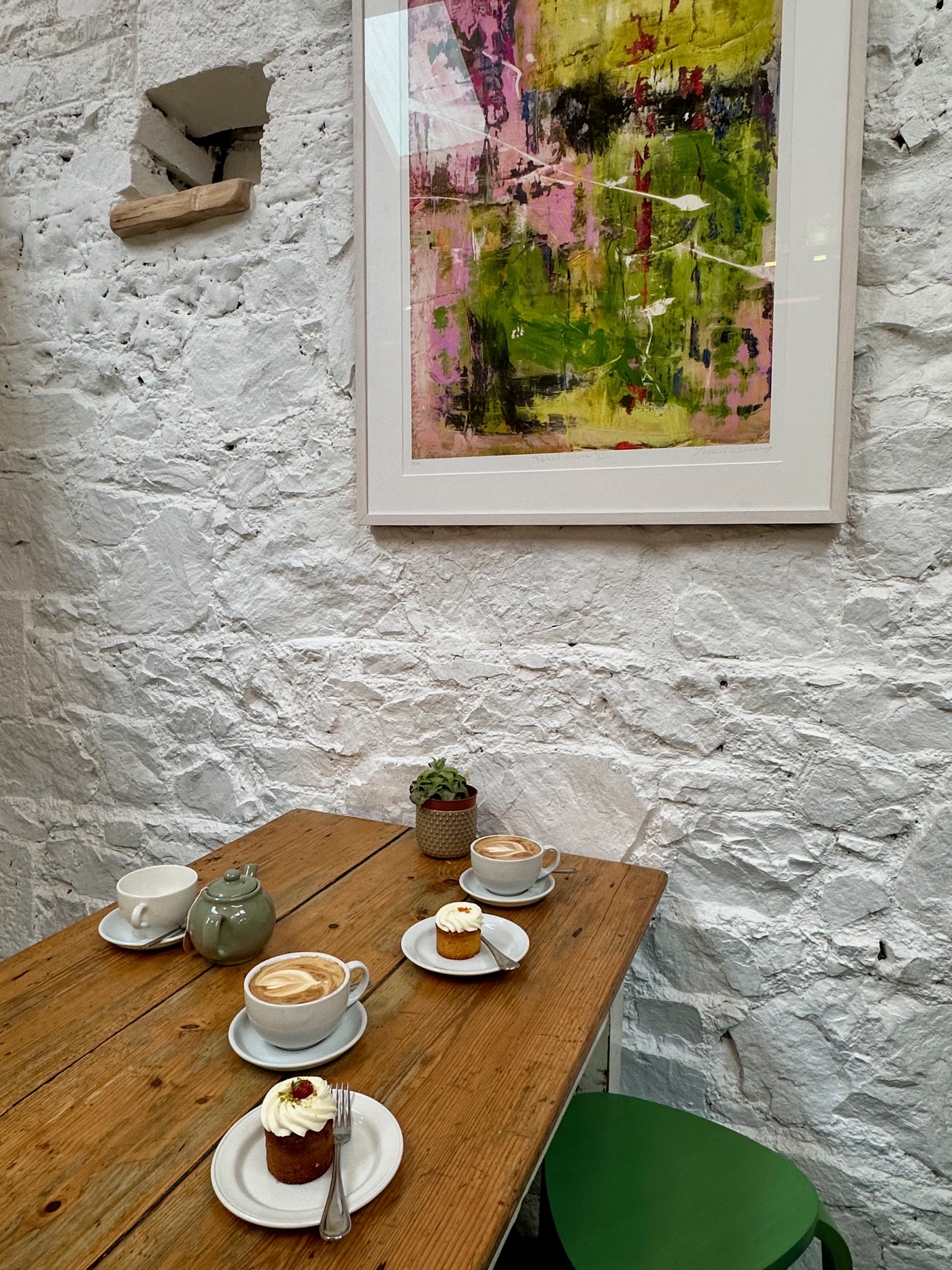 When touring Killruddery Gardens, a final pit stop is the octagonal former dairy turned tearoom Here, once upon a time, milk and cream would be brought into this ornate room to chill and separate for making butter. In its heyday this building was, truth be told, largely unnecessary, but it reinforced the spectacle of these houses to show off what could be produced on the estate. Today, this is where guests come to take a moment of refreshment after a tour of the gardens. Fresh dairy still features heavily in frothy coffees and milky teas to accompany a freshly baked scone topped with butter and cream.
When touring Killruddery Gardens, a final pit stop is the octagonal former dairy turned tearoom Here, once upon a time, milk and cream would be brought into this ornate room to chill and separate for making butter. In its heyday this building was, truth be told, largely unnecessary, but it reinforced the spectacle of these houses to show off what could be produced on the estate. Today, this is where guests come to take a moment of refreshment after a tour of the gardens. Fresh dairy still features heavily in frothy coffees and milky teas to accompany a freshly baked scone topped with butter and cream.
The guiding principle of the “Killruddery Kitchen Table” is to honour the estate and people in service of place. This is what makes the food experiences here so intriguing but also authentic and deeply steeped in the food customs and traditions of the estate itself.
RUSSBOROUGH HOUSE (Blessington, West Wicklow)
www.russborough.ie
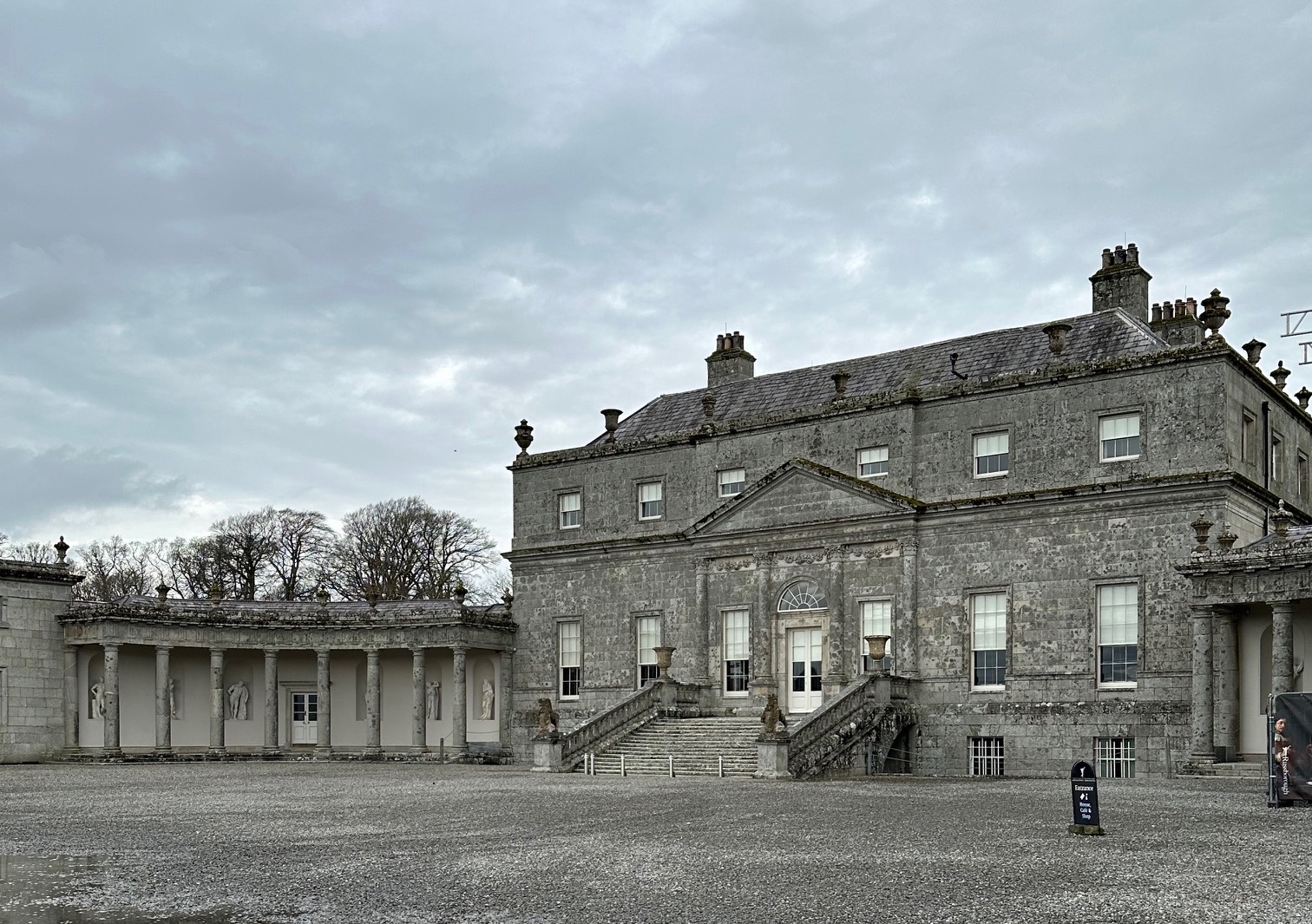 Russborough House is primarily known and renowned for its art collections as well as many of the finest examples of furniture and decorative interiors in Ireland. The art itself is the foundation for a colourful past, including several art heists. A large proportion of the collection was accumulated during a Grand Tour by the original founder of the house, the Earls of Milltown (formerly the Leeson family), who traded up to the 200-acre demesne funded by great wealth acquired through his family’s merchant roots – mostly in brewing, tanneries and property.
Russborough House is primarily known and renowned for its art collections as well as many of the finest examples of furniture and decorative interiors in Ireland. The art itself is the foundation for a colourful past, including several art heists. A large proportion of the collection was accumulated during a Grand Tour by the original founder of the house, the Earls of Milltown (formerly the Leeson family), who traded up to the 200-acre demesne funded by great wealth acquired through his family’s merchant roots – mostly in brewing, tanneries and property.
Joseph Leeson needed to learn how to be a gentleman in order to conduct himself in a manner befitting a gentleman of wealth and privilege. During his Grand Tour, Leeson collected and commissioned great works of art with which to fill his great Georgian Palladian mansion as a conspicuous display of his wealth and status. Guided tours of Russborough detail the story of the rise of Russborough House through the lives of the three families who have been custodians of the house since 1755.
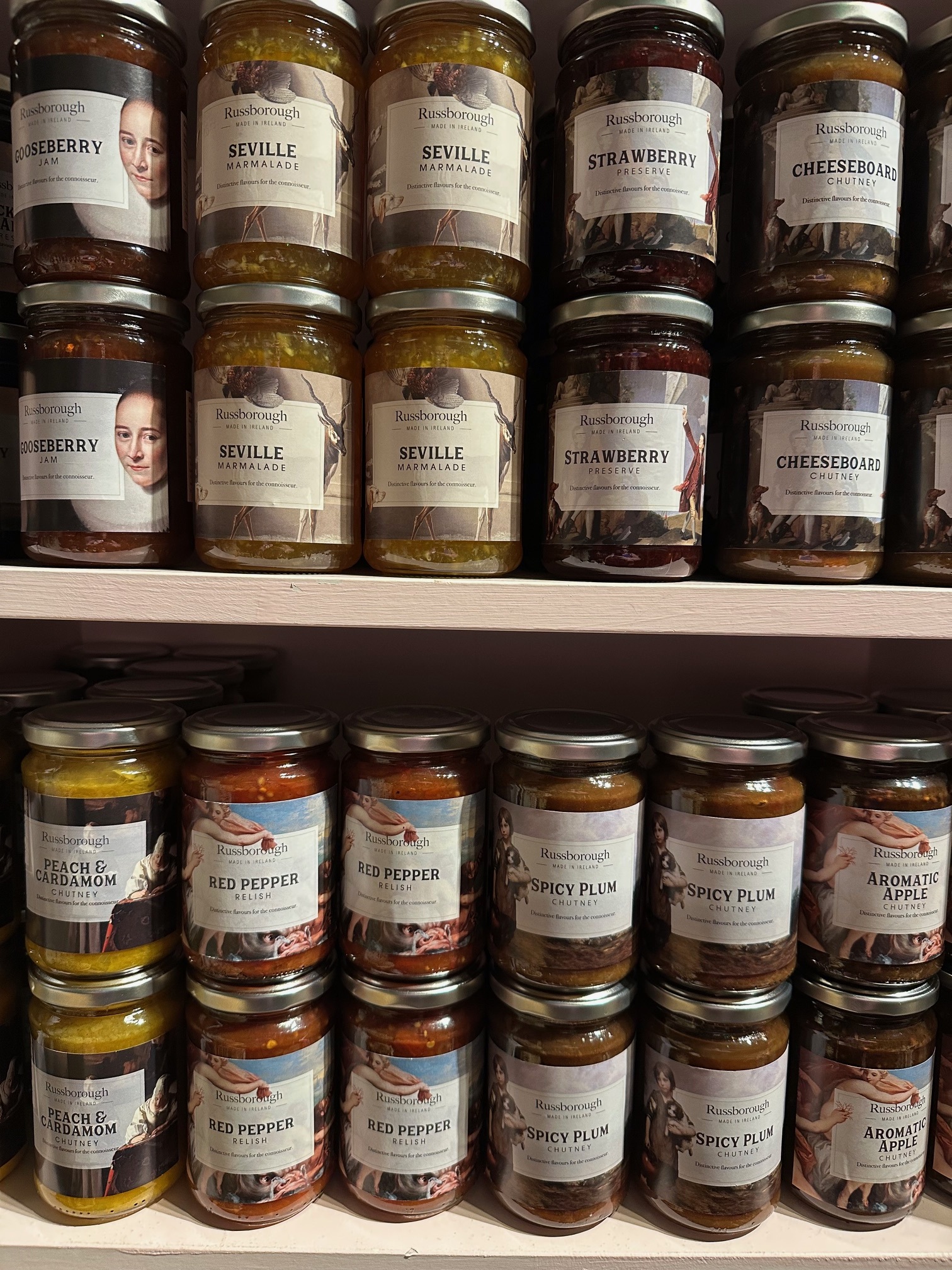 The estate boasts a 3-acre walled garden which was established soon after completion of the main house in 1760. The walled garden is in the care of the Royal Horticultural Society of Ireland and worked by a band of some 15-20 volunteers three days per week. It’s home to a handful of apple trees as old as 200 years still producing great tasting cooking apples, soft fruit bushes of all kinds (gooseberries are a speciality), and vegetable crops grown throughout the year. The produce from the garden is made into seasonal preserves and condiments sold in the gorgeous IMAGE 8D gift shop producing a small income for the estate. Cut flowers and pot plants grown by the volunteers are also sold with funds going back into maintaining the walled gardens and its old glasshouse structures.
The estate boasts a 3-acre walled garden which was established soon after completion of the main house in 1760. The walled garden is in the care of the Royal Horticultural Society of Ireland and worked by a band of some 15-20 volunteers three days per week. It’s home to a handful of apple trees as old as 200 years still producing great tasting cooking apples, soft fruit bushes of all kinds (gooseberries are a speciality), and vegetable crops grown throughout the year. The produce from the garden is made into seasonal preserves and condiments sold in the gorgeous IMAGE 8D gift shop producing a small income for the estate. Cut flowers and pot plants grown by the volunteers are also sold with funds going back into maintaining the walled gardens and its old glasshouse structures.
Given the size of the estate, Russborough have struck up mutually beneficial relationships like the one with RHSI to create exciting activities and ways for the public to come and experience this beautiful place in extraordinary ways. The National Bird of Prey Centre is based in Russborough, as are artist studios, sheepdog demonstrations, and a range of outdoor activities for kids of all ages (even adult-sized ones) via CP Adventure.
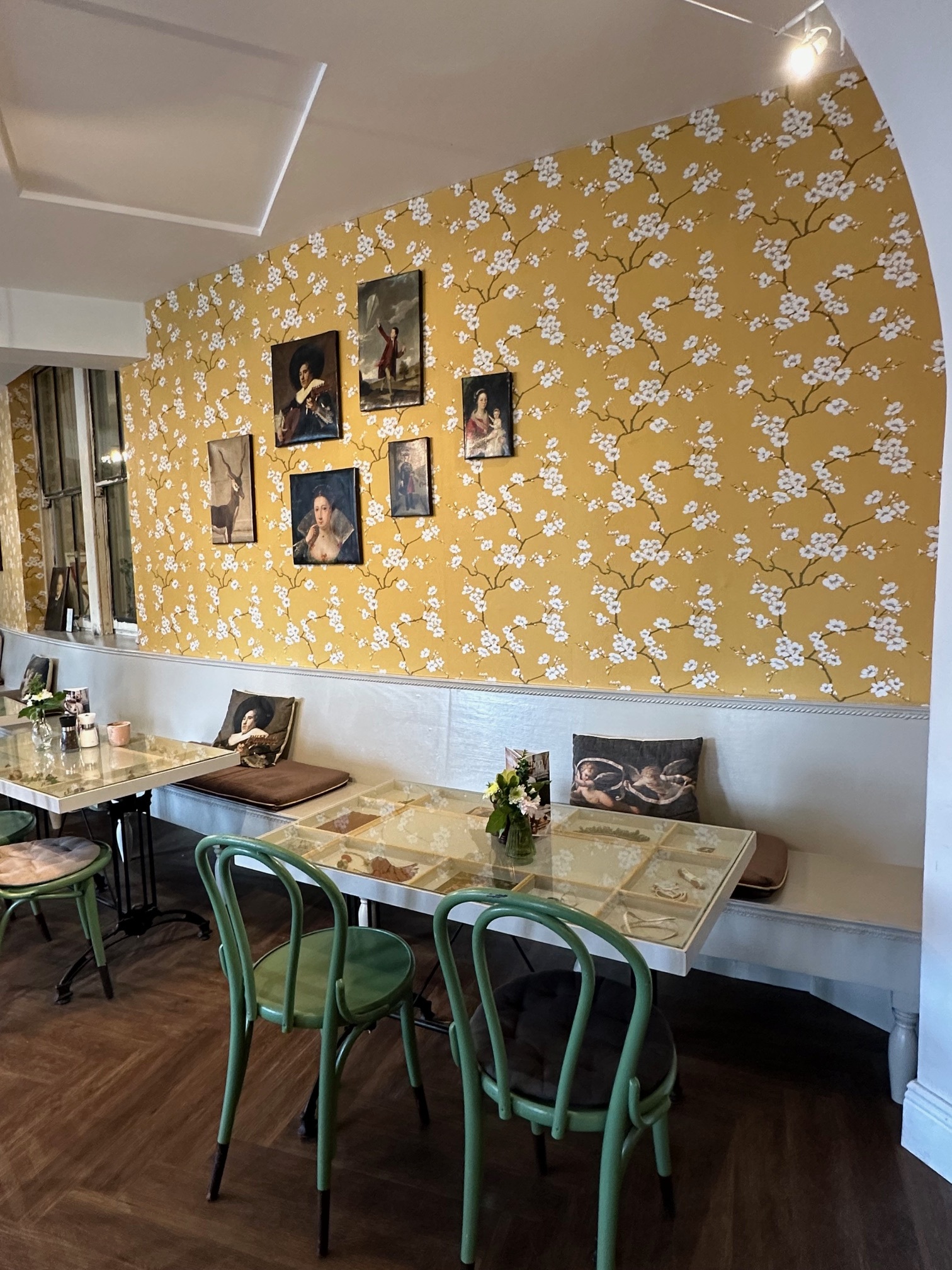 Inside Russborough House is an onsite café operated by Gather & Gather which prioritises using as much local and seasonal produce as possible. It’s a popular spot and, despite the age of the property, is entirely wheelchair accessible. Fresh salads, sandwiches, quiches and savoury bakes alongside a small selection of hot dishes and cakes are made fresh daily onsite by the kitchen team. (Top Tip: the Bread and Butter Pudding is made from freshly baked croissants and is something of a signature dish at the café!) Afternoon Tea is a particular fan favourite with regulars and visitors alike and a fittingly elegant way to complete a day's exploration around the house and gardens.
Inside Russborough House is an onsite café operated by Gather & Gather which prioritises using as much local and seasonal produce as possible. It’s a popular spot and, despite the age of the property, is entirely wheelchair accessible. Fresh salads, sandwiches, quiches and savoury bakes alongside a small selection of hot dishes and cakes are made fresh daily onsite by the kitchen team. (Top Tip: the Bread and Butter Pudding is made from freshly baked croissants and is something of a signature dish at the café!) Afternoon Tea is a particular fan favourite with regulars and visitors alike and a fittingly elegant way to complete a day's exploration around the house and gardens.
Throughout the year, Russborough hosts concerts, events, workshops and festivals (including the family-friendly Kaleidoscope festival). For certain events, special pre-show suppers are served in the café and make a magical start to any evening in the surrounds of this great house.
The many acres of beautiful parklands, formal gardens, meadows, lakes and wild hedges have been carefully managed and are now a biodiversity hotspot for wildlife. Otters, moorhens, herons, snipes, barn owls, bats, swans, ducks, hares, dormice, foxes, badgers, red squirrels and bees have all made Russborough’s diverse and protected landscapes their own. (Fun Fact: 52 of the 100 species of wild bee have been identified on the estate.)
Russborough’s connection with food, however, comes into its own in the way past owners gave primacy to the skill and craft of hospitality. Ireland’s great houses were often first at the races when it came to fashion. Food has always been a windsock in this regard because, aside from sustenance, food was always about status. For instance, in the walled garden there is a Pits House, a semi-sunken glasshouse used for growing exotics and tropical plants. Pineapples were first introduced to Europe in the 16th century, and by the time of Russborough’s heyday they had become unlikely edible object d’art for the very rich. At one time it was said that pineapples were more valuable than gold, which is why pineapples appear as decorative gold-plated objects in abundance in the Georgian era. Pineapples could even be rented as decorative centrepieces to be admired but never eaten. For those wishing to really showcase their wealth, the pinnacle of pineapple grandstanding would be to shoulder the enormous cost of growing one’s own pineapple in Pits Houses heated through underground pipes fired by a boiler. The remainder of all these elements are found in the Russborough Pits House in the walled garden.
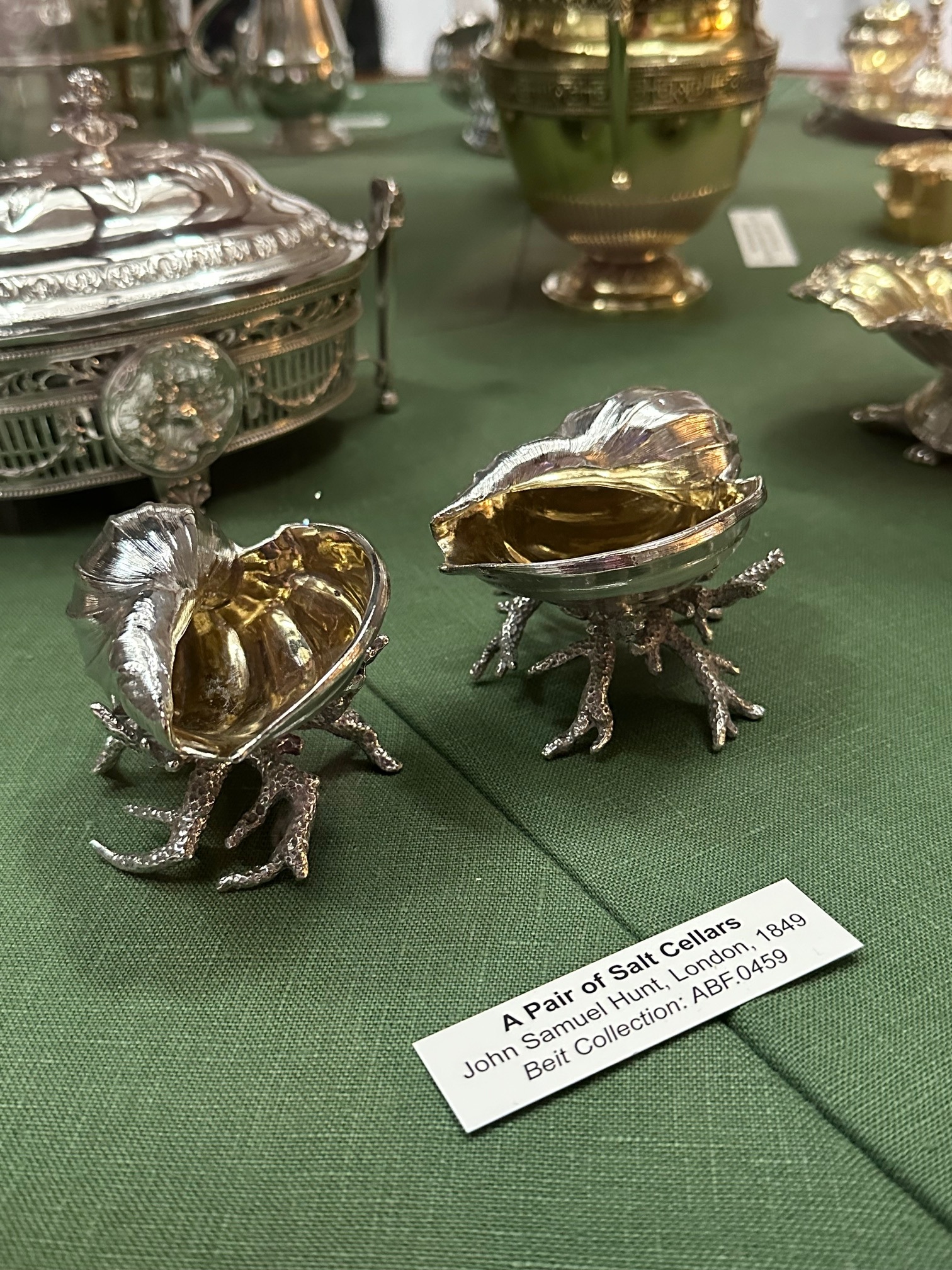 In addition, Russborough has the largest private collection of silver and porcelain in Ireland. These items weren’t just for display but vital in underpinning the status of the house at the most show-off-y time of all – mealtimes. In the archives of the house, manuscript books and diaries are filled with the detailed records of every element of hospitality employed by the Milltown/Leeson family. Remember, the first Earl had invested huge energy in learning how to be a gentleman and therefore knowing who was coming to dinner and their respective rank and status informed decisions around which silverware, crockery and glassware were to be used. The accoutrements of dining were purposefully selected with the choice of dishes for each menu. Where notes on pineapples feature, it is only for the most esteemed of guests and occasions.
In addition, Russborough has the largest private collection of silver and porcelain in Ireland. These items weren’t just for display but vital in underpinning the status of the house at the most show-off-y time of all – mealtimes. In the archives of the house, manuscript books and diaries are filled with the detailed records of every element of hospitality employed by the Milltown/Leeson family. Remember, the first Earl had invested huge energy in learning how to be a gentleman and therefore knowing who was coming to dinner and their respective rank and status informed decisions around which silverware, crockery and glassware were to be used. The accoutrements of dining were purposefully selected with the choice of dishes for each menu. Where notes on pineapples feature, it is only for the most esteemed of guests and occasions.
All of this detailed decision making was meticulously recorded in books along with dates, times of arrival and departure, and any other snippets of information that would both cement the reputation and standing of the Leesons (likely underpinned by a fear one misstep in etiquette or custom could expose his bourgeois past) and meet the expectations of hospitality and deference required of his guests.
While on a visit, I was fortunate to be shown some of these priceless manuscripts by Pauline Swords, head of collections and conservation at Russborough House. A recipe that stood out was for the simplest of things - how to make coffee. The recipe book was created by Lady Clementine Mitford (1854-1932) - Neé Ogilvy, grandmother of Clementine Beit:
"Take equal quantities of Mocha and Cuba coffee. Roast the first of a pale colour, and the latter very dark, almost burnt. Boil the water (river water if possible) in a very clean saucepan and when boiling pour into the coffee-pot a small quantity at a time. If possible, use the coffee freshly roasted and always use it freshly ground."
Count Karolyi's cook. 1880
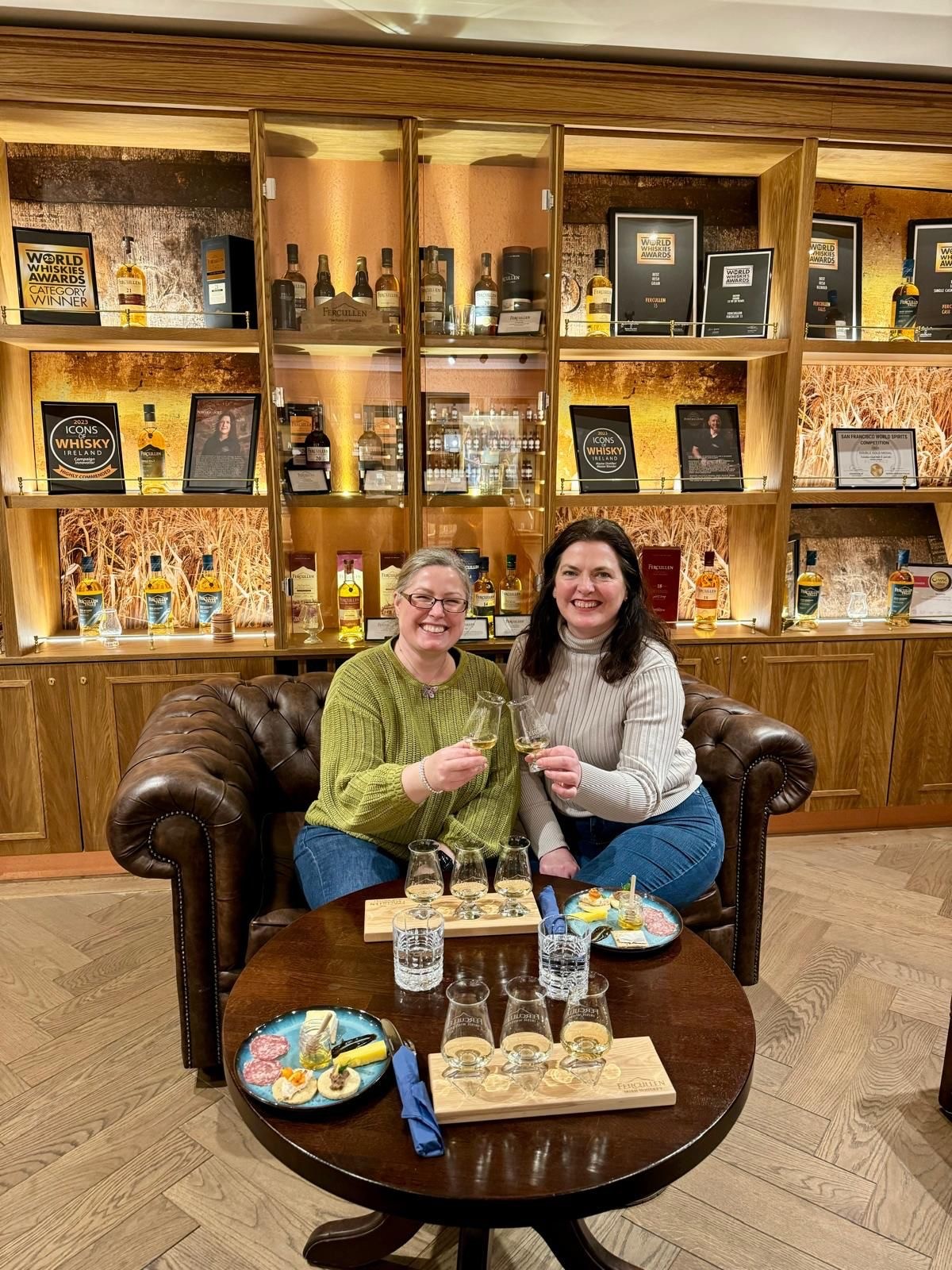
*** Many thanks to Santina Kenndy (Visit Wicklow: www.visitwicklow.ie and Wicklow Naturally: https://wicklownaturally.ie/), pictured (right) with Kate Ryan at Powerscourt Distillery, for her expert guidance on this wonderful Wicklow adventure.
Cookery Feature- The Happy Pear at 20!
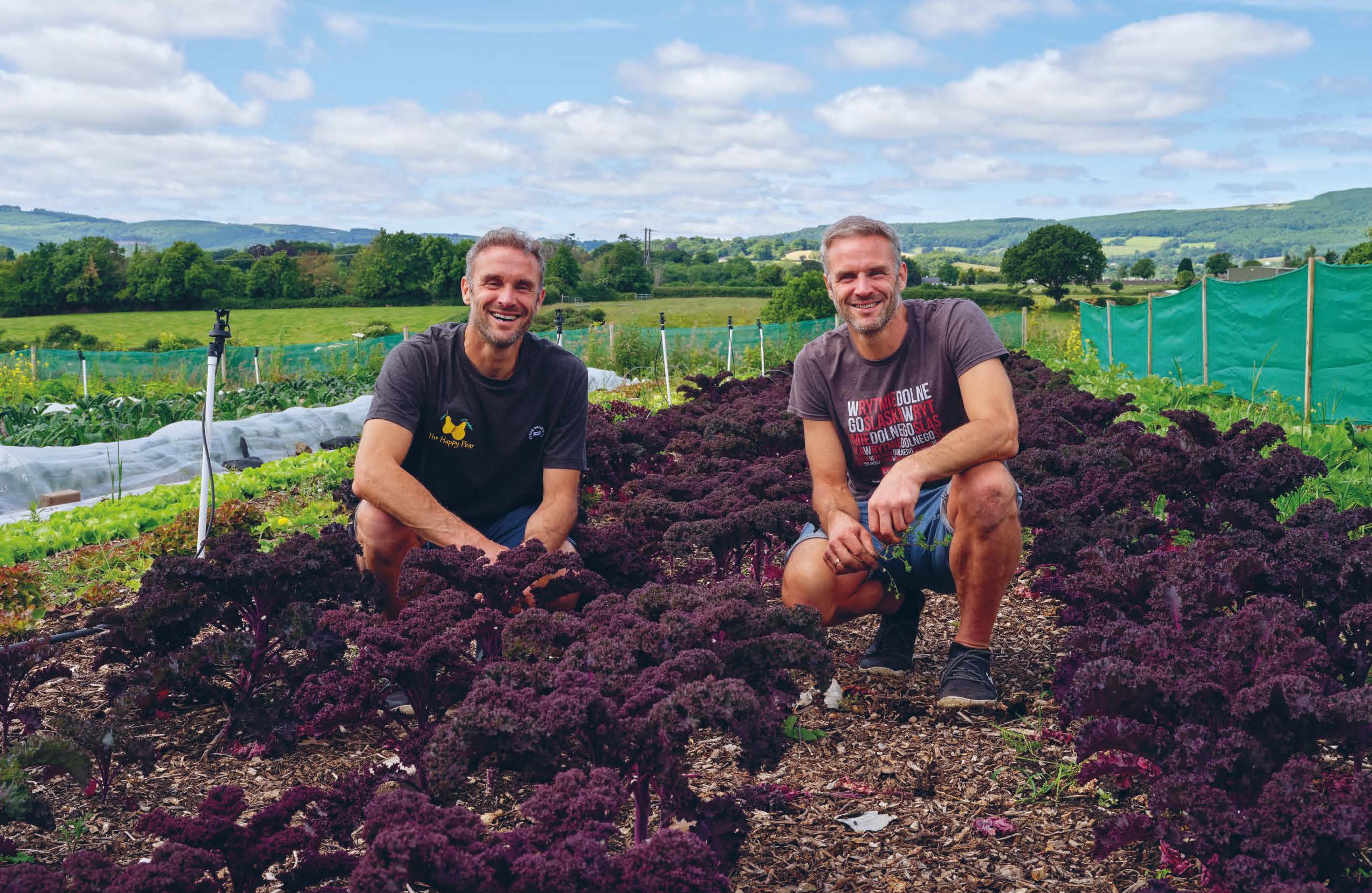
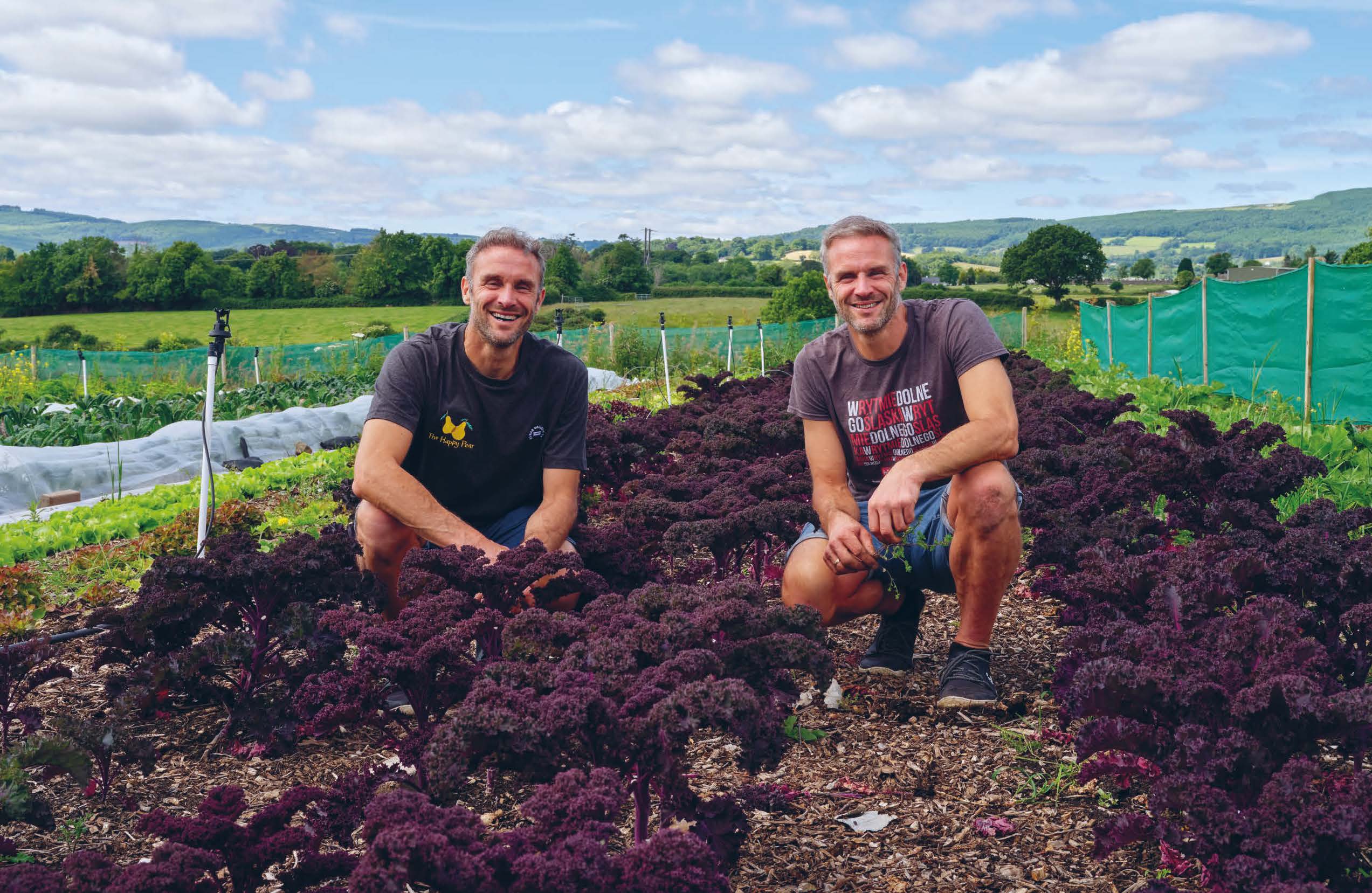
A much loved fixture in Greystones for as long as many of its customers can remember, The Happy Pear recently marked two decades of “flavourful food, cheerful community and happy, healthy living – all powered by veg”. It all started with a small greengrocers shop and ‘The Happy Pear Twins’ David and Stephen Flynn still have the original shop, to which they soon added a café and bakery, their own regenerative organic farm, a coffee roastery, a range of over 80 plant based products, plus cookbooks, online courses and a community of almost 2 million followers. Their mission has always been ‘to help people eat more veg, to get healthier and be happier’ and they’re famous for their ardent - and sometimes controversial - advocacy of veganism, but their food philosophy has moderated somewhat since they’ve had children and they don’t force them to eat an exclusively vegan diet. 'Eat more veg and keep well away from UPF's (ultra processed foods)' is the key message, and their commitment to the environment and sustainable food production is seen in practice at their farm. Celebrating two decades of the Happy Pear, this latest book includes many tried and tested recipes from the café, Flynn family favourites and top 20 lists highlighting stories and lessons from along the way – who could resist the likes of ‘20 ways to eat more veg (and to get your kids to eat more veg!)’, ‘20 ways to pick yourself up when feeling down’ or ‘20 things we've learned after 20 years’ ..?
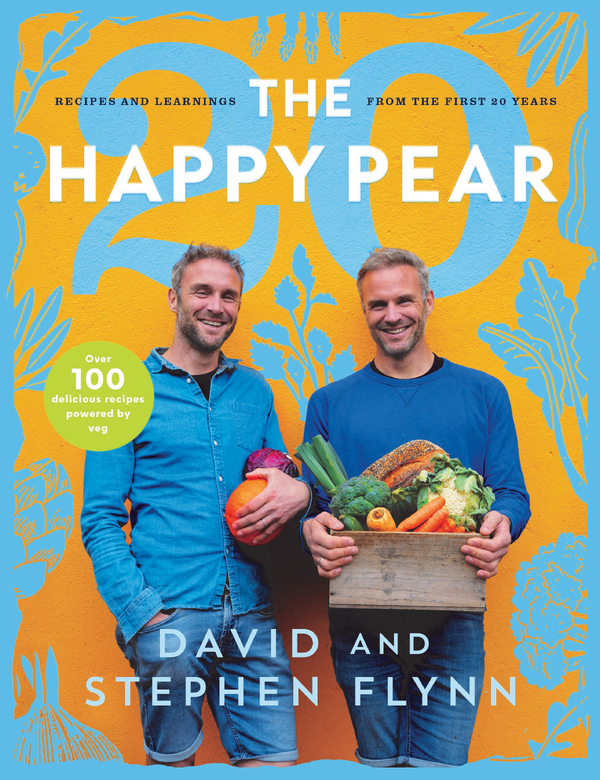
The Happy Pear 20 by David and Stephen Flynn, with photographs by Joanne Murphy. Hardback €24.99/£23.99 (ISBN 9781804581032)
And you don’t have to be vegan to love these tasty and very versatile recipes – here are just three to try:
.jpg)
Easy 10-Minute Indian Dhal recipe
We have cooked this dish hundreds of times, and it is always well received. It's richly flavoured and deeply nourishing and ready in just 10 minutes. Here, we serve it with toasted wholemeal pitta bread, but it's also perfect with wholemeal couscous, for example, or a pack of pre-cooked brown rice.
Serves 2 on its own, or 4 with an accompanying grain
Ingredients
3 cloves of garlic
thumb-sized piece of ginger
bunch of scallions
1 × 400g tin of chickpeas
1 × 400g tin of lentils
10 cherry tomatoes
3 wholemeal pitta breads
1 tbsp oil
1 handful of baby spinach
1 × 400g tin of coconut milk
1 × 400g tin of chopped tomatoes
2 tbsp curry powder
1 tbsp tamari or soy sauce
1 tsp salt
½ tsp black pepper
To serve
1 lime
1 fresh red chilli (optional)
small bunch of fresh coriander or other fresh herb of choice
Method
Preparation: Peel and finely chop the garlic and ginger. Finely chop the scallions, removing any limp outer leaves. Drain and rinse the chickpeas and lentils. Cut the cherry tomatoes in half.
Toast the pittas: Put the pitta breads in the toaster at max heat.
Cook the dhal: Heat 1 tablespoon of oil for 1 minute in a large saucepan over a high heat. Add the garlic, ginger and scallions and cook for 1 minute. Add the cherry tomatoes and cook for an additional 2 minutes.
Add the remaining ingredients: Add the chickpeas, lentils, baby
spinach, coconut milk, chopped tomatoes, curry powder, tamari or
soy sauce and salt and black pepper. Stir well and bring to a boil. Once boiling, reduce the heat and simmer for 2 minutes, stirring occasionally to prevent it from sticking to the bottom of the pan. Remove from the heat.
Garnish and serve: Finely chop the fresh coriander (including the stalks). Squeeze the juice of the lime over the dhal and add the coriander. Stir to combine. If desired, finely slice the chilli and sprinkle on top for added heat. Cut the toasted pitta breads into soldiers (strips) and serve them on the side of your easy dhal. Enjoy!
.jpg) Easy Sesame and Coriander Flatbreads recipe
Easy Sesame and Coriander Flatbreads recipe
These are surprisingly simple to make, and you can adapt this
basic recipe to virtually any flavour you like. Here we've gone
with sesame and coriander, but you could leave those out to
make plain flatbreads. Makes 4
Ingredients
200g self-raising flour, plus extra for dusting
150ml natural soy yoghurt or coconut yoghurt
flour for dusting
3 tbsp black sesame seeds
1 tbsp oil, plus extra for brushing
10g fresh coriander
salt
Method
Make the dough: In a mixing bowl, add the flour and a teaspoon of salt and stir together. Add the yoghurt and mix well until it's uniform in consistency. In the bowl, knead the mixture for 5 minutes till you get a soft dough.
Divide and roll out: Cut your dough into 4 equal pieces. Dust your work surface with flour and roll out each piece of dough to about ½cm thick.
Cook: Put a large pan on a high heat. Once it's hot, reduce the heat to medium. Add a sprinkle of sesame seeds and 1 tablespoon of oil (use sesame oil if you want to increase the sesame flavour) then one of the rolled-out flatbreads. Cook till it starts to turn golden underneath, it may also start to form air pockets. Turn and cook on the other side till golden too. Repeat with the remaining flatbreads.
Serve: Brush with a little oil, then sprinkle with some freshly chopped
coriander and coarse sea salt for one of our favourite types of flatbreads!
.jpg) The Creamiest Hummus Ever! recipe
The Creamiest Hummus Ever! recipe
We make literally tons of hummus every week in our factory in Pearville! Over the years, we have explored every trick and hack in search of the perfect hummus. Here are three simple tips to take your hummus to the next level:
1. Boil your tinned chickpeas with baking soda for a few minutes, then remove the skins – this makes the hummus creamier.
2. Use ice instead of water – it will help make the hummus lighter and fluffier.
3. Blend for longer – our friend from the Middle East blends his hummus for 30 minutes in his food processor!
Makes about 800g
Ingredients
2 × 400g tins of cooked chickpeas
½ tsp baking soda
2-3 cloves of garlic, depending on your preference
4 tbsp lemon juice (about 2 lemons)
4 tbsp tahini
3-4 ice cubes
4 tbsp olive oil, plus extra to garnish
1½ tsp salt
1 tsp ground cumin
pinch of sumac or sweet paprika, to garnish
1 tbsp sesame seeds, to garnish
Method
Prepare the chickpeas: Drain and rinse the chickpeas and add to a pot. Add the baking soda, cover the chickpeas with just-boiled water and bring to the boil. Reduce to a simmer and cook for 10 minutes.
Remove the chickpea skins: Drain and rinse the cooked chickpeas. Set a small handful aside for garnish (if you'd like), then soak the rest in a large bowl filled with cold water. Try to get rid of the chickpea skins that came loose during the cooking by rubbing them together, or use a small sieve to help with this. Discard the skins.
Blend: Peel the garlic cloves. Add all ingredients for the hummus, except the sumac or sweet paprika and the sesame seeds, to a food processor and blend till super smooth – we recommend blending for 2–5 minutes, depending on your patience! Taste and adjust the seasoning to your palate. If it's too strong or too thick, add a little water to thin it out.
Serve: Serve with a glug of olive oil and a pinch of sumac or sweet paprika and a light dusting of sesame seeds.
National Biodiversity Week, May 16th to May 25th
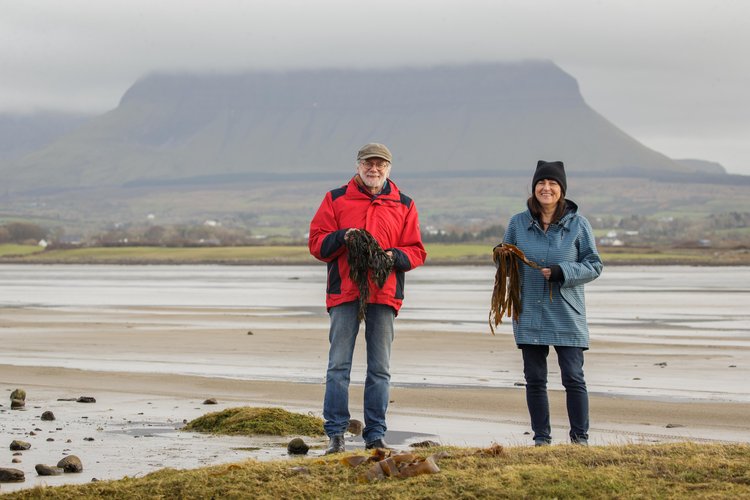
As the importance of biodiversity is better understood, public interest in protecting and promoting it is growing and The Organic Centre in Co Leitrim has organised a busy timetable of over 11 events and exhibitions for the 2025 National Biodiversity Week which takes place from 16th to 25th May.
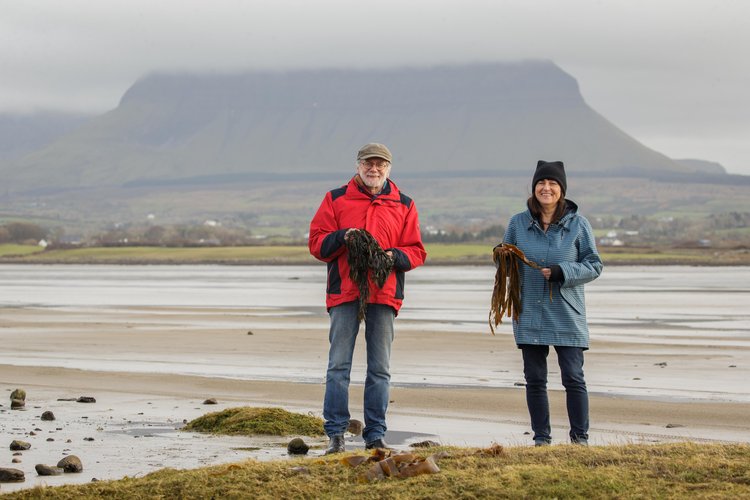
The Organic Centre will be welcoming environmental commentator and former Irish Wildlife Trust campaign officer, Padraic Fogarty who will talk about rewilding, and Georgia MacMillan from Dark Sky Ireland who will lead a walk and give a presentation on the detrimental impacts of light pollution to our wildlife, our tourism, our health and wellbeing.
With many exciting family friendly activities also organised throughout Biodiversity Week, it’s an outing with something for all ages that’s not to be missed. Find out here about events nationwide on the Biodiversity Week, website and what's on at The Organic Centre.
And of course nurturing biodiversity is just one of the holistic aims of The Organic Centre, where practical courses and events are offered on an ongoing basis - - you can check out their range of upcoming courses here - https://www.theorganiccentre.ie/Learn/weekend-courses
Similarly, ‘Good Life’ couple Hans and Gaby Wieland’s Neantog Farm & Kitchen Garden School in nearby Co Sligo has been all about sustainability since 1987 – and they gave courses at The Organic Centre from the mid ‘90s. Their Summer Courses invite students to spend an interactive day with them at Neantog Kitchen Garden School during the Summer and learn a new skill or improve growing or foraging knowledge. They promise an action packed, fun-filled experience in a small group (maximum participants 10). On June 7th they offer Herbs for Life, then on July 12th it's their Foraging Summer Workshop (see Hans and Gaby pictured seaweed foraging, above) and on August 23rd Growing in Polytunnels. Their courses are popular and there is often a waiting list (eg for the Home Preserving course on June 28th) but cancellations do become available, Course information here - https://www.neantog.com/shop
EURO-TOQUES IRELAND FOOD AWARDS 2025 - HONOURING IRELAND'S KITCHEN TABLE


Ashford Castle Estate made a wonderful setting for this year's Euro-Toques Ireland Food Awards a heartfelt celebration of Ireland's food producers and craftspeople. Founded in 1986 by Myrtle Allen and a small group of likeminded commissioners, Euro-Toques Ireland, as long championed local food integrity, craftsmanship, and community-led gastronomy. The 2025 Awards continued this mission with the theme: "Honouring Ireland's Kitchen Table", paying tribute to a place where for generations food meets tradition, memory and storytelling.
Held on Monday 26th May 2025, the event brought together chefs, producers, and advocates of Irish food culture to honour the people behind the country's most exceptional ingredients. Seven awards were presented across the categories of Water, Land, Farm, Dairy, Artisan Produce, and Traditional Craft.
The 2025 Awards winners are:

WATER: Dingle Sea Salt
For producing Ireland's first solar-evaporated sea salt using a fully off-grid, low-carbon process. Their product, harvested from the Atlantic, reflects innovation, sustainability, and a strong sense of place.

LAND: Coole Farm
For cultivating vibrant, organic salad leaves with care and intention. Their regenerative approach restores soil health, supports biodiversity, and strengthens their local community food system.

FARM: Moy Hill Farm
For their ethical, regenerative egg production and their holistic approach to farming that nourishes both land and people. Through education, CSA boxes, and on-farm transparency, they foster a resilient, community-rooted food culture.

DAIRY (Cultured Butter): Salt Rock Dairy
For handcrafting cultured butter using milk from their own herd and Wexford sea salt. Their work revives traditional butter-making and redefines local dairy with transparency, flavour, and integrity.

DAIRY (Soft Cheese): Ballylisk – The Triple Rose
For their rich, triple cream cheese made from a single pedigree herd in Armagh. Their commitment to artisan craftsmanship and traceability results in a luxurious product with depth and distinction.
 ARTISAN PRODUCE: Wild Irish Foragers
ARTISAN PRODUCE: Wild Irish Foragers
For preserving Ireland's edible wild heritage through handcrafted syrups, shrubs, and jellies made from foraged botanicals. Their deep connection to the land and traditional methods keeps forgotten flavours alive.
 TRADITIONAL CRAFT/SKILL: Seagull Bakery
TRADITIONAL CRAFT/SKILL: Seagull Bakery
For championing real bread made from Irish-grown grains and bold fermentation. Their Waterford bakery supports local farmers and reimagines traditional baking with creativity, skill, and sustainability.
 "The Irish kitchen table is a symbol of trust, care, and resilience," said Aishling Moore of Goldie in Cork, Head of the Euro-Toques Food Council. "It is where we learn the fundamentals of food – not just how to cook, but how to value what we eat and who we share it with." Conor Halpenny of Square Dundalk, Chair of Euro-Toques Ireland, added: "We are honouring those who have kept Irish food grounded – producers and craftspeople who quietly shape our national identity through their work every single day."
"The Irish kitchen table is a symbol of trust, care, and resilience," said Aishling Moore of Goldie in Cork, Head of the Euro-Toques Food Council. "It is where we learn the fundamentals of food – not just how to cook, but how to value what we eat and who we share it with." Conor Halpenny of Square Dundalk, Chair of Euro-Toques Ireland, added: "We are honouring those who have kept Irish food grounded – producers and craftspeople who quietly shape our national identity through their work every single day."
This year's Euro-Toques Ireland Food Awards once again underline a deep, collective commitment to sustainable, small-scale, and traditional food production across Ireland. Each award category reflects a fundamental element of the Irish food story – from ocean-harvested salt and nutrient-rich seaweeds to soil-nurturing salad leaves, pasture-raised eggs, and hand-churned butter. The 2025 awards particularly celebrate: producers who channel the purity of Ireland's marine environment into seasonings that elevate flavour while protecting biodiversity; salad growers who regenerate land and community through hyper-local, small-scale farming; free-range egg farmers who build food systems rooted in animal welfare, microbial life, and old-fashioned trust; and butter and cheese makers whose deep respect for the land and traditional methods results in products that express a strong sense of place. They honour foragers and preservers of Ireland's wild larder, who transform hedgerow bounty into syrups, jellies and shrubs with heritage recipes, and independent bakers who revive real bread craft with Irish-grown grains and time-honoured techniques. Together, these producers are shaping a resilient, flavour-rich future for Irish food – one built on care, creativity, and connection to the land.
 Following the awards, guests gathered for a celebratory lunch that brought together over 100 chefs, producers, and Euro-Toques members. The meal was accompanied by a beautifully curated Harvest Table, showcasing the exceptional work of more than 30 Irish producers, including this year's winners and nominees. Designed by the Euro-Toques Food Council, the table offered a visual and tasting journey through Ireland's seasonal bounty. Lunch was prepared by celebrated chefs Liam Finnegan and Jonathan Keane, whose menus captured the essence of the Irish kitchen – honest, rooted in place, and led by the finest local ingredients.
Following the awards, guests gathered for a celebratory lunch that brought together over 100 chefs, producers, and Euro-Toques members. The meal was accompanied by a beautifully curated Harvest Table, showcasing the exceptional work of more than 30 Irish producers, including this year's winners and nominees. Designed by the Euro-Toques Food Council, the table offered a visual and tasting journey through Ireland's seasonal bounty. Lunch was prepared by celebrated chefs Liam Finnegan and Jonathan Keane, whose menus captured the essence of the Irish kitchen – honest, rooted in place, and led by the finest local ingredients.

Attending Euro-Toques Ireland Food Awards at Ashford Castle Estate 26th MAY 2025, L to R: Jonathan Keane, Executive Head Chef, Lodge at Ashford Castle; Gregory Brossard, GM Ashford Castle; Niall Rochford MD, Ashford Castle Estate.
Images of winners courtesy of Lorraine Teevan https://lorraineteevan.com/
Further information & media queries:
Manuela Spinelli
Euro-Toques Ireland Head of Community
manuela@euro-toques.ie | office@euro-toques.ie | 086-0485802
Hashtags: #ETFoodAwards #ChefsMeetProducers #KitchenTable2025
Food Feature - Slow Food Weekend of Flavour and Stories

Slow Food Weekend of Flavour and Stories – Anthony O’Toole’s Reflections from a magical couple of days in Comber, Co Down
 Early July, I swapped a weekend in my Fat Tomato edible garden in Wexford for the walled garden behind No.14 at the Georgian House, in Comber, and stepped into something equally alive - a gathering of farmers, fishers, makers, and food thinkers, all rooted in the Slow Food movement.
Early July, I swapped a weekend in my Fat Tomato edible garden in Wexford for the walled garden behind No.14 at the Georgian House, in Comber, and stepped into something equally alive - a gathering of farmers, fishers, makers, and food thinkers, all rooted in the Slow Food movement.
Part of the Taste Summer Ards and North Down festival, the Slow Food weekend was curated by chef Jim Mulholland of No.14 and Conal Stewart, Food and Drink Development Officer at Ards and North Down Borough Council. It was both a celebration and a call to action: a reminder that good, clean, fair food is not a luxury, it’s a necessity.
I was honoured to join as a special guest alongside two giants of Irish food: the legendary Sally Barnes of Woodcock Smokery and the brilliant Paula McIntyre MBE, who led panels while cooking and hosted with her usual mix of warmth and fierce integrity. All three of us work closely with Slow Food International, lobbying, championing small artisanal producers and the chefs and hospitality spaces who support them across Ireland, and connecting with our counterparts around the world.
Sally, Paula and I opened with an open-air tent discussion on “What is Slow Food and Why Does It Matter?” - a grounding conversation that set the tone for two days of shared learning, deep flavour, and local pride. Each session brought forward people doing real, impactful work to protect and regenerate food culture here in Northern Ireland.
A standout conversation was with David Scott of Moyletra Moileds on the Causeway Coast, who shared the story of their Irish Moiled cattle - one of the only surviving native cattle breeds in Northern Ireland. His insights underscored why heritage breeds like these are not just nostalgic, but essential: lighter on the land, naturally suited to our climate, and far superior in flavour to the generic Irish beef dominating supermarket shelves. These breeds represent a real, delicious path toward ethical, sustainable farming - if we choose to support them.
 One of the most powerful moments came from Sally Barnes, who spoke about wild salmon, our marine ecosystems, and the great illusion of farmed 'salmon'. “It’s not salmon,” she told the room. “And it is definitely not healthy.” Her words, shaped by decades of hands-on experience working exclusively with wild fish, cast a stark light on what’s happening to our waters, our food systems, and the very species we claim to protect - while simultaneously pushing them to the brink. Sally now devotes much of her time to educating the next generation through smoking courses and workshops, bookable at https://www.woodcocksmokery.com/.
One of the most powerful moments came from Sally Barnes, who spoke about wild salmon, our marine ecosystems, and the great illusion of farmed 'salmon'. “It’s not salmon,” she told the room. “And it is definitely not healthy.” Her words, shaped by decades of hands-on experience working exclusively with wild fish, cast a stark light on what’s happening to our waters, our food systems, and the very species we claim to protect - while simultaneously pushing them to the brink. Sally now devotes much of her time to educating the next generation through smoking courses and workshops, bookable at https://www.woodcocksmokery.com/.
We also had the pleasure of hearing from Richard Orr and his young daughter - growers of the famed Comber Earlies, potatoes that hold PGI (Protected Geographical Indication) status. This designation protects and promotes food products rooted in place and tradition. In Comber’s case, the unique microclimate, soil, and early harvest window all contribute to the buttery, nutty flavour that makes them so special. PGI status not only protects the integrity of the crop but also strengthens regional food identity and ensures future generations understand the story behind what’s on their plate.
The celebration of craft continued in a session with Mike Thompson of Mike’s Fancy Cheese, who produces the outstanding raw milk blue cheese ‘Young Buck’. Mike’s passion, humour, and unwavering commitment to traditional methods came through loud and clear - as did the flavour. After a fridge breakdown literally melted his stock just before Christmas, I’m happy to report his cheese is back with gusto. I took a generous wedge home with me to Wexford, and I’ll be savouring it for days.
The weekend also spotlighted the revival of local, independent brewing and distilling, including a brilliant session on Paula McIntyre’s partnership with Basalt Distillery. Together, they’ve created a beautiful range of spirits that celebrate the wild botanicals of the Causeway Coast. Look out for Paula’s gorse-flavoured gin, her sediment-loving apple gin liqueur, and an intriguing rum made with blackberries, damsons and raw honey from the Mourne Mountains. It’s distillation as storytelling - flavour and place captured in a glass. Available to buy at https://www.basalt-distillery.com/
Other highlights included a tasting with The Curly Pigs from County Fermanagh - a small woodland farm rearing rare-breed Mangalitsa pigs. Their charcuterie was a masterclass in ethics and excellence: flavourful, perfectly spiced, and crafted with time-honoured techniques that honour both the animal and the land.
We also met Sean Kelly of Counter Culture Bread, who introduced us to Janis - his 20-year-old sourdough starter - and his philosophy that “sourdough isn’t a bread, it’s a process.” The loaves he brought were remarkable: a brioche light as air, a rye with miso that was lip-smacking good, and a focaccia so good that we were all practically fighting over the last slice.
I also thoroughly enjoyed meeting so many people in the audience throughout the weekend, from curious locals to passionate growers. A special mention to Lorraine Small, who’s restoring a walled garden in Helen’s Bay, Bangor (https://www.thewalledgardenhelensbay.com/ ) - a project close to my own heart. Her plans, rooted in heritage and community, reflect the very best of what Slow Food is all about.
 On Sunday, I joined Anna Hudson, Head Gardener at Ballywalter Park Estate, for a session on ‘The Ark of Taste and Heirloom Fruit and Vegetables’. Anna arrived with baskets of colour: peaches, apricots, cherries, edible flowers, blueberries and broad beans, picked fresh from her gardens. As we spoke about biodiversity, seed-saving, and the work of my Fat Tomato Horticulture Project (https://fattomato.ie/), Paula MC’d the talk and griddled soda farls at my request, serving them with my savoury-sweet Blackcurrant Butter - a delicious, deeply symbolic way to highlight food heritage in every bite.
On Sunday, I joined Anna Hudson, Head Gardener at Ballywalter Park Estate, for a session on ‘The Ark of Taste and Heirloom Fruit and Vegetables’. Anna arrived with baskets of colour: peaches, apricots, cherries, edible flowers, blueberries and broad beans, picked fresh from her gardens. As we spoke about biodiversity, seed-saving, and the work of my Fat Tomato Horticulture Project (https://fattomato.ie/), Paula MC’d the talk and griddled soda farls at my request, serving them with my savoury-sweet Blackcurrant Butter - a delicious, deeply symbolic way to highlight food heritage in every bite.
Saturday evening brought a whiskey dinner at No.14, cooked by Jim and his brilliant team, paired with a Killowen Distillery tasting led by Brendan Carty. His poitín, gin, and whiskeys were bold, expressive, and rooted in terroir - each sip telling a story, each bottle an act of defiance against industrial sameness. I might have walked away with two bottles...
What resonated most from the weekend was not just the flavour - though there was plenty of that - it was the intentionality. These are people farming, fishing, fermenting, baking, and distilling with care and conviction. No shortcuts. No noise. Just the quiet, steady work of making food that matters.
 Before Sally and I started our long journey home on Sunday evening, we made a few special stops - first, a delicious dinner at The Square by Conor Halpenny in Dundalk, followed by a visit to the queen of heritage potatoes, Maria Flynn, at Ballymakenny Farm. But before all that, we dropped in to see Andrew Gilbert of Springmount Farm, who had spoken so honestly and passionately earlier that day about rearing free-range hens for egg production. We visited his honesty farm shop - a beautiful space rooted in community and trust, where eggs, honey, plants, and other local fare are shared with generosity and purpose.
Before Sally and I started our long journey home on Sunday evening, we made a few special stops - first, a delicious dinner at The Square by Conor Halpenny in Dundalk, followed by a visit to the queen of heritage potatoes, Maria Flynn, at Ballymakenny Farm. But before all that, we dropped in to see Andrew Gilbert of Springmount Farm, who had spoken so honestly and passionately earlier that day about rearing free-range hens for egg production. We visited his honesty farm shop - a beautiful space rooted in community and trust, where eggs, honey, plants, and other local fare are shared with generosity and purpose.
Massive thanks to everyone involved - especially Conal, Jim and the team at No.14 for their warm hospitality and thoughtful hosting.
I left Comber nourished in every way. I’ll be back.
Find more information on Slow Food here - https://www.slowfood.com/
Show me all Article

